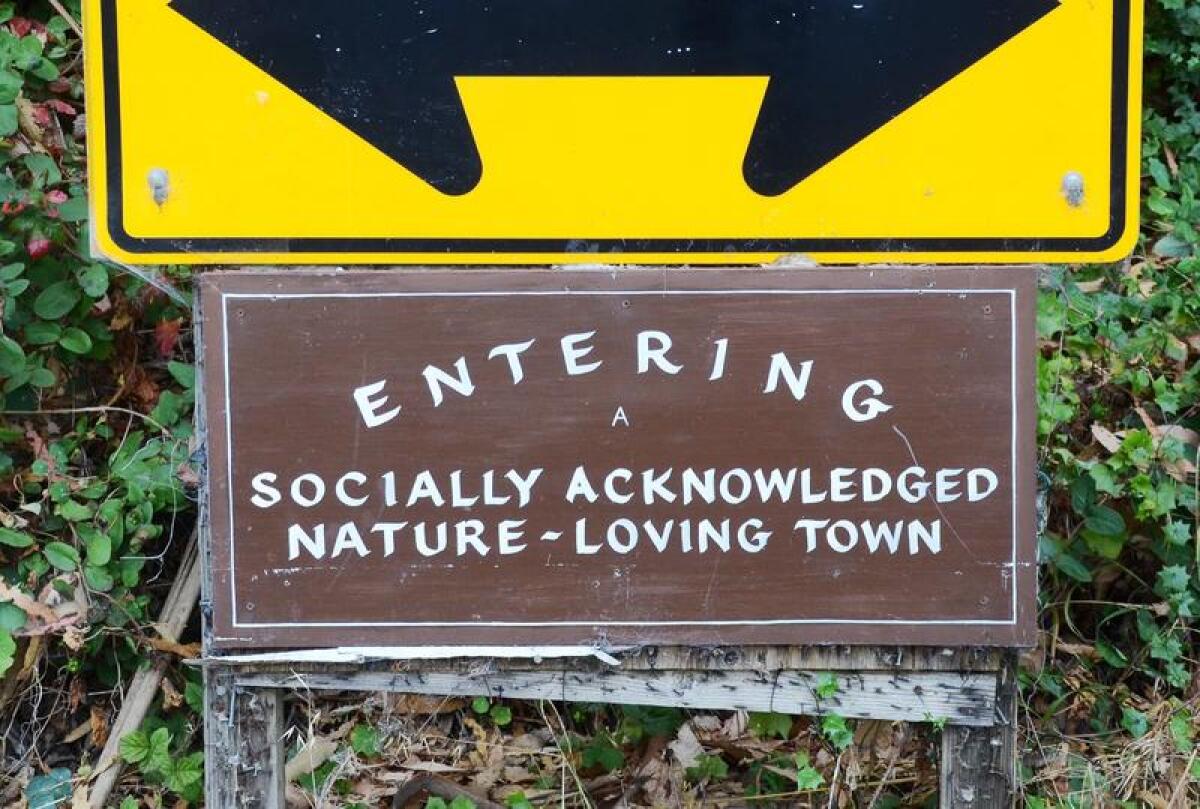Here’s your daily travel guide to the best adventures and experiences in the Golden State. Each of these essential California adventures has been tried and tested by a Travel section staffer or contributor.
Tell us what’s on your California bucket list. Email [email protected] and put California Bucket List in the subject line.
Get tricked at the Magic Castle in Hollywood
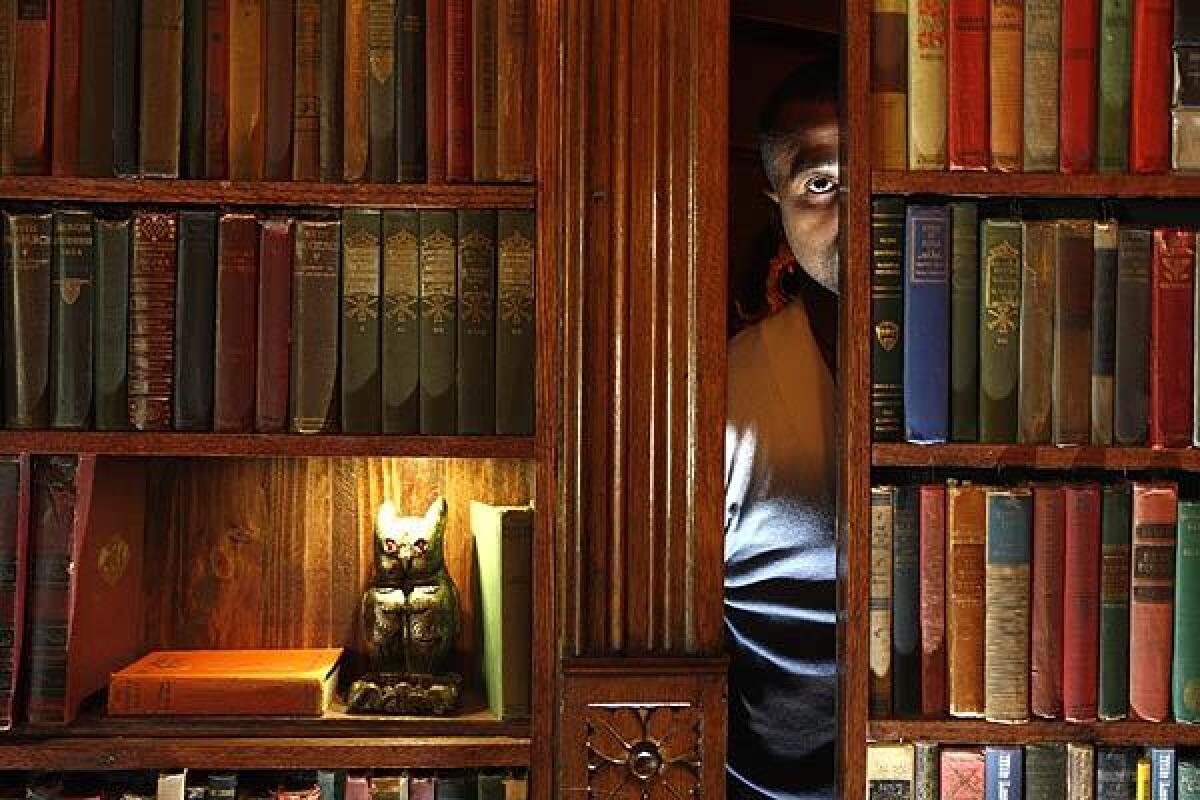
Why: The Magic Castle is the worst kept secret in Hollywood -- a private club in a tricked-out house that’s devoted to magic. And if you really want to get in, it’s not that hard.
What: The castle, clubhouse of the Academy of Magical Arts, was built as a private home in 1908. But by the time it opened as a magic haven in 1963, it had undergone a thorough transformation to make it fit for tricks and performances. Since then, it has survived waxing and waning popularity, not to mention a fire in 2011. (The flames flare on the night of Halloween.) Roam room to room and you encounter all manner of deceptions and marvels. Card tricks. Seances. Sleight of hand. Secret passages. And a fancy dinner.
In theory, to attend you must be invited or accompanied by a member of the Academy of Magical Arts. In practice, there are at least two pretty easy ways in. It’s not so hard (though the admission charge and dinner and drinks usually add up to a pricey night). If you spend a night at the adjacent Magic Castle Hotel & Suites, you’re entitled to go to the club. Or you can email one of the magicians soon to appear and ask for an invite. (More ideas here.)
By the way, they like you to dress fancy (and leave children home, unless you’re headed to a weekend brunch). Coat and tie are required for men.
Where: 7001 Franklin Ave., Los Angeles, 8 miles northwest of downtown L.A.
How much: Admission is $20-$30 per adult. Dinner main dishes $38-$47. Drinks. Hotel night.
Info: Magic Castle
See the light at James Turrell’s Skyspace in Claremont
Why: This awe-inspiring public art installation brings new beauty to the light of dawn and dusk.
What: “Dividing the Light” (2007), one of several dozen Skyspaces worldwide by artist James Turrell, is an elevated metal frame perched above an outdoor courtyard. A mesmerizing light show begins at dawn and dusk when the frame is illuminated with colored light, enhancing the sky’s own changing hues.
The Skyspace is a part of the Pomona College Museum of Art. For Turrell, an L.A. native and alumnus of Pomona College (’65) and Claremont Graduate University (’73), this campus installation is a homecoming of sorts, and the only public Skyspace in Southern California.
Turrell is an avid pilot and considers the sky his studio, material and canvas, and his Pomona College training in perceptual psychology informs his play of light, space, and human perception.
Skyspace programs begin one hour before sunrise and 10 minutes before sunset. The evening program lasts about 40 minutes. Check a listing of current exhibitions and “Art After Hours” days that may make a Skyspace and museum twofer possible.
Where: The Draper Courtyard (between the Lincoln and Edmunds buildings) at 600 N. College Way on the Pomona College campus in Claremont, 34 miles northeast of downtown L.A.
How much: Free
Info: James Turrell Skyspace
Pedal L.A.’s Echo Park Lake, munch a fancy snack and daydream of Sister Aimee and the spiritualists
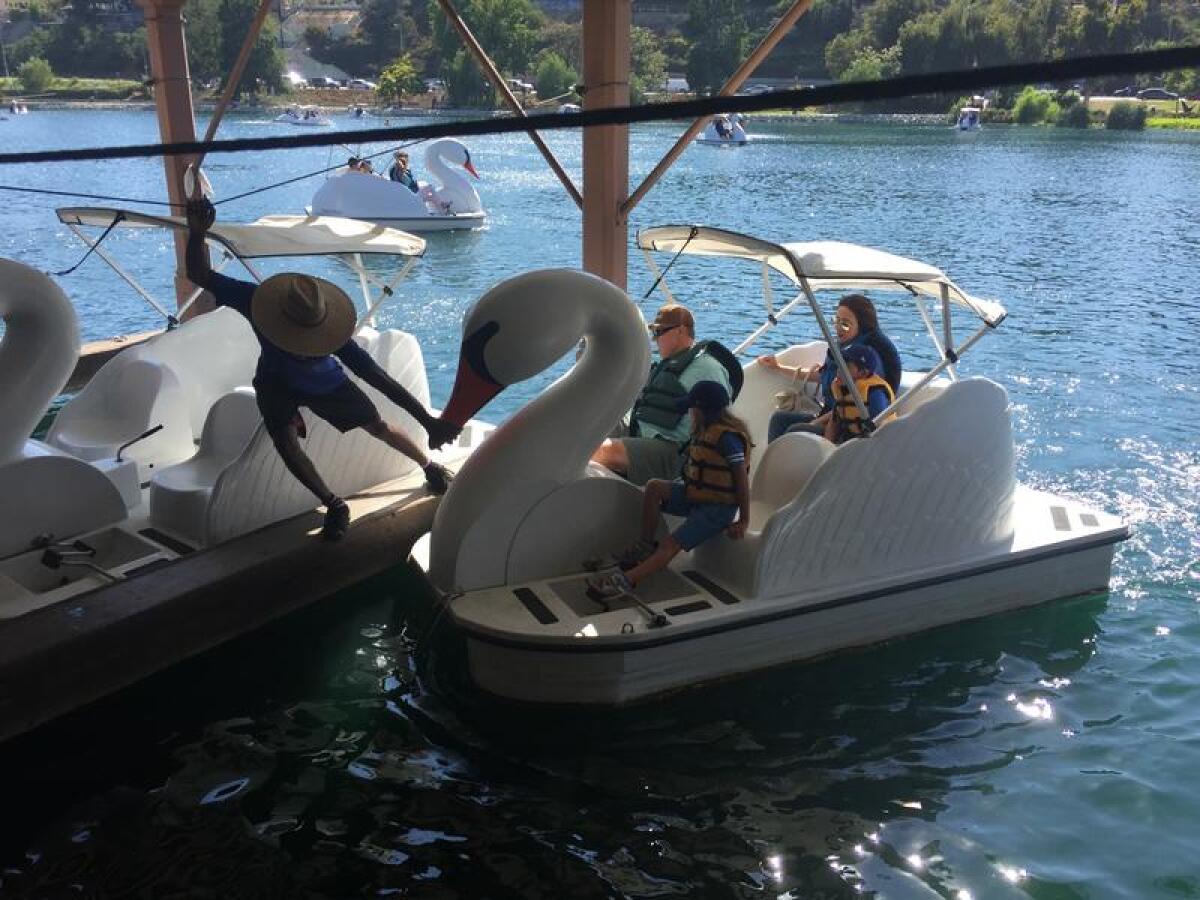
Why: The hotter it gets, the more sense these pedal vessels make.
What: The artificial lake in Echo Park goes back to at least 1870. The boathouse and pedal boat operation go back decades. And the place has been dramatically upgraded in the last few years, beginning with a draining and cleaning in 2011-2013. The paddle boats operated by Wheel Fun Rentals are now shaped like swans and the larger ones hold up to five people or 1,400 pounds. (These boats look a lot like the historic swan boats in Boston Common, which also go back to the 1870s.)
Head out for an hour of pedaling and drifting, not necessarily in that order, and imagine the early 20th century days when Aimee Semple McPherson was preaching in the Angelus Temple next door and these hills were crawling with communists, socialists and spiritualists.
The boat rentals are open daily all year from 9 a.m. until sunset. On the hottest days, try edging right up to the edge of the fountain in the middle of the lake – you’ll be coated with mist or (if there’s a breeze) pelted by diagonal rain. The last rentals go out an hour before sunset. (One night in July, a young man broke in and took a paddle boat for a forbidden ride. It did not end well.)
The eatery, Beacon, opened in January 2017 with a menu that’s longer, more intriguing and a little pricier than the average public park snack shack. The communists don’t live here anymore.
Bonus option: Fishing is allowed, with a license.
Where: 751 Echo Park Ave., 2 miles northwest of downtown L.A.
How much: The swan boats rent for hourly rates of $11 per adult, $6 per minor. Everybody gets a life jacket. A sampling from the Beacon menu: kale and avocado burritos ($7), a crab and gouda sandwich ($13), salmon toast ($10), Beacon Burger ($15), lemonade ($3). Beacon is open 8 a.m. to 5 p.m.
Info: Wheel Fun Rentals, Beacon
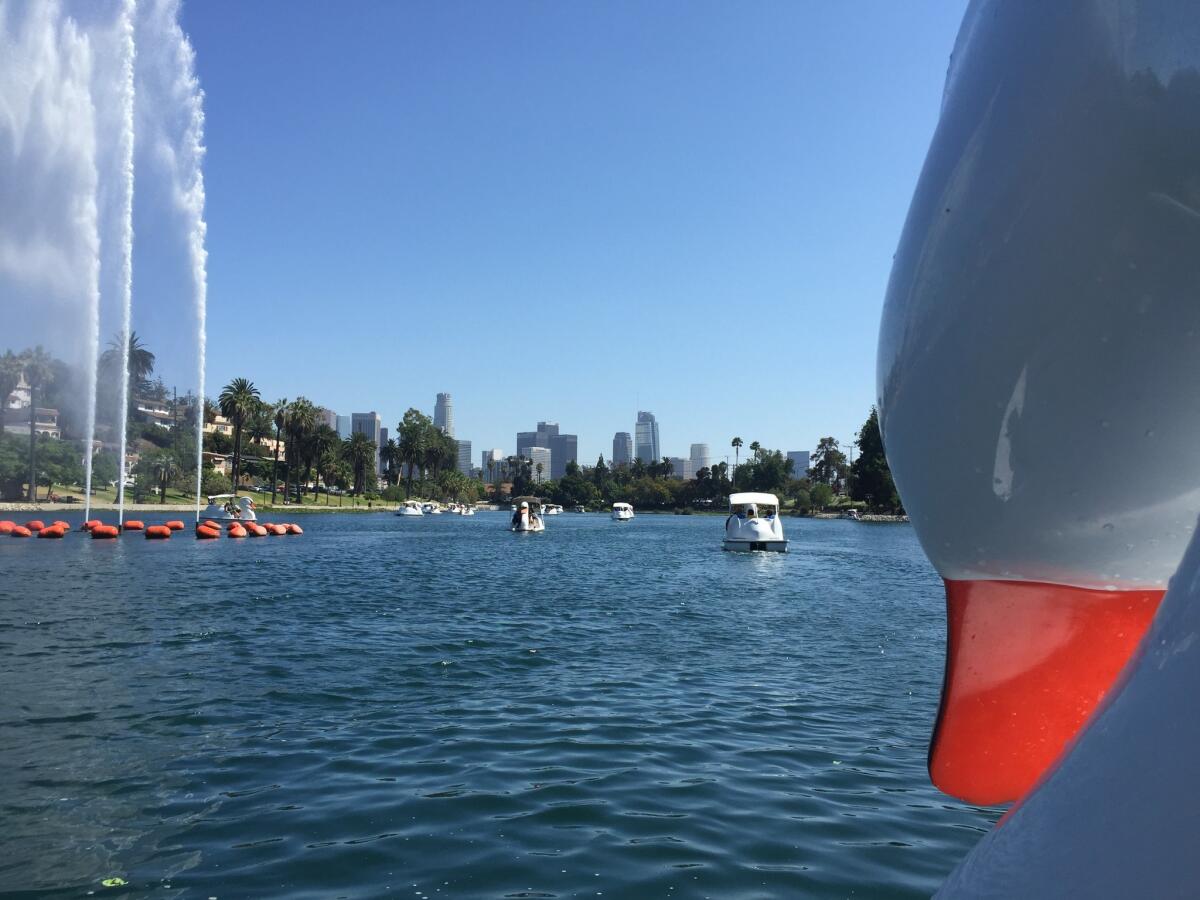
See the Giants, glimpse the bay and duck the gulls at San Francisco’s AT&T Park
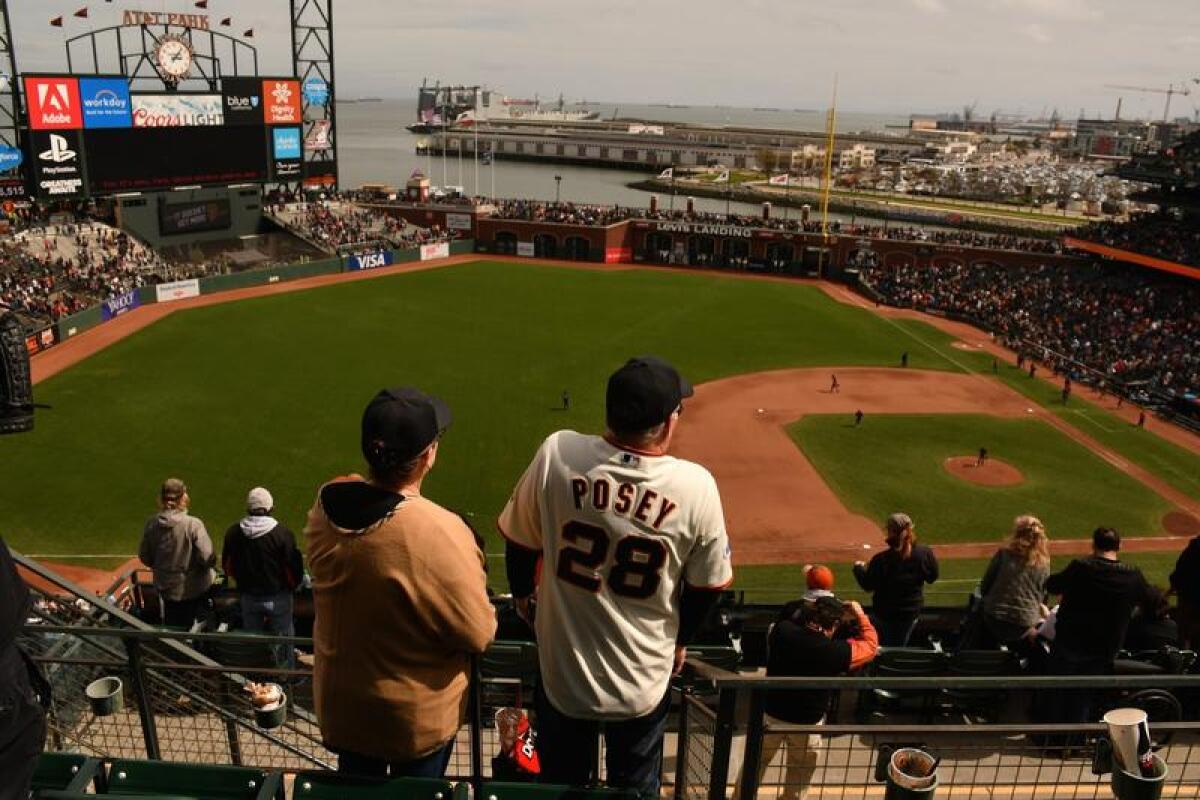
Why: Whether you’re for the Giants or against them, you can root for a home run into the bay here — something you won’t see at any other major league baseball stadium. In fact, you can see bits of San Francisco Bay — distant wharves, cargo ships, maybe a few kayaks in McCovey Cove — from many of the 41,915 seats in AT&T Park. And in a city that’s not always easy for families, this park is full of kid-friendly features.
What: The Giants have been based in San Francisco since 1958, but they only started winning championships here after this ballpark opened in 2000. (Beyond center field you’ll see banners celebrating the team’s World Series victories in 2010, 2012 and 2014, and a few more from the earlier New York years.)
Builders worked hard to reduce the winds that made the old Candlestick Park a nightmare for anyone fielding a fly ball — and largely succeeded. In fact, experts often rank this park first or second among the most pleasant in the major leagues.
But there’s no banishing the gulls.
At the end of every game, thousands of the scavenging creatures come swooping in to feast on leavings in the bleachers. Ushers try to fend them off, but the situation is basically “Field of Dreams” meets Alfred Hitchcock. Hang around for a few minutes to catch the spectacle.
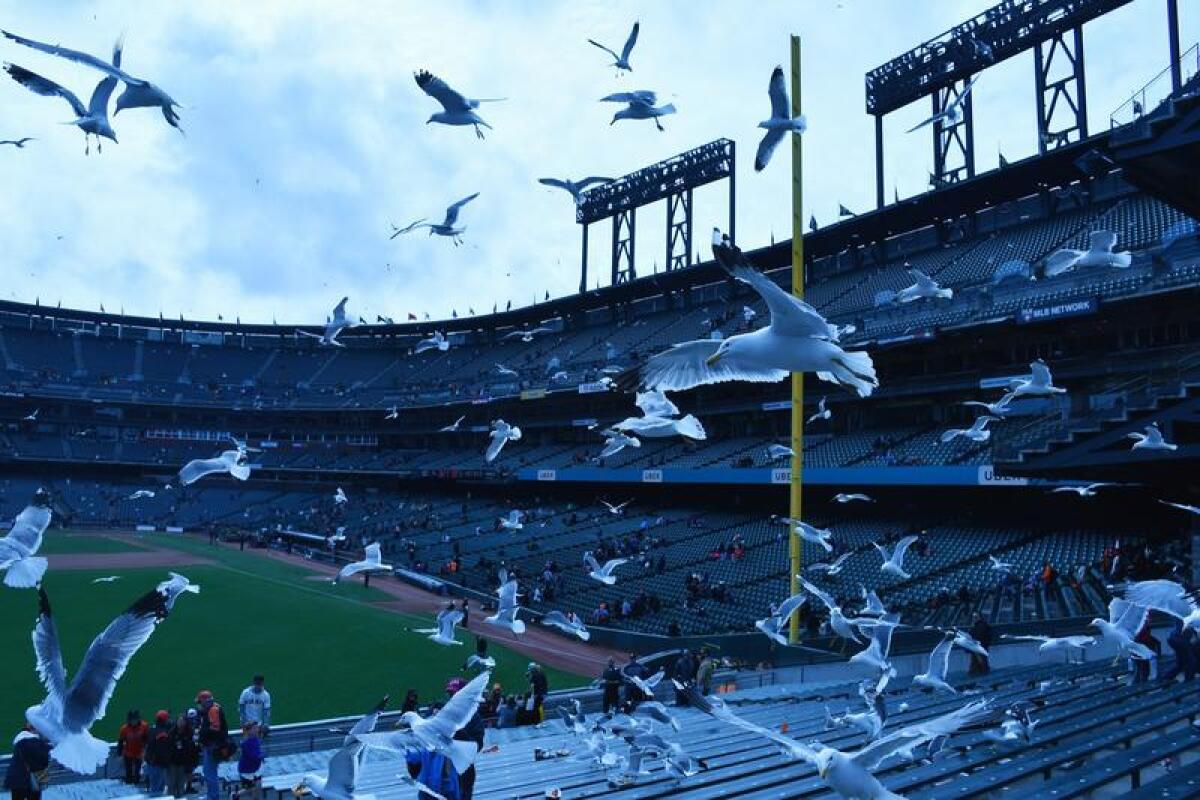
Where: 24 Willie Mays Plaza, San Francisco, 382 miles northwest of downtown L.A.
How much: Most tickets $9-$282. Single-game tickets here.
Fly, roll, float and romp in a Disney’s ever-evolving California Adventure
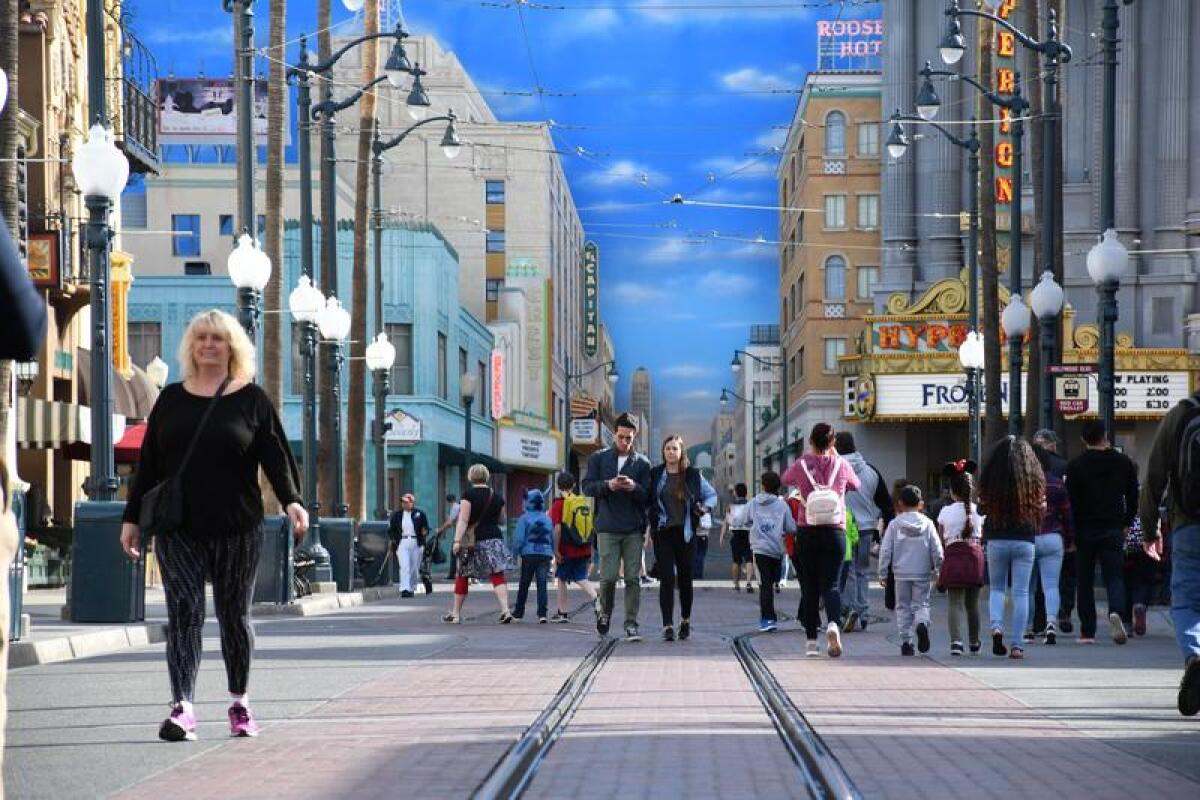
Why: If somebody asked you to compress the best of California into 72 acres, make it abundantly kid-friendly and persuade thousands of people to spend long hours and big money there, you might crack under the pressure. (Admit it, you’re already uncomfortable.)
That was Disney’s mission with this park. And Disney failed … at first. But since that awkward debut in 2001, when attendance fell far short of expectations, the park people have been steadily changing and fixing this place. Even if you’re skeptical about all things Disney (as some people are), you’ll probably get a kick out of this cartoon version of our state.
What: Most of the park’s rides, restaurants and photo ops are all about idealizing California, including Hollywood Land (who’s ever seen such clean streets and tidy storefronts in the real Hollywood?); Pacific Wharf (a mix of Cannery Row in Monterey and Fisherman’s Wharf in San Francisco); and Grizzly Peak (a nod to Yosemite and the tall trees of Northern California). But other features these days reach far beyond state lines.
When I dropped in a few days ago, the park’s marching bands and mariachis were joined by drummers, dancers and musicians from around Asia, gathered to celebrate Lunar New Year. Rides in A Bug’s Land and Car Land were full of grinning guests, as was the Soarin’ Around the World ride — which replaced Soaring (over California) in 2016 — and the Guardians of the Galaxy-Mission: Breakout! ride — which replaced the Twilight Zone Tower of Terror in 2017. This summer, Paradise Pier is scheduled to become Pixar Pier.
Meanwhile, California Screamin’, Mickey’s Fun Wheel and Grizzly River Run were closed for refurbishment. Check before visiting to see what’s open and what’s not.
Where: Right next to Disneyland and Downtown Disney, California Adventure, 1313 Disneyland Drive in Anaheim, is 26 miles southeast of downtown L.A.
How much: Passes start at $97 (ages 10 and above; before taxes) for a one-day Value Ticket. Standard parking $20.
Info: Disney California Adventure

Drive the narrow, winding, spectacular back-door route to Big Sur: Nacimiento-Fergusson Road
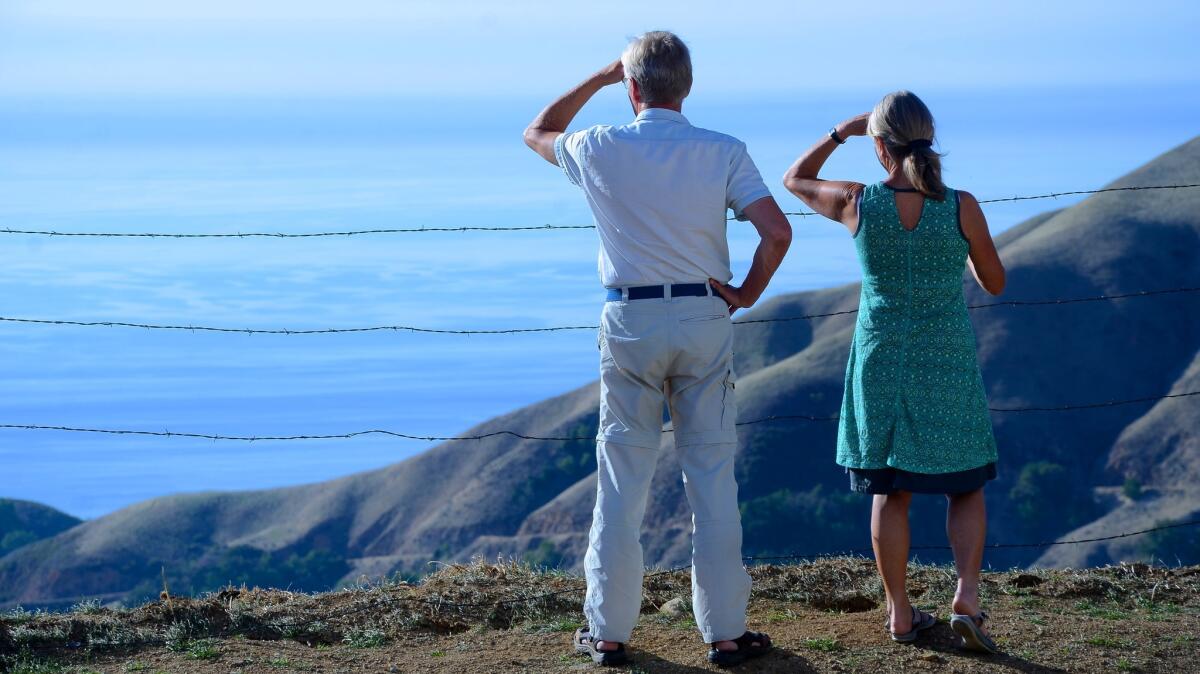
Why: It’ll quicken your pulse, drop your jaw and demand your full attention. There’s no more dramatic passage from Central California’s blond hills to the Big Sur coast than this 24-mile route.
What: Nacimiento-Fergusson Road, a winding, two-lane highway, begins in the Salinas Valley countryside north of Paso Robles, next to the often-overlooked Mission San Antonio de Padua and the Army’s Ft. Hunter-Liggett. From there it creeps through forest and chaparral to the crest of the Santa Lucia Mountains, about 2,800 feet above sea level. Then for 7 miles, via dozens of switchback turns, it wends its way down the western slopes to Big Sur.
It meets Highway 1 at Kirk Creek, about 4 miles south of Lucia.
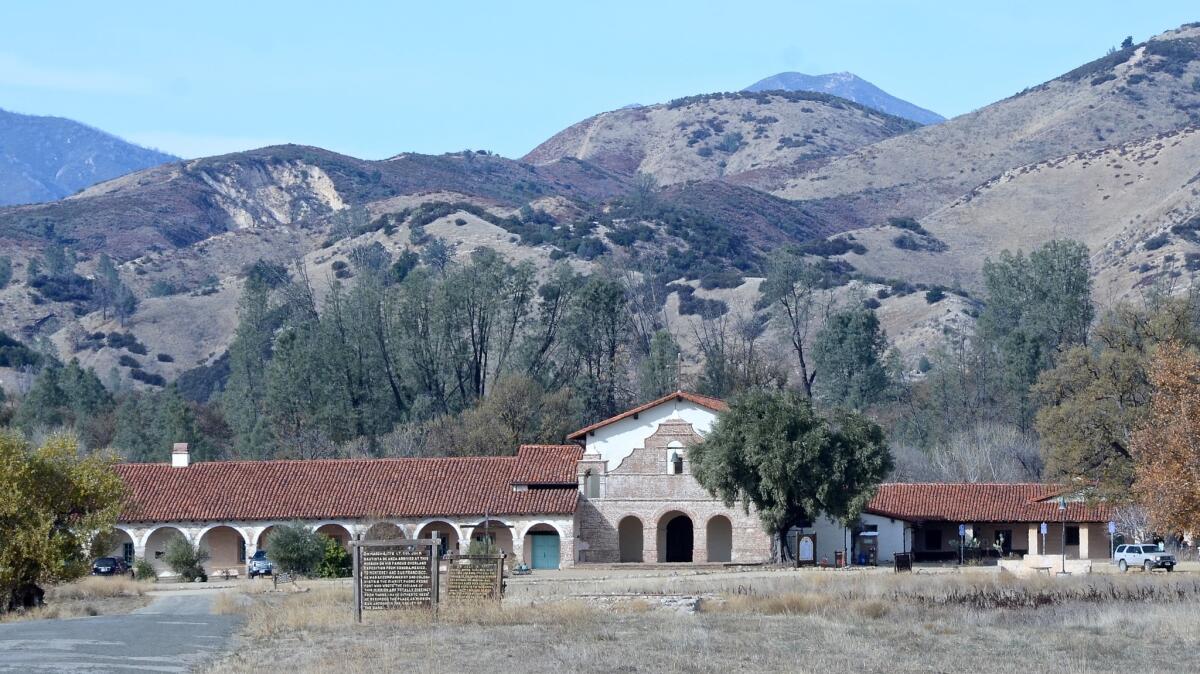
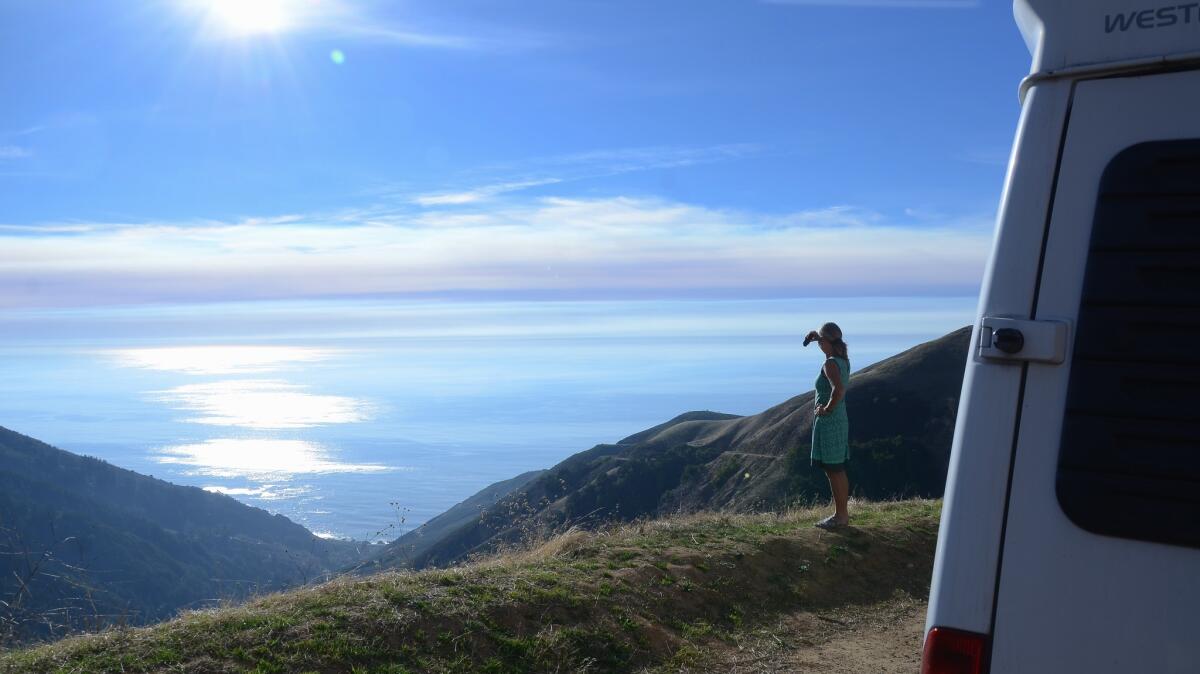
Motorcyclists have loved Nacimiento-Fergusson Road for years. When a mudslide and reconstruction closed Highway 1 at Mud Creek for more than a year in 2017-2018, many more cars found their way to this alternative, as well.
In normal times, with Highway 1 open, you can usually count on thin traffic on Nacimiento-Fergusson.
The road’s westernmost 7 miles, descending via multiple sharp turns to the coast road, are as spectacular as can be — and might start a three-alarm panic attack if you’re afraid of heights. (When a route is featured on www.dangerousroads.org, you know it’s special.)
Given the absence of lights or guard rails or cellphone reception, I’d never try it after dark. On my midday drive in December, I took care to ignore the views until I’d safely pulled into one of the many turnouts along the way. (For a tamer ride with similar scenery, take Highway 46 west from Paso Robles to Cambria.)
Where: To reach the eastern end of Nacimiento-Fergusson Road, exit Highway 101 at Jolon Road, about 23 miles north of Paso Robles. Follow Jolon Road west, then turn left onto Mission Road, continue 4 miles, then turn left onto Nacimiento-Fergusson Road. Because the road passes through the Army base, drivers may need to show license, registration and proof of insurance.
Give the drive at least two hours from the 101 to the 1. You don’t want to be in a hurry here.
How much: Free.
Info: www.dangerousroads.org
Recline, rebel or revel in Grand Park, where downtown L.A. celebrates
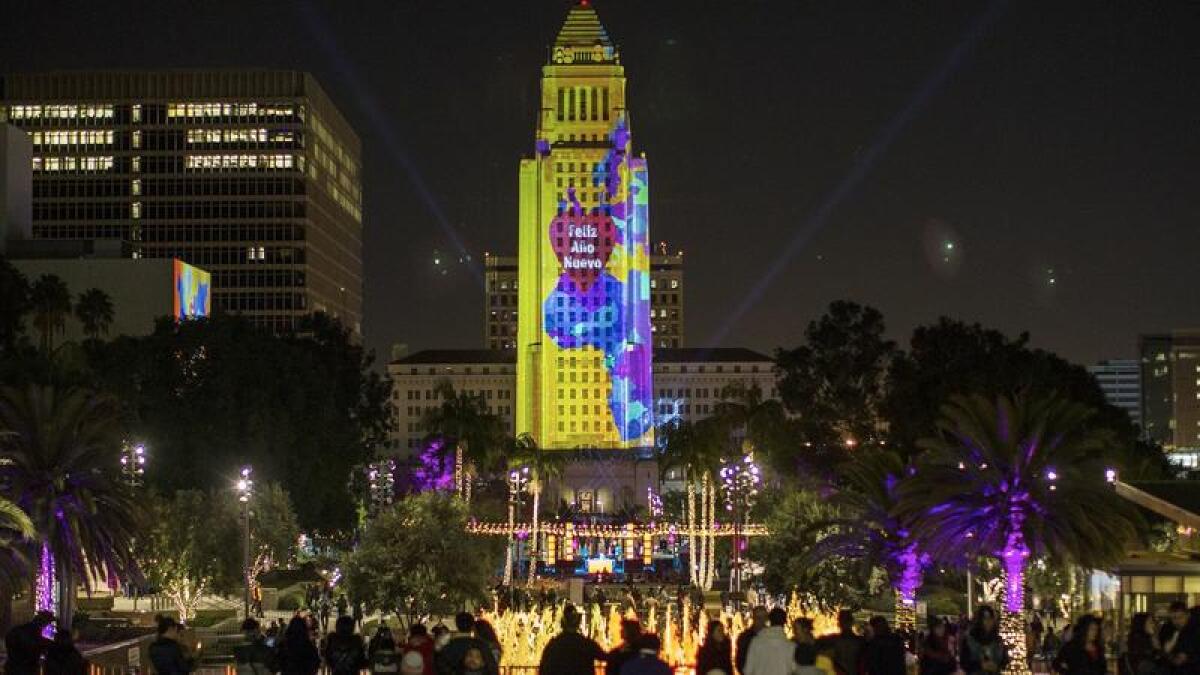
Why: Every real downtown has a park to serve as urban backyard, and Grand Park is more proof that L.A.’s downtown is getting realer by the day.
What: The 12-acre park connects the Music Center at the top of Bunker Hill with City Hall at the bottom. (Yes, you can go to City Hall’s 27th floor observation deck and it’s free). The park isn’t really new -- there’s been open space for decades on these blocks between government buildings. But a dramatic redesign in 2012 put a far better spin on the area, and it doesn’t hurt that neighboring Cathedral of our Lady of the Angels arrived in 2002, Disney Hall in 2003 and the Broad Museum in 2015.
Besides its welcome green expanses and flanking playground and dog-run areas, Grand Park includes a fountain (with splash pad for kids), an adjacent Starbucks, plenty of places to sit and a busy schedule of holiday events and live shows. Picnicking is encouraged. Protesting is permitted. Food trucks come for lunch most Tuesdays, Wednesdays and Thursdays. There’s midday yoga on many Wednesdays and Fridays. In October and November, the park hosts Día de los Muertos altars and art; in November and December, holiday lights.
And on New Year’s Eve -- well, the 2016-17 party (free and alcohol-free) included three stages, DJs, live music, dancing, inflatable art, and light projections. Expect more of the same this time.
Where: between 200 N. Grand Ave. and 227 N. Spring St., at the core of downtown L.A.
How much: Free. It’s easiest to arrive via Metro. But there’s parking nearby in Lot 10 (entrances on Broadway and Hill Street between 1st and Temple streets), priced at $3.50 per 15 minutes up to a $20 maximum per weekday, $10 per day on weekends, evenings and special events.
Info: Grand Park
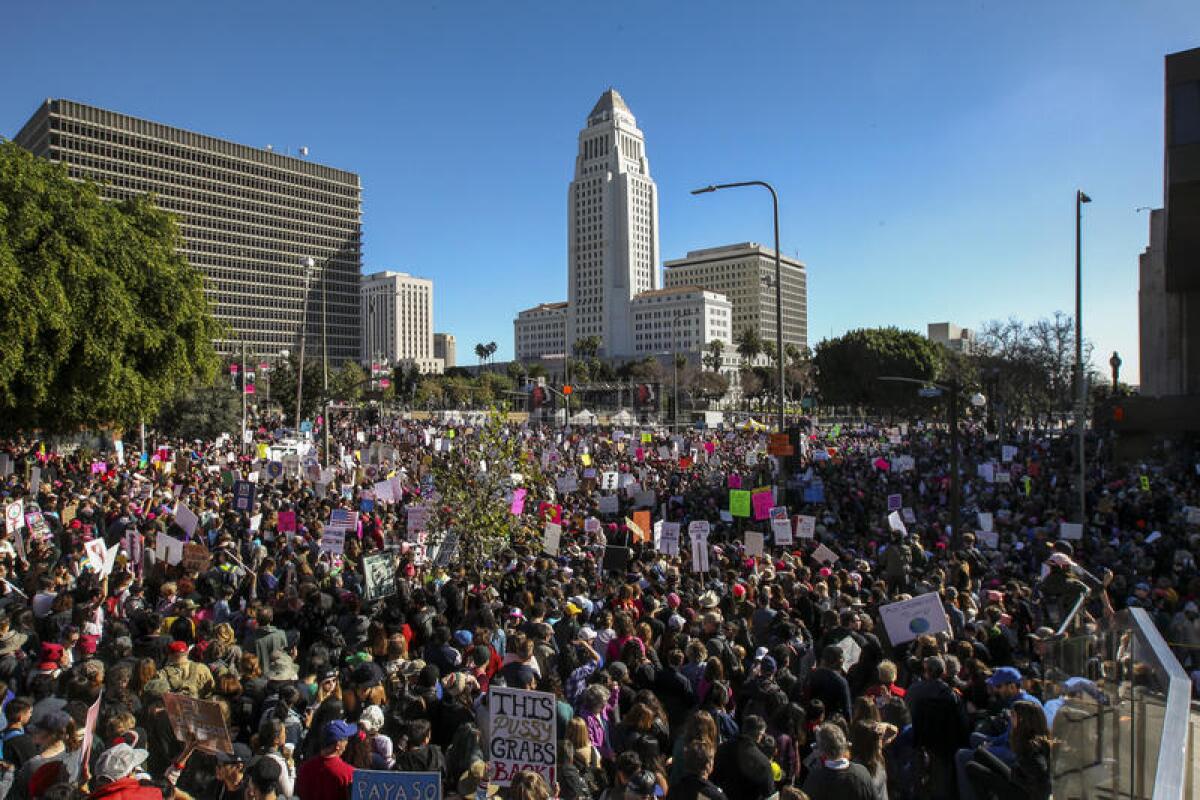
Gawk as the waters of McWay Falls plunge from Big Sur to the sea
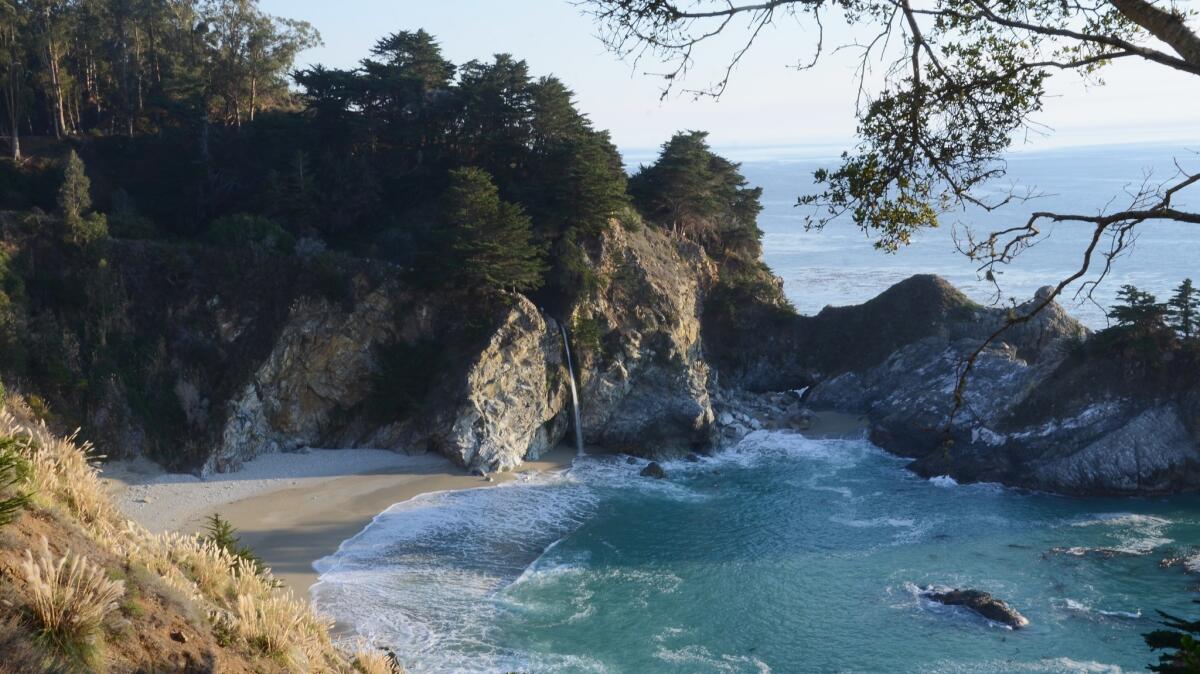
Why: McWay Falls, the splashiest attraction in Julia Pfeiffer Burns State Park, roars down 80 feet from granite and redwoods to a creamy Big Sur beach and implausibly turquoise cove. It’s the cascade that other waterfalls want to be. It’s also a perfectly impossible California destination, because you can’t stand under these falls. There’s no safe way to the beach.
What: The hike is more of a stroll, really. It’s about half a mile, mostly flat. (And the rest of the park remains mostly closed because of mudslides and other damage done by the Soberanes Fire of 2016.) Once you’ve passed through a short tunnel under Highway 1 and made a right turn, you’ll soon be standing on a rocky perch where a house once stood, looking south to the beach and falls.
This is an invitation to chill. For one thing, the trail has ended. Also, like Yosemite Falls — which led off our California Bucket List project on Jan. 1 — McWay Falls is a sort of perpetuity made plain. The water keeps coming, even if it’s in short supply elsewhere. And the cell reception is so rotten that you’ll probably never get an Instagram photo posted from here.
So have a seat. Notice that there’s a great view to the north also. Think about all the writers and composers (beginning with James Joyce, Richard Wagner, Al Green and Teeny Hodges) who have chosen to start and end their works with running water. Or think about nothing.
Where: Julia Pfeiffer Burns State Park, mile marker 35.8 in Big Sur, 37 miles south of Carmel, 286 miles northwest of downtown L.A. Highway 1 is expected to remained closed at Mud Creek (27 miles south of McWay Falls) through September 2018. That means travelers from the south have two options. One is to detour from Highway 101 north of Paso Robles via Jolon Road and the 24-mile, narrow, winding Nacimiento-Fergusson Road (a star on dangerousroads.org). The other choice is driving up to Salinas on the 101, cutting over to Carmel, then coming back south on Highway 1.
How much: $10.
Info: Julia Pfeiffer Burns State Park
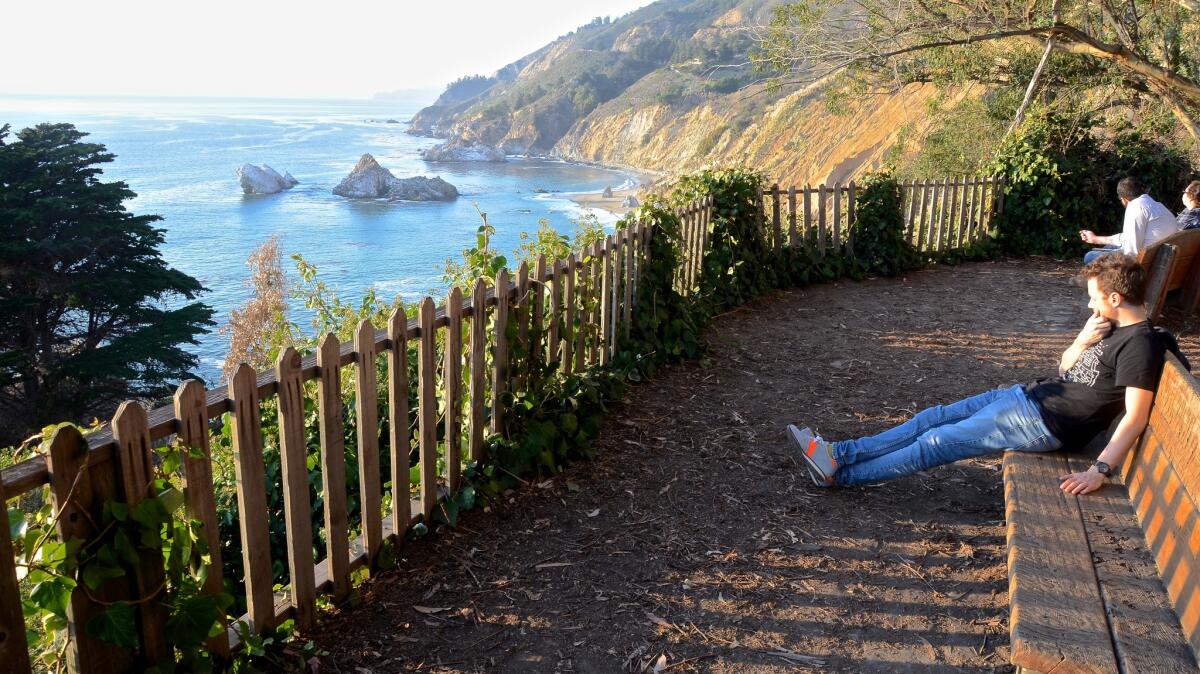
Marvel over this San Francisco church inspired by the ideals of the ‘Scandinavian Da Vinci’
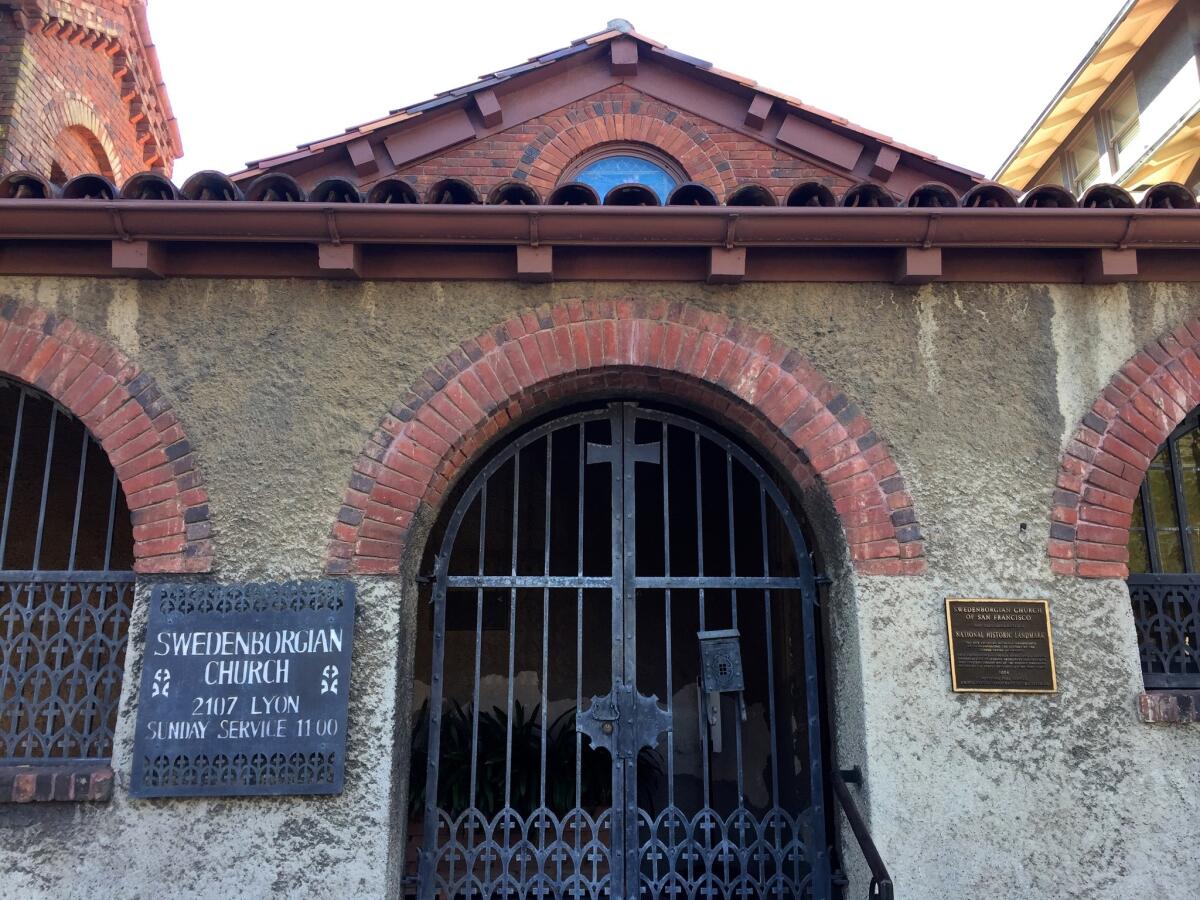
Why: Simplicity and complexity meet in the Swedenborgian Church of San Francisco, and the marriage is a harmonious celebration of architecture and intellect.
What: The 1895 Swedenborgian Church of San Francisco, a national historic landmark in Pacific Heights, is an Arts and Crafts building designed by several architects, including Bernard Maybeck, who created the Palace of Fine Arts at the Panama-Pacific International Exposition in 1915 in San Francisco.
Inside the walls are rustic redwood, found often in Arts and Crafts buildings and consistent with the Swedenborgian appreciation of natural objects, according to the 1969 book “Here Today: San Francisco’s Architectural Heritage.” The chairs are maple, “made by hand, without the use of nails, and their seats were woven of tule rushes from the Sacramento River Delta,” the book says.
In the fireplace in the back, the andirons become small crosses, and the crackling fire (and recently installed radiant heat) make the church a warm and welcoming spot for quiet contemplation, especially on chilly San Francisco days (which is most of them).

It’s also a reminder of the man whose desire to understand Scripture caught fire when he was in his 50s. Emanuel Swedenborg was born Jesper Svedborg in 1688 in Stockholm. In “Swedenborg: An Introduction to His Life and Ideas,” author Gary Lachman describes Swedenborg as the “Scandinavian Da Vinci.” He was a scientist, poet, writer, mystic, statesman, inventor and biblical scholar.
After Swedenborg’s death in 1772 in London, societies took root that were devoted to contemplating his thoughts and works; the Bible is the center of these. These organizations made their way across the pond by the late 1780s, and the New Church (sometimes called New Jerusalem) began to spread in the United States.

Notable Swedenborgian churches include the Wayfarer’s Chapel in Palos Verdes, designed by Lloyd Wright, son of Frank Lloyd Wright. The younger Wright was said to have taken his architectural inspiration for the chapel, dedicated in 1951, from Northern California’s redwoods.
Where: The Swedenborgian Church of San Francisco, 2107 Lyon St , is about 385 miles northwest of downtown Los Angeles.
Cost: Free. Services are at 11 a.m. Sundays. Office hours are 10 a.m.-6 p.m. Mondays-Fridays; knock to gain entry to the church.
Soak away your stress and join Club Mud at a Corona hot springs that embraces everyone
Why: If you’re intimidated by the word “spa,” Glen Ivy is the place for you. It feels accessible, not exclusive, meaning you can sit back and relax.
What: Which is what you want to do. There are 19 pools to try, including the mineral pools, the star attraction in the early days of the late 1800s when you could soak in them for 25 cents.
Today, you start by getting a locker for your street clothes and putting on your swim suit in a well-appointed area that includes changing rooms, showers and big, lighted mirrors where you’ll find hairdryers you’ll want later in the day.
Glen Ivy’s 12 acres include a float pool and a large pool if you want to exercise. But my new favorite features are the hot and cold plunge pools. (Try switching three times between them and stay in each pool for a minimum of 30 seconds. It doesn’t sound like long until you’re in the cold pool.)
The former Café Sole has been replaced by the new Ivy Kitchen, offering light but satisfying meals. (No starvation tactics here.)
And, of course, you can find the usual spa treatments (extra charge but no pressure; appointments advisable) including the underground Grotto, where skin hydration is the goal ($25 upcharge).
Save Club Mud for last. You paint yourself (and your hair) with “mud,” which is California red clay, then go bake in the sun. Before you turn into tandoori chicken, you brush it off and rinse or wash it off in the outdoor showers if you’ve used a tad too much. One note: Beware of bees, which are attracted to the mud. Make sure you you’re wearing your sandals.
The landscaping makes it all very pretty and it feels all very real, which is refreshing if you’re weary of L.A. artifice.
Where: 25000 Glen Ivy Road, Corona; (888) 453-6489, about 60 miles southeast of downtown L.A. (Set aside at least 90 minutes to get there.)
How much: Go on a weekday when it’s less expensive ($49 for the day Mondays-Fridays, averaging 300 guests). Saturdays, Sundays and holidays it’s $68 and about 700 people will be there. Through Feb. 28, hours are 9 a.m.-5 p.m. It’s open an hour later from March through May. Check on summer hours.
Info: Glen Ivy Hot Springs
See the small world within this Carlsbad museum of miniature engineering
Why: The Miniature Engineering Craftsmanship Museum in Carlsbad is novel and quirky – and proof that good things come in small packages.
What: The collection includes painstakingly crafted, remarkable miniatures, many with moving parts. There are cars, planes, engines of all sorts, ships, thumb-sized guns and knives, and much more. These are not the plastic model car kits from your childhood; for example, there’s an eye-popping version of a 1932 Duesenberg SJ that has more than 6,000 custom-made parts and is said to have taken more than 10 years to finish. The folks who built these tiny wonders spent decades perfecting their craft.
There are hundreds of works from around the world on display, and docents to describe the intricacies and makers of each. Try to time your visit to coincide with a tour of the machine shop/engine room for a little extra oomph.
Although it’s not geared for the toddler crowd, the museum, a few miles east of Legoland, can be an inspiring second stop for families with kids who like to build things. And while you’re in the neighborhood, you could make it a triple play with a bonus stop at the nearby Museum of Making Music, where visitors have the chance to play musical instruments.
Where: Miniature Engineering Craftsmanship Museum, 3190 Lionshead Ave., Carlsbad; 95 miles south of downtown L.A.
How much: Free. Open 9 a.m. to 4 p.m. Tuesdays-Saturdays. Machine shop/engine room demos are at 10 a.m., noon and 2 p.m.
Start the New Year right with a visit to Pasadena’s Rose Parade
Why: Like the Grand Canyon or the northern lights, the majestic Rose Parade needs to be seen in person to be really appreciated. On a bright SoCal morning, the colors, detail and craftsmanship come alive. And throughout December, there are some intriguing pre-parade opportunities for volunteers.
What: One of L.A.’s finest freebies, the Rose Parade steps off at 8 a.m. every New Year’s morning (unless the holiday falls on a Sunday, in which case it is bumped to Monday). We won’t even bother describing it, since like the “Wizard of Oz” or a Super Bowl, everyone has probably seen it on TV.
In person, though, the parade’s splendor, precision and pageantry make an early wake-up call worth it. It’s almost a rite of passage for Southern Californians, some of whom spend the night along the parade route.
The parade has more rules than the Vatican.
- Do not pass the blue “Honor Line” painted on the street.
- No tents, sofas or boxes.
- Unoccupied chairs are not allowed.
- No roping off public areas.
And that’s pretty much just the main stuff. Here’s a full list.
But don’t let them ruin your fun. The parade, after all, is one the best family-friendly events in the area, and they’re just protecting that.
To be a part of it all, join in on the float building in the days and weeks before the parade, when the flowers are being supplied and volunteer help is needed.
On parade day, get there before sunup to be sure of a place along the route.
Tickets in the grandstands are another option.
Be sure to dress in layers, because the temperatures will range from frosty to blistering as the day progresses.
Here’s a little insider’s trick that you won’t believe until you see it. If you wait till the 8 a.m. start time, the crowd will be in place on the route and there is virtually no traffic. Pay the $20 parking fee at a random gas station along Walnut and join the fun. You won’t be in the first row, or maybe even the first 10. But the floats are so high, you’ll be able to see them well. About an hour into the two-hour parade, the crowds will begin to relax and spots open up for even better viewing.
It’s a wonderful experience, hassle-free, and a great way to kick off a New Year.
Where: Pasadena, about 12 miles from downtown Los Angeles.
How much: Free
Info: Rose Parade
Meander among 5 million lights at Riverside’s Mission Inn

Why: The Mission Inn, which dates to the 1870s, stands in the middle of Riverside the way Bruce Springsteen stands in the middle of the E Street band. It fills a city block. And since the early 1990s, the hotel has been putting together an ever-more-lavish Festival of Lights. At last count, about 5 million lights.
What: For six weeks at Christmastime, the landmark hotel switches on all those lights and invites visitors to stroll through the property, including a tunnel where faux snow falls. (This year’s festival runs Nov. 24 through Jan. 6.)
The line to walk the property can get very long — and the traffic and parking situation in the blocks around the hotel can seem downright devilish. But most folks are in a good mood, and the festival includes live music, horse-drawn carriages, funnel cakes, Santa Claus photo ops and more. To see more lights and skip the line, book a dinner reservation at the Mission Inn Restaurant (one of several on the property) and you may land at a courtyard table, surrounded by Spanish Revival architecture that’s more ornate (and with more Tuscan influence) than you’ll see at any of California’s 21 actual missions.

And yes, there’s a reason the decorations seem to be in motion: Besides lights, the halls and walls have also been festooned with about 200 angels, gnomes, polar bears, many of which move, in the same halting, semi-spooky way that Honest Abe moves in Disneyland’s “Great Moments with Mr. Lincoln.” It’s a scene.
And speaking of presidents, be sure to peek at the hotel’s Presidential Lounge and its portrait of Richard Nixon, who was a 27-year-old attorney when he married Pat Ryan at the hotel in 1940. (There’s also a tower, a rotunda, spa, all sorts of artworks and artifacts and a museum next door that traces the inn’s history through expansion, bankruptcy, renovations and resurgence.)
Where: 3649 Mission Ave., Riverside, 55 miles east of downtown L.A.
How much: It’s free to walk the hotel property during the Festival of Lights. Dinner main dishes at the Mission Inn Restaurant run $15-$42. (I can recommend the Italian sausage pasta and the pan-seared salmon.) Rooms for two start as low as $199 in slow months (like January), $329 or more in December.
Info: Mission Inn
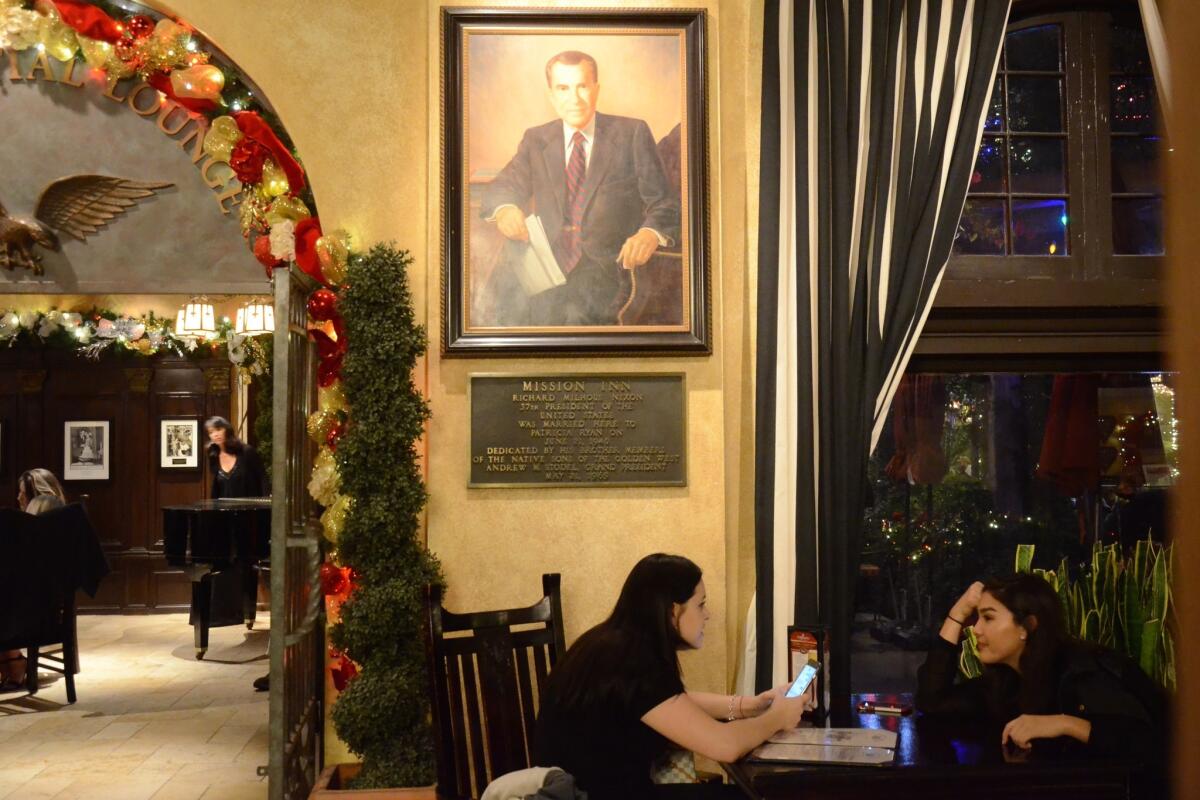
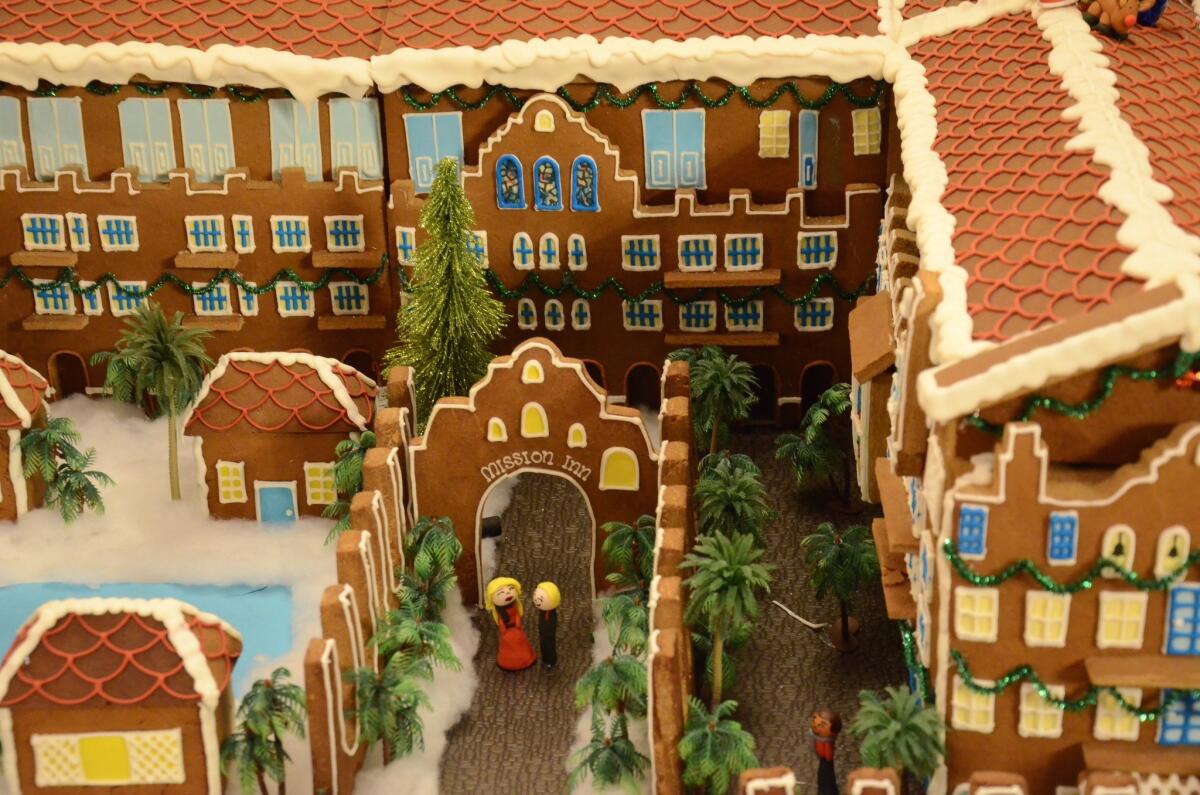
Peer into a writer’s head and a valley’s soul in Salinas
Why: John Steinbeck was born in Salinas, Calif., a farming community that lacks the cachet of neighboring Carmel and Monterey. But, then, neither of those towns produced a man who went on to win a Pulitzer, a Nobel and the Presidential Medal of Freedom. To be in in Steinbeck’s hometown is to be reminded that, as fellow author F. Scott Fitzgerald said, “genius is the ability to put into effect what is in your mind.”
What: Steinbeck’s birthplace home and the National Steinbeck Center tell the tale of the man whose “Grapes of Wrath” is often thought to be the Great American Novel. The community of his youth — he was born here in 1902 — was this rich, rural farming area in the Salinas Valley, and his labors alongside migrant workers in the sugar beet fields of nearby Spreckels informed many of his works, including “Of Mice and Men.”
He attended Stanford but never graduated, and he struggled to establish himself, but in 1935, his book “Tortilla Flat” finally put him in the public eye. His subsequent books included “Cannery Row,” “Sea of Cortez” and “East of Eden” and, of course, “Grapes of Wrath,” about which he wrote, “It isn’t the great book I hoped it would be.” The story of the Joads, fleeing the Dust Bowl of Oklahoma and arriving in not-quite-as-billed California, won the Pulitzer in 1940.
You can have lunch at the Steinbeck House, the Queen Anne style home where he grew up, then stroll the two blocks to the National Steinbeck Center, which somehow captures and conveys the challenges of his writing life.
One of the central pieces of the center is Rocinante, the 1960 GMC camper pickup he drove on a 10,000-mile road trip as he scoured the country seeking its essence. The resulting book, “Travels With Charley” (Charley was his poodle), chronicles what Steinbeck saw as a country in sometimes uncomfortable motion.
The center, which turns 20 in 2018, also does not shy away from the controversy that arose from the author’s portrayal of farm workers’ lot in life in “Grapes of Wrath.” His books infuriated growers — some places banned them — and he turned his back on his hometown.
But as if to prove you can go home again, Steinbeck, who died in 1968 in New York City at age 66, is buried in Salinas.
Where: The Steinbeck House is at 132 Central Ave.; lunch is served 11:30 a.m. to 2 p.m. Tuesdays through Saturdays; reservations at (831) 757-5806. The National Steinbeck Center is at 1 Main St., about 305 miles northwest of downtown Los Angeles. The center is open 10 a.m. to 5 p.m. daily, except Thanksgiving, Christmas and New Year’s Day.
How much: $12.95 for adults; $9.95 for seniors, students, military, teachers and Monterey County residents; $6.95 for children 6-17; children 5 and younger admitted free.
Treat yourself to Spago in Beverly Hills, and a possible tableside visit from the boss
Why: Because Wolfgang Puck, who likes to work the dining room, might stop by and personally sprinkle lemon juice on your perfectly grilled fish. “There, better?” he asks. Of course it is.
What: A meal at Spago is as L.A. as the Hollywood sign — and a tad tastier. The landmark restaurant is where Puck made great food fun again.
Originally on Sunset and now in Beverly Hills, Spago is synonymous with creative, attentive and amazing dining.
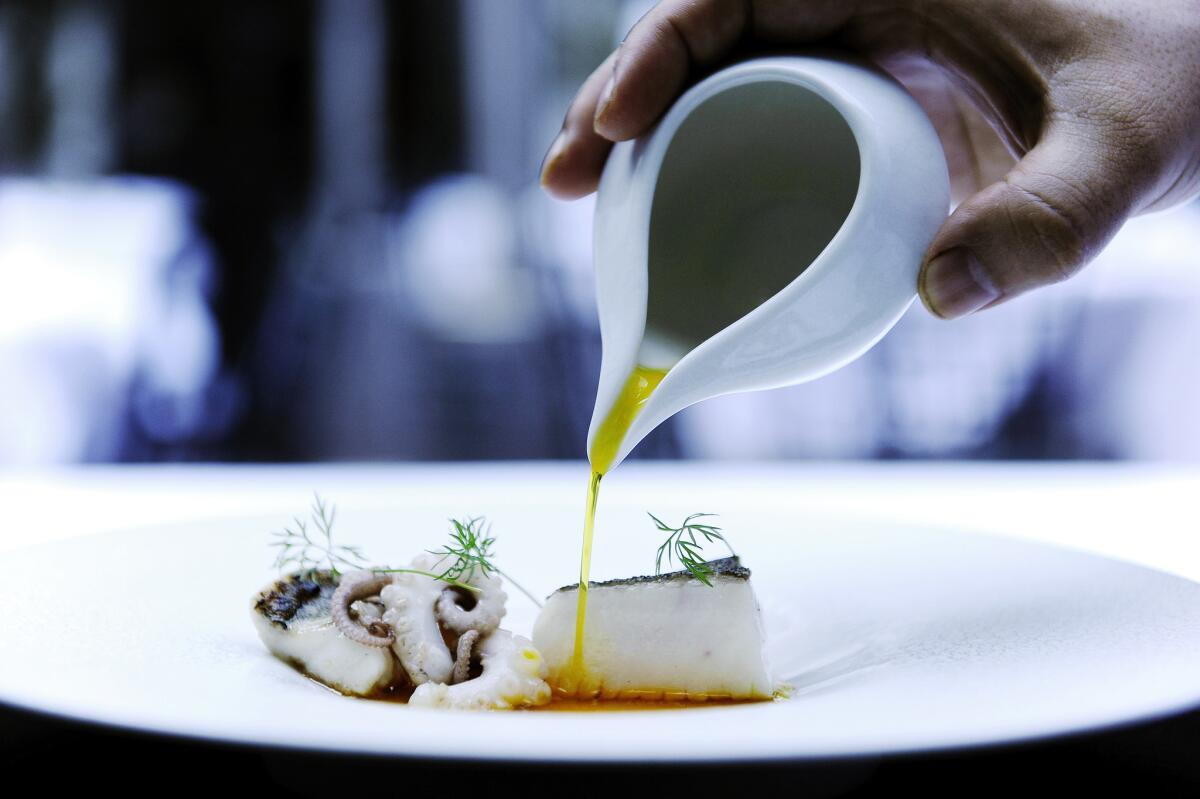
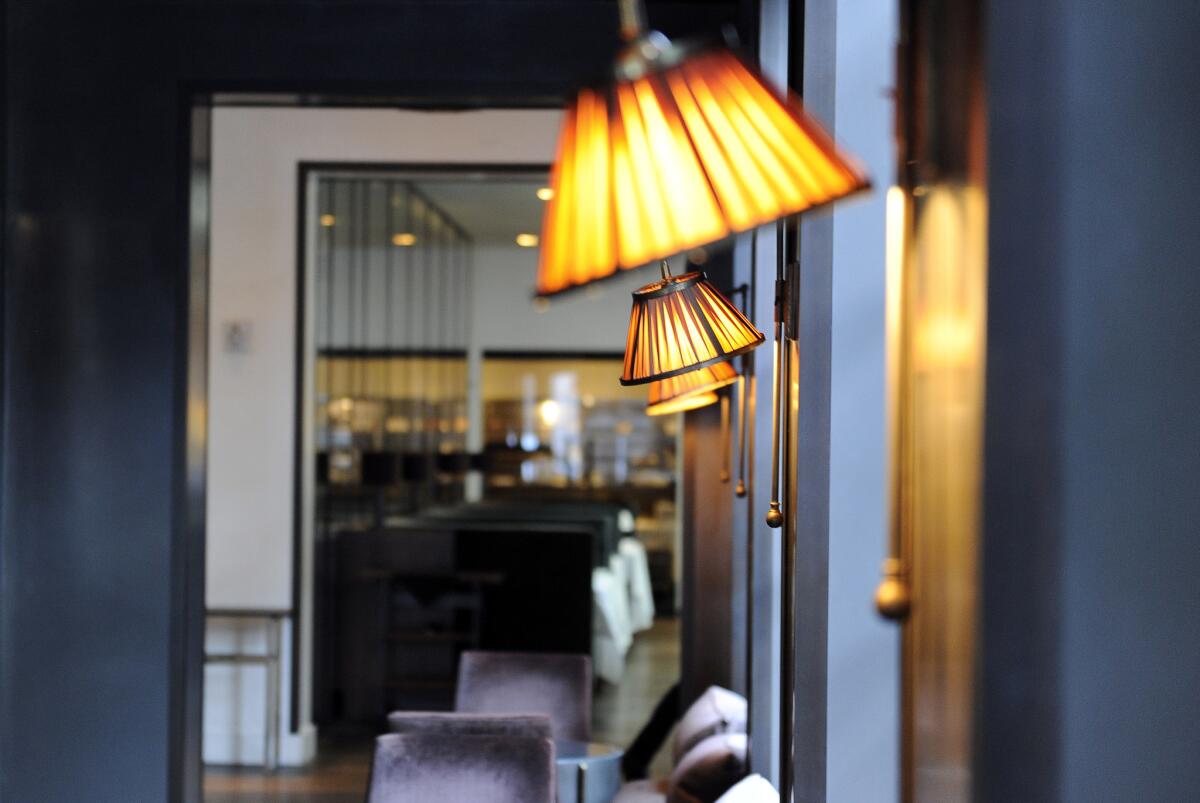
“At the original Spago on the Sunset Strip, [Puck] created what later became known as casual fine dining, a movement that 35 years later still dominates the restaurant world,” wrote Times restaurant reviewer Jonathan Gold.
And thus, a nationwide food craze was born.
For food lovers, the menu itself is an adventure. Portions are generous, and the service is perfectly timed. And though the dining room is packed and buzzy, you can have a conversation here, unlike so many restaurants these days.
At lunch, the go-to standard is the house-cured smoked salmon pizza topped with dollops of caviar. Also pay attention to the veal wienerschnitzel, so tender you could cut it with your thumb. Grilled fish comes off the grill in that 10-second window when it is neither too swimmy nor too dry.
Just don’t forget the lemon.
Where: 176 N. Canon Drive, Beverly Hills, about 13 miles west of downtown Los Angeles.
How much: How much you got? For most of us, this is a special occasion restaurant. Lunches for two start at around $100 and quickly reach $200. Dinners for two will run $150 and up, before wine or cocktails.
Info: Spago
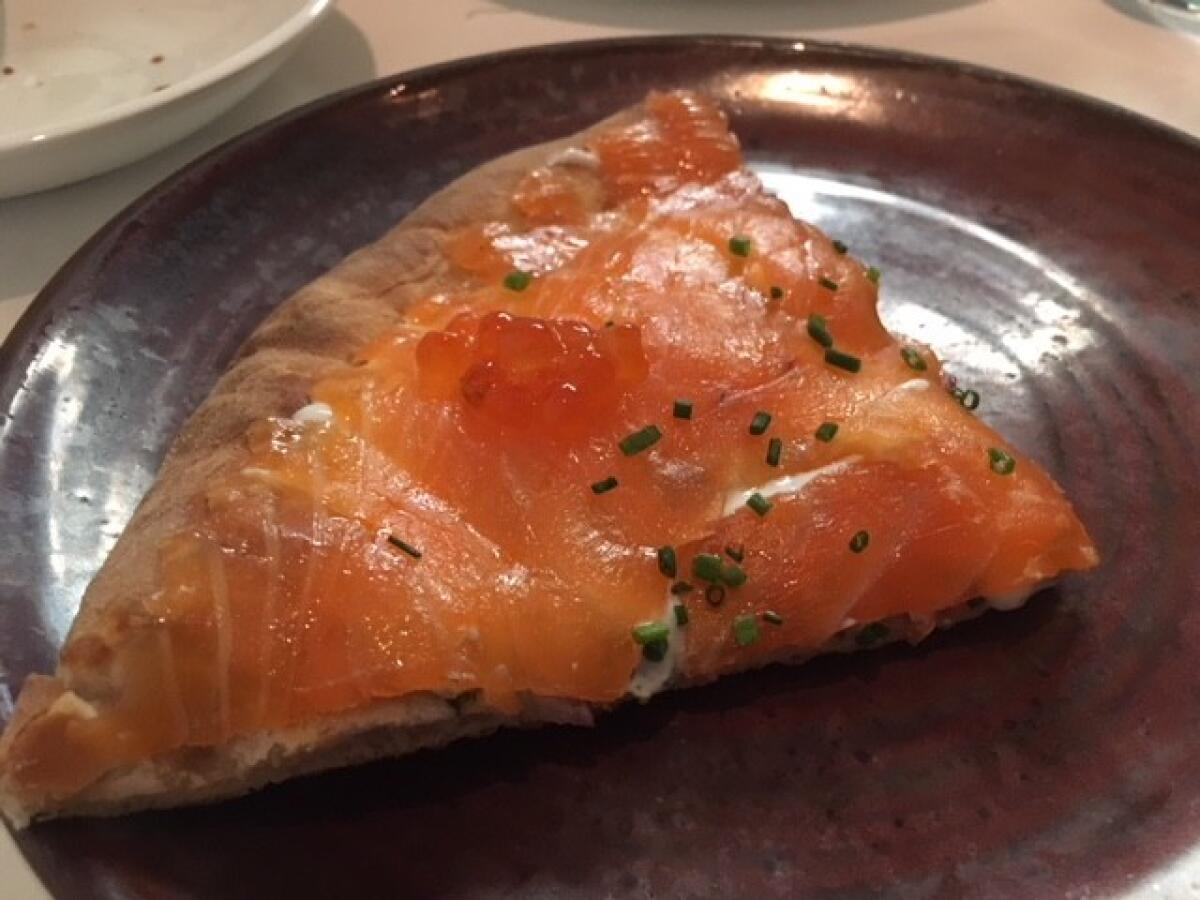
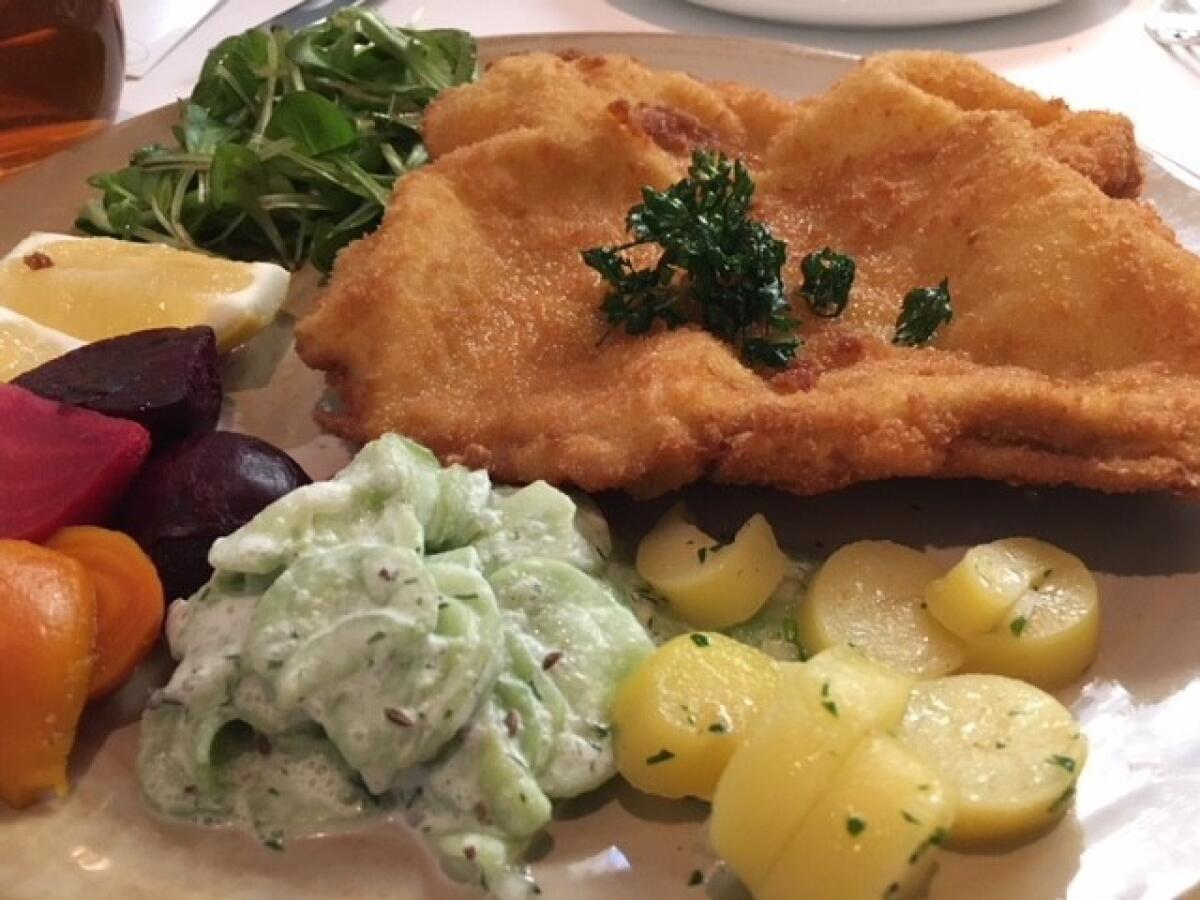
Frolic amid mai tais, Spam and tiki culture at the Bali Hai on San Diego Bay
Why: Because two Bali Hais are better than one. Brush up on your Rodgers and Hammerstein (“Bali Hai may call you / Any night, any day”), then come away to this San Diego tiki icon, the Bali Hai restaurant.
What: Tiki bars have been a Southern California phenomenon for generations, and San Diego — with its sunny days, palm trees, ocean views and strong Navy heritage — is a perfect fit for the kitschy fad, tiny umbrellas and all. Starting in the 1930s, faux-Polynesian themed bars and restaurants sprang up in the cross-border region from Tijuana to San Diego. The tiki scene started to dwindle in the 1960s, and despite a resurgence of sorts, most of the old cheeky palaces have faded away.
But not Bali Hai. At age 63, it’s still proudly shaking its hula skirt, aided by a waterfront location, fun ambiance and, yes, seriously powerful mai tais.
Ambiance first: As you approach the restaurant/bar, the first thing you’ll notice is “The Goof” on the roof, a playful tiki that stands guard over the domain below. At the front door, Mr. Bali Hai, a large wood sculpture, greets guests.
Inside, there are about a hundred Polynesian artifacts on display, including masks, weapons and tools. The large bar and dining room have dark wood columns, a wood-beam ceiling and large windows with great bay and city views.
The Pacific Rim-inspired menu features such items as Hawaiian tuna poke, chicken adobo steam buns, Spam carbonara, pork belly katsu and Chinese garlic noodles, and holdovers such as Huli Huli chicken and coconut shrimp.
But for my money, the experience isn’t complete without a rum-based cocktail. There are plenty to choose from, but my favorite is the “World Famous Bali Hai Mai Tai,” a potent drink that proudly has “No Juice Added” and mixes aged light and dark rums, Trader Vic’s orgeat syrup, a dash of Triple Sec and a splash of sweet and sour.
Where: 2230 Shelter Island Dr., on Shelter Island, about 5 miles west of downtown San Diego, 120 miles southeast of downtown L.A.
How much: Dinner main dishes from $19 to $30; Sunday brunch, $40. Classic cocktails are under $10.
Info: Bali Hai restaurant
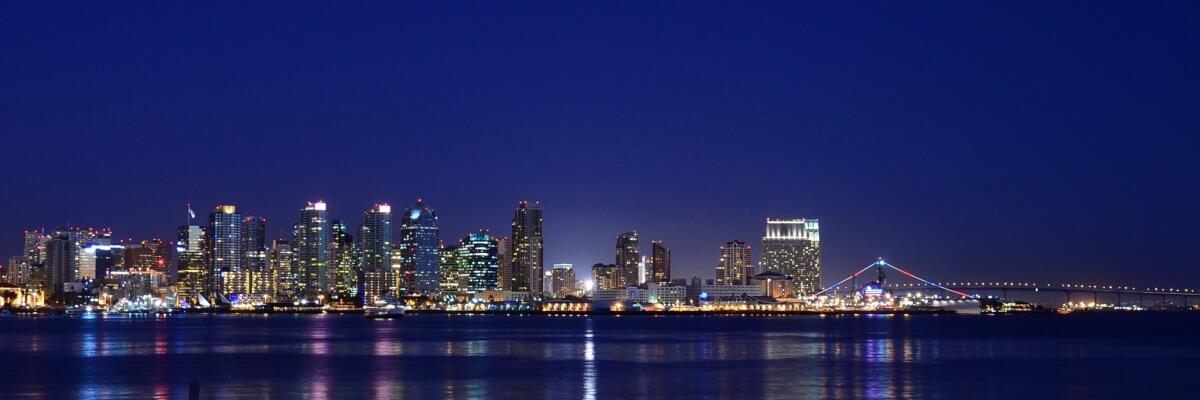
Celebrate at Lawry’s in Beverly Hills, where thick slabs of prime rib are sliced right at your table
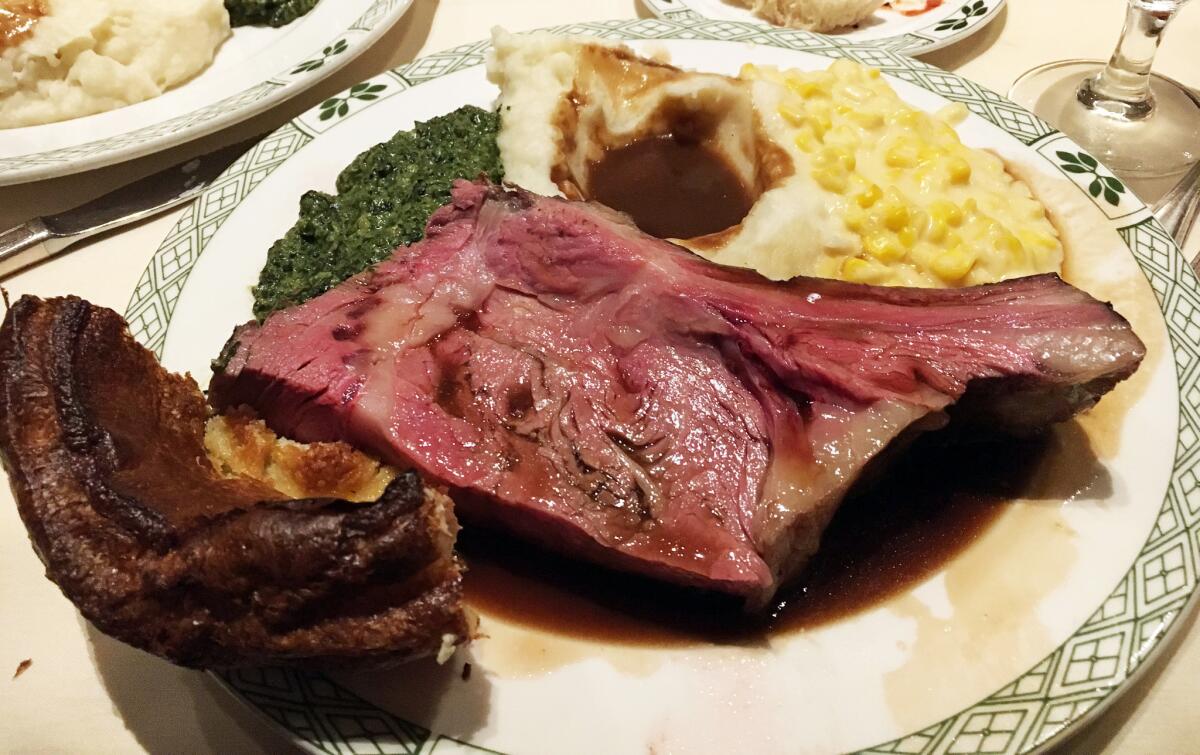
Why: Since 1938, Lawry’s the Prime Rib has been the place for indulgence and celebration. It’s where people spend their birthdays, anniversaries, congrats-on-your-promotion dinners and holiday parties. And where football players competing in the Rose Bowl go for the Beef Bowl.
What: Walking through the heavy gold doors is like walking into a time machine. Through the other side is a magical place where people still dress up, spotless glasses sparkle on crisp white tablecloths and the plush booths make you feel like the most important person in the world.
The idea was to create a version of the English restaurant Simpson’s in the Strand, where cuts of meat fit for a giant are served from trolleys. But Lawry’s founders Lawrence Frank and brother-in-law Walter Van de Kamp (of the Van de Kamp bakery empire and Tam O’Shanter Inn) had grander plans for their restaurant, starting with the meat carts.
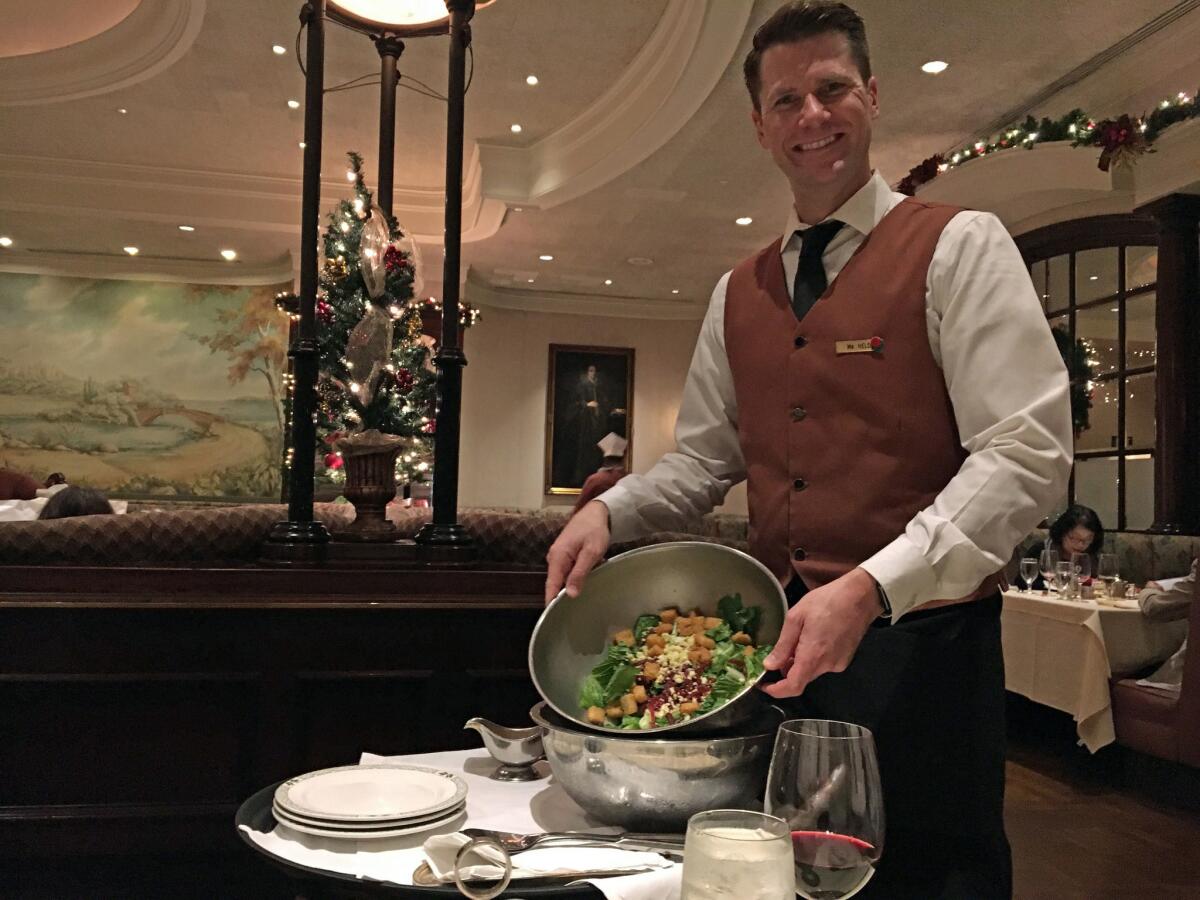
Lawrence designed the stainless steel carving carts the restaurant is known for — the ones that glide through the dining room carrying Flintstones-sized cuts of meat — to be, well, impressive. And they are. As are the meat carvers, who don medals showing they are part of the Royal Order of Carvers (a title that requires six months of training).
Each prime rib dinner comes with its own show of sorts: Servers wear the same style of “brown gown” uniforms they wore when the restaurant opened, and they pour dressing from up high into spinning metal bowls of salad tableside. When you order your prime rib, you do it directly from one of the shiny carts, and it’s sliced to order.
There are smaller cuts of meat, but treat yourself to the Diamond Jim Brady (16 ounces), named for millionaire Jim Brady, who was known for eating massive amounts of food. All of the prime rib dinners come with the spinning salad, a scoop of mashed potatoes, a ladleful of gravy and a wedge of Yorkshire pudding. If you don’t finish it all — you probably won’t finish it all — ask for a doggie bag. The restaurant claims to have initiated the idea, along with valet parking.
There are Lawry’s the Prime Rib locations in Las Vegas, Chicago and Asia. The original in Beverly Hills is home to a comfortable lounge and excellent bar snacks. This is where you can order a martini kissed with prime rib-stuffed olives and find complimentary “snacks” that could easily replace your dinner appetizers.
Arrive a little early for your reservation, grab a seat in one of the cushy lounge chairs, order a martini, then take turns filling your plate with cocktail meatballs and salty potato chips the size of drink coasters. Go for it. Indulging to your heart’s content is encouraged.
Where: 100 La Cienega Blvd., Beverly Hills, located on Restaurant Row, about half a mile south of the Beverly Center, about 10 miles west of downtown L.A.
How much: Prime rib dinners start at $41, and you can add a lobster tail for $15. Dessert and starters are extra. Drinks in the bar/lounge area are $13 to $17. The restaurant is busier on the weekends, and reservations are recommended.
Info: Lawry’s
Feast your eyes and watch your step in downtown L.A.’s Arts District
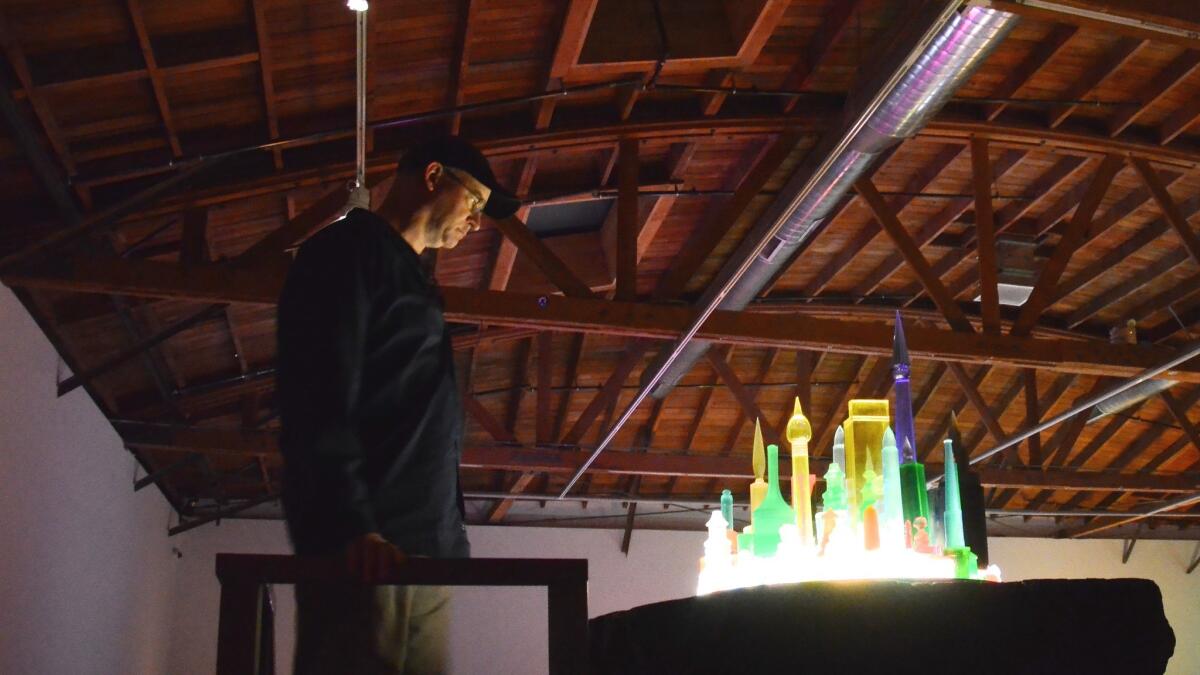
Why: About 20 minutes ago, it seems, this was a derelict industrial zone with a few brave bohemians squatting in old factories along the railroad tracks — the kind of place where Quentin Tarantino would film a squalid murder. Then more artists and architects arrived. Then the entrepreneurs and developers. In another 20 minutes, it’ll be Soho West.
What: The Arts District, a big chunk of downtown between the Los Angeles River and South Alameda Street, has actually been gaining momentum for about three decades. Now is the time to swoop in and enjoy how bright, shiny and tasty it has become. (And spare a minute to mourn the long-ago passing of Al’s Bar, once the life of the neighborhood.)
On East Third Street now, you can confront edgy and expensive contemporary art; browse a bookshop or boutique; settle into a leisurely lunch at Manuela; or bring a brown bag and have a seat in the courtyard next to the kitchen garden and chicken coop. And that’s just inside the Hauser & Wirth Los Angeles gallery complex that opened in 2016.
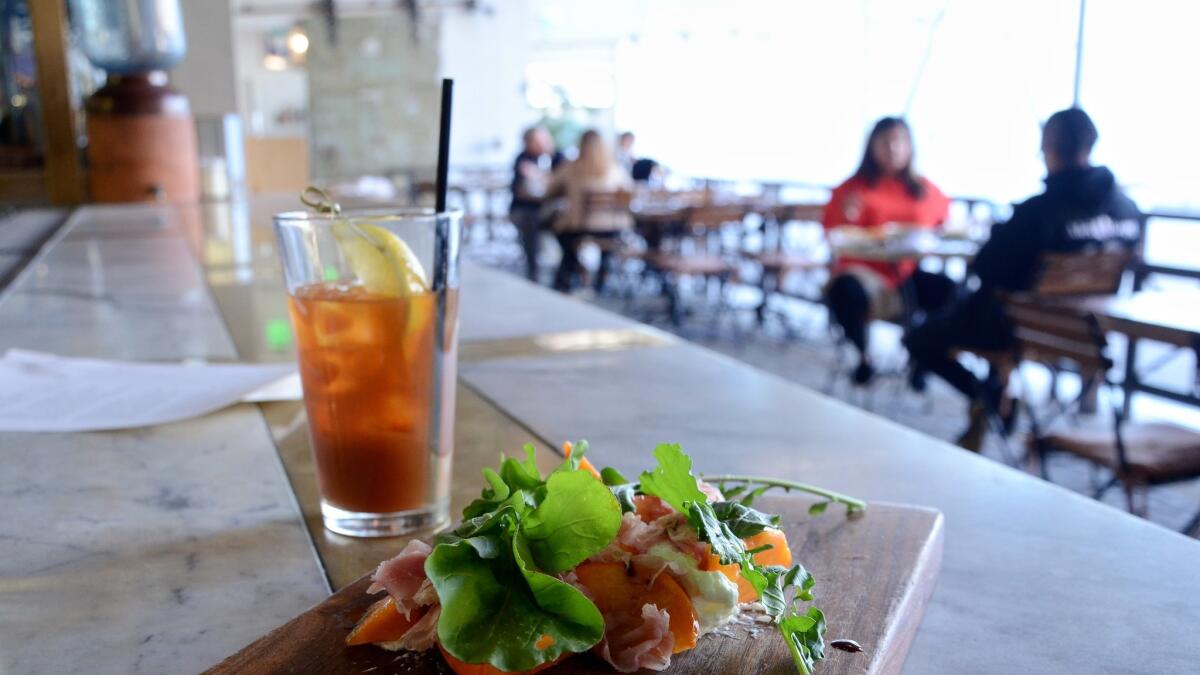
Nearby on Traction Avenue and neighboring streets (where’s there still ample grit), you can can check out an event at the Southern California Institute of Architecture (which was built from the bones of a 1907 Santa Fe freight depot), hoist a beer at Angel City Brewery, and get sausage at Wurstkuche, a burger at Umami, dessert at Piehole or Salt & Straw — more than two dozen options, in addition to the lofts, studios and galleries that give the neighborhood its industrial-bohemian bearing.
What you can’t do is park. Every time I’ve tried, it’s been a nightmare. So now I walk. The Metro Gold Line’s Little Tokyo/Arts District station is fairly handy on Alameda between Temple and First streets.
Where: In many ways, E. 3rd Avenue and Traction Avenue is the neighborhood crossroads. It’s right downtown, less than a mile south of Los Angeles City Hall.
How much: A basic sausage at Wurstkuche costs $7. A tasty plate of persimmon, ham and burrata cheese at Manuela goes for $14. Lofts routinely fetch $1 million or more.
Info: Arts District
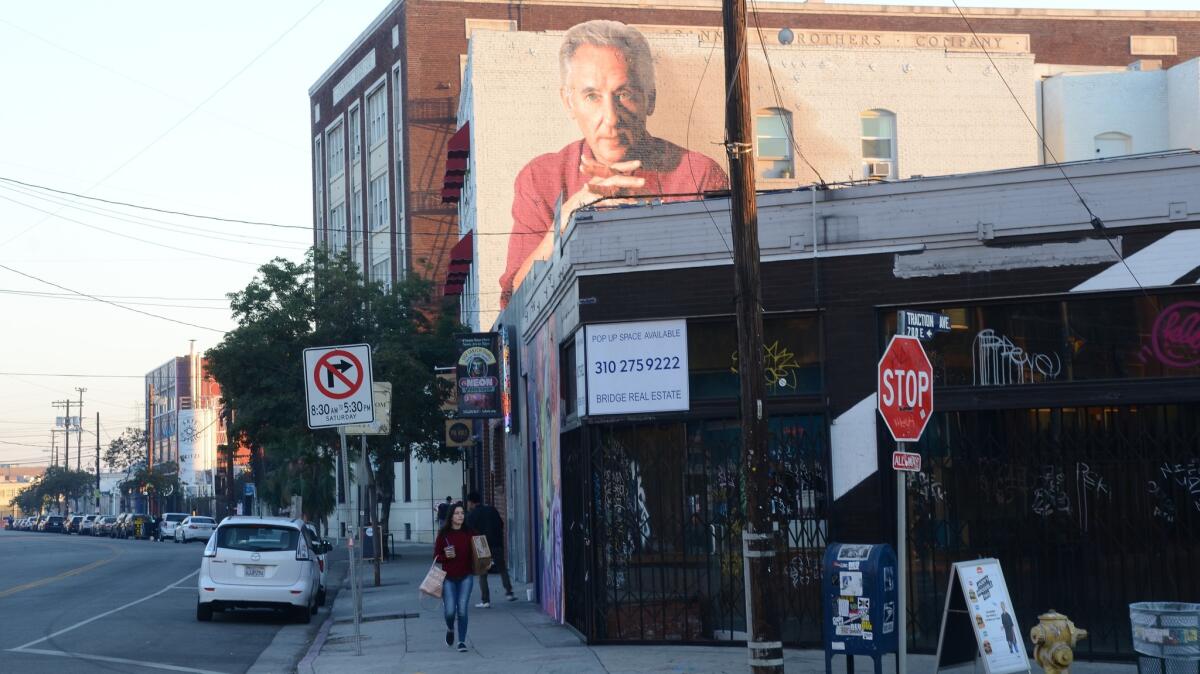
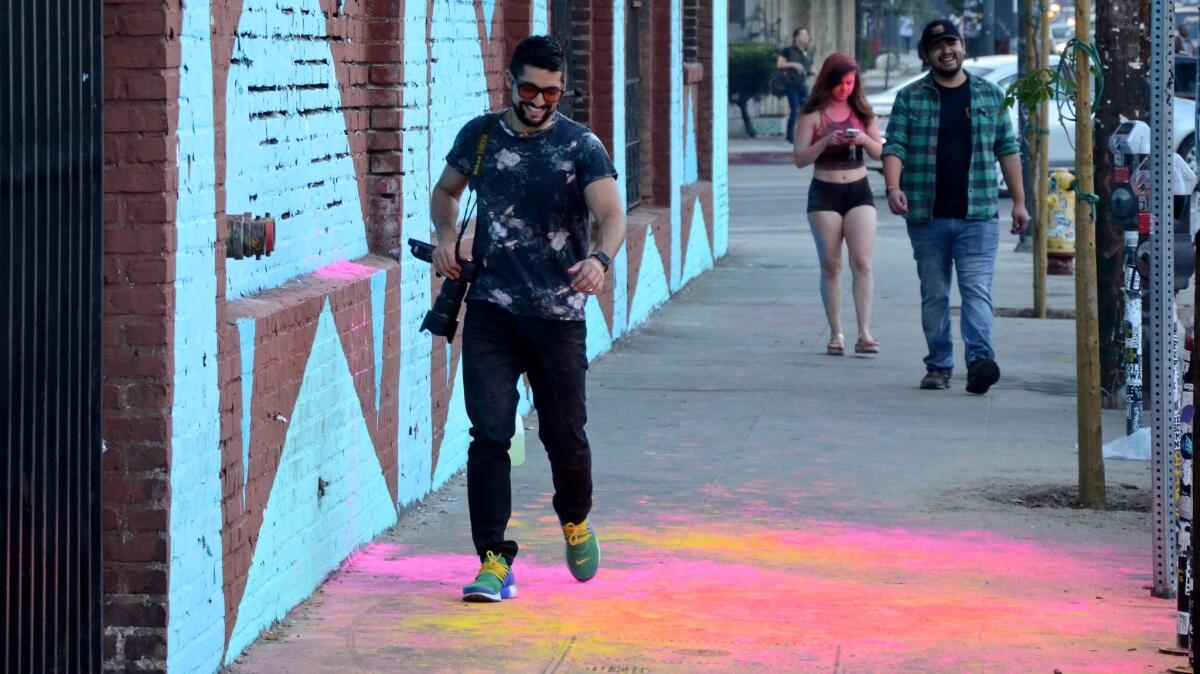
Read forbidden words and savor daring artists in Big Sur’s Henry Miller Library
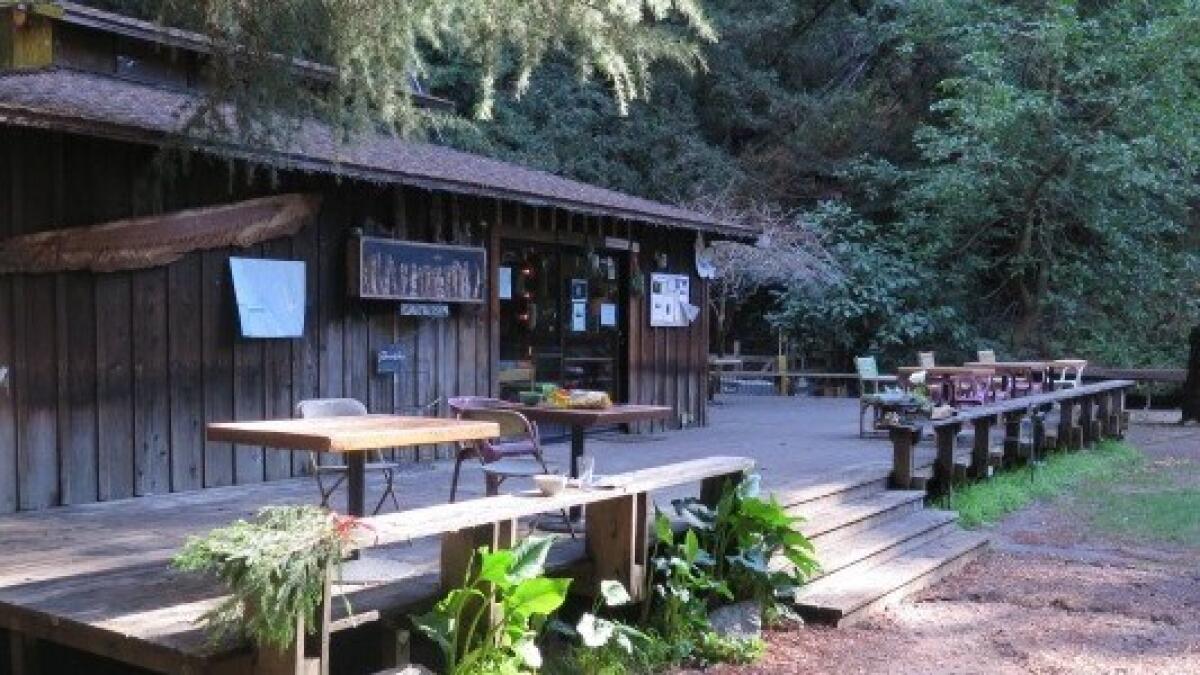
Why: If Big Sur is a temple to the beauty of the California coast, then the Henry Miller Memorial Library is one of its most endearing altars, a respite from the rigors of navigating the twists and turns of Highway 1 and rubber-necking the vertiginous coastline. Beneath stately redwoods is a quiet repository of wisdom, irreverence and charm. Its proprietors say that it is the place “where nothing happens,” and yet it is where everything seems to converge.
What: Henry Valentine Miller came to Big Sur in the 1940s after nearly a decade in Paris. He was, by then, author of “Tropic of Cancer” and “Tropic of Capricorn,” which were banned as obscene in America until 1961. Naturally they sold well, and Miller soon became a hero of renegade literature, a model for William S. Burroughs, Jack Kerouac and Allen Ginsberg. After Miller’s death in Pacific Palisades in 1980, a friend, Emil White, opened a memorial library that bore Miller’s name. With the help of the Big Sur Land Trust, the library has become a nonprofit cultural space, art gallery, performance space, bookshop and destination for artists, writers, musicians and students.
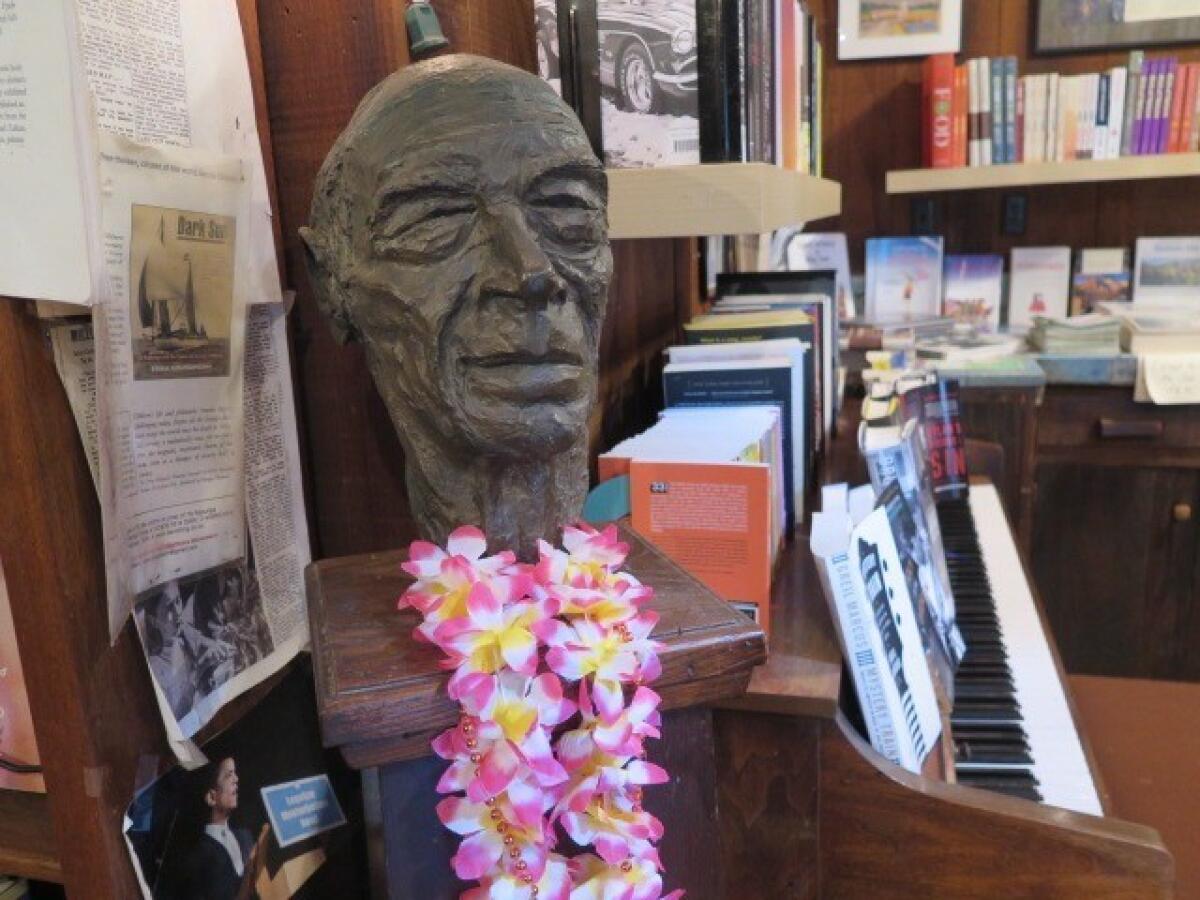
The Henry Miller Memorial Library is a reminder of the pleasures afforded by a curated bookstore. It is a place to celebrate the macho and feminist, the consensual and the iconoclastic through the pages of its eclectic collection of books. Psychedelic cumbias from Peru or the twanging guitar of the Del Tones might be your accompaniment as you browse the tables set with Edward Abbey, Joseph Heller, William Faulkner, John Fante, David Foster Wallace, Jon Stewart, Robert Pirsig and William Least Heat Moon.
Strings of paper money from around the world – offerings from international visitors – dangle from the ceiling. Posters celebrate the notable musical performances that have taken place outdoors, including Philip Glass and Patti Smith, the Red Hot Chili Peppers and Arcade Fire. Outside, an upright piano falls to ruin off the path from the highway. A typewriter gathers rust on a tree stump, and an effigy made of extension cords is crucified on a cross of computer monitors.
In other words, where nothing is sacred, everything is sacred.
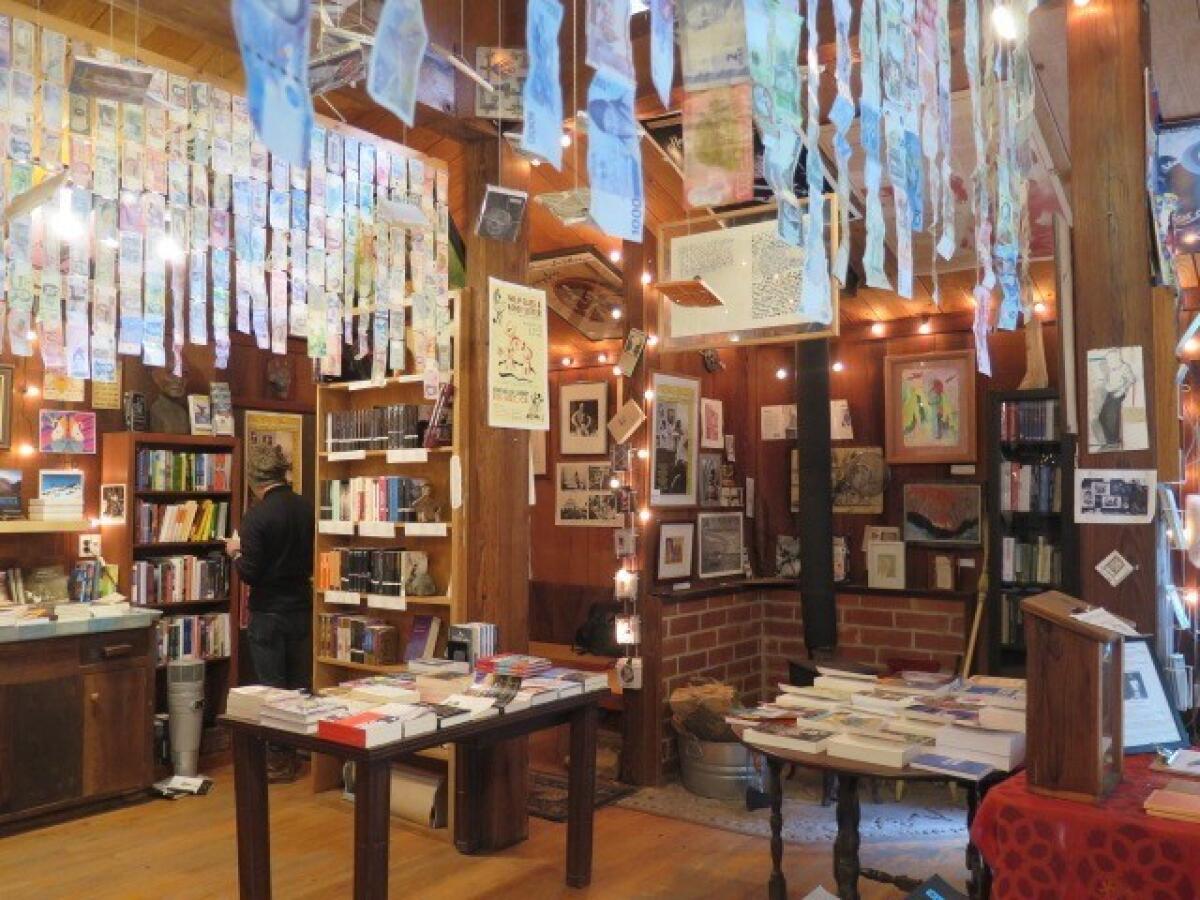
Where: 48603 Highway 1 in Big Sur, which is 10 minutes south of Nepenthe, 10 minutes north of Deetjen’s Big Sur Inn. Also 290 miles northwest of downtown L.A., 152 miles south of downtown San Francisco. Open 10 a.m.-5 p.m. Wednesdays through Mondays, closed Tuesdays.
How much: It’s free to browse. Donations eagerly accepted. Books for sale. Tickets prices vary for performances and programs.
Roam the San Luis Obispo canyon full of architectural daydreams and wandering horses
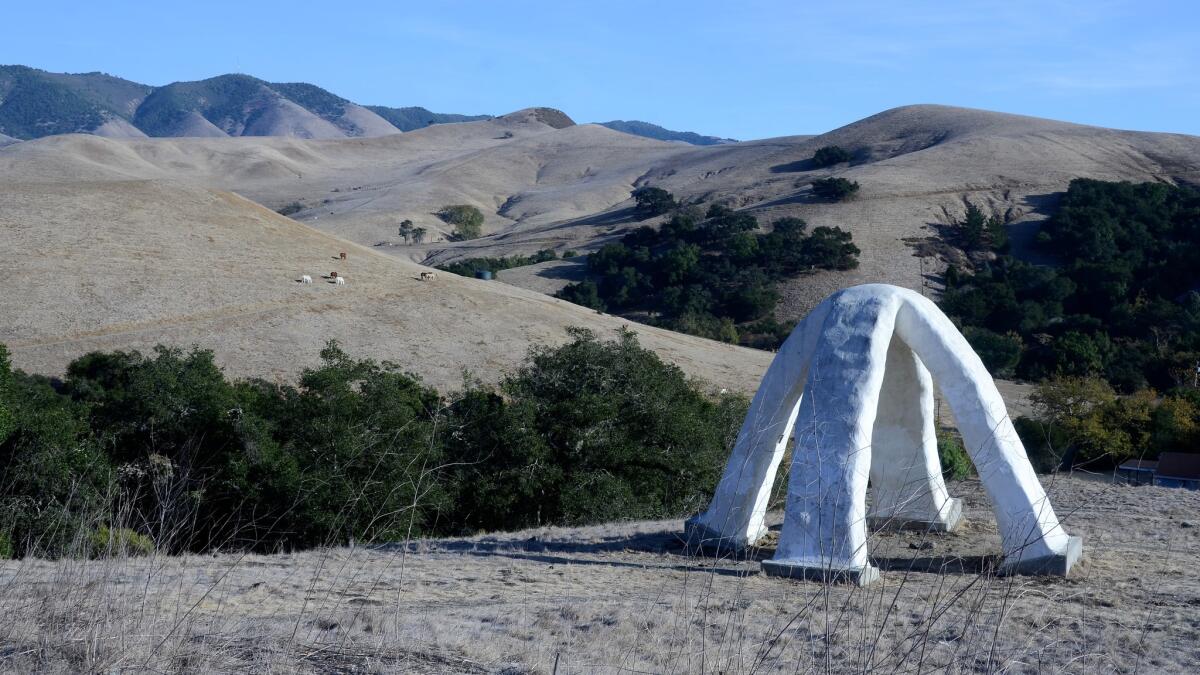
Why: Architects usually keep their daydreams to themselves. But among these hills on the back side of Cal Poly San Luis Obispo, some students have allowed their boldest notions to romp free. And horses romp with them.
What: Cal Poly is routinely ranked among the nation’s top schools of architecture, and its students and professors started testing ideas in this canyon as early as the 1960s. Lately, there’s a spring Design Village event (April 20-22 in 2018) that brings students out to test temporary structures and sometimes sleep in them. Luckily for the rest of us, those nine acres and the rest of the canyon are generally open to the public, including dogs and mountain bikes (on the dirt road). It’s a hike of about 2.5 miles from campus to the farthest structure, but your mileage (and elevation gain) will depend on how tempted your are to probe the structures and stalk the horses.
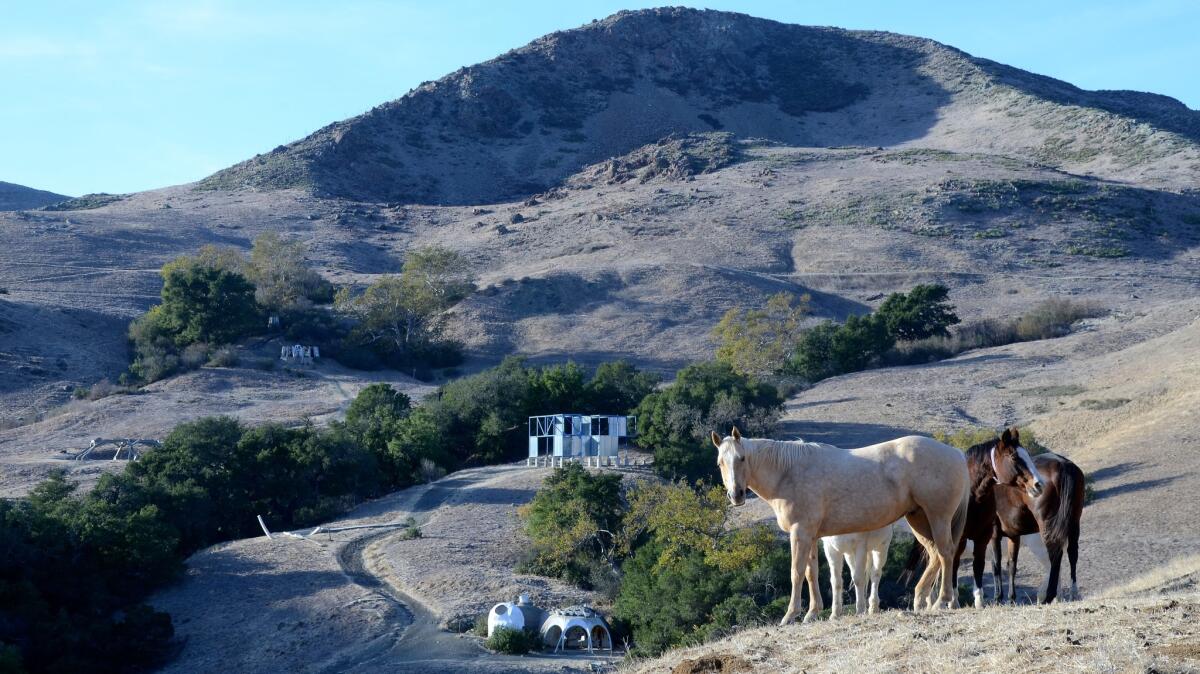

I wandered around on a December day when the hills were the color of straw, and at first I wasn’t so happy about all the horse turds. But once the horses themselves showed up, that changed everything. They sidled up to a water tower, then struck heroic poses on the ridge line while I prowled around assorted unconventional houses and bridges, including a geodesic dome. Yes, there was some graffiti and vandalism, but many structures have been reconditioned in more recent years. (The university calls it an “experimental construction laboratory.”)
I’d call it a great spot for photo experimentation as well. There are about 20 projects, and plenty of tree shade in the lowlands along Brizzolara Creek. After a rain, I’ll bet those grassy slopes light up neon green.
Where: The Cal Poly campus is 195 miles northwest of downtown L.A. Enter the campus via Grand Avenue (and beware of dorm construction near the entrance). Follow the campus map to the corner of Village Drive and Poly Canyon Road, then walk northeast on Poly Canyon Road, which is a gate dirt rout that follows Brizzolara Creek. After about 3/4 of a mile, you’ll see a stone arch. Step through and the canyon will open before you.
How much: On weekends, parking is free at lot H4 at Village Drive and Perimeter Road. On weekdays, it’s $5 for a parking pass at the checkpoint at the campus entrance. (I showed up on a weekday and parked at lot K-1.)
Info: Cal Poly College of Architecture & Design, Hikespeak’s trail description.

Step into the vast, strange spectacle of Kenny Irwin’s Robolights in Palm Springs
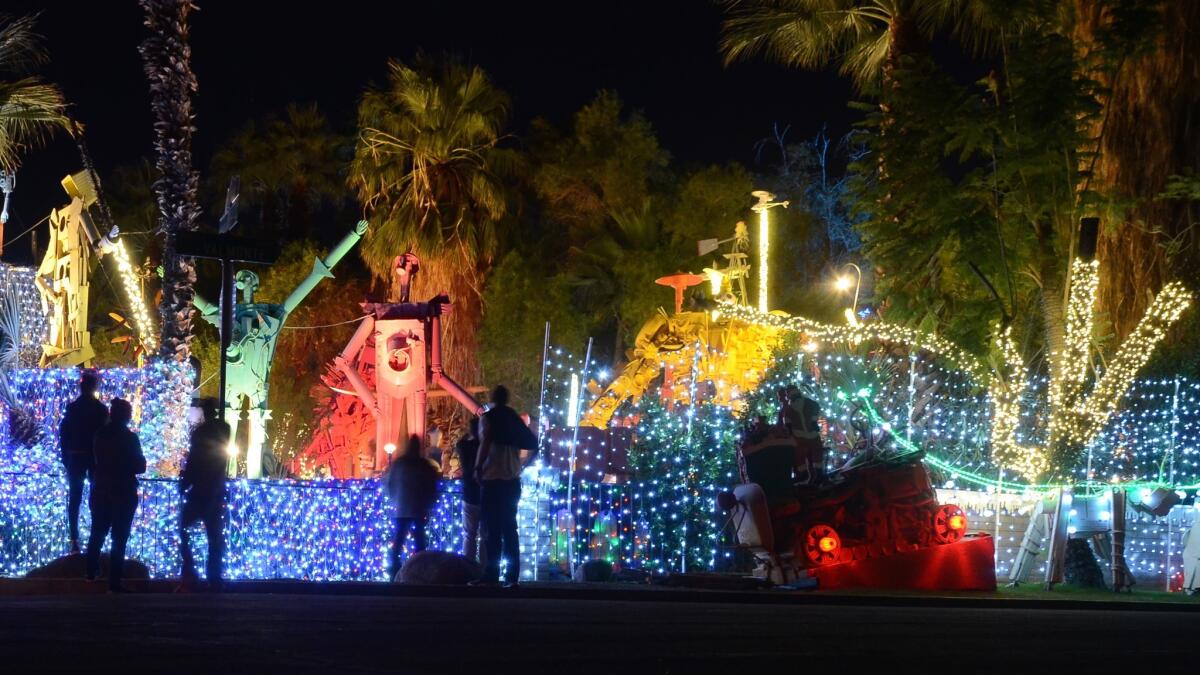
Why: You’ll never see another holiday display quite like it. And it sits on 4 acres in the middle of an upscale Palm Springs neighborhood.
What: The Coachella Valley, with its 80-degree December days, is a quirky place to celebrate winter holidays to begin with. And the quirks multiply once you enter Palm Springs’ Movie Colony neighborhood and approach the Irwin house, about two blocks from the old Frank Sinatra Estate. Since at least 32 years ago, when he was 12, Kenny Irwin has been driven to create epic displays from cast-off items — dreamscapes that suggest robots, space aliens and more obscure spectacles that defy description. With his father’s support (and a corps of seasonal workers to handle logistics and crowd control), Irwin’s compulsion has grown into Robolights, a seasonal landmark that combines Santa Clauses, reindeer, sleighs and gingerbread houses with little green men, skulls, dolls, hybrid creatures, reclaimed consumer electronics, half-melted toys and at least one coffin. At Robolights there are no clear lines between Halloween, Christmas and science fiction.
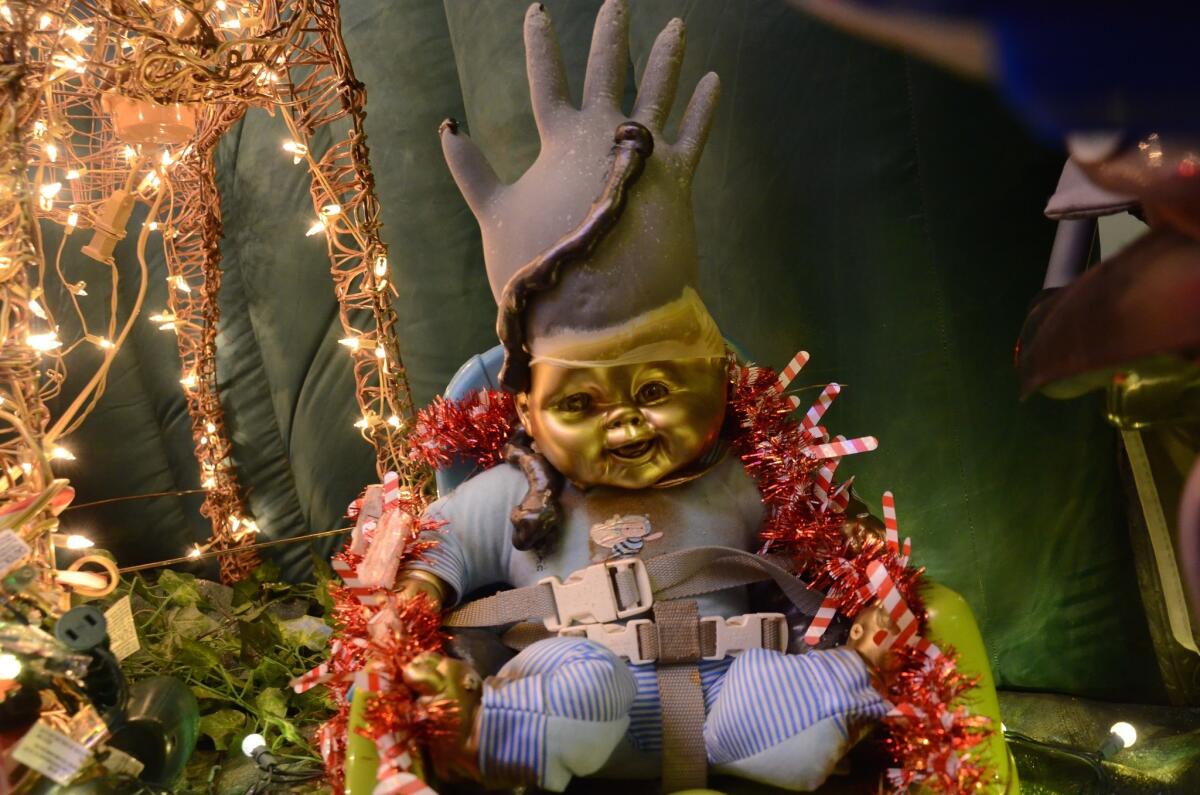
From Nov. 22 through Jan. 8, the scene is lighted by thousands of bulbs and visitors are ushered along a path that leads from the front yard through a forest of fantasy in the back, then out again. A thousand visitors in a night is not uncommon. On my visit in early December, Irwin was out and about, a soft-spoken man with a skullcap, caftan, long beard and gentle smile. (Did I mention that the artist converted to Islam many years ago?)
“I’ll bet the hardware store totally loves him,” I heard one visitor say. “This is insane,” said another. Many families pose for pictures amid the luminous chaos.
Where: 1077 E. Granvia Valmonte, Palm Springs, 107 miles east of downtown L.A. But while the Robolights are lighted, the city bans nonresident parking on many streets nearby, so you’ll need to park a few blocks away. Try Ruth Hardy Park. And be careful as you walk — there isn’t a lot of streetlight illumination in the neighborhood.
How much: Free. But there’s a receptacle for donations at the entrance. From 4 to 9:30 p.m. daily.
Info: Robolights
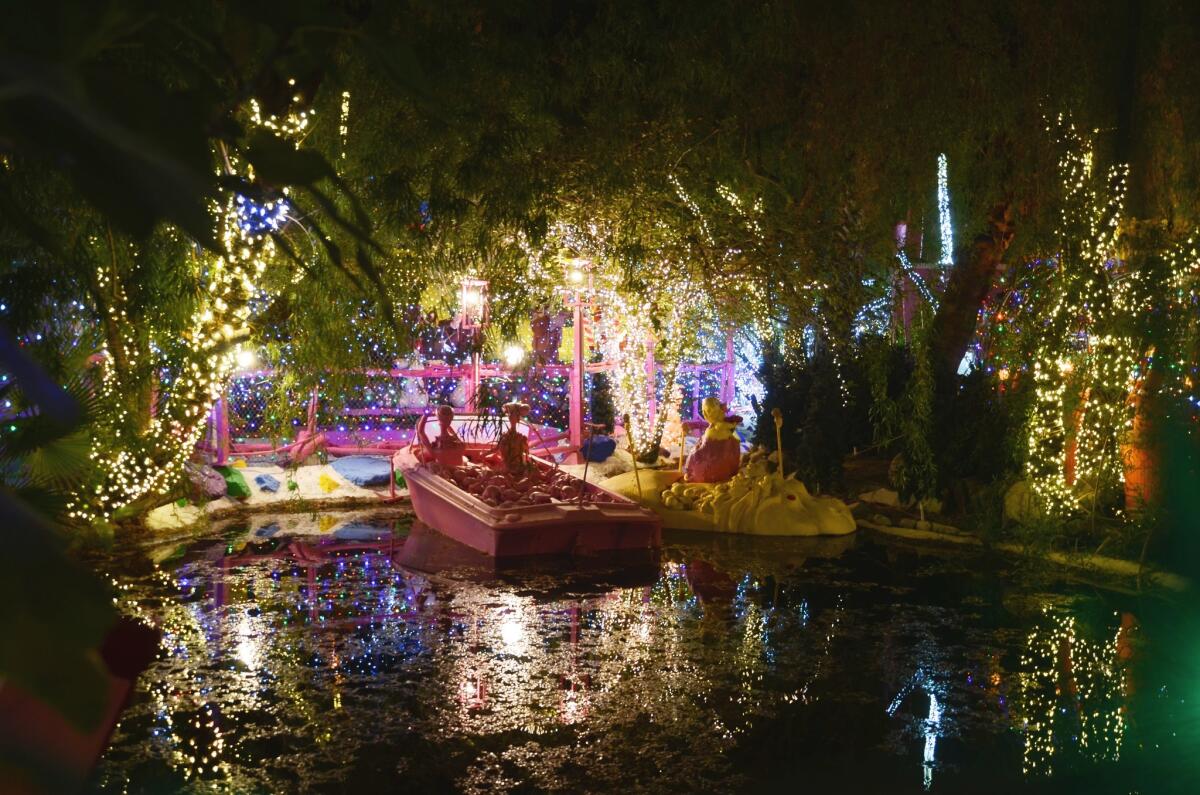
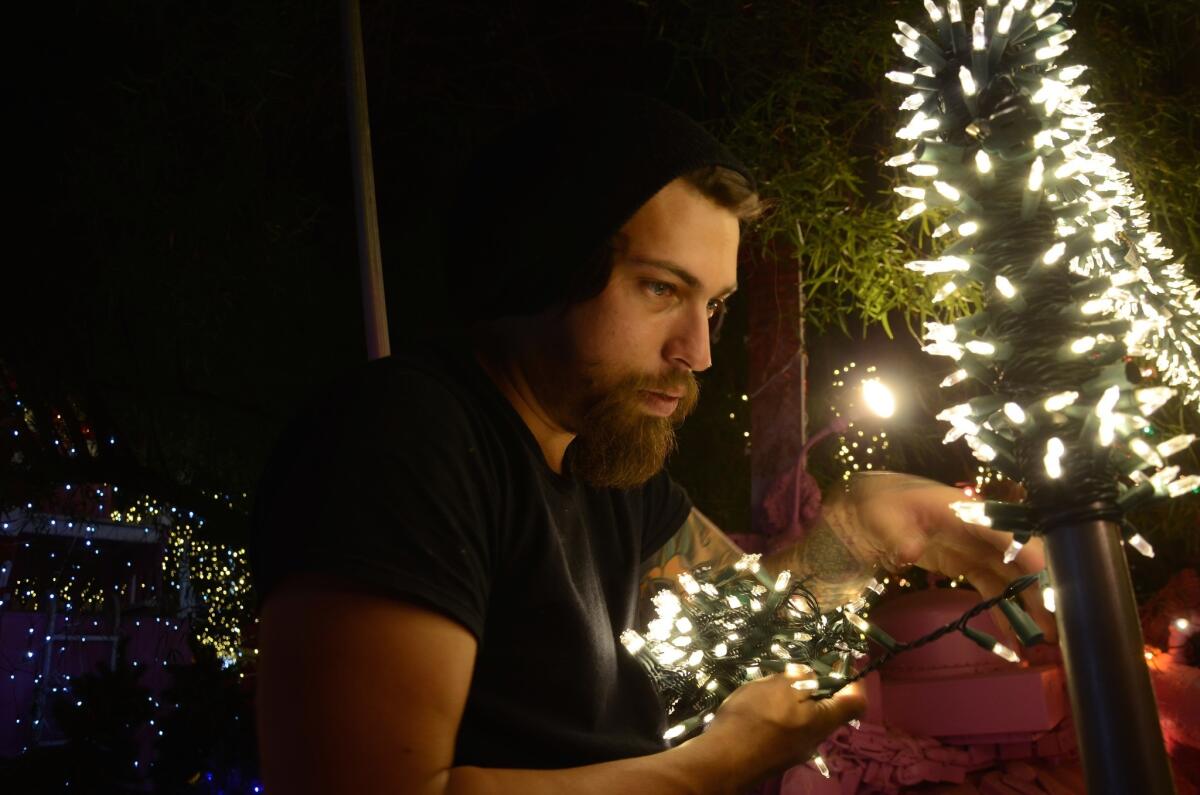
Get down, dawg, with a $15 beach yoga class in Santa Monica
Why: Beach yoga is good for the bod, and the spirit, in ways that no cramped, sweaty studio can match.
What: All sorts of beach yoga classes are held up and down the California coast, but few are as affordable and easy as Beach Yoga With Brad and Friends in Santa Monica. No reservations required. Just drop in with $15 and a beach towel (or a yoga mat if you prefer).
Instructor/owner Brad Keimach is a Juilliard-trained classical music conductor who moonlights – or sunlights – with these yoga classes every Saturday and Sunday from 10:30 till noon. He also holds Wednesday sunset classes starting at 3:45 p.m. and lasting an hour. When the days are longer and the clocks change, he adds more weekday sunset classes.
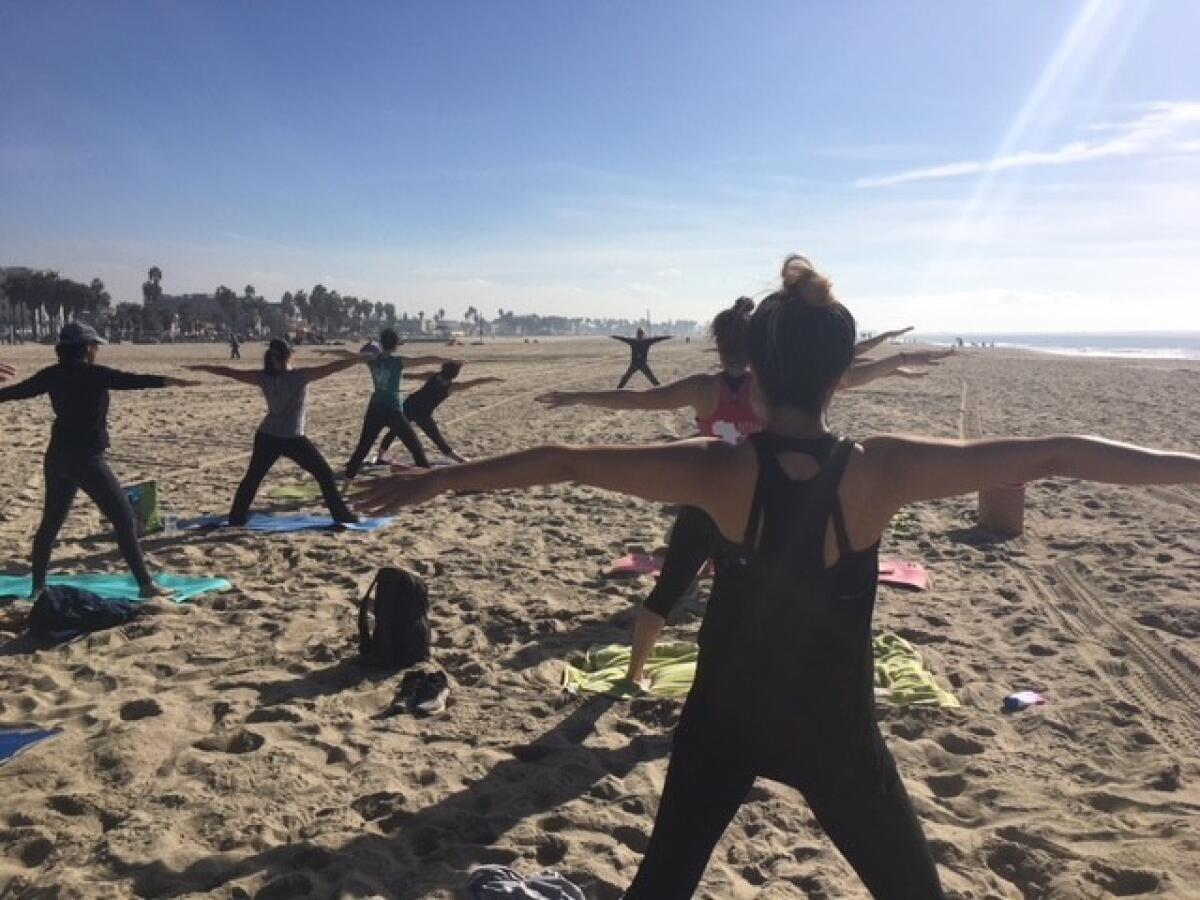
For almost 10 years, his beach-based classes have appealed to first-timers as well as advanced yoga buffs. They are held on the water side of Guard Tower 29, roughly on the border between Venice and Santa Monica. Paid parking is plentiful at the public lots at the end of Ocean Park or on Main Street.
Like many yoga instructors, Keimach emphasizes breathing as well as the moves and poses. He also incorporates the setting, sending students to get their toes wet at one point for a bit of spiritual spritzing.
The classes pass quickly, without pain, and without Keimach putting his hands all over the students (a too-common yoga studio experience). Looking out over the sparkly Pacific, his classes combine ocean breezes, a relaxing pace and Keimach’s soothing instructions, at a venue where space is never an issue.
Where: Lifeguard Tower 29, Santa Monica, 16 miles west of downtown Los Angeles.
How much: $15
Shop with Victorians on San Francisco’s Union Street
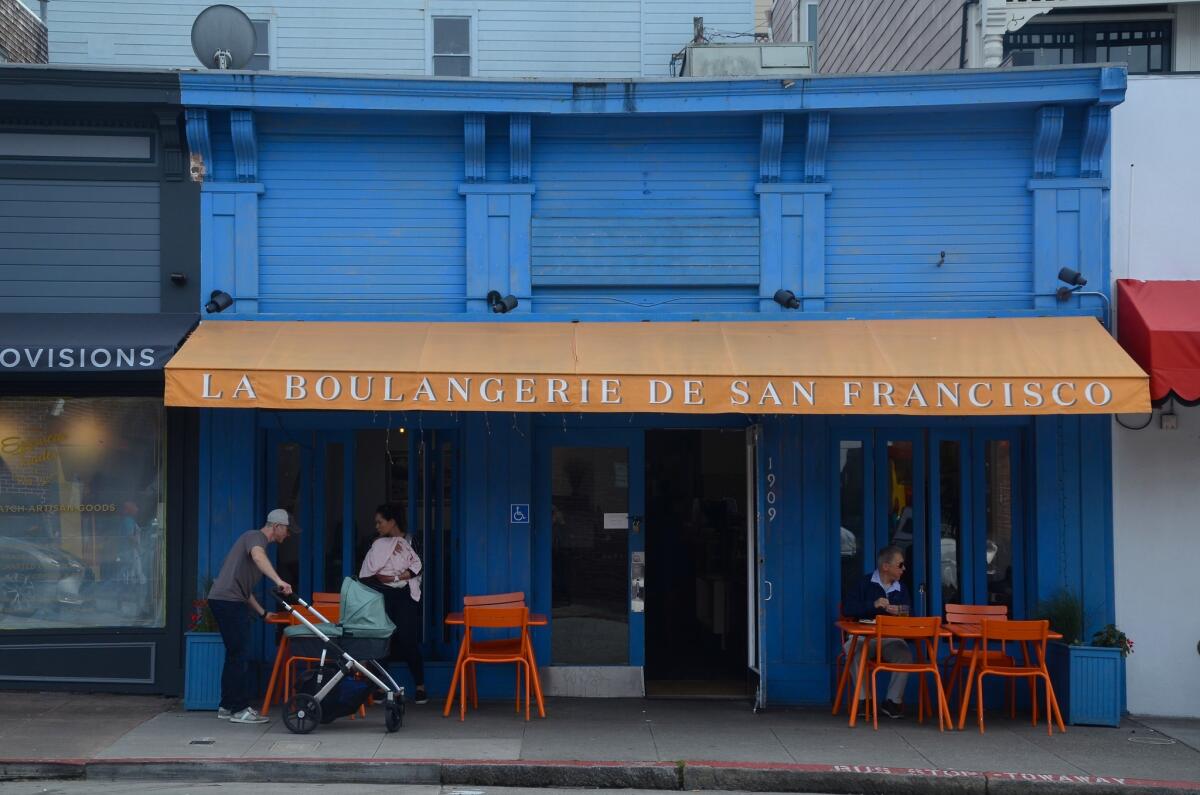
Why: Sometimes you just want to shop in a strange city. Not in the middle of a grand scene like Union Square or the Ferry Building, but along a street that feels like a neighborhood just a bit beyond your means. With Victorian mansions here and there. Hello, Union Street.
What: Union Street has had its great-shopping reputation since the 1950s. The eight-block stretch between Van Ness Avenue and Steiner Street, surrounded by the Marina and Cow Hollow residential neighborhoods, is the prime retail portion.
Many of the shops (which tilt toward apparel and beauty products) and restaurants are housed in Victorian mansions that survived the quake of 1906. One even older mansion, the pale blue Octagon House at Gough and Union, went up in 1861 and has been preserved in its residential state by the National Society of the Colonial Dames of America (so it would be wrong to knock on the door and ask if this is the weed dispensary you’ve heard so much about). The society opens the house a few days a month for tours.
Among the restaurants, I can vouch for the Belgian food and beer at Belga (on Union near Buchanon Street). But there are more than two dozen. And there’s plenty to peruse at Chronicle Books (on Union between Octavia and Laguna streets).
Where: The corner of Van Ness and Union is a good place to start. It’s 1.5 miles northwest of Union Square, 383 miles northwest of downtown L.A.
How much: Free to browse, of course. Oysters at Belga, $3 each. Median home price in Cow Hollow and the Marina: about $1.8 million.
Info: Union Street
Find yourself in a yogi’s seaside Encinitas gardens
Why: Where else can you spend an hour and feel like you’ve been on a soul-replenishing spiritual retreat? At the Self-Realization Fellowship Meditation Gardens in Encinitas, you can be fully present in the moment and get in touch with your inner yogi – and do it surrounded by gorgeous gardens on a bluff overlooking the ocean.
What: The goal of the Meditation Gardens, part of a large complex at the southern end of downtown Encinitas dedicated to the teachings of Paramahansa Yogananda, is to “inspire you to a greater realization of the Divine Presence that lies within.” Walking up the stone steps into the lush, eclectic gardens imparts an instant feeling of serenity.
There are koi ponds and many quiet nooks with benches where you can sit. At the top of the ocean bluff is a plaque that marks the location of the Golden Lotus Temple. The temple, built in 1937 to take advantage of the incredible views, only stood for five years before the ground gave way and it had to be dismantled. Wander past the old, empty swimming pool up the tree-shrouded path to the “dry” area featuring native plants and succulents overlooking the famed surf spot Swami’s. (The beach’s name was a nod to Yogananda.) Some visitors pray, others meditate. I like to watch the surfers below and imagine them praying for good waves.
And don’t miss the Hermitage at the opposite end of the gardens, where Yogananda spent many years writing and teaching. The Hermitage, preserved as a shrine, draws followers from around the world; it is open on the first and third Sundays of the month. It was moving to see the study where he wrote his most famous work, “Autobiography of a Yogi,” which has been translated into dozens of languages.
Where: 215 W. K St., Encinitas, 100 miles southeast of downtown L.A. (Look for the three large “golden lotus towers” as you come down South Coast Highway 101.)
How much: Free.
Hoot and holler in UCLA’s Pauley Pavilion, the hoop heaven that honors John Wooden
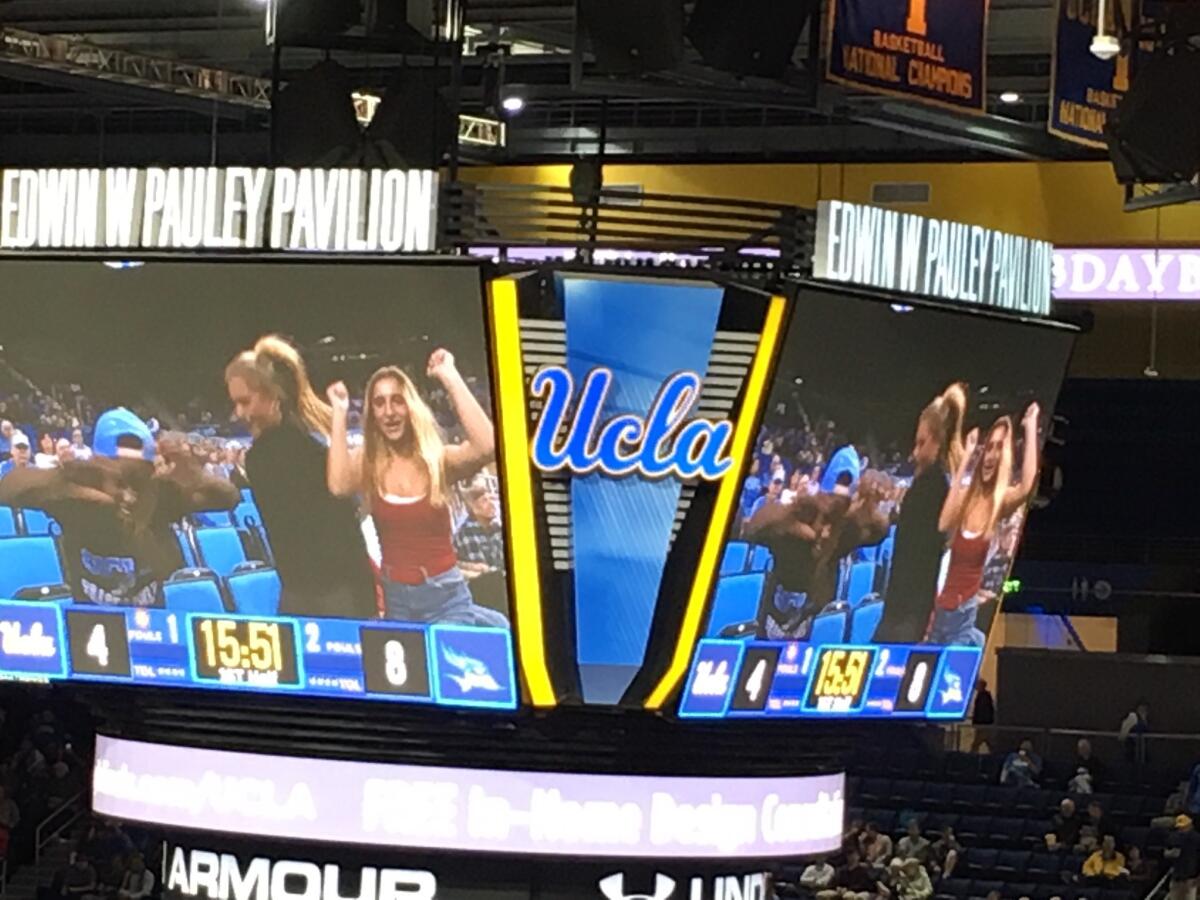
Why: John Wooden was the Elvis of college basketball, a mythic, once-in-three-lifetimes figure. Pauley Pavilion was his Graceland. Along with Lambeau Field and Fenway Park, it belongs on any sports fan’s must-see list.
What: Updated and comfortable, Pauley sits on the sweeping and shady UCLA campus in Westwood. It is one of the easiest L.A. sports venues to park near ($12) and navigate.
Reopened in 2012 after a two-year renovation, the stadium now offers modern concessions, more room to roam and 1,000 more seats. Most significantly, it added a concourse, improving comfort and flow. Be ready for a lot of blue. After Dodger Stadium, this is L.A.’s second blue heaven.
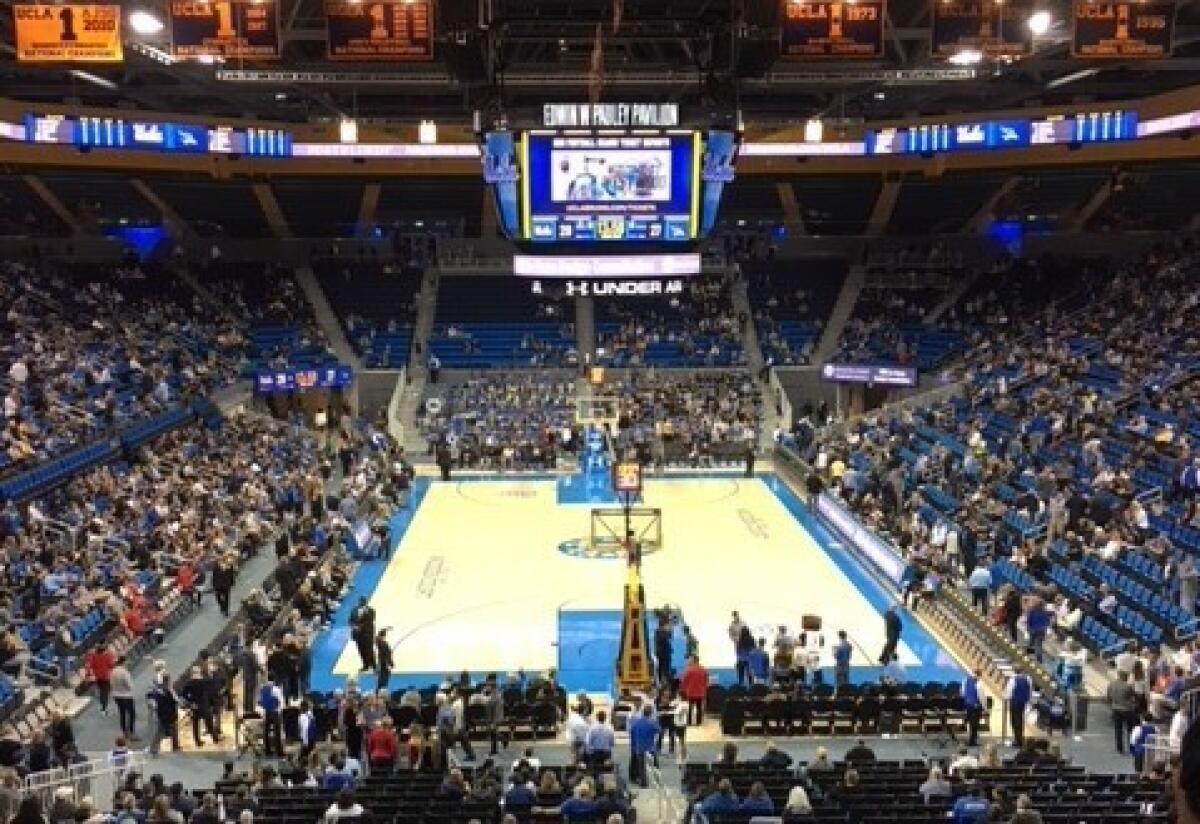
But you’re here for the lore, in a place that has produced 38 All-Americans. Wooden started it all, taking over as head basketball coach at UCLA in 1948 and leading the Bruins to a record 10 national championships.
Renowned for his disciplined, values-driven approach, he created a basketball dynasty that won seven straight championships in the late ’60s and early ’70s, including 98 successive victories at Pauley.
Wooden, who died in 2010, is the first person to be inducted to the Basketball Hall of Fame both as a player and a coach.
Though he resembled a gentleman banker more than a rock star, Wooden’s legacy lives on in the stadium he made famous. The corridors are lined with photos, timelines and a version of Wooden’s “Pyramid of Success,” a set of principles formed to help students and teams reach their potential.
Where: Pauley Pavilion, on the UCLA campus, 15 miles west of downtown L.A.
How much: Prices vary. Seats generally start at $8 for less-attractive games and $25 for popular ones.
Info: UCLA
Drive through In-N-Out Burger’s flagship restaurant in Baldwin Park for a double-double, animal-style
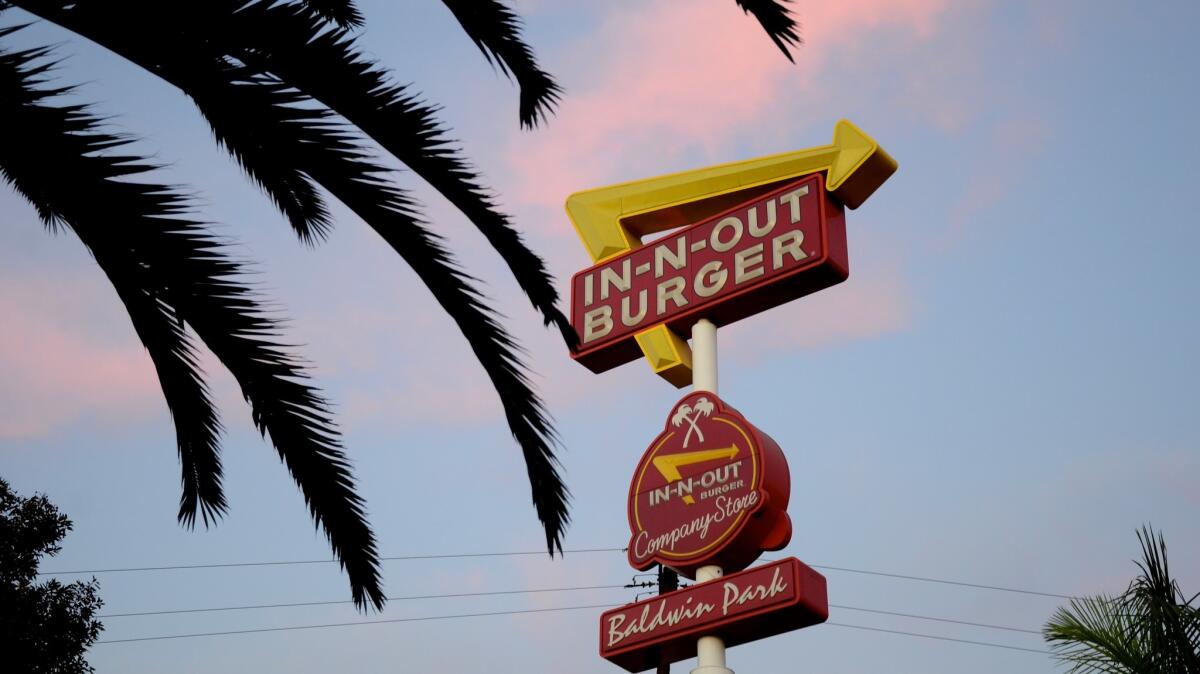
Why: For certain carnivorous Californians, a visit to this burger chain is like church, but with more calories. At the flagship In-N-Out location just south of the 10 Freeway in the eastern L.A. County suburb of Baldwin Park, of course you can drive through, as most customers do. But you could eat inside, then browse a company store, then (on the north side of the freeway) admire a non-functioning replica of chain’s first burger shack.
What: Harry and Esther Snyder founded the first In-N-Out burger shack in 1948, which puts them among the first to try a drive-through restaurant. Now their granddaughter runs the company.
To taste what the fuss is all about, order a “double-double, animal-style” — two beef patties cooked with mustard, two slices of cheese and a choice of hand-leafed lettuce and tomato, plus pickles, extra spread and grilled onions.
It’s the appeal of these burgers and fries (“no heat lamps, freezers or microwaves”) that has fueled the company’s growth to more than 300 outlets. (But unlike its Southern California cousins McDonald’s, Jack in the Box, Taco Bell and Wienerschnitzel, In-N-Out has never expanded beyond the American West.)
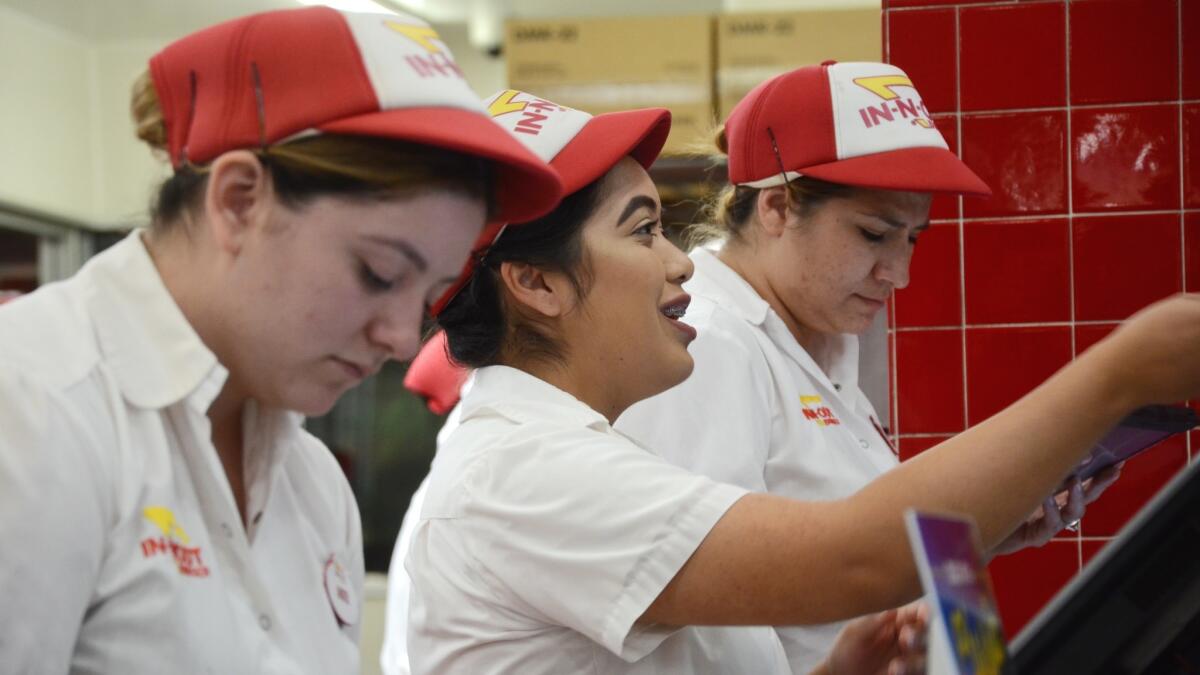
Though the company’s first home at San Francisquito and Garvey avenues has been leveled, the current restaurant is joined by not only a store (open 10 a.m.-5 p.m., Mondays through Saturdays) but a regional distribution center, the two-story campus of In-N-Out University and the replica shack, which went up in 2014. (The online store does have wider inventory than the brick-and-mortar one, including socks and surfboards.)
Where: 13850 Francisquito Ave., Baldwin Park. The company store is at 13800 Francisquito. The replica shack (free and open for selfies Thursdays through Sundays from 11 a.m. to 2 p.m.) is at 13752 Francisquito. The restaurant is 16 miles east of downtown L.A.
How much: Double-double, animal-style, $4.27.
Info: In-N-Out
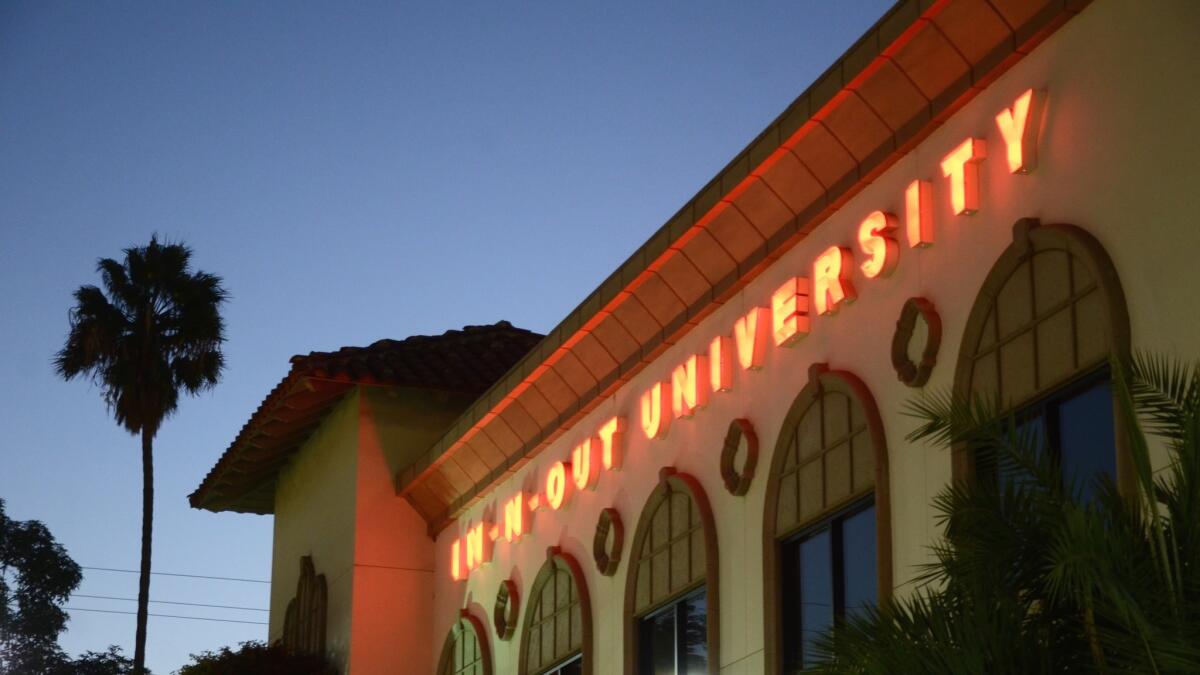
Light up your life at the Museum of Neon Art in Glendale
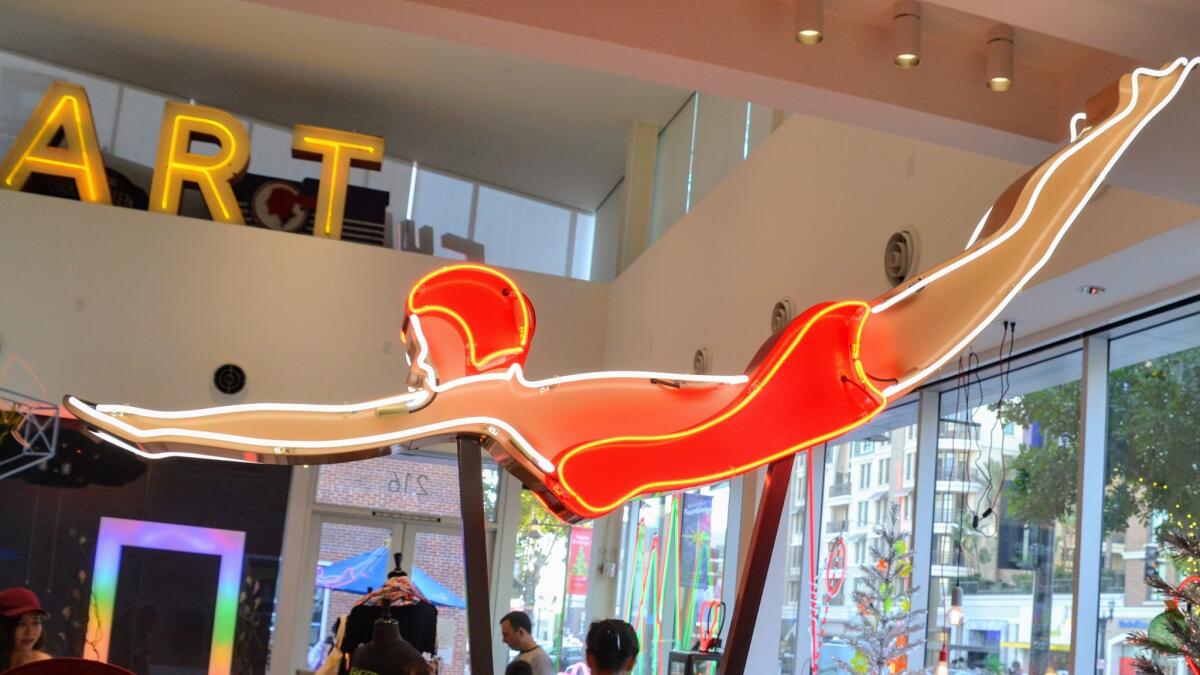
Why: Decorative and delightful, the works that light up our lives at Glendale’s Museum of Neon Art are part art and part science and all fascinating.
What: In 2015, the museum moved from downtown Los Angeles, where it had lived since 1981, to Glendale and has been lighting up lives ever since.
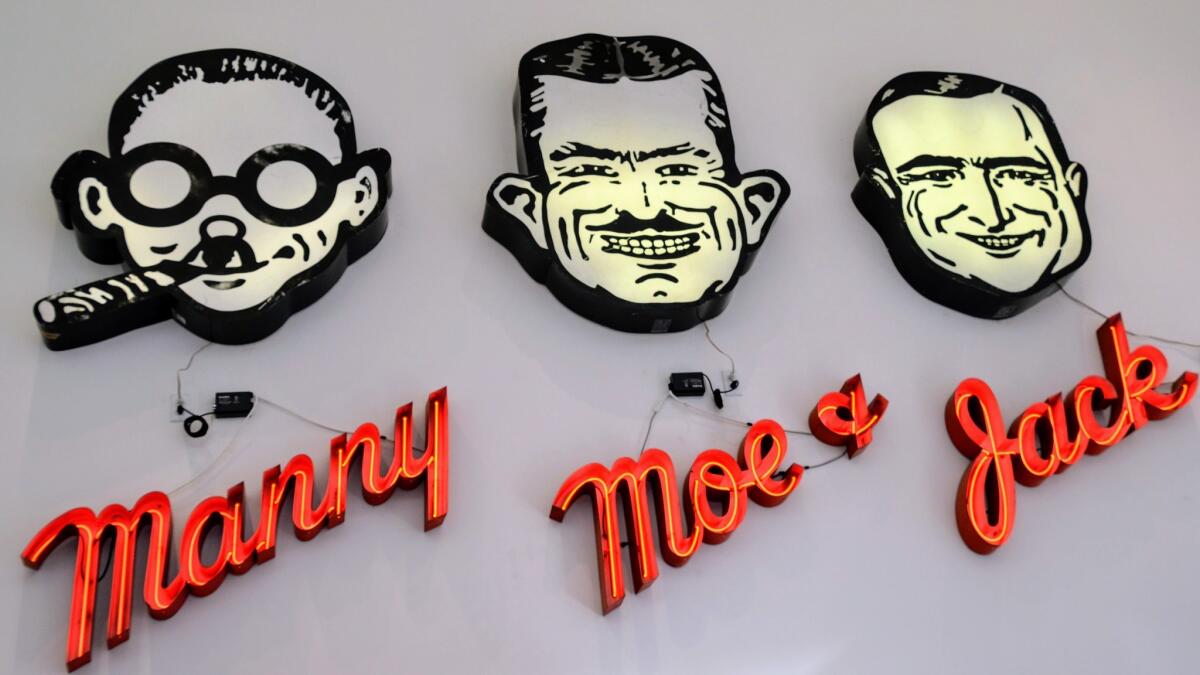
For this you can credit the founder of the feast, Georges Claude, a Parisian who invented the neon light in about 1910.
L.A. became a hotbed of neon-ness, thanks to its desire to be the capital of the next big thing and its desire to look the part, beginning in the Roaring ’20s.
The neon at this museum, where exhibits change often enough to encourage repeat visits, is more amusing than unsavory. And as a reminder that nothing lasts forever, Manny, Moe & Jack (the Pep Boys) are not on permanent display, although the museum doesn’t have any plans to move the fellows.
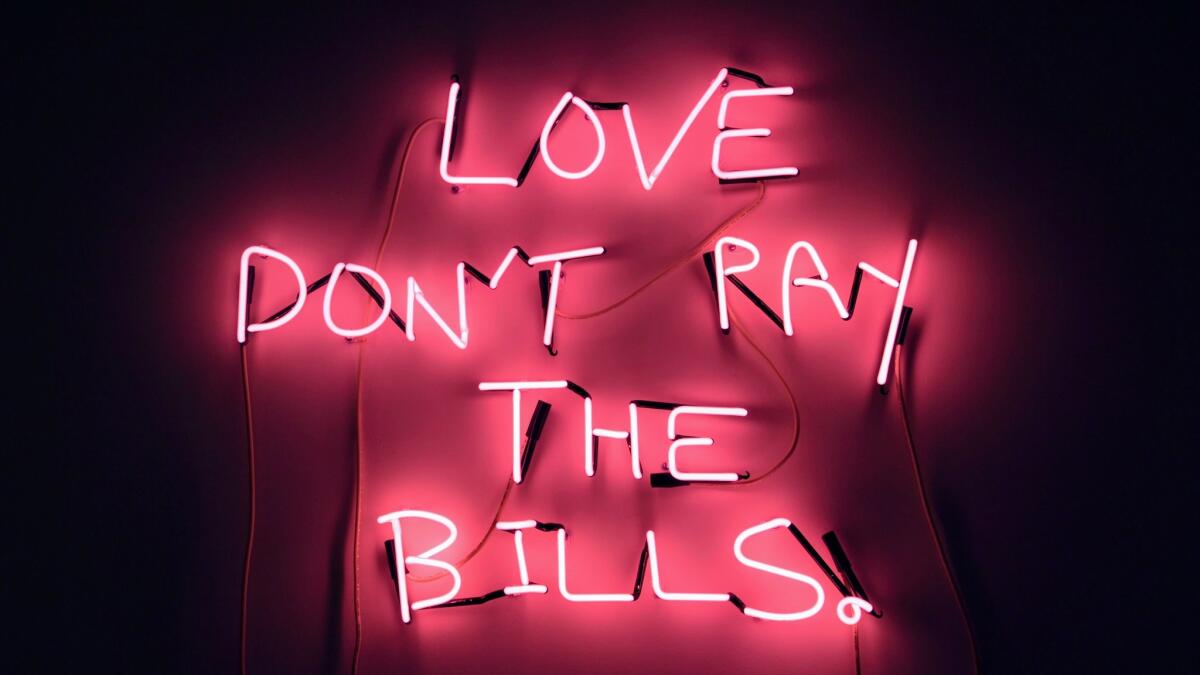
Through Feb. 11, an exhibit called “She Bends: Women in Neon,” takes you inside a creative funhouse of the art form, some works based on words (Eve de Haan’s pink neon “Love Don’t Pay the Bills”), some on objects (Michie Hongo’s faces on skateboard remnants).
Where: 216 S. Brand Ave, Glendale, about eight miles north of downtown L.A.
How much: Museum entrance is $10 for adults ($5 if you live in Glendale), $8 for those 65 and older, and free for those 12 and younger if accompanied by an adult.
Info: Museum of Neon Art
Forage with top chefs at the Santa Monica Farmers Market
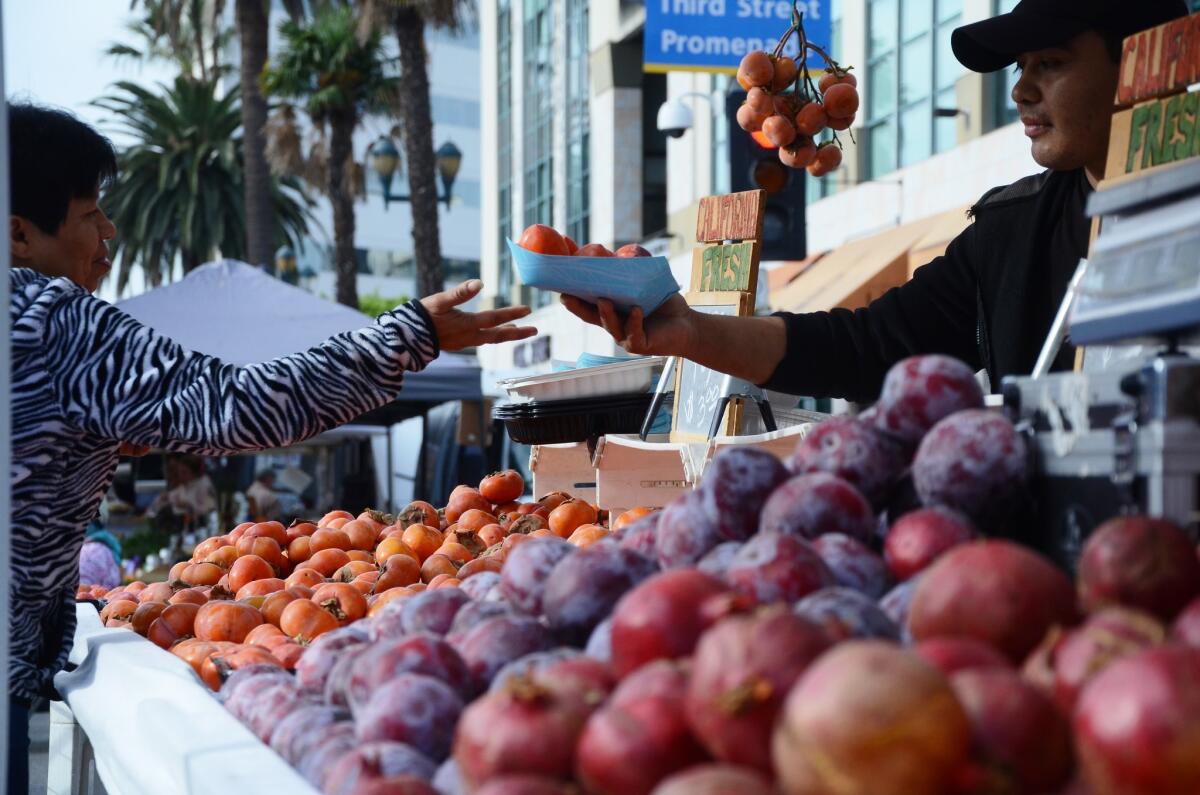
Why: Some of the state’s most accomplished farmers rise before dawn on Wednesday mornings and drive as much as 200 miles, just so they can set up and sell at this market. One reason: The Santa Monica Farmers Market draws some of Southern California’s most decorated (and discriminating) chefs. And the market venue happens to be a tomato toss away from the beach, a cucumber roll from the scores of shops and restaurants along the Third Street Promenade.
What: About 75 farmers set up stalls along a few blocks of Arizona Avenue, which is closed to vehicles on market mornings. If you’re coming by car, you’ll have to cope with nasty traffic and parking, even at 8:30 a.m., but once you’re afoot, life is good. In late fall, you’ll likely find dates from Mecca, apples from Cuyama, persimmons from Fallbrook, pluots from Kingsbug, oranges from Ojai, mushrooms from La Habra Heights. Consider this a reminder that for all its glitz, California remains an agricultural powerhouse. And even if you’re not going to bite into that persimmon, you’ll feel the sea breeze and hear the banjo player at Arizona and 2nd, or maybe the guitarist a block to the east.
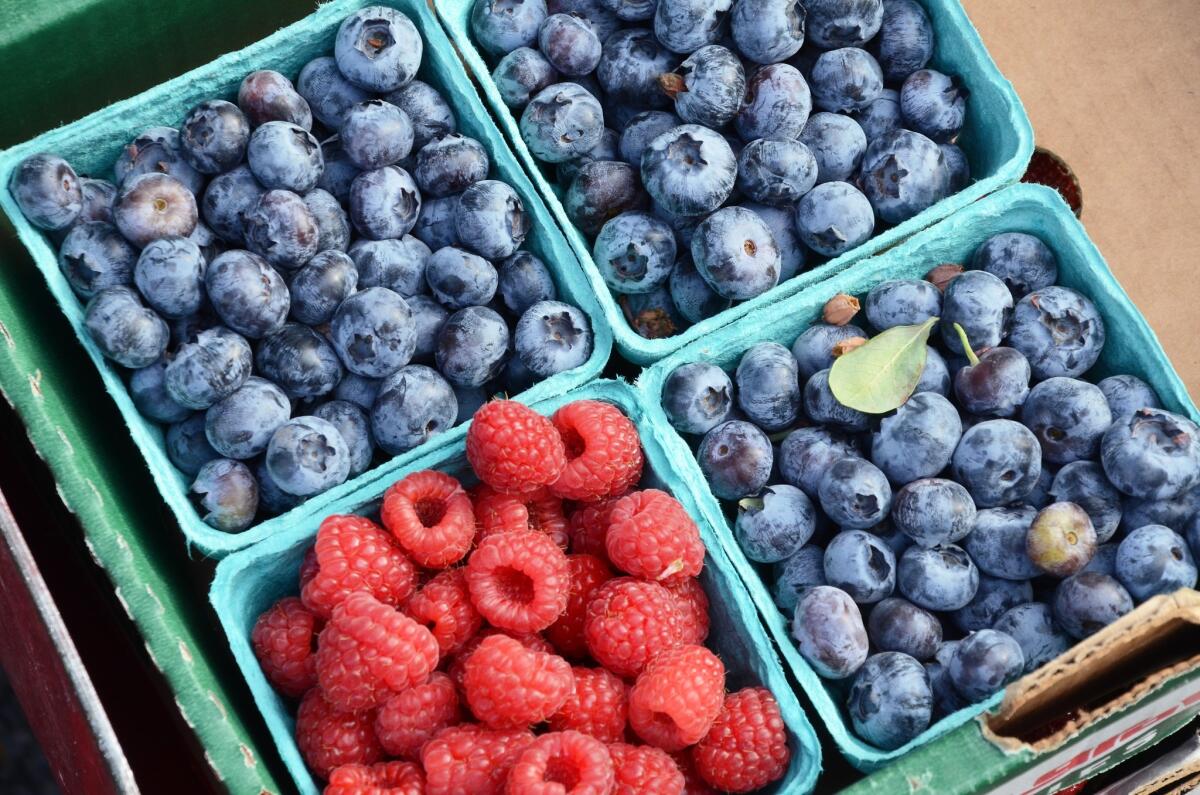
The market was born in 1981, and the stampede of kitchen professionals began soon after. Noting that close relationship between growers and chefs, Saveur magazine in 2016 labeled this “L.A.’s best farmers market.”
Still, it’s good to remember that other markets operate on Santa Monica’s Main Street (Sundays) and in the city’s Virginia Avenue Park (Saturdays). If you’re farther east, or you’d like more street musicians and more nonproduce merchants, there’s the Hollywood Farmers Market on Sundays from 8 a.m. to 1 p.m. at Ivar and Selma avenues.
Where: The market happens on Wednesdays along Arizona Avenue, Santa Monica, between Ocean Avenue and 4th Street from 8:30 am to 1:30 pm. On Saturdays, a smaller version occupies Arizona Avenue between between 2nd and 4th streets from 8 a.m. to 1 p.m. The corner of Arizona Avenue and 4th Street is 17 miles west of downtown L.A. -- which could take an hour to drive, depending on the hour and day.
How much: In late November, organic pitted Medjool dates from Mecca were $9.50 per pound. Granny Smith apples from Cuyama were $3 a pound. Fuyu persimmons from Fallbrook were $3.50 per pound. Valencia oranges from Ojai were $1 per pound.
Info: Santa Monica Farmers Markets
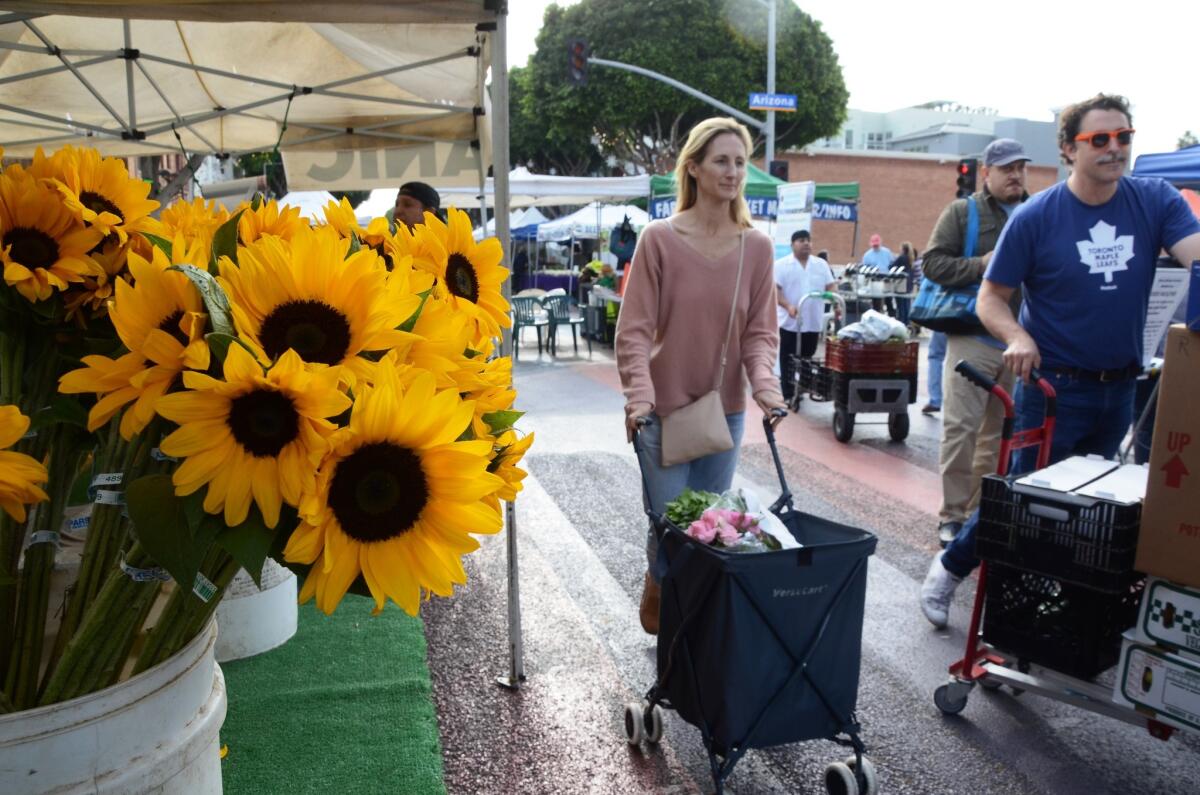
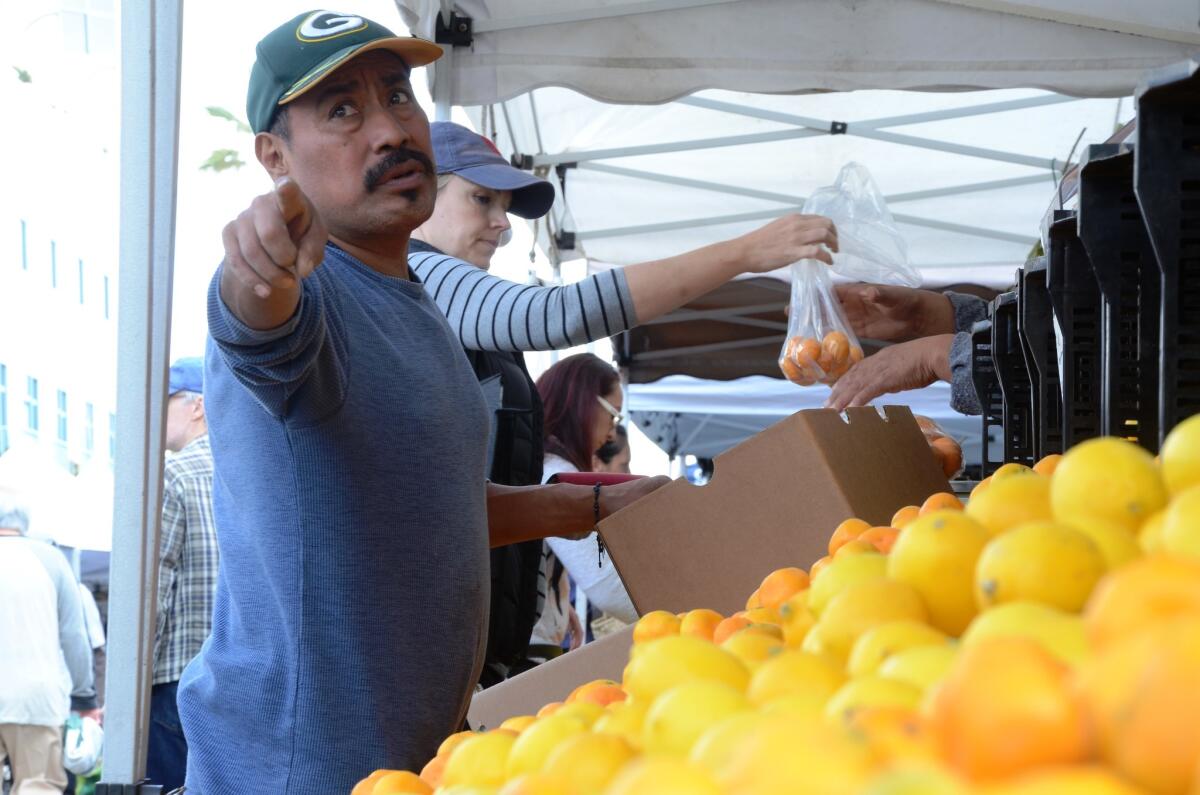
Drift in a balloon over northern San Diego County
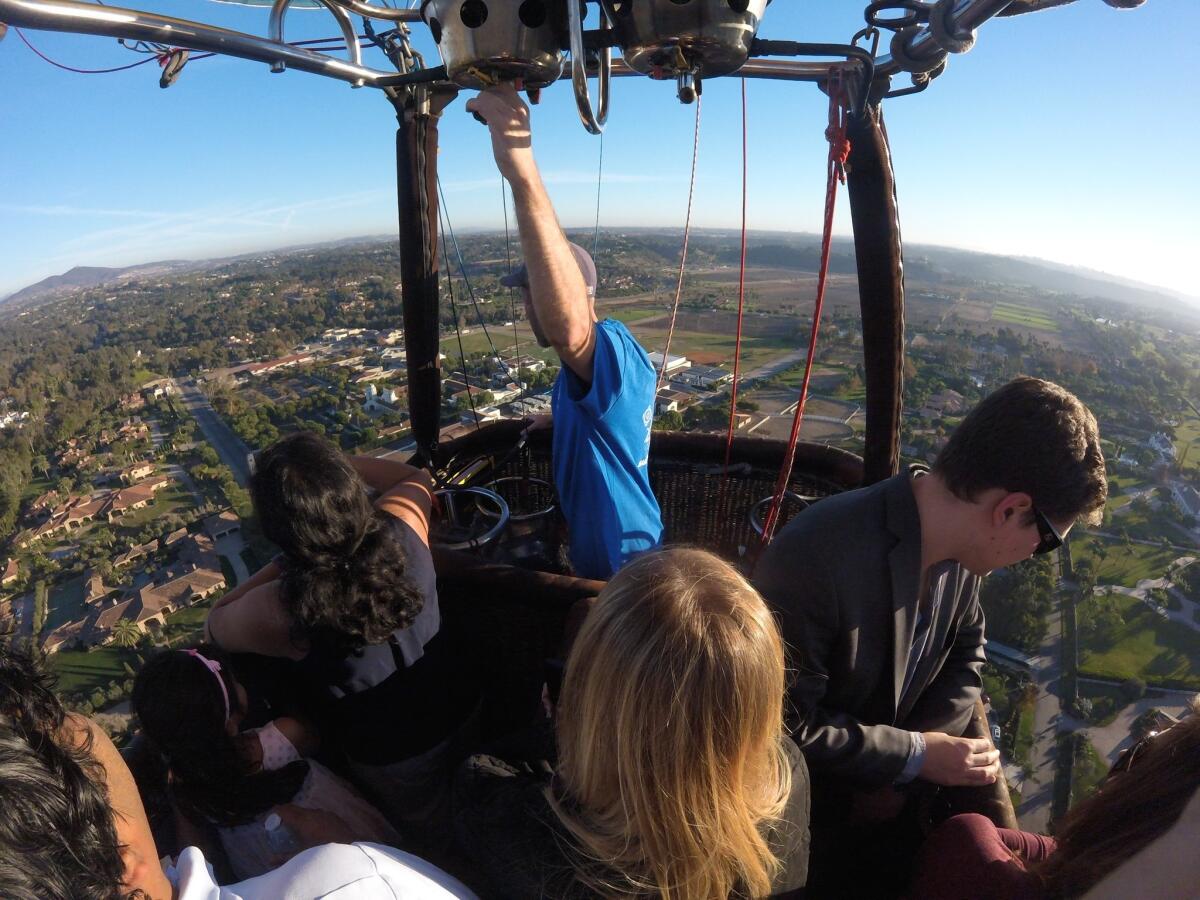
Why: Here’s your chance to climb into a wicker basket and rise 3,000 feet above Fairbanks Ranch, to stand just below a fire-belching burner (which makes your balloon rise), to see sunset from high up, and maybe even to throw shade onto one of Bill Gates’s houses.
What: A balloon ride is a 19th century sort of thrill, and as California’s open spaces get filled in, ballooning options are decreasing. The Napa and Temecula vineyard areas still feature plenty of balloons (which usually launch in early morning, when winds are calmer and temperatures are lower). The Palm Springs and Santa Barbara wine country areas have some too. But balloons are a rare sight along the California coast, so I grabbed a chance to soar above northern San Diego County. Though balloon pilots strive to keep their aircraft above land, the views from on high include miles of ocean and the red tile roofs of countless Mediterranean-style mansions.
Rides typically last 45 to 60 minutes (depending on which way the wind blows), pilots are permitted by the Federal Aviation Administration, and it’s traditional to celebrate afterward with a glass of Champagne. In northern San Diego, it’s often a sunset operation flown by a team that started their day with a flight in Temecula.
My ride in late November, operated by Compass Balloons, featured seven passengers and a pilot. (Minimum age: 5.) We launched near the Vegetable Shop at Chino Farm, (which sells produce to some of the region’s most admired restaurants). We inflated, climbed aboard, drifted over the Morgan Run golf course, and gazed down on Fairbanks Ranch, Rancho Santa Fe, Black Mountain and Carmel Valley. As our round shadow crept across fields, hills and exclusive neighborhoods, pilot Matt Downing pointed out one of Bill Gates’ houses and another that once belonged to philanthropist Joan Kroc. We touched down smoothly about 3 1/2 miles east of where we took off.
I’m glad I did it when I did. Compass Balloons owner Evan Munnelly warns that flights in this area may cease within a year because take-off and landing spaces in the area are vanishing so rapidly.
Where: Though several companies, including Compass, Sky’s the Limit and California Dreamin’, mention Del Mar in promoting their balloon flights, the vessels usually take off and land farther inland. For my Compass Balloons flight, we met in an Encinitas park-and-ride lot (1969 Villa Cardiff Drive, Encinitas), then the crew drove us to the launch spot. Our meeting spot was 97 miles southeast of downtown L.A., 24 miles north of downtown San Diego.
How much: A shared ride (with other passengers in a basket that typically holds eight to 10 people) typically costs $150 to $300 per person.
Info: Besides the San Diego companies above, many balloon companies operate in Napa Valley, Temecula and around Palm Springs.
.
Drink dessert over an ocean view at La Jolla’s La Valencia Hotel
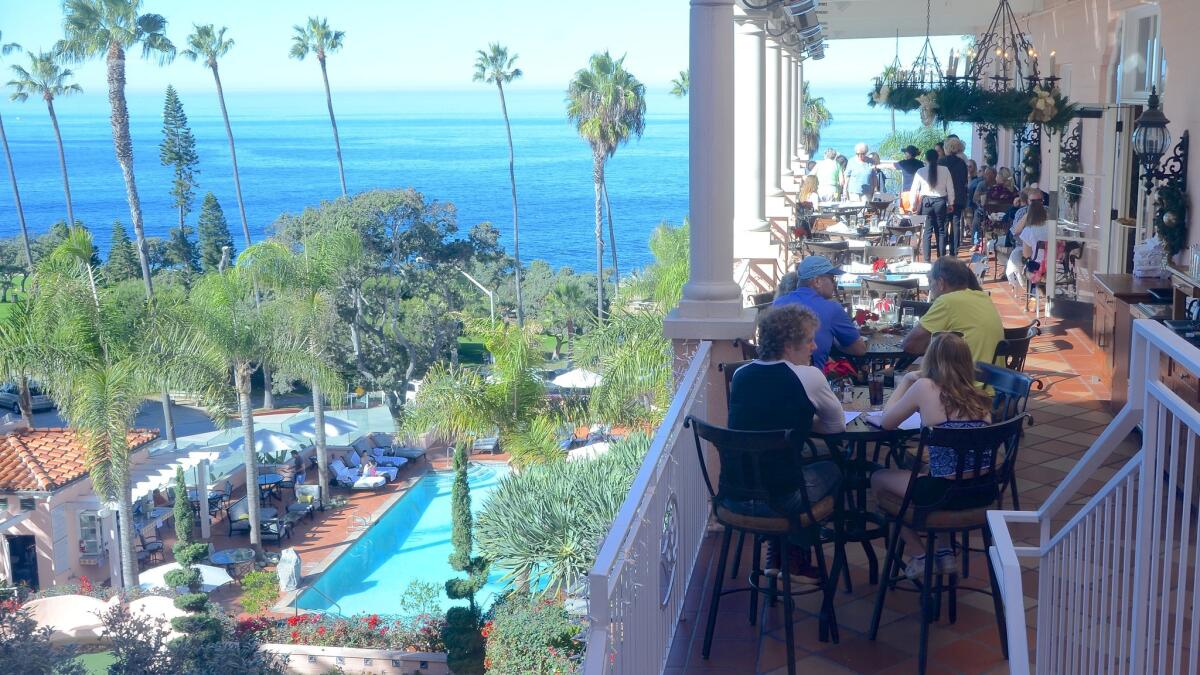
Why: Life can be seriously sweet at this hotel, which was built in 1926 with a big La Jolla Cove view and anchors a neighborhood of ultra-spendy shops and glitzy galleries. Since the days when Gregory Peck hosted other La Jolla Playhouse luminaries in the hotel’s Whaling Bar, La V (as many locals know the place) has offered a frothy concoction known as a Whaler. Picture a milkshake, enlivened by Kahlua, brandy, coffee, whipped cream and various mystery ingredients.
What: The 114-room hotel has long been known for its pink paint job and Spanish Mediterranean style. In the course of ownership changes, expansions and renovations, the Whaling Bar has slipped away. But its frothy legacy remains. Grab one of the 15 or so tables on the terrace of the hotel’s signature restaurant, The Med, order a Whaler for dessert, and don’t plan on operating any heavy machinery for some hours. (If you think you see a Kardashian, it may not be a hallucination; members of the family have been dropping by for years.)
Where: 1132 Prospect St., La Jolla, 112 miles southeast of downtown L.A., 14 miles northwest of downtown San Diego.
How much: A Whaler costs $14. Main dishes in The Med are priced at $15 to $24. (I can vouch for the snapper ceviche.) Rooms for two typically rent for $289 and up.
Info: La Valencia Hotel
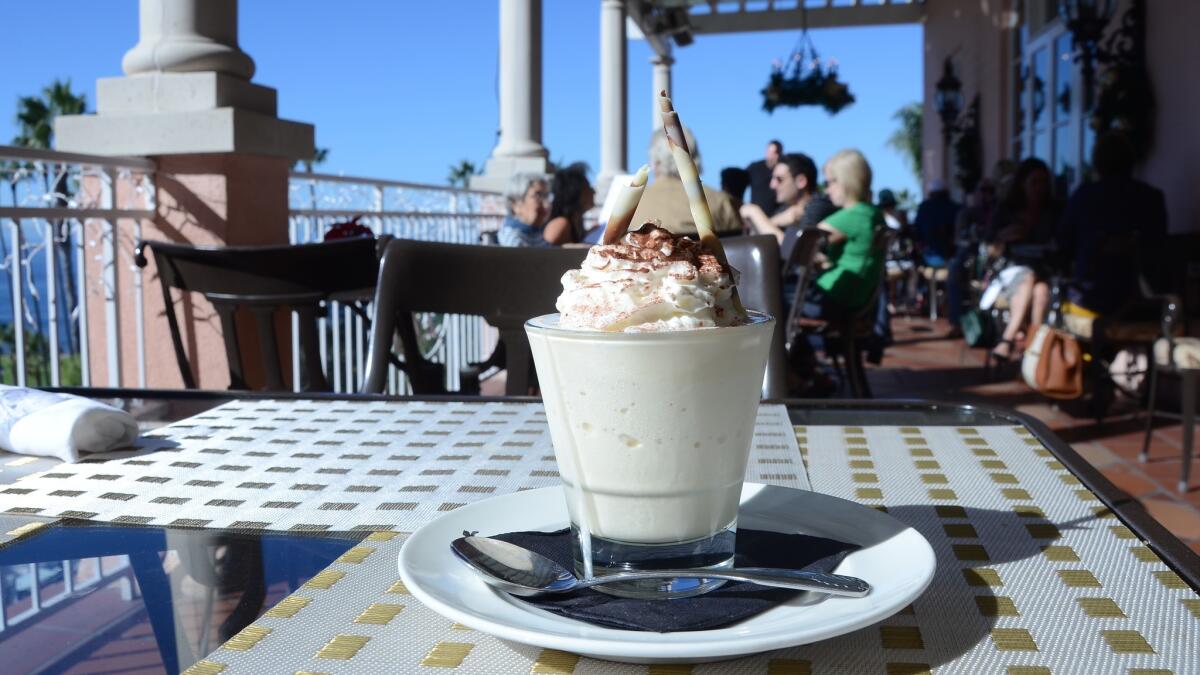
Find deep-fried pleasure at a roadside farm stand near Palmdale
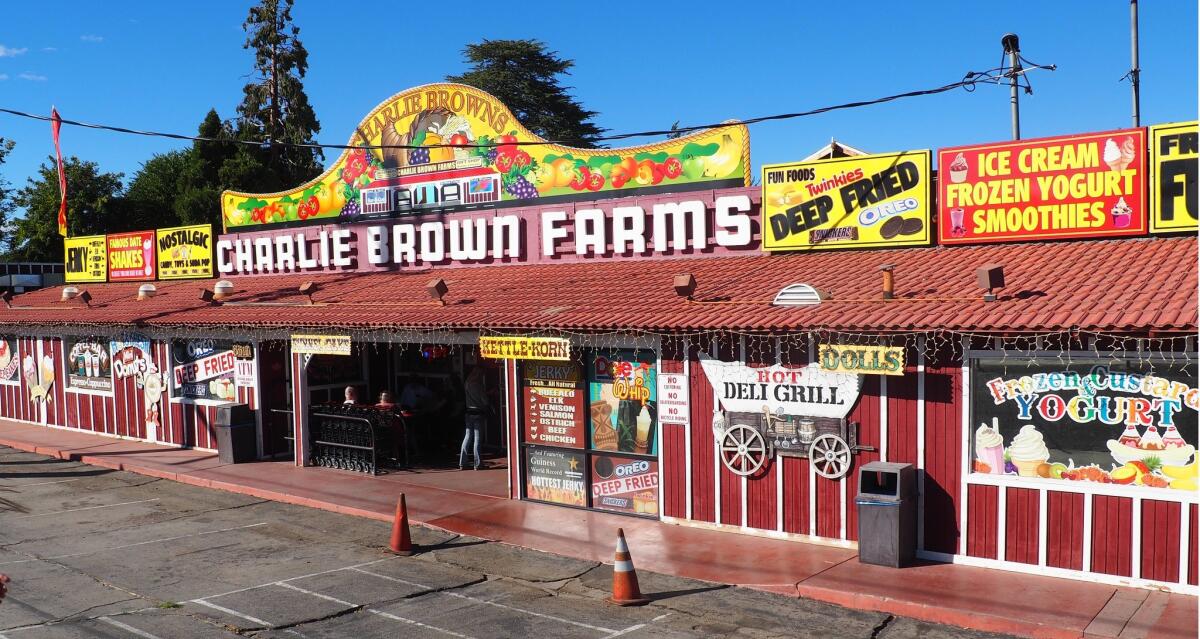
Why: Maybe you’ve finished a hike through the Devil’s Punchbowl and you’re hungry. Or you’re looking for unexpected holiday gifts. Or you’ve been hit by a craving for deep-fried fair food and it’s not fair season. For all these reasons and more, seekers like you end up at Charlie Brown Farms near Palmdale, where all your snack/drunk food fantasies, and your dreams of owning life-size replicas of the “Blues Brothers,” collide and come true.
What: What started as a fruit stand in 1929 is now a six-acre hodgepodge of stores, a restaurant and a snack shop. The main building is a hokey cabin with advertisements for the various tchotchkes and snacks inside. From the road, it’s impossible to miss with signs that scream “collectibles,” “funnel cake,” “smoothies,” “jerky,” “Dole whip.” And just off the side of the building, an enclosed area with dinosaur statues. You may get whiplash trying to take it all in.
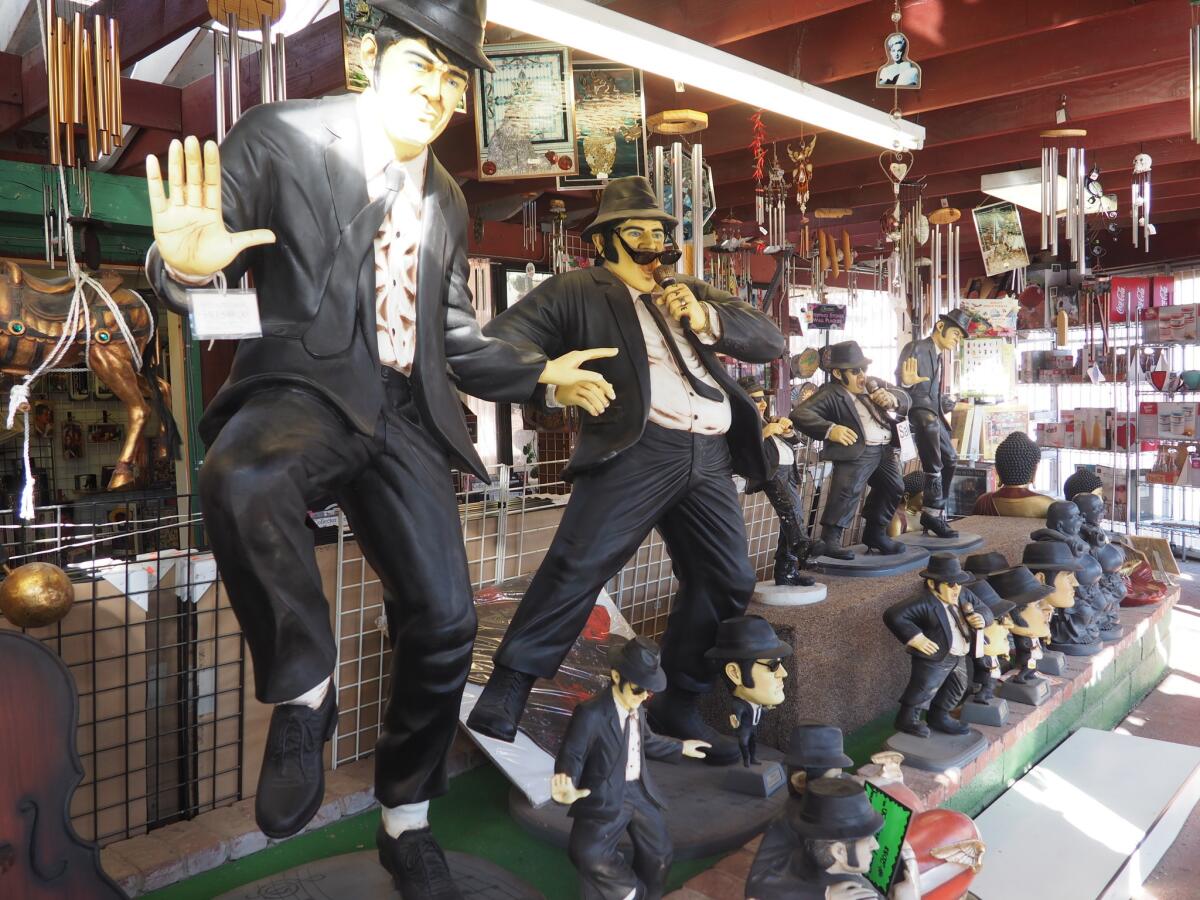
Once through the front door you experience sensory overload. Directly in front of you is a rack of jerky (the store boasts more than 60 kinds, including elk and ostrich).
To the right is a counter where you can order milkshakes, fried candy bars, Texas-style barbecue, funnel cakes, ice cream and a host of other foods any decent doctor would advise you stay away from. To the left, packaged nuts, candy, a room where you can fill your own honey jar, a room devoted to pickles, a room devoted to soda, a fudge counter, and all that food is mixed in with things like raccoon figurines and coffee mugs.
This is also where you can find raw frog legs for that stew recipe you’ve been dying to try. And alligator meat too. But past the fudge counter is where things really start to get weird. There are rooms completely lined with dolls from all over the world. A little creepy, but if you’re in need of a doll (seriously, any doll), this is the place to find it. The life-size “Blues Brothers” statues I mentioned earlier? They’re on the way to the doll rooms.
Out back is a patio with tables and chairs, where you can break open that package of elk jerky or come down from that sugar rush of deep-fried Oreos. You could wander around this place for hours and not see everything. But it’s sure fun to try.
Where: 8317 Pearblossom Highway, Littlerock, a 17-minute drive from downtown Palmdale and about 65 miles northeast of downtown L.A.
How much: Depends on what you’re in the mood for. Barbecue plates start around $11.50, the deep fried Oreos and Snickers are around $4 for each order, the jerky is around $8 a bag depending on the size, and the knick-knacks will range in price. If you’re not a fan of lots of people in tight spaces, plan accordingly.
Info: Charlie Brown Farms
Join the elks club near Trinidad’s classic red schoolhouse

Why: There are several kinds of elk in North America. The Roosevelt elk are the largest, and for years, a bunch of them have been hanging around in the meadow next to the old schoolhouse at the Elk Country RV Resort in Trinidad, which is in Humboldt County.
What: Millions of Roosevelt elk once roamed the Pacific Northwest. By 1907, fewer than 100,000 were left. Now the numbers are bigger. The lucky dozens who hang out near the RV resort seem to have a very good life. The resort, just off Highway 101, amounts to about 200 acres — tall trees, little lake, frequent fog, campsites for RVs and tents, a scenic red barn to go with the scenic red schoolhouse. Half a mile to the north is Stone Lagoon, part of Humboldt Lagoons State Park. Because temperatures along the coast are relatively mild, the elk don’t bother to migrate.
But when you show up to admire them, don’t get too close. Experts calls them “wild and unpredictable animals” for a reason: Sometimes they charge. In February and March, the males typically shed their antlers. In May and June, calves are born. From late August through mid-October comes rutting season, when wildness and unpredictability reaches a peak. And the males can weigh more than 1,000 pounds.
Elk sightings are also common in nearby Prairie Creek Redwoods State Park.
Where: 216 Idlewood Lane, Trinidad, 36 miles north of Eureka, 307 miles north of San Francisco, 680 miles northwest of downtown L.A.
How much: Campsites run $25.50 to $40.80, but you need not sleep there to watch the elk.
Info: Elk Country RV Resort
Soak in the view of California’s Grand Canyon in Anza-Borrego Desert State Park
Why: Perched at the end of the rising desert floor, Font’s Point gives
onlookers a majestic view of California’s badlands, several hundred
feet below. Though far flung, Anza-Borrego Desert State Park is an expansive feast of nature well worth the time it takes to get there.
What: Font’s Point is part of a remote and sculptural landscape that was millions of years in the making. The vista’s ridge yields to a maze of sinuous channels, razorback ridges and sandy, sun-baked hills. Bring a chair, a picnic and perhaps some friends. The scene is best at sunrise and sunset when the rock formations glow with honey-dipped hues. Even better is a visit during a full moon. The accumulation of photographers at these times is a testament to the spectacle.
The brackish waters of the Colorado River and the Gulf of California
converged here long ago, making the area a dumping ground for
sediment. Today, the windswept and eroded rock is flush with the
fossils of animals and marine life that inhabited this once verdant
terrain.
Four miles of soft dirt road leads up to Font’s Point, so check the
road conditions before your departure. Depending on the road’s status,
a high clearance or 4WD vehicle may be necessary.
Closer to the park visitor center, the Borrego Palm Canyon Trail is a popular 3-mile round trip that begins with a trailhead at the end of the main campground road.
Where: In the heart of the Borrego Badlands, outside of Borrego
Springs, 168 miles southeast of downtown L.A.
How much: Free until recently. On Nov. 3, the state parks system started collecting a day-use fee of $10 per vehicle on Fridays, Saturdays, Sundays and holidays at the Anza-Borrego visitor center.
Info: Anza-Borrego Desert State Park
Rent a Duffy for a glittery tour of Newport Harbor
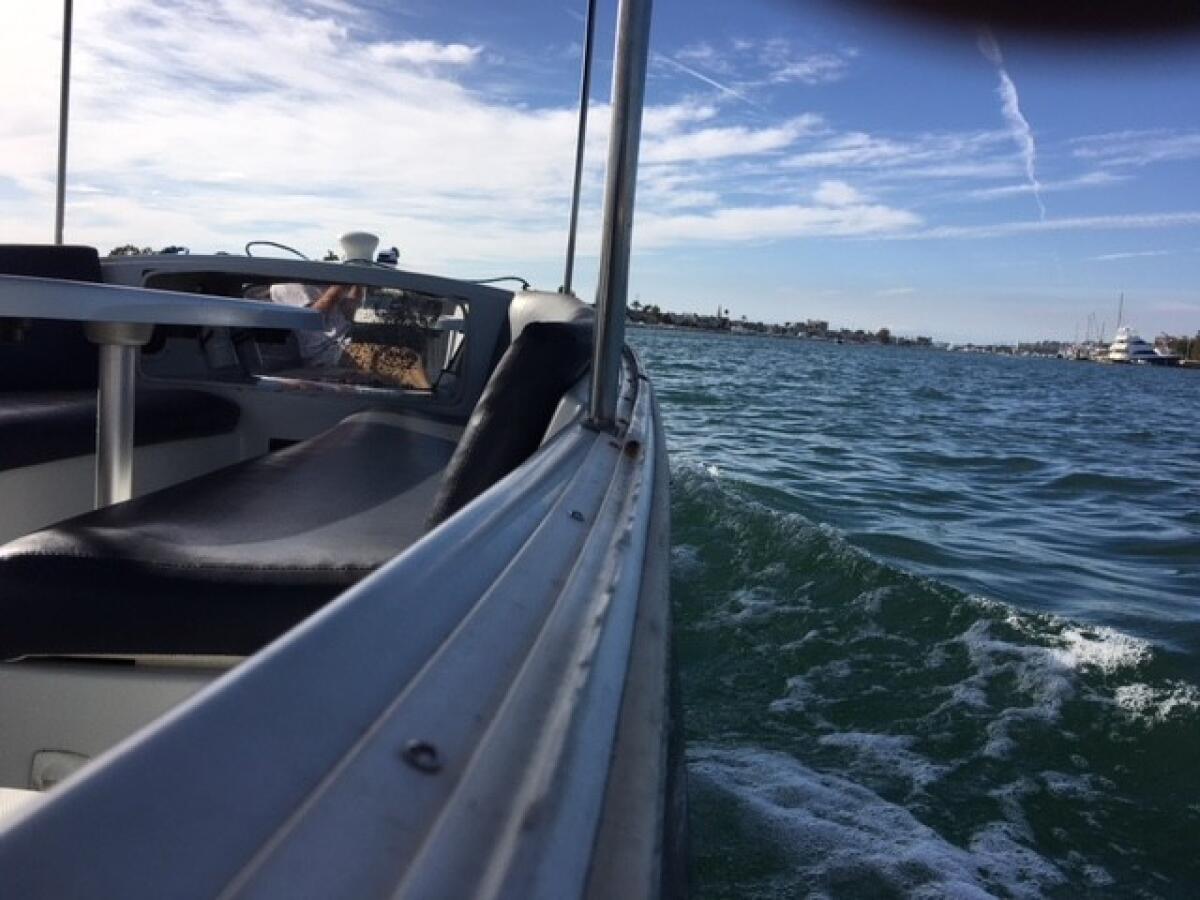
Why: Newport Bay seems made of glitter. Rental boats are plentiful and the harbor is easy to navigate and full of nautical eye candy. Board an electric boat and take a breezy tour.
What: Newport Beach is the Beverly Hills of Orange County. The setting for multiple TV shows, it represents much of the California dream – giant homes and sensational yachts. The harbor, home to 9,000 vessels, is a recreational wonderland.
The Duffy, a popular brand of rental boats, is an excellent way to see it all. Available at a half dozen rental places around the harbor, the slow-moving vessels are as easy to operate as a golf cart.
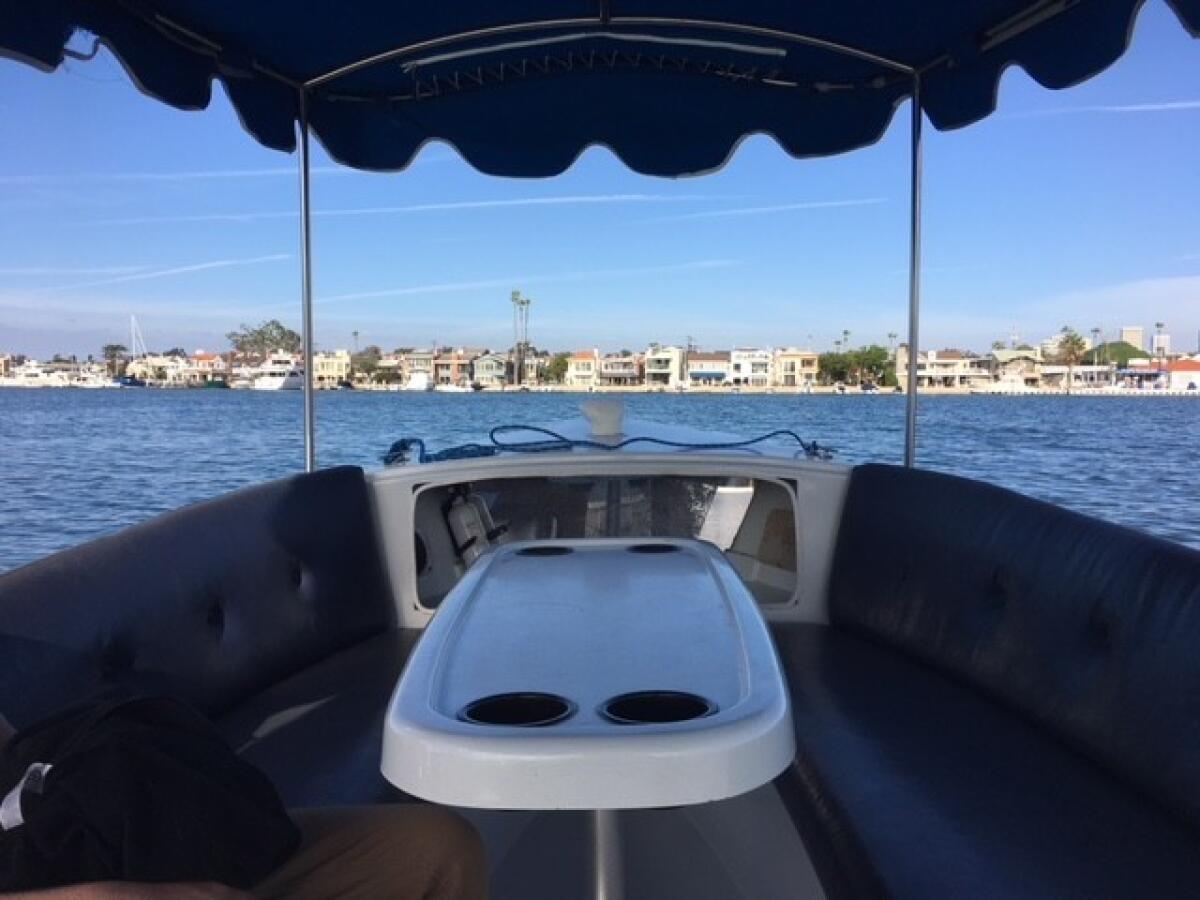
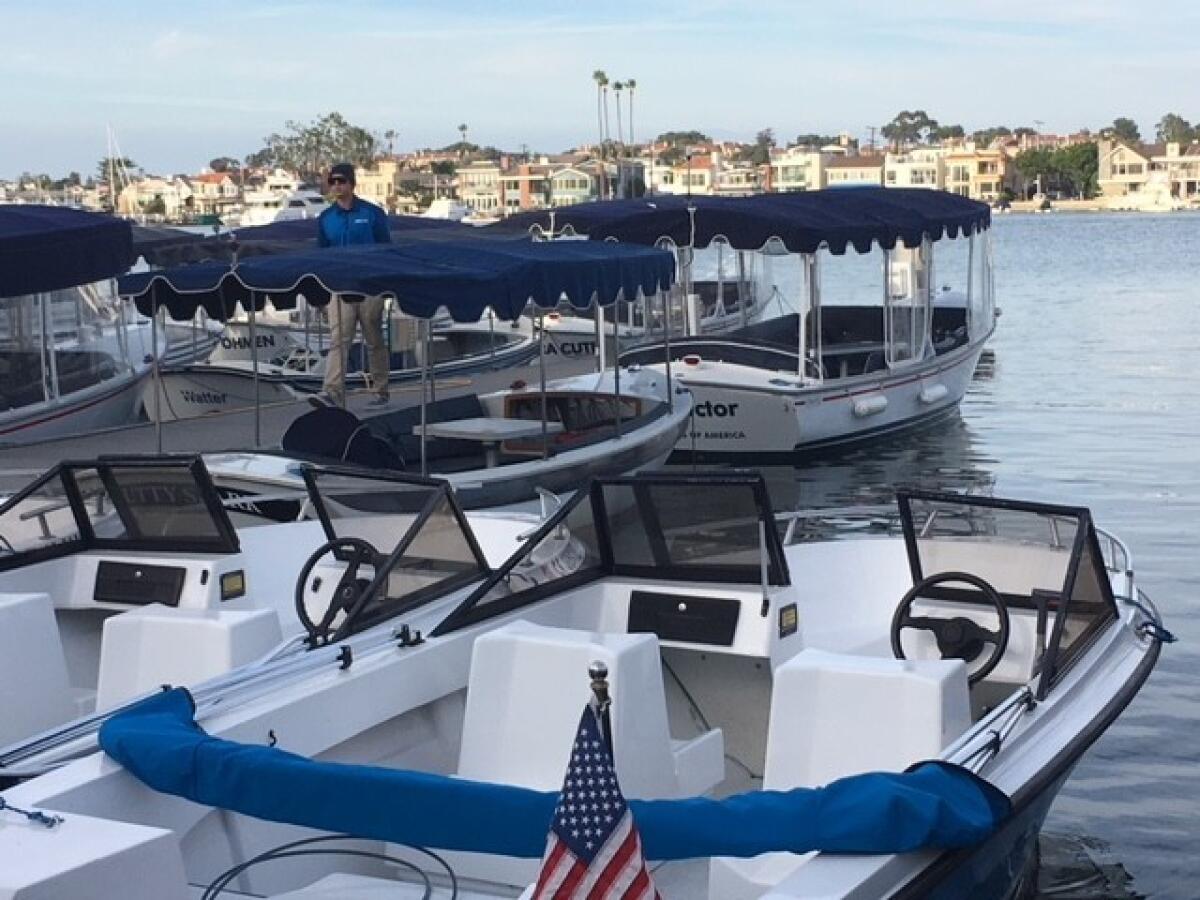
A popular route is around Lido Island, the thumb-shaped isle on the western side of the harbor, where the bridge leaves plenty of space. Note that many of the bridges surrounding neighboring Balboa Island are too low to accommodate the surrey-topped electric boats. A lap around Lido takes about an hour, a typical rental period.
Or, head east past the Fun Zone on Balboa Peninsula, past Balboa Island and toward the mouth of the harbor. You’ll be warned not to go near the outlet, since the electric boats aren’t built to handle bigger waves.
Pontoons, kayaks, paddle boards and powerboats are also available at rental locations around the harbor. Boat Rentals of America, on the peninsula near the Fun Zone, offers walk-up rentals, but recommends reservations for weekends, no matter the time of year.
Where: Newport Beach is in Orange County, 46 miles, or 90 minutes, from downtown L.A.
How much: Duffy electric boats that accommodate up to eight passengers rent for about $85 an hour.
Connect with artisans (and beer) at Crafted, a makers’ market in a San Pedro port warehouse
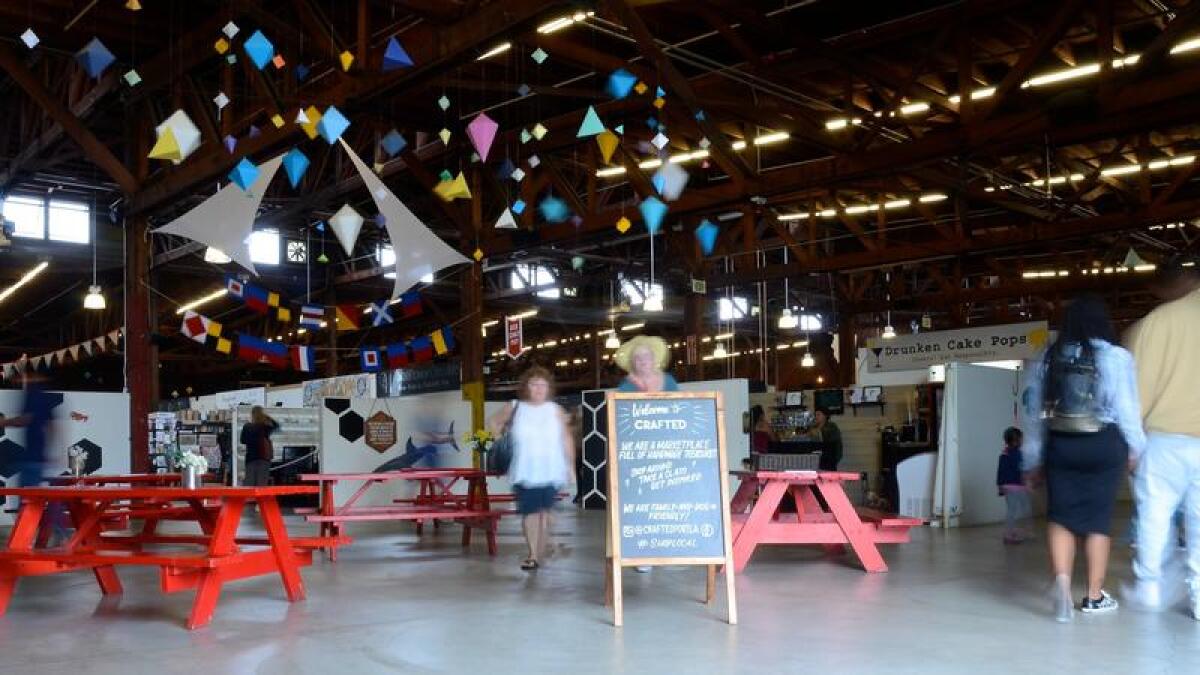
Why: It’s a vintage warehouse down by the port, full of artists, designers and makers, neighbored by a craft brewery. And you’re not done with your holiday shopping yet.
What: Crafted was born five years ago, as the “maker” movement began to bloom nationwide. It’s open Fridays, Saturdays, Sundays and the first Thursday night of every month in the L.A. Port’s Warehouse 10, built in the 1940s. When I stopped by in mid-September, there were about 50 vendors in place, hawking iPhone photo prints, snacks, sculptures, succulents, textiles, vintage reconditioned furniture, soap, you name it. Outside, the San Pedro Festival of the Artists was in full swing-- one of many special events that use picnic tables and patio space between the old warehouses.
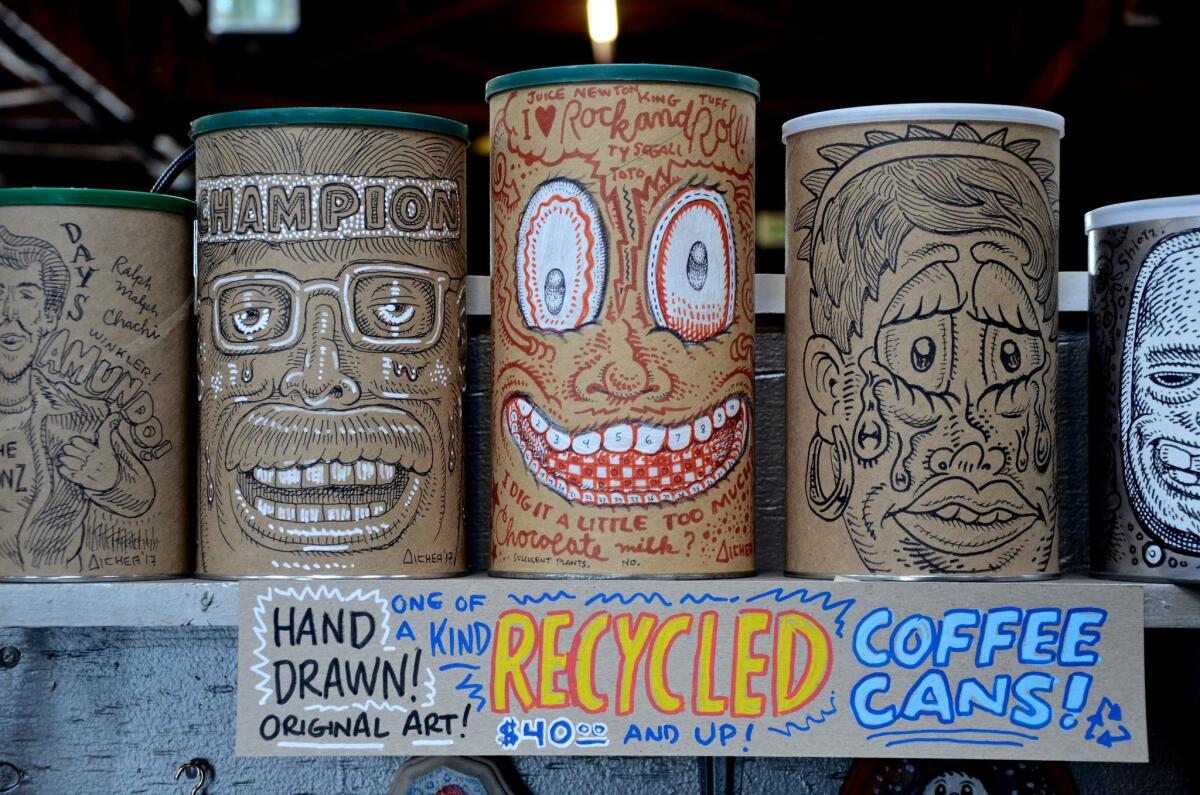
Since 2016, the artisans have been joined by Brouwerij West, a craft beer operation and tasting room that fills about half of Warehouse 9. On weekends, there’s usually a food truck (or two or three) on hand, and often live music.
Coming eventually: a food hall in the other half of Warehouse 9.
Where: Warehouse No.10, 112 E. 22nd St., San Pedro, 26 miles south of downtown L.A.
How much: Parking and admission are free.
Info: Crafted
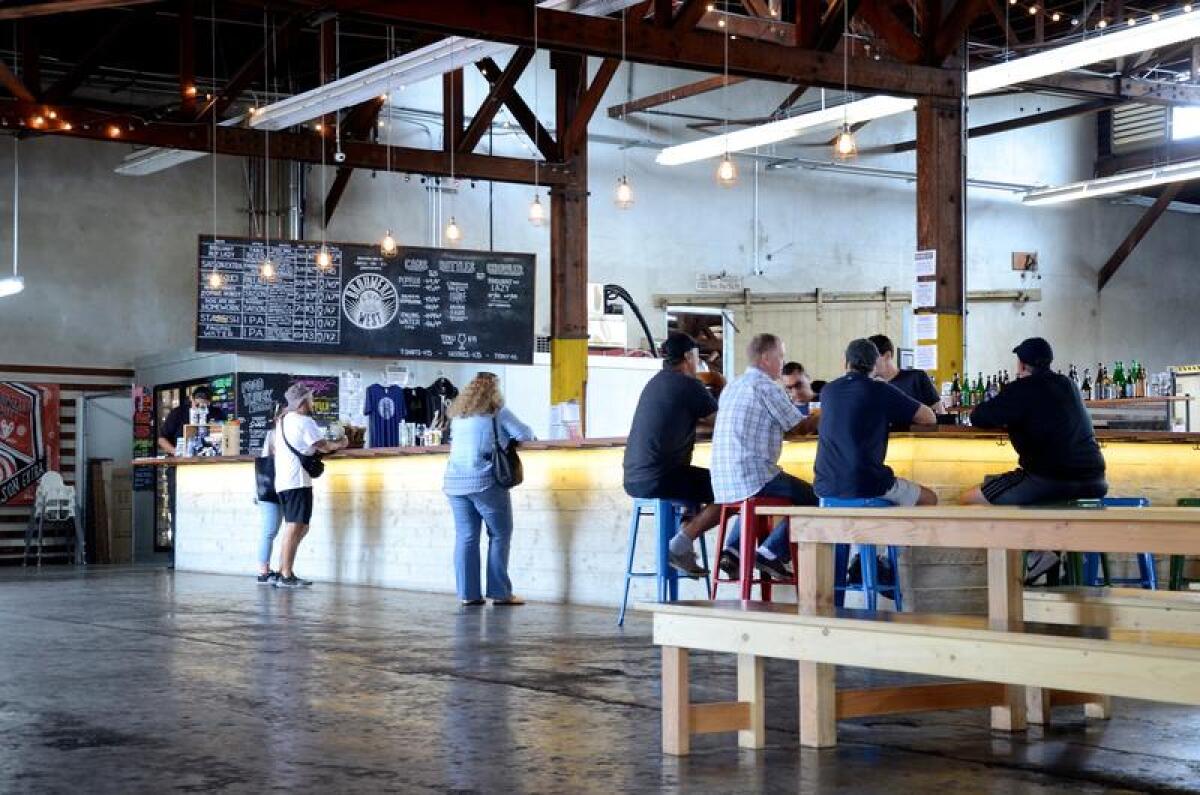
Salute General Grant (the tree) in Kings Canyon National Park
Why: Any way you look at it, General Grant stands tall. First of all, it’s a massive sequoia, one of the largest living things in California. Moreover, the White House has named this “the nation’s Christmas tree.”
What: General Grant is 268 feet high, the base of its trunk is 107 feet around. In 1925, Central Valley resident Charles E. Lee (an officer of the Sanger Chamber of Commerce) asked President Coolidge to have this giant sequoia in the Grant Grove area of Kings Canyon designated the national Christmas tree. In 1926 the president complied. Ever since, the Sanger Chamber has staged an annual Trek to the Tree, drawing hundreds of people each year for a winter program that typically includes songs and prayers. No tinsel, no lights. Just the tree as it has stood for about 2,000 years, and a wreath contributed by park rangers.
This year’s event will be Sunday, Dec. 10, at the base of the tree. and it’s a free admission day in the park. For reservations or information on shuttle buses to the site, contact the Sanger Chamber of Commerce by phone at (559) 875-4575 or by e-mail at [email protected].
Whether you reach General Grant in holiday season or not, you can impress the other tree-lovers by pointing out that in 1956, Congress gave General Grant another distinction, naming it the nation’s only living national shrine in honor of the men and women of the Armed Forces.
And if you really love the idea of big trees with high ranks, make a bonus stop at the General Sherman Tree in Sequoia National Park. It’s bigger, about 275 feet high. In fact, it might be the world’s largest living thing, depending on how you quantify coral reefs, fungus networks and redwoods.
Where: General Grant stands along a 0.8-mile paved loop trail from the General Grant Grove parking lot in Kings Canyon National Park. The grove is 245 miles north of downtown L.A. And it’s more than 6,000 feet above sea level, so snow is common in winter. Be sure to check weather and road conditions before driving into the area.
How much: Admission to Kings Canyon and Sequoia National Parks (which operator jointly, as if they were single unit) is $30 per car for up to seven days.
Ski in the morning in the San Bernardino Mountains, surf in the evening, using these slopes as your launch point
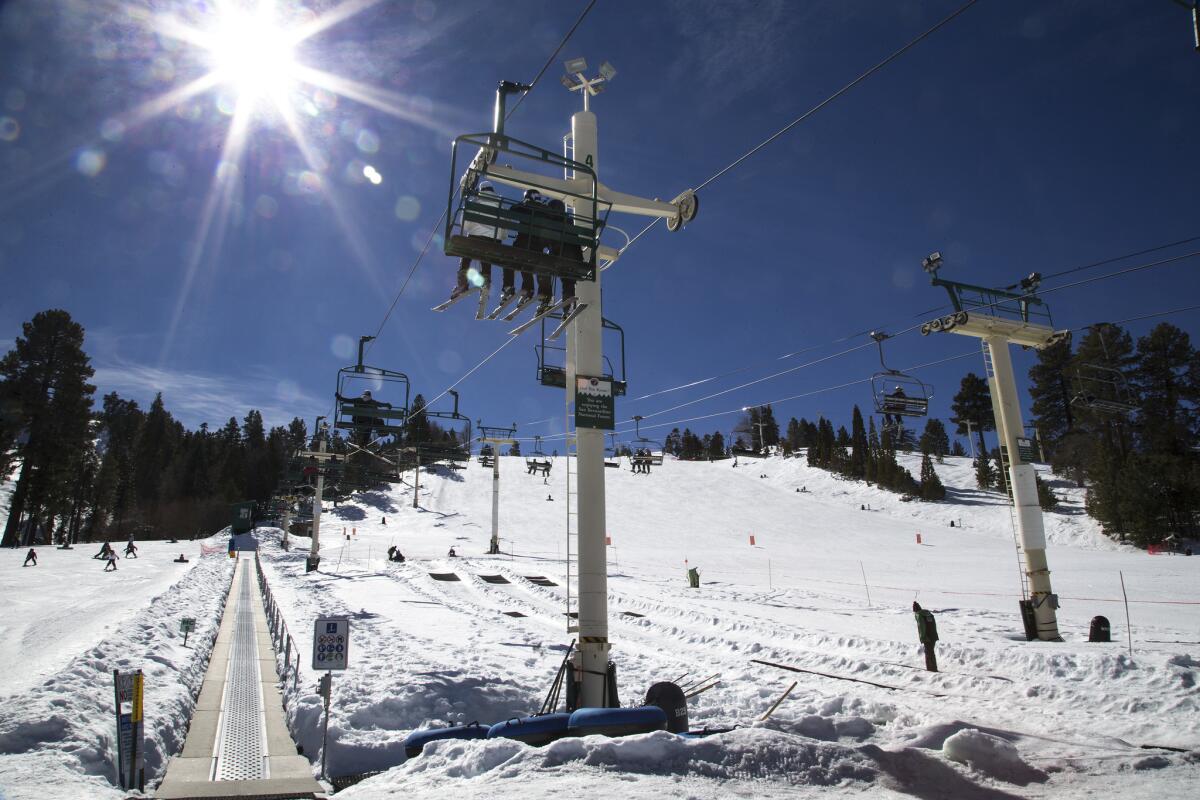
Why: SoCal offers the chance to ski and surf on the same day. This would be the snowy part of such a mountains-to-the-beaches day.
What: Bear Mountain and Snow Summit are two slices of the same cake. Two miles apart, the sister resorts are the crown jewels of the town of Big Bear, a couple of hours from the bustle of the big city.
Big Bear is three hours away from downtown Los Angeles, and a world apart from the strip malls and gas stations that muck up much of Southern California. Spring, summer or fall, this alpine lake resort town offers plenty of activities, including boating, hiking and zip-lining.
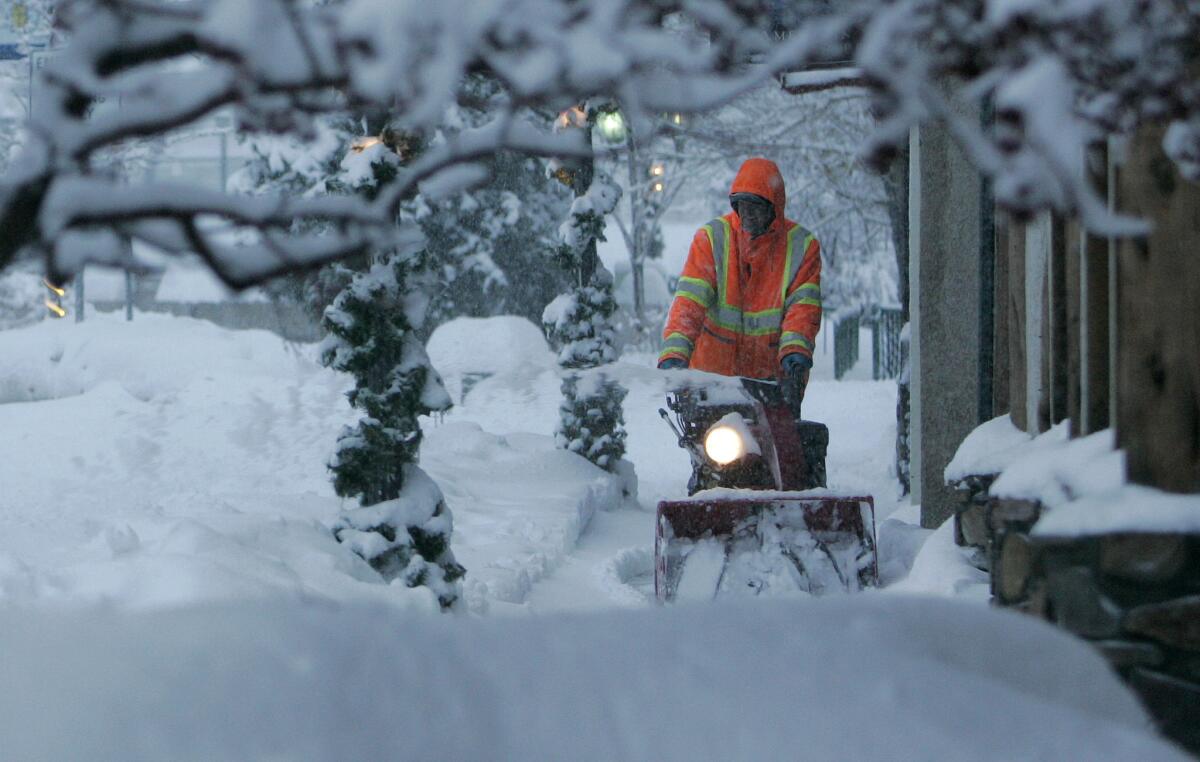
But in winter, its twin ski resorts really come alive. If you think of Southern California as all palm trees and bikinis, visit Big Bear after a winter storm, when the place is buried in several feet of snow and looks like a Christmas card.
In what they offer, the two resorts are very similar, though Summit has the better terrain park. Lift tickets are good for both resorts, and buses run between the two resorts all day. Combined, the resorts offer 27 lifts and four high-speed chairs serving almost 60 runs.
The resorts are just a few minutes from the village, where restaurants, shops and a movie theater await visitors.
The resorts have begun making snow and opened Dec. 8.
As with all mountain visits, note that conditions can change quickly, and chains are usually required on the twisty roads during any significant snow fall.
Where: Big Bear Lake is in the San Bernardino Mountains, in San Bernardino County. It is 97 miles east of Los Angeles.
How much: Advance purchase lift tickets start around $75.
See the Klamath River flow into the Pacific from this dramatic overlook in Redwood National Park
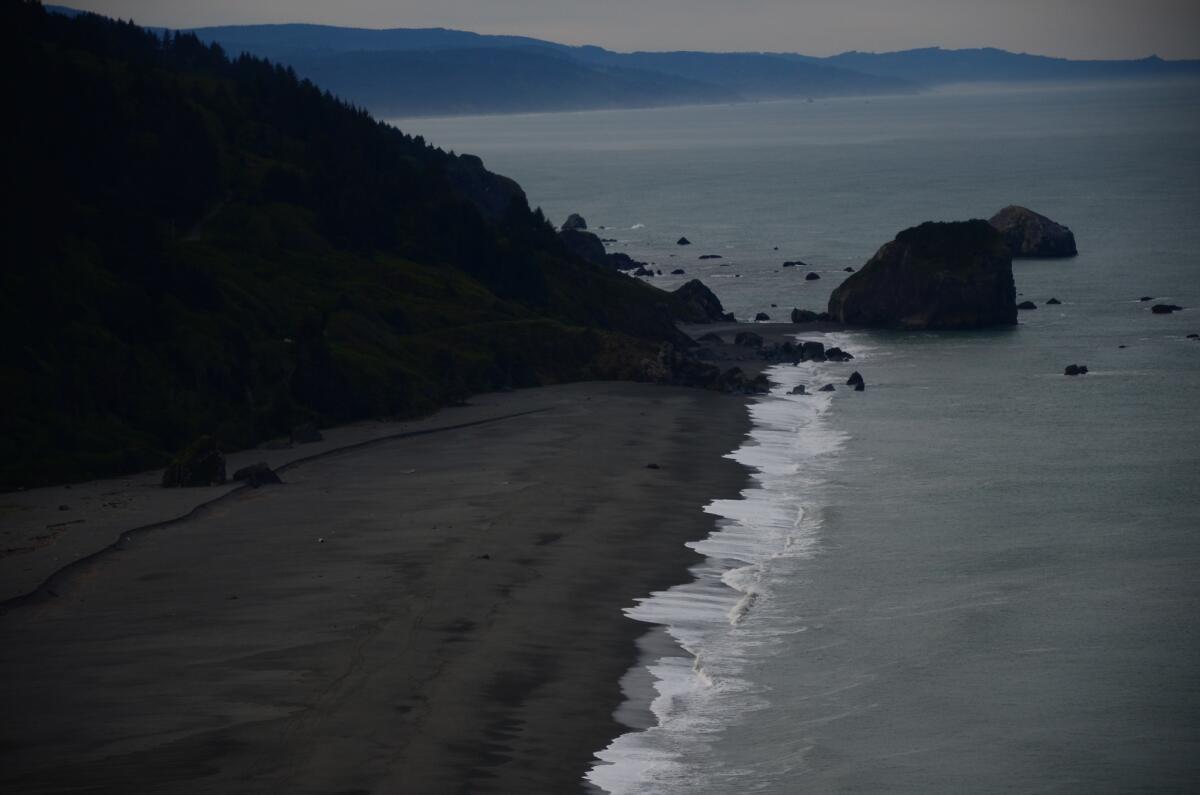
Why: Rugged coast. Big sand spit. Half-forgotten road. Blufftop perch. Despite all these assets, this dramatic corner of Northern California doesn’t get that many visitors. So you’ll probably have it to yourself.
What: Your gateway to the Klamath River Overlook is Requa, a hamlet -- the memory of a town, really -- along the Highway 101 south of Crescent City in Del Norte County. Its main landmark is the Historic Requa Inn, a rustic riverside lodging and restaurant that dates to 1914. If you can work out a way to eat dinner and spend a night there, do it. But don’t stop there. Continue west 1.5 miles (no RVs!) on ramshackle Requa Road (which becomes Patrick J. Murphy Memorial Road on some maps) until there’s no more road, and no more land. That will put you at the Klamath River Overlook. Drink it in. And if it’s May or June, scan the ocean for gray whales. Rangers say they often linger to feed in the waters spilling from river to sea
This bluff is part of Redwood National and State Parks and it includes a modest picnic area. There’s a steep Lower Overlook Trail that will take you about a quarter-mile down the slope, exposing further views. There’s also a Coastal Trail to the north -- follow it for 2.7 miles and you’ll reach Hidden Beach.
But the wide view from the picnic tables may well be plenty for you. There’s something mesmerizing about it -- maybe it’s the moving water. There’s also a good chance of a stiff, cold breeze or fog, just about any time. Bring layers.
Where: Klamath River Overlook, 61 miles north of Arcata, 339 miles north of San Francisco, 713 miles northwest of downtown L.A.
How much: No entry fee.
Info: Redwood National and State Parks
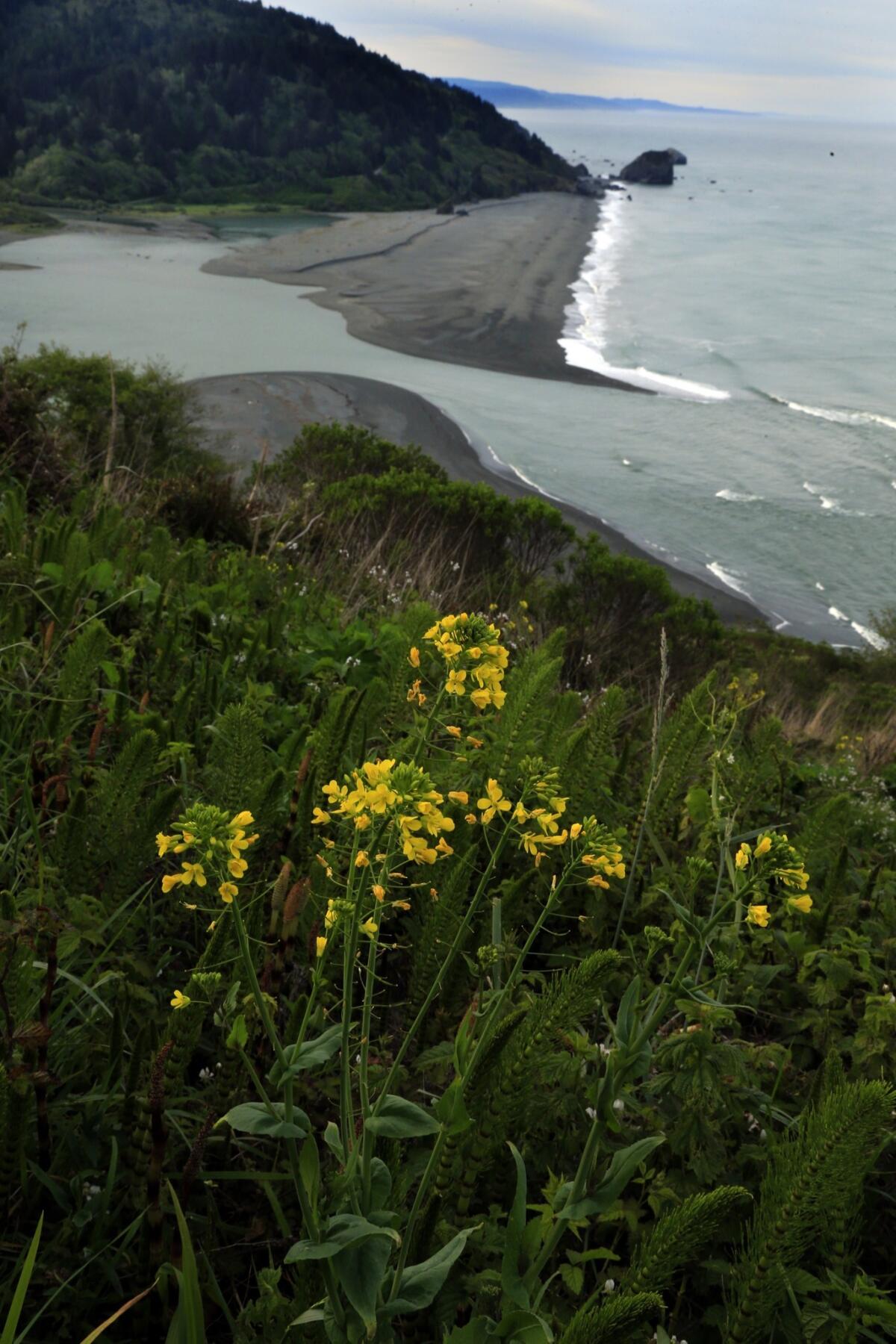
Pile the kids in the car, head to Riverside and catch a drive-in movie while you still can
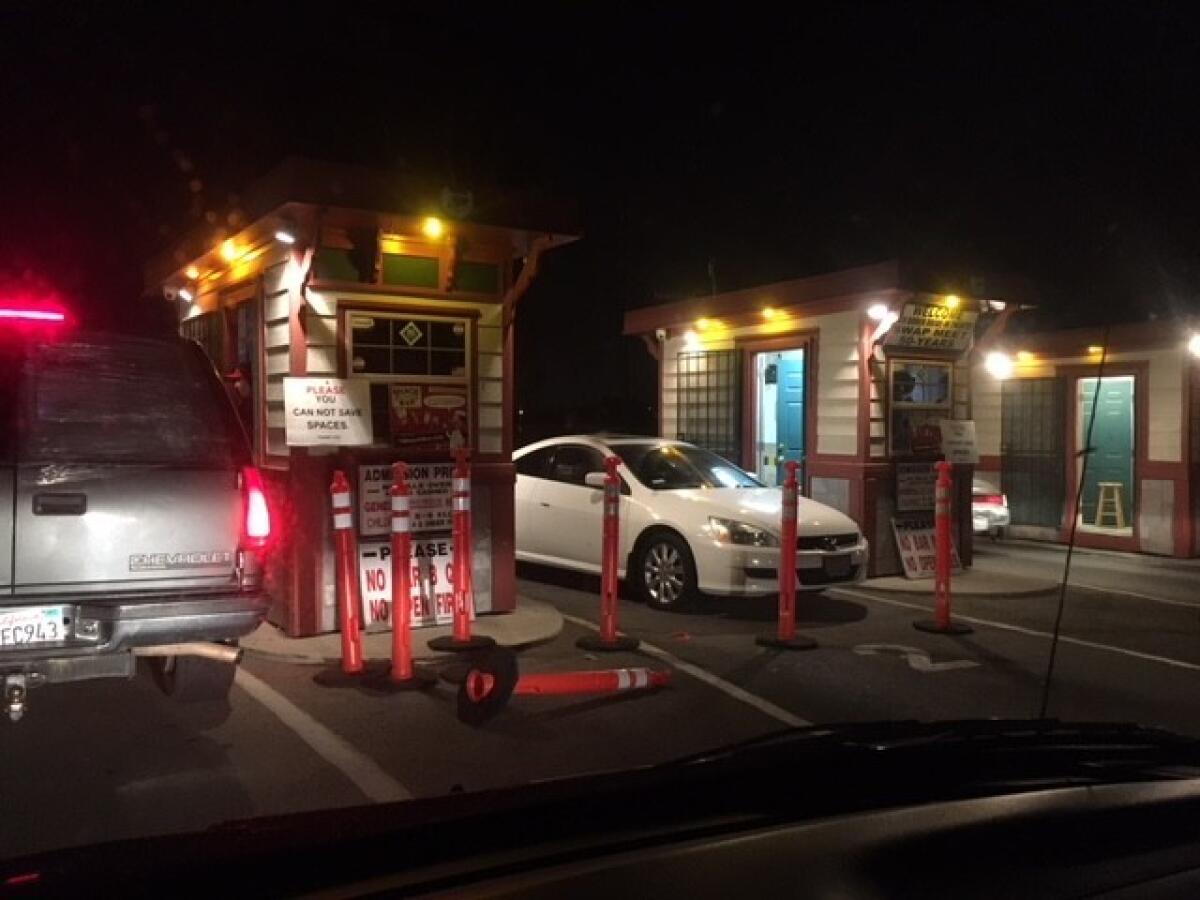
Why: What could be more of a California experience than a Hollywood double-feature viewed from the comfort of your car?
What: In the 1950s, drive-in movies were a staple of American pop culture. These days, they are a novelty. One of the last remaining hot spots lives on at the Van Buren Drive-In in Riverside.
Put the kids in their PJs and pack up the lawn chairs for a fine family getaway at the Van Buren. Opened in 1964 on the site of former orange groves, the three-screen drive-in remains a vibrant local hangout at half the price of your local multiplex. You can even bring your own food.
On weekends, arrive 45 minutes before show time to ensure a decent spot, especially if you’re going to sit outside in your lawn chairs. By showtime, the three lots serving the three screens resemble tailgate parties, with families wrapped in blankets and settled in for a double feature.

SUVs or pickups often pull in with the tail hatch facing the screen, so kids with blankets or sleeping bags can turn the experience into a slumber party.
There’s the traditional snack bar, and prices are fair, at least by movie theater standards. But waits can be 20 to 30 minutes on weekends. Check here for express pickup.
Keep in mind that you’re experiencing a rare phenomenon these days. Once numbering 4,000 across the country, drive-ins are now down to 400 or so. Catch one while you can — not just for the sense of nostalgia, but for a memorable evening at a very fair price.
Where: 3035 Van Buren Blvd., Riverside, 55 miles southeast of downtown L.A. Plan on a drive of 90 minutes to two hours in evening traffic.
How much: Admission is $9 per person; children ages 5 to 9, $1. Major credit cards and debit cards accepted. Open seven days a week. No pets.
Taste-test the Thomas Keller restaurant empire in Yountville, Napa Valley
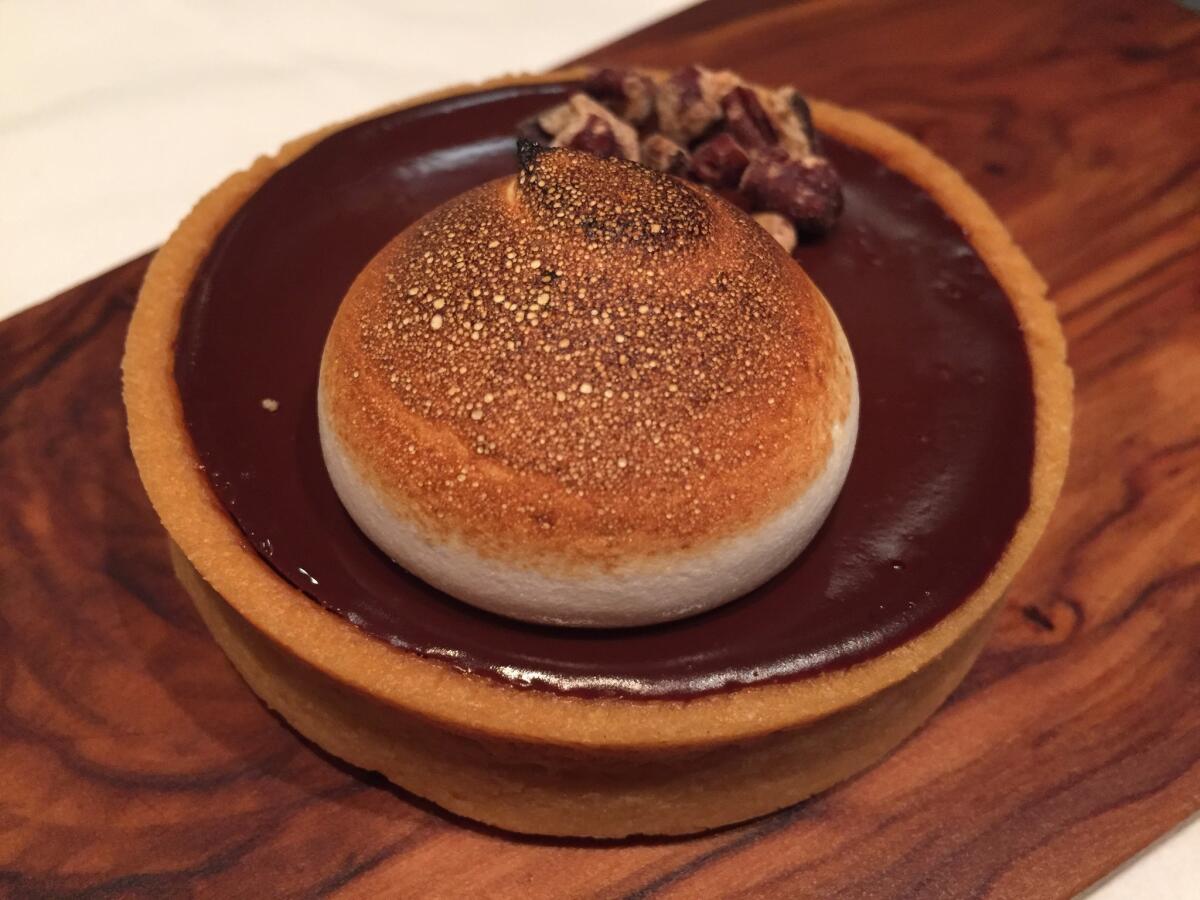
Why: Yountville is a sleepy, genteel little town in the heart of Napa Valley, population about 3,000. And Thomas Keller, one of this nation’s most admired chefs, has three restaurants in Yountville, on the same street. Or four. Or five, depending on how you count.
What: Keller, raised and trained in Florida and New York and renowned for his high standards, has also cooked in acclaimed kitchens in France and Los Angeles, and he has operations in New York and Las Vegas as well. (His Bouchon in Beverly Hills is scheduled to close Dec. 31.) But since he opened the French Laundry in 1994, Yountville has been the seat of his California empire. With three Michelin stars and a nine-course chef’s menu, The French Laundry may be the most celebrated restaurant in the state, and it’s surely one of the priciest.

But the chef has give us options. Bouchon opened in 1998, offering French bistro fare. The Bouchon Bakery followed in 2003. In 2006 came Ad Hoc, devoted to American comfort food in a casual setting. (Its humble-brag slogan: “for temporary relief from hunger.”) Ad Hoc’s menu changes daily to take advantage of fresh ingredients, but it’s all built around the chef’s choice for a four-course family-style meal, which includes favorites like pot roast and barbecue. I came before 6 p.m. on buttermilk fried chicken night (a Monday), and found myself in a happily clamorous dining room, surrounded by families, confronting more food than I could eat. (I enjoyed the casual feeling, and I liked the chicken well enough. But I actually enjoyed the salad and cheese courses more — livelier flavors.)
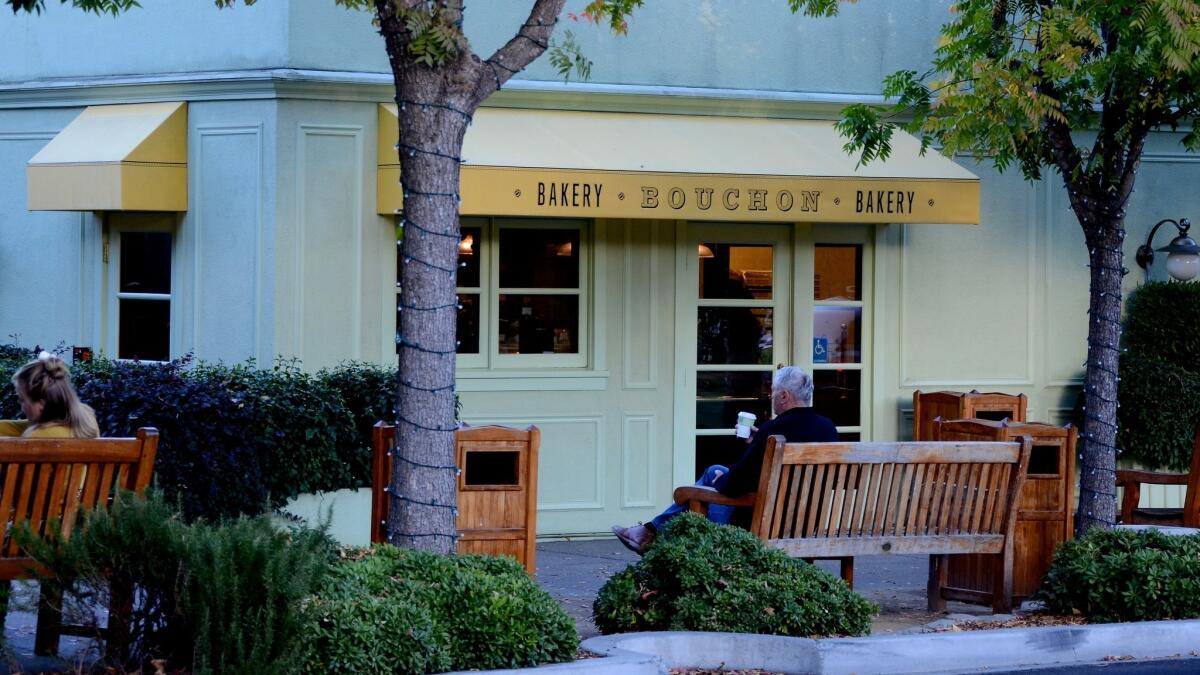
Either before or after eating in Yountville, stroll Washington Street. At 6640 you’ll find the French Laundry, fronted by an unassuming, two-story, stone-walled building with minimalist kitchen addition and its gardens across the street. You can even peek through the kitchen window, a long slit that reveals the team laboring fiercely over that evening’s dishes. Next, at 6534 Washington, you pause by Bouchon (French bistro fare) and the yellow awning of Bouchon Bakery (6528 Washington), whose snacks are the most affordable way to sample Keller’s empire.
A few blocks farther south at 6476 Washington, you reach Ad Hoc, which has nine seats at the bar in addition to its many tables (open Thursday through Monday). And behind Ad Hoc, neighbored by picnic tables, is Addendum, an auxiliary space that serves box lunches to go on Thursdays, Fridays and Saturdays.
Where: Ad Hoc, 6476 Washington St., Yountville, Ca., 55 miles north of San Francisco’s Ferry Building, 411 miles northwest of downtown L.A.
How much: The nine-course dinner at the French Laundry: $310-$325 each. The four-course dinner at Ad Hoc: $55.A box lunch from Ad Hoc Addendum: $16.50.
Info: Thomas Keller Restaurant Group, Yountville Chamber of Commerce

Storm a Tuscan castle in Napa Valley
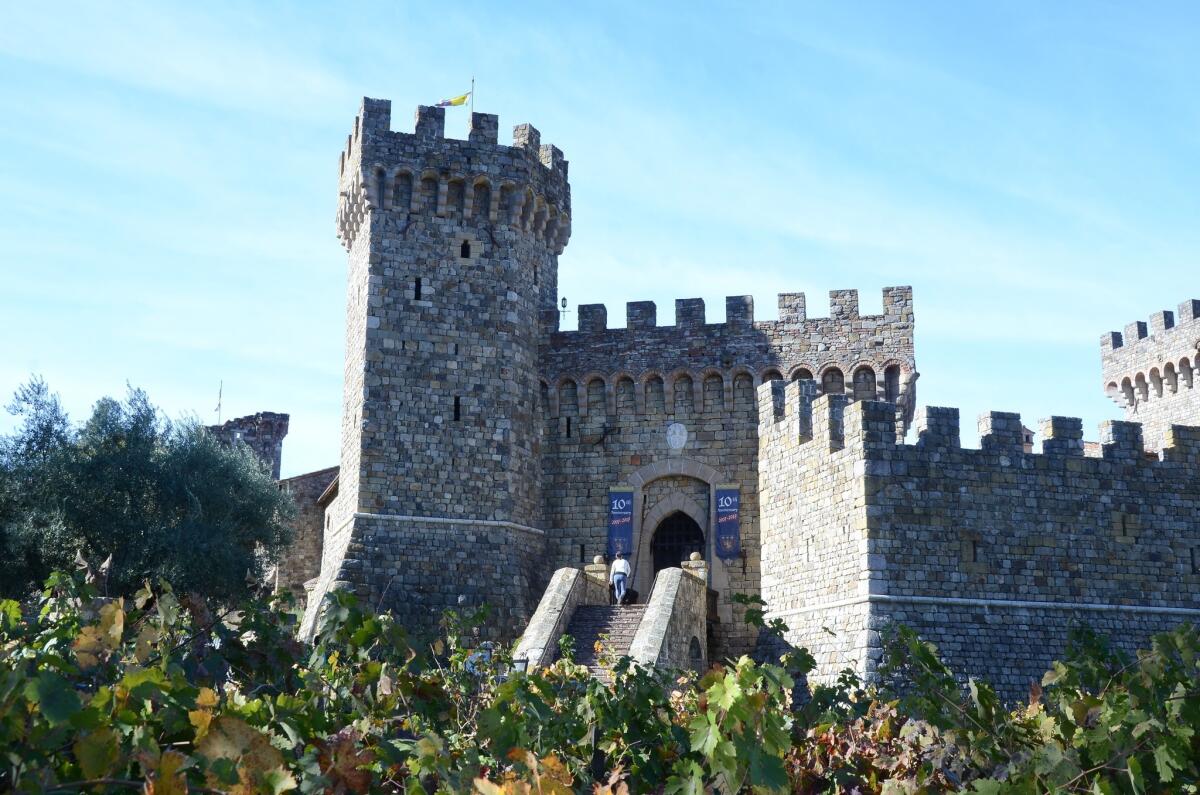
Why: Napa Valley has close to 500 wineries. Castello di Amorosa is the only one housed in a 107-room castle that was built in accordance with 13th century Tuscan aspirations.
What: Owner/designer Dario Sattui completed this spectacle, a 15-year project, in 2007. Besides its five towers and the barrel-vaulted retail and tasting area (which never seems to end), it’s got a great hall and chapel, each with evocative murals. There’s said to be a torture chamber below. Depending on your mood, you might expect a “Da Vinci Code” villain to round a corner at any moment, or Orson Welles in mid-soliloquy. Or one of the Monty Python guys, clopping coconuts together.
Not surprisingly -- given the Tuscan blueprint of the place -- the Castello di Amorosa wines are made in the Italian style. The winery suffered no damage in the wine country fires of October.
Where: 4045 St. Helena Hwy., Calistoga, Calif., 70 miles north of San Francisco’s Ferry Buidling, 425 miles northwest of L.A. City Hall.
How much: Adult admission (which includes wine-tasting) begins at $25. For children the rate is $15-$20 (and there’s grape juice to taste). Tours (which include rooms you can’t reach just wandering around) cost $40-$95.
Info: Castello di Amorosa
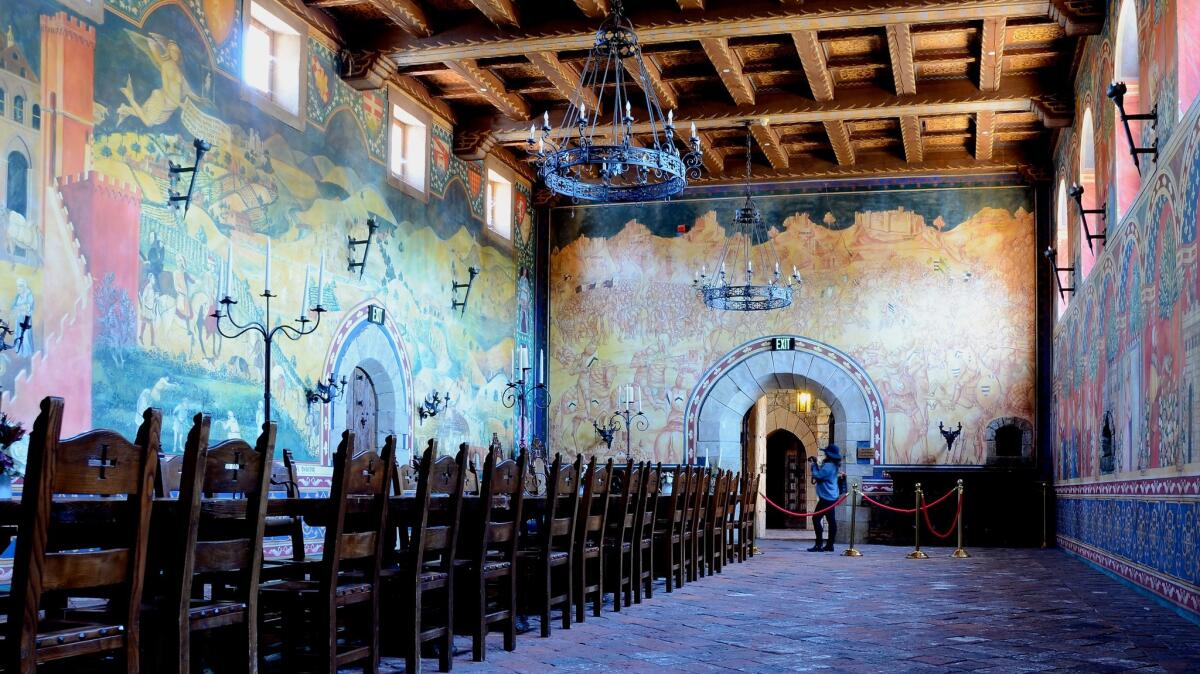
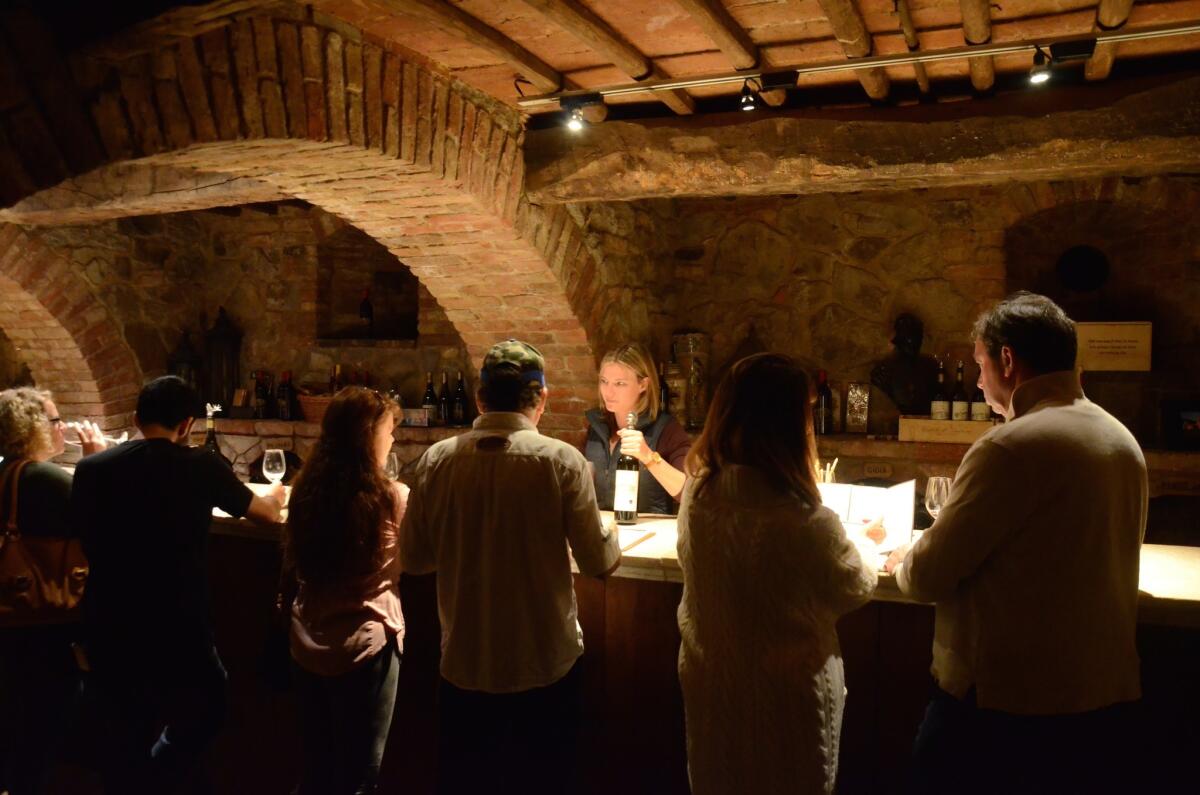
Soak in Calistoga spring water
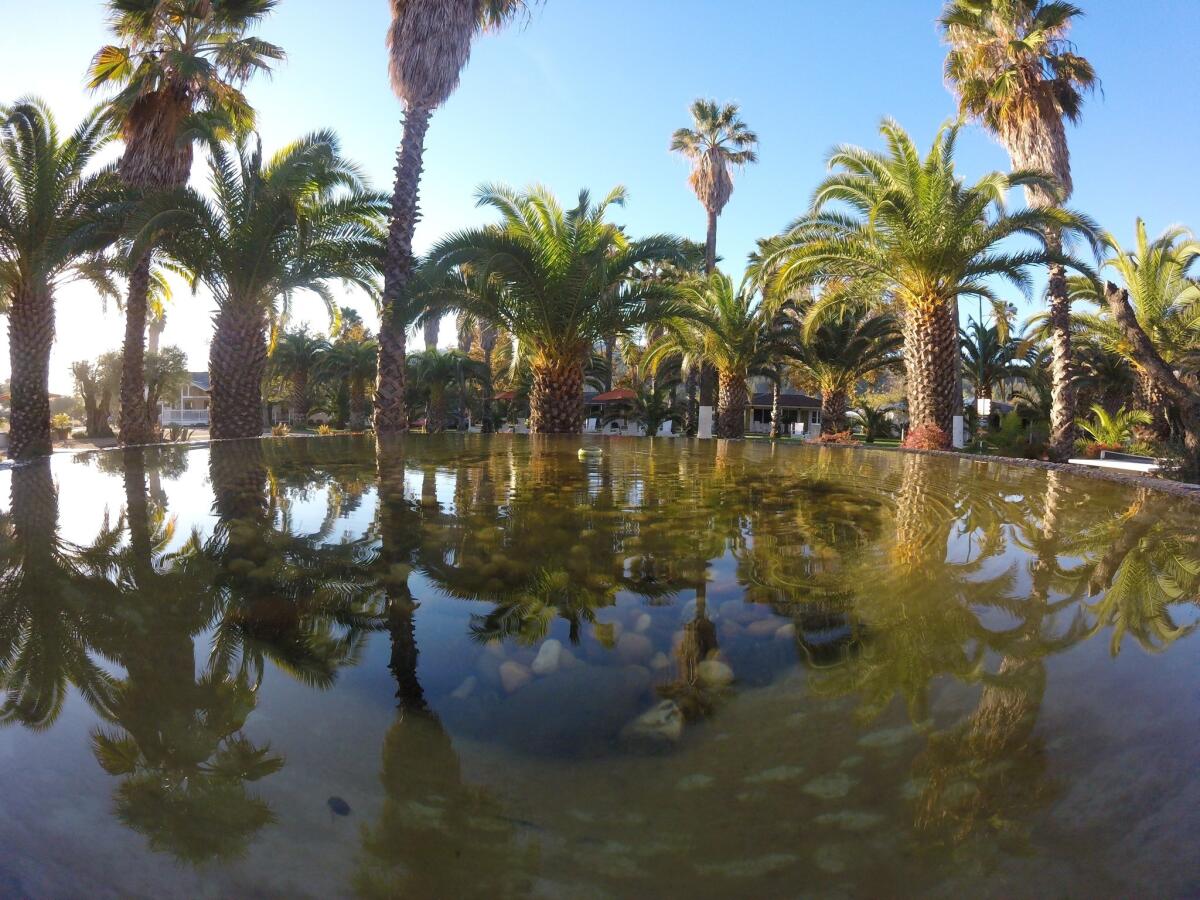
Why: Calistoga is the answer to the question of what to do in the Napa Valley when you’ve had enough wine. It’s a little, old resort town full of hot springs, so between wine-tasting excursions (and maybe the occasional bike ride) you can float listlessly in a steaming pool, untroubled by the faint scent of sulfur because you can feel the stress evaporating from your body.
What: Samuel Brannan, a brash, controversial figure who became one of California’s first millionaires in the Gold Rush, founded Calistoga in the 1860s, counting on the area’s springs to draw tourists from San Fancisco. (In fact, he built a rail route from Vallejo to Calistoga, and the current Napa Valley Wine Train rolls on the Napa-St. Helena portion of that old route.) It was a clever impulse. The town (population: about 5,300) lives on as a resort escape, with hideaways like Calistoga Ranch, Dr. Wilkinson’s and Indian Springs (perhaps the oldest continuously operating pool and spa facility in the state) all relying heavily on their hot springs.
Though the Napa/Sonoma wildfires of October drew near, they never reached the town of Calistoga, and it remains handsome as ever. In early November, I spent a night and stepped from the chilly morning air into the Olympic-sized, 102-degree, steam-cloaked pool at the 17-acre Indian Springs resort. It was pleasant. In 2015, the resort added a restaurant (Sam’s Social Club, which has fascinating, colorful mural over the counter) and grew from about 40 rooms to 115. Many of the interiors still have that just-upgraded, ready-for-the-magazine-photographer look.
Where: Indian Springs, 1712 Lincoln Ave., Calistoga, 73 miles north of San Francisco’s Ferry Building, 427 miles northwest of downtown L.A.
How much: In winter, Indian Springs rooms for two usually start at about $239 per night.
Info: Visit Calistoga, Indian Springs
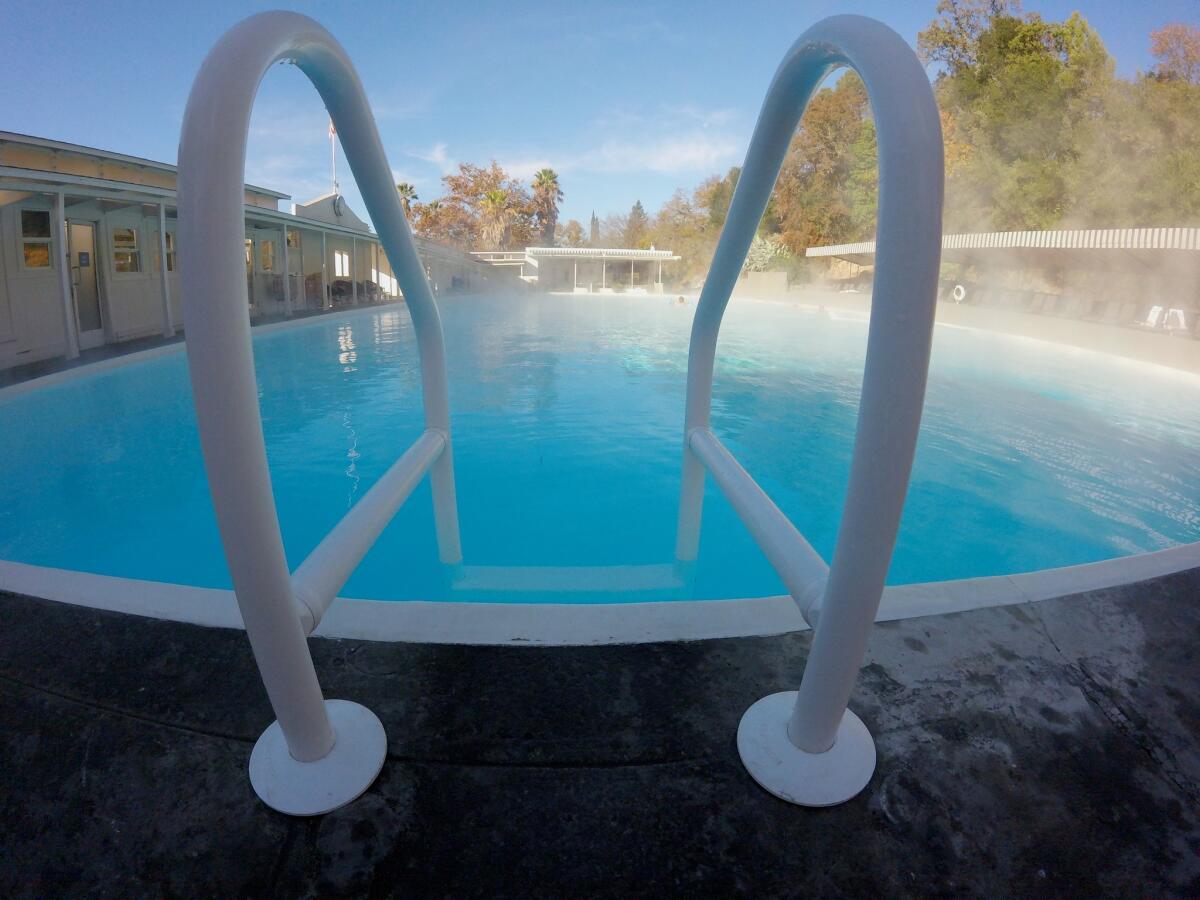
Board the Napa Valley Wine Train, recall discord and disaster, then roll in splendor past miles of vineyards
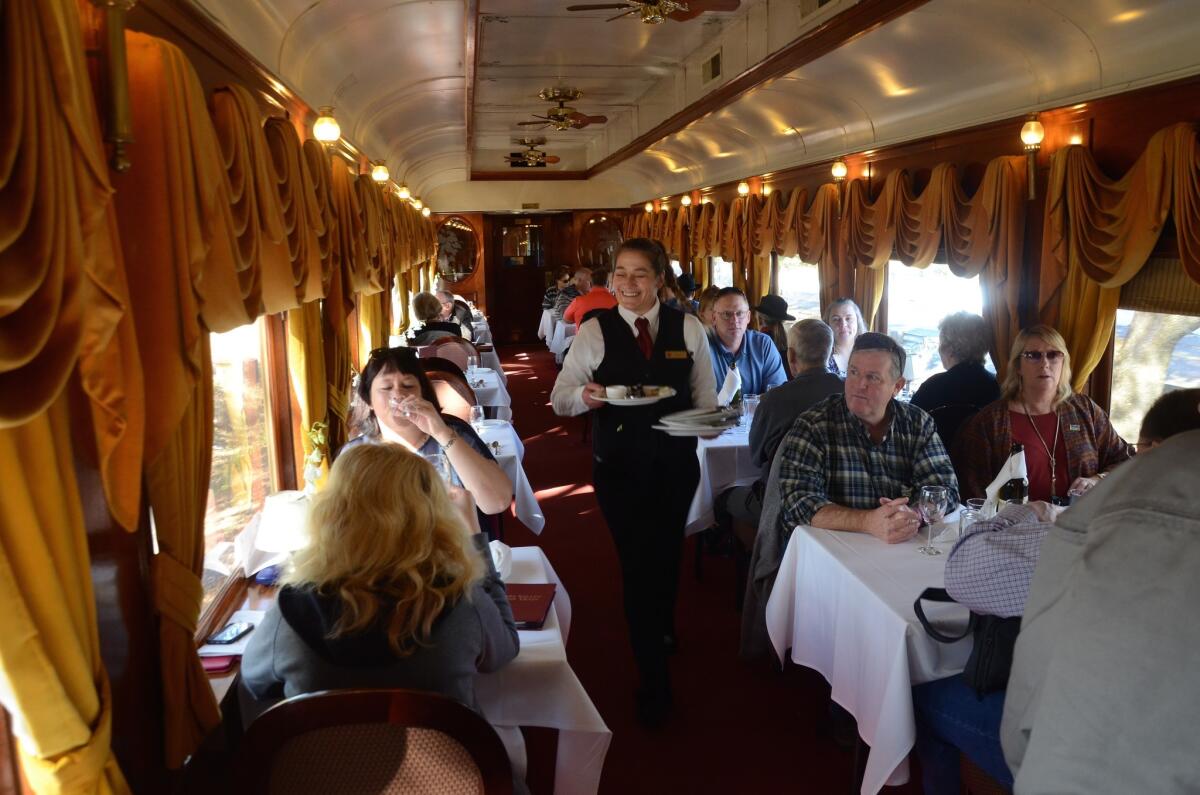
Why: If you’re going to fully appreciate this valley and its globally admired vineyards, it’s better that you’re not driving. And on the Napa Valley Wine Train, you have the chance to dine in style while the miles and wineries roll past.
What: The train covers about 18 miles, running north alongside Highway 29 from the city of Napa through Yountville and Oakville to St. Helena. Along the way, depending on what you sign up for, you may stop to taste at one to three wineries, eat a three-course meal on board, and be back where you started in three to six hours. It’s expensive but so very comfortable.
And it’s got complicated history. The rail route, first laid in the 1860s, had fallen idle by the 1980s. To get the new wine train rolling in 1989, its owners had to outmaneuver many Napa locals who feared a tourist invasion would ruin the affluent community’s character. Skip forward now to 2015, when the train’s management drew a storm of criticism for ejecting a group of guests, mostly African American, who were accused of being too loud.
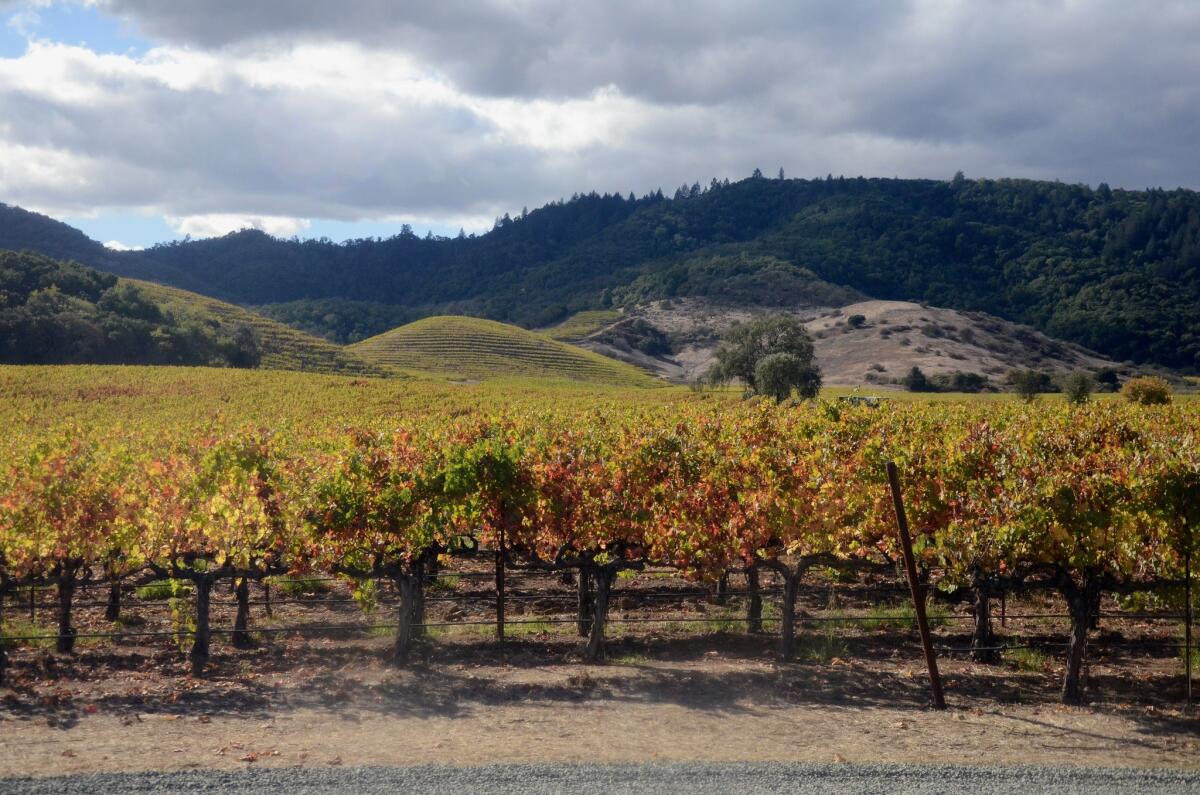
In late 2015, new owners took over the train. Then wildfires flared in October. They missed the train track, Highway 29 and the wineries along the route, but killed at least 41 people and destroyed thousands of homes and scores of businesses in Napa and Sonoma counties.
By the time I showed up in early November, almost none of the damage was visible from the train. Napa was still in the early stages of recovery and the train was about half-full — unusual for the time of year. As for my journey, it was a sunny day, the countryside was gorgeous, the meal pleasant. The distant, fire-blackened hills to the east were barely discernible beyond the green and red vineyard rows, the shade trees and the nearby slopes.
Where: McKinstry Street Station, 1275 McKinstry St., Napa, 46 miles north of San Francisco, 402 miles northwest of downtown L.A.
How much: Most day trips run $206-$329 per person, which includes lunch and wine-tasting.
Info: Napa Valley Wine Train
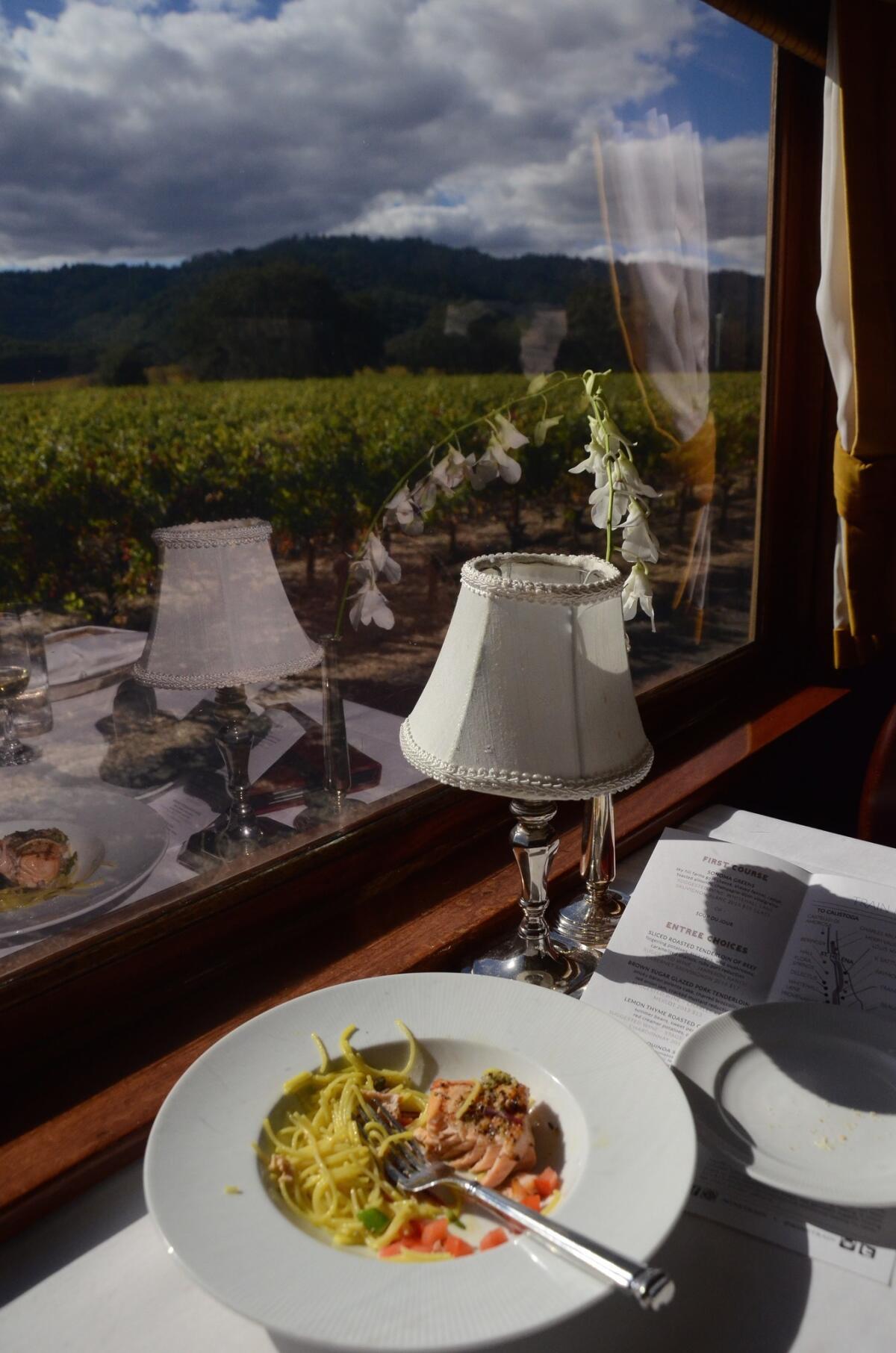
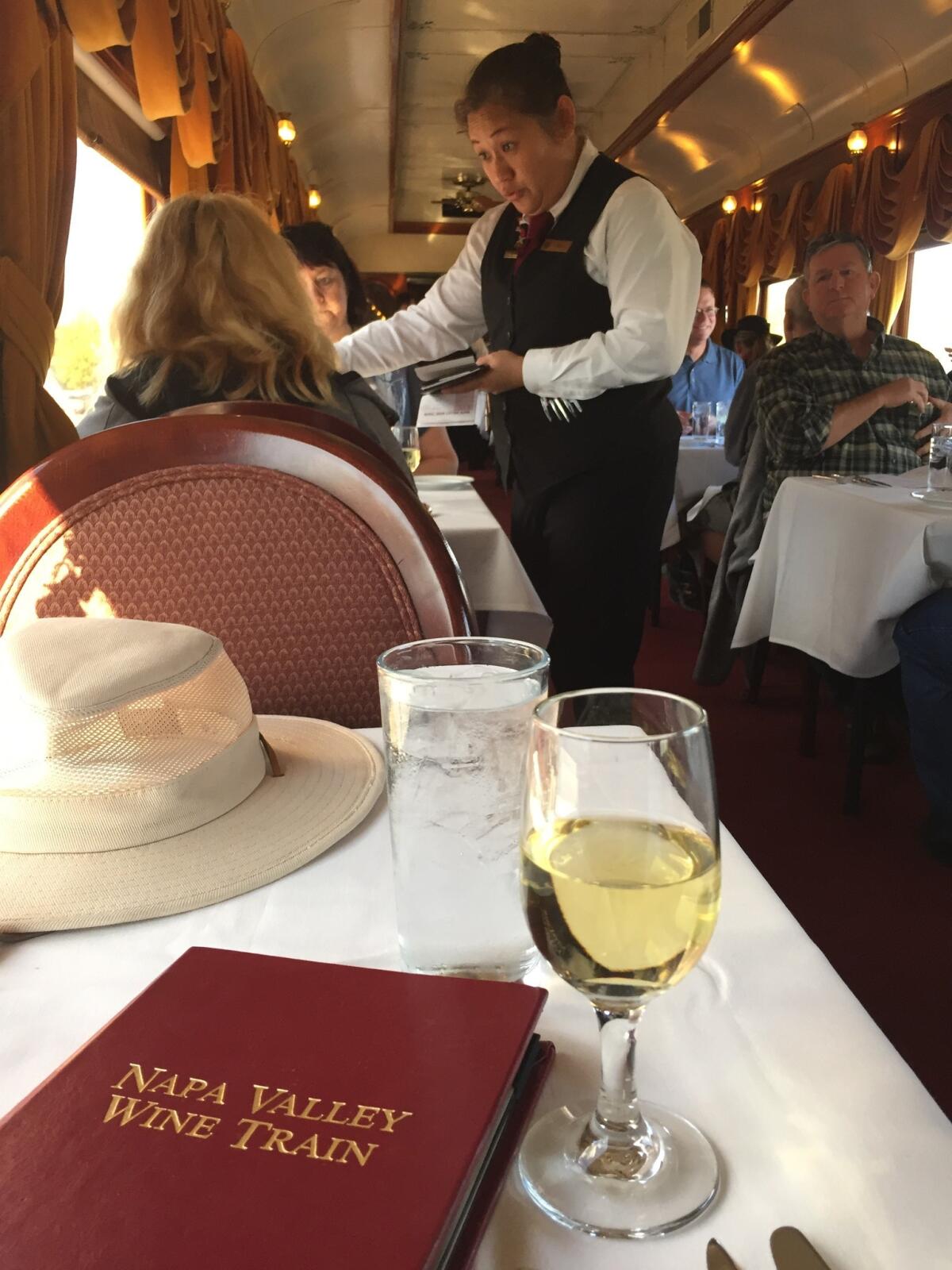
Taste China (Live) in San Francisco
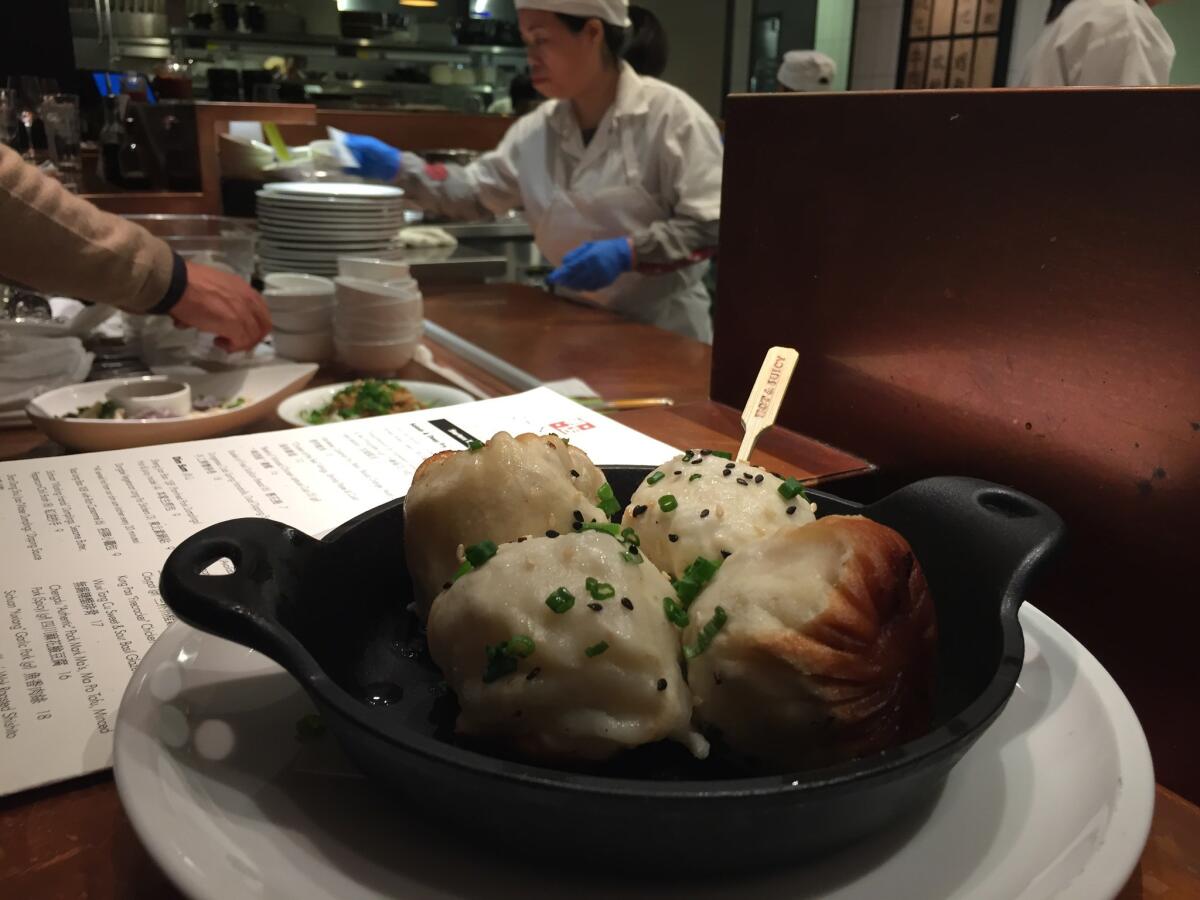
Why: Nobody likes to say so, but a lot of San Francisco’s Chinatown looks tired these days. And many of the area’s best Chinese restaurants are scattered among the outer suburbs where so many affluent Chinese American families live. So it’s a happy surprise to see China Live bring new energy and higher style to the neighborhood with a combination of design-intensive eating and shopping options. Its mission: “to demystify Chinese ingredients and recipes while educating guests on the rich history and influence.”
What: China Live opened in March 2017, near the frontier between Chinatown and North Beach. The main downstairs space, the Market Restaurant and Bar, is full of long wood tables under a semi-raw concrete ceiling. Picture an Apple Store with steaming, edible merchandise, neighbored by open cooking areas, beckoning counters, a bar and adjacent retail rooms stocked with artisan teas, kitchen tools, condiments, shapely candles, jewelry and such. The restaurant’s menu is mostly based on sharing small dishes, so you might wind up with a medley dinner of fire-roasted sweet white corn, Dungenes crab spring rolls and Sheng Jian Bao (SJB) pan-fried pork dumplings.
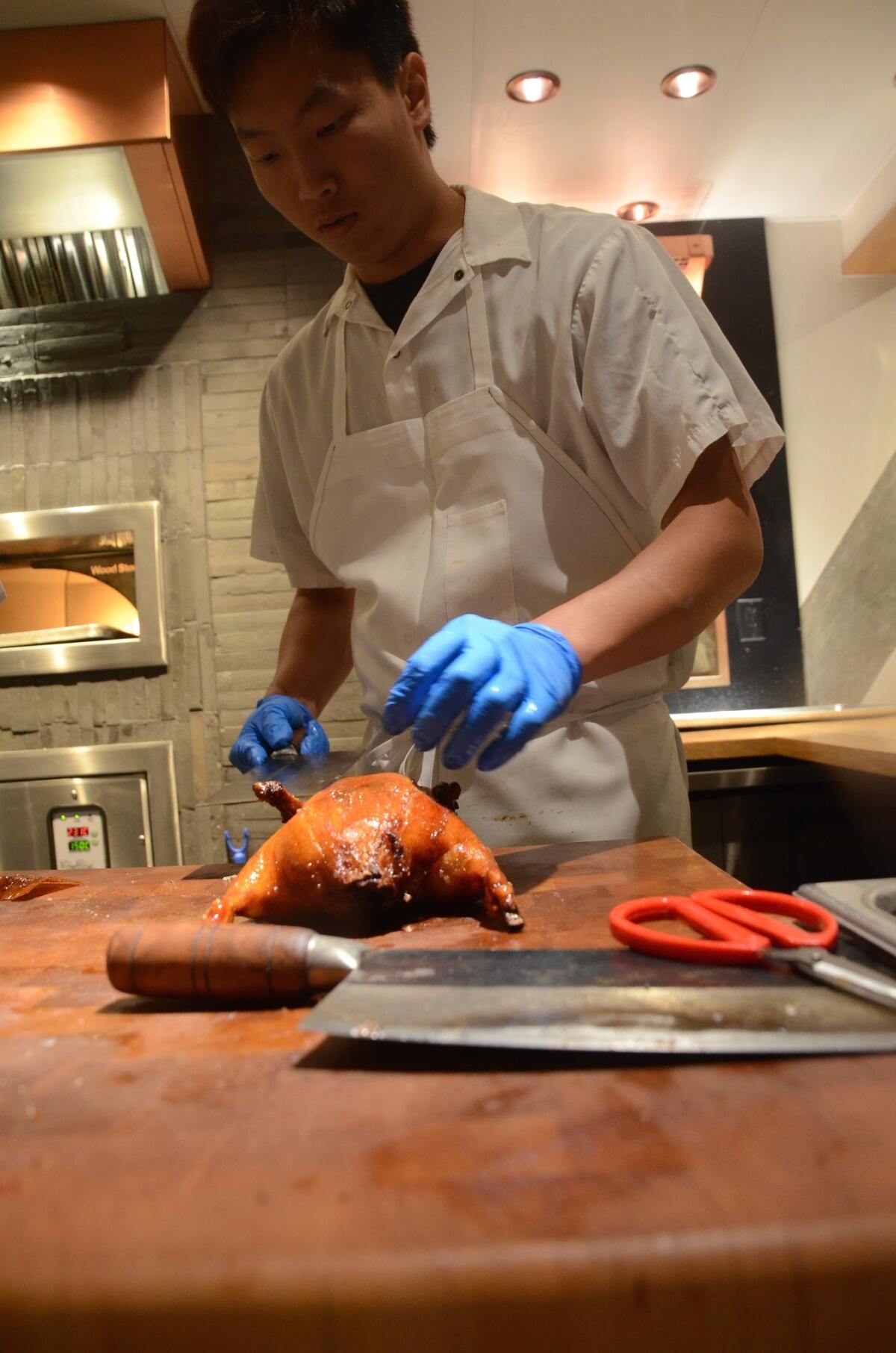
Near the entrance is the casual Oolong Cafe. Upstairs waits a more exclusive restaurant offering private, pricey dining in elegant rooms befitting a royal in hiding. It’s called Eight Tables by George Chen (dinner only; tasting menu: $225). There are also a pair of bars upstairs, including the Gold Mountain Lounge and one called Cold Drinks -- one of those hip hideaways that seeks to be popular by maintaining quasi-secrecy.
Where: 644 Broadway, San Francisco, 380 miles northwest of downtown L.A..
How much: Together, the three dishes above cost about $40. Most cocktails $13-$15.
Info: China Live
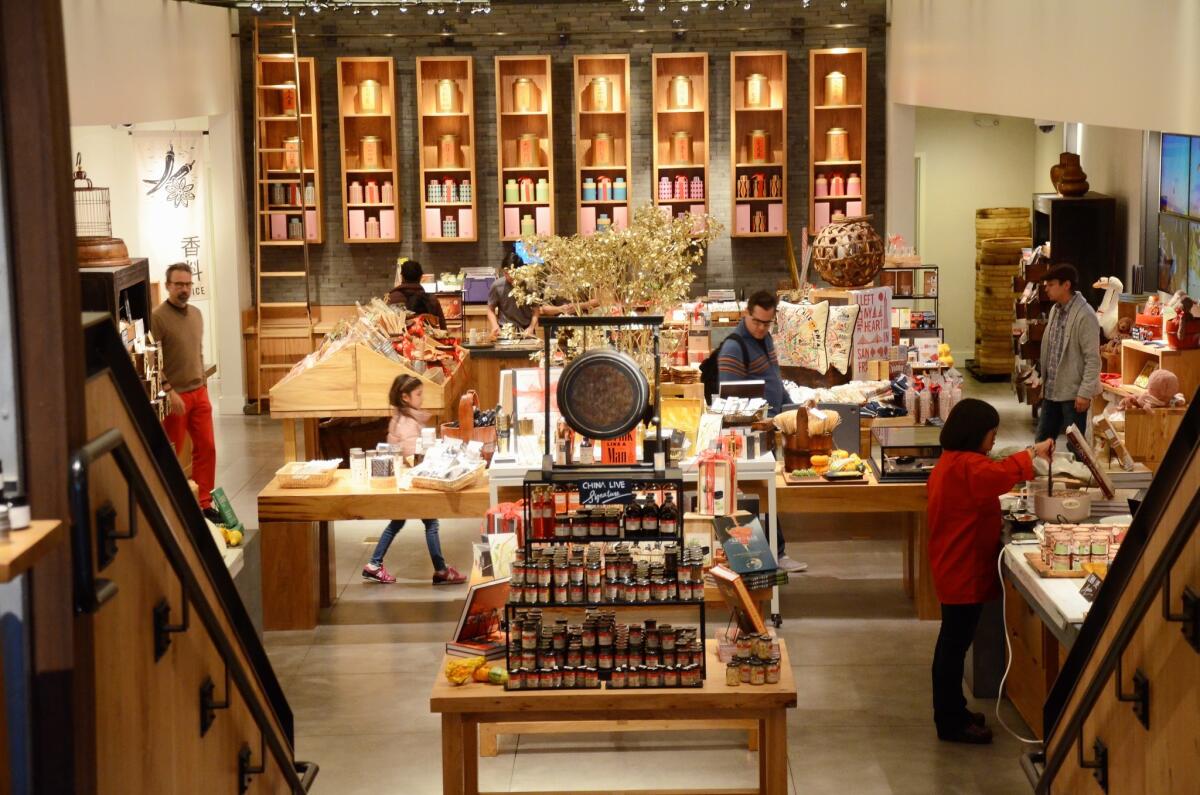
See, sniff and taste Napa Valley’s bounty at the Oxbow Public Market
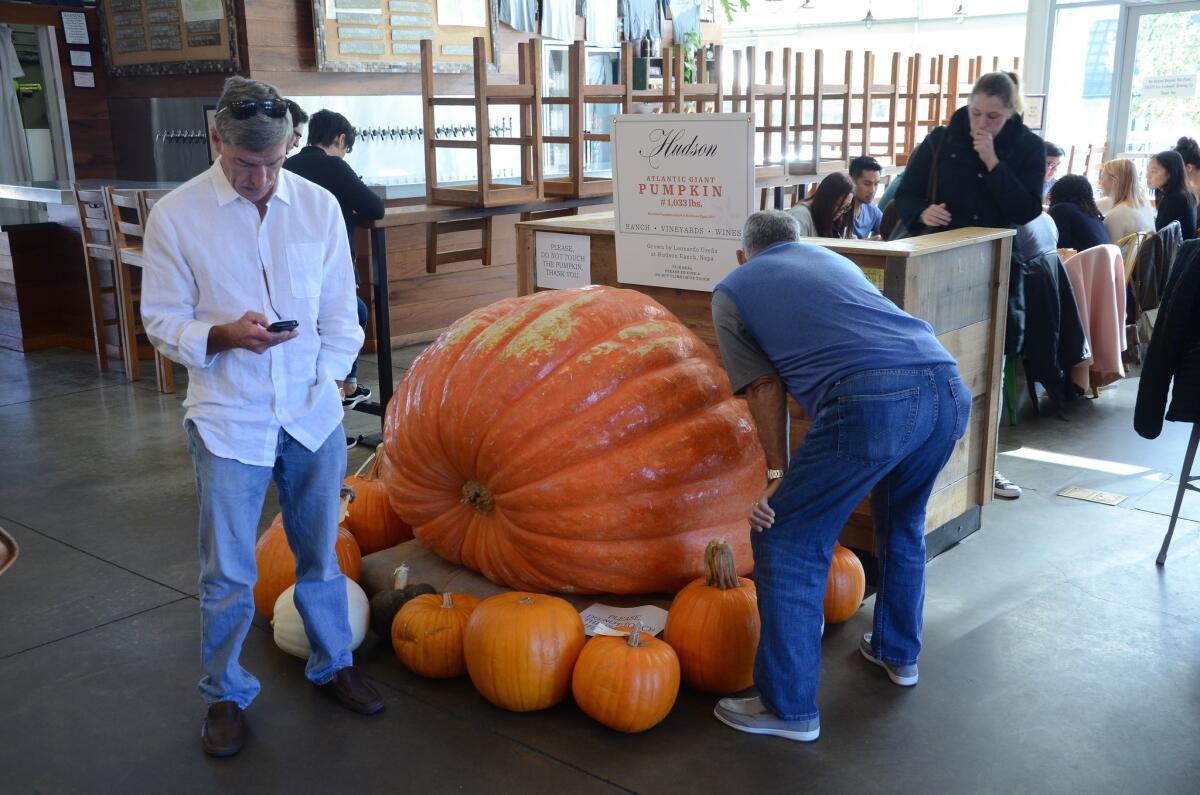
Why: This market and food hall, set above a fetching bend in the Napa River, is a short stroll from downtown Napa, a block from the headquarters of the popular Napa Valley Wine Train, a block from the COPIA center for wine and food education. Much smaller than San Francisco’s food-centric Ferry Building but placed near the starting point of many popular Napa adventures, this foodie acre (about two-thirds the size of a football field) is a point of convergence for locals and tourists and a one-stop reminder that this wine country does more than make wine.
What: The Oxbow Public Market opened in 2007, just in time to suffer from a national recession, the closure of COPIA (since rethought and reopened by the Culinary Institute of America) and construction-related disruptions of local traffic. Now those troubles are in the rear-view mirror, and a stroll around the marketplace introduces you to plenty of wine products but also duck tacos (at C Casa); American comfort food (Gott’s Roadside); local seafood (Hog Island Oyster Co.); and assorted local fruits and vegetables (Hudson Greens & Goods).
On my early November visit, Hudson was showing off a 1,033-pound pumpkin. There were also plenty of signs thanking the first-responders for their work fighting that region’s wildfires in October. (Though many homes and about two dozen wineries were lost or damaged in those fires, the vast majority of the area’s 500 wineries had reopened by Nov. 8.)
Besides browsing at the market, you can also rent a bike at the automatic Spinway stand just outside and pedal seven miles along the Napa River to Kennedy Park and back; or just toodle down 1st Street in downtown Napa, where the new, 183-room Archer Hotel is expected to open in December.
Where: 610-644 1st St., Napa, 46 miles north of the San Francisco Ferry building, 401 miles northwest of downtown L.A.
How much: C Casa tacos run $4.75-$9. Spinway bike rentals start at $9 per hour.
Info: Oxbow Public Market

Read the walls on Angel Island, the West Coast ‘Ellis Island’ where Asian immigrants waited and waited from 1910 to 1940
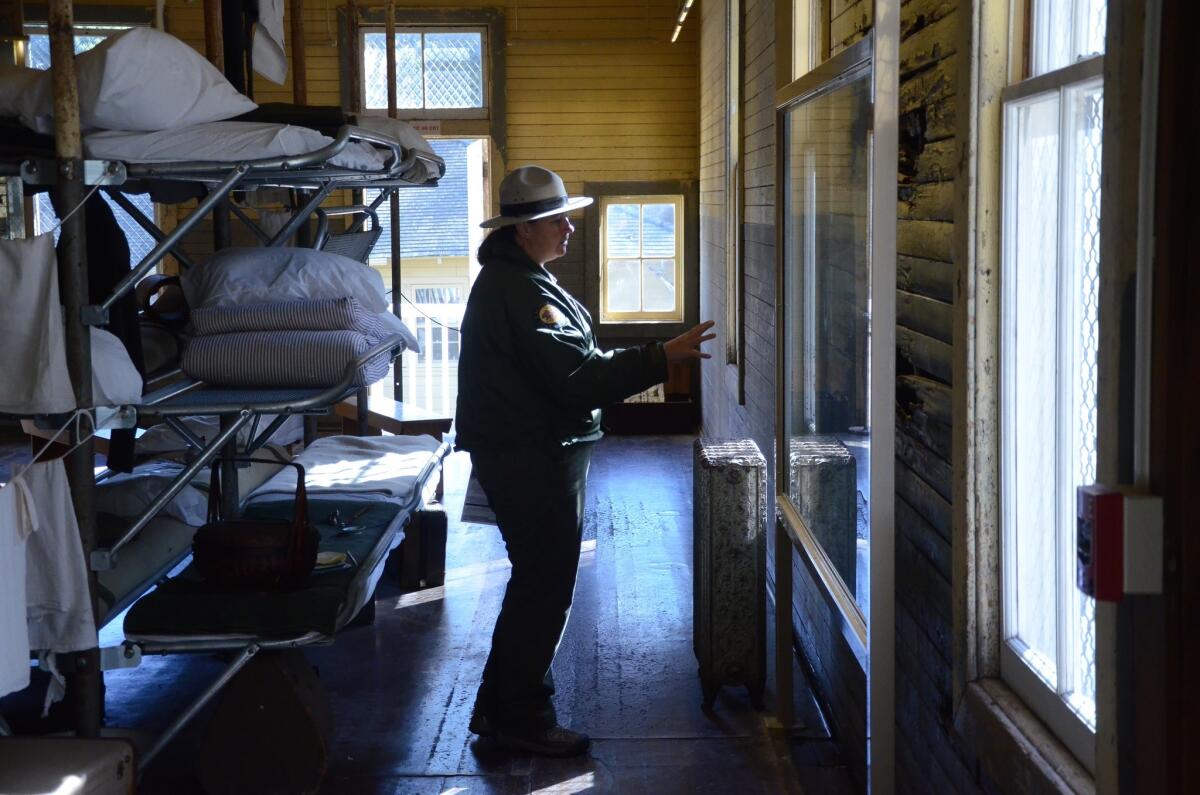
Why: It’s a handsome, green island in San Francisco Bay, popular with sailors, cyclists and hikers, just south of high-toned Tiburon. And from 1910 through 1940, it was something like a western Ellis Island, processing about half a million immigrants, including most of the 175,000 Chinese immigrants who arrived during those years. But those were not happy years.
What: While immigration agents at Ellis Island were admitting most European arrivals within a few hours, the objective on Angel Island was “to exclude new arrivals.” Especially the Chinese, who were routinely held for weeks or months in crowded, dirty conditions. Historians say most eventually gained admission by claiming family connections to U.S. citizens -- but only after lengthy interrogations and often denials and later appeals.
The old Immigration Station barracks, a mile’s hike from Angel Island’s main dock, joined the state park system in 1963 and was bolstered by a restoration and upgrade in 2009. If you arrive during the 20-22 hours per week that the Immigration Station is open, rangers can point you to the poetry etched (in Chinese characters) on the wooden barracks walls by immigrants as they waited in dire conditions, sleeping three deep on bunk beds. More than 120 poems were carved into the walls.
“Sadness kills the person in the wooden building,” says one.
“Once you start to see it, you’ll see it everywhere,” said state parks interpreter Casey Dexter-Lee. Of roughly 200,000 annual visitors to the island, Dexter-Lee said, about one in ten gets to the Immigration Station,
To get there on a weekend day under the current ferry schedule, take the 9:40am Blue&Gold ferry from San Francisco’s Pier 41 to Angel island, arriving 10:05. Hike or ride a rental bike to the Immigration Station. (The well-signed, mile-long walking route includes 144 stairsteps.) Get lunch at the Cove Cafe. There’s a 4 p.m. ferry back to Pier 41. (Or if you’re in hurry, there’s one at 12:30 p.m.)
Where: The island is just south of Tiburon (in Marin County), 5 miles north of Alcatraz, 6 miles north of San Francisco’s Pier 41, about 390 miles northwest of downtown L.A.. The Immigration Station is open Wednesdays through Sunday, 11 a.m.-3 p.m., staying open to 4 p.m. on weekends from May through October. For details on planning a tour or holiday scheduling, send an email to: [email protected]
How much: The Blue&Gold Ferry from Pier 41 charges $9.75 each way for travel between San Francisco and Angel Island. Admission to the Immigration Station is $5 per adult; guided tours are $7.
Info: Angel Island State Park

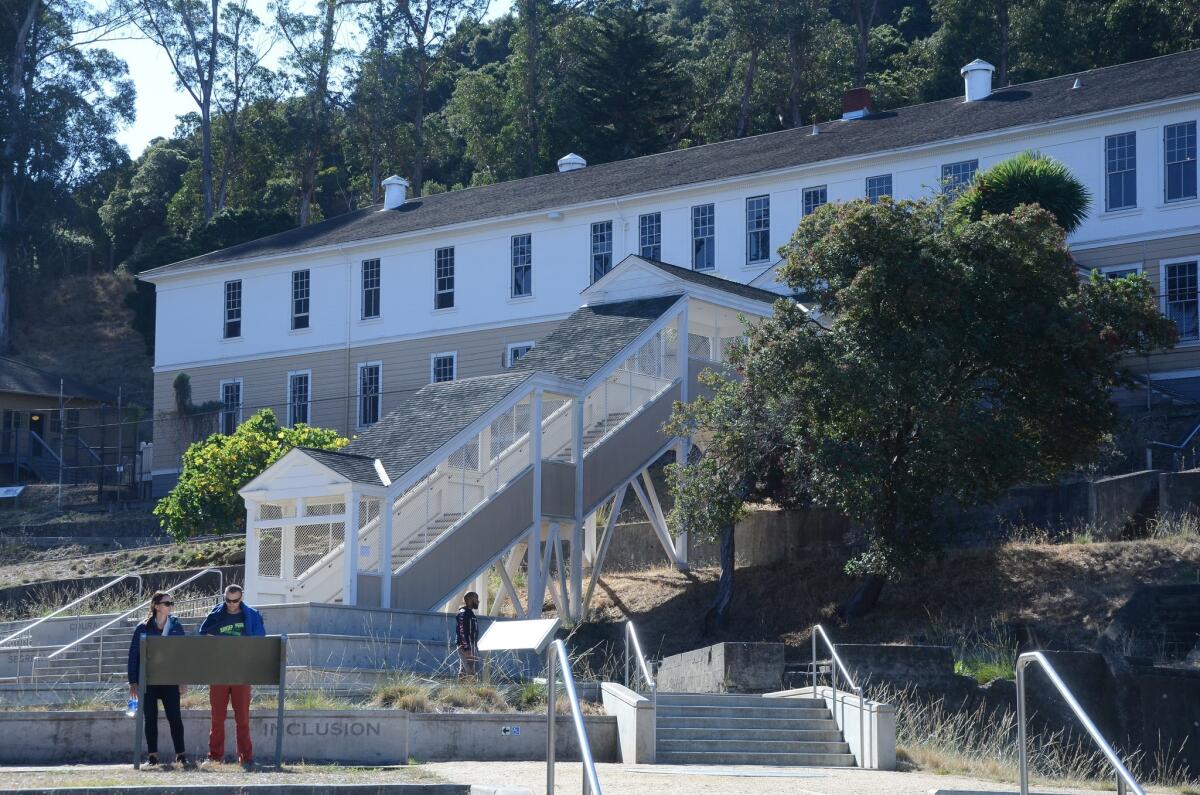
Check out the heavy metal at this resilient roadhouse an hour outside L.A.
Why: Newcomb’s Ranch belongs in any roadhouse hall of fame. It’s a rough-hewn old place dating to 1939 that has survived rock slides, arson fires and snows that reached to the roof. That it still exists is a bit of a miracle. That this mountain hangout is only an hour or so from downtown L.A. is also a dash of good fortune. It might be the quickest way to feel a million miles away.
What: On weekends, Newcomb’s Ranch is more than a restaurant/bar, it’s a showroom of L.A.’s best and most dazzling motorcycles. Most of the action takes place in the parking lot, where the owners of the heavy metal — bikes and sports cars — line up their trophies. The vibe is casual and family-friendly.
Inside, you’ll find a restaurant that is better that it has to be, given the lack of any competition on this remote, wiggly highway in the Angeles National Forest.
In winter, look for the fireplace in the main dining room, across from the pool table. The rest of the year, stay outside, where the real show is. The patio tables are plentiful, and the staff moves quickly through breakfast and lunch. (Newcomb’s closes at 4 p.m.)
The menu is basic. The best value is a half-sandwich-soup combo for $7.99. The Ortega burger ($12.49) is an after-market version of the basic cheeseburger, but with bacon and mild Ortega peppers. The chicken tenders ($11.99) are enough to feed two, and arrive crispy and hot.
Newcomb’s is also popular with the hiking and camping crowd. Ten minutes up the road is Buckhorn, a first-come, first-serve Alpine campground dotted with redwoods. Even closer, two miles up the road, is Horse Flats Camp Ground, which is more arid but with some fascinating rock formations.
But it’s those blingy bikes you probably came to ogle, in the shadow of a sturdy old roadhouse that never quits.
Where: Angeles Crest Highway, 41 miles northeast of downtown L.A. Open Thursday-Friday, 9 a.m. to 4 p.m.; Saturday-Sunday, 7 a.m.-4 p.m. Closed the rest of the week.
How much: Meals from about $7.
Info: Newcomb’s Ranch
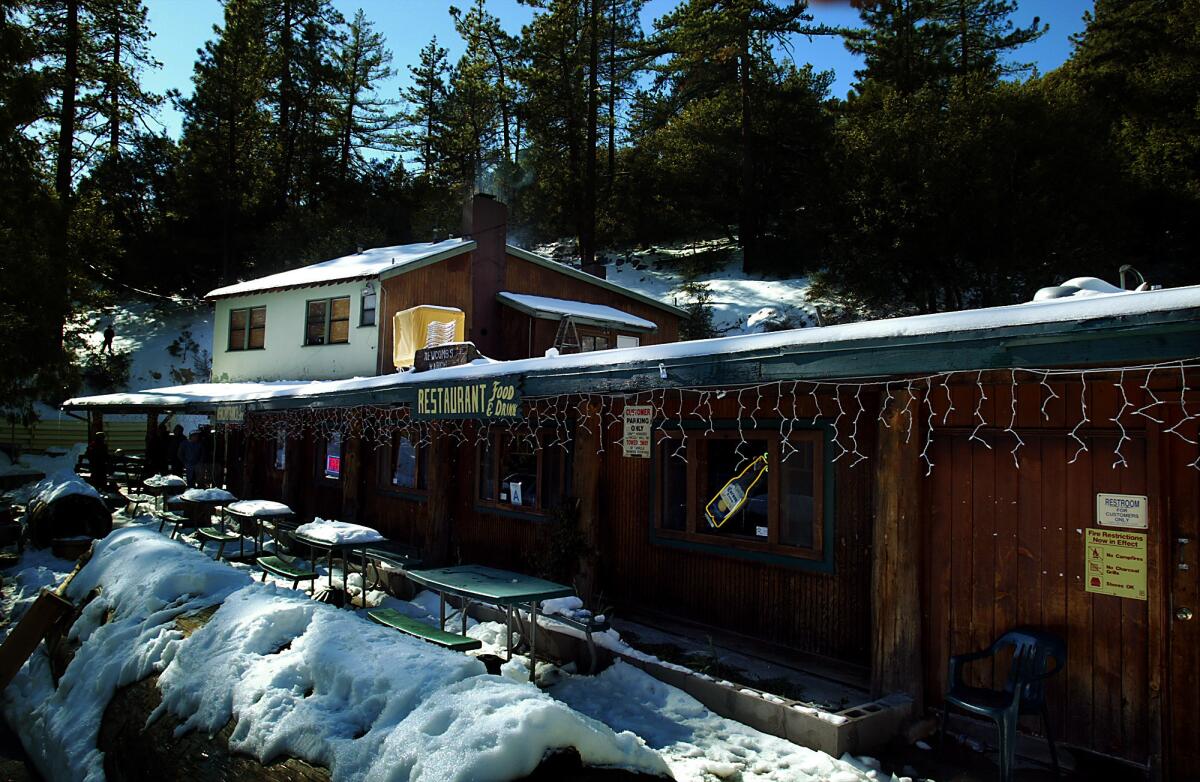
Nurse a spiked cappuccino at Tosca Cafe in San Francisco
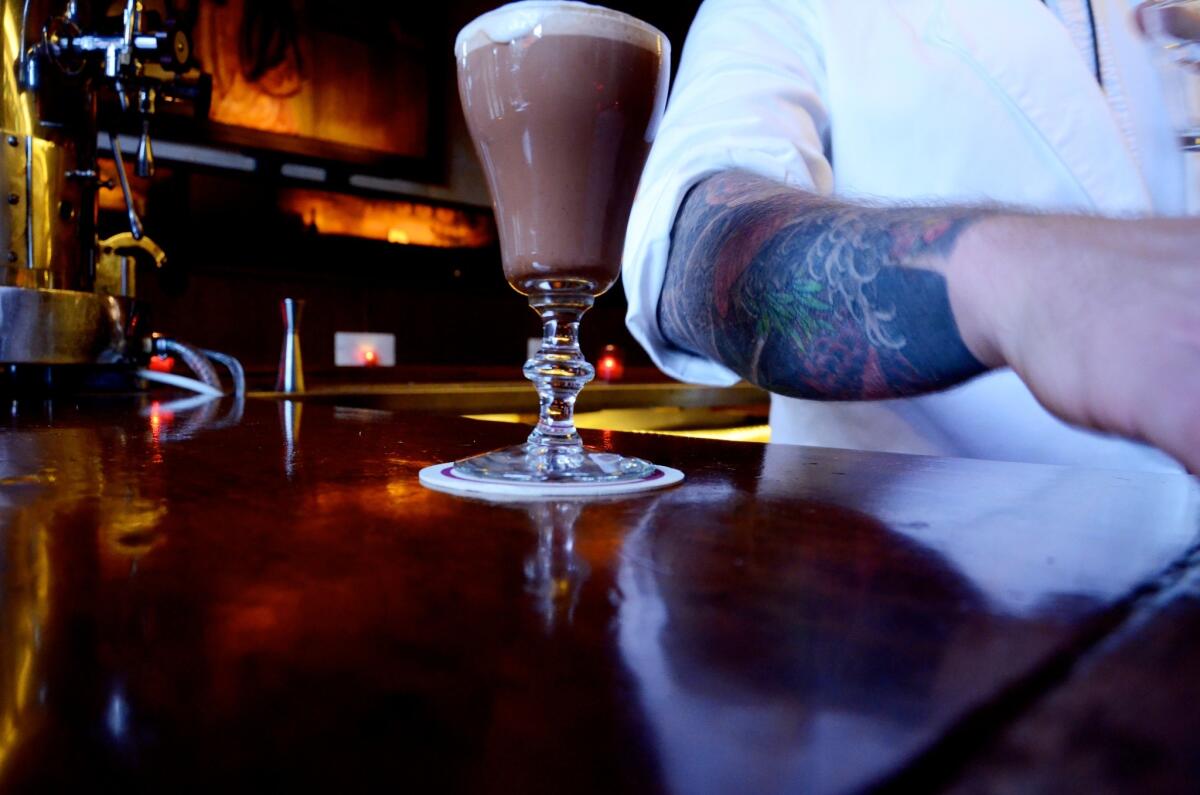
Why: In an Italian American neighborhood full of dim, old bars and moody Italian cafes, this might be the most stylish of them all. If you’re a cocktail person, order the House Cappuccino, watch the barkeeper make it in the gleaming silver espresso machine up front, and prepare for a pleasant little jolt.
What: That warm jolt is bourbon, Armagnac, chocolate ganache and assorted secret ingredients. Like the atmosphere in deep, dark Tosca, the House Cappuccino goes back some decades. The place opened in 1919. My bartender told me the house used to quietly spike drinks for North Beach regulars during Prohibition, when Tosca had to pretend it was just a cafe.
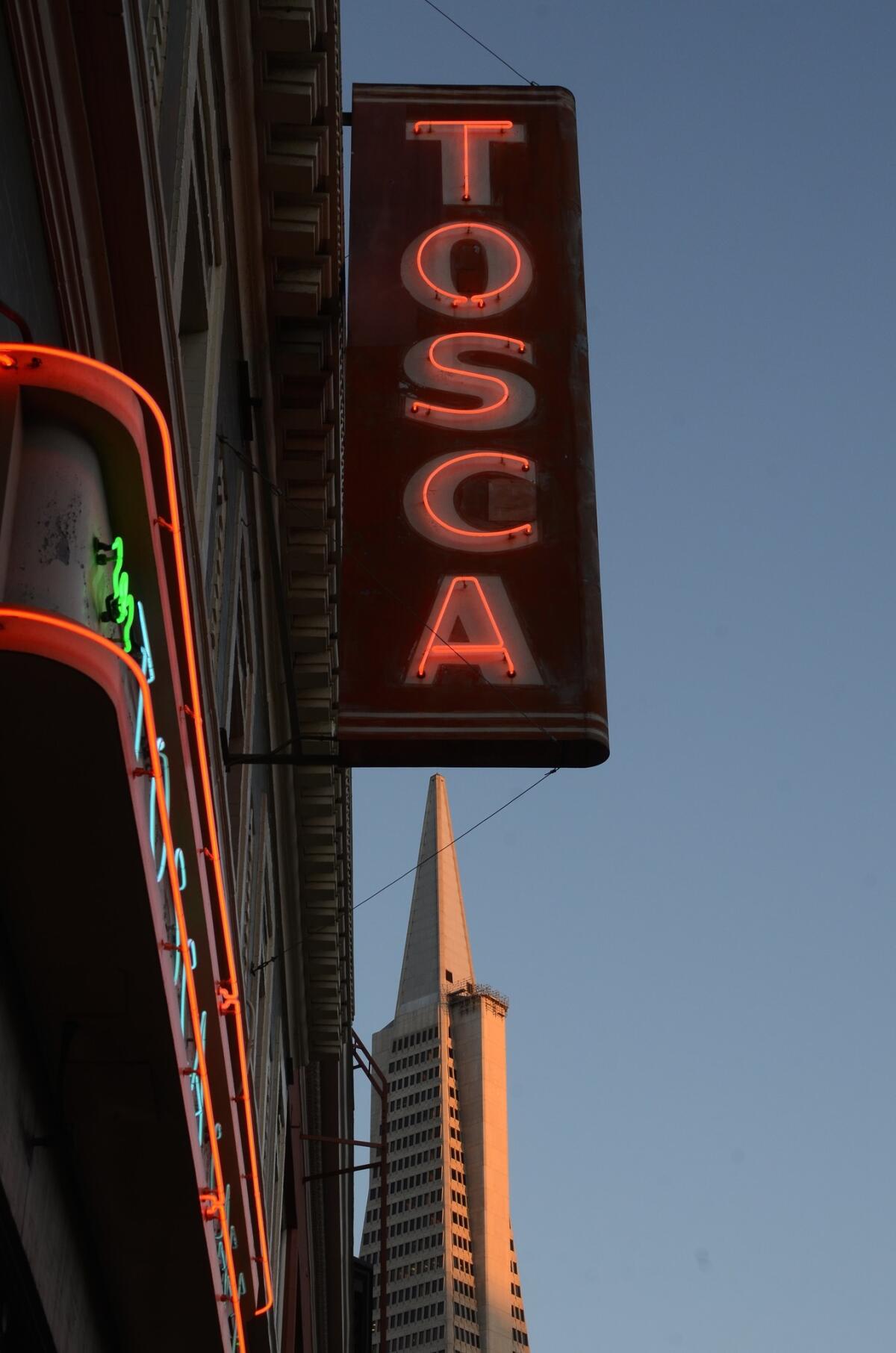
In any event, this space has changed and it hasn’t. New owners brought in celebrated chef April Bloomfield — and built her new a new kitchen — in 2013 and reintroduced Tosca to the world as a place for great food to match its noir charm. The floor is still checkerboard. The juke box still includes Sam Cooke, Dolly Parton, Nina Simone, Frank Sinatra and the “Anvil Chorus” from “Il Trovatore.”) On the menu is wild Italian arugula, grilled polenta and Berkshire pork chops.
Where: 242 Columbus Ave., San Francisco, 389 miles northwest of downtown L.A. Open 5 p.m. to 2 a.m. daily.
How much: $12 for the House Cappuccino. Main dishes $18-$31.
Info: Tosca Cafe
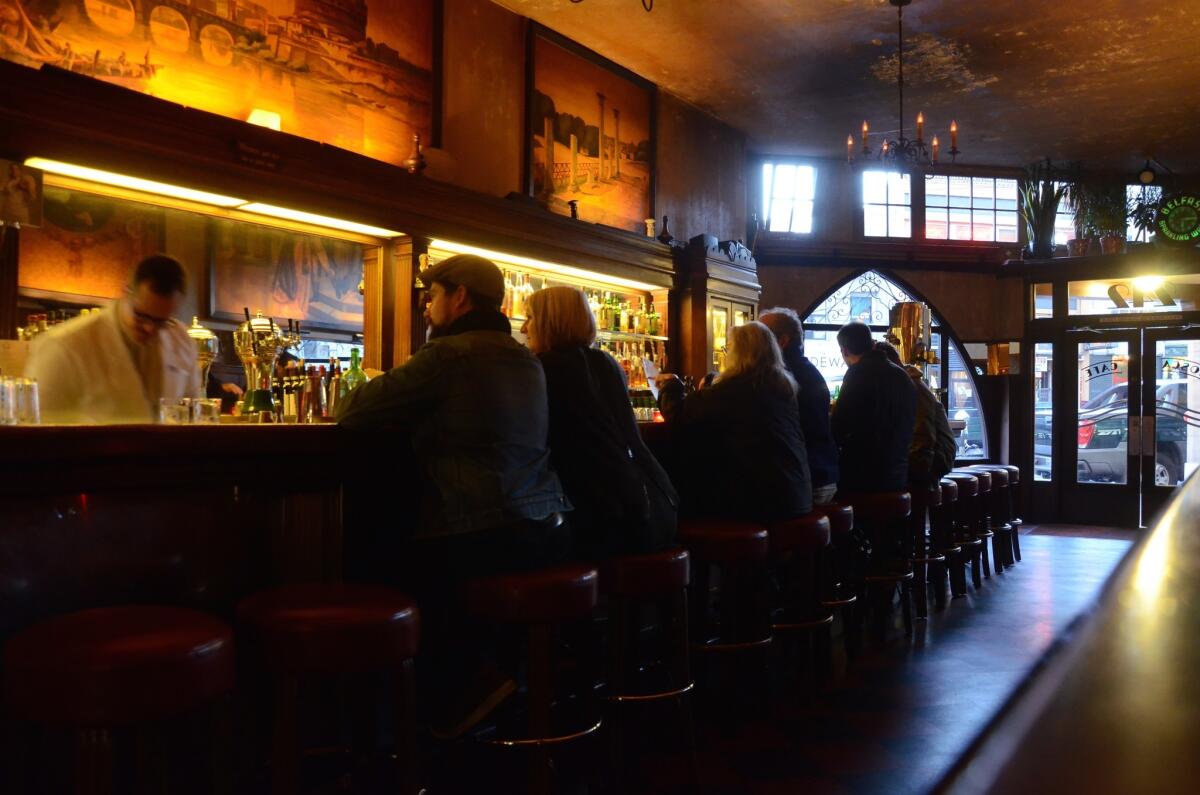
Mourn the ‘60s and paw through old books and records on Telegraph Avenue in Berkeley
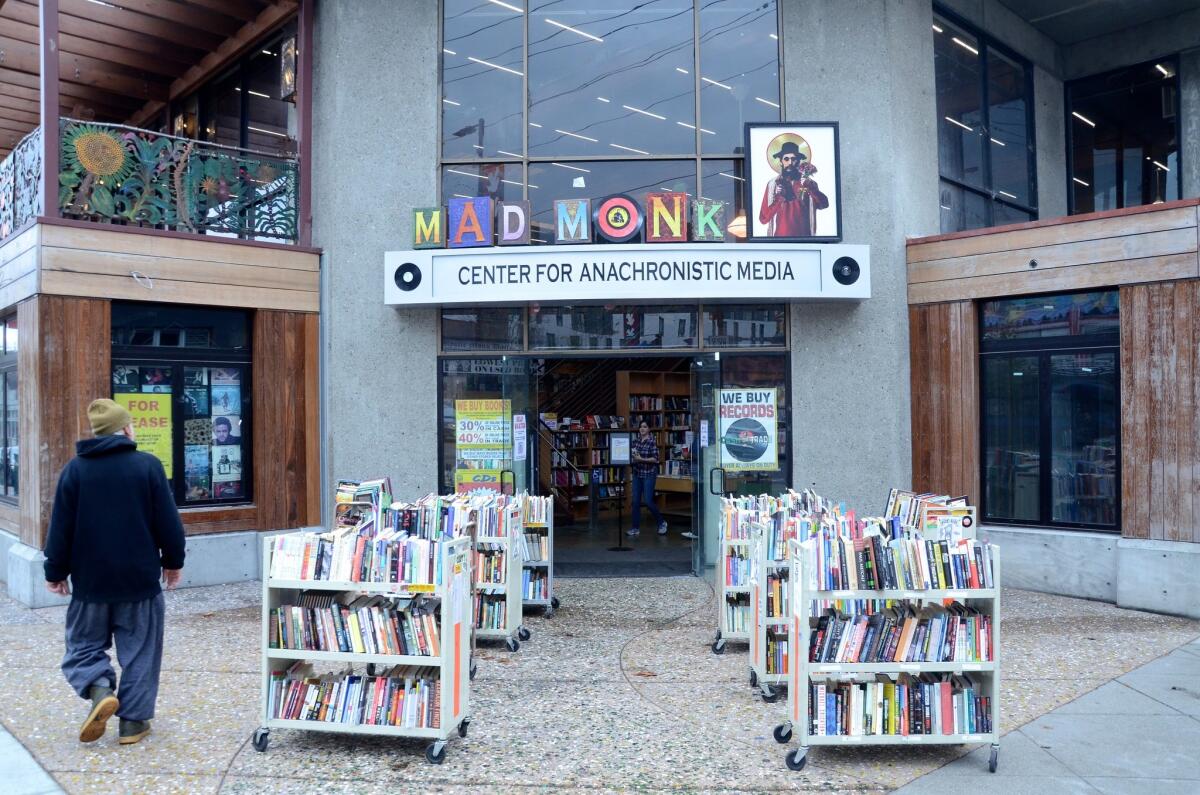
Why: Telegraph Avenue might not be tidy. And the sign that says “Drug Free Zone” is not especially convincing. But this neighborhood next to the UC Berkeley campus is knee-deep in revolutionary memories and recycled pop culture riches — especially used books and old records.
What: You could start by browsing Moe’s, the bookshop at 2476 Telegraph Ave. founded in 1959 by the late Moe Moskowitz and his wife, Barbara. It’s got new, used and rare books on four levels — the rarest are locked up on the top level.
Then move down a few doors to the new and used books and music at the Mad Monk Center for Anachronistic Media at 2454 Telegraph. (“No digital media!” proclaims its website.)
Or cross the street and dive into Rasputin Music and Movies (which shares ownership with Mad Monk) at 2401 Telegraph. Or try Amoeba (yet more music and movies) at 2455 Telegraph. If you don’t wind up buying that 1971 John Fahey album you never knew you needed, or that quirky biography of W. Eugene Smith you never knew existed — well, you’ve failed to catch the spirit here.
Also, if you’re a student of the ‘60s, you might need a quick stroll through People’s Park (half a block away at 2556 Haste St.), where many lost souls remain. But there will be no browsing at Cody’s bookshop (a gathering place on Telegraph from the 1960s to 2006) or debriefing at Cafe Mediterraneum (1957-2016).
You can, however, linger a minute to inspect history of the Free Speech Movement as portrayed in a great mural (“A People’s History of Telegraph Avenue”) at Telegraph and Haste. And if your burrito at Han’s Bistro (2498 Telegraph) is like mine was, it will be massive and flavorful.
Where: The corner of Telegraph Avenue and Haste Street is three blocks south of the UC Berkeleycampus, 380 miles northwest of downtown L.A.
How much: Free. About $6 for the burrito.
Info: SFGate’s neighborhood profile of Telegraph Avenue
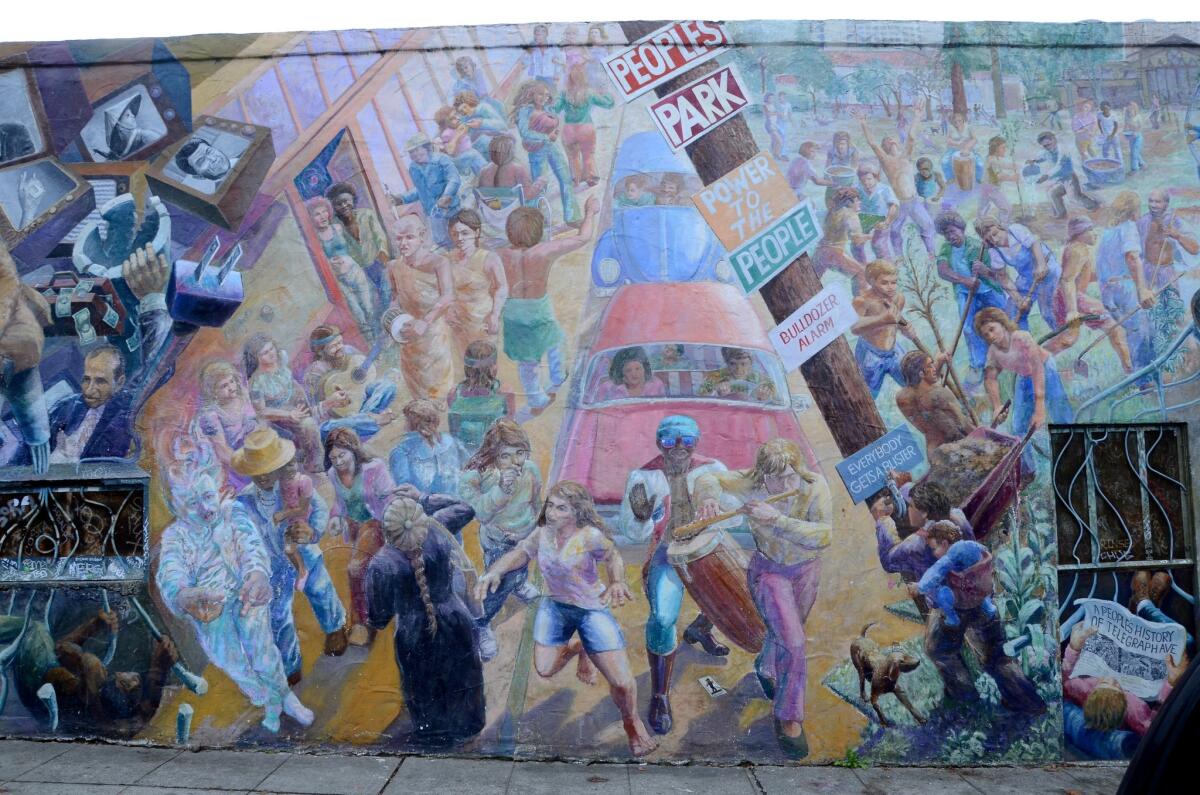
Cruise the canals of Long Beach, with a gondolier to guide your way
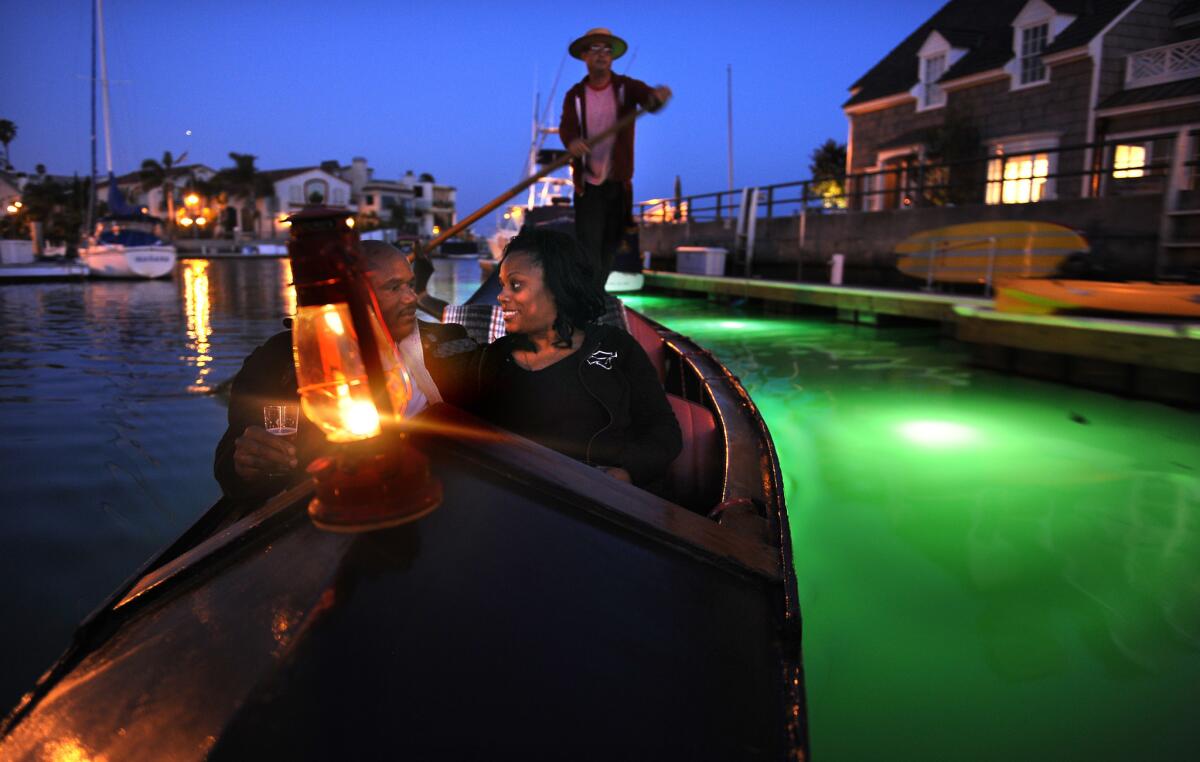
Why: For more than a century, and with mixed results, Southern California developers have been trying to create versions of Venice, Italy. In Long Beach, it has actually worked. Year-round, singing gondoliers guide their vessels through the upscale Naples neighborhood. Late in the year, the scene becomes a holiday mirror of water and lights.
What: Gondola Getaway operates one-hour voyages out of the Belmont Shore area seven days a week. Some of the gondoliers sing, others bring along recorded music. Either way, it is a romantic escape, and popular for birthdays and anniversaries. Groups and couples get separate boats, meaning they won’t be placed with strangers.
The gondolas are not pushed with a pole, as many assume. The vessels are rowed, using techniques learned in Italy.
This time of year, the lights go up, drawing even more crowds. Nights can be frosty but the canals themselves often provide protection from the winds. Still, dress in layers. High heels are discouraged. Blankets are provided.
Appetizer plates such as meats and cheeses can be arranged in advance, or passengers are allowed to bring their own. No beverages are provided, so it’s BYOB for wine or other refreshments.
Reservations are taken by phone and fill up quickly in summers and around the holidays. Have a second or third option available on dates, as well as credit card and other info.
Where: 5489 E. Ocean Blvd., Long Beach, 28 miles south of downtown L.A.
How much: $100 for first two guests and $30 for each additional passenger up to six. Bigger gondolas and pricing available for groups. Tips usually range from 15% to 25%, and are at the discretion of the passenger.
Info: Gondola Getaway
Swing at SFJazz, the house that jazz built in San Francisco
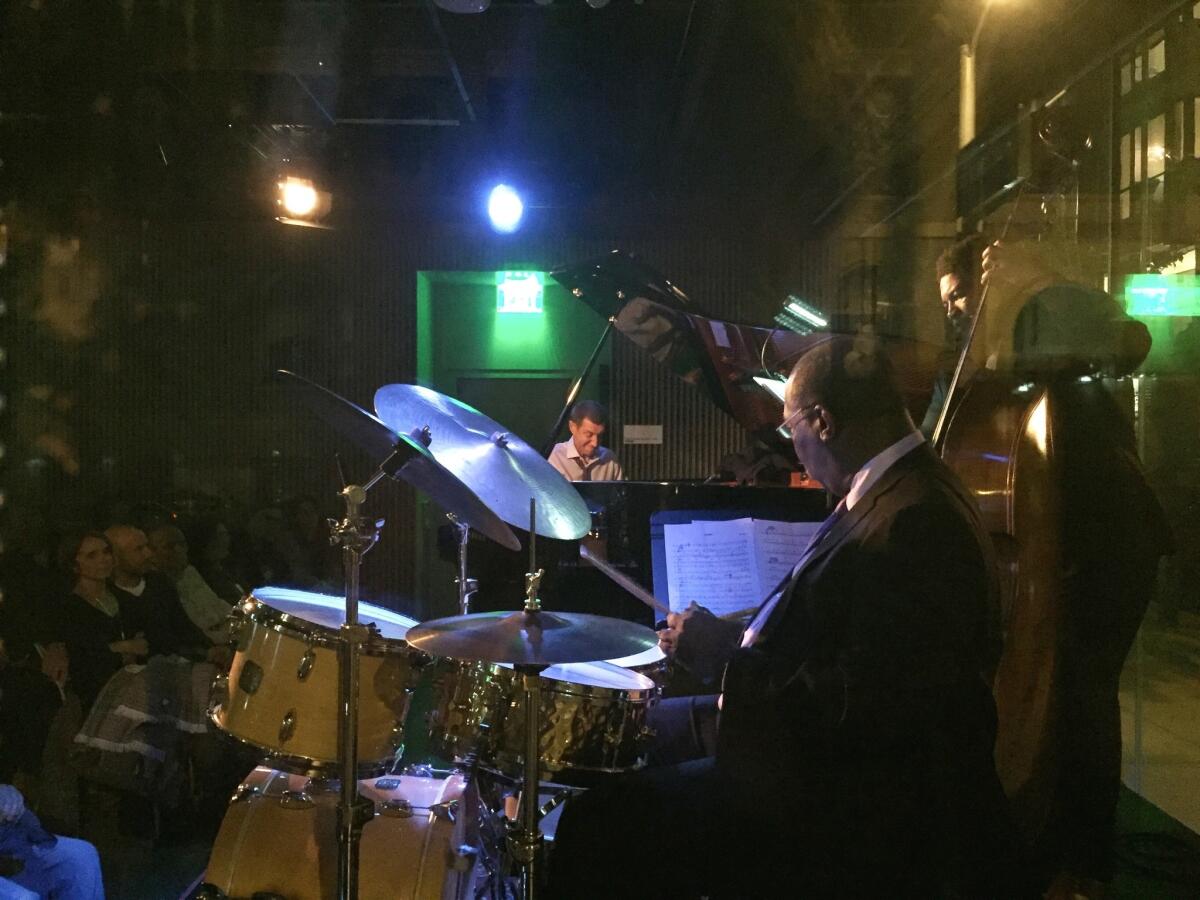
Why: This is a fresh, sleek building in the city’s long-gritty, lately gentrifying Hayes Valley neighborhood, and it’s devoted to jazz appreciation and education, with two performance spaces. The SFJAZZ Center opened in 2013 and calls itself “the first stand-alone structure in the country built specifically for jazz.”
What: Forty years ago, San Francisco had plenty of jazz haunts. Now many have closed (though these remain). So it’s fortunate that SFJazz has come along.
It’s got a 700-seat space (the Robert S. Miner Auditorium) and a 100-seat space (the sidewalk-adjacent Joe Henderson Lab, where I recently saw the Benny Green Trio swing with precision through a night of piano-based bebop). It also presents shows elsewhere around town and gets performers such as Kurt Elling, Christian McBride, Dee Dee Bridgewater, Dianne Reeves, Chris Thile and Brad Mehldau.
And in April, it added a lounge with a small-plates menu, B—Side. So you can make a night of it.
SFJazz is just a few blocks south of the city’s War Memorial Opera House and Davies Symphony Hall. The 2017-2018 season includes more than 300 performances.
Where: 201 Franklin St., 382 miles northwest of downtown L.A. B-Side (b-sidesf.com) is open Wednesday through Sunday nights.
How much: $25-$105
Info: SFJAZZ
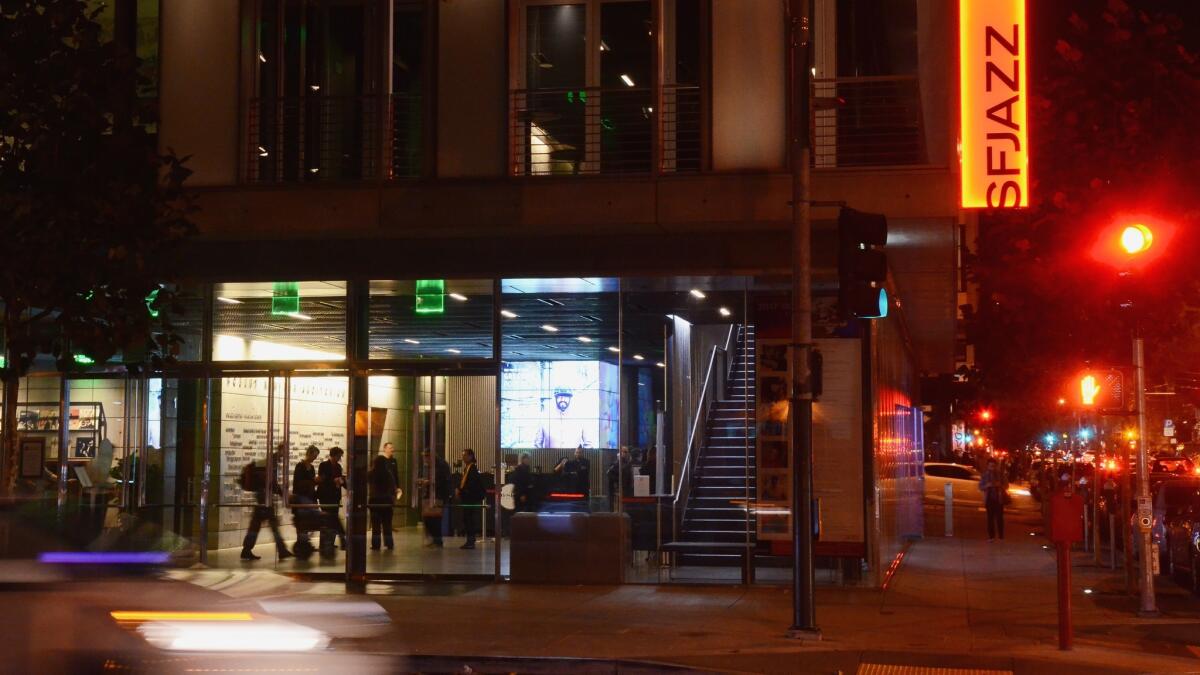
Make tracks (with snowshoes) beneath the hefty trees in Sequoia National Park
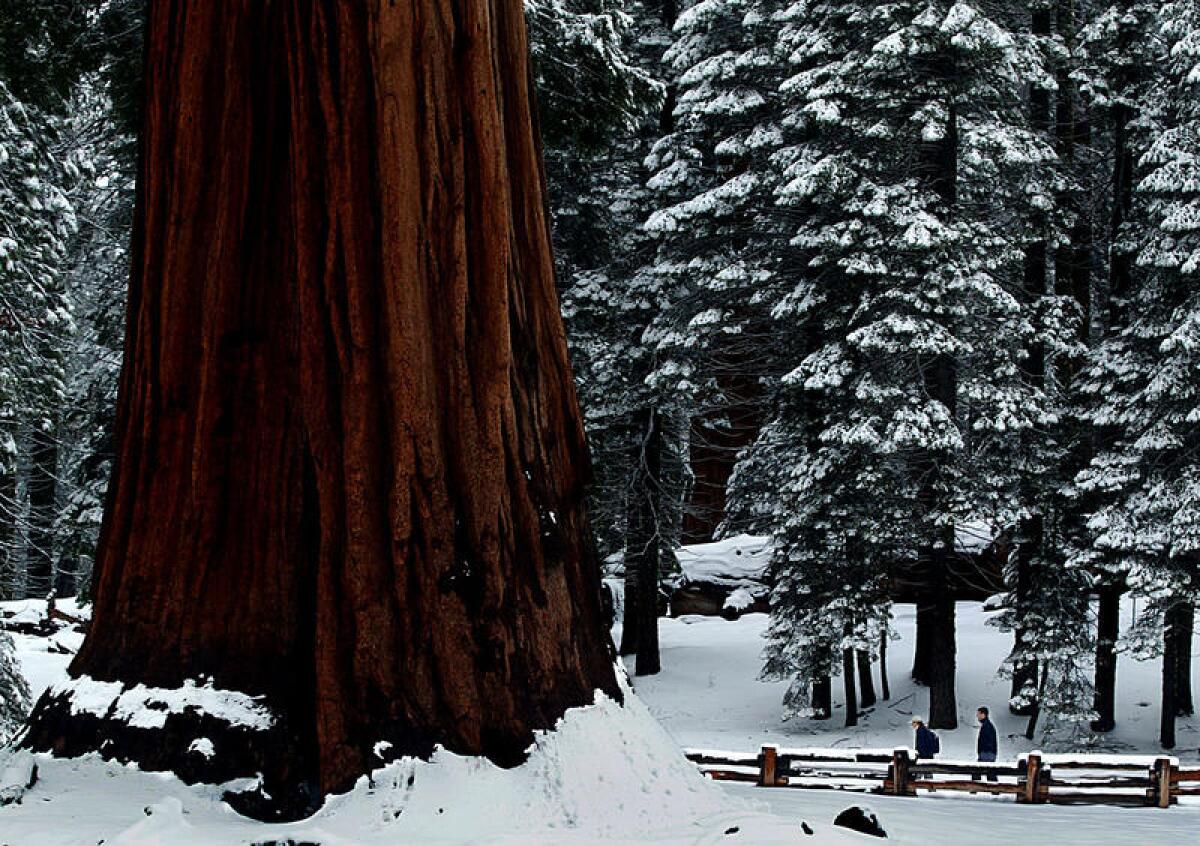
Why: Big trees, long walks, granite rocks and scampering marmots are fine any time. But a dusting of snow -- and the challenge of hiking in snowshoes -- gives the landscape a new feel.
What: You never know with the weather these days, but Sequoia, 5,000 to 8,200 feet above sea level, has gotten plenty of snow over the years. Rangers lead 1-mile snowshoeing walks in the Giant Forest area on weekends when conditions are right. (They’ll even provide free snow shoes -- the old-fashioned kind, made of wood and sinew.)
At some point, odds are good you’ll be reminded that the sequoias all around you are generally thicker than the tall redwoods on the coast. So even if the redwoods are taller, the sequoias can still lay claim to the title “world’s largest trees.” You can’t beat a hike at their feet with snow all around.
If you’d rather hike on your own, you can rent snowshoes at Lodgepole Market, about 2 miles from Wuksachi Lodge, or bring your own. Last time I tried it, our group stayed inside the park at the Wuksachi Lodge, which opened in 1999. The lodge often offers overnight-and-showshoe-rental packages in winter. Don’t go out without a trail map.
Cross-country skis are also available. Sequoia’s sibling park, Kings Canyon, also offers similar programs, along with overnight stays at the John Muir Lodge (buit in 1998).
Where: Wuksachi Lodge, 64740 Wuksachi Way, Sequoia National Park, 227 miles north of downtown L.A.
How much: The going rates for adult snowshoe rental in Sequoia are $14.50 for half a day, $18 for a full day. For children’s snowshoes, the rates are $8 and $12.
Info: Sequoia and Kings Canyon National Parks
Hum (or rap) along with a musical at the grand old Pantages Theatre in Hollywood
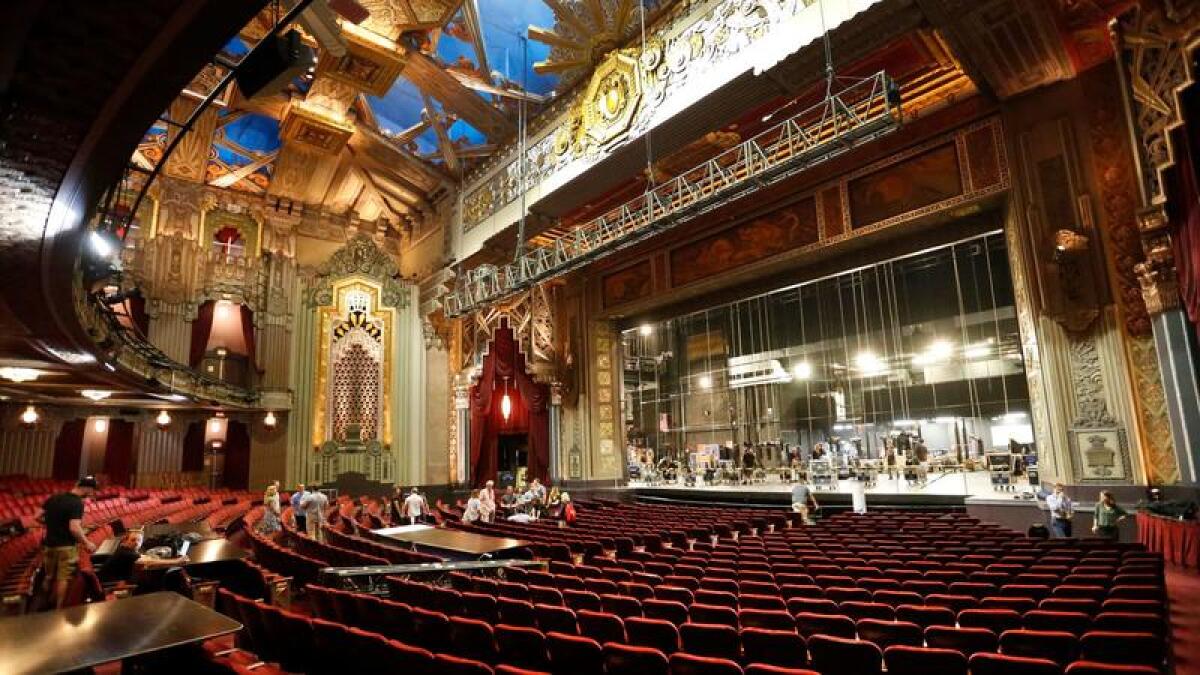
Why: Long before any show starts in this Art Deco gem, the drama begins.
What: The Hollywood Pantages Theatre opened on Hollywood Boulevard in 1930. Through the decades it has hosted movies, vaudeville shows, the Academy Awards (in the 1950s) and, for the last 40 years, live theater. “The Lion King,” “Wicked,” “The Book of Mormon,” “Hamilton” — all played here.
Since its last major renovation, in 2000, the 2,703-seat venue has been steeped in Art Deco details. The lobby alone is almost worth the price of admission, with grand chandeliers, star patterns in the ceiling and dramatic stairways at either end.
Outside, notice the sordid neon splendor of the Frolic Room bar’s sign next door (and possibly the beery scent of the Frolic Room itself). The storied corner of Hollywood and Vine is about 100 feet to the west and the Hollywood/Vine Metro stop is almost as close.
Where: 6233 Hollywood Boulevard, 6 miles northwest of downtown L.A.
How much: That varies widely. For the production of “Stomp” that’s due in April, 2018, seats are as low as $47. During the August-December run of “Hamilton” in 2017, resale prices often began above $300 per seat.
Info: Pantages Theater
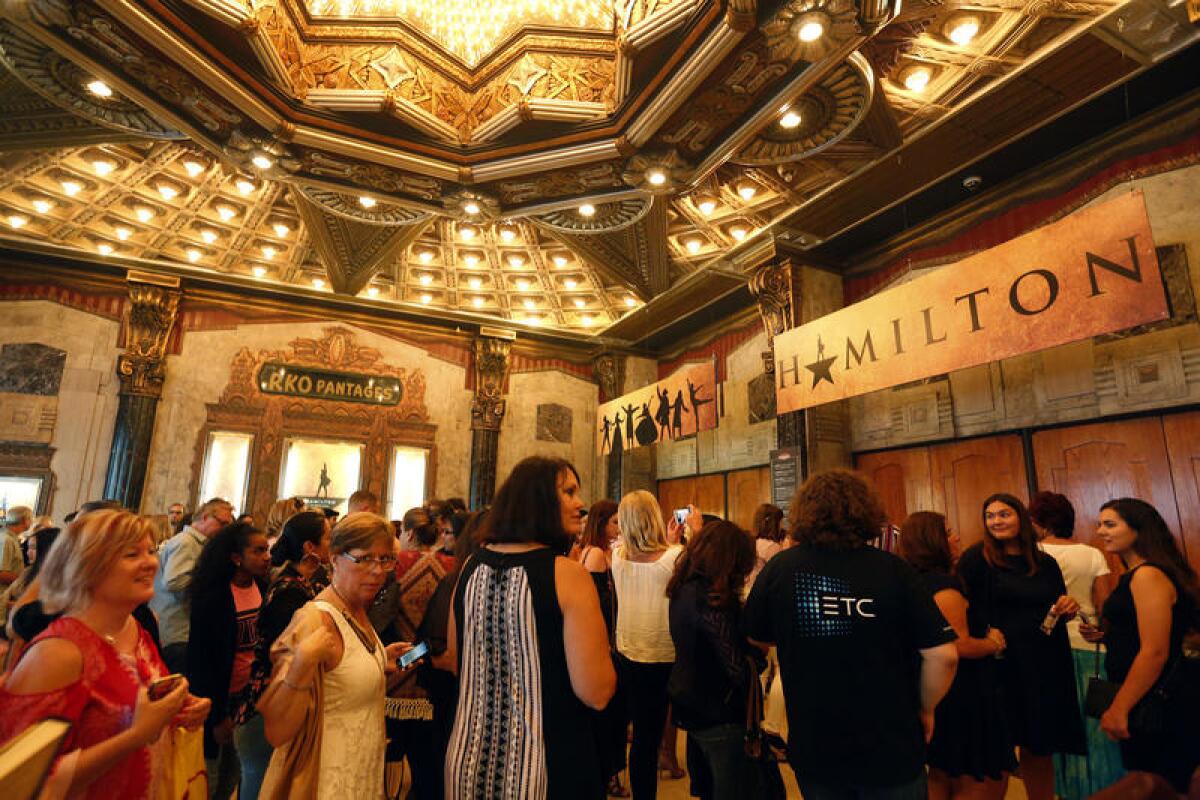
Stake out Union Square and see San Francisco on parade
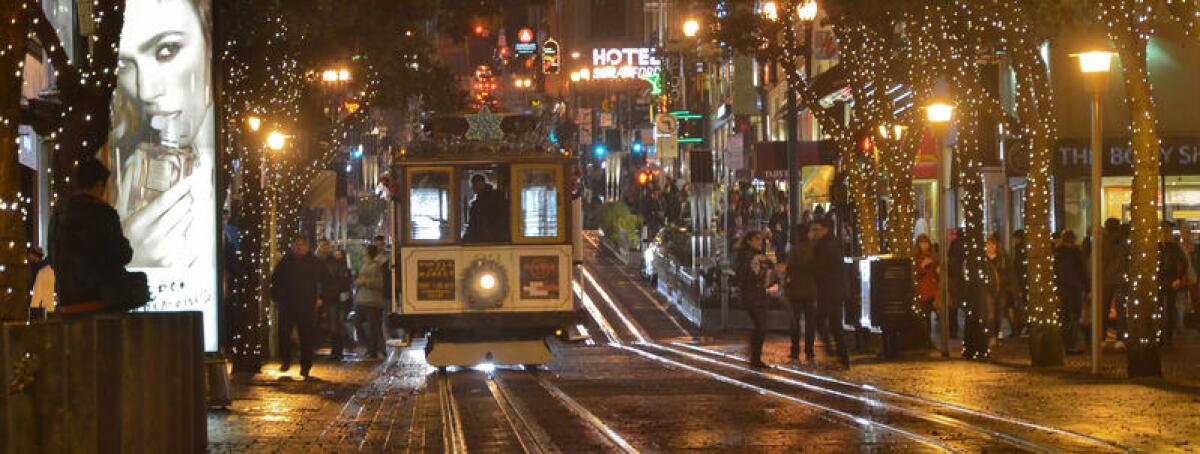
Why: High-end shoppers, scruffy buskers, baristas on break, kids, codgers, cops, robbers, jaywalkers and fast-talkers -- everybody shows up in Union Square sooner or later. Bring a hot drink, find a comfortable seat and drink it all in.
What: Union Square, which fills a single square block, is the epicenter of San Francisco tourism. It’s surrounded by a shopping district in which Macy’s vies with five other department stores (and dominates them all when it comes to holiday displays); the Westin St. Francis Hotel tends to high-dollar travelers and the Kimpton Sir Frances Drake tends to only-slightly-less-high-dollar travelers.
The square’s 2.6 acres (once a site of sand dunes) were set aside in about 1850, and its name came from the pro-Union demonstrators who massed there during the Civil War. After various updates through the years, the space has less grass than it once did, but more heart-shaped artworks (one at each corner) and more seats. and there’s a pricey parking garage underneath.
If you’re in the square after dark, there’s a good chance you’ll hear a street musician or even an entire band -- probably stationed at the busy northwest corner, close to the passing cable cars.
In winter the square puts up a massive Christmas tree and menorah, holiday lights and a skating rink (Nov. 1, 2017, through Jan. 15, 2018). In other seasons, you might find an art show, a free concert or a big tent signifying a private party to which you aren’t invited. No worries -- all those neighboring shops and department stores will be happy to have you.
Where: In the rectangle surrounded by Powell, Post Stockton and Geary streets, three blocks north of the Powell St. BART station and the Powell/Market cable car turnaround. It’s 381 miles northwest of downtown L.A.
How much: Free. Or $8,897 if your company wants to throw one of those private parties.
Info: Union Square
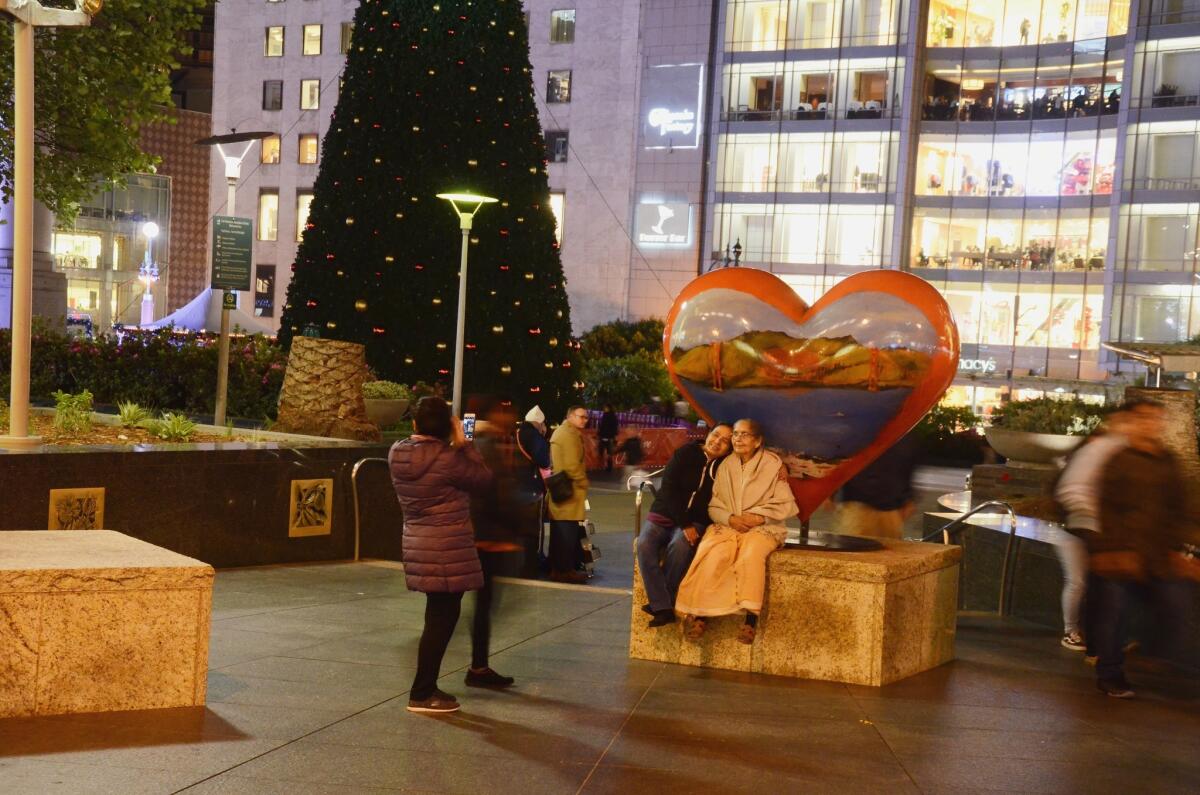
Feast on tofu in O.C.’s Little Saigon for a new view of what bean curd can do
Why: The people at Dong Phuong Tofu know their way around the soybean. In their headquarters in Westminster — a.k.a. Orange County’s Little Saigon — they make and sell a wide variety of tofu products, which play a starring role in Vietnamese cuisine. The inventory is so fresh that items are often warm on the shelves.
What: Dong Phuong’s top man, Tony Dang, started making tofu at the age of 7 in his native Vietnam. In 1991, he opened Dong Phuong Tofu in Westminster, selling to stores and restaurants across the Southland. Today the reach is nationwide — but thanks to the small grocery outlet next to the tofu-making facility, locals can still get the goods straight from the factory floor.
Besides the company’s own products, the store offers other specialty Asian items. Lining the shelves are Dong Phuong soy milk, tofu pudding and white tofu cake (in plain, mushroom onion and lemongrass chili varieties), packaged and ready to take home. Or try the tofu cake fried up and offered cafeteria style in the store. The tofu pudding, served with fresh ginger syrup or coconut milk, is especially alluring.
As you savor the silky smooth texture and freshness, remember that all tofu products at Dong Phuong Tofu are made with non-GMO soybeans.
Where: 15022 Moran Street, Westminster, 32 miles southeast of downtown L.A. Open daily, 7 a.m. to 8 p.m.
How much: From $1 for fried tofu to $3.50 for pandan-flavored tofu pudding.
Info: No website. You’ll need to call (714) 894-7002 or show up in person.
Visit historic Malibu Pier for a meal that may surprise you
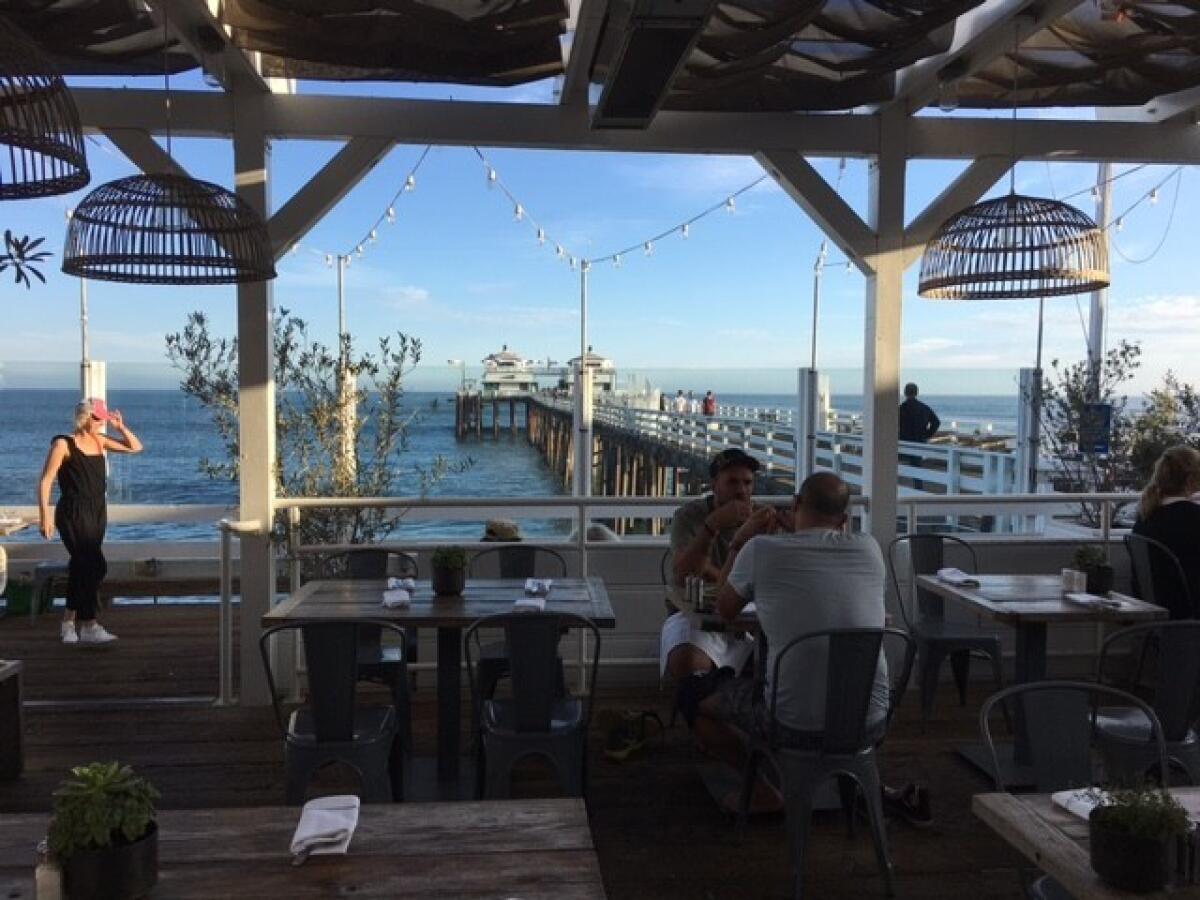
Why: The Malibu Pier is just what you’d expect from this small, wealthy, health-conscious community: No cotton candy, no amusement rides. Instead, it offers first-rate food in a setting that lets the surfers and sunsets entertain you.
What: The pier’s history goes back to 1905, when it was used to ship hides and produce from the surrounding ranches. It’s been knocked around plenty in all the years since, but like a prize fighter it keeps bouncing back.
The landmark pier was closed as recently as the 1990s, and reopened relatively recently, in 2008. Repairs are ongoing.
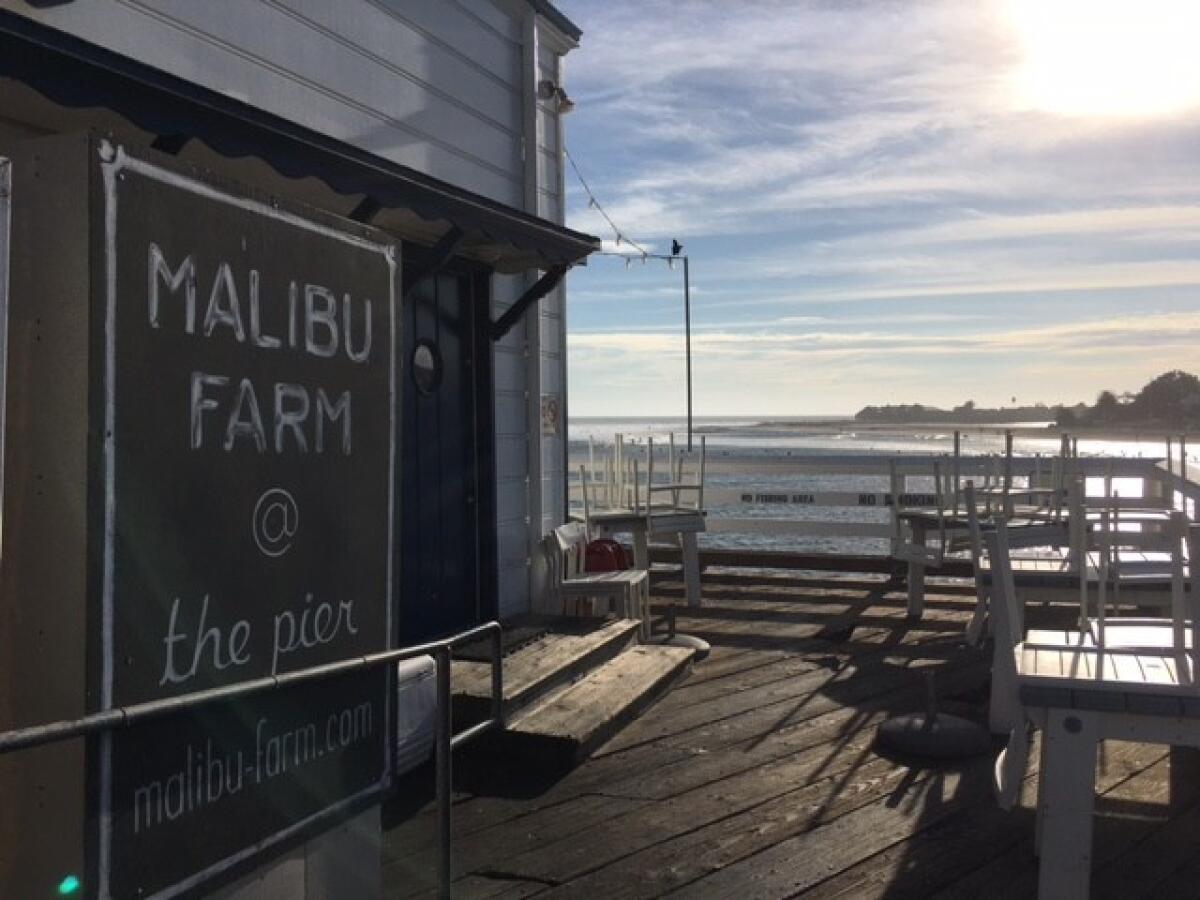
But the pier remains a camera-ready view spot on any visit to Malibu. Its most recent restaurant tenant is Malibu Farm, which runs full-service dining and bar at the base, and counter service at the end of the pier.
As with anything in Malibu, it is hardly bargain rate. Yogurt and granola breakfast will run you $10 and burgers lean toward 20 bucks.
Yet, unlike most pier food, which runs to corn dogs and popcorn, what you’ll get here is a carefully curated, healthy meal made with fresh local ingredients. Standout menu items include spaghetti squash lasagna and veggie paella.
Don’t rush inside, because the best tables are outside along the rails on the right side, where you’ll enjoy that hazy, bluish Malibu view. The bar faces the wrong way – toward the highway -- but offers up a pretty good selection of wines and craft beers.
It all makes for a memorable meal on this rustic, breezy, sun-splashed old pier.
Open daily, 6:30 a.m. to sunset.
Where: 23000 Pacific Coast Highway, Malibu, in Los Angeles County, 28 miles west of downtown L.A.
How much: Free
Info: Malibu Pier; Malibu Farm
Ride the subway in L.A.
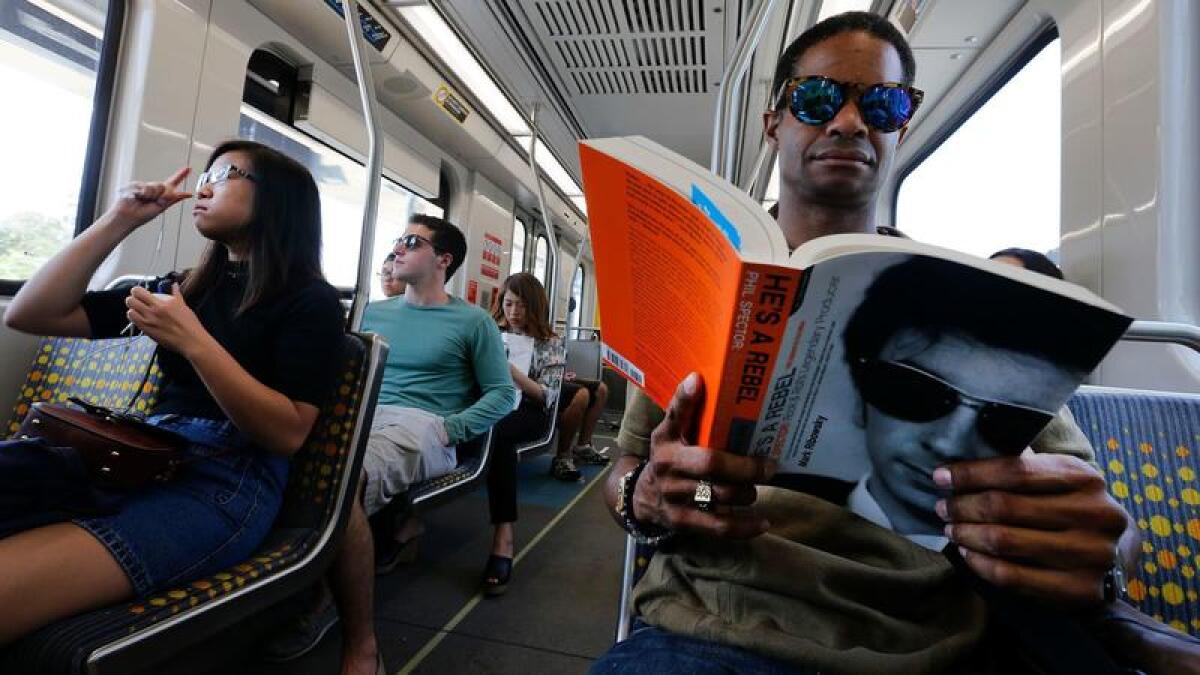
Why: While you were stuck in traffic, Los Angeles passed its Peak Automotive moment. So if you’re alert to where the L.A. Metro Rail system’s subways and light-rail cars can take you, you’re probably saving time, finding fun and recognizing the story of a great urban transformation. Take the Red Line from the San Fernando Valley to Hollywood and miss the crunch on the 101. Take the Gold Line from Chinatown to Pasadena and miss the crunch on the 110. Take the Expo Line from downtown L.A. to Santa Monica and miss the crunch on the 10. Whatever route you take, you’ll be joining a great urban transformation.
What: In 1993, the Metro people -- formally, the L.A. County Metropolitan Transportation Authority -- opened their first subway segment, a few miles of the Red Line between downtown and Hollywood. Now there are 93 light-rail and subway stations along 105 miles of track, including the beach-friendly Expo Line Santa Monica segment that opened in 2016. Bikes are allowed on Metro Rail trains any time (with a few rules, of course).
And there’s more coming. Between now and 2024, the Purple Line is scheduled to reach 9 miles west from Hollywood to Westwood, making for easy access to LACMA and UCLA in a zone often plagued by dismal traffic.
Where: As this map shows, much of Los Angeles County
How much: Standard fares on the Metro Rail system are $1.75 per ride or $7 per day or $25 per week.
Info: L.A. Metro
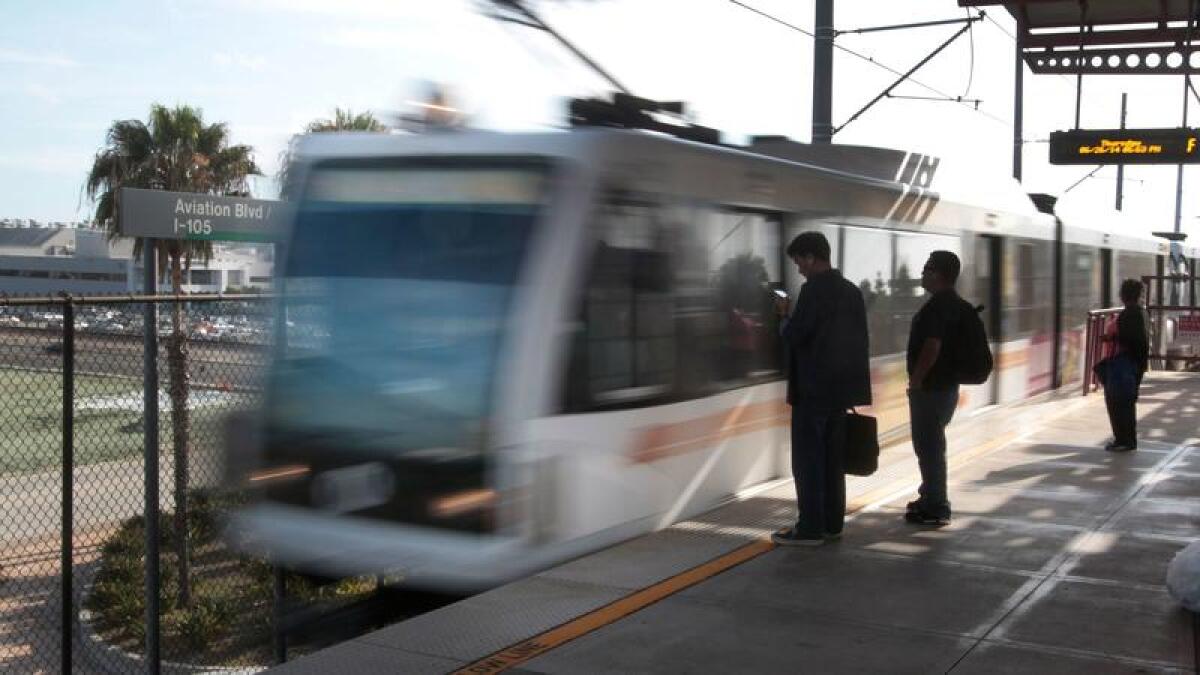
Roll strikes, saddle up and wage paintball war at Camp Pendleton, whether you’re a Marine or not
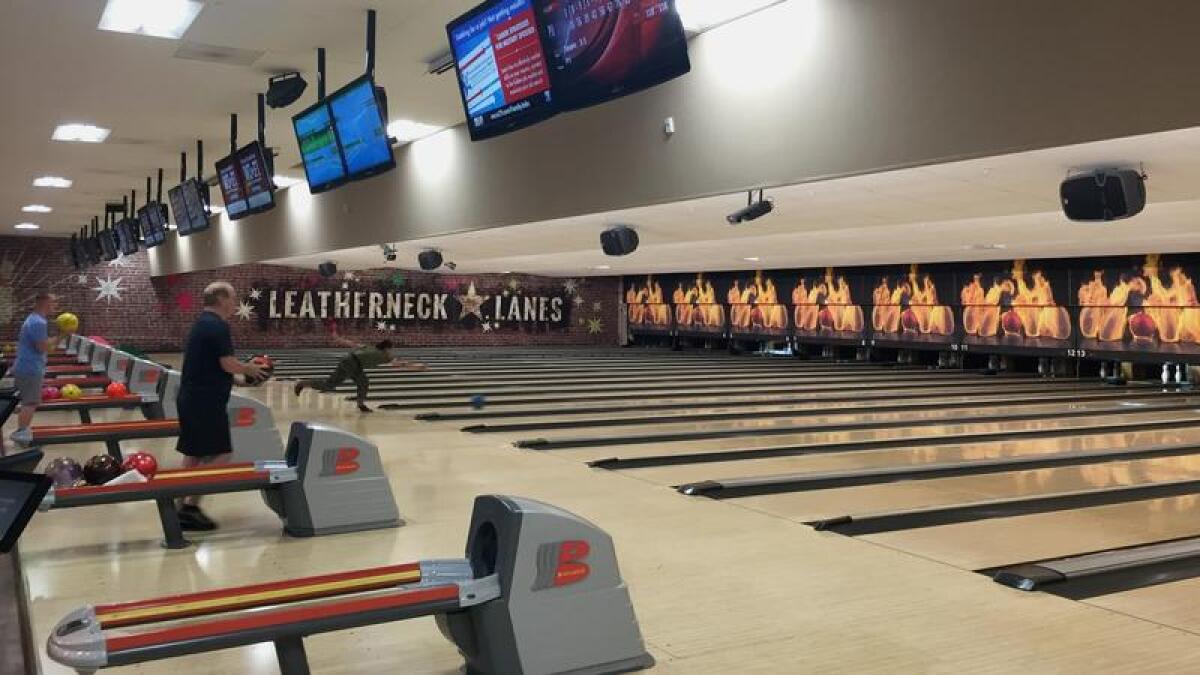
Why: From the wilds of western Fallbrook to the shores of Oceanside, this is the biggest Marine base on the West Coast. And it’s yours. As a civilian, you can bowl at Leatherneck Lanes, ride a horse from Stepp Stables, hunt, fish, golf and suit up for weekend paintball combat for ages 10 and up.
What: Camp Pendleton goes back to 1942. Most civilian Californians think of it as a vast forbidden zone that separates San Diego and Orange counties. And it does cover about 195 square miles of bush-covered coastal hills (and a few lakes). But with just a little advance planning, you can make parts of it your playground. What surprised me most was the chance to fight mock battles (using paintball gear) every Friday, Saturday and Sunday.
The paintball/Airsoft/Splatmaster territory covers more than 30 acres, including “two close-combat action houses with 15+ rooms, a village marketplace, and real military tanks and vehicles,” according to a promotional website.
But I didn’t have a platoon to play with, so I bowled. Leatherback Lanes is open daily with 40 lanes, a restaurant and rack after rack of balls, carefully sorted by color and weight. Taking advantage of midday discounts on a recent Wednesday, I paid a mere $2 to bowl a game in rental shoes.
To get on base, civilians are asked to fill out a form at least seven days in advance. But first-timers can often gain get in on shorter notice, so long as you call ahead and bring ID.
Where: The main entrance to Camp Pendleton is along Interstate 5 at the edge of Oceanside. Once you’re past the gate, the main road, Vandegrift Boulevard, will carry to you straight to both paintball and bowling.
How much: Bowling at Leatherback Lanes is $3-$6 per game, and it’s usually $3 to rent shoes. The paintball civilian Alpha package includes gun and mask rental and 200 rounds for $44.
Info: Camp Pendleton Base Access

Search the Santa Cruz Beach Boardwalk for vampires
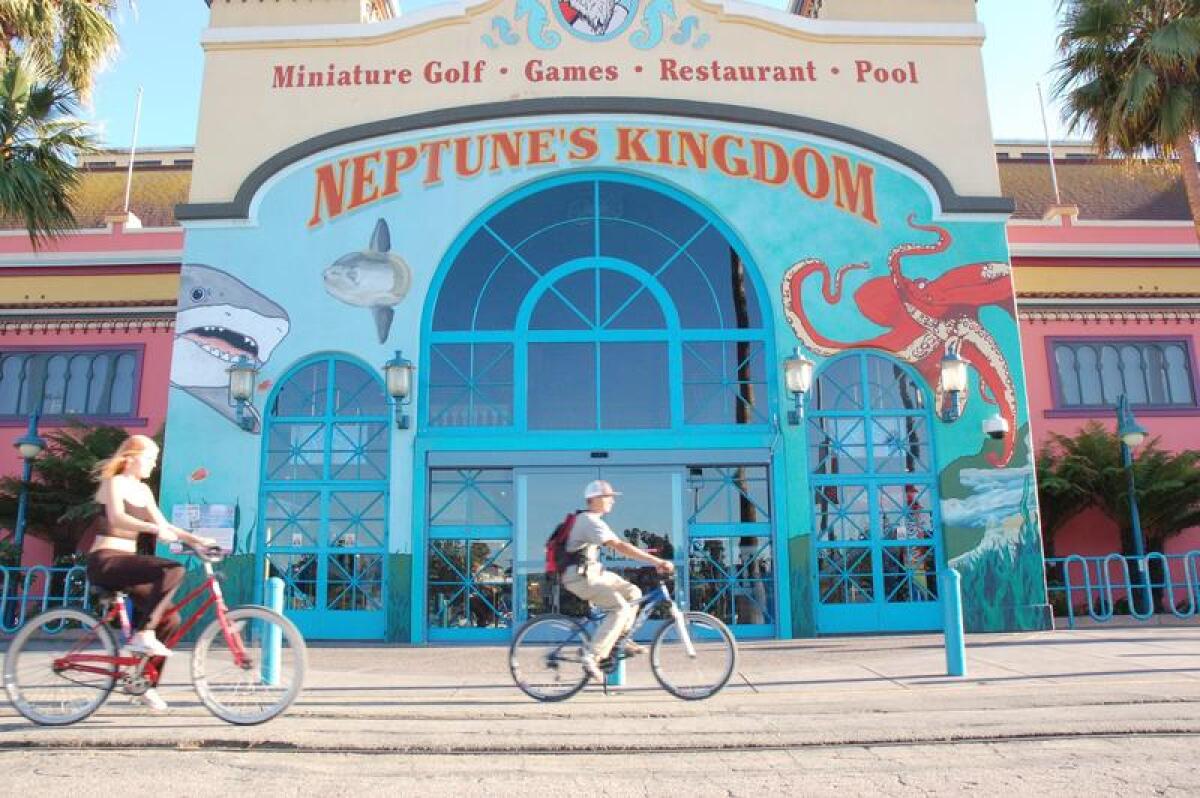
Why: The Santa Cruz Boardwalk is a throwback to the days when amusement parks peppered the beaches of California. Now only a few are left, often in barely recognizable form (Belmont Park in San Diego, for instance). But Santa Cruz, whose first casino opened in 1904, still has some gritty magic going on.
What: The boardwalk’s attractions include the wooden Giant Dipper roller coaster (opened in 1924); about three dozen rides and attractions; assorted games; wacky snack food; and a carousel from 1911. It’s all arrayed along a mile of sandy beachfront, with the Santa Cruz Municipal Wharf (whose pilings are beloved by sea lions) about 1,000 feet to the west.
Some consider this boardwalk the oldest amusement part in the state. The coaster and carousel were declared national historic landmarks in 1987, the same year that the film “The Lost Boys” made splendid and disquieting use of the site as a venue for teenage vampires. These days the movie is a cult favorite; Visit Santa Cruz in 2017 published a “Lost Boys” locations map.
Rides are open daily from Memorial Day through Labor Day and on weekends and holidays the rest of the year. The arcade, miniature golf, laser tag and bowling stay open daily year-round. (Like the rest of Santa Cruz, it gets chilly.)
Where: 400 Beach St., Santa Cruz, 76 miles south of San Francisco, 341 miles northwest of downtown L.A.
How much: An all-day rides wristband costs $36.95. It’s $7 to ride the Giant Dipper.
Info: Santa Cruz Beach Boardwalk
Walk in the footsteps of Hawkeye and Trapper John on ‘MASH’ hike in Calabasas
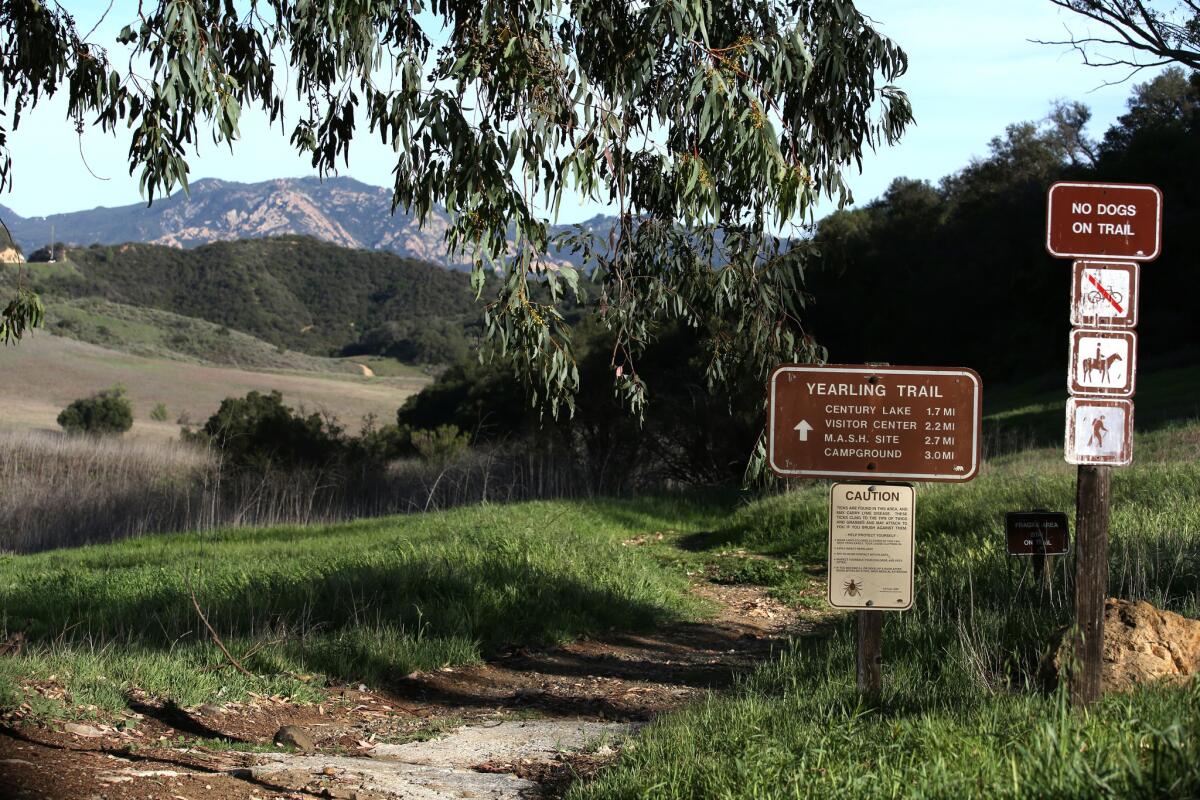
Why: You can almost hear the “MASH” choppers coming over the ridge at Malibu Creek State Park, which features hiking trails to the show’s outdoor site, shady canyons and plentiful creeks and ponds.
What: Malibu Creek State Park, in the Calabasas area north of Los Angeles, offers a vast selection of hiking options, including some that touch TV history and some ranch buildings once owned by Ronald Reagan.
With craggy cliffs, creeks and cool, dark ponds, it invites exploration, and probably appeals more to children than most trail systems do. Along the way, look for bundles of mistletoe hanging from the sycamores.
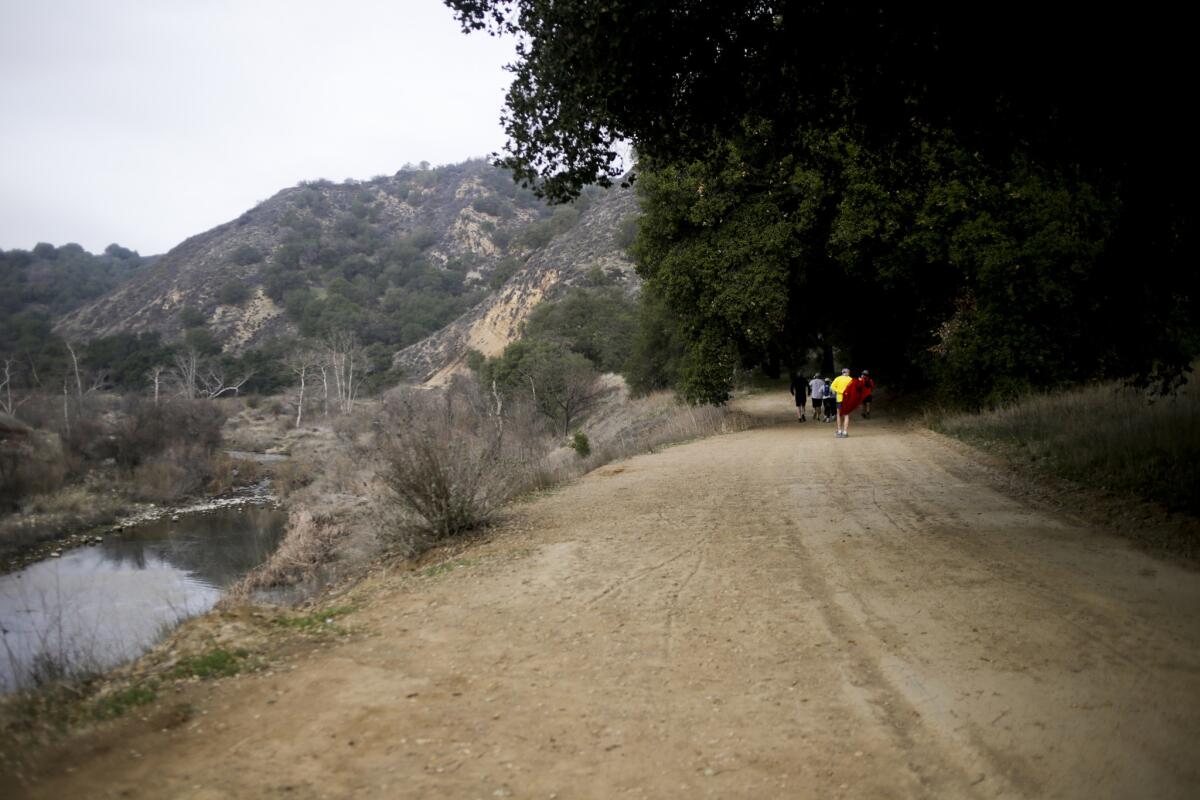
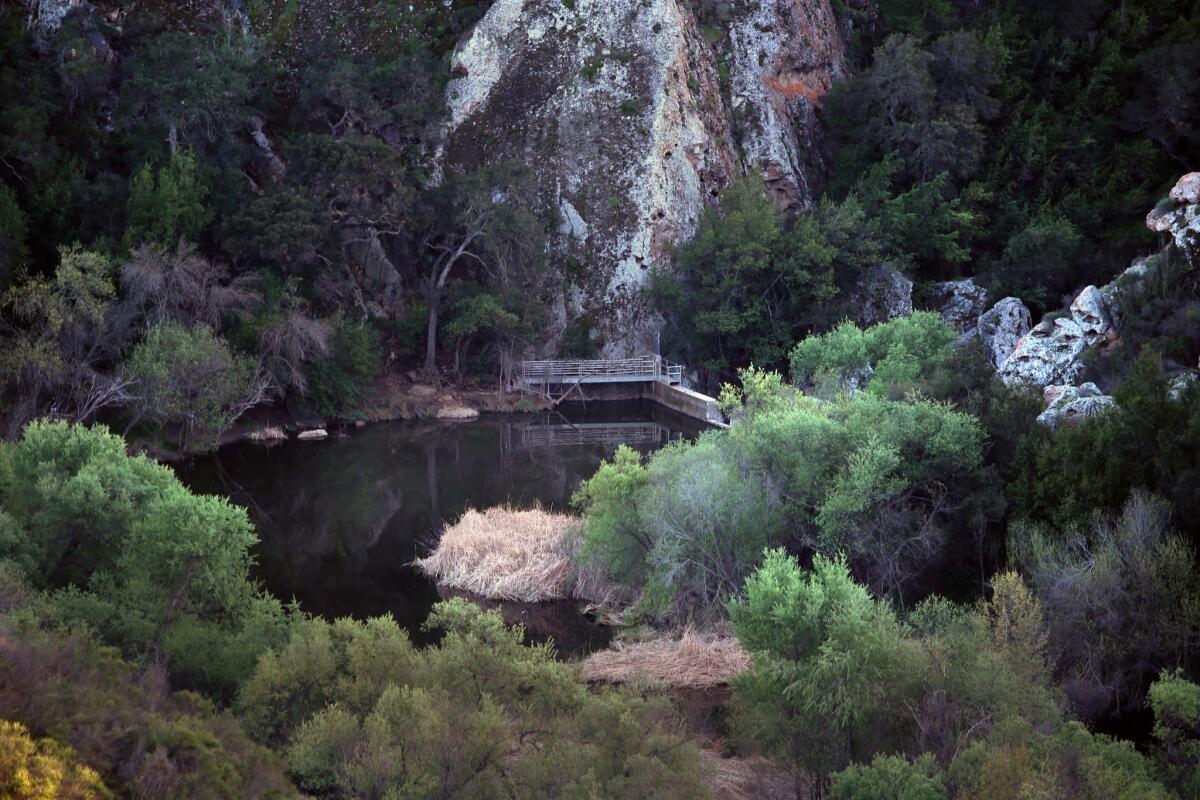
For a solid workout, take Crags Road, and walk into a shady valley toward Forest Trail. On the left, the reservoir. Continue on to the filming site for “MASH” (1972-1983). The distance from parking lot to the TV site is about two miles, much of it uphill.
Once there, explore the remnants of one of television’s most popular shows, including an old jeep and an ambulance, in a setting that stood in for the show’s Korean War exteriors.
On the way back, veer to the right for a tour of Malibu Creek’s water features. The dark ponds are lush and shady and a huge relief from the afternoon heat. It’s a wonderful location for a game of hide and seek, or just a picnic and a nap.
As if that’s not enough, Malibu Creek is also the site of SoCal’s toughest trail run. Bulldog, a fire road located entirely inside the park, climbs nearly 1,800 feet over almost 4 torturous miles. The entrance to Bulldog is off the main trail in the park, Crags Road, just past the “MASH” site.
The park has a rich history, and was once a busy center of Chumash life. The park was also used to film “Planet of the Apes,” and much of the land was donated by Bob Hope, Ronald Reagan and 20th Century Fox.
Where: 1925 Las Virgenes Road, Calabasas, Calif., 34 miles west of downtown L.A., in Los Angeles County. From the 101, exit on Las Virgenes Road, head south to the park entrance just past Mulholland Drive.
How much: Parking $9 for three hours, $12 all day. Note: No dogs on trails.
Info: Malibu Creek State Park
Line up at Kogi BBQ, Korean-Mexican queen of L.A. food truck culture
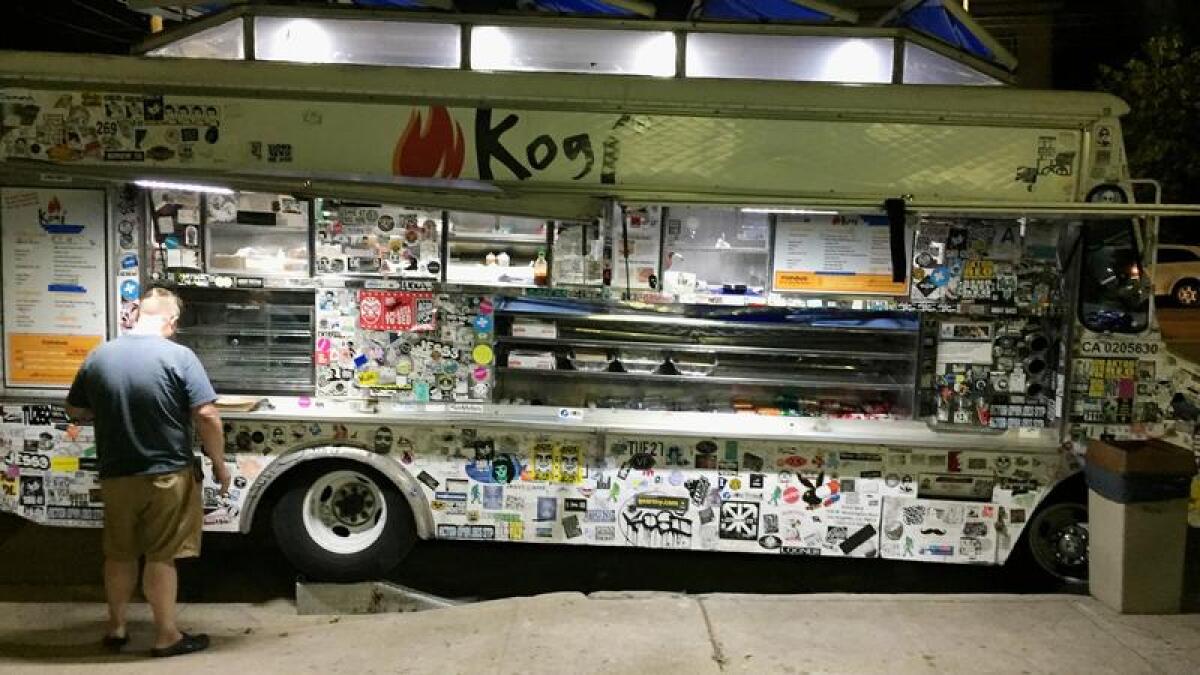
Why: The food, a spicy marriage of Korean and Mexican cuisine, tastes great. And the backstory is the stuff that contemporary California is made of: Young buddies hatch a scheme, rig up a truck, start tweeting and build an empire by fusing Korean, Mexican and web cultures. Now co-founder Roy Choi is one of the city’s most famous chefs.
What: Born in 2008, the Kogi empire now includes three trucks (code names Roja, Verde and Naranja, which roam the coast, the valleys and Orange County); three taco stands; and three Chego! restaurants. The blackjack quesadilla is a potent introduction to the Kogi way: flour tortilla, pork bellies, Korean chili paste, cheddar cheese, Jalapenos and a host of supporting ingredients.
As Times restaurant critic Jonathan Gold writes in his latest list of 101 favorite L.A. restaurants, Kogi “is cheap, unbelievably delicious and unmistakably from Los Angeles, food that makes you feel plugged into the rhythms of the city just by eating it.” Accordingly, in October when L.A.’s Eric Garcetti made the traditional mayoral World Series wager with his Houston counterpart, he offered up Kogi BBQ and Golden Road brew if the Astros should win.
Where: The trucks keep moving. A Twitter feed, @kogibbq, keeps 152,000 followers in the loop.
How much: $8 for a Blackjack quesadilla, $2.50 for a spicy pork taco.
Info: Kogi BBQ
Test your luck or raid the buffet at Pechanga, the biggest Indian casino in California
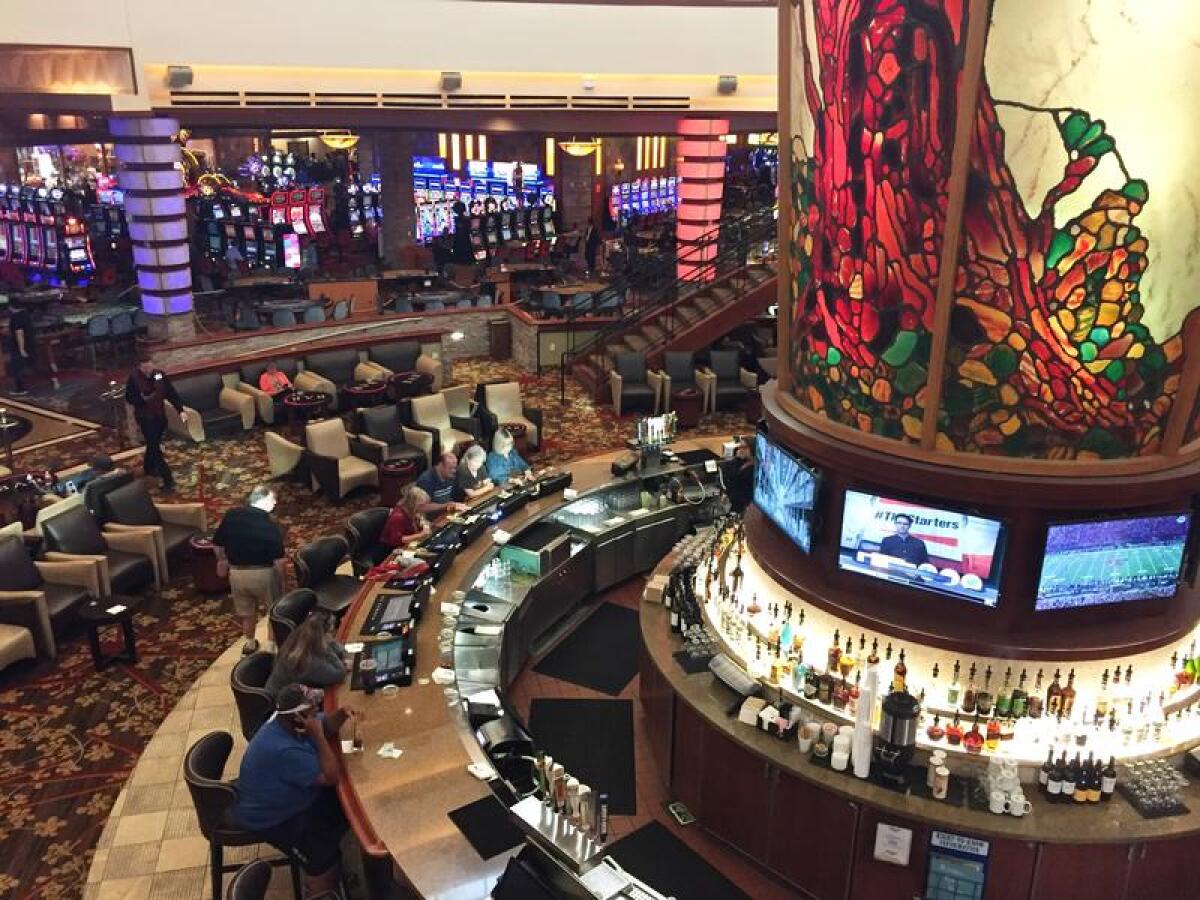
Why: Because the Pechanga casino, by some measures the largest Indian gambling resort in California, will give you that Vegas sensation without requiring a drive into Nevada. Or because the Pechanga resort is a milestone in the long, dysfunctional relationship between California’s native peoples and its colonizers.
What: You name a game, they offer it. They bring in performers such as Smokey Robinson, Ali Wong and the Brian Setzer Orchestra. They call bingo in a vast upstairs room full of blue and green fiber optic lights. It’s Vegas -- except that you’re in Riverside County, among the rock-studded hills, wine country and Temecula suburbs. And in the display windows along the casino walls, you see baskets, pots, bows, arrows, arrowheads and harsh old photos -- reminders that this is a reservation where life was hard.
You probably won’t quintuple your money (as I did in 20 seconds at the slots). But you will be reminded just how much the world has changed since 1884, when Helen Hunt Jackson decried Indian suffering in her novel “Ramona;” and since 1987, when the nearby Cabazon and Morongo bands of Mission Indians won the U.S. Supreme Court decision that effectively launched casino gaming on California tribal lands.
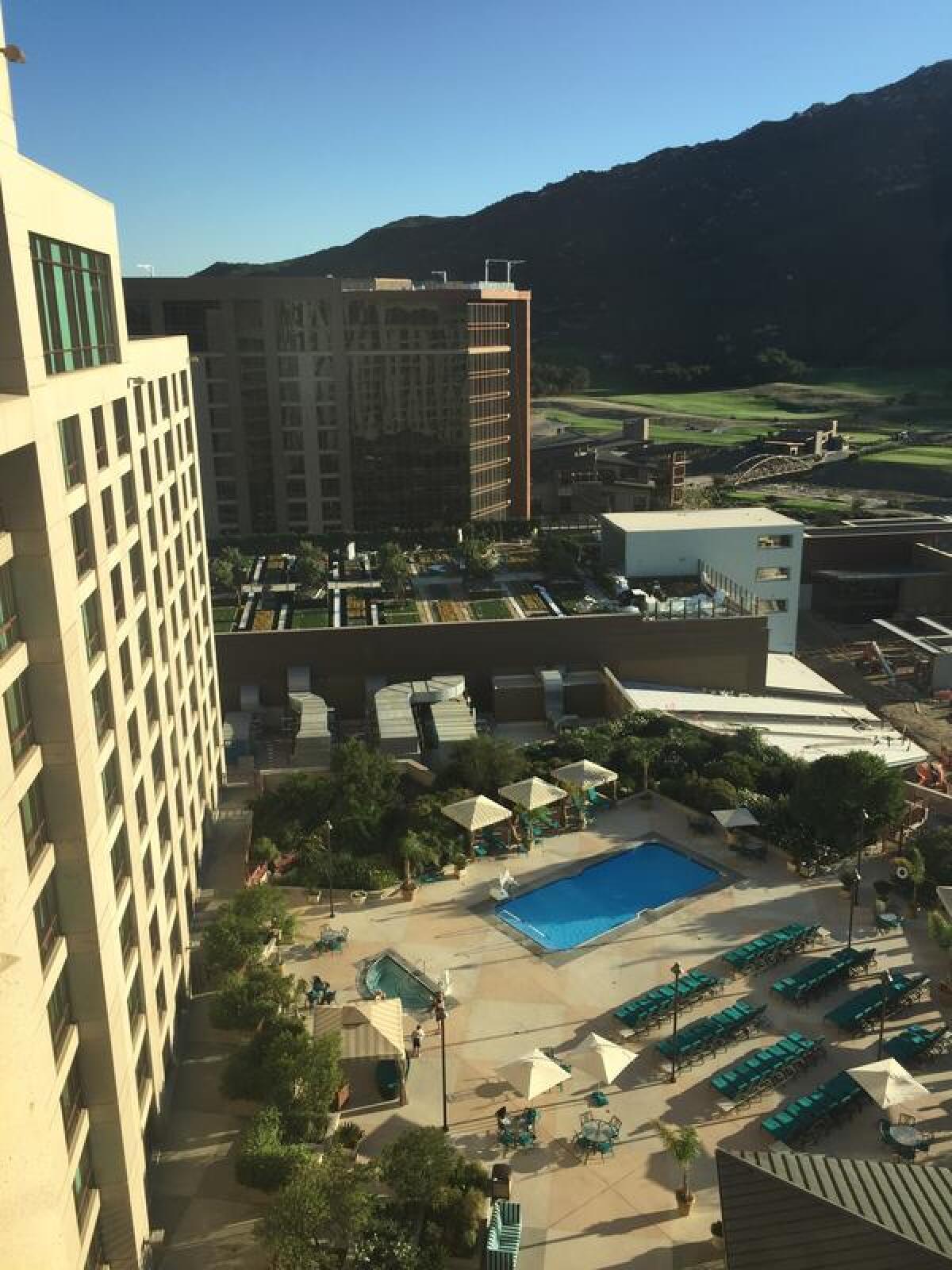
That precedent is why the Pechanga resort stands today, lights blinking, bells ringing. It has about 4,300 slot machines, more than 154 tables games, that 700-seat bingo room upstairs, a golf course, more than a dozen bars and restaurants and 522 hotel rooms. And an additional 568 rooms and a new spa and pool complex are due to open in late 2017 or early 2018.
Though poverty and poor health remain challenges in the state’s native communities, Indian casinos (including the Morongo Casino outside Palm Springs) rake in an estimated gross of $7.9 billion yearly in California and northern Nevada.
Where: 45000 Pechanga Pkwy., Temecula, 90 miles southeast of downtown L.A.
How much: The buffet dinner (prime rib, pizza, pasta, Spanish rice, oysters, Chinese broccoli, smoked salmon, grilled quail, collard greens, etc.) is $26.99-$32.99, depending on the day. Rooms for two typically start at $169 on weekday nights, about twice as much on weekends.
Info: Pechanga Resort & Casino
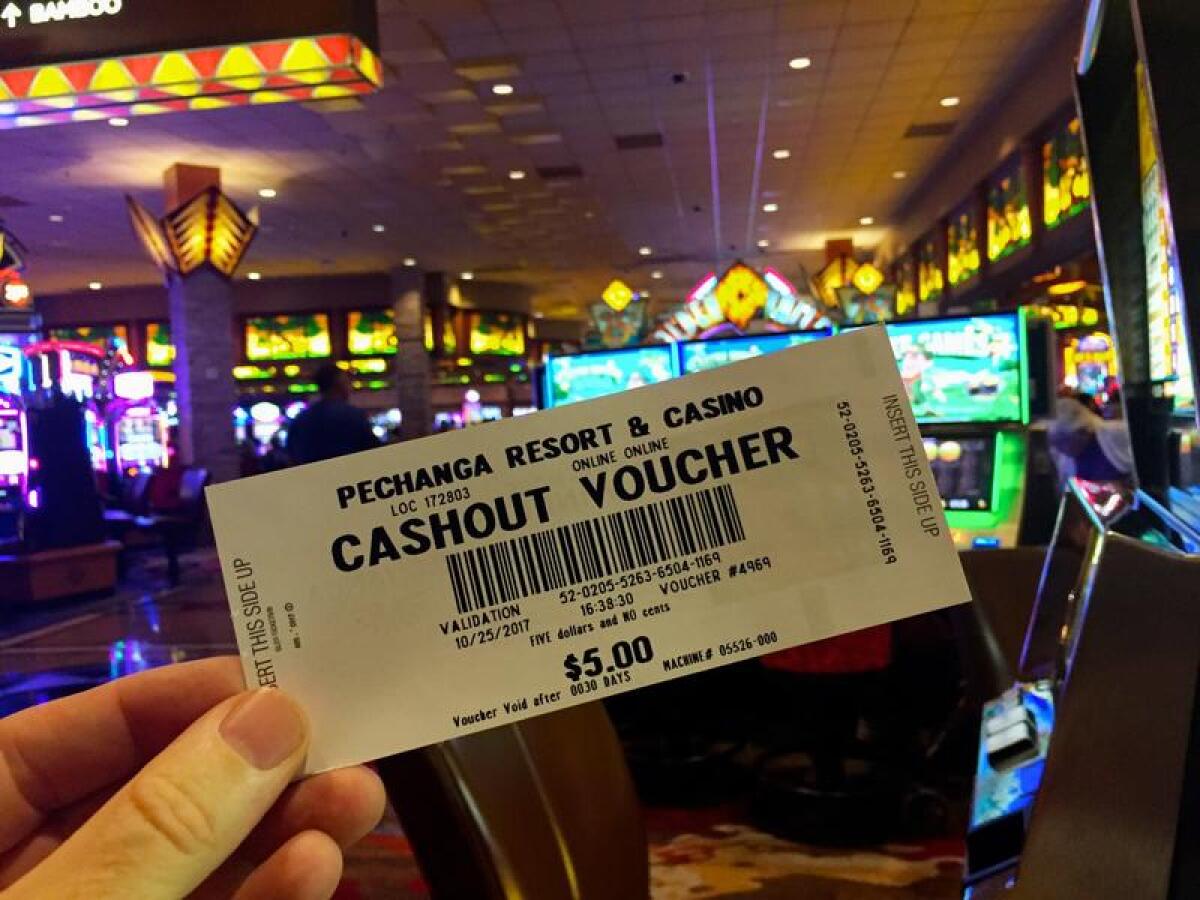
Gobble pie while autumn colors the San Diego County mountain town of Julian
Why: Because who says pie isn’t a meal? Apparently many of us can eat pie all day long, especially when visiting the apple-centric and scenic hamlet of Julian.
What: This might be a small spot in the mountains of San Diego County, but there’s a lot going on. You could explore mining history (gold was found here in the 1870s and Eagle Mining Co. offers tours); take an apple or pear orchard tour; hike and picnic amid the pines and manzanitas; or shop collectibles and crafts as you stroll past historic homes and old-time stores. But for some of us, Julian is fundamentally a chance for a dessert tour.
In the early 1900s, growers found Julian a fine place for apple trees. Today, it’s all about the products made with apples – especially the pie.
Walking the compact downtown, it’s hard to pass up delectable scents wafting from the bakeries. Among our favorites: the apple mountain berry crumb with cinnamon ice cream at Julian Pie Co. and the sugared pie crust cookie (which reminded my spouse of the ones his mother made) at Apple Alley, a homespun bakery and cafe.
Where: About 4,200 feet up in back-country San Diego County, 138 miles southeast of downtown L.A. The town is reachable from north and south by State Route 79 or from the vast Anza-Borrego Desert (to the east) on State Route 78.
How much: How hungry are you? Whole pies (fresh or frozen) range from about $15 to $25.
Info: Julian Chamber of Commerce
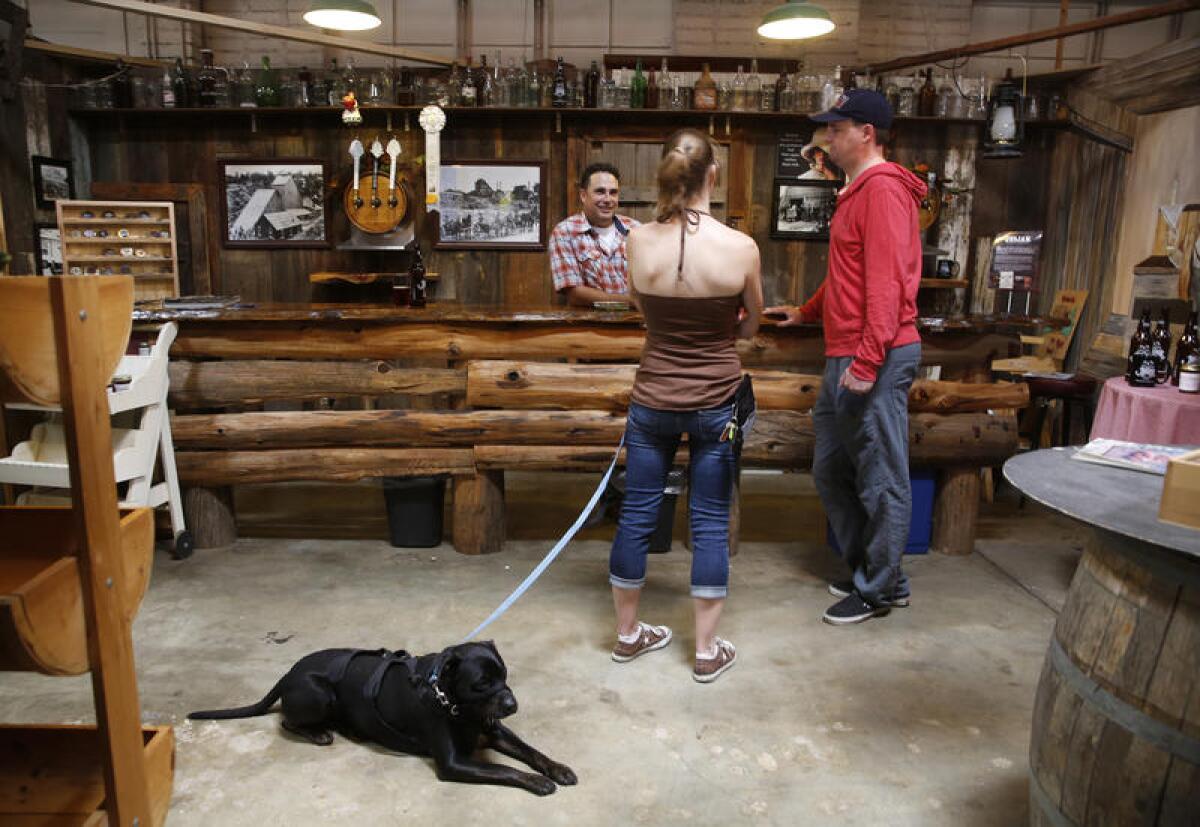
Slow down at Tassajara, a Zen retreat in the Santa Lucia Mountains
Why: Mindfulness is hard, monkey-mind the bane of modern life. Constant interruptions from work, families and phones keep us from our true selves, or so the mystics say. But what about – wait, hold on a second, oh yeah – just completing a thought without distraction? Some getaways promise peace and quiet. Tassajara, the famed Zen center located deep inside the Santa Lucia Mountains, delivers. Its zendo, cottages, baths and trails are a tonic for what ails us.
What: From late April or May through September, visitors join students and monks who live year-round at the end of a 14-mile dirt road that rises out of the Carmel Valley, snakes along a precipitous ridge line and drops into a beautiful sycamore- and oak-clad canyon. It’s Shangri-La with a California twist. Reservations are made through the San Francisco Zen Center, and while the atmosphere may seem a little forbidding (no cell coverage, limited electricity, a modest dress code, no pets), the staff is friendly and hospitable. The 2018 season will be April 26-Sept. 9.
Accommodations range from cottages of river stone to clapboard cabins, from a yurt to a dormitory with communal dining. (Tassajara is famed for its breads and lavish vegetarian fare.)
Time slows inside the canyon as the sun clocks from east to west. Guests wander shady paths from the meditation hall to the swimming pool, from a spacious yoga studio to the Japanese-style bath house. Daily Zen services, instruction and occasional lectures are open to everyone. Special retreats – classes on creative expression, spirituality, ecology and yes, mindfulness – are offered throughout the summer season.
Where: Tassajara is located at the end of the Tassajara Road, which begins in Jamesburg, located off G16, the county route running between Carmel and Highway 101. Four-wheel-drive vehicles are recommended, and a shuttle van is also available for guests who don’t want to make the hourlong drive.
How much: Most rooms for two run $251-$446; rates vary by day of the week and occupancy. There are also dorm rooms and cabins that accommodate up to six guests. The day use rate is $34 per adult.
Live out your L.A. Midcentury Modern fantasy in an iconic Case Study house
Why: Now you can immerse yourself in the Midcentury Modern house that famed photographer Julius Shulman vaulted to icon status, a symbol of 1960s sophistication. His alluring black-and-white photo shows two well-dressed young women lounging in a glass-walled living room while the house appears to precariously perch on the edge of a mountain.
What: Pass through the front door of architect Pierre Koenig’s Stahl House — also known as Case Study House No. 22 — and prepare to gasp. Before you is a dazzling view that sweeps uninterrupted across the Los Angeles basin, from downtown L.A. to Santa Monica Bay and, on a clear day, beyond to Catalina Island. Laid out immediately at your feet is a courtyard consisting of a sleek, angular pool surrounded by smooth concrete. This is the first “room” you enter.
Wandering around the rest of the site doesn’t take long. It’s a small two-bedroom/two-bathroom. What does take time is absorbing the visuals of the place. The structure is post-and-beam but built with steel (instead of wood), glass and concrete. Because most of the walls are windows, it makes for jaw-dropping panoramic views and light-filled rooms. My suggestion is as soon as you finish exploring the place, take a seat somewhere and just gaze for as long as you possibly can. Then exhale. It’s tranquil up there.
Koenig, the man behind this transparent home, was a Northern California boy who studied architecture at USC. On his way up to modernist stardom, he met with Clarence “Buck” Stahl, a family man who had made an international-style model of a house he wanted built on his West Hollywood hillside property. Koenig was natural fit for the job with his predilection for affordable, industrial materials. He was also a risk-taker — willing to take on a site some considered unbuildable. In 1960, the home was completed. Today, it’s considered a masterpiece of Midcentury Modern design.
Tours take place three times a day: mid-afternoon, late afternoon and evening. The owners allow only a small number of guests per visit. A docent is there to answer questions and inform.
Where: 1635 Woods Drive, Los Angeles, about 200 yards north of the Chateau Marmont Hotel on Sunset Boulevard, about 10 miles northwest of downtown L.A.
How much: Tickets run $35-$90 depending on what time of day you attend a tour and with how many people. Demand is high, so schedule your tour at least eight weeks in advance, especially during the summer months. Also, be ready for some stiff restrictions on photography.
Info: Stahl House
Eat well on the edge of Malibu, with a pelican’s view of the coast
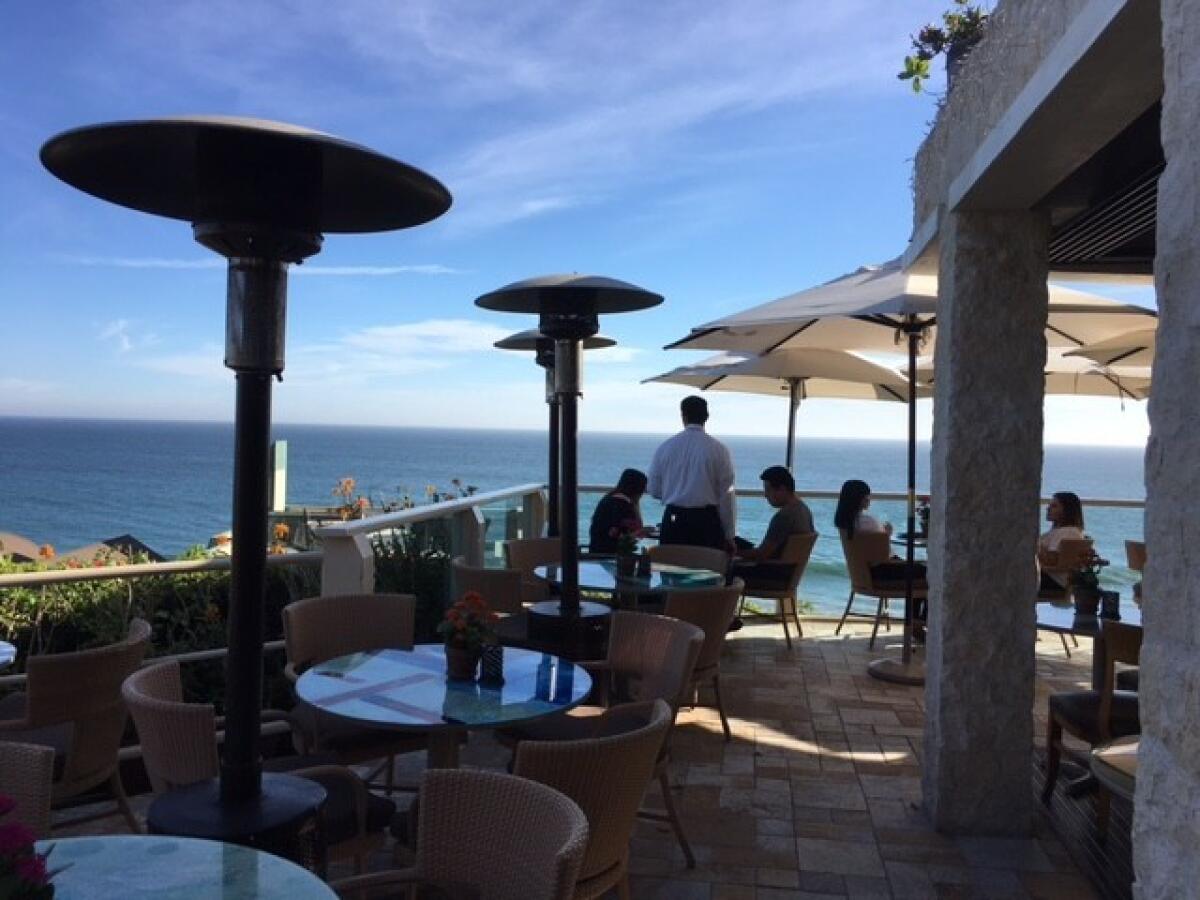
Why: It’s amazing how few L.A.-area restaurants celebrate the outdoors. Geoffrey’s in Malibu does. There’s hardly a bad table in this special occasion venue, where the ocean is almost as close as your wine glass.
What: A little fancy, yet hardly stuffy, Geoffrey’s has long been a go-to Malibu restaurant for anniversaries, proposals, birthdays and wedding showers.
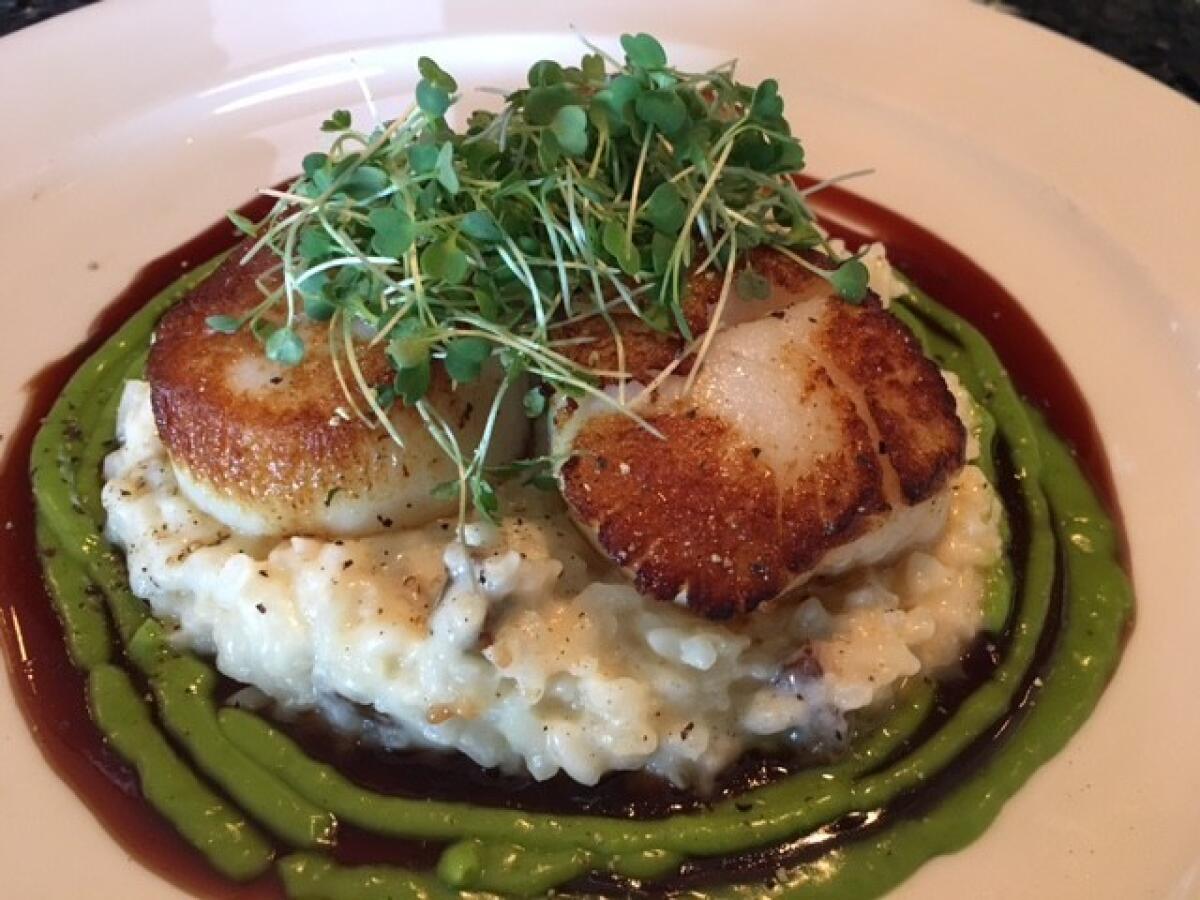
The patio restaurant is super busy in summer and over the holidays, making a warm November day an excellent time to go for a leisurely lunch – it stays open through the afternoon, with a brief pause from 3:30 to 4 p.m., as it resets for dinner. But linger at your table; this isn’t a place to rush you out.
At dinner, gas pits light up the night. On this cinematic stretch of the northern Malibu coastline, in the afterglow of a California sunset, with the fire dancing nearby, there’s hardly a more romantic getaway.
The cool Pacific chills the evening, so bring a jacket or sweater. If you forget, your server will offer a blanket. It makes the restaurant open to the elements and cozy at the same time.
What to order? Geoffrey’s offers a modest but interesting menu, served in satisfying portions: paella, steaks, seafood. The kitchen is quick, and scallops come out sizzling -- big and round as your coffee cup, on a bed of foie gras risotto. The crème brulee, big enough for two, arrives over a chocolate hazelnut base.
Where: 27400 Pacific Coast Highway, Malibu, Calif., about 35 miles west of downtown L.A.
How much: Lunches from about $15, but most $25-$30. Dinners from $28, but most entrees around $40.
Info: Geoffrey’s
Peer back into history and into the mind of genius at Casa del Herrero in Montecito
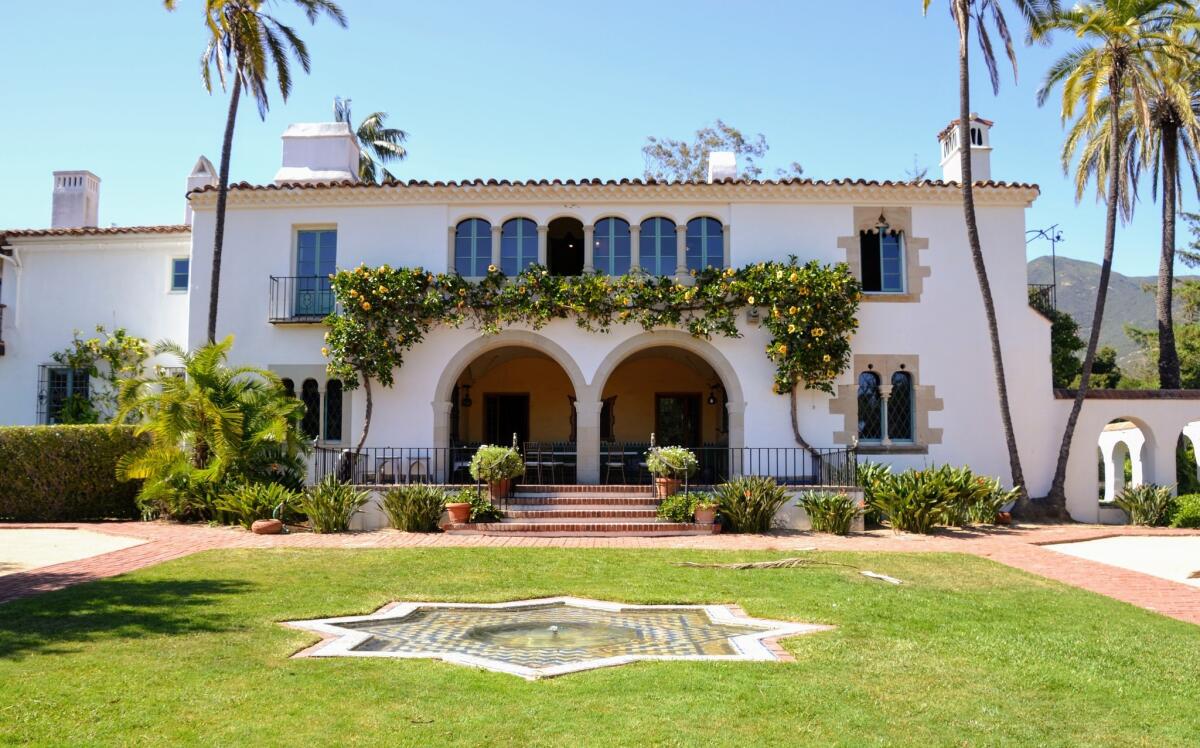
Why: If you need to be convinced that the delight is in the details, a visit to Casa del Herrero in Montecito will make a believer out of you. If you’re already a believer, you’ll be in your element.
What: Casa del Herrero (House of the Blacksmith), a 1925 home designated a National Historic Landmark in 2009, lets you peek into California, Spanish and Moorish homes and history. George and Carrie Steedman (pronounced sted-man) of St. Louis decamped to build their Spanish Colonial Revival dream house on 11 acres. If its design looks familiar, it’s because architect George Washington Smith designed nearly six dozen homes and some commercial buildings in the area. Their collaboration was like genius squared.
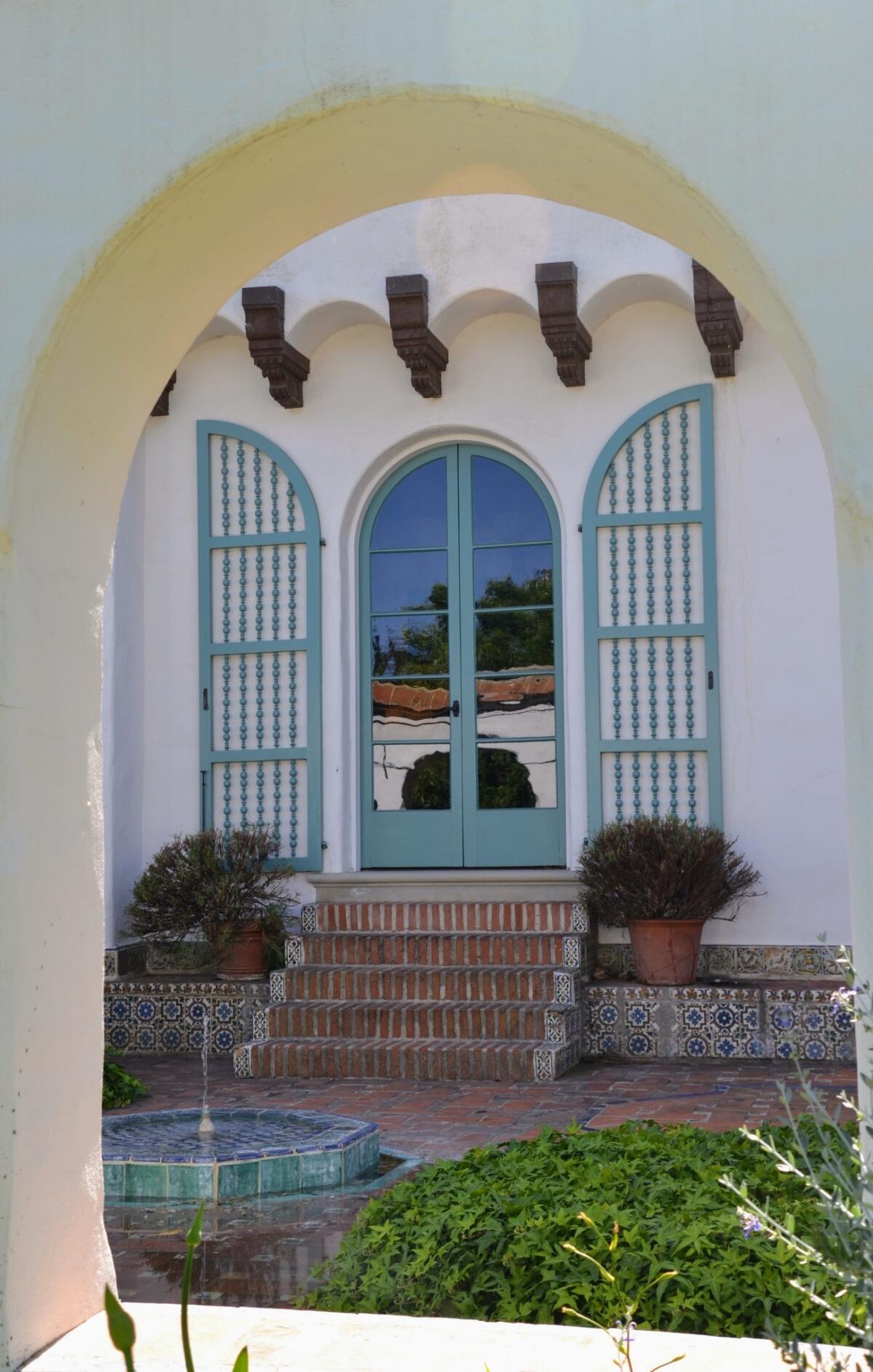
The courtyard entrance, where a Spanish-tiled fountain gurgles, brings visitors to the front of a house that looks disappointingly plain. Not to worry. Open the door and you’re transported to southern Spain and its Moorish influences. The rooms reflect an Iberian shopping spree that filled the house with 13th and 17th century furnishings, tapestries and more.
Not all the objects could be used for their original purpose, so parchment pages from a 15th century Gregorian chant choir book became lampshades; a door designed for a sacristy in a small town outside of Seville, Spain, goes to a linen closet.
The living room adheres to the notions of entertaining not in the 1920s but in Spain: Chairs line the walls, and tables in the middle are used for refreshments. It is no wonder the Steedmans did much of their entertaining outside.
The gardens — the outdoor rooms, really — reflect a panoply of influences, some European, some Californian, some practical and some aesthetic, and they provided ample floral fodder for Carrie Steedman, whose more than 300 flower-designing ribbons hang in an area her husband set aside for her in his workshop.
George Steedman’s genius is most evident in that workshop, his version of a man cave. His fortune came from manufacture of munitions in World War I, and his abilities with metal translated into the creation of numerous touches, including finials he copied, then cast here; silver chargers used in table settings that he created and engraved; a barbecue grill that could be disassembled and reassembled for easy transport to the back grounds for a cookout. House of the Blacksmith indeed.
How much: $25 a person; children 10 and older are allowed. Tours by reservation (which can be done online) at 10 a.m. and 2 p.m. Wednesdays and Saturdays.
Where: 1387 E. Valley Road, Montecito, about 95 miles northwest of downtown Los Angeles.
Info: Casa del Herrero
Pay respects to Liz Taylor, Walt Disney at this glitzy graveyard to the stars in Glendale
Why: This is one of the grand cemeteries in the world -- in setting, in scope, in star power. Step inside Forest Lawn Glendale and honor the memories of Elizabeth Taylor, Walt Disney and Jimmy Stewart, among dozens of other famous names.
What: California in spirit, with wide lanes and sunny vistas, Forest Lawn Glendale is a far cry from the grim graveyards seen in most places.
The 300-acre cemetery dates to 1917 when Hubert Eaton took it over in hopes of celebrating eternal life. It hosts funerals, art shows and weddings. Ronald Reagan married Jane Wyman in one of its chapels.
Grab a map from the info booth as you enter the lush and hilly cemetery. Out of respect for privacy, the map will not guide you to the stars’ graves, but other resources offer maps.
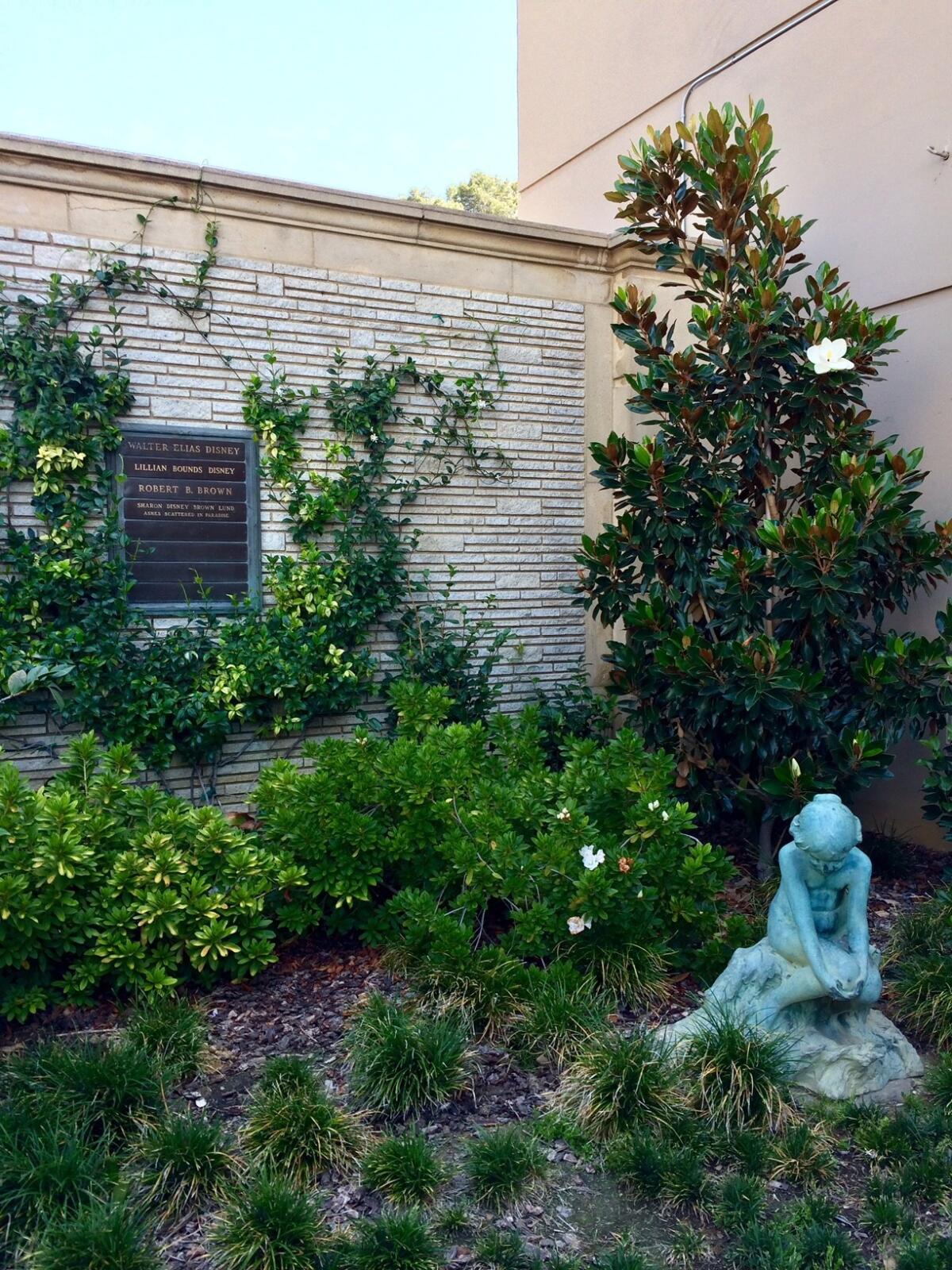
Still, finding celebrity resting places in the expansive cemetery is a bit of a scavenger hunt.
From the front gate, follow signs to the wonderfully gothic Great Mausoleum, where Elizabeth Taylor is buried and honored by a giant angel at the end of the hallway. L. Frank Baum, of “Wizard of Oz,” fame is buried to the west of the Great Mausoleum, with a hefty tombstone.
Michael Jackson? He rests in a private section not open to the public.
But Jimmy and Gloria Stewart are marked by humble graves that are open to public viewing – though not easy to find.
As you face the Wee Kirk O’ the Heather chapel, they reside up the hill to your left: space 2, lot 8, small markers near the statue of a man holding an arrow.
Clustered at the Freedom Mausoleum, you’ll spot the graves of Walt Disney, Spencer Tracy, Errol Flynn, George Burns and Nat “King” Cole.
Where: 1712 S. Glendale Ave., Glendale, Calif., about 15 minutes from downtown Los Angeles, in Los Angeles County.
How much: Free
Info: Forest Lawn Glendale, (323) 254-3131
Buy the body-outline beach towel of your nightmares at the L.A. County coroner’s gift shop
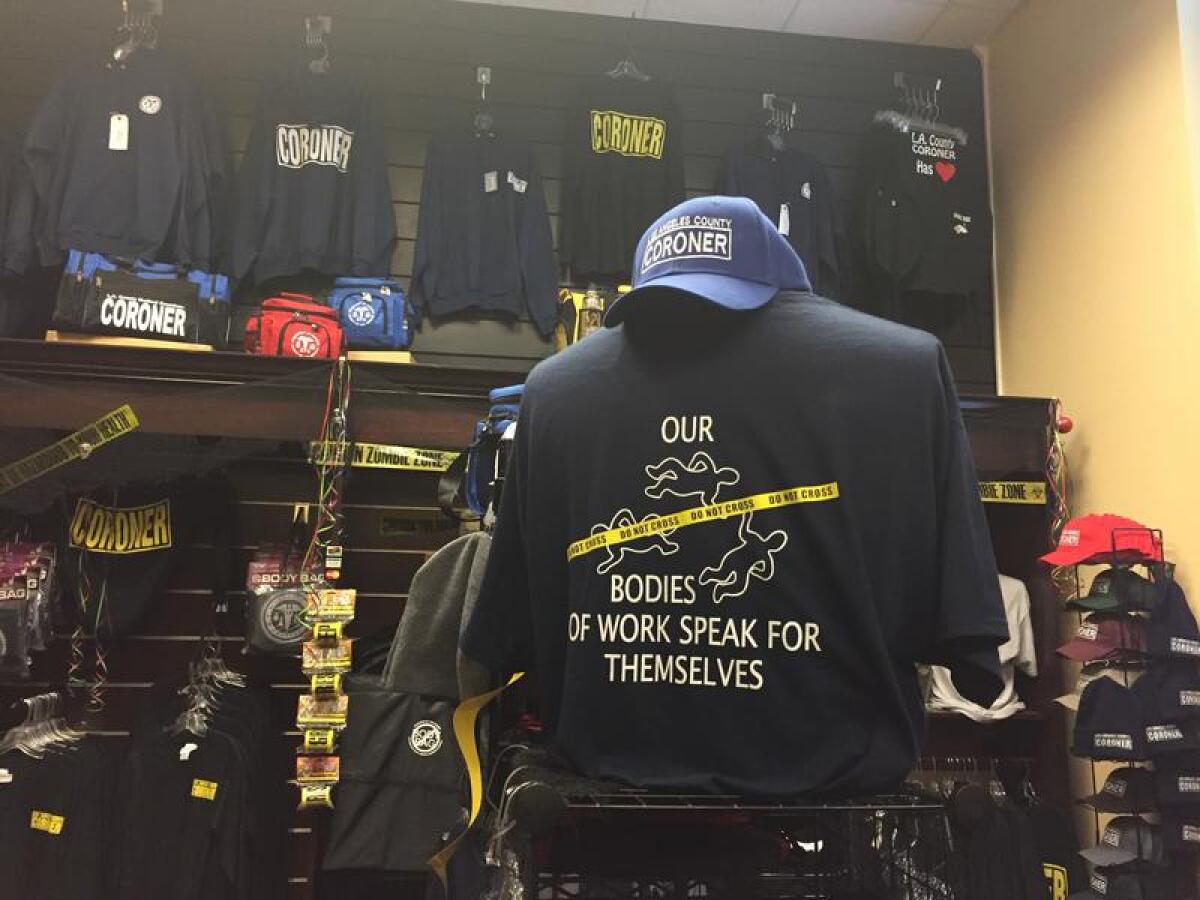
Why: If death is inevitable, capitalism is inexhaustible and Los Angeles is Los Angeles, it should be no surprise that the L.A. County coroner has a gift shop. And let’s face it, you’re curious.
What: The Skeletons in the Closet gift store opened in 1993 (at about the time homicides in the city were reaching historic highs). Nowadays the homicide rate is far lower, but the retail continues. Beach towels (with body outlines), barbecue aprons, mugs, office supplies, lanyards and more (see below) -- this shop has you covered, so to speak. The goods are gathered just off the lobby of the coroner’s headquarters in Lincoln Heights, a 1909 red-brick building that once served as a hospital.
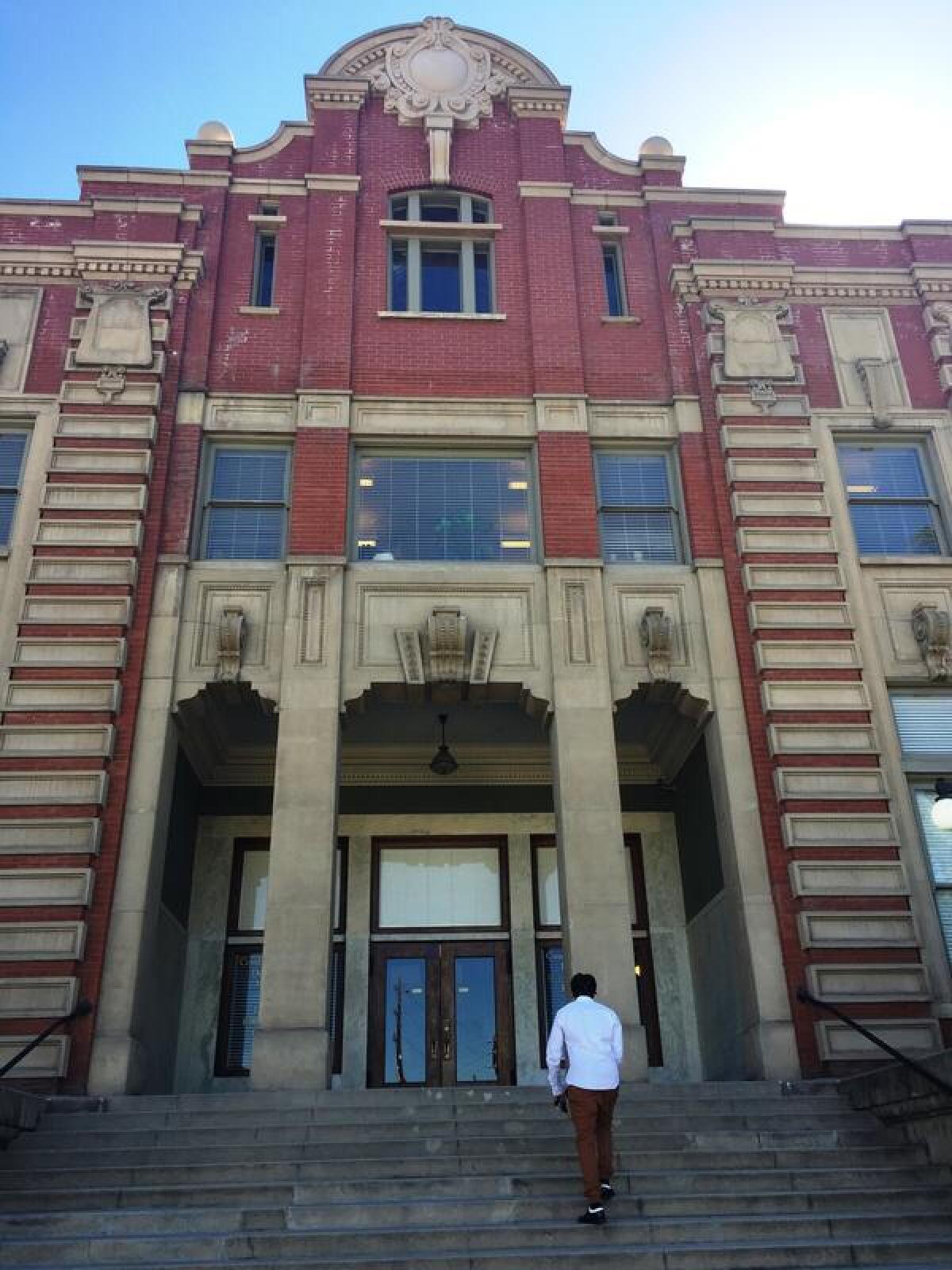
At least one other city has a coroner’s gift shop. Still, this is a rare inventory in arguable taste. (For the weeks leading up to Halloween, body bags are offered.) For the record, the shop’s management says the store exists “to promote how fragile life is and create awareness and responsibility toward one’s actions.”
Speaking of which: On your way into and out of the shop, remember to be quiet and respectful: Many of the building’s visitors are there in connection with the death of a family member.
Where: 1104 N. Mission Road, Los Angeles, one block northwest of the L.A. County-USC Medical Center, 2 miles east of downtown L.A. Open Monday-Friday, 8:30 a.m.- 4 p.m.
How much: Baseball caps, $15. Mugs, $12.95-$15. Lunch coolers, $21. Beach towels, $35. Welcome mats, $30. License plate frames, $20. Key chains, $4-$5. Lately, the shop has added anatomy models too -- “more educational stuff,” said manager Edna Pereyda.
Info: L.A. County medical examiner-coroner
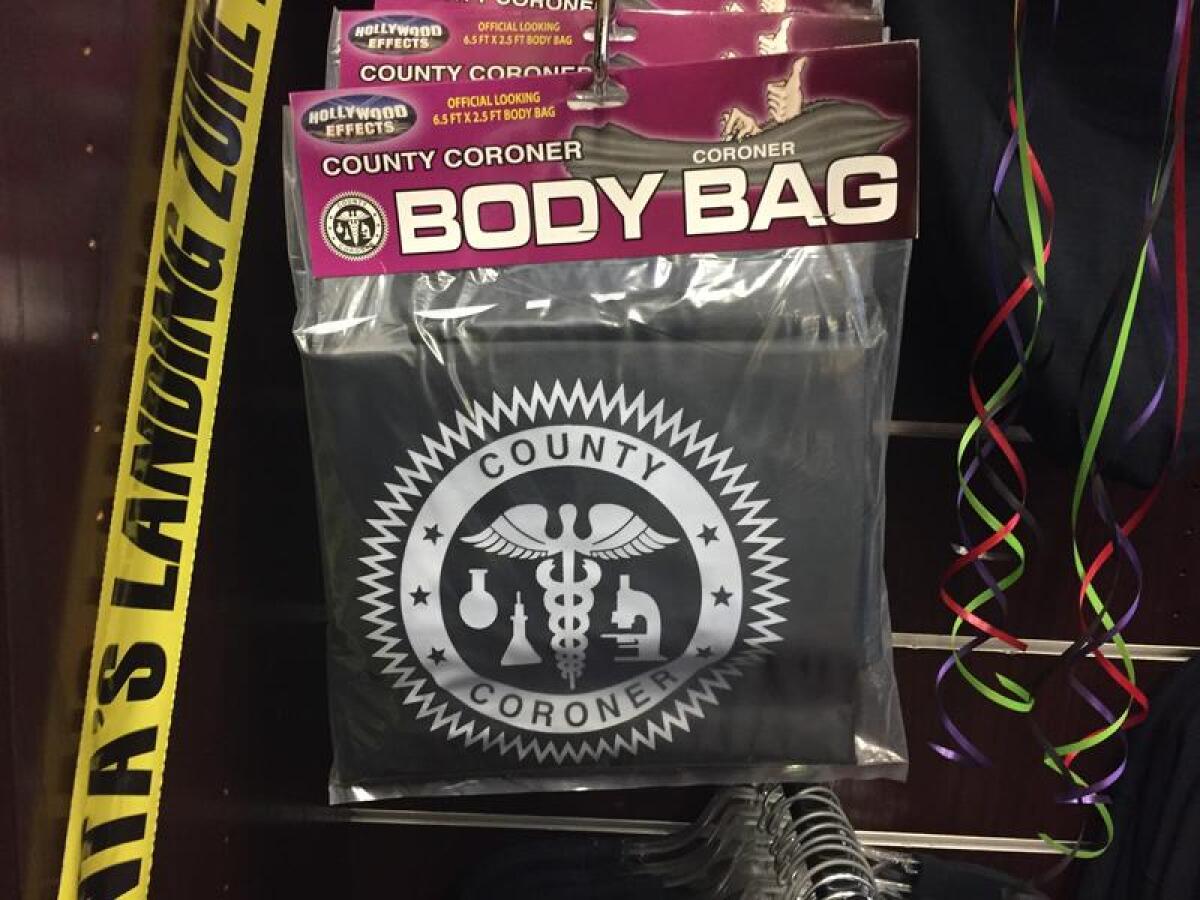
View carpets of gold at Antelope Valley’s California Poppy Reserve in Lancaster
Why: Vast meadows of orange poppies were once a common sight in the California springtime, inspiring Spanish conquistadors to call the San Gabriel foothills the “Land of Fire.” The Antelope Valley Poppy Reserve is one of the last remaining places in the state to experience a large-scale—and predictably magnificent—display. Wildflower season at the reserve typically begins in mid-February and lasts until May.
What: The Antelope Valley California Poppy Reserve is a beautiful showcase of the state’s beloved golden flower. In good years, bright orange covers the earth as far as the eye can see. Legends of these sunny blooms are woven into the myths of native tribes, Spanish conquistadors and 49ers.
Not surprisingly, the California poppy became a state flower in 1903. Around this time, residents cherished the springtime tradition of picnics among poppy fields, much like cherry blossom gazing in Japan. Today, the flowers have few open places to create such spectacles. Peak bloom falls around California Poppy Day on April 6, but the timing, intensity, and duration of poppy blooms vary from season to season, depending on the season’s temperatures and rainfall.
The park, which has 8 miles of gentle trails to explore, is open from sunrise to sunset. Be sure to call the wildflower hotline (661-724-1180) before you make the trek—not only are wildflower blooms difficult to predict, strong winds are common in the area, which can cause the blooms to close.
Where: 15101 Lancaster Road in Lancaster, 70 miles north of downtown L.A.
How much: $10 per vehicle.
Roll into the soul of skateboarding at Venice Beach
Why: With its oceanfront setting, gritty pedigree and a vibe like no other, this skate park rules—for shredder and spectator alike.
What: The Golden State is home to nearly 450 skateboard parks. Some are vast, like the 68,000-square foot Lake Cunningham Regional Skate Park in San Jose. Others offer monstrous terrain, like the eye-popping, stomach-dropping MegaRamp at Woodward West in Tehachapi. But for those seeking the soul of skateboarding: Venice.
This 18,000-square foot concrete playground, built on a rise of sand in the heart of Venice Beach, attracts skate-travelers from around the world. The park’s compact design—including two bowls, a street area and a classic, 1970s-style snake run—offers something for every level.
But it’s the spirit that sets this spot apart. Though the surrounding neighborhoods gave birth to some of skateboarding’s most influential and aggressive scenes -- including the surf-styled Z-boys of the 1970s and the frenetic street skaters of the 1980s -- the skatepark has a welcoming, communal vibe. Local rippers patiently give way to wide-eyed newcomers.
Spectators are often an afterthought at skate parks. At Venice, they are part of the fun. (But stay behind the guardrail and keep alert for flying boards.) Established pros frequently put on a show, along with pint-sized rippers and their silver-haired counterparts. Wheelchair skaters often roll here as well, inspiring cheers and awe all around.
Where: 1800 Ocean Front Walk, Venice, about 15 miles west of downtown L.A.
How much: Free. Donations to Venice Skatepark Foundation, which maintains the park, are appreciated.
Info: Venice Skate Park
Catch a wave at Rincon, a surf spot so good the Beach Boys sang about it
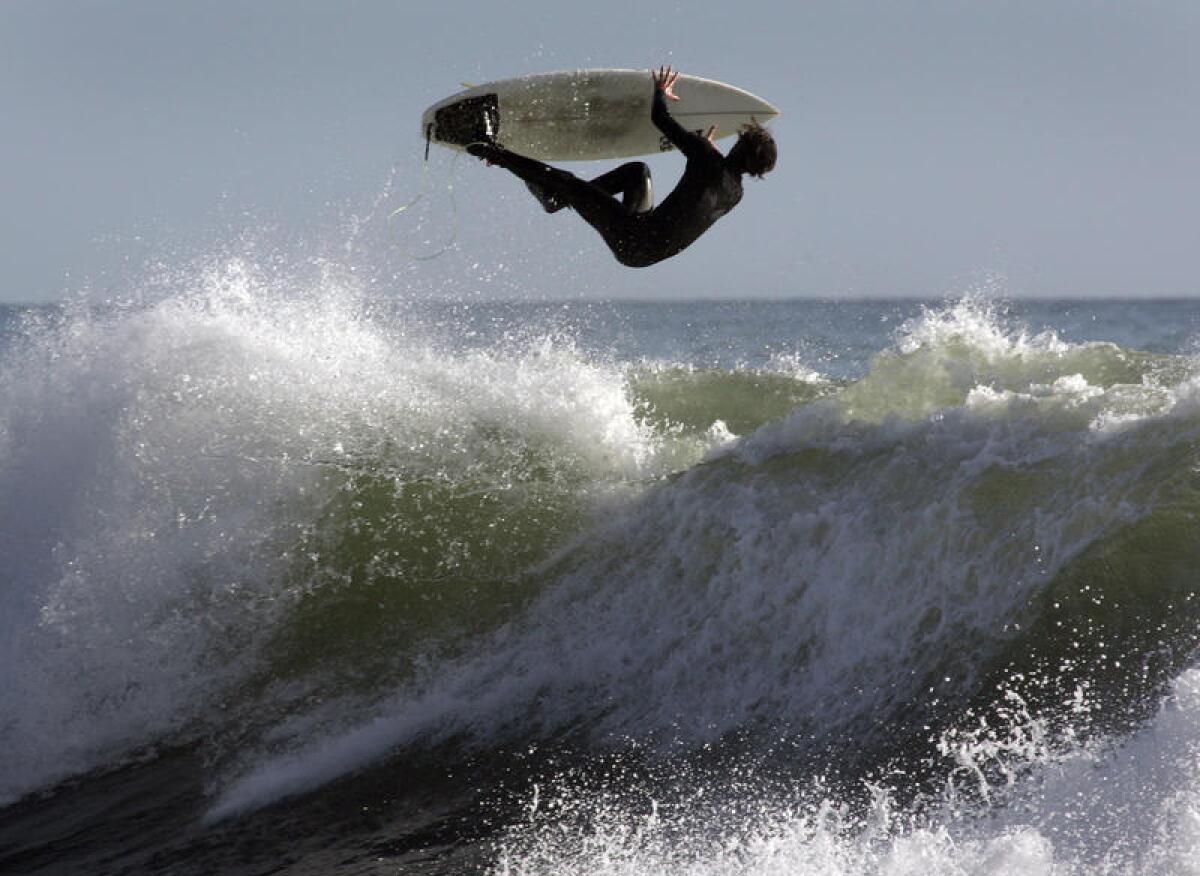
Why: Consider the tyranny of too much clothing. Or study the topography of clouds. Rustic Rincon Beach invites such reflection. It also lures surfers near and far for long runs on legendary, well-formed waves.
What: Just off the 101, near Carpinteria, Rincon is a worthy escape whether you surf or not.
Don’t be put off by the gated community that’s front and center as you arrive. Take a right into Rincon Beach Park, which features well-kept picnic areas lining the bluff and a set of wooden stairs leading to the beach. Or hang a left instead to the spot where the surfers congregate at three subsections of Rincon: Indicator, Rivermouth and the Cove.
Rincon is scenic and secluded, with vistas, a surf hut and plentiful parking. Surfers tend to use the parking lot to the left, and picnickers and swimmers park in the right lot. (Except for bathrooms, there are no services here.)
Beyond anything else, Rincon is a surfer destination, with world-class surf breaks so good they were mentioned in the Beach Boys classic “Surfin’ Safari.” From sunup to sunset, sleek waves deliver long rides on a consistent basis.
Of course, those kinds of conditions attract the masses and plenty of competition for the best waves. Come on a Tuesday when crowds are generally at their thinnest.
Where: Rincon is three miles south of Carpinteria, 88 miles northwest of downtown L.A., on the Ventura/Santa Barbara county line. Take the Bates Road exit off the 101, and head west to the parking lots.
How much: Free
Info: Rincon Beach
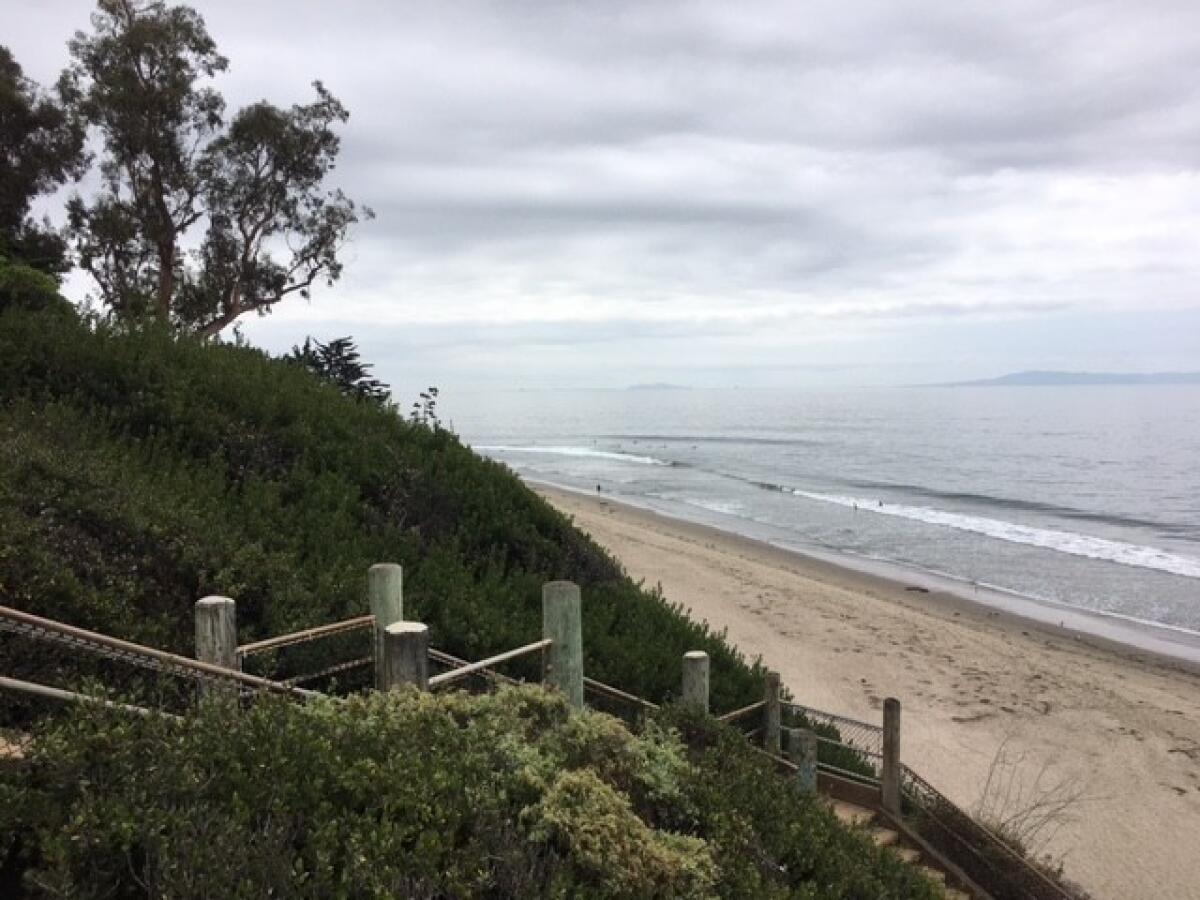
Honor the 16th president at the Lincoln Memorial Shrine in Redlands
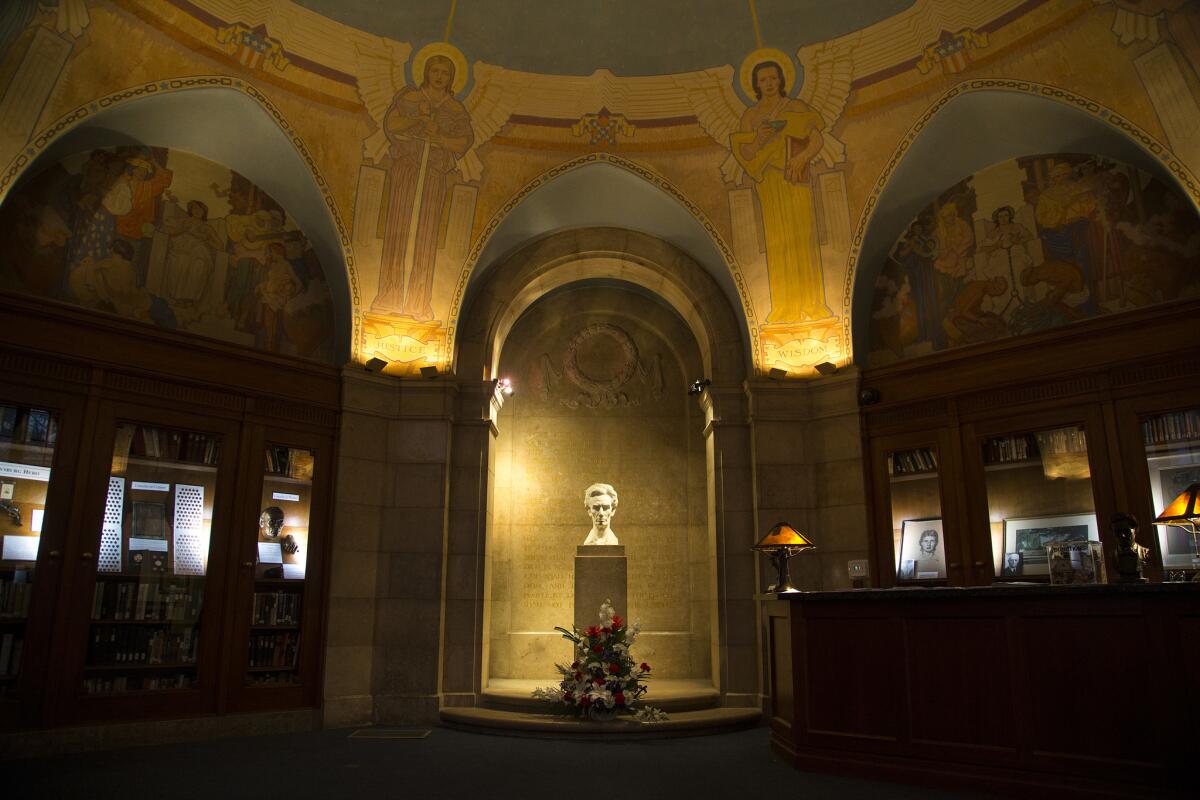
Why: The museum and research center is the only memorial dedicated to Abraham Lincoln west of the Mississippi River.
What: The shrine was presented to Redlands in 1932 by civic leader and philanthropist Robert Watchorn and his wife, Alma, as a tribute to Lincoln and a memorial to their son who had died years earlier from injuries suffered in World War I.
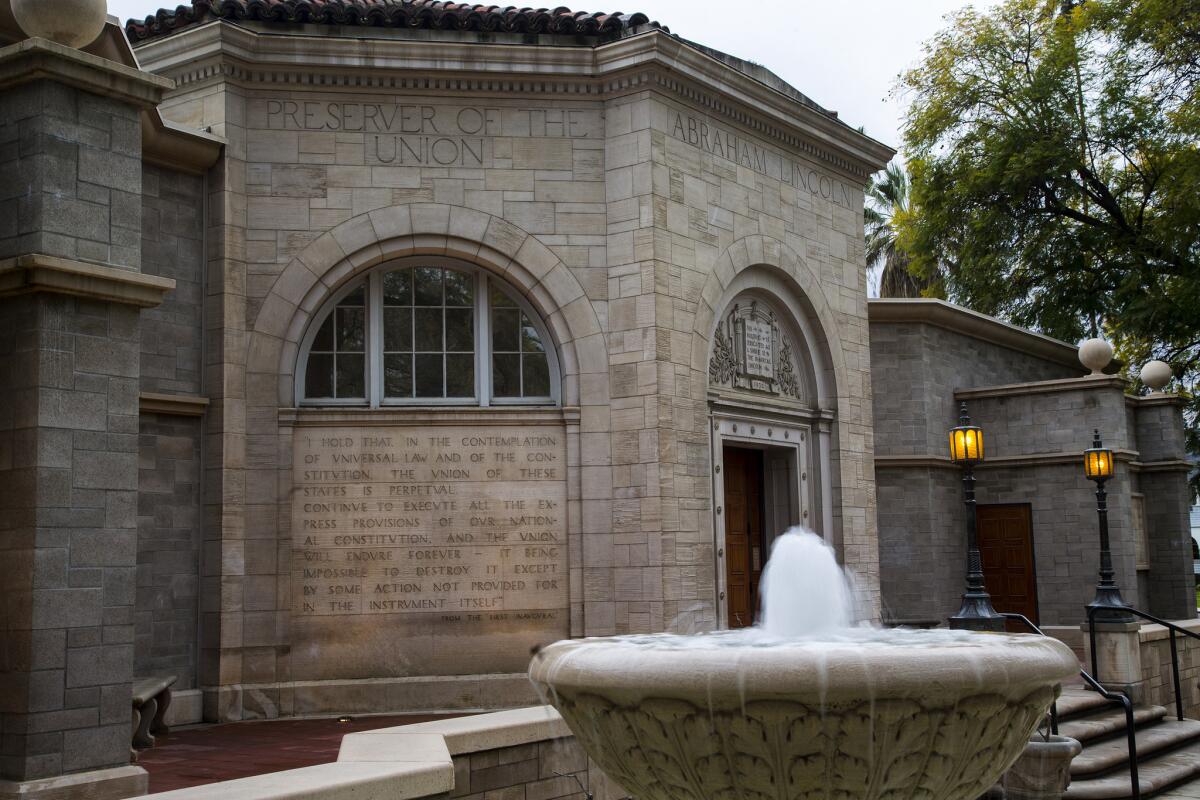
Step into the dimly lighted rotunda, where a handsome white marble bust of Lincoln will command your attention. Then gaze at the dome, which is adorned with allegorical figures — perhaps the “better angels of our nature” — painted on canvas. Under each is a word — Loyalty, Strength, Justice, Wisdom, Patience, Tolerance, Courage and Faith — attributes ascribed to Lincoln.
Two small galleries complete the shrine. One, to the left, contains exhibits on camp life, military prisons and other aspects of the Civil War. The one to the right houses an exhibit on Lincoln’s life. This gallery also displays a 1945 painting by Norman Rockwell, “Thoughts on Peace on Lincoln’s Birthday,” which depicts a World War II veteran seeking guidance from a biography of Lincoln.
The shrine’s core collection of books, manuscripts and artifacts, donated by Watchorn, has grown to include thousands of volumes on Lincoln and the Civil War.
Where: 125 W. Vine St., Redlands, 63 miles east of downtown L.A.
How much: Free. Open 1-5 p.m. Tuesdays-Sundays.
Info: Lincoln Memorial Shrine
Eat at Buck’s, the Silicon Valley crossroads of flapjacks and the information age
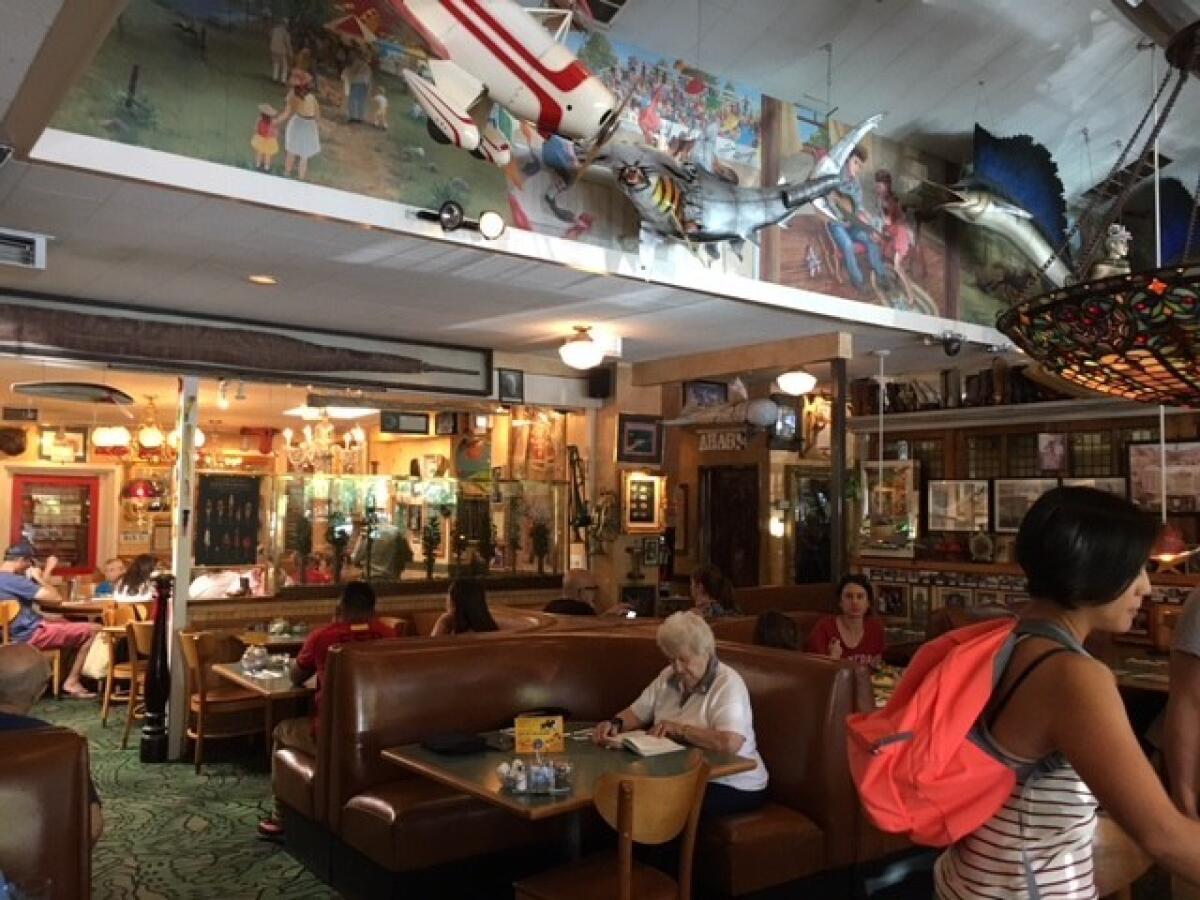
Why: Who’d have guessed that the future would be figured out at a strip mall? Yet here’s Buck’s of Woodside. Elon Musk hangs out here, and PayPal was formed at that little booth in the corner. Think of it as an incubator of the digital future. It also serves a pretty mean omelet.
What: Buck’s benefits from its Silicon Valley location and address in the town of Woodside, a forested and hilly enclave where rich investors are plentiful.
The diner draws clusters of visionaries for breakfast, lunch and dinner, though morning is prime time for digital deal-making.

Location is just part of its success. Its whimsical décor captures America’s pioneering spirit, and reminds us that invention is a form of child’s play.
The walls and ceiling feature vintage Cracker Jack toys (dating to 1905), space suits, 11-foot airships and model cities built of Gummy Bears.
Owner/founder Jamis MacNiven’s displays give the place the feel of a children’s museum, and are a huge part of the reason his restaurant draws such a family crowd on weekends, when youth soccer teams can be seen using Buck’s as a relaxing post-game pit stop.
During the week, the restaurant draws more of a business crowd, often filling the roomy dining area by 8 a.m. Outside, hitching posts are provided to locals who arrive on horseback.
They come for the fresh and generous portions. But mostly, I think they come for ambience, lore and the sense that great things happen here.
Where: 3062 Woodside Road, Woodside, in San Mateo County, about 360 miles northwest of downtown L.A.
How much: Items start at about $8, but expect $15-$20 for breakfast, lunch or dinner.
Info: Buck’s of Woodside
Try the best fish taco you’ve ever had -- smoked and flavored with bits of apple -- in downtown Cayucos
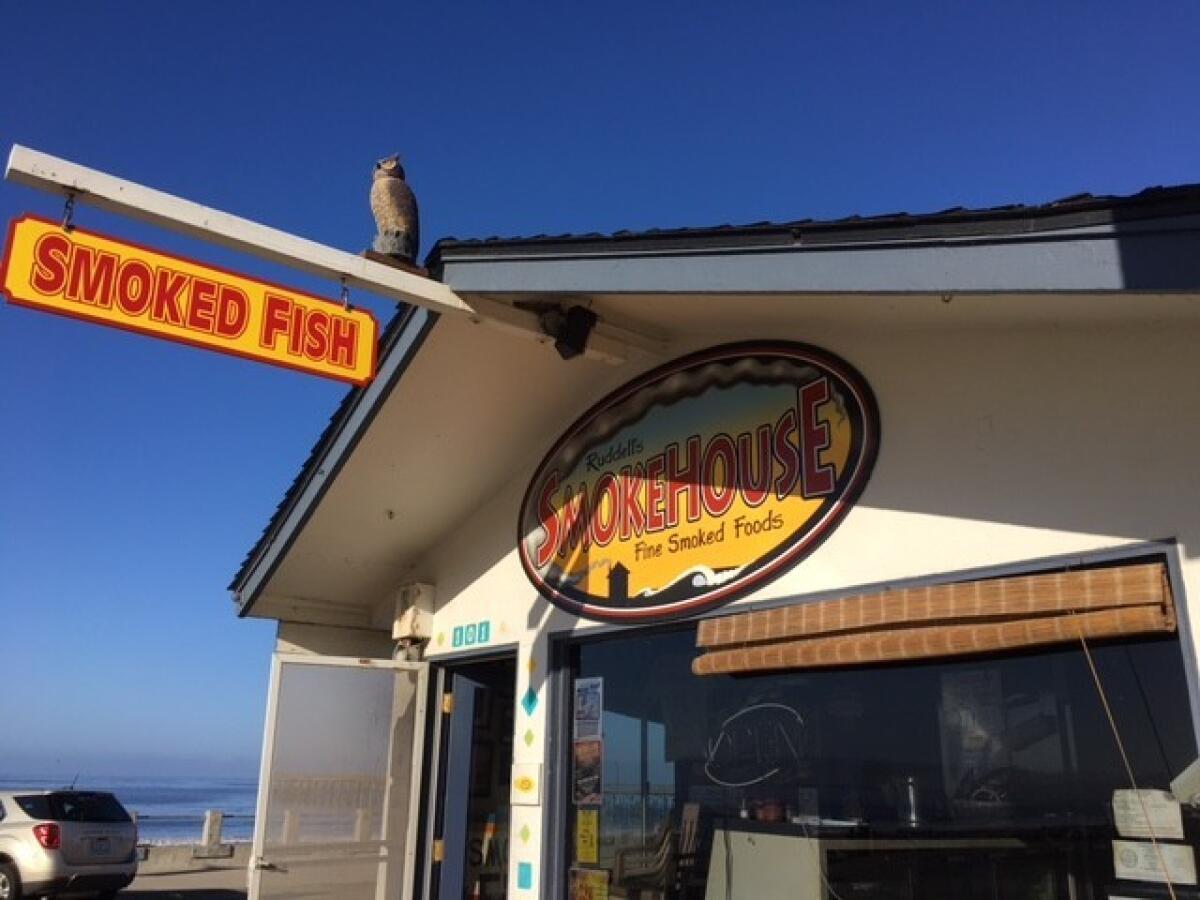
Why: Best fish taco ever. Yes, ever.
What: OK, admittedly, I haven’t tried every fish taco stand in the state, or even Los Angeles, though I’ve tried. That’s a bucket list all its own.
But in Cayucos, just north of Morro Bay, rests a beloved little taco stand that elevates the art by smoking its fish, and serving it chilled with chunks of apple. Sure, you fish taco purists will scoff. Don’t knock it till you try it -- and try it and try it some more.
Ruddell’s Smokehouse keeps it simple. It offers albacore, ahi, salmon, shrimp, pork loin and chicken, all smoked, in tacos or sandwiches, out of a seaside shack just south of the pier. The tacos come on a tortilla so large it weighs about as much as a burrito, with the apple, red-leaf lettuce, celery, carrots and green onion.
There are several salads, but that’s pretty much the menu, though you can also purchase the smoked albacore and salmon by the pound, $18.99 and $20.99 respectively. A whole smoked chicken is a very reasonable $9.
Another memorable find in tiny and appealing Cayucos is the fine breakfast burrito ($7.99) at the Cayucos Deli, adjacent to the mini-mart gas station at the center of town. It too, is a local favorite, with good reason.
Where: Ruddell’s Smokehouse, 101 D St., Cayucos, San Luis Obispo County, about 210 miles northwest of downtown L.A.
How much: Smoked tacos from $5. Albacore is $6.
Info: Ruddell’s Smokehouse, (805) 995-5028
Seek safe harbor, stay overnight at Pigeon Point lighthouse and hostel in Pescadero
Why: Though technology has overtaken them, there is something romantic and reassuring about lighthouses. About 20 still dot the California coast. One of the most fetching is Pigeon Point’s, a 115-foot tower that includes a hostel, on a thumb of land halfway between Santa Cruz and Half Moon Bay.
What: Pigeon Point Light Station has been protecting ships since the 1870s. Though mostly for show in an era of satellite-guided navigation, it provides back-up beacons on dishwater-dark days and murky nights along this stretch of skyscraper seas and rocky coastline.
The hostel here makes it a terrific weekend escape that could include whale-watching or exploring and hiking along Highway 1. Accommodations include separate-sex or coed bunkrooms and private rooms for individuals, couples or families.
Or plan a long daytime stop on your road trip to the Bay Area. Gray, blue and humpback whales are all visible from the viewing area on the point (bring binoculars) and 50 species of migratory and native birds use this as their hostel too.
Tide pools are a short walk north from the complex, located on a series of jagged bluffs on this photogenic stretch of coastal highway.
Though the lighthouse itself is closed to tours, its original lens is on display at ground level. The Fresnel lens is like a giant piece of jewelry, with 1,008 brass-framed lenses and prisms that once beamed out the light to ships 24 miles away.
Where: 210 Pigeon Point Road, off Highway 1, in Pescadero, Calif., in San Mateo County, about 390 miles northwest of downtown L.A.
How much: The grounds are free and open to the public from 8 a.m. to sunset. The hostel, run by Hostelling International, charges from $28 for bunks and $82 for double rooms, not including membership fees ($28 annually and $3 daily). Reservations: (650) 879-0633
Hitch your horse at Jocko’s in Nipomo for a juicy slab of beef seared over red oak
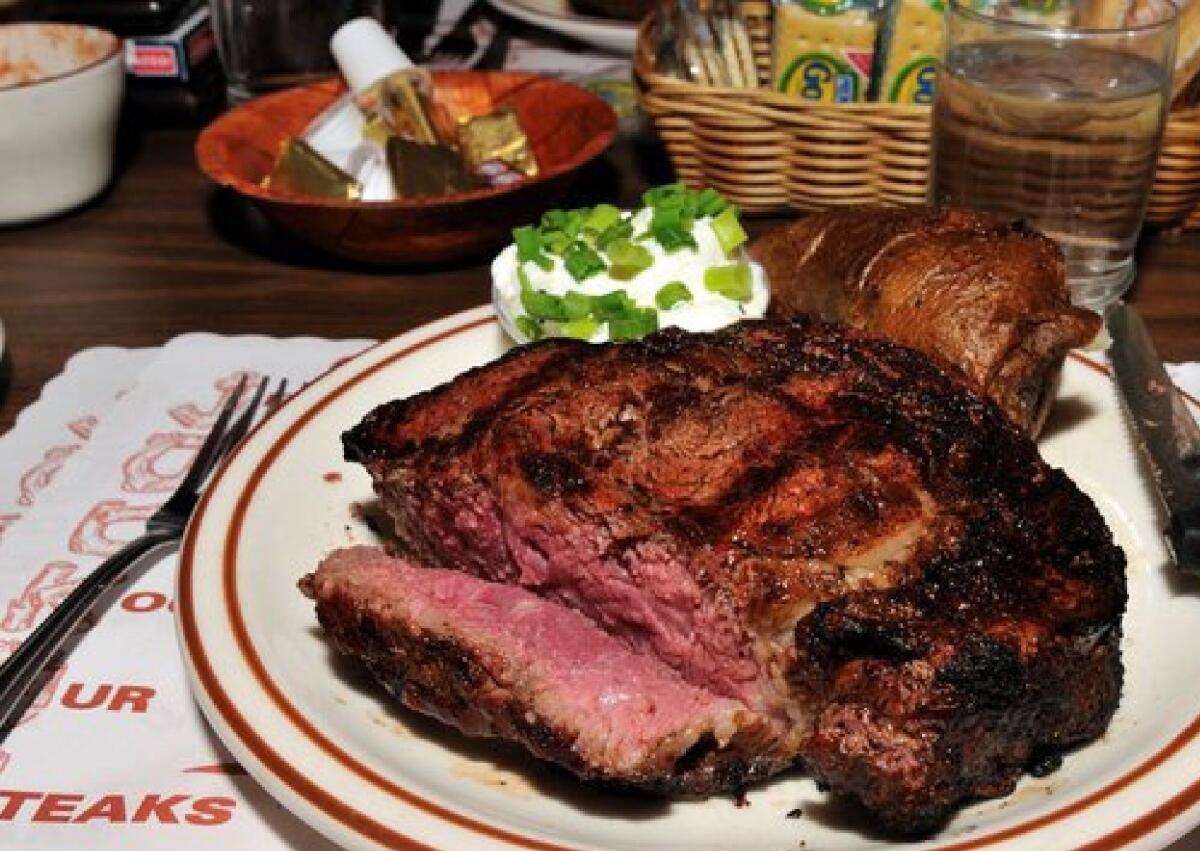
Why: You want history? There used to be a caged monkey behind the bar. But forget history. Concentrate on that insanely large slab of beef they just snow-shoveled off the grill and rushed to your table at the famed Jocko’s, in no-frills Nipomo, Calif.
What: Jocko’s is a Central Coast institution with cinderblock walls and local ranch brands burned into the paneling. Yep, this is farm country all right, a little dusty and proudly working class.
“Come in an monkey ’round,” the sign outside says, a nod to its former mascot.
The restaurant is named for Ralph “Jocko” Knotts, one of the original owner’s sons.
“Jocko was the second licensed driver in Nipomo, he was also ‘Justice of the Peace,’” a history of the restaurant states.
Now you understand Nipomo.
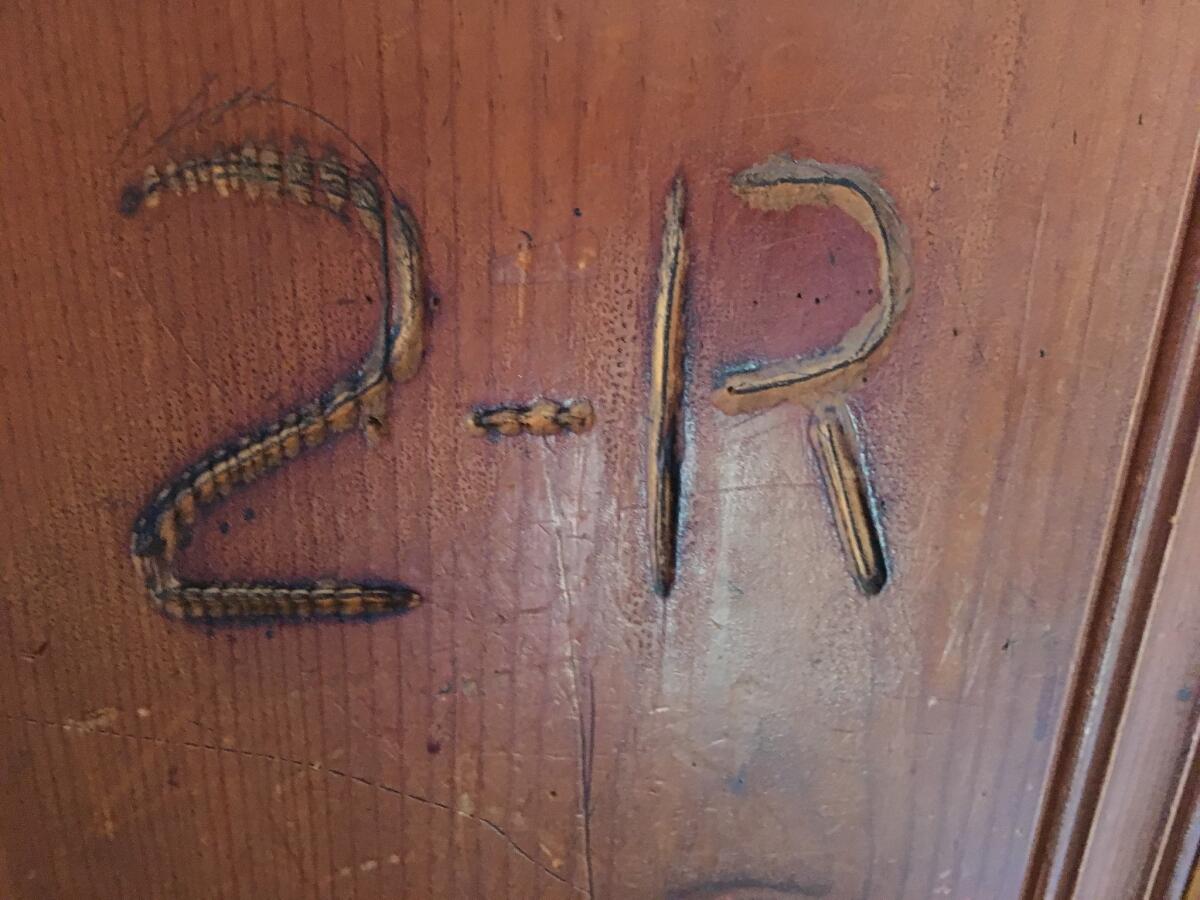
Over the years, the restaurant has changed locations and names, but for decades has drawn substantial crowds to its Santa Maria-style steakhouse, particularly on weekends.
Still colorful, and with customers lining up early – expect a short wait, even with a reservation – Jocko’s is renowned for its top-line beef charred over red oak.
Lunches and dinners come with salad and sides, on plates dominated by your steak, with just the right amount of fire applied to the outside, as if branded. For an additional $10, you can have your steak cut extra thick.
Request a table by the window if you can, overlooking the fire pits, and order the Spencer, a specialty rib-eye on the bone ($32). On Wednesday, don’t discount the roast turkey special, a local favorite.
Whatever you order, be prepared for a first-rate meal served at country prices, by a waitress who actually fusses over you a bit.
Where: 125 N. Thompson Ave., Nipomo, in San Luis Obispo County, 177 miles northwest of downtown L.A. on the 101.
How much: Complete dinners range from $20 to $33
Info: Jocko’s
Watch some strings being pulled at L.A.’s Bob Baker Marionette Theater
Why: The Bob Baker Marionette Theater is an icon of family entertainment in Los Angeles, beloved for its charming retro performances. As the longest-running puppet theater of its kind in the U.S., the venue has stood the test of time.
What: Founded by Bob Baker and Alton Wood in 1963, the theater is housed in an unassuming building on the edge of downtown L.A. Not much has changed in the last 50 years. Coffee-can stage lights illuminate handmade puppets that dance and sing to a vintage soundtrack on a carpeted stage. Catch a seasonal production — “Halloween Spooktacular” is playing through Nov. 5 — to witness the company’s unique brand of whimsy, complete with vampire lovebirds, dancing skeletons and a glow-in-the-dark alien takeover. After the show, join the cast in the adjoining salon for complimentary ice cream.
Baker served as a puppeteer and animator for hundreds of Hollywood movies and TV productions. He also made puppets for clients around the globe and was a rare mentor in a fading profession.
In 2009, the theater was designated a Los Angeles Historic-Cultural Landmark. Though the troupe and building faced uncertainty after Baker’s death in 2014 at 90, the puppeteers have reorganized as a nonprofit venture, and a capital campaign is underway to renovate the theater. After remodeling begins, probably in late December, the company plans to perform throughout 2018 at other venues around Los Angeles.
Where: 1345 W. 1st St. in downtown Los Angeles.
How much: Show tickets are $15. Children under 2 are free.
Info: Bob Baker Marionette Theater
Spoon a piece of pie, and other country classics, at the landmark Duarte’s Tavern in Pescadero
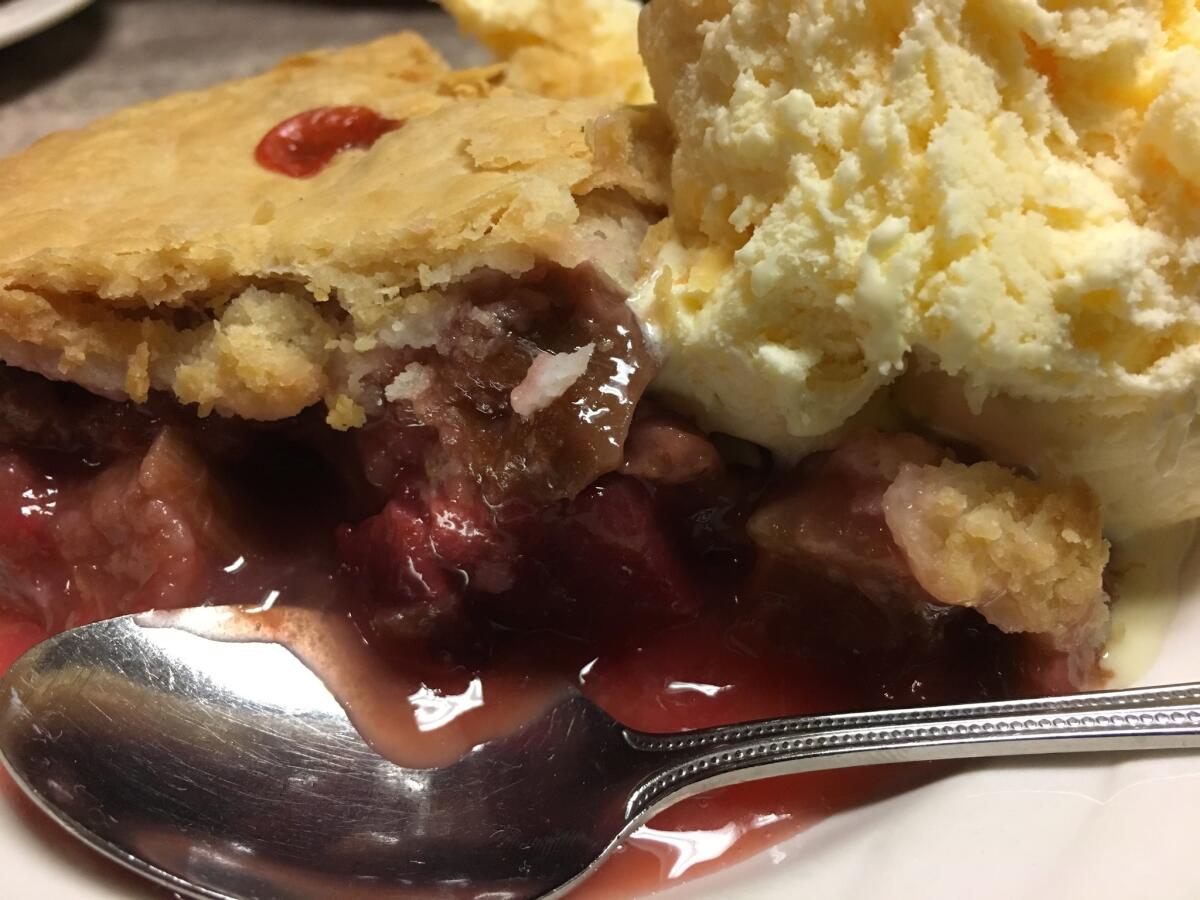
Why: Admit it. Sometimes you don’t want to be around other people. All you crave is a country road and an epic piece of pie. For all that, come to Duarte’s Tavern in tiny Pescadero, near Half Moon Bay, for a simple yet memorable dinner and a frosty drink. Make this rustic jewel your hamlet, your hideout, your Walden Pond.
What: Duarte’s (pronounced Doo-arts) has been serving up generous plates of no-nonsense, straight-from-the-garden food for almost 125 years. Since 1894, when the founder tapped a keg of cheap whisky to today, when it serves up to 10,000 customers a month, this farm country landmark has delivered memorable meals at affordable prices.
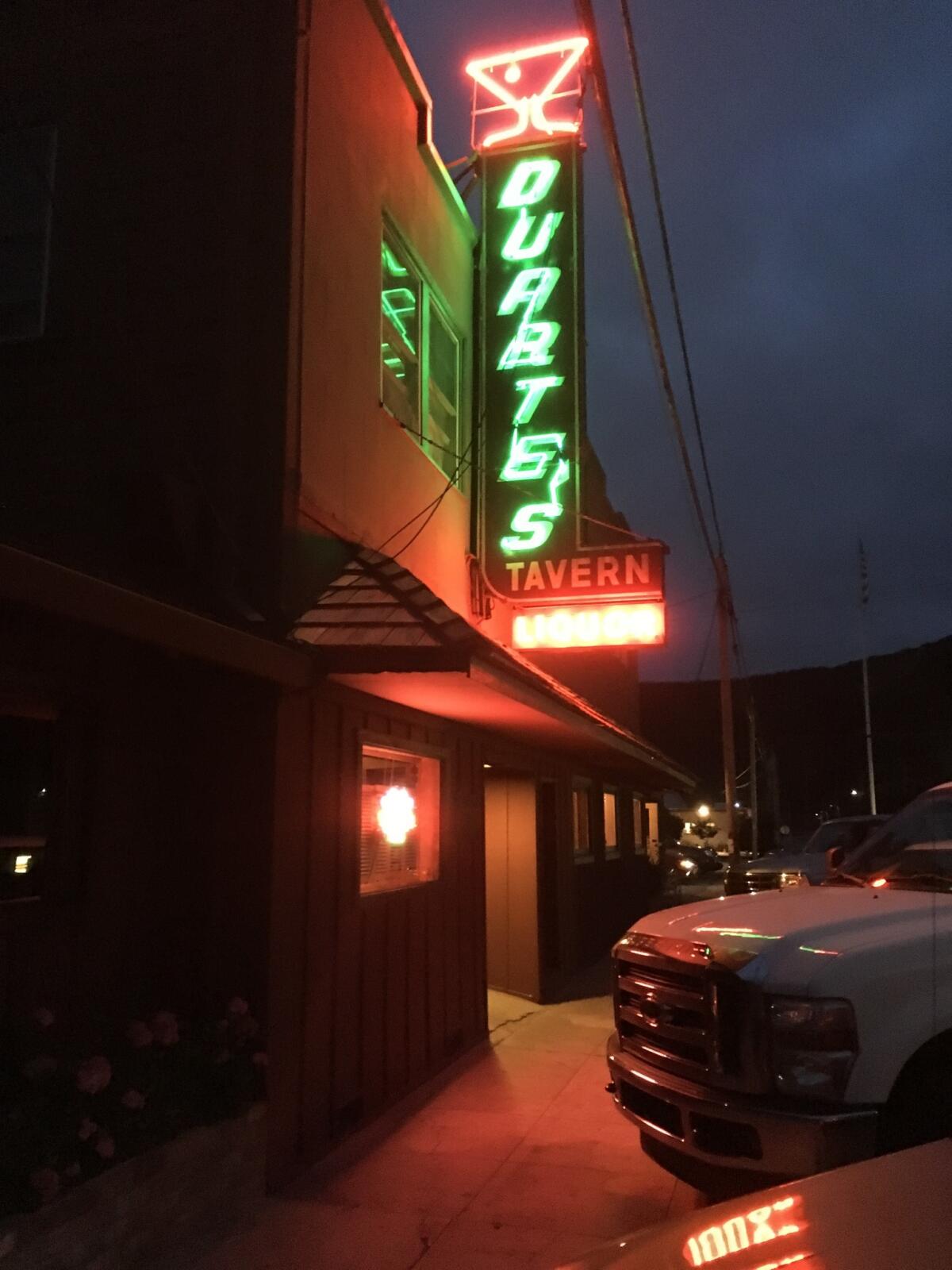
The glow-stick exterior dominates the little town of Pescadero, in rolling, sparsely populated farm country two miles from the coast. Inside, you’ll realize that the Duarte family was ahead of their time, with a reliance on locally sourced vegetables, beef and fish.
There’s no ego to the dishes: Pork chops and fresh applesauce is a headliner, as is the snapper and chips. The soups arrive robust and steamy, hours from the restaurant’s own garden out back.
The tavern/restaurant is still run by the fourth generation of the Portuguese family that founded it. In 2003, it won a James Beard Award for its faithfulness to classic country cooking and a body of work that spans three centuries.
Oh, and there’s pie. Good Lord, is there pie. The olallieberry is the best known, but I’m a sucker for the difficult-to-find rhubarb-strawberry. Best piece of pie I’ve ever had.
In fact, I’d recommend you and your date order the cream of artichoke soup, split a steak or crab melt and then treat yourself to one of these decadent desserts, ala mode, and spilling off the plate.
Where: 202 Stage Road, Pescadero, Calif., in San Mateo County, 375 miles from Los Angeles.
How much: Burgers and sandwiches start at $8; entrees are around $20.
Info: Duarte’s Tavern
Plot your Palm Springs high jinks under the coolest roof in California
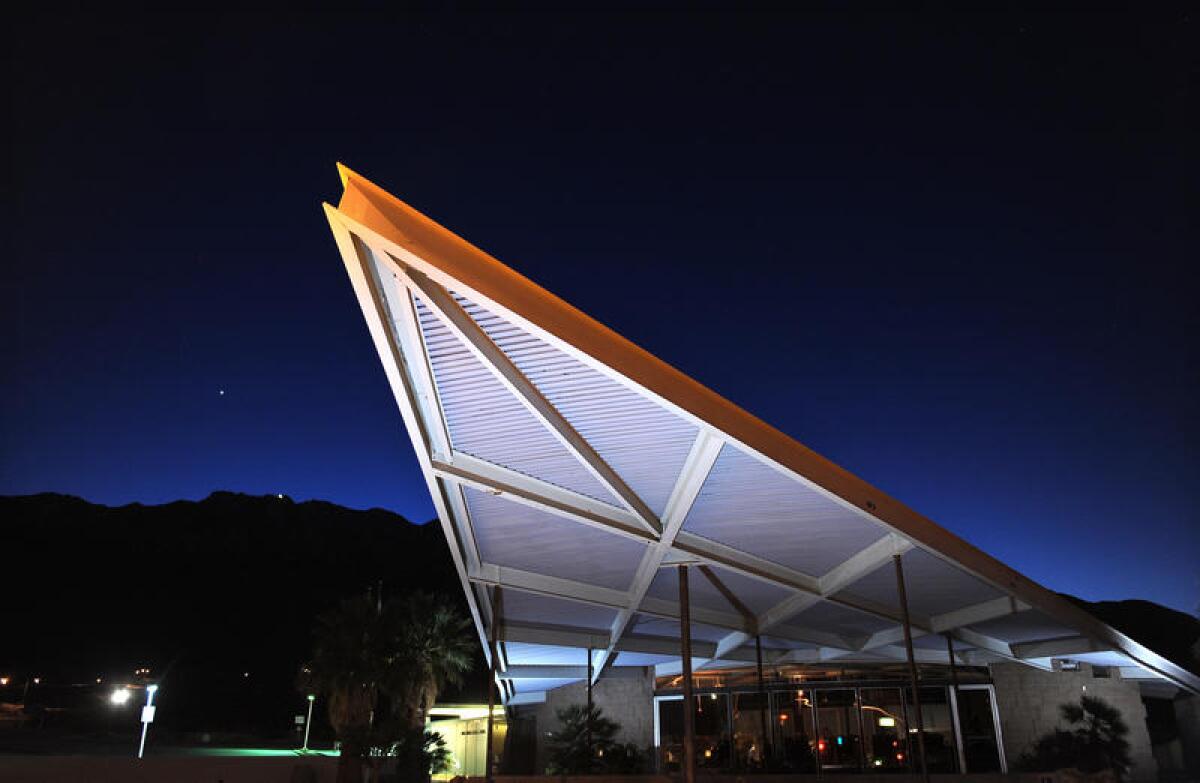
Why: It’s sleek. It’s vintage. And if you’re arriving via the San Gorgonio Pass like most Angelenos, it’s the beginning of Palm Springs.
What: When architects Albert Frey and Robson Chambers designed this building in 1965, the streamlined mid-century look was so big that even gas stations were doing it. Indeed, the Tramway Gas Station sat under this great tilting zooming top for decades, until (like a lot of Palm Springs) the building fell into idleness and blight in the 1970s and 1980s.
Then a few mavens of Desert Modernism effected a rescue — a story repeated on properties all over the Coachella Valley over the last 25 years. Now this hyperbolic paraboloid roof (apparently that’s the technical term) looks sharp enough to poke a hole in the Jolly Green Giant, and this corner is site of the Palm Springs Visitors Center. It’s a fine spot to stop, collect brochures, learn more about Modernism Week, cadge restaurant recommendations and plot details of your weekend.
Where: 2901 N. Palm Canyon Drive (a.k.a. Highway 111), Palm Springs, 109 miles east of downtown L.A.
How much: Free.
Info: Palm Springs Visitors Center
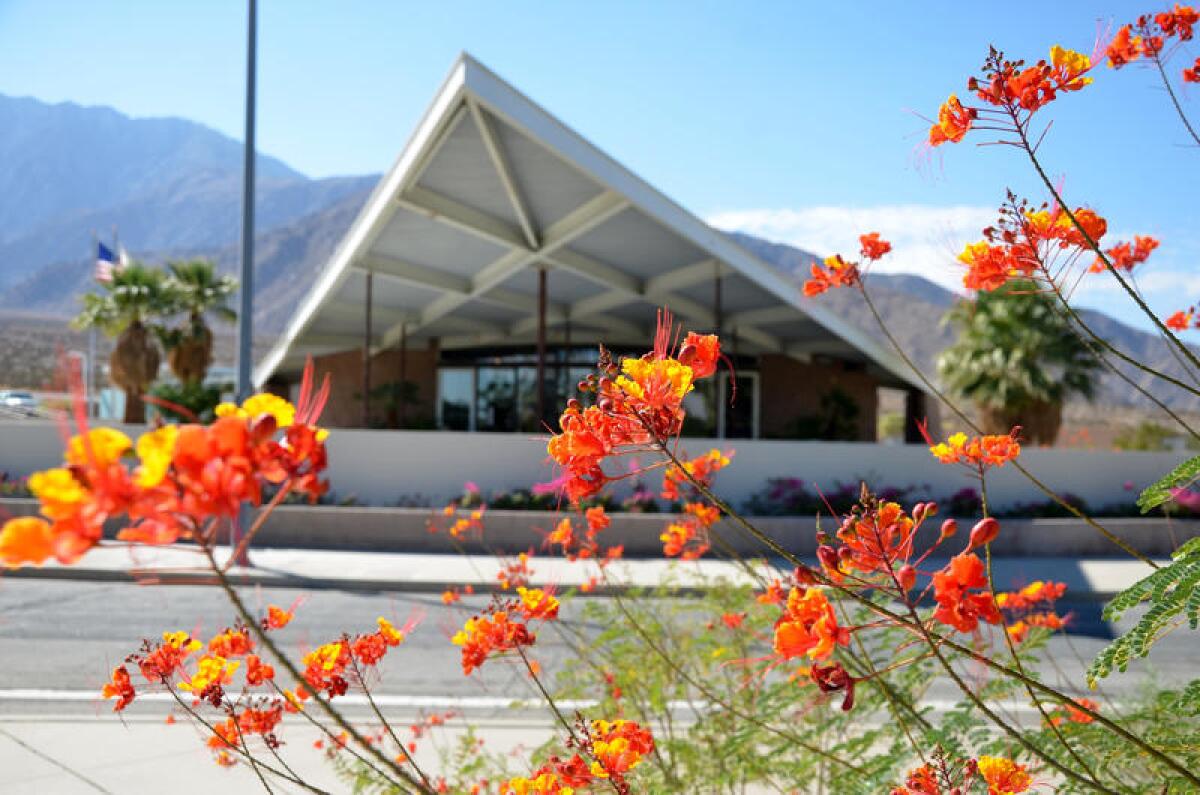
Step out to the Battery Point Lighthouse in northernmost California -- if the tide is right
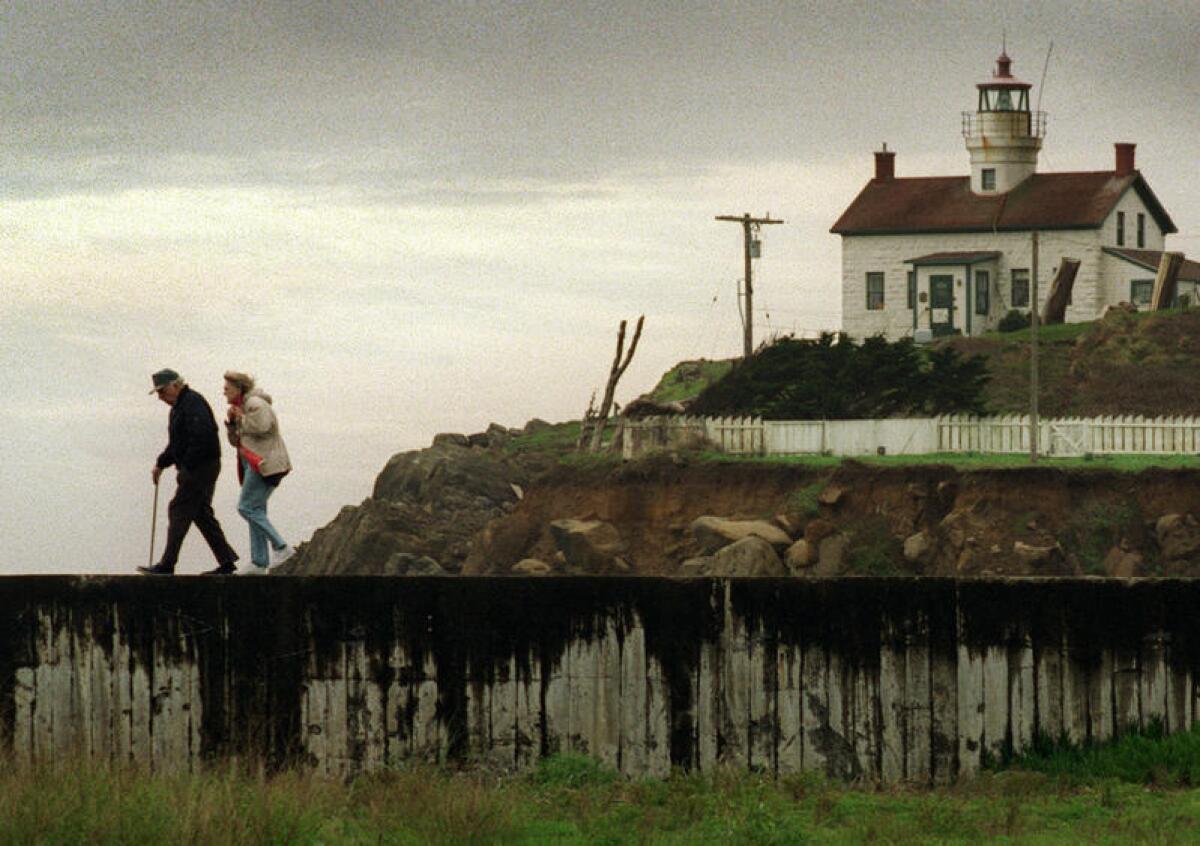
Why: No matter which way you travel, California begins and ends with a Cape Cod-style lighthouse from the 1850s. One is the Old Point Loma Lighthouse in San Diego. The other, about 900 miles to the north, is the Battery Point Lighthouse in Crescent City. And because the building stands 200 feet offshore on a tiny island, you can only get there at low tide.
What: The Battery Point Lighthouse (now also a museum) turned its light on in 1856, two years after California’s first lighthouse opened at Alcatraz. It was automated in 1953 and survived the 1964 tsunami that devastated Crescent City. It’s now managed by the Del Norte County Historical Society.
When the tide is low (consult the web or call [707] 464-3089 to check), you can walk to the lighthouse across the sand, rocks and a cement driveway. The building is open 10 a.m.-4 p.m. daily from April through September, weekends only the rest of the year. Inside, don’t miss the banjo-shaped clock. “It’s still working and it’s original,” said volunteer lighthouse keeper Harvey Lee. “We have to wind it once a week.”
(By the way, there is another lonely old lighthouse built on a rock six miles offshore, a few miles north of Crescent City -- the St. George Reef Light. For a while there were helicopter tours, but state officials banned those trips.)
Where: About 200 feet south of the corner of Battery Street and Lighthouse Way, Crescent City, 777 miles northwest of downtown Los Angeles, 373 miles north of San Francisco, 21 miles south of the Oregon border.
How much: Recommended donation $5.
Info: Battery Point Lighthouse
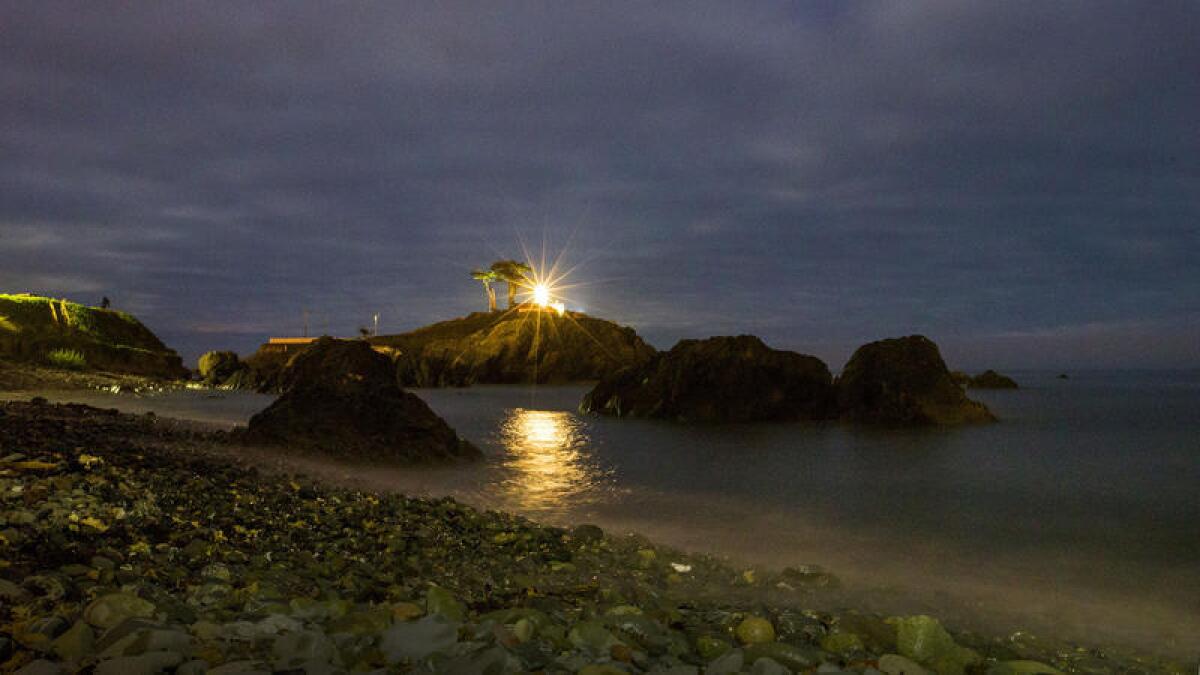
Inspect art, ‘Irises’ and the skyline from the Getty Center’s commanding Brentwood hilltop
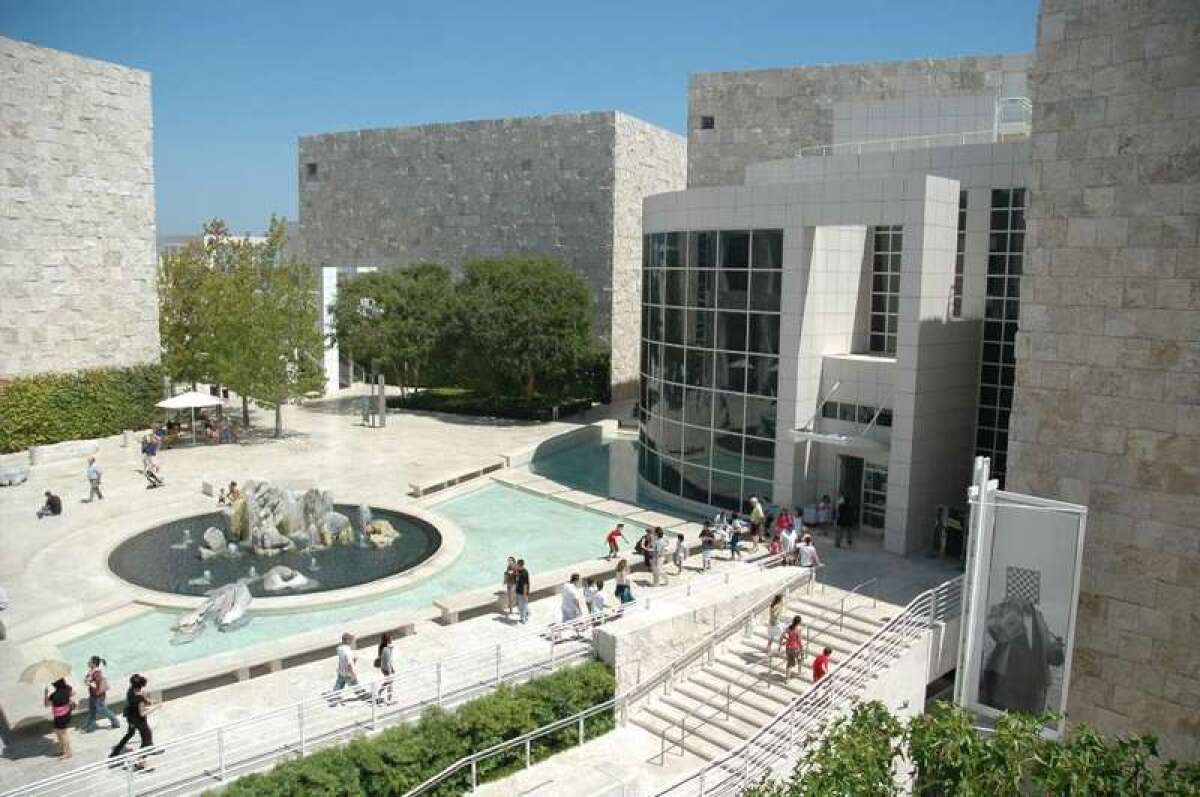
Why: This is the world’s wealthiest art institution, with a 110-acre campus overlooking the Pacific and a $6.3-billion endowment. Because it’s young as museums go, it doesn’t have the world’s greatest collection yet. But every year the curators spend tens of millions more, adding European paintings, sculptures, photographs and other marvels to this hilltop haven of shiny white buildings.
What: The Getty Center, backed by billions from late oil man J. Paul Getty, was born as a museum in 1954, but didn’t move to this location until 1997. Once you’ve parked or been dropped off, take the monorail up the hill and head for the West Pavilion, which houses photography below and Impressionists above.
Many visitors head straight for the center’s Impressionist standout, Van Gogh’s “Irises,” and you should get there eventually. But don’t miss newer works — especially the vast Pacific Standard Time: LA/LA project (which explores Latin American and Latino art with local connections, through January 2018) and the David Hockney show (up through Nov. 26, 2017). The photography holdings are remarkable too.
Also, be sure to check out the cactus garden that seems to float in the sky with the coast of Santa Monica in the distance. Kids will love rolling around on the sloping lawns. Eventually, you’ll want to eat. Unpack a picnic lunch on the lawn near the Central Garden, buy a bite at one of the center’s two cafes or splurge on lunch, dinner or Sunday brunch upstairs at The Restaurant.
(If antiquities are what speeds your pulse, set aside another day to head north to the other Getty location, the Getty Villa in Pacific Palisades, which specializes in Greek, Roman and Etruscan art from 6500 BC to A.D. 400.)
Where: Getty Center, 1200 Getty Center Dr., Los Angeles, 16 miles west of downtown L.A.
How much: Admission is free. Parking is $15, or $10 after 3 p.m. Museum closed Mondays.
Info: Getty Center
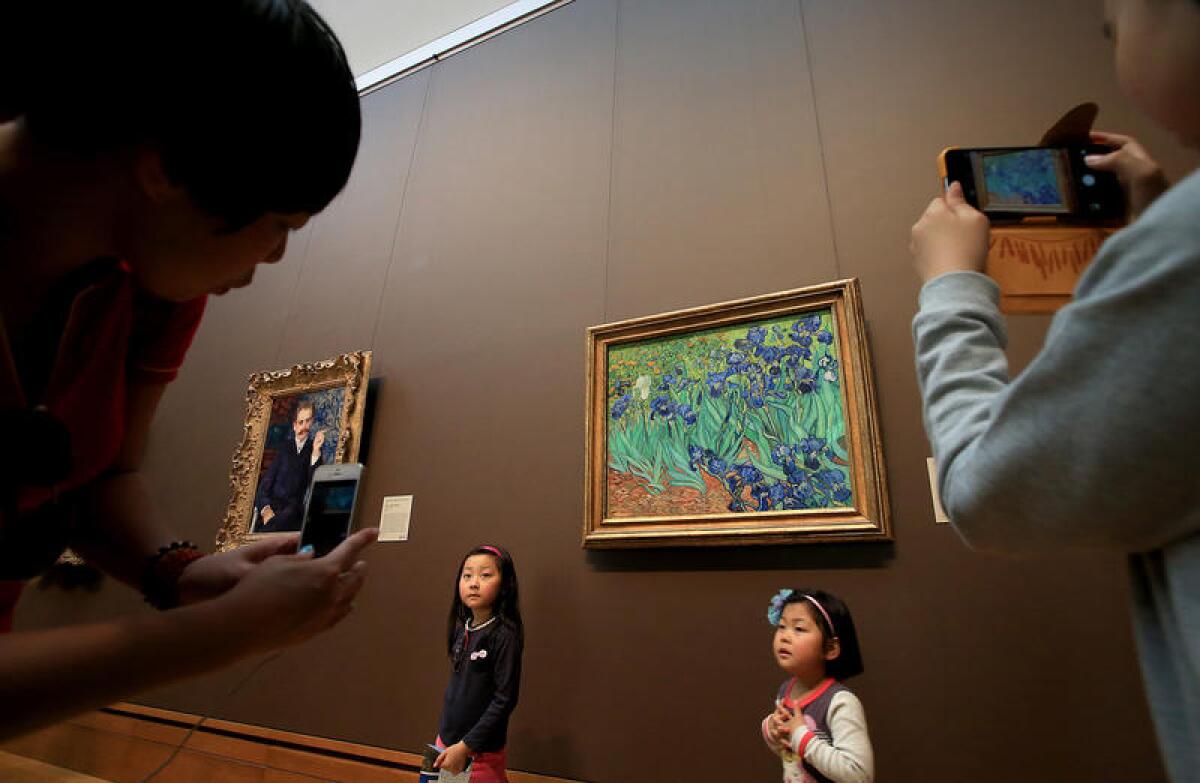
Tiptoe through downtown L.A.’s Bradbury Building like Harrison Ford in the first ‘Blade Runner’

Why: Some buildings have gravitas. This one has that, plus magic. Maybe it’s the filigree of the ironwork, the skylight over the five-story atrium, the terra cotta walls. Maybe it’s the supposed occult influences on the designer.
Or maybe it’s that movie. For several fraught moments in the first “Blade Runner” film (1982), Harrison Ford ducks and scuttles through this building as spotlights rake the atrium. In an enduring cinematic vision of L.A. as dystopia, this was some of the spookiest stuff.
What: The Bradbury Building, completed in 1893 and dramatically restored about 100 years later, seems to be the oldest remaining commercial building in downtown L.A. The Bradbury rents out office space (several private investigators are tenants), and film shoots and other events have been frequent through the years. Last December, the Da Camera Society brought in the Boston Camerata for two chamber music performances.
Some people credit architect Sumner Hunt for the building’s glories; others say it’s because construction supervisor George H. Wyman was inspired by an 1888 science fiction novel. Either way, if you’re walking on Broadway near Grand Central Market, you’d be a fool not to step into the Bradbury lobby. The guard won’t let you walk more than a few steps up the stairs or ride the cage elevators, but it’s still a thrill.
On your way out, don’t miss the towering Anthony Quinn mural across 3rd Street. See the floor tiles beneath Quinn’s feet? They match those inside the Bradbury Building.
Where: 304 S. Broadway, downtown L.A.
How much: Free to stroll through. For a cup of fancy joe in the building’s Blue Bottle Coffee shop, it’s $3.75 and up.
Info: Bradbury Building
Succumb to the magic of Descanso Gardens’ Enchanted: Forest of Light in La Cañada-Flintridge
Why: If the light has faded from your holidays, Descanso Gardens’ Enchanted: Forest of Light, an emerging annual tradition, may flip the switch back on.
What: In the evenings from Nov. 19-Jan. 7, you can take a mile-long stroll through the gardens in La Cañada-Flintridge, where different kinds of lighting bring a new dimension to the 160-acre grounds.
The event debuted in 2016. It’s easy to call Enchanted a holiday light display, but that’s not quite right. There are no symbols of the season, no elves, no jolly St. Nicks. It’s more the suggestion of the ethereal that charms.
As you walk the pathways (wear comfortable shoes, please), you may begin to wonder: Do the giant redwoods shimmer blue and green because they’re illuminated that way or because they’ve been drenched with a kind of liquid fairy dust? Do the maples in the Japanese garden glow red because their natural charm has been enhanced by electrical means or because they’ve perpetually donned their autumnal best for the occasion?
You can fortify yourself before with an on-site dinner of American fare at Maple restaurant. (You’ll need Enchanted tickets to eat at Maple during the run of the show.) Then spend at least an hour wandering, letting yourself succumb to the illusion--and remembering the pleasure of those days when you believed that “magic” was always a plausible answer.
Where: 1418 Descanso Drive, La Cañada Flintridge, 13 miles northeast of downtown Los Angeles
How much: Tickets, which are timed and go on sale to the public Oct. 16 at 10 a.m., cost $28-$30. (Descanso members, for whom tickets were available beginning Oct. 2, pay $23-25.) Children younger than 2 are admitted free but must have a ticket.
Info: Enchanted: Forest of Light
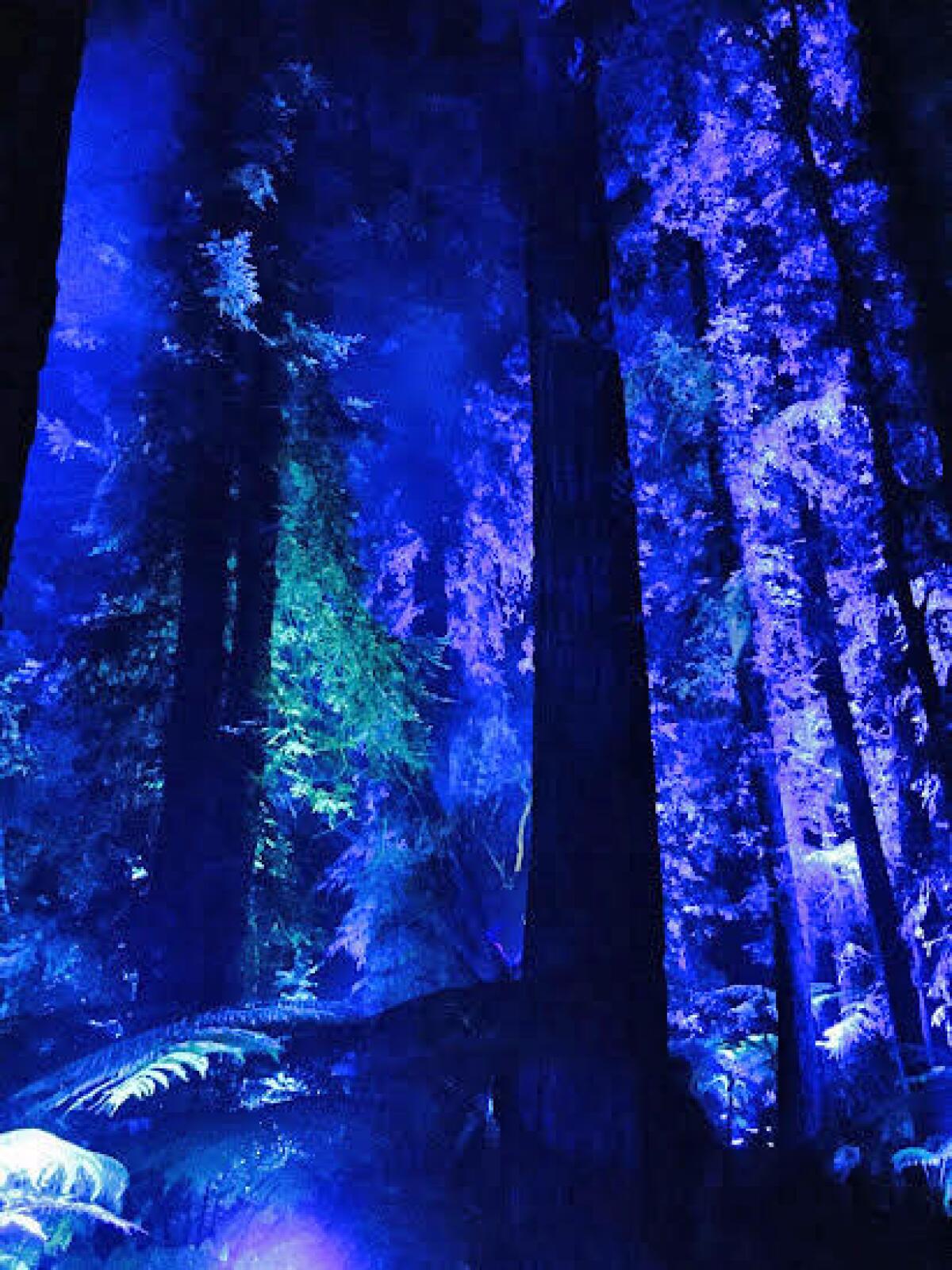
Pretend you live on a Hollywood hilltop in Frank Lloyd Wright’s Hollyhock House
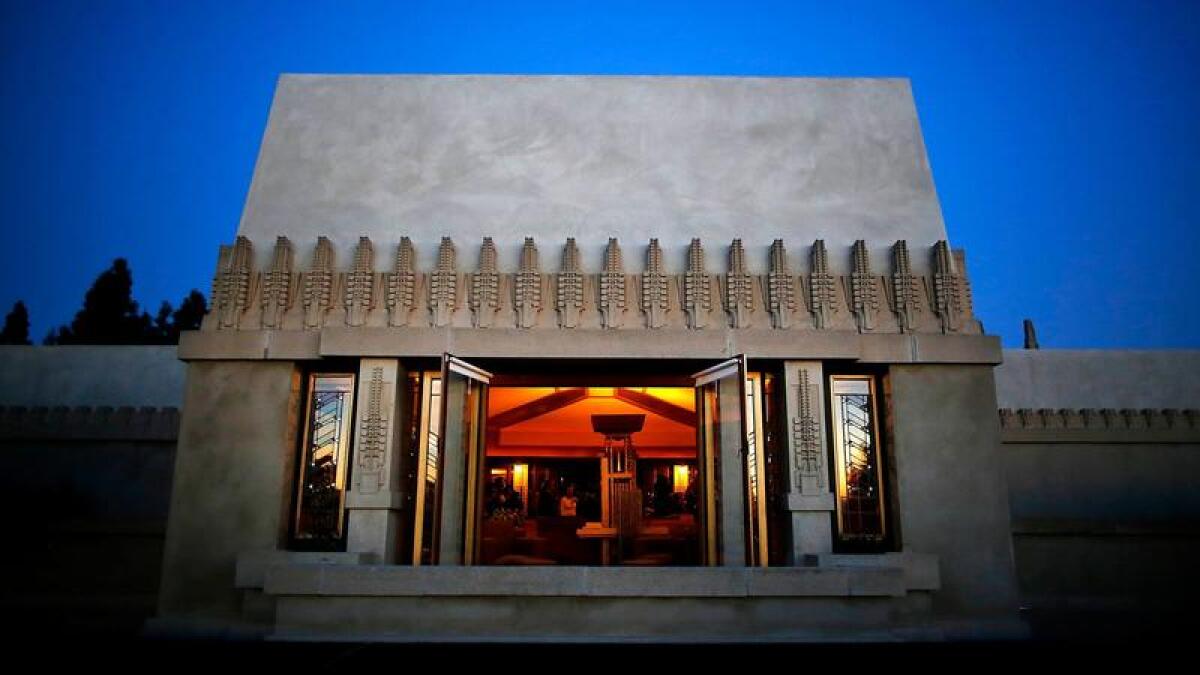
Why: Frank Lloyd Wright, the cantankerous genius architect best known for his buildings in Illinois, Pennsylvania, Arizona, Tokyo and beyond, did some interesting things in California, too. This hilltop home -- officially, the Aline Barnsdall Hollyhock House -- is one of them. And unlike many Wright homes, it’s open for tours.
What: The house, Wright’s first Los Angeles commission, was completed in 1921 for an artsy oil heiress named Aline Barnsdall. Wright called the style “California Romanza,” but it looks a lot like a Mayan mansion with a prime view of the Hollywood Hills and Griffith Park. Inspect that view closely, and you’ll notice, 1.4 miles due north, the patterned concrete blocks of another Wright project, the Ennis House, now privately owned.
In any event, Wright’s client didn’t care for it much. In 1927 she donated 11 acres, including the home and some neighboring structures, to the City of Los Angeles. Today the compound serves as Barnsdall Art Park, busy with classes for youths and adults (and Friday-night wine-tasting in summer months). Hollyhock House, reopened in 2015 after years of fundraising and restoration, is neighbored by an art gallery, studio and theater space, the slopes planted with olive trees. The home’s former garage now serves a visitor center and gift shop.
The home is open for self-guided tours on Thursdays through Sundays, 11 a.m. to 4 p.m. (Last ticket sold at 3:30 p.m.) It is wheelchair-accessible, but there’s no air-conditioning, so when interior temperatures reach 90 degrees, they close.
Where: Barnsdall Art Park, 4800 Hollywood Blvd., five miles northwest of downtown Los Angeles.
How much: Tickets are $7 for adults, $3 for seniors and students, free for children under 12 with a paying adult at the visitor center (Visa and Mastercard only). No advance reservations and no photography inside. For $70, you can get a private, docent-led tour on certain mornings.
Info: Barnsdall Art Park
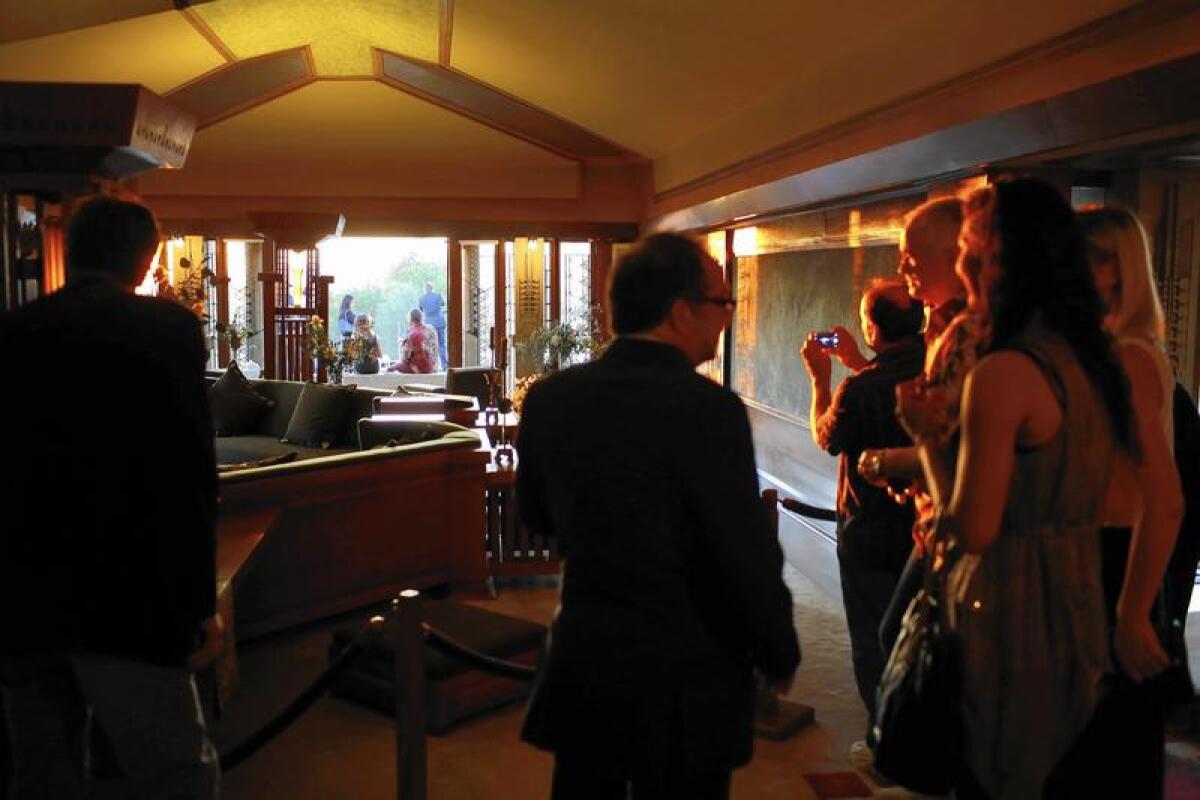
Raise your gaze inside the Wayfarers’ Chapel, a glass-walled wonder on the Palos Verdes Peninsula
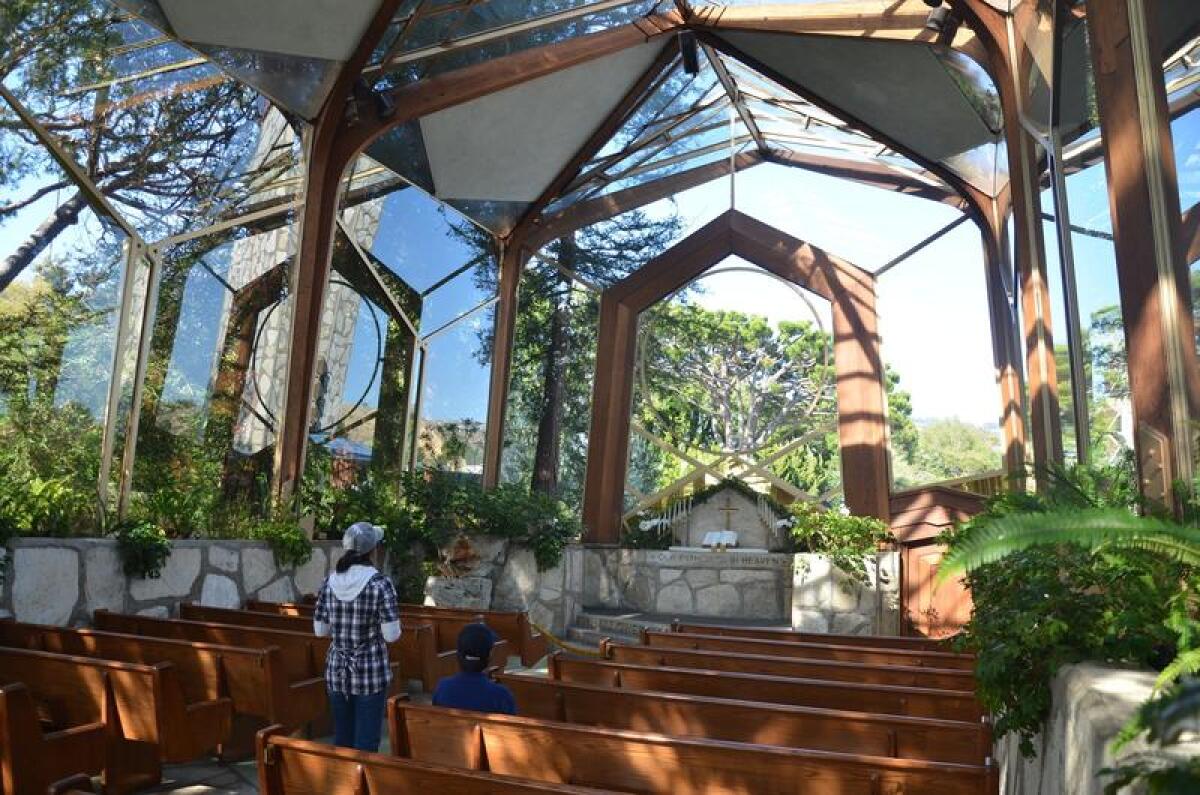
Why: This building merges church and nature in a rare way.
What: Designed by Lloyd Wright for the Swedenborgian Church and opened in 1951, this chapel’s glass walls and ceiling effect make the surrounding redwoods a part of its architecture. The result is a “tree chapel” that blurs distinctions between inside and outside, spirituality and nature. Many architects call this style Modern Organic. Whatever language you prefer, it’s nice to see the sky from inside the sanctuary. The locally quarried stone adds an earthy touch. And the road you ride in on across the lush slopes of the Palos Verdes Peninsula — that isn’t bad either.
Also, once you’re inside, there’s more than one way to look up. In 2017, yoga (gentle and Kundalini) was offered on Tuesday and Wednesday nights from May through September; check the chapel website to see if that continues in 2018.
The chapel is open daily from 9 a.m. to 5 p.m.; the visitor center, 10 a.m. to 5 p.m. Because the site is heavily booked with weddings, baptisms and memorials at 10 a.m., 12 p.m., 2 p.m. and so on (especially on weekends), the best time to get a look inside is to show up at 9 a.m., 11 a.m., 1 p.m. or 3 p.m. — the odd hours. You’ll have up to 30 minutes. Drones are banned.
Where: 5575 Palos Verdes Drive South, Rancho Palos Verdes, 31 miles south of downtown L.A.
How much: No set fee to visit. Donations encouraged. Want to book a Saturday afternoon wedding in 2018? That’ll be $3,900, if there’s a day still open.
Info: Wayfarers Chapel
Pace the decks of the Queen Mary, Long Beach’s most storied retiree
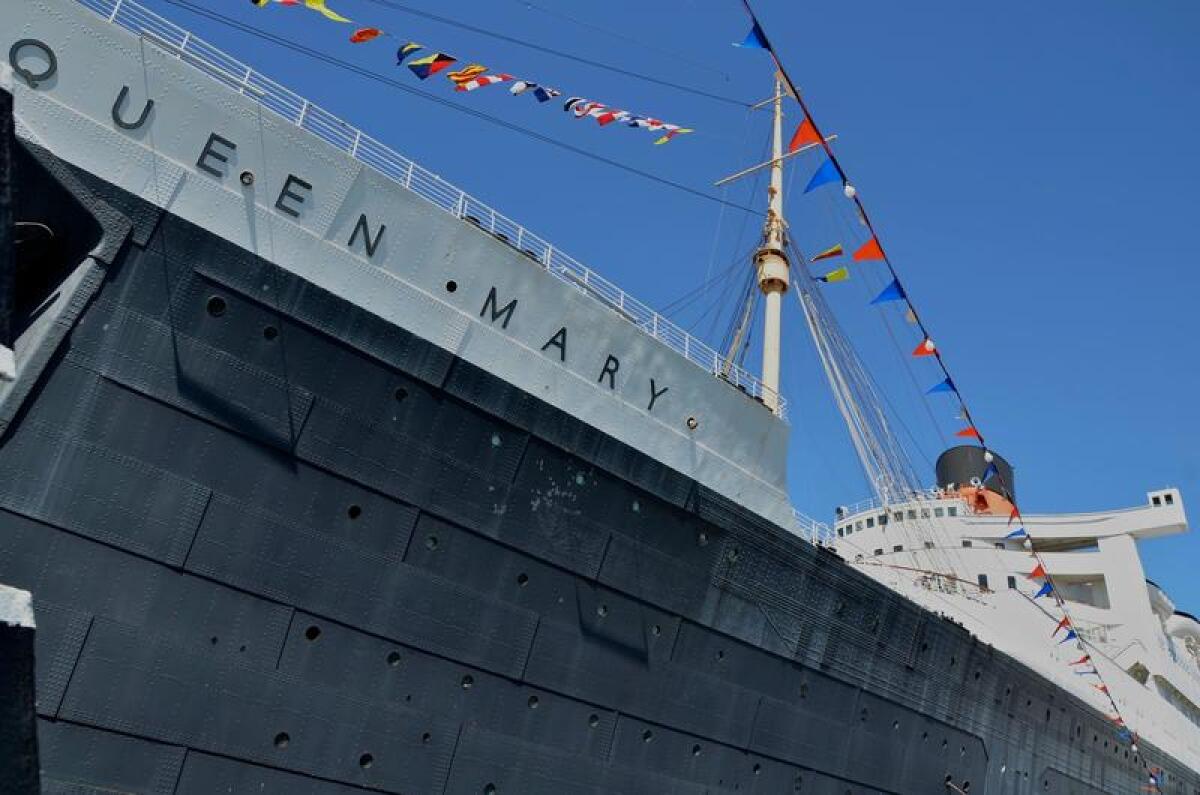
Why: Since her launch in England by the Cunard Line in 1936, the Queen Mary has seen war, peace, Europe, New York, Clark Gable, Winston Churchill and, more recently, Ships & Giggles Comedy Night in Long Beach. In early December, it will be 50 years since the grand old lady arrived to begin her retirement years in Long Beach Harbor as a floating hotel, restaurant and special-events venue. Since she needs as much as $289 million in work, there’s no telling how much longer this retirement will last.
What: The ship is more than 1,000 feet long, with 12 decks and three smokestacks. Converted into a troop ship and painted gray during World War II, the Queen Mary could carry up to 16,683 soldiers and sailors. She resumed civilian service after the war, but before long the rise of air travel largely destroyed demand for transatlantic passenger ships. In late 1967, the ship made her 1,001st (and final) transatlantic voyage and settled into her current location. The City of Long Beach’s plan was to boost tourism.
The years since have been bumpy. The Queen Mary has had success with seasonal attractions like the Dark Harbor program that runs through Nov. 1. But beneath those spooky trappings, the ship is genuinely suffering from extensive structural corrosion. Without dramatic repairs, experts have warned, an internal collapse could come within 10 years.
But there’s no place quite like it on the West Coast, and the ship’s operators have been talking up some ambitious plans. If you’re not ready to spend the night or brave Dark Harbor, the hour-long Glory Days Historical Tour is offered eight times per day, every day.
Where: 1126 Queens Highway, Long Beach, 25 miles south of downtown L.A.
How much: A one-day Passport (which includes self-guided exploration, access to the model ship gallery, a “4-D” theater presentation and the Glory Days Historical Tour or an alternative called Haunted Encounters) costs $27 and up (plus service fees) per adult, $17.50 and up (plus service fees) per child aged 4-11. Parking is $18 a day.
Info: Queen Mary
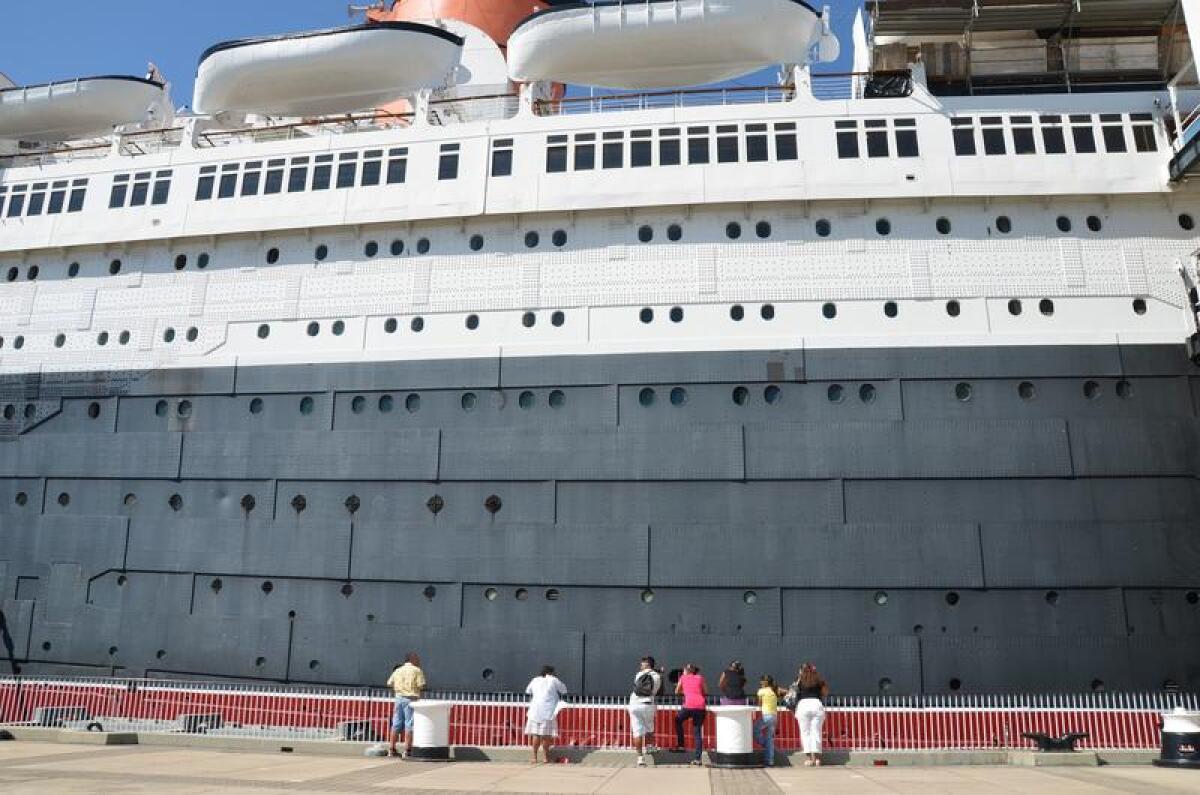
Don a yang mori head towel at Wi Spa in L.A.’s Koreatown
Why: Los Angeles is famous for body-care regimens ranging from the questionable to the overindulgent. The dozens of practical and affordable Korean spas are less known, tucked away in office buildings throughout Koreatown and beyond. Wi Spa is the granddaddy of them all.
What: Wi Spa is a modern bathhouse with roots in the ancient Korean tradition of communal bathing and sweating. For a modest admission price, you have access to a megaplex of relaxation with saunas and baths, hair and nail salons, a gym, a full-service restaurant, TV and lounge areas, sleeping rooms, a manga library, a skin-care boutique, open-air terrace, computer room, kids zone and a coed communal heated room known as jimjilbang (or sometimes jjimjilbang). Stay for an hour or lounge all day — you’ll leave renewed. And you may learn how to fold a towel into a yang mori (lamb’s head) hat.
Spa etiquette can be intimidating, but you won’t have any trouble if you follow two basic rules: Take your shoes off before entering the spa area and wash yourself in a shower before entering a tub or sauna, which includes rinsing after every sweat session. Nudity is required in the gender-segregated floors, but everyone receives a T-shirt and shorts for the jimjilbang. This is the living room of the spa, where patrons of all ages relax together on the heated floors. Here, specialty saunas — including the 231-degree bulgama and the clay ball room — line the walls.
After you sweat it out, try the signature Korean body scrub, called the buff, to experience a no-frills whole body exfoliation well worth the gruff handling. Top off your stay with the shareable patbingsu — a swell of shaved ice covered in condensed milk, sweet red beans, fruit and mochi.
Wi Spa never closes, and makes a great choice for a spa day if you are new to the experience, bringing the kids along, or want a wide range of spa amenities. Other nearby options include Natura Spa; Olympic Spa (women only); and Spa Palace, for a less crowded, smaller version of Wi Spa.
Where: 2700 Wilshire Blvd. in downtown L.A.
How much: $25 admission, waived with a service over $120. Children under 18 get in on Fridays for $15.
Info: Wi Spa
Roll past the Santa Monica house that announced Frank Gehry’s talents and annoyed his neighbors
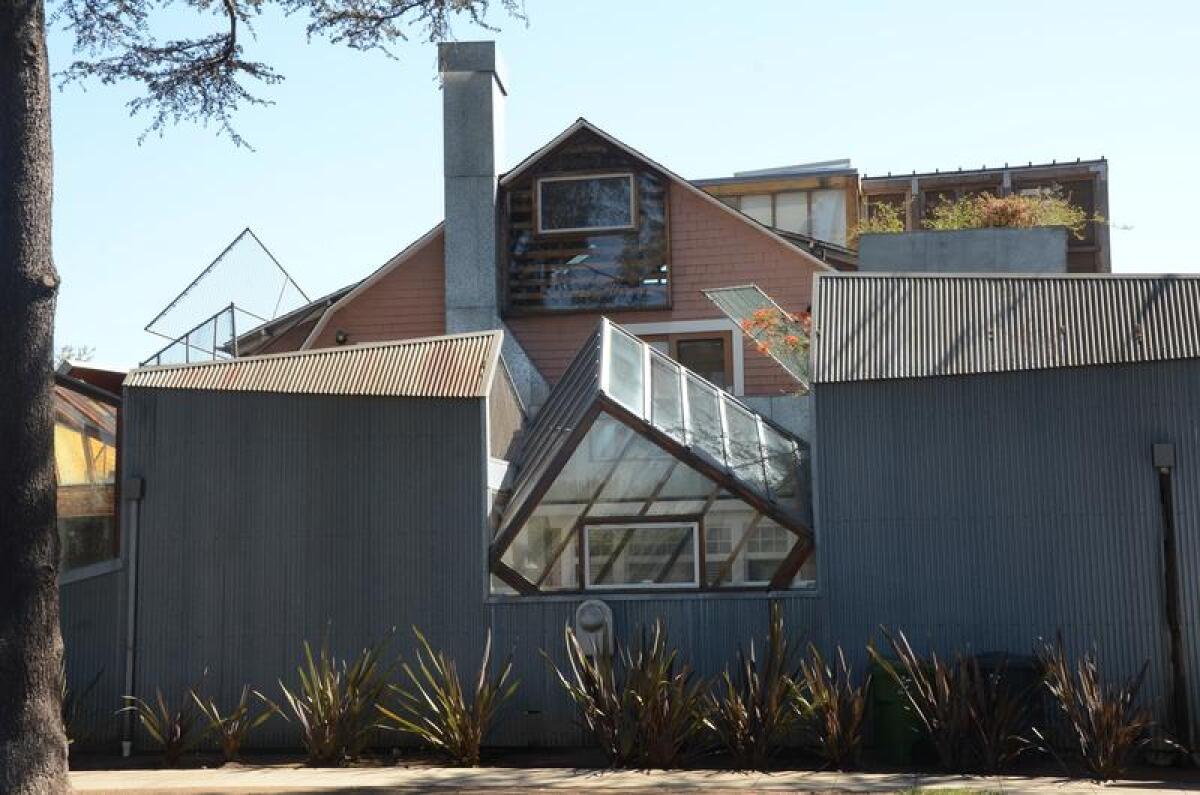
Why: Before Frank Gehry conjured the amazing architecture of Guggenheim Museum Bilbao, Walt Disney Concert Hall and dozens of other high-profile projects, he started experimenting on a standard ‘20s home — his own. Forty years later, that home (which he still owns) is an icon of deconstructivism, and a pilgrimage point for young architects and students of design.
You can’t go closer than the sidewalk — it’s a private home. But you can drive by slowly or park and walk the block.
What: Gehry (whose 89th birthday is Feb. 28, 2018) was still a largely unknown name when he and his wife bought the house at 22nd Street and Washington Avenue in the late 1970s. It was a 1920s Dutch Colonial, two stories on a corner lot, in a middle-class neighborhood that was part single-family homes, part apartment buildings.
Then Gehry went to work. Soon the place had corrugated metal walls, irregular angles, protruding glass cubes, plywood panels, chain-link rectangles — on a block of suburban style and 90-degree angles, it looked like a satellite crash. As the story goes, the neighbors were outraged.
A few decades later, some rough edges have been softened by landscaping and another big renovation in the early 1990s. Zillow thinks just about every house on the block is worth more than $2 million. And Gehry’s name is known around the world. But how long will this Gehry Residence belong to the Gehry family? It’s unclear. The architect has worked for years on a pair of new homes, one in Santa Monica, one in Venice.
Where: 1002 22nd St., Santa Monica, 16 miles west of downtown L.A.
How much: Free (unless you overstay the two-hour parking limit on many of the neighborhood’s streets).
Info: L.A. Conservancy
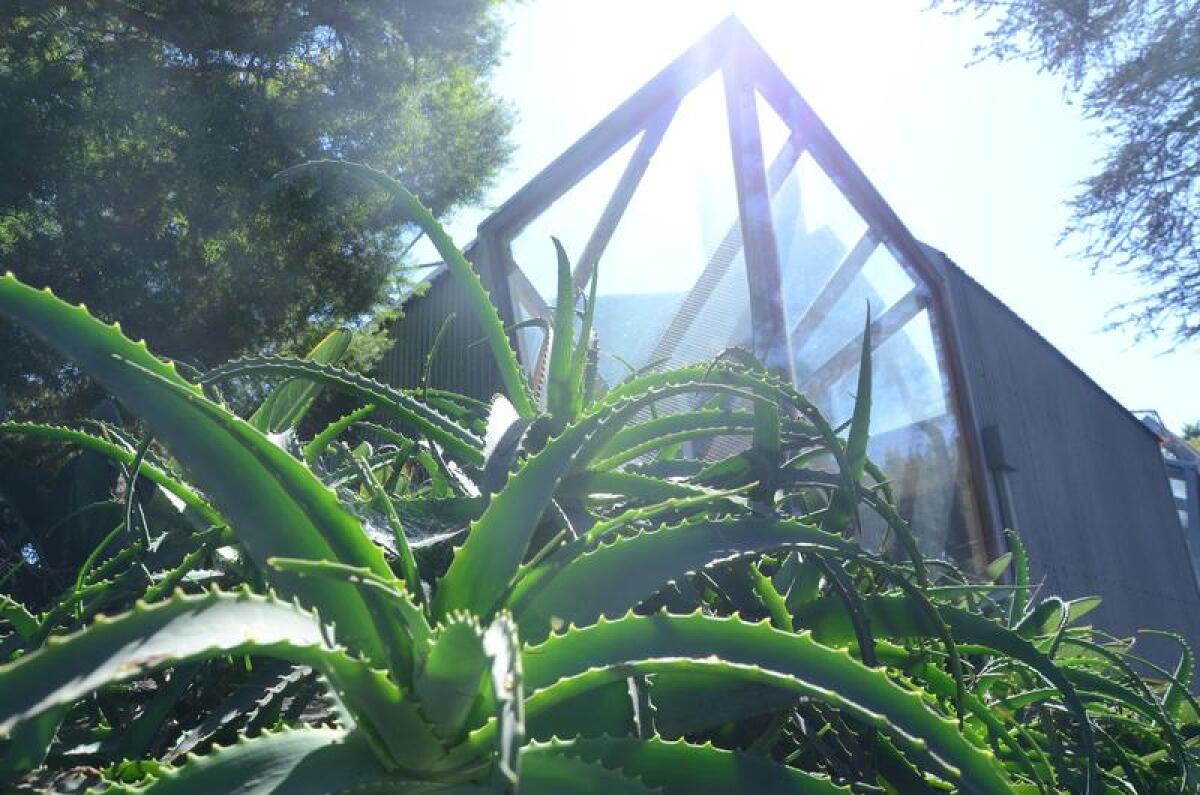
Take tea amid wonder and mumbo jumbo in West L.A.’s Museum of Jurassic Technology
Why: Life is full of mysteries, misunderstandings and bald-faced lies. This place too. Its dim rooms, sober tone and perplexing exhibits are designed to mess with your head while reveling in the weird things that happen when we try to explain or collect nature or culture. Confused? Don’t worry. Have a cup of tea upstairs and commune with the doves in the tiny courtyard.
What: This museum is designed to test your credulity and make you gasp. Enjoy the microscopic sculptures, the mice on toast (a cure for bed-wetting?), the trailer-park dioramas, the short films that screen hourly upstairs. Also don’t miss the Soviet space-dog portraits. In awarding museum curator David Wilson one of its “genius” grants in 2001, the MacArthur Foundation called the museum “a provocative commentary on how we organize and archive cultural artifacts,” noting that “fact and fiction are displayed with equal precision and diligence.”
And next door you’ll find a sort of cousin institution — the Center for Land Use Interpretation, which examines human effects on the landscape using keen wit, deadpan tone and extensive photography. CLUI’s current show, unveiled Sept. 22 with seven high-resolution monitors in a single bright room, is “Engaging Scale: The Railroad Landscape as an Analog Macroscope.” It’s about model railroads, real ones and the scenery they inhabit.
(And while you’re investigating offbeat displays, you might also consider also the Velaslavasay Panorama, which is scheduled to reopen in spring 2018 after installation of a new exhibit.)
Where: 9341 Venice Blvd., Culver City, 10 miles west of downtown L.A. (It has a Culver City mailing address, but the museum is actually in the West L.A. neighborhood of Palms.)
How much: Adult admission is $8. For full-time students, unemployed persons and youths age 13-21, it’s $5. The museum is open Thursdays 2 p.m. to 8 p.m., Fridays, Saturdays and Sundays from 12 p.m. to 6 p.m.
Info: Museum of Jurassic Technology
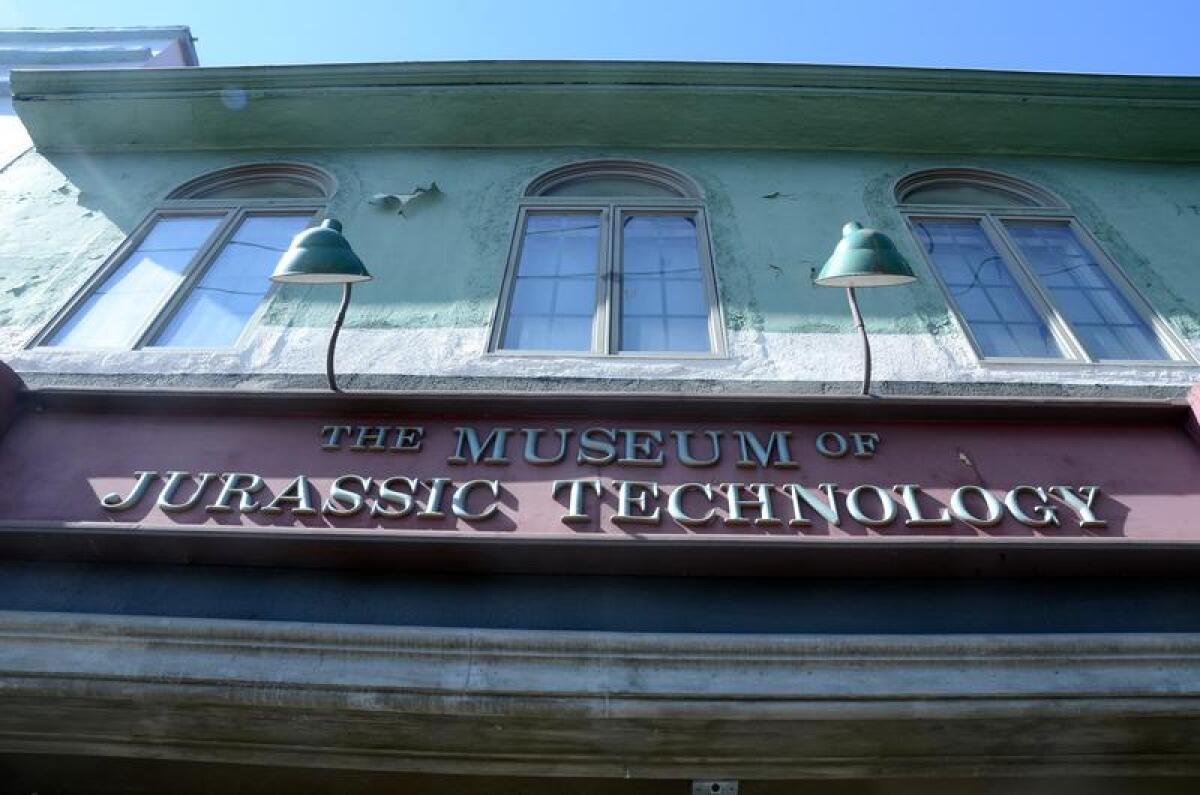
Work up a sweat seeing beautiful flowers and plants at San Francisco’s Conservatory of Flowers
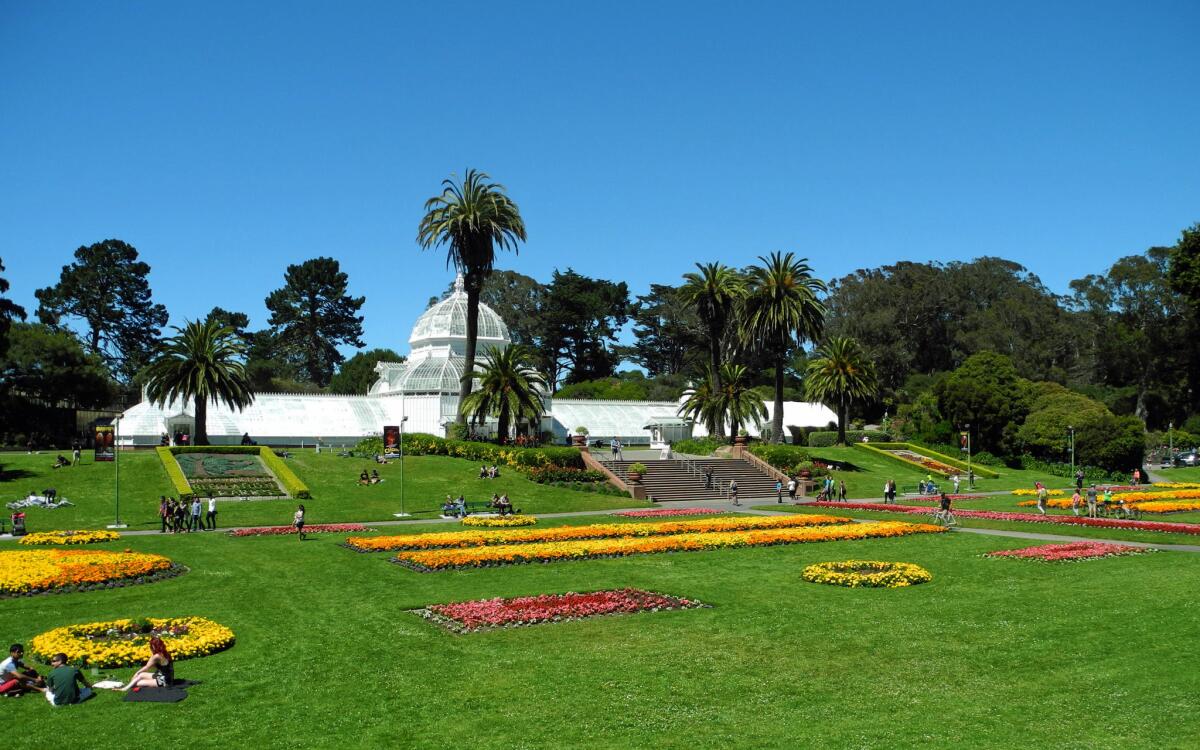
Why: There’s a wonderful cognitive dissonance in feeling as though you’re in the tropics and knowing you’re in San Francisco. That’s daily life in Golden Gate Park’s Conservatory of Flowers, where temperatures average 75 to 80 degrees during the day, coupled with a humidity of 70% to 80%. Plus you get a little helping of history with your heat and humidity.
What: Greenhouses once were the playhouses of the rich; this glass-and-wood beauty was supposed to become part of a Santa Clara estate belonging to wealthy businessman James Lick. His death in 1876 ended the idea of a grand greenhouse, and it sat until a group of San Franciscans, including Leland Stanford and Charles Crocker, bought it and donated it to the city. It opened in 1879.
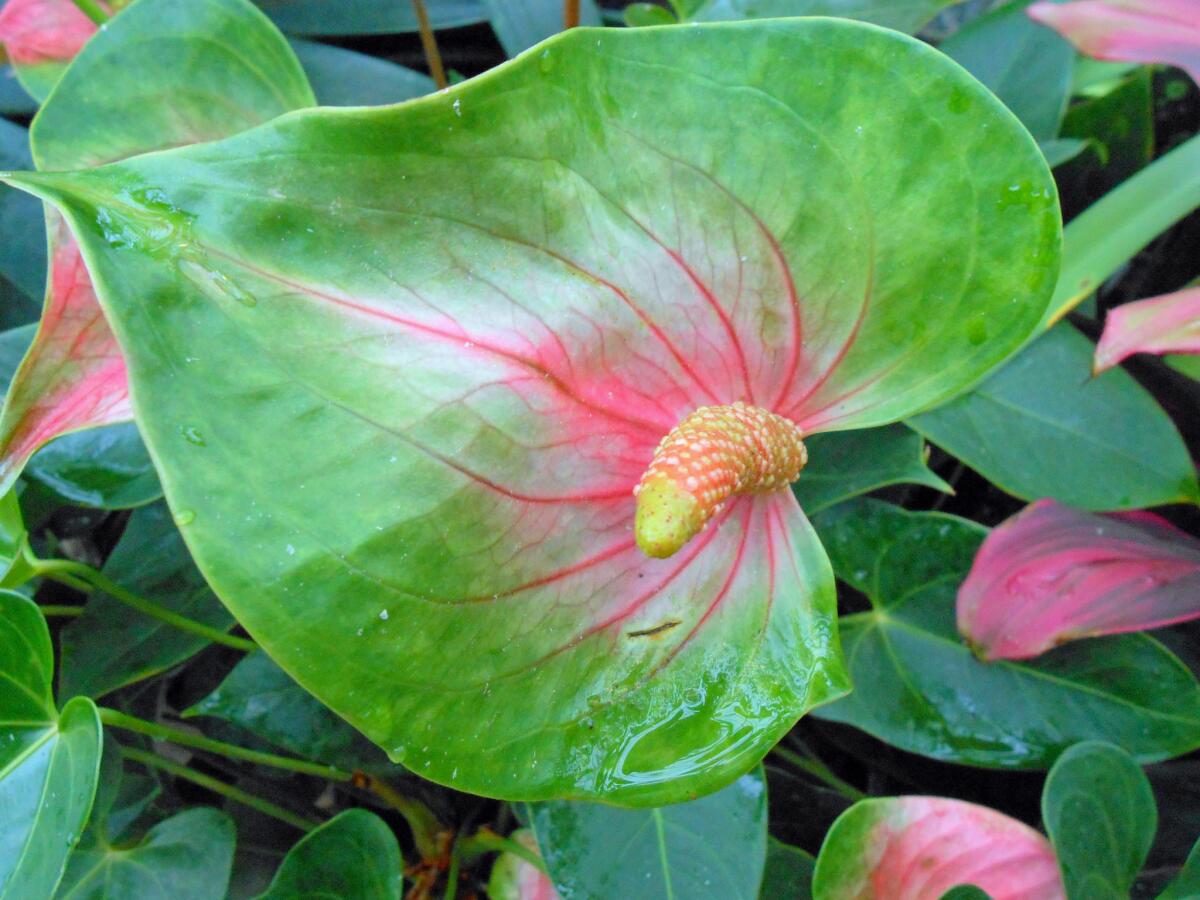
Its life has been no bed of roses. At least one explosion, a fire and a windstorm have damaged it, sometimes closing it for long stretches, although oddly enough, it survived the 1906 earthquake unscathed. Still, in the 1990s, it landed on the World Monuments Fund‘s list of endangered sites. But it was saved, once again, by a fundraising effort.
Today the conservatory is thought to be the largest such structure in the world, and on days when the sun is out, it seems like a gleaming white symbol of tenacity.
Inside, you’ll find the familiar (anthurium, orchids and hibiscus), the exotic (chenille and lipstick plants) and the odd (the Dracula orchid and the corpse flower, which bloomed in June). You can watch a time lapse of the opening of the odiferous corpse flower. Fortunately, you cannot smell it.
The conservatory also has special exhibits (Butterflies and Blooms through Jan. 8) and special events (an Oct. 19 Dracula Orchid Ball — Gala Under Glass) that keep the experience different for repeat visitors.
Where: Golden Gate Park on John F. Kennedy Drive, about 385 miles northwest of downtown Los Angeles
How much: $9 for adults, $6 for seniors 65 and older and youth 12-17, $3 for children 5-11 and free for children 4 and younger. Tickets to the Dracula gala begin at $350. (It’s a fundraiser.)
Info: Conservatory of Flowers
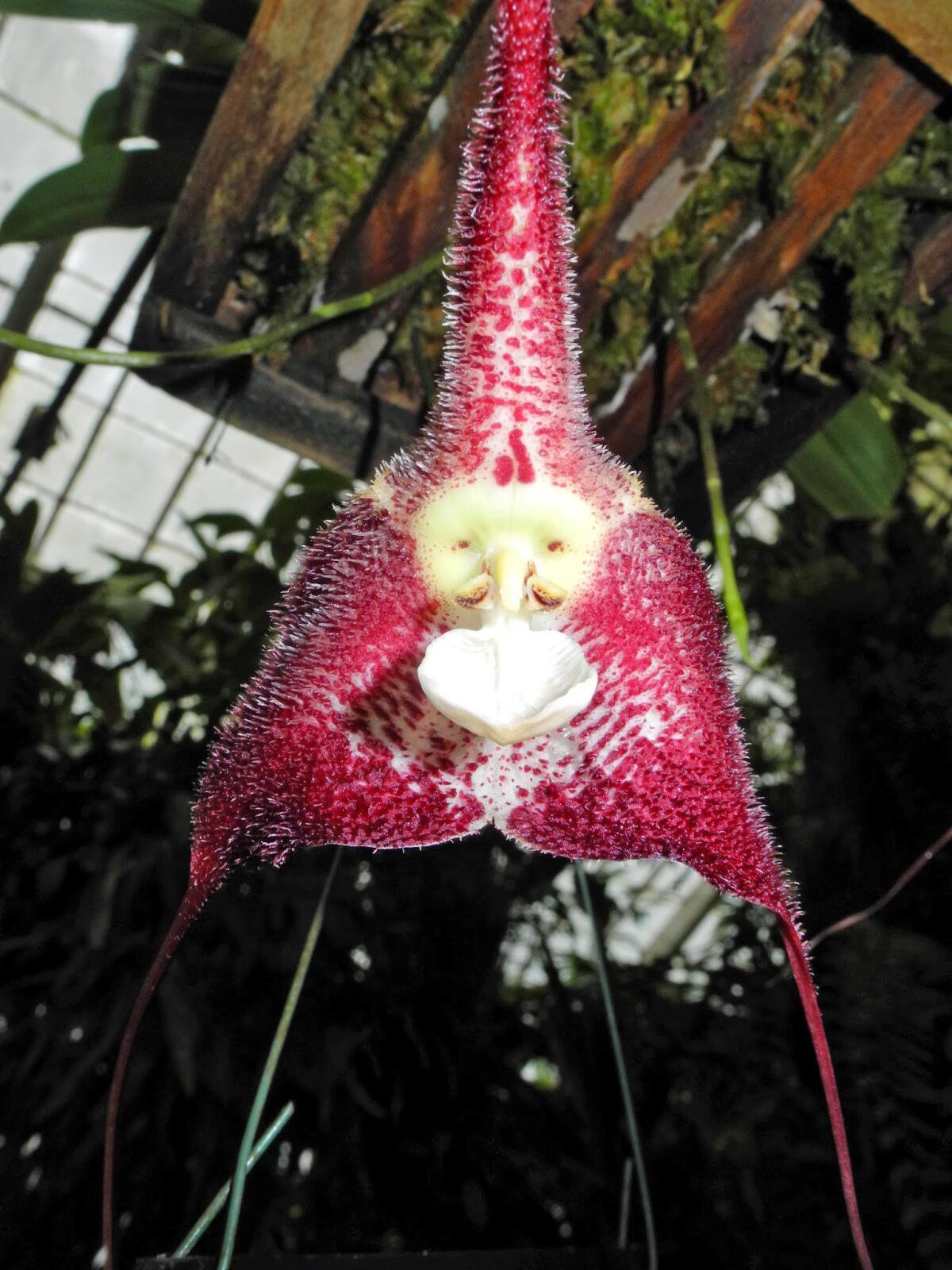
Ride the world’s largest collection of roller coasters at Six Flags Magic Mountain in Valencia
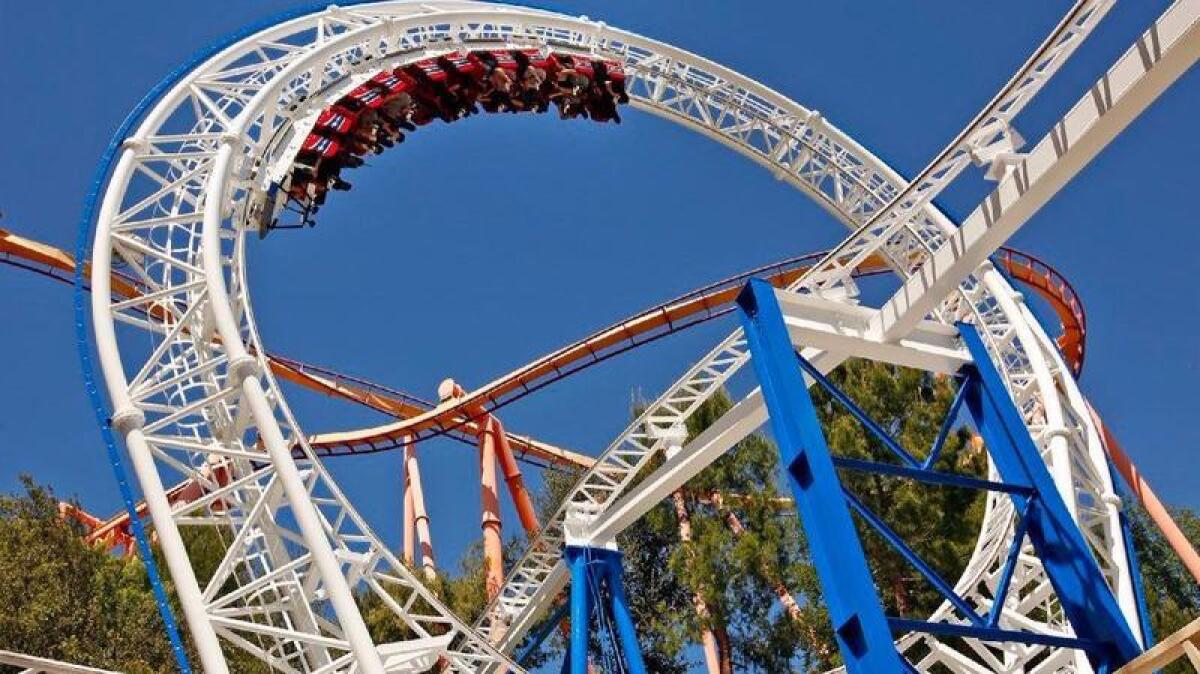
Why: Magic Mountain packs in more screams per hour than all of Southern California’s other theme parks combined.
What: Six Flags Magic Mountain delivers what Disneyland can’t: thrills. It has more coasters than any other amusement park in the world.
The fourth-dimension X2 coaster with rotating seats makes your pulse quicken and palms sweat. Twisted Colossus combines the classic feel of a wooden coaster with the looping thrills of modern steel beasts. Soar like a bird with nothing between you and the ground on the gravity-defying, terrain-hugging Tatsu flying coaster.
This 260-acre amusement park is still home to the world’s first modern vertical looping coaster: Revolution. The ride, opened in 1976 during America’s bicentennial celebration, went on to play starring roles in the films “Rollercoaster” (1977) and “National Lampoon’s Vacation” (1983).
Where: 26101 Magic Mountain Parkway, Valencia, 34.8 miles northwest of downtown L.A.
How much: Daily tickets for adults cost $50.99 online and $84.99 at the park. Annual passes run $269.99 per year. The park is currently running a buy-a-day, get-a-year sale (through Oct. 31).
Info: Six Flags Magic Mountain
Surf Southern California, even if you need a lesson
Why: Because it’s an irreproducible thrill to balance a board on a rolling wave. Because it’s an excuse to get in the water. And because surfing underpins so much of California popular culture.
What: Blame the three Hawaiian princes who introduced surfing to California in the 1880s. Or blame the Beach Boys for deciding to sing about it in the early 1960s. Either way, the word got out about this sport, which can be fatal or, in the best of circumstances, not so hard.
I admired it from afar until the other day, when I signed on for a 90-minute, one-on-one lesson at beginner-friendly Mission Beach in San Diego. Instructor Adam Wiegand took me through the basics, launched me into a few waves, then went ashore and hollered instructions at me, the 56-year-old rookie. It wasn’t pretty, but I got up a few times and spent some precious seconds gliding with the tide. This means it’s not that hard.
It does help to start on a day of 1-2-foot waves, using a 10-foot-long foam board — that’s about the size of an aircraft carrier. We did need to be careful of stingrays on the sandy bottom (no stings, thankfully) and we had the happy distraction of a dolphin swim-by.
Where: Classes like this are offered up and down the coast, and the citizen critics of yelp have evaluated more than a dozen in Santa Monica alone. I used Surfari Surf School, 3740 Mission Blvd, San Diego, 116 miles southeast of downtown L.A.
How much: Surfing instruction rates vary widely. At Surfari, I paid $85 for a 90-minute one-on-one session (and an added hour of board and wet suit rental, if I’d had the energy). For a group lesson (three to five people), the rate is $55 per person.
Info: Surfari Surf School
Climb the Balboa Park tower that authorities kept closed for 80 years
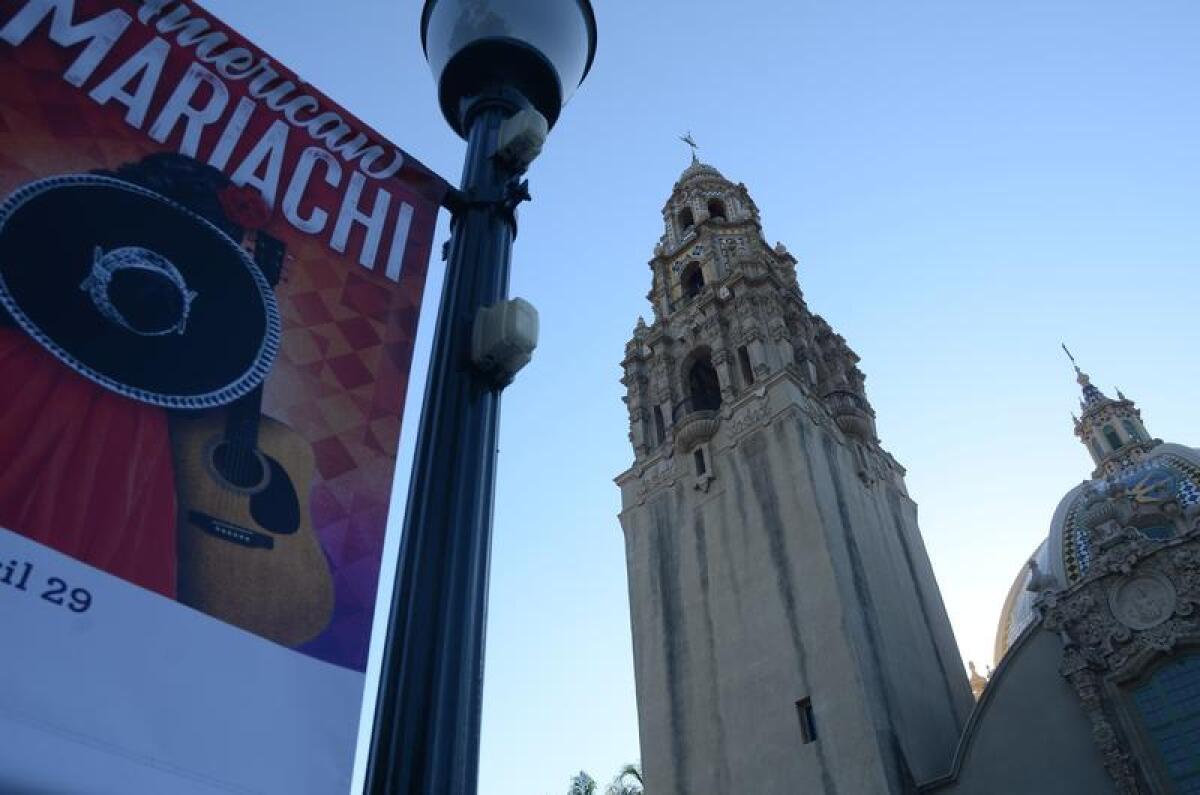
Why: The California Tower, built to conjure Spanish Colonial daydreams for a world expo in 1915, was closed to visitors in 1935. But it reopened in 2015 and as you surmount its 157 steps, you’ll hear how Balboa Park has grown from a temporary fairground into one of the nation’s foremost urban parks. You’ll also get a bird’s-eye view of the signature tiled dome that’s also part of the California Tower.
What: The tower and dome are both part of the Museum of Man, one of 17 cultural organizations in the park. If you sign up to climb the tower, your guide will remind you how the 1,200-acre park began as a venue for the Panama-California Exposition of 1915, San Diego’s underdog effort to compete with San Francisco’s Panama-Pacific International Exposition the same year. San Francisco’s expo was fancier, but when those parties were over, San Diego set aside more acreage, preserved more buildings and may have reaped more long-term benefits.
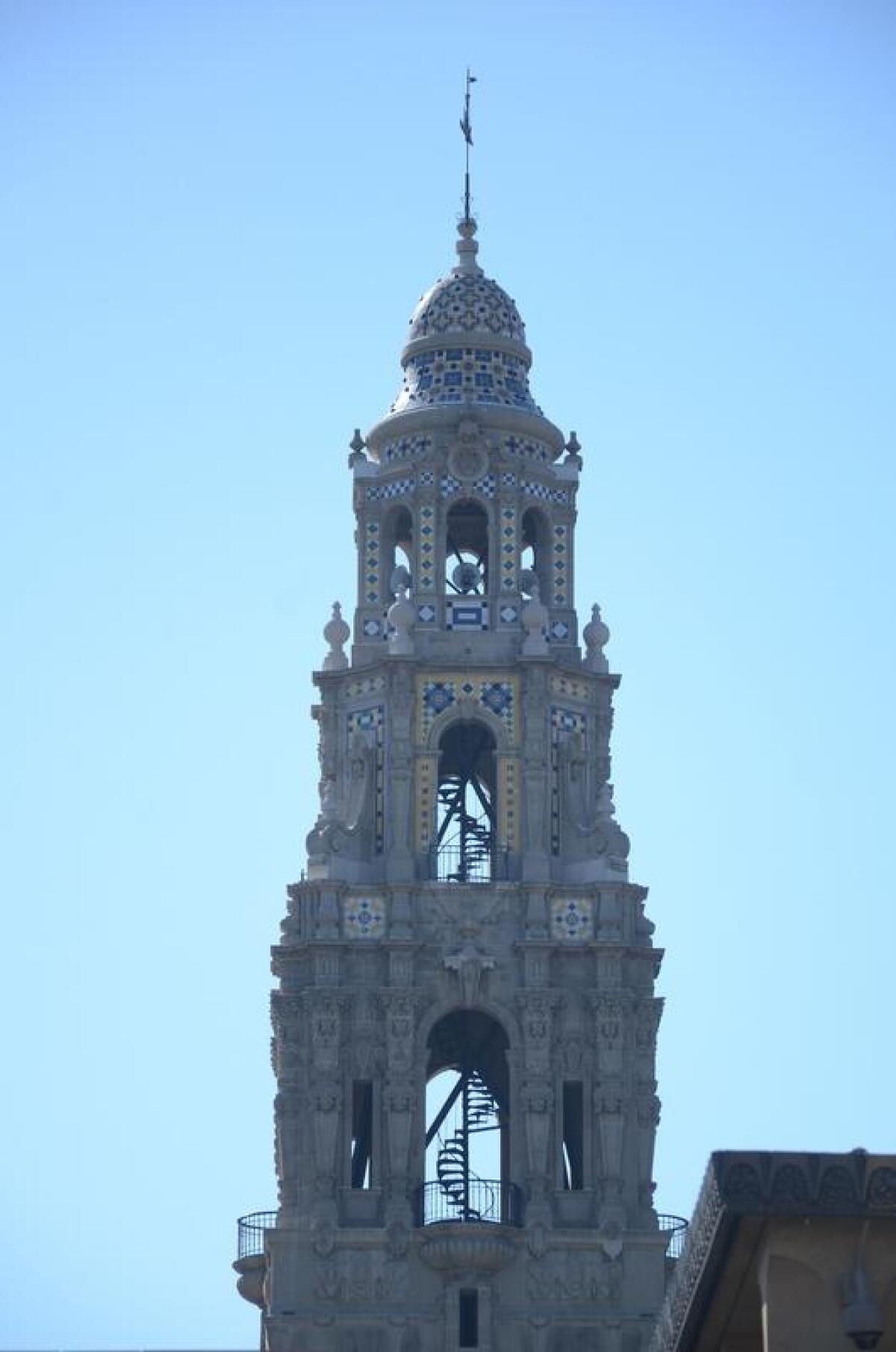
Anyway, the tour lasts about 40 minutes. It’s fun to climb the narrow spiral staircase (and a tad disappointing to learn that the highest levels of the tower are off-limits). The observation deck, about 100 feet above the ground floor, looks out on the redwood lattice of the Botanical Building; the not-so-native trees shading the not-so-native animals of the zoo; the curlicued Spanish Colonial Revival facades of the Prado; the roofs of the Old Globe; and the Cabrillo Bridge, also built for the long-ago expo.
Within a short walk of the tower, you’ll find the Fleet Science Center, the Museum of Photographic Arts, the San Diego Natural History Museum, the San Diego History Center, the San Diego Museum of Art, the Japanese Friendship Garden and more. In fact, it you haven’t given Balboa Park at least half a day, you’ve probably fouled up your San Diego vacation.
Where: 1350 El Prado, San Diego, 123 miles southeast of downtown L.A.
How much: Tower tour tickets (which also include museum admission) cost $22.50 per adult, $18 for students over 12, $10 for students and children age 6-12. Open to children 6 and older. (Frugal family option: Flop down on the grass by the park lily pond and listen to the musicians that play there for tips.)
Info: Museum of Man, Balboa Park
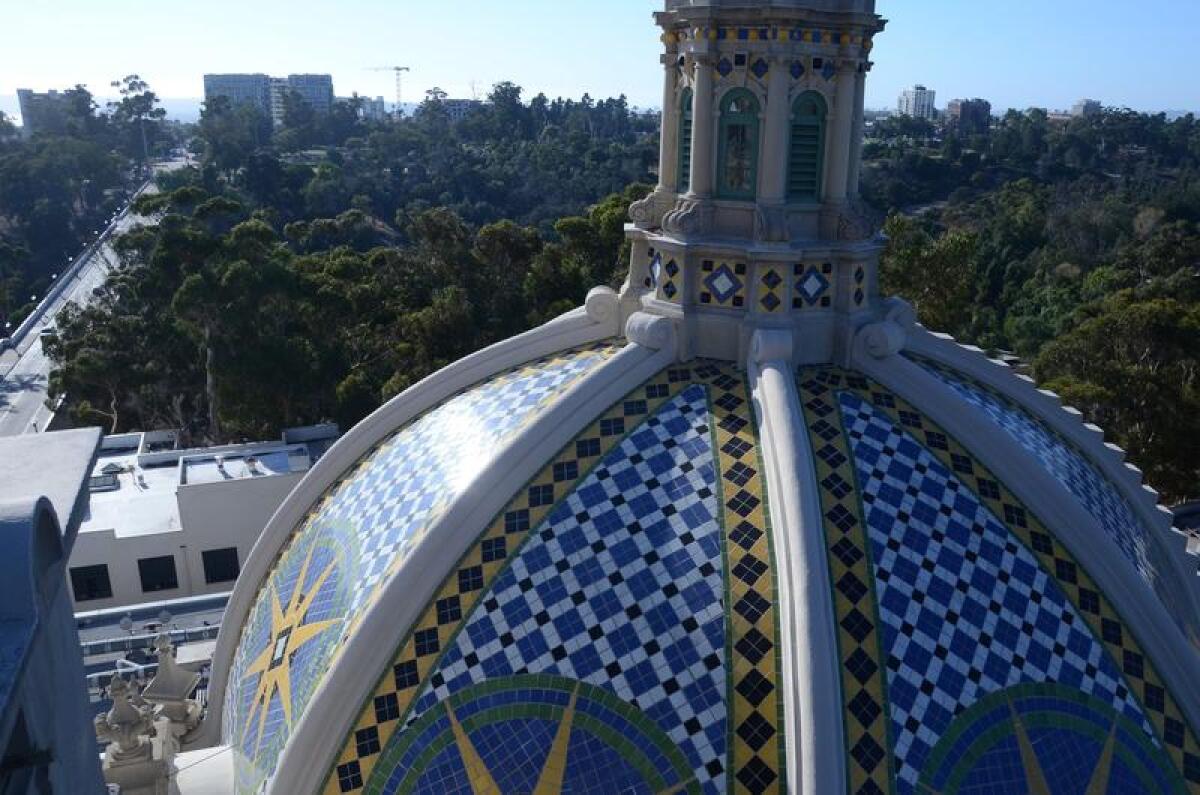
Watch gliders fly and architecture soar on a La Jolla clifftop
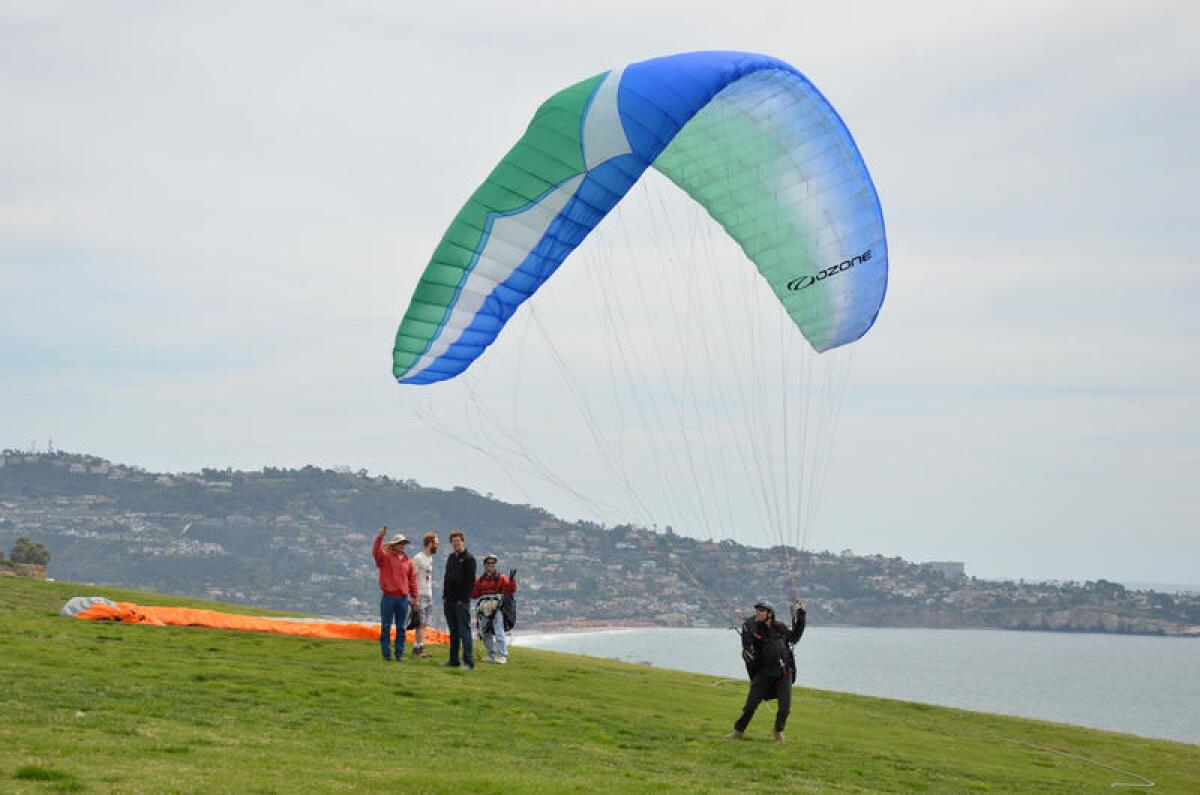
Why: This is the place to see grown men and women jump off a perfectly good cliff, then rise on the updraft.
What: The Torrey Pines Gliderport sits between the UCSD campus and the sea, sending skyward a steady stream of paraglider pilots and the occasional model airplane. And just down the road you find another set of planes -- the stark, symmetrical, concrete surfaces of the Salk Institute for Biological Studies, designed by Louis I. Kahn in 1965 and hailed in a 2017 survey of architects as one of California’s 25 must-see buildings. (There are weekday tours.)
Of course the Pacific view is great from around here. (That’s Black’s Beach below.) Grab lunch at the Cliffhanger Cafe, settle in at a picnic table and watch the action.
By the way, the flight history here is thicker than you’d think. Sail planes were taking off here as early as the 1920s. In 1930, Charles Lindbergh himself glided on these winds. Hang gliders came along in the 1970s, then paragliders. Tandem paraglider flights are big these days because they allow a rookie to go aloft with an instructor.
Where: The glider port, cafe and their dirt parking lot are about 500 yards west of the Salk Institute at the end of Torrey Pines Scenic Drive. That’s 108 miles southeast of downtown L.A.
How much: Watching the take-offs and landings is free. Most soups, salads and sandwiches at the Cliffhanger Cafe run $7-$9.
Info: Torrey Pines Glider Port, Salk Institute
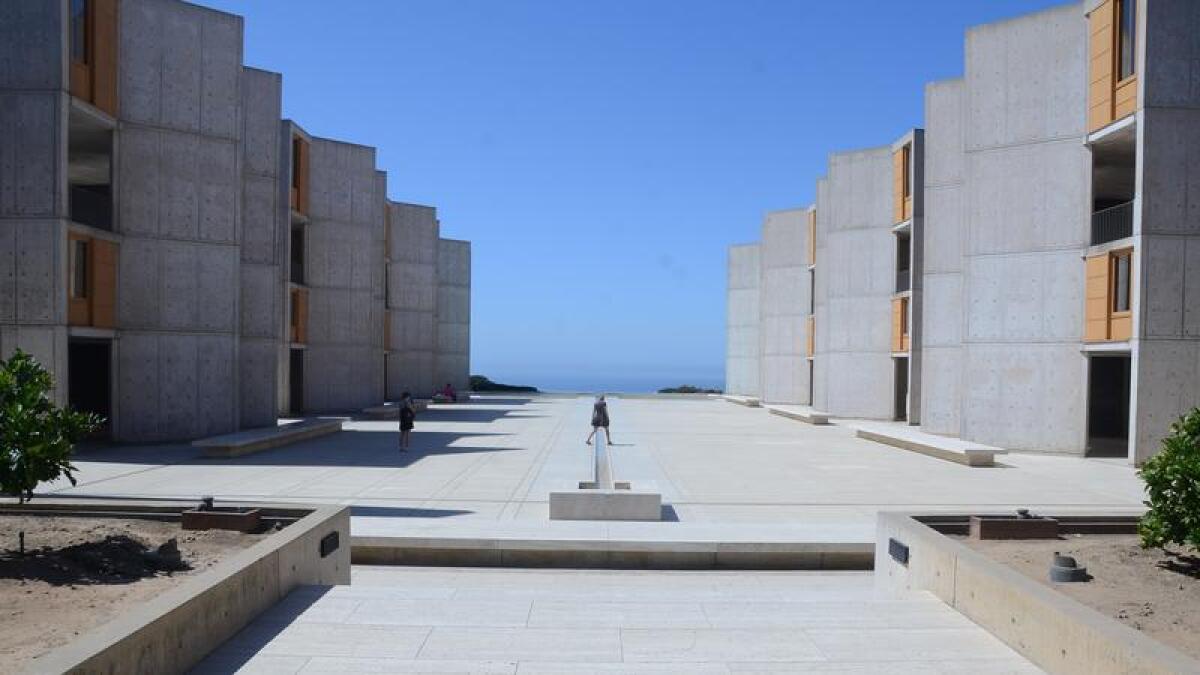
Stroll the strange beach at the Mexican border
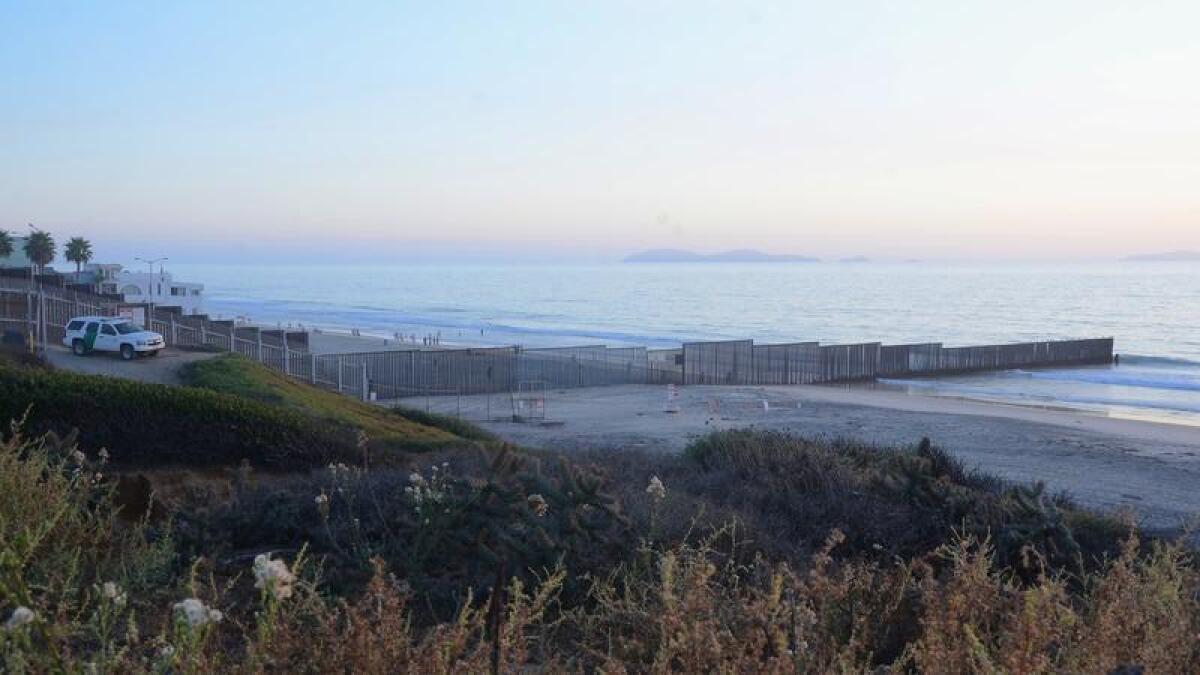
Why: Because the California shoreline where the U.S. and Mexico meet is like no place else. A tall fence runs into the ocean and shore birds perch on it. A second fence runs parallel. Border Patrol agents circulate in SUVs and on ATVs, making sure nobody climbs over or swims around. Antennas reach skyward. Cellphones lose bearings. Through the fence, you might glimpse Mexican families romping on the beach.
What: Border Field State Park’s 418 acres include the beach, views of a few rocky offshore islands and Monument Mesa, which has shaded picnic tables and a broad view of the wetlands, scrub and several horse stables on the U.S. side. The Mexican side features a bull ring, a lighthouse and several hillside developments. Authorities don’t recommend swimming on the U.S. side (no lifeguard; low water quality after rains). But you can ride horses, which is rare on California beaches.
In dry weather between 9:30 a.m. and 6 p.m., the flood-prone road into the park is usually open, allowing you to drive almost all the way to the beach. When the road’s gate is closed, it’s about a 1.5-mile walk to the beach and a few yards farther to the mesa, which includes Friendship Park.
What’s Friendship Park? It might be this border’s strangest feature of all: an enclosed segment of fence where Mexicans and Americans can meet and converse (no hand-offs, no filming) through openings in the metal barrier, as a U.S. Border Patrol agent looks on. The area is open 10 a.m to 2 p.m. on Saturdays and Sundays.
If you want to drive into Mexico via San Ysidro, stay on I-5, bring a passport and buy Mexican insurance first. Or consider taking the San Diego Trolley’s Blue Line, which runs from downtown San Diego to San Ysidro, the busiest border crossing in the Western Hemisphere. Then you can cross and return on foot (which is usually faster than driving). Expect a lot of cellphone shops, money-changers and vendors of Mexican insurance.The beach is prettier.
Where: 1500 Monument Rd., San Diego, 16 miles south of downtown San Diego, 140 miles southeast of downtown L.A.
How much: If you drive into the state park, the cost is $5 per car. The San Diego Trolley fare from downtown San Diego to San Ysidro is $2.50 each way.
Info: Border Field State Park, Friendship Park
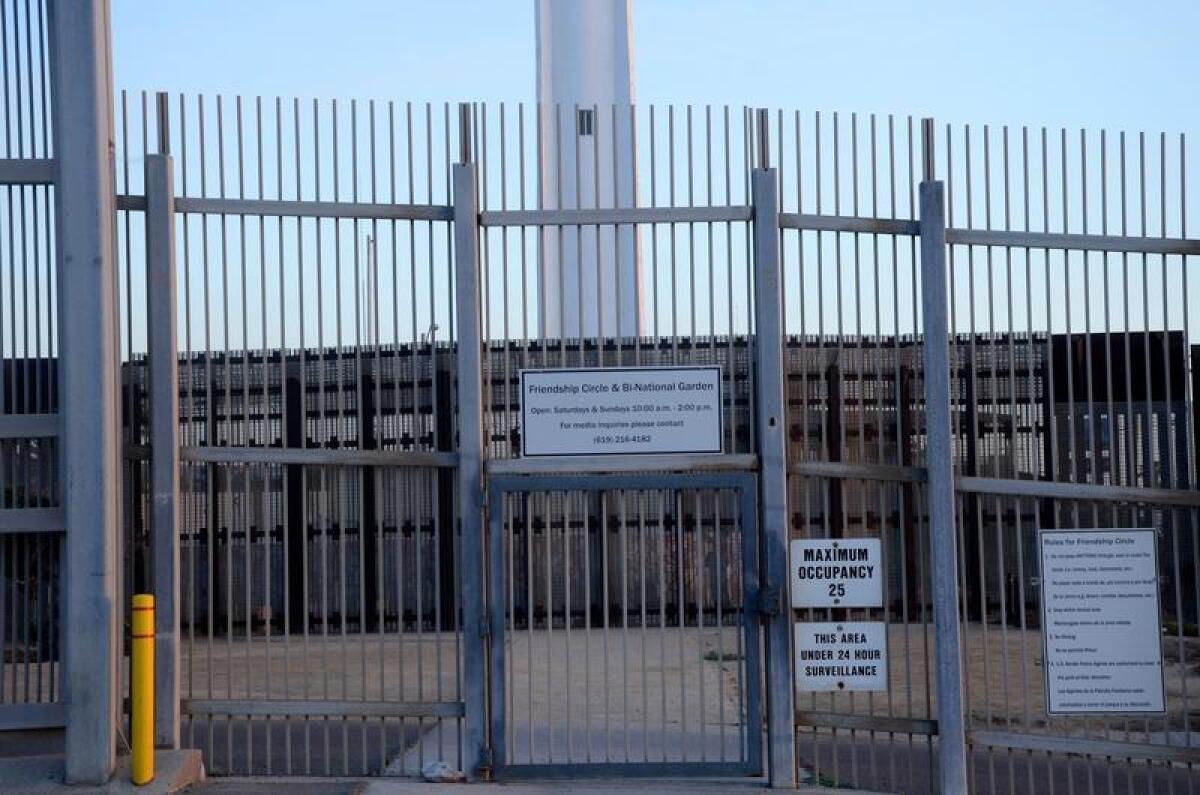
Gape at the light show on San Francisco’s Bay Bridge, which now outshines the Golden Gate after dark
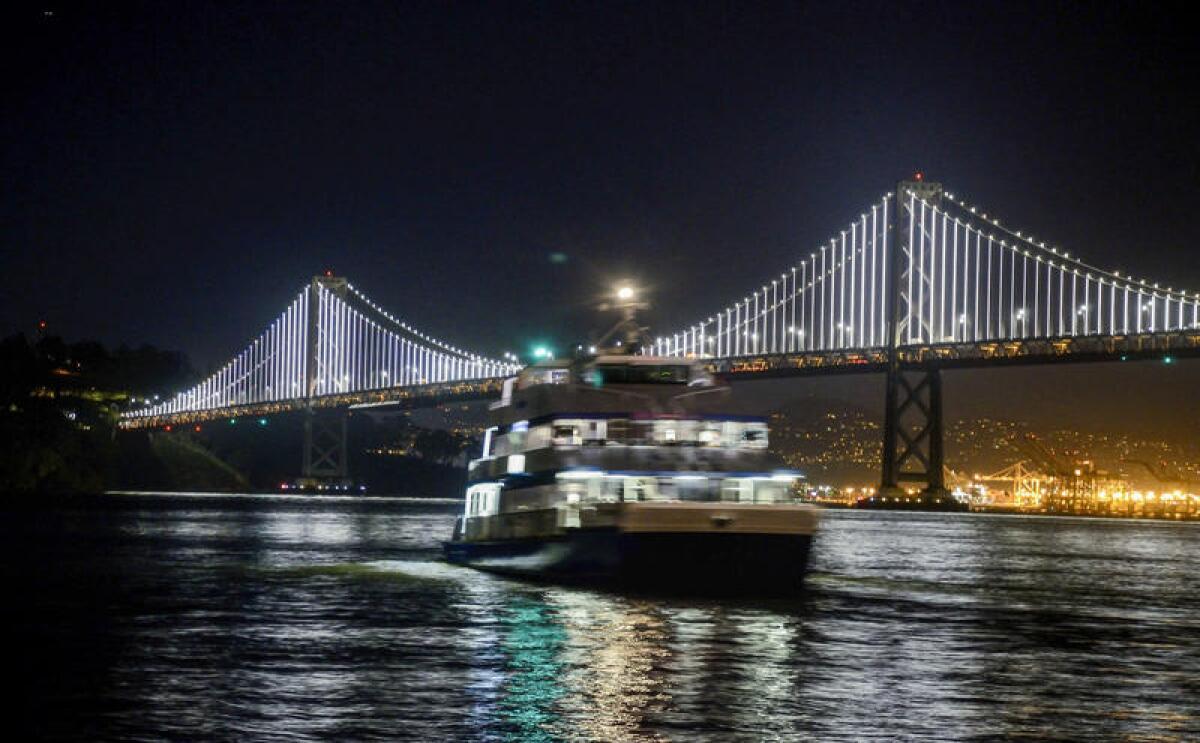
Why: After eight decades as the unsung older sibling to the Golden Gate, San Francisco’s Bay Bridge stands every night in a spotlight of its own. Some 25,000 of them, in fact. Admire it after dark, from land or sea.
What: The Bay Bridge, opened in 1936 and largely renewed after years of still-ongoing seismic retrofitting and replacements, now offers LED light displays nightly. Artist Leo Villareal, who conceived the twinkling spectacle, calls it The Bay Lights. The work was first displayed from 2013 to 2015, then returned as a permanent feature in January 2016. About 25,000 programmed white lights are involved — but you can’t see them from the bridge itself.
Instead, you can see them from across the water — perhaps the Ferry Building, or almost anywhere along the Embarcadero (including the long boardwalk of Pier 7). Or you could admire them from aboard a ferry.
You can ride from the Ferry Building to Oakland’s Jack London Square (via Alameda) in 30 to 35 minutes
As you watch the lights dance on the vertical cables toward the west end of the bridge, remember that the Bay Bridge is really more a sequence of bridges, connecting San Francisco to Oakland by way of Yerba Buena Island, with about a quarter-million cars crossing daily. Better yet, remember that the beloved 19th century San Francisco eccentric Emperor Norton called for just such a bridge back in 1872. Some people want to name the span for him. (Its formal name now is the San Francisco-Oakland Bay Bridge.)
Where: The Bay Bridge, which runs about 4.5 miles between San Francisco and Oakland, is 412 miles northeast of downtown L.A.
How much: It’s free to look at the bridge, of course. To look from an Oakland-San Francisco ferry is a $6.80 fare per adult each way.
Info: San Francisco Travel
Swim and picnic near the arch at Treasure Island Beach in Laguna
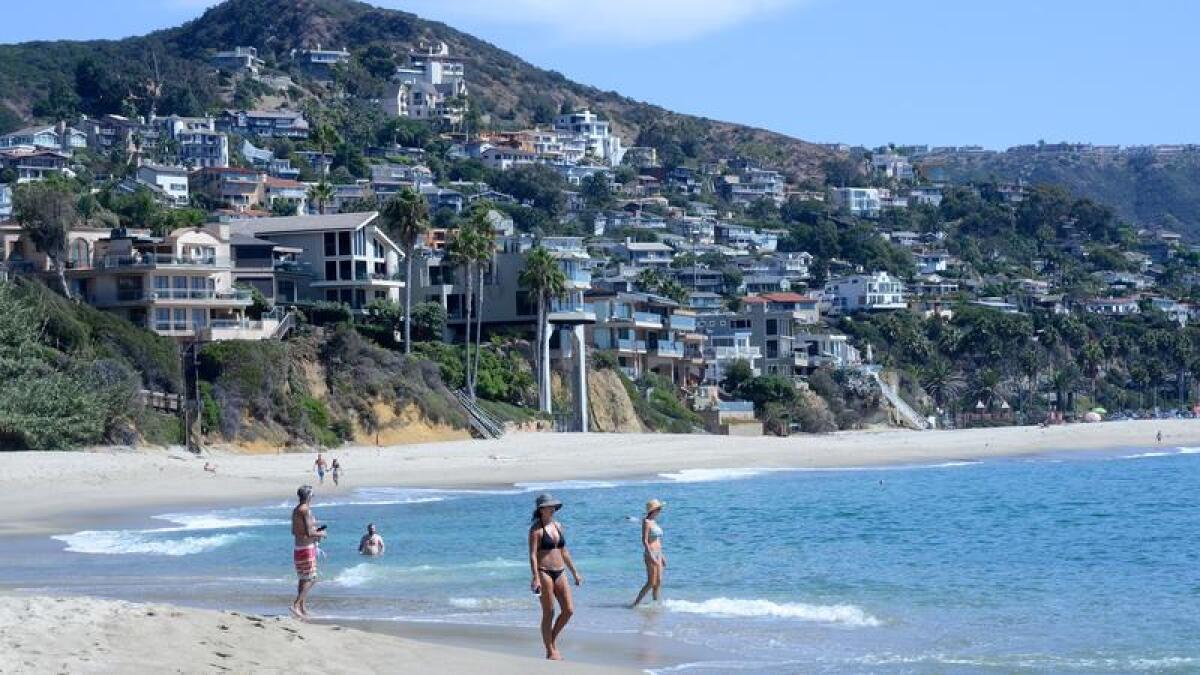
Why: This handsome beach, which neighbors the Montage Resort, includes sandstone cliffs and a prime parking area that fills up fast.
What: Treasure Island isn’t an island. But it is a beach and city park in Laguna Beach. It’s sometimes overlooked because it wraps around the exclusive Montage resort (most rooms cost $800 a night or more). But Treasure Island has a shaded parking structure (whose roughly 30 spaces fill up early ever day), a pleasant bluff-top path alongside the resort’s immaculate landscaping, public benches, picnic spots with 180-degree ocean views, tide pools and white-sand shores that include a dramatic sandstone arch.
About the name: In the 1930s, this beach was used as shooting location for a movie version of Robert Louis Stevenson’s novel “Treasure Island.” Later, Lucille Ball and Desi Arnaz used the spot in their 1954 vacation road-trip movie, “The Long, Long Trailer.” The Montage site once held a trailer park.
The last time I was there, on a weekday in late September, I scored one of those coveted parking spots. We picnicked on a bench atop the bluff, clowned around under the arch, then spotted a seal (or maybe it was a sea lion) in the shallows by the rocks. You won’t find a tidier beach or bluff top. Look north and you’ll spot Victoria Beach and the eccentric 1920s “pirate tower” that rises from the shoreline there. (Be warned, however, that PCH is always busy and parking is always in short supply in Laguna Beach. Street parking is probably your best bet.)
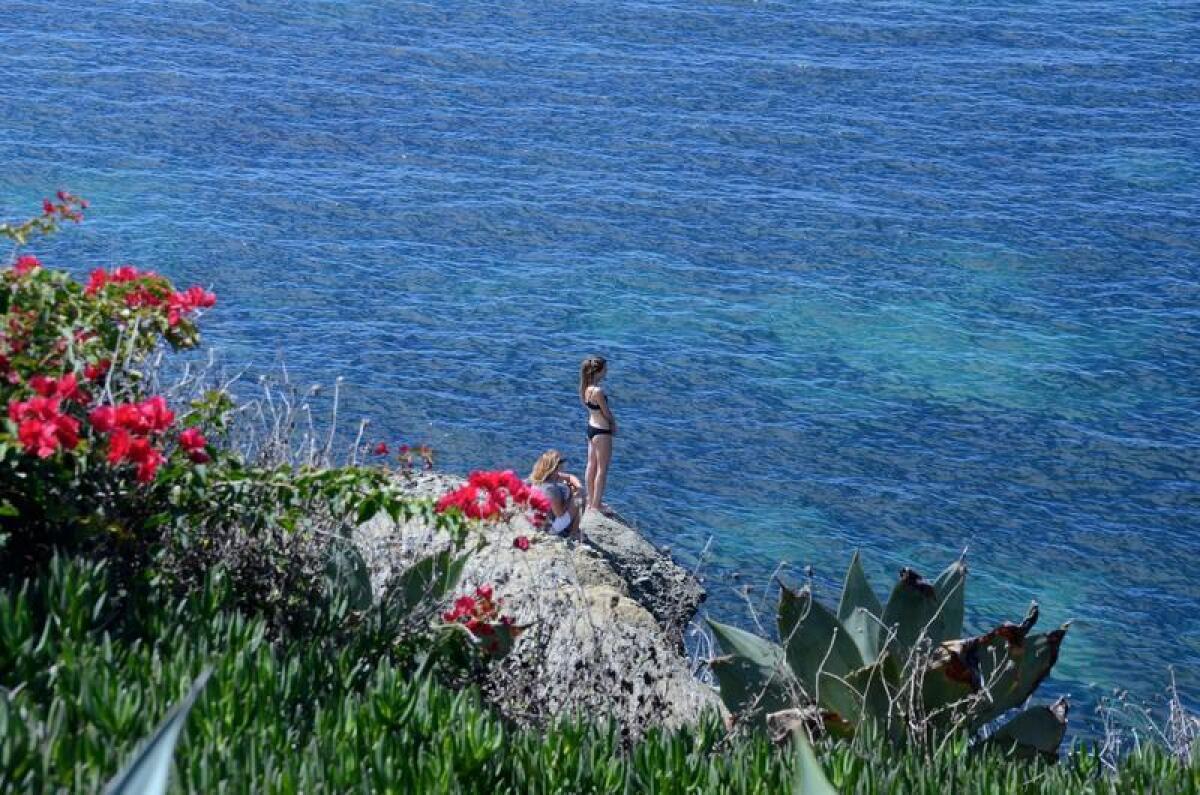
If you want to be sure your beach day includes a marine mammal, stop off at the Pacific Marine Mammal Center, 5 miles north of Treasure Island Park on Laguna Canyon Road. Workers and docents there help rehabilitate seals, sea lions, elephant seals and other critters in several little pools. The visibility and photo opportunities are limited because of the chain-link cages around the outdoor pools but it’s fun to watch feeding, and your voluntary contribution might feed the next malnourished seal to wash up on Laguna shores. There’s no charge to visit.
Where: Pacific Coast Highway and Wesley Drive, Laguna Beach, 52 miles southeast of downtown L.A.
How much: Parking at Treasure Island Park is $4.50 for three hours.
Info: Visit Laguna Beach
Goof off where Navy recruits once sweated at San Diego’s Liberty Station
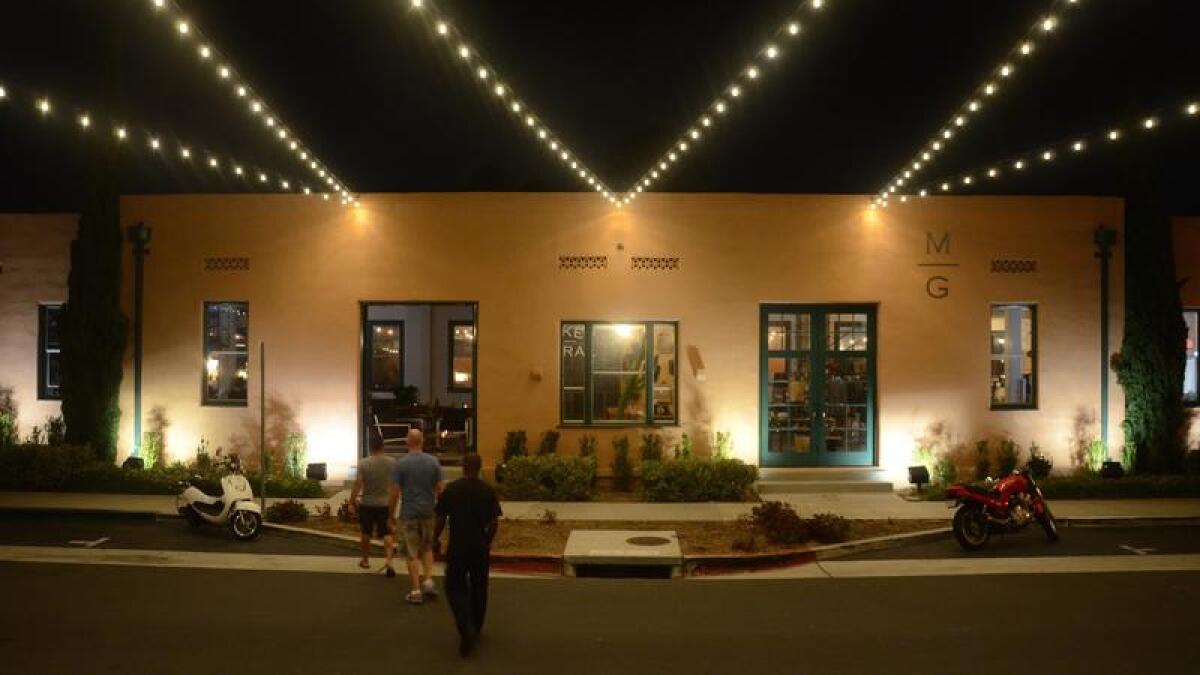
Why: Boot camp becomes a playground. What’s not to like?
What: Built as a Navy training center in the 1920s, shut down in 1997 and converted to civilian uses, Liberty Station’s stately, sprawling Spanish Colonial Revival grounds now house dozens of restaurants, shops and many sports and arts groups, with acres of lawn to boot. While Old Town and Balboa Park grab tourists in vast numbers, Liberty Station draws more locals. (It’s got grocery and hardware stores.) And it underlines the Navy’s strong role in the local history and economy. The compound’s Public Market is a modest food hall, neighbored by the immodestly large indoor-outdoor space of Stone Brewing World Bistro & Gardens, which has taken over the old mess hall.
If you’d rather consume culture than ale, IPA or Imperial Stout, the complex’s Arts District houses dozens of art and dance studios, a few galleries and minor museums, and sundry special events, including free outdoor movies on summer Saturday nights. The complex also includes a Courtyard by Marriott, a Homewood Suites by Hilton and the nine-hole Sail Ho golf course, also known as the Loma Club.
Where: Liberty Public Market, 2820 Historic Decatur Road,
San Diego, a mile west of Lindbergh Field, three miles west of downtown San Diego, 125 miles southeast of downtown L.A.
How much: Mole-braised beef at Stone Brewing, $26. Bowl of chili at the Corvette Diner, $6.50. Nine holes of golf at the Loma Club on a weekend: $16 per adult nonmember.
Info: Liberty Station
Pay Pebble Beach. Then play Pebble Beach.
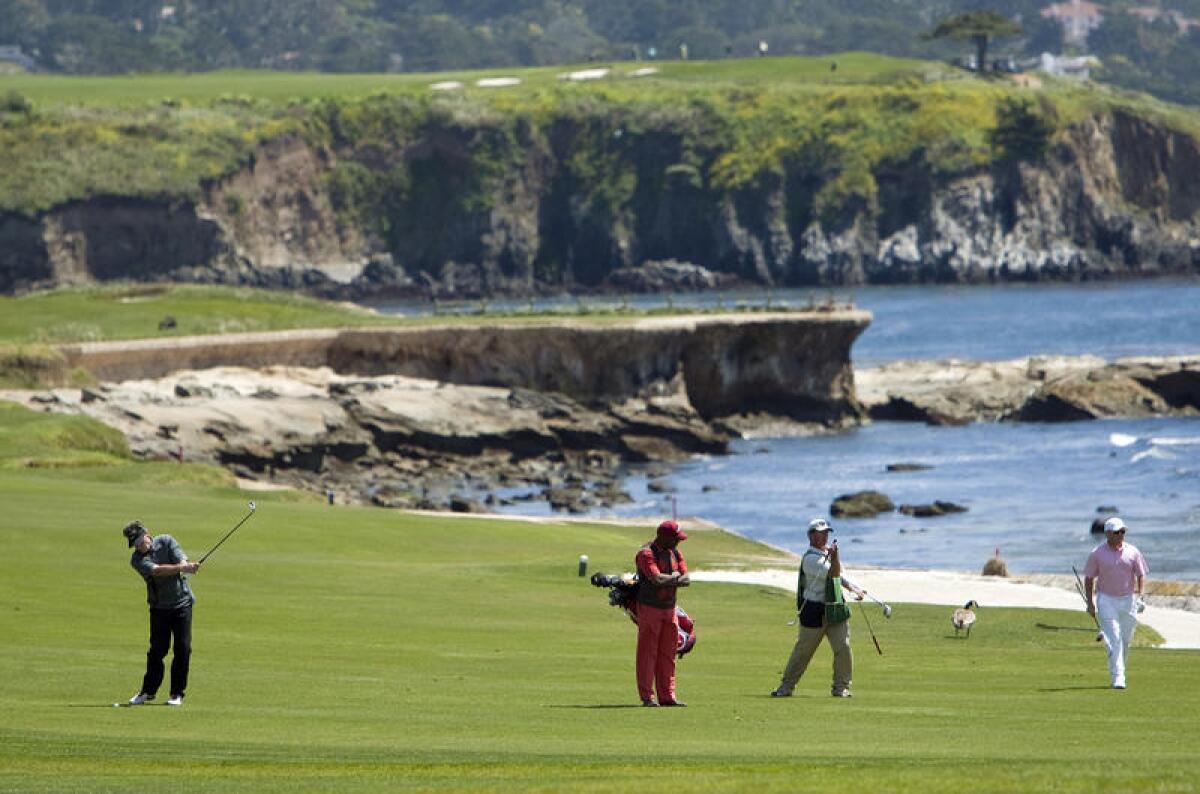
Why: There is no publicly accessible golf course in the country with the history, spectacular coastal vistas, memorable holes and overall experience of Pebble Beach Golf Links.
What: Pebble Beach will host the U.S. Open championship for the sixth time in 2019 and is an annual stop on the PGA Tour for a reason: It’s a course of almost unimaginable beauty and variety. As magnificent as it appears on television, it’s beyond that in person. Noted golf course architect Tom Doak wrote in “The Confidential Guide to Golf Courses,” considered by many the bible of critiques of the world’s courses: “Your first time around, it’s probably as thrilling a course to play as any in the world.” No argument here. (The neighboring courses aren’t bad, either.)
The only catch is that to be assured of a tee time, you need to book at least two nights at one of three Pebble Beach resorts. You can also show up first thing and put your name on a stand-by list, or you can try to make a tee time 24 hours in advance, but both those options are dicey, particularly during the busy season from April through November.
Where: 1700 17-Mile Drive, Pebble Beach, 5 miles southwest of Monterey, 325 miles northwest of downtown L.A.
How much: $495 to $525, depending on time of year. Caddies, highly recommended, will run about an additional $150. As for rooms at the resorts, the Lodge at Pebble Beach starts at $840. The Inn at Spanish Bay, $720. Fairway One at the Lodge, $915. Casa Palmero, $1,000.
Info: Pebble Beach Golf Links

Disappear into downtown L.A.’s Last Bookstore
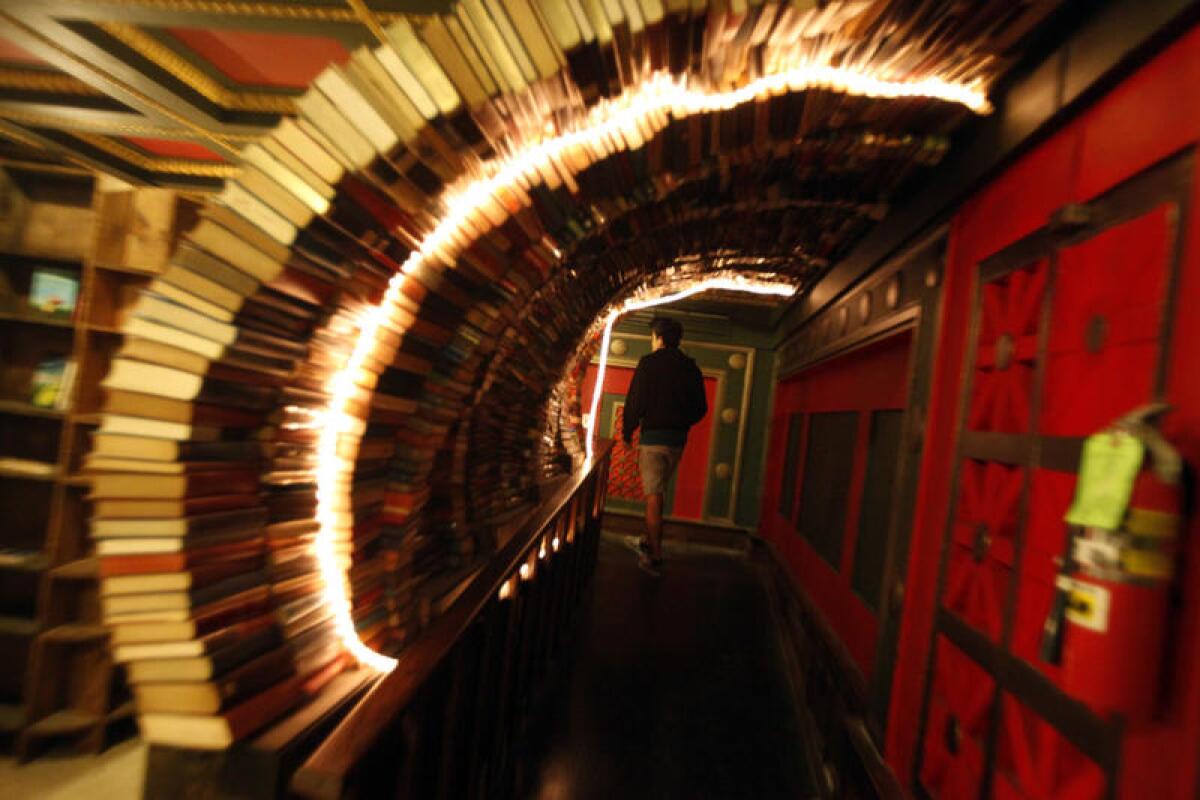
Why: This bookseller has taken a dead bank building on an iffy downtown block and turned it into a bold retreat for readers and bohemians.
What: The Last Bookstore opened elsewhere downtown in 2005, as booksellers were faltering across the land. And then-owner Josh Spencer defied conventional wisdom a second time by moving his business to this far larger space in 2011. It beckons readers with a ground floor full of new and used books, including graphic novels and an annex for art and rare books.
The store also buys, sells and trades used vinyl, CDs and DVDs. The 25-foot white columns, circa 1915, suggest you may be sifting through the ruins of a lost civilization. The suspended artworks hint at acts of magic in progress. The stage gets used often for readings and live music.
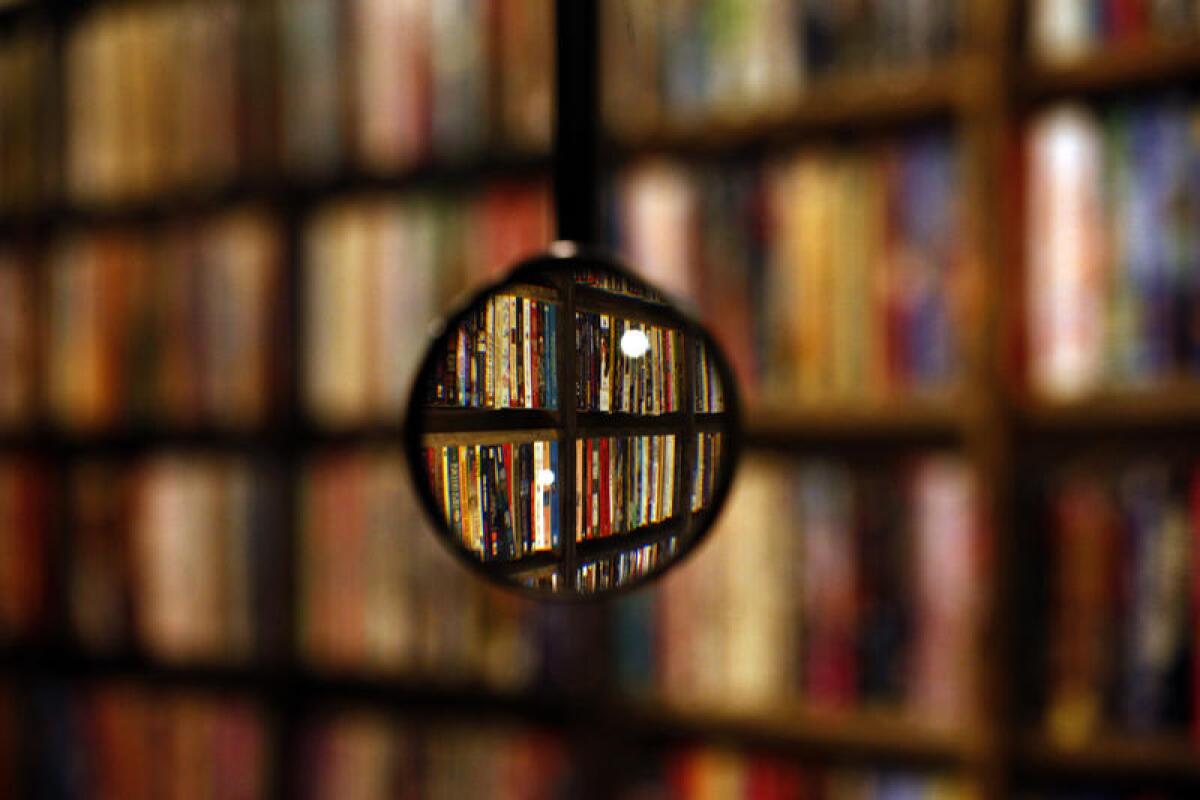
And then there’s the upstairs, including the Horror Vault and the Labyrinth. In that warren of irregularly shaped rooms, used books are arranged by subject, but also arrayed sculpturally. There’s a tunnel, and a circle you can peek through. Around the periphery, studio spaces harbor artists and artisans. You step inside, and before you know it, an hour is gone.
That said, this isn’t actually the last bookstore downtown — at least not yet. Caravan Book Store, small but stalwart for decades, carries on peddling old and rare books about six blocks northwest at 550 Grand Ave., next door to the Millennium Biltmore Hotel.
Where: 453 S. Spring St. in downtown L.A.
How much: Most used paperbacks are $5-$9.
Info: The Last Bookstore
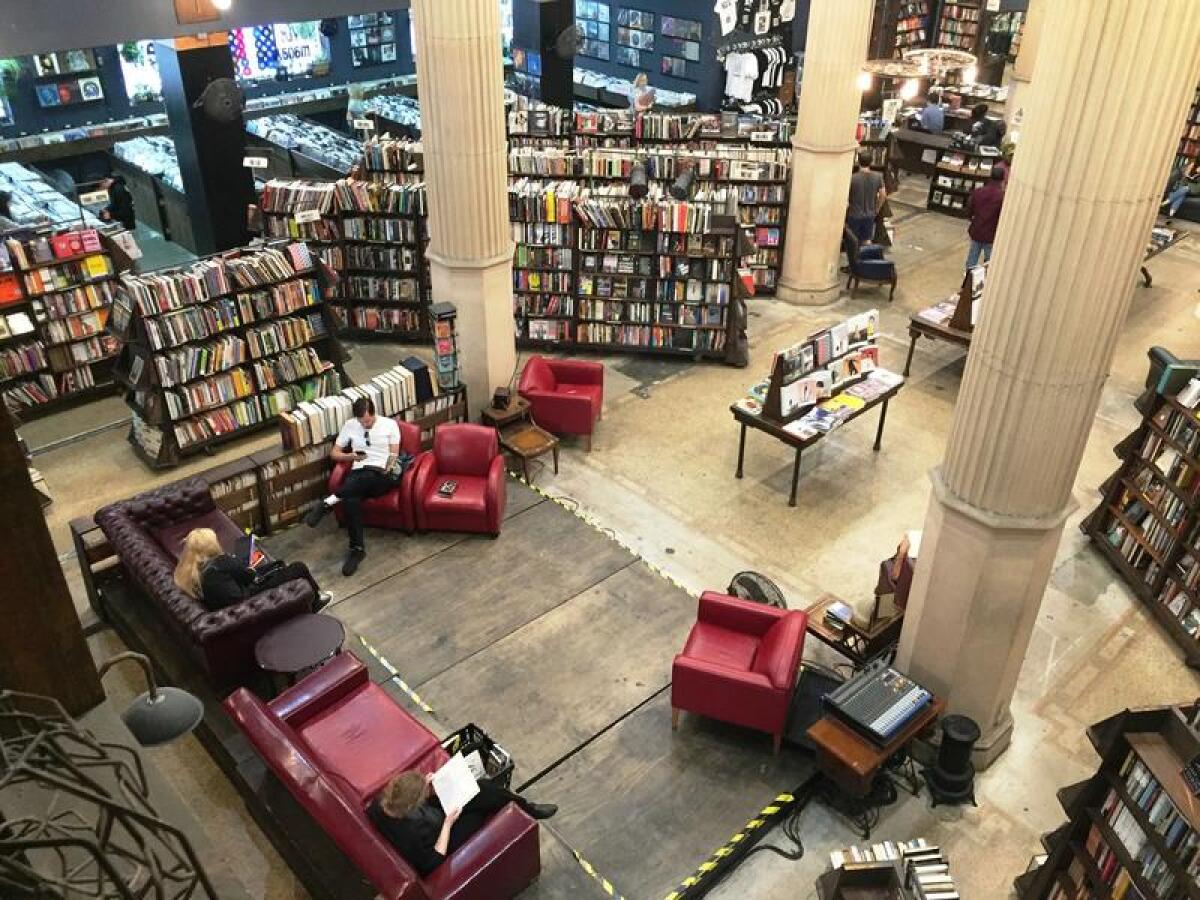
Tee off at Torrey Pines
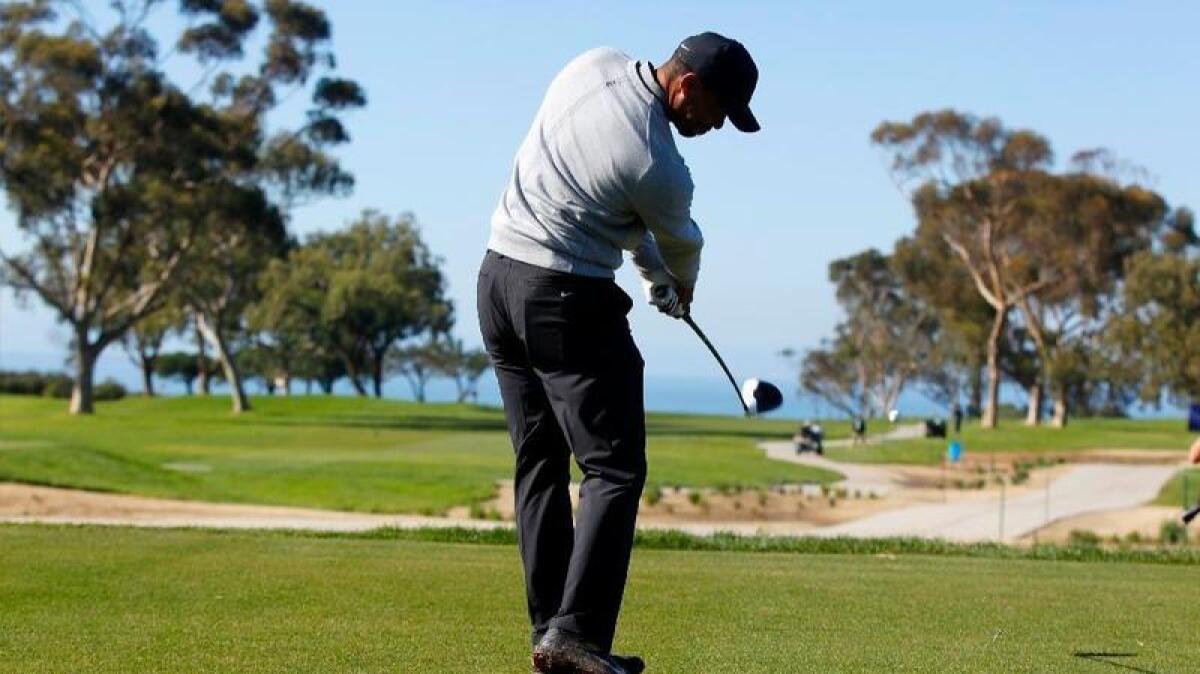
Why: It’s an opportunity to play a seaside complex where Arnold Palmer, Jack Nicklaus, Gary Player, Tom Watson, Phil Mickelson (three times) and Tiger Woods (seven times) have been professional champions. That includes Woods’ dramatic playoff victory in the 2008 U.S. Open despite two stress fractures in his left leg and an ailing left knee that required surgery shortly after his win.
What: The North and South courses at Torrey Pines live by the same mantra that guides real estate: Location, location, location. High on the bluffs overlooking the Pacific, the courses offer distractingly beautiful views of the ocean and beaches below, accented above by ever-present hang gliders soaring over the cliffs and the frequent fly-bys of military jets from the nearby Marine Corps Air Station Miramar.
Among the best municipal courses in the country, these layouts owned by the city of San Diego are always in excellent shape. San Diegans know this; they enjoy dramatically reduced rates. The rest of us have to live with the resort-fee prices. There is a caddie program, though you need to reserve one 48 hours in advance. And golf packages are available at the Lodge at Torrey Pines, a first-class resort on site that offers a great grill after a round whether you’re staying at the lodge or not.
Where: 11480 North Torrey Pines Rd., La Jolla, 112 miles southeast of downtown L.A.
How much: Adult non-residents of the city of San Diego typically pay a $45 advance booking fee, and then the following amounts for 18 holes: South Course $192-$240; North Course $105-$131.
Info: Torrey Pines Golf Course
Giggle and hum at Largo, an intimate L.A. space where music and comedy thrive
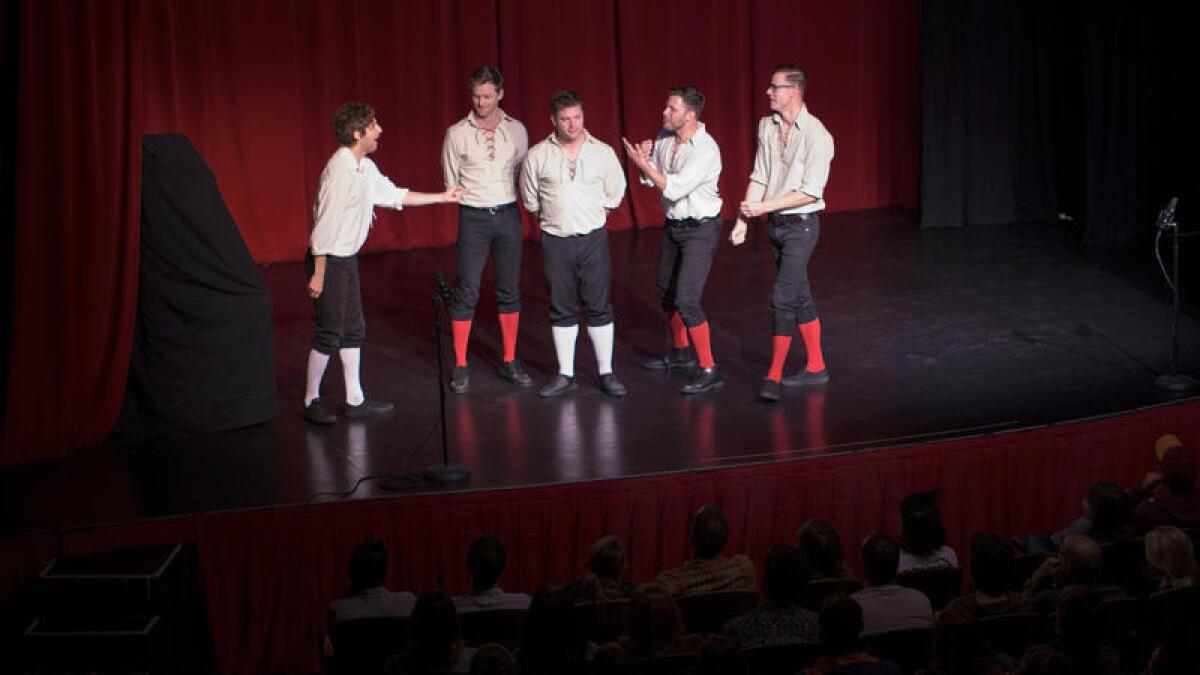
Why: Largo (formally, Largo at the Coronet) is a rare venue where music and comedy rub elbows, where performers take chances, where big names turn up on stage and in the crowd, where audiences really concentrate. So don’t show up late; once the show starts (usually 8:30 p.m.), the doors close and that’s that.
What: Largo began in 1989 as Cafe Largo on Fairfax Avenue. Over time it changed owners, shortened its name and changed addresses (in 2008), but held its reputation. The main performance space is the 280-seat Coronet Theater, but just off the entry courtyard you’ll find the 65-seat Little Room (Guinness on tap).
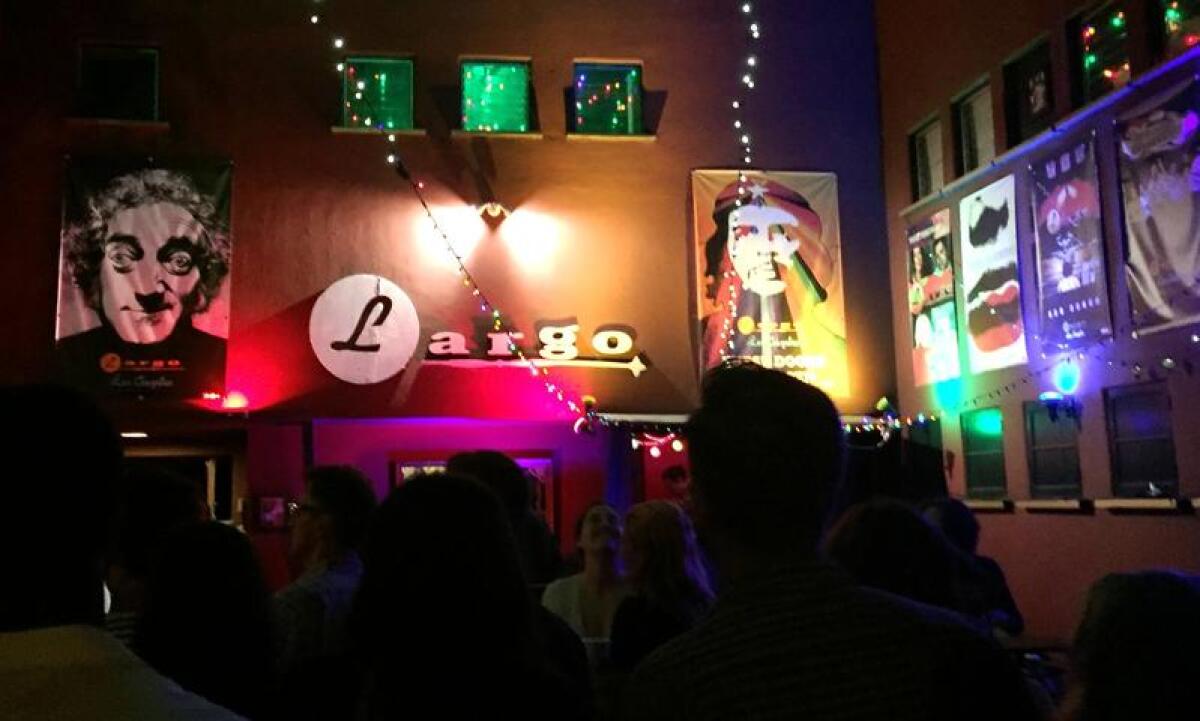
Recent performers include Jon Brion, the Watkins Family Hour, Grant Lee Phillips, Shelby Lynne and Allison Moorer, Sarah Silverman, Patton Oswalt, Zach Galifianakis, Tig Notaro, Harry Shearer and Judith Owen. On Sept, 19, I caught Sammy Miller and the Congregation, a young, six-man lineup that specializes in joyful jazz with lots of laughs and theatricality.
Where: 366 N. La Cienega Blvd., 8.5 miles west of downtown L.A.
How much: Most shows are $30-$40 plus a $2.50 service charge. Parking is $10 in the building next door. A Guinness in the Little Room is $8.
Info: Largo
Cross Bixby Bridge in Big Sur, where land, sea and infrastructure meet in a most remarkable way
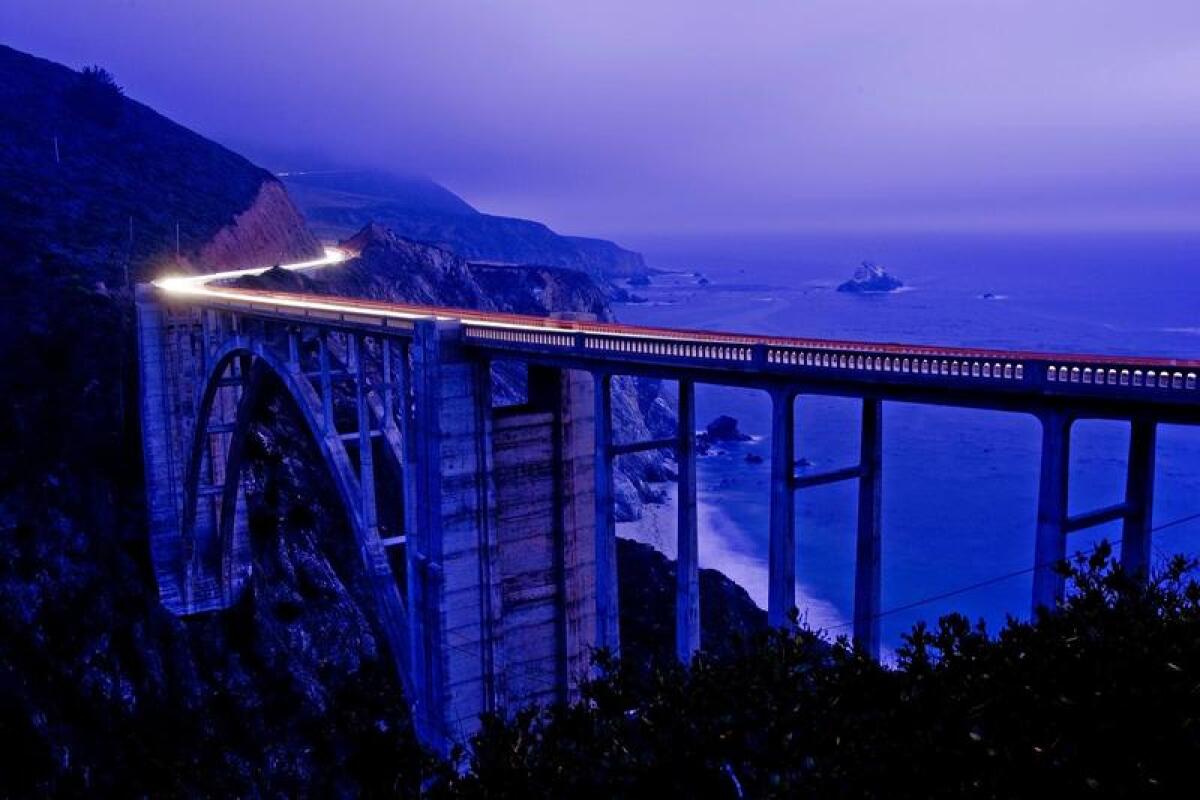
Why: North and south, as far as the eye can see, you have perhaps the most dramatic meeting of land and sea on the 840 miles of California’s coastline. In between you have Highway 1 and this graceful span, a man-made respite between coastal wonders. But the highway is highly vulnerable to landslides, which is why, through mid-2018, Southern Californians need to approach Bixby Bridge by way of a big detour.
What: Highway 1 through Big Sur covers about 90 miles, beginning above San Simeon and continuing north to just below Carmel. The stormy winter of 2016-2017 damaged the road in multiple spots, now reduced to one closed zone at Mud Creek, about 20 miles northwest of San Simeon. (Those landslide damage repairs are due to conclude in June 2018). Still, most of Big Sur’s scenery and businesses are open and accessible. Bixby Bridge is a highlight of the northern portion.
To reach the Bixby Bridge, the Rocky Point Restaurant, Point Lobos, Carmel and other points north, drive north on the 101 from Southern California. Then double back through Monterey via Highway 68. Soon you’ll be hugging that amazing Big Sur coastline. Bear in mind that some trails are open in Andrew Molera and Garrapata state parks but much territory is closed or tightly restricted as repairs continue.
The other detour alternative: Drive north from Southern California on 101, then exit at Jolon Road (north of Paso Robles) and continue via Nacimiento-Fergusson Road to join the Highway 1 above the closed section.
Now, about Bixby Bridge: It was completed in 1932, a masterpiece built by the lowest bidder for a government contract. Its roadway runs about 260 feet above Bixby Creek and the waves below. Even if you pass over without pausing, it feels as though you’re in the middle of something special.
There is a turnout space just north of the bridge (it’s called Castle Rock Viewpoint), and it has room for a dozen cars. But if you’re driving on a weekend, especially in summer, it’ll probably be full. If you you arrive amid less traffic and see a spot, do pull off the road and soak up the panorama. For a different perspective, cross the highway when it’s safe and walk a few hundred yards inland on less-trafficked Old Coast Road, also just north of the span.
Where: The bridge stands along Highway 1, 15 miles south of Carmel, 336 miles northwest of downtown L.A. (if you arrive via the 101 and 68). Before any driving on Highway 1 in Big Sur, check conditions with Caltrans.
How much: Free. But it cost $202,334 to build in 1932.
Perch in Big Sur and munch a burger at Nepenthe
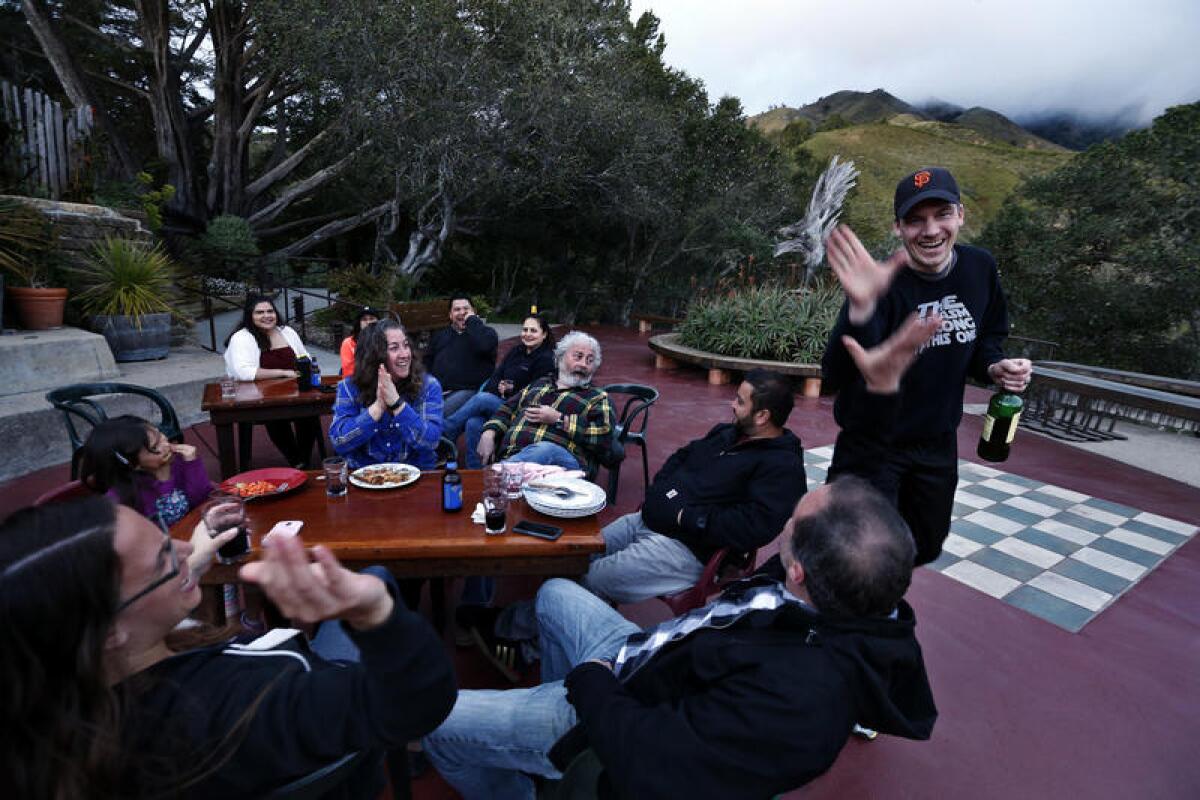
Why: These are some of the most epic miles of California’s coast, and this cliff-clinging bohemian throwback restaurant has been a part of it since 1949.
What: Sometime in the second half of 2018, when all damage from the storms of early 2017 is mended, we’ll again be able to drive all the way from San Simeon through Big Sur to Carmel on Highway 1. Until then, a 6-mile stretch of the highway (site of the Mud Creek slide) is closed just north of Ragged Point, forcing Southern Californians into big detours to reach Big Sur’s most beloved landmarks, including Nepenthe. To reach those spots from the south, we can drive up 101 and double back on Highway 1 near Carmel, or we can exit at Jolon Road (north of Paso Robles) and continue via Nacimiento-Fergusson Road to rejoin the Highway 1 above its closure point.
It’s along that northern portion of Highway 1 that you find Nepenthe, about 800 feet above the Pacific, about 31 miles south of Carmel.
Also found in the same stretch: the Henry Miller Library, the Lucia Lodge, Treebones Resort and the western portion of Julia Pfeiffer Burns State Park (which includes much-photographed McWay Falls).
Nepenthe (which includes Cafe Keva and the Phoenix Shop) has been a refuge for artsy types since its earliest years (though these days, it helps to be artsy and affluent). Well before the author Henry Miller became a regular guest, there’s a story that the property once belonged to Orson Welles and Rita Hayworth. And the terrace was a setting for a folk-dancing scene in “The Sandpiper” (1963) with Richard Burton and Elizabeth Taylor.
If you want to hike, remember that many trails and portions of the state parks along Highway 1 remain closed. The Big Sur Chamber of Commerce website has good tips on what park trails and businesses are open.
Where: 48510 Highway 1, Big Sur, about 300 miles northwest of downtown L.A. via Highway 101 and Nacimiento-Fergusson Road. Before doing any driving on Highway 1 in Big Sur, check conditions on the Caltrans website.
How much: Nepenthe’s Ambrosiaburger and its Vegetarian Burger are each $17.50. For an 8-ounce filet mignon, it’s $46.50.
Info: Nepenthe

Dive into a basket full of San Gabriel Valley dim sum

Why: Dim sum is a brunch parade of Chinese tastes. There’s no better place to enjoy California dim sum than Los Angeles County’s San Gabriel Valley, where several cities boast populations of 40% or more Chinese Americans. And in this territory, NBC Seafood of Monterey Park is an institution.
What: NBC Seafood, a vast Cantonese banquet hall in a busy mall on Atlantic Boulevard, serves dim sum daily from 8 a.m. to 3 p.m. Diners pick dishes in baskets from an armada of circulating food carts, sipping tea between bites. The options are almost endless (including Jell-O and pickled chicken feet).
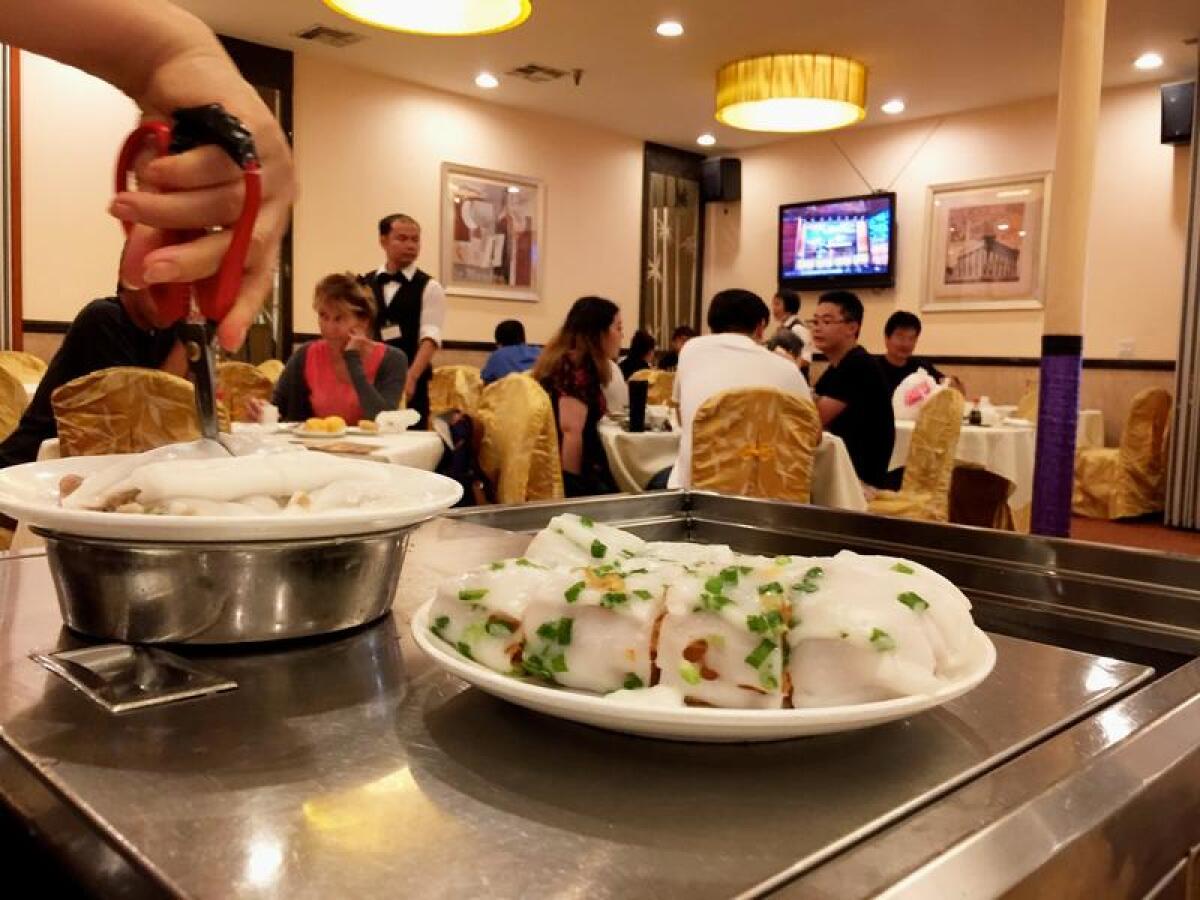
On my last visit, besides the usual shrimp-crab-pork-beef-broccoli-rice-dumpling favorites, I tried the boiled beef stomach (which was chewy, like octopus). Next time, maybe the chicken palm in abalone sauce...
Where: 404 S. Atlantic Blvd., Monterey Park, seven miles east of downtown L.A.
How much: Most main dishes $15-$20.
Info: NBC Seafood
Marvel at the massive elephant seals near San Simeon
Why: Because this stretch of Highway 1 is more than a jaw-dropping drive. It often features hundreds, sometimes thousands, of portly pinnipeds flopped on the sand at the Piedras Blancas Elephant Seal Rookery.
What: An uncanny bellowing beckoned me off the road last winter. On that trip, I joined a crowd on a boardwalk looking down in delight and wonder as these mega-sized marine mammals jockeyed for dominance on the beach. (Males get up to 5,000 pounds and 16 feet long, and this was mating and birthing season.) In the spring, we found a second visit equally intriguing: molting season. The beach was full of tan, brown and silvery lumps that looked like driftwood, until one would yawn or another would toss cooling sand over its hot, heavy body.
It was the early 1990s when growing numbers of Northern elephant seals (so called because of the mature male’s large nose) began gathering here. Since then (with support from many conservation organizations) the lumbering beasts have claimed about six miles of shoreline as a haven for birthing , breeding, molting and rest. Though the elephant seals spend most of their lives at sea, there’s something happening here most months. In September and October, for example, young ones arrive for the fall haul-out.
There are several vista points, some wheelchair-friendly, and blue-jacketed Friends of the Elephant Seal volunteers are often on hand to answer questions. You can take a wildflower walk along the coastal trail north of the vista points or sign up for a tour of the Piedras Blancas Light Station. Just be sure to stay at least 25 feet away from the animals. And if you’re headed up north, remember that these animals also gather at Año Nuevo State Park, about 20 miles north of Santa Cruz.
Where: The main viewing areas (marked by signs with turnouts) are alongside the coast highway, 4 miles north of William Randolph Hearst Memorial Beach, 5 miles north of Hearst Castle in northern San Luis Obispo County, 235 miles northwest of downtown L.A.
How much: Free.
Fetch your pet and head to Carmel’s Cypress Inn

Why: Back before anybody carried Chihuahuas in purses, in the days when comfort animals were an uncommon sight in America’s planes, trains and restaurants, this place in quaint Carmel was already eager to see your dog. And Doris Day, co-owner, singer, movie star and advocate, is the reason.
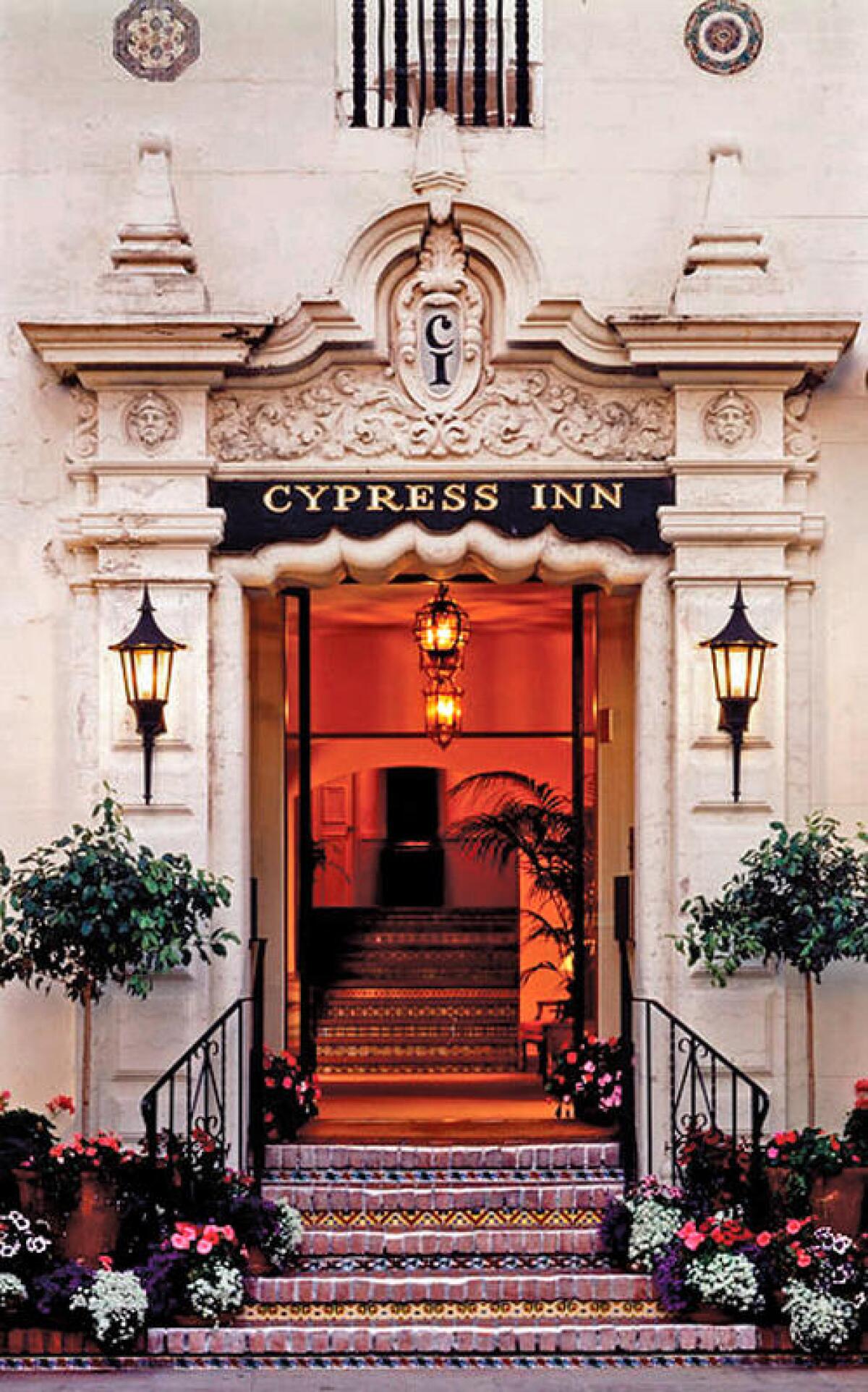
What: It’s neither the fanciest hotel in town nor the most affordable, but the Cypress Inn stands in the middle of the village, full of Spanish Colonial flourishes.
It goes back to 1929. I’ve stayed there without a pet and been pleased. If you don’t mind stairs, ask about the Queen Tower suite. Views on three sides.
But it’s the dog thing that has won the place a special reputation over the years. (Day, now in her 90s, still co-owns the place.)
Where: Lincoln Street and 7th Avenue, Carmel-By-The-Sea (where the the city fathers and mothers don’t believe in numerical street addresses), 323 miles northwest of downtown L.A.
How much: Rooms for two typically run $279-$439, more for suites. Pet fee: $30 per night for one pet, $50 fee for two, $70 for three.
Info: Cypress Inn
Gawk at S.F.’s Golden Gate Park from the free observation tower atop the De Young Museum
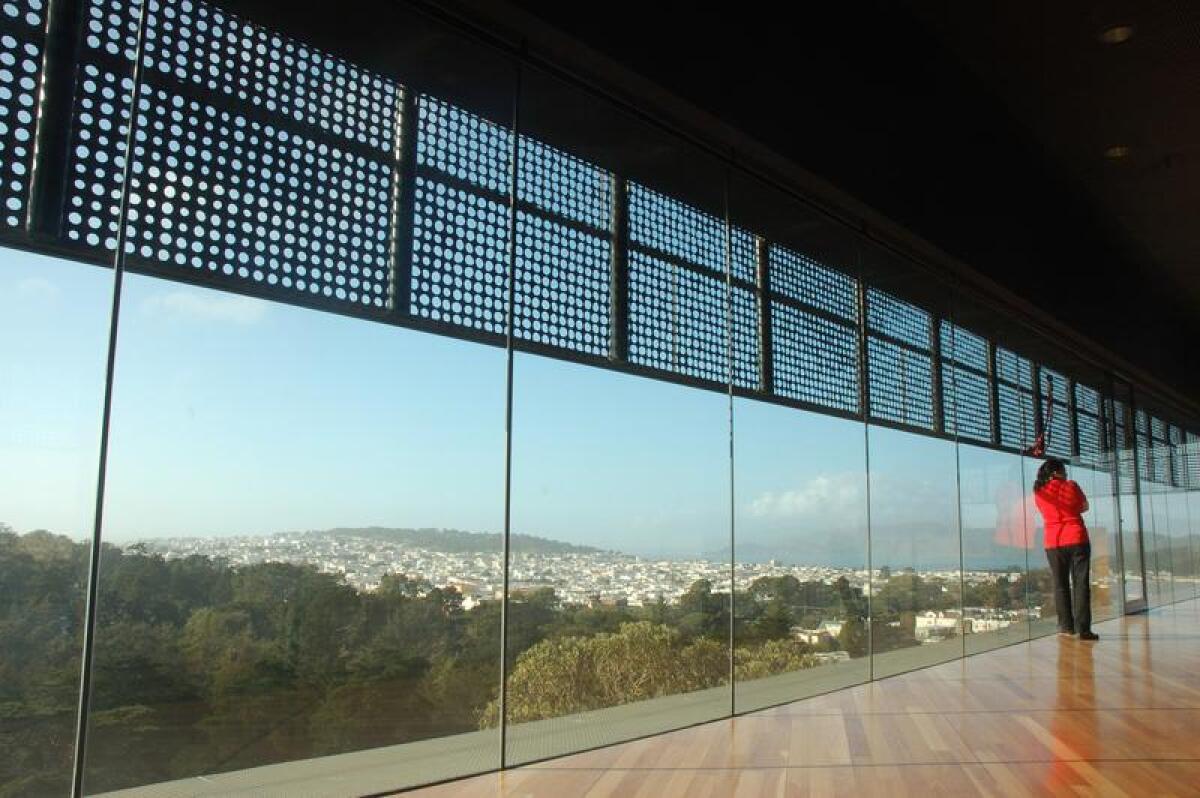
Why: Many people don’t realize this upstairs viewing space exists, nine stories above the ground. Or that it’s free. Its glass walls give you a 360-degree view of Golden Gate Park, beginning with the wavy green roof of the neighboring California Academy of Sciences.
What: The museum goes back to 1895, but its modern history dates to the unveiling of its new industrial-sleek building (and tower) in 2005. The collection is American art from the 17th through the 20th centuries, with additional works from Africa, Oceania and elsewhere in the Americas.
The art is worth your attention -- Thomas Cole, Albert Bierstadt, Mary Cassatt, Diego Rivera, Georgia O’Keeffe, Chiura Obata, Thomas Hart Benton, Grant Wood, Jacob Lawrence, Edward Hopper, Mark Rothko and Richard Diebenkorn are all here. Pay them respects, if you’re inclined. Then catch the elevator to the 2,600-square-foot tower.
Where: De Young Museum, Golden Gate Park, 50 Hagiwara Tea Garden Drive, S.F., 385 miles northwest of downtown L.A.
How much: The observation tower is free (though it’s sometimes rented out for private events). Museum admission is $15 for adults, $6 for students with ID, free for visitors age 17 and under. Special exhibits like “Teotihuacan: City of Water, City of Fire” (Sept. 30-Feb. 1; $29 for adults) often cost more. Tickets include same-day admission to the Legion of Honor Museum. Closed Mondays.
Info: De Young Museum
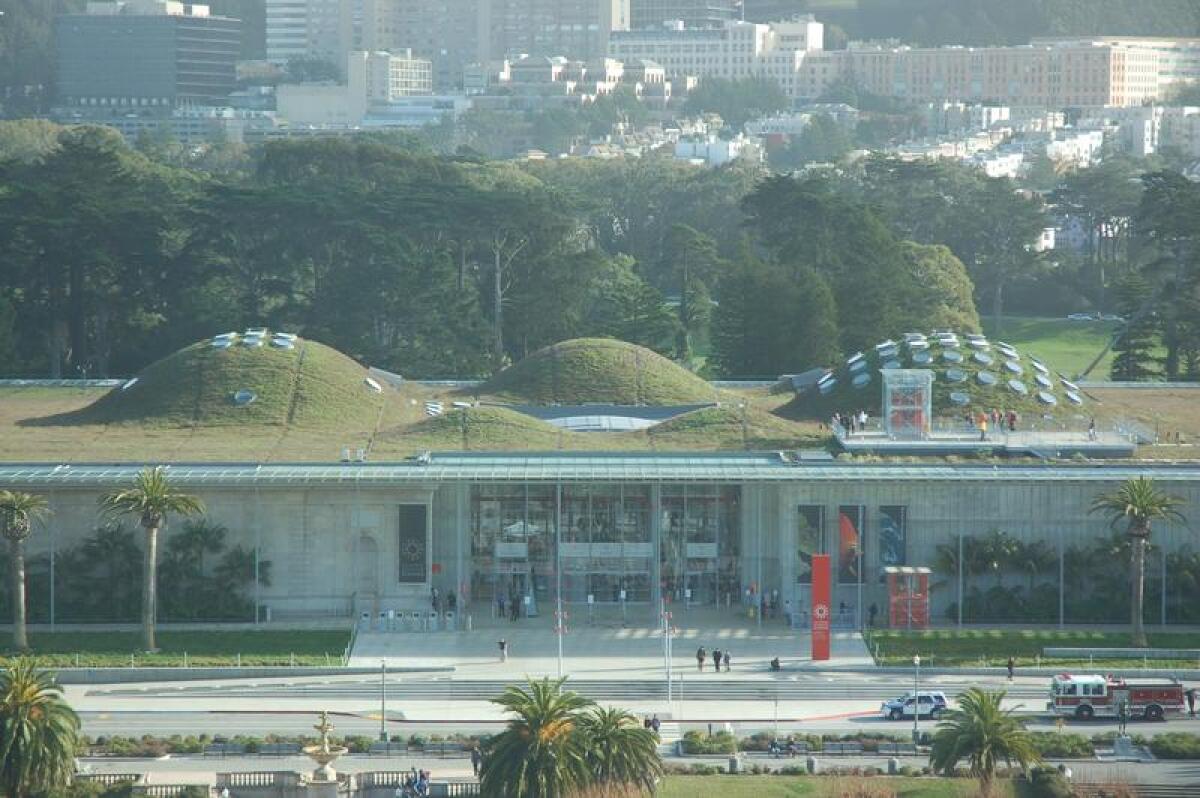
Mourn the real Karana and remember ‘Island of the Blue Dolphins’ at Mission Santa Barbara
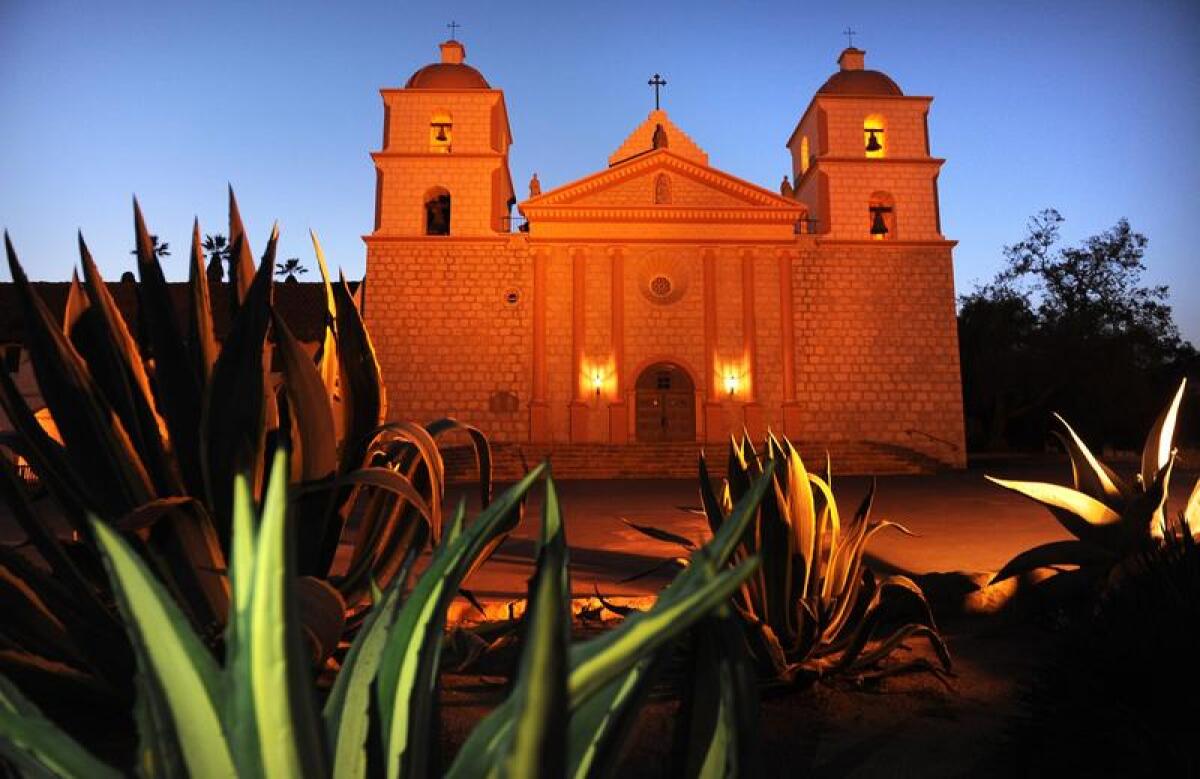
Why: With its twin towers, stalwart facade, pink highlights and uncrowded setting, this might be the most imposing of California’s 21 missions. It’s also the resting place of the woman whose story inspired the beloved Scott O’Dell novel “Island of the Blue Dolphins.”
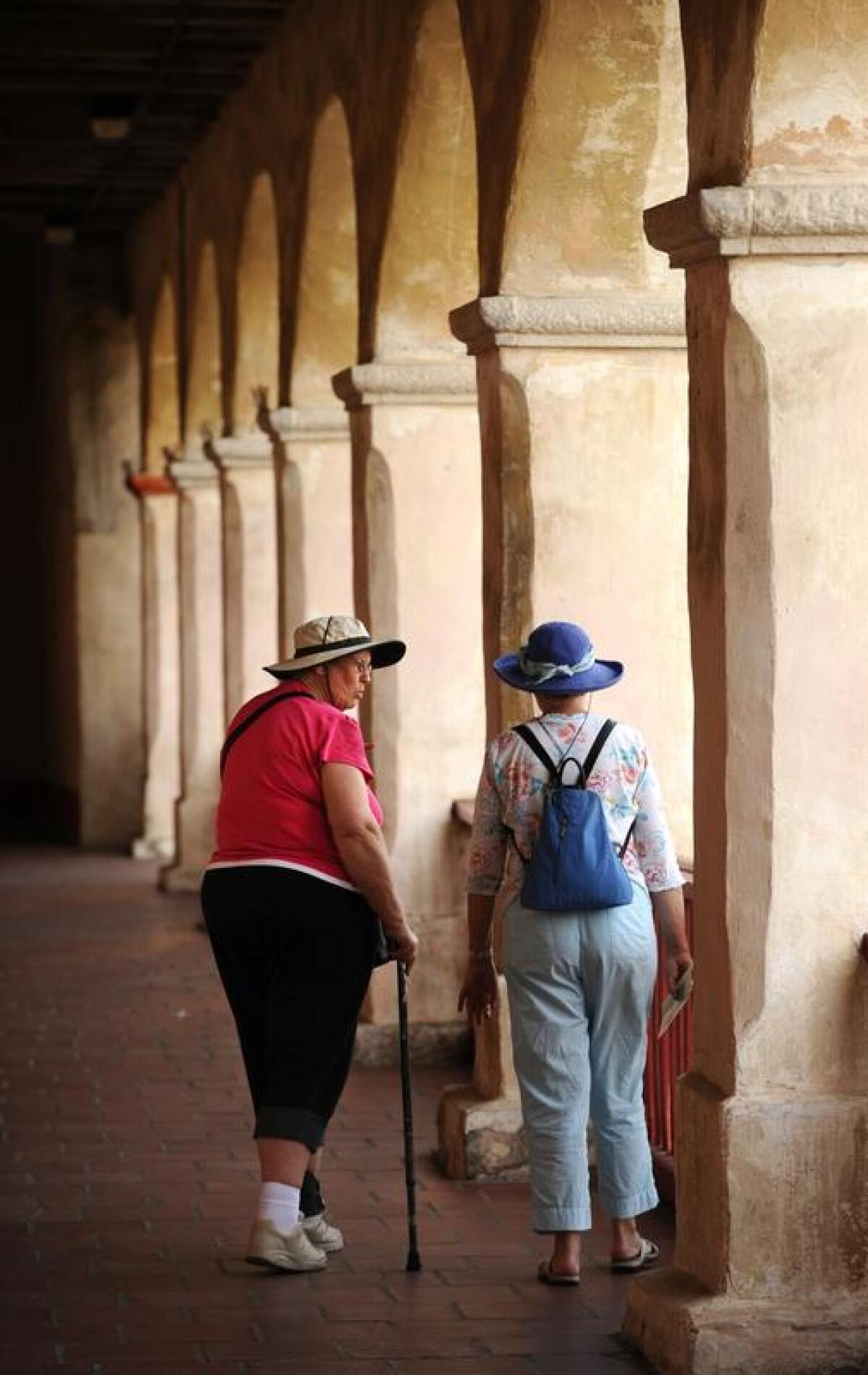
What: The building, completed in 1820 and rebuilt after the quake of 1925, is surrounded by 12 acres of gardens. Since the 1830s, this mission has been a major center for storage of mission system records, which makes the place popular with scholars.The site includes a nine-room museum, library and archive.
But if you loved Karana, the brave hero of “Blue Dolphins,” you might head straight for the cemetery. This is where mission leaders buried Juana Maria, a native woman who was found alone on San Nicolas Island in 1853, about 50 years old. She had apparently endured 18 years of solitude and weather. She lasted about seven weeks after her return to the mainland, then perished from dysentery.
Though her grave is unmarked, the local chapter of the Daughters of the American Revolution placed a memorial plaque. When O’ Dell heard the story, he launched into research, made the protagonist younger and published his book in 1960. Since then it has been read by legions of young students, especially California fourth-graders studying their state’s history.
Late May can be a great time to visit the mission. That’s when the mission typically hosts I Madonnari, a Italian-style street-art festival in which hundreds of participants use pastels to chalk in about 150 colorful images onto the plaza in front of the church. Also, the Santa Barbara Museum of Natural History is a 0.4-mile walk away, and the Santa Barbara Botanic Garden is 1.6-mile up Mission Canyon Road.
Where: 2201 Laguna St., Santa Barbara, 111 miles northwest of downtown L.A.
How much: If you’re there to visit, not worship, the fee for a self-guided tour is $9 for adults, $4 for youths ages 5-17. For an hourlong docent-guided tour, the price is $13 for adults, $8 for youths. Longer, more specialized tours are also available.
Info: Mission Santa Barbara
Dive into fresh seafood on San Diego’s waterfront
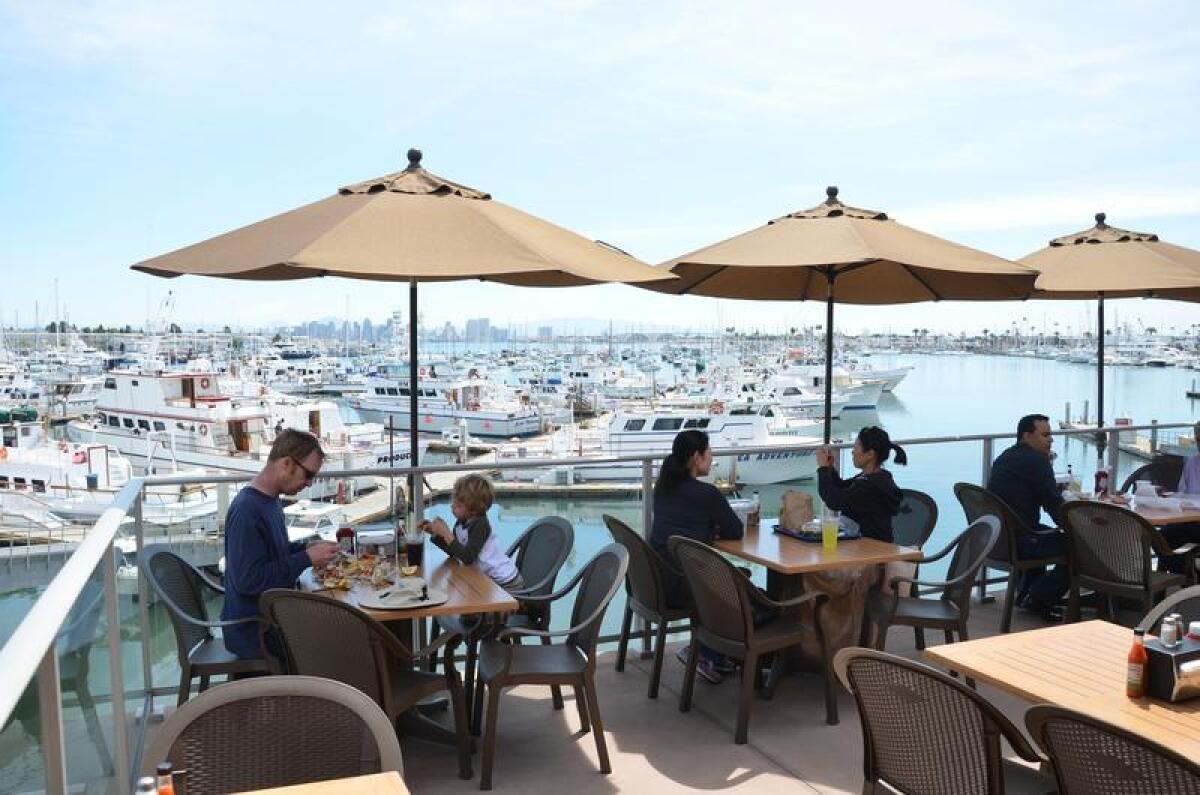
Why: Fish don’t get any fresher than the straight-off-the-boat offerings at Point Loma Seafoods. And if you eat on the spot, you’ll be looking down on a marina with the downtown skyline beyond it.
What: Point Loma Seafoods, born as a fresh-fish market in 1963, has gradually grown into something more — a market, a sushi deli and an ultra-casual restaurant for lunch and dinner, its offerings changing with the seasons. From summer through mid-autumn, there’s Pacific swordfish. From October through May, California spiny lobster.

I like to sit on the upstairs deck under an umbrella and look east across San Diego Harbor. But if you crave an even closer relationship with the catch of the day, there’s an option next door: Book yourself on to a deep-sea fishing trip (yellowfin tuna, rockfish, bonita, yellowtail, bluefin tuna, etc.) from H&M Landing.
One warning: The parking lot is often full.
Where: 2805 Emerson St., San Diego, 119 miles southeast of downtown L.A.
How much: Bowl of clam chowder: $4.91. Caesar salad with seared ahi in light marinade: $16.67.
Info: Point Loma Seafoods
Try this parking lot spectacle: juicy truck tacos, hot off the spit, in various L.A. spots
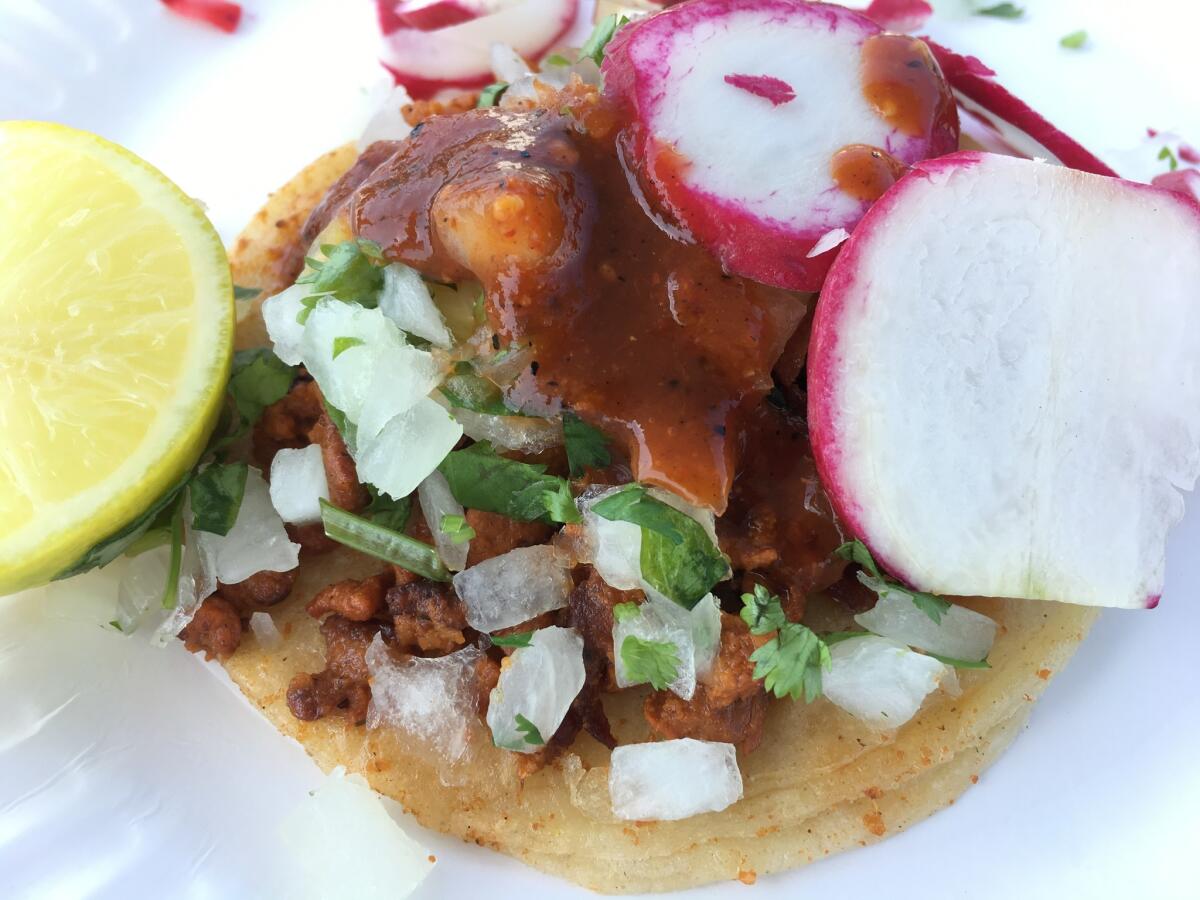
Why: In a perfect world, Leo’s Tacos Trucks would be as common as Starbucks. This is Mexican soul food, served off a spit, in a way that can turn a simple gas station or car wash into a tiny urban party.
What: Leo’s Tacos Trucks have established a big following in only seven years. The mother ship is located at the Sinclair Station at Venice Boulevard and La Brea Avenue, but the bright yellow trucks show up at five other locations around Los Angeles.
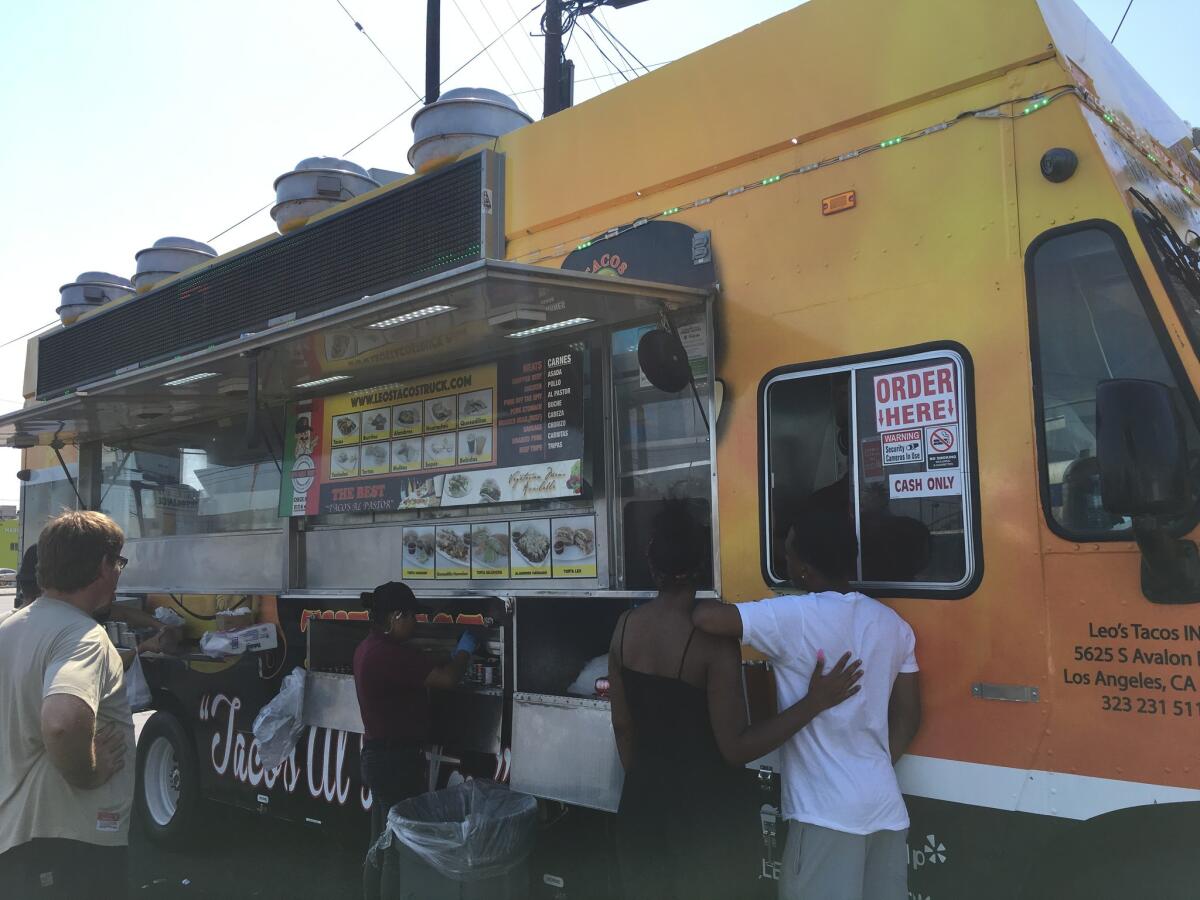
The reason for such rapid success in a town saturated with tacos? Leo’s has set itself apart with its al pastor: marinated pork propped up on a vertical rotisserie, as the Greeks do for gyros.
The spectacle of this, in an open parking lot, is great. But the taste is even better. The pork is charred on the outside, then shaved and served, still dripping, often with a slice of pineapple.
The al pastor technique purportedly has Lebanese roots. Whatever the origin, four tacos of this caliber for $5 is one of the better deals anywhere.
Leo’s also offers burritos, tostadas, huaraches and tortas, with fillings from chicken to tripe. But it’s the al pastor that has made it a cult hit. More outlets are sure to follow.
Where: At six locations, mostly in the core of Los Angeles. The mother ship is at 1515 S. La Brea Ave., 8 miles west of downtown L.A.
How much: Tacos $1.25
Info: Leo’s
Step into the dreamy Venice neighborhood where gondoliers once toiled
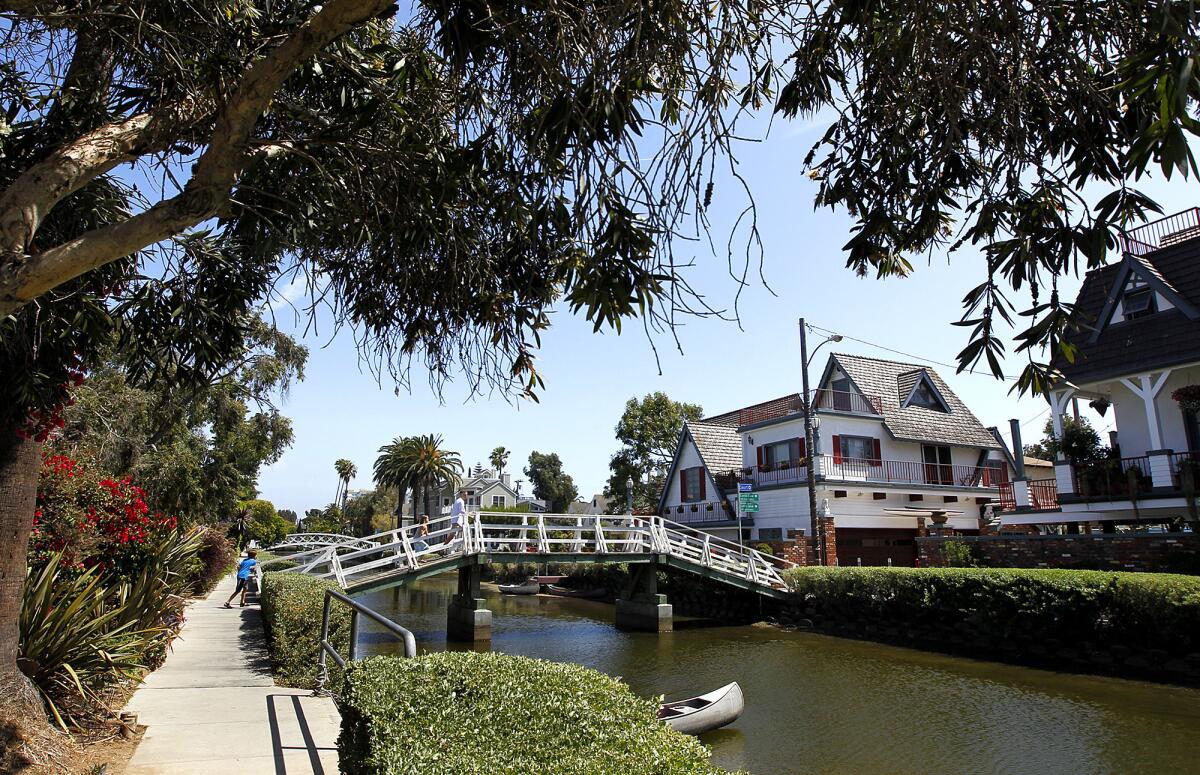
Why: These urban canals are a developer’s semi-successful dream, a fraction of what was envisioned as a Venice of America. Now lined with captivating residences, the setting remains serene and alluring.
What: The Venice canals opened to huge fanfare on July 4, 1905, in the days when passenger cars were still a novelty. Costumed gondoliers, brought in from Italy, worked the canals.
Twenty years later, many of the canals were filled in to build roads.
Today, the neighborhood is considered one of the most desirable in Los Angeles. With well-maintained walkways and attractive pedestrian bridges, it seems a million miles from the bang and bustle of the Venice beachfront.
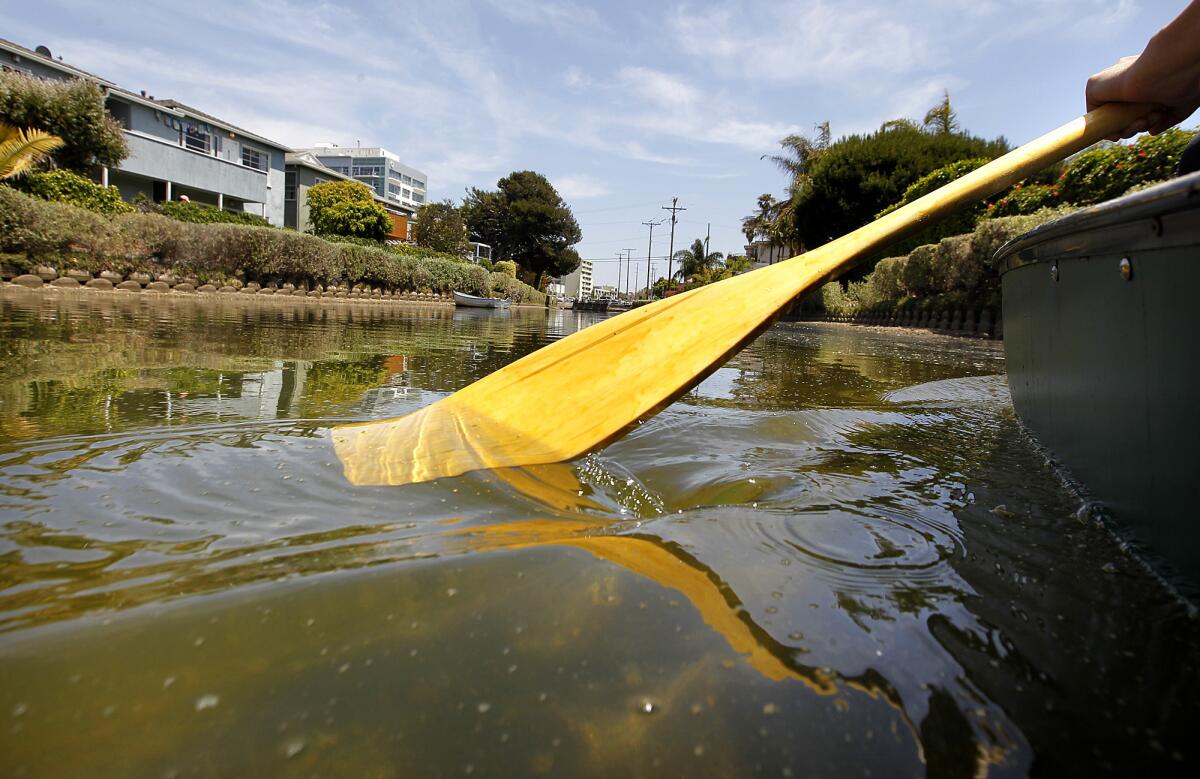
The water comes in through locks that extend under Washington Boulevard, and it is saltwater, not fresh. There is a small duck park and playground on the Linnie Canal. Leopard sharks are occasionally spotted from bridges, as are young sea lions. Birds are more common, especially ducks.
Leashed dogs are OK on the walkways, but bikes are not. No fishing or swimming are allowed in the canals, which run only about 3 feet deep. Keep in mind that this is a residential neighborhood; though the canals and sidewalks are public property, the docks and boats are private. To keep your bearings, picture the canals as a grid, with four running east-west: Carroll, Linnie, Howland and Sherman. Eastern and Grand canals go north-south.
Trivia I: The many movies that feature the canals include “The Doors” (1991) with Val Kilmer and “A Nightmare on Elm Street” (1984).
Trivia II: Developer Abbot Kinney established the canals, and the shopping district named for him is a 10-minute walk away. (Head east on Venice Boulevard.)
Where: The canals are 17 miles west of downtown Los Angeles. Begin near the intersection of Washington Boulevard and Strongs Drive. There is a small sign that says “Venice Canals Walkway.”
How much: Free.
Info: Venice Canals Assn.
Walk like a time traveler through the old gold boomtown of Columbia

Why: Once a booming Gold Rush town just north of Sonora, Columbia is now a 272-acre state park, staffed by rangers and others in period attire. State parks officials say it’s their system’s largest collection of Gold Rush era buildings, with restaurants, saloons (heavy on the sarsaparilla), various retailers, a museum, a gold-panning operation, two hotels, some cottages, stagecoach rides, plus a Thursday night farmers market from June through September. From September through June, there are plenty of school programs aimed at fourth-graders studying California history.
What: The town was born in 1850 when prospectors found gold. By 1860, its best days as a source of gold were over. By the 1930s, it was on the brink of collapse. The state stepped in to acquire land and make Columbia a park in 1945. It’s just off Highway 49, the main thoroughfare of gold country. Most of Columbia’s businesses are open 10 a.m. to 5 p.m. year-round.
I happened to arrive around 9 a.m., which meant I got to watch the denizens of Columbia arrive by car, stash their vehicles out of sight, then emerge in their historic garb to welcome another 1850s day.
It’s true that the Gold Rush actually began at Sutter’s Mill in Coloma, about 80 miles north of Columbia, and Marshall Gold Discovery State Park is there. But Columbia has more surviving buildings and more to see and do.
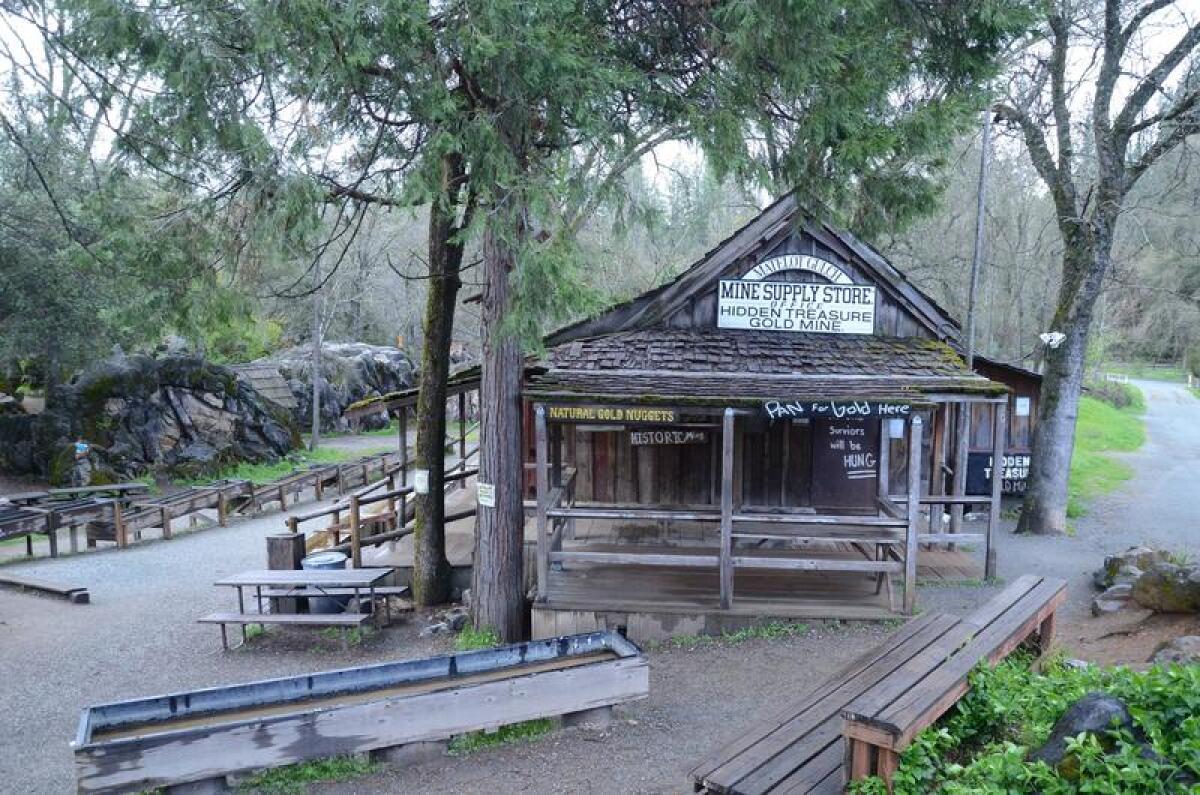
Where: 11255 Jackson Street, Columbia, 92 miles southeast of Sacramento, 332 miles north of downtown L.A.
How much: Park admission is free, as are the hourlong tours that begin at the museum daily at 11 a.m. on weekends year-round, daily in summer.
Break bread like a Basque sheepherder at Schat’s old Dutch bakery in Bishop
Why: Erick Schat’s Bakkery in Bishop is California’s bread basket. About four hours from Los Angeles, the old Dutch bakery is a must-stop on the half-day ride into the Eastern Sierra. A travel touchstone for generations, Schat’s famed sheepherder bread was developed in 1938 to please Basque farmers who missed the bread of their homeland. Almost 80 years later, stopping for a loaf of the hand-shaped bread remains a California tradition. Oh, and don’t forget the chocolate macarons.
What: Schat’s big bakery is the focal point of a Main Street that features no-frills bars and fishing tackle shops. The bakery/deli offers sandwiches and pastries for the road for travelers heading to Mammoth Lakes or Yosemite. A beautiful city park across the street allows for impromptu picnics and a chance to stretch your legs.
The magic? The Sierra snowmelt that filters into the groundwater, and eventually into the famed breads. Stone-ground flour also is a key ingredient, and pecans and other nuts are provided by local growers.
The place is so popular that parking can be a little tricky, but there are usually spots at the far end of the lot. Inside, lines can be long. You can be in and out in a flash by passing up the long lines in front and paying at secondary registers farther back in the store.
While the sheepherder bread is the go-to delicacy, the fresh sourdough and apple tarts are popular as well. The feel-good vibe of this old European-style bakery is one of the joys of any Western road trip.
Where: 763 N. Main St., Bishop, 267 miles north of downtown Los Angeles
How much: Cookies and pastries from a couple of dollars, sheepherders bread $4.35
Info: Schat’s Bakery
Honor thy Godmother, the signature sandwich at Bay Cities deli in Santa Monica

Why: For lunch, I give you the Godmother. Squeeze it, chomp it, then absent-mindedly swipe your mouth with your sleeve. Some sandwiches you consume. Others consume you.
What: As with all great sandwiches, you realize you’re onto something special by the crackle the bread makes when you grab it. The Godmother fits in your hand like a football – you could probably throw a spiral with it.
Bay Cities Italian Deli & Bakery makes its own bread, which is what it’s all about. On a good day, they serve 4,000 or so sandwiches.
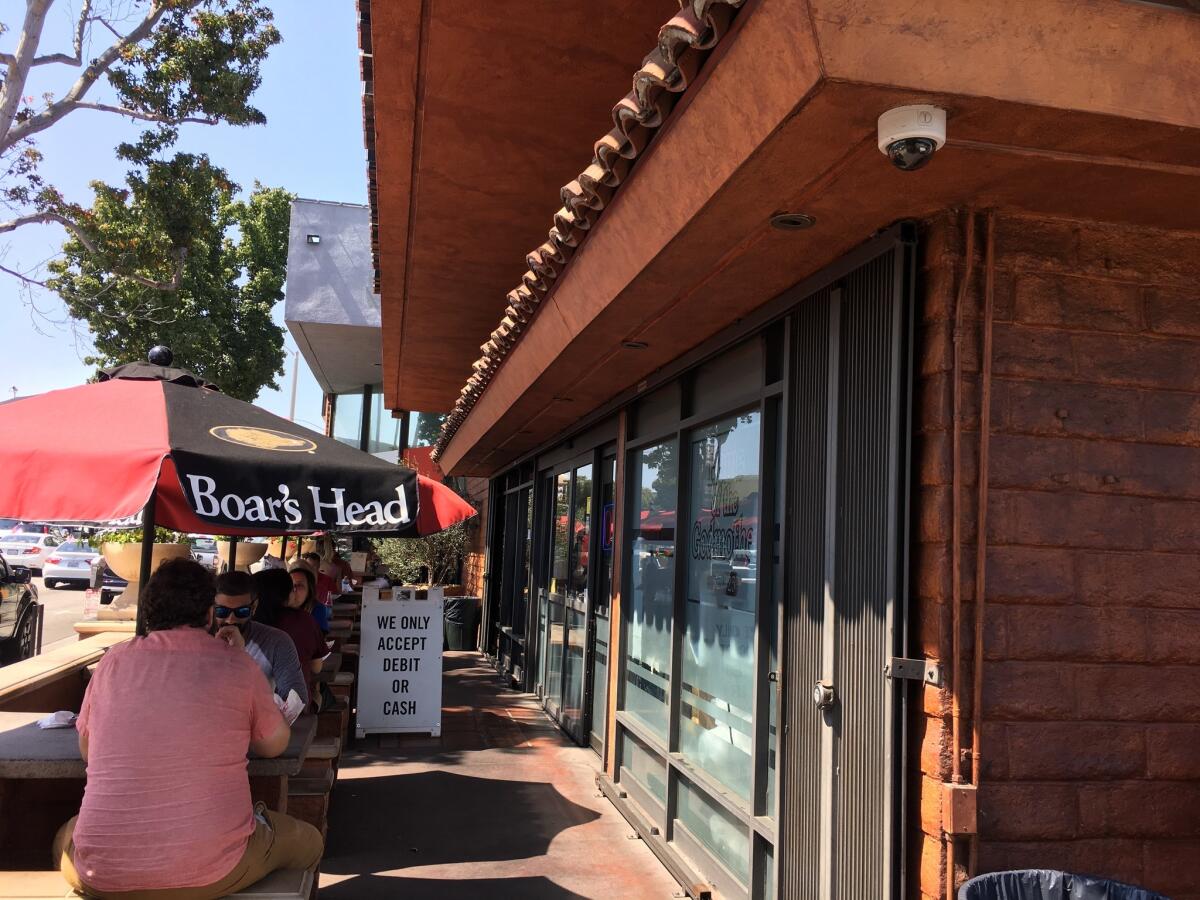
Indeed, the menu goes on and on. (Nine kinds of turkey sandwich?) Hot sandwich hits include the meatball and pot roast. Vegetarians, consider the eggplant parmesan.
There’s nothing easy about this place. The store is located on a clangy stretch of Lincoln Boulevard, and you can only enter the parking lot when you’re heading north. There is free parking for two dozen cars. After that, good luck.
But there are reasons the lot is full and lines at the deli counter can run 45 minutes or more. First of all, it’s more than a deli; Bay Cities is a specialty Italian grocery. In New York or Philly, it wouldn’t be such a novelty. But here….
And, really, it’s all about the Godmother. Get it with the works, and peppers, mild or hot. Grab a root beer and a spot at a concrete table outside. If the place is really packed, pick up a Godmother from the bin of pre-made sandwiches on the counter.
Regulars also know to preorder online (about 40 minutes ahead) and pick up at the separate takeout spot in the back corner.
Some meals are worth the fuss. This is one of them.
Where: 1517 Lincoln Blvd, Santa Monica, 16 miles west of downtown Los Angeles.
How much: Large Godmother, with the works, $9.70. Cash and debit only. Closed Mondays.
Sit back under Hollywood’s Cinerama Dome to see a big, wide, curvy movie
Why: Your daily life is basically one small screen after another. This is not that. This is a screen that’s 32 feet by 86 feet — not only big and wide but curved at a 126-degree angle, the better to surround you with cinematic spectacle while 44 fancy speakers roar and whisper in your ears. You’re in Hollywood. Why not let a movie embrace you?
What: At its opening in late 1963, the Cinerama Dome ws the only theater of its kind, designed to bowl over audiences under a vast, Midcentury Modern geodesic roof that comprises 316 hexagons. (IMAX movies, also reliant on curved screens, came years later.)
The first movie screened here was “It’s a Mad, Mad, Mad, Mad World.” Nowadays management offers first-run movies and the occasional throwback, like the 40th anniversary showing of “Close Encounters of the Third Kind” that I caught in early September.

As long as you’re consuming pop culture in a big way, bear in mind that the massive Amoeba Music, home to what seems like miles of aisles of vinyl and CDs, is about a block away.
Where: 6360 Sunset Blvd., L.A., 6 miles northwest downtown L.A.
How much: A ticket typically costs $15.75-$17.75.
Dig those world-class bumps, sets and spikes on the sands of Manhattan Beach

Why: If this were just any wealthy beach city, it would be a great place to run, bike, surf, people-watch and nurse your real estate envy. But Manhattan Beach is also the birthplace of beach volleyball as a way of life. Whenever you visit, you’ll probably see seriously talented athletes at play.
What: Among the South Bay beach cities of Redondo, Hermosa and Manhattan, this is the northernmost and wealthiest. Plenty of restaurants and shops are lined up on Manhattan Beach Boulevard, the main drag. At the end of the boulevard, the concrete Manhattan Beach Pier reaches 928 feet into the sea, with a cafe and the small, kid-friendly Roundhouse Aquarium at the end.
The volleyball happens on the sand courts just north and south of the pier. Besides frequent competitions there are lots of classes for kids and adults. Be warned that the Manhattan Beach Open, a summer institution since 1960, draws tens of thousands of fans, making a demanding parking situation downright diabolical. Be comforted that no matter when you come, you can read the brass plaques along the pier’s Manhattan Beach Open Volleyball Walk of Fame: Olympic gold medalist Kerri Walsh Jennings has seven plaques there. Karch Kiraly, also an Olympic gold medalist, has 10.
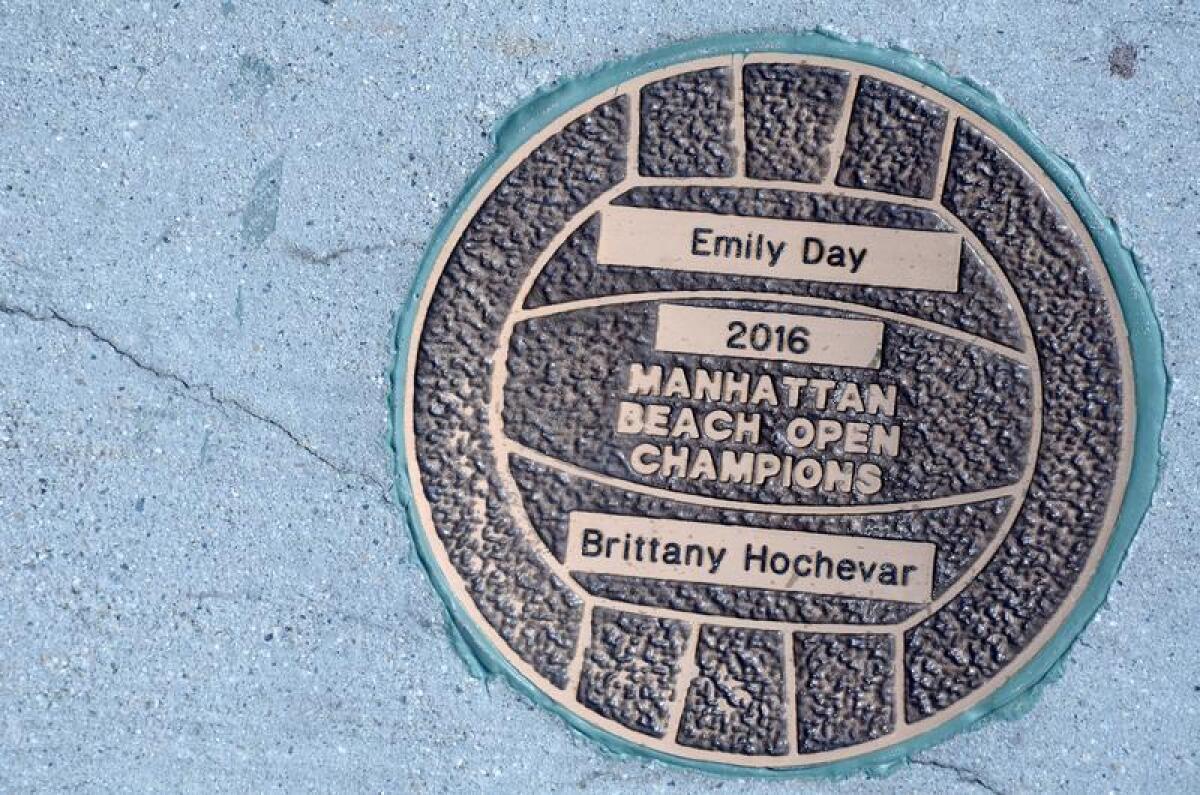
Take a walk along the Strand or bike the Marvin Braude Bike Trail. (Both parallel the shore).
Get a beer at Rock’n Fish, a cone at the always-busy Manhattan Beach Creamery, or a meal at any hour in The Kettle. (All three are within a few blocks on Manhattan Beach Boulevard.) The Shade Hotel is a short walk away, pricey and stylish, in Metlox Plaza.
Where: The Manhattan Beach Pier is 22 miles southwest of downtown L.A., 5 miles south of LAX.
How much: Ice cream cones at the Manhattan Beach Creamery cost $3.95-$6.95. Homes along the Strand routinely fetch $10 million.
Info: Downtown Manhattan Beach
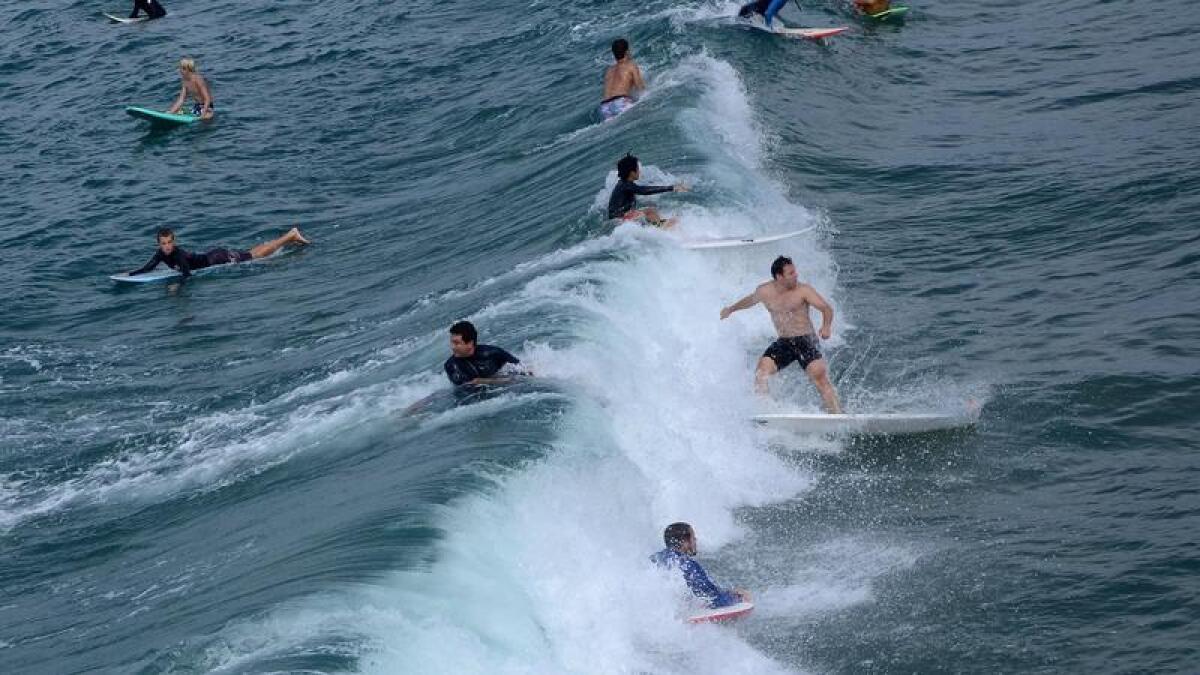
Immerse yourself in this riveting plea for tolerance and understanding in L.A.
Why: You can find hate almost anywhere these days. To find a cool-headed yet riveting plea for tolerance and understanding isn’t merely a relief, it’s life-affirming.
What: The Museum of Tolerance has been L.A.’s most effective classroom since 1993. Creative and sophisticated, the highly visual exhibits offer insight into civil rights, diversity, racism and human relationships.
Laid out across four levels, the contemporary building offers enough interesting information to take up most of an afternoon. Each of the three main wings takes about 90 minutes.
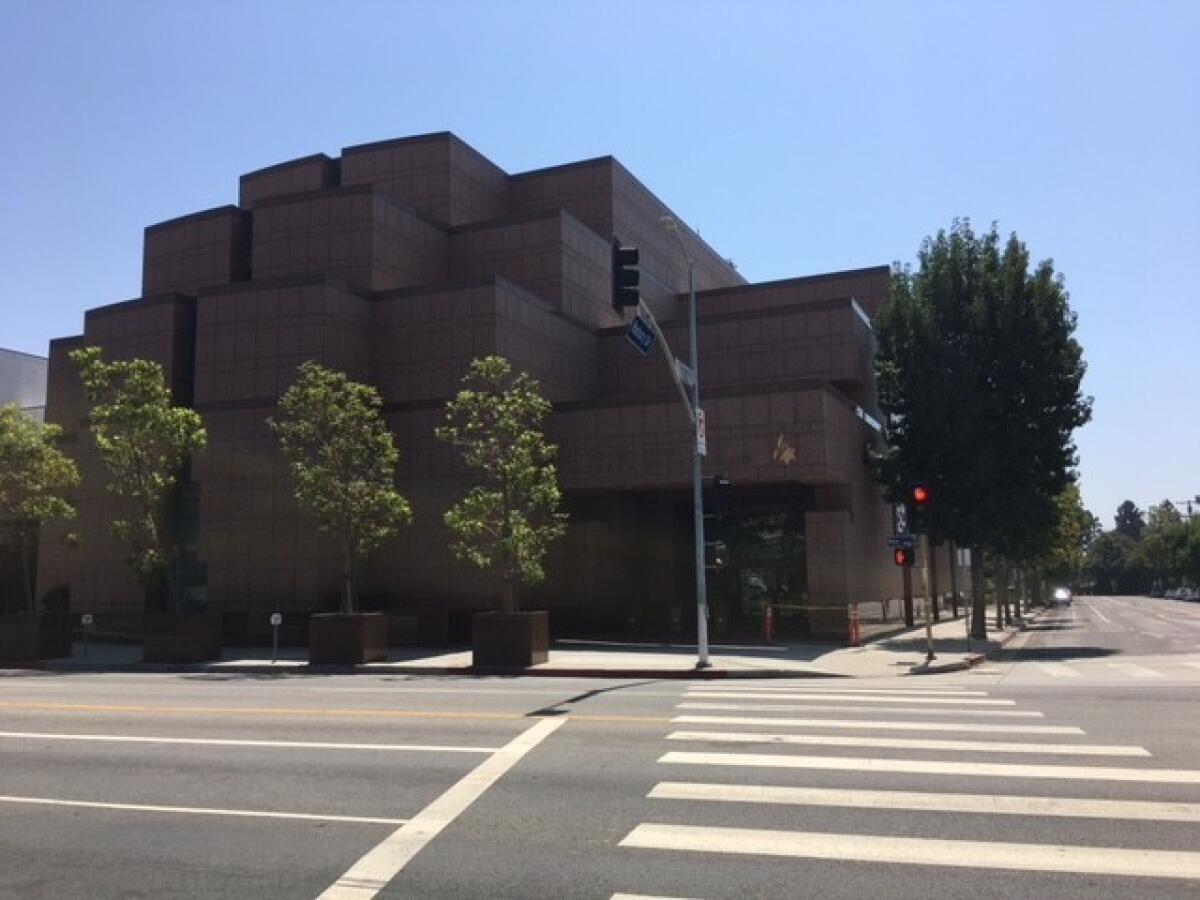
In the Tolerance Center, the Point of View Diner instructs participants on such common issues as bullying and drunk driving. We the People is an animated history on the American experience, the role of diversity and the importance of overcoming intolerance.
But the Holocaust Section, Level M, is the centerpiece of this museum. The 70-minute dramatic presentation examines the rise of Nazism beginning in the 1920s, when Germany, reeling after World War I and beset by economic hardships, turned on the Jews as scapegoats for many of its problems.
Visitors are guided by lights from display to display, where news events are recalled and everyday conversations reconstructed. Among the displays: a pre-war Berlin cafe where diners discuss troubling current events, table by table. Artfully presented — even the curl of the newspapers is spot-on — the exhibit is one of the most memorable. If that doesn’t carve a spot in your memory, the replica Auschwitz will.
Where: 9786 W. Pico Blvd., Los Angeles, 11 miles west of downtown L.A.
How much: Adults, $15.50; ages 5-11, $11.50. Parking in attached garage is free (enter off of Pico). Note: Closed Saturdays.
Info: Museum of Tolerance
Explore La Jolla’s Sunny Jim Cave by tunnel or kayak
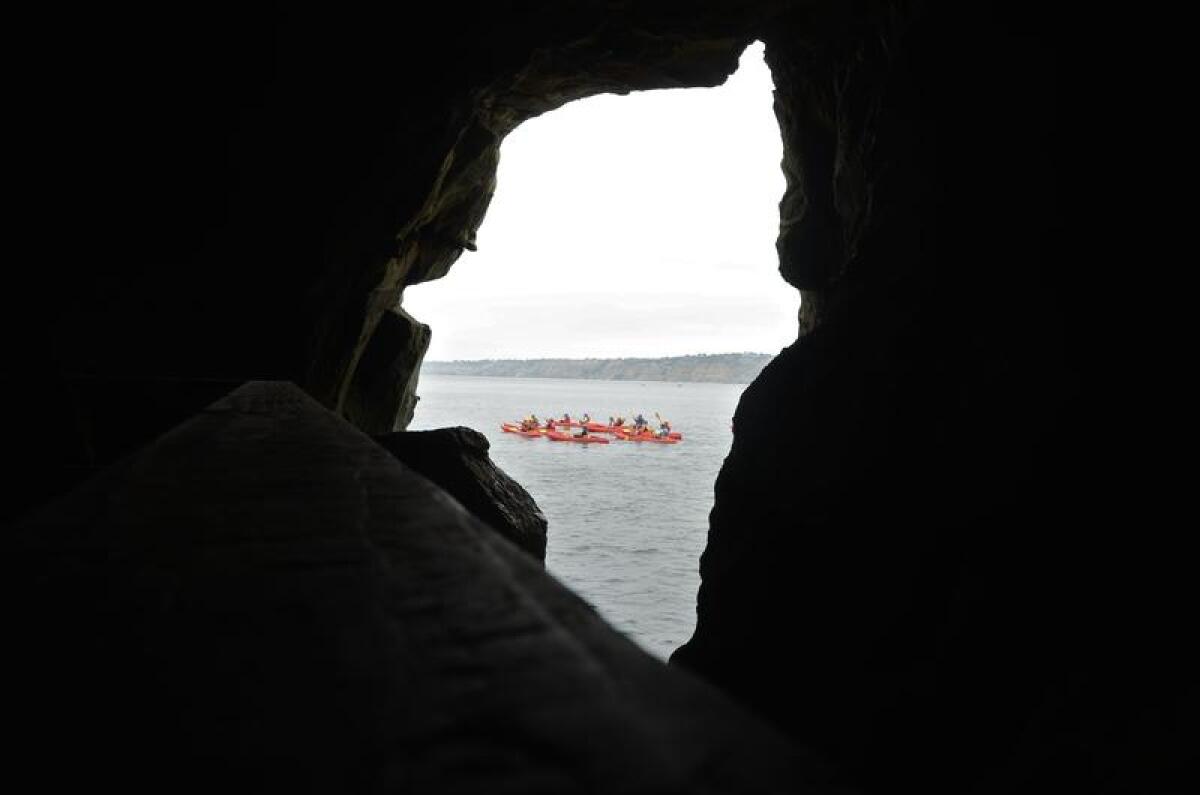
Why: It’ll make you feel like a pirate. Or a sea lion.
What: Back in the first years of the 20th century, somebody hatched a nutty idea and hired two guys to start digging through this sandstone bluff top toward a sea cave below. And they made it. Nowadays, this neighborhood’s real estate prices are enough to chase mere millionaires away, but if you enter the modest-looking Cave Store and head for the rustic-looking stairwell, the tunnel remains.
Its 145 steps will take you down to where waves crash and sea lions sometimes bellow. Chances are you’ll also see kayakers through the opening as they make their own approach to the same cave. (The store also stocks jewelry, art and souvenirs.) By the way, all the digging was done with picks and shovels in 1902 and 1903 by two laborers from China, names unknown.
Also, the cave was nicknamed “Sunny Jim” by Frank Baum (author of “The Wizard Oz”) because the outline of the opening looks like a cartoon character called Sunny Jim who was used in advertisements for British Force Wheat cereal products in the early 20th century. (Sunny Jim had unruly hair toward the back of his head.)
What’s that? Want to see it by kayak? Bike & Kayak Tours offers rentals and tours of the seven sea caves in the area, as do La Jolla Sea Cave Kayaks and La Jolla Kayak.
Where: 1325 Coast Blvd., La Jolla, 115 miles southeast of downtown L.A.
How much: $5 for adults, $5 for kids 16 and younger. Open daily. Kayak tours of the caves start at about $40.
Info: Cave Store
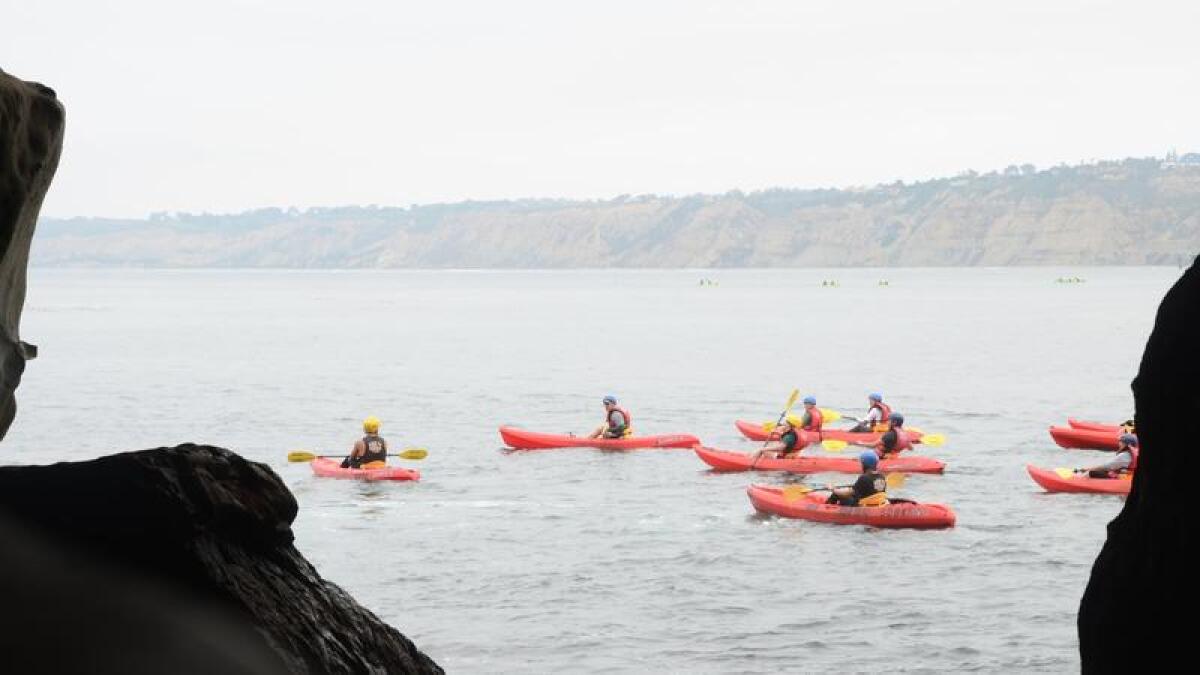
Swim, snorkel and kayak off Santa Cruz Island
Why: Santa Cruz Island offers an undeveloped, virtually uninhabited wilderness with staggering scenery and biodiversity that might make Charles Darwin weep. The beach at Scorpion Ranch is an ideal spot to marvel at life beneath the waves (especially the shoreline kelp forests) and view sea cliffs, coves and caves by kayak.
What: Santa Cruz is one in a chain of eight Channel Islands that lay beyond the populated shores of Southern California. Five (including Santa Cruz) are part of Channel Islands National Park. At just 11 miles from Ventura Harbor, Scorpion Anchorage on Santa Cruz Island offers the best introduction to the park. Most visitors arrive via one-hour boat ride. Ashore, there’s potable water, picnic tables, some of the islands’ best weather and plenty to do. You can visit for a day or camp for several.
Often referred to as “the Galápagos of North America,” the archipelago is home to 145 species of flora and fauna found nowhere else. On Santa Cruz, keep an eye out for the highly visible (and tiny) island foxes and island scrub jays. Also, though it seems so far from civilization, the island has a 10,000-plus-year history of Chumash habitation, along with half a millennium of European exploration and nearly 200 years of ranching. The visitor center at the historic Scorpion Ranch house offers information on all these topics, guided hikes and other free interpretive programs. (Also, back on the mainland, check out the park’s Robert J. Lagomarsino Visitor Center at Channel Islands National Park in Ventura.)The summer and fall are ideal times to kayak, snorkel and swim at the beach at Scorpion Anchorage. Kayak transportation must be arranged before departure (use Channel Island Kayak Center for rentals). Guided tours and snorkel gear rentals are available through Channel Islands Adventure Company. Reservations are recommended, but walk-ups on the island may be available, especially for snorkel gear. If water sports aren’t your thing, Santa Cruz island offers superb hiking from Scorpion Anchorage, from a two-mile loop along majestic sea cliffs to an eight-mile trek into the island interior.
The island offers no food service (except for a few snacks on the boat), so bring your own, and pack out all of your trash. Depending on weather, boat departures may be canceled, so always check the status of your trip before you travel. Also, wind, currents and weather can make for rough boat crossings, so make sure to take some Dramamine if you are prone to seasickness.
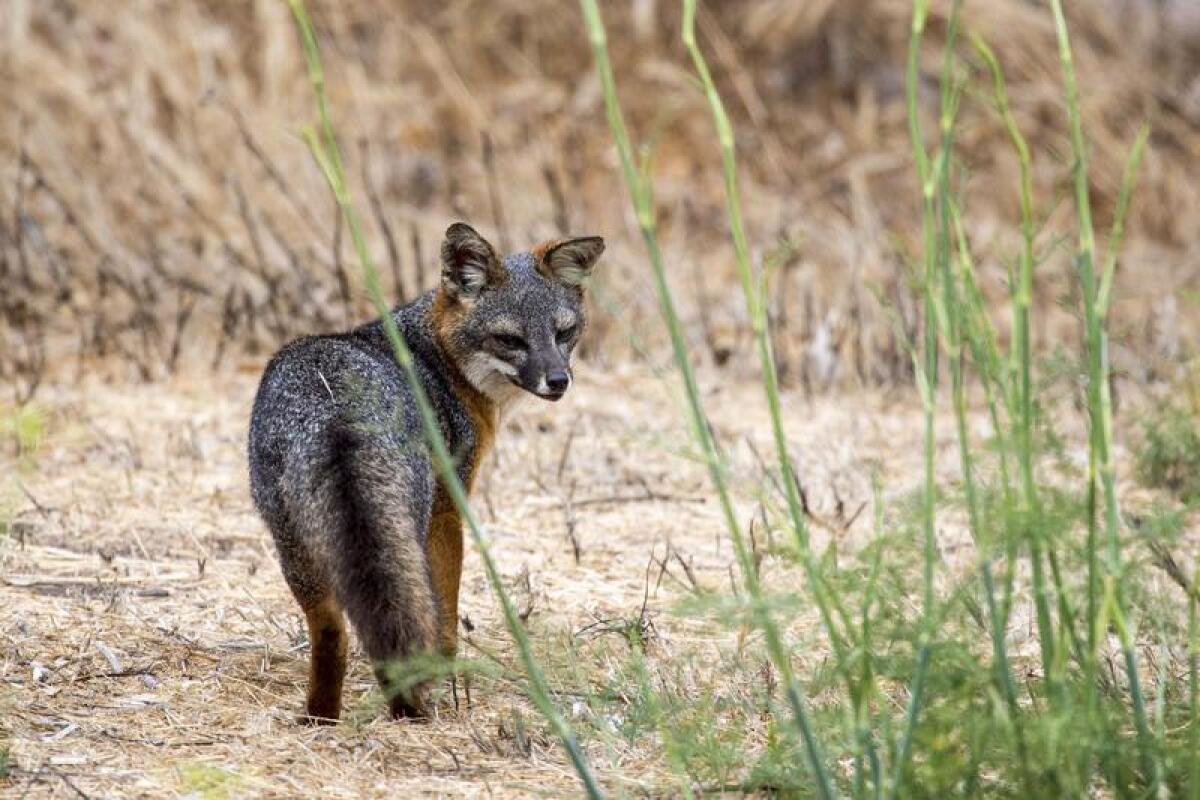
Where: Santa Cruz island lies west of Ventura Harbor, accessible by one-hour boat ride from Island Packers Cruises, 1691 Spinnaker Drive, No. 105B, Ventura, CA 90031, 67 miles northwest of downtown Los Angeles.
How much: There is no entrance fee to the park. A round-trip day ticket to Santa Cruz island via Island Packers Cruises is $59 (adults), $55 (seniors) or $41 (children). Children under 3 are free.
Info: Channel Islands National Park
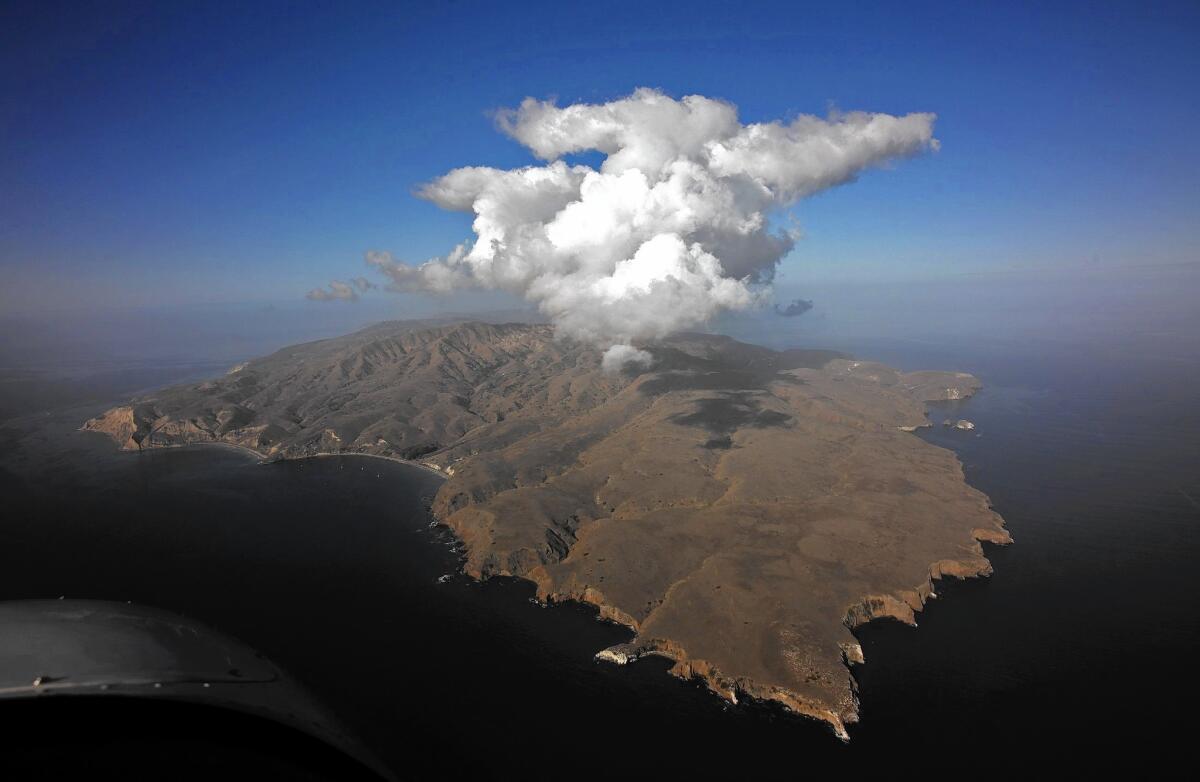
Hug the coast on Amtrak’s Pacific Surfliner between San Luis Obispo and San Diego
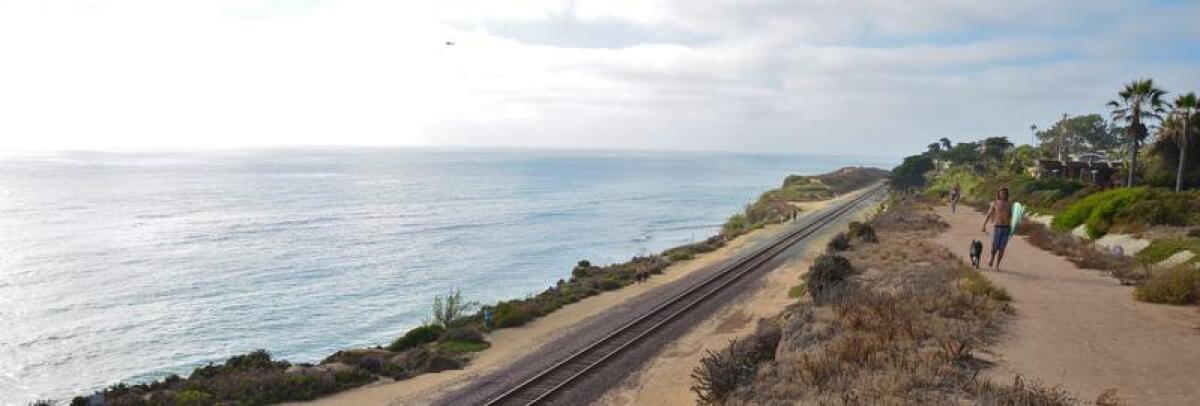
Why: These are the best Amtrak miles in California.
What: Yes, Amtrak can take you all the way from San Diego to Seattle on its Coast Starlight route. But it’s between San Luis Obispo and San Diego that most of the coastline happens. The Pacific Surfliner route takes about nine hours if you stay aboard the whole way, but you might want to pick a shorter portion of the trip, focusing on, say, the rugged beaches of San Luis Obispo and Santa Barbara counties, or the upscale shoreline in southern Orange and northern San Diego counties. (Near downtown L.A. you’ll get a dose of heavy industry and a river encased in concrete.)
The stations are part of the thrill too. The mustard-hued Santa Barbara station along State Street is a handsome piece of Spanish Colonial architecture that was well-restored several years ago. L.A.’s Union Station is a marvelous collision of Spanish Colonial and Art Deco. Since 2014, Anaheim has sported a station that’s all glinting metal and provocative curves. The San Juan Capistrano station is splendidly mission-adjacent. And one day, management of San Diego’s Santa Fe station will realize it’s time to spiff up the awkward, faded interior to match its grand old Mission Revival exterior.
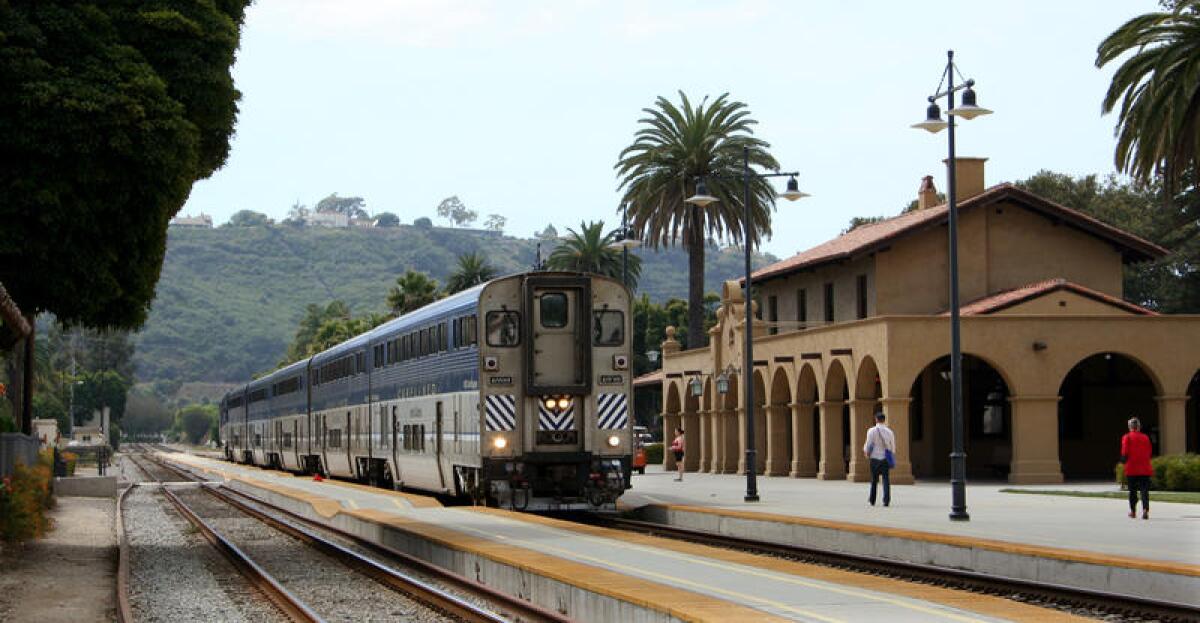
Where: From Santa Fe Station, 1050 Kettner Blvd., San Diego, it’s 124 miles northwest to downtown L.A.’s Union Station, 800 N. Alameda St. From there, it’s 95 miles northwest to the San Barbara Amtrak Station, 209 State St., and 189 miles northwest to the San Luis Obispo Amtrak Station, 1011 Railroad Ave.
How much: A one-way adult fare from San Luis Obispo to San Diego on the Pacific Surfliner costs $61; business class, $92. Between Los Angeles and San Diego, $37; business class, $56.
Info: Amtrak Pacific Surfliner
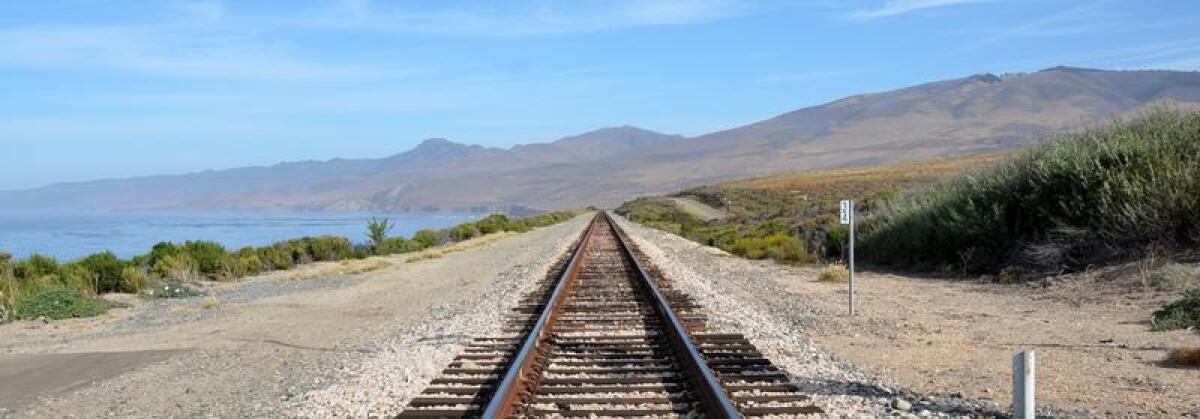
Listen for frogs in Angels Camp, Calaveras County, where Mark Twain launched his literary career
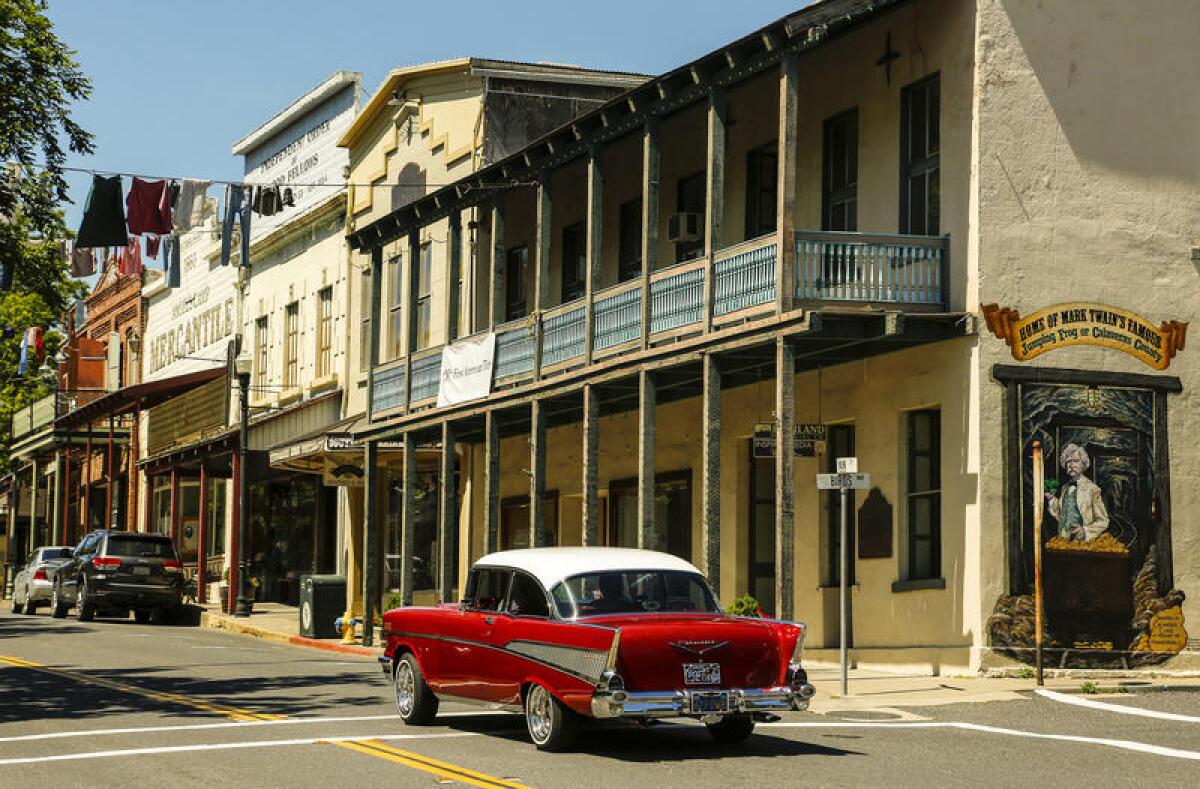
Why: It was in the played-out boomtown of Angels Camp that a bartender told young Samuel Clemens the tale that became his first nationally acclaimed story -- “The Celebrated Jumping Frog of Calaveras County,” written under the pen name Mark Twain.
What: Twain retold his frog story -- which today might strike you as a juvenile account of cruelty to animals -- back in the 1860s, a decade after the peak of the Gold Rush. The town of Angels Camp, still sleepy and surrounded by hills that turn a gorgeous green in spring, stages a frog-jumping contest during the county fair every spring -- in 2018, May 17-20.
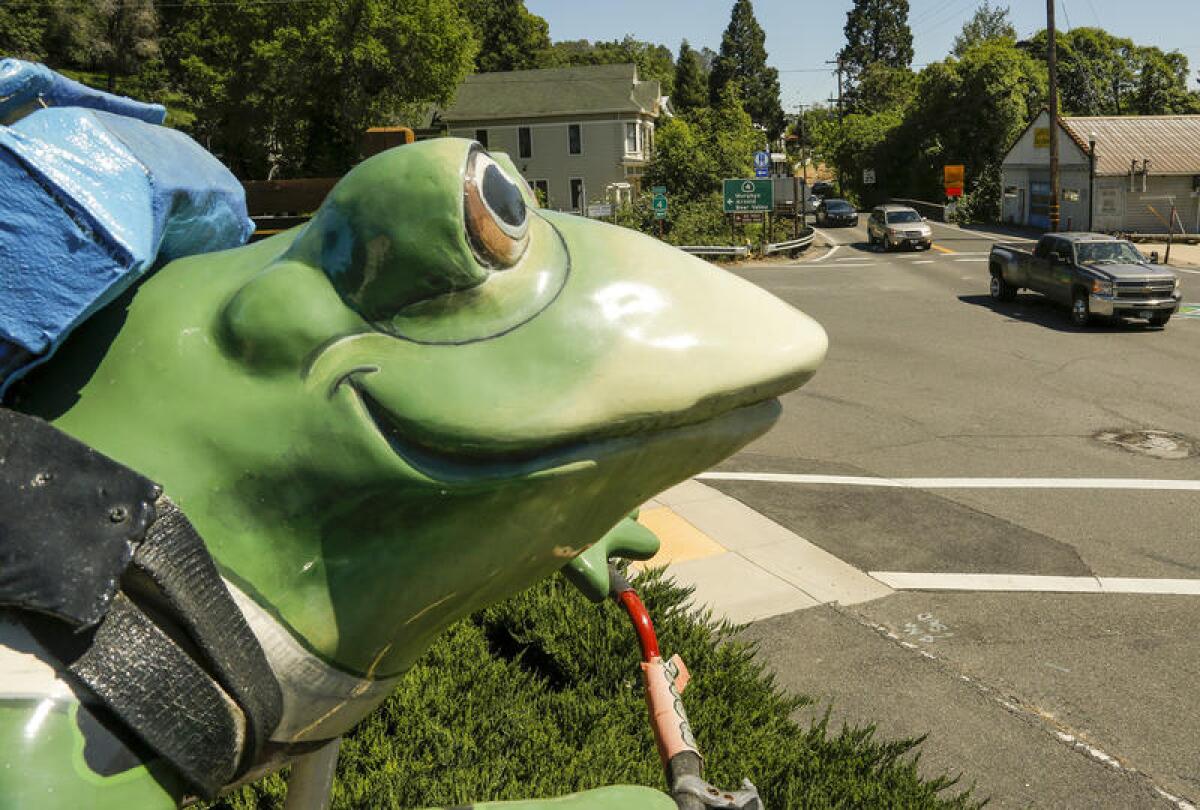
No matter when you turn up, you can catch up on past results by reading the sidewalk plaques of the Frog Hop of Fame along Main Street. You can also see the building site and mural at Main Street and Birds Way where Twain heard the story; and Jackass Hill outside town, where the author started writing it. (This year’s Mark Twain Wild West Fest, a daylong community party, is set for Oct. 21.)
For more history, stop by the Angels Camp Museum and Carriage House. For more amphibian biology, read this.
Where: The Frog Hop of Fame starts a few steps from the Calaveras Visitors Bureau, 1192 S. Main St., Angels Camp, 140 miles east of San Francisco, 340 miles northwest of downtown L.A. For a lively collection of restaurants, lodgings and shops, check out nearby Murphys, 8 miles northeast of Angels Camp.
How much: It’s always free to walk Main Street. Frog jump contest entry fee: $5.
Stand atop Yosemite’s most famous icon with a hike to the summit of Half Dome
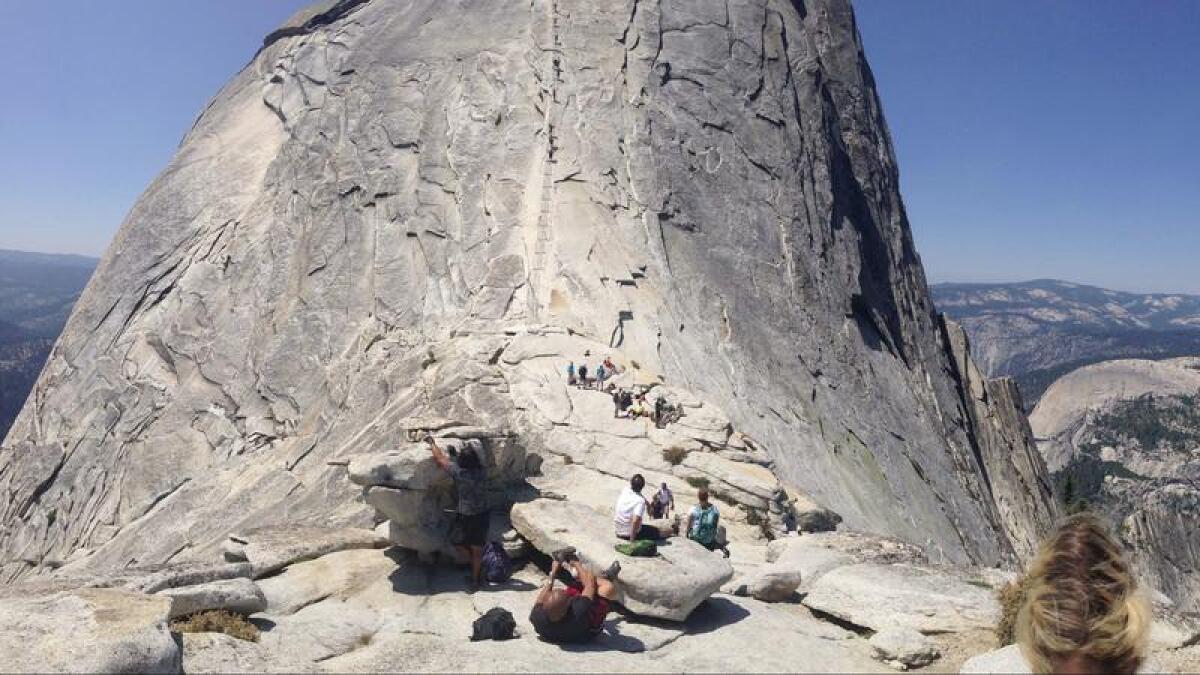
Why: This is the ultimate day hike — not just in Yosemite, but in all of California. The grueling trek to Half Dome is stunning from start to end: Along the way, you’ll pass rushing waterfalls, towering granite cliff faces and quiet wooded dells, and possibly spot the occasional black bear. All of that culminates in a nail-biting final ascent up 400 feet of metal cables, a harrowing endeavor that will challenge your arm strength, endurance and nerves.
What: There are two main ways to summit Half Dome: the Mist Trail (14 miles round trip) or the John Muir Trail (16 miles round trip). When I did the hike last June, the plan was to go up the Mist Trail and down the JMT, but after hours of hiking, the thought of tacking on additional mileage — even if it was less steep — became less appealing.
Either way, you’re looking at a gnarly 4,800 feet of elevation gain. For most hikers, the round trip takes 10 to 12 hours.
Hiking Half Dome involves a fair amount of logistical and physical advance prep.
First, you’ll need a permit to climb the cables. There are two ways to obtain one: during the preseason lottery (apply online in March; learn your results in mid-April) or through a daily lottery during the hiking season, which typically begins around Memorial Day and ends around Columbus Day, depending on weather conditions.
A maximum of 300 hikers are allowed a day: 225 day hikers, and 75 backpackers. With tens of thousands of people applying, be prepared for disappointment: According to the National Park Service, the success rate last year for preseason lottery applicants was just 3.4% on weekends and 10% on weekdays; for the daily lottery, it was 12% on weekends and 31% on weekdays.
To get in shape for Half Dome, plan to do several training hikes in the preceding months — a loop around Runyon the week before isn’t going to cut it. Wake up early, pack a backpack and get a feel for what it’s like to be out on the trail all day. Good training hikes in Southern California include the Six-Pack of Peaks (Mt. Wilson, Cucamonga Peak, Mt. Baldy, San Bernardino Peak, Mt. San Jacinto and San Gorgonio). Build up your arm strength with weights and resistance exercises.
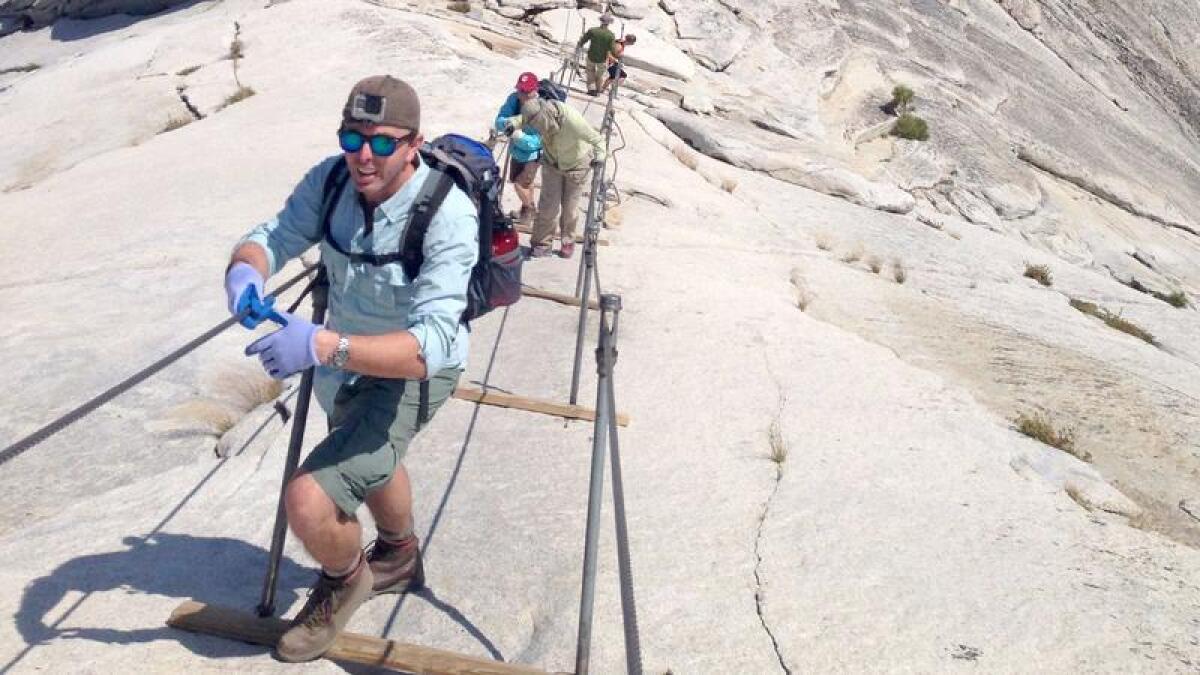
Bring a good pair of hiking boots, at least four liters of water, grippy gloves (although there is a pile of discarded gloves at the base of the cables), sunscreen, lunch, snacks, a flashlight or headlamp, mosquito repellent and a first-aid kit. Some hikers use a harness and clips to attach themselves to the cables, but most haul themselves up without.
Where: The hike begins on the valley floor. There’s a parking lot, or you can walk to the trailhead from the Happy Isles shuttle stop (about a half-mile away) or from Half Dome Village (about three-quatrers of a mile away). Note that shuttle service doesn’t begin until 7 a.m.
How much: It costs $10 to apply for a permit, and another $10 if you win the lottery. Park admission is $30 per vehicle for a seven-day pass.
Break up the drive on the 395 with a burger and shake at Frosty Chalet
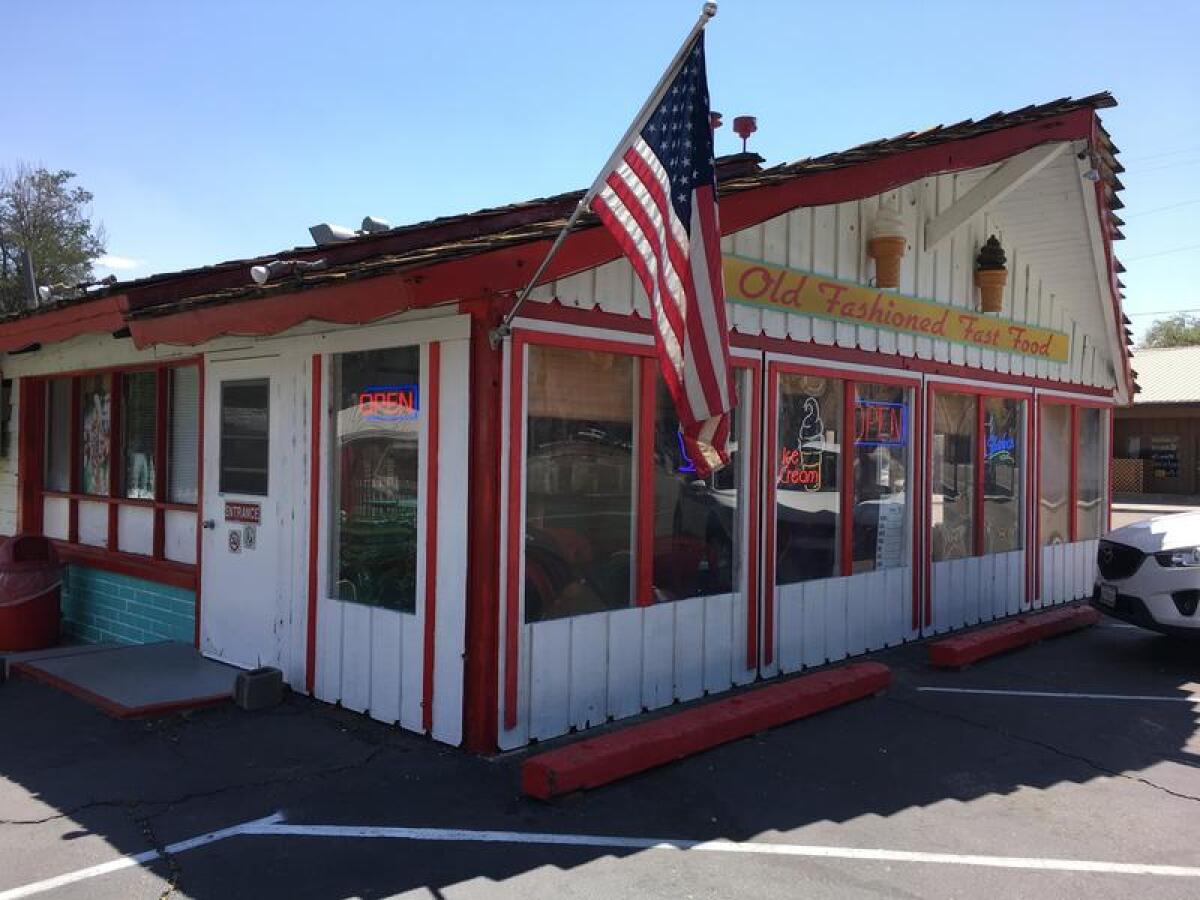
Why: Everyone needs a pit stop or two along Highway 395, the often-drab drive from L.A. to the Eastern Sierra. Could be a beef jerky joint or a tackle shop. My latest favorite is Frosty Chalet, a slice-of-life fast food stop in Lone Pine featuring some of the best milkshakes in the Owens Valley.
What: The charming, family-friendly Frosty Chalet has had a life. Born in the late ‘40s, with timber reportedly salvaged from a train depot, it was saved from ruin fairly recently after being dormant for eight years.
“It’s a nice old piece of Americana.”
— Fred Brown
Repurchased five years ago by Freddie Brown, who’d owned it previously with her late husband, it is now run by her son, Fred, and his wife, Jaynie. “It’s a nice old piece of Americana,” said Fred Brown.
The reopening was a relief for the generations of travelers who remembered the spot from childhood trips. Still primarily a summer and fall venture, the restaurant is open May 1 through the end of October. There’s indoor seating, but if the weather is right, the outdoor picnic tables are the place to be.
Where: 532 N. Main St. (Highway 395), Lone Pine, Calif., 210 miles and a little more than three hours north of downtown L.A., in Inyo County.
How much: The one-third-pound double-cheeseburger ($6.25) is the most-popular item, but don’t dismiss the Bible-thick roast beef sandwich. Brown says he’s added a grilled cheese ($4) that’s popular with vegetarians. He uses a standard burger bun but serves it upside down so the bread toasts just right.
Whatever you do, don’t skip a milkshake ($5.25) or sundae ($4.25), made with high butter fat ice cream.
Cash only.
Info: Frosty Chalet; (760) 920-4940
Chase celebrities on the original tour of the stars’ homes in L.A.
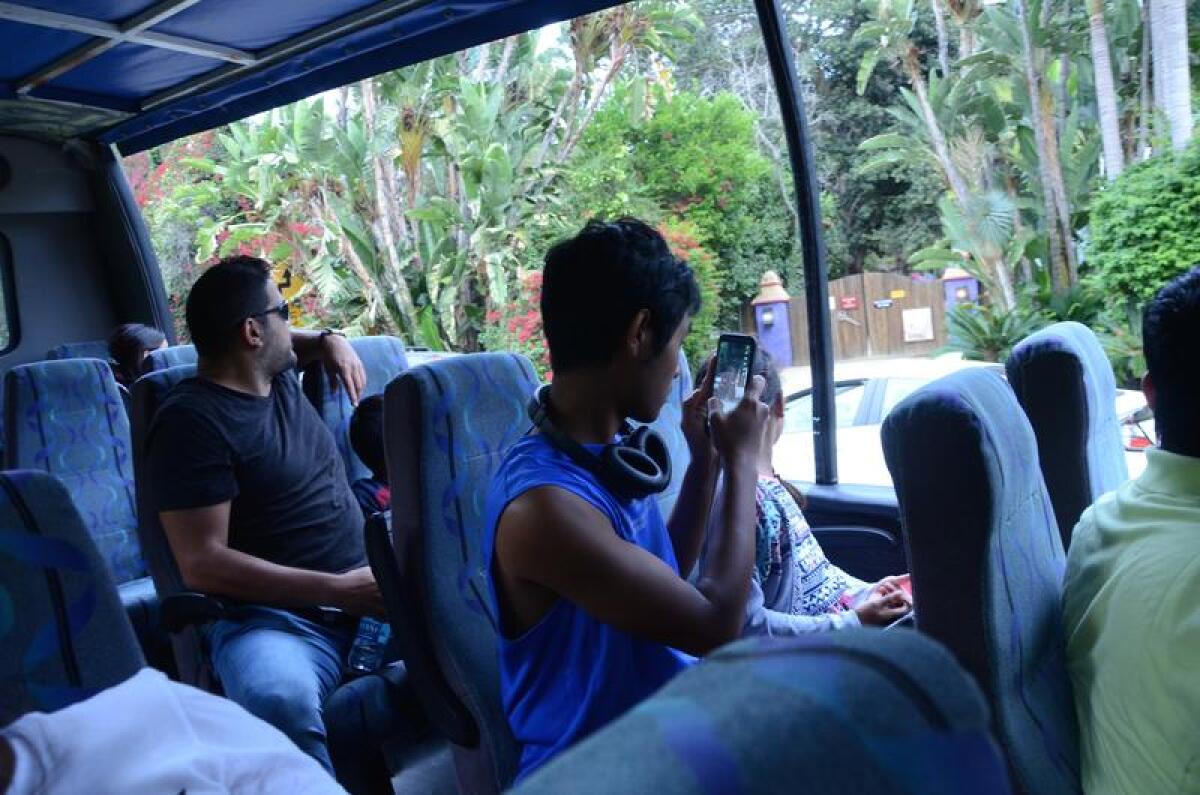
Why: Admit it-- you’re a little curious about Sir Paul McCartney’s chimney, or Justin Timberlake’s hilltop or just which L.A. houses Justin Bieber has been obliged to vacate. Since its founding by Sid Grauman’s chauffeur in 1935, Starline Tours has traded on our curiosity about these places.
What: Bud Delp (Grauman’s chauffeur) built the tour company, then sold it in the 1960s to protege Vahid Sapir, who had come to the U.S. as an exchange student from Iran. These days Sapir’s Starline competes with many other tour companies (including Gray Line and TMZ) and covers many itineraries beyond stalking the stars’ homes, but it was the first of its species.
Sign on to the two-hour celebrity home tour and before your minivan has finished climbing Outpost Drive into the Hollywood Hills, you’ll have gawked at the front-gate gargoyles of the late Bela Lugosi, glimpsed properties attributed to Bob Barker; William H. Macy and Felicity Huffman; and heard all about the “Bling Ring” thieves who stole Orlando Bloom’s Rolex collection in 2009.
From there, you’ll probably head west on Mulholland Drive, descend Coldwater Canyon Drive, then double back on Sunset Boulevard. You’ll see the big D (from the old Disneyland sign) in John Stamos’ yard; the irreverent signs that the late Carrie Fisher hung on her driveway gate; the iron gates of the Holmby Hills estate where Michael Jackson died in 2009.
My particular tour in August included a fender-bender with a Mercedes on Sunset -- you can’t get any more up close and personal with L.A. wealth than that. Be glad that your trip probably won’t include that extra feature.
Where: Most tours begin at the TCL Chinese Theater (a.k.a. Grauman’s), 6925 Hollywood Blvd. in Hollywood, 8 miles northwest of downtown L.A.
How much: For the two-hour homes-of-the-stars tour beginning at the Chinese Theater, adults pay $45; children ages 3-11 pay $35. For pickup at your hotel, rates go up by $10-$15. Tours leave every half hour from 9:30 a.m. to sundown.
Info: Starline Tours
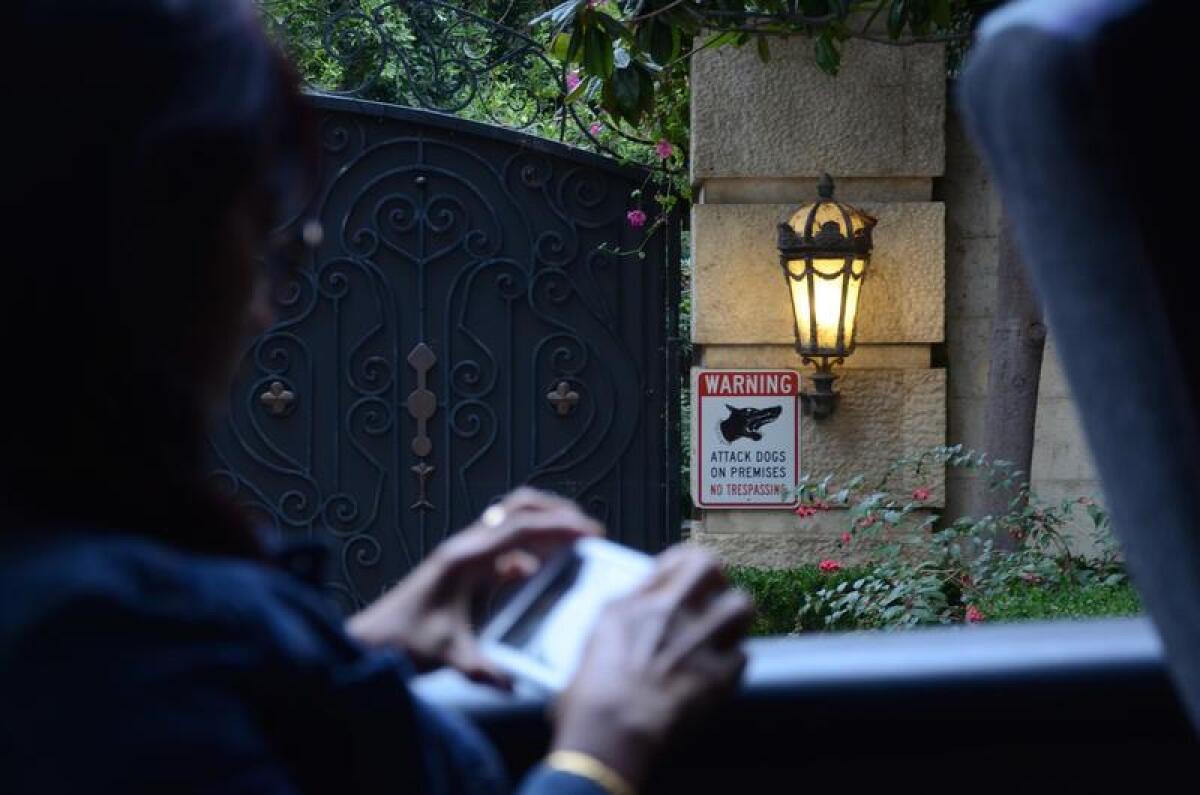
Let loose a yelp with the celebrated mariachis of L.A.’s La Fonda de Los Camperos
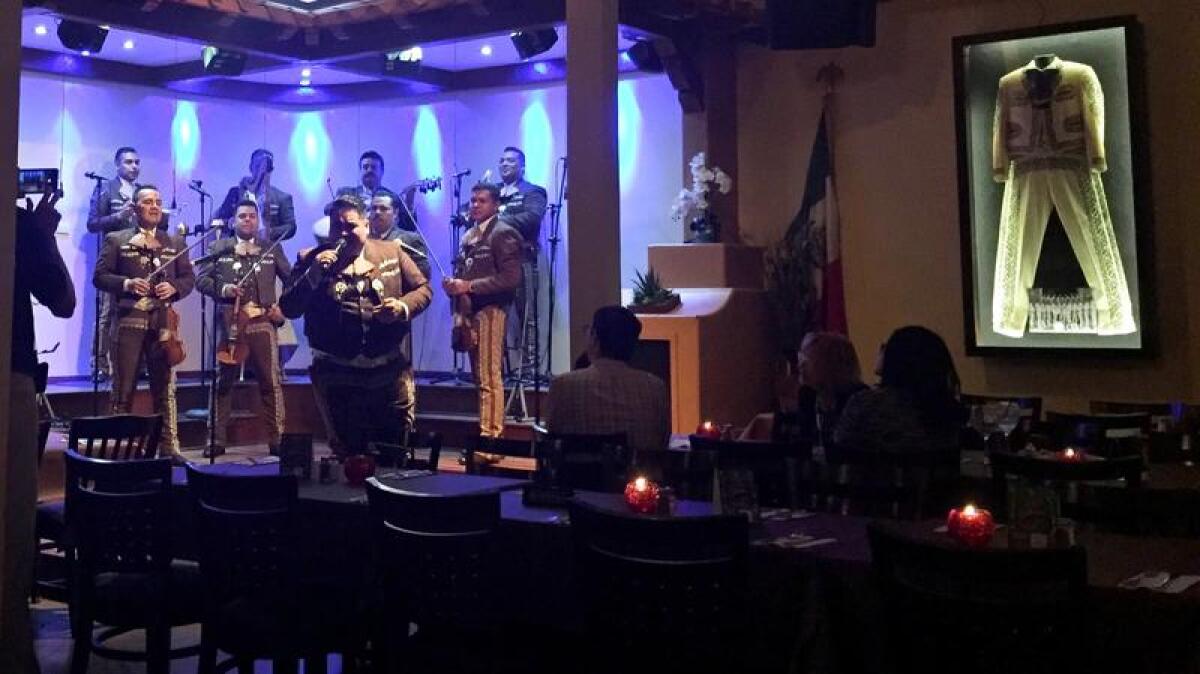
Why: There must be thousands of California Mexican restaurants where mariachi musicians roam the tables. But only at La Fonda are they in charge.
What: From 1969 until 2007, La Fonda served as headquarters to Nati Cano and Los Camperos, an esteemed mariachi group that collaborated on Linda Ronstadt’s 1987 album “Canciones de mi Padre.” Then the restaurant closed. And Cano died.
But in 2016 the restaurant reopened in its original location -- a two-level Spanish Colonial space on Wilshire Boulevard near MacArthur Park -- offering dinner shows directed by longtime Campero Jesus “Chuy” Guzman. The musicians (who won a 2008 Grammy for Mexican regional music) do two hourlong shows nightly, Thursday through Sunday.
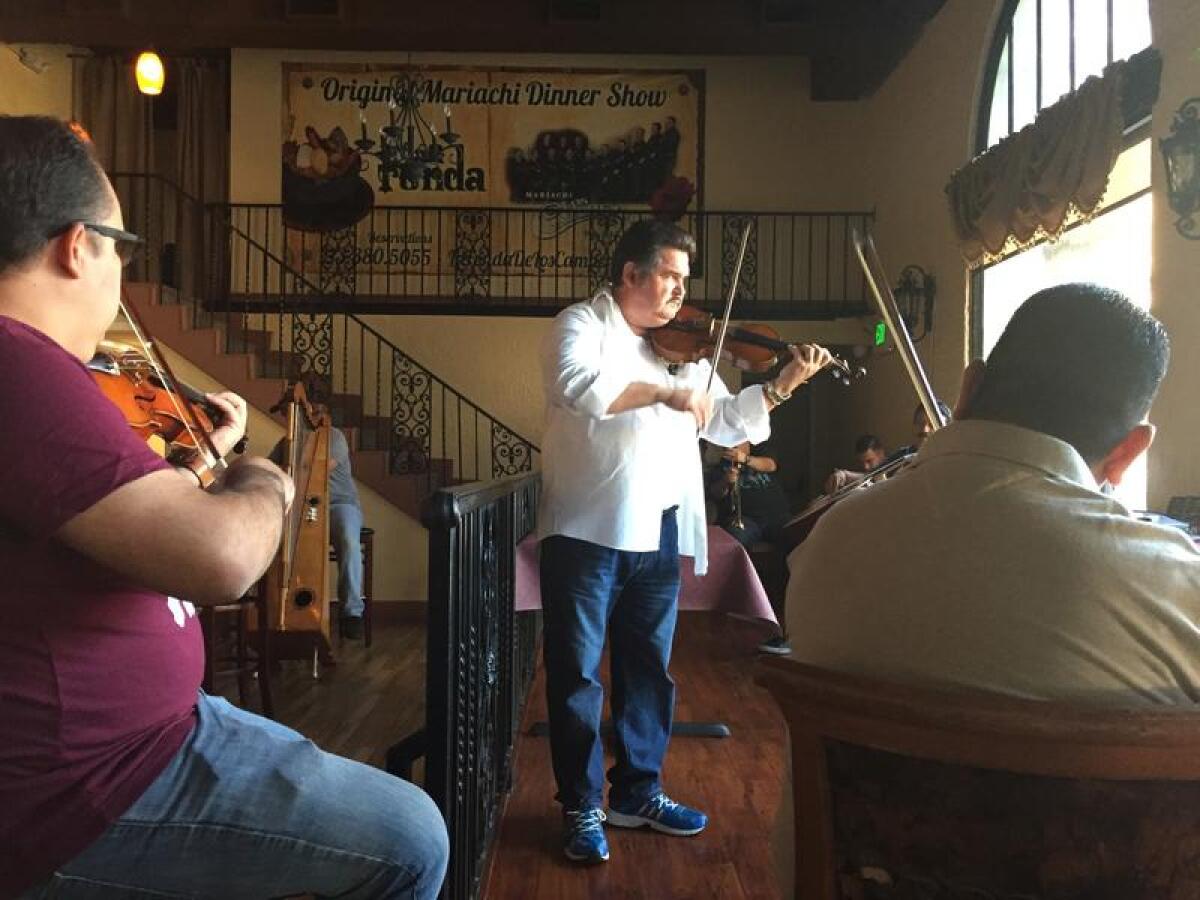
On the night I visited, the food was O.K., but the performance was compelling: four violins, two horns, two guitars, one harp and more bravura vocals and harmonies than you could shake a vihuela at. High energy, high volume, and plenty of those happy yelps that players and listeners emit when the music goes really right -- gritos. Experts seem to agree that this music goes back to the state of Jalisco in the 19th century, but beyond that, arguments start.
Where: 2501 Wilshire Blvd., L.A., about a mile northwest of downtown L.A.
How much: There’s no charge for the show, but you have to order dinner. Entrees are in the $23-$28 range.
Info: La Fonda de Los Camperos
See the Sierra light up for fall by taking the June Lake Loop
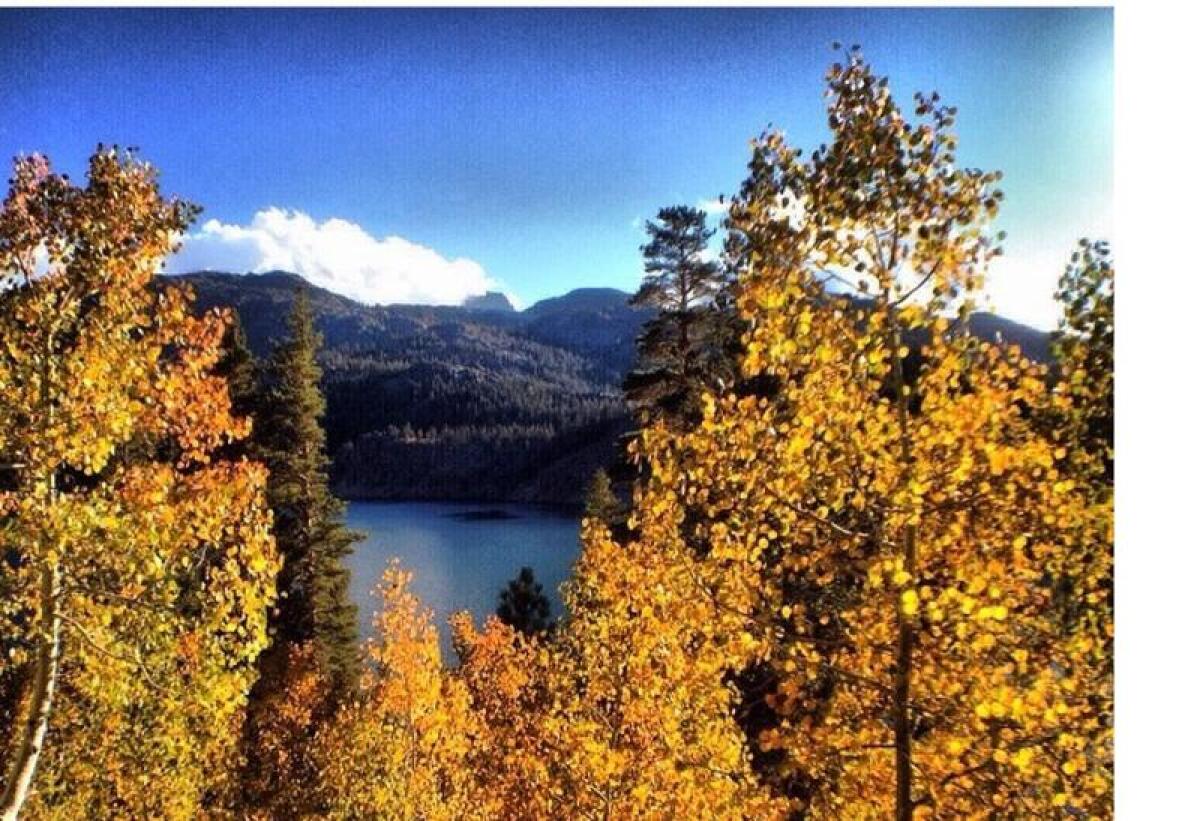
Why: You’ll find Longfellow’s forest primeval in the quivering aspen of the Eastern Sierra. The June Lake Loop passes mountain lakes, granite bluffs and trees so golden they look to be on fire.
What: If you need a dose of fall color, and a hike or kayak trip, it’s tough to beat this uncrowded stretch of highway five hours from Los Angeles.
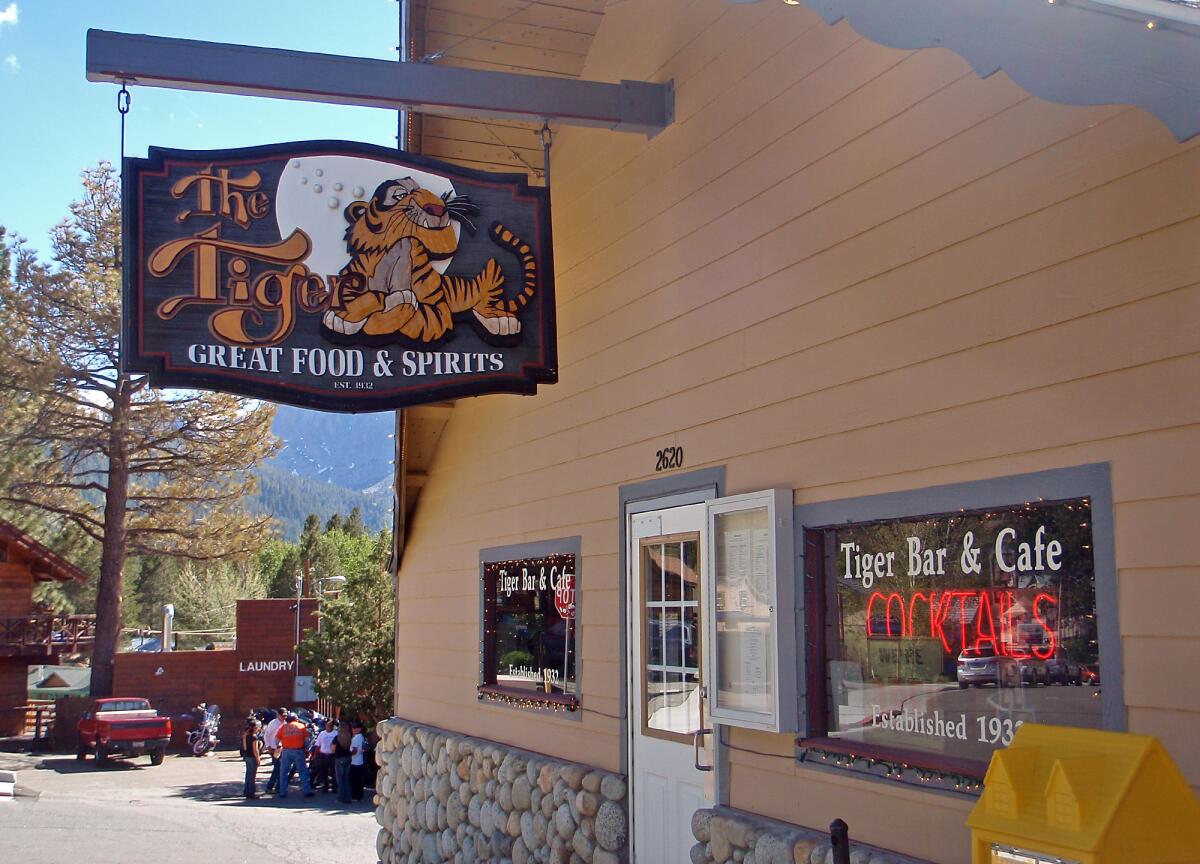
Expect a small slice of Switzerland, with the colors from the mountains and lakes adding to the palette. Great tunnels of aspen ring the lakes.
The perfect fall Saturday: Start with breakfast at the Tiger Bar & Grill in the middle of the tiny Alpine town of June Lake, then follow the June Lake Loop along Highway 158 for 15 miles, stopping for photos along the way.
While you’re out, toss a line, for the trout are usually feeding in September and October in preparation for the long winter. Or rent a kayak or a pontoon boat. Hiking is extraordinary this time of year.
Finish by mid-afternoon, and head to the Double Eagle Resort & Spa for a massage or a swim in the indoor-pool (day rates available). Peak times for viewing fall colors run from late September through mid-October. A couple of weeks either way also provides plenty of pop.
Where: The June Lake Loop is 322 miles, about 5.5 hours, from Los Angeles in Mono County. Take Highway 395 north from Mammoth Lakes, then Highway 158 to June Lake.
How much: There is no fee to drive the loop.
Info: June Lake Loop, (760) 648-4651
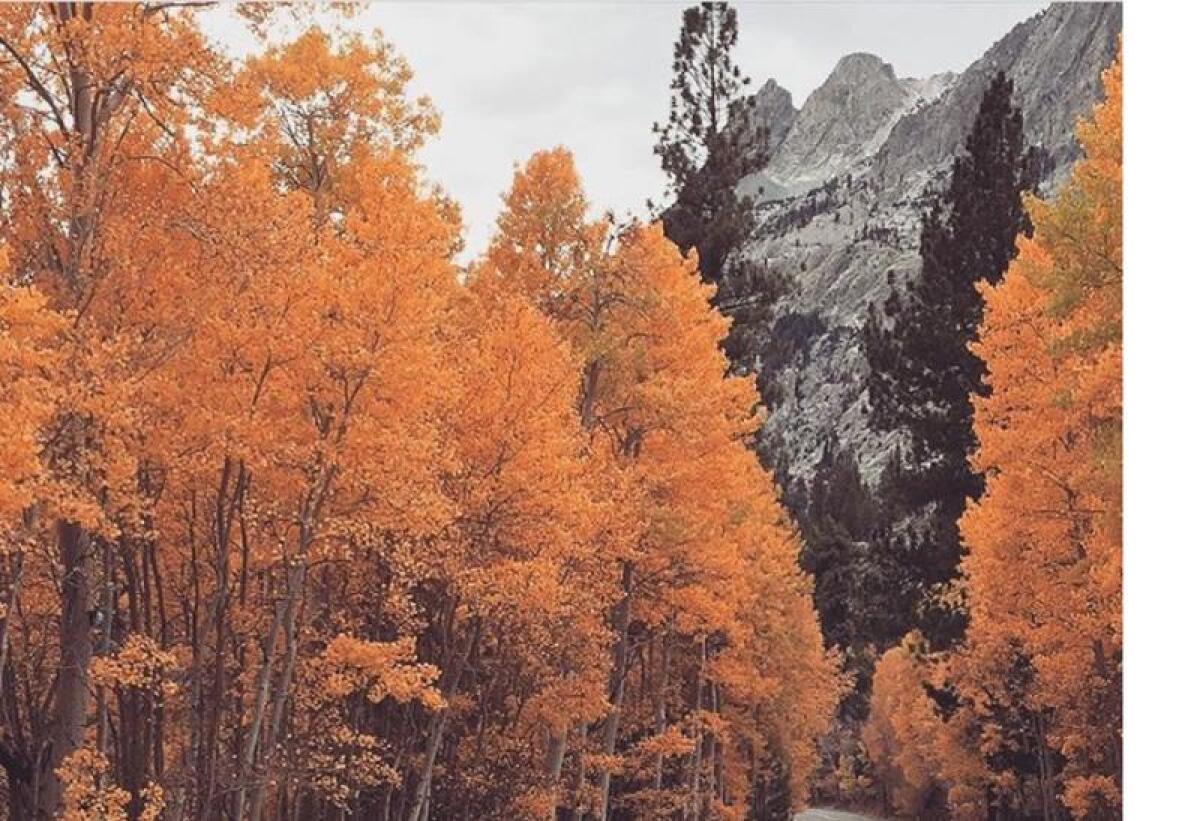
Board the Angels Flight railway for a short, steep trip through downtown L.A.
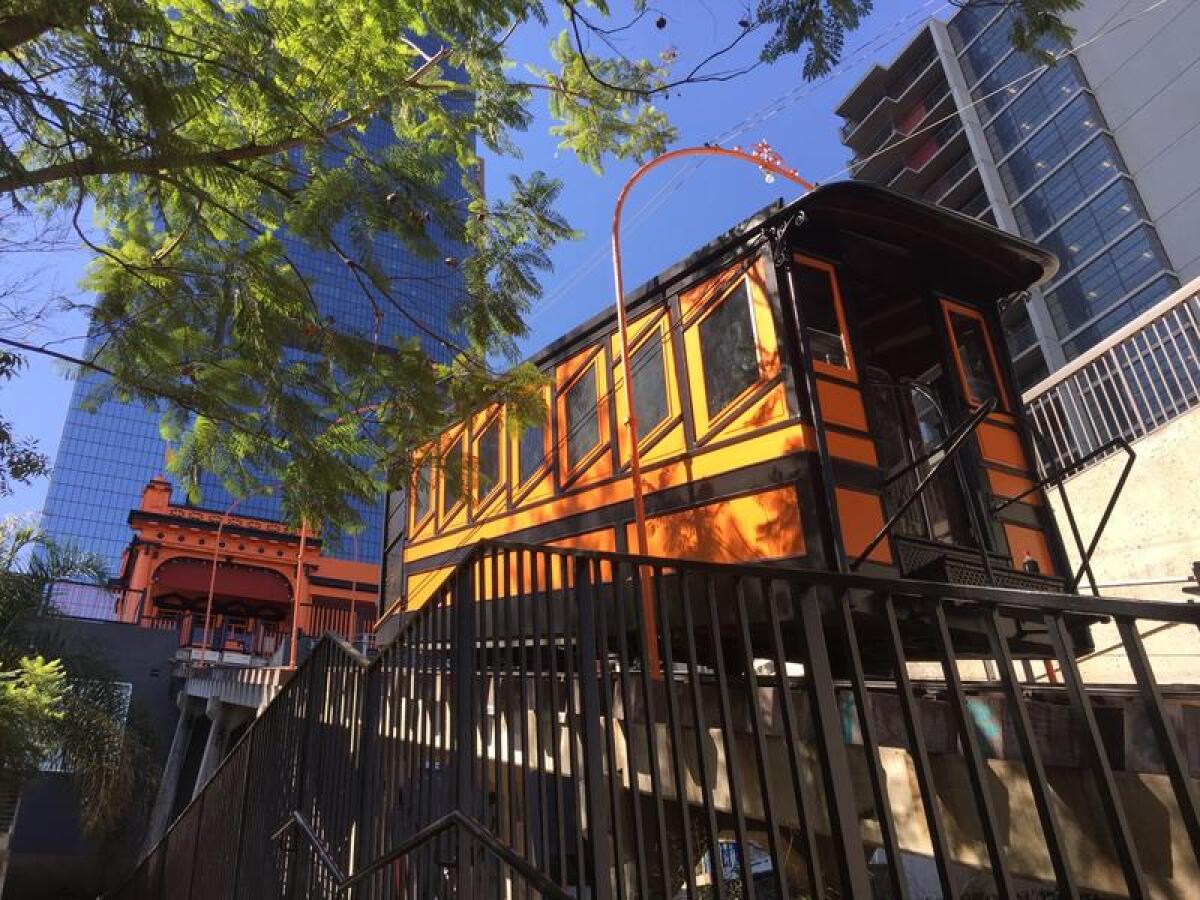
Why: It’s the shortest, steepest train trip you’ll ever take.
What: Angels Flight is a railroad in downtown Los Angeles with two orange cars and a 298-foot route. The cars climb at a 33% grade (steeper than Lombard Street in San Francisco) from the bottom of Bunker Hill to the top. And the railway dates to 1901, when Bunker Hill was a neighborhood of Victorian houses, not skyscrapers.
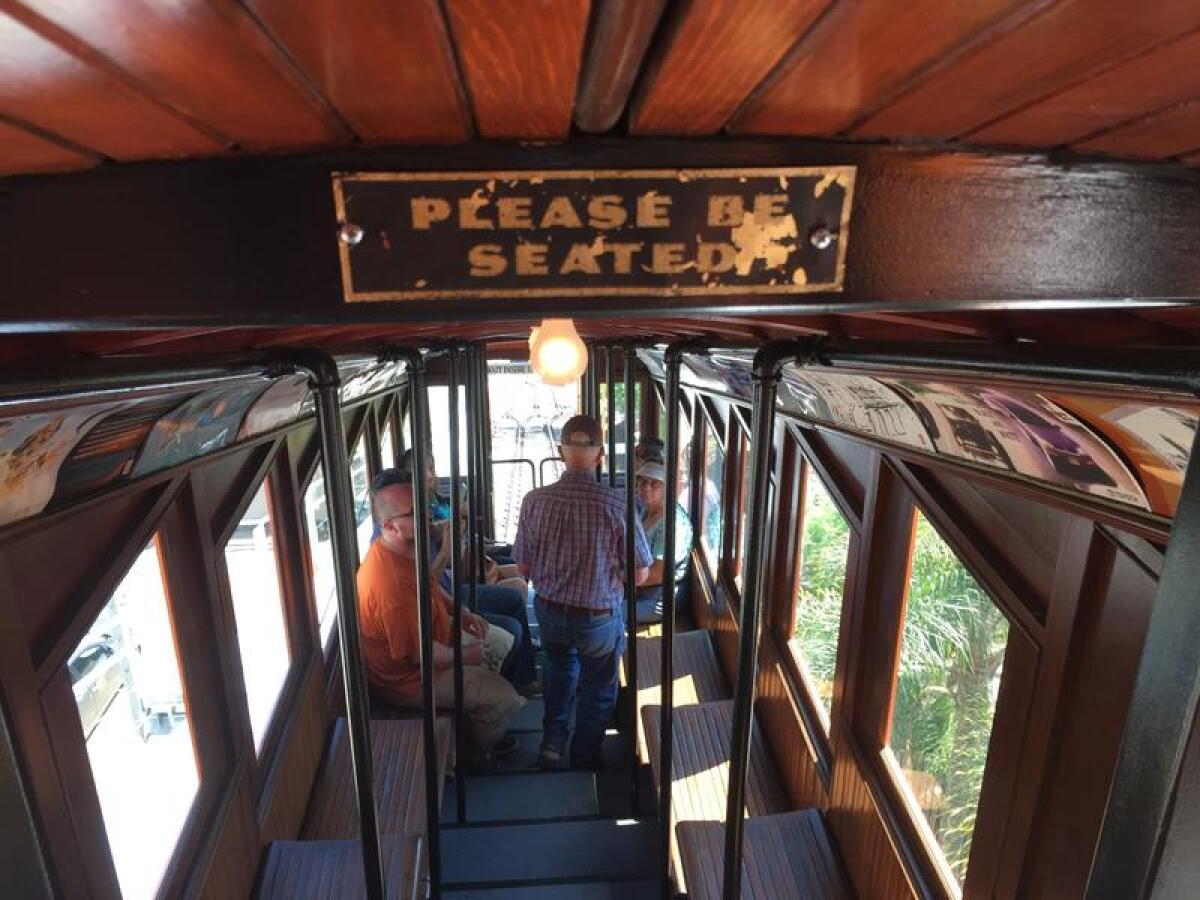
Over the last 116 years, the railway has failed at least twice, moved once, spent years out of commission, yet somehow always reopened -- most recently on Aug. 31, 2017, drawing healthy crowds despite beastly heat. Now it’s well positioned to capitalize on the surging popularity of the Grand Central Market just across Hill Street, not to mention the urban views from the uphill end, next to the fountains of California Plaza.
Where: 350 S. Grand Ave., downtown L.A.. How much: $1 each way, 50 cents if you have a Metro card.
Info: Angels Flight
Catch a movie beneath the stars, and above them, at the hippest cemetery in Hollywood
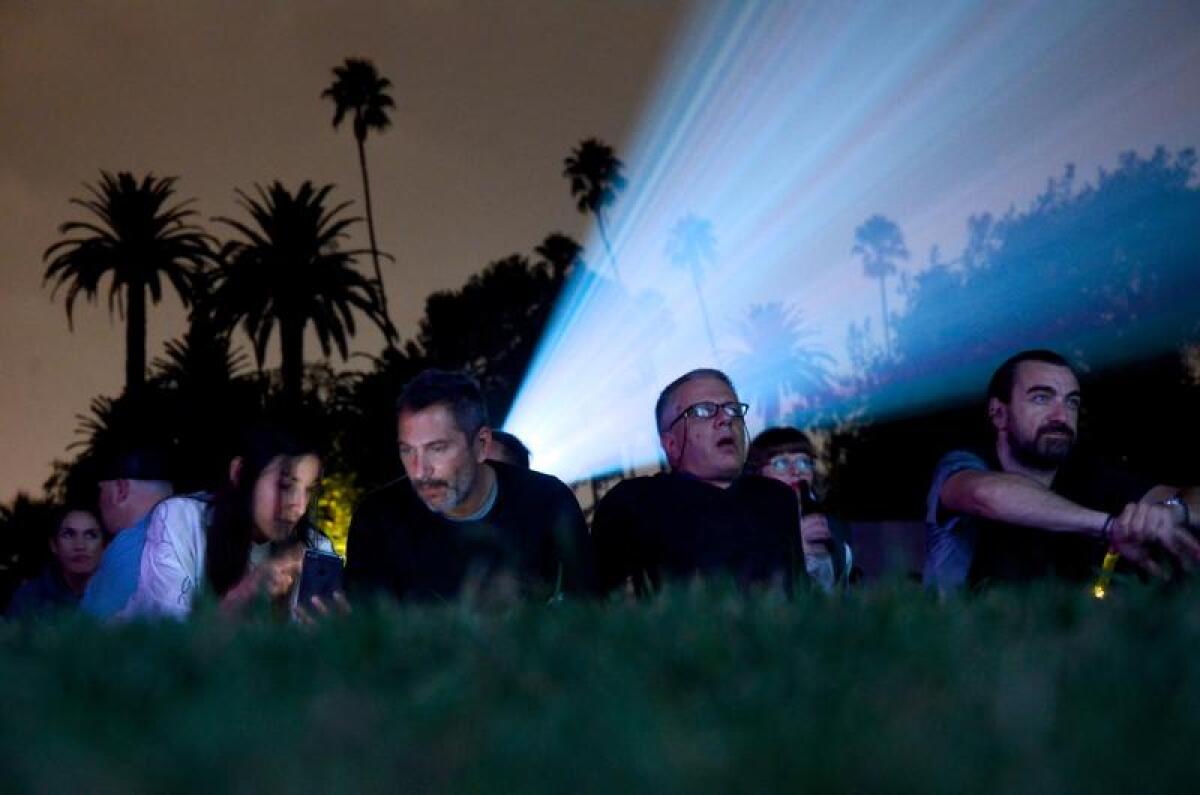
Why: The palm-shaded, Paramount-adjacent Hollywood Forever Cemetery combines film screenings and other cagey programming with a long roster of show-business gravesites.
What: Cecil B. DeMille, Judy Garland, Jayne Mansfield, Johnny Ramone and Rudolph Valentino repose here and so can you, on a more temporary basis. On selected weekend nights every summer, Cinespia screens cult and classic movies on the Fairbanks Lawn, a grave-free corner of the 62-acre cemetery.
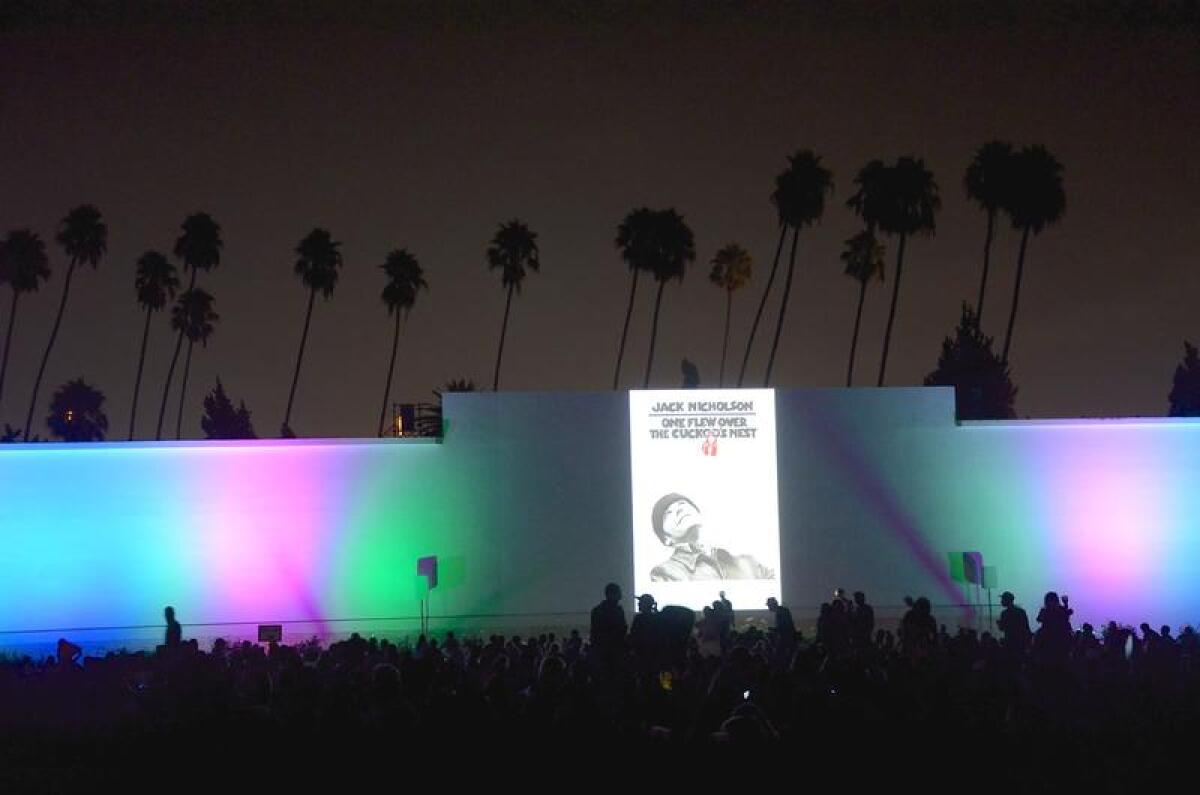
Audiences spread blankets, picnic, buy popcorn and candy and groove to a pre-movie DJ. (Before the Aug. 26 showing of “Ghost World” (2001), director Terry Zwigoff and actors Thora Birch and Illeana Douglas turned up to offer greetings.)
The 2017 Cinespia season, which began May 13 with “Chinatown,” winds up with “Sunset Boulevard” (Sept. 3), “Coming to America” (Sept. 9) and Baz Luhrmann’s “Romeo and Juliet” (Sept. 16). Hollywood Forever also hosts a popular Dia de Los Muertos celebration in late October and uses its Masonic Lodge as a year-round concert venue. By day, the cemetery is open to visitors.
Where: 6000 Santa Monica Blvd., L.A., 6 miles northwest of downtown L.A.
How much: Daytime admission is free. Movie tickets are typically $16 and on-site parking for the movies is $15.
Info: Hollywood Forever, Cinespia
Relive Nixonian highs and lows at his presidential library in Yorba Linda
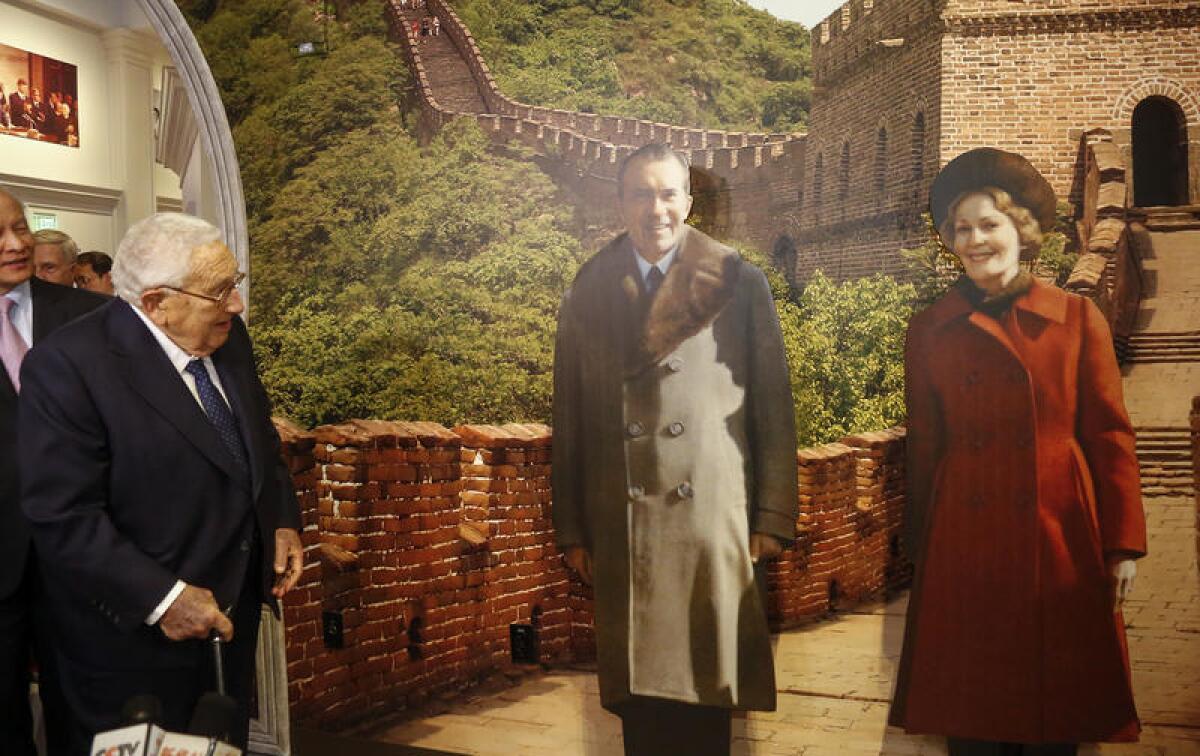
Why: One of the darkest eras in U.S. history stands as a potent reminder that daylight will come again.
What: A $15-million redesign in 2016 brought more than five dozen new exhibits to the 9-acre Richard Nixon Presidential Library & Museum, presenting a fuller picture of the man who won election in 1968, negotiated U.S. withdrawal from Vietnam, established the Environmental Protection Agency, opened China to the Western world, then became the only U.S. president to resign.
Visitors now can eavesdrop on White House recordings that round out the portrait of Richard Nixon (1913-1994) as a human being. In a 1973 phone call, daughter Julie asks her father whether they can dine at Trader Vic’s and he says yes but that she should also check with Mommy and sister Tricia. Julie Nixon Eisenhower would have been 24 at the time.
The Watergate exhibits (widely criticized for pro-Nixon bias before the National Archives and Records Administration took over the library in 2007) remind us how slowly the wheels of justice turn: The first of two-break-ins at Washington’s Watergate complex occurred in May 1972; Nixon resigned effective Aug. 9, 1974. In a farewell speech to his staff, Nixon said, “Only if you have been in the deepest valley can you ever know how magnificent it is to be on the highest mountain.”
Visitors also can tour the modest home where Nixon was born and pay respects at his grave. (Nixon and First Lady Pat Nixon, who died in 1993, are both buried on the grounds.)
Where: 18001 Yorba Linda Blvd., about 38 miles southeast of downtown L.A.
How much: $16 for adults, $12 for seniors 62 and older; $10 for students and retired military, $10 for youth; $6 for children 5-11; children younger than 4 and active military are admitted free.
Debate what’s great at Julia Child’s favorite restaurant in Santa Barbara
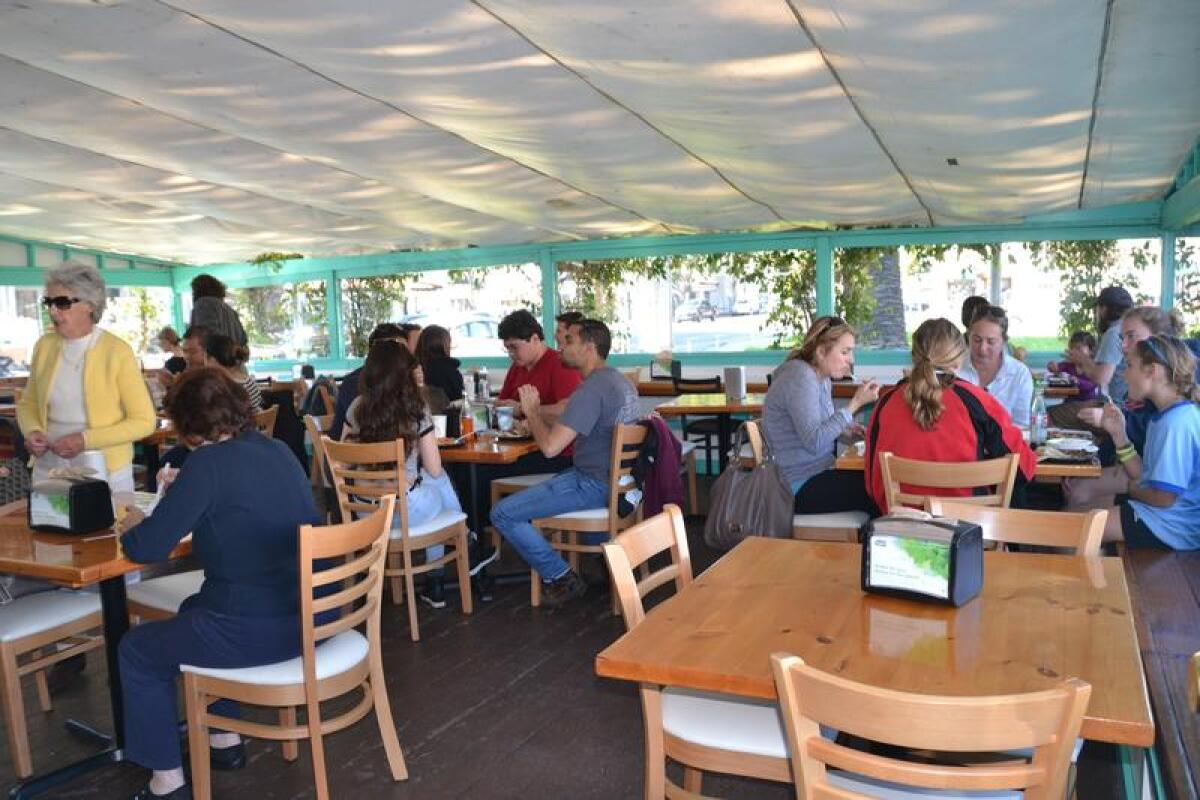
Why: Because debating the topic of greatness is almost as fun as discovering something that is truly great.
What: Revered chef Julia Child was wrong, wrong and triple-dog wrong about Santa Barbara’s La Super-Rica Taqueria. Or else Julia Child was right, right and triple-dog right about La Super-Rica Taqueria.
You have to judge for yourself.
Prepare to stand in line at what’s called a taco stand but looks more like the Jetsons’ patio, thanks to its turquoise exterior/breezy interior midcentury modern style.
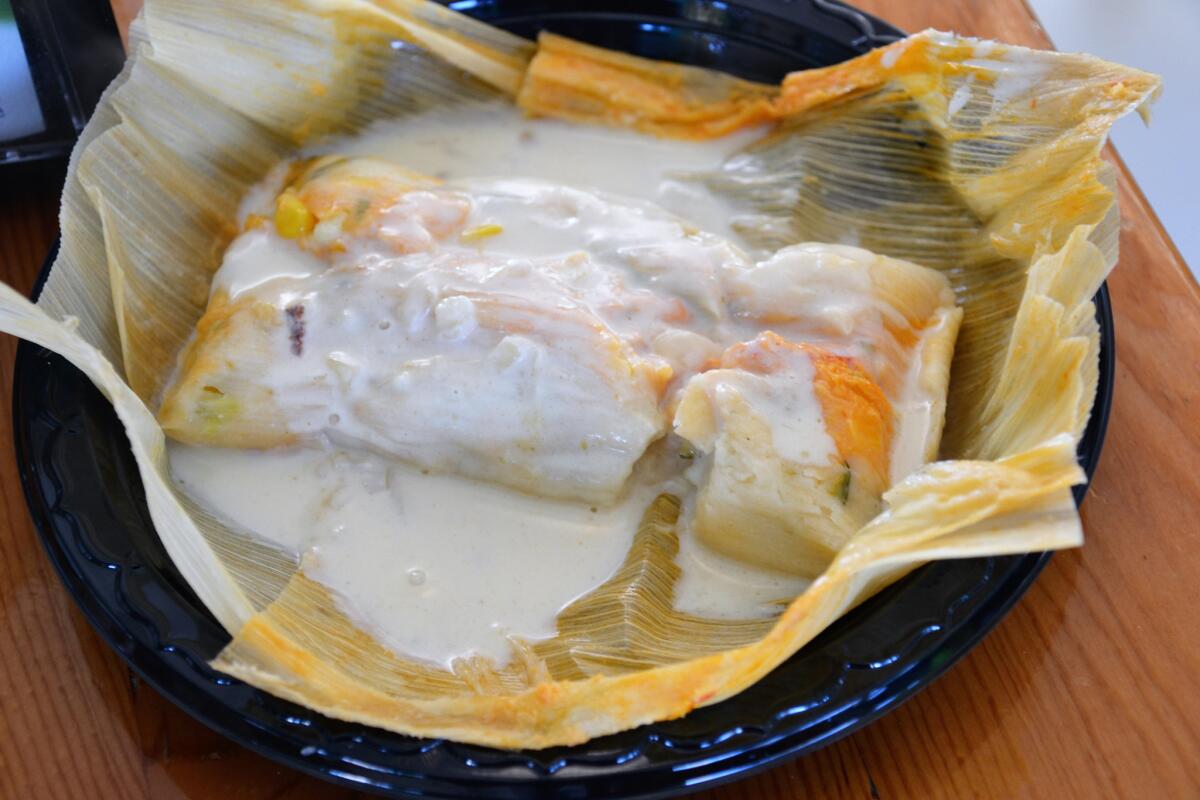
The décor is not important. What is important: What you order will tell you whether she was right or she was crazy. Order the tacos and you may think it’s the latter.
But order the vegetable tamal and you may, as I did, line up on the “not crazy” side as you savor the corn, zucchini, potato, cheese and more topped with a cream sauce.
Yours is the only opinion that counts. That’s what makes it fun — plus spending too much time in line in the sun and watching who cruises by on Milpas Street.
That and remembering the food icon whose signature “Bon appétit!” inspired a generation to eschew the American hot dish and try something new.
Where: 622 N. Milpas St., Santa Barbara, about 95 miles northwest of downtown Los Angeles, in Santa Barbara County.
How much: From $1.55. No credit or debit cards. Closed Tuesdays and Wednesdays.
Info: La Super-Rica Taqueria

Confront California’s biggest physical flaw at Point Reyes in Marin County
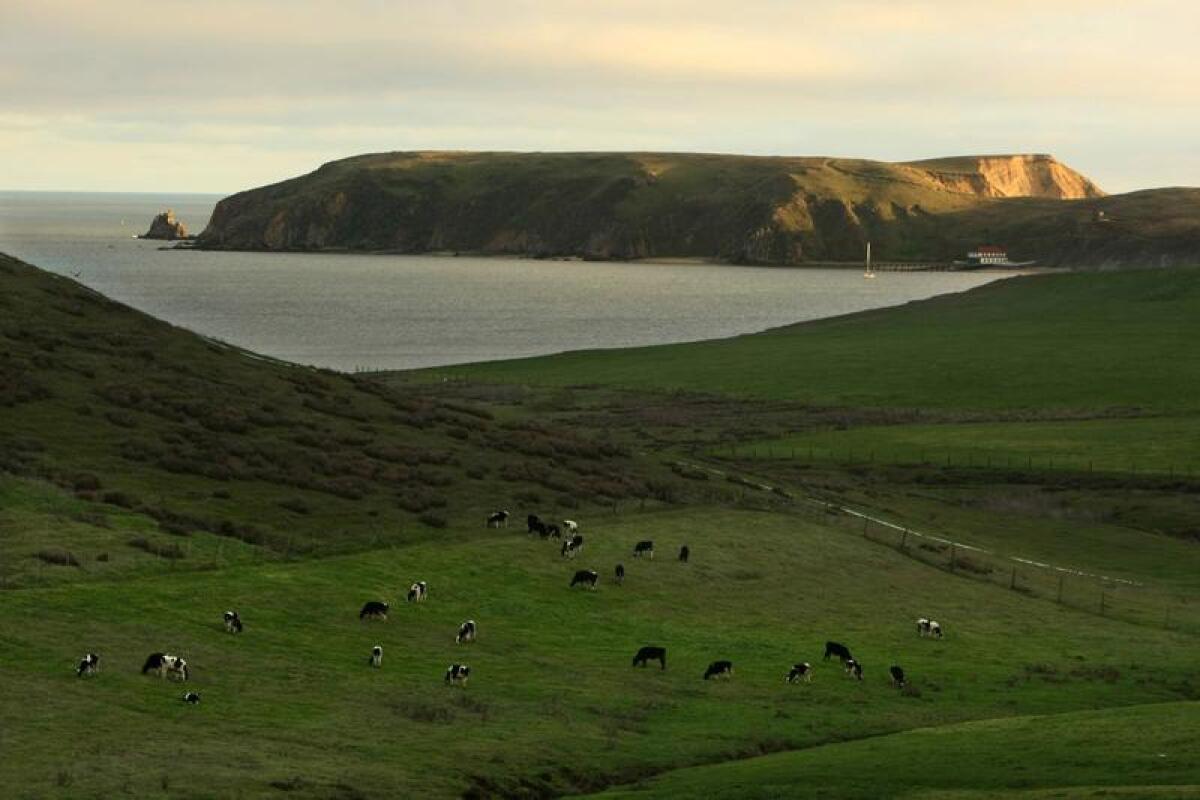
Why: Below the green hills and muddy shores of the Point Reyes Peninsula, the San Andreas fault lurks. Meanwhile, above ground, cows graze and cyclists zoom down two-lane roads. In its beauty, fragility and increasing wealth, this is an emblematic piece of the Bay Area.
What: Seismologists say the peninsula sits atop the Pacific plate, which slowly lurches to the northwest while the North American plate (on the other side of Highway 1) lurches to the southwest. The seam between those plates is the San Andreas fault , California’s most notorious physical flaw, stretching about 800 miles north and up to 10 miles deep from the Salton Sea to Mendocino County. Consider its disastrous potential as you walk the Point Reyes National Seashore’s 0.6-mile Earthquake Trail (wheelchairs and dogs welcome), which starts near the seashore’s Bear Valley Visitor Center and leads to a reconstructed fence that was displaced 16 feet in 40 seconds in the quake of 1906.
Or just look at Tomales Bay, which follows the path of the fault.
But even if you have no head for seismology, there’s the pastoral scenery and a medley of smalls towns to admire — mile upon mile of shapely hills that once were dominated by dairy farms.
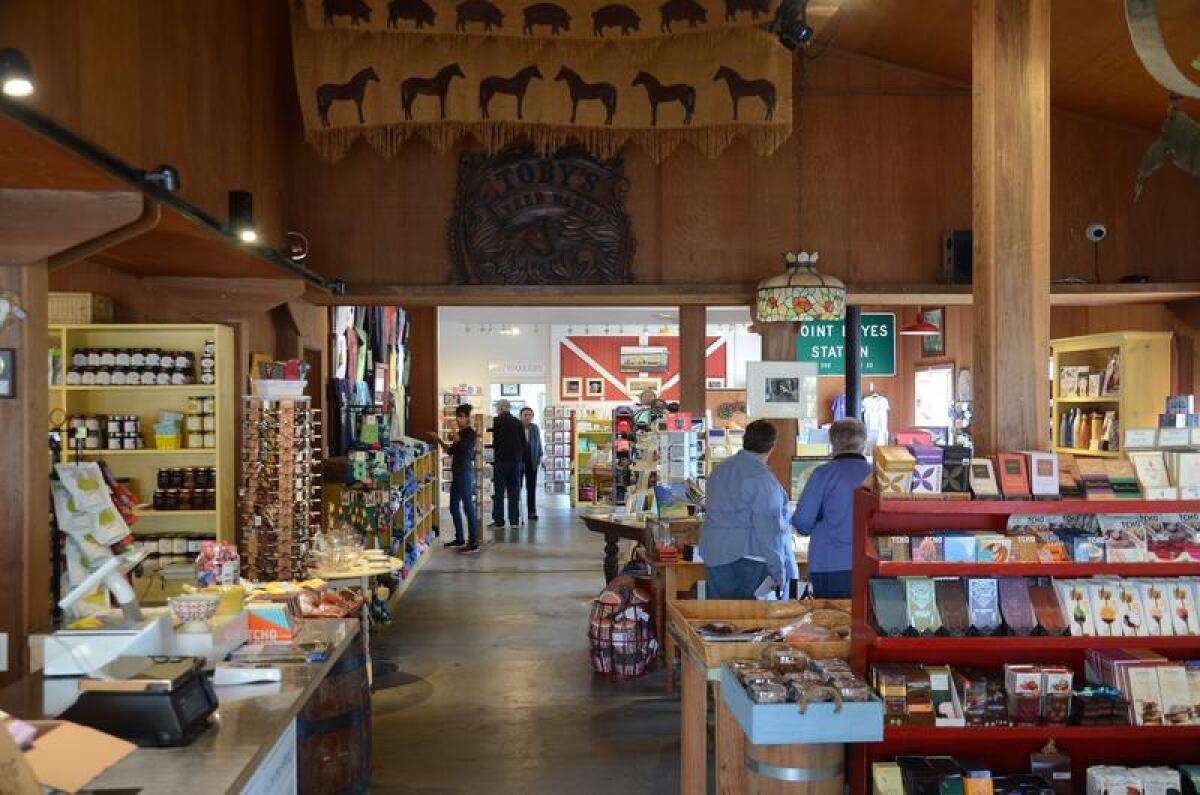
In downtown Point Reyes Station, next to the popular Station House Cafe, you’ll find Toby’s Feed Barn, a neighborhood institution that goes back to 1942. It still sells grain and hay and hosts a farmers market on summer Saturdays, but it also houses a yoga studio, art gallery, coffee bar, gift shop and kitchenware store. (In the gallery, I browsed “The Tao of the Cow,” an exhibit sponsored by the Marin Agricultural Land Trust, which points out that Marin County has gone from 1,800 farms in 1946 to 323 now.)
Where: The national seashore’s Bear Valley Visitor Center is at 1 Bear Valley Rd., Point Reyes Station, 44 miles northwest of San Francisco, 411 miles northwest of downtown L.A. Toby’s is 2.7 miles from Bear Valley Road at 11250 Highway 1, Point Reyes Station.
How much: The seashore is free.
Drink deeply of literature and history in this off-kilter bar in Oakland
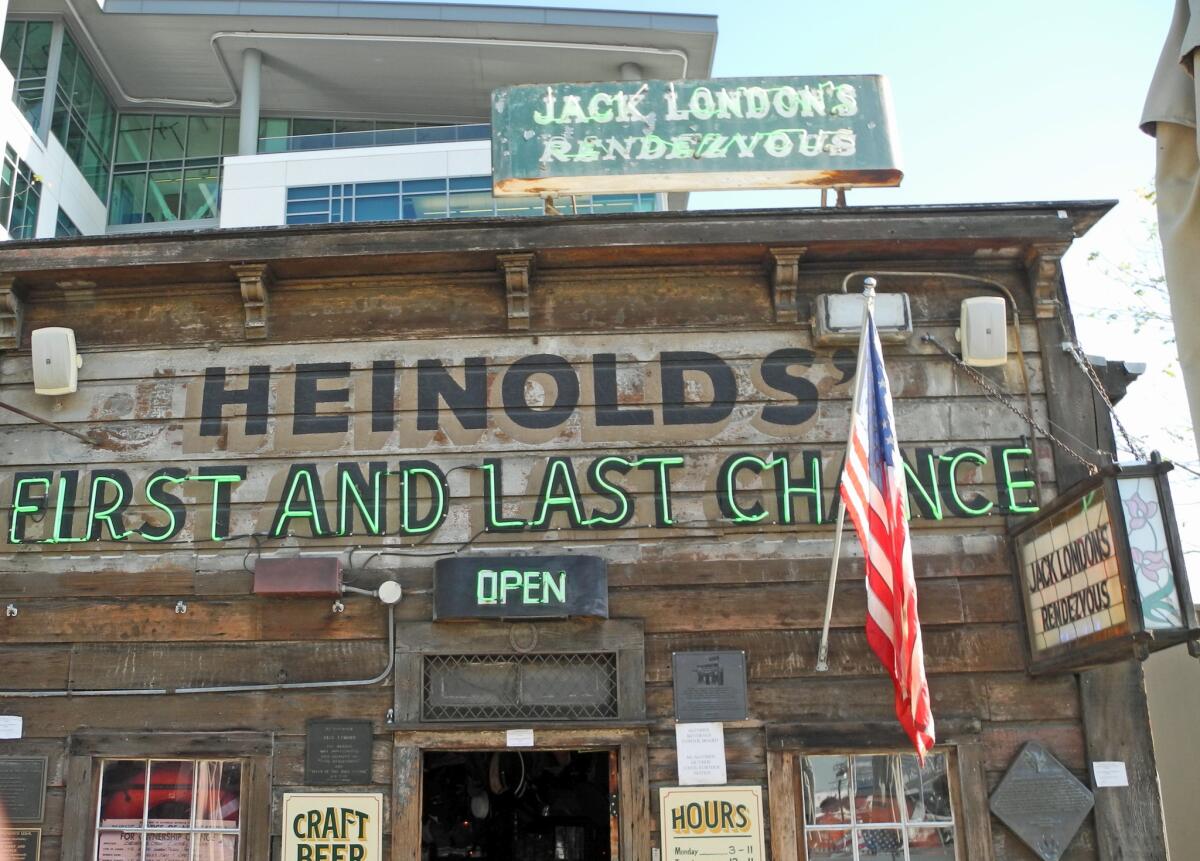
Why: You can have a drink and toast the history of a well-loved author, all in one stop in Oakland. Afterward, you’ll have a great appreciation for the words “catawampus” and “Call of the Wild.”
What: Heinold’s First and Last Chance Saloon, which dates to 1883, sits in at the edges of the now presentable Jack London Square in Oakland. Thanks to the 1906 earthquake, the bar sank irreparably and now requires a step down. Inside the slanting saloon — especially sitting at the bar — you can feel drunk even when you’re completely sober.
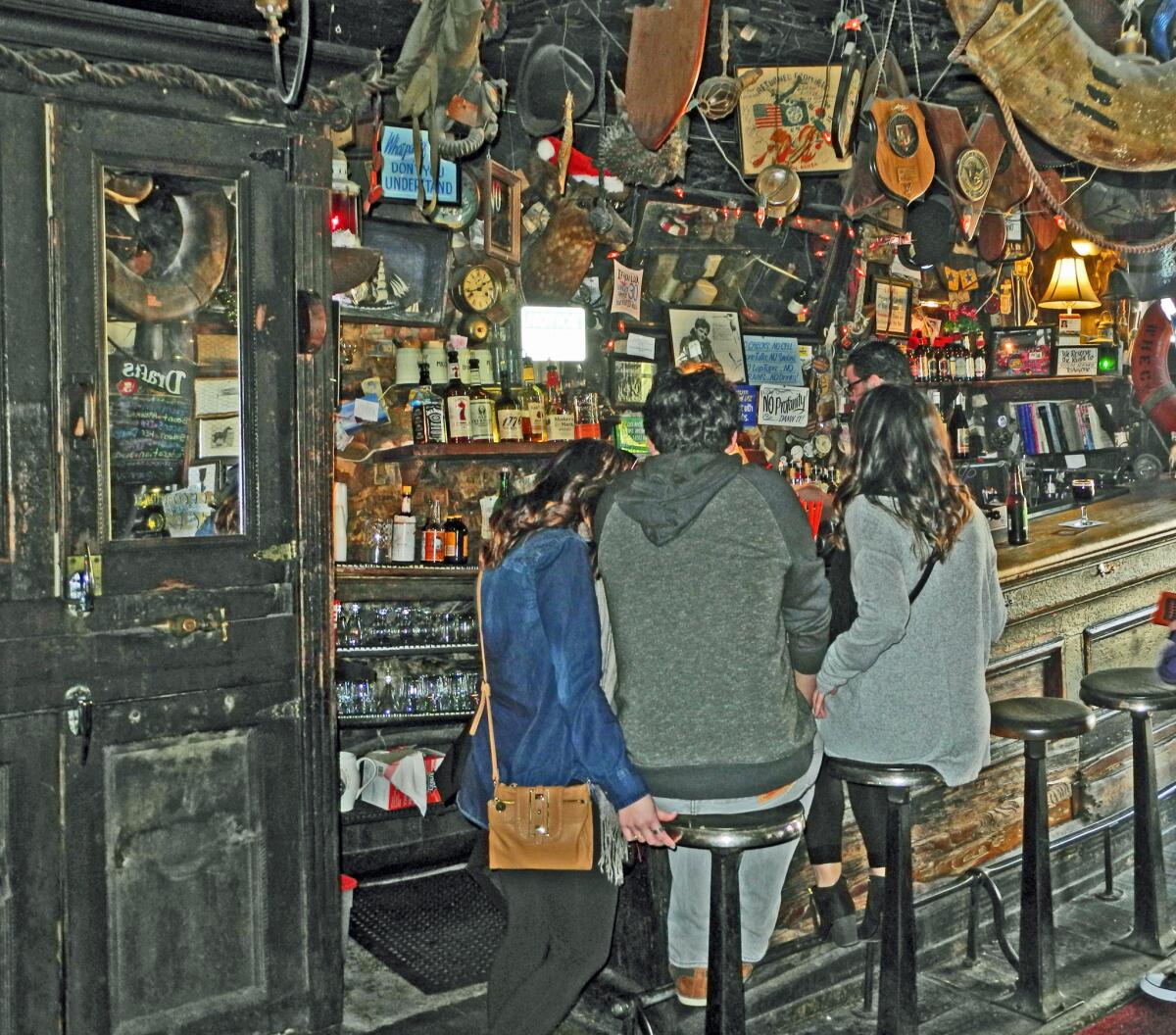
The other reason to visit: Writer Jack London used to hang out here, perhaps to escape his dismal, impoverished life in Oakland, where he lived with his mother, Flora, and his stepfather, John, whose surname he took.
Jack quit school at 14, had some adventures and later decided he wanted to go to UC Berkeley after returning from a failed Klondike Gold Rush adventure. He taught himself the high-school subjects in a year (he studied in Heinold’s) and off he went, financed, it’s said, by Johnny Heinold, the bar’s owner. London left college after a year to write — novels, magazine articles, short stories and more.
If you went to high school, you’ve surely encountered “Call of the Wild” (1903), considered London’s best, and “White Fang” and “The Sea Wolf,” drawn from his Alaskan adventures. Heinold’s gets a nod or two in “John Barleycorn,” which details the writer’s relationship with booze.
London died in 1916. He was 40 years old.
A mural on one side of Heinold’s displays this quote: “The proper function of man is to live, not to exist.” Based on London’s adventures — sailing to Japan, being a hobo and bumming around the U.S., searching for gold — he appears to have done that. The question we ask ourselves after a visit here: Have we?
Where: 48 Webster St., Jack London Square, Oakland, about 370 miles northwest of downtown L.A., in Alameda County.
How much: Free to look at the bar, the nearby cabin assembled from what is said to be his shack in Alaska, and admire the bronze of “White Fang”— lurking out front. Drinks you have to pay for.
Info: Heinold’s First and Last Chance Saloon

Slurp exquisite oysters on Tomales Bay
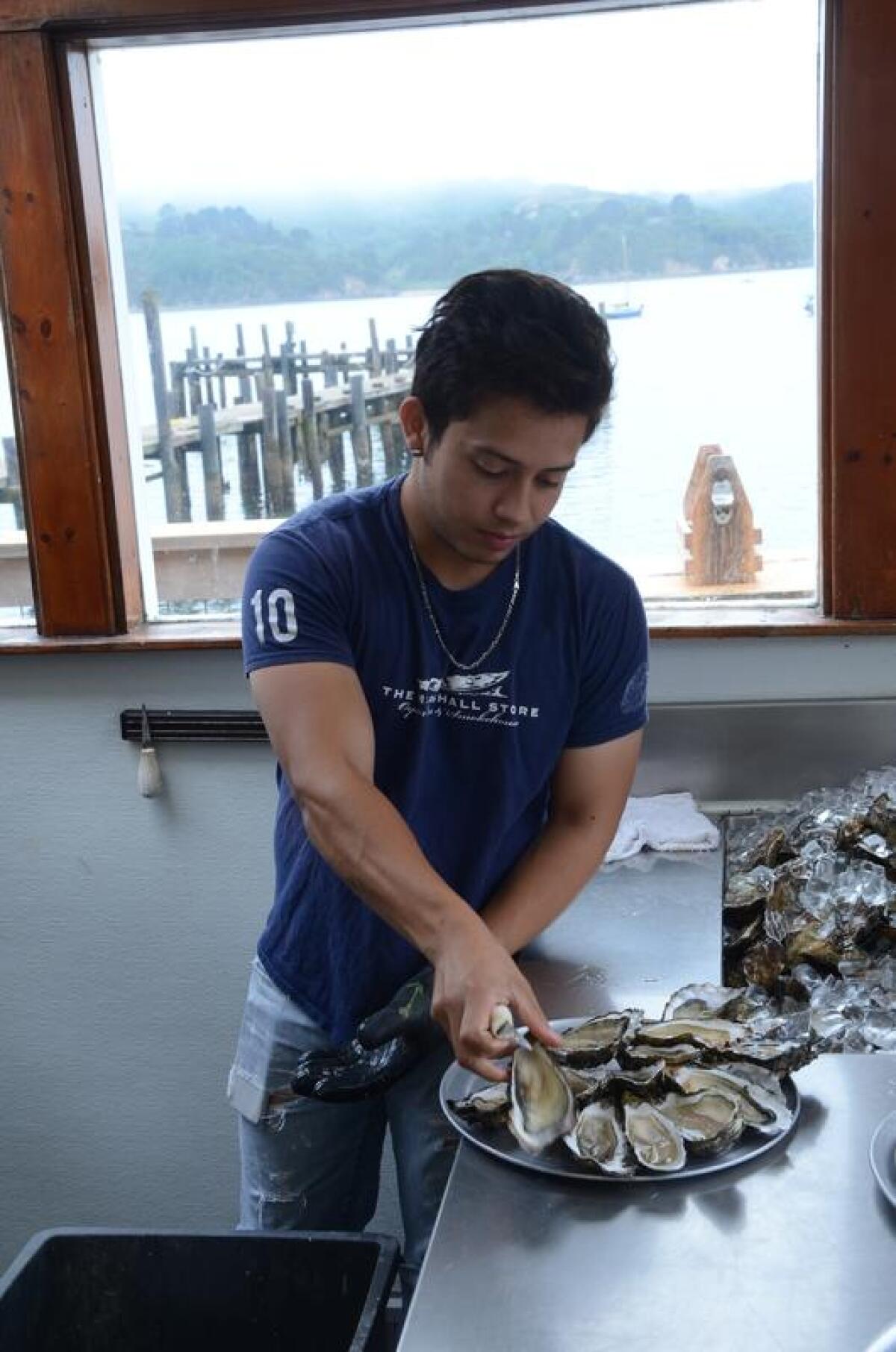
Why: The fresh oysters are just so good. And the views of Tomales Bay aren’t bad, either.
What: The Marshall Store, on Tomales Bay in Marin County, is a casual joint, with more tables outside than inside. It’s also a renowned spot for eating oysters fresh from Tomales Bay. The Tomales Bay Oyster Company is owned by the same family that owns the store. And the story of recently deceased owner Tod Friend is a remarkable one.
There are often crowds on weekends. (For years, Marshall Store management has tussled with Marin County officials over terms of its permits.) But you can dodge that trouble the way I did: Show up on a weekday at 10 a.m. (opening time) for half a dozen breakfast oysters. I liked the ones that were barbecued, loved the sharp tang of the ones on ice with lemon.
The store also sells crab, shrimp, salmon, tacos, sandwiches and meats from their smoker.
Where: 19225 Highway 1, Marshall, 47 miles northwest of San Francisco, 457 miles north of downtown L.A.
How much: It’s usually $18.50-$21 for six oysters. Closed on Tuesdays, Thanksgiving, Dec. 1-16 and Christmas.
Info: The Marshall Store
Piece together a picture of California history, thanks to a financier and his San Mateo bank
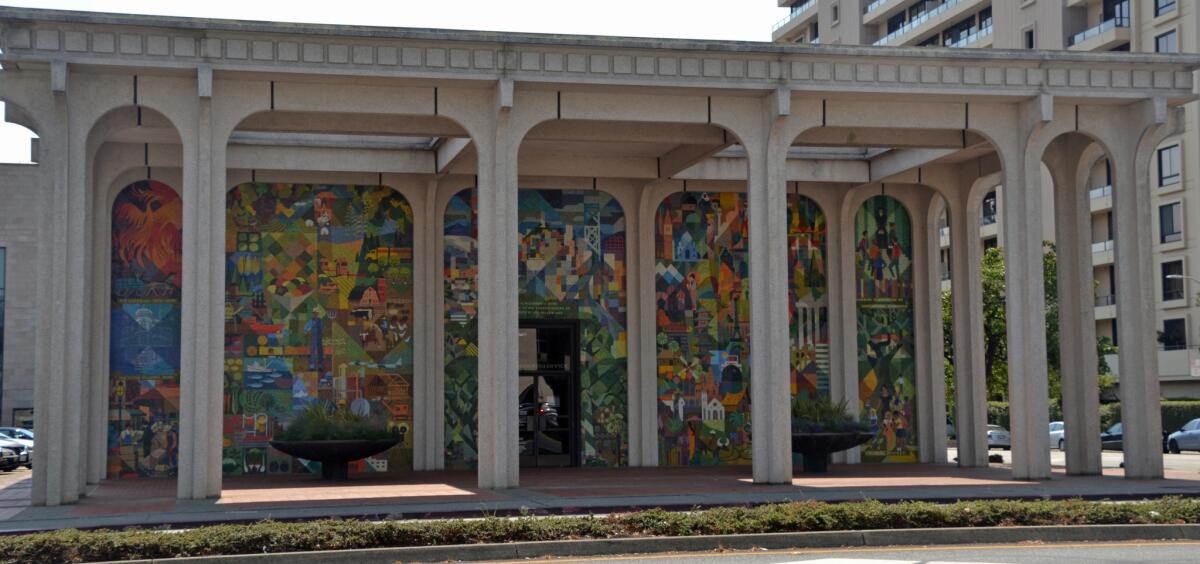
Why: The story of A.P. Giannini, a San Jose native born in 1870 and founder of what would become Bank of America, parallels the story of California. His tale unfolds bit by bit in five 25-foot-high mosaics that decorate the front of a San Mateo Bank of America branch in bold, colorful style.
What: As you face the mosaics, designed by Louis Macouillard and executed by Alfonso Pardiñas of Byzantine Mosaics, you’ll notice depictions of farmers and the film industry, which speak to the outside-the-box thinking of a man who was willing to take a chance on people and endeavors that other bankers tended to dismiss.
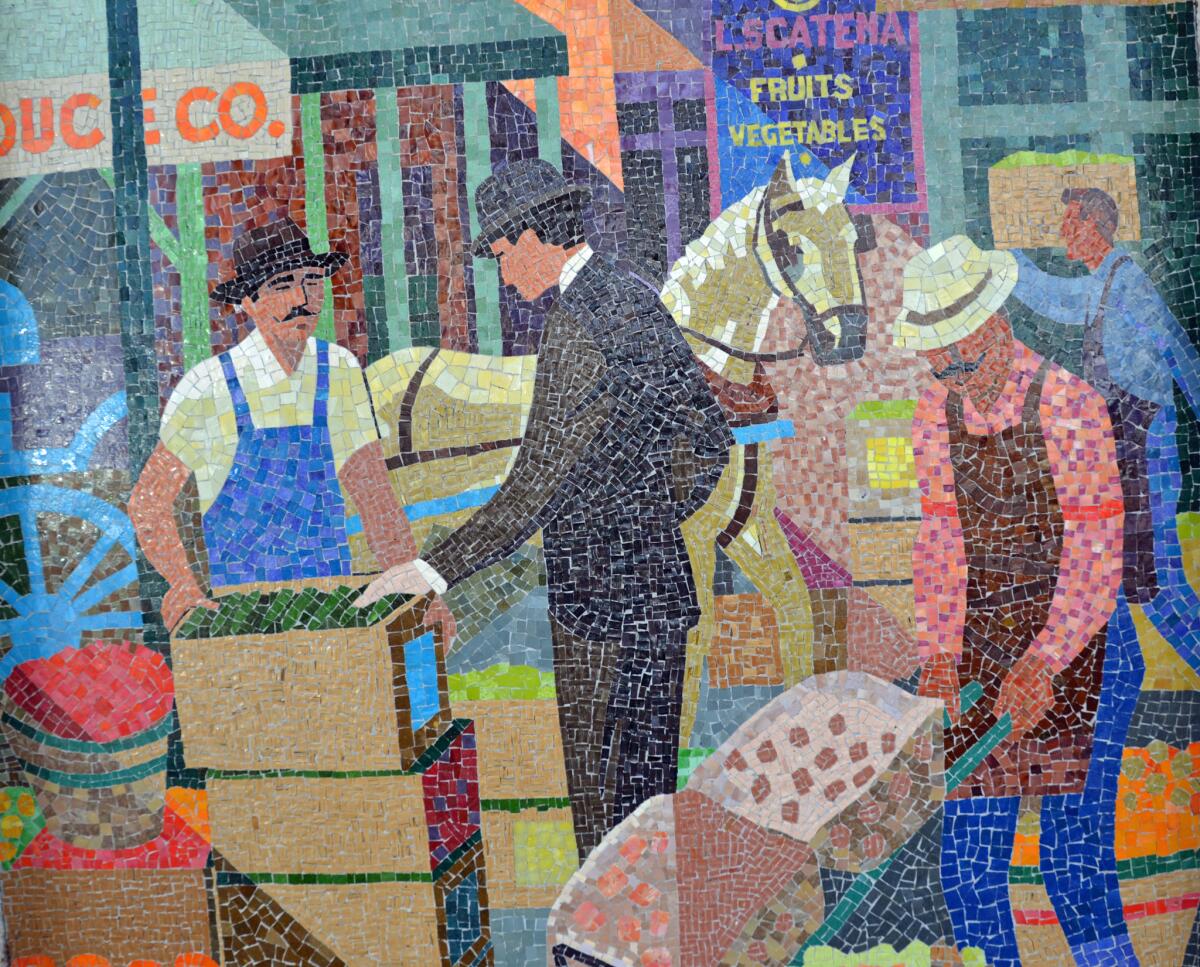
Maybe it was because Giannini didn’t come from high finance. He started in the wholesale produce business. Then, in San Francisco in 1904, he founded the Bank of Italy, which not only survived the great quake of 1906, but by the late 1920s had become the Bank of America via merger. Giannini’s growing venture, bolstered by a network of branches, withstood the Great Depression and bought bonds during those financially troubled times to help finance the Golden Gate Bridge.
And that movie camera in the mural? In the 1930s, Giannini and his bank also lent support to such films as “Gone With the Wind” as well as “Snow White and the Seven Dwarfs” by a young creator named Walt Disney. Giannini died in 1949 in San Mateo. Fourteen years later, Bank of America unveiled this building and mosaic, which includes this sentence of tribute to Giannini: “His achievements were the result of his understanding of his fellow man.”
Where: 300 S. El Camino Real, San Mateo, 375 miles northwest of Los Angeles. San Mateo, the town of about 100,000 where Giannini made his home, is about 25 miles southeast of the Golden Gate Bridge. His Seven Oaks mansion is on the National Register of Historic Places.
How much: Free, unless you want to withdraw some cash.
Info: A.P. Giannini Bank of America
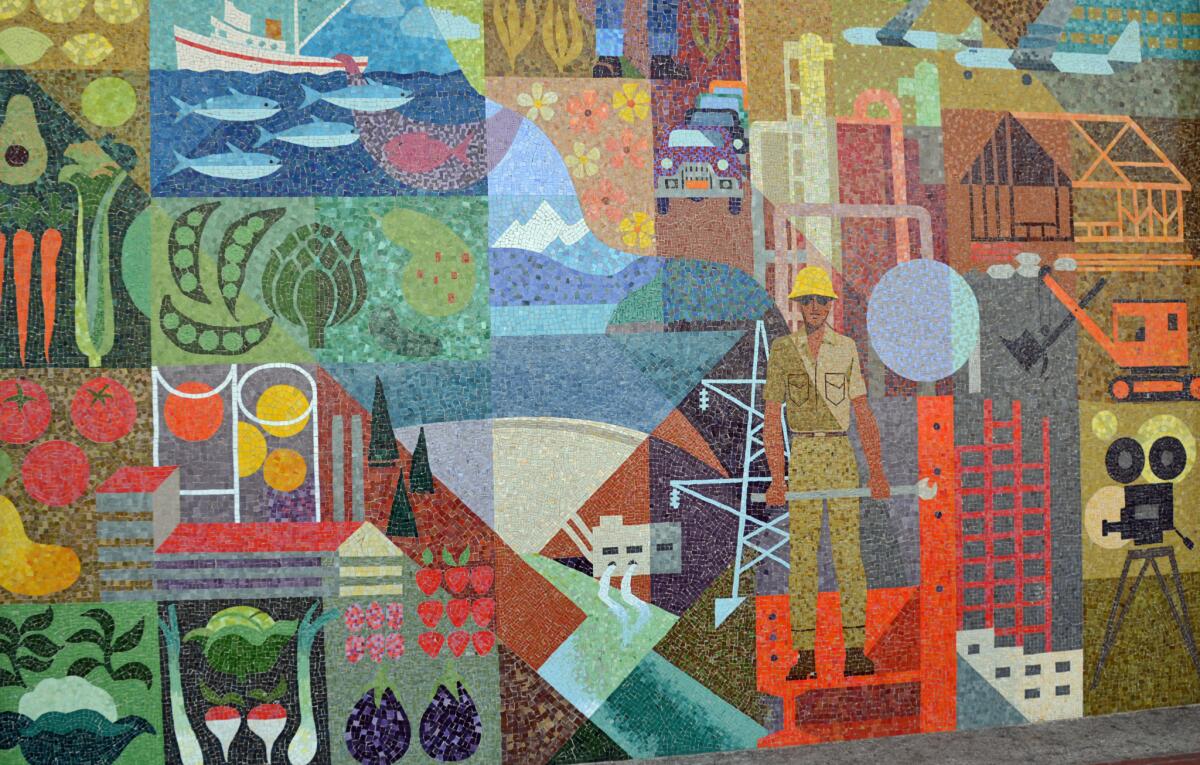
Gape at the strangely compelling Pageant of the Masters in Laguna Beach
Why: Because if you’re going to do something loony involving old artworks, living people and an open-air stage, you might as well do it with passion, precision and invention for decades, until your act involves a live orchestra, gondola, actors, singers, dancers, horses, balloons and a $230 tab for a seat up front.
What: Laguna Beach’s Pageant of the Masters has its roots in 1932, when the artsy area was looking for a spectacle to lure Olympic visitors south from Los Angeles. The core idea is a tableau vivant— an arrangement of live models in poses (and costumes and backdrops) to mimic famous artworks, peppered with visual, narrative and musical surprises. All these years later, this summer event usually recreates about 40 great artworks (mostly paintings, but not all), organizing them by an annual theme and attaching a loose plot to keep the evening moving.
Until you see one of these things, you may expect a static event with occasional muted tennis-tournament applause. Not so. Witty narration, music, acting, projected animation and old-fashioned schtick all play parts in creating a strangely potent, family-friendly night of entertainment in a 2,600-seat amphitheater. Dozens of professionals pitch in along with perhaps 500 volunteers. And because the area’s artists are still eager to sell, there’s also an juried art show with widely varied works from 140 artists (this year presented in a newly rebuilt complex of indoor-outdoor gallery structures).
The 2017 pageant, which opened July 7 and closes Aug. 31, was titled “The Grand Tour,” featuring scenes from throughout Europe, including posters from Buffalo Bill’s Wild West show on tour. Shows are nightly at 8:30 p.m. By long-standing custom, the final scene is Leonardo’s “Last Supper.” The theme for 2018: “Under the Sun.”
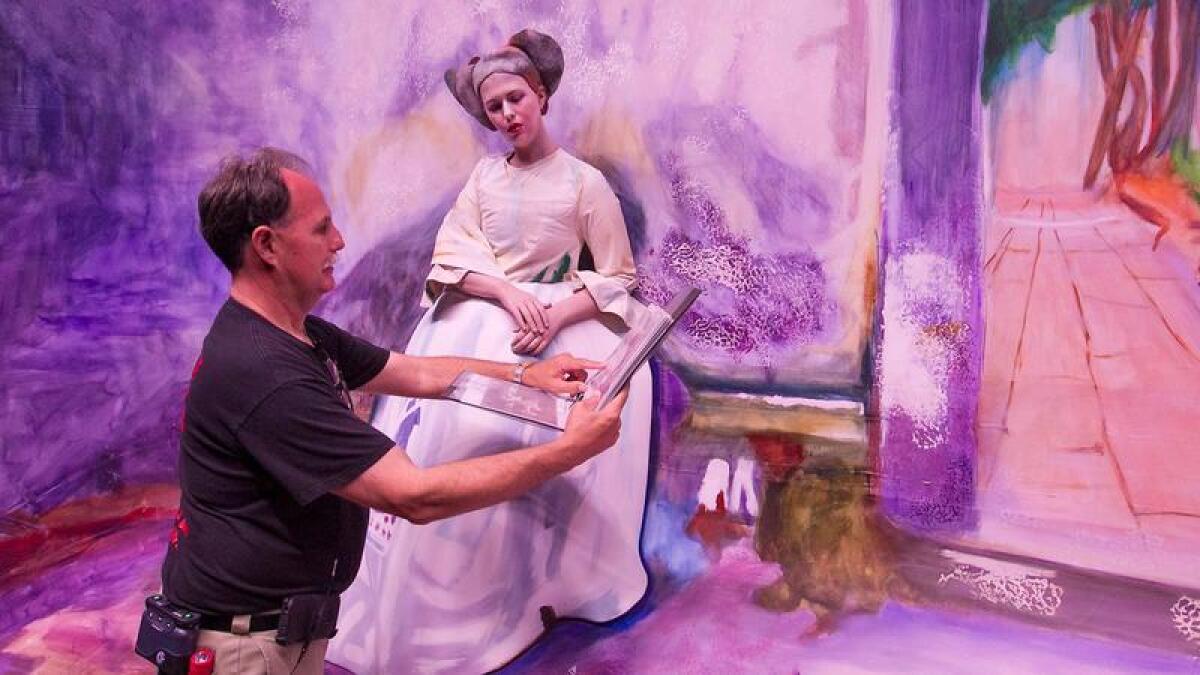
Where: 650 Laguna Canyon Rd., Laguna Beach, about half a mile north of Laguna’s Main Beach, 50 miles southeast of downtown L.A.
How much: Tickets run $15-$230. (My $36 seat was five rows from the very back, but the view was just fine.) Binoculars rentals, $10. Seat cushions, $3. And if you don’t arrive three hours early, you’ll probably need to pay for parking.
Gas up and chow down at the popular Whoa Nellie Deli, at Yosemite’s door
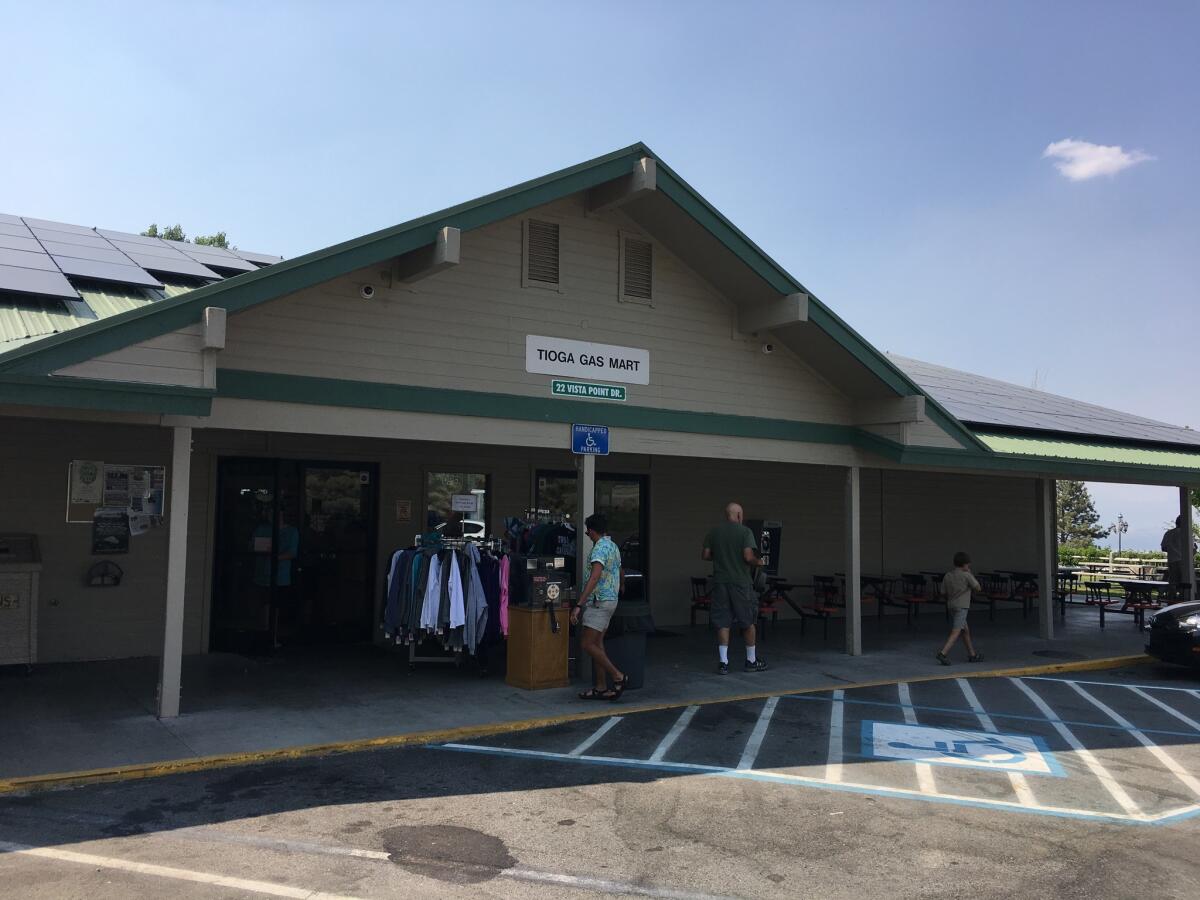
Why: The Whoa Nellie Deli near the eastern entrance to Yosemite National Park serves up uncommonly good road food from the back of a service station, with live music twice a week on a wind-kissed vista overlooking Mono Lake.
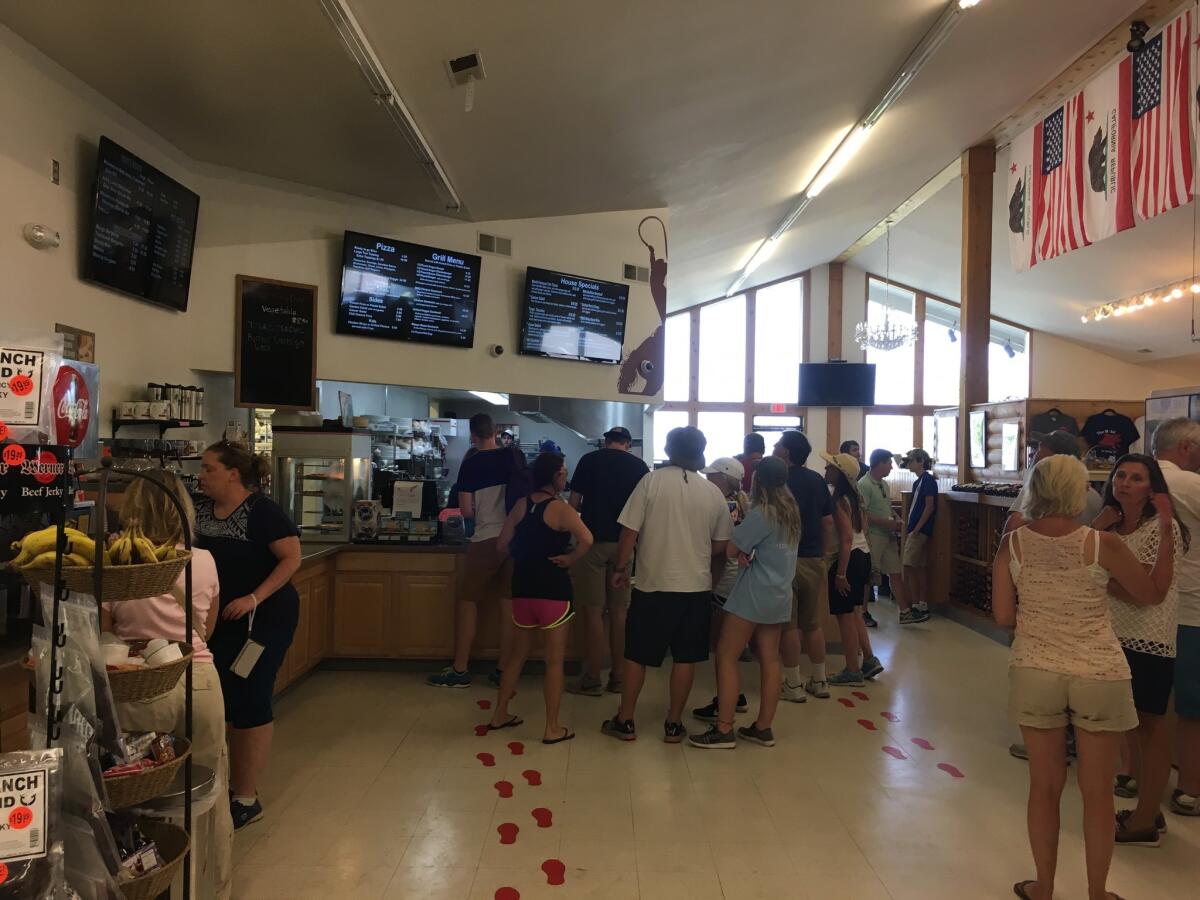
What: This is one of California’s finest summer pit stops, a place to gas up, buy a souvenir and munch almost anything your stomach desires. Perched as it is just outside the national park, it’s far better than it has to be.
The family-owned complex was established in 1996 by Dennis and Jane Domaille, and is currently managed by their daughter Denise. The Whoa Nellie got its name from the reaction of motorists suddenly braking after spotting the gas station at the junction of the 395 and 120. The station and deli quickly became a favorite for Eastern Sierra campers and tourists on the move.
In the mood for sushi? The Whoa Nellie has it, though you might consider sticking with a breakfast burrito ($8.95) or the ribeye and eggs ($14.95). Top performers really kick off at lunchtime, with fish tacos in mango salsa ($12.50) by far the most popular menu item. Baby back ribs ($18.95) and the wild buffalo meatloaf ($18.95) are also notable. Burgers, grilled to order, start at $9.50.
The portions are robust and the free three-hour concerts on Thursdays and Sundays draw large crowds to the busy gas mart, which opens for the season on the last Saturday in April and closes in late October.
What’s next? A 120-room hotel is in the planning stages.
Where: 22 Vista Point Drive, Lee Vining, Calif., 331 miles from Los Angeles, in Mono County. Seven days a week, 7 a.m. to 9 p.m.
How much: Meals start at about $5, but specialties run $12 to $18.
Info: Whoa Nellie Deli, (760) 647-1088.
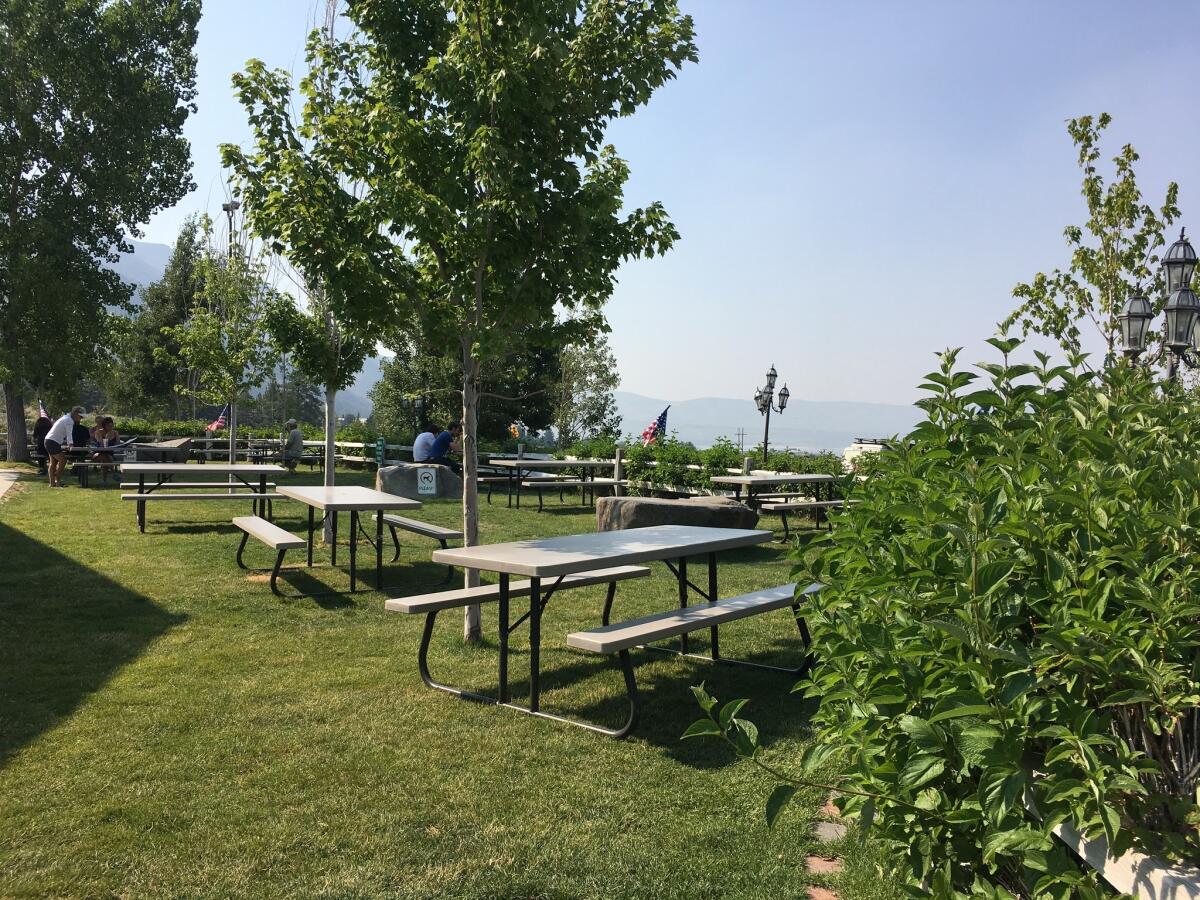
Go underground in Fresno and see what Baldassare Forestiere was all about
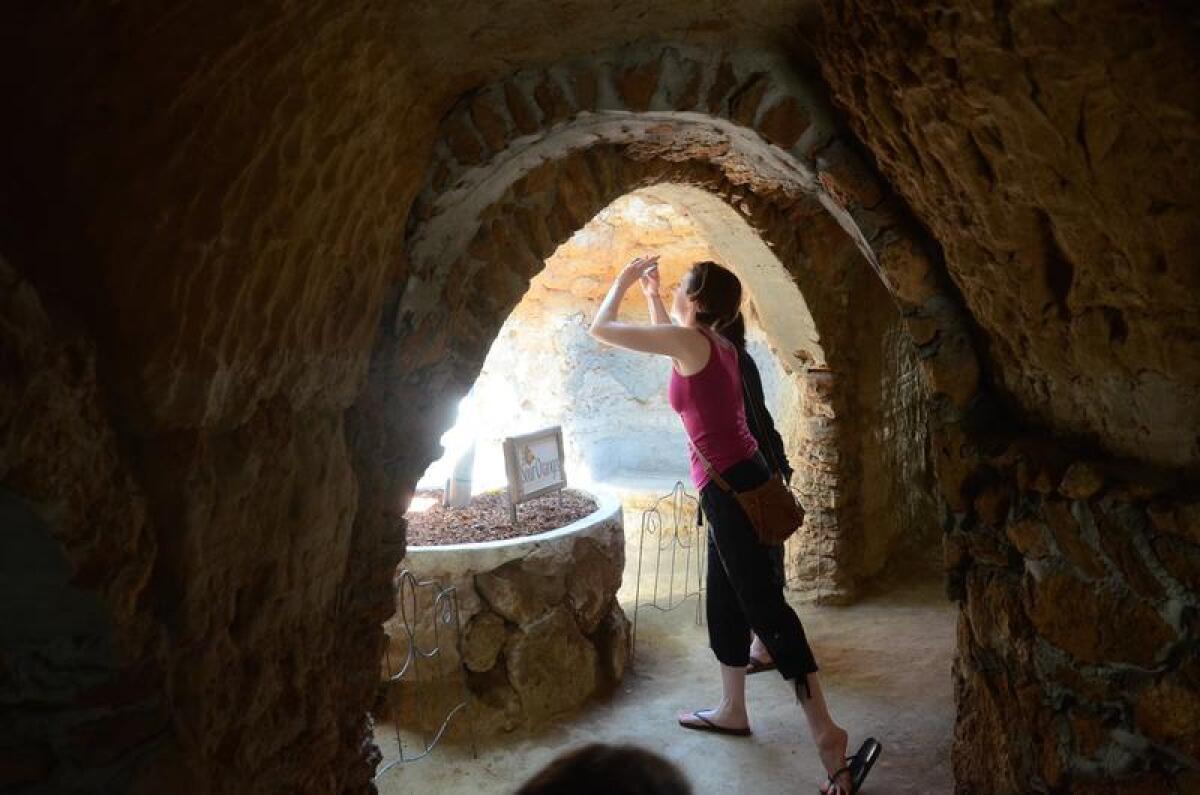
Why: As soon as you step down into Forestiere Underground Gardens, the temperature will drop about 20 degrees and the strange, wonderful story of Mr. Forestiere will begin to unfold. If you’ve heard the history of Simon Rodia’s Watts Towers in Los Angeles, this is largely the same thing, upside down.
What: Forestiere came to the U.S. from Sicily in 1901 as a young man and bought land to start a citrus farm in West Fresno. But nobody warned him how hot it would be, or how hard the soil would be. So he adapted. He dug himself a cellar, savored the coolness, devised a system for turning hard-pan dirt into bricks, then set about building a mostly underground home with citrus trees whose top branches poked up through the skylights. For 40 years he dug and built, as deep as 33 feet beneath the surface. To make ends meet, he sold fruit and dug canals for other farmers. He never married but had plenty of friends, whom he entertained in his growing network of rooms and shady courtyards. (Plumbing? No.) After his death at 67 in 1946, a brother preserved part of the property and opened it for tours.
About 60 years later, the gardens are owned by 89-year-old Rick Forestiere, a nephew of the old man, and the tours continue, from March through November. A guide shows you the ballroom, the kitchen, the bedrooms (one for summer, one for winter), the rooms Forestiere hoped to make into a resort, the glass-bottomed pond, the many surviving citrus trees he planted. (He loved grafting, and one used to yield seven different kinds of fruit. It still grows two different kinds of oranges.)
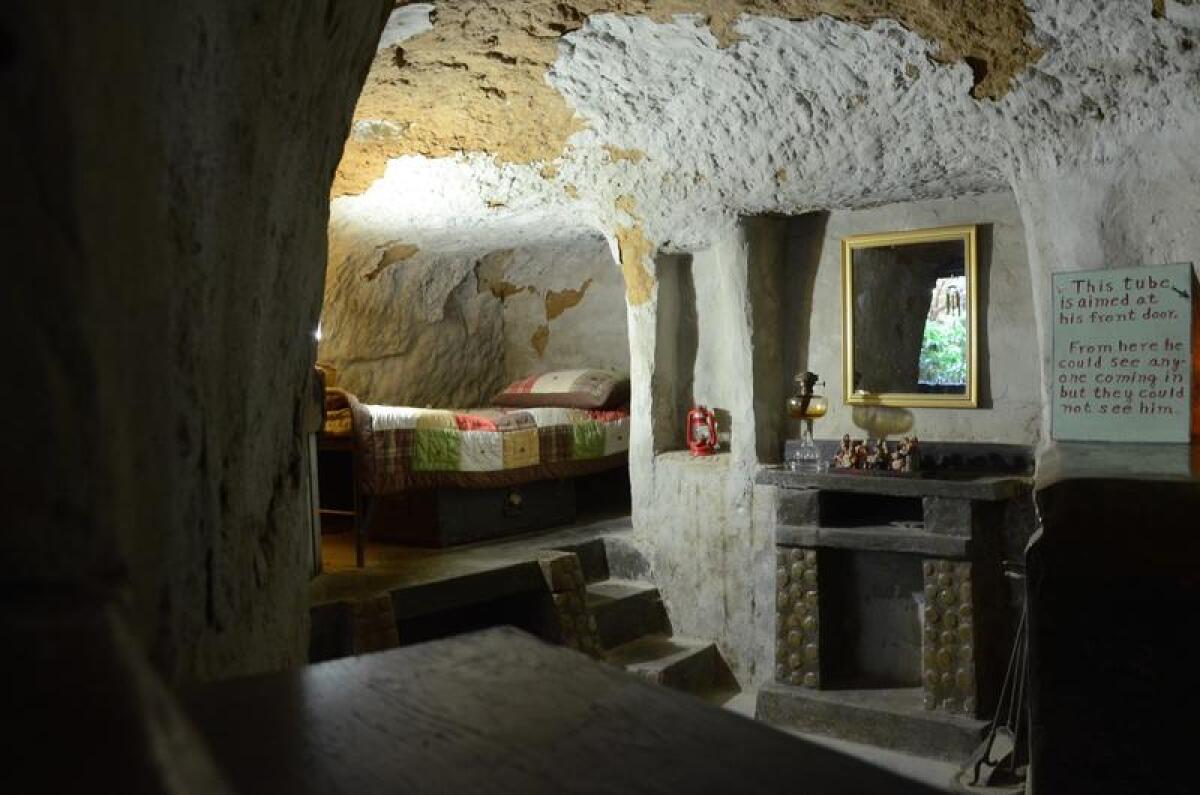
Visiting in August, I heard guide Karin Livingstone tell how Forestiere used a lot of rebar and, as a faithful Catholic, liked to do things in threes and sevens. Also, Livingstone said, “he had a lot of wheelbarrows.”
Where: 5021 W. Shaw Ave., Fresno, 226 miles north of downtown L.A. About two-thirds of Forestiere’s original acres lies beneath neighboring Highway 99.
How much: For an hourlong tour, adults pay $17; children aged 5-17, $8. Tours are offered every hour they’re open, on the hour. Hours vary by month; check the website. The gardens close to the public from December through February.
Fawn over mini-Flickas and foals at the Quicksilver horse ranch in Solvang
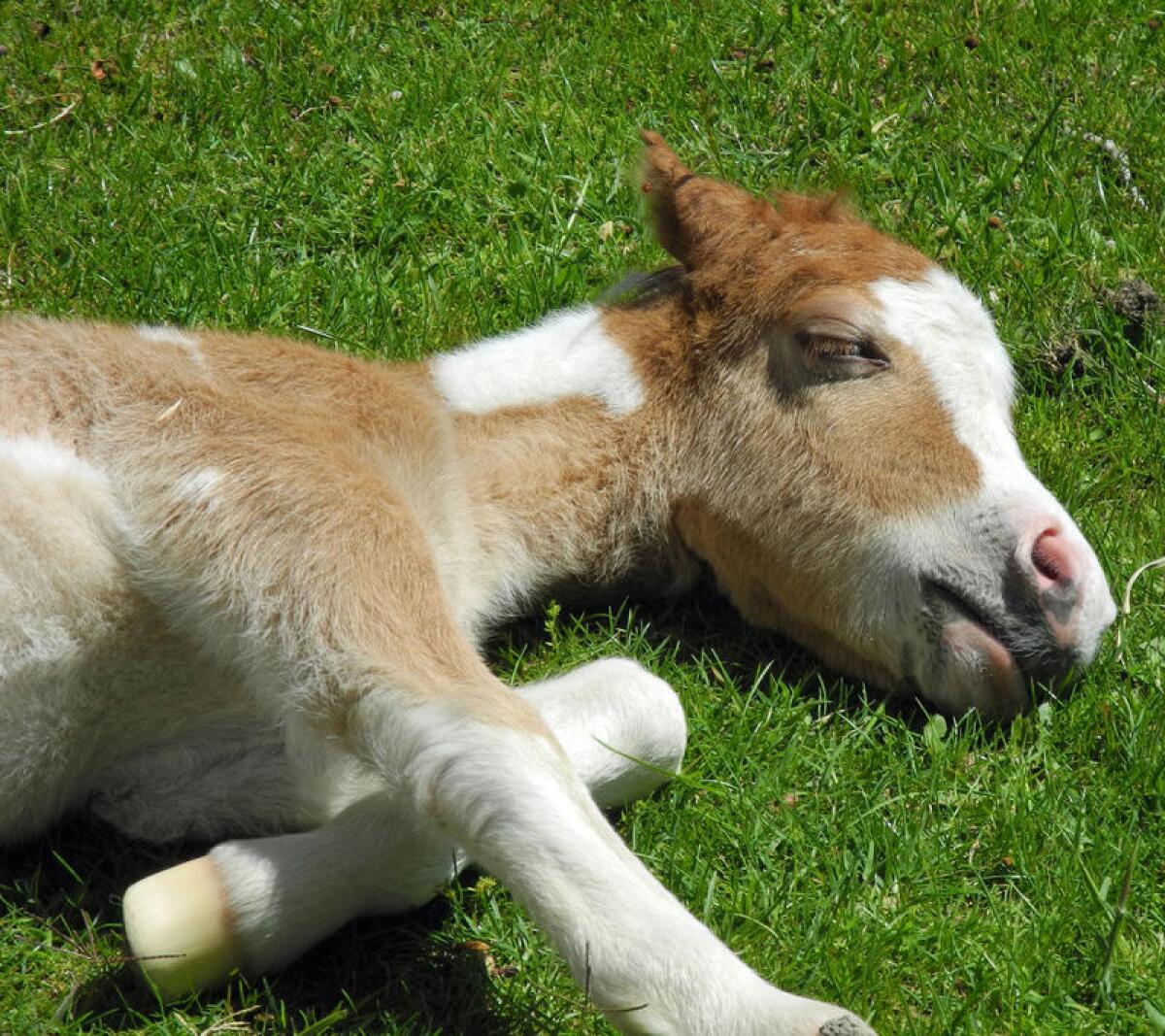
Why: Good things do come in small packages — sometimes, very small packages with hoofs. Quicksilver Miniature Horse Ranch in Solvang will have you oohing and aahing over its mini-Flickas and, if you’re lucky, their babies too.
What: If Solvang’s Scandinavian flavor seems a little surreal for you, this horse farm just outside of town feels real and relaxed. It’s quiet. The tiny horses (about 35 of them) and their offspring are mesmerizing. How enchanting can a critter munching grass can be? You’ll be surprised.
And if you’re lucky there will be foals. There were three births this year, and half a dozen are expected in spring 2018. You will chuckle at their gangly attempts to act like the big kids. The cast of characters changes each year as some of the herd is sold and new ones are born, which means you can go back again and again and see new faces.
(The original Flicka, by the way, was a sickly but full-sized yearling in the children’s book “My Friend Flicka” [1941] by Mary O’Hara. A movie and TV series followed.)
Where: 1555 Alamo Pintado Road, Solvang, 128 miles northwest of downtown L.A. The ranch is open 10 a.m. to 3 p.m. Monday-Saturday. (The ranch will be closed Sept. 9.)
How much: Free. You may wish to leave a donation.
Info: Quicksilver Ranch
Wander amid the world’s greatest, oldest trees at Bristlecone Pine Forest
Why: Bristlecone pines are not only the oldest living things in the world, but the most tortured. They grow incredibly slowly, sipping at arid soil that barely fuels them. Their 5,000-year-old rings are textbooks on the history of the planet, with chapters dating to 3000 B.C.
What: You can browse the oldest groves in the world at Ancient Bristlecone Pine Forest, 50 minutes off the 395, just south of Bishop. The excellent visitor center provides a fine and comfortable launch point, for guided or self-guided hikes amid these ancient totems.
These are not the giant, majestic sequoias, but twisted and gnarled veterans. They are stunning. The trees look like living driftwood, and in some cases, as if they have been at war.
In a way they have. Oddly, the poorer the soil, the older the trees. That’s because the softer, healthier bristlecone pines here in the White Mountains fall victim to pests at higher rates than the slower growing trees nearby. Essentially, mankind and nature let them be.
The oldest trees are found in an area called the Methuselah Walk, a four-mile loop that begins right outside the visitor center. It takes about two hours to hike. Take plenty of water and sunscreen.
How to identify a bristlecone? Look for small branches resembling foxtails, and dark green needles in clusters of five. The oldest trees tend to have spiky dead tops and bare wood on limbs and trunks. That’s right -- they look half dead.
Where: In the Inyo National Forest, 276 miles (about 4.5 hours’ drive) north of downtown Los Angeles. Out of Big Pine, take state road 168 for 13 miles to White Mountain Road. From there, it’s about 10 miles to the visitor center.
Cost: $3 per person, with a maximum of $6 per car. The visitor center is open from May to mid-November.
Soak in the Travertine hot springs and savor Sierra views
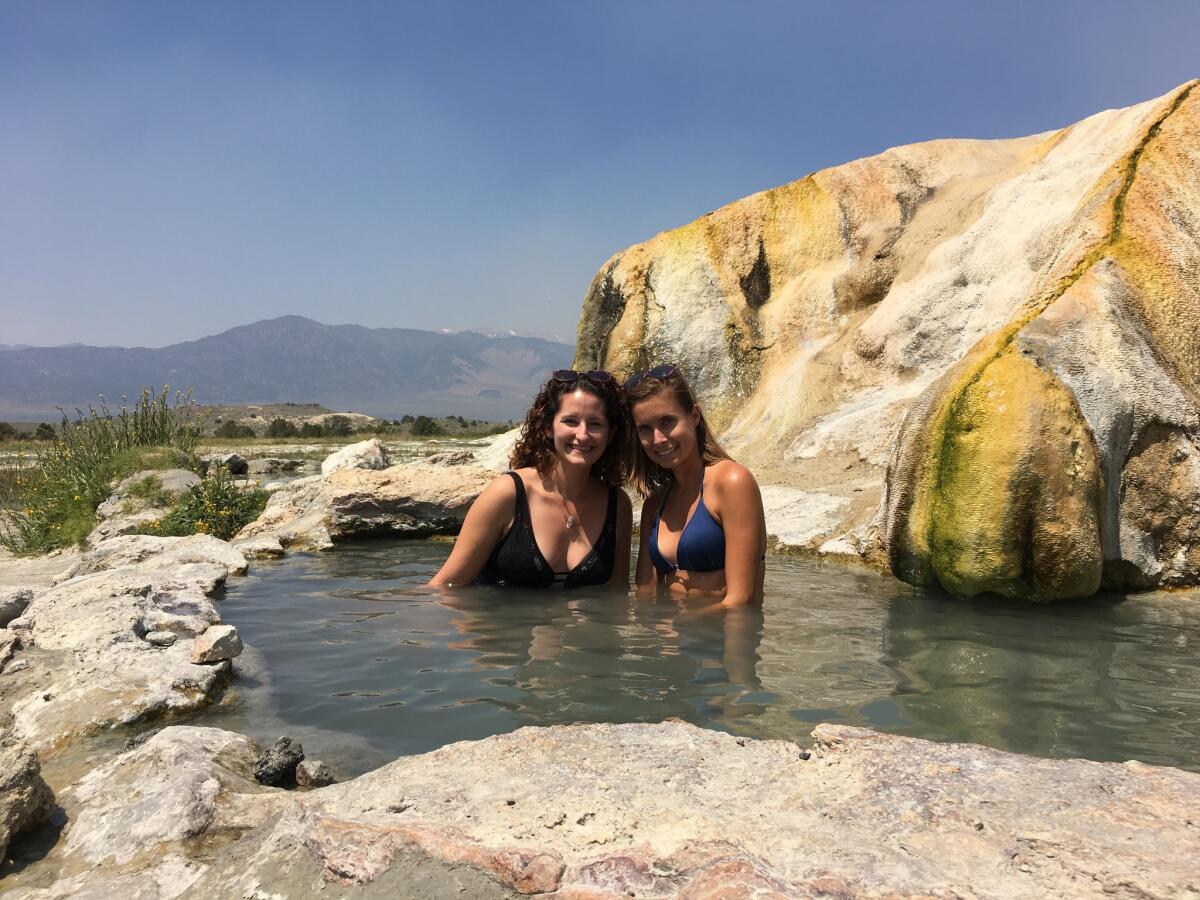
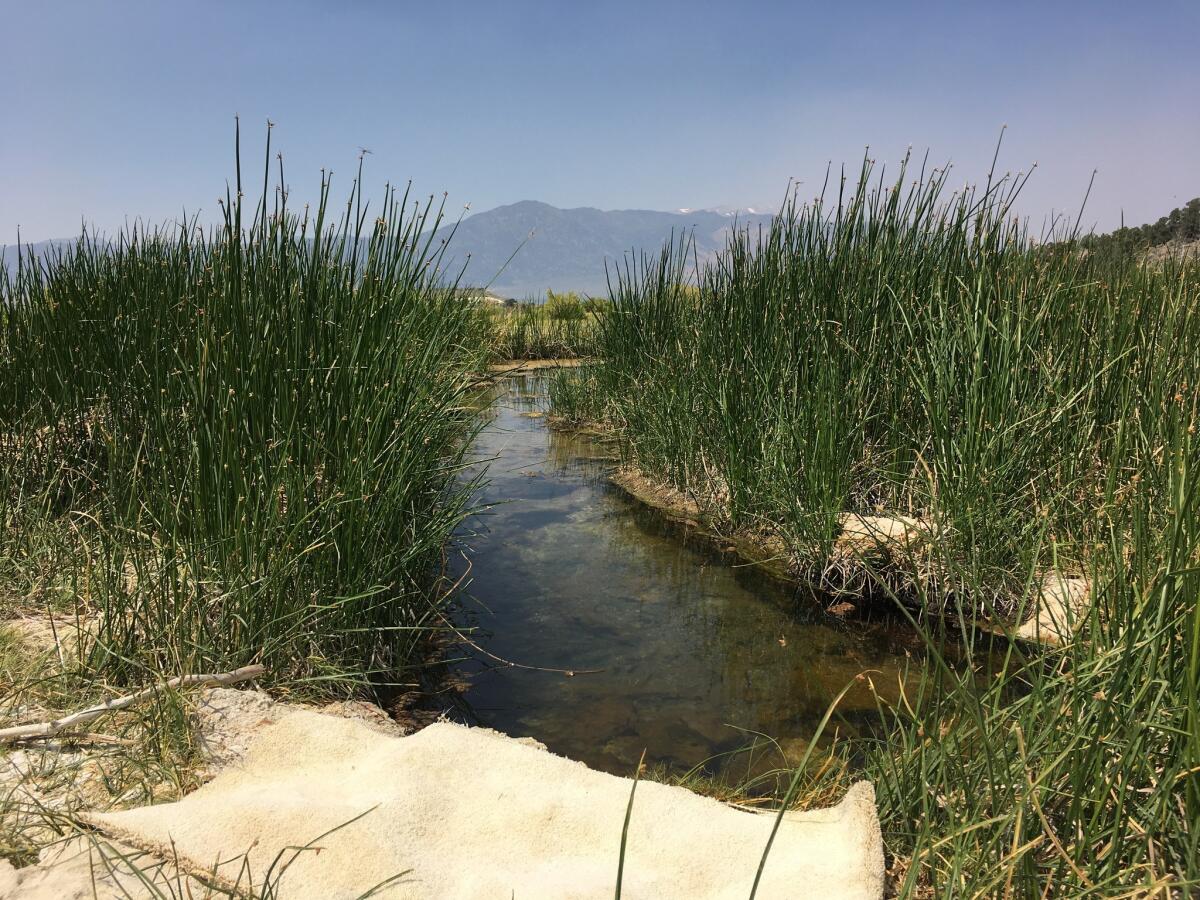
Why: A good soak in these natural hot springs might be the Sierra’s best free attraction. When to go? Late afternoon, when light falls just right on the stunning scenery, adding to the magic.
What: Travertine hot springs are located about a mile east of U.S. Route 395, just south of Bridgeport. For visitors to Mammoth or June Lake, they are an easy 45-minute drive. They also make a relaxing pit stop on the way to Lake Tahoe.
The pools attract families, couples, even rangers from the nearby station. The best pools take a little hunting, especially on light days. But stick with it — and don’t leave the car barefoot, because the pathways feature stones and sharp vegetation.
Behind the craggy rocks are turquoise pools of 100-degree water, usually surrounded by flagstone seating.
Limited camping space is available on the short dirt road leading to the hot springs, but camping is not allowed near the pools.
The springs are open all year, though road access may be limited in winter.
Where: It’s a six-hour drive from Los Angeles in Mono County, about 370 miles. The turnoff from the 395 is Jack Sawyer Road, just past the ranger station. Follow Sawyer about one mile to the parking lot, which will give you the best access to the pools and restroom facilities.
How much: Free
Info: (760) 932-7070
Stir your shake at this charming little shack that offers a pelican’s view of the Orange County coast
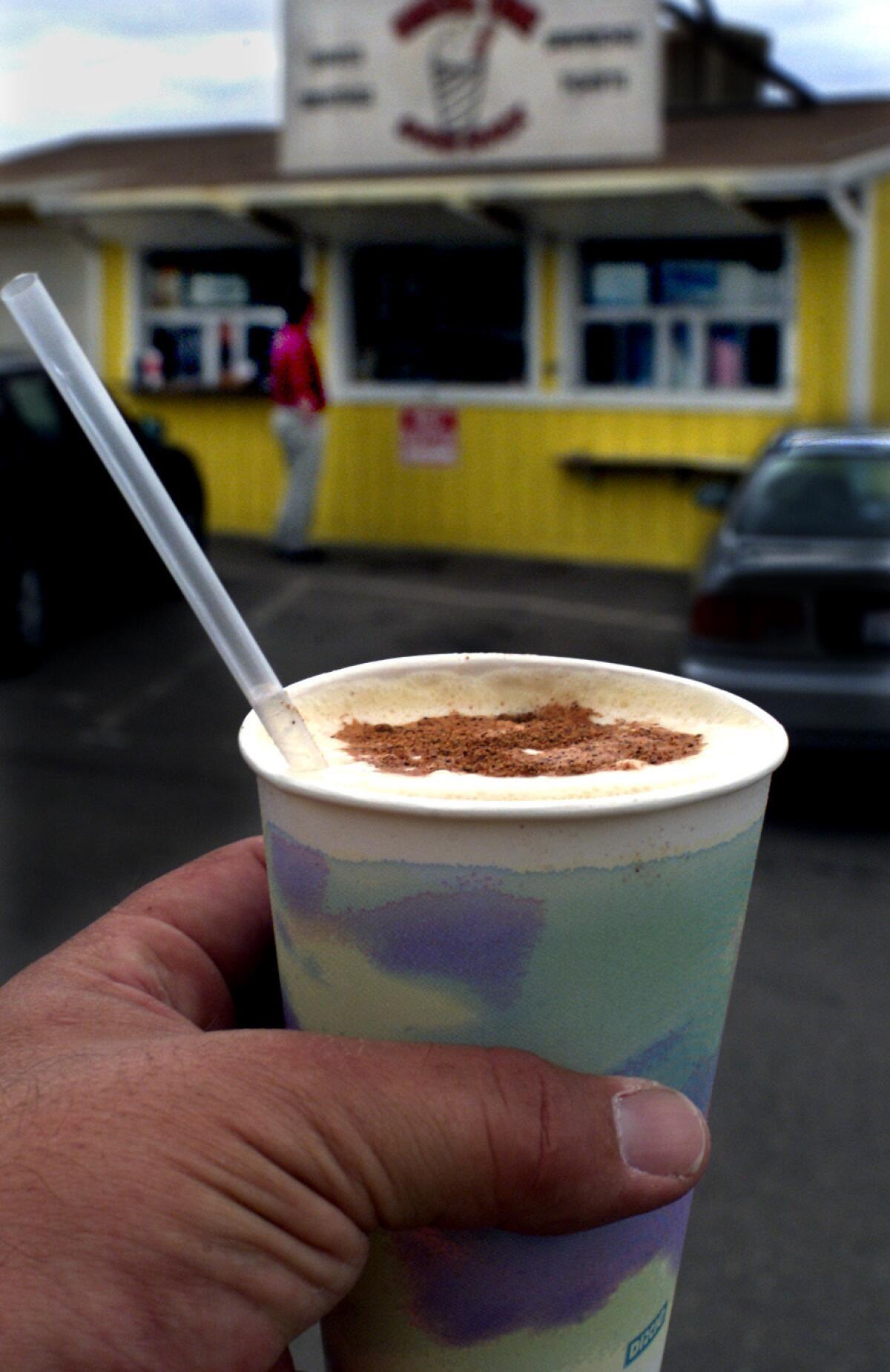
Why: Long before it became the tag for a trendy burger chain, the name Shake Shack conjured images of a winsome little shake joint, perched like a pelican on the edge of one of the greatest coastal vistas in California. And that joint endures.
What: Ruby’s Shake Shack has been a pit stop on the Coast Highway since 1945. Once called Sunshine Cove, the bright yellow wooden structure still looks like the cover art for a Beach Boys album.
In 2006, the Ruby’s diner chain took it over, and has maintained the same barefoot vibe. Some locals say the food improved, but longtime fans continue to lament the changes.
Indisputable is the fact that this landmark still serves outstanding shakes – orangesickle, banana cream, mud pie -- with views that are the envy of far more expensive restaurants.
The restaurant is open seven days a week, 7 a.m. to 7 p.m., with evening hours extending to 9 p.m. in the summer.
Where: 7703 E. Coast Highway, between Corona del Mar and Laguna Beach, in Orange County, 48 miles southeast of downtown L.A.
How much: Breakfasts $8 to $10. Shakes $5.99, and burgers, hot dogs and other sandwiches range from $8 to $12.
Info: Ruby’s Shake Shack, (949) 464-0100
Kick around the dusty ghost town of Bodie, a relic of the really Wild West
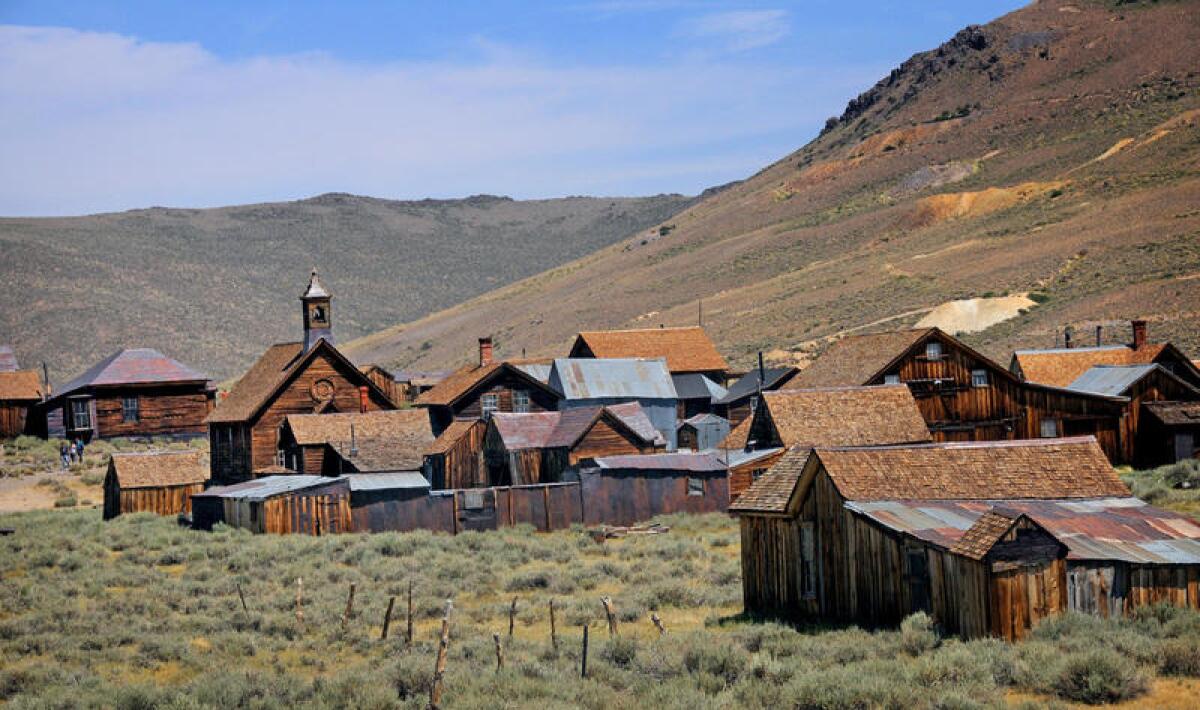
Why: Bodie is an eastern Sierra ghost town so well preserved that it looks as if it might’ve been operating last week. Notorious for putting the “wild” in Wild West, it was once described by a minister as a “sea of sin.” By all accounts, he was right. The sprawling old mining camp at one time featured more than 60 saloons and dance halls.
What: Bodie’s heyday began in the 1870s, making it a gold rush town of 8,500 residents by the end of the decade. Miners spent difficult days working the mines and nights working the bars, dance halls and gambling dens. Gunfights and stage holdups were common as the riches were transported across long, dusty trails.
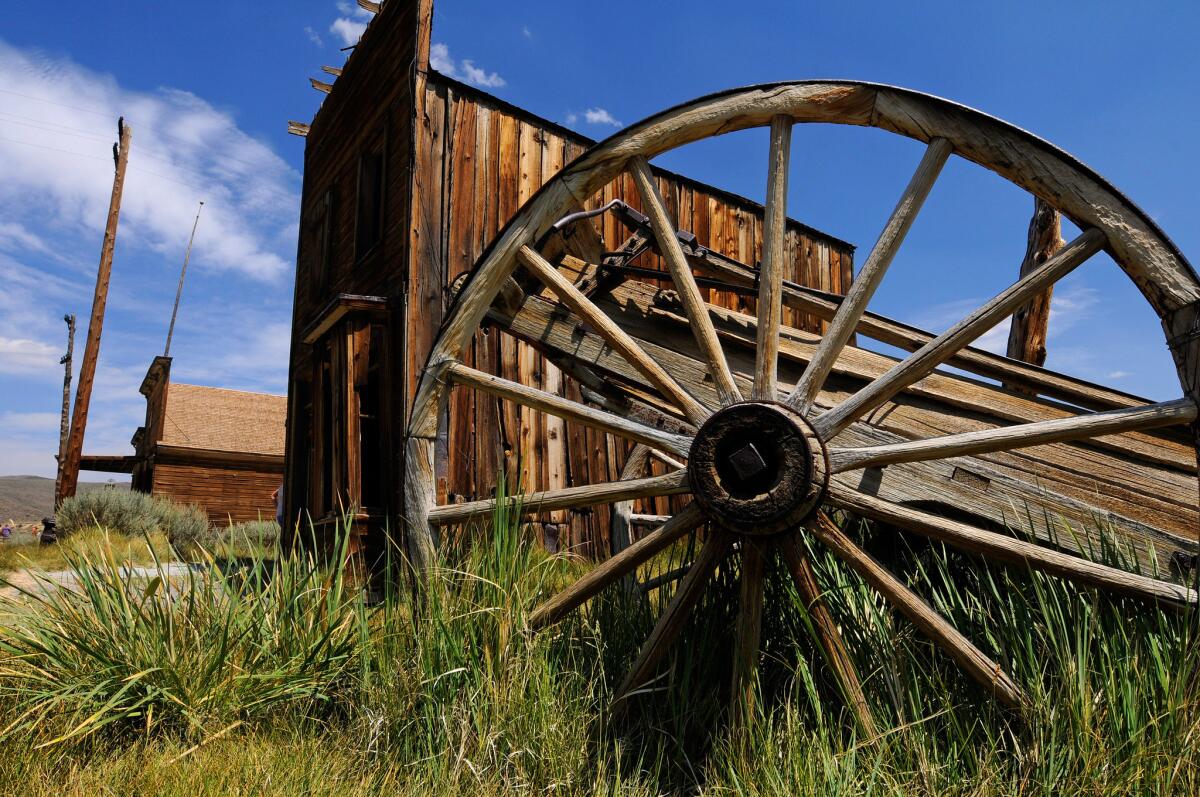
But the riches did not last long. By the 1880s, the mines were depleted. The population plunged to 1,500 by 1886. Fires destroyed much of the town, and what was left was abandoned in the 1940s. In 1962, it was declared a state historic park and a national historic landmark.
Each year, as weather permits, thousands of visitors peer into the past here.
Where: Bodie State Historic Park is in Mono County, 362 miles north of Los Angeles (a six- to seven-hour drive). It is off the 395, south of Bridgeport. The exit is State Route 270, and the first 10 miles of that road are paved, the last three rutted and dusty. Except for low-slung sports cars, most vehicles will have no problems making the drive. Park hours vary by season, and heavy snow closes the road.
How much: $8 per adult; $5 per child ages 3-17. Cash and checks only.
Stare into the heart of the Sierra from atop Mt. Whitney, the state’s most famous ‘fourteener’
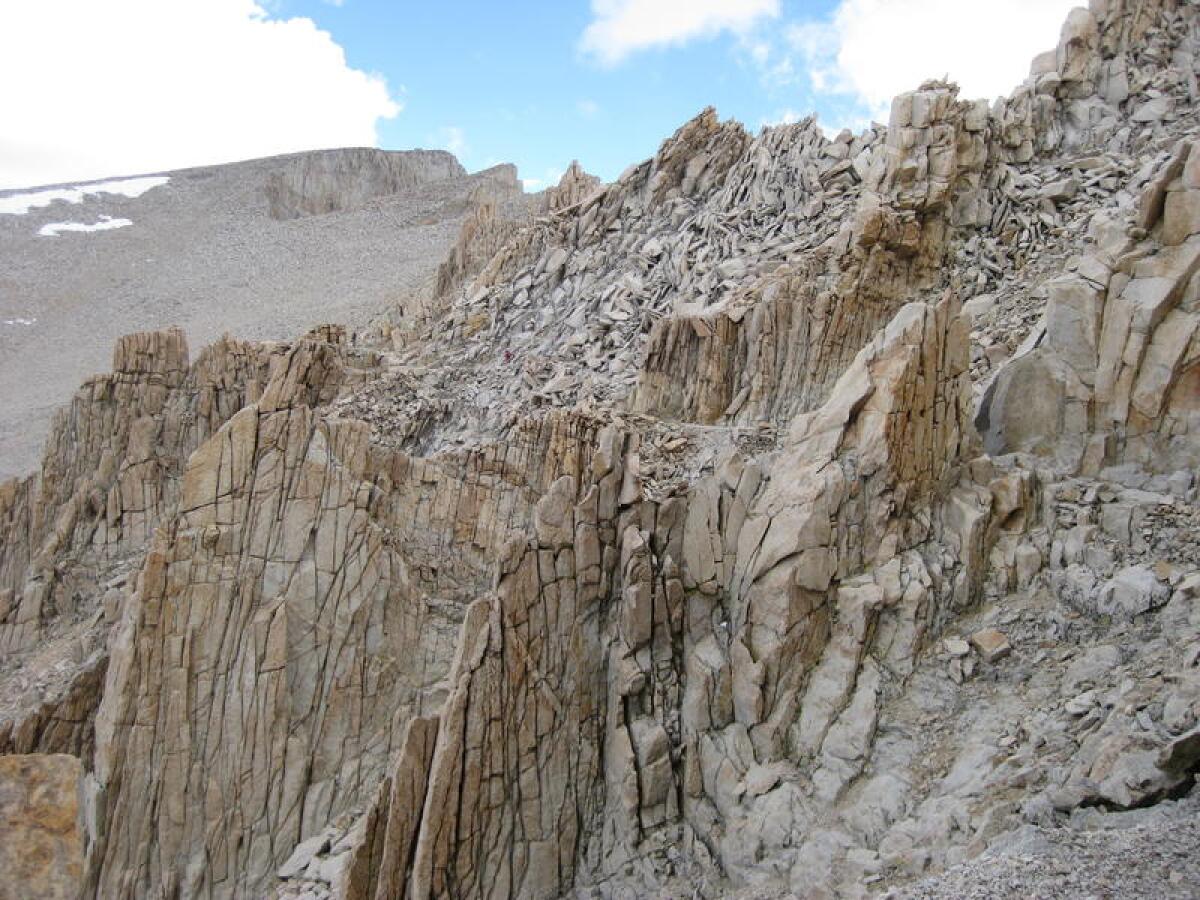
Why: Colorado may have more peaks over 14,000 feet than California does, but it doesn’t have Mt. Whitney. The Sierra peak is the highest point in the contiguous U.S. at 14,505 feet (give or take). It’s a rocky stairway to high-altitude heaven that can only be conquered on foot.
What: There are many routes up Whitney, but the most popular starts from the Whitney Portal just above the town of Lone Pine in the Eastern Sierra. Hikers usually set off during summer or sometimes fall. It’s either a 22-mile round-trip day hike or a two- or three-day backpack journey, staying overnight at camps along the way. Wilderness permits are required for all trips and are awarded lottery-style every year.
The well-trodden, 11-mile trail to the top entails about 6,000 feet of altitude gain. It’s an arduous slog with flowery and grassy meadows in the first few miles, mountain lakes and stream-side waterfalls as you climb higher and then 99 switchbacks, which bring you to Trail Crest at 13,600 feet.
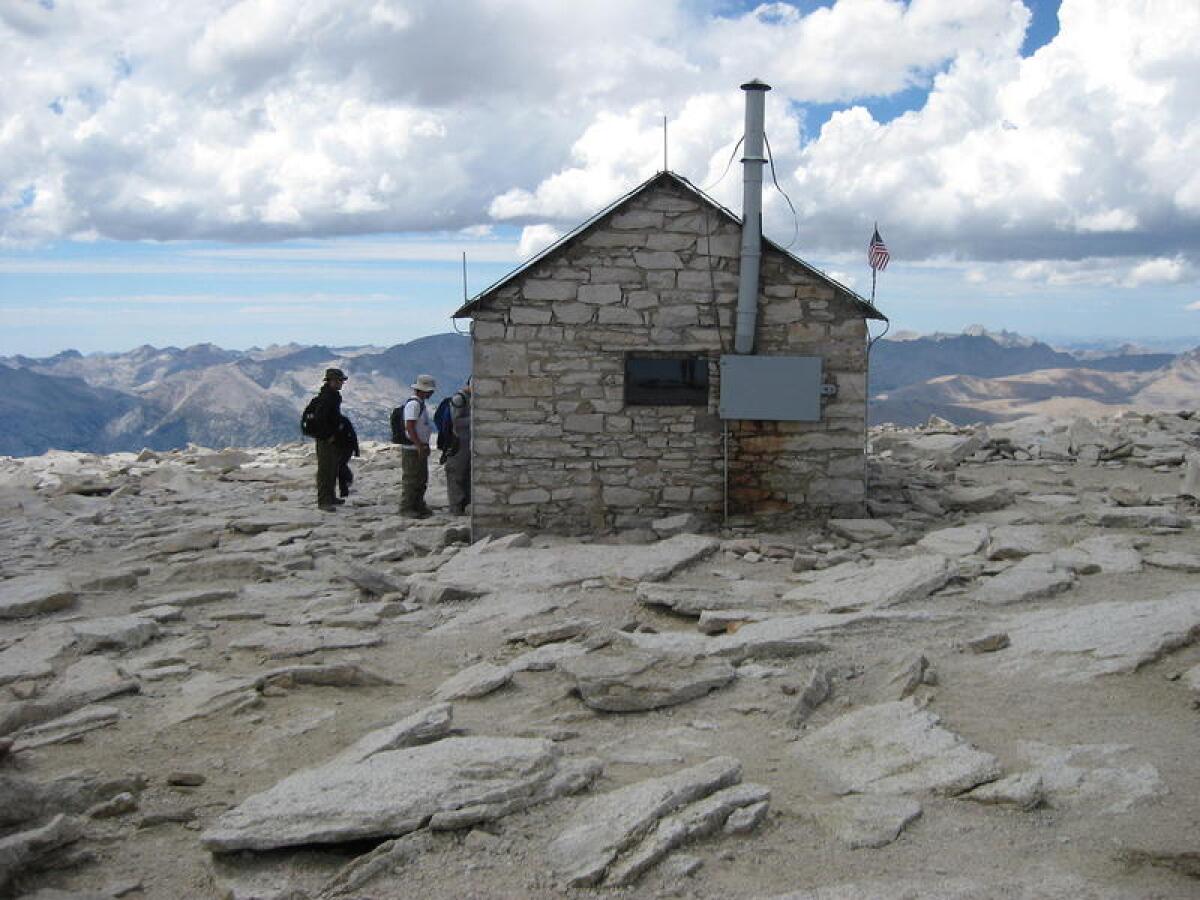
This is where you get a first glimpse of the craggy, rocky Sierra landscape above the treeline. Lakes below look like blue-green puddles; ridges and peaks seem endless. From here, it’s two more winding miles to the top along a hard-slab trail with steep drop-offs in places. At the top, hikers sign a register to document their victory, step into the stone shelter (built in 1909) and snap photos.
The first modern hikers known to reach the top of Whitney were three local fishermen who summited in August 1873. Two months later, John Muir made an ascent. Hulda Crooks, known as Granny Whitney, scaled the summit about two dozen times between the ages of 65 and 91 before she died in 1997.
Where: The hike starts at the Whitney Portal, accessible by road about 13 miles west of the town of Lone Pine, 220 miles north of downtown L.A. If you go, don’t forget to have a meal at the Whitney Portal Store — a burger if you make it down by evening, or breakfast pancakes in the morning, if you don’t. It’s a kind of base camp where hikers can celebrate their victory and buy a T-shirt to commemorate the day.
How much: Permits to hike up the trail are $20 each. But it doesn’t cost you anything to drive up to Whitney Portal, breathe some mountain air and get a little closer to the big peak.
Info: Sequoia & Kings Canyon National Parks, Inyo National Forest.
Prowl the Living Desert near Palm Springs like a hungry coyote
Why: There are probably more critters creeping (and flying, and even swimming) in the world’s deserts than you realize, and this preserve proves the point.
What: The Living Desert Zoo & Gardens, opened in 1970, is a 1,200-acre zoo and botanical garden that’s devoted to portraying life in the world’s deserts. There’s a reptile show; there are jaguar, leopard and cheetah chats; and the animals include a tortoise, a python, longhorn cattle, bobcats, foxes, Gila monsters and coyotes.
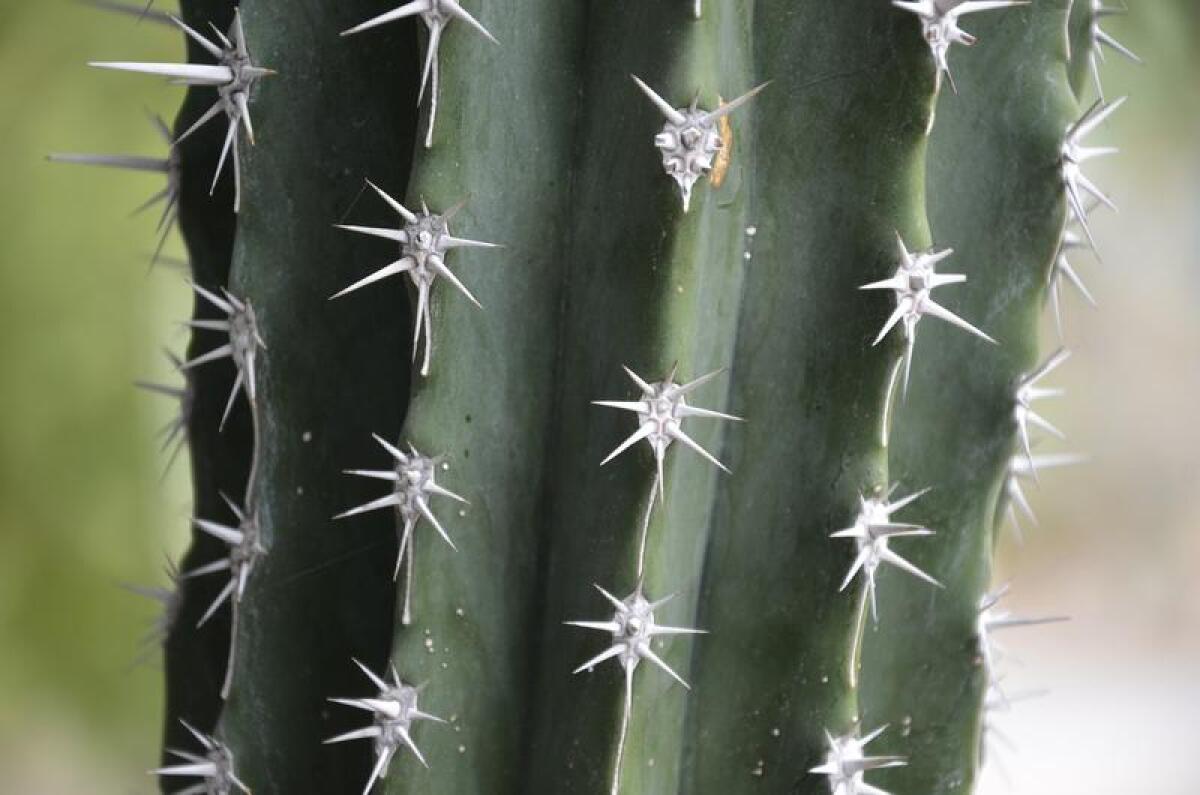
For $5, you can feed a giraffe (warning: long tongue). For $6, beginning in the fall, you can briefly ride a camel. You might spot an elusive bighorn sheep on the neighboring slopes. And you’ll certainly see the model railroad. It’s not flora or fauna, but it’s surely an epic project, with more than 3,300 feet of track and miniature historic scenes including the south rim of the Grand Canyon, a California logging town and Mt. Rushmore.
Where: 47900 Portola Ave, Palm Desert, 124 miles east of downtown L.A.
How much: General admission is $19.95. For children age 3-12, it’s $9.95.
Info: The Living Desert
Graze globally at downtown L.A.’s Grand Central Market
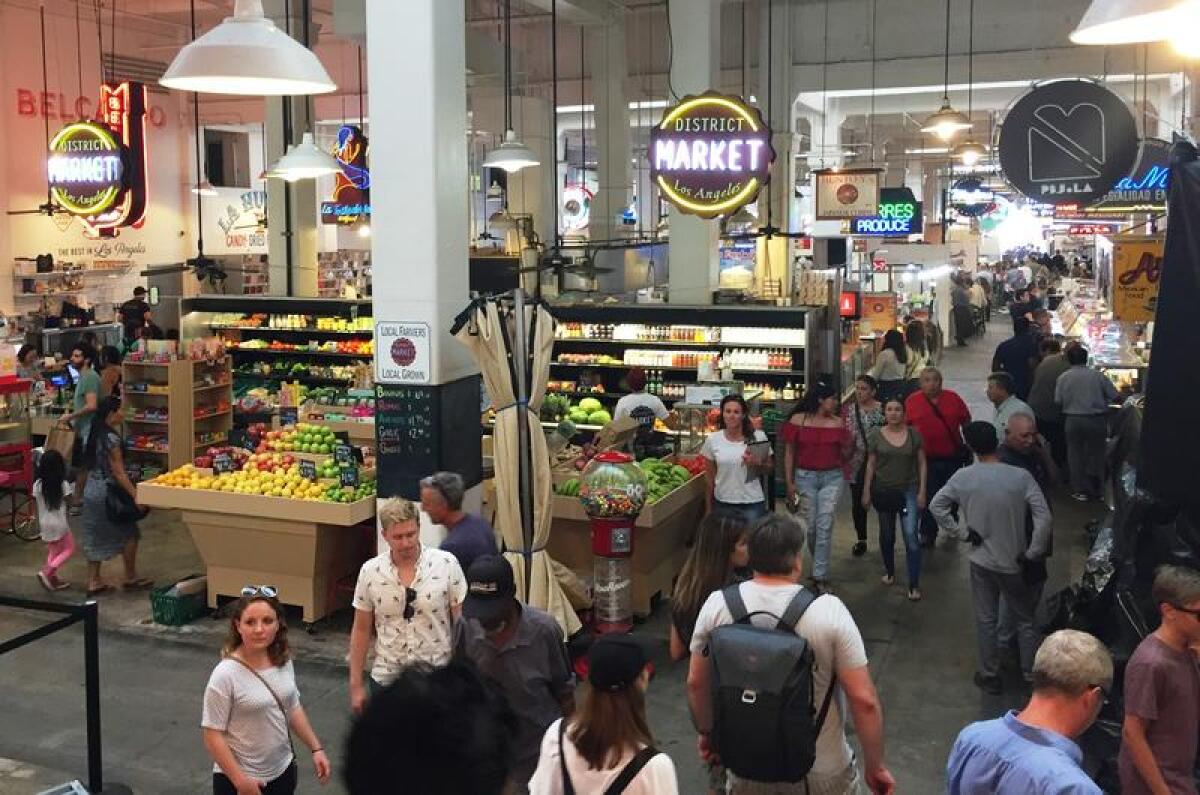
Why: L.A.’s first food hall is a century-old and full of new vendors and new energy.
What: In the Grand Central Market, a fixture on Broadway since 1917, you shuffle along under vintage-looking neon signs, hearing multiple languages, sniffing street food and market ingredients from near and far. Nine kinds of mole sauce! A hipster butcher! It would be a shame to patronize just one of these joints. So order part of your lunch or dinner from a relative newcomer — like Wexler’s Deli or the Golden Road beer-tasting bar — and another part from an old-timer, like China Cafe or Tacos Tumbras a Tomas.
If your last visit was a few years ago, you’ll notice there’s been big turnover and gentrification here, resulting in more ambitious food, bigger crowds, longer hours, higher prices and a younger clientele.
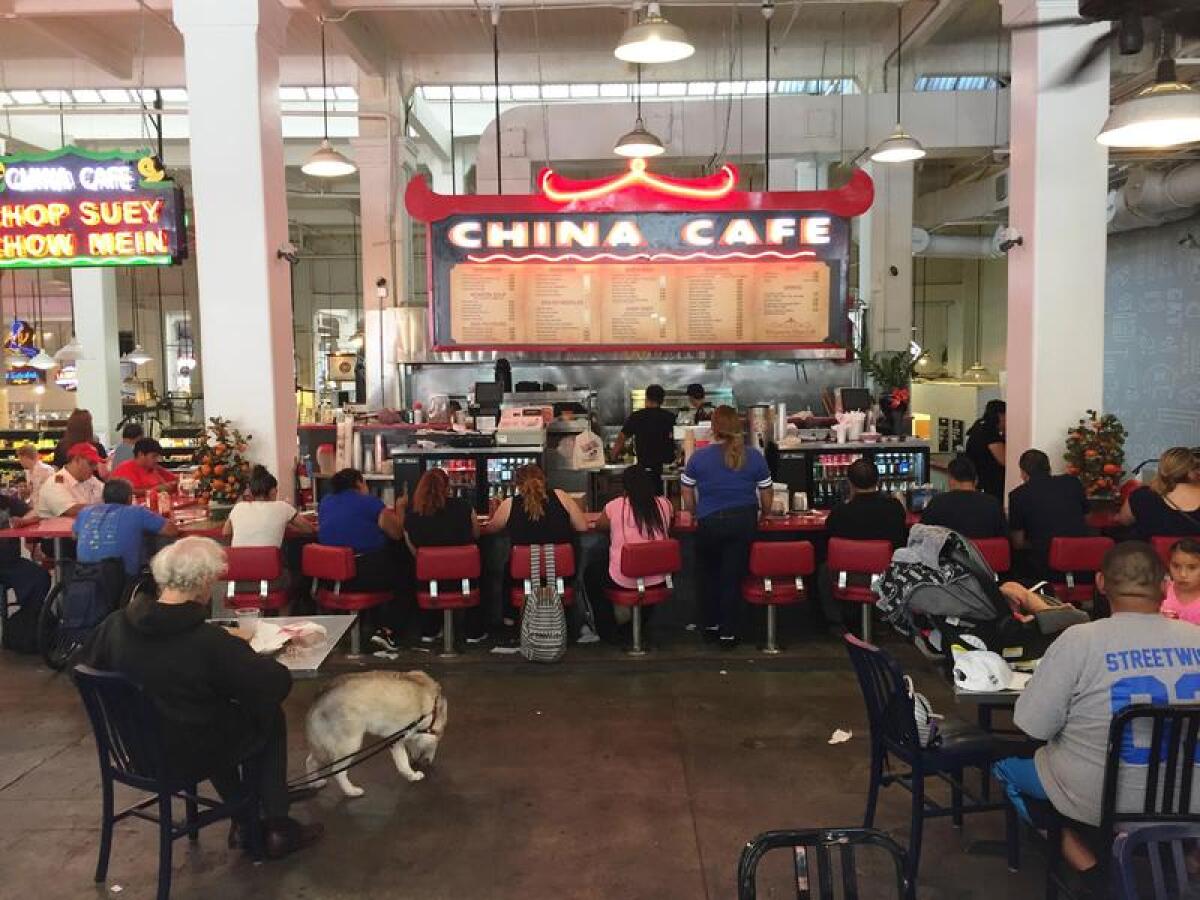
Want a bonus discovery with your snack? See if the historic, on-again, off-again Angels Flight Railway, just across Hill Street, is running again. (Boosters have pledged a reopening by Labor Day 2017.) Or peek inside the Bradbury Building just across Broadway. Or cross Broadway and slip down the pedestrian alley to 333 S. Spring St., where Biddy Mason Park celebrates a former slave who became one of the city’s wealthiest women in the late 19th century.
Where: 317 S. Broadway, downtown L.A.
How much: The people-watching is free, 8 a.m.-10 p.m. daily. For bagels with lox and cream cheese at Wexler’s, it’s $14. For a taco at Tacos Tumbras a Tomas, it’s $3.50.
Info: Grand Central Market
Forget the ‘Blue Boy’ and explore all the other treasures at the Huntington in San Marino
Why: The Huntington is one of the Southern California’s greatest cultural assets, with ever-evolving gardens; a library that includes everything from a Gutenberg Bible and Shakespeare folio to the papers of Charles Bukowski and Octavia Butler; and an art collection that, unfortunately, is often overshadowed by a single famous painting of a rich kid in satin knee breeches. (That would be Thomas Gainsborough’s “Blue Boy,” an 18th century portrait bought by California railway pioneer Henry E. Huntington in the early 1920s.)
What: It began as a citrus ranch and later sprouted a mansion and other buildings. Huntington and his wife, Arabella, created the institution, officially known as the Huntington Library, Art Collections, and Botanical Gardens, in 1919. Its 207 acres include 12 gardens (including one where kids can romp) and the galleries inside feature more than 1,000 artworks, including paintings by Americans Mary Cassatt, Frederic Edwin Church and Edward Hopper. Both the library and art collection offer rotating exhibitions.

“The Blue Boy” is gone from view through Oct. 31, being analyzed before thorough “conservation treatment” that will take it off display again beginning in fall 2018.
Where: 1151 Oxford Road, San Marino
How much: Adult admission is $25 on weekdays, $29 on weekends. Children’s admission ranges from free to $24, depending on age. Open 10 a.m. to 5 p.m. six days a week, closed Tuesdays. It’s free on the first Thursday of every month, with advance reservations.
Info: The Huntington Library
Take a taste of Tiki at the Tonga Hut, L.A.’s longest-running tiki bar
Why: Southern California is ground zero for the mid-century phenomenon that Tiki became, and the concept is experiencing a serious revival.
What: Hollywood’s Don the Beachcomber inaugurated the Tiki bar concept way back in 1934. The movement inspired generations to wear Hawaiian shirts, decorate in faux-tropical kitsch and order flaming cocktails. Though the original Don the Beachcomber went the way of the Tail O’ the Pup, the Tonga Hut and a few others held on through the dark time of Tiki’s decline in the 1970s. Until a few years ago, you’d be hard pressed to find a decent tropical rum drink from anywhere reputable.
But here we are, in a rebirth of Tiki, and if you want to experience a night of tiny umbrellas in a Polynesian paradise, look no further than the Tonga Hut in North Hollywood. Opened in 1958, the Tonga Hut offers an excellent Tiki-themed interior, a jaunty jukebox, devoted regulars, a wide-ranging list of classic tropical drinks and history — it’s Los Angeles’s oldest tiki bar still in operation. Look out for the Loyal Order of Drooling Bastards wall, which lists every person who has mastered the “Grog Log,” a list of 78 classic exotic drinks, within a one-year time frame.
Still thirsty? Other L.A. Tiki options include the tiny but mighty Tiki Ti in Los Feliz and Clifton’s Cafeteria’s revamped Pacific Seas downtown. And there’s the lively Trader Sam’s Enchanted Tiki Bar at the Disneyland Hotel. Also, a new Tonga Hut location just opened in Palm Springs.
Where: Tonga Hut, 12808 Victory Blvd., North Hollywood, 14 miles northwest of downtown L.A.
How much: Drinks will set you back anywhere from $9 for something simple to $14 for a bowl drink, which might leave you horizontal.
Info: Tonga Hut
Pace the barracks at Manzanar, where 10,000 Japanese Americans were held during World War II
Why: On this barren, windblown patch of the Owens Valley, more than 10,000 Japanese Americans endured a painful home-front chapter of World War II -- a mass incarceration that U.S. leaders have conceded was wrong. The National Park Service has remade the site, at the foot of the Sierra Nevada, as a place for contemplation of war, liberty, prejudice and endurance.
What: It was early 1942, about 10 weeks after the bombing of Pearl Harbor, when President Franklin D. Roosevelt ordered more than 110,000 Japanese Americans be incarcerated in internment camps. Walk through the two reconstructed barracks and mess hall, which are full of displays and signage explaining daily life in the camp. Watch the 22-minute film in the visitor center, “Remembering Manzanar.”
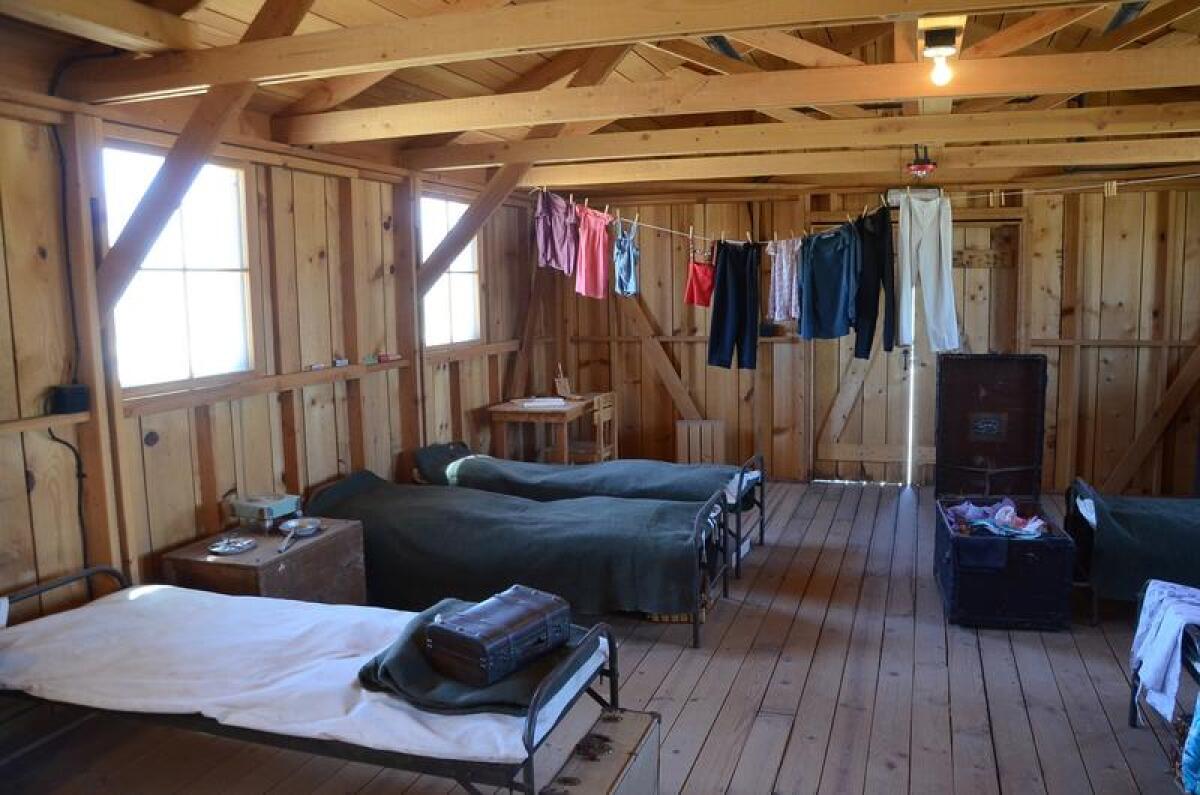
Browsing the displays, you’ll learn the details of daily life, from mess hall menus to the fruit crates that families converted into furniture. You’ll also read NPS researchers’ conclusion that “no person of Japanese ancestry living in the United States was ever convicted of any serious act of espionage or sabotage during the war.” The exhibits include a 1988 news clip of President Reagan declaring the camps “a mistake” and offering compensation for survivors of internment. (Park rangers opened Manzanar as a historic site in 1992.)
Take the 3.2-mile driving tour around the periphery, and pause at the cemetery, where a tall monument is etched with Japanese characters.
Where: 5001 Highway 395, Independence. The site is 6 miles north of downtown Independence, 219 miles north of downtown L.A.
How much: Free.
Yell ‘Hiyo, Silver!’ in the Alabama Hills near Lone Pine
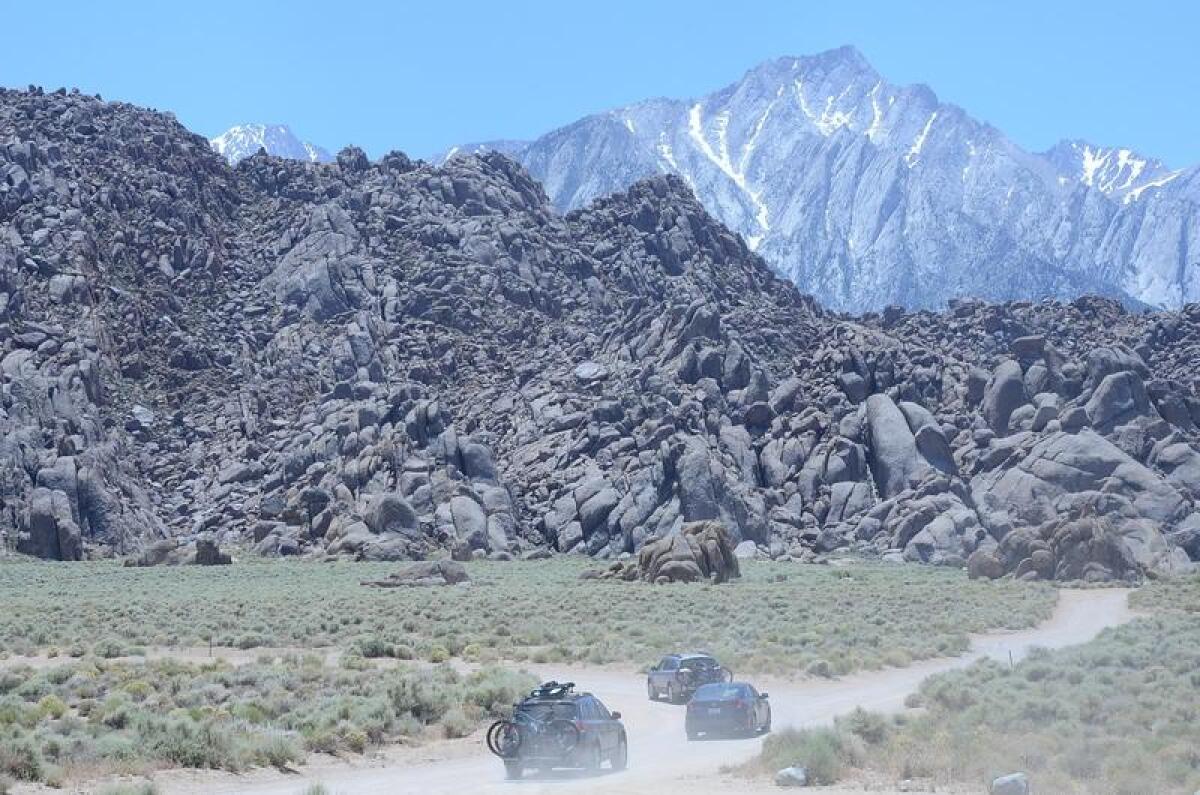
Why: Legions of film, television and commercial actors, directors and crew have spent quality time among the boulders outside Lone Pine, making this part of the Owens Valley the face of the American West in many ways. John Wayne made a dozen movies here. John Ford and William Wyler worked here. Parts of the first “Lone Ranger” film (1938) were shot here, as were parts of the the “Lone Ranger” television series (1949-1957).
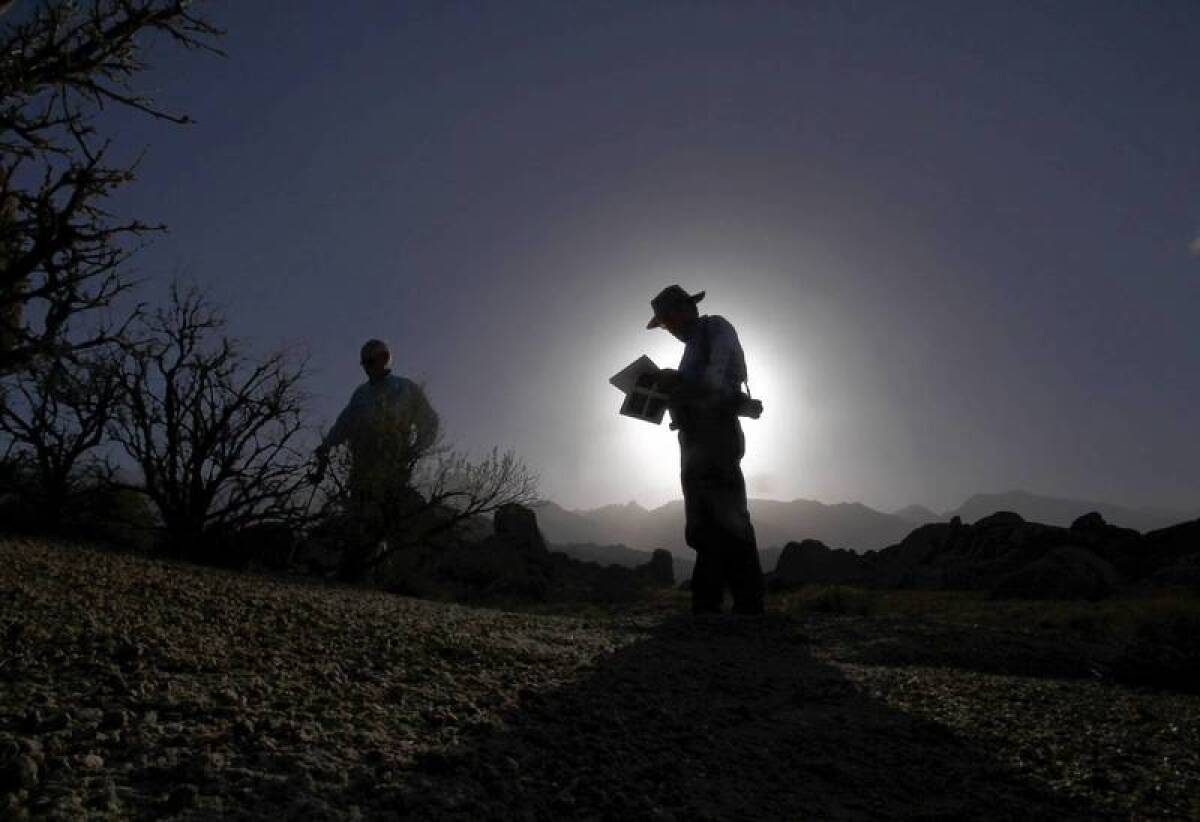
What: This is actually a two-stop adventure. First, step into the Museum of Western Film History in the Owens Valley town of Lone Pine. There you’ll learn the evolution of western stories on large and small screens and see Tom Mix’s black hat, the dentist’s wagon from “Django Unchained” (2012) and one of Roy Rogers’ old guitars and too many cool old posters to count. You’ll also learn how some 400 movies and countless TV episodes and commercials have been shot in the nearby hills. The first film shot here may have been “The Roundup” (1920).
Your second stop is the Alabama Hills, which begin about 2 miles west of the museum. Using a map from the museum, you can drive Movie Road and walk to Lone Ranger Canyon, scanning the strangely familiar landscape and reviewing the list of titles filmed here -- not only westerns, but also parts of the “Iron Man,” “Star Trek” and “Star Wars” franchises. There’s also a Lone Pine Film Festival every year around Columbus Day.
Where: Museum of Western Film History, 701 S. Main Street, Lone Pine, 215 miles north of downtown L.A..
How much: $5 per adult, free for children under 12, military and members.
Info: The Museum of Western Film History
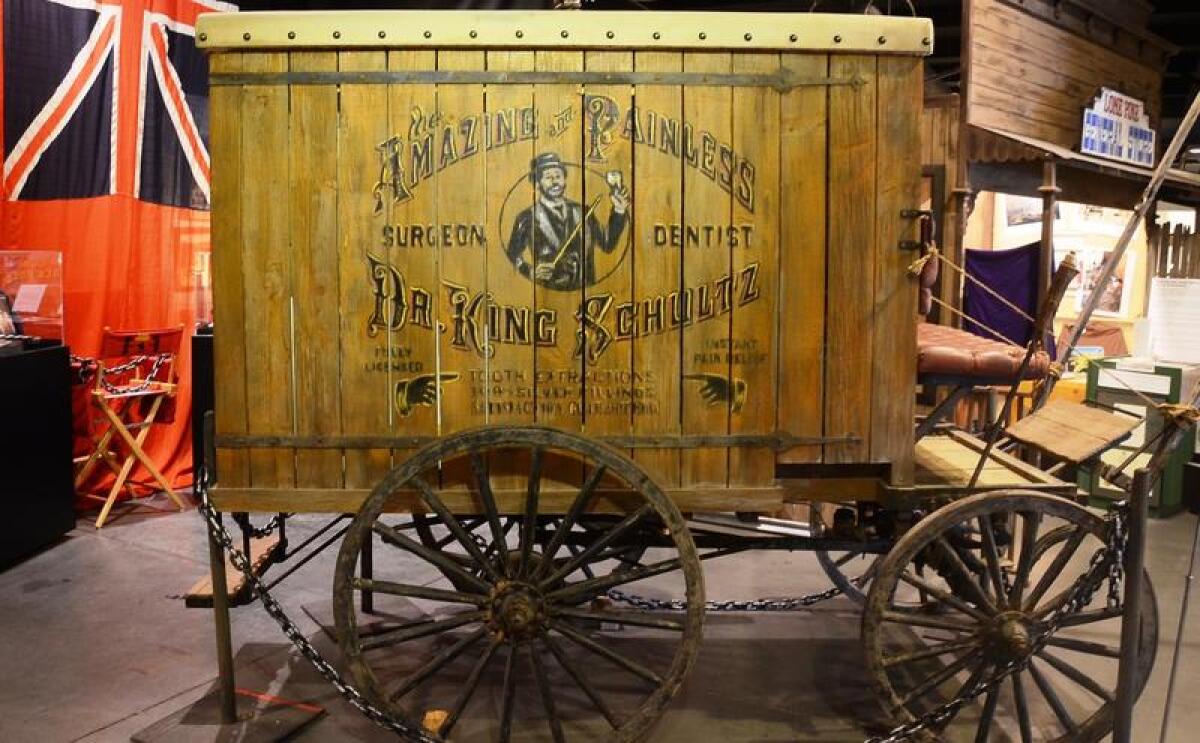
Clip-clop into the high country on an Eastern Sierra pack trip
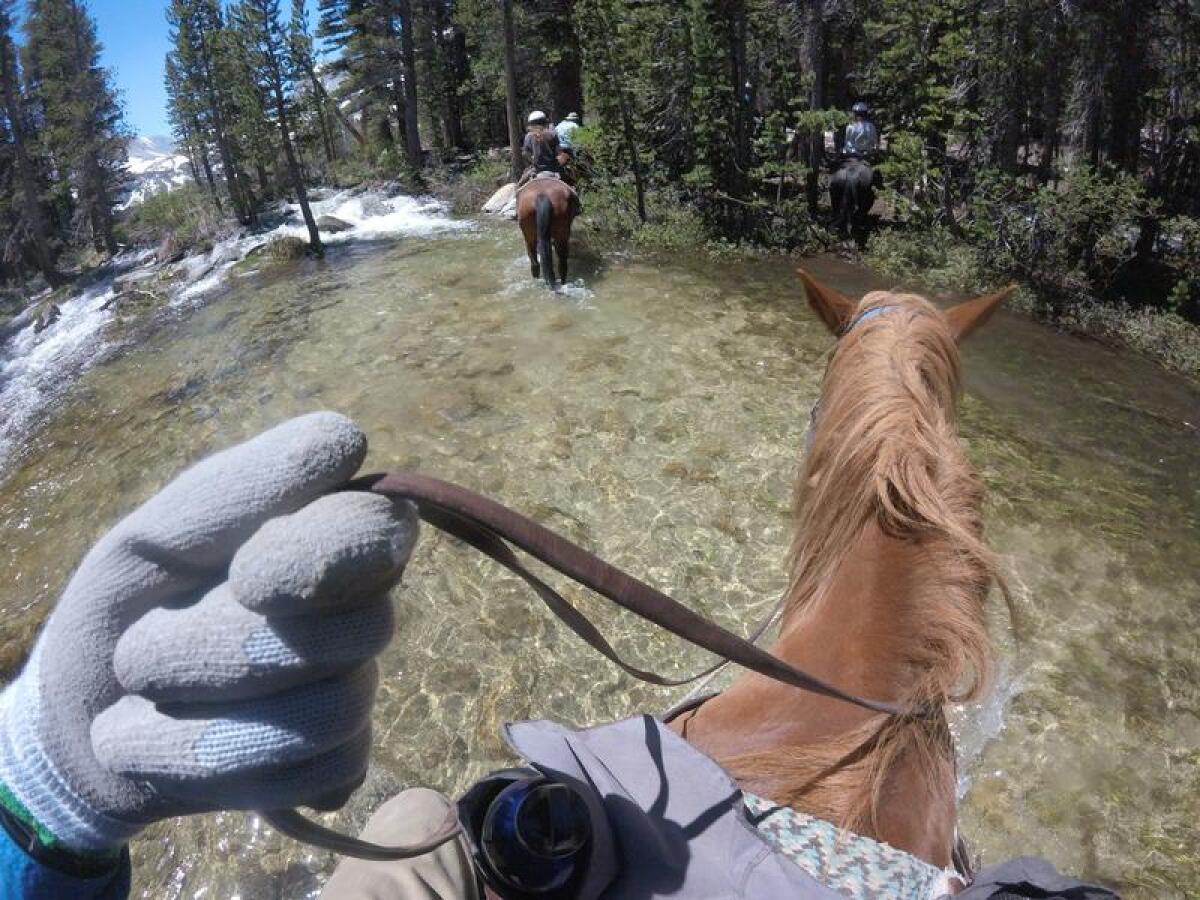
Why: This is as rugged and pristine as California gets, and you’ll have a horse to do the hard work for you.
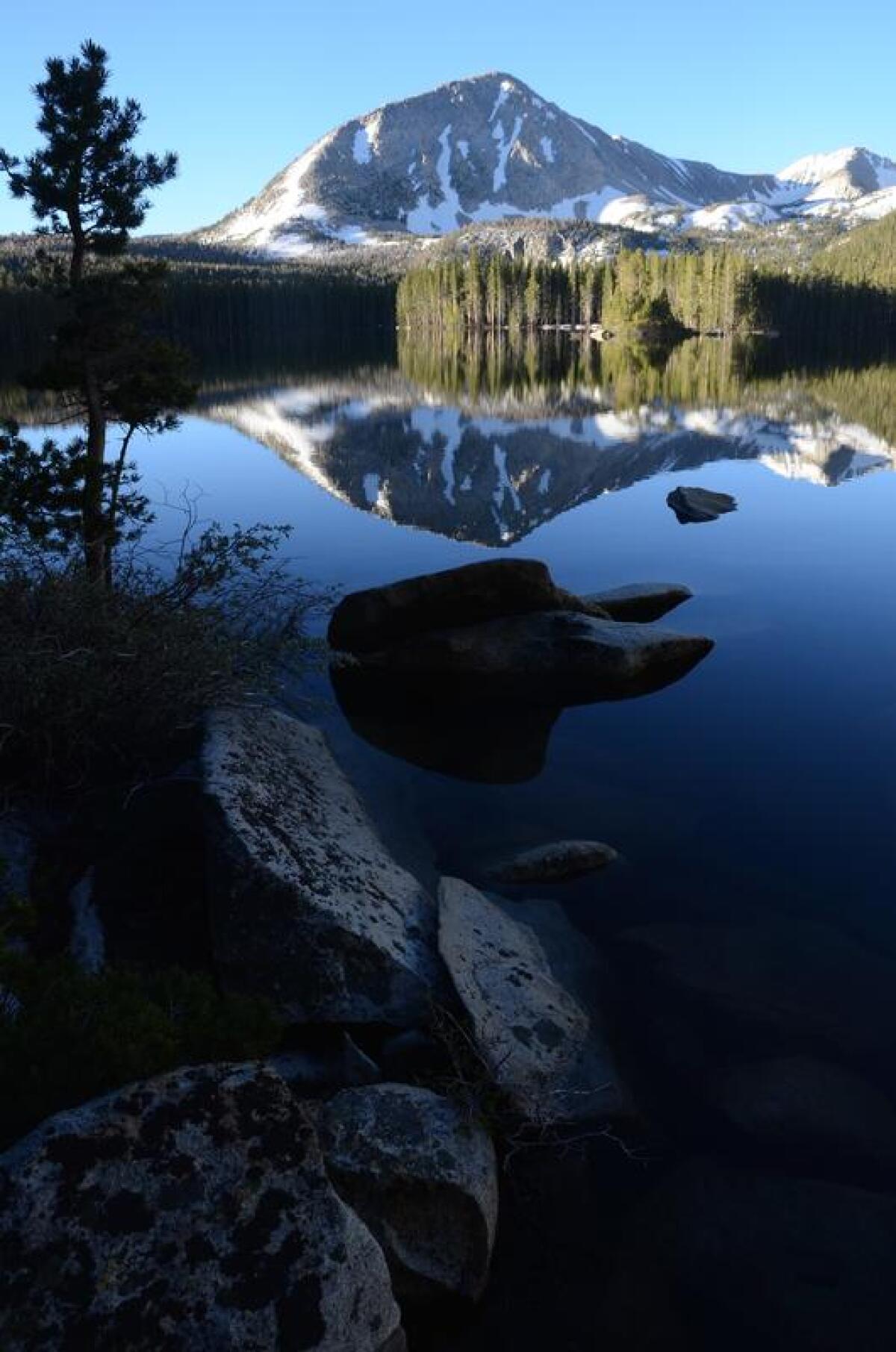
What: More than a dozen pack stations along the Eastern Sierra are still sending guests on horseback into the mountains, where they can camp, fish, hike, do John Muir impressions or just ride for the fun of it. While you saddle up, your guides (known as packers) will cinch your possessions onto the back of a mule. And cook. Your trip might last a few days or a few weeks.You’ll probably set up camp near a lonely lake with a sky full of stars waiting once the sun is down.
Where: The pack stations are tucked away on the lower slopes from Lone Pine to Bridgeport along Highway 395, and also along Tioga Road, the seasonal route that connects the Owens Valley to Yosemite National Park.
How much: When I rode into the John Muir Wilderness for four days and three nights in June 2017 from Rock Creek Pack Station (27 miles north of Bishop) the tab was $939.
Info: Eastern Sierra Packers
Savor the scent of all things lavender in Los Olivos, about 6,000 miles closer than Provence

Why: Watching a field of lavender waving in a summer breeze is hypnotic, second only to smelling lavender. You need not go to France to experience this; it’s as close as Clairmont Farms in Los Olivos, a pretty 30-mile drive from Santa Barbara.
What: Besides the olfactory aesthetic, the grounds of the nine-or-so-acre farm, seven in lavender, are peaceful, surrounded by towering oaks and framed by the Santa Ynez Mountains. You can bring a picnic lunch and dine at the painted-purple tables and browse the gift shop for its made-here lavender products. Note that if you’re allergic to bees, this may be a no-fly zone for you.
Clairmont grows two types of lavender: Grosso, which goes into all of the farm’s products (including many soaps and bath items); and Provence, which goes into culinary products such as pepper, salt, honey and tea. A little lavender tea, owner Meryl Tanz said, can enhance the flavor of beer, wine, martinis or margaritas.
There isn’t a bad time to visit the farm, but the bloom (usually in mid June) is a fragrance feast. The harvest this year is early—right now, in fact—because of the heat. Even post-harvest, Clairmont is the respite you need when the world is too much with you.
Where: 2480 Roblar Ave., Los Olivos, about 130 miles northwest of downtown Los Angeles. Open 11 a.m. to 5 p.m. daily except Tuesdays.
How much: Browsing the farm is free. Spending in the gift shop is up to you.
Info: Clairmont Lavender Farms
Stop to smell the Roses in the Los Angeles Flower District
Why: You’ll find a feast for the eyes and a fascinating glimpse into the business of flowers at the largest wholesale floral district in the country.
What: Anchored by two large markets (the Original Los Angeles Flower Market and the Southern California Flower Market) and flanked by independent vendors, the historic Los Angeles Flower District is awash in beautiful blooms. More than 100 years ago, Japanese farmers began to offer their floral goods in this spot. Today, many offerings are still grown in Southern California—an area that reigns supreme in the national billion-dollar industry of flower farming. (Until the 1960s, Californians supplied the entire nation with all of its cut fresh flowers.) Plan for a morning visit—public hours start as early as 6 a.m., and many vendors are gone by noon.
Where: 766 Wall St. (between 7th and 8th streets), downtown Los Angeles.
How much: Public admission is $2 on weekdays, $1 on Saturday, closed Sunday..
Creep into Northern California’s Fern Canyon like a Jurassic beast
Why: It’s like traveling back in time — way back. Steven Spielberg chose it as a location for “The Lost World: Jurassic Park” because the whole place looks prehistoric. And it is.
What: Fern Canyon is exactly as its name describes. Feathery ferns sprout from nearly every square inch of the 30-plus-foot cliffs lining this narrow ravine. The effect is like fluffy, 3-D wallpaper. If it doesn’t bring Spielberg to mind, it might bring Jim Henson. Some fern species found here can be traced back 325 million years, with gallant names like the dark green sword and the delicate lady. As you hike deeper into the shadowy canyon, the ferns take over your field of view — it’s green tunnel vision. Scan the environs for mini-waterfalls trickling through moss as well as shy amphibians, and be sure to take a good, deep sniff. It smells like the Industrial Revolution never happened.
The Fern Canyon Loop is a flat path of 0.7 miles, easy enough for young children or road-trippers stiff from the bumpy drive in. (It’s about 9 miles from the highway on a dirt road that plows straight through a few small, stony streams.) In summer, rangers place foot bridges (read: slippery wooden planks) on the trail. Wear hiking boots if you have them, rain boots if you don’t, or sneakers if you don’t mind spending the day with wet socks. For avid hikers eager to tack on a few extra miles, the James Irvine Trail, which begins at the visitors center, is an alternate route to the canyon. If you brought lunch, stop at the Elk Meadow picnic area, where you’re almost guaranteed to see a grazing elk or two.
Where: Fern Canyon is in Prairie Creek Redwoods State Park, part of Redwood National and State Parks. It’s 52 miles north of Eureka, 697 miles north of downtown L.A. Take Division Road off Highway 101, but call ahead about closures after a heavy rain or during the winter.
How much: Park admission is free, but there’s an $8 day-use fee for Fern Canyon.
Info: Fern Canyon
Take in the eye candy at the Petersen Automotive Museum
Why: Heavy metal has an exquisite headquarters in the Petersen Automotive Museum. Cars and California have always been a dream couple. After all, the Golden State inspired such brands as the Malibu and the Laguna.
What: For auto buffs, it’s like a trip to the candy store. Across three themed floors, the Petersen pays tribute to the influence and fun of classic automobiles. Perhaps no other invention, save the light bulb, has so influenced American culture.
History has a floor of its own, as does industry, which tells the stories of the inventors and visionaries. But save the bottom floor, devoted to artistry, for last.
Among the collection are cars as fanciful as the 1989 Batmobile, or as simple and elegant as a 1900 Smith Runabout. There are race cars, concept cars and ancient Bugattis. In a way, the Petersen is the world’s ultimate showroom.
Make a day of it. The museum is located across from the Los Angeles County Museum of Art, and up the street from the La Brea Tar Pits.
Where: 6060 Wilshire Blvd., about 9 miles west of downtown Los Angeles.
How much: $15 for adults, $12 for seniors and students with ID, $7 for children. Parking is free for the first 30 minutes with a $12 flat rate thereafter.
Scoop into Fosselman’s in Alhambra for creamy handmade ice cream that changes with the seasons

Why: Long before Starbucks turned coffee into its own food group, there was Fosselman’s Ice Cream Co. Since 1919, the same year the Green Bay Packers were founded, the Fosselman family has turned out handmade ice cream in dozens of flavors, plus candies and desserts, from a timeless shop in Alhambra, 30 minutes from downtown Los Angeles.
What: The family ice cream company has changed through the years, but not dramatically, and not without the attention to
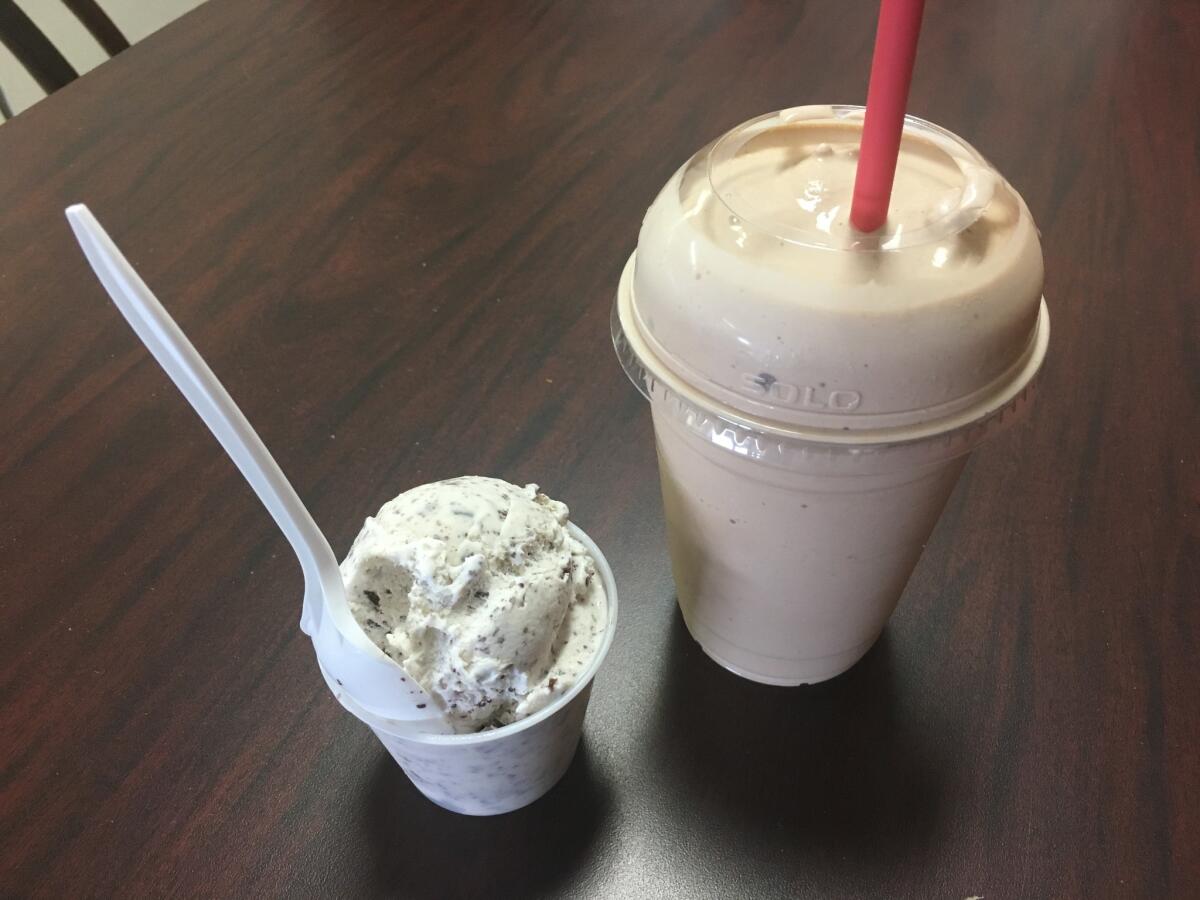
detail and customers that have made it a local landmark. These days, it sells to restaurants and hotels, but still does a brisk business out of the little shop on Main Street.
Not as kitsch as Fair Oaks Pharmacy, a rival parlor 10 minutes away, Fosselman’s draws customers who don’t necessarily come for that old-soda-fountain experience. They come for the creamy-great desserts. They do it all here — sorbets, cakes, splits — but to appreciate how rich and wonderful Fosselman’s is, order a simple cup, or a milkshake.
Nearly 50 flavors are on the menu, which is constantly updated with seasonal variations: pumpkin for October; peppermint bark at Christmas.
Where: 1824 W. Main St., Alhambra, 10 miles northeast of downtown Los Angeles.
How much: Cones from $3.25, shakes and malts from $5.85. Sundaes from $5.40. Cash only.
Info: Fosselman’s
Eye the skies, and the origins of the universe, from famed Mt. Wilson Observatory
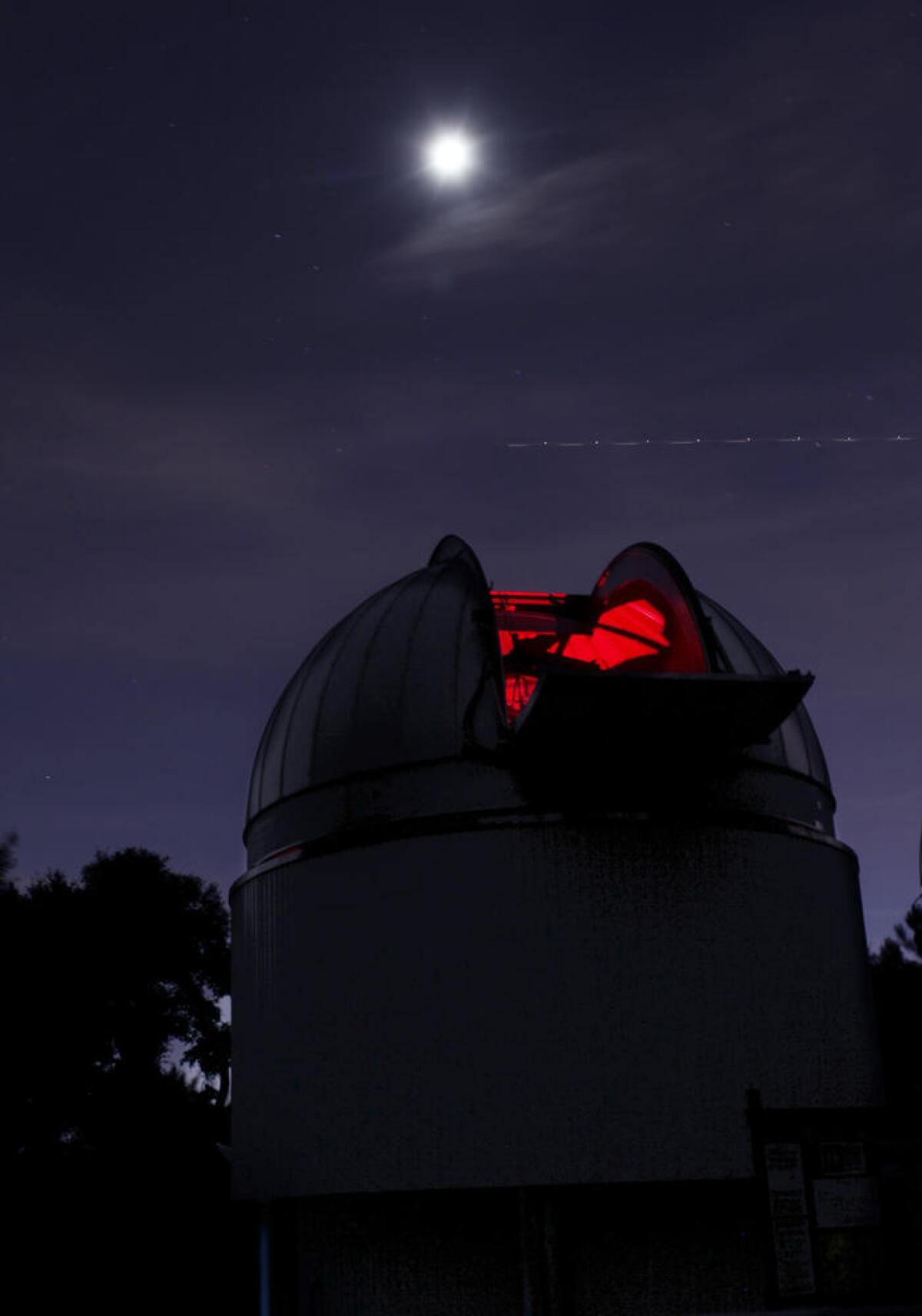
Why: This isn’t just an access road, it’s a zigging, zagging path to a galaxy far, far away. On the way up, your belly begins to bark. Kidneys become spleens. You’re driving to Mt. Wilson, a top-of-the-world observatory that once revealed several significant secrets of the universe.
What: Mt. Wilson Observatory, 90 minutes from downtown Los Angeles, belongs in the astronomers’ hall of fame.
It is where Harlow Shapley discovered that we’re not in the center of the Milky Way; actually, far from it. It’s where Edward Hubble and others confirmed that the universe is expanding, key evidence in support of the Big Bang theory.
The sprawling complex is located in what was once cowboy country. Thieves once stashed stolen horses in the surrounding caves and canyons. In the mid-1800s, Benjamin Wilson, a rancher from the flatlands, went searching for timber for his wine casks, following old Indian trails to the site of Mt. Wilson.
By the late 1800s, those trails were used to set up the observatory. In 1917, astronomers began using the world’s largest telescope there. There was even a hotel at one time, the $3-a-night Mt. Wilson Hotel, which closed in the late ‘60s.
Today, the cluster of vintage telescopes has gone into semi-retirement, used by school and astronomy clubs at group prices that start at $1,000. But various weekend tours, usually at 1 and 2 p.m., take you through the complex and, depending on the itinerary, right up under the 100-inch telescope.
Check out the website for viewing options, including coveted public viewing tickets, with which individuals who are not part of groups can watch the ever-changing universe.
Where: Above La Cañada Flintridge in L.A. County, 32 miles northeast of downtown L.A., about a 40-minute drive off the 210 Freeway (Angeles Crest exit).
How much: Docent tours are $15. To wander on your own is free.
Info: Tickets and visitor tips
See Diego Rivera’s vision of California at a private San Francisco club
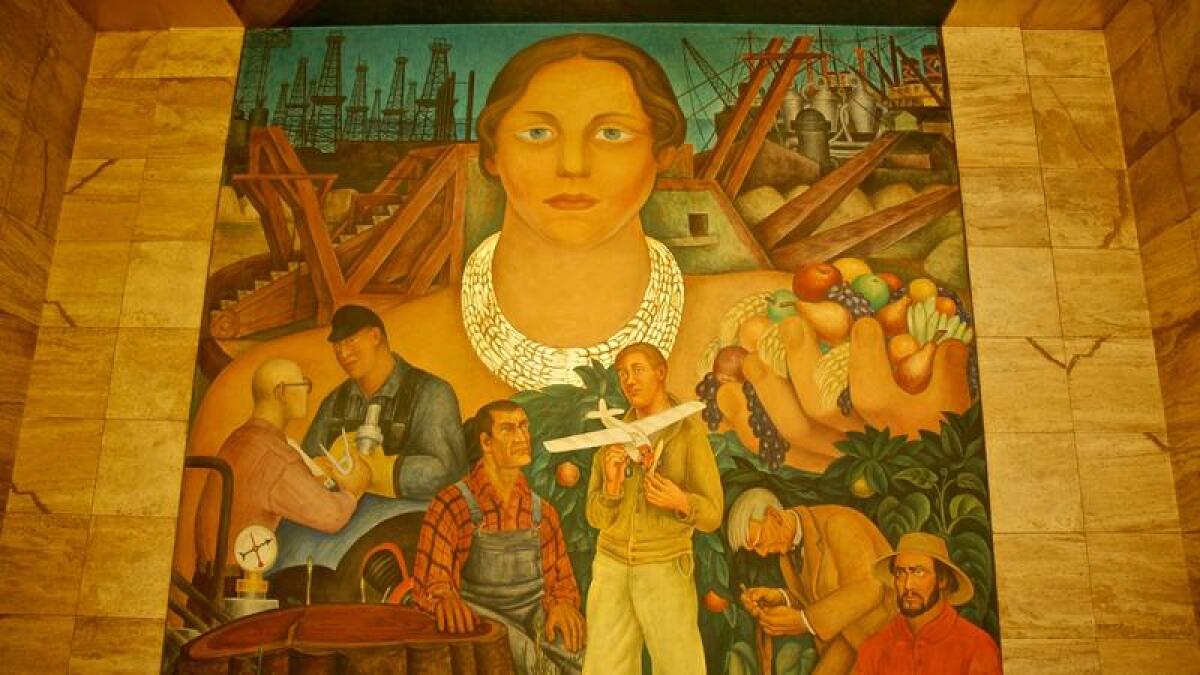
Why: A Rivera mural anywhere is worth attention. This one, painted in the heart of the city’s financial district during the early days of the Great Depression, is doubly worth it.
What: In 1931, Rivera painted “Allegory of California” on the wall and ceiling above the stairs to the Pacific Stock Exchange Lunch Club, now the City Club. The model for the archetypical California woman, presiding over the oil business, agriculture, shipbuilding, logging and other regional industries, was Helen Wills Moody, a homegrown tennis champion. It was Rivera’s first mural in the U.S. (with many more controversial projects to follow). Though the City Club is private, it allows San Francisco City Guides (a nonprofit group) to bring in tour groups on the first and third Mondays of every month at 3 p.m. (excepting holidays).
Where: City Club, 155 Sansome St., San Francisco, 381 miles northwest of downtown L.A.
How much: Free (donations appreciated).
Cling to the coast and remember the controversy at Northern California’s Sea Ranch
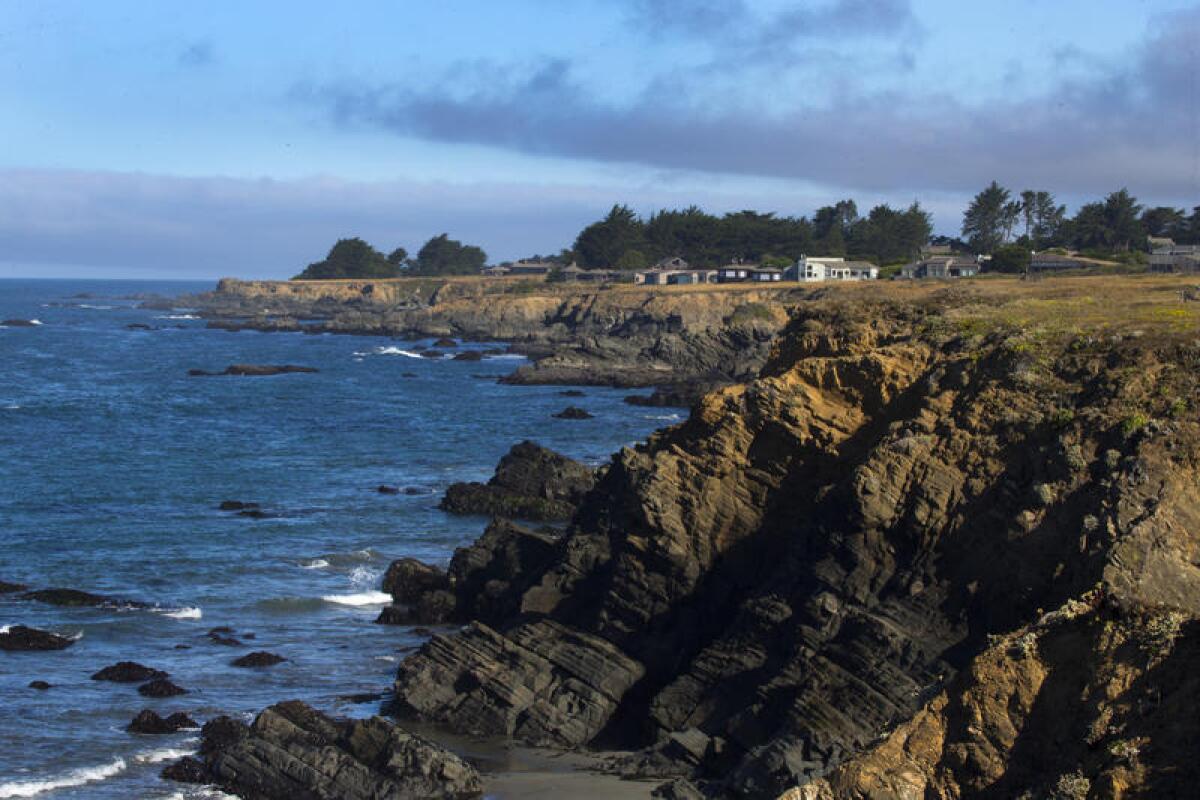
Why: These vacation homes and lodge hug a splendidly rugged stretch of the northern Sonoma County coast. And many of the buildings are designed to mimic the organic forms of the landscape.
What: From its controversial birth in 1965, Sea Ranch has been a utopian experiment: top-drawer architects building low-slung homes and a 20-room lodge in hopes that they’ll all but disappear into the larger seascape. Many environmentalists fought this project, lost and went on to spur creation of the California Coastal Commission in 1972. Meanwhile Sea Ranch’s first residential building, Condominium 1, has won many prizes from the American Institute of Architects and others.
Though the compound take up about 10 miles of coast, individual fences, lawns and most ornamentation are basically banned. There’s plenty of hiking, biking and kayaking, along with a links-style golf course. Celebrated landscape architect Lawrence Halprin was a key player in the resort’s development.
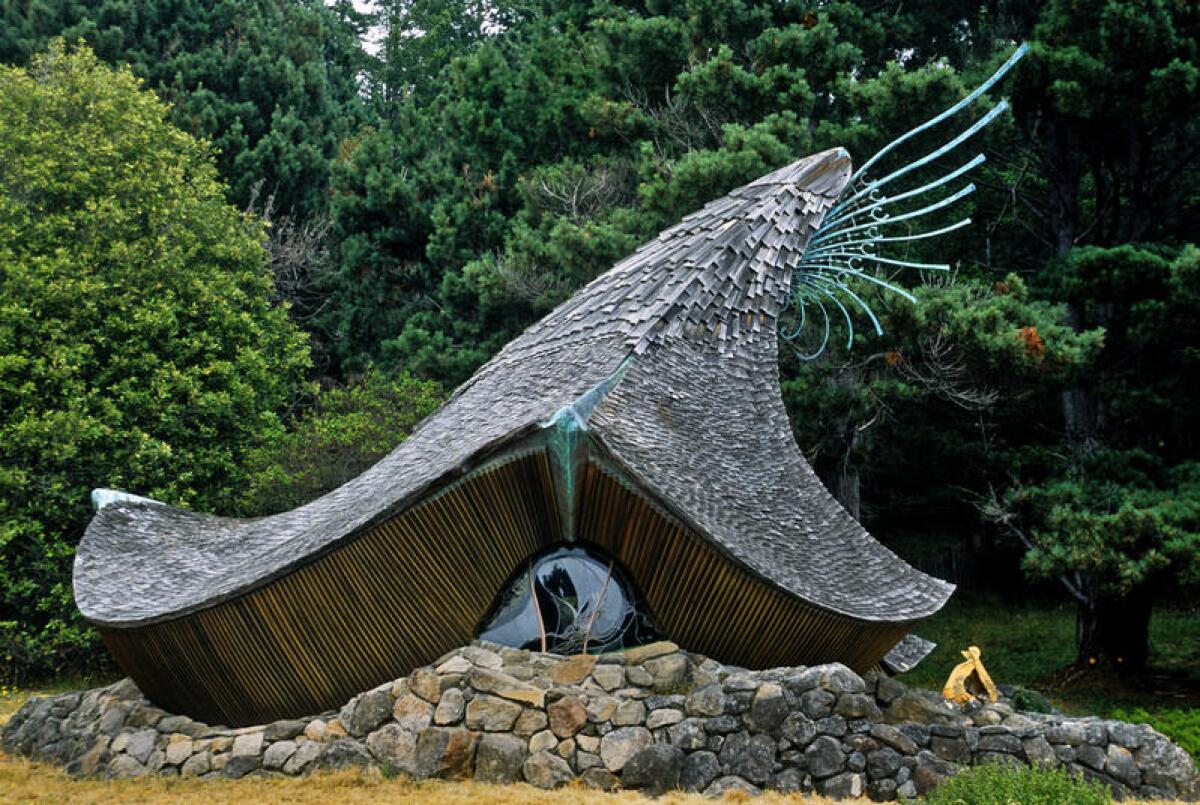
Several different agencies (including the ones below) handle the resort’s rental houses, so you may have to do a little sleuthing. Even if you don’t sleep at the resort, there are several public access points to the resort’s beaches.
Where: 60 Sea Walk Dr., The Sea Ranch, 110 miles northwest of San Francisco, 483 miles northwest of downtown L.A.
How much: Rental homes typically begin around $295 per night in summer, dipping lower the rest of the year. Most rooms at the Sea Ranch Lodge run $259-$319 on summer weekens, dipping as low as $229 on winter weekdays.
Info: Sea Ranch Lodge, Sea Ranch Rentals, Sea Ranch Getaways, Rams Head Realty & Rentals, Ocean View Properties, Vacasa, Sea Ranch Escape
Find a little slice of New England ... in Mendocino
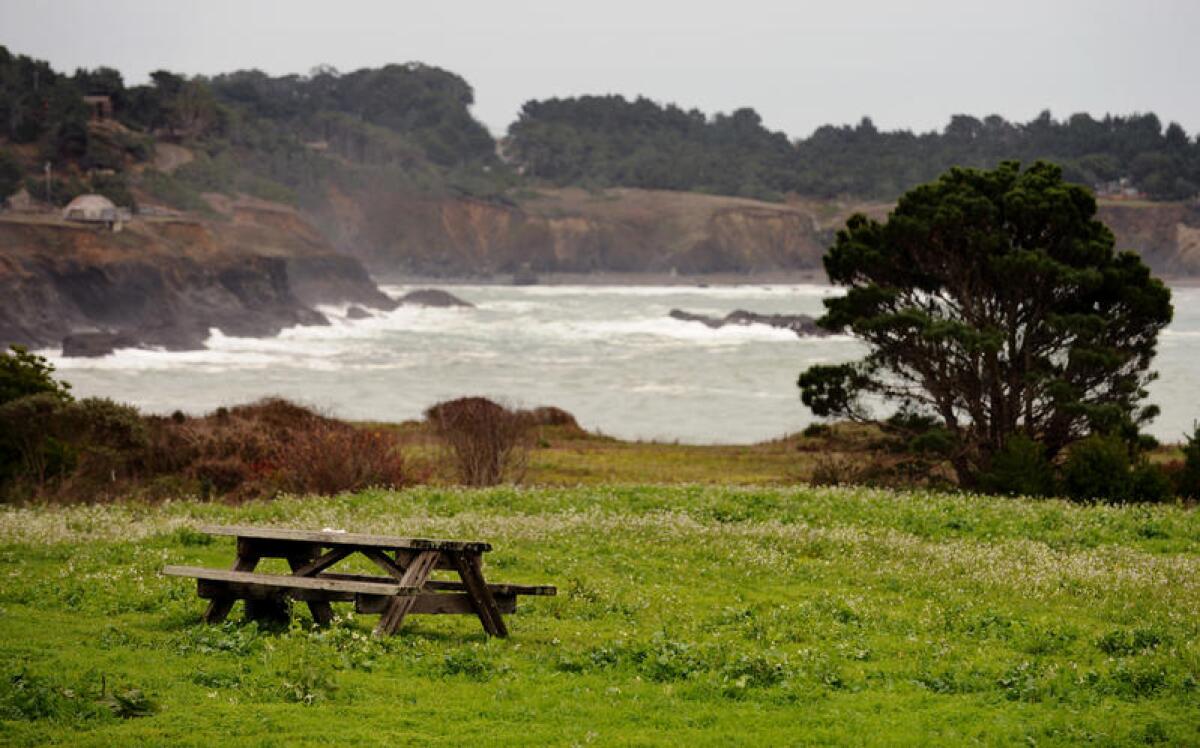
Why: Any sensible dictionary would have a picture of Mendocino next to the word “quaint.” And Angela Lansbury might be in the picture.
What: It’s an eerily attractive little town -- perhaps because it looks so much like a misplaced corner of Maine. In fact, it stood in for Cabot Cove, Me., on the Angela Lansbury TV mystery “Murder, She Wrote” (1984-1996).
Built on bluffs overlooking the Pacific, Mendocino (population: about 900) grew with the region’s logging boom in the late 19th century, revived with an influx of artists in the 1950s, and nowadays is dominated by galleries and B&Bs with nary a franchise in sight. Need a restaurant for a special dinner? For years, Cafe Beaujolais has been a favorite.
Where: Along Highway 1, 155 miles north of San Francisco, 528 miles northwest of downtown L.A.
How much: Dinners at Cafe Beaujolais go for $24-$35. Rooms at the Mendocino Hotel (built in 1878) begin at just under $100 nightly.
Info: Visit California
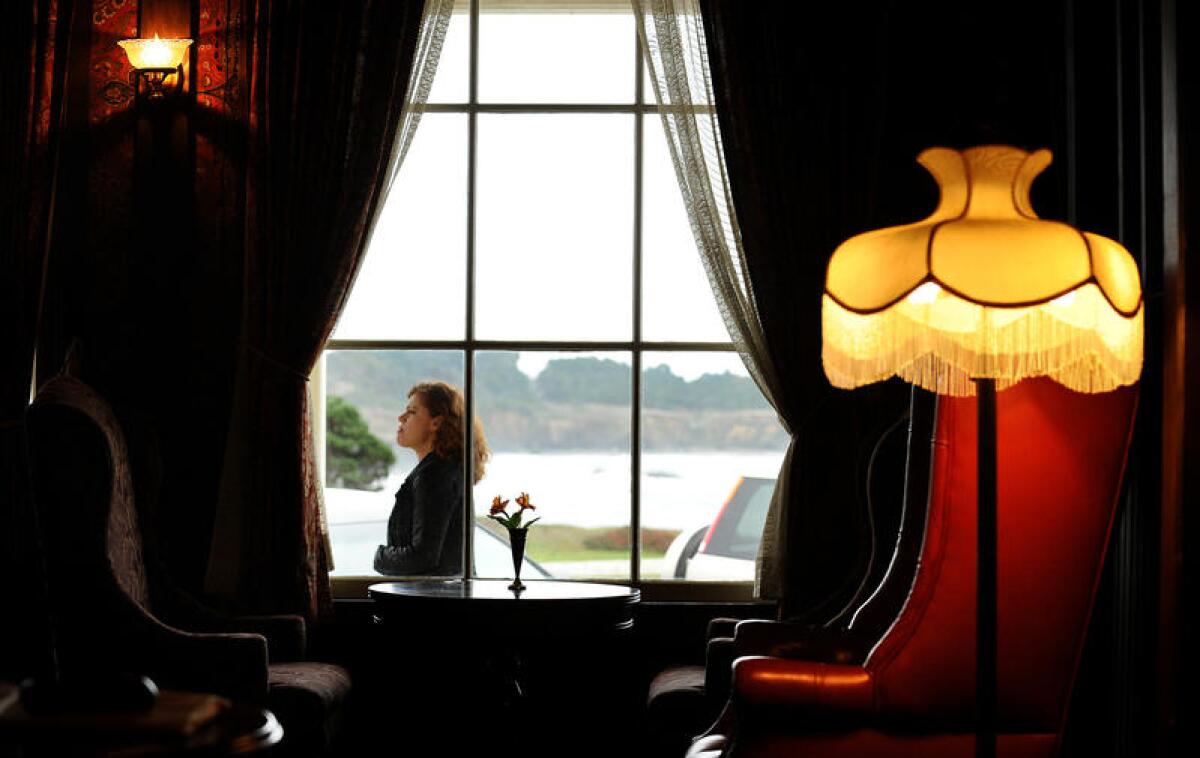
Share the streets of San Francisco with the lively riders of Critical Mass
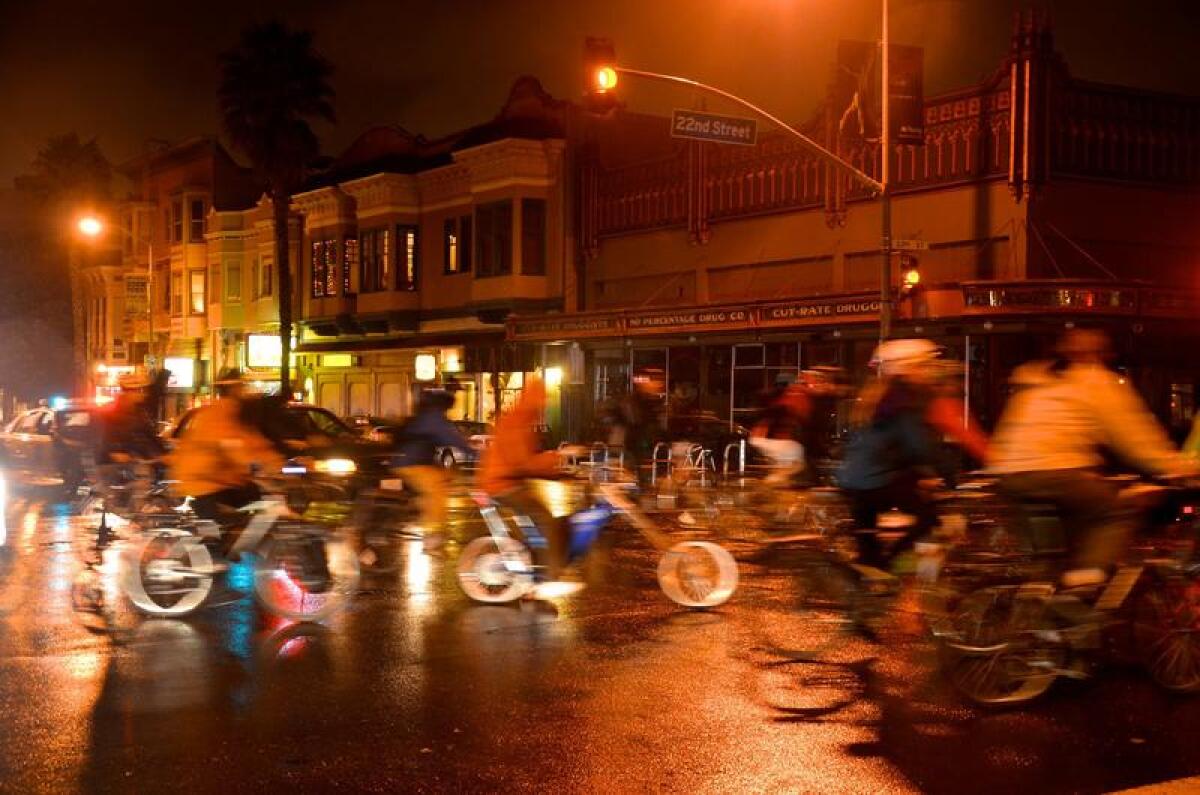
Why: San Francisco’s Critical Mass cyclists ride the streets on the last Friday night every month. Their numbers, appearance and attitude will tell you volumes about the city’s culture and the evolving state of the cycling class.
What: Critical Mass is a global movement, with rides in Buenos Aires, Karachi, Zagreb -- the list is almost endless. (The main Los Angeles ride, not to be confused with the less-frequent Ciclavia events on streets closed to other traffic, bills itself as “the largest community bicycle ride in the United States.” ) But San Francisco is where Critical Mass was born in 1992.
Though the rides always begin at the same place, this is a ritual without official leaders, and there’s no telling exactly where the ride will go. (But since the city is roughly seven miles by seven miles, you probably won’t end up too far afield.)
Bear in mind that some riders view this event as a political act. A few may behave obnoxiously, ignore traffic laws and/or common sense. Most riders, however, are nice people out for a good time and a little exercise. And any time you feel like peeling off on your own, you can.
Where: Rides typically begin at Justin Herman Plaza, at the foot of Market Street, at 5:30 p.m.
How much: Free.
Info: SF Critical Mass
See the rugged riverside where California’s Gold Rush began
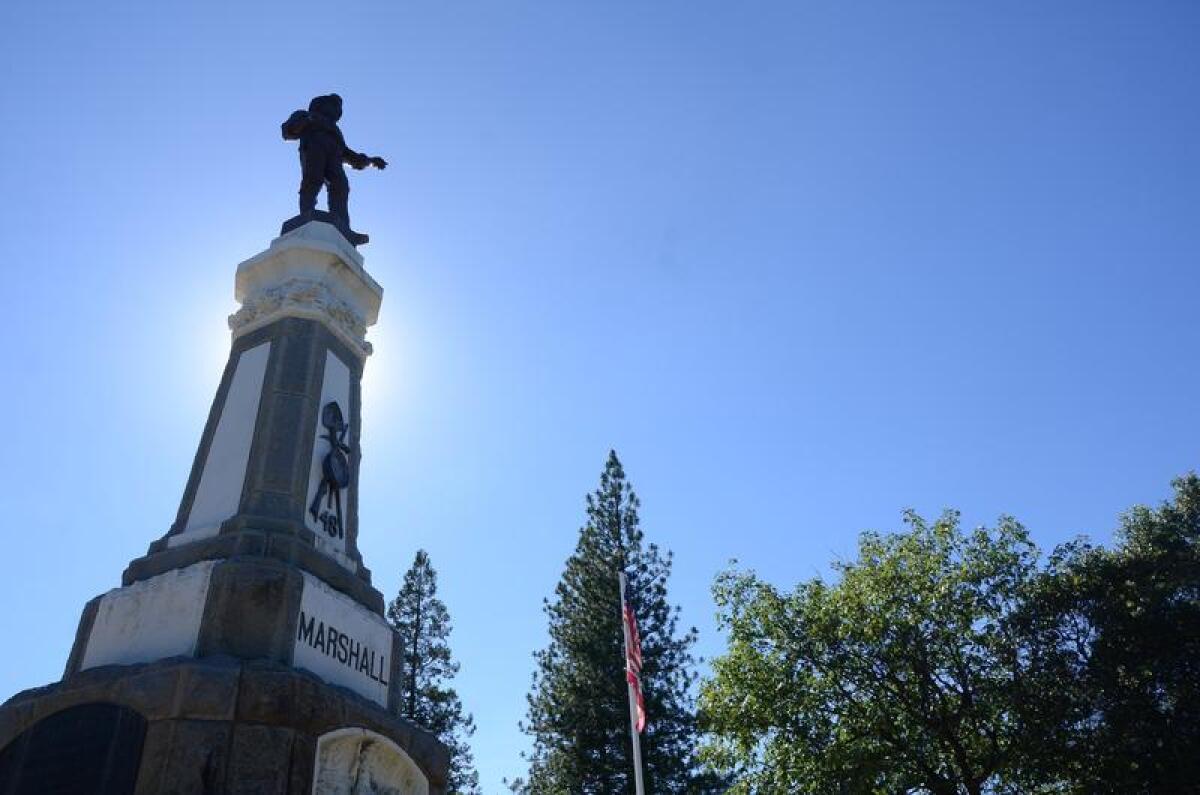
Why: This was the place. Without the discovery of gold in Coloma in January 1848, our state wouldn’t be what it is. And nearby Placerville will give you a taste of how fast things changed.
What: Marshall Gold Discovery State Historic Park is a big, rambling place, with a hilltop memorial, a bunch of replica buildings, a museum, frequent gold-panning, blacksmithing and other activities, and paths along a stretch of the American River (South Fork) where Sutter’s Mill stood before it burned in the 1860s. (You may be shocked to learn how rich Mr. Sutter didn’t get, by the way.)
But temper your expectations.
Damage from high waters earlier this year has closed off some of the riverside. And growth of the oak trees has covered most of the views from the hilltop. If you’ve already had a great state-park experience in Sutter’s Fort in Sacramento or the reconstructed town of Columbia State Historic Park, (82 miles to the south), this spot might not quicken your pulse in the same way.
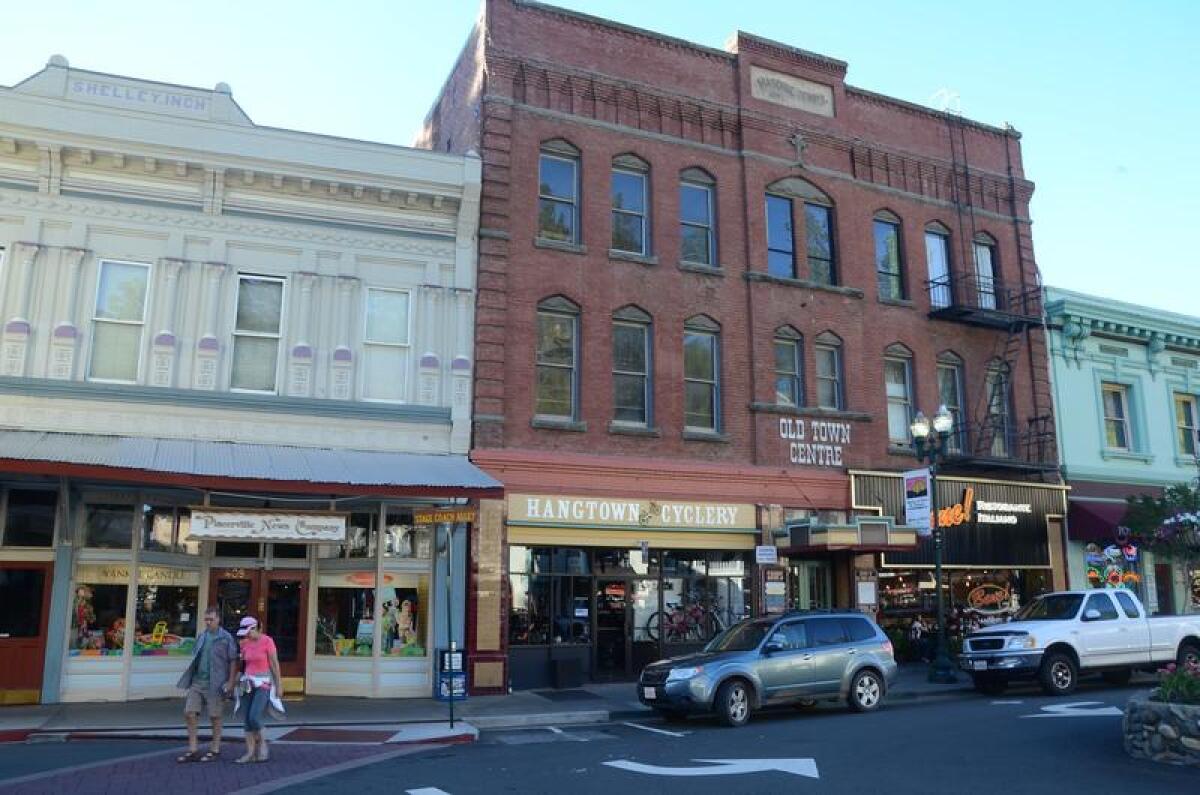
Fortunately, there’s rafting handy on the South Fork of the American River, and there are several enduring Gold Rush towns nearby, including Placerville, once notorious for its hangings. (In fact, one tavern/ice cream shop announces itself by hanging a mannequin in a noose from its facade.) On my last trip to the area, my favorite meal was mushroom ravioli with salmon at the Heyday Cafe on Placerville’s Main Street.
Where: Marshall Gold Discovery State Historic Park, 310 Back Street, Coloma, 46 miles northeast of Sacramento, 437 miles north of downtown L.A. Placerville is 8 miles southeast of the park along Highway 49.
How much: Park admission is $8 per car. Dinners at the Heyday Cafe run $17 to $28.
Drive the Tioga Pass and tramp around Tuolumne Meadows
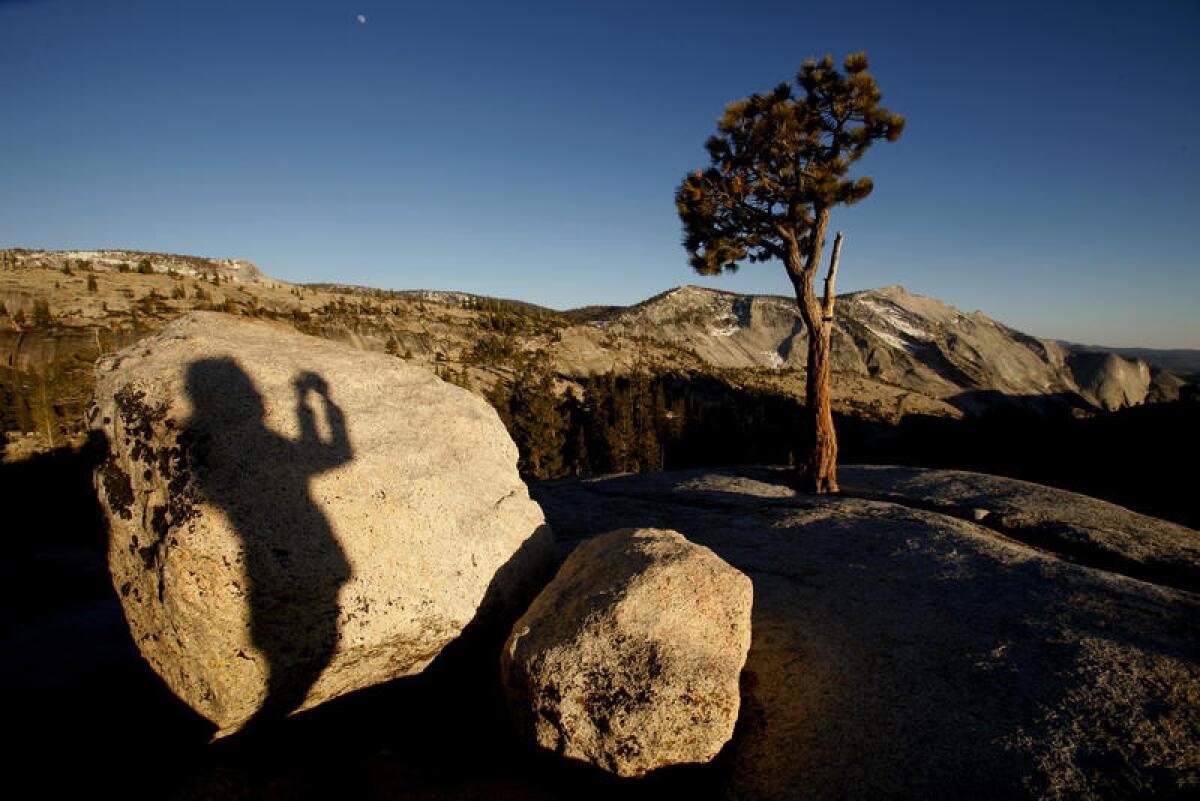
Why: This is the back door to Yosemite National Park, open only in warmer months. It takes you from the Owens Valley and Mono Lake into Sierra backcountry that’s free of the summer crowding that sometimes afflicts Yosemite Valley.
What: This route gives you a chance to savor Tuolumne Meadows, Olmsted Point and Tenaya Lake, among other highlights in Yosemite’s high country. The road usually opens in May and closes in November. But there was so much snow in the winter of 2016-2017 that the road didn’t open until June 29, 2017 -- the latest date in 19 years. For road status, check with the park to be sure.
Where: Tioga Road (also known in the park as Highway 120) runs 59 miles from its eastern terminus at U.S. 395 in Lee Vining to its intersection with Big Oak Flat Road at Crane Flat. From there, many travelers take Big Oak Flat Road 16 more miles to Yosemite Valley. The intersection of Tioga Road and big Oak Flat Road is 347 miles north of downtown L.A.
How much: Yosemite park admission is $30 per car for a seven-day pass.
Info: Yosemite National Park
Watch gold country and wine country collide in Nevada City
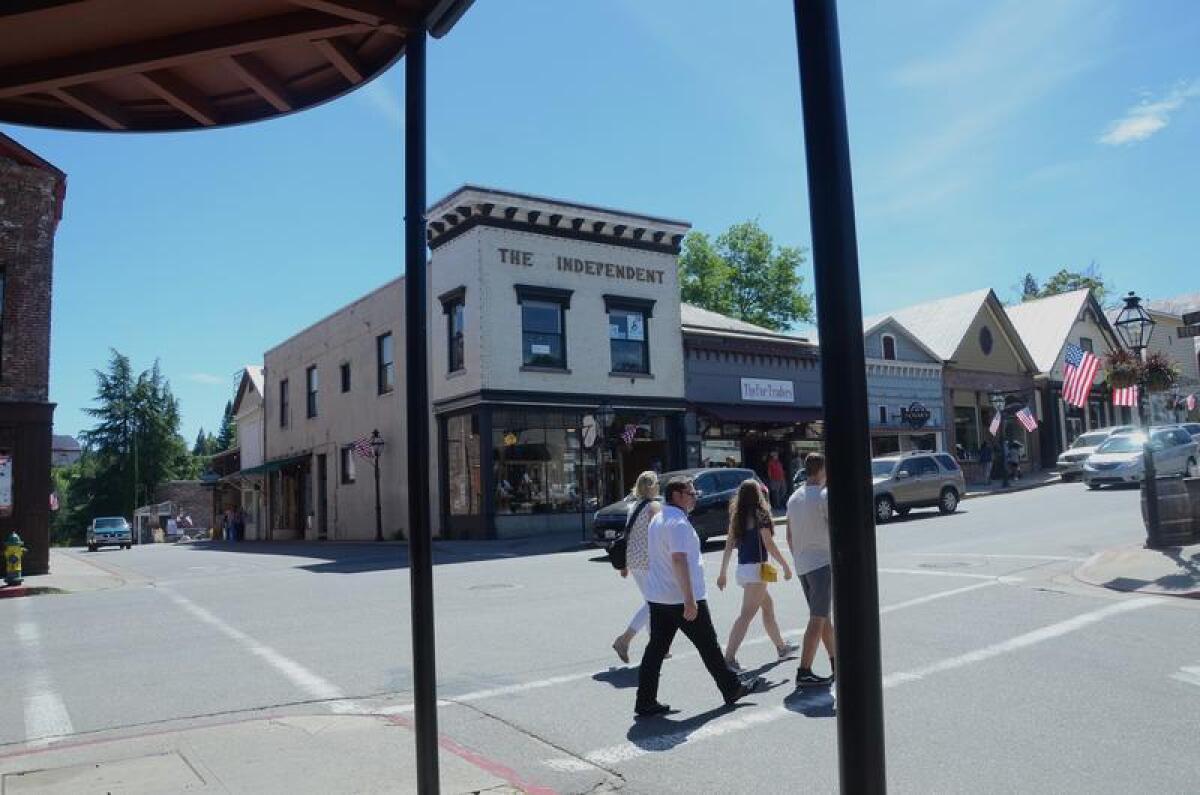
Why: Gold Rush nostalgia has never looked so prosperous.
What: Nevada City (population: about 3,000) was once a gritty Gold Rush town, but nowadays it’s a spiffy wine-country town. The downtown historic district is full of Victorian-era buildings -- 93 of them, to be exact, including the Nevada Theater, where Mark Twain lectured in the 1860s. These days it offers movies and live performances and collaborates with the local public radio station, with which it shares a wall. Broad Street teems with independent restaurants and shops, and three local wineries have tasting rooms in town.
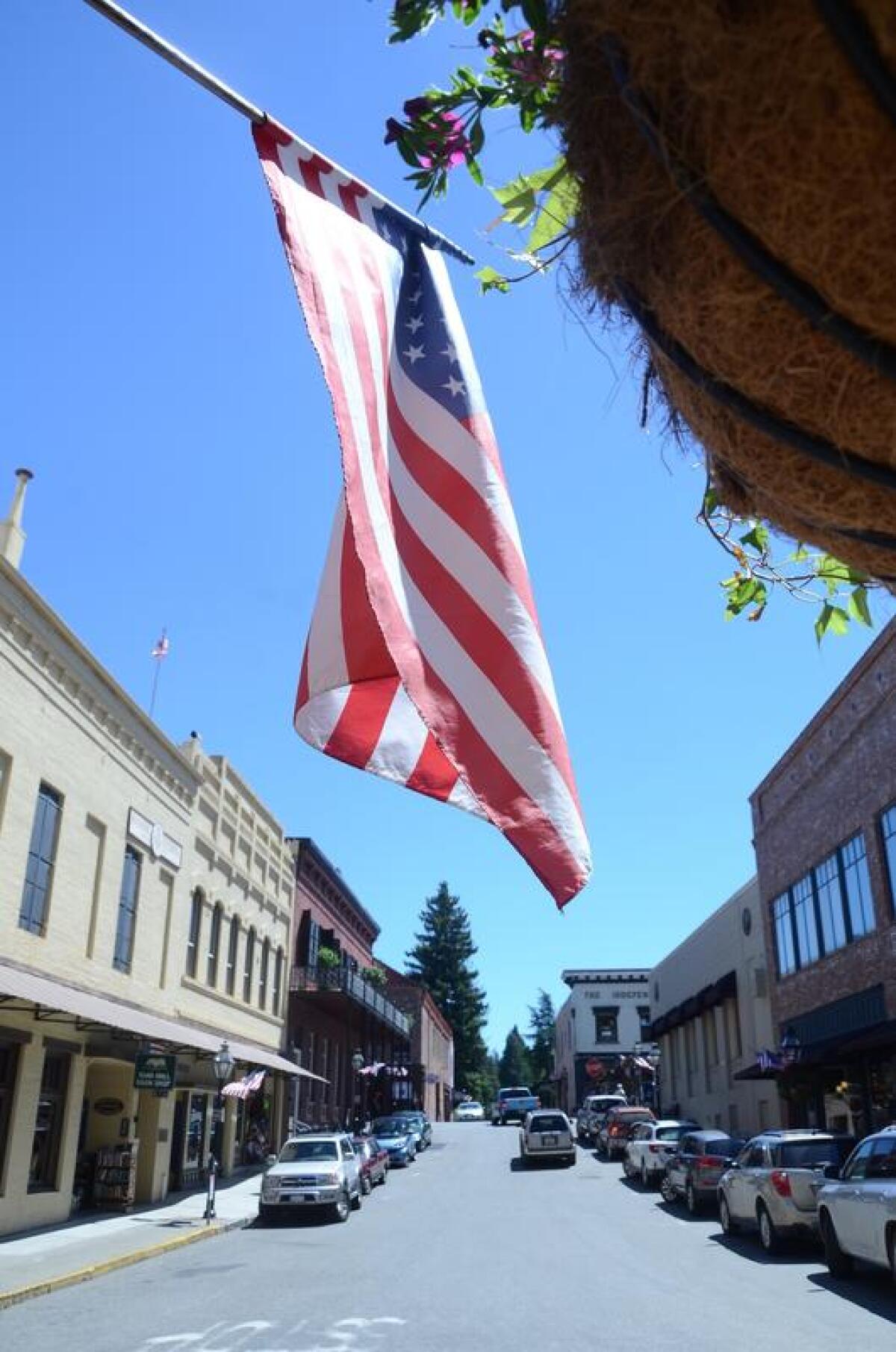
In general, Nevada City seems to have more than its share of folk music, and there’s an annual bluegrass festival in neighboring Grass Valley.
When I dropped by on a Thursday in June, parking downtown was impossible, but just about everything else a tourist could want is right in place. If you stop at the Nevada City Chamber of Commerce on Main Street, they’ll give you a map for a self-guided walking tour.
Where: The Chamber of Commerce office is at 132 Main St., Nevada City, 61 miles northeast of Sacramento, 446 miles north of downtown L.A.
How much: Free to wander. If you stop for salad and chipotle potato soup at the South Pine Cafe (as I did), that’ll be $8.75.
Admire Chico and the Mansion (and John Bidwell, the pioneer behind them)
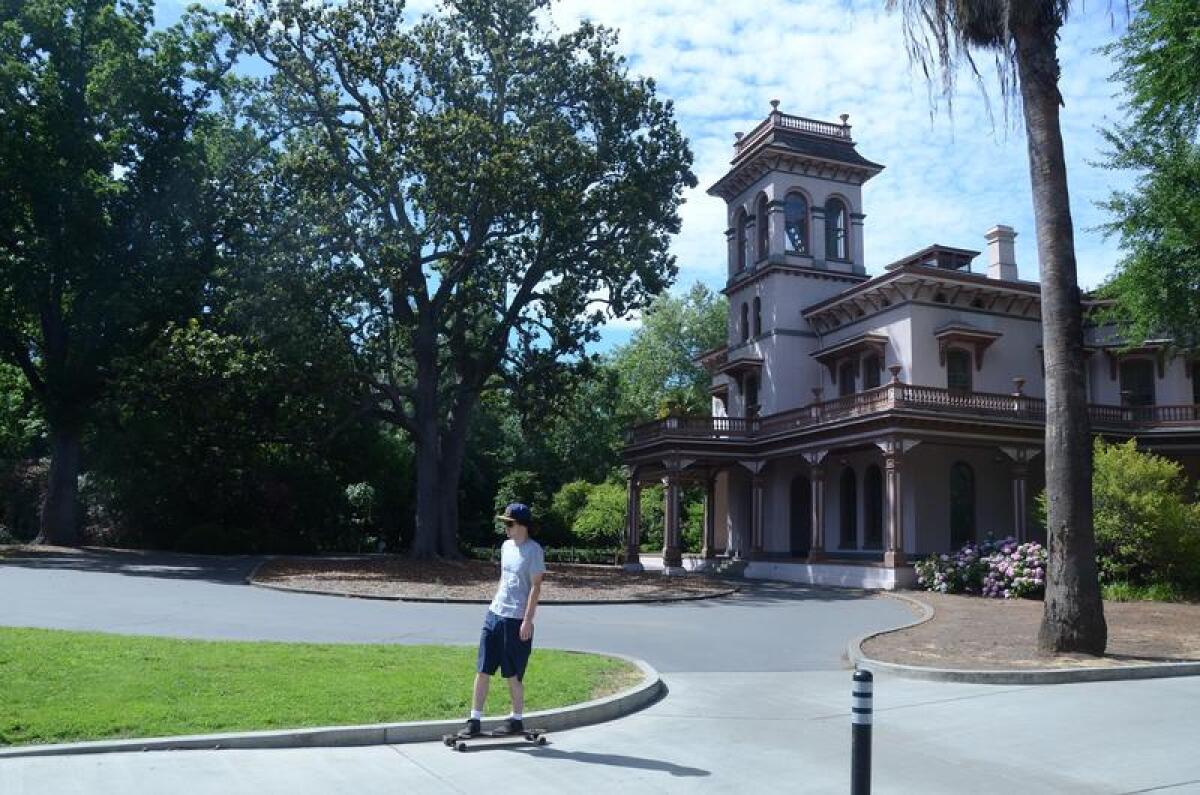
Why: John Bidwell is a classic 19th century California success story, a pioneer, gold-miner, farmer and politician. He founded Chico and left behind the Bidwell Mansion, now a state park.
What: The mansion, a tall, Victorian-Italian wonder completed in 1868, opens for interior tours on Saturdays, Sundays and Mondays. Just across Big Chico Creek, you can take a spin around the Cal. St. Chico campus (founded in the 1880s) and its handsome brick buildings. (Yes, Playboy named this the nation’s hardest-partying school in 1987. Now those 20-year-olds are 50.) Last year Money magazine ranked Chico State the 40th best bargain among the nation’s public colleges.
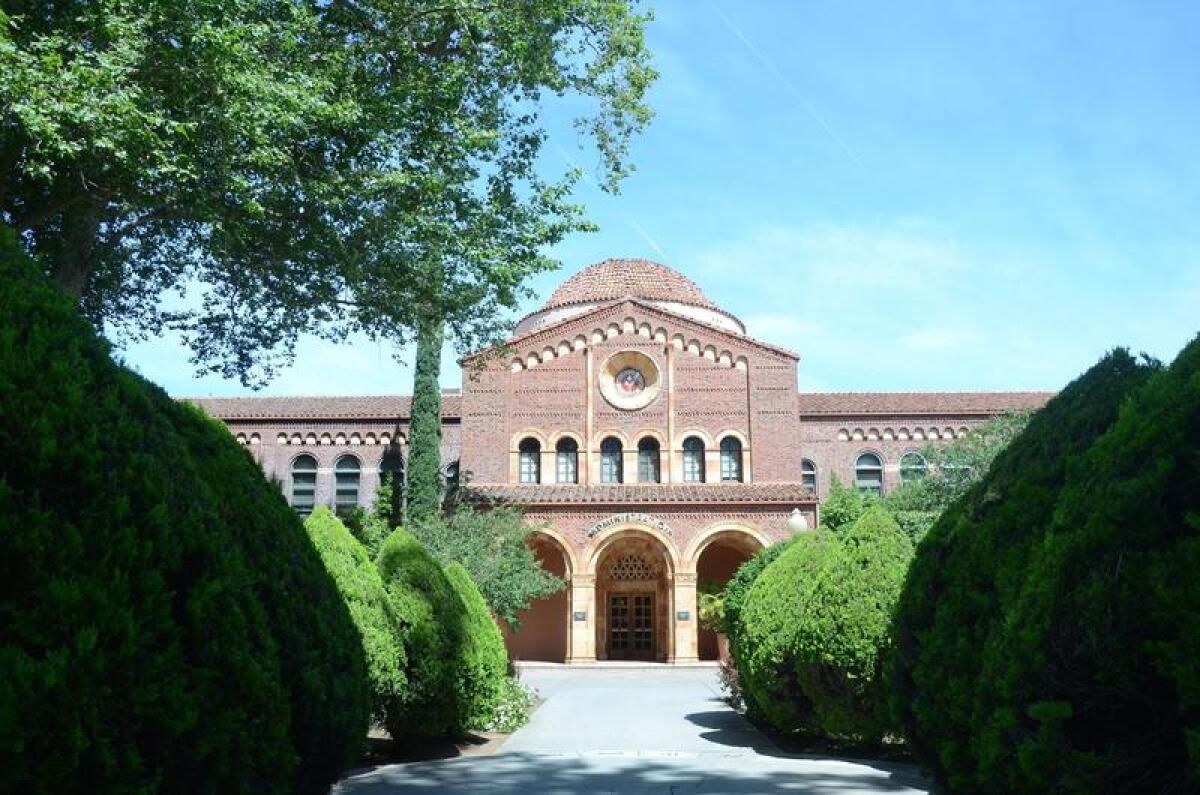
The shops, restaurants and bars of Main Street, Broadway and City Plaza are within a few blocks of the campus, not to mention the National Yo-yo Museum and the artsy SoPo neighborhood (south of the Post Office). The sprawling Bidwell Park -- which follows Big Chico Creek for miles, begins four blocks from the mansion at Camellia Way and Orient Street.
Where: Bidwell Mansion stands at 525 Esplanada, Chico, 473 miles north of downtown L.A..
How much: The mansion tour is $6 per adult, $3 per child ages 5-17. A year at Chico State is about $24,000, counting tuition, fees, room and board.
Info: Bidwell Mansion, downtown Chico
Float on Shasta Lake, surrounded by 365 miles of shore, and houseboats aplenty
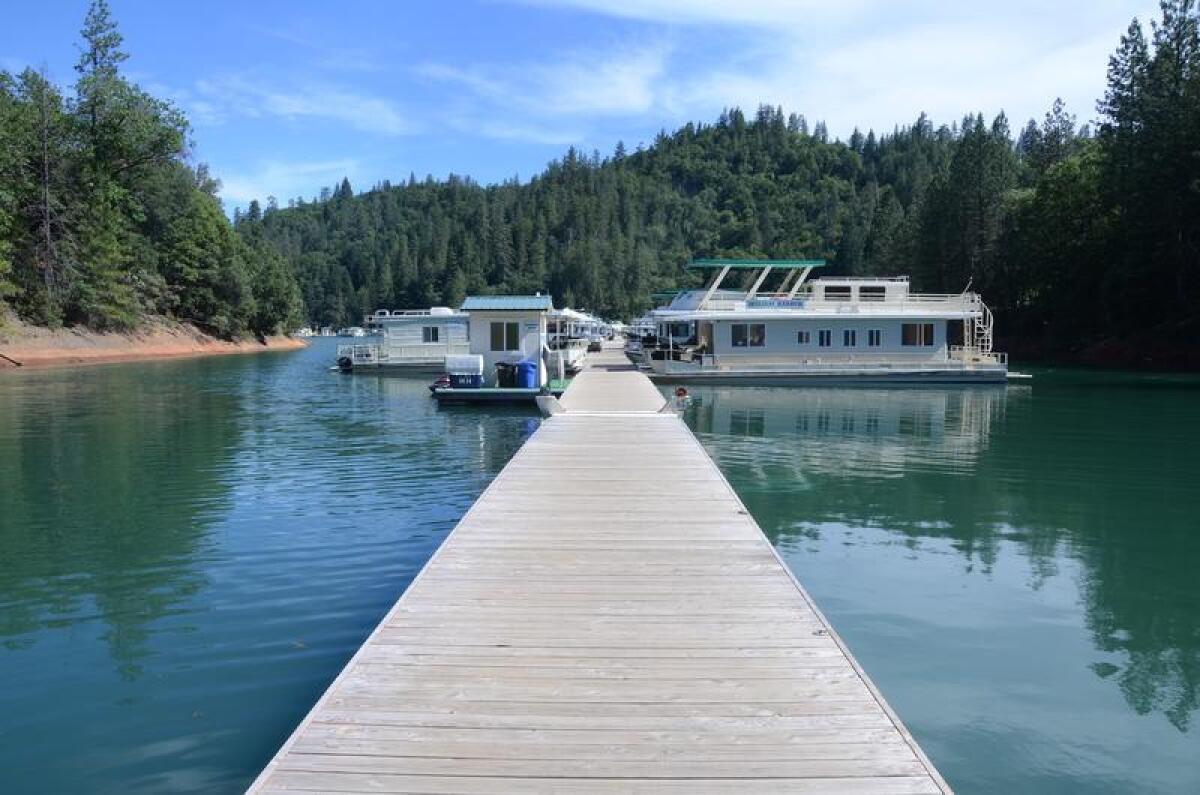
Why: Shasta Lake has about 365 miles of shoreline. That’s basically Los Angeles, Orange and San Diego counties, combined and doubled. Since its creation in the 1940s (when Shasta Dam went up), the lake has become a summer haven for houseboats by the hundreds
What: The lake (really a reservoir) has four “arms” that include several marinas. The largest is Bridge Bay (where there’s also a bar and restaurant). Another is Holiday Harbor, easily seen to the right as you drive north on Interstate 5. (I didn’t have time to rent a houseboat on my trip there in June, so I tooled around Holiday Harbor on a fishing boat, admiring the bigger boats.) The green water, the red earth along the shoreline, the forested slopes, the mountains that drop almost straightaway into the water -- it’s a rare, becalming landscape. And usually quite warm in summer.
Even if you’re not ready to rent a houseboat, you can take a dinner cruise, a tour of the Lake Shasta Caverns or a free hourlong tour of the Shasta Dam, the engineering marvel that makes all this possible. (There are six tours a day, seven days a week.) Not an aspiring engineer? No worries. Head over to the dam around sunset, and walk, run or ride a bike across the top. You’ll see the vast lake above, a valley below, and a whole bunch of concrete and trickling water in between.
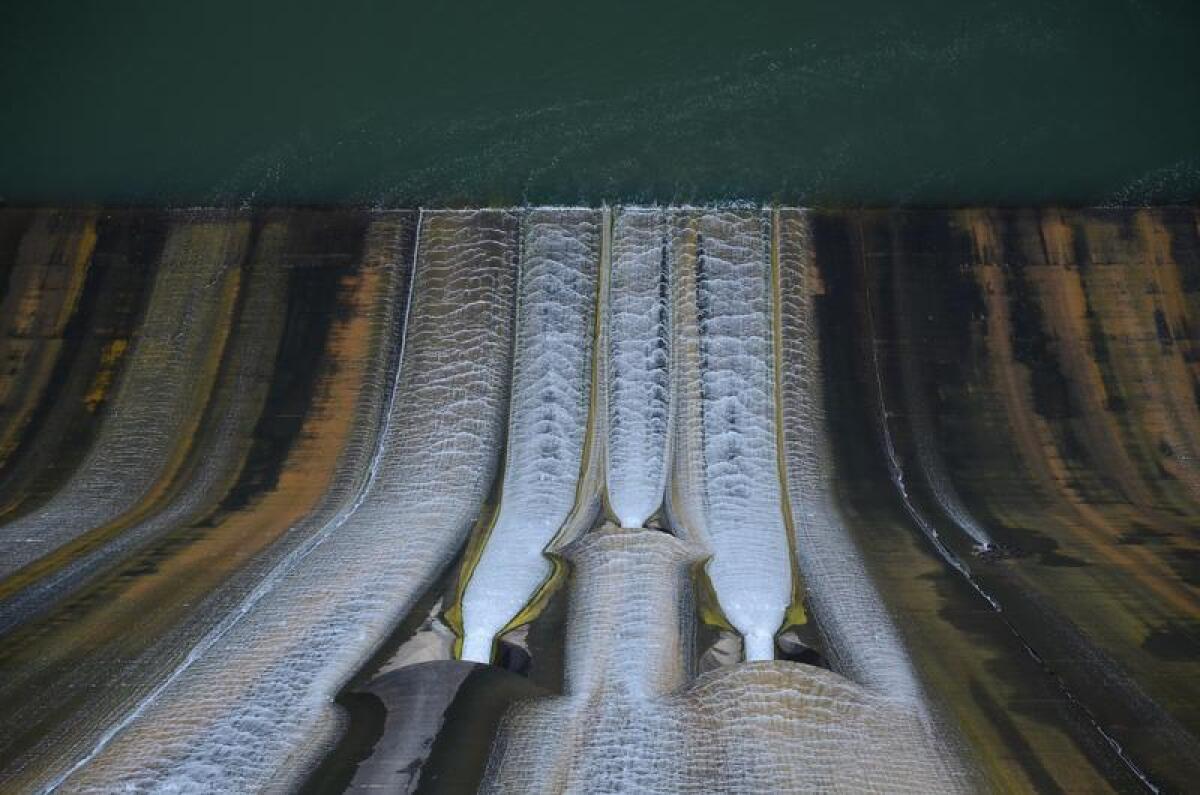
Where: The dam, at 16349 Shasta Dam Blvd., Shasta Lake, is about 11 miles north of Redding, 561 miles north of downtown L.A. Bridge Bay is an 11-mile drive northeast of the dam and Holiday Harbor is 6 miles north of Bridge Bay.
How much: Dam tours are free. Fishing boats start around $20 an hour. Summertime houseboat rentals begin at about $480 per night for a vessel that sleeps 6 in Holiday Harbor; or $550 per night for a vessel that sleeps 8 in Bridge Bay.
Info: Visit California
Hike above the roar and mist of McCloud Falls in Northern California
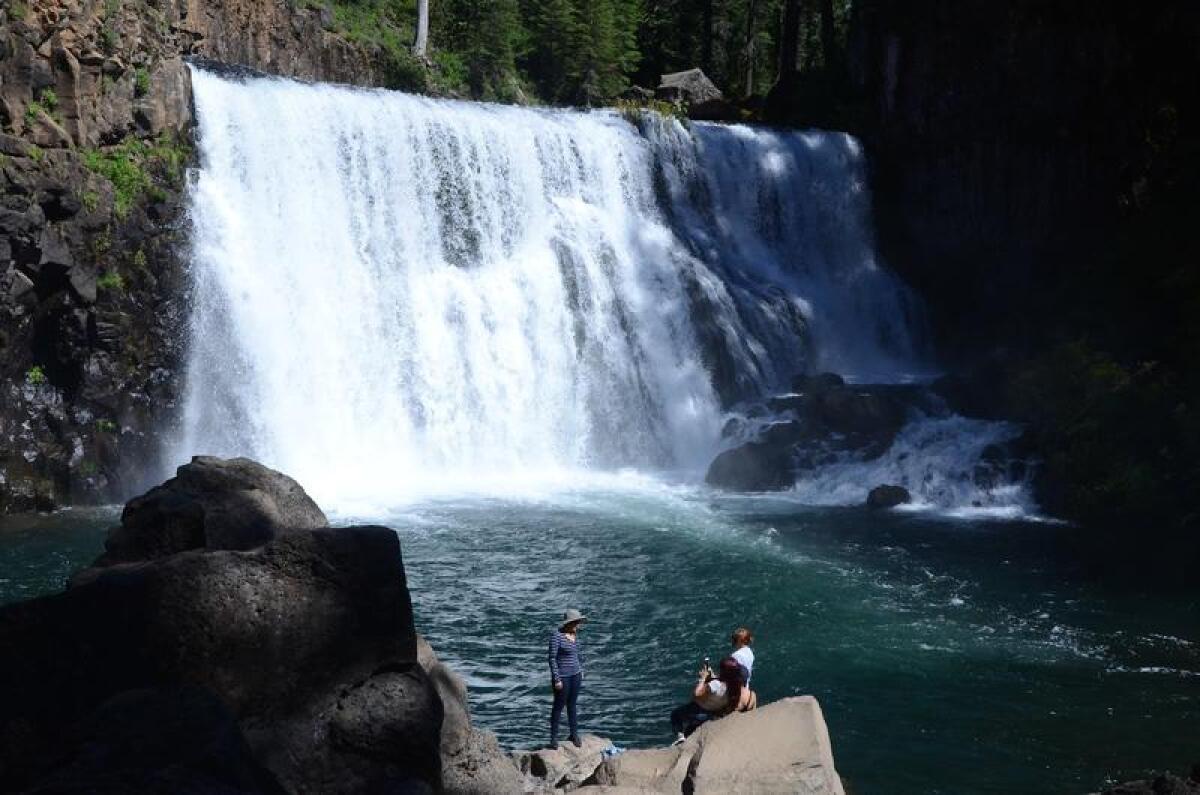
Why: Northern California has waterfalls the way Southern California has beaches. You appreciate different ones for different things. And in the case of McCloud, you get three falls along a trail that’s 3.5 to 4 miles round trip, depending on who counts.
What: The Lower Fall and Upper Fall are smallish and calm enough that people often swim in their pools. The Middle Fall is a different animal -- about 50 feet tall and 80 feet across, with lots of water in motion. Still, there are plenty of rocks and fallen trees to scramble on (if you’re bold). Here, the trail steepens and carries up to a high bluff top, from which the Middle Fall looks tiny. But you know better. All three falls are part of the Shasta-Trinity National Forest, with a campground and picnic areas nearby. In fact, you could dodge hiking altogether and visit each cascade via the network of roads that connect the river, campgrounds and main highway.
Anglers, take note: The fly-fishing in the nearby McCloud River Preserve is said to be some of the best in California.

Where: McCloud Falls are just off Fowler Public Camp Road (a.k.a. McCloud River Loop), 5.5 miles east of the town of McCloud along Highway 89). That’s just 39 miles northwest of Burney Falls on the same highway, 77 miles northeast of Redding, 624 miles north of downtown L.A.
How much: free.
Info: Hike Mt. Shasta
Clamber up to join the granite, sky and Mt. Shasta at Castle Crags State Park near Redding
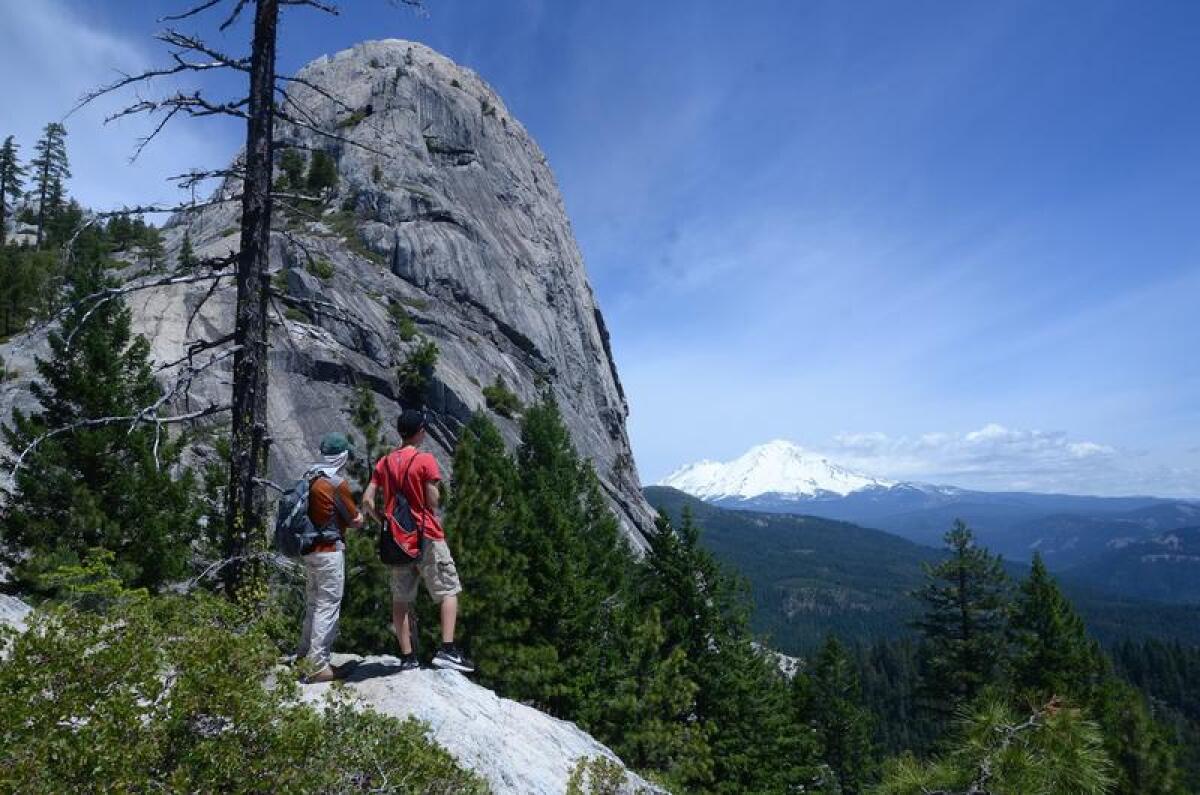
Why: The last half-mile of this trail puts you in the sky, basically, with a passel of granite peaks. Or crags, to use the local word.
What: Castle Crags is a vertical place – a roughly 4,000-acre park with just 28 miles of trails, because everything is so rocky and steep. Even if you don’t finish the park’s marquee route, the Crags Trail, you’ll be grateful for coming close. It’s a 5.5-mile round-trip route, beginning with a mile of trudging through forest. Then the views begin and the rocks begin to take over the landscape. And Mt. Shasta pops up. It gets really steep toward the end (you’ll gain 2,200 feet of elevation is that 2.75 miles). But the views are so breathtaking that it seems a fair trade.
After you’ve doubled back to the starting point, give yourself a few more minutes before leaving the park. Near the entrance is a suspension bridge over the Sacramento River. The trail there is flat and shady, and there are picnic tables handy.
Also worth noting: There are 76 campsites in the park, and the Pacific Crest Trail passes through, bisecting the Crags Trail.
Where: 20022 Castle Creek Road, Castella, 48 miles north of Redding, 589 miles north of downtown Los Angeles.
How much: $8 per vehicle.
Info: Castle Crags State Park
Bow before Mt. Shasta, North Star of Northern California
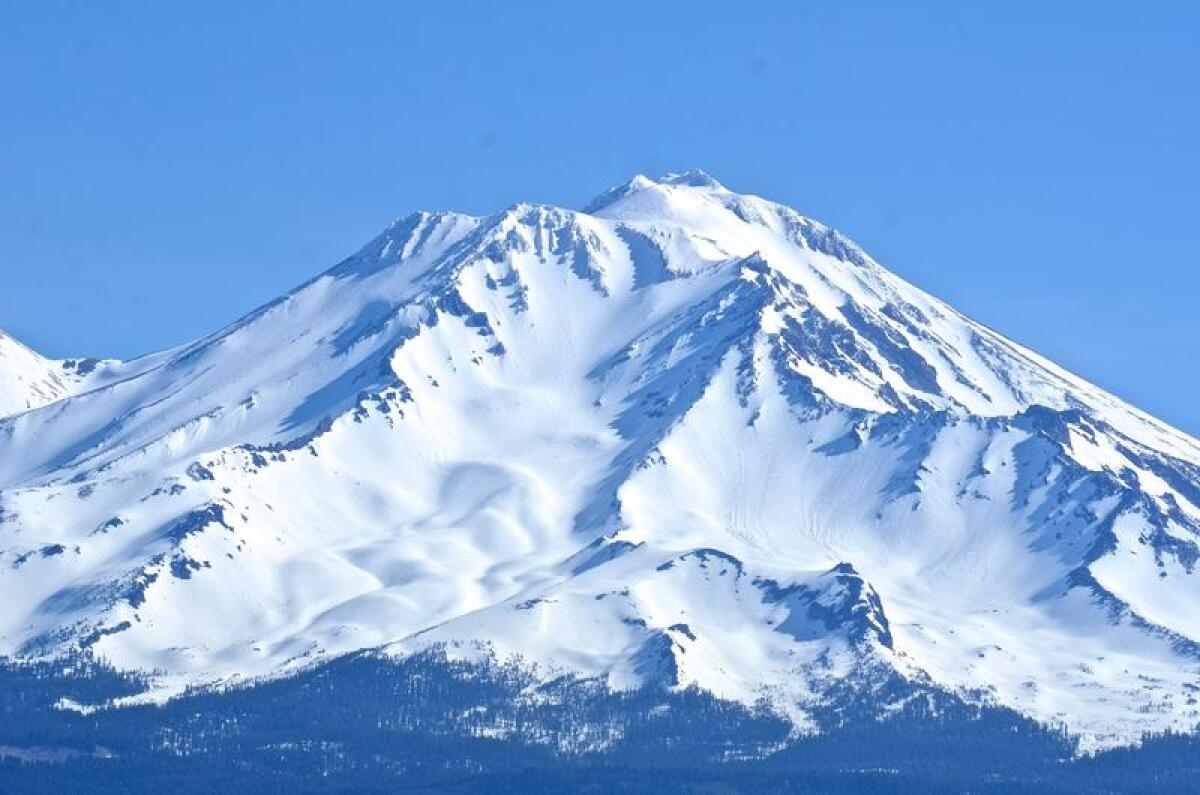
Why: The Shasta Cascade region is full of volcanic mountains, green forests and trout-bearing rivers. But this is its defining landmark. Everywhere you turn, there’s Mt. Shasta. And it never seems to get old.
What: Mt. Shasta stands 14,179 feet above sea level. Climb it? You could try. But that might take two or three days. There’s no well-trod trail to the top, like the one on Mt. Whitney. And the most popular route is called Avalanche Gulch. (I’ll pass.) But you can also pay tribute more discreetly.
You could gaze meaningfully in its direction while strolling to dinner in the adjacent and prosperous little city of Mt. Shasta. (try Lilys restaurant). Or you could hike in Castle Crags State Park, which is full of granite-strewn slopes offering northerly views toward Shasta, especially along the park’s Crags Trail. There’s also the Black Butte Trail, a 5.2-mile round-trip hike that takes you up, up, up a cinder cone just west of Shasta.
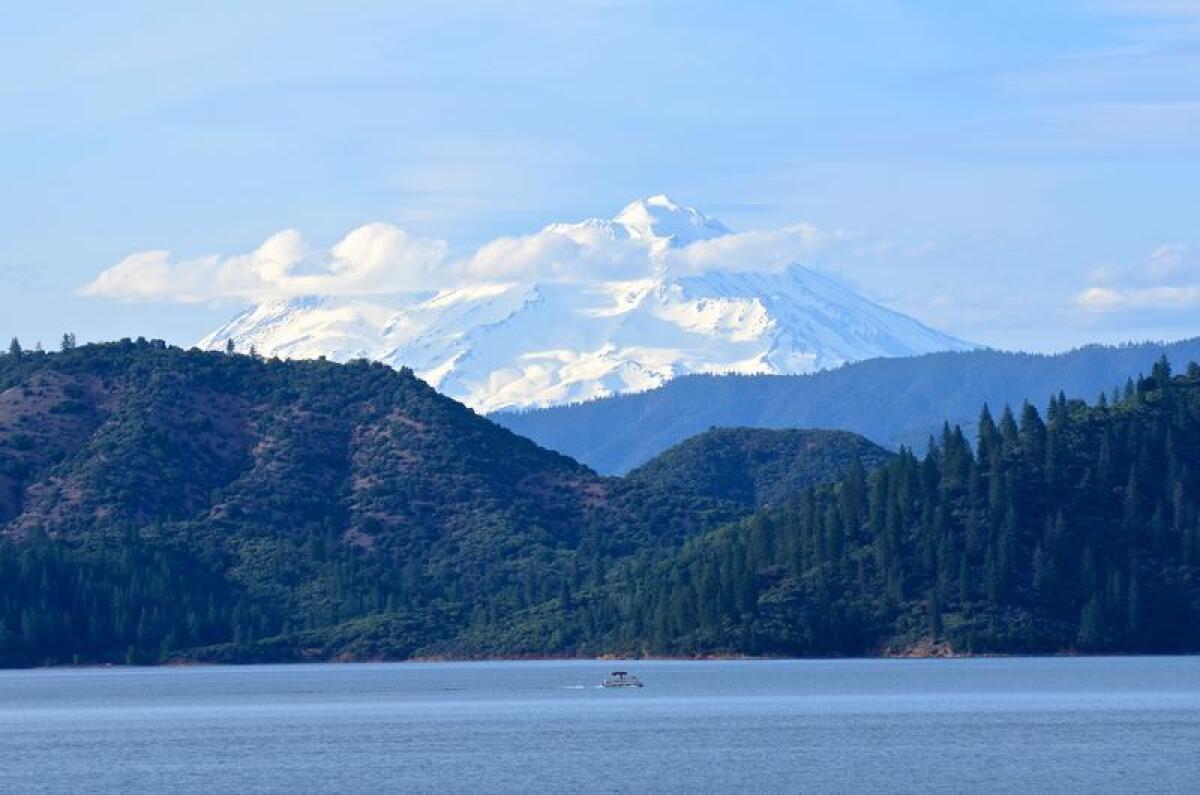
For road-trippers, there’s Volcanic Legacy Scenic Byway, which reaches north to Crater Lake (in Oregon) and south to Lassen Volcanic National Park and environs. Or just stay alert along Interstate 5. Eventually that great hulk — a very white hulk in spring and early summer — will rise up like a high-country hallucination.
Where: The mountain, part of Shasta-Trinity National Forest, stands 62 miles north of Redding, 612 miles north of downtown L.A.
How much: It’s free to look. Dinner dishes at Lilys run $13 to $30.
Drink in the mist from Northern California’s Burney Falls, 129 feet tall and handsome as they come
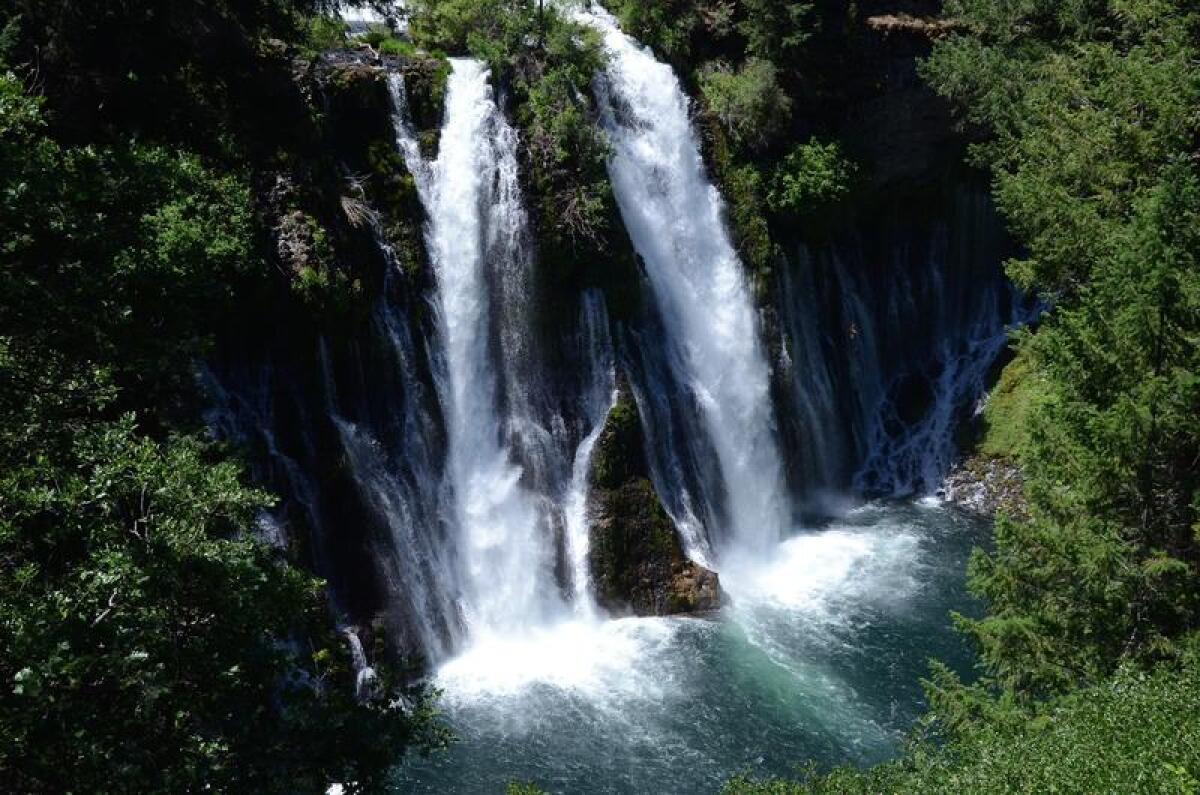
Why: This isn’t the state’s tallest or widest waterfall. But if you haven’t confronted it yet, you need to. The way its waters thunder down, it looks like a Greco-Californian temple, with a pair of robust columns framing hundreds of busy rivulets. The flow is about 100 million gallons per day.
What: Burney Falls is about an hour outside Redding, and the approaching path makes the landmark even better. First you confront the falls from above, looking down slightly across a gorge. Then you descend by trail, facing the water as you go. Once you’re halfway down, the water seems wider. When you reach the foot, the roar seems far more powerful -- and mist covers everything. You can scramble across rocks to reach the edge of the pool, if you dare. (The winter’s storms did force temporary closure of one popular trail; check the park website for trail closure before arrival.)
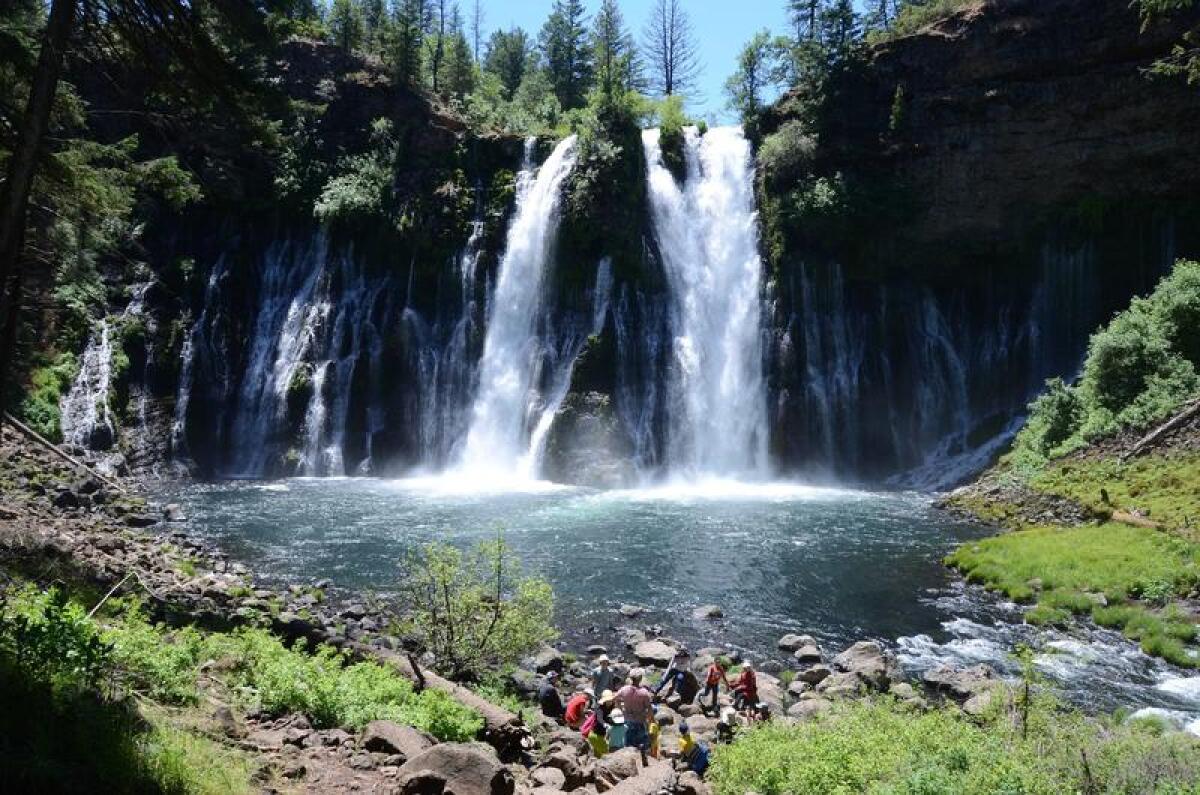
By the way, you might spot an angler or two near the top of the falls. But be warned: State restrictions ban visitors from approaching within 20 yards above the top of the falls, with greater distances required at the bottom. If you stick to the trails, you’ll be fine.
The 910-acre park also has a campground, cabins, a marina on Lake Britton and a general store.
Where: Highway 89, 6 miles north of Highway 299, 64 miles northeast of Redding, 612 miles north of downtown L.A.
How much: Admission to state park is $8 per car.
Cross Calatrava’s Sundial Bridge (and look for trout) in Redding
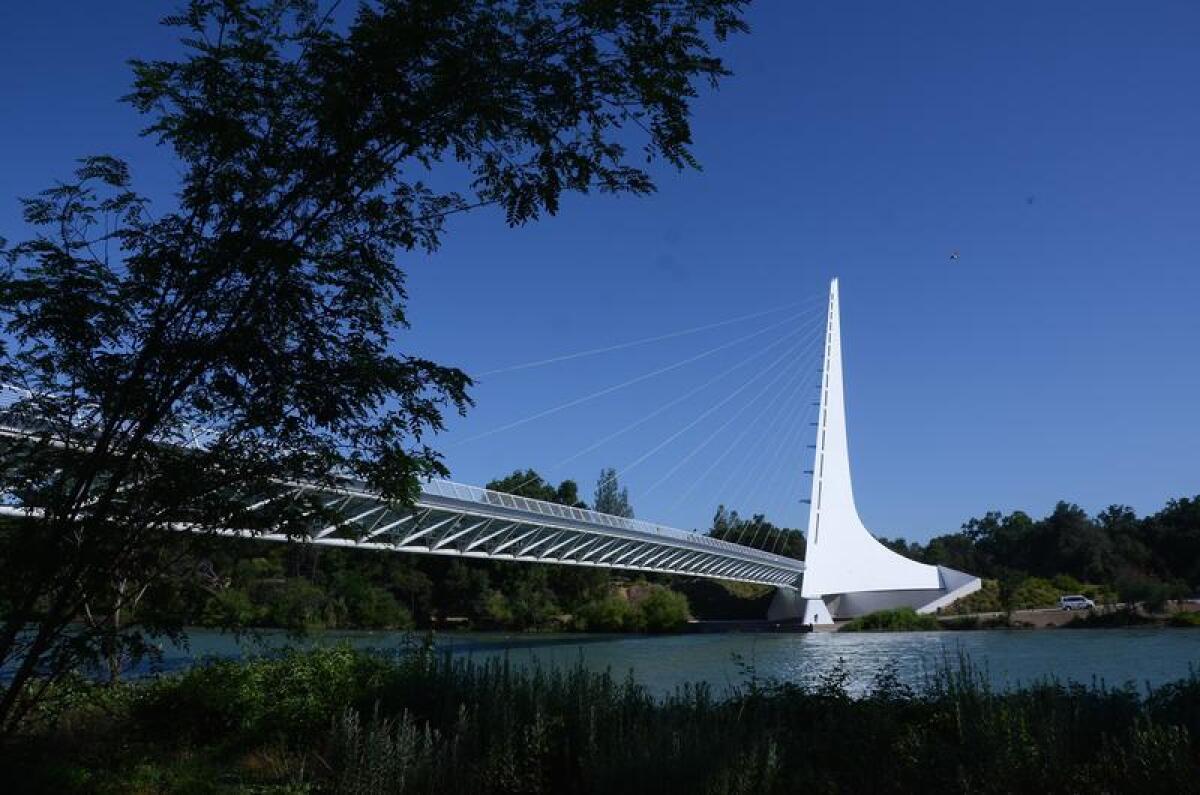
Why: It’s the biggest sundial in California, and you can sort of see through it.
What: Designed by Santiago Calatrava of Spain, this bridge has been a celebrity since the day in opened (July 4, 2004), surrounded by a 300-acre parking along the Sacramento River. The bridge’s 217-foot-tall, slanted white pylon (the technical term, I just learned, is gnomon) draws you in, and the glass-and-steel deck makes it semi-translucent. On the morning I crossed the bridge, the place was busy with moms and strollers and dogs and kids and dads and anglers.
Don’t count on the bridge as a timekeeping device, though. Local leaders say it doesn’t work in winter; in other months, it’s basically impossible to read except between 11 a.m. and 3 p.m. But it’s so attractive that people can’t stay away, nor can swallows. (They may be scant in San Juan Capistrano, but they’re nesting here.)
The Turtle Bay Museum next door gave the project’s detailed history. Its aquarium tanks show what the river looks like below the surface, including plenty of fish. You’ll also read about the fighting between natives and immigrants here in the 1850s. (For gory details, see the section on author Joaquin Miller or read his book “Life among the Modocs: Unwritten History.”) There’s also an arboretum and playground.
Where: 840 Sundial Bridge Pkwy., Redding, 551 miles north of downtown L.A.
How much: Crossing the bridge is free. Museum admission is $16 for visitors age 16 and over, $12 for children age 4-15
Info: Turtle Bay Exploration Park, Visit Redding
Raft white water on the South Fork of the American River
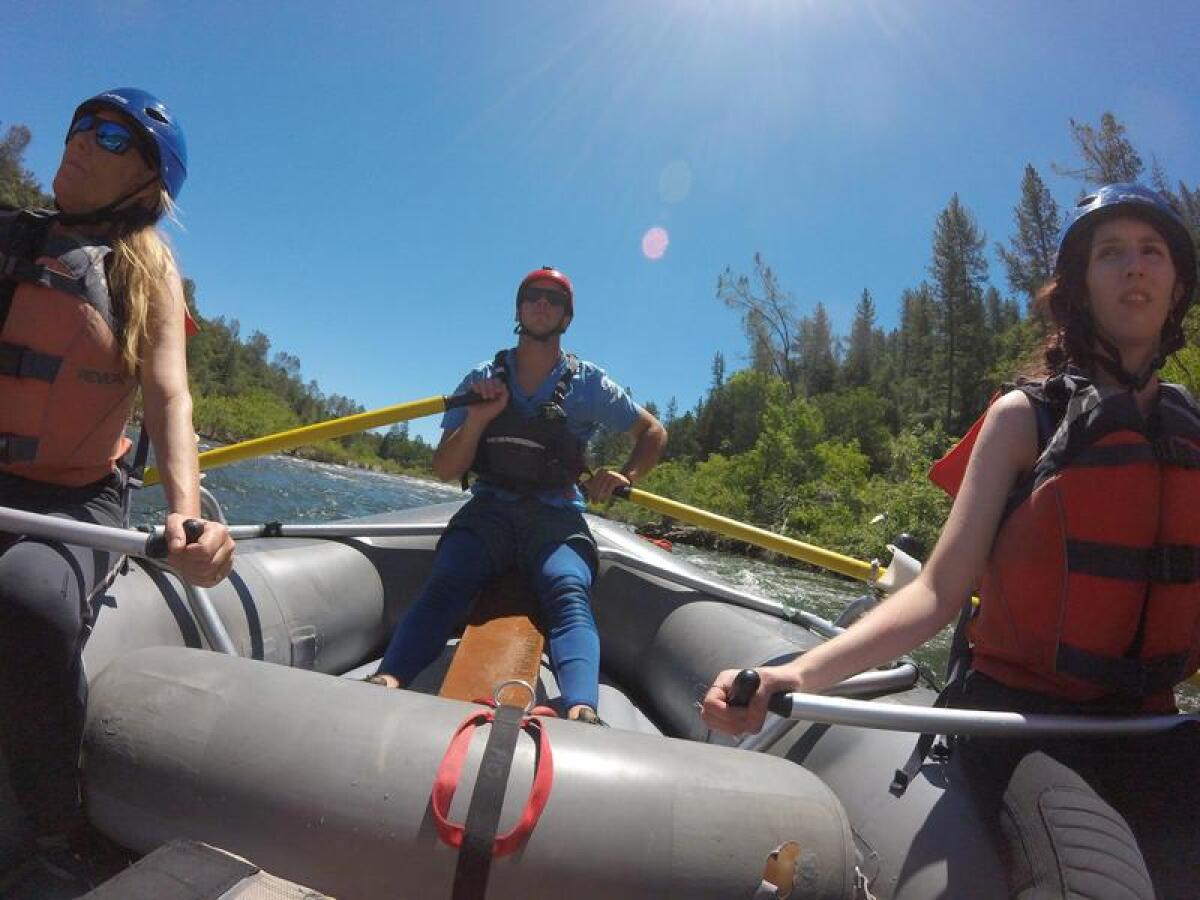
Why: Running a river is a signature thrill in California’s Gold Country -- a splash of cold water in your face on a 90-degree day. And the South Fork of the American River is a classic place to board a raft for the first time, with evocative scenery and relatively mild Class I-III rapids.
What: River-rafting can be a risky sport, as the many fatalities in the high, fast waters of 2017 have shown. That’s why wise newcomers and families sign on for trips with licensed, experienced companies and pull on life vests, helmets and sometimes wetsuits on this usually forgiving fork of the American River.
More skilled paddlers may prefer the riskier Middle and North forks of the American, or the Merced, Tuolumne, Kaweah, California Salmon, Stanislaus or Kern rivers. On the South Fork of the American, most trips are daylong adventures, and many rafting outfitters are clustered in Lotus, a tiny area next to Coloma along the river.
Where: Several outfitters have their headquarters along Lotus Road near Henningsen Lotus Park, a pebble’s toss from Marshall Gold Discovery State Historic Park. Lotus is 45 miles northeast of Sacramento, 433 miles north of downtown L.A.
How much: Half-day and all-day rafting trips typically cost $100-$180 person. Wetsuit rental may add $20 to the bill.
Info: American River
Glide with the gulls at the beach near LAX
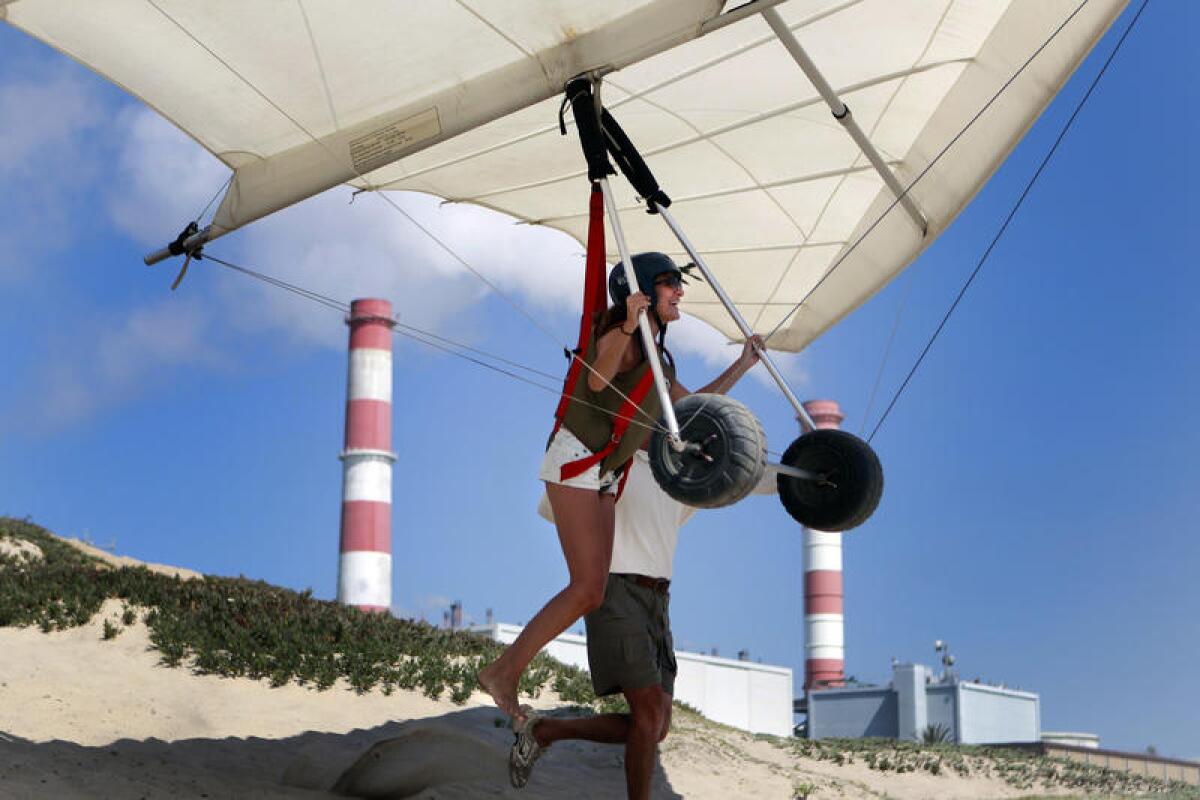
Why: The 15-foot bluffs of Dockweiler State Beach, in the shadow of LAX, are the launch point for beginner hang-gliding lessons, perhaps the coolest sport you’ve never tried. The lessons are quick, and the sport as intuitive as flying gets. Stepping off a bluff under a hang glider is almost pneumatic, as if compressors are involved.
What: All you really want to know is how difficult it is, and I’d compare hang-gliding to opening an umbrella or smearing a bagel with cream cheese. Essentially, anybody who is fairly active can hang-glide. You’re harnessed into this 40-foot training glider, which wants to fly the way beer barrels want to float.
Once you get comfortable, hang-gliding is playful and exhilarating — a spirited and spiritual escape.
Beginner sessions are offered Wednesdays through Sundays, on bluffs 15 to 30 feet high. There is the training, then four to seven flights, of various lengths, and soft landings. It’s not exactly idiot-proof, but the risks are minimal, and the instructors patient and encouraging.
You start at the lower “bunny bluffs,” then work up to longer flights. As with sailing, winds kick up later in the day, and the most sparkling and sensational rides take place before dusk.
Once you get comfortable, hang-gliding is playful and exhilarating — a spirited and spiritual escape. For a while, it’s just you and the gulls and the sea breezes, and the roar of L.A. traffic feels 1,000 miles away.
Where: Windsports Soaring Center, Dockweiler State Beach, 12501 Vista del Mar, Los Angeles.
How much: $99 for a lesson and four flights; $160 for a lesson and seven flights
Info: (800) 644-8988; [email protected],
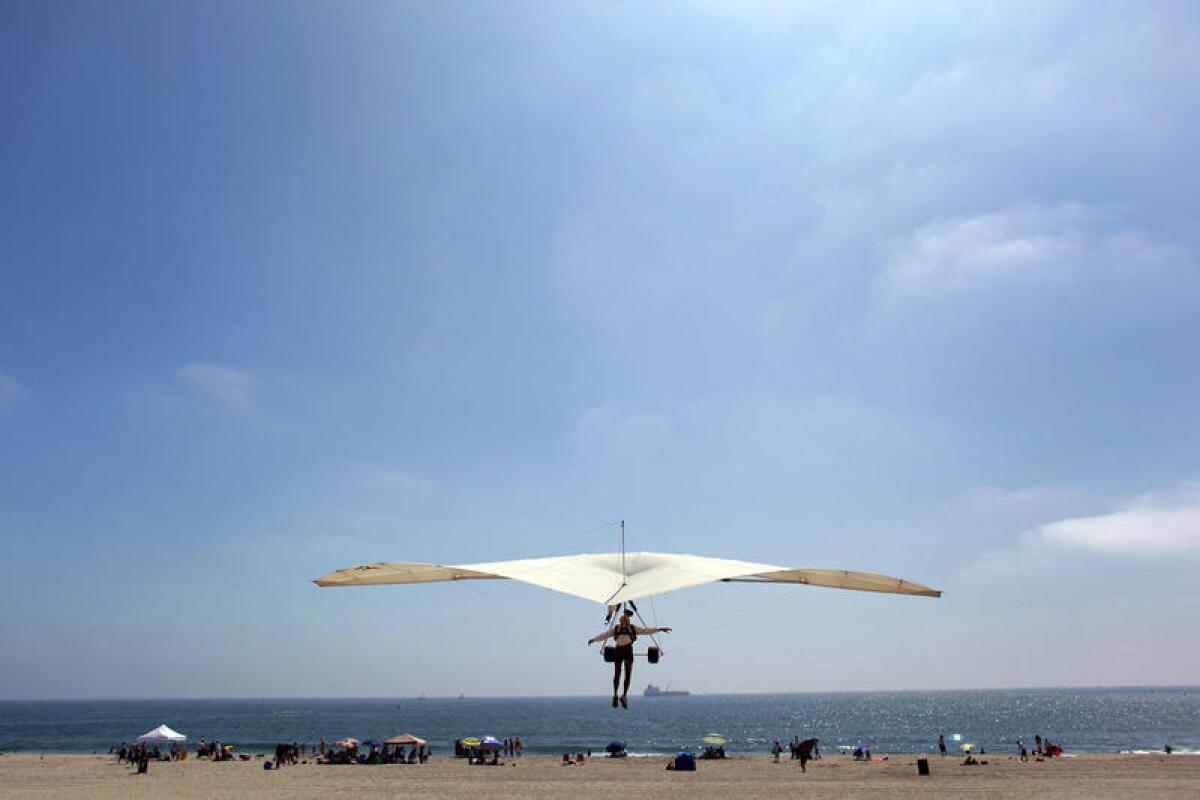
Laugh and gawk at campy Mexican wrestlers of Lucha VaVoom -- and the L.A. women who love them
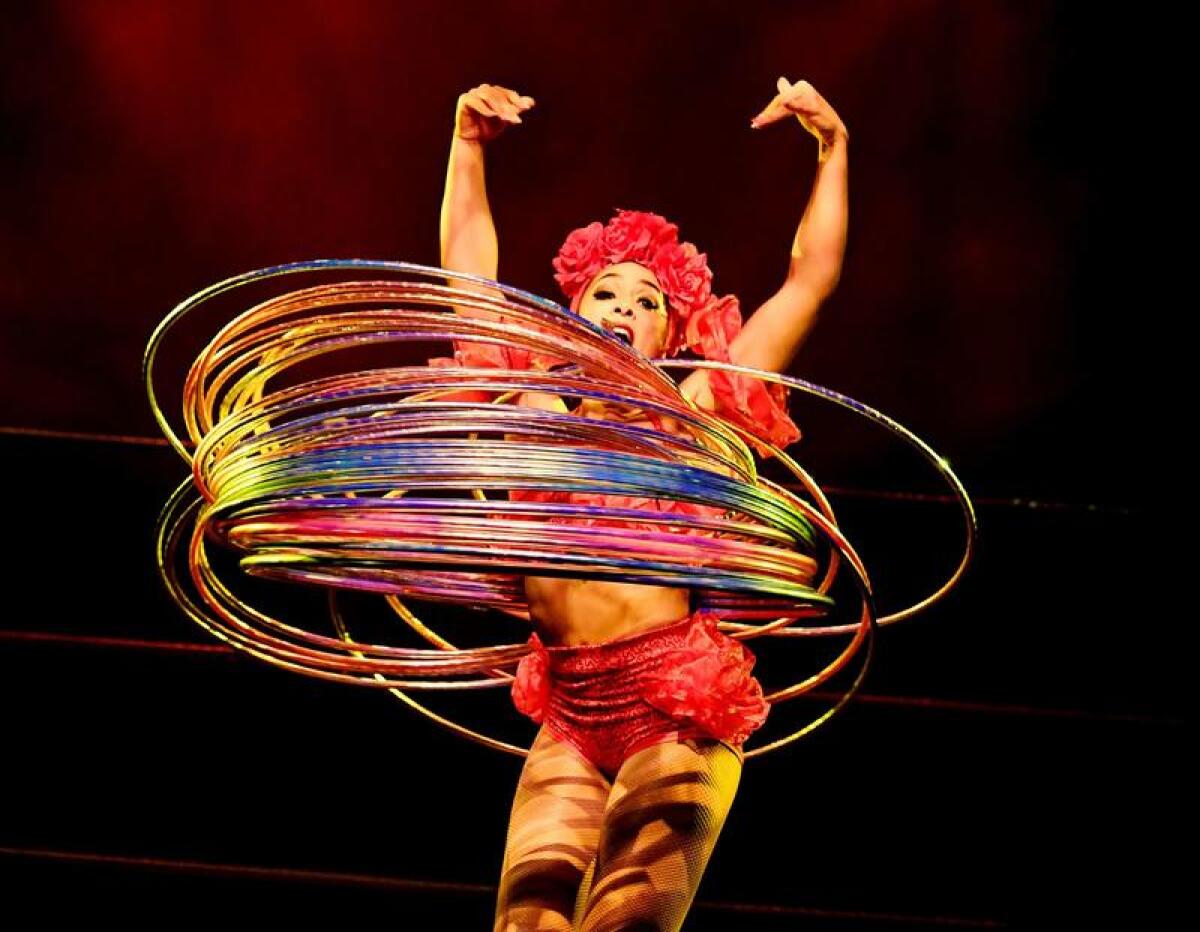
Why: Because you won’t find this in your local dinner theater. This series of comedy skits and wrestling bouts features slightly plump men in leotards and the saucy women who stalk them. The dancers, meanwhile, are like Venn diagrams of what saloon girls used to look like: lots of leg and eyelashes like a rake. No, wait, that girl’s a dude.
What: Lucha VaVoom stages a half-dozen L.A. shows each year. Developed 15 years ago by Liz Fairbairn and Rita D’Albert, its hybrid of masked Mexican wrestling, burlesque and campy humor draws raucous twentysomethings as well as middle-aged couples tired of the usual multiplex dreck.
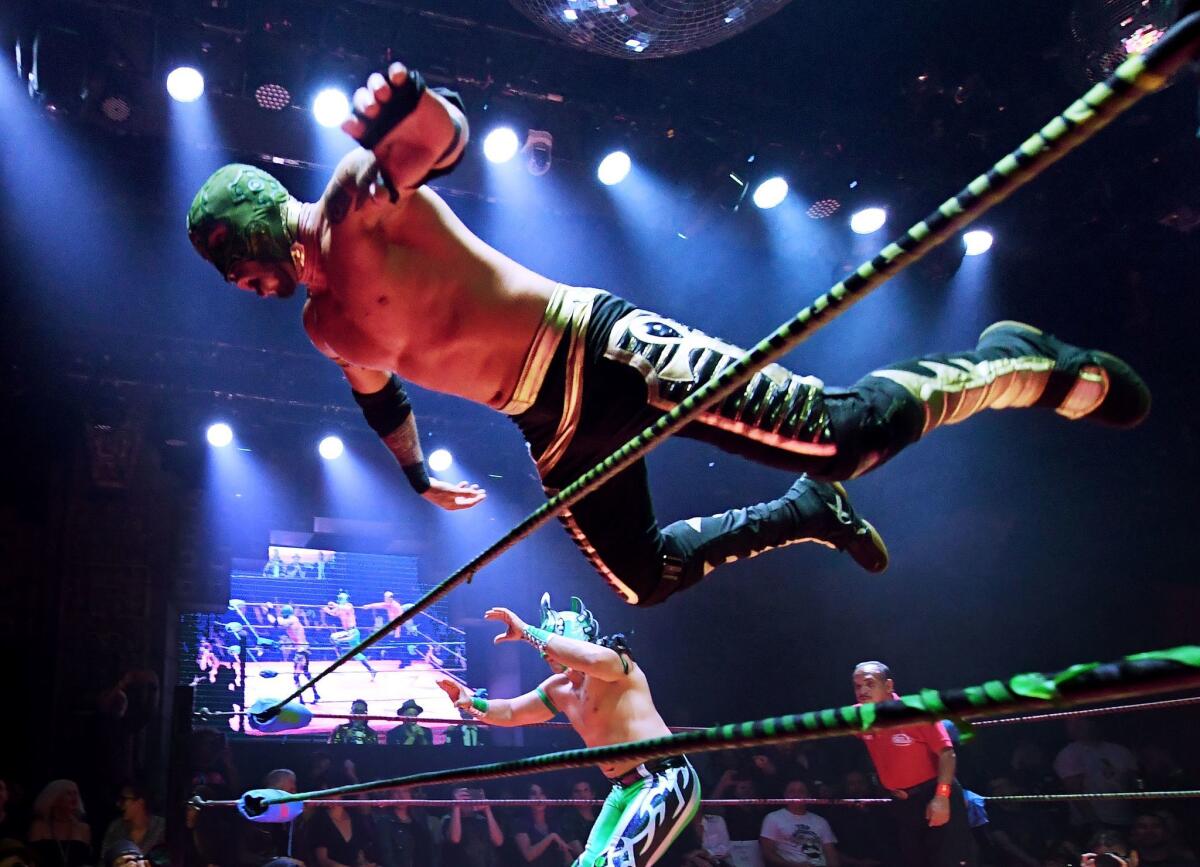
“I thought I’d be a millionaire by now,” confesses D’Albert, given the way sold-out audiences respond to the shows in the old Mayan Theatre in downtown Los Angeles.
Between matches, you’ll see burlesque and aerial acts, hula-hoop hotties and comedian emcees that include guest commentators such as Fred Armisen, Patton Oswalt and Bobcat Goldthwait.
The audience is diverse in age, dress (mostly casual) and temperament, but anyone with a sense of the absurd and half a funny bone is bound to like it.
Where: The Mayan Theater, 1038 S. Hill St., downtown Los Angeles. You must be 21 or older.
How much: Tickets start at $40. Shows are open only to those 21 and older.
Info: luchavavoom.com/
Snack at Randy’s beneath L.A.’s most iconic doughnut
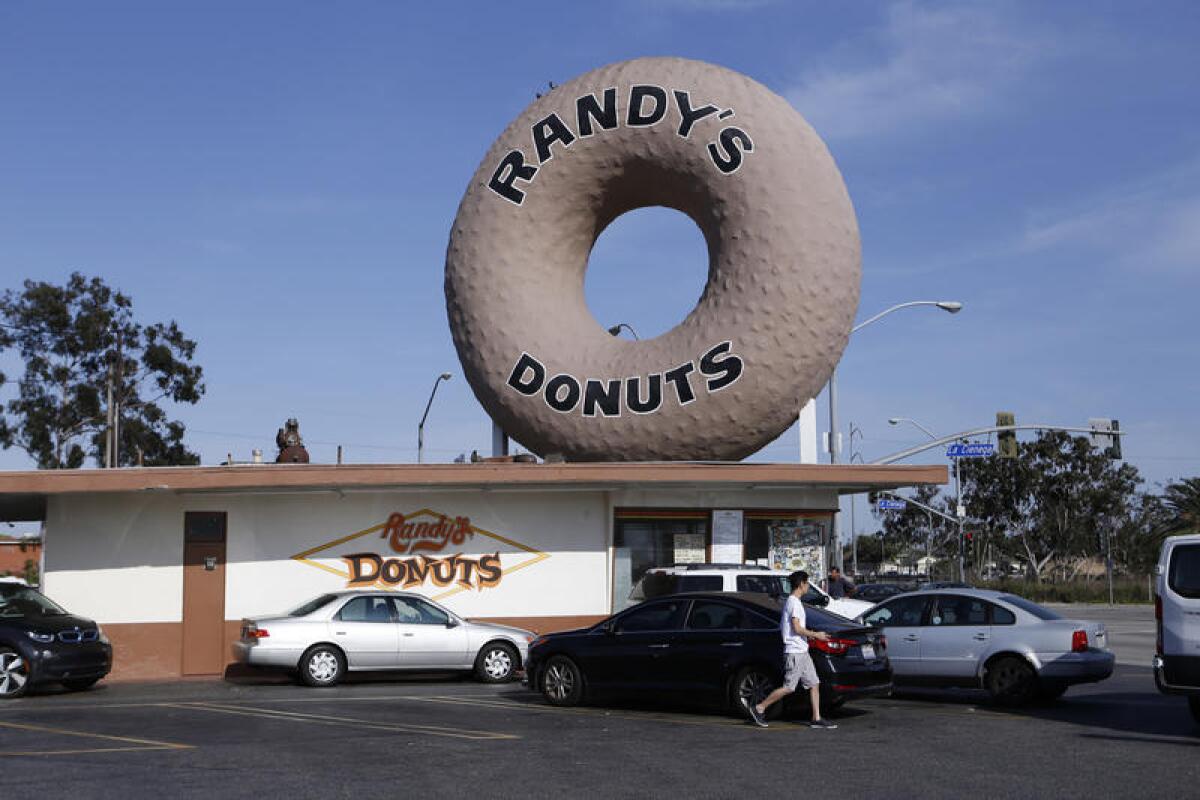
Why: This is the brown stucco doughnut seen ‘round the world.
What: Randy’s Donut’s is big largely because its doughnut is. That 32-foot-high doughnut, perched since 1953 on the roof of a busy little shop near LAX, has shown up in countless photos and movie clips (including about one second of the original Randy Newman “I Love L.A.” video back in 1983). In person, I found the doughnuts good, not great. But I liked the price, especially compared with the amounts being charged in Beverly Hills and elsewhere. “You will never see a $5 doughnut at our shop,” says Randy’s website. It’s open around the clock, and the shop has a drive-through window, which is good because the parking lot is often full (even on days when Snoop Dogg isn’t DJing) and there’s frequently a line of folks waiting at the twin windows in front.
By the way, there are other big doughnuts around, and there’s been talk of Randy’s adding another outlet in Century City, but this is the icon.
Where: 805 W. Manchester Blvd., Inglewood, just off the 405, 12 miles southwest of downtown L.A. If the parking lot is full, try for one of the metered spots along Manchester. Paying 25 cents per 15 minutes won’t kill you and your exit may be easier.
How much: 95 cents for a plain doughnut, $1 for glazed. A dozen for $10.
Info: Randy’s Donuts

Inspect Watts Towers, and keep an eye out for the Phillips’ Milk of Magnesia
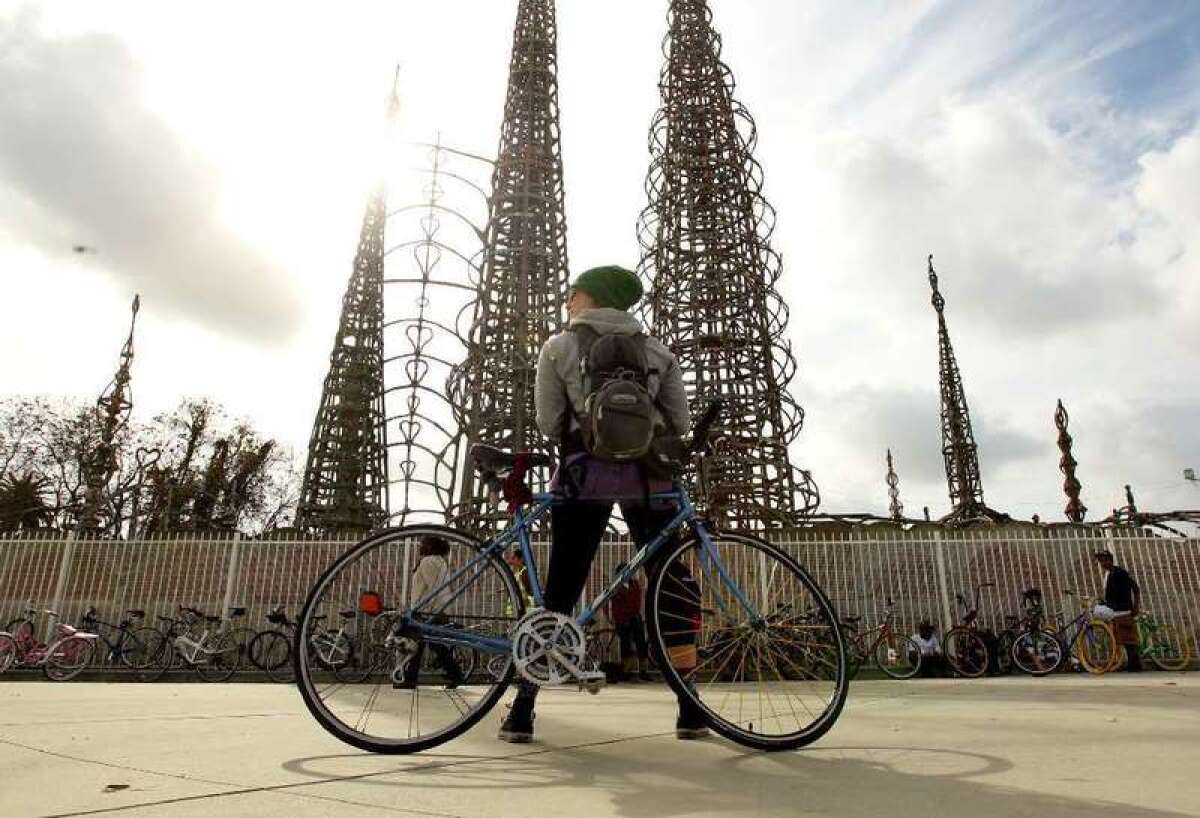
Why: This “outsider” landmark, built by compulsion by an unschooled Italian American and surrounded by a blue-collar community that’s mostly Latino and African American, has become one of the most emblematic artworks in the state.
What: Simon Rodia, an immigrant from Italy, spent 33 years putting up these 99-foot-tall towers in his backyard, using rebar, concrete, cast-off tiles, bottle caps and bits of colored glass (including the old blue Phillips’ Milk of Magnesia bottles). Then, in 1954, he walked away. Yet he built so well, and with such conviction, that his work survived and now anchors an arts center. For the gritty details — such as the work’s maritime influences or the day somebody broke a crane trying to pull down the towers — take a tour. And don’t miss the contemporary works in the neighboring gallery space. Tours are offered every half-hour, 10:30 a.m. to 3 p.m. Thursdays through Saturday, 12:30 p.m. to 3 p.m. on Sundays.
For maximum sensory impact, visit on Day of the Drum, Sept. 30, 2017, when percussionists from multiple cultures gather. Or come the day after, when the Simon Rodia Watts Towers Jazz Festival takes place.
Where: 1727 East 107th St., Los Angeles, 9 miles south of downtown L.A.
How much: General admission is $7 for adults, $3 for visitors ages 13-17. No credit cards. Closed on Mondays and Tuesdays. No tours on Wednesdays.
Info: Watts Towers Arts Center
Look closely at LACMA, where lampposts and boulders share turf with Old Masters and Abstract Expressionists
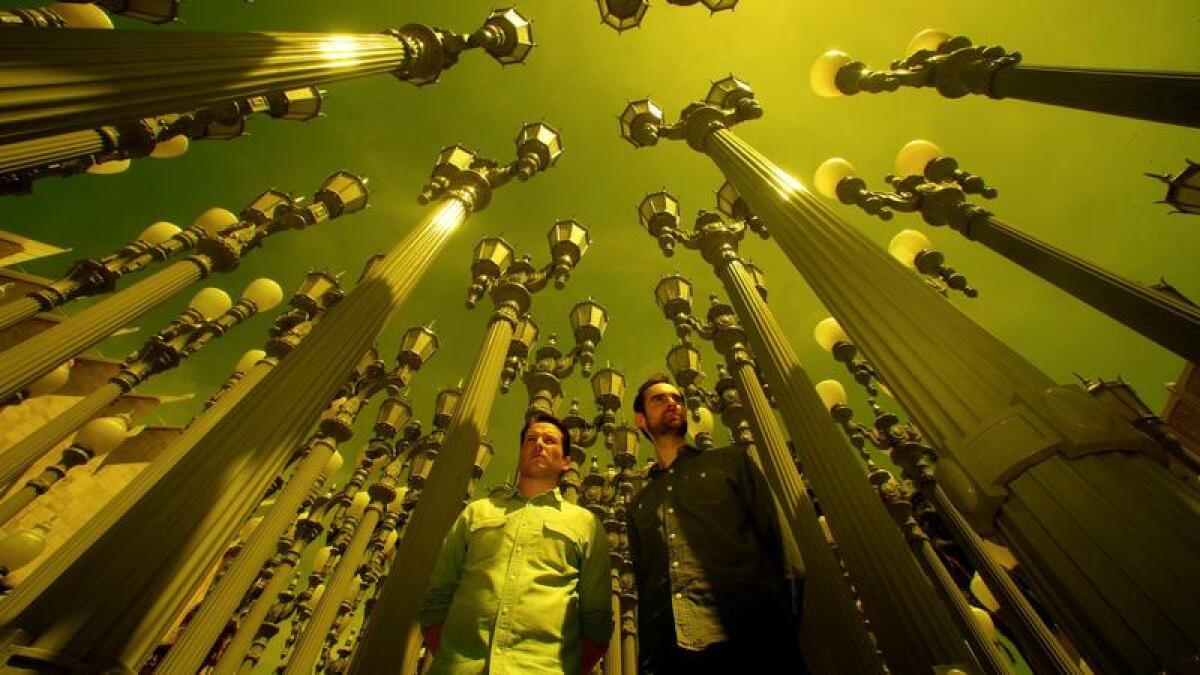
Why: If you had to rely on one museum in California to lead you through all of art history from a Western perspective, you’d almost certainly wind up at the doors of the Los Angeles County Museum of Art. And your teenager (who gets in free) wouldn’t want to leave without a selfie amid the lampposts of Chris Burden’s “Urban Light” at the museum’s Wilshire Boulevard entrance.
What: Never mind that it’s the biggest encyclopedic art museum in the West. LACMA is also a linchpin of Wilshire Boulevard, drawing casual visitors with “Urban Light” out front and Michael Heizer’s “Levitated Mass” (a boulder above a walkway) out back. You might not be wild about the museum buildings’ jarring juxtaposition of architecture from different decades, but you can spend hours roaming inside — and hours more with the museum’s neighbors.
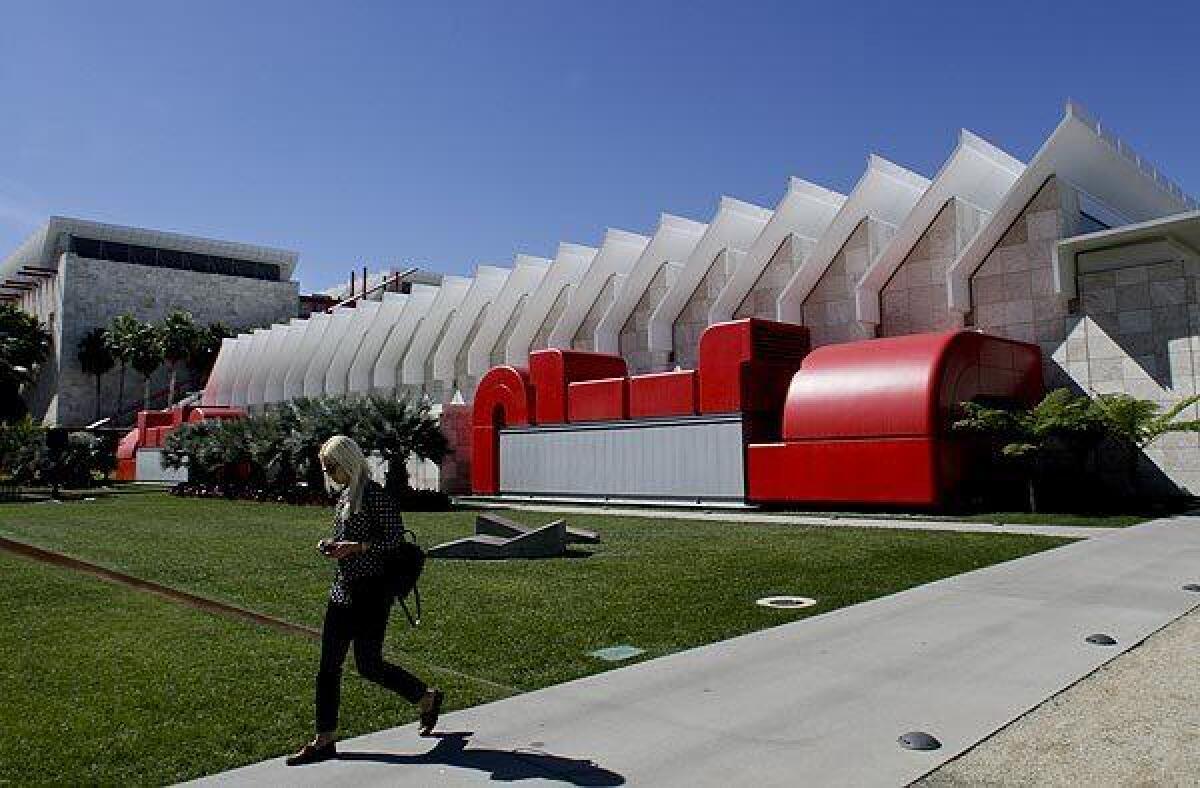
Next door is the kid-friendly La Brea Tar Pits and Museum, fronted by a dozen food trucks on most days. On the south side of the street, wrapped in stainless-steel ribbons, is the Petersen Automotive Museum. And almost directly across the street from “Urban Light” are several chunks of the Berlin Wall, provocatively painted.
Where: 5905 Wilshire Blvd., Los Angeles, 9 miles west of downtown L.A. Expect traffic hassles in the immediate neighborhood as crews build a Metro light-rail station.
How much: General admission is $15 per adult, which rises to $25 when you add special exhibitions. But it’s all free for children 17 and younger. Closed Wednesdays. Off-street parking $14.
Dip into the grandest swimming pool in Death Valley
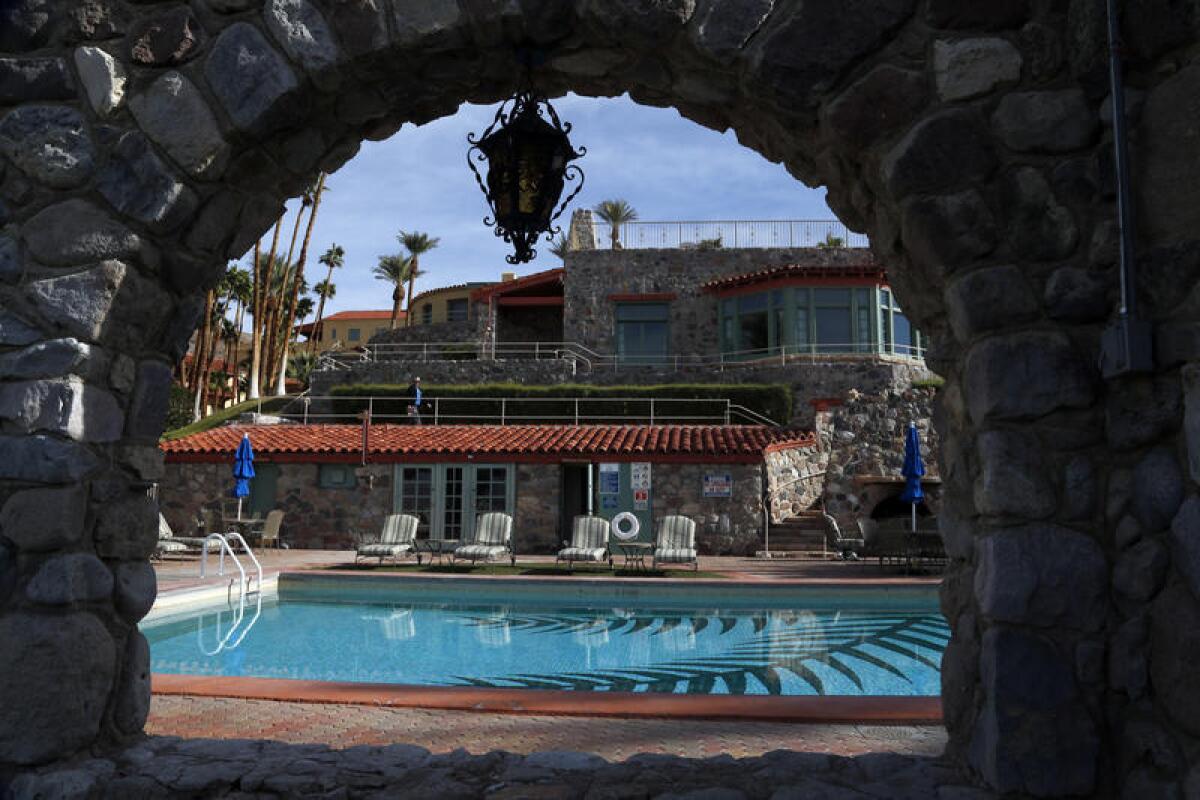
Why: Because it’s wet and it’s not a mirage. In the middle of Death Valley, that’s enough.
What: From the 1920s until recently, this place was known as the Inn at Furnace Creek and its pool (fed by underwater springs) was the most glamorous body of water for miles around. It was the fanciest lodging in Death Valley National Park, but it would close down in summer because the valley gets so beastly hot. In June, however, management announced a $50-million facelift and name change: The Furnace Creek Resort area (which includes the 66-room inn and a more casual 224-room “ranch”) is getting a big upgrade and a new set of names.
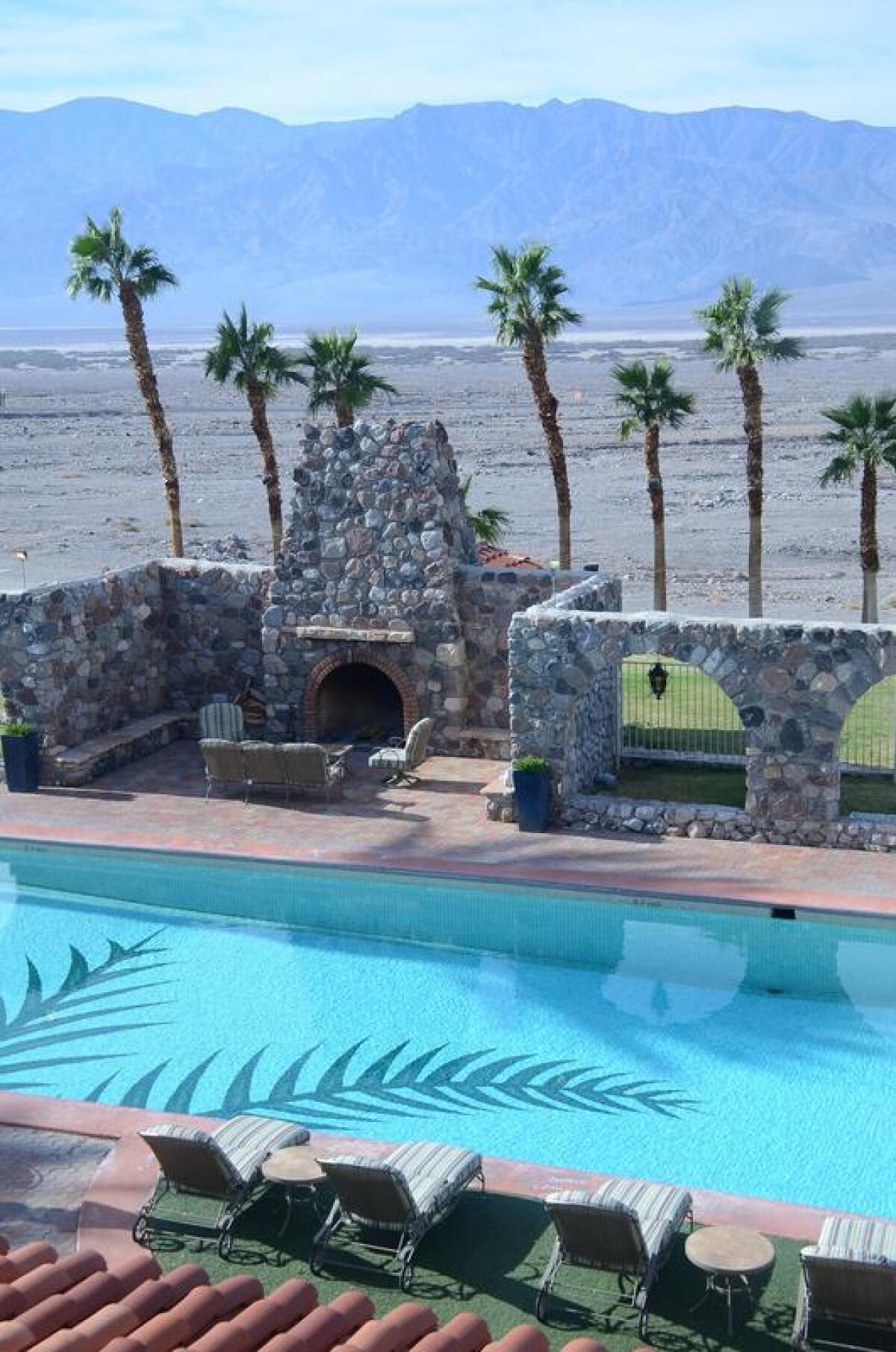
Beginning this summer, the area will collectively be called the Oasis at Death Valley. The inn with this fancy pool (formerly the Inn at Furnace Creek) is now The Inn at Death Valley. It’s closed for the summer and will reopen Nov. 2 as a year-round lodging. The more affordable Furnace Creek Ranch (which also has a pool) is now the Ranch at Death Valley. It remains open through the summer, though parts will close as renovations go on.
This doesn’t necessarily mean you should go now. It means you should know now. Go when you will be comfortable -- and when the hoteliers can promise you won’t be bothered by renovation work.
Where: The Oasis at Death Valley (a.k.a Furnace Creek Resort) is 289 miles northeast of downtown L.A.
How much: Checking the first weekend in April 2018, I found prices (before taxes and resort fees) starting at $409 to $528 a night at the inn and $239 to $259 at the ranch.
Remember the Russians at Fort Ross on the rugged Sonoma Coast
Why: It’s easy to forget that Russia once had a good shot at taking over California, but that was the case in the 18th century. Fort Ross is a reminder of those days: a state historic park where Russian traders used to operate, even after Spain and then Mexico seized control of this region.
What: The park includes more than 3,000 acres of rugged coastline, including the wooden-walled rectangle that was for three decades the center of Russian culture in California. The Russians arrived in 1809 and bailed out in 1841, seven years before the U.S. grabbed California from Mexico. This may be where California’s first windmill went up, and where its first shipbuilding took place. Half a dozen weathered wood buildings remain (once there were 50), including the Rotchev House, Kuskov House, a chapel and fur warehouse.
Also, if you’re headed north, add another dose of Russia with a stop to eat or sleep 29 miles up the coast highway at St. Orres, a fanciful Gualala inn and restaurant that was crafted to echo Russian influences. Onion domes, elaborate woodwork and some rooms are under $100 nightly.
Where: 19005 Coast Highway 1, Jenner, 88 miles northwest of San Francisco, 463 miles northwest of downtown L.A.
How much: Admission is $8 per vehicle. The grounds are open sunrise to sunset. The visitor center and compound are open 10 a.m.-4:30 p.m. Fridays-Sundays.
Info: Fort Ross State Historic Park
See the pumpjacks (and the sea) from high on Signal Hill
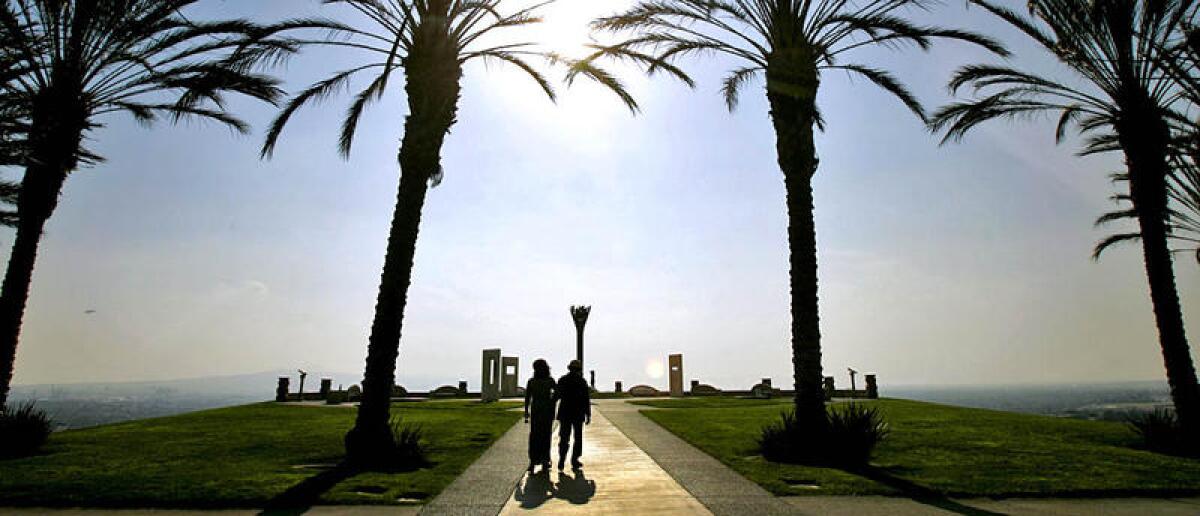
Why: Because oil helped make Southern California and American society what they are today. Besides coastal panoramas, this hilltop, surrounded by a blue-collar community, gives you petroleum perspective.
What: Signal Hill’s Hilltop Park is what it sounds like — 3.2 acres of high ground on a founded hill that rises about 365 feet above the nearby sea, adorned by a semi-circle of palms. Stand there around sunset and you see not only the sun sinking into the Pacific but the the profile of many a pumpjack — those birdlike, seesawing metal contraptions that coax oil out of the ground. Ninety years ago, the view from here would have been thick with pumpjacks, and the municipality of Signal Hill only has its independence from surrounding Long Beach because of oil-business maneuvering.
Between the 1920s and the 1980s, Signal Hill’s oil wells produced more than a billion barrels, making this one of the richest oil fields on Earth. Even now, there are many pumpjacks, some bobbing next door to single-family homes. (Elsewhere around Los Angeles, people have tried all sorts of disguises to conceal their oil infrastructure. Not so much here.)
Where: 2351 Dawson Ave., Signal Hill, 23 miles south of downtown L.A.
How much: Free.
Info: Hilltop Park
Play with plastic in Legoland
Why: Little plastic, interlocking bricks. They’re hard to resist, especially when deployed to mimic the White House or the Golden Gate Bridge. Especially when you’re 8, but sometimes when you’re 48.
What: Legoland California, in Carlsbad, is at once homegrown and exotic, a theme park that wouldn’t exist if some guy in Denmark hadn’t started stamping out colorful, connectable plastic bits in 1949. Now there are Lego movies, clothing, books and so on.
The Carlsbad park, opened in 1999, is one of six worldwide. It includes an adjacent 250-room hotel (very kid-friendly), about 60 rides, shows and attractions (“Star Wars” figures? Check. Bust of William Shakespeare? Check.). It’s also got a next-door aquarium and water park; a new Surfers Bay is expected to open this summer. And don’t forget the beach, which is a mile to the west and free. Perhaps because most of its rides won’t upset your stomach or raise your blood pressure, Legoland has a reputation for appealing to younger kids more than older ones. (It officially targets families with kids ages 2-12.)
Where: 1 Legoland Drive, Carlsbad, 90 miles southeast of downtown L.A., 34 miles north of downtown San Diego.
How much: One-day admission is usually $95 for adults (13 and older) and $90 for children (ages 3-12). You’ll pay an additional $10 a person for an extra day plus access to the water park and aquarium.
Info: Legoland California
Light a beach bonfire at Bolsa Chica in Huntington Beach
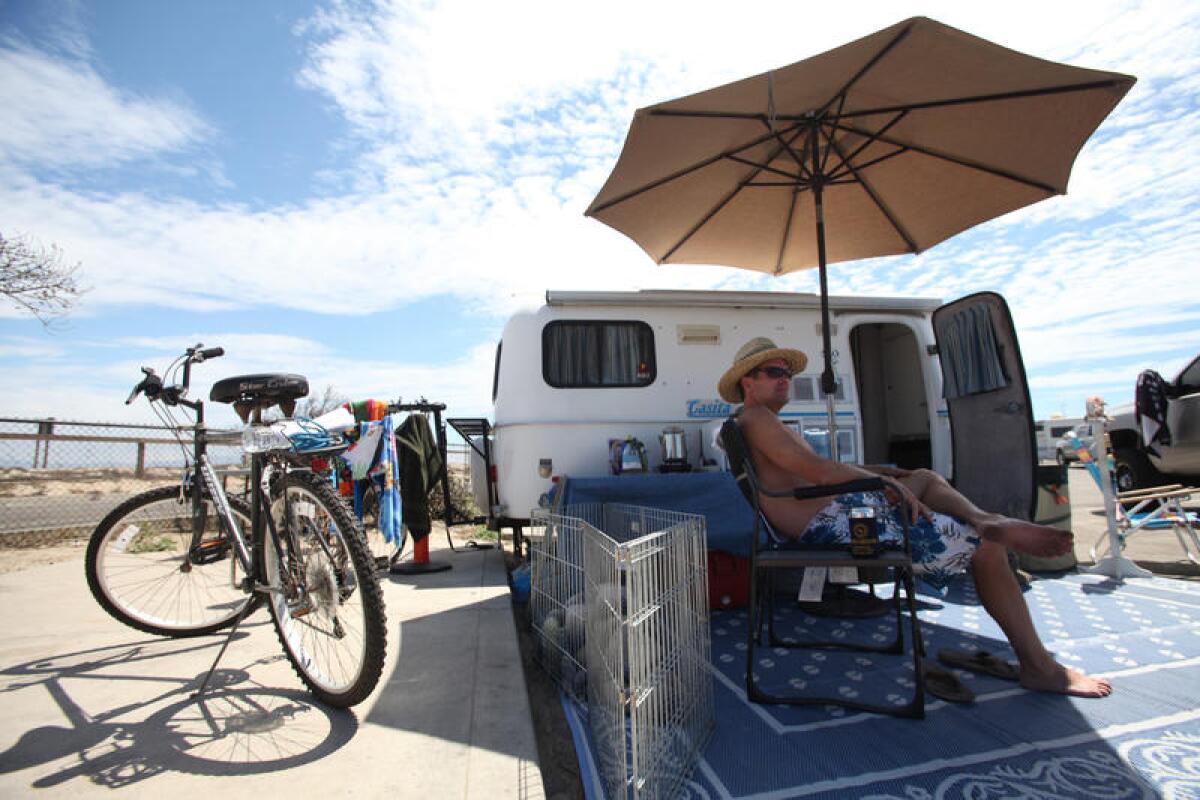
Why: It’s elementary. Homo sapiens like sitting on sand, watching water lap the shore while a bonfire crackles in a light breeze.
What: Bolsa Chica State Beach is a prime beach bonfire destination, 3 miles long, with 200 fire rings available nightly (first come, first served) from 6 p.m. to 10 p.m. And that’s an increasingly rare distinction. Authorities have banned fires in many coastal areas, focusing increased attention on those that remain.
Bolsa Chica, a long, flat beach, is also known for its surf fishing and grunion runs. Just inland you have the Bolsa Chica Ecological Reserve, a 1,300-acre estuary and wetlands area that attracts about 200 species of birds (and almost as many sub-species of birders). There are various beach concessions nearby. (Farther north in Los Angeles County, Dockweiler State Beach is another fire-ring destination.)
Where: Bolsa Chica, north of Huntington Beach’s Seapoint Street and and south of Warner Avenue, is 33 miles south of downtown L.A.
How much: Day use is $15 per car.
Info: Bolsa Chica State Beach
Scope out Steamer Lane and the Santa Cruz Surfing Museum
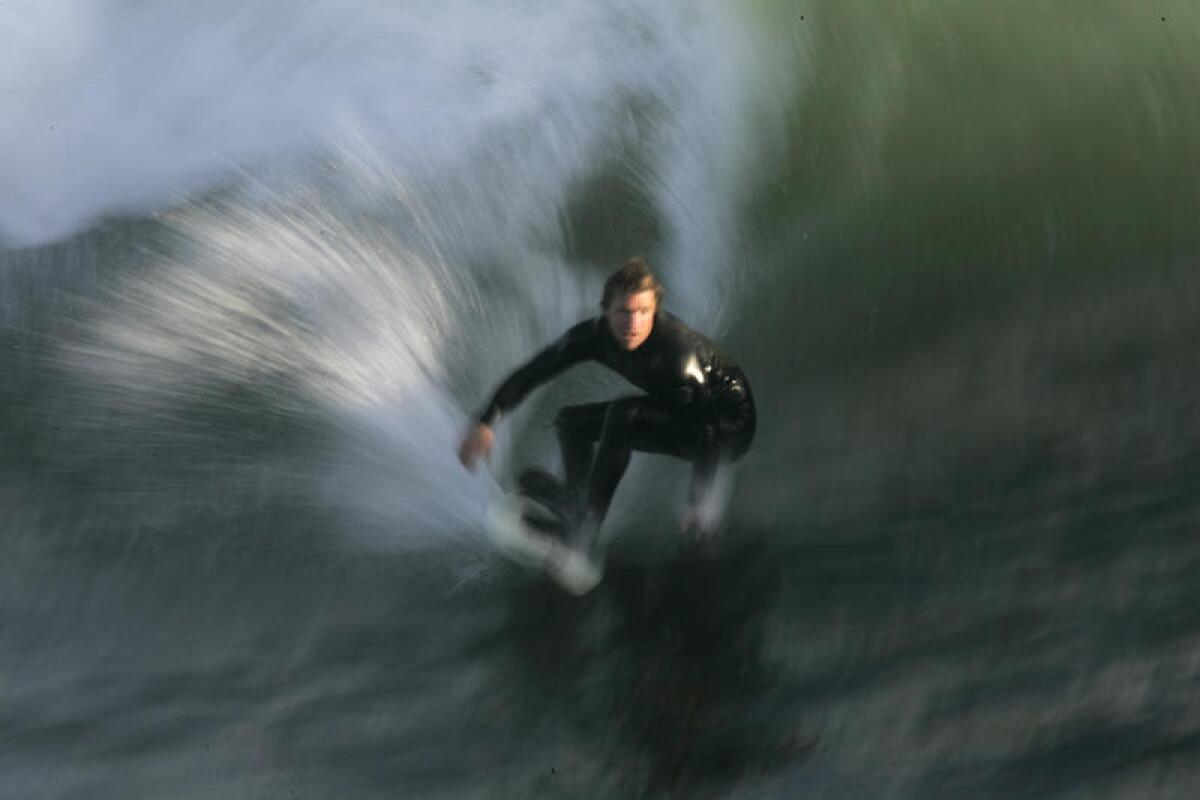
Why: waves, people-watching, landscape.
What: To appreciate the Steamer Lane surf break, you need not get wet. You don’t even have to duck into the little red brick lighthouse, which was converted into the Santa Cruz Surfing Museum in 1986. (But it would be silly not to.)
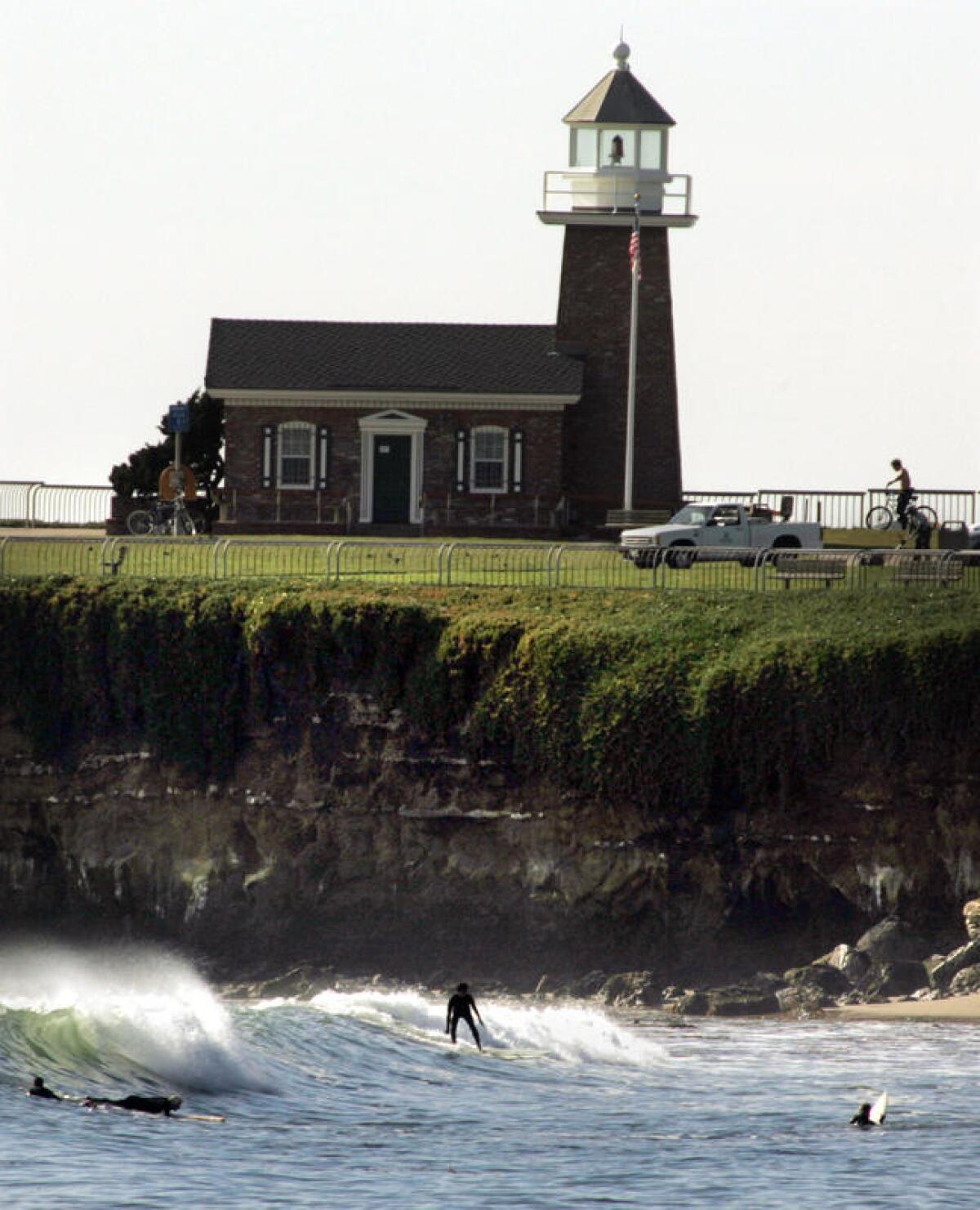
Just scoping out the swells from that cliff top, looking down on one of the state’s best-loved surf spots is enough to bring you closer to the soul of Santa Cruz, which must be related somehow to the soul of California. Moreover, the elevation gives you a great angle for photography, and Lighthouse Field State Beach is right next door. (One more thing: This patch of land, Lighthouse Point, marks the northern boundary of Monterey Bay.)
Where: Santa Cruz Surfing Museum, 701 West Cliff Drive, Santa Cruz, 366 miles northwest of downtown L.A.
How much: Free (but the museum welcomes donations). The museum closes on Wednesdays and also Tuesdays in non-summer months.
Info: Santa Cruz Surfing Museum, Lighthouse Field State Beach
Steal design ideas from the Adamson House, a classic beach retreat in Malibu
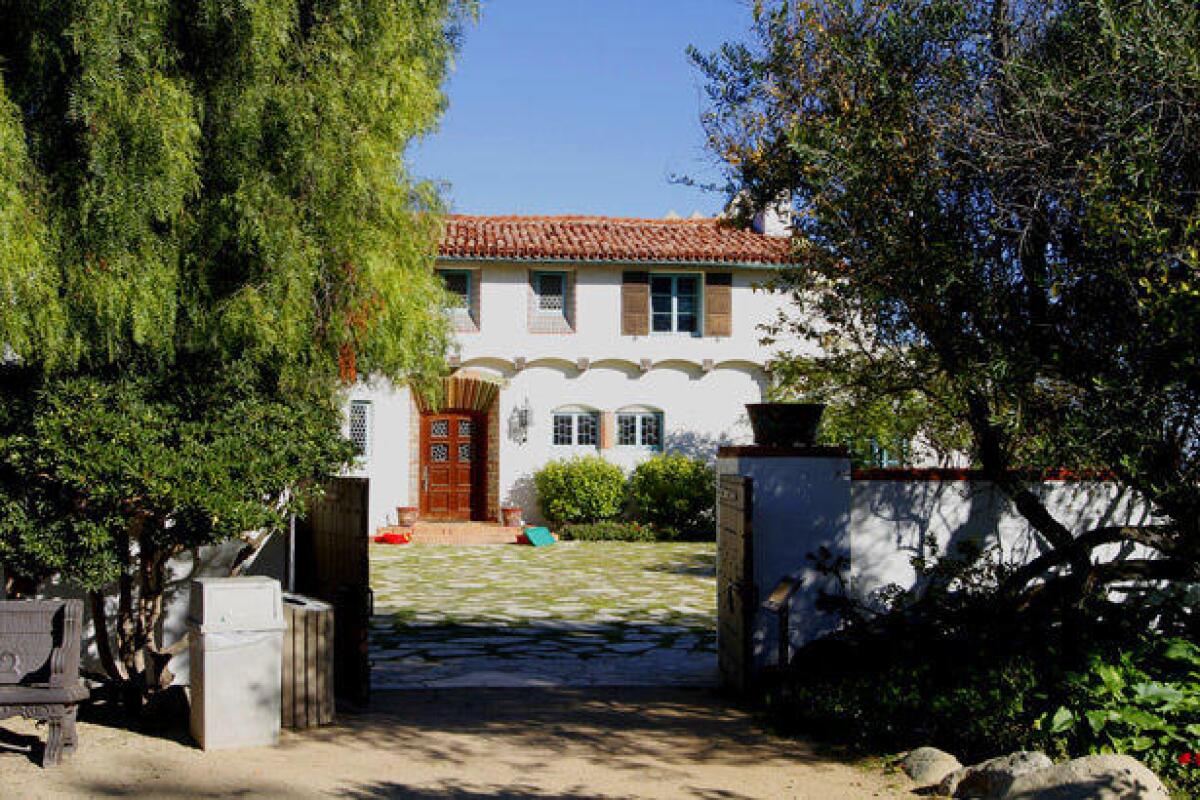
Why: This may be the beach house of your dreams. If it isn’t, your dreams may need upgrading.
What: The Adamson House, just east of the spot where Malibu Creek empties into the Pacific, is as classic as a Spanish-style beach home can get. It was built in 1929 by a family that owned thousands of Malibu acres, and that family made sure this home was full of gracefully swooping lines, hard-carved doors, frescoes, cast-iron sconces, colorful tile work and pottery made from local mud. The state of California bought the property in 1968 and opened it as a museum in 1983.
Hourlong guided tours of the interior are offered 11 a.m. to 3 p.m. Thursdays through Saturdays; Also, see the building that looks like it used to be the house’s five-car garage? Well, that’s what it was. But now it’s the Malibu Lagoon Museum. Nearby you’ll also find Malibu’s civic center and mall (just west and across the highway) and the Malibu Pier (just east).
Where: 23200 Pacific Coast Highway, Malibu, 12 miles west of the Santa Monica Pier, about 28 miles west of downtown L.A.
How much: The house tours are $7 per adult and $2 for those 6 to 16.
Info: Adamson House
Resist change (and savor burgers) at the Apple Pan in L.A.

Why: It’s a family business that goes back 71 years. In an era of food fads that wax and wane, in a territory crowded full of chain operations, the Apple Pan is a sort of North Star, unchanging and unreplicated. A North Star with hickory sauce.
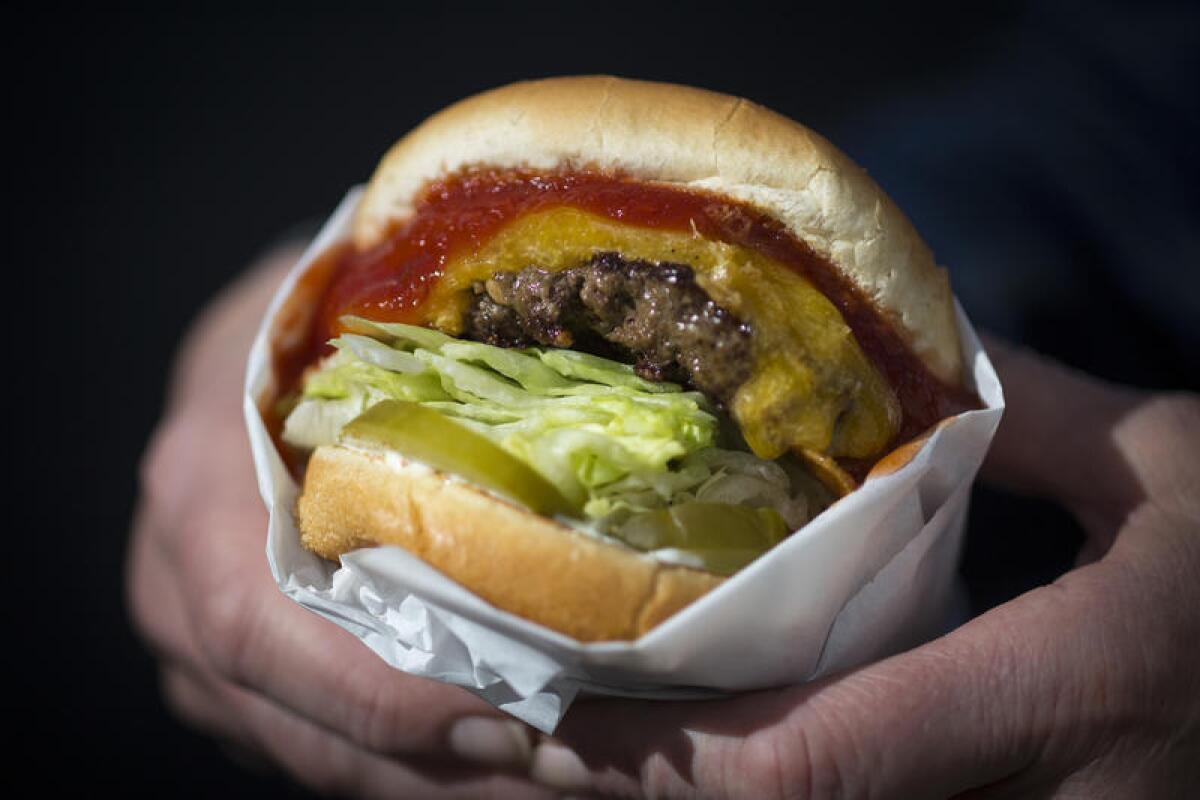
What: The Apple Pan has been peddling burgers on Pico Boulevard since 1947 — before the Westside Pavilion (which now looms across the street) was ever contemplated, inspiring L.A. Times Food section features in 2007 and 2017. Twenty-six seats around a U-shaped counter. No reservations, no alcohol, no air conditioning, no credit cards. Order the Hickoryburger and apple pie.
Where: 10801 W. Pico Blvd., Los Angeles, 13 miles west of downtown L.A.
How much: Hickoryburger, $7.10. Apple pie, $6.
Info: No website, but Yelp has hours, comments and a menu link.
Chow down on chicken, then fly fast and upside-down at Knott’s Berry Farm
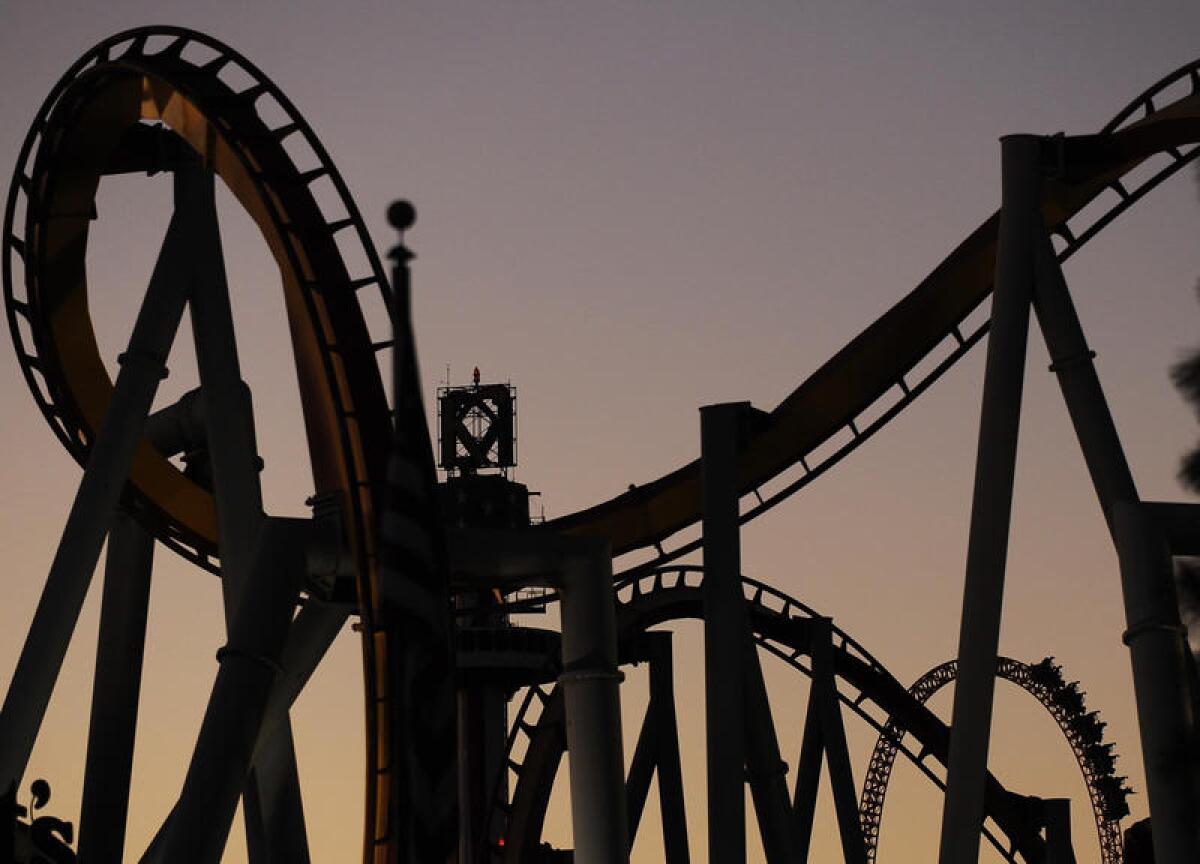
Why: Decades before Disneyland logged its first customer, Knott’s Berry Farm was packing them in. And all these years later, it’s still known as a comfortable family theme park with a bunch of roller-coasters and Mrs. Knott’s Chicken Dinner Restaurant.
What: Knott’s, which opened in the 1920s, features a wide range of rides -- from gentle kid stuff to screaming juggernauts. On the Montezooma’s Revenge coaster (since 1978), you’ll do a full loop, forward and backward, seven stories high, at up to 55 mph. On the Silver Bullet (since 2004), you go upside-down six times, rising up to 146 feet above the ground. In early 2017 Knott’s added “VR Showdown in Ghost Town,” a roaming, multi-player virtual-reality experience -- this might signal a new theme-park trend -- recommended for age 13 and older.
There’s also Knott’s Berry Farm Hotel (320 rooms and a Snoopy-themed wing) and Knott’s Soak City, a summer water park next door. And the park is renowned for its pre-Halloween “Scary Farm” programming every October. (Again, age 13 and older.)
Where: 8039 Beach Blvd., Buena Park, 24 miles southeast of downtown L.A.
How much: General admission $79, often discounted to $43 online. Beyond that, it’s complicated.
Info: Knott’s Berry Farm
If you love Asian food, check out the night market mega-feasts in Arcadia and Costa Mesa
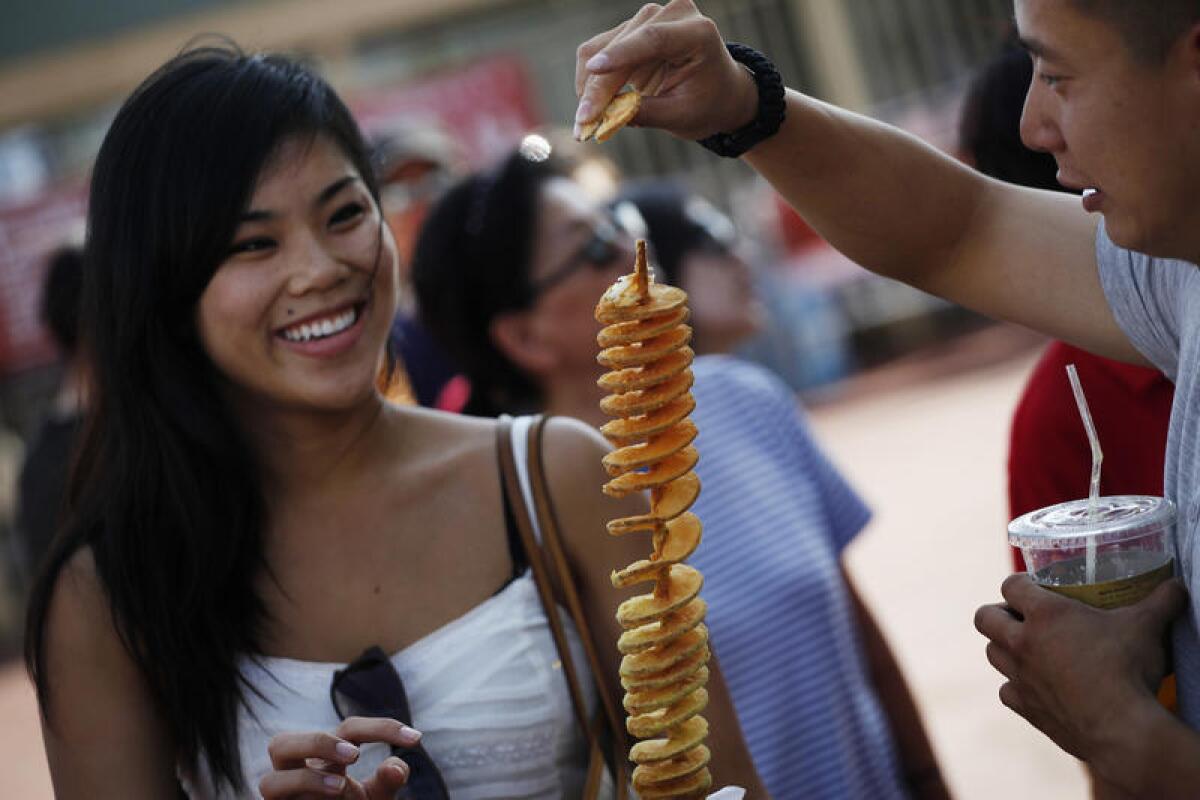
Why: Think of these night markets as the Comic-Con of street food. For 20 bucks, you can nibble your way through some of the most delicious, and occasionally outlandish, Asian dishes you’ve never seen. I guarantee you’ll walk out full.
What: Held during summer weekends beneath billowing clouds of barbecue smoke, Asian night markets at Santa Anita Park and now in Orange County feature more than 150 vendors under pop-up tents, serving mostly Asian-themed street food.
They are modeled on a craze that began in Taiwan, and now, with games, entertainment and all sorts of creative dishes, feel like a traditional county fair on steroids. It is also evidence that no American could ever resist something that is both deep-fried and skewered on a stick.
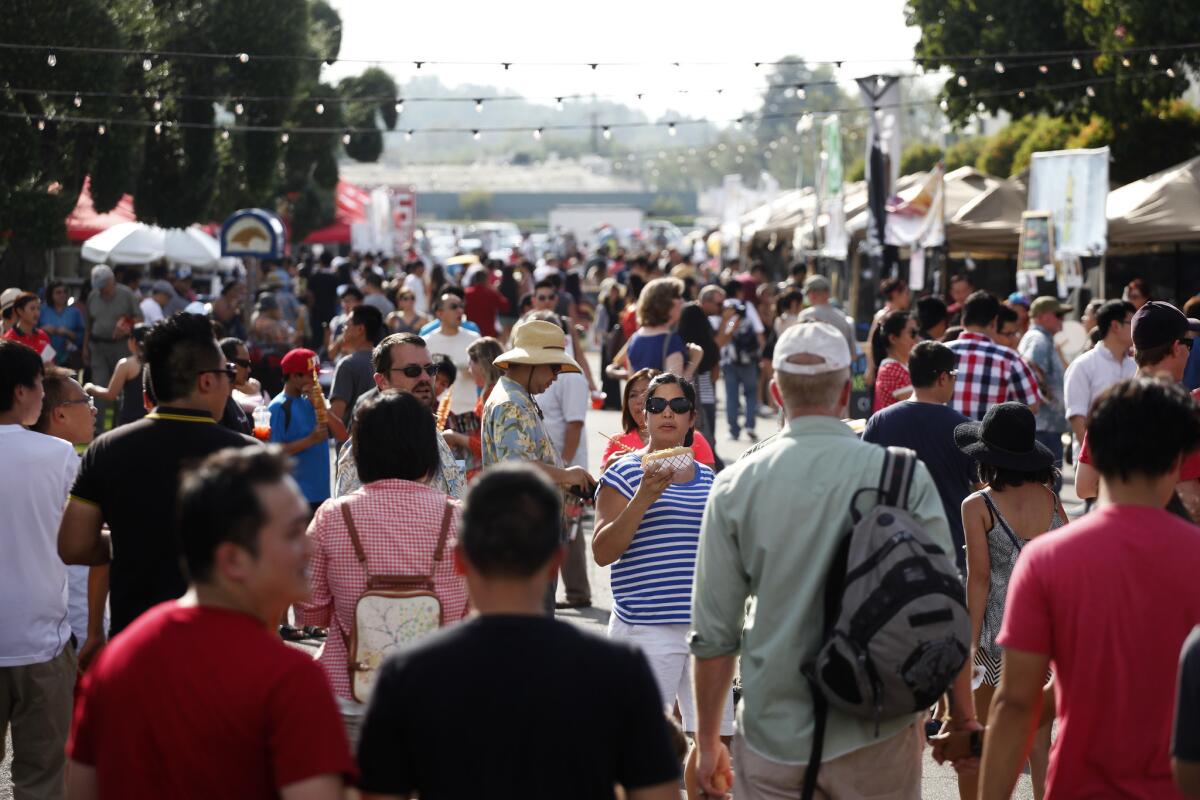
Prices begin at a buck or two for sample plates of chicken wings or sausages. Portions are generous.
The markets are a cheaper version of the food-truck craze but with more choices and a laid-back, chatty atmosphere. Among the perennial favorites: Squid on a stick; stinky tofu; Peking duck tacos; pork belly musubi.
Go early to avoid the longer lines, which can stretch 40 minutes for such popular items as spiral-cut potatoes.
How much: Admission is $3-$5, depending on when you go.
Where: The 626 Night Market is at Santa Anita Park, 285 Huntington Drive, in Arcadia, 17 miles northeast of downtown L.A. The OC Night Market is at the Fair and Event Center, 88 Fair Drive, in Costa Mesa, 40 miles southeast of downtown L.A. Each venue holds a Friday-Sunday event about once a month during the summer. See websites for schedules.
Info: 626 Night Market, OC Night Market
Sniff sulfur and step lightly among the geothermal oddities of Bumpass Hell in Lassen Volcanic National Park
Why: This territory, in California’s northernmost national park, is this state’s own Yellowstone.
What: Bumpass Hell, a 3-mile round-trip trail full of steam-belching scenery, is the marquee hiking attraction of Lassen Volcanic National Park. But Lassen gets just one tourist for every 11 who reach that other Yellowstone. So you’ll probably have the trail to yourself.
Instead, enjoy the most geothermally active corner of the state, its slopes and meadows dotted with boiling creeks, steaming lakes and bubbling mud pots. It’s only open in warmer months, and because of the big snows last winter, park rangers say the trail probably won’t open until mid-July in 2017. (Lassen National Park Highway, the 30-mile-long main route through the park, was expected to open in early July. Check with rangers for updates.)
Impress your fellow travelers by casually mentioning that when Mount Lassen last erupted, in 1915, it sent mushroom clouds seven miles into the stratosphere. And if that seems to take their breath away, remember that you’re 8,000 feet above sea level. It might just be the altitude.
Where: Lassen Volcanic National Park, 48 miles east of Redding, is 570 miles north of downtown L.A.
How much: Park admission is $20 per vehicle (for a week) from April 16 through Nov. 30. In colder months, it’s $10.
Info: Lassen Volcanic National Park
Explore space from the Jet Propulsion Laboratory in La Cañada
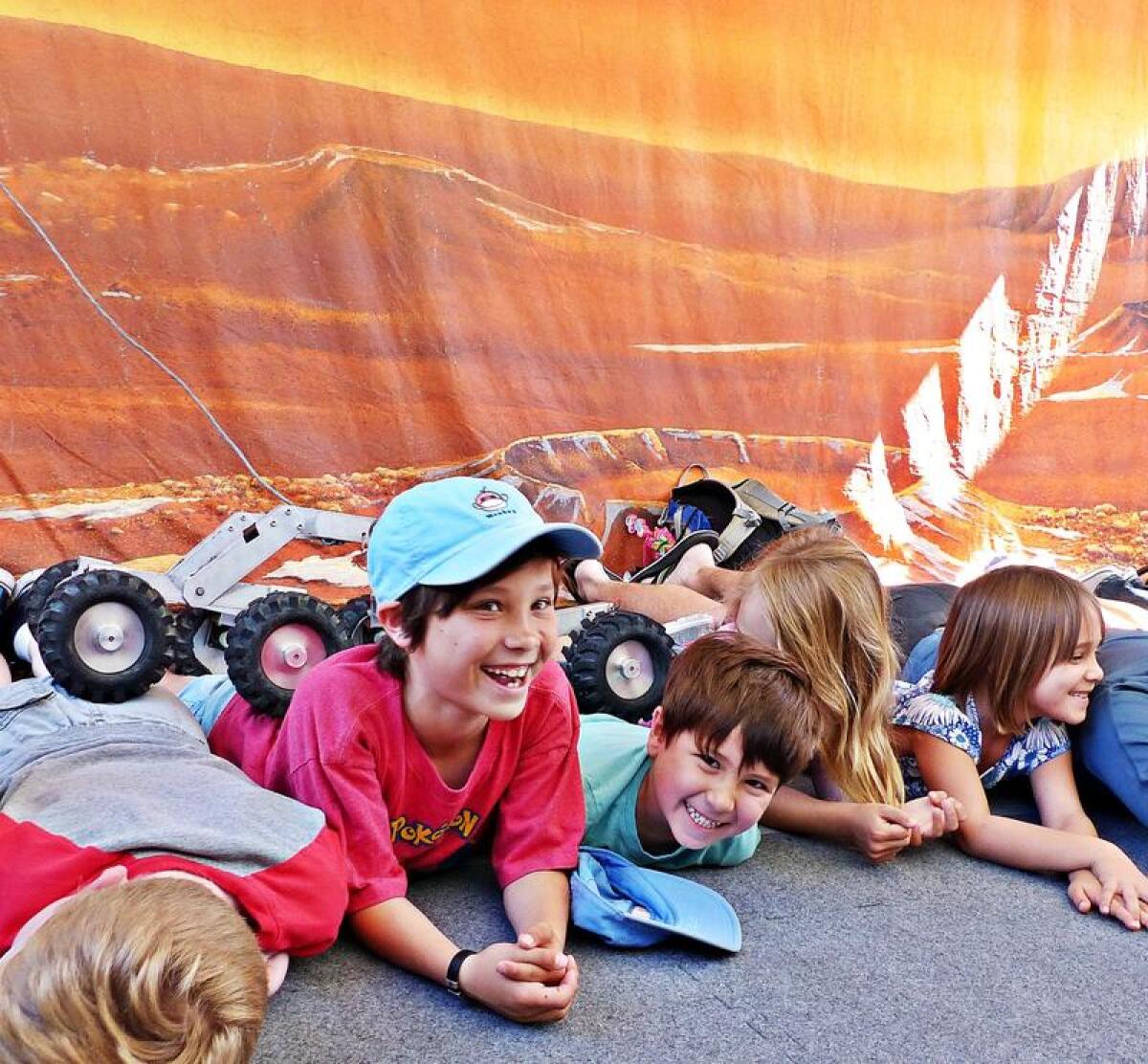
Why: Maybe you’ve always wondered about the nature of the universe, or maybe you just wanted to be a rock on Mars. Either way, here’s your chance.
What: You can visit the Jet Propulsion Laboratory on a weekday tour or through its annual open house, the “Explore JPL” weekend. (In 2017, it was May 20-21.) In one Explore JPL event this year at the well-guarded campus in the foothills La Cañada Flintridge, visitors got down low and imagined they were pebbles and boulders on faraway Mars while a remote-controlled “prototype” rover slowly climbed over them. Wicked-smart engineers and scientists explained their projects, which entailed studying the poles of Jupiter, the rings of Saturn and Earth’s atmospheric carbon dioxide levels, as measured from space.
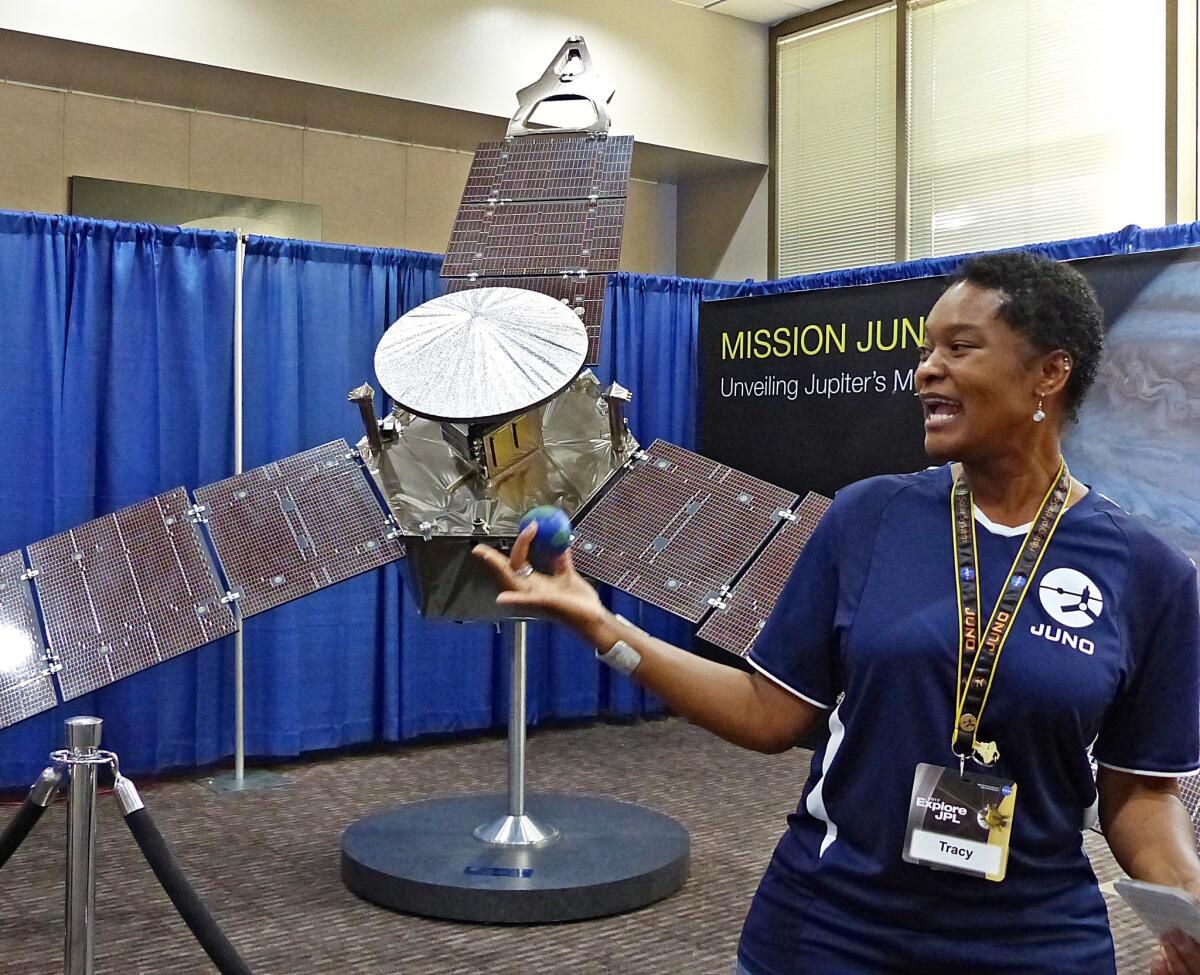
Can’t make the open house? Sign up in advance for a weekday tour, where you’ll visit key sites like Mission Control and the Spacecraft Assembly Building. Or, in the von Kármán Visitor Center, read and dream about where the golden record aboard Voyager (packed with Earth’s sounds and images) is now: far, far away.
Where: 4800 Oak Grove Drive, La Cañada Flintridge, 15 miles northeast of downtown L.A.
How much: Free. But reservations are required, and tours, lectures and other events often fill up months in advance.
Info: JPL Public Tours
Drive the Avenue of the Giants and disappear into a redwood forest
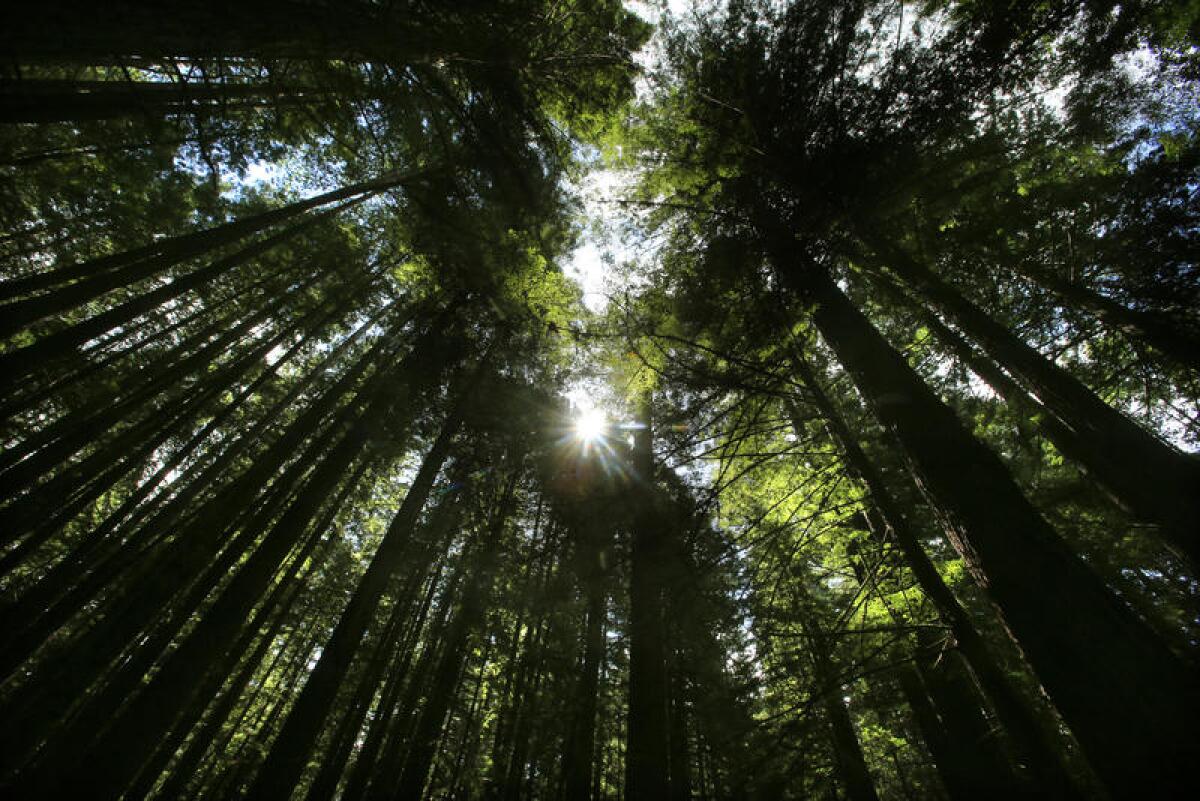
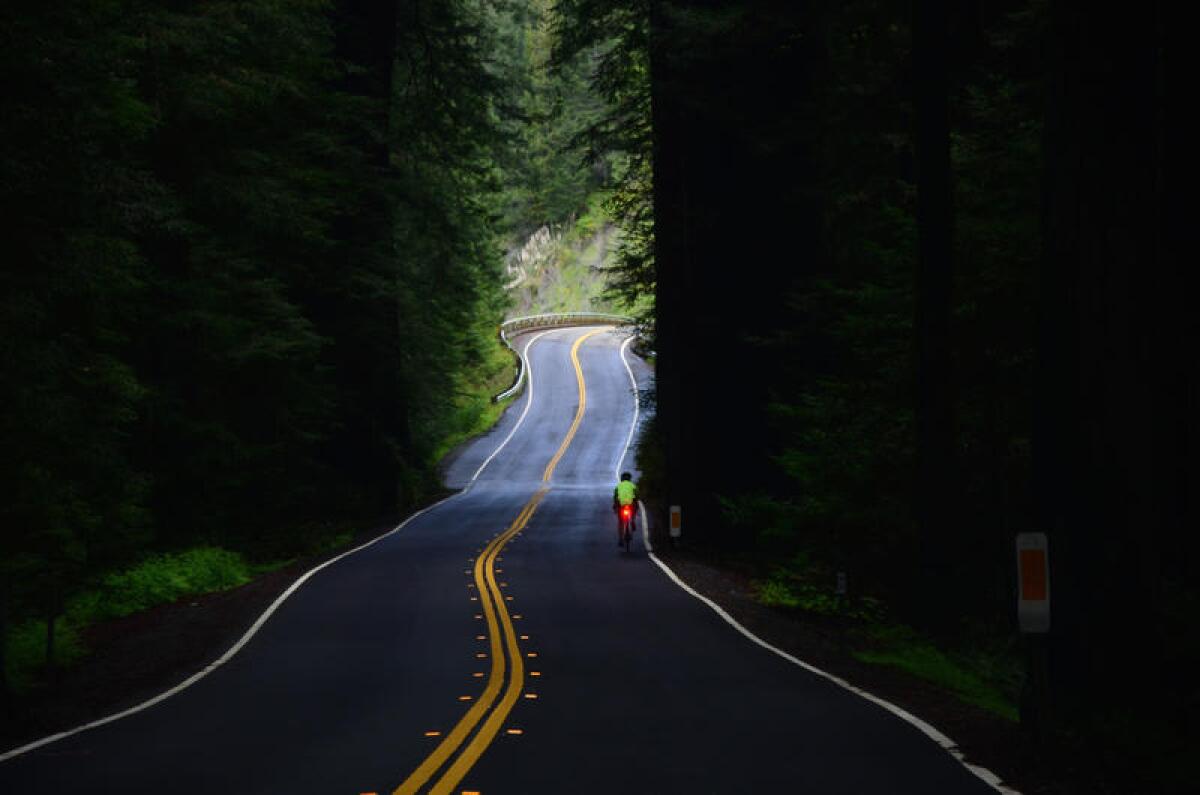
Why: This stretch of Humboldt County highway is a journey to the heart of redwood country, the largest remaining expanse of old-growth redwoods in the world.
What: The Avenue of the Giants, which follows alongside the Eel River and U.S. 101 for 31 or 32 miles, depending on who’s counting. It takes you past legions of majestic trees and a great collection of roadside redwood kitsch, including restaurants, lodgings and souvenir shops with treehouses, drive-on logs, chainsaw art and so on. If you’re heading south to north, the avenue will take you through the 53,000-acre Humboldt Redwoods State Park. Be sure to park and stroll a 1.3-mile trail (it’s flat) through Founders Grove to appraise the magnificent corpse of the Dyerville Giant, once thought to be the world’s tallest tree. In March 1991, the roughly 370-foot-tall tree crashed to the ground after a storm, making a boom that was heard for miles.
The park’s Rockefeller Forest has more trails, and there are swimming holes along the river.
Where: The Avenue of the Giants’ southern entrance is 6 miles north of Garberville, 585 miles northwest of downtown L.A. The Founders Grove of Humboldt Redwoods State Park is at Dyerville Loop Road and Avenue of the Giants, 4 miles south of Red Crest, 18 miles beyond the avenue’s southern entrance.
How much: Free.
Info: Avenue of the Giants travel guide, Humboldt Redwoods State Park
Spend a day at the races in Del Mar
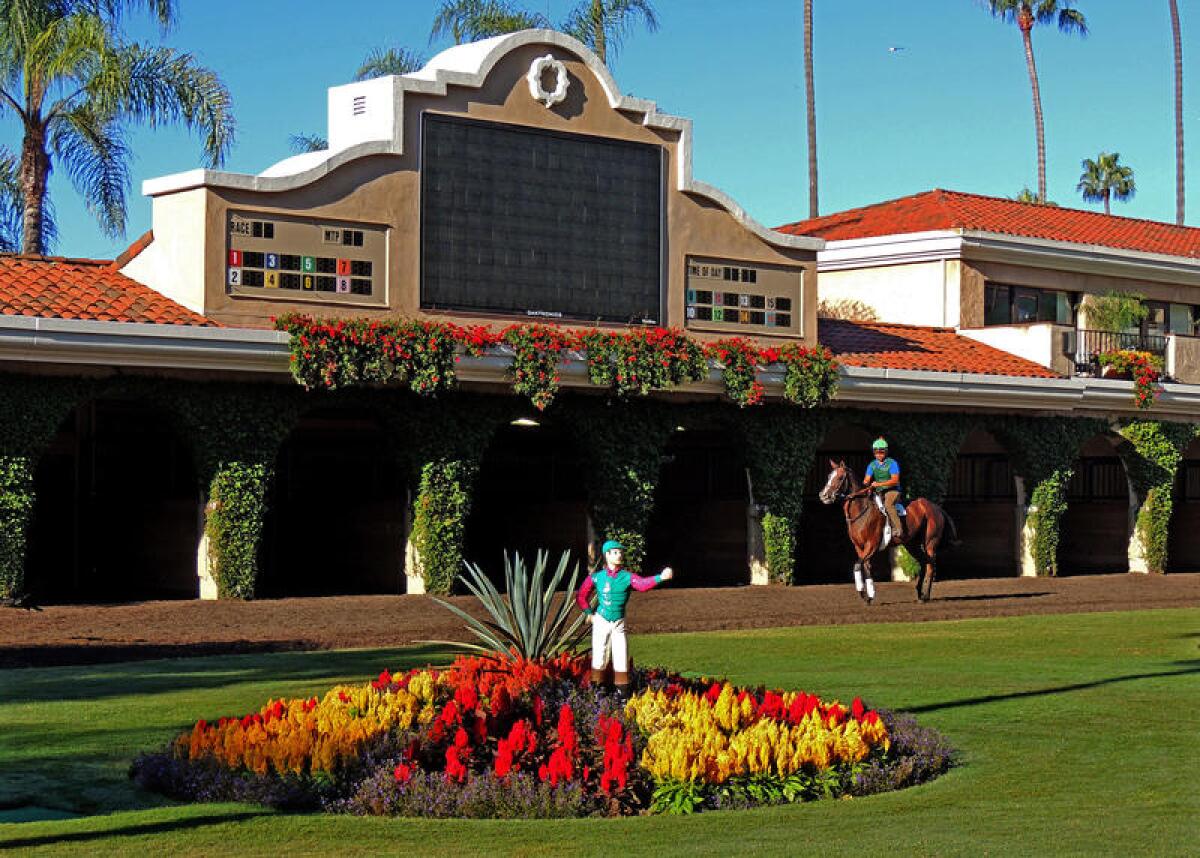
Why: There is surf (just outside the Del Mar Fairgrounds). There is turf. There are beautiful people and fancy hats (especially on opening day). And Del Mar’s summertime horse-racing scene goes back to the 1930s, when Seabiscuit sprinted to one of his biggest wins here.
What: Del Mar’s 78th season of horse racing opens July 19. The action continues Wednesdays through Sundays, and the final day of the season will be Labor Day, Sept. 4. First post time is 2 p.m. most days, 4 p.m. on Fridays, and 3:30 p.m. on Aug. 25 and Sept. 1. Later in the year, Del Mar will also host the coveted Breeders’ Cup competition, Nov. 3-4.
Singer Bing Crosby and friends got this enterprise started in 1937. It got a big boost two years later when Seabiscuit won a match race that sparked national headlines. Then, after shutting down for much of World War II, the track began to attract a big show-business crowd. (It didn’t hurt that this is the nation’s only seaside racetrack.) All these years later, there aren’t so many crooners booked for the Friday night concert series, but there’s certainly plenty of music, and if you’ve already paid admission to the track, the concert is free. (If you haven’t, the cost is $20, age 18 and over.)
And of course there are plenty of upscale restaurants and bars in neighboring Del Mar and Solana Beach (not to mention La Jolla to the south and Encinitas and Carlsbad to the north).
Where: 2260 Jimmy Durante Blvd., Del Mar, 108 miles southeast of downtown L.A.
How much: Admission (no seat included) is usually $6-$10, but $10-$30 on opening day. Reserved or box seats are $5-$30. A table for trackside dining will run you $50-$350. Parking is $10-$15. Children 17 and under are free and must be accompanied by a parent or guardian.
Cruise the Sunset Strip, where the signs are as loud as the music
Why: The Strip, a 1.5-mile stretch of Sunset Boulevard between Hollywood and Beverly Hills, is as loud and glitzy as Sunset Boulevard gets. It’s got bright lights, bold signage, live music and generations of celebrity highlife, misbehavior and tragedy underfoot.
What: Before the actors, musicians, models and assorted party people and fame-seekers arrived, this neighborhood was a hangout in the 1920s for gangsters (perhaps because it’s just outside Los Angeles city limits). Nowadays it’s part of West Hollywood and raucous nights continue at venues including the following:
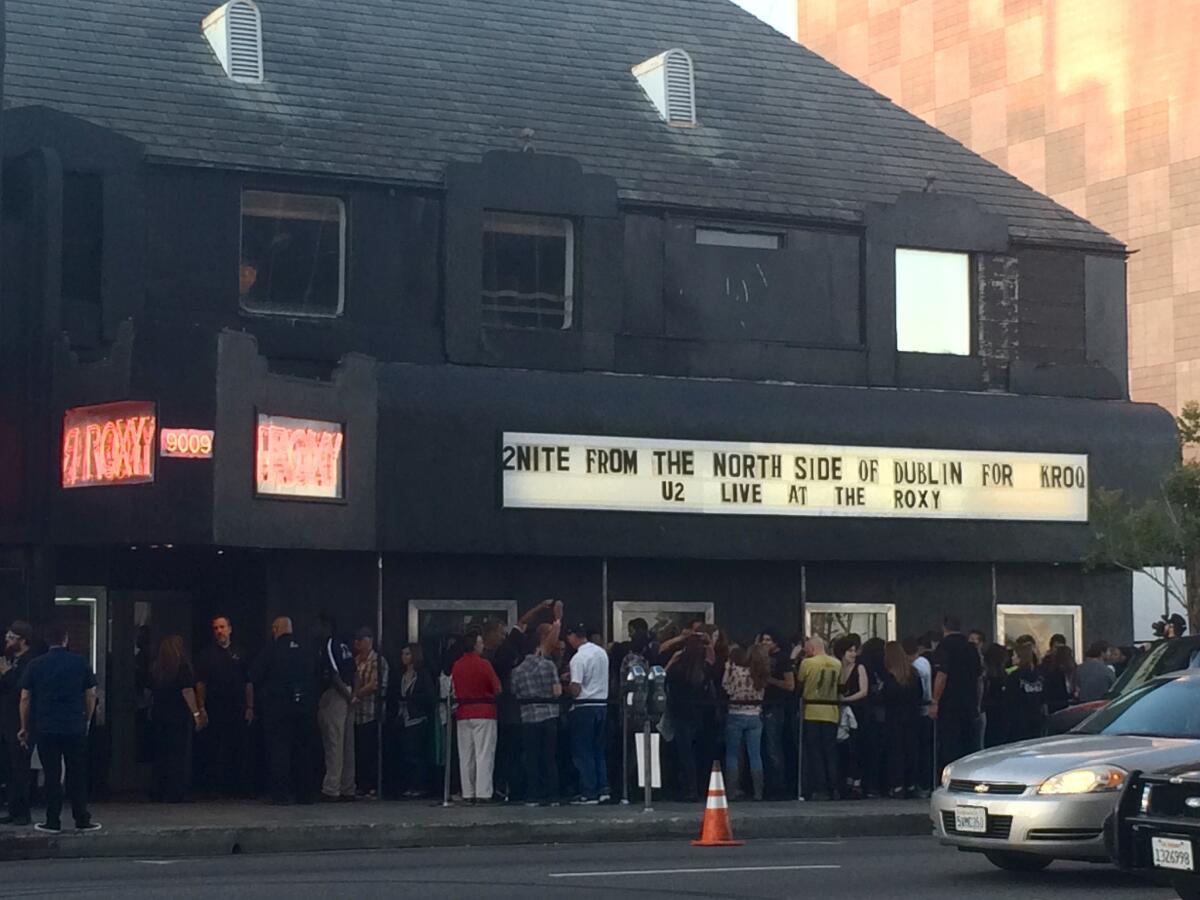
The Whiskey-a-Go-Go, a famed rock music venue, goes back to 1964. The Roxy Theatre has been staging live shows since 1973. The Viper Room, which opened in 1993 and saw actor River Phoenix’s overdose death that same year, still offers live music. The Comedy Store goes back to 1972. The Chateau Marmont (just inside the L.A. city limit), opened in the 1930s,and continues to flourish as a hotel, restaurant and bar, despite John Belushi’s drug death there in 1982 and Helmut Newton’s fatal car accident there in 2004.
And if you’re haunting storied music venues, don’t forget the Troubadour (where Elton John, James Taylor and Tom Waits played crucial early gigs), 12 blocks south of Sunset on Santa Monica Boulevard at North Doheny Drive in West Hollywood.
Where: The “Strip” section of Sunset Boulevard, west of Marmont Lane and east of Phyllis Street, is in West Hollywood, 10 miles northwest of downtown L.A.
How much: It’s free to look. And you can probably afford to buy something or catch a reading at Book Soup. Admission prices for live music vary widely. Nightly rates at Chateau Marmont typically start around $520 (tax included).
More info: Visit West Hollywood
Prowl the mysterious gardens of Greystone, a Beverly Hills mansion and murder scene
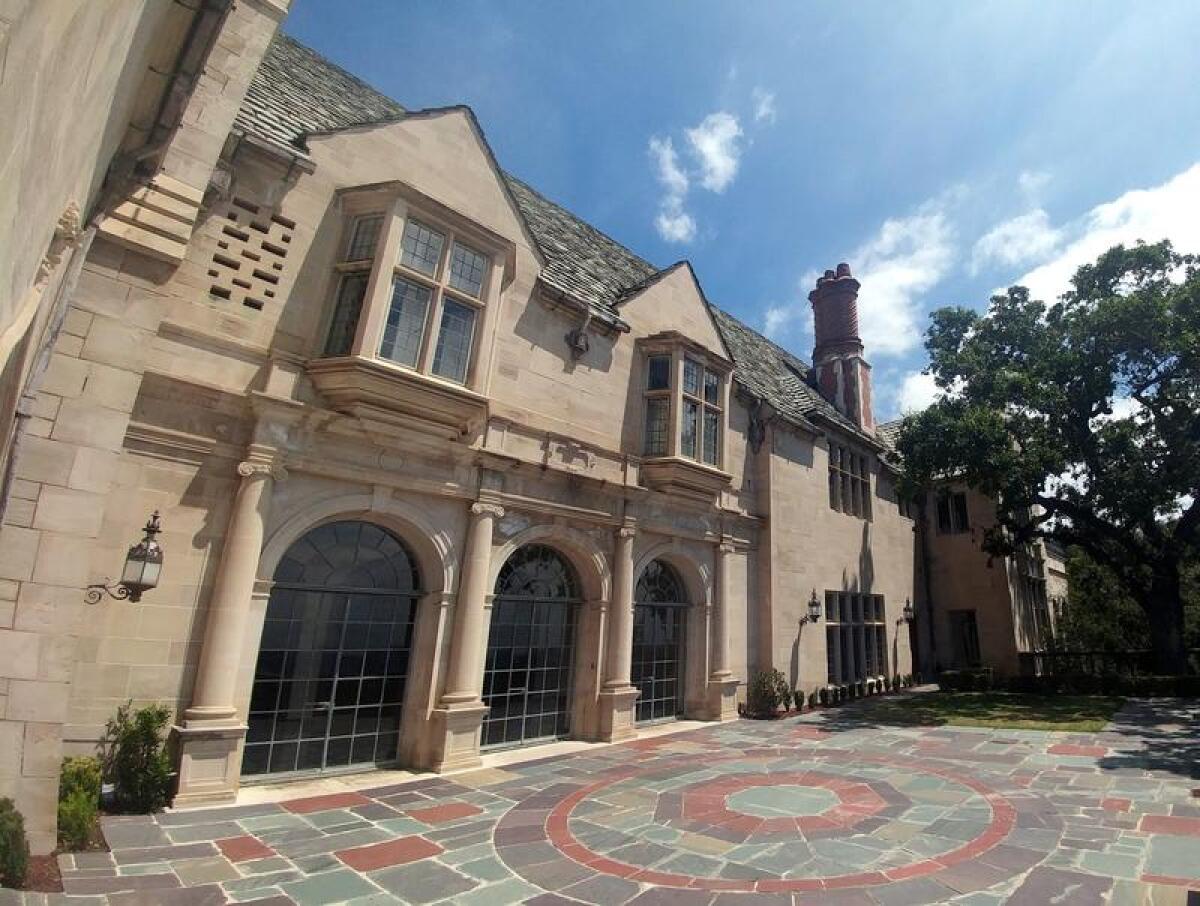
Why: Its cypress lane, gargoyle fountains, rectangular ponds, and Gothic and neoclassical architectural details make Greystone Mansion a gem. Once there, you’ll be able to walk through a tycoon’s manor with L.A. history and a murder mystery attached.
What: In 1892, Edward Doheny and his friend Charles Canfield were the first to strike oil in Los Angeles. They later went on to become the largest producers of oil in the world at the time. By the late 1920s Doheny’s son Ned had started construction of the mansion. But just five months after moving in with his family, Ned Doheny was found shot to death there. It is believed Ned was the victim of a murder-suicide perpetrated by his longtime friend Hugh Plunkett, but people are still speculating over motives.
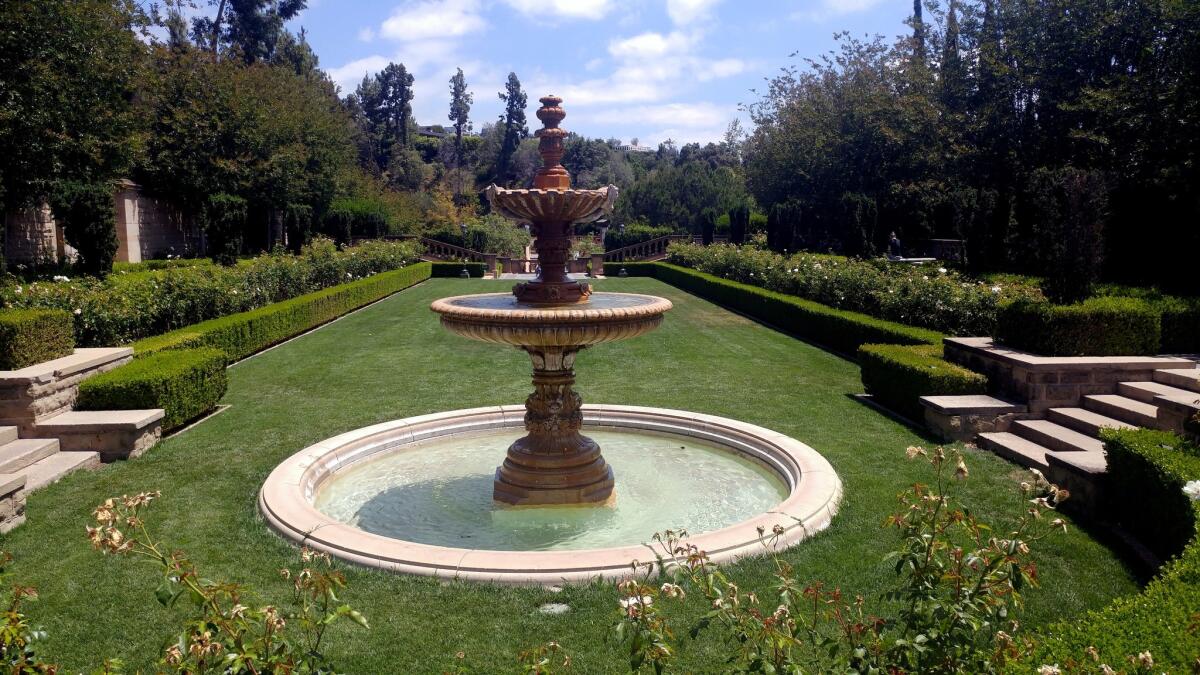
In 1965, the city of Beverly Hills bought the mansion and until 1982 leased it to the American Film Institute. Since then it has served as a hot destination for not only tours but legions of TV and movie shoots -- including “There Will Be Blood,” a 2007 California oil-boom story that was at least partially inspired by the Doheny tale. Some others: TV’s “Gilmore Girls” and “General Hospital” and the films “The Big Lebowski,” “Ghostbusters” and “The Witches of Eastwick.”
Where: 905 Loma Vista Drive, Beverly Hills, 13 miles northwest of downtown L.A.
How much: Admission to the grounds and parking are free. Guided tours of the mansion and gardens are offered the first Saturday of the month from December through April. Group tours are also available upon request at a cost of $15 per person (minimum of 10 participants required and a maximum of 20).
Info: Greystone Mansion
Study the colors and conflict that made San Diego’s Chicano Park
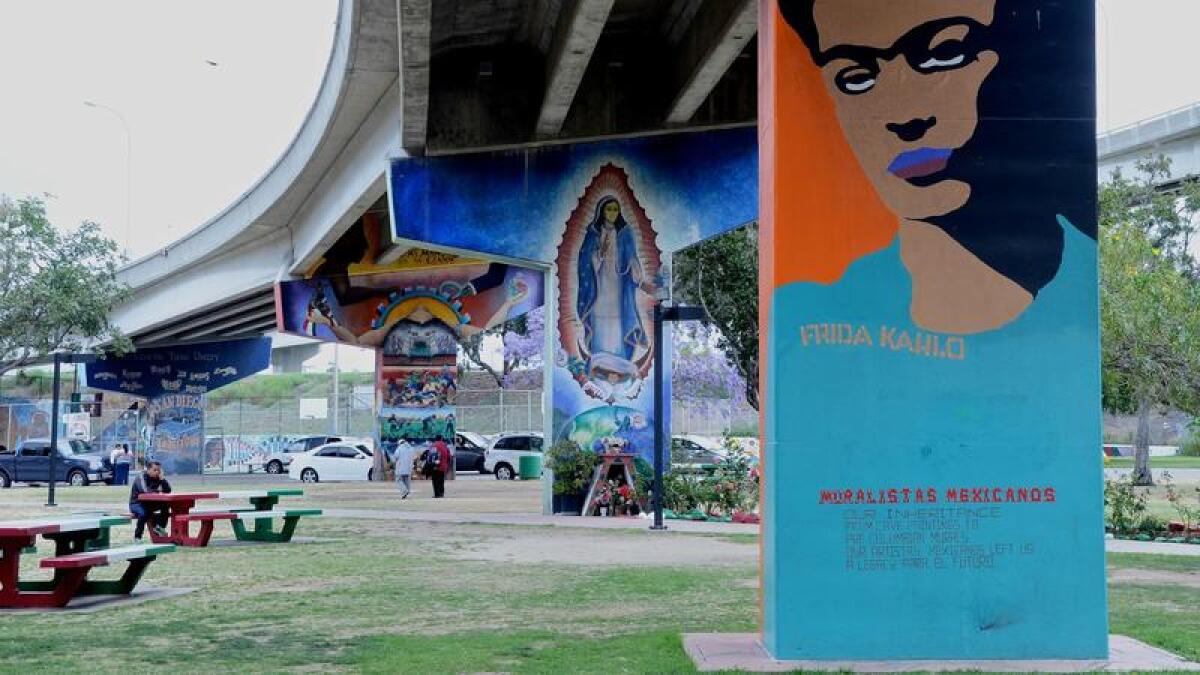
Why: Even with no social context, this would be a striking set of murals, improbably arrayed beneath the Coronado Bridge. But the context makes it doubly special.
What: When state and local officials expanded Interstate 5 through San Diego and built the Coronado Bridge in the 1960s, they split the longstanding blue-collar neighborhood of Barrio Logan. Then in 1970, when the California Highway Patrol started building an office where a park was expected, the largely Mexican American neighborhood rose up, occupied the site, staged demonstrations -- and eventually a park was built. Soon after came the first murals, converting the shady park’s forest of concrete bridge pillars into a gallery of broad canvases.
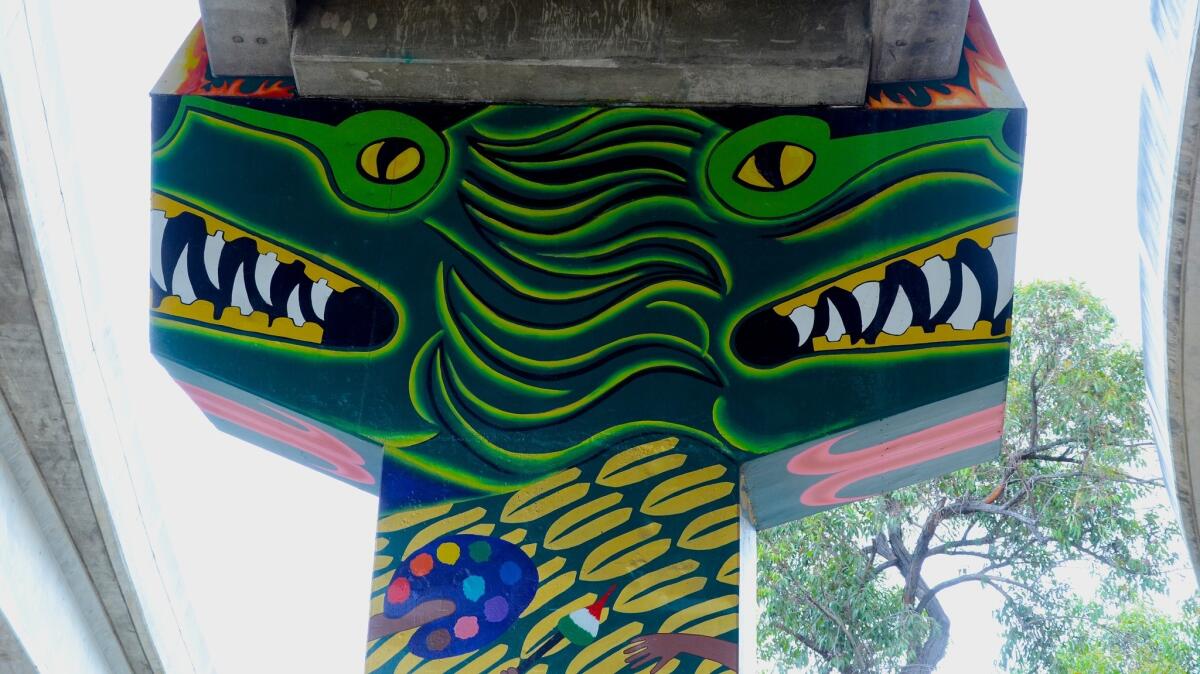
Now there are 49 murals, some celebrating Mexican icons like Pancho Villa and Frida Kahlo, some celebrating the park’s own history. On a Saturday morning, the 7.4-acre park is busy with kids on bikes, adults practicing ballroom dancing, skateboarders, tai chi lessons, old guys in cowboy hats, and the elevated hum of bridge traffic far above. Within two blocks, you can get flautas at Las 4 Milpas (frequently long lines) or tacos at Salud! (Both eateries are on Logan Avenue, which also has several galleries, studios and bars.) You won’t find any fancy ocean views. But the evidence of the neighborhood’s resilience is abundant. In early 2017, federal officials added the park to the National Register of Historic Places, crediting artists Salvador Torres, Mario Torero, Victor Ochoa and others.
Where: 1949 Logan Avenue, in downtown San Diego, less than two miles southeast of Petco Park, 130 miles southeast of downtown L.A.
How much: Free. Tacos at Salud!: $2.50-$4.
Info: Chicano Park, Barrio Logan
Dangle beneath Irvine’s big orange balloon
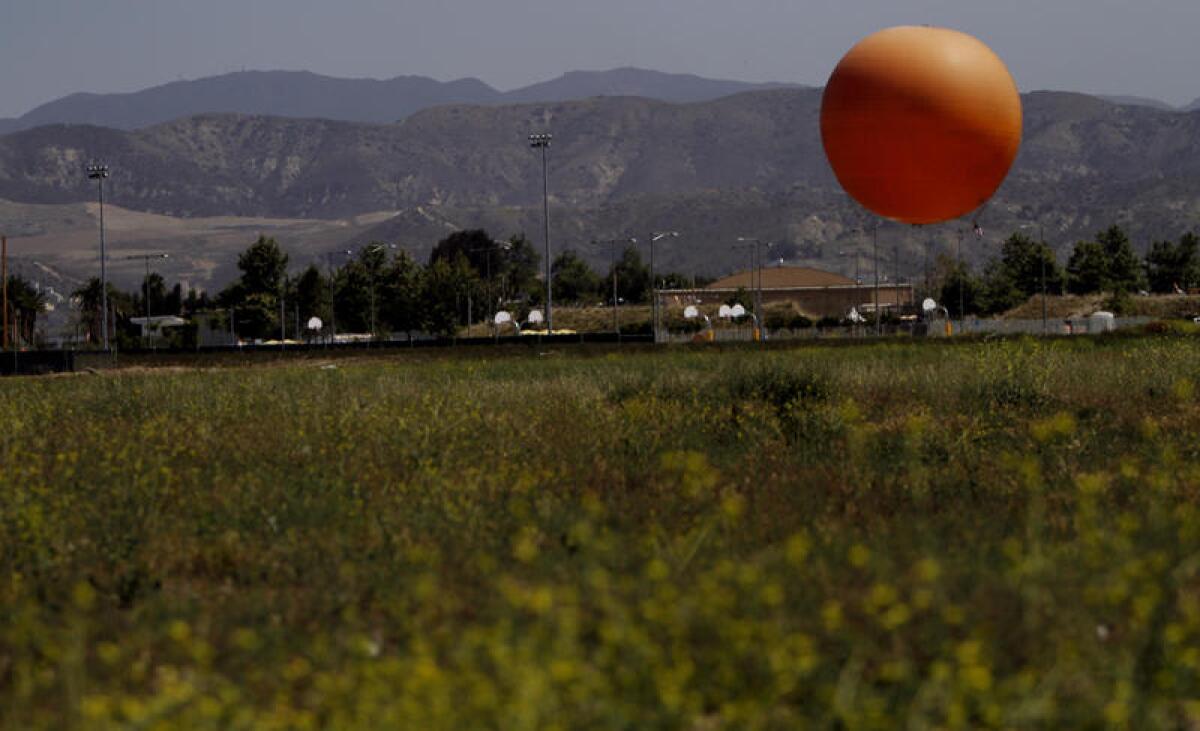
Why: Gently, this big balloon will take you 400 feet above Great Park in Irvine, giving a 40-mile view on a clear day.
What: The balloon, which opened in 2007, is 118 feet, top to bottom. The gondola that hangs beneath it is perpetually tethered to the ground by a steel cable. It carries up to 30 passengers at a time.
Great Park as a whole has gone through many delays and changes over the last decade, but its 76 publicly accessible acres are due to grow to 764 this year as sports facilities open. And the balloon is simple fun.
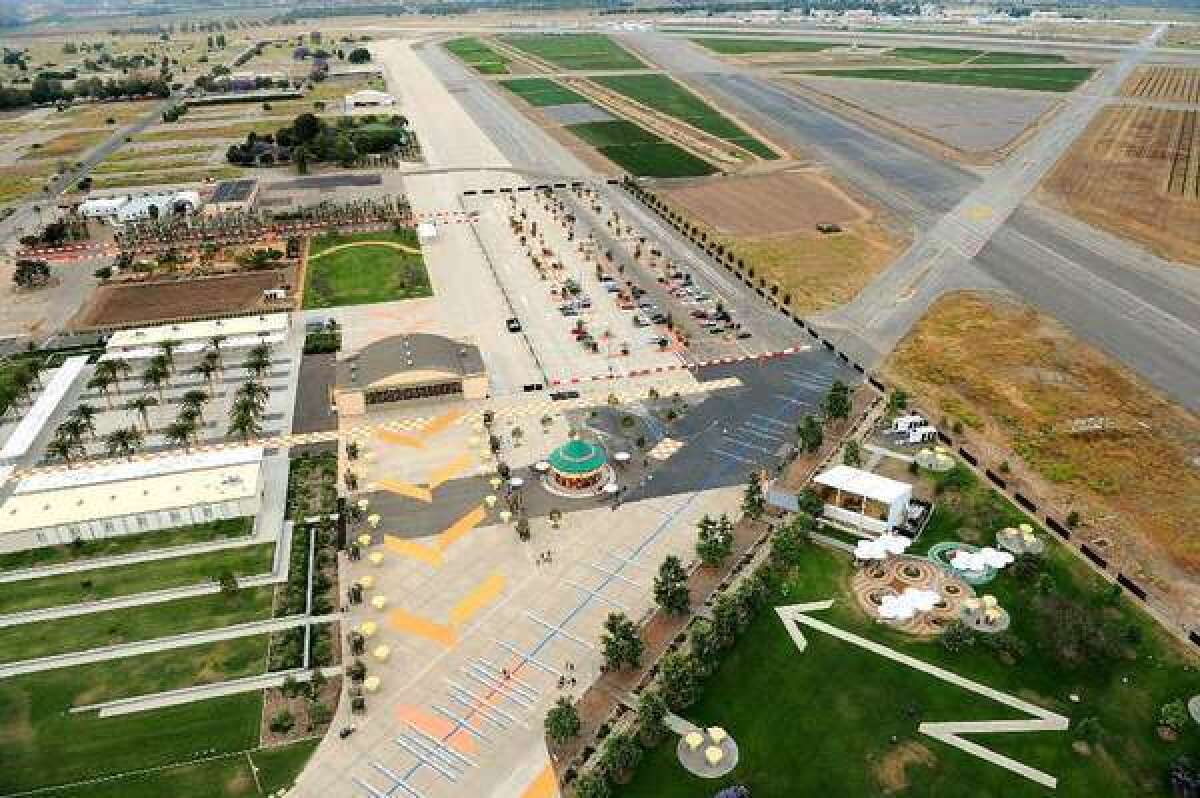
The attraction operates Thursday through Sunday, with no age, height or health restrictions. Rides are wheelchair-accessible. While you’re aloft, check out the park’s other features, including a carousel, sports facilities, an organic farm, a farmers market on Sundays and a historical timeline of how this open space -- a big chunk of the former Marine Corps Air Station El Toro -- came to be what it is today.
Where: 6950 Marine Orange County Great Park, Irvine, 42 miles southeast of downtown L.A.
How much: Adults pay $10 each. Ages 18 and younger ride free with a paid adult. Ages 13-18 pay $5 each when unaccompanied.
Info: Great Park Balloon
Hang loose and savor drama in Topanga Canyon
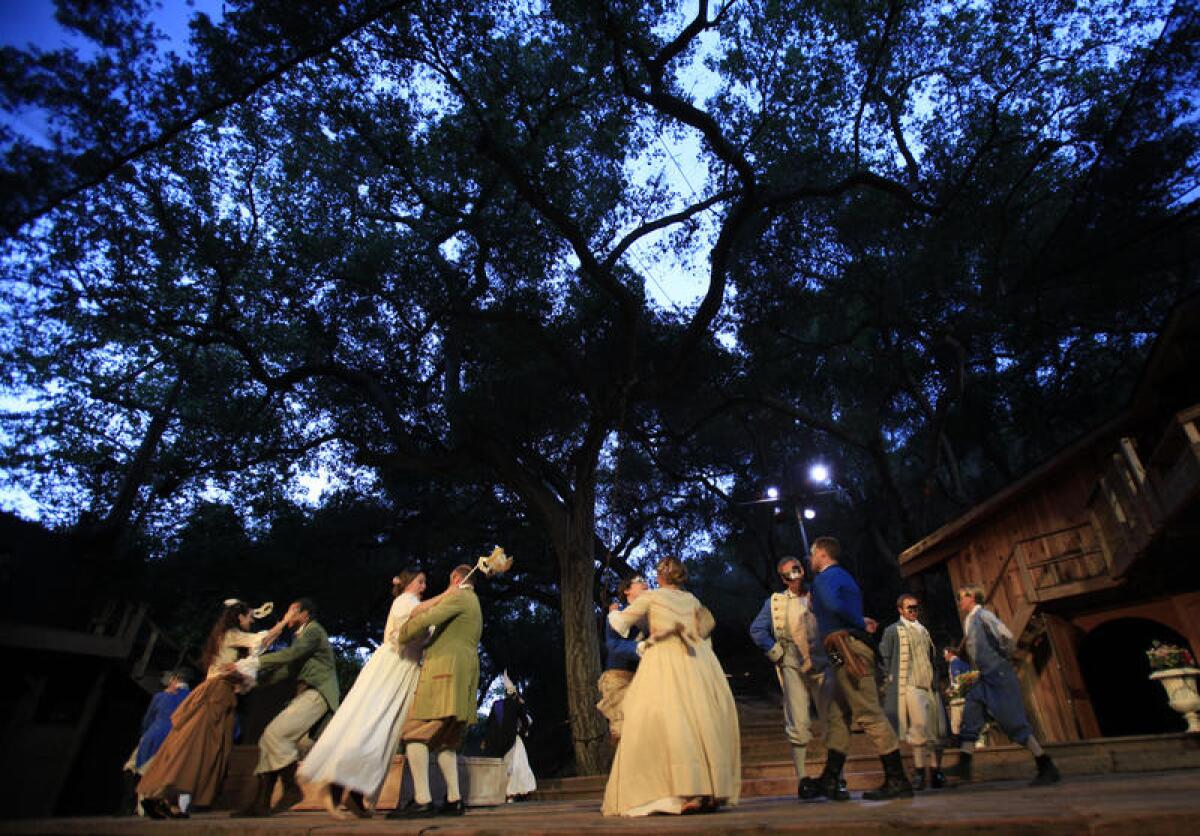
Why: Country scenery and hippie echoes dominate Topanga Canyon, which feels far away from the city but really isn’t.
What: Topanga is a haven of bucolic scenery and rustic, tucked-away homes near a handful of restaurants and attractions, all strung together along a single main road, Topanga Canyon Boulevard, which follows a winding creek. Neil Young lived here for a while, and Jim Morrison is said to have written “Roadhouse Blues” about the long-gone Topanga Corral. You can hike Topanga State Park (36 miles of trails and ocean views), take in the green panorama from the Top of Topanga Overlook (parking limited) or catch an open-air show at Will Geer’s Theatricum Botanicum, whose 2017 summer season includes “The Merchant of Venice,” “A Midsummer Night’s Dream” and three more contemporary works. (This company has a long, strong track record, and the Geer family story is a piece of compelling, thorny Hollywood history.)
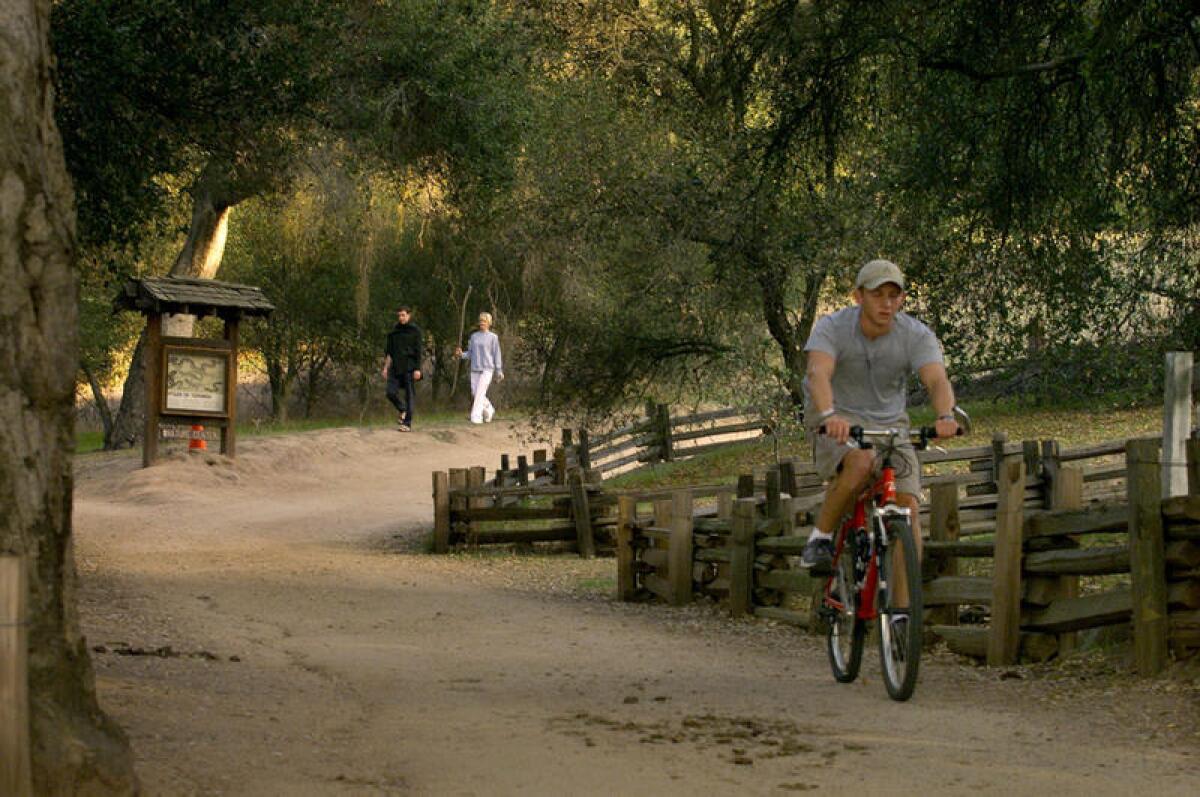
You could book a special-occasion meal at the Inn of the Seventh Ray (dinner main dishes $22-$44), which has been serving mostly organic meals since the 1970s. Also, bear in mind that the Pacific end of the canyon is within a mile of the Getty Villa in Pacific Palisades.
Where: Will Geer’s Theatricum Botanicum is at 1419 N. Topanga Canyon Blvd., midway between U.S. Route 101 and the Pacific, 28 miles northwest of downtown L.A.
How much: Hiking in the park is free. Most Theatricum Botanicum tickets are $25-$38.50.
Info: Will Geer’s Theatricum Botanicum, Topanga State Park
Sneak off to Jalama for a burger and some coastal solitude

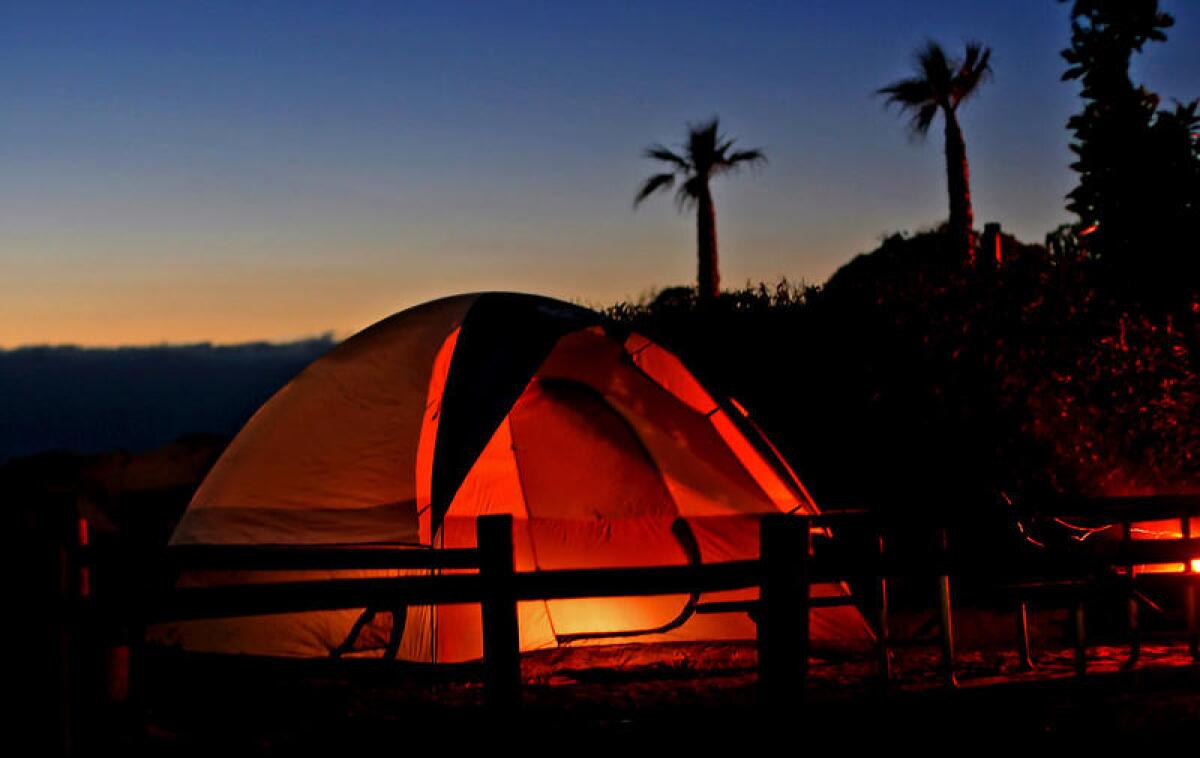
Why: Raw coastline, juicy burgers.
What: To reach Jalama Beach County Park, you follow a twisting, two-lane highway from Lompoc to the edge of the continent and confront a horizon full of rough surf and raw, windy coastline. This campground (better for beachcombing than swimming) feels solitary, but there’s a general store where they’ll make you a Jalama Burger (carnivores, say yes) and sell you firewood or groceries or beer. There are 109 campsites, some cabins, hot showers, a playground and a set of railroad tracks.
Where: 9999 Jalama Road, Lompoc — which is actually 18 miles southwest of Lompoc, 170 miles northwest of downtown L.A.
How much: $10 per car. Jalama Burger, $7.50. Campsites $25-$45 nightly, cabins $120-$220.
Info: Jalama Beach County Park
Lunch at the Polo Lounge and observe one of Hollywood’s longest-running hits
Why: If celebrity had its own planet, it would look like the Beverly Hills Hotel. There is enough showbiz lore here – trysts, honeymoons and naked sunbathing – to be a movie in itself, a “Caddyshack” for the rich and resplendent. Still, the old hotel retains a dignity and opulence. For most of us, the best way to sample that is a leisurely lunch at the Polo Lounge.
What: Sure, it’s open almost all the time (7 a.m. to 1:30 a.m.) but the time to go is at lunch. Make your reservation for 1, on the patio (not inside) and draw the afternoon out on the sun-dappled brick, where bougainvillea petals will butterfly down into your salad or soup, as if a special effect. The Polo Lounge is not cheap, and it’s probably not the best meal in town, but it might be the grandest and most memorable. A grand piano plays at just the proper volume, and the service is attentive, not fussy.
Closer to the coast, you’d be cold; closer to downtown, a little too warm. Here, the air is so sublime it’s almost carbonated. There are Polo Lounge offshoots too: a Sunday jazz brunch and afternoon teas, from 3-5 p.m. on Fridays and Saturdays. But before you try anything else here, go for lunch, which is casual and relaxed. A decent pair of jeans is fine.
Unless you’re famished, stick with the salads, which is what Beverly Hills does best anyway. You can always add tuna, shrimp or steak. A perennial favorite is the McCarthy – chicken, beets, eggs, bacon, avocado – a salad almost as famous as some of the patrons who order it. But you’re not there for the food, particularly Russian caviar that goes for $190 an ounce. You’re there for the special effects.
How much? Lunch entrees from $26 to about $50.
Where: The Beverly Hills Hotel, 9641 Sunset Blvd, Beverly Hills, Calif., 13 miles west of downtown L.A.
Info: Reservations
Pedal Mt.Tamalpais, where modern mountain bikes were born
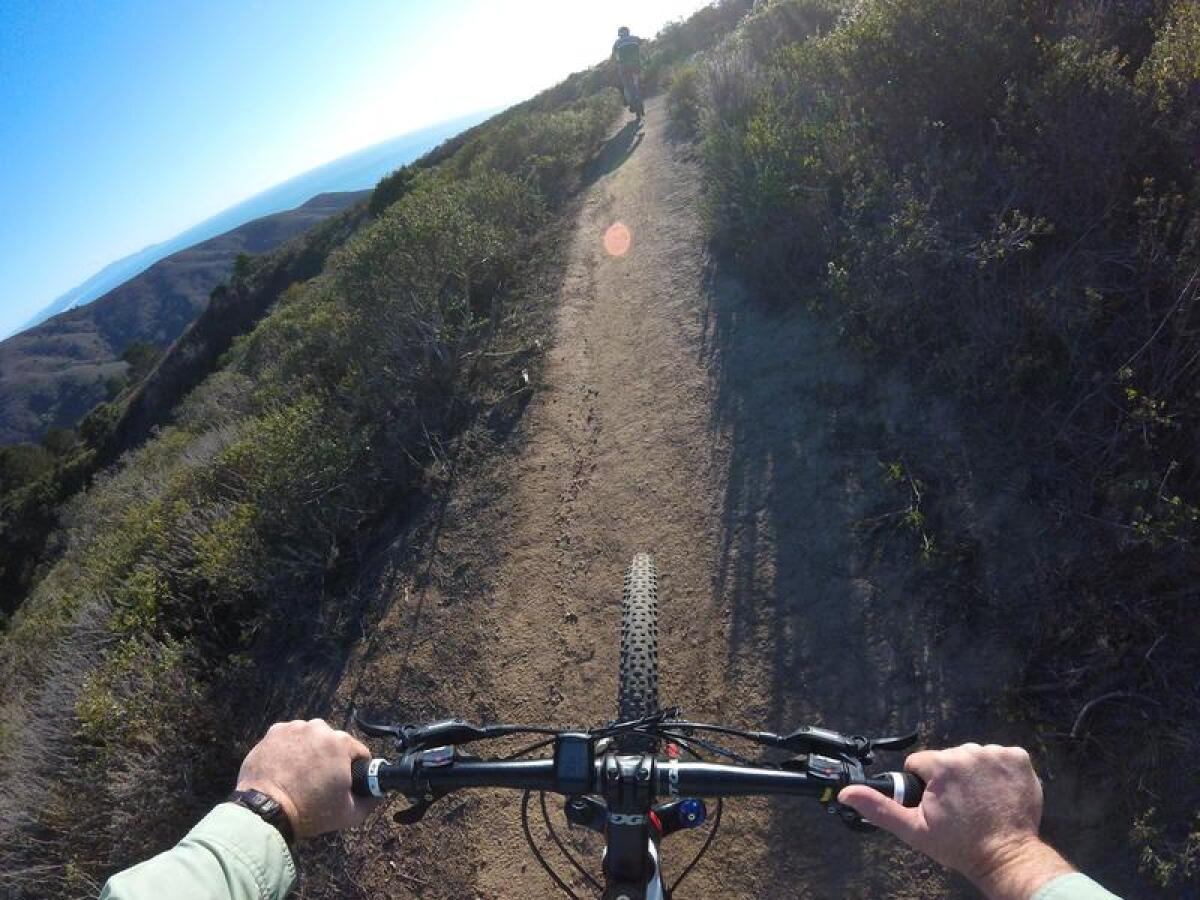
Why: Its peak might be a mere 2,571 feet above sea level, but modern mountain biking wouldn’t be what it is without Mt. Tamalpais.
What: Mt. Tamalpais State Park, cradle of mountain-biking innovation in the 1970s, is full of options, including fire roads and multi-use trails (and neighboring public lands have even more). Two favorite paths (open to bikers, hikers and horses alike) are the Coast View and Dias Ridge (sometimes spelled Diaz) trails. If you ride Dias Ridge, you’ll end at Muir Beach by the Pelican Inn, a facsimile of a 17th century English pub that serves refreshments and hearty meals.
Non-cyclists, don’t worry. The park has plenty of cyclist-free trails. At least one is wheelchair-accessible: the Verna Dunshee Trail (0.75 mile) at East Peak, known for big views. (Accessible tables, restrooms and drinking fountains are nearby.)
Where: Before starting, check for road closures, especially along Highway 1 between Muir Beach and Stinson Beach
How much: No entrance charge, but some trailheads have parking fees.
Info: Mount Tamalpais State Park
Shop and gawk Rodeo Drive
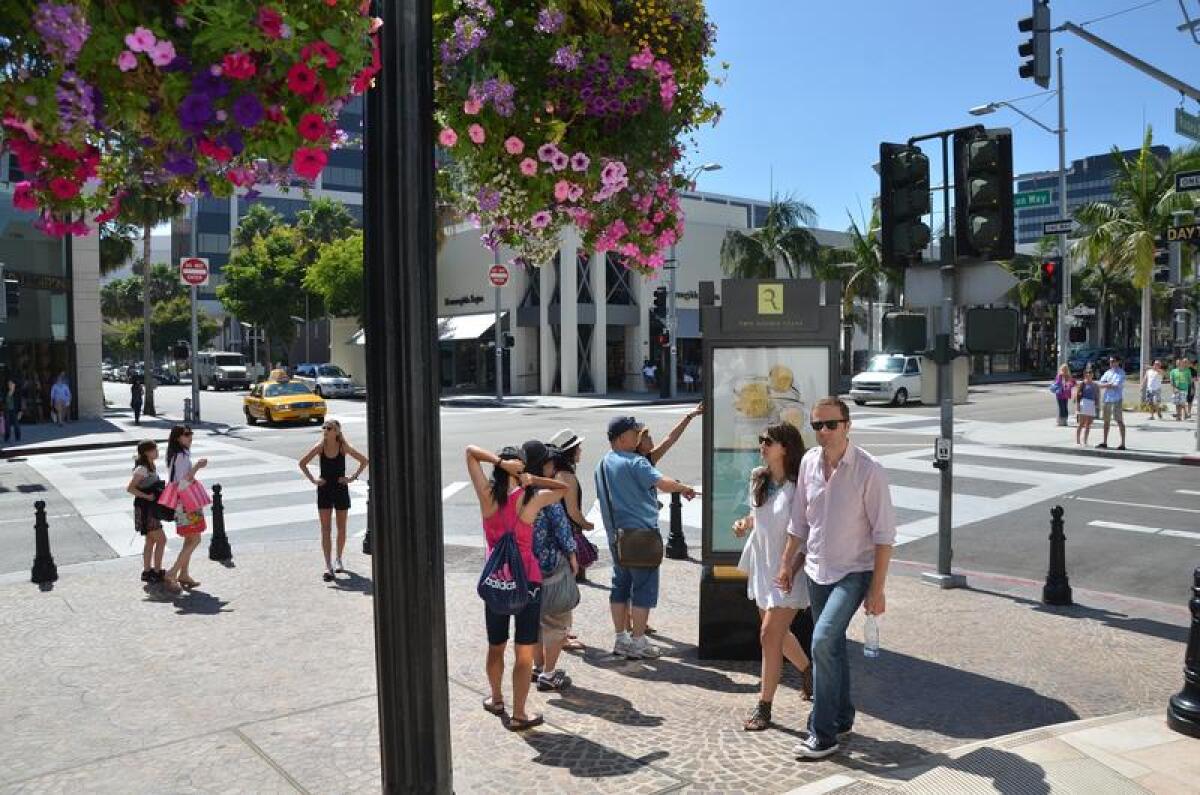
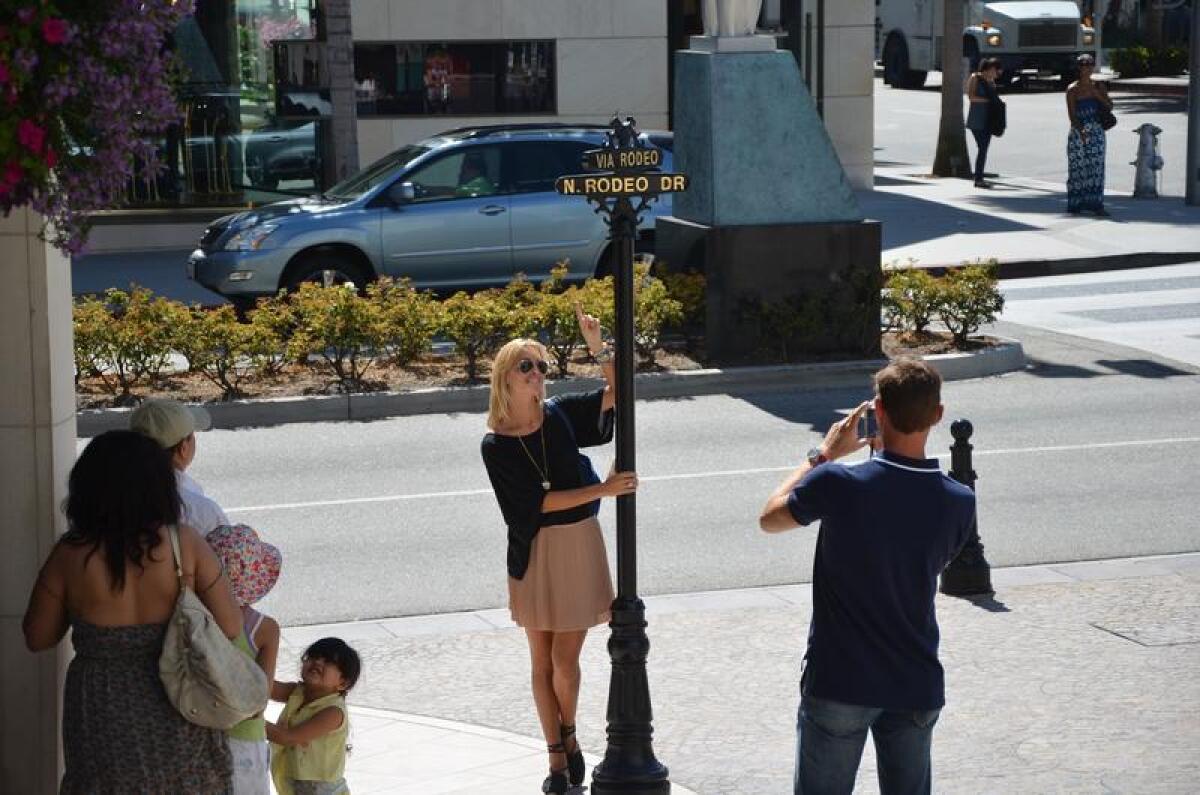
Why: In a world of conspicuous consumption, there is no place more conspicuous to do your consuming.
What: The Rodeo Drive shopping experience — which became a globally recognized thing around the time Judith Krantz’s book “Scruples” came out in 1978 — boils down to about three blocks. Start at Beverly Gardens Park, at Rodeo and South Santa Monica Boulevard. Next make your way southeast on Rodeo (say Ro-Day-O, as locals do), past Brighton and Dayton ways, to Wilshire Boulevard. This gives you a good look at Cartier, Gucci, Prada, Harry Winston, Burberry and their well-heeled neighbors. Near Brighton Way, look for the late designer Bijan’s yellow Rolls-Royce convertible, semi-perpetually parked near the House of Bijan at 420 N. Rodeo Dr.
Do this and you’ll wind up facing the Beverly Wilshire Hotel, where Warren Beatty once lived and Esther Williams taught 14-year-old Elizabeth Taylor how to swim and Richard Gere brought Julia Roberts in “Pretty Woman.”
Where: Beverly Gardens Park, at Rodeo and South Santa Monica, is 12 miles west of downtown L.A.
How much: Street parking is metered at $2 per hour, with multiple lots nearby. Bijan’s Rolls is said to be worth $1.6 million. As for the goods in the shops, if you have to ask ...
Info: Rodeo Drive directory
Get enlightened (or disgusted) by the edgy art of the Broad and MOCA in downtown L.A.
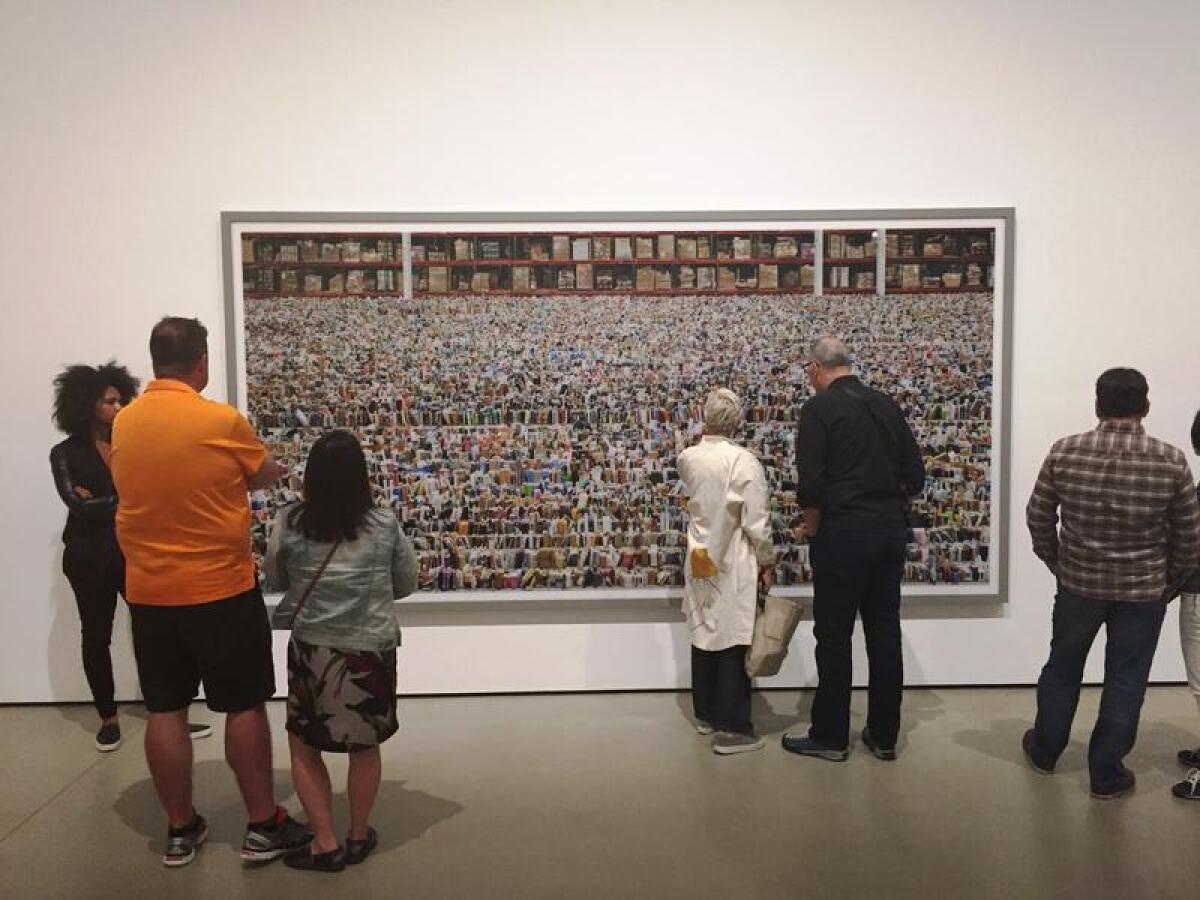
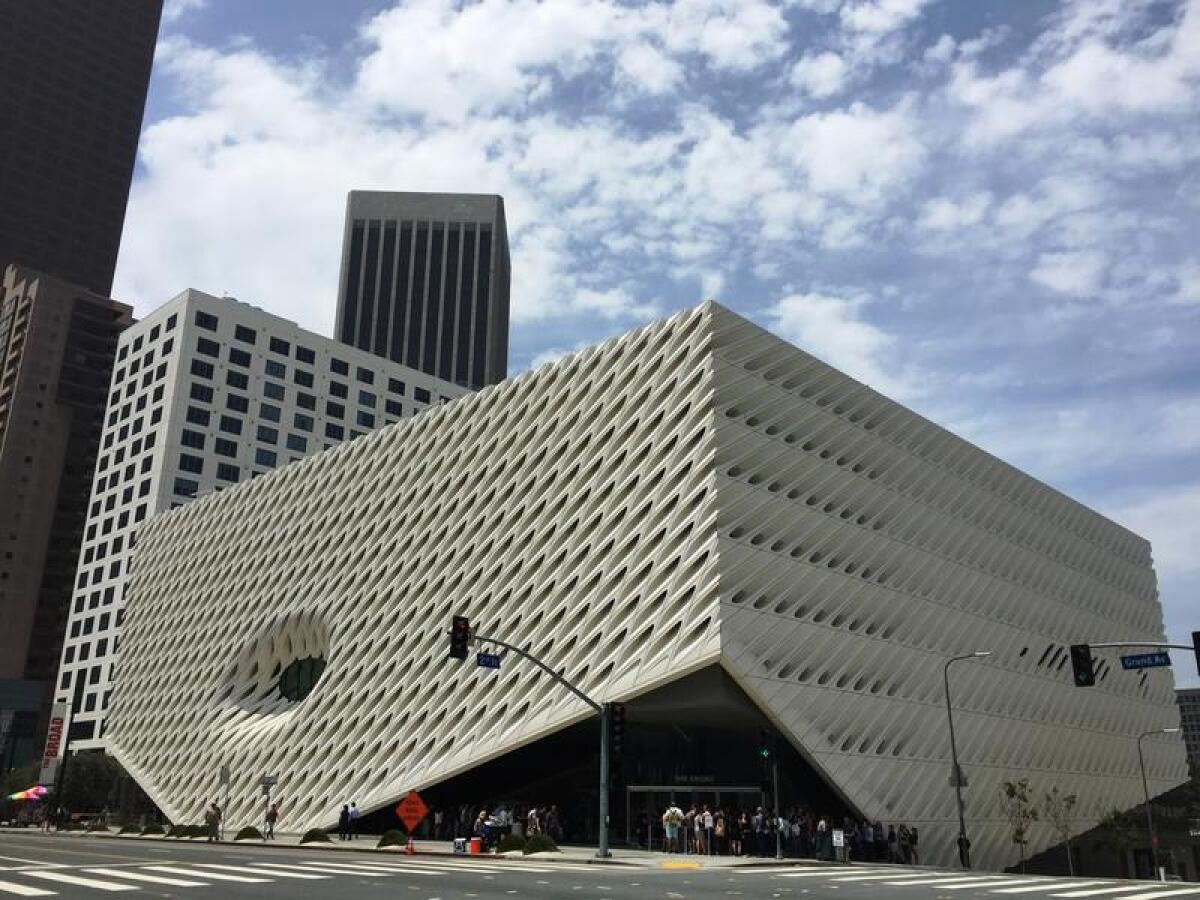
Why: These two museums are on the front lines of contemporary art worldwide, focusing on works made since 1945. They stand within a stone’s throw of each other on Grand Avenue.
What: The Broad Museum (opened in September 2015 and bankrolled by L.A. art maven Eli Broad) is free for general admission, but you have to reserve in advance or in the stand-by line, which can last more than an hour. The Museum of Contemporary Art (born in 1979) isn’t free, and isn’t getting so much buzz since the Broad opened. But both can startle, enlighten, disgust and amuse you.
Within the Broad, art stars like Jeff Koons, Takashi Murakami, Andy Warhol, Edward Ruscha and Andreas Gursky dominate the two levels of galleries, and visitors queue up to spend 45 seconds alone in Yayoi Kusama’s “Infinity Mirrored Room” (which will remain through Sept. 30. Just outside the museum, there’s a patch of grass under several gnarled old olive trees, and the restaurants Otium (seafood) and Vespaio (Italian).
MOCA’s Grand Avenue space (the museum also has a second site downtown and a third in West Hollywood) includes many of the same names in its permanent and temporary exhibitions. Out front stands Nancy Rubin’s sculpture “Airplane Parts” (which sometimes houses chirping sparrows).
Where: The Broad, 221 S. Grand Ave. MOCA, 250 S. Grand Ave., downtown L.A.
How much: The Broad is free. MOCA is $15 per adult, but if you show a same-day ticket stub from the Broad, MOCA will give you 50% off.
Info: The Broad, MOCA
Paddle the strange, saline waters of ancient Mono Lake, and keep an eye out for little critters
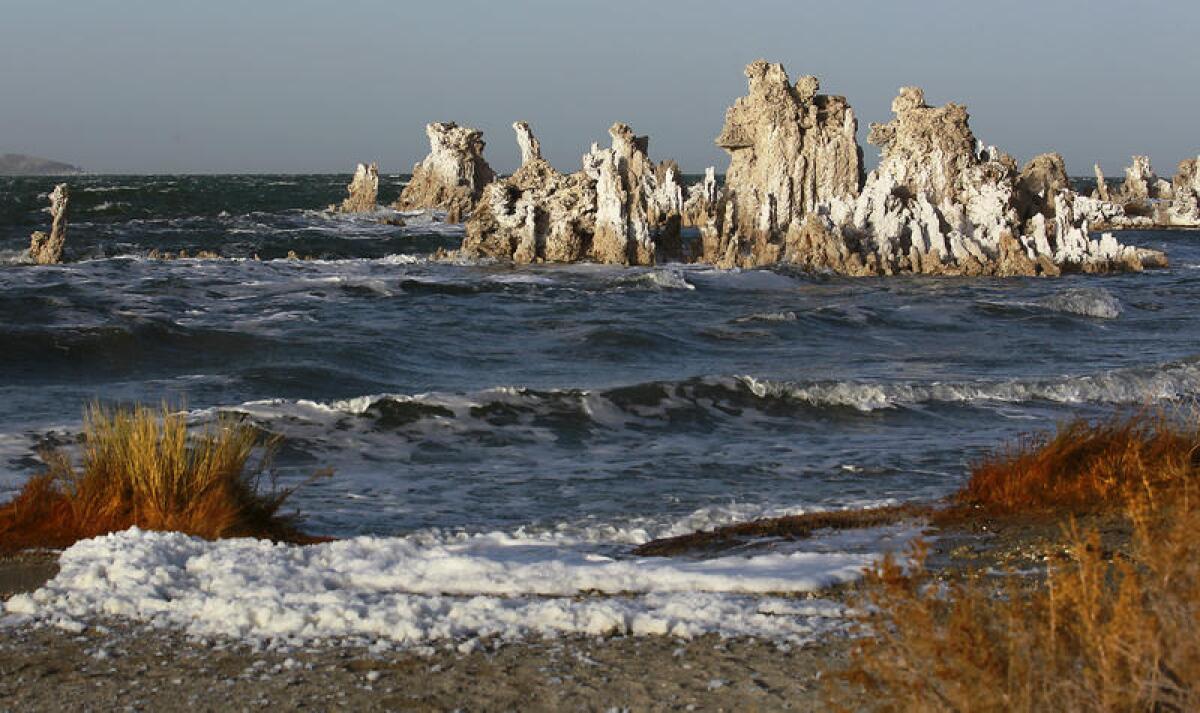
Why: It’s ancient and lunar. It impressed Mark Twain in the 19th century (he put it in his book “Roughing It”) and Pink Floyd in the 20th (they put it on the sleeve of their album “Wish You Were Here”).
What: Mono Lake goes back at least 760,000 years, covers about 70 square miles and feeds no rivers, which makes it salty and strange in many ways. The shoreline, more than 6,300 feet above sea level, is crawling with alkali flies, packed so densely that you may at first mistake them for a black-sand beach. In the water are legions of brine shrimp, fingernail-sized creatures that float at all depths. Protruding from the water are the tufa towers, which look like irradiated anthills but are really calcium-carbonate mounds formed by interaction of freshwater springs and alkaline lake water.
If there were a lake on the moon, I’m pretty sure it would look like this. (And if the lovers of the lake hadn’t waged a sustained political fight to save it from the thirst of Los Angeles, it would probably be a smaller, sadder spectacle now.)
On summer weekends, you can explore it by guided canoe tour. If you’re a birder, you already know it’s rich in California gulls, snowy plovers, eared grebes and Wilson’s phalaropes. The Mono Basin Scenic Area Visitor Center (closed Dec. 1-March 31) is open Thursday through Monday in spring and fall, daily in summer.
Where: Mono Basin Scenic Area Visitor Center, 1 Visitor Center Dr. (just off Highway 395), Lee Vining, CA., 333 miles north of downtown L.A.
How much: Guided canoe tours $25-$30 per person.
Report to the Santa Barbara County Courthouse — for the view and murals
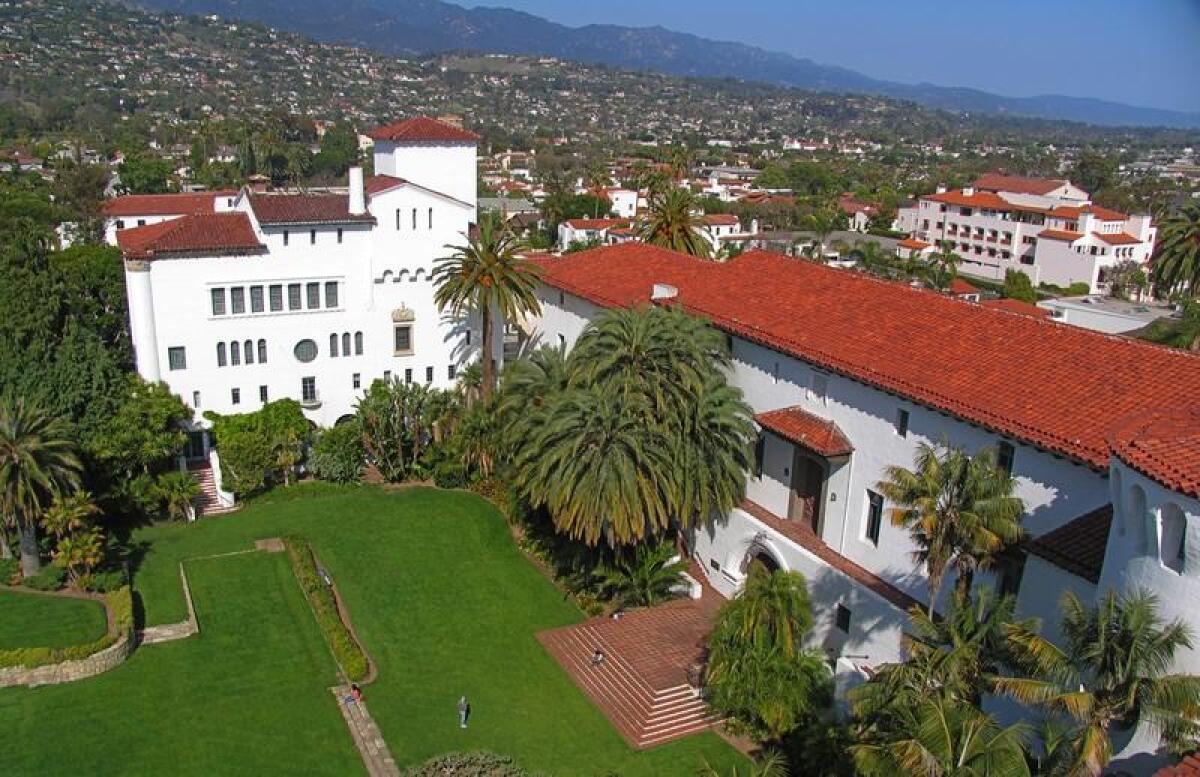
Why: From the observation deck atop the clock tower, you can scan a panorama of Santa Barbara’s many red-tiled roofs. In the mural room below, you’ll see enormous, evocative depictions of early California history.
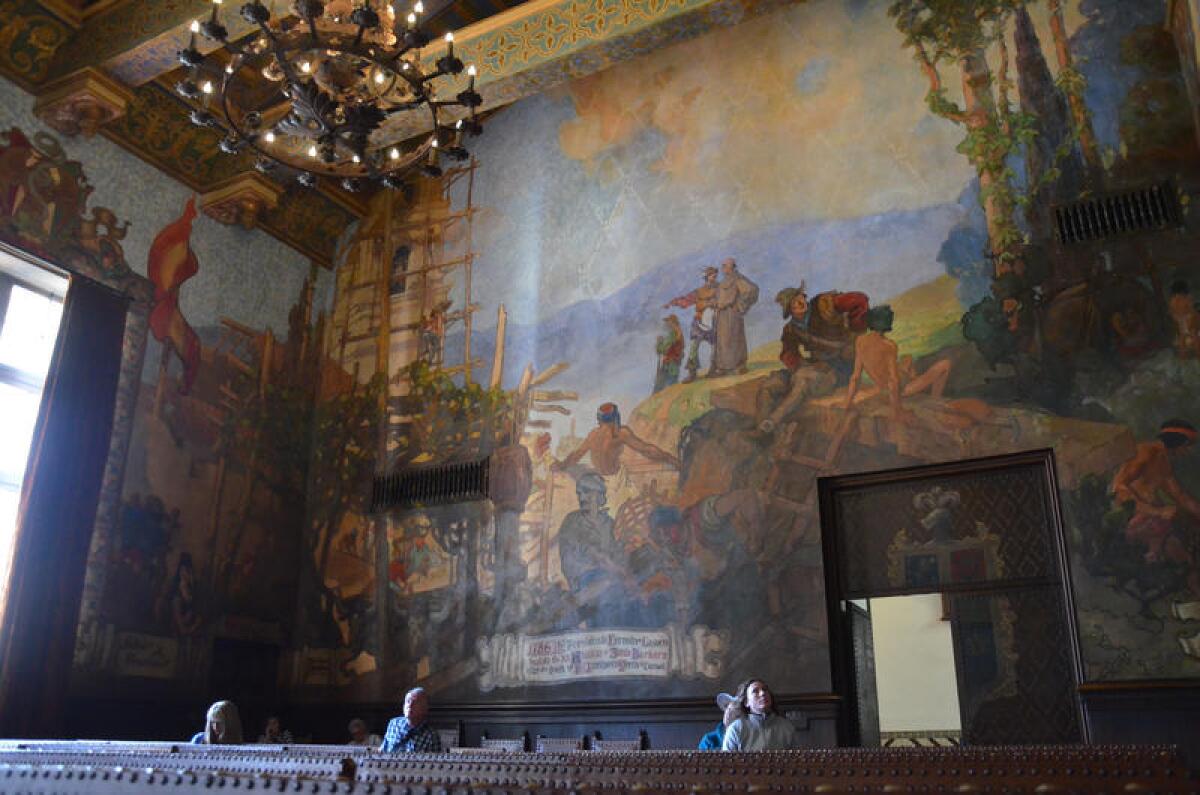
What: In a city full of mansions, the Andalusian-style Santa Barbara County Courthouse is among the prettiest buildings of all. It was completed in 1929, four years after an earthquake damaged much of downtown and set off a boom in Spanish-style construction.
Beginning in the second-floor mural room, docents give free, hourlong tours on weekdays at 10:30 a.m. and 2 p.m., weekend days at 2 p.m. But you can climb the clock tower stairs on your own, and nose around the mural room too — if there isn’t a wedding happening.
Where: 1100 Anacapa St, Santa Barbara, 98 miles northwest of downtown L.A.
How much: Free.
Snooze above the sea in one of San Diego’s Crystal Pier cottages
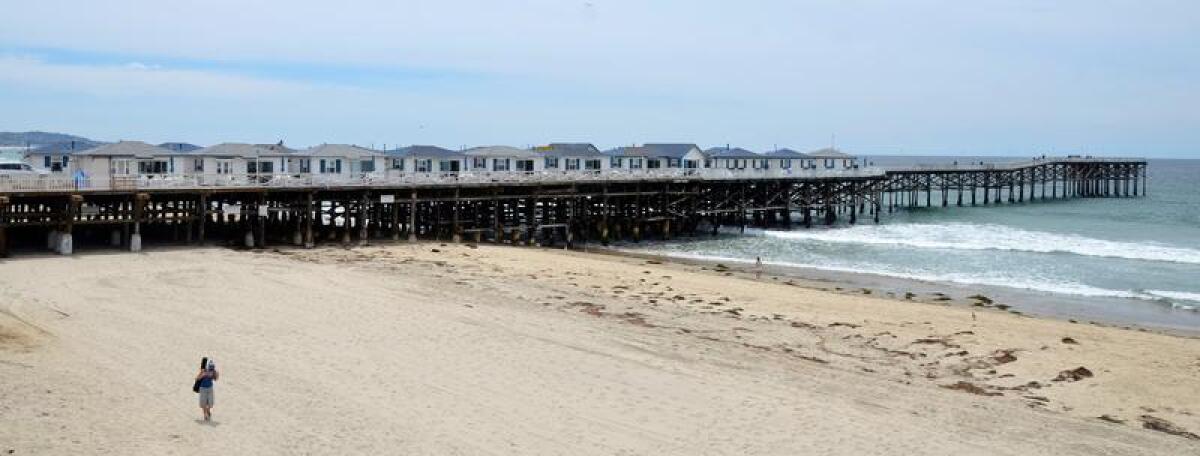
Why: You won’t find another pier in California with cottages on it, and this pier stands along one of San Diego’s most popular beaches.
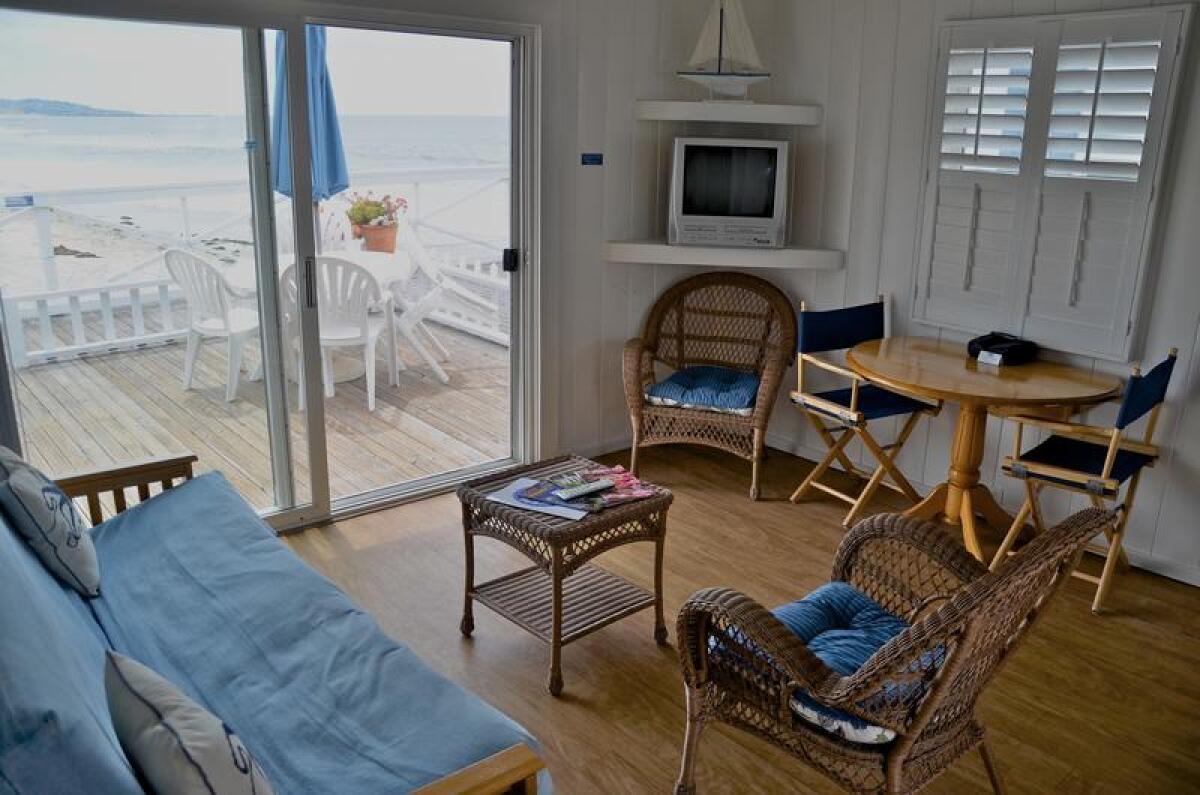
What: The Crystal Pier Hotel & Cottages go back to the 1930s. Despite changes in owners (and many a dispute with city officials) in early decades, the operation has been run by the same family since 1961. The pier is wooden, with fishing at the end. The 31 units are painted white with blue trim and flower boxes. The beachfront promenade, Ocean Front Walk, is San Diego’s answer to Venice -- a boisterous concentration of people, bikes and beach culture that runs three miles through the Pacific Beach and Mission Beach neighborhoods.
Where: 4500 Ocean Blvd., San Diego, 115 miles southeast of downtown L.A.
How much: Most rooms for two (with kitchenettes) run $265 to $415, depending on the season and day of the week. And take note: You can’t make reservations online -- just by phone and in person. Also, minimum stay is two nights in winter, three nights in summer, four nights over major holidays.
Info: Crystal Pier Hotel & Cottages
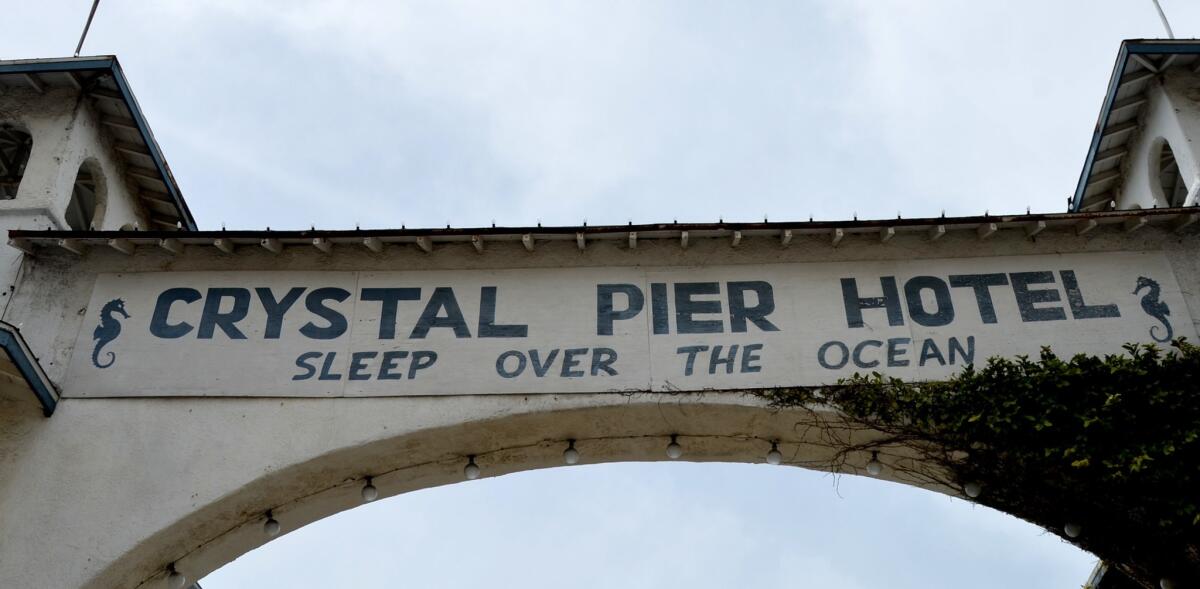
Go deep (and free) on a San Francisco City Guides walking tour
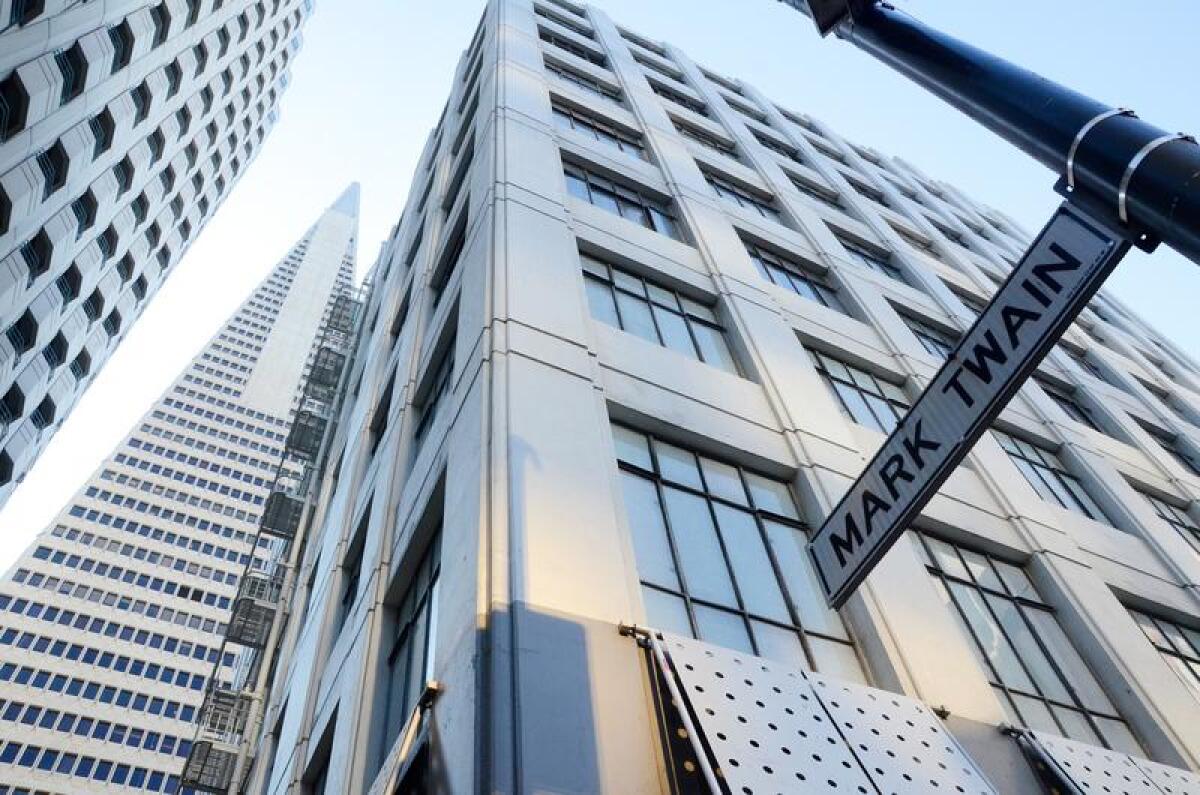
Why: Walking is good. History is good. Free is (pardon the grammar) good. Taken together on the rising and falling streets of San Francisco, they’re a tourism hat trick.
What: San Francisco City Guides is a nonprofit group whose volunteers lead walking tours all over town. The regularly scheduled tours are free (although donations are welcome), and there are several every day. On some Saturdays, there are as many as 20 different walking tours offered, covering tea gardens, epic stairways, murals, mansions and old military posts. In Union Square and the Financial District alone, the group offers 21 different itineraries.
I did a custom walk on Montgomery Street with volunteer Joyce Kurtz and came away with a whole new way of seeing the Financial District. Now I understand that Montgomery Street was the waterfront in the old days. And that Mark Twain once worked in the building that was razed before the Transamerica Pyramid went up. (That’s why the alley next door is named for him.)
Where: Union Square and the Financial District, the S.F. neighborhoods where City Guides offer the largest number of tours, are 380 miles northwest of downtown L.A.
How much: Free.
Catch up with Charlie Brown and the ‘Peanuts’ gang at a museum in Santa Rosa
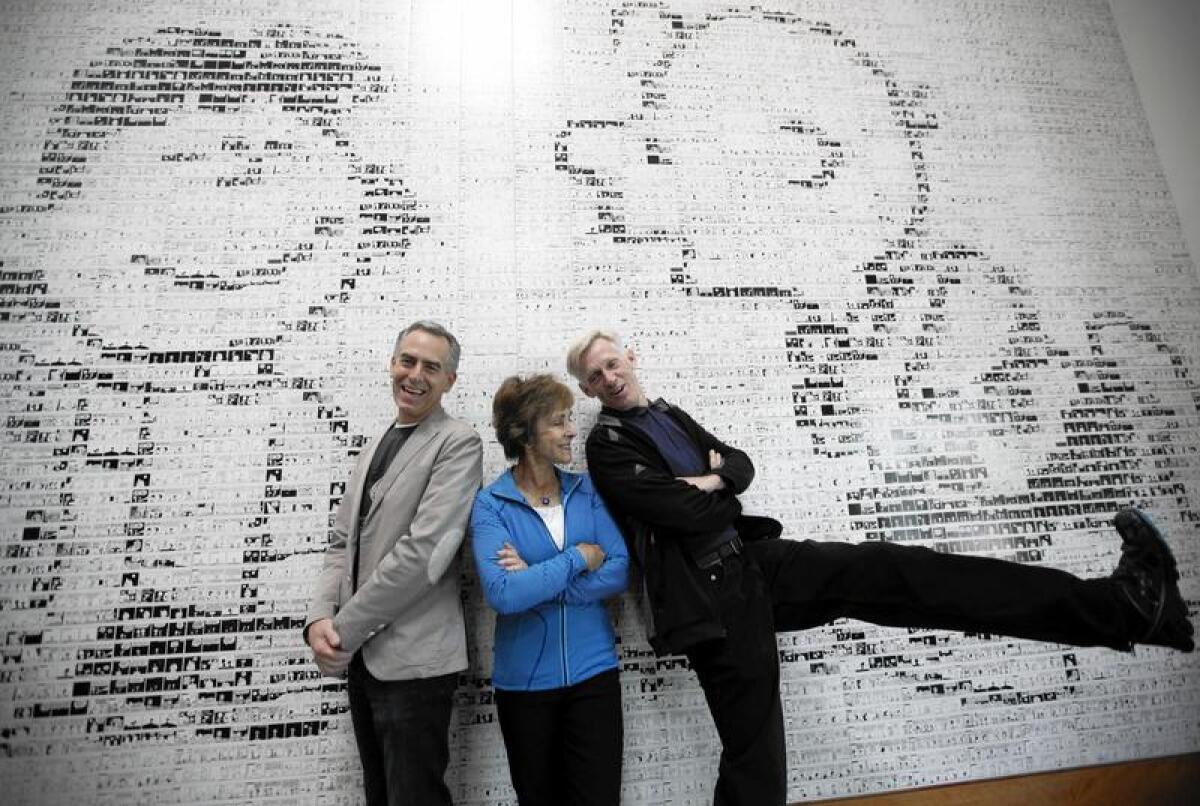
Why: The Charles M. Schulz Museum in Santa Rosa has the largest collection of “Peanuts” strips in the world. It explores the nuances and global reach of Schulz’s work, and the impact of cartoonists generally.
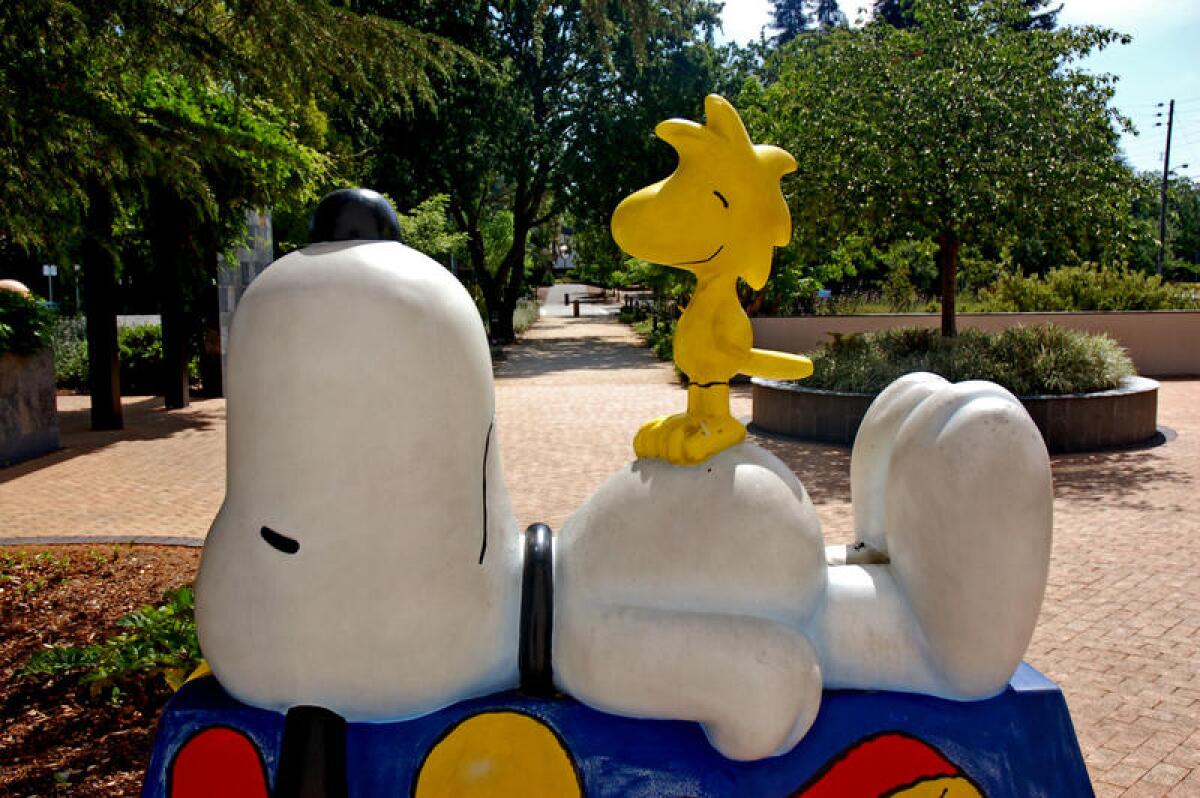
What: Opened in 2002, the museum charts the career of Schulz, who drew “Peanuts” from 1950 to 2000 and died on the day before his last cartoon was published. (He lived in Santa Rosa.) Displays include a black-and-white tile mural with 3,588 “Peanuts” images, a re-creation of “Sparky’s studio” (that was Schulz’s nickname) and a doghouse wrapped in cloth by the artist Christo as an homage to Shulz.
The museum is neighbored by an ice rink, coffee shop (“the Warm Puppy Cafe”), gallery and gift shop, all built by Shulz, who lived in Sonoma County for more than 40 years.
Where: 2301 Hardies Lane, Santa Rosa, 431 miles northwest of downtown L.A.
How much: Admission is $12 for adults, $8 for children and students age 4-18.
Info: Charles M. Schulz Museum
Flash back to European arrival at Cabrillo National Monument, San Diego
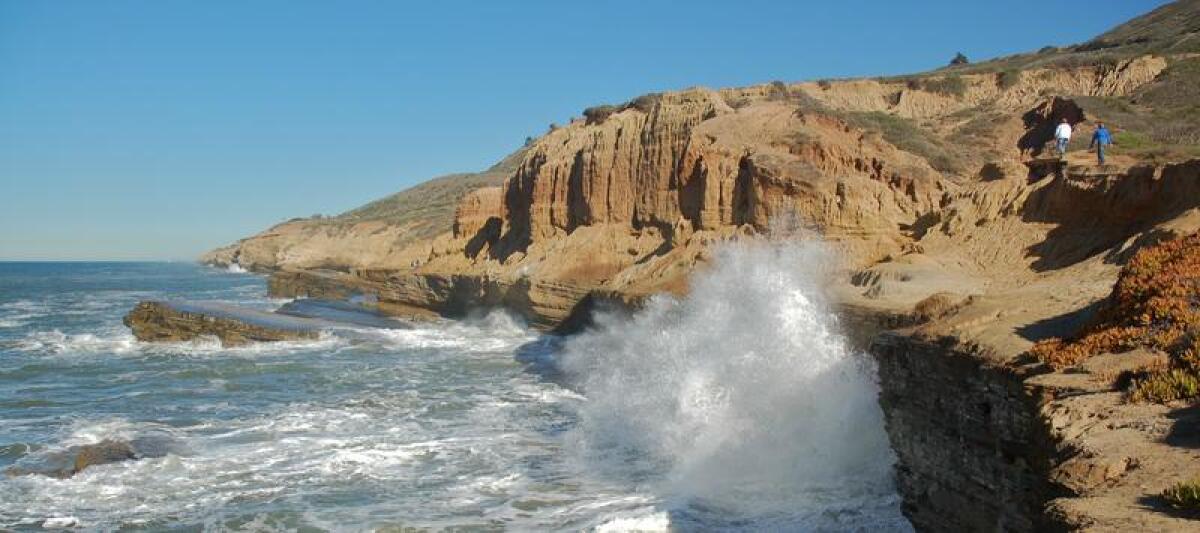
Why: This is where Europe first glimpsed the California coast. Nowadays, it’s where you can see Coronado and Tijuana from on high, and tidepools up close.
What: In 1542, explorer Juan Rodriguez Cabrillo became the first European to sight California from the sea when he spotted the Point Loma peninsula, then came ashore. Perched high on the point, Cabrillo National Monument has a visitor center explaining what Cabrillo’s sighting meant for Spain and the world. (The mysterious explorer died later on the same expedition.)
A short walk away on the monument grounds is the first Point Loma lighthouse, built in the 19th century. And if the history and the wide views aren’t enough, you’ll find dramatic sandstone formations and tidepooling opportunities along the water’s edge.
On the way to the monument, you’ll pass through Ft. Rosecrans military cemetery, resting place of 100,000 military personnel and their family members. If you want to learn more about Cabrillo, head to the San Diego Maritime Museum and its reconstruction of his ship, the San Salvador.
Where: 1800 Cabrillo Memorial Drive, San Diego, 124 miles south of downtown L.A.
How much: $10 per vehicle.
Info: Cabrillo National Monument, San Diego Tourism Authority
Bite into a legend at Langer’s Deli, where the pastrami is one of L.A.’s biggest stars
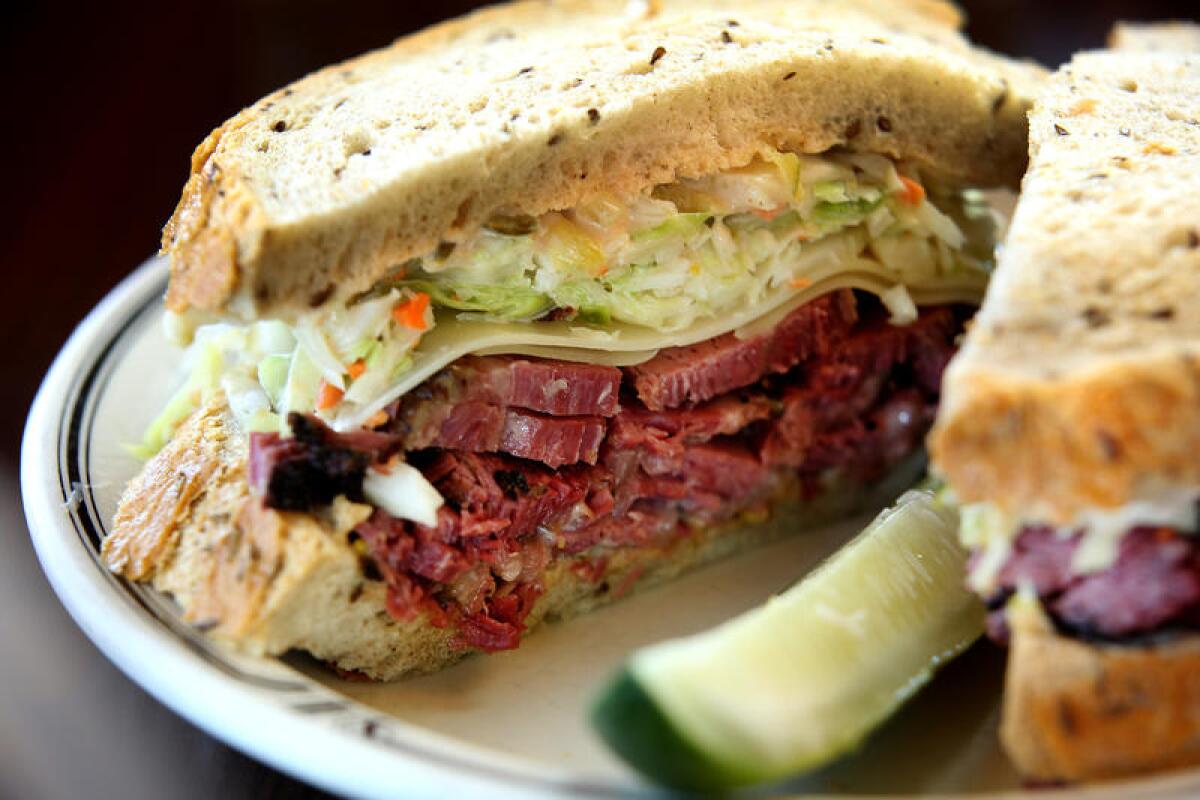
Why: The No. 19 at Langer’s Deli is the Marilyn Monroe of pastrami sandwiches, a smoky, bombastic, love-at-first-bite Los Angeles legend. I think it’s the lean, hand-cut pastrami. Or maybe it’s the slab of slaw atop it. Come to think of it, the rye bread is probably what makes this sandwich such a hit. Tender in the middle, crunchy on the edges, the double-baked bread is the stage of this luscious sandwich. Then again, it might be the meat. Epic poems have been written over far less.
What: Langer’s Delicatessen opened in 1947, with about a dozen seats. Still in a struggling, working-class neighborhood across from MacArthur Park, it now draws huge crowds for breakfast and lunch.
The menu is a ferocious mix of deli standards: egg salad, matzo ball soup, cheese blintzes. Carved from the navel of a steer, and cured as you would corn beef, pastrami is by far the most-popular meat. The flavor comes from a combo of smoking and steaming that preserves the moisture.
There are 20 ways to get it, but the best is the No. 19 combo, featuring hot pastrami, cole slaw, Russian dressing and a slice of Swiss on that amazing rye bread.
The secret? After the rye arrives from the bakery, the kitchen bakes it a second time, for 30 minutes, at 350 degrees. That’s what produces the marvelous crunch.
Where: 704 S. Alvarado St., just west of downtown Los Angeles. Free parking is at 7th Street and Westlake, one block east. Be sure to have your ticket stamped at the register on your way out. The closest Metro Red-Purple Line subway stops half a block away, at MacArthur/Westlake.
How much: Lunches are $20 to $25. Including tax, the No. 19 is $19.52.
Info: Langer’s Delicatessen
Kayak the L.A. River, a sparkling retreat amid the urban sprawl
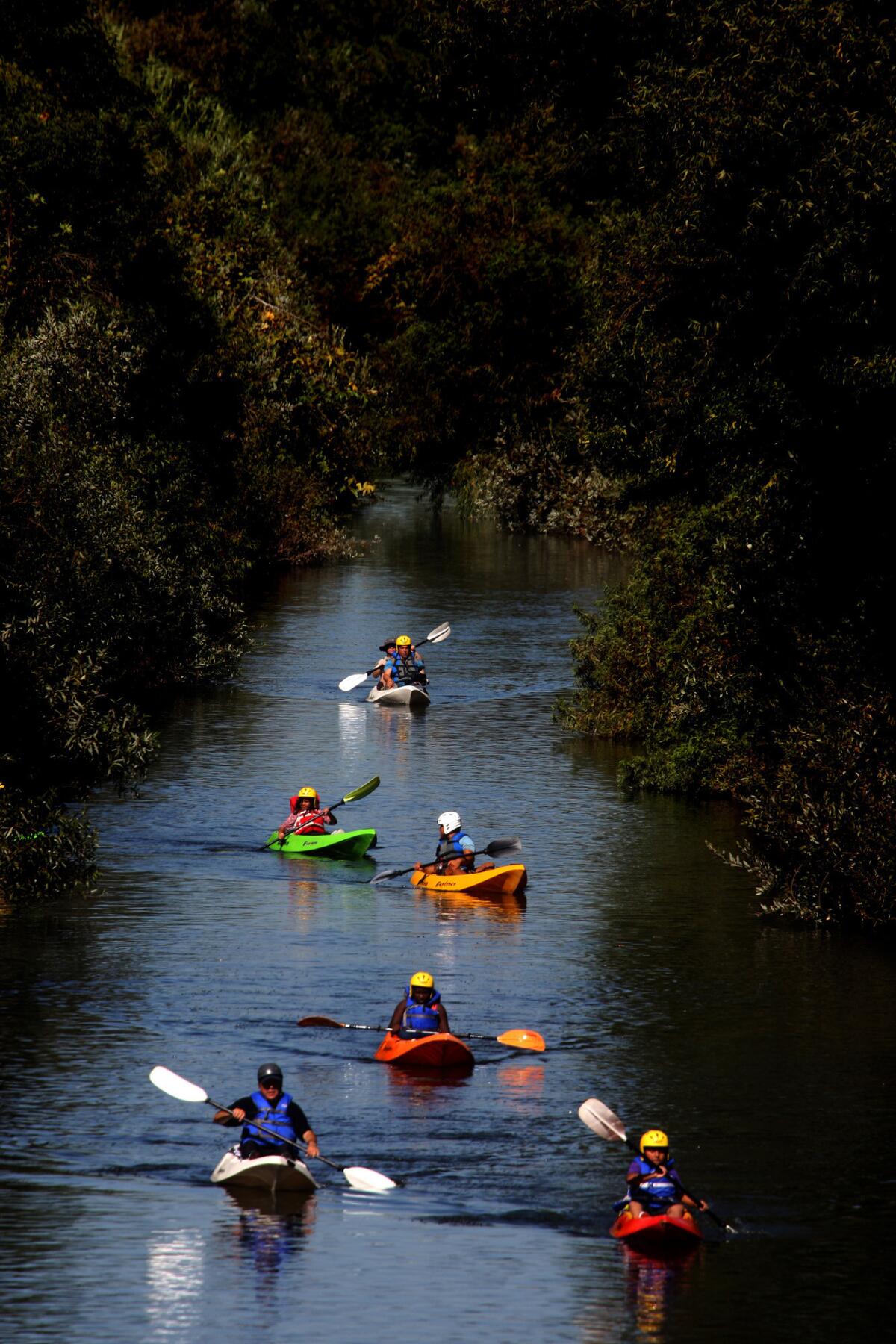
Why: Welcome to the Los Angeles River, America’s least likely recreational area. That L.A. has a navigable river at all surprises many folks. All they see are the empty concrete culverts poured decades ago to prevent mass flooding. But honestly, if someone blindfolded you and plopped you down here, you might think you’re in Idaho.
What: There are stretches — a mile here, seven miles there — where the bottom is soft and the deep earth tones are a cinematographer’s smeary dream. A wall of trees to your left. A wall of trees to your right. Dozens of species of chattering birds. Minnows doing button-hooks beneath a ribbon of urban drool. This water isn’t as pristine as it might look. It is sourced from storm drains and a treatment plant. Yet the water sparkles over rocks. Herons and hawks work the shorelines
It’s the surprise of this setting — a tunnel of trees in the parched valley — that makes the unmasking of the L.A. River so alluring. It is also one more reminder, in this land of freeways and mini-malls, that nature and wildlife still manage not just to survive, but to thrive.
Even if you’re not ready to paddle, you can walk, bike, eat and drink along the river, relying on fledgling enterprises like Frog Spot (run by the Friends of the L.A. River) and Spoke Bicycle Cafe (food, drink and bike rentals), both along the L.A. River Greenway Trail on the west bank of the river.
If you are ready to paddle, the kayak season runs from Memorial Day through early September. L.A. River Expeditions offers trips on both the Glendale Narrows and the Sepulveda Basin sections. L.A. River Kayak Safari specializes on the Glendale Narrows stretch near Dodger Stadium. A boat race celebrating the river and the kayaking season takes place Sept. 9.
Where: Two stretches, each of which takes a couple of hours: the Glendale Narrows, 3-10 miles north of downtown L.A. at the east edge of Griffith Park; and the Sepulveda Basin, about 19 miles northwest of downtown L.A. in the San Fernando Valley.
How much: Guided trips start at about $45.
Hang loose in the circle (or maybe it’s the square) of Old Towne Orange
Why: Because the city of Orange’s Old Towne Historic District is a funky yet family-oriented spot for strolling, dining and people-watching. The heart of the matter is the pedestrian-friendly traffic circle where Chapman Avenue and Glassell Street meet. Some people call it the Orange Circle, some call it Plaza Square.
What: This neighborhood, which sits in the middle of Orange County, has sustained a vibrant conglomeration of quaint cafes and restaurants, bars, coffeehouses, and specialty and curio stores since the late 19th century. It doesn’t hurt that within a few blocks, you’ll find a working train station and the campus of Chapman University.
From the central fountain, you might head for breakfast at Blue Frog Bakery (136 S. Glassell St.), check out the vintage garden items at The Potting Shed by Carlisle (401 W. Chapman Ave.) or join up with an Old Towne Orange Walking Food Tour. Other temptations include Francoli Gourmet Italian restaurant and specialty store, Tiddlywink Toys and Haute Sweets Baking Co.
The streets are lively with students, and livelier still during the regular Saturday farmers market. When parking gets tight, look for the “marked-with-an-orange” signs indicating public parking lots. If you do have to park on a nearby residential street, take the opportunity to gaze at the eclectic collection of craftsman bungalows.
Where: Five miles southeast of Disneyland, about a mile east of the “Orange Crush” confluence of the 5, 22 and 57 freeways, 32 miles southeast of downtown L.A.
How much: Free. Many of the walking food tours are priced at $65.
Info: City of Orange
Walk the blufftop along Cambria’s Moonstone Beach Drive
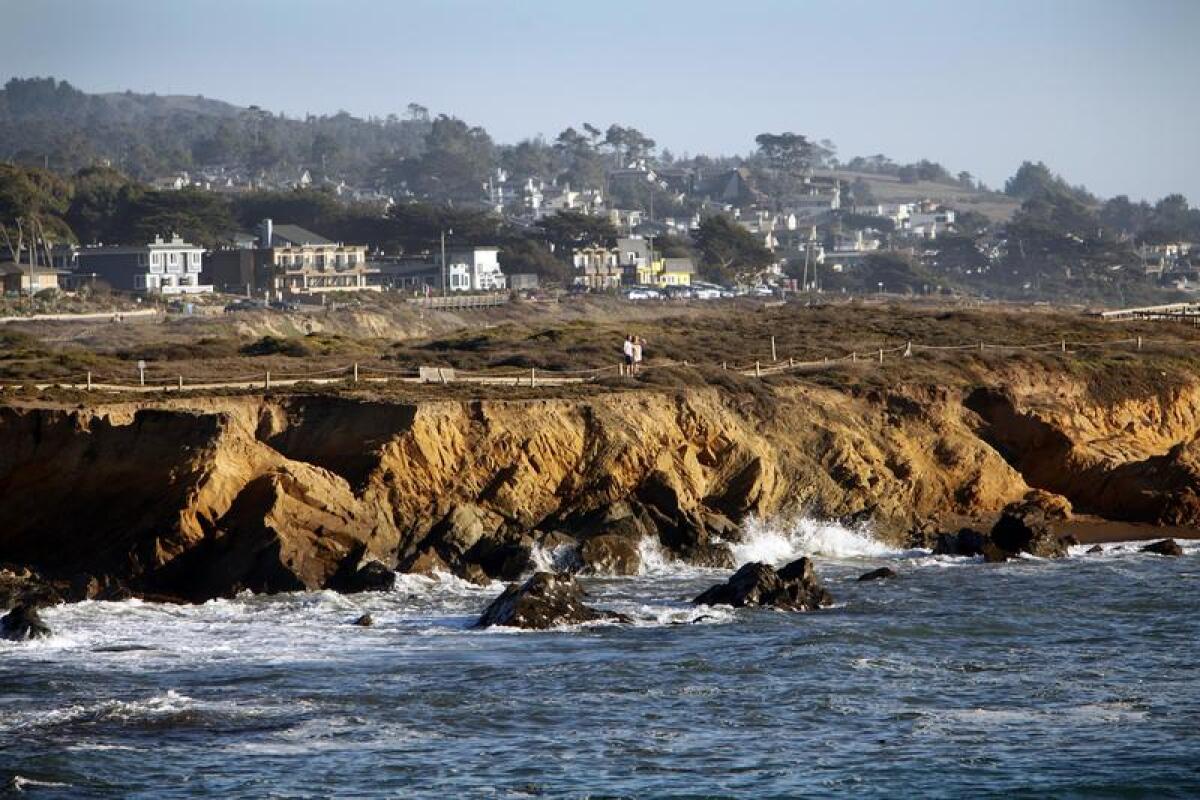
Why: If I told you there are about 17 hotels on one side of this single street 1.5 miles long, you might want to run the other way. But it works here, probably because the other side of the street is a low bluff over a charming central California coastline of cypress trees and rocky outcroppings. All these lodgings are smallish enough to call themselves inns (once upon a time, they were motels). And you can stroll to a few casual restaurants such as Sea Chest (no credit cards, no reservations) and Moonstone Beach Bar & Grill (no reservations) along the same stretch.
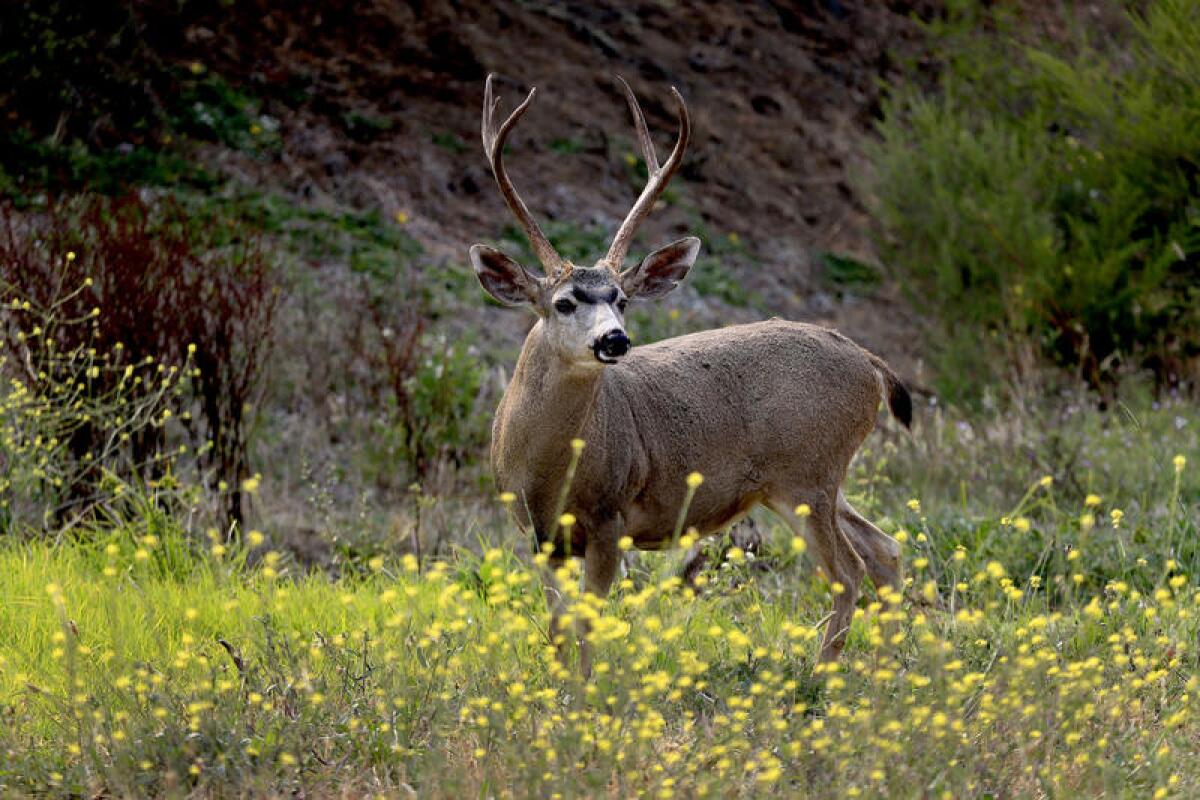
What: Moonstone Beach Drive runs along the ocean side of Highway 1, and a pleasant boardwalk runs along the ocean side of Moonstone Beach Drive. Now and then, deer show up in the meadows. One lodging that’s seen a lot of upgrading in the last year: Oceanpoint Ranch (previously known as the San Simeon Pines), with 61 rooms on 9 acres. But whether you sleep in the neighborhood or not, this is a great place for a walk, especially on foggy early morning.
Where: Moonstone Beach Drive, 8 miles south of Hearst Castle in San Simeon, 238 miles northwest of downtown L.A.
How much: Free.
Info: Cambria Chamber of Commerce
Run with the grunion on Cabrillo Beach in San Pedro
Why: Where else in the world can you experience shoals of flopping fish on the shores of a moonlit beach?
What: Every March through August, small silvery fish called grunions (Leuresthes tenuis) show up on the sandy shores of California’s southern beaches to spawn. These fascinating creatures have attracted and entranced Californians since long before Europeans reached these shores. For a two-hour period late on the nights after the highest tides, grunions ride in on waves and flop onto the sand en masse to deposit their eggs. If you’re fishing or catching and releasing, that’s your cue to reach in and grab the grunion with bare hands. But it may be thrill enough just to watch the tide of fish under the night sky.
The Cabrillo Marine Aquarium at Cabrillo Beach in San Pedro offers an introduction to the spectacle. The museum opens its door at 8 p.m. for two scheduled nights in June and two more in July to offer a “Meet the Grunion” program that includes guided observation of grunions on the beach.
Often, this adventure means waiting for a while on a beach at night. Bring warm clothes and a flashlight. Fishing for grunions is allowed, except in April and May. If you choose to fish, you may only use your bare hands, and a license is required if you are over 16 years of age. Catch and release is encouraged.
Where: The Cabrillo Marine Aquarium, at 3720 Stephen M White Dr. in San Pedro, 26 miles south of downtown Los Angeles.
How Much: The aquarium charges $5 for the grunion program, $1 for seniors, students and children. For fishing, licenses are available from the California Department of Fish and Wildlife ($15.12 for a one-day license).
Info: Cabrillo Marine Aquarium, California Beaches 2017 grunion schedule
Clap with the kids at Hollywood’s El Capitan Theater
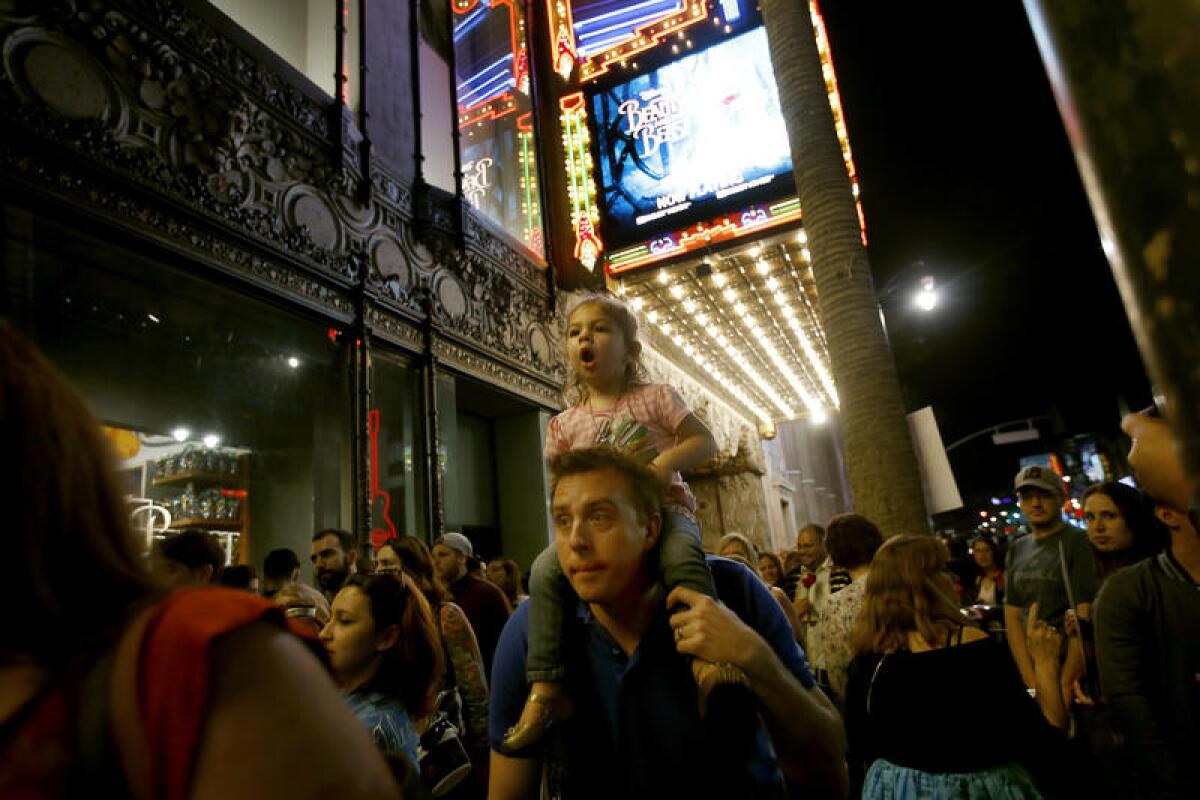
Why: As a rule, there’s not much on Hollywood Boulevard that I’d recommend for a kid in elementary school. But this rule has one gleaming exception: Disney’s exuberantly restored El Capitan Theatre, which is a great place to see a family film.
What: This venue, built in 1926, premiered “Citizen Kane” in 1941 and kicked off Hollywood’s revival (still ongoing) with its reopening 50 years later. The outside is Spanish Colonial. The inside: East Indian Theatrical (by way of a San Francisco architect). The Disney studio often premieres new films here. Whether the show is a premiere or not, pre-show entertainment often includes performances on the venue’s Mighty Wurlitzer organ, which rises from beneath the stage.
Back in the ‘20s, this venue began its life as a stage for live theater. In fact, it was one in a trio of boldly themed venues on the boulevard: El Capitan, Chinese and Egyptian. In 1941, El Capitan switched from live theater to movies.
Where: 6838 Hollywood Blvd., Los Angeles, across the street from the Hollywood & Highland mall, 8 miles northwest of downtown L.A.
How much: Prices vary. Besides movies, there are 30-minute tours of the building ($15 per adult), 15-minute “express” tours ($9 per adult) and a variety of birthday-party packages.
Info: El Capitan Theatre
Step up to the Biltmore’s bar in downtown L.A. and remember the Black Dahlia
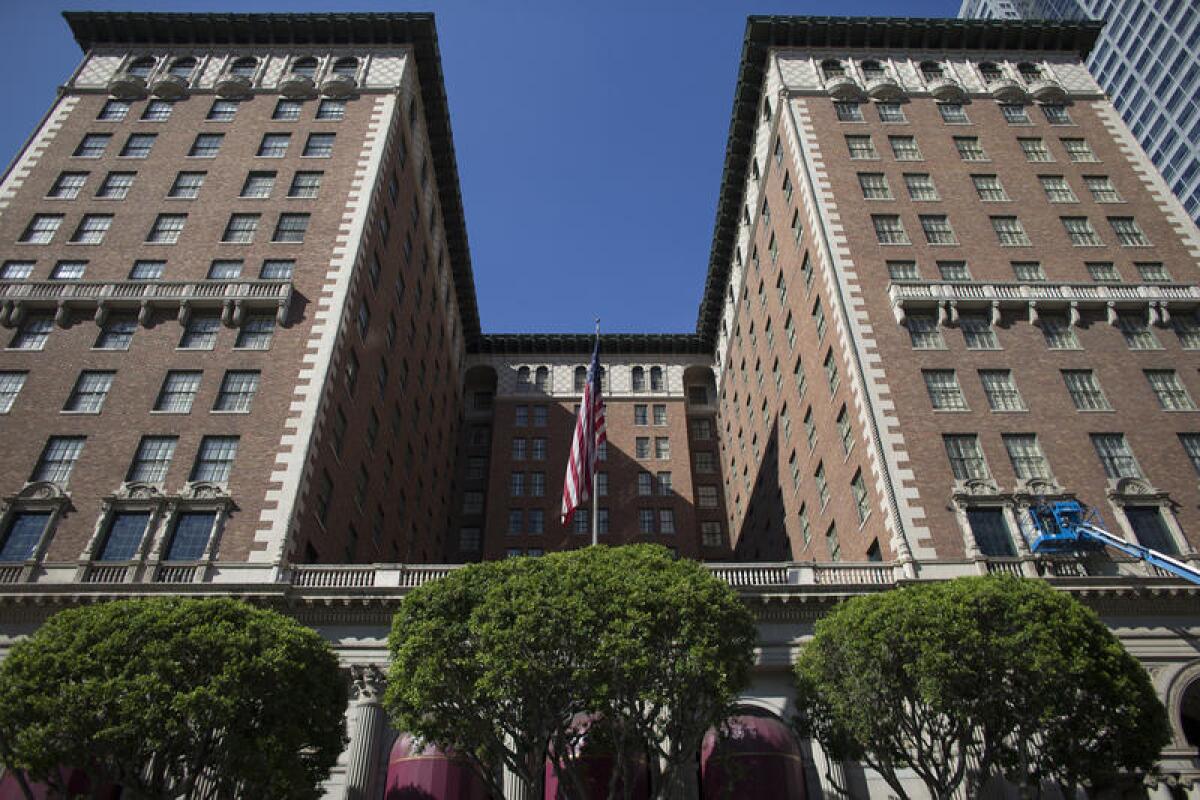
Why: Los Angeles’ downtown Biltmore, now known as the Millennium Biltmore, is a snazzy space on Pershing Square with a starry history and hints of noir.
What: The hotel, which dates to 1923, began life as the biggest American hotel west of Chicago and housed several Academy Awards ceremonies in the 1930s, 1940s and 1977. Nowadays it gets a lot of business travelers, who stride purposefully through rooms done up in a glitzy mix of Renaissance, baroque, neo-classical and Moorish styles.
The tale is told that this is where aspiring actress Elizabeth Short -- a.k.a. the Black Dahlia -- was last seen alive before her notorious unsolved murder in 1947. And the hotel’s Gallery Bar serves a Black Dahlia in her memory -- citrus vodka, Chambord and Kahlua. Inconveniently, some who have studied the case closely say there’s no solid connection between Short and the bar. But the hotel has seen plenty of shooting, including many movies (“Chinatown”), perhaps the longest talking-while-walking shot ever on TV’s “The West Wing,” and the semi-dirty dancing in singer Ed Sheeran’s “Thinking Out Loud” video.
Odds are you will find Greg Guzelian at the bar. He’s been creating and pouring drinks at the Biltmore for more than 30 years, and he can spin a story or two.
Where: 515 S. Olive Ave., downtown Los Angeles.
How much: $13 for a Black Dahlia. The same for a French Kiss (another Guzelian creation).
Take a power breakfast at Pacific Dining Car in downtown L.A.

Why: Since 1921, this quirky downtown restaurant has been a gathering place for L.A. power brokers and carnivores.
What: Most restaurants made out of replica train cars are diner-type joints. But the Pacific Dining Car aims higher. Steaks are a specialty, and the hefty prices are clearly aimed at the expense-account crowd. It’s open around the clock, and it’s been in its current location since 1923. Part of the harrowing cop film “Training Day” was shot here, and Michael Connelly has used the restaurant in his Harry Bosch detective books. Breakfast is a good time to catch power diners in the act. Lunch is a good time to order the Caesar Salad with Filet Mignon ($41.95).
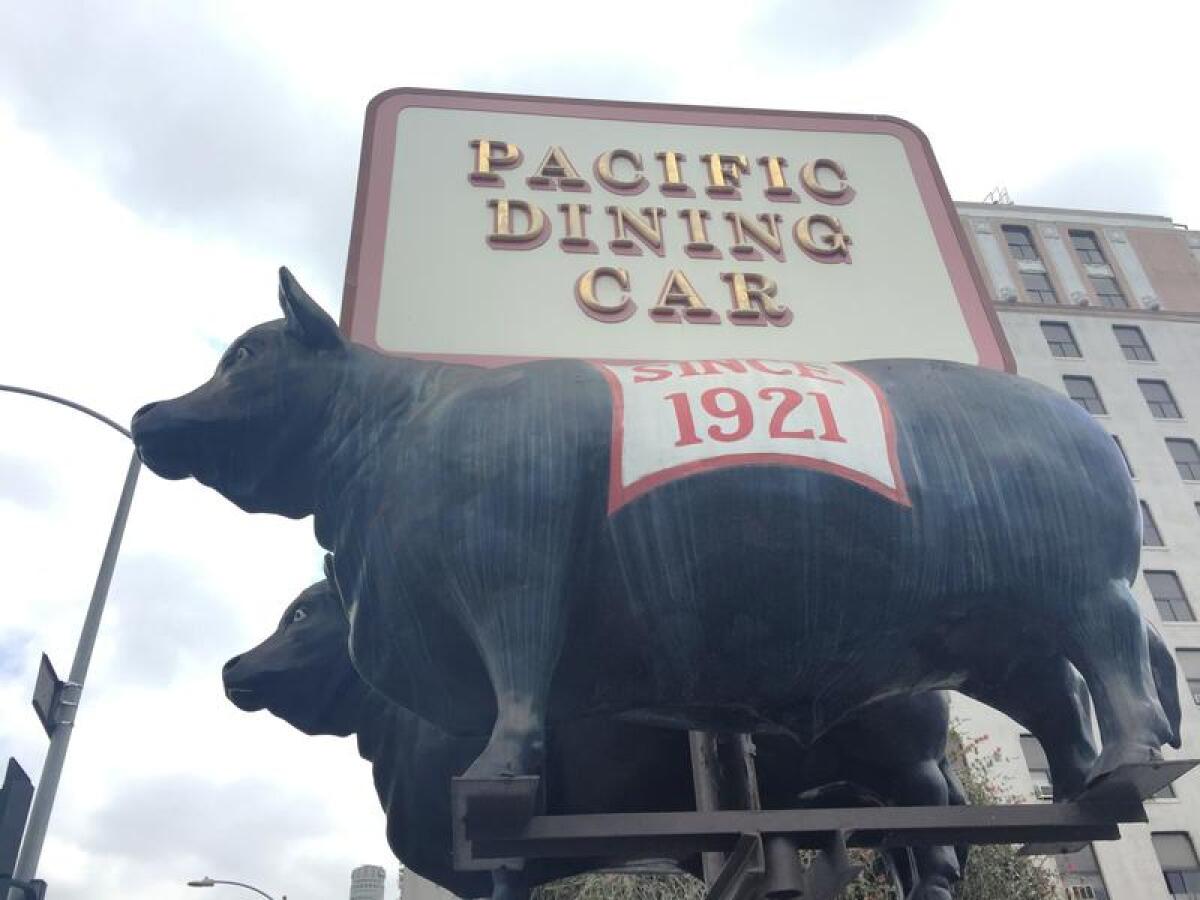
Where: 1310 W. 6th St., in downtown L.A., two miles west of City Hall. (There’s a second location on Wilshire in Santa Monica, but 6th Street is the one with tenure.)
How much: Main courses roughly $18-$85
Info: Pacific Dining Car
Drive that steep, curvy, busy, big-rig-filled mountain route that holds California together: The Grapevine
Why: Sometimes it’s beautiful, especially when it’s spring and the Tehachapi mountain slopes are green and the wildflowers are going off. But even when it’s boiling hot and the grass is brown, this portion of Interstate 5 is vital. It holds the state together, joining star-crazy, left-leaning Southern California and the farm-rich, right-leaning San Joaquin Valley.
What: Without Interstate 5 to bind them, SoCal (especially Los Angeles County) and the Central Valley (especially Kern County) might not even be speaking to each other. But this mountain passage is a necessary part of just about any north-south road trip in which speed is crucial. (If you can afford to dawdle, you’re probably over on U.S. Route 101, if not the Pacific Coast Highway.)
It tops out at Tejon Pass, about 4,100 feet above sea level. When it snows up there, Caltrans sometimes shuts down the freeway. But even without snow, the driving is demanding. Of an estimated 70,000 vehicles roaring through daily, Caltrans says about 1 in 4 is a commercial truck. The mountain passage followed other routes before Caltrans built this alignment (and widened the route to as many as eight lanes) in 1970.
Where: Most drivers say “the Grapevine” when they mean the entire 40-mile stretch between L.A. County’s Santa Clarita Valley and the small community of Grapevine (at the bottom of the slope in Kern County). But Caltrans defines it more narrowly, as the climb between Grapevine Canyon (just south of the community of Grapevine) and the Tejon Pass. It’s 69 miles to Tejon Pass from downtown L.A.
How much: Free. Unless your radiator blows.
Info: Current conditions, “Through the Gravevine,” an exhibit by the Center for Land Use Interpretation
Marvel from beneath the wings of one of the world’s largest birds in San Luis Obispo County

Why: California condors could be the poster vultures for how to turn around an endangered species. And the most reliable place to get a close-up view is by standing beneath Y-89 at the Guy L. Goodwin Education Center at Carrizo Plain National Monument. Where’s that? In the outback grasslands and dried-out lake bed of eastern San Luis Obispo County.
What: The largest birds in North America, with wingspans up to 10 feet, these condors nearly slipped into oblivion around 1983, when just 22 birds were left in the wild. Scientists took a gamble by taking them into captivity and embarking on an ambitious breeding program. It paid off. Now more than 230 fly free in California, Arizona and Utah, and others remain in captivity.
Y-89 was born at the Los Angeles Zoo, released into the wild in 1993 and died less than a year later when he collided with a power line. You can imagine how this behemoth must have dominated the skies when you walk beneath the outstretched wings and massively long feathers.
Where: The Goodwin Education Center -- open 9 a.m. to 4 p.m. Thursdays through Saturdays from Dec. 1 to the end of May -- is located half a mile west of the junction of Painted Rock Road and Soda Lake Road in the national monument. It’s 175 miles northwest of downtown Los Angeles.
How much: Admission to the center and the national monument is free.
Cut loose (and count on a crowd) at the San Diego County Fair in Del Mar
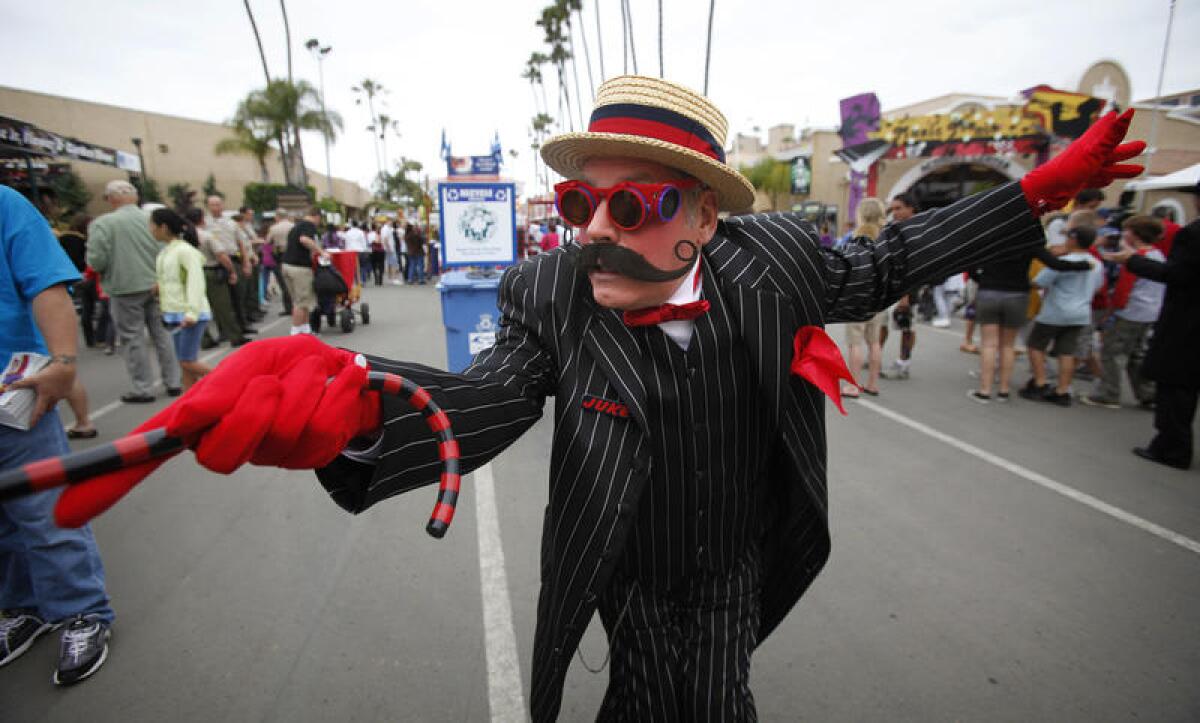
Why: Everybody loves a county fair. And lately, this one is the best-attended fair in California, surpassing even the state fair in Sacramento. The nearby beach might be a factor.
What: The 2017 San Diego County Fair runs June 2 to July 4 at the Del Mar Fairgrounds. It’s closed on Mondays, except for July 3; and closed on Tuesdays, except for June 27 and July 4.
In 2016, the fair drew 1.6 million visitors with its performers, competitions, exhibits, midway attractions, fried food, salted food, sugary food and other time-honored fair fare. (But don’t expect a beauty contest. The fair abandoned that in 2004, 46 years after its 1958 “Fairest of the Fair” award went to high school senior Raquel Tejada, later known as Raquel Welch.)
Where: 2260 Jimmy Durante Blvd., Del Mar, 108 miles southeast of downtown L.A.
How much: Admission is $18 for most adults and teens 13 and above; $11 for anyone 62 or over, $11 for children 6-12; free for kids under 6. Parking is $13-$23 per car.
Info: San Diego County Fair
Stretch your brain in S.F.’s Exploratorium
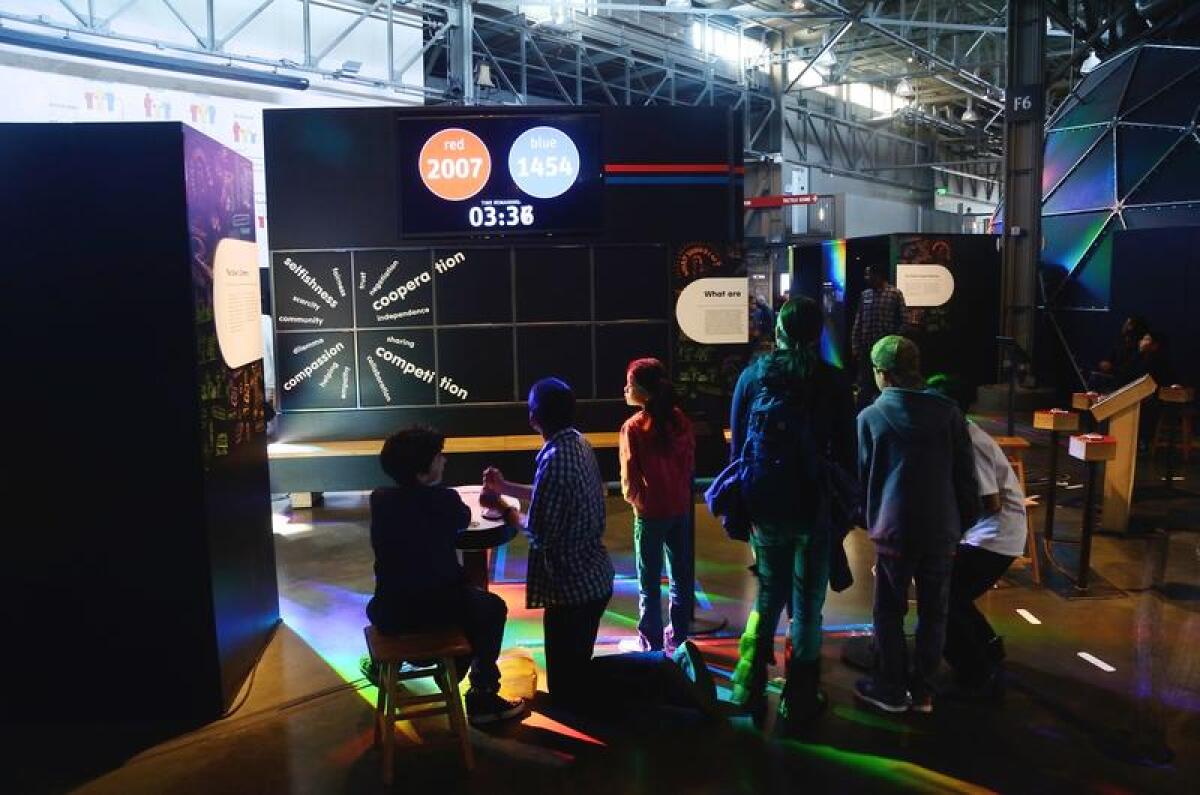
Why: From the foggy bridge near the entrance to the weird mirrors inside, the Exploratorium combines essentials of science with the thrills of a carnival midway.
What: Many cities have museums aimed at kids, or museums aimed at science. But the Exploratorium, born in 1969 and moved to the Embarcadero in 2013, is in its own category. (As it should be, given the prices.) It’s got more than 600 hands-on exhibits, along with artworks like Fujiko Nakaya’s 150-foot-long Fog Bridge, which was de-activiated during the worst of the drought but is misting again now. Beyond the wonders within, its Pier 15 location makes it a natural stop if you’re strolling between Fisherman’s Wharf and the Ferry Building, or if you’ve just stepped off a cruise ship at Pier 27.
Fun fact: The Exploratorium’s founder, physicist, professor and cattle-rancher Frank Oppenheimer (who died in 1985), is the brother of J. Robert Oppenheimer, father of the atomic bomb.
Where: Pier 15, Embarcadero, San Francisco
How much: Adult admission is $29.95. For children ages 4-12 it’s $19.95.
Info: The Exploratorium
Gaze down upon Yosemite Valley (and up at Half Dome) from Glacier Point
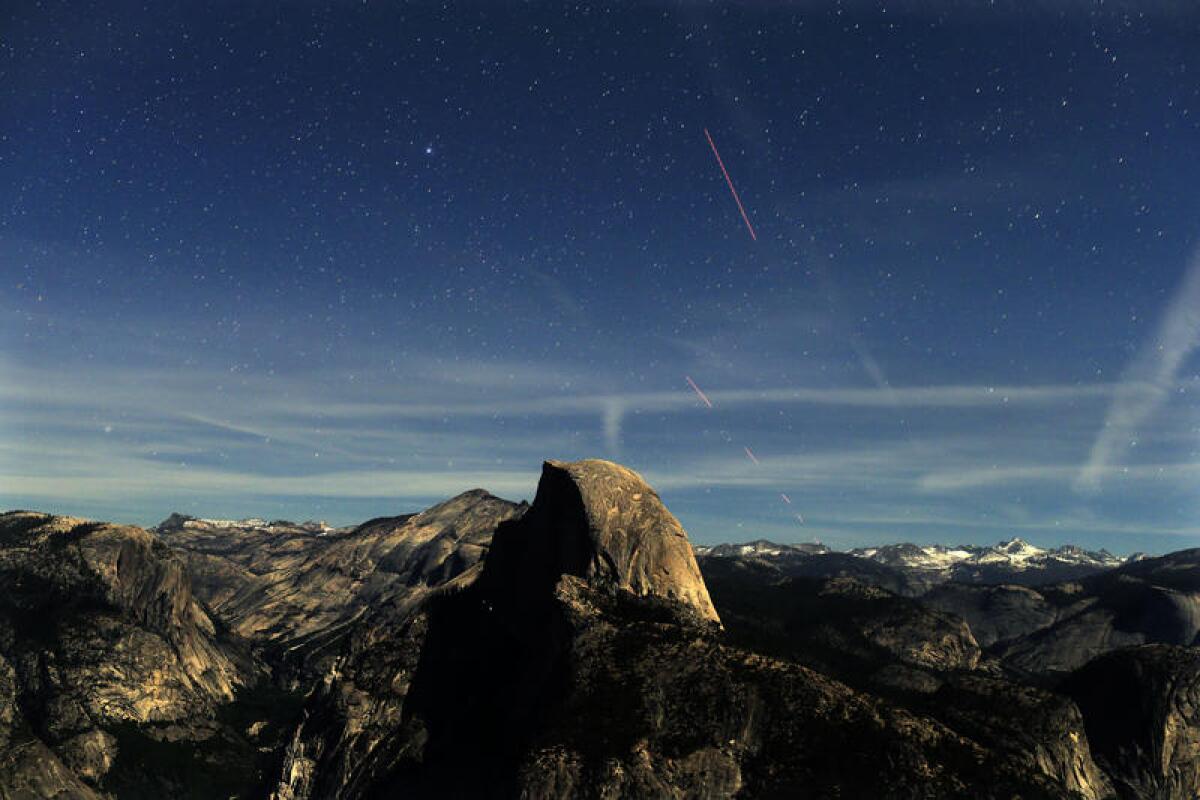
Why: From Glacier Point, you have unparalleled views of Half Dome (about 1,600 feet above) and Yosemite Valley (3,200 feet below).
What: Glacier Point, 7,214 feet above sea level and only accessible in warmer months, feels like the roof of the Earth. It’s just under a mile from the parking lot to the cliff’s edge.
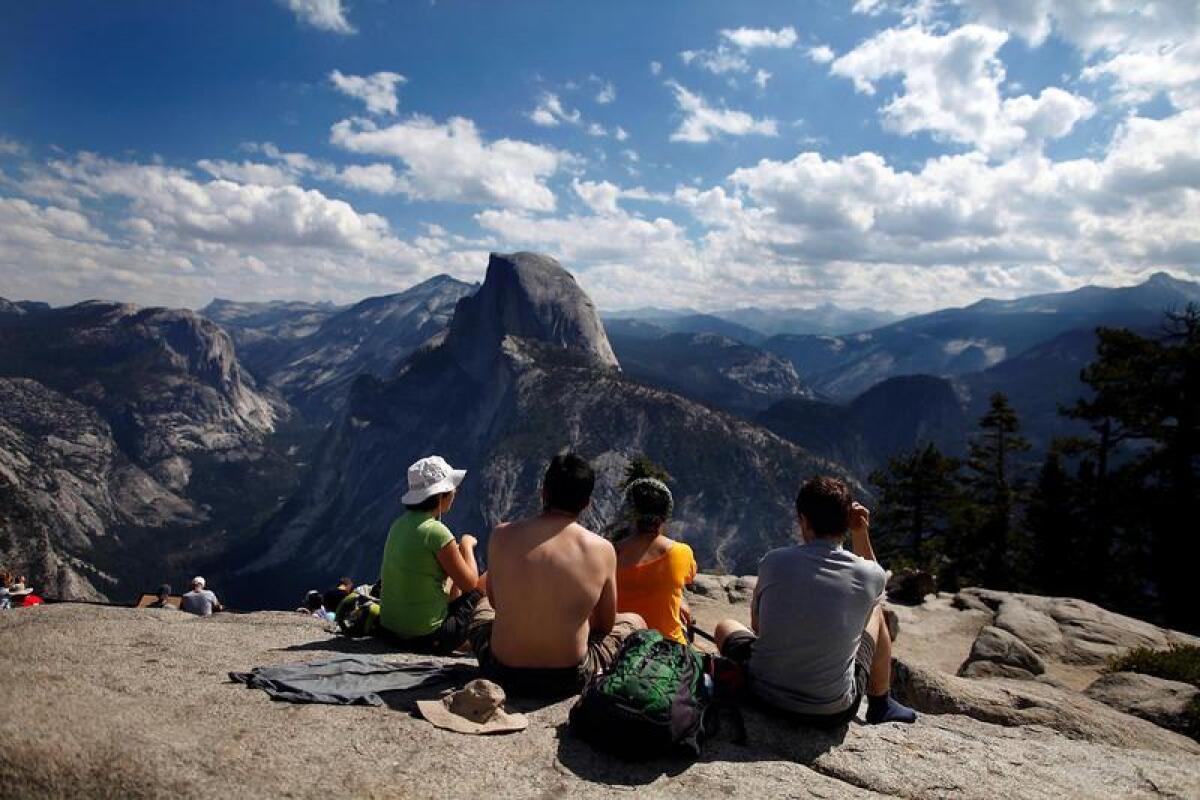
Though there’s often a crowd jostling for position when the light is right at the prime spots, there’s plenty of room for picnics. If you bring dinner (and a few layers of clothes) you can watch the stars come out. If you want to dodge crowds and enjoy a less familiar view, head a mile south (on Glacier Point Road) to Washburn Point.
This year the road reopened May 11 -- later than usual because the stormy winter brought so much snow.
Where: It’s a 30-mile (one-hour) drive from Yosemite Valley to Glacier Point, 312 miles north of downtown L.A.
How much: Park admission is $30 per car for seven days.
Info: Glacier Point
Hear folk tunes at the Freight & Salvage Coffee House in Berkeley
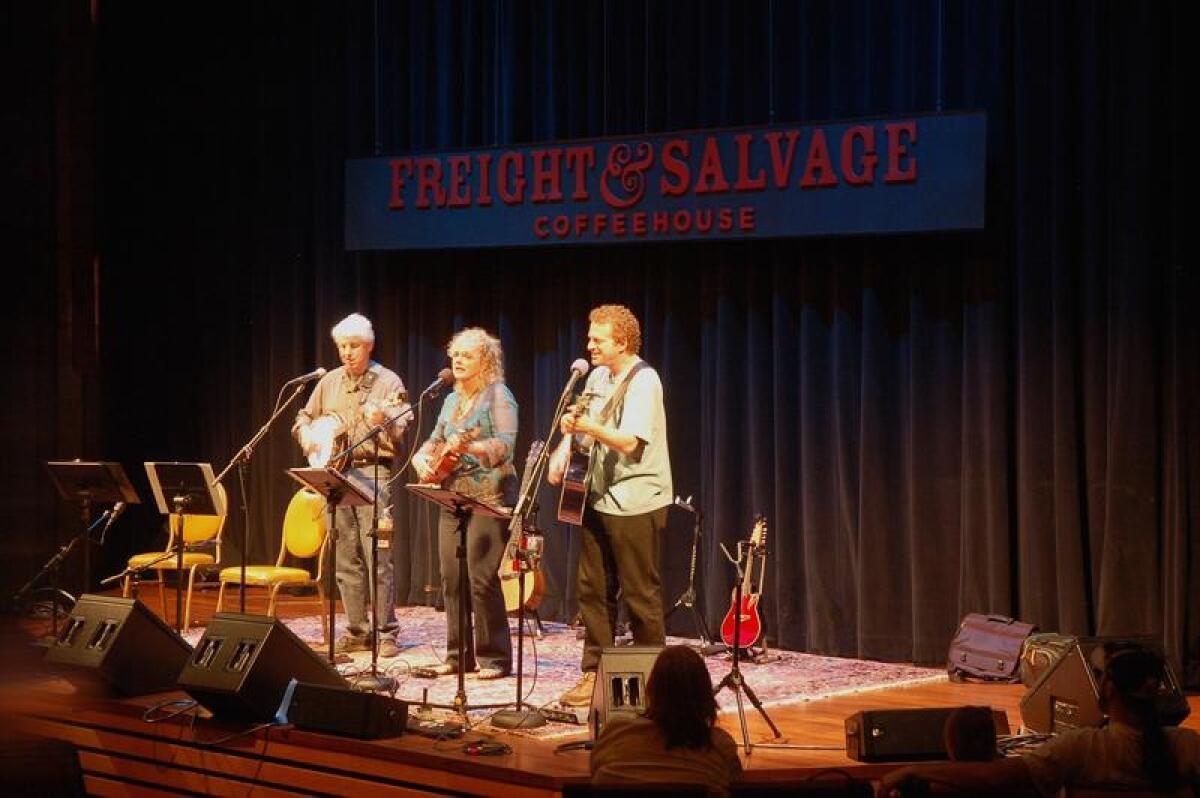
Why: Unplugged music has a happy history here.
What: Founded in 1968 when psychedelic rock seemed to be taking over the world, “the Freight” has long stood for quality traditional music. Acts come from all corners of the world (Iraqi oud music, anyone?), but American folk (David Grisman on mandolin, Mark O’Connor on fiddle, Greg Brown on guitar and vocals, Tony Trischka on banjo, et al.) is the most common sound. The coffee house, relocated and greatly expanded from its original digs, stands three blocks west of the Berkeley campus. It operates as a nonprofit, offering blues and bluegrass jam sessions, workshops and one of the oldest open-mic nights in the Bay Area.
Where: 2020 Addison St., Berkeley, 375 miles northwest of downtown L.A.
How much: Most shows $20-$44.
Info: Freight & Salvage
Walk the wind-raked stairs to the Point Reyes Lighthouse

Why: It’s not just the view (although if you get a blue-sky day, you’ll never forget that long northerly march of breakers and rugged coast into near-infinity). It’s also the sense of isolation and the challenge of hiking down 308 steps, and then up again, while a fierce wind tugs at your arms and legs.
What: The Point Reyes Lighthouse, which is often foggy when it’s not windy, has stood since 1870 at the end of Point Reyes Headlands. It feels like the end of North America.
These days it’s busiest in whale-watching season, from late December through mid-April. Sometimes, park rangers restrict car traffic, so you may need to board a shuttle. Before you reach the visitor center, the observation deck and steps, it’s a hike of about half a mile from the small parking lot. Wear layers. (When the wind hits 40 mph, rangers close the steps and lighthouse.)
As you approach, remember that the station was active until 1975, which means this was some lighthouse-keeper’s daily workplace for a long time.
Where: The lighthouse and visitor center are at the west end of Sir Francis Drake Boulevard in west Marin County. The nearest gas and food are about 20 miles away. The visitor center is 435 miles northwest of downtown L.A.
How much: Free.
Climb Conzelman Road to the Marin Headlands for epic Golden Gate views
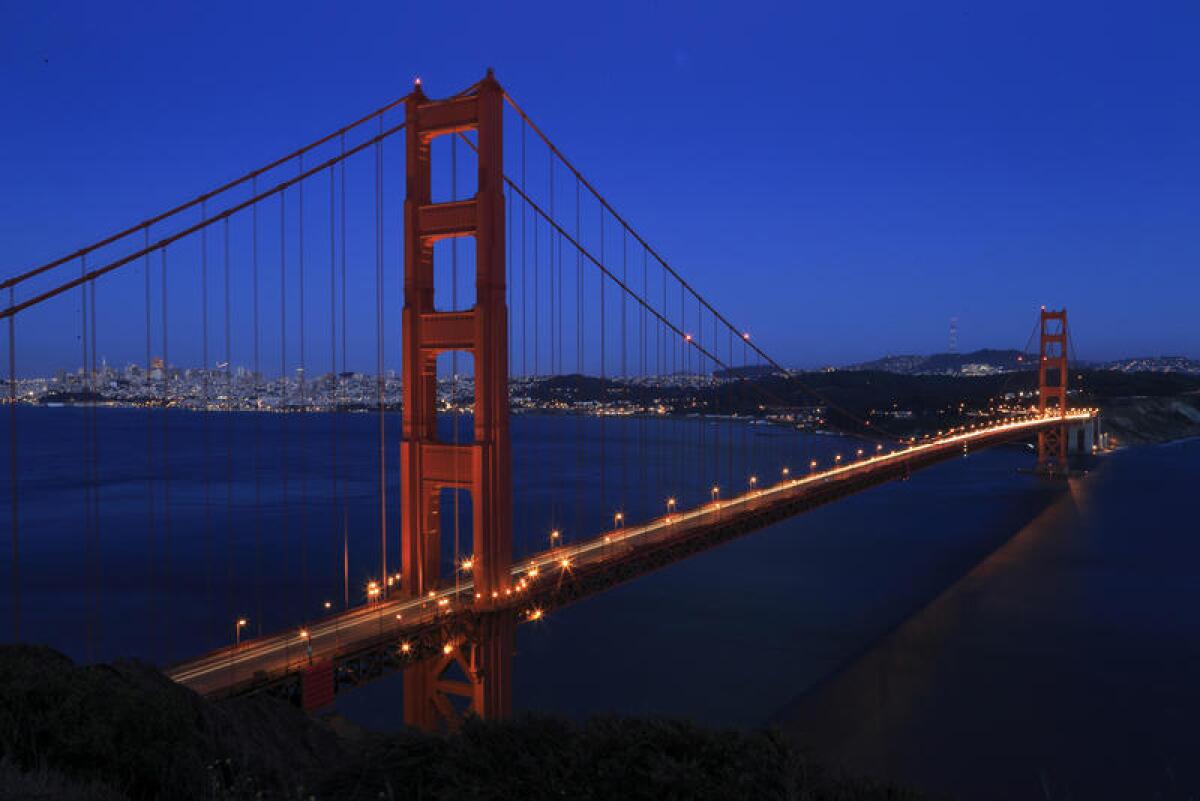
Why: This road, accessible from Highway 101 just after you cross the Golden Gate Bridge, is only about 5 miles long. But it delivers to you a perspective you can’t get anywhere else.
What: Conzelman Road, beloved equally by road cyclists and photographers, climbs into the Marin Headlands. It can take you to at least three great places. One is Battery Spencer, an old military gun placement built in the 19th century to protect the entry to San Francisco Bay. From there you get unparalleled views of the bridge with the city behind it — especially at dusk.
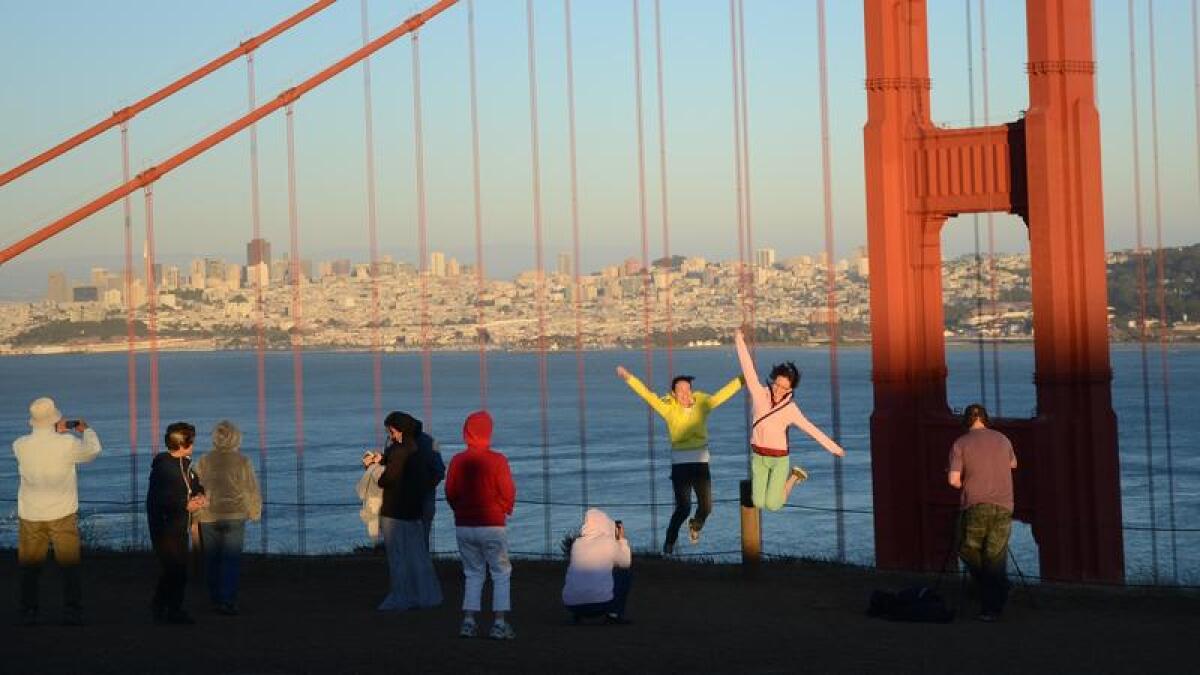
Another highlight, farther up the road, is Hawk Hill, a viewpoint near the top of the headlands that’s a favorite with bird-watchers and whale-watchers. And then near the road’s end is the Point Bonita Lighthouse (built in 1855, open Saturday, Sunday and Mondays afternoons), clinging to a wave-lashed seacliff. All three spots require some walking, but all the paths are less than a mile.
Where: Take Highway 101 north from San Francisco across the Golden Gate Bridge. Exit Alexander Avenue. Follow Alexander left when it turns and goes under the 101, then turn right (south) on Conzelman Road and head uphill. Battery Spencer is 0.3 of a mile up the hill.Conzelman Road is 399 miles north of downtown L.A.
How much: Free.
Scan the L.A. skyscape from 70 stories up, then maybe jump on a slide
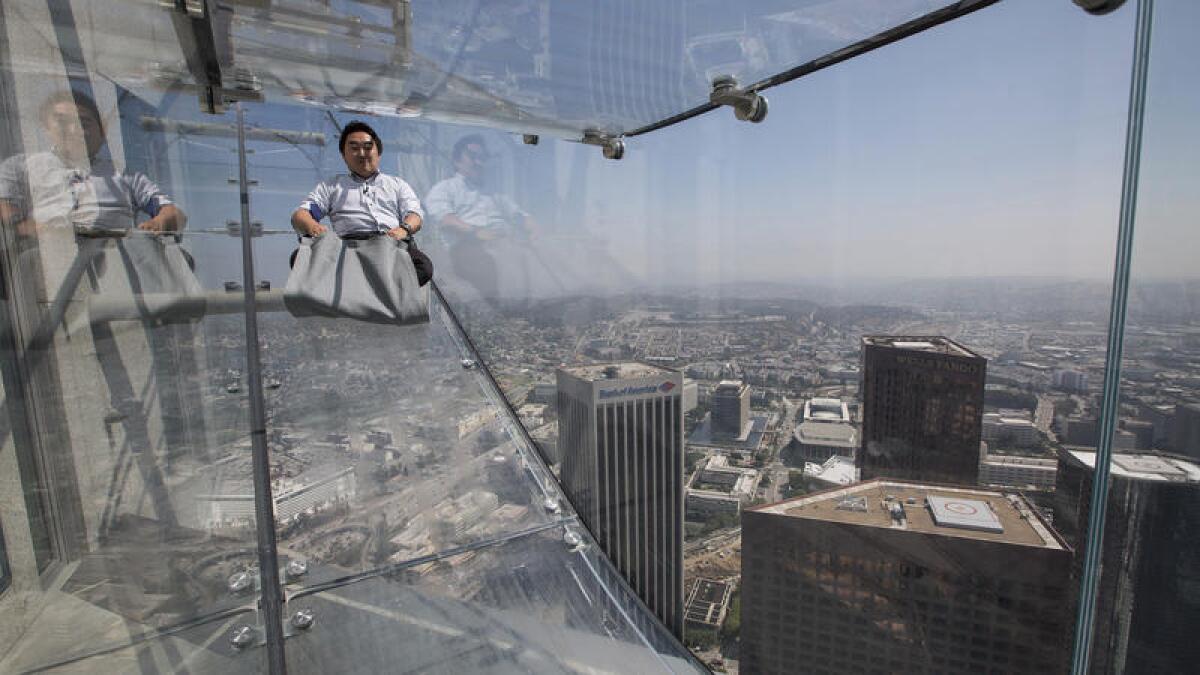
Why: Its nearly 1,000-foot-high observation deck gives you one of the most jaw-dropping views in Los Angeles.
What: In June 2016, OUE Skyspace LA opened its doors to the public, offering California’s tallest open-air observation deck. It sits atop US Bank Tower, now the second tallest building in Los Angeles. Besides the views outdoors (especially after dark), the attraction offers several striking visual effects, including wide-screen, time-lapse videos of the city and a floor monitor that seems to show a kaleidoscopic view down a virtual elevator shaft.
Thrill-seekers will also be eager to try SkySlide, a glass slide that offers a one-of-a-kind, 45-foot-long ride from the 70th floor down to the 69th. It takes less than 10 seconds.
Serious skyscraper fans may also want to walk half a mile west to the city’s tallest building: the Wilshire Grand Center, opened in June 2017 at 900 Wilshire Blvd. It’s got an Intercontinental Hotel inside and an open-air bar, Spire 73, on its 73rd floor.
Where: 633 W 5th St., in downtown Los Angeles.
How much: Timed-ticket entries range from $25-$48 for adults, $19 for children ages 3-12. If you add in the SkySlide, the adult price rises to $33.
Info: OUE Skyspace LA
Picnic on the grass of San Francisco’s Presidio with a few thousand friends
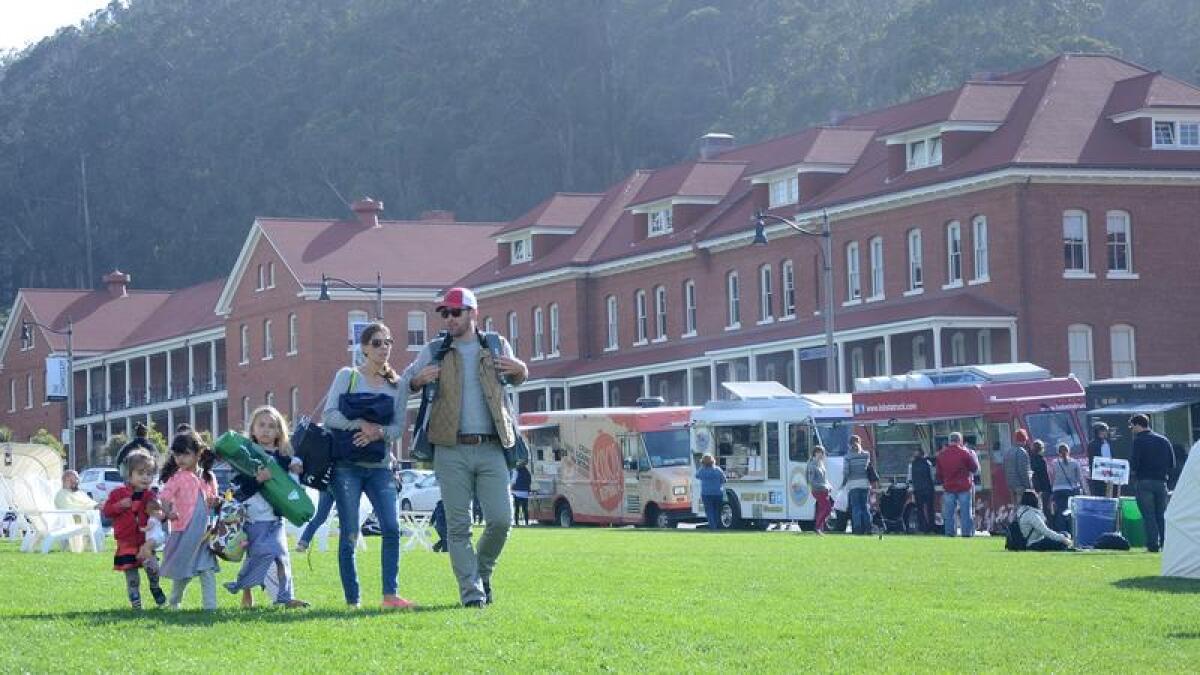
Why: Green expanses, games, Golden Gate views, revived historic buildings, all sorts of food trucks.
What: The Presidio covers about 1,500 grassy and woodsy acres near the base of the Golden Gate Bridge. On Sundays from mid-March through October, a group called Off the Grid stages a family-friendly Presidio Picnic on the old parade grounds, drawing hundreds or thousands of people with dozens of food trucks, games, arts and crafts from 11 a.m. to 4 p.m. On Thursday nights (roughly April through October), Twilight at the Presidio offers a similar set-up with a pop-up bar, cabanas, temporary fire pits and live music.
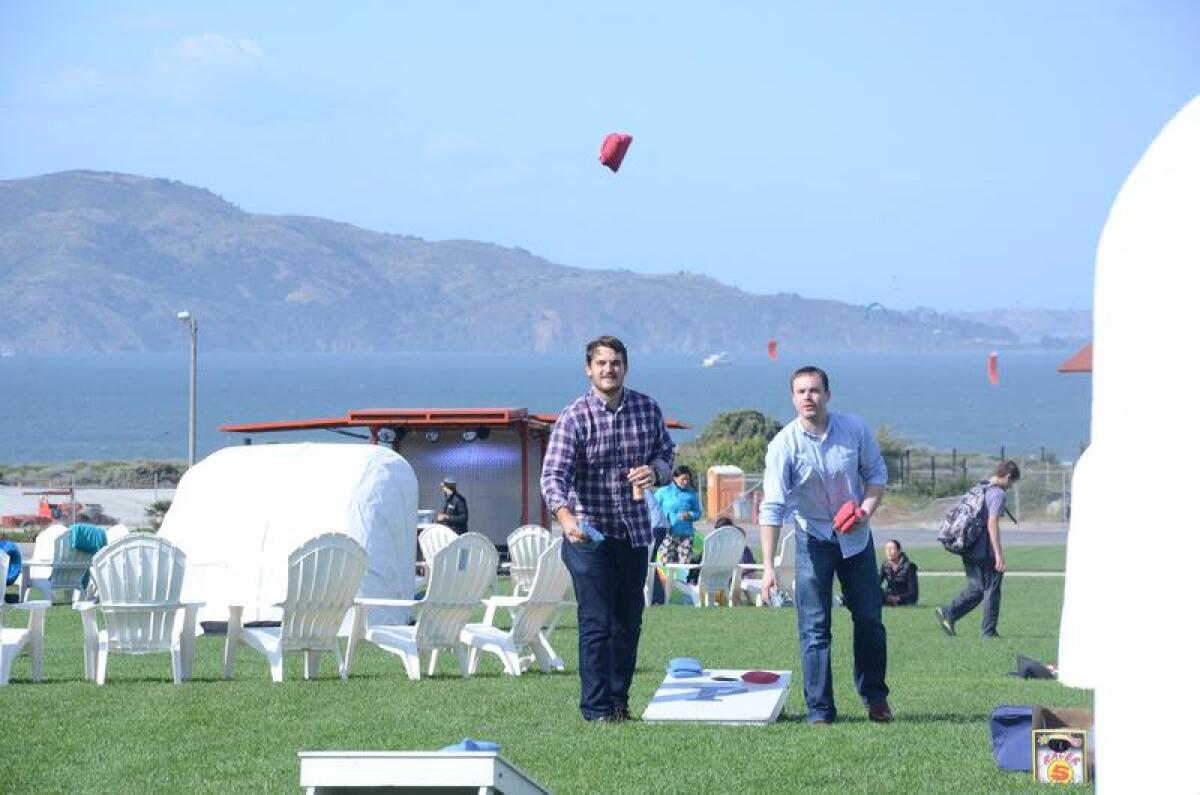
Since the Army handed over the property to the National Park Service, the Presidio Trust and the Golden Gate National Parks conservancy in 1994, recreation options have been multiplying. While you’re in the Presidio, you could check out the visitor center (opened in early 2017) or the old Officers’ Club, now filled with exhibits on the site’s history since Spanish soldiers set up shop here in the late 18th century.
Nearby (all in historic Army buildings) you’ll find the Walt Disney Family Museum, the Arguello and Comissary restaurants and the Inn at the Presidio. The area also includes four nature-based artworks by Andy Goldsworthy, all placed since 2008.
Where: Presidio Visitor Center, 210 Lincoln Blvd., San Francisco, 384 miles northwest of downtown L.A.
How much: Free, at least until you start ordering from the food trucks.
Info: Presidio Picnic
Ride the Coronado Ferry to or from San Diego’s waterfront

Why: You can’t find a cheaper way to get out on the water and see two of San Diego’s most attractive waterfronts up close.
What: Before the Coronado Bridge was completed in 1969, you had to either take the ferry between downtown San Diego and Coronado or make a big detour down to Imperial Beach and up the isthmus known as the Silver Strand. Nowadays, most passengers are on the ferry for fun. They circulate between Coronado and two lively spots on the San Diego waterfront -- one on Broadway Pier, next to the popular Midway Museum; the other at the city’s busy, ballpark-adjacent convention center. (And they cost about $60 less than a dinner cruise.)
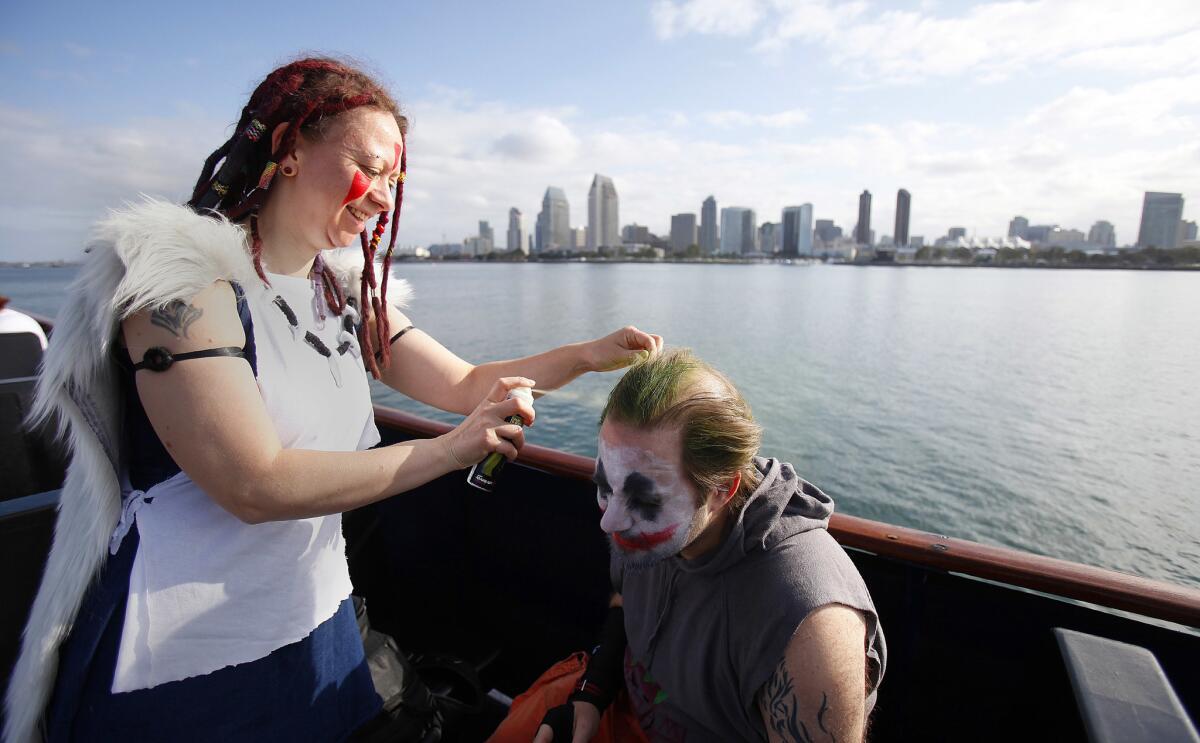
The ride takes about 15 minutes. On the San Diego waterfront, you’re near the Maritime Museum of San Diego. On the Coronado side, the nautical-chic Coronado Ferry Landing has bikes, kayaks and surreys for rent, along with about 25 shops and restaurants. (In summer, there’s a free shuttle bus connecting the ferry landing to the Hotel del Coronado and the city’s main drag, Orange Avenue.)
Where: Broadway Pier, 990 N. Harbor Drive, San Diego; Convention Center, 600 Convention Way, San Diego; Coronado Ferry Landing, 201 1st Street, Coronado. the Broadway Pier is about 121 miles southeast of downtown L.A.
How much: $4.75 each way. Children 3 and under are free. (Commuters ride free.) Check ferry website for hours.
Info: Coronado Ferry
Roam backstage on an L.A. studio tour of movie and television lots and stages
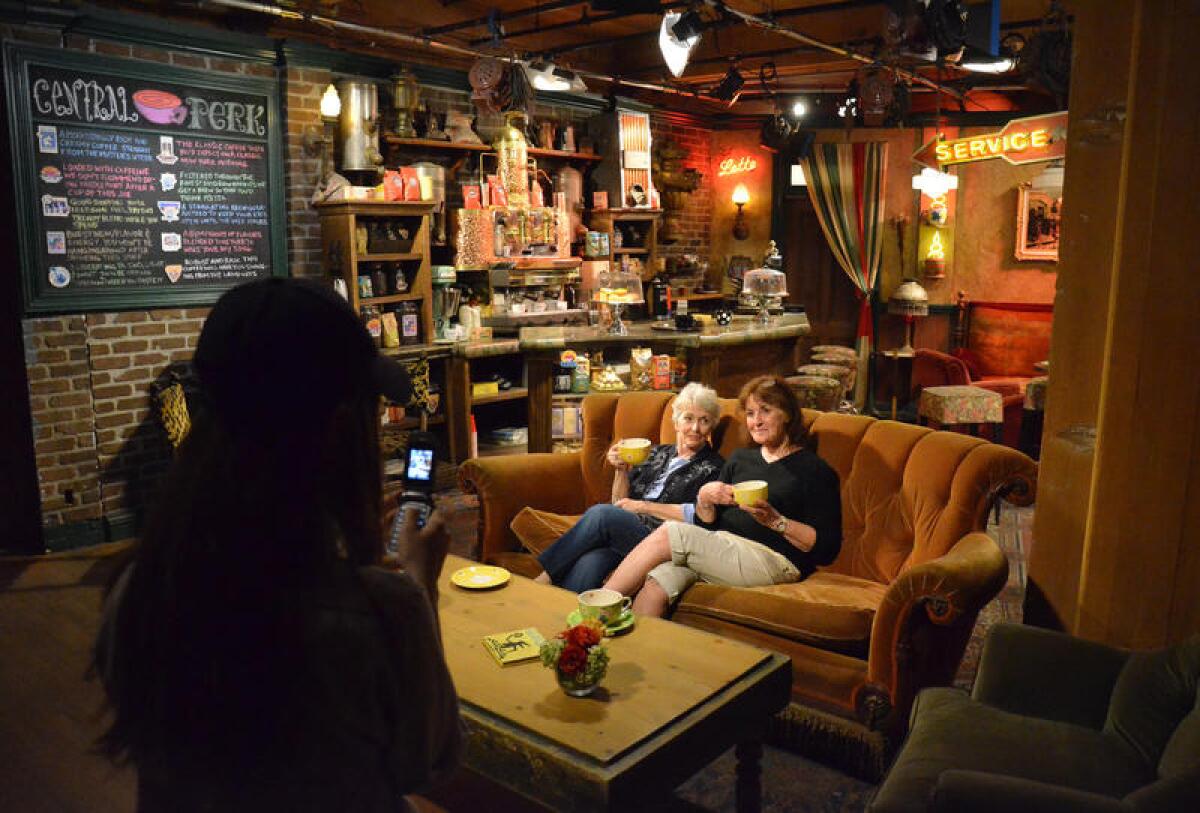
Why: Since movies and TV shows are what made Hollywood famous, it makes sense to see a studio up close. I like the Warner Bros. tour best.
What: Four major studios in L.A. County offer tours, but kid-friendly Universal Studios with its theme park next door, is in its own category. Universal aside, if you want to see nuts and bolts of the business, I like Warner Brothers because the tour spends three hours on the 110-acre property in Burbank where TV’s “The Ellen DeGeneres Show” and “The Big Bang Theory” shoot. Past productions include “Casablanca,” “Batman,” “Gilmore Girls” and “Friends.” You’ll see props, costumes, Batmobiles, “Harry Potter” items and more.
Is three hours too long? The tours last two hours at Paramount in Hollywood (where “Hawaii Five-O” and “Veep” are filmed and “Cheers,” “Glee” and “Saving Private Ryan were shot); and Sony Pictures in Culver City (where “Jeopardy!” is filmed and “Wizard of Oz” and “Men in Black” were shot).
Where: Warner Bros., 3400 W. Riverside Dr., Burbank, 11 miles northwest of downtown L.A.
How much: Warner Bros. is $62 per adult, $52 per child aged 8-12, no children under 8, plus $12 for parking. Southern California residents sometimes get off-season discounts down to $49. Paramount (no children under 10) is $55 per person. Sony (no children under 12) is $45 per person. But prices change; check websites linked below.
Info: Warner Brothers; Paramount; Sony.
Zoom like a wizard through Universal Studios Hollywood

Why: If the kids want rides and the adults want glimpses backstage, this is the only game in town. It’s a theme park and studio tour in one place.
What: Universal Studios, which started offering tram tours in 1964, is now a tourist juggernaut that’s nearly on Disneyland’s scale, with millions of annual visitors and locations around the world. In 2016, L.A.’s Universal opened the Wizarding World of Harry Potter, a combination of rides, shops and other attractions that includes Hogwarts Castle and Hogsmeade (though the Universal “Potter” park in Florida is bigger). Other attractions draw from “The Walking Dead,” “Fast & Furious,” “Despicable Me,” “The Simpsons” and “King Kong 360 3D.” The studio tour sites include the house from “Psycho” and the shark from “Jaws.” Also, CityWalk with three blocks of restaurants, shops and theaters, is next door.
Now, if it’s back lot insights and soundstage stories you want, you might want to consider three other studio tour alternatives: Warner Brothers, Paramount and Sony.
Where: 100 Universal City Plaza, Universal City, 10 miles northwest of downtown L.A.
How much: One-day admission starts at $99-$116 (it’s pricier in summer). In the off season, there are discounts for Californians. Parking costs $10-$40 per car.
Watch waves up close and splurge on seafood at the Marine Room in La Jolla
Why: They don’t build beachfront restaurants like this anymore. The Coastal Commission won’t let them.
What: The Marine Room sits on the sands of La Jolla Shores, surrounded by the La Jolla Beach and Tennis Club. The restaurant opened in 1941, before local and state governments were closely watching coastal development. The result is a special-occasion sort of waterfront setting. At high-tide dinners -- which the restaurants promotes enthusiastically -- eye-high waves sometimes crash against the restaurant’s floor-to-ceiling windows. (In the calamitous storm-and-surf winter of 1982-83, tides burst through those windows, forcing the restaurant to close for months of repairs and reinforcement.)
By the way, if you like the idea of waking up to that beach outside the window, bear in mind that the La Jolla Beach & Tennis Club and La Jolla Shores Hotel rent rooms too. Rates get as low as $209 nightly at the club (which does not require membership), but rooms with ocean views fetch twice that and more.
Where: 2000 Spindrift Drive, La Jolla, 116 miles southeast of downtown L.A.
How much: Main courses are priced at $29 to $48. (The menu is almost all seafood, with a few steaks and one lonely organic tofu entree.)
Info: Marine Room
Discover Alta California’s first Spanish mission in San Diego
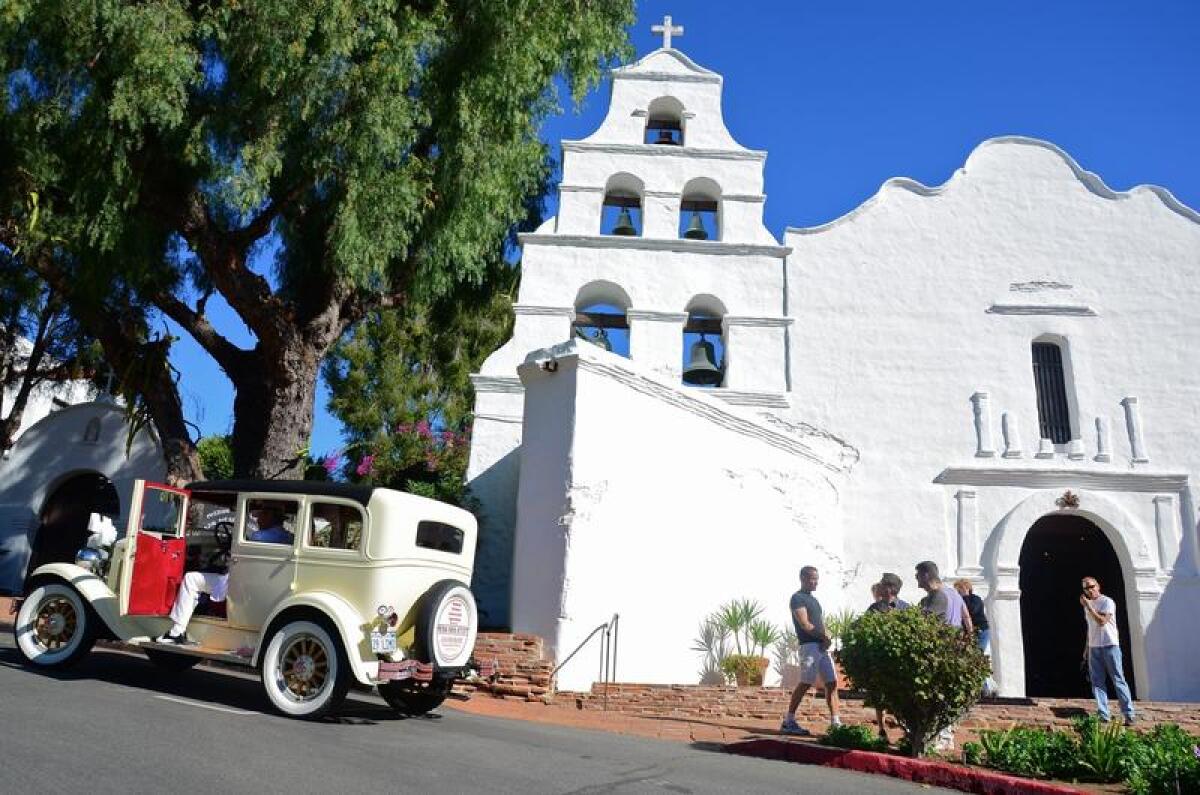
Why: California Catholicism. Mission revival architecture. The cultural collision between Native California and European expansionism. They’ve all got roots here.
What: The now-sainted Junipero Serra founded the first version of the Mission Basilica San Diego de Alcalá in 1769, beginning a chain of 21 missions that would stretch north to Sonoma and give European civilization a toehold on the West Coast. But that first mission, closer to the coast, was soon relocated to its current spot near the San Diego River, six miles inland.
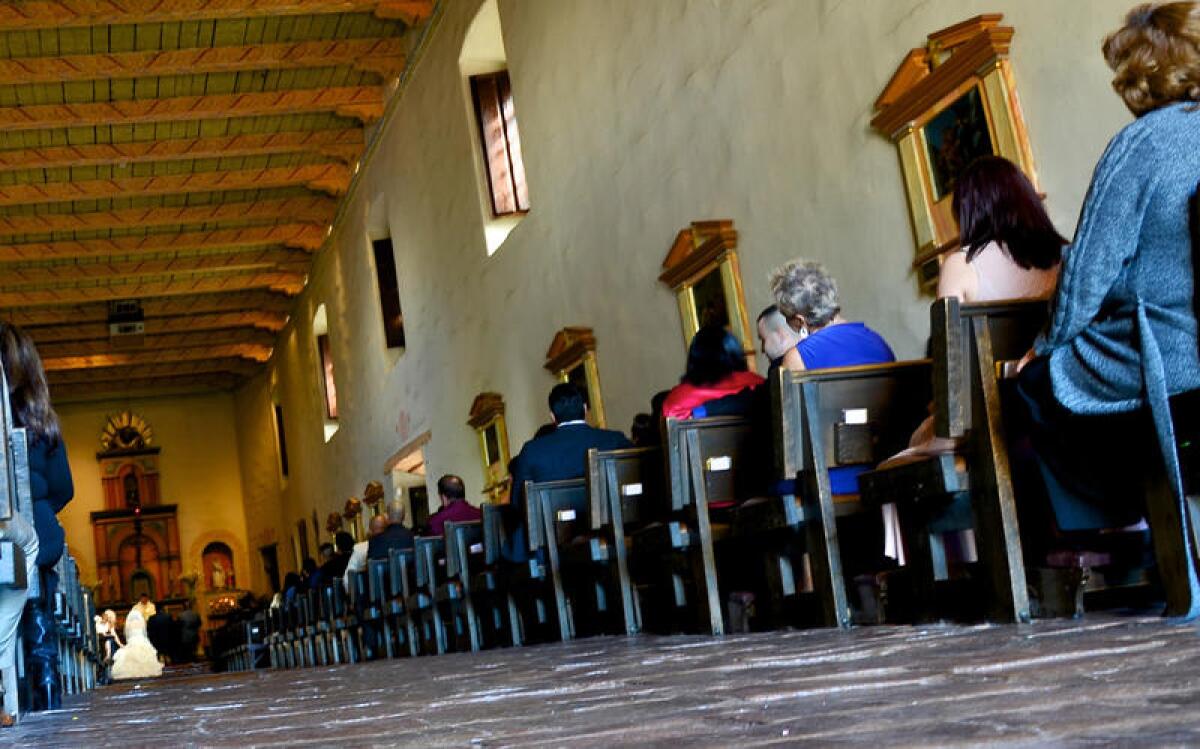
The whitewashed building is a working church, with daily masses, a museum and courtyard. In the museum you will find artifacts and photos, including brief mention of the bloody 1775 revolt here (when Indians rose up to kill a missionary, blacksmith and carpenter and burn down the building) and the site’s brief uses as Army barracks and an Indian school. Like many of the missions, the complex was largely reconstructed in the late 19th and early 20th centuries.
Where: 10818 San Diego Mission Road, San Diego, 123 miles southeast of downtown L.A.
How much: Free. For guided tours, adults are asked to donate $2 each.
Info: Mission San Diego
Count rooms and whisper ‘Rosebud’ at Hearst Castle
Why: In a state known for its outlandish mansions, this is the boondoggle that set the standard. Construction began in the 1920s and continued into the ‘40s.
What: There are 165 rooms in this palace, which was designed by Julia Morgan according to the whims of newspaper magnate William Randolph Hearst (who died in 1951). Now owned and operated by the state park system, the castle includes a main house, three guest houses, one elaborate tiled indoor pool, another pool outdoors, all on 127 hilltop acres of gardens and grounds and, yes, the occasional roaming zebra.
The rooms are festooned with hundreds of artworks and artifacts Hearst collected abroad. In the billiard room, Flemish tapestries hang beneath a 15th century Spanish ceiling.
So outsize was Hearst’s lifestyle that it helped inspire writer/director/actor Orson Welles (a figure of some heft himself) to make the 1941 movie “Citizen Kane,” about a man who inherits wealth, publishes newspapers, builds a castle, entertains fabulous friends, yet is never quite satisfied.
Where: 750 Hearst Castle Road, San Simeon, 244 miles northwest of downtown L.A. If you’re not spending the night in Cambria, as many travelers do, the Cavalier Oceanfront Resort, fronting the ocean in San Simeon, is a good option.
How much: Five different public tours are offered (some wheelchair-accessible, some not), plus evening tours in spring and fall. Ticket prices start at $25 for adults, $12 for kids 5-12.
Info: Hearst Castle
Discover a dinosaur or salute the space shuttle at Exposition Park
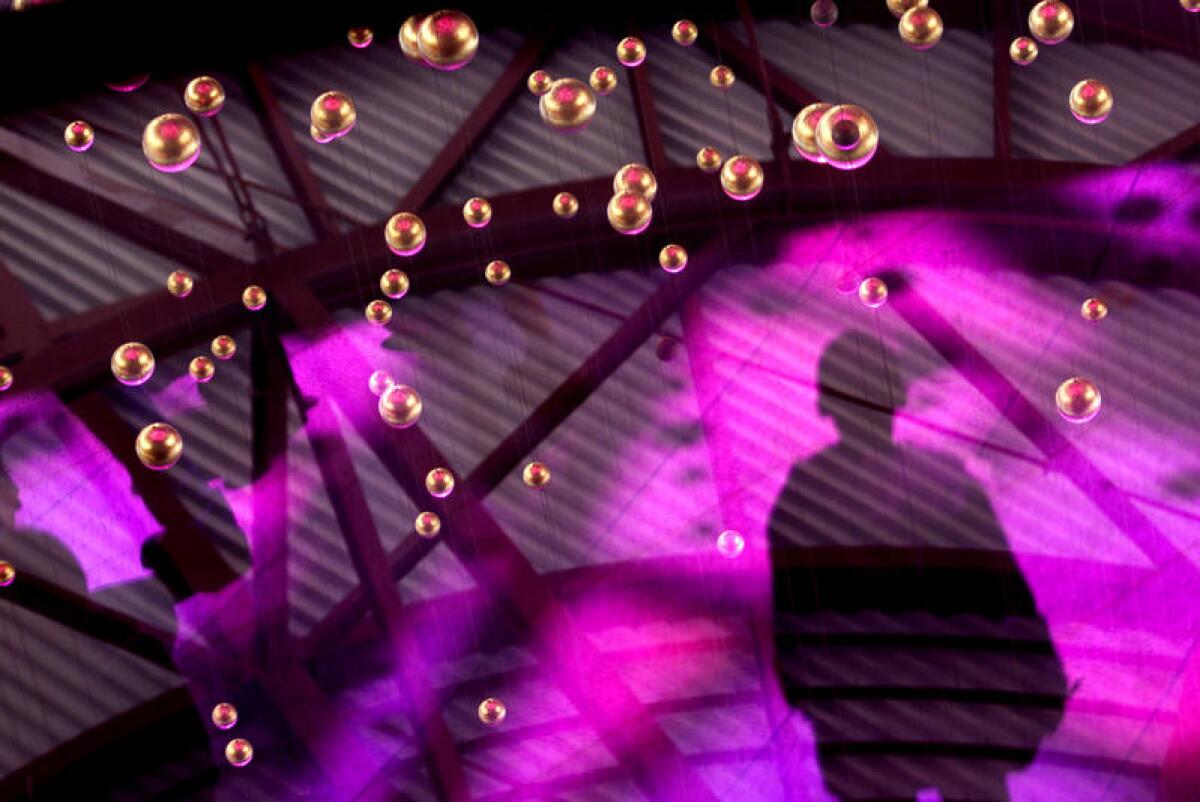
Why: Kid-friendly attractions abound at Exposition Park, on the southern lip of the USC campus, in the heart of Los Angeles. Dinosaurs, a space shuttle and room to run all make this an attractive place to kill the better part of a summer day. Rarely is soaking up culture this much fun.
What: Exposition Park contains museums and other attractions on a 160-acre expanse that was once a racetrack and fairgrounds. It is anchored by the Natural History Museum, home to sprawling dinosaur displays, and by the California Science Center, where the star attraction these days is the shuttle Endeavour. This ultra-popular exhibit honors the space shuttle program and its connection to California, where orbiters originated. (Reservations are required on weekends and between 10 a.m. and 1 p.m. weekdays.) Pavilions devoted to butterflies and spiders are open seasonally, and the Get Dirty Zone lets kids take a close look at how plants grow.
The California African American Museum occupies a 44,000-square-foot facility with three galleries. There’s a swim stadium and recreation center that’s open to the public. An amazing Rose Garden is the urban oasis within an urban oasis. With beds of roses, around a central fountain, it is a popular site for weddings and commercial and movie shoots.
The buzzy and beautiful USC campus is just across the street, and if you haven’t run out of steam by the end of the day, check out one of the most interesting ethnic food courts you’ll ever find, the colorful Mercado La Paloma, which serves up Thai, Oaxacan, Yucatan, Peruvian and other cuisines at great prices.
Where: Exposition Park is bounded by Figueroa Street, Martin Luther King Jr. Boulevard, Vermont Avenue and Exposition Boulevard, in the core of Los Angeles, five miles southwest of L.A. City Hall.
How much: The Natural History Museum is $12 for adults, $9 for ages 2 to 12. Prices increase for special exhibits. Admission to the Science Center is free for permanent exhibits. There is a small charge for reserved tickets to the Endeavor.
Info: Overview of Expo Park
Bend an elbow in the Top of the Mark, high above San Francisco
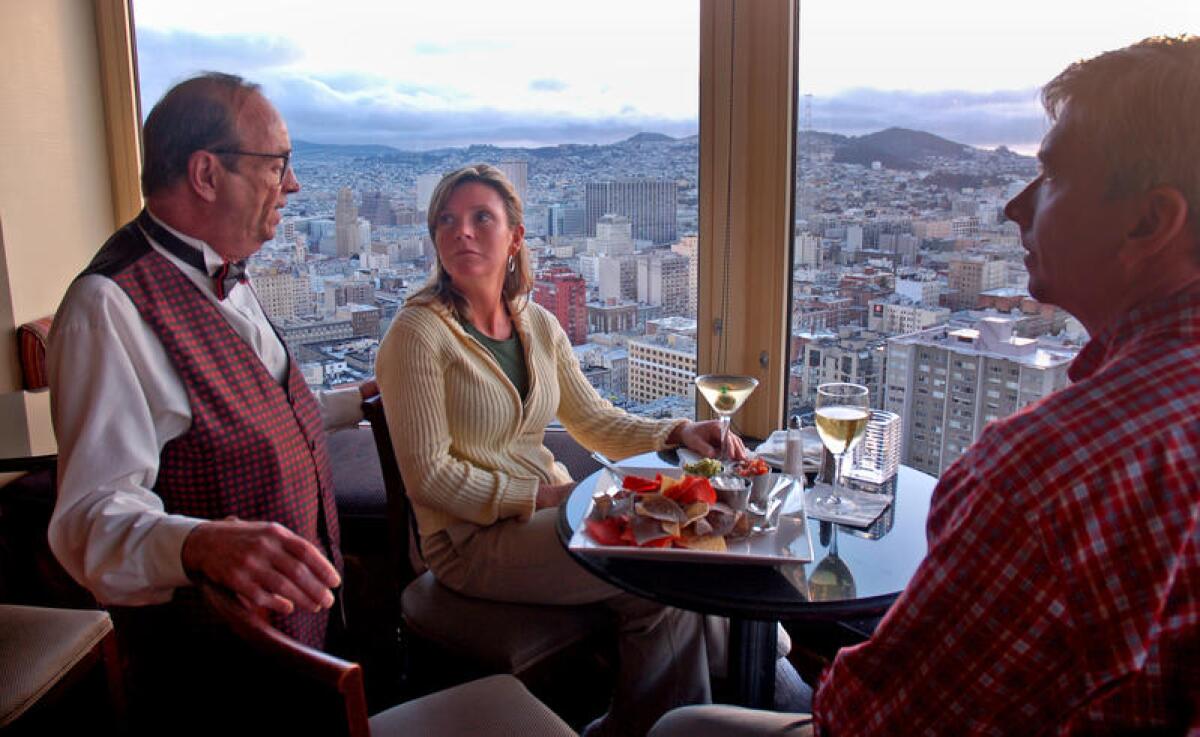
Why: Because it’s good to sit a few hundred feet above Nob Hill, scan the skyline and sip something.
What: Set on the 19th floor of the Mark Hopkins Intercontinental Hotel, the Top Of the Mark has been a popular spot since it opened in 1939. Especially around sunset. Big windows on all sides. Twinkling city lights. Creeping fog.
It’s mostly a bar, but they also serve small dishes and brunch on Sundays. Whatever you get, cast your imagination back to the early 1940s, when legions of young servicemen came here on their last stateside nights out before shipping out to World War II service in the Pacific.
If you’re a grand old hotel geek, you could warm up for your drink here with a mai tai and happy hour snack (Wednesdays through Fridays) at the Tonga Room, which has been doing its tiki thing since 1946 in the nearby Fairmont San Francisco. Or you could nip into the Palace Hotel (just off Market Street since 1875) and admire the ornate Garden Court ceiling or the Maxfield Parrish “Pied Piper” painting in the bar. But these days, for my money, those other public spaces don’t deliver the thrill you get on the Mark’s 19th floor.
Where: 999 California St., San Francisco, 381 miles northwest of downtown L.A.
How much: If you’re looking for a way to spend $180, you could order an ounce of their finest caviar. But you can get a beer for $8 or a glass of wine for $12.
Info: Top of the Mark
Line up S.F.’s Transamerica Pyramid and Sentinel Building from Columbus Avenue in North Beach
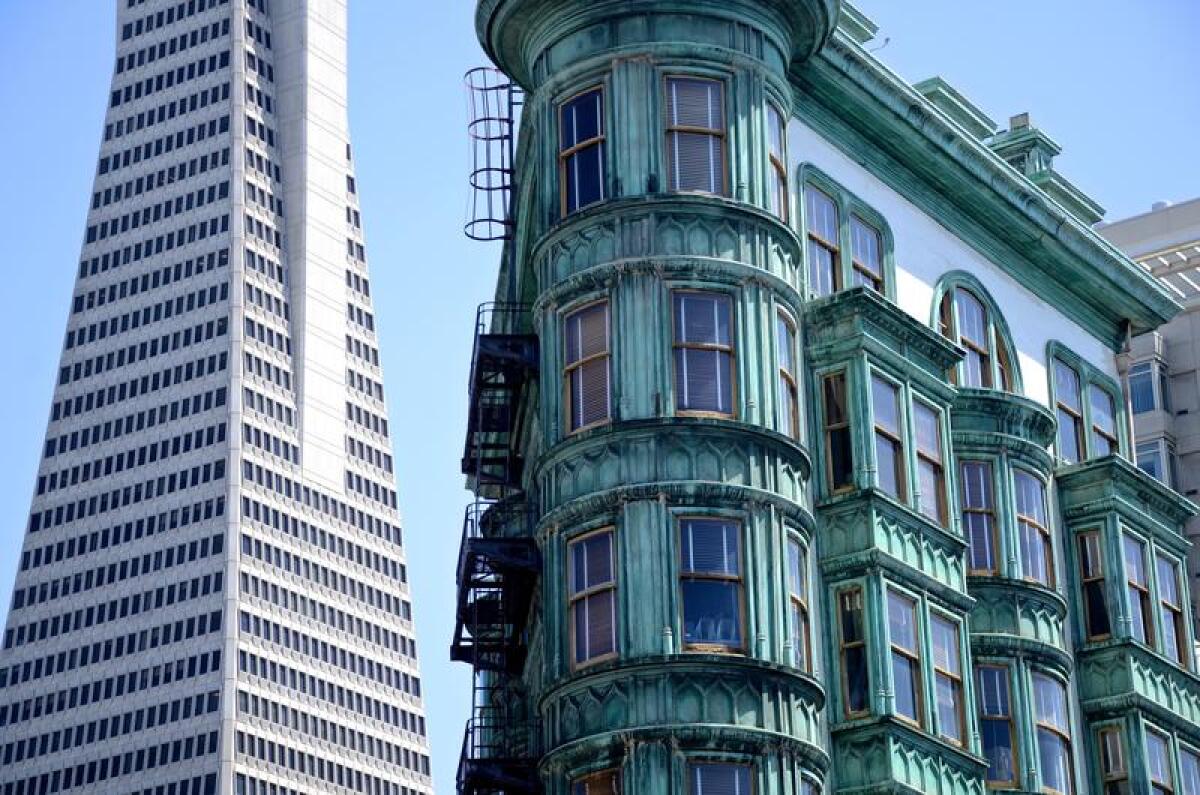
Why: Because these buildings go together like Boudin bread and Ghirardelli chocolate.
What: As an emblem of aggressive modernity, San Francisco’s Transamerica Pyramid made a lot of enemies when it rose from the Financial District in 1972, but now it’s the 853-foot needle we count on seeing.
Its neighbor, clad in green copper, is the Sentinel Building (a.k.a. Coppola’s Cupola, a.k.a. Columbus Tower), completed in 1907, bought in 1972 by filmmaker and wine guy Francis Ford Coppola. Stand in the right spot near Kearny Street and Columbus Avenue, the main drag of North Beach, and you can put them together in one architecturally potent picture. Can L.A. or San Diego match this spectacle?
Meanwhile, San Francisco has a new tallest building on its way up -- the 1,070-foot Salesforce Tower, South of Market, due for completion in late 2017. But where’s the yin to its yang?
Where: Columbus Avenue and Kearny Street, San Francisco 387 miles northwest of downtown L.A.
How much: No spending here. Unless you get a bite at the Coppola family’s Cafe Zoetrope on the ground floor of Sentinel Tower. But then you wouldn’t be able to see the rest of the building.
Info: Transamerica Pyramid and the Sentinel Building
Ring the bells and buzzers of the Musée Mécanique on Fisherman’s Wharf in San Francisco
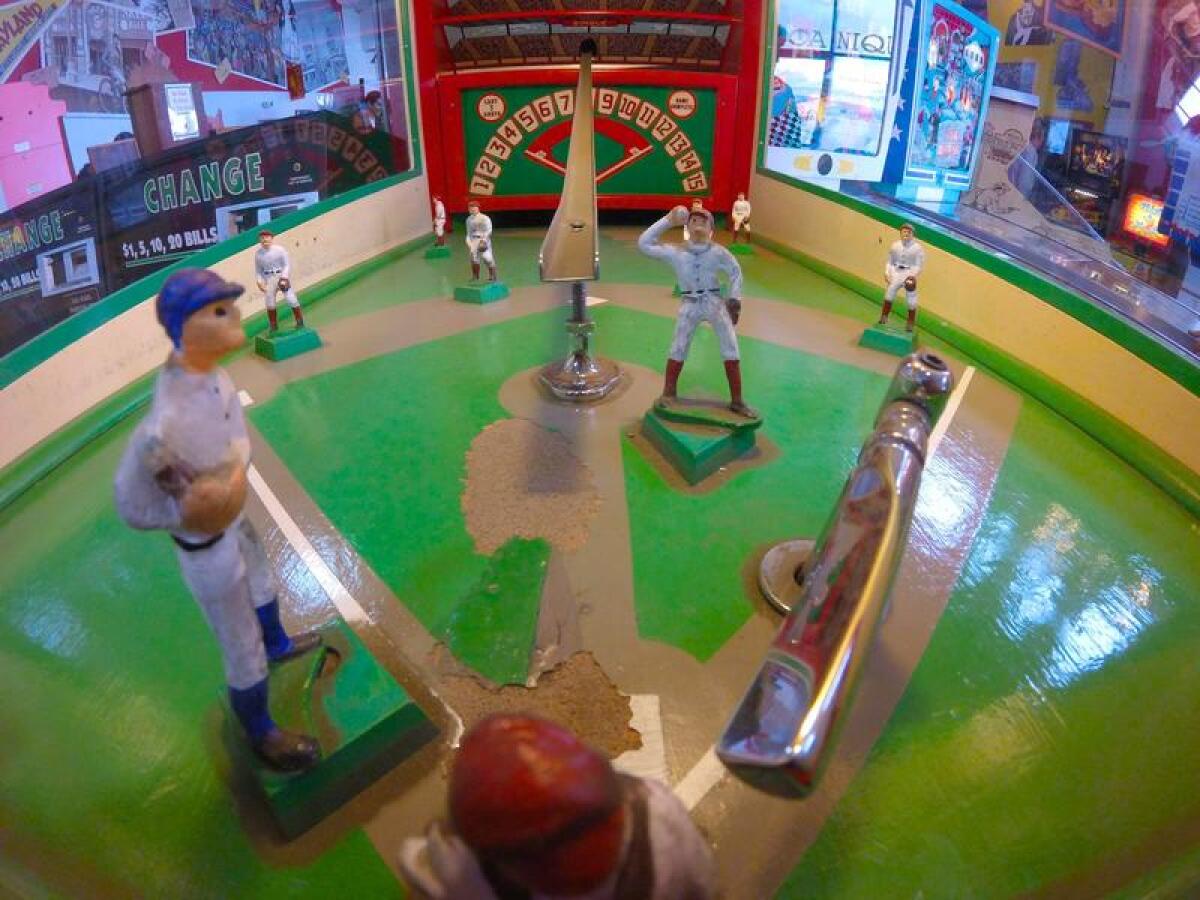
Why: Before you give up on Fisherman’s Wharf entirely, you should spend a few minutes playing the quaint old games in the Musée Mécanique. It’s basically a dim, din-filled warehouse on Pier 45 that’s packed full of arcade games, antique mechanical toys and musical instruments from decades past.
What: You could call this place an old arcade. But why not think of it as a mechanical memory rehabilitation tool? If your childhood happened any time before the Reagan administration, there’s probably a game in here that will take you back to it. Some contraptions go back to the 19th century.
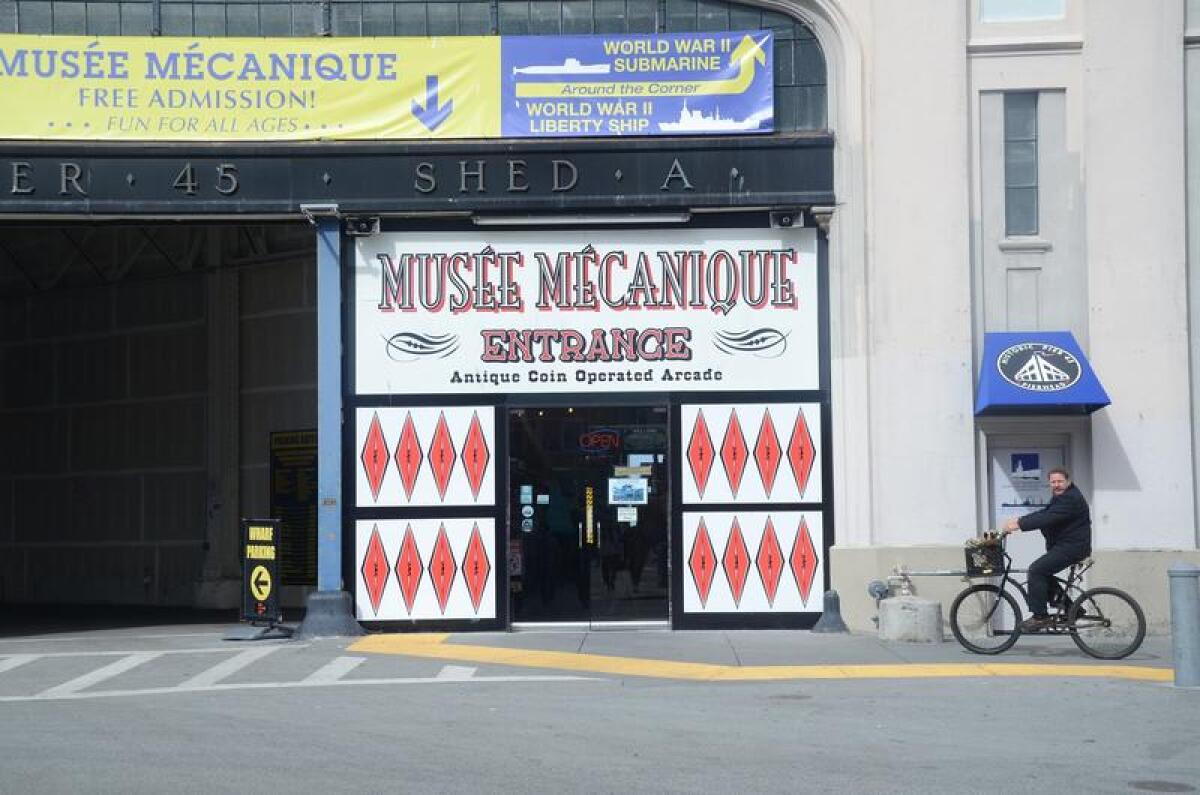
It is possible that you, or someone you love, would rather roam the souvenir shops of Jefferson Street or the tourist-oriented retailers and restaurateurs of Pier 39. But I’m betting somebody in your family would rather take refuge in the shadows of Pier 45 with a fistful of quarters.
And if you’re like me, you’ll notice that the older you get, the more interested you get in the games and devices that came before your own childhood.
Where: Pier 45 at the end of Taylor Street. San Francisco, 383 miles northwest of downtown L.A.
How much: It’s free to wander around. Most of the games cost 25 to 50 cents. There are change machines handy.
Info: Musée Mécanique
Vanquish scurvy, buy an eye patch and boost creative writing at S.F.’s 826 Valencia
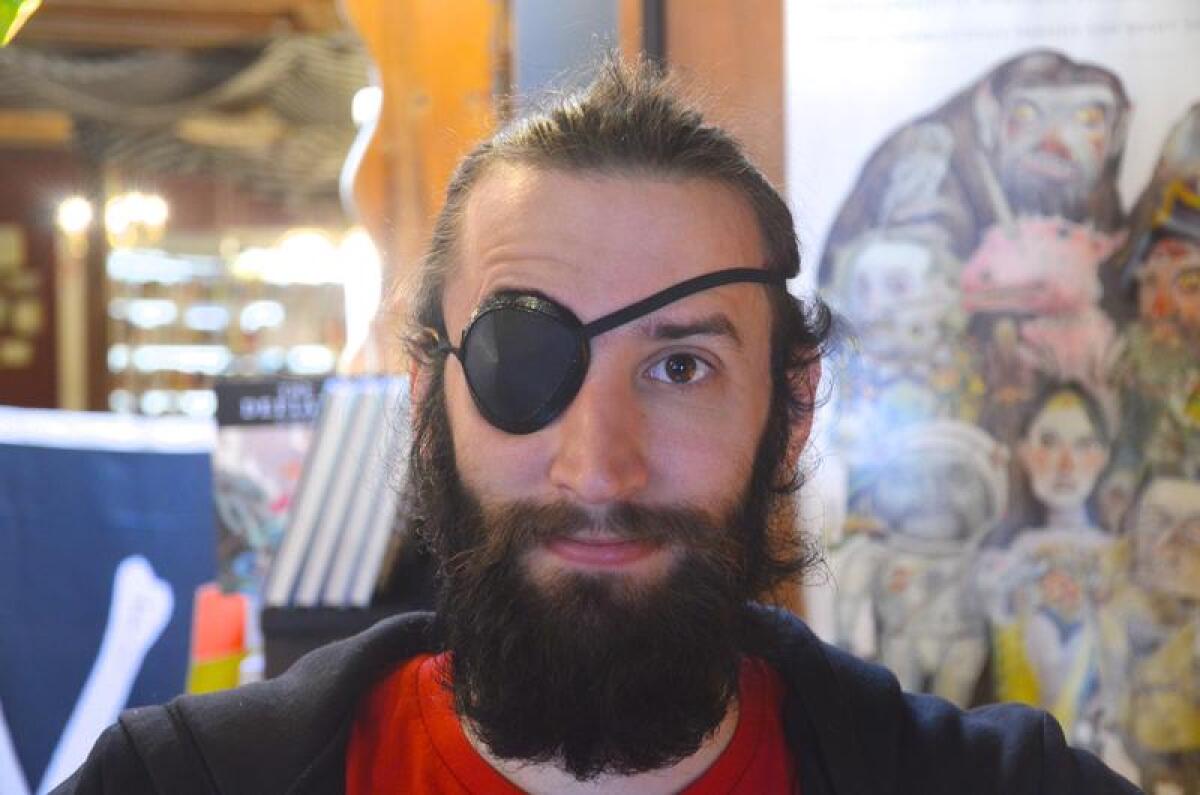
Why: It’s a pirate supply store. It’s a charity. It’s ... oh, just go inside and enjoy.
What: 826 Valencia sells itself as a pirate supply shop, complete with eye patches, handy jars of Scurvy Begone a retail showroom full of pillage-worthy merchandise. But the real business is in back. It’s a nonprofit educational outfit that tutors kids (ages 6-18) in creative writing. The founders are author Dave Eggers and educator Nínive Calegari.
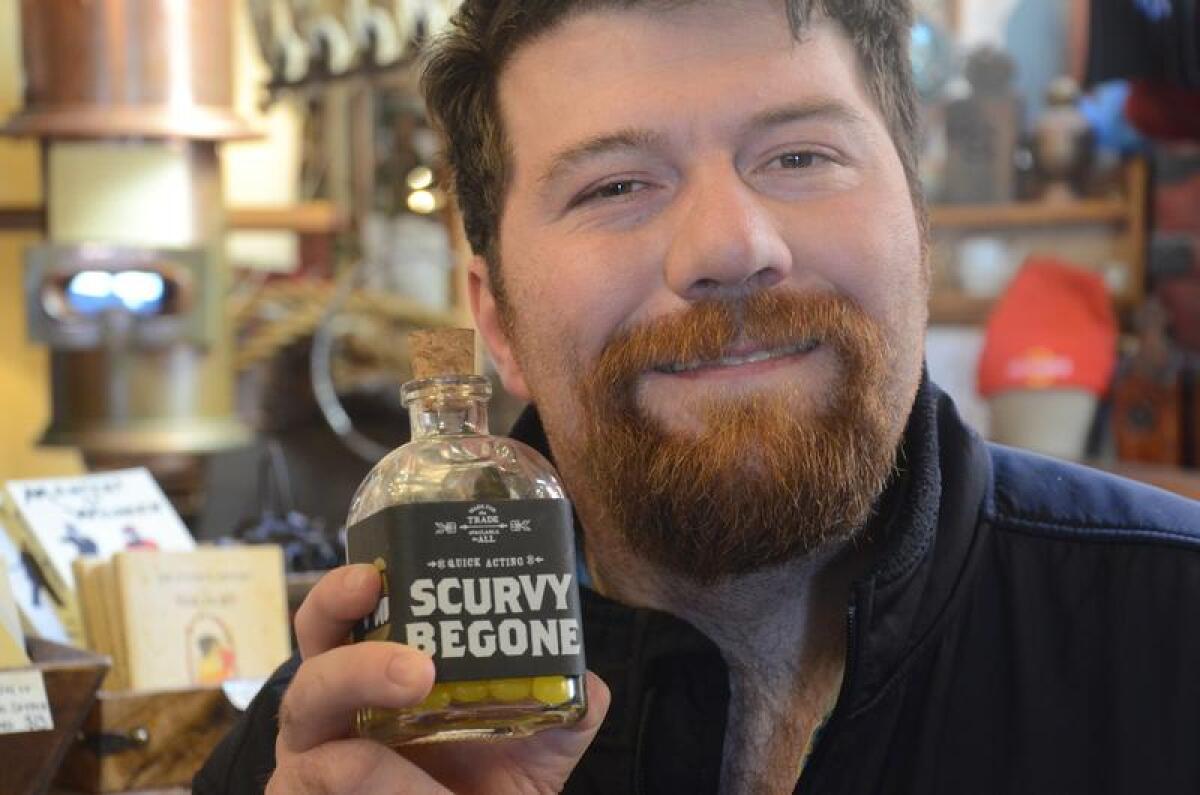
The enterprise, born in San Francisco in 2002, has now grown into a national organization with tentacles in several U.S. cities and implausible retail cover story in place for each. (L.A. has a time-travel shop, Boston a Bigfoot research institute.)
Oh, and once you’re done pawing through the pirate goods, check out a few other storefronts. Valencia is one of the liveliest retail-and-restaurant streets in the Mission district, and its merchants offer antique stereo sets, arcane taxidermy and designer infant wear (“my first ironic T-shirt”) and so on.
Where: 826 Valencia St., San Francisco, 382 miles northwest of downtown L.A.
How much: $5 for an eye patch, $13 for a skull-and-crossbones flag, $15 for a tri-corner hat, $299.99 for a hook. Or you could buy an anthology on student writing.
Info: 826 Valencia
Ascend the steps, scrutinize the murals and scan the skyline from Coit Tower in San Francisco
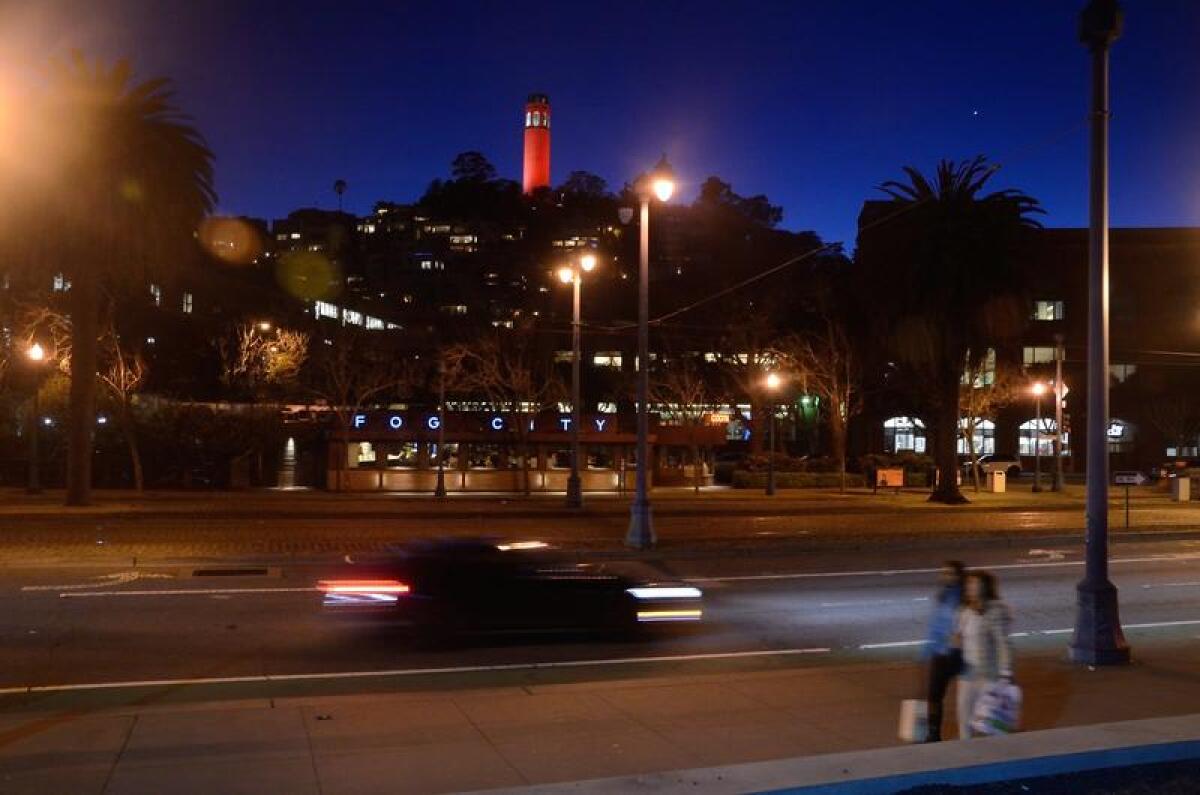
Why: It’s a triple-threat atop Telegraph Hill. And that’s not even counting the parrots.
What: Coit Tower went up in 1933. Even if the wraparound views from the top of the tower weren’t spectacular (and they are), the recently restored murals on the ground floor are a witty, provocative window into the hard times and lefty politics of the 1930s, well worth the price of admission by themselves. And if you want some exercise, you can earn your views by starting at the foot of the Filbert Steps and climbing to the tower (which has an elevator).
On your way, stay alert for a dire, shrieking sound. That would be the parrots. They’re famous, locally and beyond, for perching and conversing in the trees on and around Telegraph Hill.
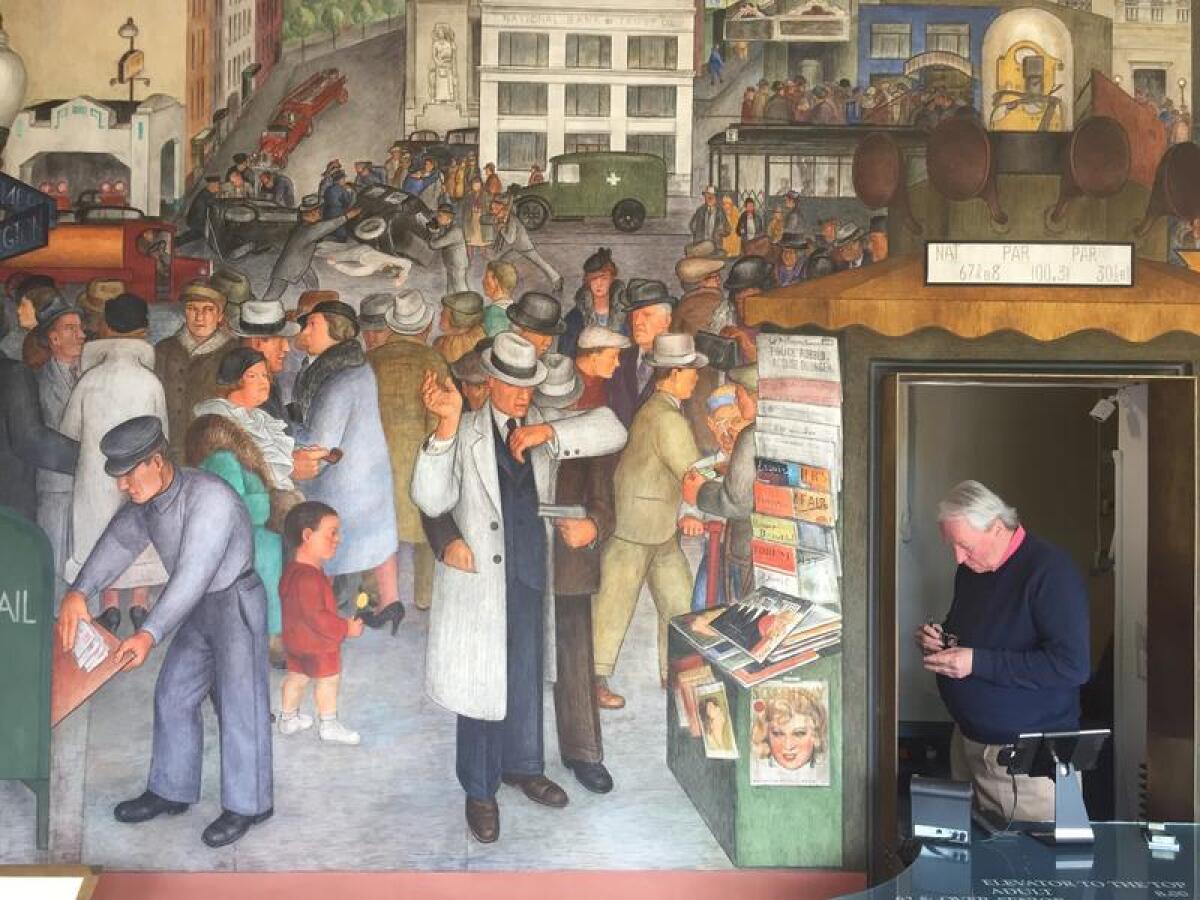
Also, be sure to ask one of the tower’s guides for a story or two about Lillie Hitchcock Coit, the quirky, firefighter-loving philanthropist who donated the money that build that tower. (By the way, S.F. historians insist that the tower was not designed to resemble a fire hose nozzle. But you have to wonder.)
Where: 1 Telegraph Hill Blvd., San Francisco, 382 miles northwest of downtown L.A.
How much: To ride the elevator to the top, it’s $8 per adult visitor. (S.F. residents pay $6.)
Info: Coit Tower
Catch a foul ball, and 2 of the game’s biggest names, at Angel Stadium
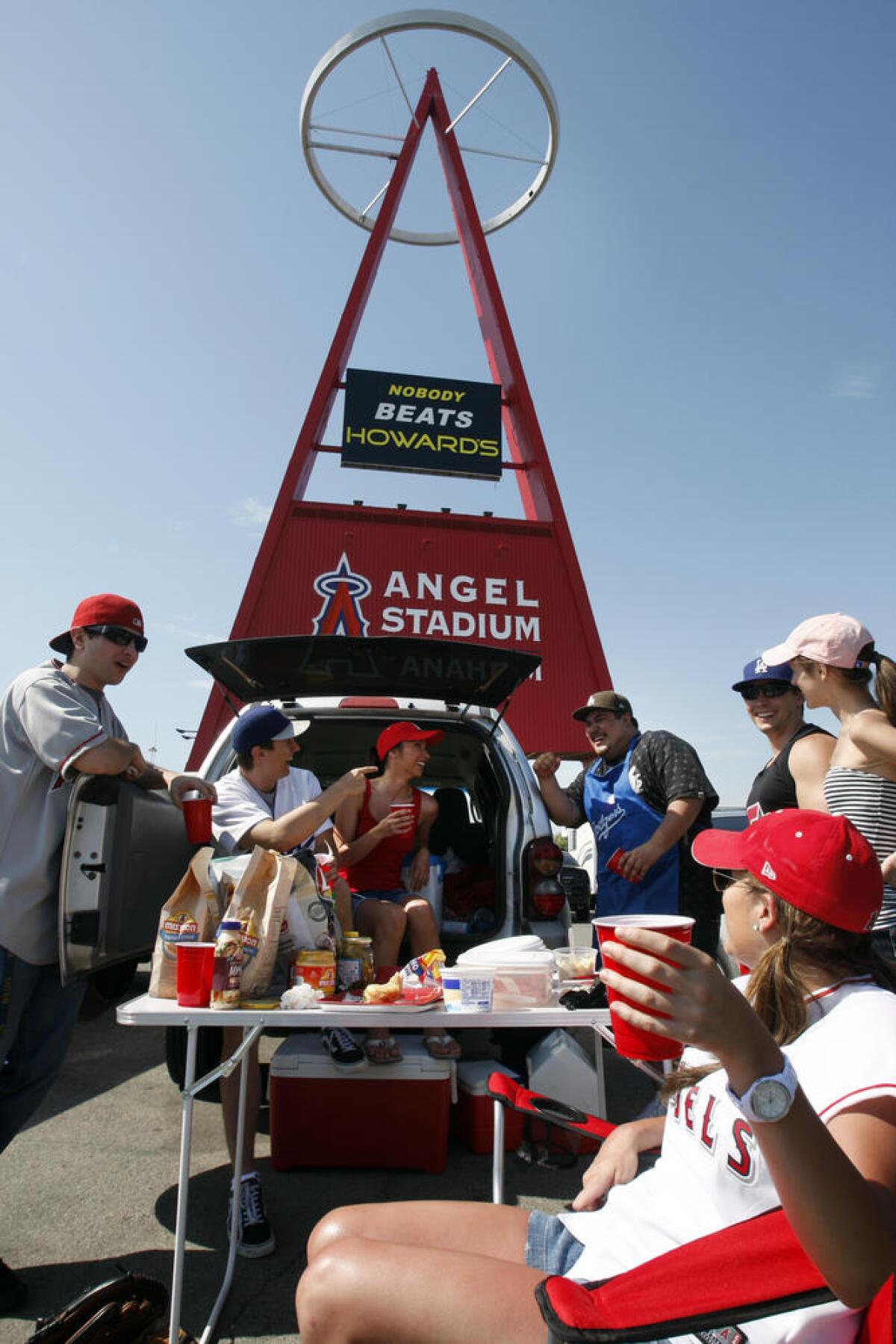
Why: With a faux waterfall, rally monkeys and a family-friendly vibe, Angel Stadium feels of a piece with nearby Disneyland and Knott’s Berry Farm. The most G-rated sports venue in Southern California, the Big A earns additional points for allowing tailgating in the parking lot before games -- no alcohol or charcoal but propane grills are OK. Once inside, fans get a chance to cheer Albert Pujols, Mike Trout and (as of 2018) Shohei Ohtani, three of the best the game has every seen.
What: Angel Stadium has been home to the Angels since 1966, after they moved from Los Angeles. The stadium has served many purposes, including as home to the NFL Rams, but now is configured as a baseball-specific venue. Darkly handsome and well maintained, the stadium invites exploration and whimsy. In particular, the outfield area behind the rocks has an assortment of comfort foods and craft beers as well as picnic area open to all fans.
As ballpark experiences go, Angel Stadium doesn’t have the history or cathedral-like reverence of Fenway and Wrigley. What it does offer is a good value, a bouncy audience and a cheerful staff that, unlike some other SoCal sports venues, is personable and professional. For pre- and postgame celebrations, a series of familiar restaurants is within walking distance.
Where: Angel Stadium is off the 57 Freeway, in Orange County, 29 miles southeast of downtown L.A. Directions
How much: Tickets start at $10
Info: Angels website
Pack your paints and favorite old sweater and head to alluring Montaña de Oro State Park
Why: Sometimes, it’s like looking out at the North Sea. Montaña de Oro State Park is misty 1,400-foot bluffs, crashing waves and wildlife. If you’re looking to hike California’s craggy jawline, or for a moody place to paint, pack your favorite old sweater and head off to this dramatic beach campground.
What: Montaña de Oro State Park is a half day’s drive north of Los Angeles, near Morro Bay. The park’s main, 50-site campground offers primitive sites with picnic tables, fire pits, toilets and nearby drinking water for car campers. The park’s hike-in environmental sites have pit toilets and picnic tables but no water. Spooner’s Cove is the most popular beach, right across from the campground. Dogs are permitted in campsites and on park roads and must be on a leash no longer than six feet. Except for Spooner’s Cove, dogs are not allowed on the trails or beaches.
Be sure to bring your own firewood or buy at the camp host site (campsite 22). Campsites 18, 19, 20 are closest to the beach; 40, 41 and 42 offer a little more privacy. Interested in having an RV delivered to your site? Paso Robles RV Rentals is the approved vendor: (888) 898-2267
Where: On Pecho Road, 6 miles southwest of Morro Bay in San Luis Obispo County, 205 miles northwest of downtown L.A.
How much: Campsites start at $20 a night, plus an $8 reservation fee.
Browse L.A.’s glorious Central Library for great works -- literary and otherwise
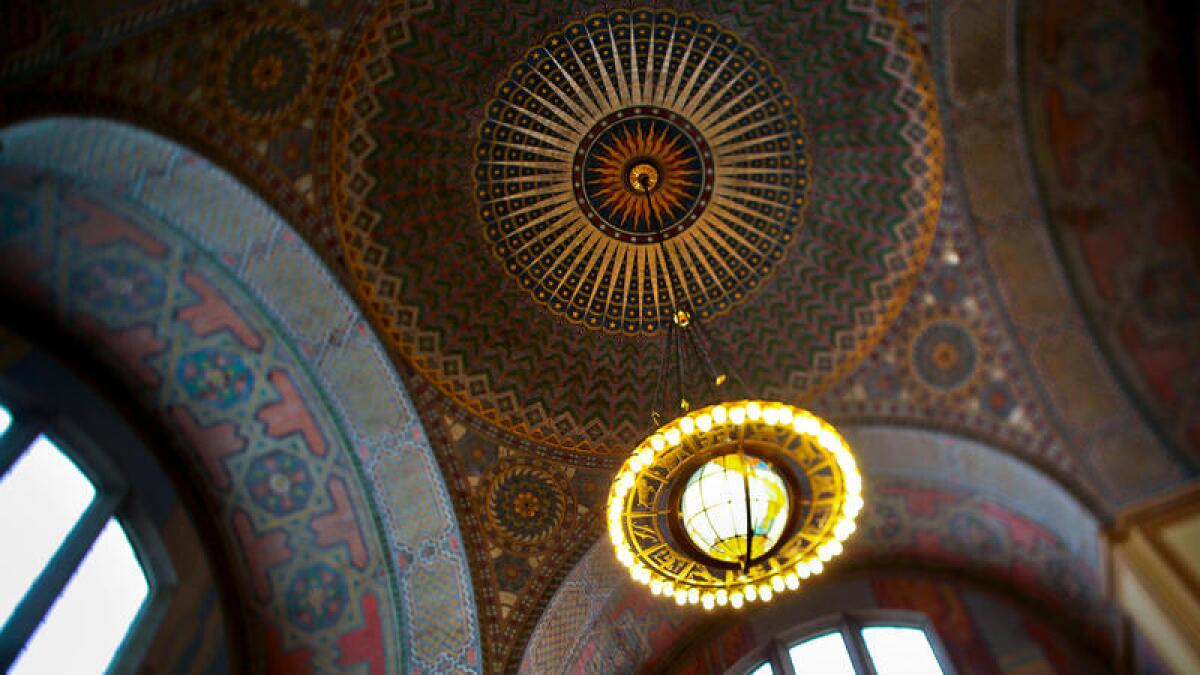
Why: Though some describe L.A.’s architectural aesthetic as “diseased,” there are pockets of taste and splendor. The Central Library, born in 1926, is such an oasis. It’s the sort of marbled cultural sanctuary where Aristotle might’ve wandered at will. You should too.
What: The original Central Library is an early example of Art Deco, a popular style of architecture from the mid-1920s through the 1930s. It was designed by Bertram Goodhue, in the last project of a career that included the Nebraska Capitol. He died unexpectedly in 1924, and Carleton Winslow took over and completed the project in 1926. After a long renovation, the Central Library was reopened in 1993, with the landmark Goodhue Building restored and a new wing named for former Mayor Tom Bradley. During the renovation, most of the library’s collection was moved to the new Tom Bradley Wing, and the original library building is now given over primarily to exhibitions, reader services and administration.
Adding life and beauty to the facility is a series of sculptures, paintings, historical murals and a magnificent rotunda featuring the Zodiac Chandelier. The adjacent Maguire Gardens are one of downtown’s top outdoor spaces -- shady and thick with fountains.
It’s a lot to take in, so consider one of the free walk-in docent tours that take place daily, and twice on Saturdays. No reservations are necessary for groups of six or fewer.
Where: 630 W. 5th St., in downtown Los Angeles
How much: Free
Info: Arranged tours for groups of any number can be reserved by calling the library’s docent office.
Paddle across Lake Tahoe, the state’s biggest and bluest jewel
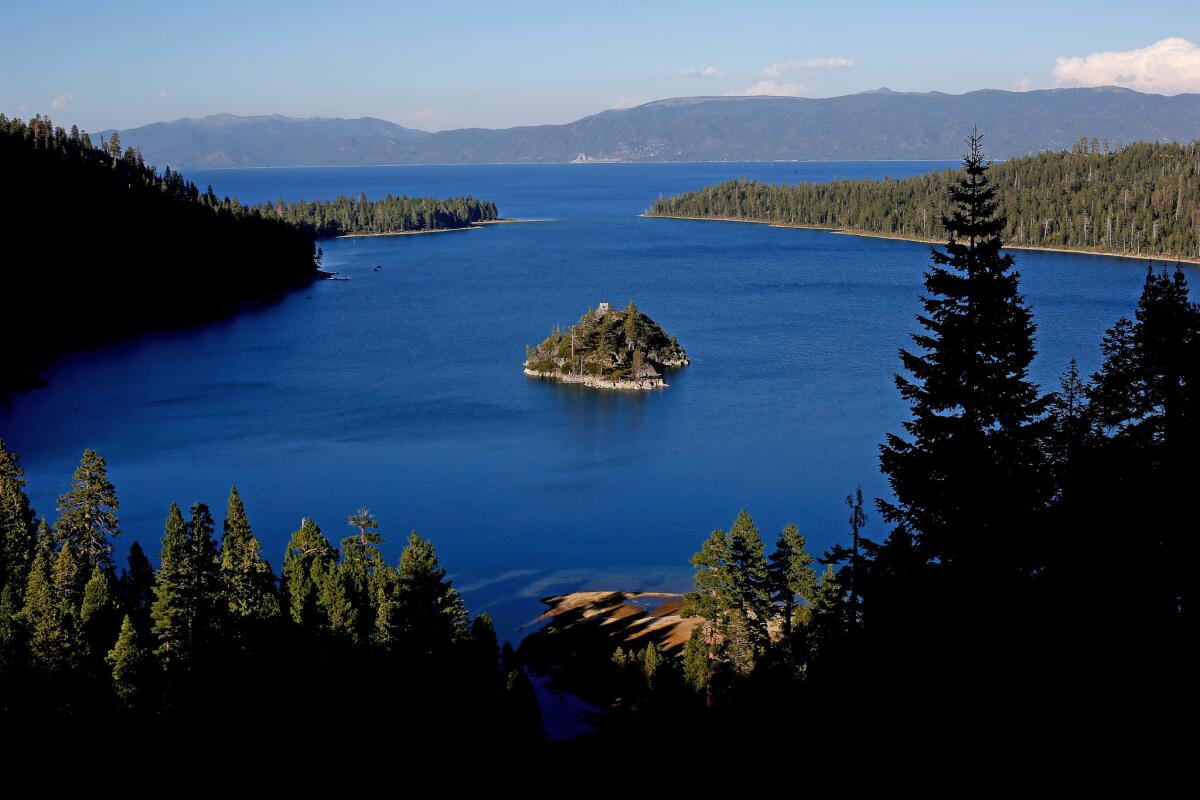
Why: Feeling blue? Head to Lake Tahoe, where that color has so many shades -- from dark Levi to pale baby blanket – that it is sure to cheer you. Better yet, rent a kayak or a canoe and dip your toes in one of the most lovely lakes in the world. Amazing beaches ring the lake, but at some point head south to Emerald Bay, to my mind the most dazzling freshwater cove in California.
What: Lake Tahoe is a large Sierra lake resting between California and Nevada. The north shore is anchored by Tahoe City, a bustling resort town with an array of restaurants, inns and a launch point for Truckee River float trips. It also features marinas with boat rentals, some pretty pricey. But boat rental shops dot the lake. A wonderful pit stop for food and drink is the deck at Sunnyside Resort, on the west side of the lake.
On the southwest shore, Emerald Bay State Park contains the 1929 Nordic-style mansion Vikingsholm, and the “Tea House” on Fannette Island, the only island to be found in all of Lake Tahoe.
Glassy at sunup and sunset, the lake can kick up in the afternoon. Summer temps run in the 70s, but the chill waters often make it feel cooler. All in all, it makes for a refreshing and sun-splashed adventure.
Where: Lake Tahoe’s south shore is about 430 miles north of downtown L.A., about an eight-hour drive. Interstate 5 is considered faster, but U.S. 395 is more scenic. The California portion is divided between Placer County and El Dorado County.
How much: Kayak and canoe rentals start at about $40.
Info: Lake Tahoe tourism
Follow in the footsteps of Hollywood legends at the Walk of Fame
Why: The Hollywood Walk of Fame is L.A.’s version of Times Square -- with more to do. A celebration of celebrities, it features sidewalk stars honoring entertainment legends and a series of entertainment-themed attractions: a wax museum, some wonderful vintage theaters and the site of the Oscars.
What: The Walk of Fame is a public sidewalk in the heart of Hollywood that runs on both Hollywood Boulevard and Vine Street. It also has come to complement a series of nearby attractions, such as Madame Tussauds wax museum, the Hollywood & Highland mall and a series of tourist-themed shops and kiosks. Jimmy Kimmel tapes his show across the street, near the gloriously restored El Capitan Theatre. If your timing is right, you can catch the unveiling of a new sidewalk star. About two stars are added each month, and the Walk of Fame keeps a schedule on its website. Fans can view the free star ceremony from a public viewing area on a first-come, first-served basis. While you’re here, you can catch almost any kind of tour, climb the stairs to the nearby mall for a keepsake photo of the Hollywood sign or see some stars’ handprints and footprints at the Chinese Theater formerly known as Grauman’s (these days, it’s officially the TCL Chinese Theatre). The walk features more than 2,600 stars now, from Bud Abbott to Adolph Zukor. So take your shoes off and stay a while.
Where: Corner of Hollywood Boulevard and Highland Avenue, 6801 Hollywood Blvd., Los Angeles, 8 miles northwest of downtown L.A.
How much: Free
Info: Hollywood Walk of Fame
Check out the diverse pleasures of L.A.’s Chinatown, Jake
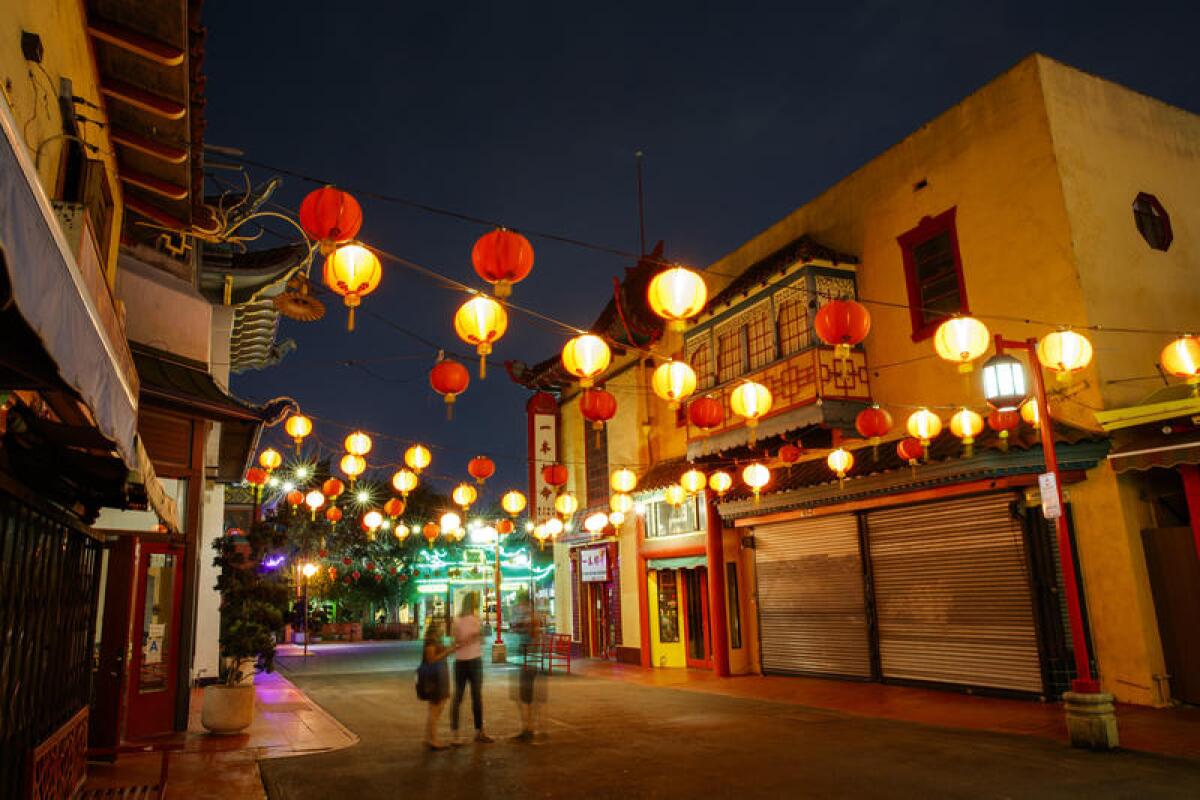
Why: L.A.’s Chinatown has a past. Transplanted from its original venue 80 years ago, the neighborhood northeast of downtown retains an authentic vibe, in a region otherwise threatened with mass gentrification. It is famously notorious in the classic Jack Nicholson movie “Chinatown,” but today it is a relatively safe, wonderfully scented and an easy-to-navigate stretch of shops and vast dim sum houses.
What: Chinatown was bumped to its current location in the 1930s, to allow for the building of the opulent Union Station. Today, it features restaurants, groceries, herbal shops and galleries. Amid its various attractions are a jazz club; a Cajun deli; a growing number of art galleries; many Vietnamese restaurants; and L.A.’s favorite French dip sandwich shop, Philippe the Original.
It also features an even better lunch spot, Howlin’ Ray’s, a Nashville-style fried chicken joint that serves, to my mind, the best (and spiciest) sandwich in Los Angeles. Needless to say, it is hardly one thing.
But it remains to this day a hub of Chinese culture and tradition, and the site of Chinese New Year’s celebrations and Moon festivals. For perhaps the most affordable lunch feast ever, take visitors to one of the dim sum houses, where you can fill the table with delicacies from passing carts of seafood. Ocean Seafood is one of the grandest such halls, as is CBS Seafood. Meanwhile, on the first Thursday of the month, the Chinatown After Dark tours offer glimpses of local favorites, such as Grand Star Jazz Club, a neighborhood hangout since 1946.
Where: Downtown Los Angeles, half a mile northeast of City Hall.
How much: Free. Lot parking starts at around $4
Info: Chinatown, L.A.
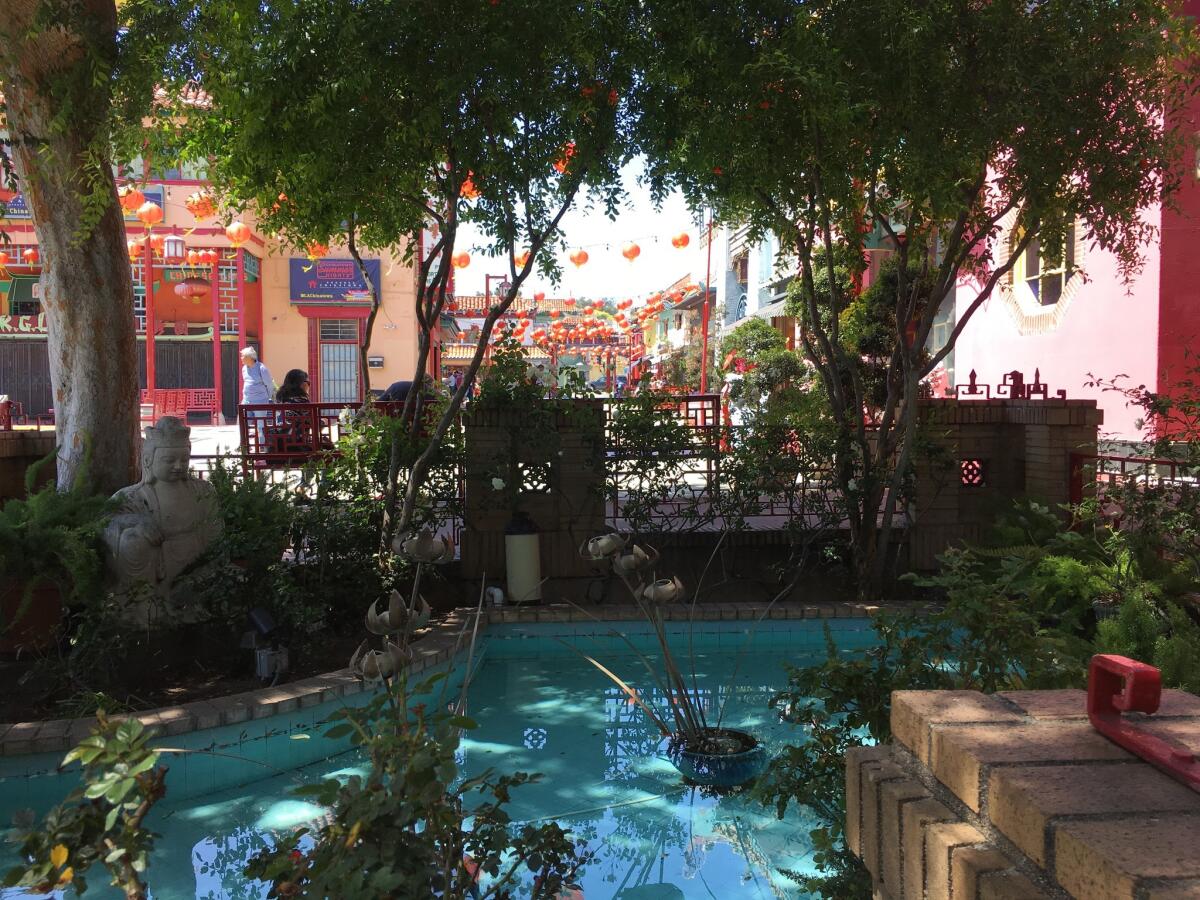
Splash and thrash on a river raft adventure on the Kern
Why: Visitors can pack a lot into a raft trip. There’s adventure, sun, scenery and the exhilaration of whitewater runs driven by restive snow melt. From the Oregon border to the southern Sierra, California’s rivers run mild to wild — and the Kern River has a little of everything.
What: The thrashing Kern resides just three hours north of Los Angeles. The water is chilly, the air dry and warm, and the scenery spectacular.
Beneath the water — or peeking out — are granite boulders not to be taken lightly. If you fall in, as the guides will warn repeatedly, point your feet down river to protect yourself from rocks. Your first dunk is scary. After that, it’s still scary but you learn the drill.
The season runs April to September, possibly even later this year, given the abundant Sierra snows.
The Kern features 60 miles of commercially run whitewater rafting, and companies offer trips ranging from safe and easy family floats to daring Class V adventures suitable only for fit adults.
Day trips with big rapids can be found on both the upper and lower Kern. To the north, the Forks of the Kern provides the most extreme adventures, with a 20-mile, multi-day run across Class V rapids in the Golden Trout Wilderness.
Beware: Flow rates are very high in Sierra rivers after the wet winter. Be sure to use a pro guide, and consider conditions before pushing off.
Where: Kern River, in the Sequoia National Forest in Kern County. Many outfitters are based in Kernville, 164 miles north of downtown L.A.
How much: Simple half-day trips start at $35 per person; multi-day adventures can reach $1,000.
Info: Kern County Tourism Bureau and its list of rafting companies.
Check out this classic California beach bar in the shadow of Santa Monica Pier
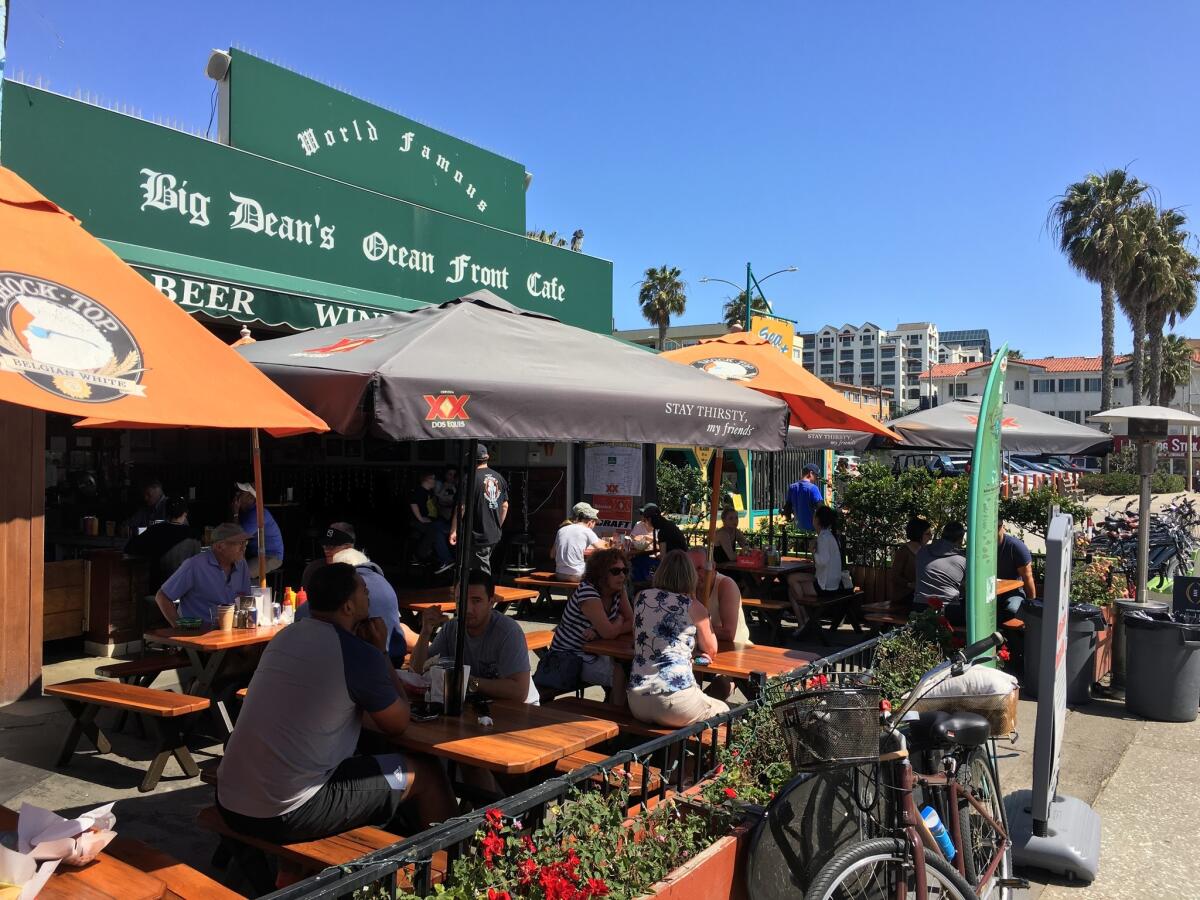
Why: Easy to overlook as just another tourist trap, Big Dean’s Ocean Front Cafe is far more than that. It’s a slice of life, SoCal style. It’s also one of the great hangouts in the heart of the region and excellent for people-watching near Santa Monica Pier.
What: It’s an open-air beach bar -- kind of a beer garden -- that serves good pub grub and a decent selection of brews (plus wine but no hard liquor). You’ll be relieved to find a place this jovial and affordable in a busy and often overpriced urban setting.
The laid-back staff looks as though they all just came in from surfing, making Big Dean’s a classic hangout since the ‘70s. Grab one of the picnic tables near the entrance. The front area is often busy, but don’t let a lack of tables deter you. Plenty of space awaits in the roomy courtyard in back.
“Chesseburger-cheeseburger-cheeseburger” is the mantra of this place (ask for grilled onions). But the clam chowder bread bowl and fish tacos are worth your time as well.
And, to make a day of it, there’s a bike rental place (Sea Mist Rentals) right next door. Big Dean’s is getting bigger soon with a 100-seat expansion, but will remain open during construction.
Where: 1615 Ocean Front Walk, Santa Monica (just south of the pier)
How much: Double cheeseburgers cost $8. Most meals run about $10.
Giggle at the parody songs and massive hats of Beach Blanket Babylon, S.F.’s longest-running revue
Why: Because this nightclub revue’s hats and wigs put the “top” in topical humor. It’s been amusing tourists (and the occasional local) in North Beach for more than 40 years.
What: To start, it’s not about beaches, blankets or Babylon. Its wafer-thin plot, about Snow White seeking her Prince Charming, is an excuse to lurch from one parody song to another, lampooning pop personalities (and placing a series of ridiculous lids and rugs atop their heads).
The theater holds about 375 people. The production (formally titled “Steve Silver’s Beach Blanket Babylon”) has been regularly updated since its creation by producer Steve Silver in 1974. But the buoyant spirit that Silver started remains. (He died in 1995.) Admirers have included New York Times theater critic Charles Isherwood.
The show reflects the city’s bohemian ways and lefty politics, naturally, but not as much as you might imagine. I was surprised to find that Donald Trump and his kin (recast as the Von Trump family singers) didn’t turn up until the last quarter of the show. Bar on site.
Children are allowed (and alcohol is withheld) at Sunday matinee and evening shows. But this is a better fit for teens and beyond.
Where: Club Fugazi, Beach Blanket Babylon Boulevard (Green Street), San Francisco, 387 miles northwest of downtown L.A.
How much: Adult tickets $25-$135. Shows are offered Wednesday through Sunday nights, with matinees Saturdays and Sundays.
Info: Beach Blanket Babylon
See change at SeaWorld
Why: Maybe because its marine-life presentations are a throwback to your childhood in the ‘60s and ‘70s. Or maybe because they aren’t. After years of protests and boycotts over its treatment of killer whales, SeaWorld is changing. There’s no killer whale breeding program and no Shamu show anymore, and there’s a new emphasis on thrill rides.
What: In 1964, a group of fresh UCLA graduates came up with the idea of an underwater restaurant. That didn’t happen, but one thing led to another, and that led to the creation of SeaWorld, which became a leading San Diego attraction with parks in Texas and Florida as well. The San Diego park’s 190 bayfront acres include displays, rides and a Skytower with a rotating observation deck.
SeaWorld’s popularity, however, began to suffer when criticism from animal-rights advocates grew louder and the 2013 documentary “Blackfish” had broad impact. The park’s new approach is a bid to lure back lost audiences. It includes a new Orca Encounter presentation and an Ocean Explorer ride, both to debut in summer 2017.
By the way, If you’re looking for a low-key, straight-ahead aquarium in San Diego County, you might try Scripps Institution of Oceanography’s Birch Aquarium in La Jolla or the Sealife Aquarium that’s part of the Legoland complex in Carlsbad.
Where: 500 Sea World Drive, San Diego, 122 miles southeast of downtown L.A.
How much: As of early 2017, the park’s standard weekend price was $93 per adult per day, but discounts dropped that to as low as $69 in April. Weekday discounts started as low as $55. Check the SeaWorld site for price updates.
Info: SeaWorld San Diego
See a gig, grab a poster and chomp an apple at San Francisco’s Fillmore Auditorium
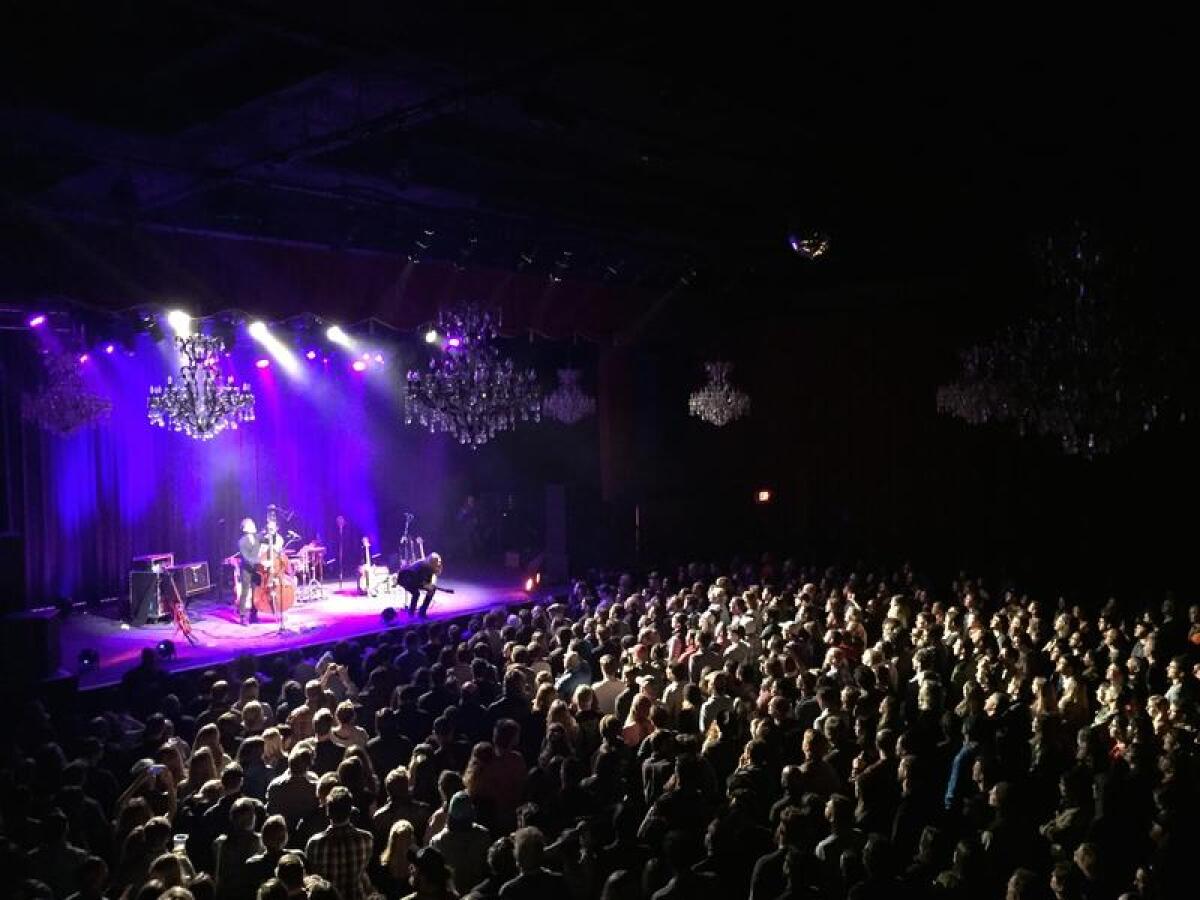
Why: It’s a piece of living rock ‘n’ roll history. And wait until you see the poster collection upstairs.
What: Born as a dance hall, this auditorium dates to 1912. Since then it’s been many things, including a roller rink. From the outside it looks like a fortress. But in the late 1960s, under the leadership of impresario Bill Graham, it made its name as a rock concert venue. There have been a few detours since then, but that tradition continues now.
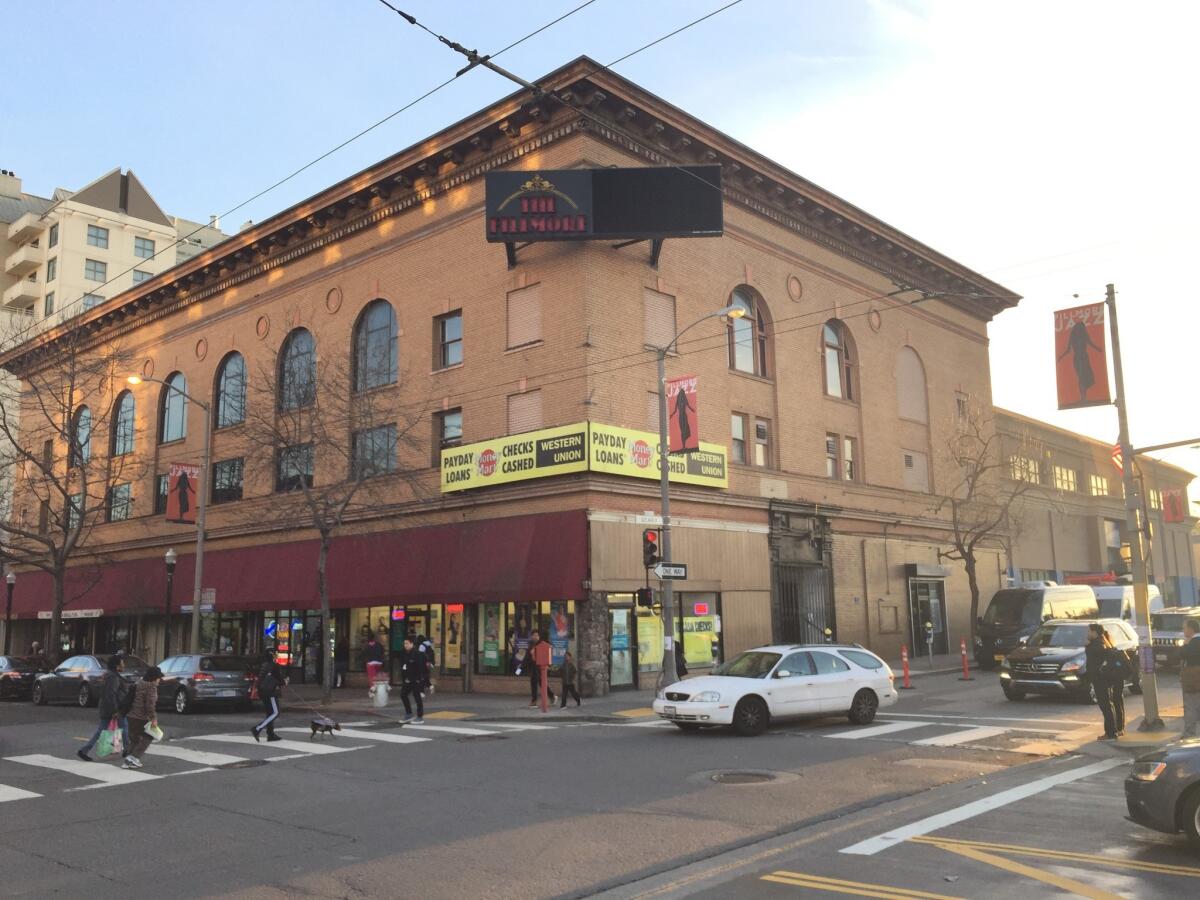
The hall, illuminated by 10 dramatic chandeliers, holds about 1,100 people, most of whom stand on the chairless dance floor. Others sit in the upstairs mezzanine area (better views, easier bar access). The poster collection filling the walls upstairs is a festival of boomer flashbacks: the Grateful Dead, Jefferson Airplane, Santana, Quicksilver Messenger Service, Big Brother and the Holding Company. Tom Petty. Los Lobos. And it’s not all graybeards. Younger bands such as the Wood Brothers (who played in March) come, too.
On your way out, Fillmore staffers are likely to hand you an apple and perhaps a poster, too. (Both traditions date to the hall’s earliest gigs under Bill Graham, who died in 1991.)
(And if you’re sampling classic rock venues in the city, you might also want to try the Great American Music Hall, built in 1907 on O’Farrell Street, a mile to the east.)
Where: 1805 Geary Blvd., San Francisco, 383 miles northwest of downtown L.A.
How much: Prices vary widely and sales happen through Live Nation (the entertainment behemoth that owns the venue and Ticketmaster). As at pop music venues all over, tickets typically carry service fees and tacked-on costs that can turn a $27 ticket (in the case of that Wood Brothers show) into a $40 expense. Restaurant and bar on site.
Info: The Fillmore
Sing for the fences (with Randy Newman) at a Dodgers game
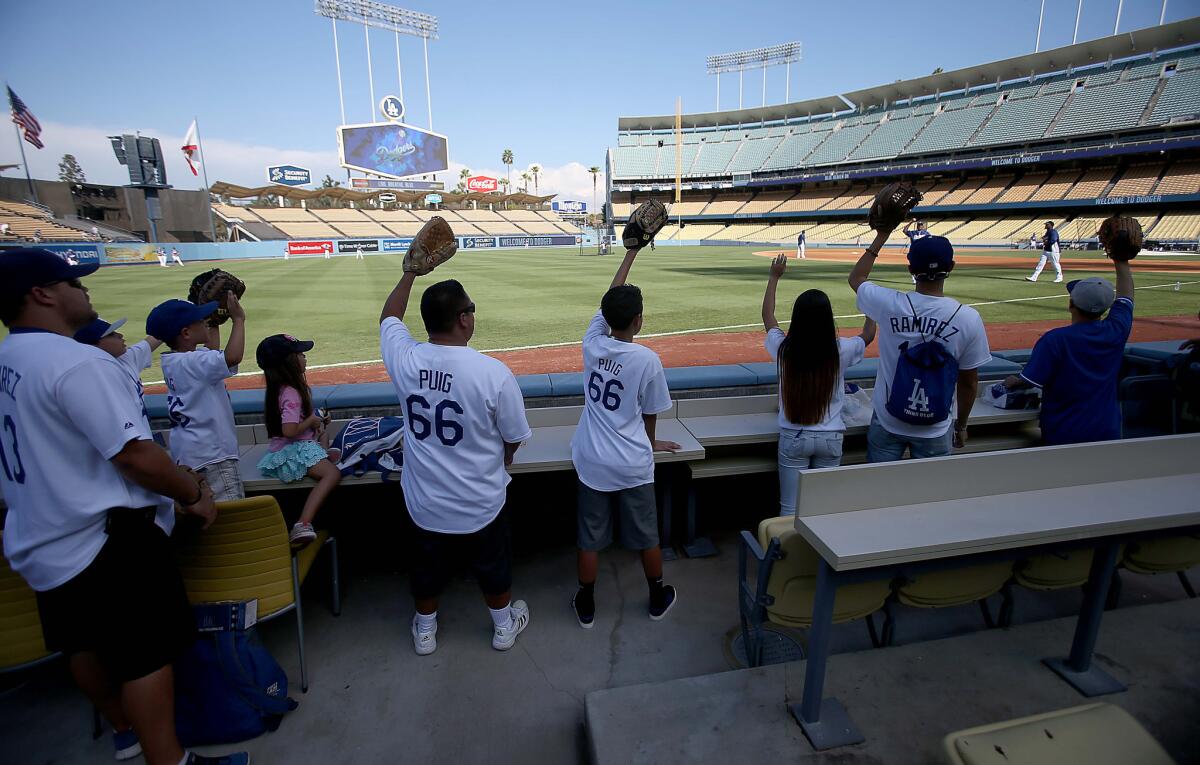
Why: Among the top 10 activities in Los Angeles is a Dodgers game at Chavez Ravine, where every win is accompanied by Randy Newman’s “I Love L.A.” The experience is relatively affordable, as pro sports go, and an excellent gateway into the simple pleasures and traditions of our sun-soaked summers.
What: Dodger Stadium is the third-oldest major-league ballpark, after Fenway Park in Boston and Wrigley Field in Chicago. It is 10 minutes from downtown Los Angeles, in a safe working-class neighborhood that is slowly gentrifying. As with LAX, leave yourself plenty of time for traffic and parking. A free shuttle from Union Station is also a popular option.
Thing is, don’t push it, because Dodgers games are as casual as casual comes. If they took all the comfort food away from baseball games, no one would go, so be sure to come hungry. A Dodger Dog is perhaps L.A.’s most famous dish -- get two, because they’re skinny as starlets.
Sellout games are rare, and decent walk-up tickets are almost always available. For day games, pick a seat on the third base side to avoid the punishing summer sun. The best level is the loge, which is higher than the field level but gives better sight lines, usually at cheaper prices. For the most rollicking times, sit in the pavilions (the outfield), or the top deck, where the game is less important than the beach balls and the beer. As with any urban ballpark, the behavior can get a little crude. If it gets too much, ask an usher to reseat you, or just find some alternative seats on your own. For pre- or post-game refreshments, visit the Short Stop bar, one of L.A.’s best dives, at 1455 Sunset Blvd.
Where: Dodger Stadium, 1000 Vin Scully Ave, Los Angeles, 2 miles north of downtown L.A.
How much: For the 2017 schedule, tickets begin at $14; parking is $10 in advance and $20 at the gate.
Info: The Dodgers
Feel free to zigzag down Lombard, crookedest street in S.F. But first climb Filbert
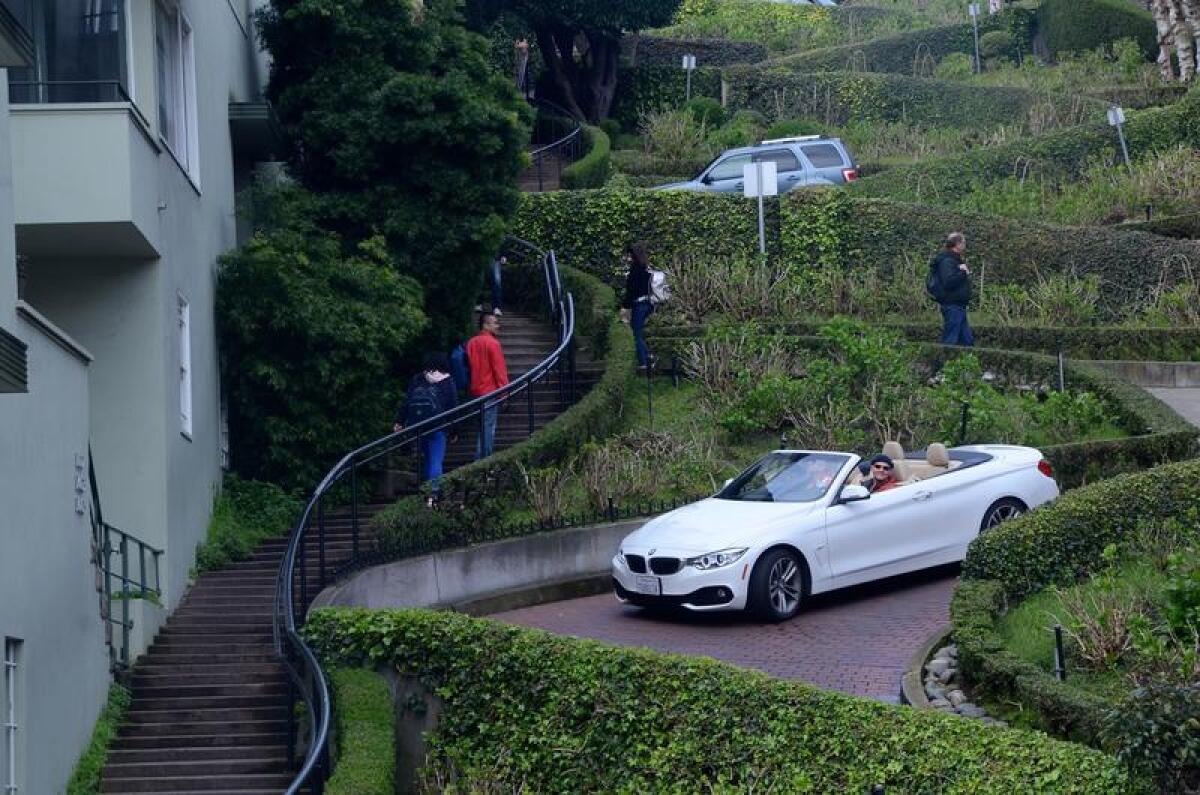
Why: Lombard, because it’s too famous to ignore. Filbert Street, because it’s just two blocks away and it rises at a 31.5 percent grade. That makes it (along with 22nd Street between Church and Vicksburg) the steepest hill in the city.
What: If you’re in shape for it, start by huffing and puffing your way from Leavenworth Street up Filbert (whose auto traffic is one way, downhill). Admire the 100-year-old Monterey cypress near the top on the left, and all the efforts of architects and landscapers to cope with so much verticality. At the end of the block, turn right on Hyde, continue a block, then turn right again atop Lombard. No doubt you’ll have selfie-shooting company.
Before you amble down Lombard’s twists and turns at your own pace, savor the view of Coit Tower to the east. This is the moment to mention that Lombard’s eight switchback turns were created in the 1920s. Or that it didn’t become a tourist attraction until the late 1950s. Or that tour buses are have been banned since 1980.
From the bottom of the hill, it’s an easy walk into North Beach.
Where: Filbert and Leavenworth streets, San Francisco, 389 miles northwest of downtown L.A.
How much: Free.
Info: San Francisco City Guides background on Lombard Street
Tiptoe on the old catwalk and pace the new terrace at SFMOMA
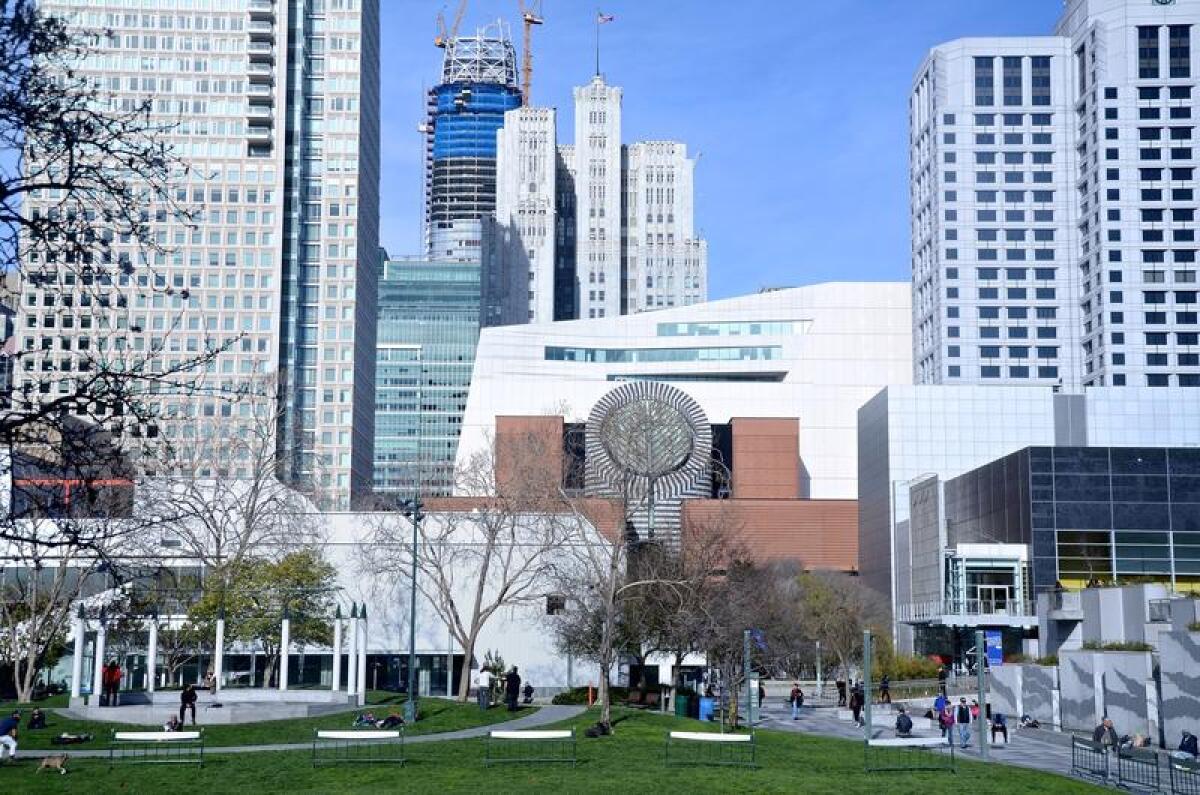
Why: This South-of Market landmark was already the city’s premier museum for art since 1900, and its black-and-white-striped central turret (the oculus, they call it) made it easy to spot on the skyline. Then came a major expansion, completed in May 2016.
What: The oculus endures, but now there’s a big, new white portion perched on the building like a cloud snagged on the roof. The museum has tripled its exhibition space, which is mostly dedicated to the years since 1945. It has boosted its emphasis on photography (from its 19th century invention to the present), added an outdoor “living wall” of greenery and a terrace, and bedecked its restrooms in colors so bold that you probably ought to nip into one, whether you need to or not.
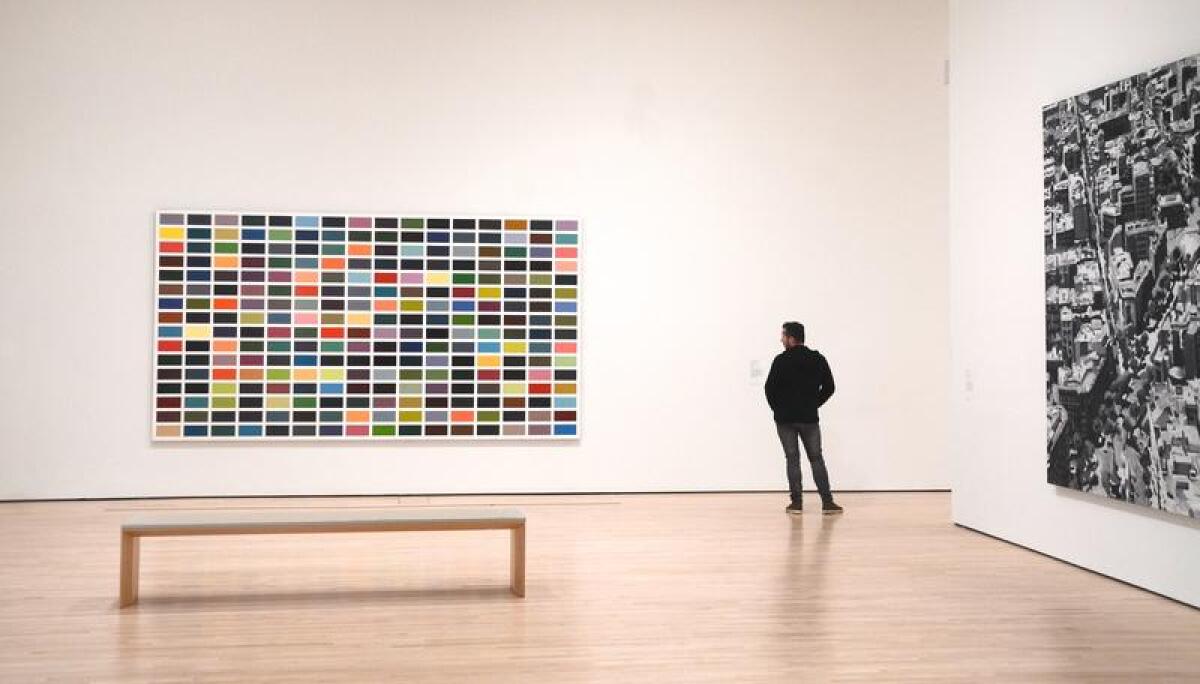
Meanwhile, the catwalk, part of the building’s original 1995 design, remains a thrill. It’s an interior walkway at the top of the oculus — crane your neck and you’ll see it from the lobby, hovering above like the crow’s nest of a very genteel pirate ship.
And if all this art and curation makes you thirsty for more museum time, not to worry. Within two blocks, you’ll find the Museum of the African Diaspora, the California Historical Society and the Contemporary Jewish Museum.
Where: 151 3rd St., San Francisco, 380 miles northwest of downtown L.A.
How much: $25 for most adults, $22 for ages 65 and older, $19 for ages 19-24 (with ID), free for visitors 18 and younger. And the first two floors, which feature five large-scale works by Richard Serra and others, are free to all.
Info: SFMOMA
Pretend you’re on a Greek island while visiting Catalina, an hour off the SoCal coast
Why: No cars? No rush hour? No problem. Just an hour’s ferry ride from Los Angeles, Catalina Island seems untouched by time, or the frantic pace of the gigantic city nearby. One of SoCal’s great day trips, it offers a fetching sea village, with plenty of splashy ways to have fun, or opportunities to just kick back and soak in the Mediterranean vibe.
What: Twenty-two miles off the coast, Catalina is a small island that has been drawing families and weekend party crowds for generations. It offers boat rides, submarine tours, snorkeling, miniature golf, cycling and a beach club that feels too exclusive to be open to the public. Sounds touristy, right? Well, a little. But Catalina retains a rustic, under-developed charm.

Most visitors land in Avalon, a town of 4,000, where shops and restaurants face the harbor. Rental golf carts and bikes are the preferred modes of transportation. A short stroll toward the landmark round casino reveals Descanso Beach Club, where you can throw a towel on the lawn or rent a lounge chair for the day. Just beyond that is Catalina Zipline Eco Tour, a thrilling series of lines that take you up up to 300 feet high, over eucalyptus trees. (To ride alone, participants must be at least 10 yard old and weigh 80 to 245 pounds. Children ages 5 to 9 may ride in tandem with an adult.)
Getting to Catalina is part of the adventure, with whale and dolphin sightings possible en route. Bear in mind that Catalina Express gives away birthday rides every year, but you must travel on your birth date and bring a second person who buys a full-fare adult ticket (even if that person otherwise qualifies for a discount).
Where: Catalina Island is 49 miles south of downtown L.A. (as the seagull flies).
How much: Round-trip ferry rides about $75.
Info: Catalina Island Co.
Soak up beer and blues in perhaps the oldest saloon in San Francisco
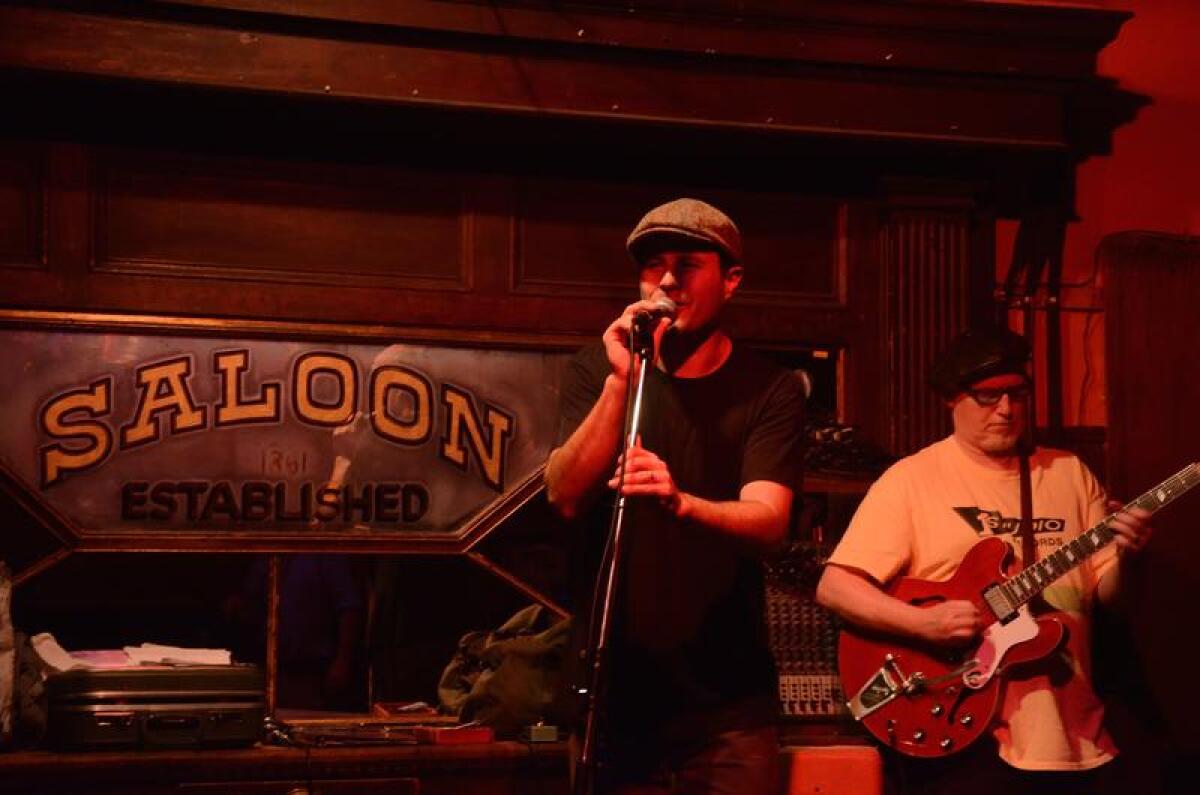
Why: Maybe the joint smells like spilled beer, the music seems uncouth and half a dozen bedraggled souls are arrayed in the alley outside. But The Saloon in North Beach might be the oldest bar in San Francisco, a 1906 quake survivor with a paper trail that dates to 1861.
What: In a city with plenty of old bars, there are others that claim to be older. But the Saloon has never moved. It’s a stripped-down, dive-style version, devoted to the blues, with a set of murky murals on the walls that must go back a long way. Its door is guarded most nights by Greg Stathes, a big, bearded bouncer who says he has snapped more than 30,000 photos over the years of persons and events in neighboring Fresno Alley. “All kinds,” he’ll tell you. The imagination reels.
Most nights there’s live music, rough-edged and rousing. Occasionally, a sax player will wind up walking on the bar top. Last time I stopped in, MT and the Wolves had seized the stage and Matias Tasley was in the midst of a harmonica solo (both feet on the floor).
At first, “I was little afraid to come here,” 15-year regular Paul Nachtsheim told me. “It looked rough. But I love blues.”
If the place still seems too divey for you, a good alternative is the nearby and more much genteel Comstock Saloon, which aims for a late-19th-century feel and has a bandstand in the rafters. Another option ner Jackson Square is The Old Ship, an establishment built upon the ruins of a Gold Rush ship (The Arkansas) that was abandoned in the early 1850s, when the shoreline was where Montgomery Street is now. Its walls are full of historic images and it serves Pisco Punch, a 19th-century favorite.
Where: 1232 Grant Ave., San Francisco, 382 miles northwest of downtown L.A.
How much: Draft beer, $4. It’s cash only, as several signs will remind you.
Info: The Saloon’s schedule
Chase rainbows in Convict Lake, site of a Wild West shootout and a cozy resort
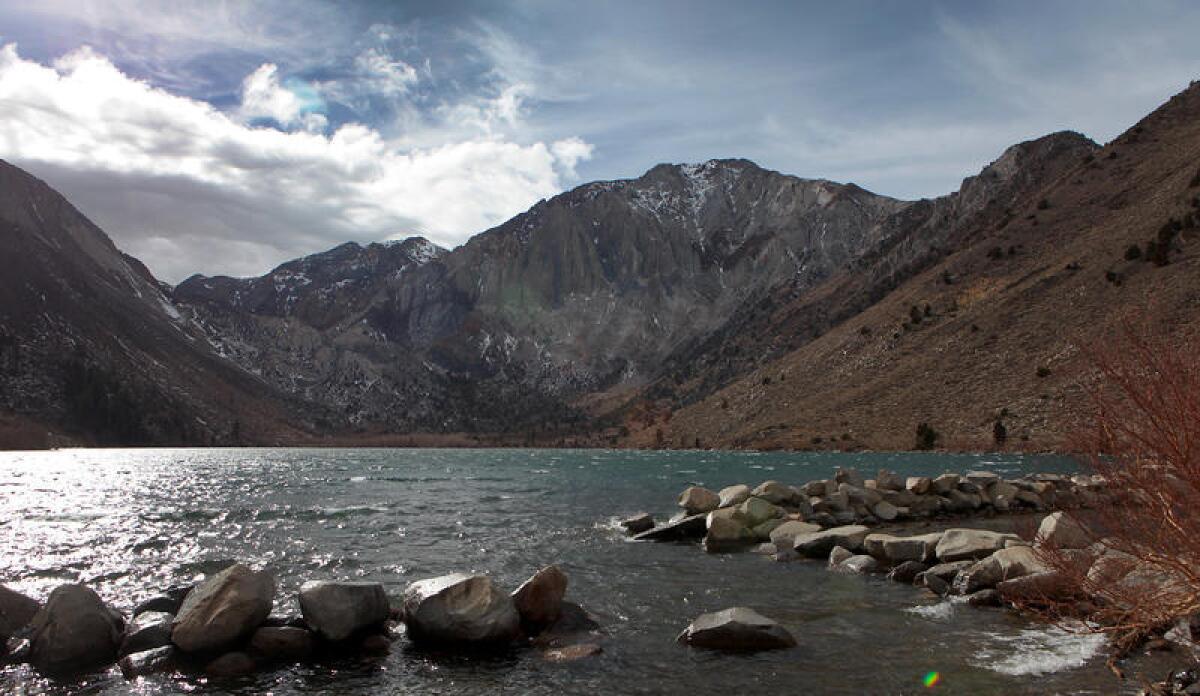
Why: Cathedral-like mountains ring this lake, which got its name from a bloody shootout involving prison escapees in 1871. But that’s over now. What remains is this deep, walled-in glacial lake that gives up some of the most beautiful trout you’ve ever seen, when the season kicks in on the last weekend in April.
What: Mt. Morrison (12,268 feet) and Laurel Mountain (11,812 feet) throw off duplicate images in the often-glassy lake. There is camping, horseback riding and a three-mile hiking loop that follows the lake and can be used for shore fishing. Convict Lake is anchored by a cozy resort that includes a popular, well-regarded restaurant and marina. Rainbow and German brown trout are the guests of honor, and the lake is stocked weekly by the Department of Fish & Wildlife.
At the marina, you can rent a boat, or debate the merits of Gulp Worms vs. Sierra Slammers. Or, you can rent a kayak for half a day ($50) or a fishing boat ($70). Pontoons run from $200. To buy a California sport fishing license, go to the Department of Fish and Wildlife website. This year’s rates: $15.12 for one day, $47.01 for California residents. Mono County’s trout fishing season ends Nov. 15. Read more about California fishing at www.wildlife.ca.gov/Fishing.
Where: 2000 Convict Lake Road, Mammoth Lakes, in Mono County, 294 miles north of downtown L.A.
How much: Parking and hiking are free. Cabins start at about $100, but require two-night minimum. Other than the license, there is no fee to fish.
Info: Convict Lake
Prowl hip, historic Broadway in downtown Los Angeles with an expert
Why: Because H.L. Mencken wasn’t entirely right when he called Los Angeles “19 suburbs in search of a metropolis.” Because downtown Los Angeles gets more interesting by the day. Because Broadway is downtown’s backbone.
What: Downtown L.A.’s main drag was born in the 19th century as Eternity Street (it led to a cemetery), but it’s been Broadway since 1890. First the city’s biggest department stores gathered there, then a dozen movie houses and vaudeville theaters (most of which remain). As the city spread out, Broadway started speaking with a Mexican accent. Now, as millennials converge at the city center, it’s gentrifying but still gritty. At 3rd Street, it’s got Grand Central Market and the Bradbury Building (1893). Near 7th Street, it’s got the historical eccentricity of Clifton’s Cafeteria and the Pacific Seas tiki bar upstairs. Near 9th, it’s got the Ace Hotel and its Spanish Gothic, 1920s theater.
To hear the story in full, join an L.A. Conservancy walking tour. Every Saturday at 10 a.m., a guide leads visitors past the stores and string of movie palaces (most now adapted to other uses) between 2nd and 9th streets. Reservations required. Tours typically last 2 3/4 hours.
Where: Broadway’s busiest blocks are between Temple Street and 9th.(The Conservancy tells tour customers where to meet when they make their reservations.)
How much: $15 per adult, or $10 if you’re a member of the Conservancy.
Info: L.A. Conservancy Broadway tours


Whisper and hike where padres preached and livestock roam at La Purísima mission in Lompoc
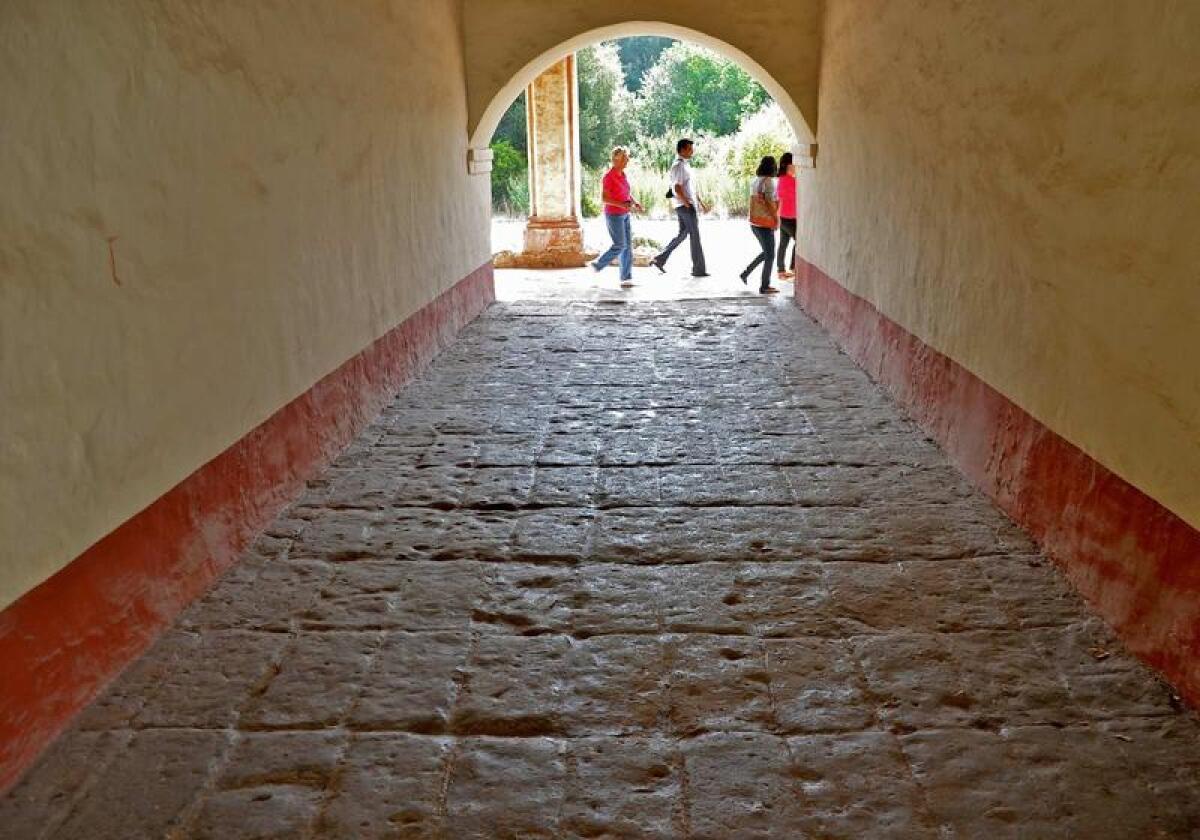
Why: San Diego, Carmel and Santa Barbara get more glory, but the unsung hero among the California missions these days is this one. Bring your kid or yourself to La Purísima State Historic Park, at the edge of Lompoc, and you find not only restored buildings but also 1,900 acres of open space and a paddock full of livestock, maintained to show the animals that were here in the early 19th century.
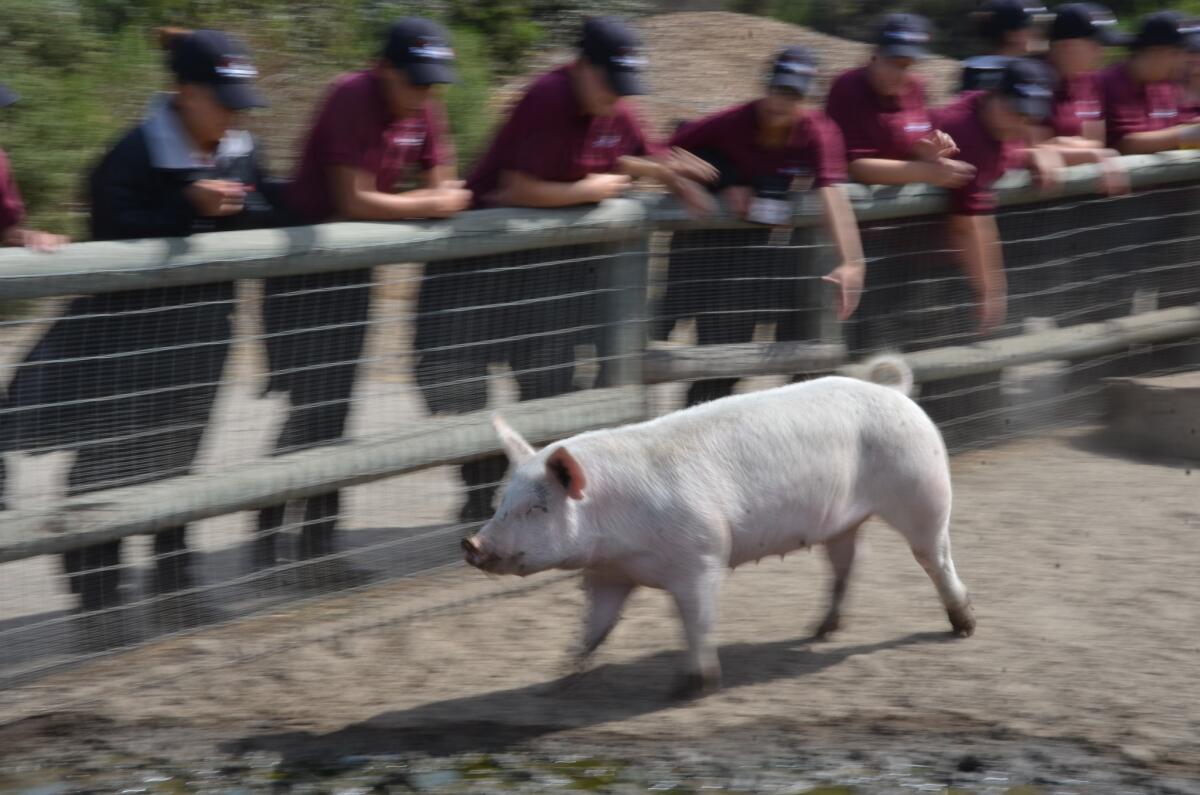
What: The mission, founded in 1787 and moved to this location in 1813, was headquarters for a ranch that covered 300,000 acres. Now it’s shrunk to 1,928 acres -- but that’s still vast compared with other mission sites.
It has about 25 miles of hiking trails. The state parks system calls it “the most completely restored mission in California” with 10 furnished buildings, including a blacksmith shop and assorted horses, cattle, pigs and turkeys and other animals.
Why? Because this is one of two missions that are run as state parks (the other is Sonoma), which gives it resources that most church-run missions can’t afford.
Where: 2295 Purísima Road, Lompoc, on the east fringe of Lompoc, 14 miles west of Buellton,163 miles northwest of downtown L.A.
How much: Entrance is $6 per private vehicle. Guided tours (90 minutes to two hours) are free. Tour maps cost $1.
Info: La Purísima State Park
Heed well the Bard at San Diego’s Old Globe
Why: Because all the world’s a stage. And because when these people do Shakespeare, it’s not just good for you, it’s usually good fun too. (By the way, Shakespeare was born April 23, 1564. We think.)
What: The Old Globe, a mainstay of San Diego’s Balboa Park since the 1930s, operates year-round and does all sorts of shows -- 15 a year, frequently including new works. But there’s always some Shakespeare in summer: In 2017: “King Richard II” and “Hamlet.” The Globe complex includes two indoor stages and one outdoors.
Where: Old Globe Way, Balboa Park, San Diego, 121 miles southeast of downtown L.A.
How much: Tickets typically run $29 to $105.
Info: The Old Globe
Hop aboard L.A.’s classic trolleys at the Orange Empire Railway Museum in Perris
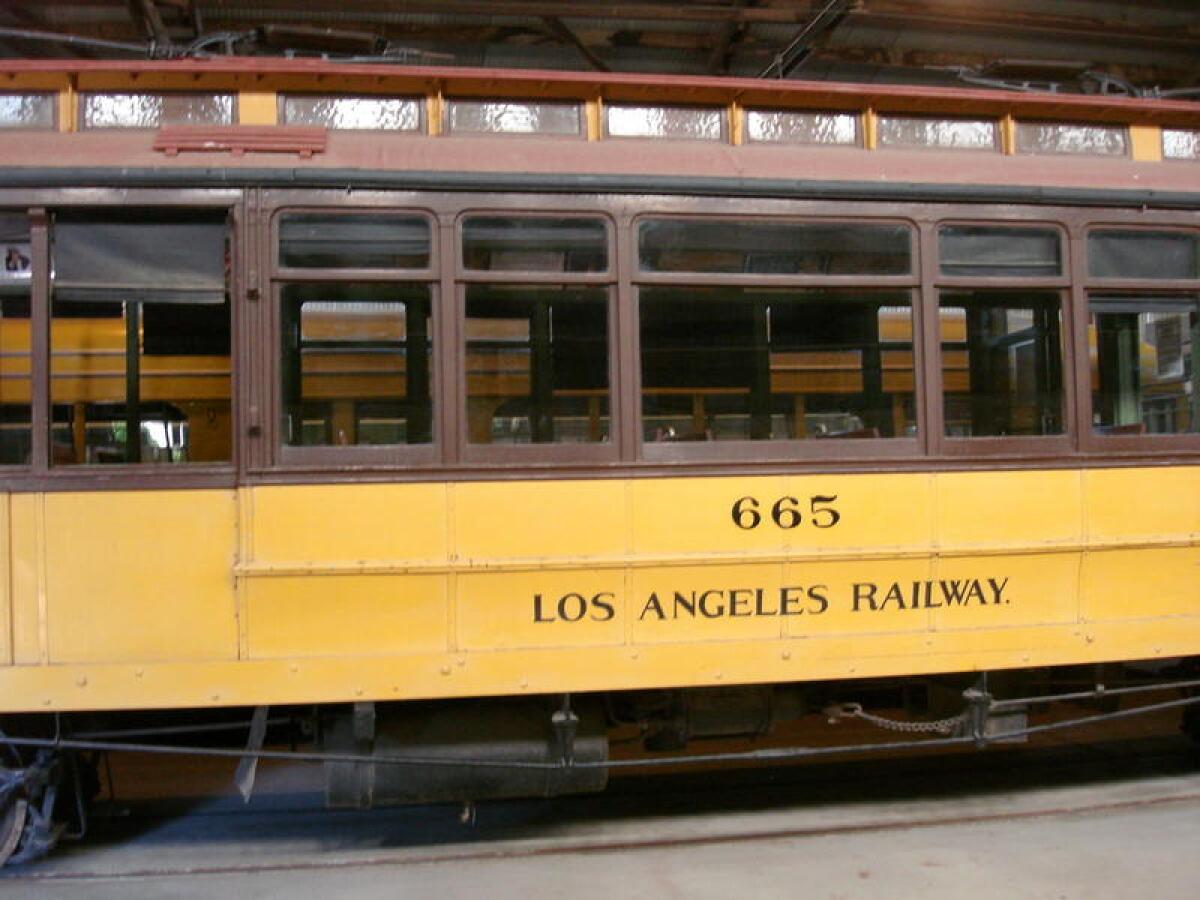
Why: Los Angeles’ storied streetcars, a fixture of Southern California life from the 1900s to the 1960s, hum on out here in Perris, where you can take a gently swaying ride into history.
What: On weekends and most holidays, the Orange Empire Railway Museum, operates trains and trolleys from its extensive treasure, which includes Pacific Electric red cars and Los Angeles Railway yellow cars.
Step aboard, take a seat, envision a future when the region again has such widely available rail transit — and do not spit on the floor. (It’s against the law, a yellow car sign says, and just bad manners.) But be aware that no particular retro railcar is guaranteed to be rolling when you visit.
Even if you don’t get to ride the train you had in mind, you can see it and many others up close on the museum’s 90-acre campus, which is open daily.
You also can learn about how railroad travelers dined: The Fred Harvey Museum, dedicated to the Harvey House chain founder and the Harvey Girls he employed, is open on weekends.
Where: 2201 South A St., Perris, 74 miles southeast of downtown L.A.
How much: Access to the grounds and buildings is free. An all-day pass to ride trains is $12 for ages 12 and older, $8 for ages 5 to 11, and free for ages 4 and younger.
Snap those painted ladies at San Francisco’s Alamo Square
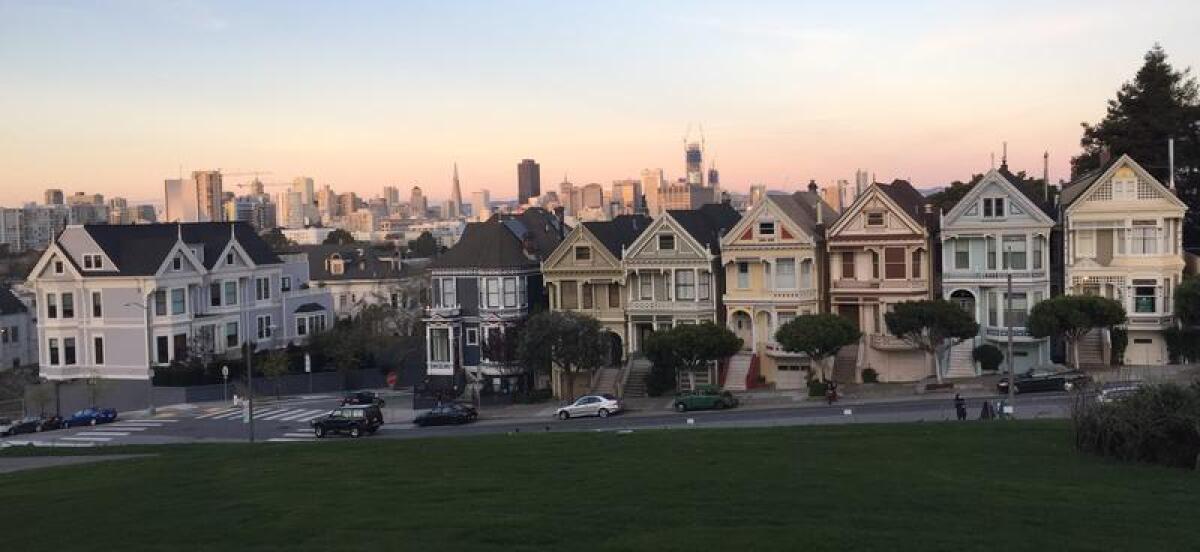
Why: When you close your eyes and picture a tidy row of Victorian houses in San Francisco, these are the ones you see. That’s not only because of a zillion postcards and screen-savers but also because this immaculate block on Alamo Square was in the opening sequence for the family sitcom “Full House” (1987-1995). Like those everyday ‘70s Americans who were eerily compelled to visit Wyoming’s Devils Tower in “Close Encounters of the Third Kind,” many a millennial traveler is drawn here to snap a selfie, ironic or not.
What: These seven Victorian and Edwardian houses aren’t quite mansions, but they sit handsomely at the foot of Alamo Square Park’s grassy slopes. That means, most of the time, it’s easy to get a photo of the houses with the city skyline lined up behind them. (If you’ve got a long lens to compress the distance, that’s even better.)
But here’s the hitch. The city has closed most of the park for renovation and fenced most of it off. As consolation to photo-chasing tourists -- and I probably saw two dozen of them in less than an hour at the site -- the city has set aside an observation point so some shots (like the ones I’ve posted here) are still possible. City officials say the renovation should be done this spring, but you know how these things can go.
Anyway, if you’re making the Alamo Square pilgrimage, you might want to reward yourself with a bite at the nearby Alamo Square Seafood Grill (as I did) or one of the eateries on Divisadero Street, such as the Mill, a pioneer on the hipster toast scene.
Where: The 700 block of Steiner Street, between Grove and Hayes streets, San Francisco, 389 miles northwest of downtown L.A.
How much: Free. Main dishes at Alamo Square Seafood Grill run $15-$23.
Info: San Francisco Parks Alliance and Alamo Square Neighborhood Assn.
Surprise yourself in one of San Francisco’s Chinatown alleys
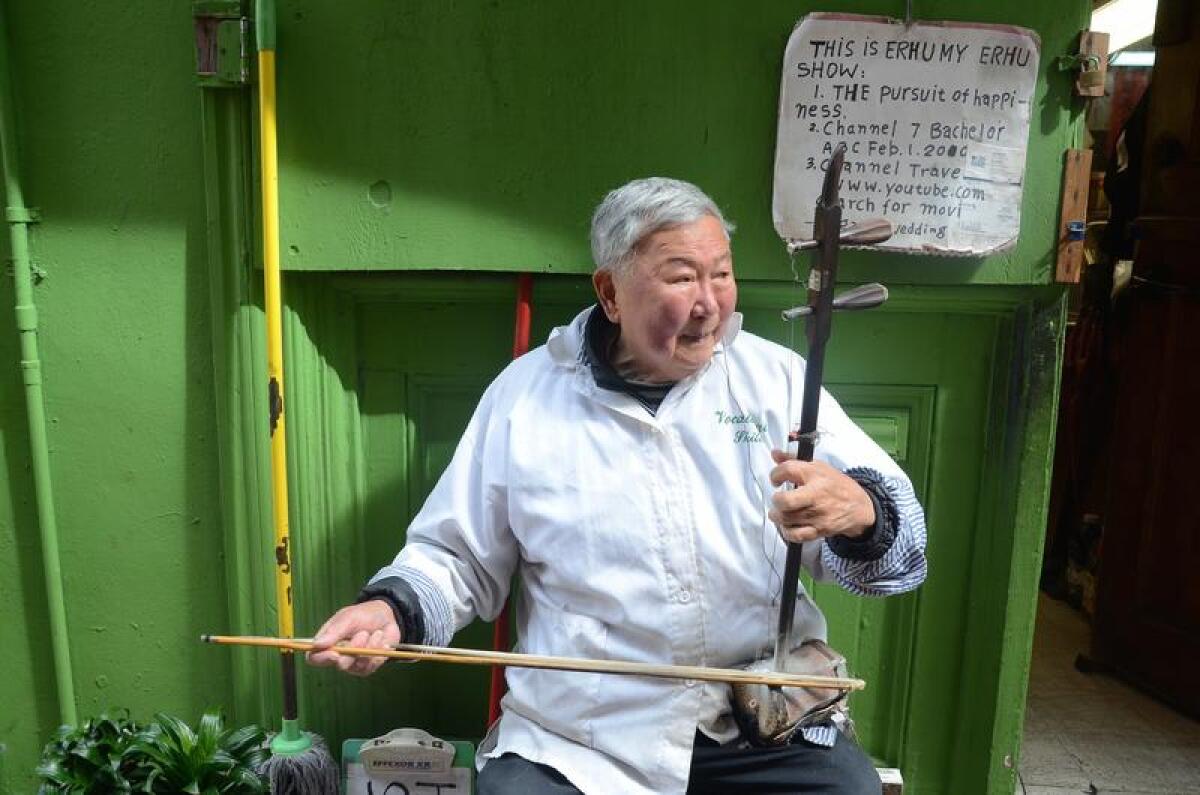
Why: Tourists expect certain things in San Francisco’s Chinatown, like dim sum, fortune cookies and dangling colorful lanterns; perhaps a solemn, festooned room such as the Tin How Temple on Waverley Place. It’s fine to sample those spots, most of which can be found within a few steps of Grant Avenue. But why not take a step beyond that?
What: Of the more than a dozen alleys in this Chinatown, Ross Alley is among the busiest, perhaps the oldest. Notorious for gambling in the 1880s, today it’s lined with murals depicting daily life in the community. It’s also home to the Golden Gate Fortune Cookie Factory (52 Ross Alley), where various tour groups often alight to watch cookies being made. (This tradition, by the way, seems to trace back to a Japanese American entrepreneur in San Francisco, not to China.)
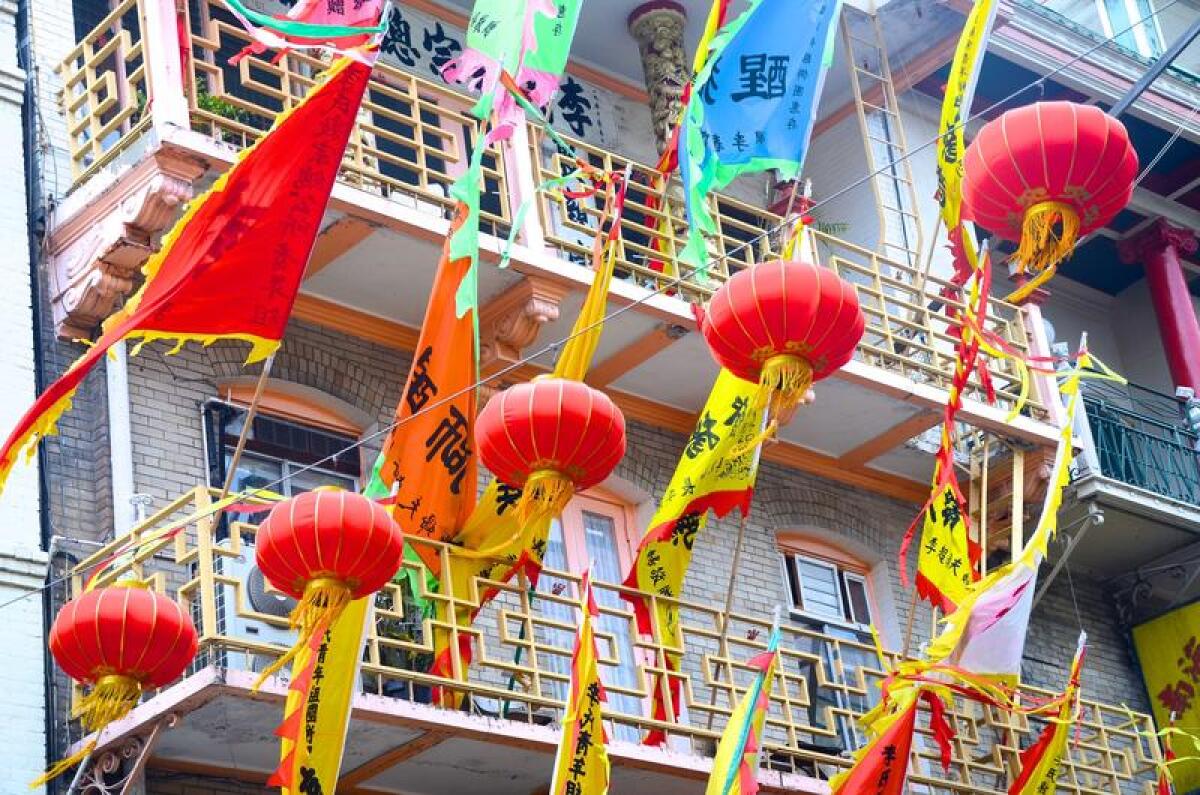
And next door at No. 32, there’s Jun Yu, who plays the traditional two-stringed erhu (Christmas carols a specialty).
But Jun Yu (born in China’s Guangdong Province) isn’t just a tourist-pleasing musician. He’s also a barber. For $10 he’ll give you a haircut, if you don’t mind the strange brew of scents in his small, untidy parlor. His hands are so steady, you might not guess that he’s 86. And from this day forward, you can tell the tale of that time in the dark alley, when a guy put a blade to your throat and you just smiled.
Where: Ross Alley is between Jackson and Washington streets in Chinatown, San Francisco, 387 miles northwest of downtown L.A.
How much: The fortune cookie factory requests a 50-cent donation if you take a photo. Jun Yu takes what he can get for his erhu playing. But the $10 haircut price is firm.
Info: SFGate’s Chinatown page
Read some grave markers at Mission Dolores, the oldest building in San Francisco
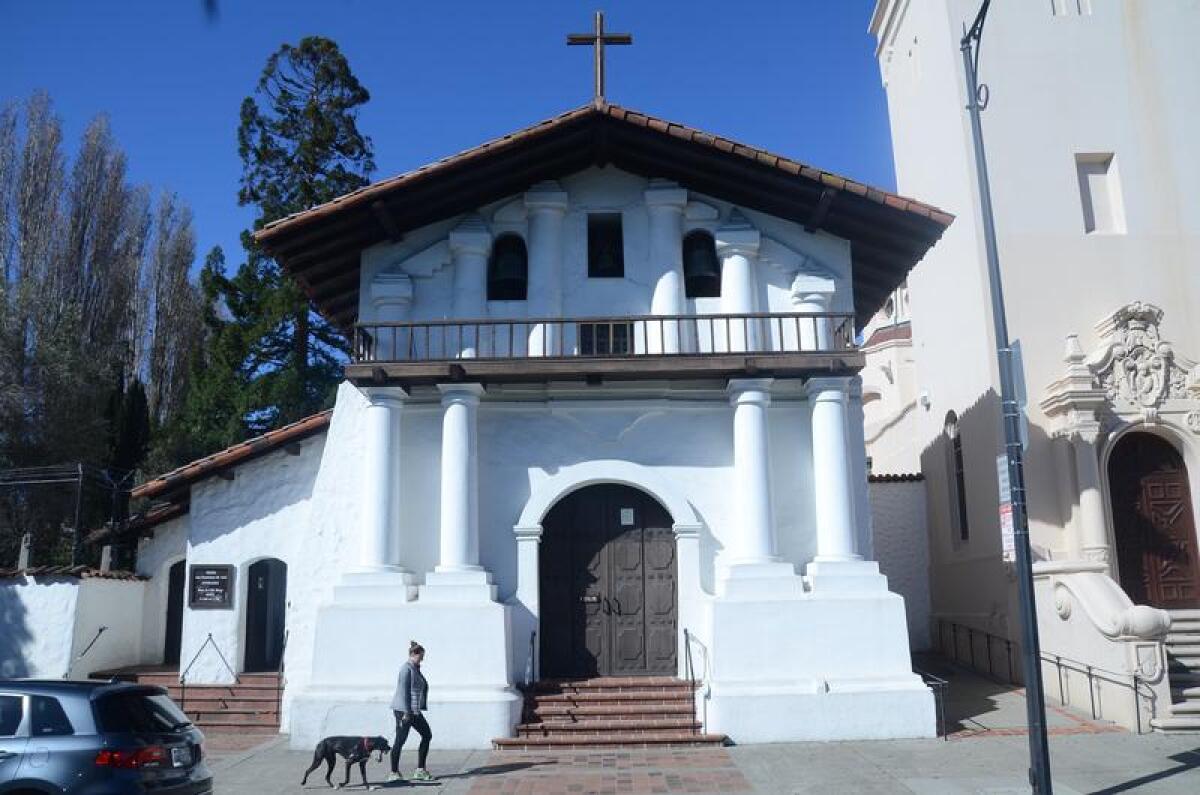
Why: In 1776, weeks before most of the Founding Fathers got around to signing the Declaration of Independence back east, Franciscan padres founded Mission Dolores, sixth in the Alta California chain. Several years later, the padres and their recruits moved it to the current location, where it survived the great quake and fires of 1906. In fact, it’s the oldest surviving structure in San Francisco.
What: Formally, this is the Mission San Francisco de Asís, but everyone says Dolores. Right behind the building lies the cemetery, where an estimated 5,000 Ohlone, Miwok and other native people are buried along with several Irish immigrants and other 19th century California pioneers. Note the wooden markers for Jocbocme (baptized Obulinda) and Poylemja (baptized Faustino), who died early in the 19th century. The mission’s little museum could use more text to explain its place in history, but it does have more information and exhibits on native life than most of the missions do.Wondering why there’s an Alfred Hitchcock bobblehead doll for sale in the gift shop? Part of his “Vertigo” was shot in the cemetery in 1957.
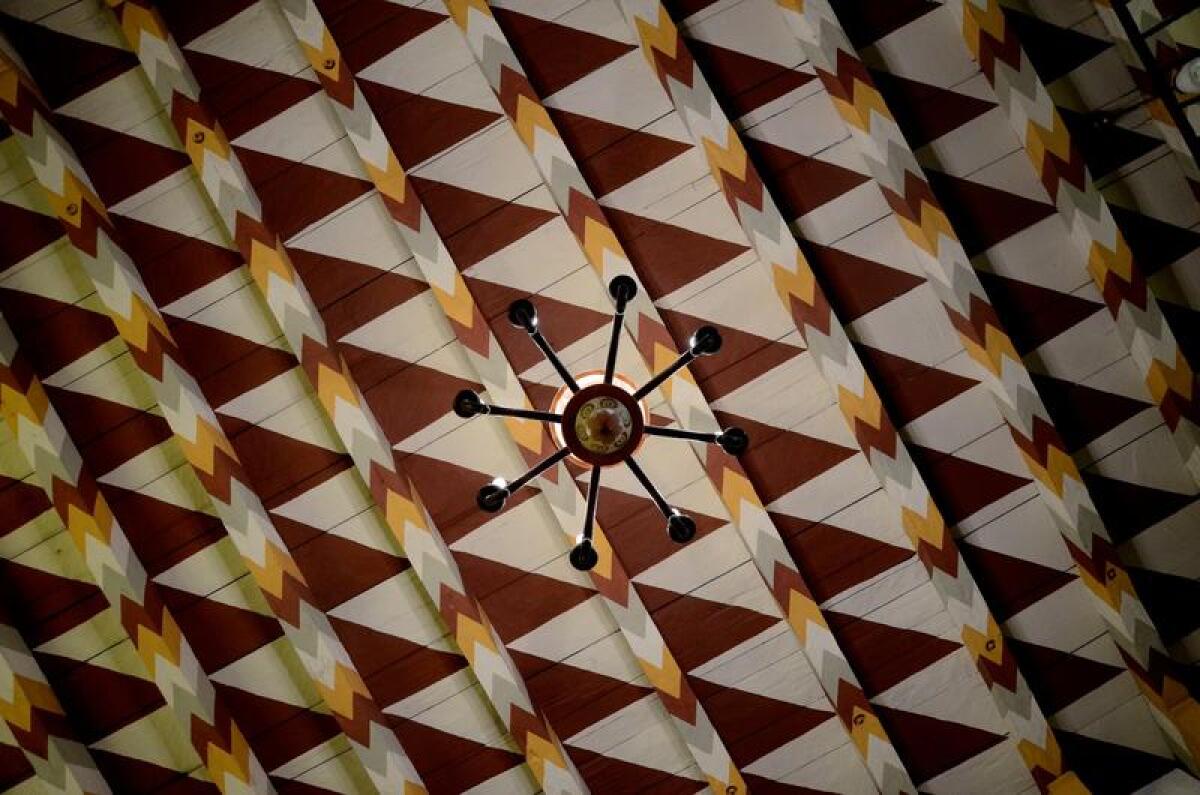
Also, be sure to nip next door to the much grander Mission Dolores Basilica for a look at the stained glass windows. There’s one for each of the 21 Franciscan missions in Alta California.
Where: 3321 16th St, San Francisco, 382 miles northwest of downtown L.A.
How much: For self-guided tours, the suggested donation is $7 per adult, $5 per student. To worship next door at the Basilica, it’s free.
Info: Mission Dolores
Dodge the lines at Mama’s in S.F. and get your breakfast after lunchtime
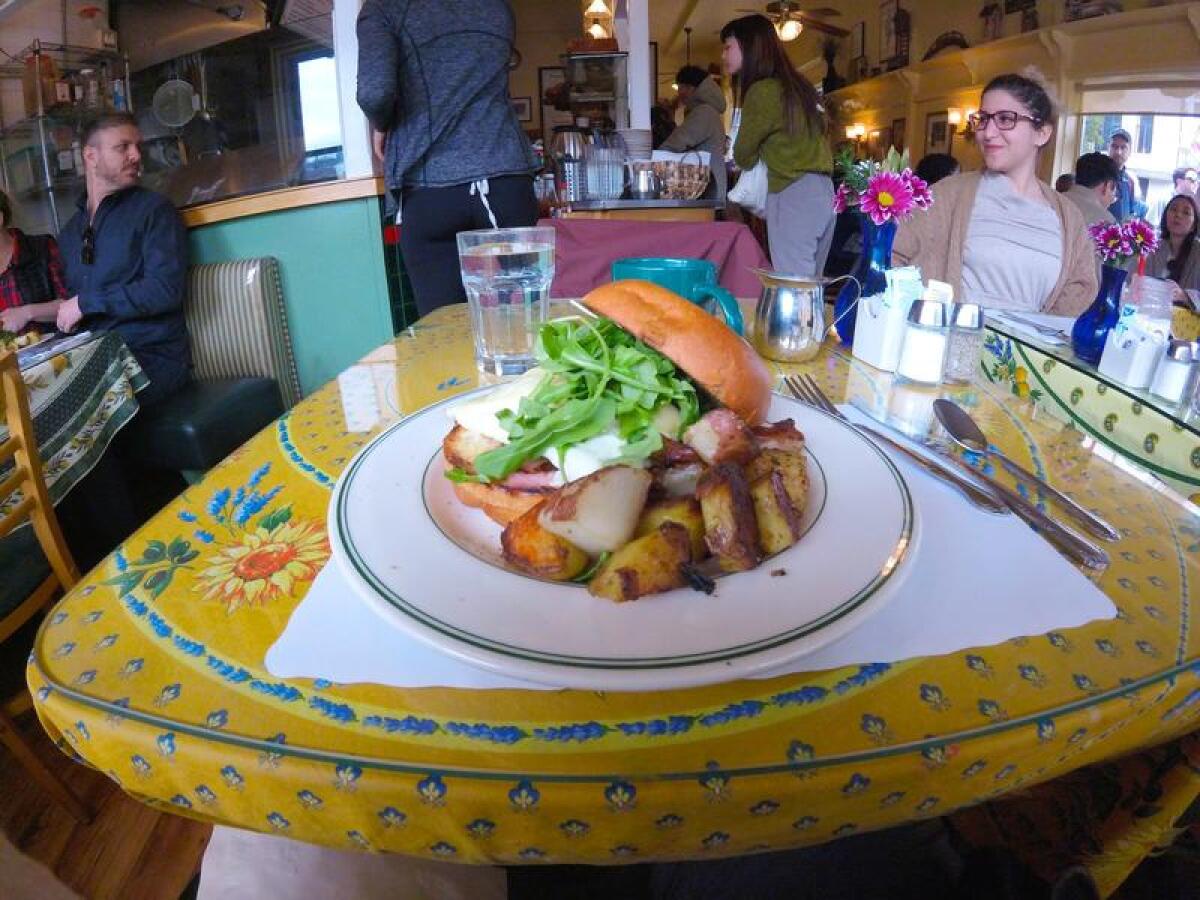
Why: The hearty, fresh breakfasts and lunches (homemade jam, Italian sausage, cranberry-orange walnut loaves). The North Beach neighborhood and view of Washington Square Park outside. And the family. The Sanchez clan has owned and run the place for more than 50 years. (Mama Sanchez died in 2000.)
What: Mama’s is a casual cafe. You order at the counter then grab one of 47 chairs at 13 tables, no counter. But the food and sense of place are just right, offhand but profound. (For anyone who’s been to Santa Fe, N.M., Mama’s may set off memories of Cafe Pasqual’s.)
This is why, for decades, people have been content to stand in line for their breakfasts, especially on weekends. It was an hour’s wait when I ate here one Tuesday in March.
But here’s the thing: When I returned two days later at 1:30 p.m., there was no line. So consider this: Mama’s is open 8 a.m. to 3 p.m. every day but Monday, and serves breakfast any time it’s open. If you can, show up on a weekday after the lunchtime rush, say, 2 p.m. You could eat a late lunch. Or be a rebel and eat your breakfast after lunch. That’s what I’m doing next time.
And I’ll be ordering Mama’s Breakfast Sandwich, in which the ham and gruyere cheese harmonize like the Everly Brothers with arugula on brioche.
Where: 1701 Stockton St., San Francisco, 381 miles northwest of downtown L.A.
How much: Specials usually $12-$23. No credit cards.
Wait for the green flash on the Sunset Cliffs in San Diego
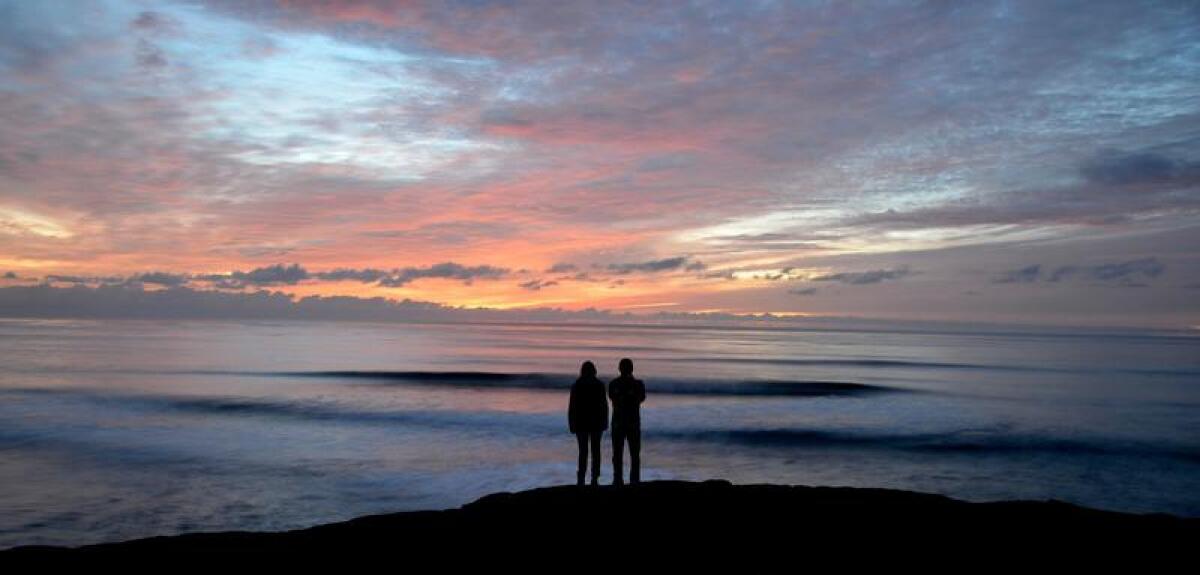
Why: You might as well stand somewhere gorgeous while hoping to see that elusive phenomenon as the sun dips beneath the horizon.
What: Sunset Cliffs, an upscale residential neighborhood in San Diego’s Point Loma area, sits on crumbling bluff, the Pacific churning below. The advantages of this situation include some nice surfing, dramatic views of the Pacific and fascinating cliff formations as the sea gradually eats away at the earth.
The downside is that the sea never stops eating. Chain-link fencing cordon off the areas of most recent collapse. At some point, as the cliffs crumble, Sunset Cliffs Boulevard may need to be narrowed. As for long-term prospects of the houses closest to the ocean -- who knows?
But for now, the views can’t be beat, and it’s a great place for a run or a bike ride. At Sunset Cliffs Boulevard and Ladera Street, where the rugged, 68-acre Sunset Cliffs Natural Park shows yet more erosion at work, a sturdy set of concrete stairs leads down to the beach and tidepools. There are great photo opportunities here, but don’t let high tide catch you in the wrong place.
Oh, about the green flash, a.k.a. the green ray: It’s an optical phenomenon. Some people think it’s a hoax. Others (like me) say they’ve seen several. This pop-science explanation sounds plausible. And Jules Verne, he of “Around the World in 80 Days,” made the idea a key part of his 1882 novel “The Green Ray.”
Where: Sunset Cliffs Natural Park, Ladera Street, San Diego, 121 miles southeast of downtown L.A.
How much: Free.
Spot grizzlies under the Capitol dome in Sacramento
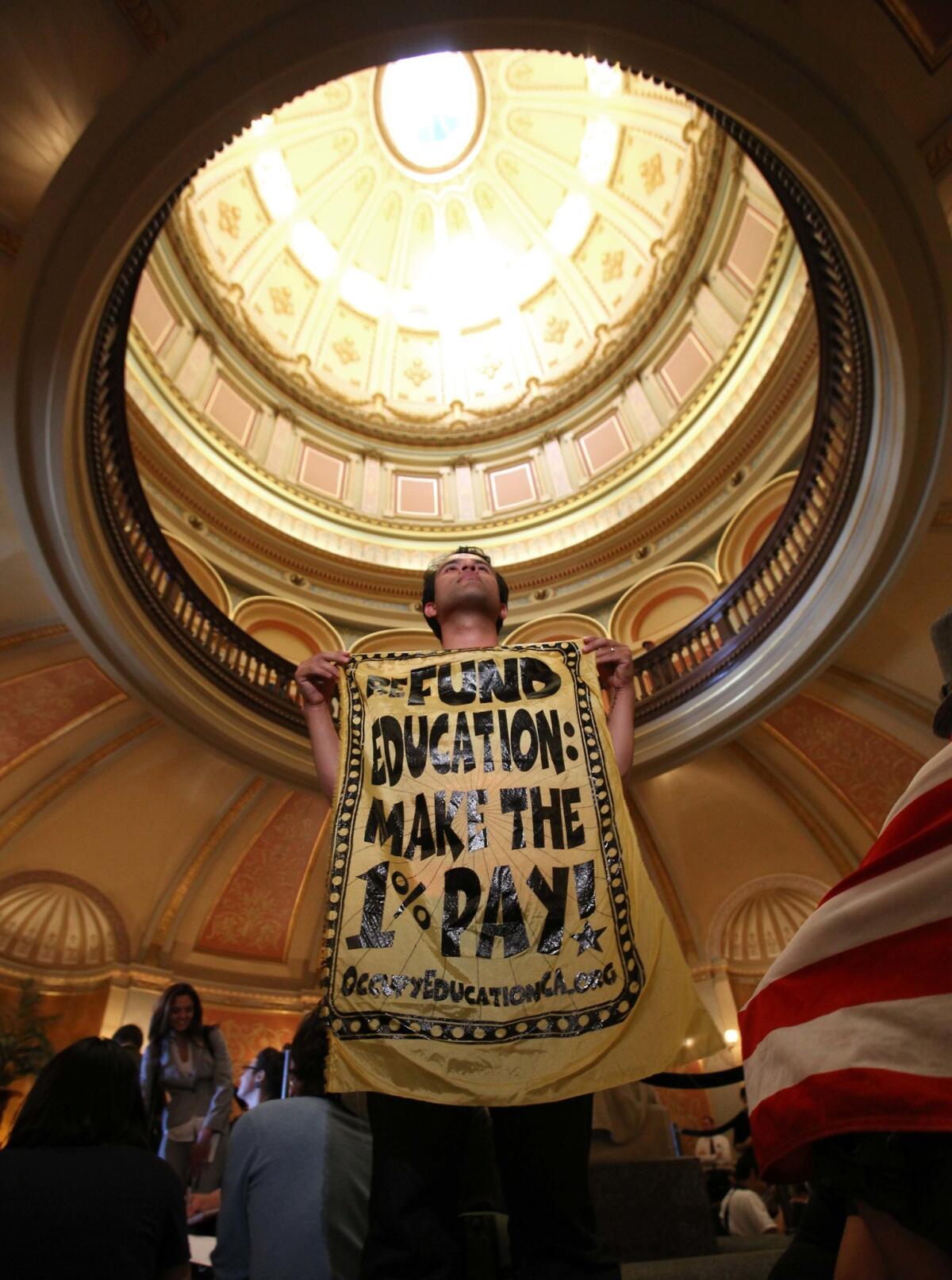
Why: You’re already paying for it.
What: Because most Californians live far from Sacramento, our public servants typically work without their direct supervision. If you like the idea of checking up on your ongoing investment or just strolling under a big dome, Sacramento’s Capitol is the place.
The rotunda is 128 feet tall. The inside is full of murals and frescoes and marble statuary — and sometimes protesters (like the guy pictured here). Grizzly bears turn up frequently, too — most notably on the flag and the state seal. The building is surrounded by the 40-acre Capitol Park, which is full of shade trees (much prized in summer in Sacramento).
Public and student tours of the building and Capitol Park are free and frequent. There’s also a California State Capitol Museum.
Where: Capitol building, 1315 10th St., Sacramento city and county, 385 miles northwest of downtown L.A.
How much: Free
Drain a martini, savor Old Hollywood, at Musso & Frank
Why: If the legendary Musso & Frank Grill ever closes, I’m leaving L.A. A bastion of old-school waiters and a writers’ haven for almost 100 years, this period piece is one of the few reasons that locals venture to Hollywood Boulevard.
What: A clubby steakhouse under 50 coats of lacquer in the heart of Hollywood. Cool and dark, it sports a fine mahogany bar that serves the best martinis in town, perfectly proportioned at the exact right chill. F. Scott Fitzgerald purportedly proofed novels here, and was so comfortable that he’d duck behind the bar to mix his own mint juleps. William Faulkner, Dorothy Parker, T.S. Eliot and John Steinbeck were also among the literary legends who found inspiration here. The feel-good menu includes an assortment of steaks and chops, charred on an open-fire grill. Look for the daily specials, which include chicken pot pie ($23) and braised short ribs ($37). Musso’s closes too early on weekends — 11 p.m. — and isn’t easy to reach. But here’s hoping this esteemed old joint — young in spirit — is still up and running 100 years from now.
Where: 6667 Hollywood Blvd., three blocks east of the Red Line subway station at Hollywood/Highland, eight miles northwest of downtown L.A.
How much? Sandwiches from $9, but most meals range from $20 to $50.
Info: Musso & Frank Grill
Dunk a doughnut, see a celeb (maybe) at the Original Farmers Market
Why: The Original Farmers Market, has the murmur of a ballpark, the aura of an old family grocery and a faint underlying note of noir to keep you on your toes. In a city prone to scorn anything a little worn and charming, it’s irresistibly both.
What: The Farmers Market is a collection of 100 restaurants, shops and food stores that dates to the Great Depression. Since 1934, it has drawn locals, TV stars, moms with strollers and visitors from around the world. (We’ve lost Carrie Fisher since the striking portrait above was shot there in the late 1980s, but the market looks just the same.)
Part of the magic is the confluence of so many cuisines – Cajun, barbecue, Brazilian, French, Japanese – in one location. My two favorites: Bob’s Coffee & Doughnuts, on the east patio, where cranks, know-it-alls, philosophers and other folks with too much time on their hands gather to gab and grab coffee. At the other end of the market is Charlie’s Coffee Shop, noted for old-school French toast ($6.25) and amazing cheeseburgers ($6.95). Ask for Charlie Sue herself, who has run the place since 1976.
Part of the appeal is that the market isn’t just for visitors. It’s a practical pit stop for locals looking for a slab of sirloin at one of the impressive butcher counters, or a place to get a house key cut. This functionality, plus the sense of fun, make the old place one of the most authentic and enjoyable retreats in the city.
Where: 6333 W. Third St., Los Angeles, 8 miles west of downtown L.A.
How much: Free
Info: Farmers Market L.A.
Swim in a cool, Hearst-worthy pool that Julia Morgan designed in Berkeley
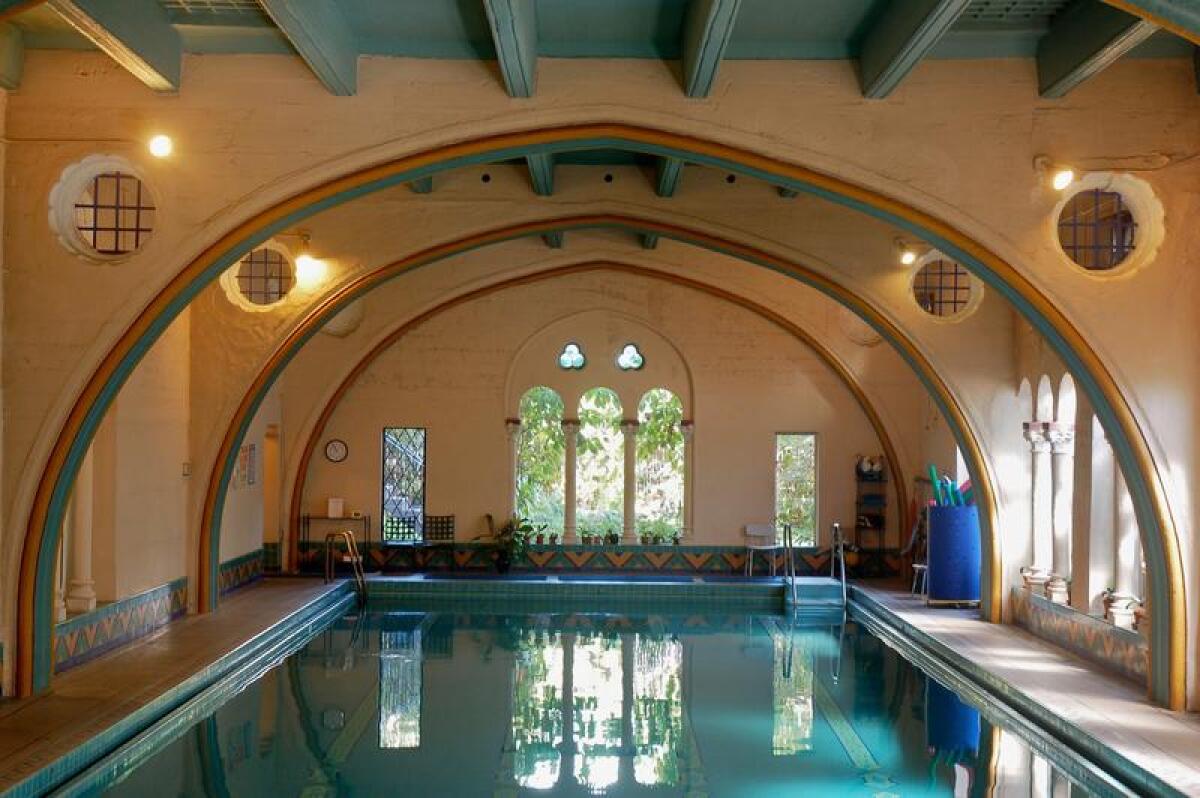
Why: You don’t find a great swimming pool or a good hotel value on every block in downtown Berkeley.
What: The Berkeley City Club is more than it seems. When star architect and UC Berkeley graduate Julia Morgan designed the 1930 club building, she gave it an indoor pool of startling beauty. (Already, she was working down the coast on media mogul William Randolph Hearst’s castle at San Simeon.)
The best news for us is that over time, the City Club started operating its six-story building as a hotel -- one that stands a few blocks from the UC campus. Its restrained mien and 35 rooms are not for party animals, but if you’re looking for someplace stately to practice your Australian crawl under Moorish arches, your search is over.
Where: 2315 Durant Ave., Berkeley, 373 miles northwest of downtown L.A.
How much: Double rooms typically $199 on weekday nights, $229 on weekends.
Info: Berkeley City Club
Taste the state’s greatness (or at least something fresh and local) at Berkeley’s Chez Panisse
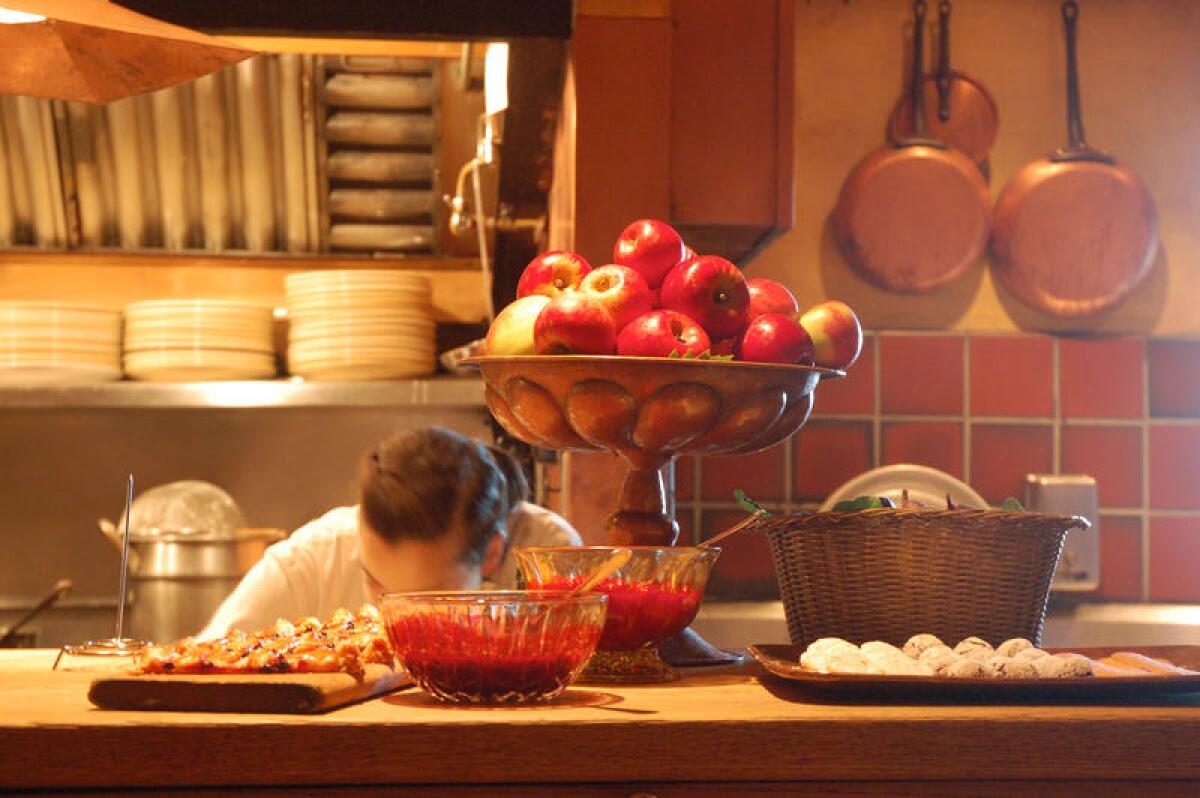
Why: In the kitchen of this converted arts-and-crafts home, owner-chef Alice Waters and her gang more or less launched the idea of California cuisine in 1971.
What: All these years later, Chez Panisse is still popular. If the downstairs fixed-price, dinner-only restaurant is too pricey (or already booked), try the more affordable upstairs cafe, which does lunch and dinner. The menu, seasonally tuned, changes nightly. Closed on Sundays, reservations are accepted up to a month ahead.
Where: 1517 Shattuck Avenue, Berkeley, 375 miles northwest of downtown L.A.
How much: Fixed-price dinners at the restaurant are $75 on Mondays, $100 Tuesday through Thursday, $125 on Friday and Saturday. (That excludes drinks, a 17% service charge and 9.5% tax). Today’s upstairs cafe menu is here.
Info: Chez Panisse
Groove among the guitars at McCabe’s, a singular music venue in Santa Monica
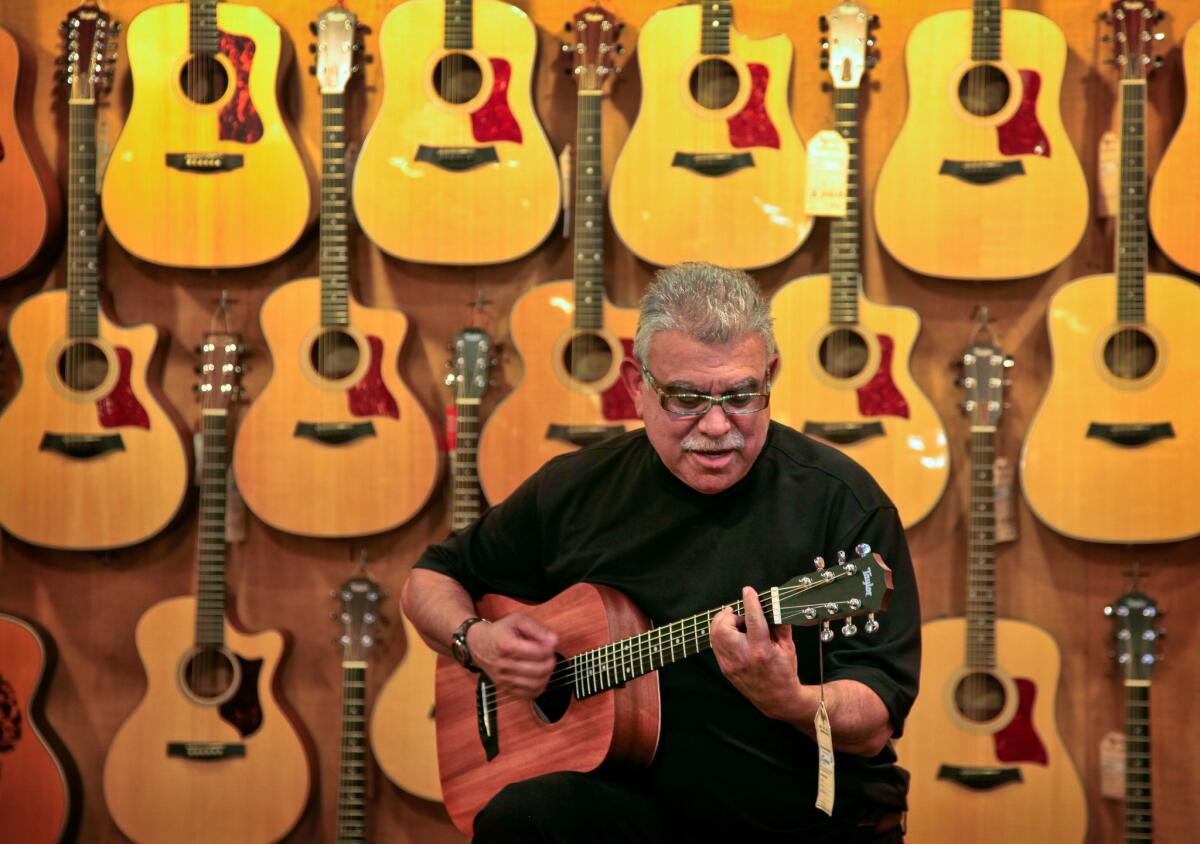
Why: McCabe’s is a guitar shop in the same way that the Seine is a river and Picasso was a painter.
What: By day, McCabe’s has been selling stringed instruments since 1958. By night, McCabe’s is one of California’s most-loved, most intimate performance spaces, a garage-sized haven where performers face about 150 listeners in a room with walls full of strung and fretted inventory. The concerts have been happening since 1969. You can’t beat the vibe.
Many acoustic and folk-influenced performers play here, including fiddler Peter Rowan, banjo player Noam Pikelny and singer-songwriters Greg Brown and Tom Paxton and children’s performer Justin Roberts (to pluck five acts from the March schedule).
Where: 3101 Pico Blvd, Santa Monica, 14 miles west of downtown L.A.
How much: Tickets typically run $20-$40.
Info: McCabe’s
Salute the Republic of California (all 25 days of it) under the bear flag in Sonoma
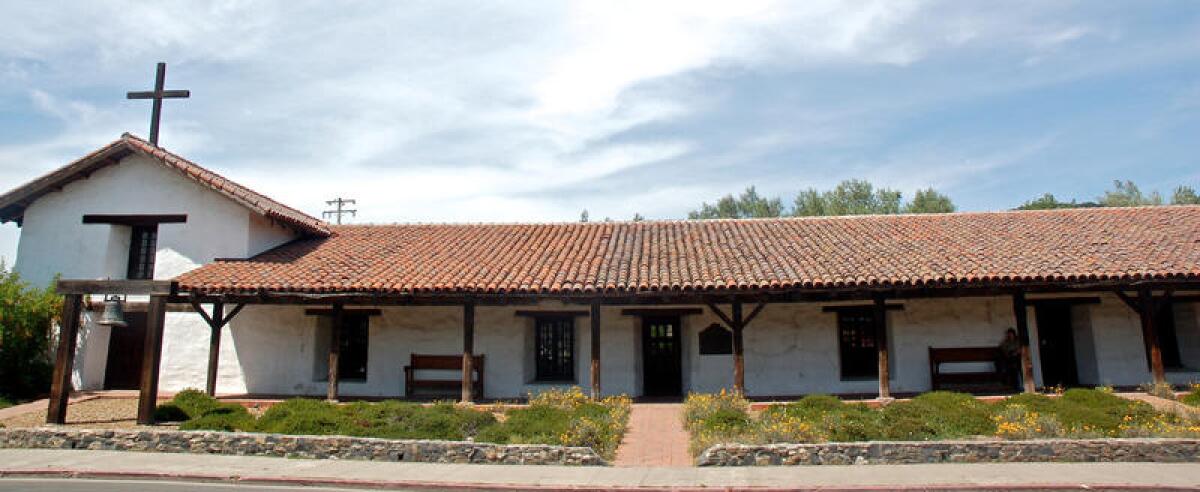
Why: Sonoma, just 45 miles north of San Francisco, has a bustling central plaza, the last Franciscan missions and a unique revolutionary history.
What: Sonoma and its mission were born just as Mexico was wrestling control of the Californias away from Spain in the 1820s. But in June 1846, about 20 English-speaking men staged the Bear Flag Revolt, arrested Mexican general Mariano Vallejo and declared Sonoma to be part of a new California republic -- all without firing a shot.
This attempt at independence lasted less than a month, but it showed Mexico’s vulnerability. And it was time enough for somebody to design a flag featuring a grizzly bear that, unfortunately, looked a lot like a pig. By 1848, the U.S. had taken control of Alta California, including Sonoma, by prevailing in the Mexican War.
Now Sonoma County is at the heart of Northern California wine country, with more than 425 wineries. Within and between its many 19th century buildings, the city of Sonoma (population: about 11,000) is filled with bistros, tasting rooms and shops. In the plaza stands a statue of a heroic-looking man waving a Bear Flag.
The Sonoma State Historic Park includes several buildings around town, among them the Mexican troops’ barracks and the Mission San Francisco Solano de Sonoma, founded in 1823. Walk the grounds and you’ll find a commemorative display, added in 1999, listing names of the baptized native “neophytes” buried in its cemetery -- more than 800 of them. (At most California mission cemeteries, the neophytes go unnamed.)
Where: Sonoma Plaza, 410 miles northwest of downtown L.A.
How much: Free. At least until you start tasting wine.
Info: Sonoma Valley Visitors Bureau
Browse the former lima bean field where the first California megamall sprouted 50 years ago

Why: South Coast Plaza, the first California megamall, opened its doors in 1967 in Costa Mesa, 10 miles south of Disneyland.
What: As might befit a fashion icon turning 50, the mall has had a lot of work done. The current count is about 250 stores and 30 restaurants. In the mall’s early decades, tourists regularly flew in from Asia just to shop here, then an unheard-of idea. After decades of expansion and evolution, its annual sales still are said to be as much as $1.7 billion, putting it among the highest-grossing malls in the U.S.
Its first iteration was designed by mall pioneer Victor Gruen. If you’re a visiting space alien seeking a quick primer on American consumer culture, this is a fine place to start. If you’re a traveler seeking a souvenir that’s uniquely local, you may be barking up the wrong tree — for all their opulence, most of these stores are chain brands. But there’s plenty to buy and eat, and virtually next door you’ll find the South Coast Repertory performance space and the Segerstrom Center for the Arts (formerly the Orange County Performing Arts Center), named to honor donor and South Coast Plaza developer Henry T. Segerstrom.
Where: 3333 Bristol St., Costa Mesa, 39 miles southeast of downtown L.A.
How much: Parking is free; $7 if you use one of the valet stations.
Info: South Coast Plaza
Go play at an old dump in Fort Bragg, better known as Glass Beach
Why: Because with time, the churning Pacific turns our broken bottles, windshields and tail lights into pebbles again. How magical is that?
What: Fort Bragg, the workaday city 11 miles north of quaint Mendocino, used three of its beaches as dumps for decades, then in the middle of the 20th century decided that wasn’t such a good idea. Workers have removed the big cast-off junk, and over the decades since, the sea has been grinding down the smallest stuff. Especially bottles. The result is a shoreline sparkling with unexpected colors -- glassy pebbles of frosty white, green, blue and occasionally “ruby red” (said to come from pre-1967 automobile tail lights).
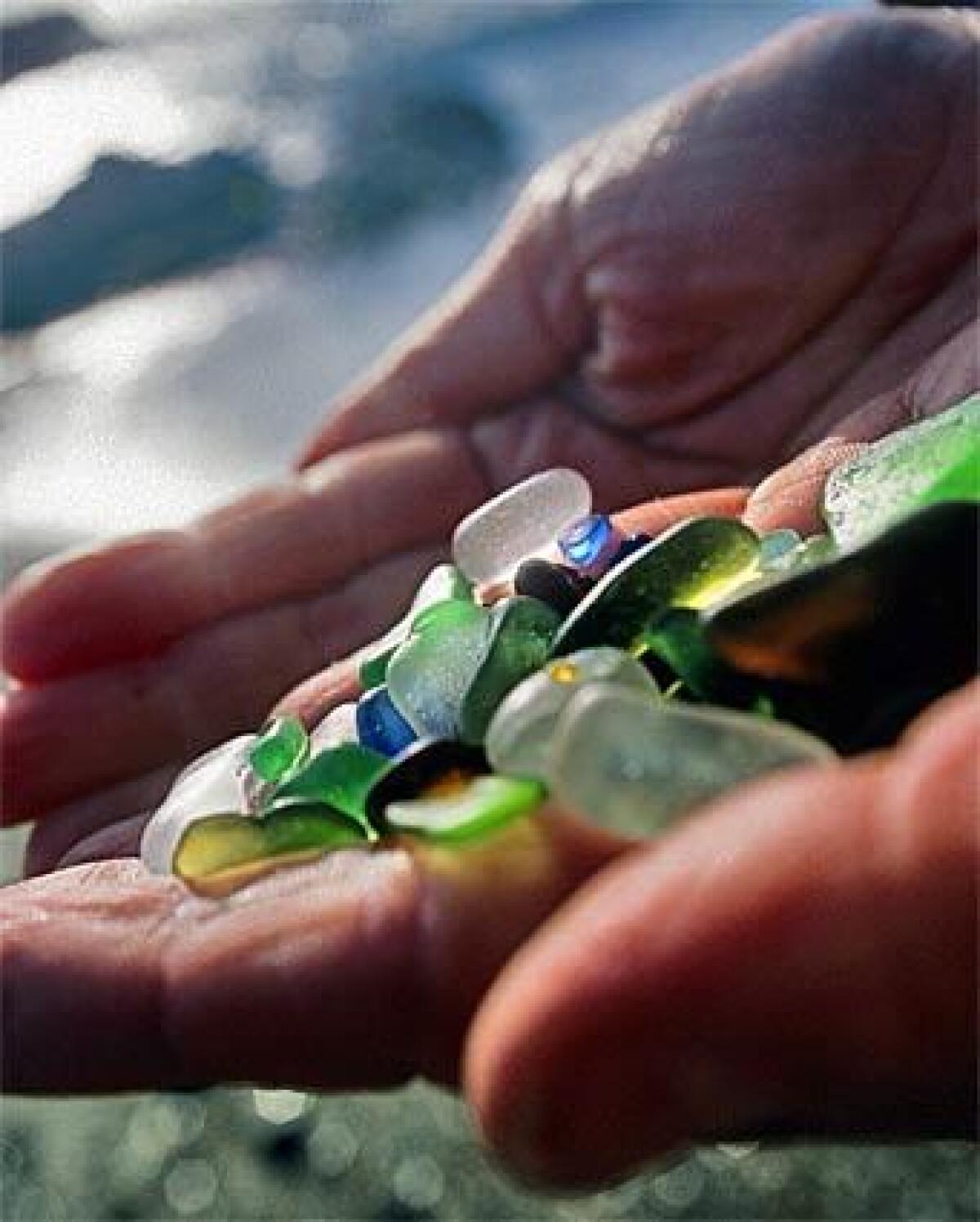
Show up on a mild day and you’ll find kids and parents with pails, patiently picking their way through the pebbles and snapping photos. It’s a lesson in how the Earth can heal.
And it’s a catch-and-release situation. Since these beach areas are part of MacKerricher State Park and Noyo Headlands Park, visitors are officially forbidden from carrying away natural resources, i.e., sea glass. (There’s plenty of lively debate on that topic here.)
Where: The best-known Glass Beach in town is at the end of the Glass Beach Trail at the west end of West Elm Street, Fort Bragg, 552 miles northwest of downtown Los Angeles. Others are slightly north within MacKerricher State Park.
How much: Free.
Info: MacKerricher State Park, Noyo Headlands Park Fort Bragg Coastal Trail
Dine in high style at the former Ahwahnee in Yosemite Valley
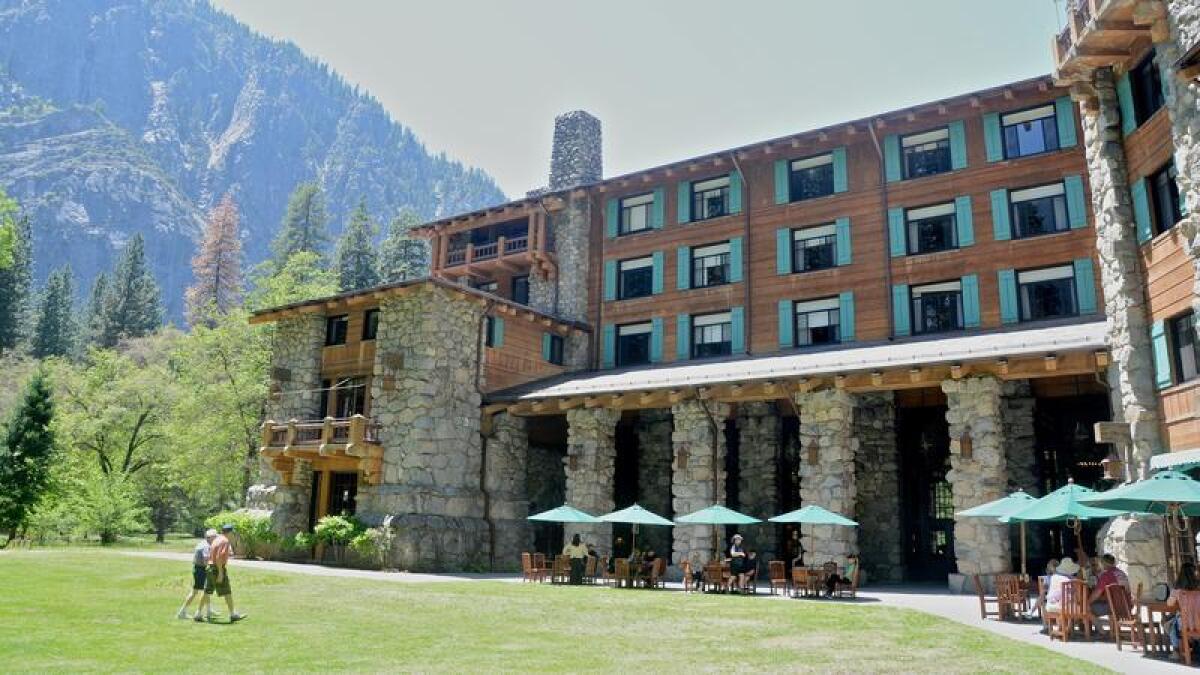
Why: Because this is a great room. And you’re probably hungry from tromping around the great valley just outside.
What: For about 90 years, the Ahwahnee Hotel and its woodsy but elegant dining room were the epicenter of old-school style in Yosemite Valley, with 34-foot-high ceilings, granite pillars and pine trestles. Then came the National Park Service’s great trademark dispute with jilted concessionaire Delaware North in early 2016.
Now we have to call this place the Majestic Yosemite Hotel, which just feels wrong. (The address, meanwhile, is still Ahwahnee Drive.) But the hotel and dining room are just as grand as ever, the stone fireplace just as warm, the advance reservations just as vital.
Bear in mind: It’s easier and cheaper to do breakfast or lunch than it is for dinner. And you won’t have to dress as well.
Where: 1 Ahwahnee Drive, Yosemite Valley, 316 miles north of downtown L.A.
How much: Dinner main dishes run $24.75-$46.
Info: Majestic Yosemite Hotel Dining Room
Romp at the world’s safest beach in Carpinteria
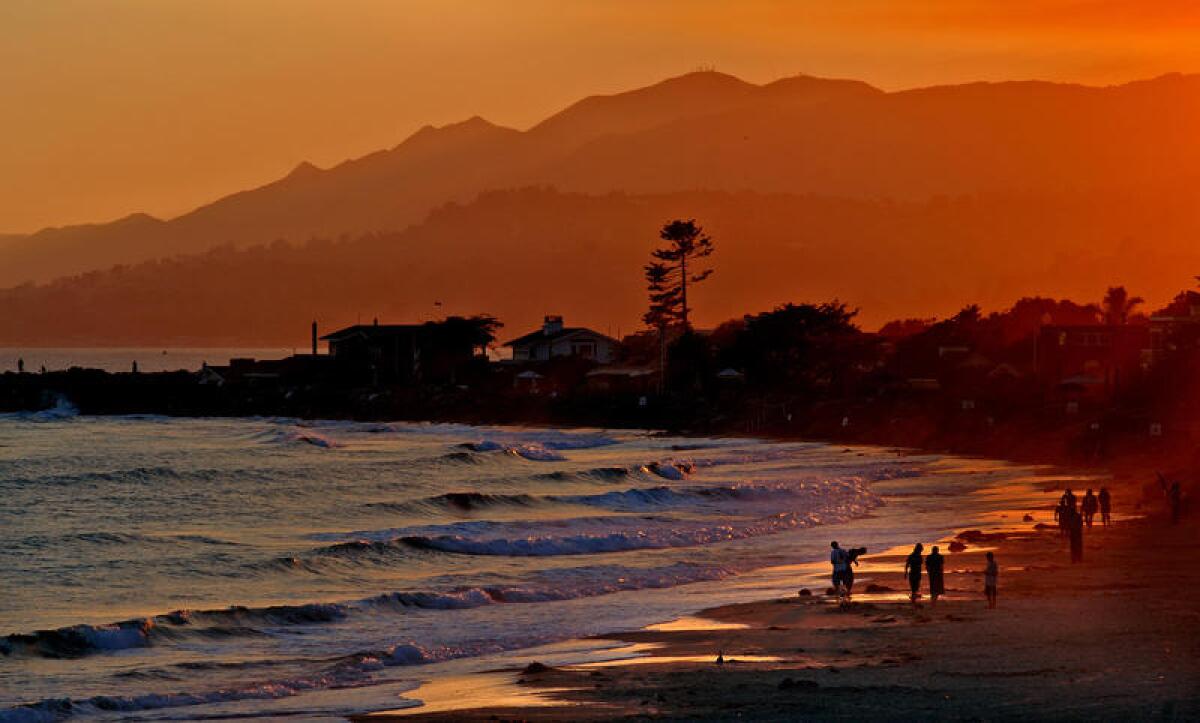
Why: The waves are puny, there’s plenty of sand and Linden Avenue is almost the perfect beach town main street.
What: Carpinteria (population: about 13,000) is the southernmost beach town in Santa Barbara County. It has less money or attitude than you might find in neighboring communities to the north, but plenty to keep a family happy.
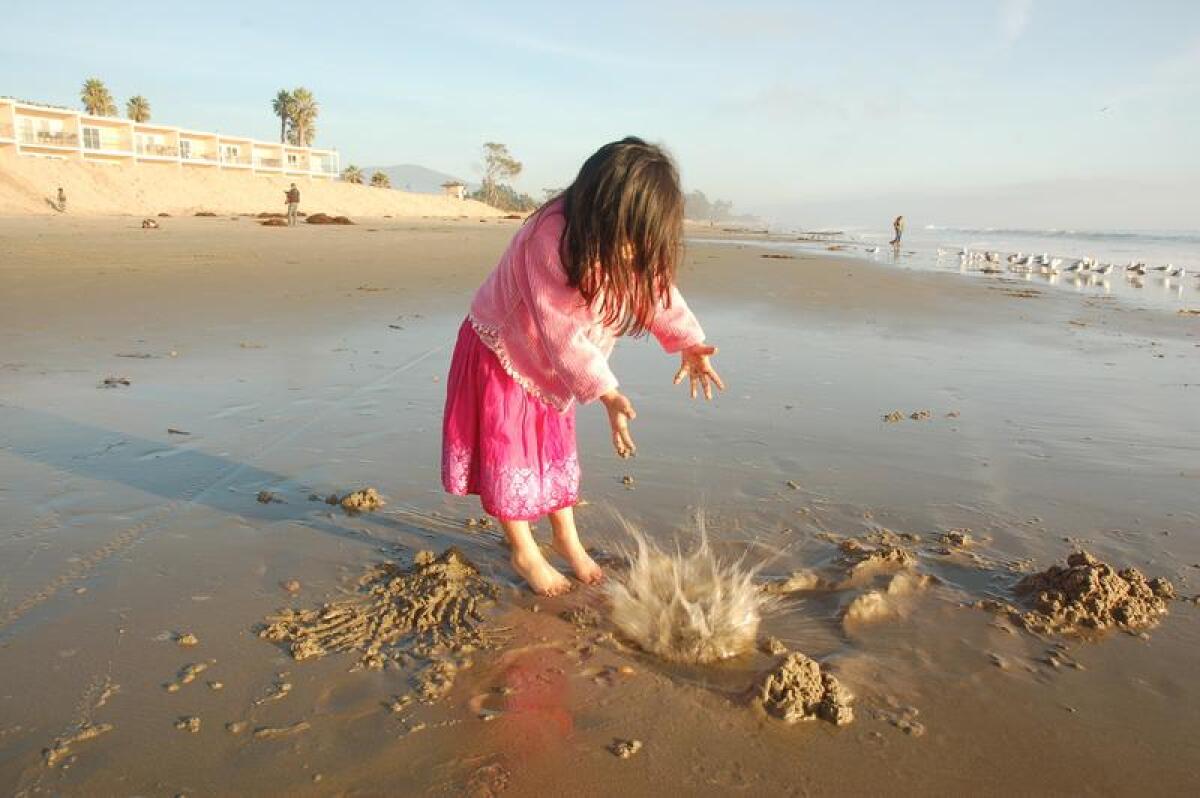
Linden Avenue is lined with an unfussy collection of surf shops, antique stores and restaurants, including The Spot, a rustic burger stand; and The Palms, which has been inviting customers to grill their own steaks since the 1960s. The avenue ends at the beach, where Carpinteria State Beach and its campground begin. Lifeguards patrol the state beach year-round, with an added squad of city lifeguards in summer.
Three miles southeast of town lies Rincon Beach Park, one of the state’s top surf spots. Just inland, the foothills are full of orchards and nurseries, which explains why the California Avocado Festival is held here every fall. The 2017 fest (live music, vast vats of guacamole, etc.) is scheduled for Oct. 6-8.
By the way: If you take a long walk on the beach, you might find tar between your toes. That’s probably natural seepage from Santa Barbara’s offshore crude oil deposits. Ice, or maybe olive oil, can help you clean up.
Where: Carpinteria’s Linden Avenue, 11 miles east of Santa Barbara’s State Street, is 84 miles northwest of downtown L.A.
How much: The Avocado Festival is free. A burger or shake at The Spot is $4.15. An 8-ounce filet mignon at The Palm goes for $16.95.
Info: Carpinteria Chamber of Commerce, Carpinteria State Beach
Listen up at the Grammy Museum in downtown Los Angeles
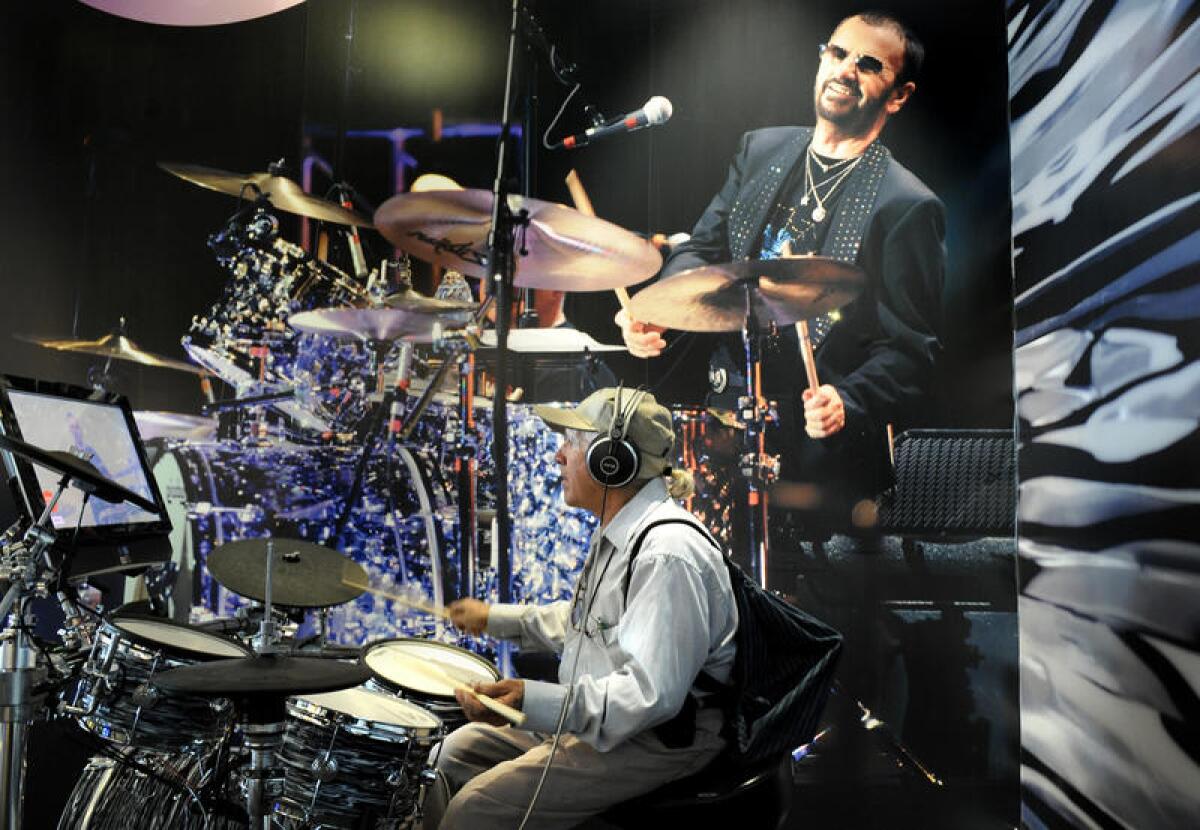
Why: Besides laying out the history of pop music -- with plenty of sound clips, video segments, instruments and artifacts -- the Grammy Museum in downtown L.A. has an “In the Studio” exhibit that lets you record yourself.
What: As the official museum of the Recording Academy, owned and operated by entertainment behemoth AEG, this place ought to be full of musical treasures and industry insights. And it is. In early 2017, exhibition subjects included the Ramones; Sounds of Africa; John Denver; and the enduring appeal of the National Guitar.
If you’re more interested in music than awards that the Grammy people have been giving out since 1959, you might not linger on the outfits and prizes. But there’s plenty to see and hear, including an area where you can play an instrument, and another display that shows how recording technology has evolved since Thomas Edison came up with the first phonograph cylinders in the 1870s.
Since this museum opened in 2008, it’s been joined by Grammy museum siblings in Mississippi, Ohio and (due in 2017) New Jersey.
Where: The Grammy Museum is part of the L.A. Live sports and entertainment complex at 800 W. Olympic Blvd. in downtown L.A.
How much: Adult admission, $12.95. Youths (aged 6-17), $10.95.
Info: Grammy Museum
Sniff that thin mountain air at the artsy Cafe Aroma in Idyllwild
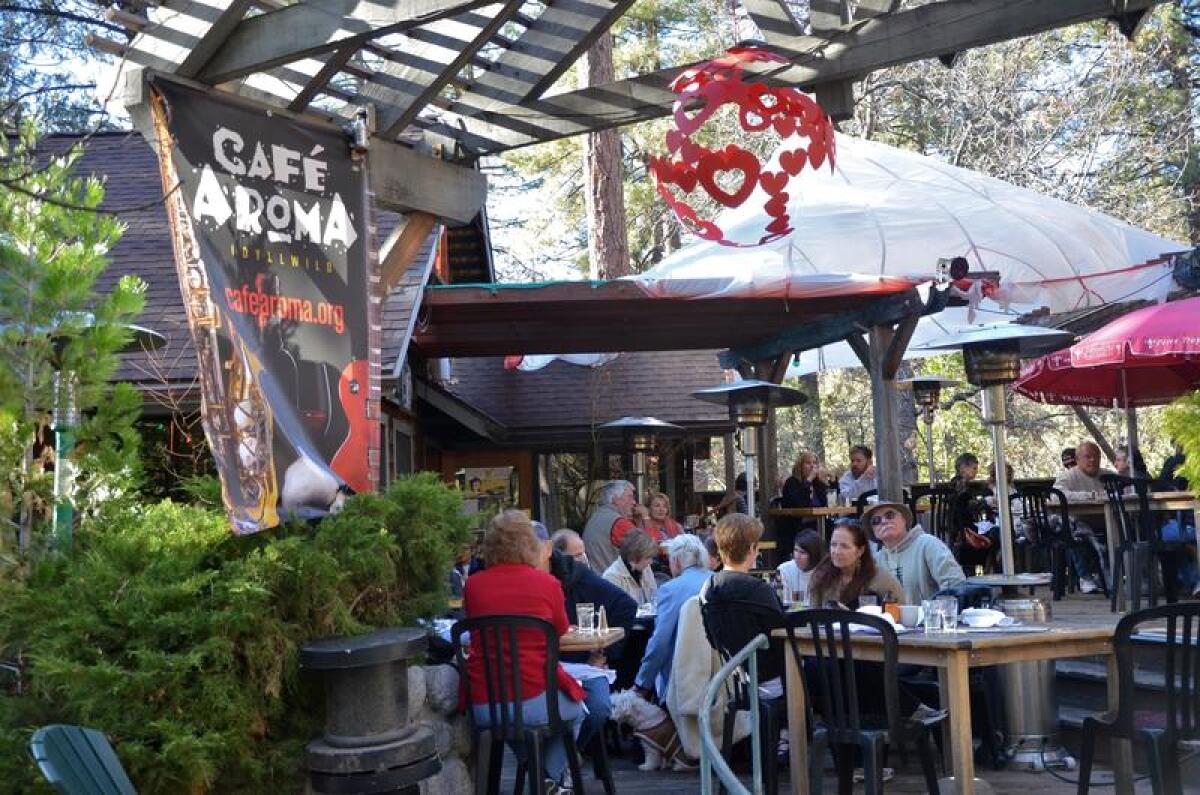
Why: If you’re in Idyllwild, you’ve probably just finished a hike in the San Jacinto mountains, or you’re about to start one, or there’s a snow-frolic or rock-climbing excursion afoot, or maybe you’ve got a kid going to the Idyllwild Arts Academy or one of the many camps in the woods around town. In any of those cases, this is a great place to relax before or after a pickup or drop-off.
What: This easygoing eatery sits in the heart of downtown, if loose-knit Idyllwild (population about 3,900) can be said to have one. Cafe Aroma often has live (but gentle) music, with local artists’ work inside. Sometimes there’s a belly dancer or an author reading her work. Since a 2016 renovation/expansion, the tables on the deck have a roof overhead, so the patio works in more kinds of weather. And if you have a kid in tow, consider a later visit to the nearby Candy Cupboard, a tiny, tasty shop that’s been offering taffy, chocolate, shaved ice and such for more than 35 years.
Where: 54750 N Circle Dr, Idyllwild, 109 miles east of downtown L.A.
How much: Sweet potato and veggie lasagna, $18.25. Osso bucco, $27.95. Breakfast, lunch and dinner served.
Info: Cafe Aroma
Try a taquito or knock around the knickknacks on colorful Olvera Street
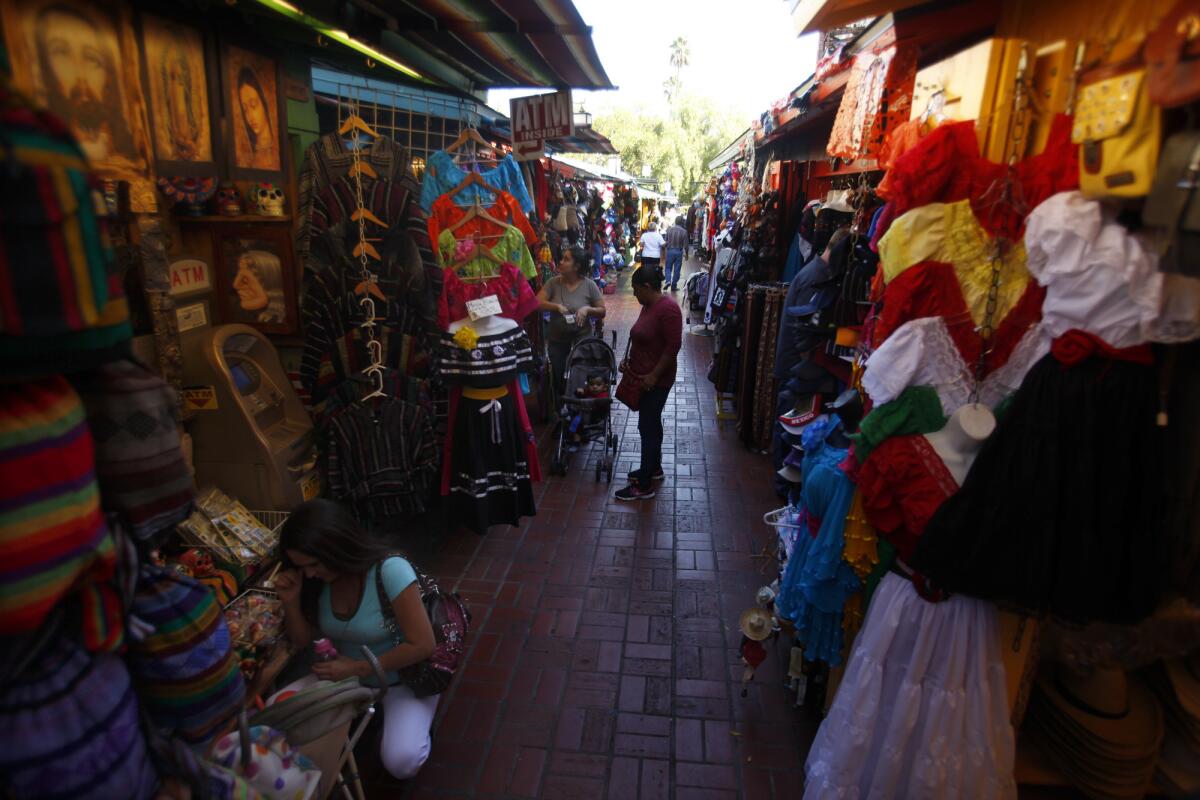
Why: The chalky old brick of Olvera Street stirs thoughts of what Los Angles looked like the day it was born. Breathe deep the leather shop or some uncommonly good taquitos. An hour or two here, graced by live music in the courtyard, is time well spent.
What: Olvera Street is a tribute to L.A.’s past, with buildings dating to 1818. The block-long open-air market is part of the El Pueblo de Los Angeles Historic Monument.
Restaurants, shops and kiosks line the street where, amid the Packers gear and other tourist bait, you can find some formidable Mexican folk art. For the best value and sometimes the best tastes, check out the smaller hole-in-the-wall restaurants, such as El Rancho Grande, where taquitos bathed in avocado sauce have been a local favorite for generations.
Don’t miss Murillo Leather, a family store that has been putting out hand-crafted hippie-style leather since 1971. Custom leather belts go for around $45; the handsome wallets and satchels beckon as well. Free 50-minute tours of the area are offered at 10 a.m., 11 a.m. and noon Tuesdays through Saturdays, subject to the availability of docents. For scheduling info, email: [email protected].
Where: Olvera Street, 845 N. Alameda St., in downtown Los Angeles, across from Union Station.
How much? Free, with meals from as low as $3.
Info: Olvera Street
At Petco Park, enjoy a hot dog (or fish taco) and root for an underdog team
Why: Visitors get great results here.
What: The San Diego Padres, a major league team since 1969, have never won a World Series. But since 2004, they have had the consolation of playing in Petco Park, a smart, snug stadium in the heart of downtown, a few blocks from the waterfront, with a statue of Hall of Famer Tony Gwynn outside.
It’s a pleasant ballpark, with craft beers on tap and fish tacos and burgers from hometown favorite Hodad‘s available alongside the usual hot dogs.
The old brick Western Metal Supply Co. building looms over left field. There’s a grassy park for families beyond the center field fence, a sudsy “Craft Pier” (get it?) beyond right center field. Yet Petco doesn’t sell out as often as Dodger Stadium (or many others), so it will be easier to get tickets.
Here’s the clincher: The Padres have a long history of losing more than they win. Based on the Padres’ Petco results in 2015-2016, there’s a 52% chance the home team will lose. If you’re a visiting Dodgers, Angels, Giants or A’s fan, that’s hospitality. And if you’re a Padres fan like me -- well, you already knew this all too well.
Where: 100 Park Blvd., San Diego, 122 miles south of downtown L.A.
How much: For 2017 ticket prices, check the Padres website.
Info: San Diego Padres
Chill at Malibu’s Paradise Cove (and keep an eye out for Moondoggie)
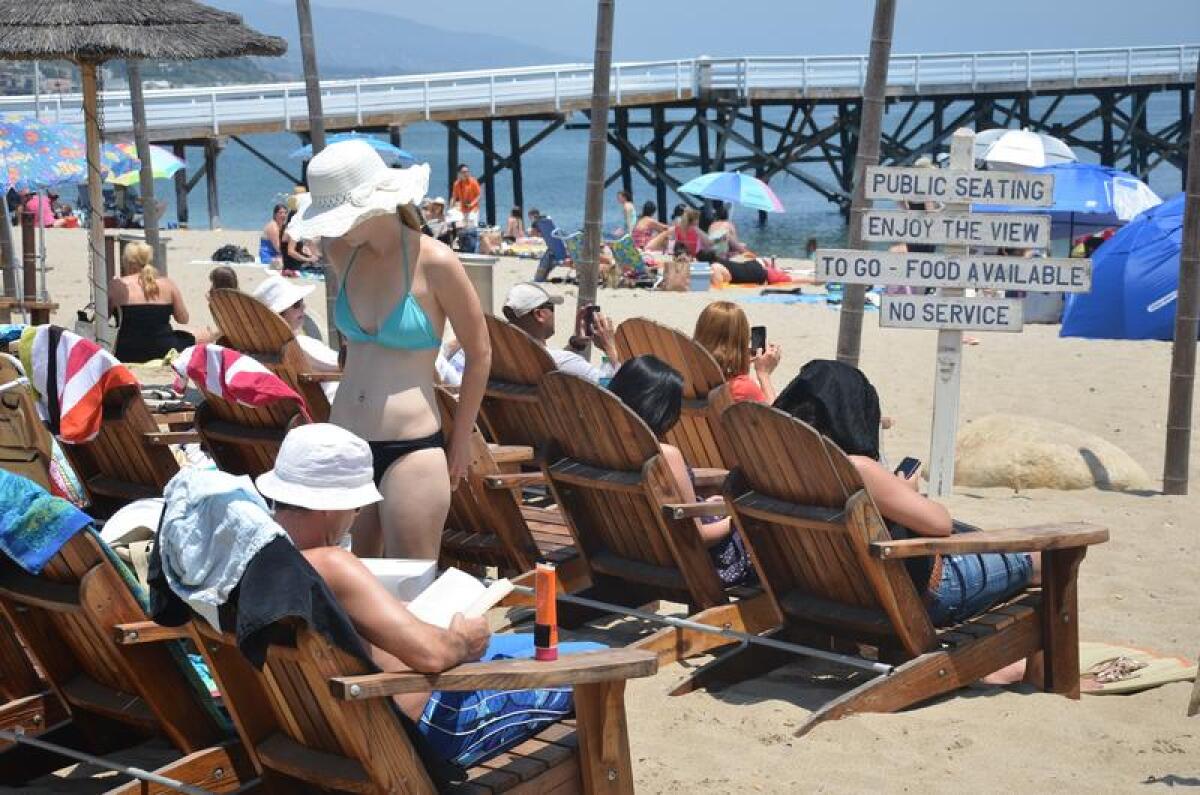
Why: There is a Malibu Beach of the out-of-towner’s mind, and this is more or less it.
What: Paradise Cove is a sequestered beach with a lively restaurant, a little pier, alert lifeguards, handy parasols, reclining seats on the sand and servers rushing to and fro with burgers and rum drinks. Any moment, depending on your age, you may expect to see the gang from “Gidget” or “Baywatch” or “The O.C.” to come in from the waves. But where are the surfboards? (Explanation in a minute.)
As it happens, “Gidget” (she the fictional symbol of surfing culture and Moondoggie her fictional beau) and “The O.C”. did shoot here, and “The Rockford Files” made use of the adjoining trailer park, which the New York Times once called “America’s most glamorous trailer park.”
The result is a scene that might be crowded, but remains more domesticated than most other SoCal beaches -- and that’s the way many travelers like it, especially those with kids.
This is still a public beach on the wet side of the high-tide line. But the owners of Paradise Cove, eager to keep a mellow, profitable vibe, ban loud music, bonfires and barbecues, and for years have skirmished with coastal-access advocates and charged non-diners up to $50 a day to park in their lot.
Not surprisingly, most surfers take their boards elsewhere. Malibu has 21 miles of coastline with many other options, after all.
Where: 28128 Pacific Coast Highway, Malibu, 34 miles west of downtown L.A.
How much: A Beach Burger (1/2 pound) from the Cafe is $18.95. Bowl of clam chowder: $11.95. To rent two chaise lounges and an umbrella for the day: $60. Weekend parking is $8, so long as you spend at least $30 at the cafe.
Info: Paradise Cove Malibu
Rumble down 26 miles of bad road to Death Valley’s strange, smooth Racetrack

Why: It’s like walking on the moon, but you don’t need a space suit.
What: The Racetrack is a remote wonder in Death Valley National Park, reachable only by driving a bone-rattling 26-mile stretch of gravel road. Four-wheel drive, heavy-duty tires and high clearance are strongly recommended.
At road’s end, you park and step out onto a vast, flat, white playa where scattered rocks have been leaving tracks for eons, as if they move around on their own when nobody’s looking.
In a sense, they do. Scientists realized in 2014 that a combination of wind and melting ice makes the movements happen.
It’s about seven hours of driving to make the round trip from the park’s Furnace Creek area, but this is a singular landscape. And on the way you’ll have a fine selfie opportunity at Teakettle Junction.
Where: Racetrack Valley Road, the 26-mile gravel road, runs south from the park’s Ubehebe Crater Road. The Racetrack is 316 driving miles northeast of downtown L.A.
How much: Park entrance costs $25 per car for seven days.
Info: Death Valley’s Racetrack
Bed down at the seaside Hotel del Coronado and dream of Marilyn Monroe, Peter O’Toole and Oz
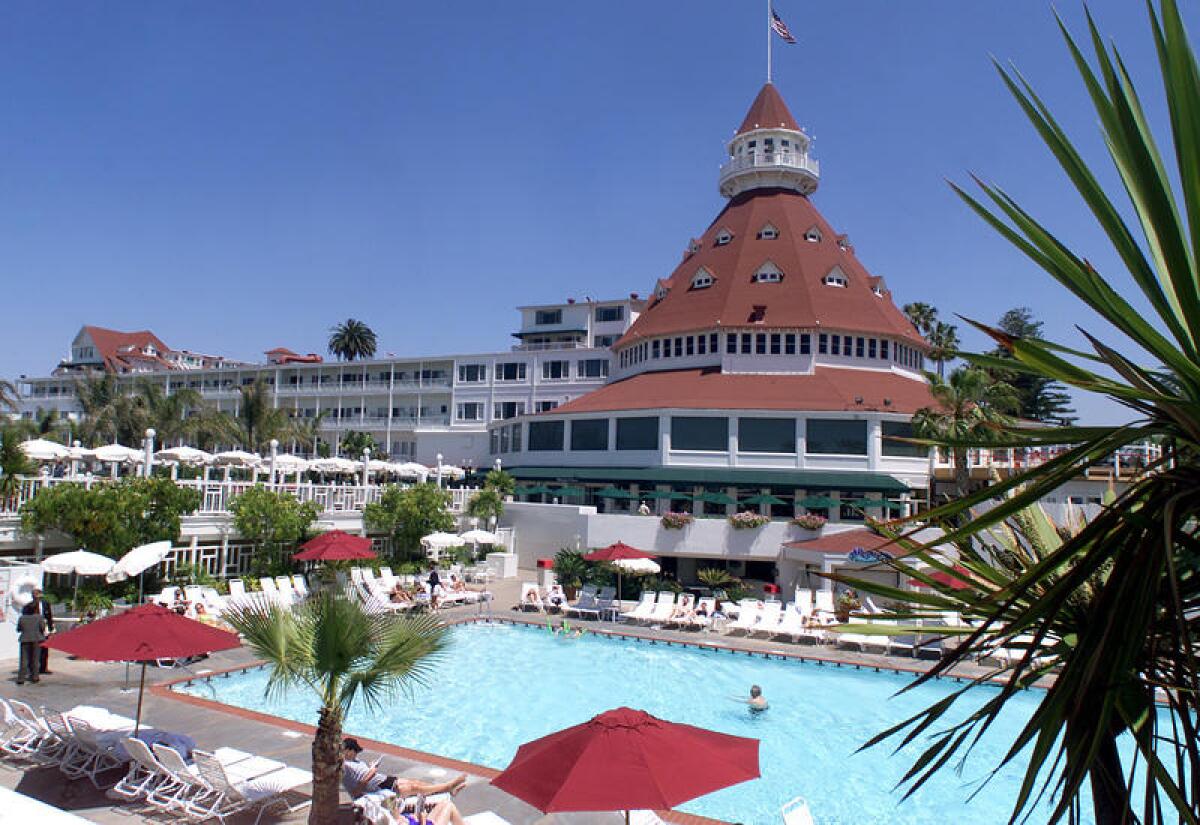
Why: When the 20th century began, there were dozens of grand hotels like this across the country, built mostly of wood. But a bunch of them burned. This resort is a rare survivor, California’s most regal Victorian.
What: The Del, as locals call it, was completed in 1888, a white-walled, red-roofed wonderland alongside a broad beach of creamy white sand. Just the 33-foot-tall sugar pine rafters of its vast Crown Room are enough to stop you in your tracks.
It’s no surprise that frequent guest L. Frank Baum, author of the “Wizard of Oz” books, was inspired to do a lot of writing here in the 1900s. Or that movie producers seized upon the resort as a setting for “Some Like it Hot” (1959; Marilyn Monroe, Tony Curtis, Jack Lemmon) and “The Stunt Man” (1980; Peter O’Toole).
As you wander the property, someone will try to tell you about Kate Morgan, a young woman who was shot to death in 1892 and is said to haunt her old room. Yes, she died. But really, does every cool old building have to have a ghost story? Why not just enjoy the history?
Or run on the beach. Or watch the hotel’s hired falcon chase away seagulls. Or, as long as you’re splurging, do that lavish, spendy Sunday brunch in the Crown Room.
Where: 1500 Orange Ave., Coronado, 129 miles south of downtown L.A.
How much: Room rates start at $329. The Sunday brunch costs $96 per adult.
Info: Hotel del Coronado
Follow your nose to the tri-tip at the San Luis Obispo Farmers Market every Thursday night

Why: It’s a college town surrounded by farmers and winemakers, and on Thursday nights, they shut down the main drag so that people can eat, drink and listen to music.
What: The San Luis Obispo Farmers Market, which runs 6:10-9 p.m. every Thursday, dates back decades. These days it fills five blocks and includes fruits and vegetables from 37 local farms.
There’s usually some live music, along with chicken, ribs, pulled pork, corn on the cob and that particular crescent-shaped bit of beef, best when grilled over red oak, that’s known as tri-tip. Because, to paraphrase Norman Maclean, along the Central Coast there is no clear line between religion and tri-tip.
Where: Higuera Street, between Osos and Nipomo streets.
How much: It’s free to browse, of course. And the bike valet service is free.
Info: San Luis Obispo Farmers Market
Escape to Alcatraz, San Francisco’s penitentiary island
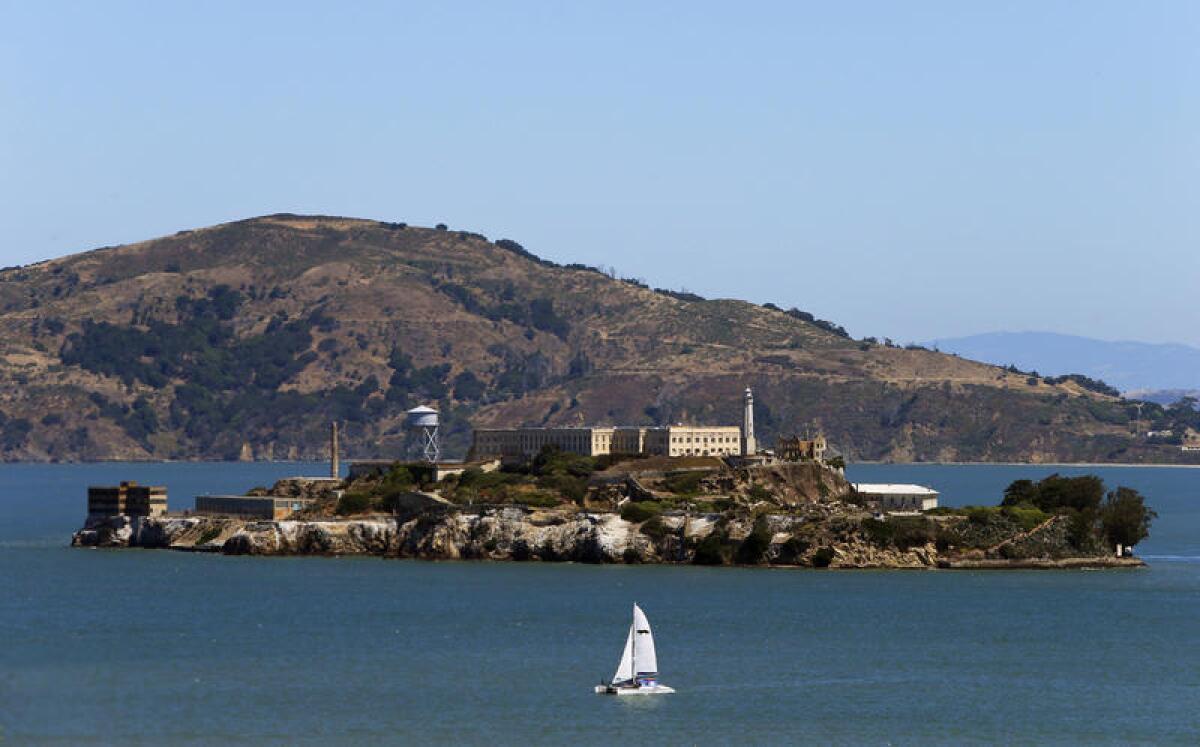
Why: For nearly 30 years, the island by the Golden Gate was our nation’s most dramatically sited penitentiary. For more than 40 years now, it’s been a top tourist draw and prison-movie inspiration. And still, kids, parents and skeptics of all ages often find themselves fascinated on arrival.
What: The island is 22 acres, now run by the National Park Service, accessible only by a ferry run by Alcatraz Cruises, the park concessionaire.
Once aboard, impress your friend by pointing out that alcatraz means pelican in archaic Spanish.
By this time, your friends have already learned that the island was a military installation in the 1850s; and a federal prison from 1933 to 1963 (housing Al Capone, Whitey Bulger and Robert Stroud, known as the Bird Man, among others). But they might not know that Native American protesters occupied the island for about 18 months from 1969-1971.
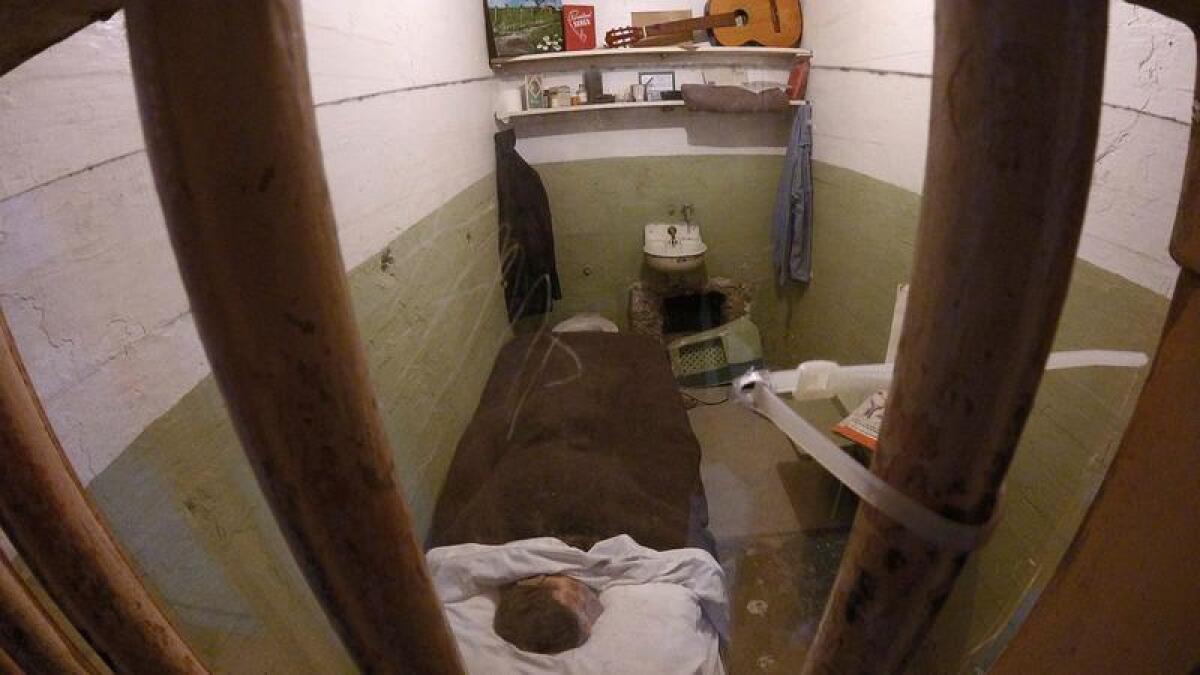
Where: Alcatraz Cruises depart from Pier 33, Fisherman’s Wharf, San Francisco, 382 miles northwest of downtown Los Angeles.
How much: Ferry tickets, available up to three months in advance, often sell out many weeks in advance. Tours (which include the round trip ferry ride) cost $35.50-$42.50 per adult, except for a new Behind the Scenes tour, which costs $87.50, takes four to five hours and is called “physically strenuous.”
Order cioppino at San Francisco’s Tadich Grill, perhaps California’s oldest restaurant
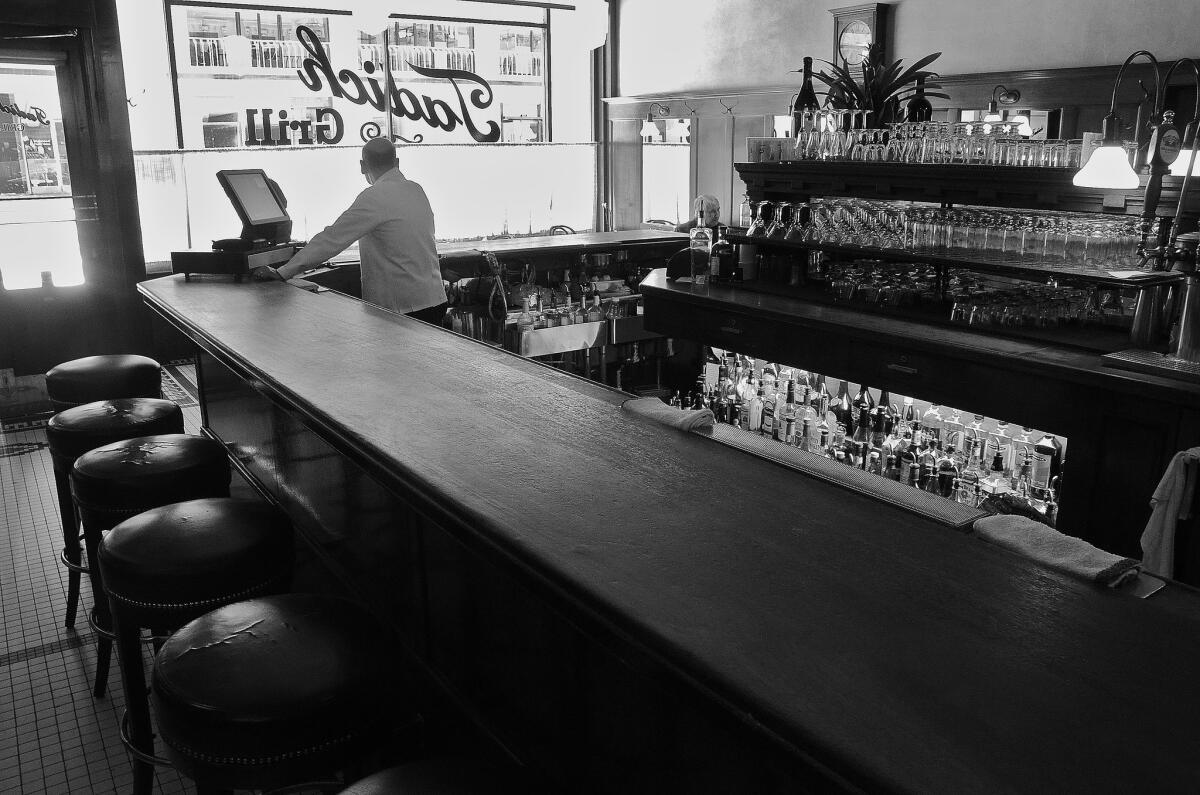
Why: This might be the oldest restaurant in the state. And even if it isn’t, the atmosphere is wonderfully old school and the seafood is tasty.
What: The Tadich Grill, a fixture along the California Street cable car line in San Francisco’s Financial District, has a long counter in the middle, a series of private booths down the sides of the dining room and a team of white-coated waiters whose tenure dates back decades.
The house specialty is seafood and the most popular dish is cioppino (a hearty fish stew that seems to have been invented by Italians in San Francisco’s North Beach in the 19th century). The sand dabs do well too.
Tadich takes no reservations but does a lot of power lunches and dinners anyway. Past diners are said to have included Ethiopian emperor Haile Selassie, Bob Hope, Danny DeVito, baseball player Joe DiMaggio, quarterbacks Joe Montana and Dan Marino -- the last two of them together in 1985.
The restaurant’s history is a long, tangled story, but it begins with three Croatian immigrants selling coffee from a tent on the city’s Long Wharf in 1849, just before California statehood. (You wouldn’t guess from looking at the place, but Tadich and its long bar have been in this location only since 1967.)
Where: 240 California St., San Francisco, 381 miles northwest of downtown L.A.
How much: Cioppino, $33.95. Sand dabs, $24.95
Info: Tadich Grill
Return to the Laguna Beach of 1950. Stroll the sands along Crystal Cove’s cottages, then dig a little deeper
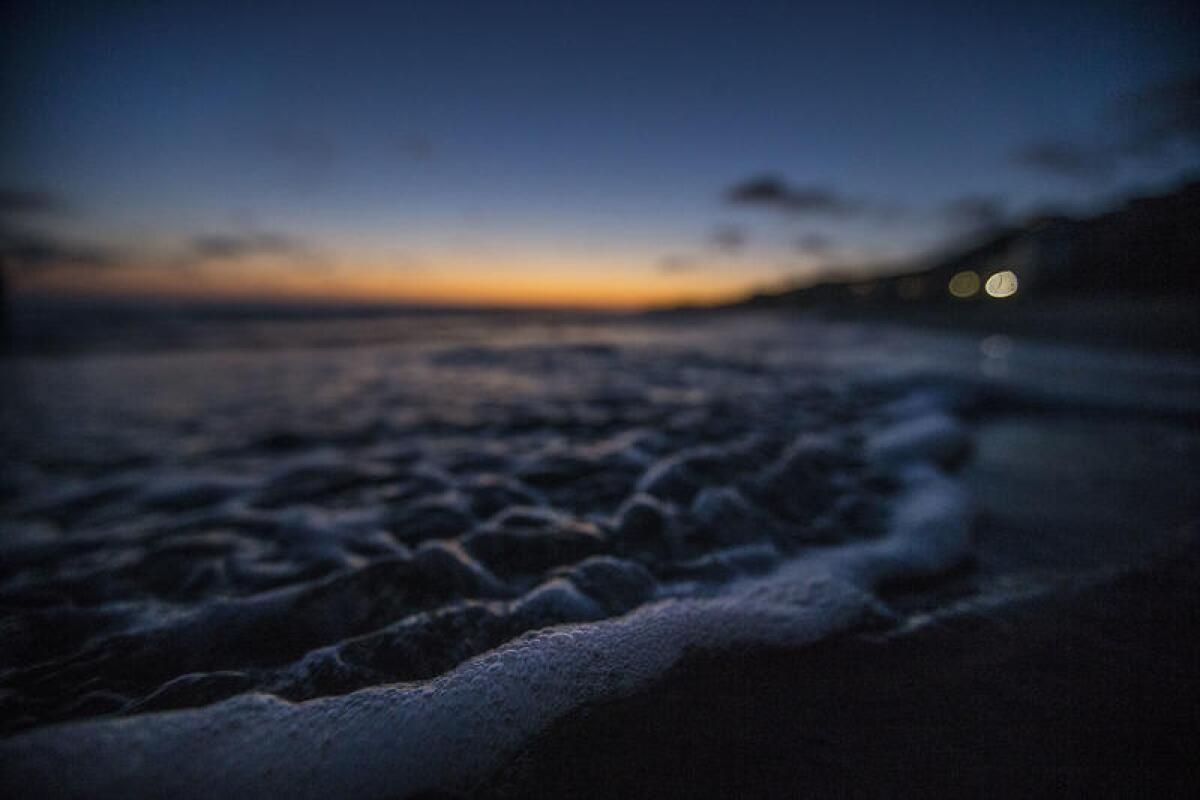
Why: Crystal Cove State Park’s much-coveted cottages stand as a beloved throwback, reminding many visitors of carefree beach days in decades past in Laguna Beach. That’s one layer of history here. Another layer (not so pleasant to recall) is the farmers who were here in the 1930s and early ‘40s, and what happened to them.
What: Perched along a 3.2-mile beach and bluff overlooking it, the 46 cottages of Crystal Cove (now owned by the state) seem an ideal setting for a carefree summer days in, say, 1950.
In fact, local leaders and the state park system have been working for years to achieve basically that effect. Now about two dozen of the cottages are in high demand as rentals. (If you’ve seen the 1988 Bette Midler movie “Beaches,” you’ve seen these cottages.)
Here’s the history many people miss: In 1927, when landowner Irvine Co. started leasing out hundreds of acres here, a Japanese American farming community sprang up. Those early tenants worked crops, opened roadside produce stands, built houses, barns and a community center -- and then they were forced into an internment camp in Arizona after the bombing of Pearl Harbor in 1941.
By the time the war was over and they were free, new tenants had taken over, and the Japanese American families had to start over elsewhere.
Arriving these days, you park up the hill and take a shuttle down from the state park’s parking lot. Along with your beach time you might have a bite at the Beachcomber Cafe or Ruby’s Shake Shack up the hill. If you take steps leading north to the park cultural center, you can dig deeper into the area’s history.
Where: 8471 N. Coast Highway, Laguna Beach. That’s north of downtown Laguna Beach, south of Newport Beach, 52 miles southeast of downtown L.A.
How much: Travelers reserve cottages through ReserveAmerica, and they go fast because the prices are so good: $175-$245 per night. Cottages are typically snapped up within minutes of being made available, typically six months in advance. (Details are explained here. There’s also a campground within the park.)
Info: Crystal Cove State Park
Listen for echoing hoofs and look for locomotives in Old Sacramento
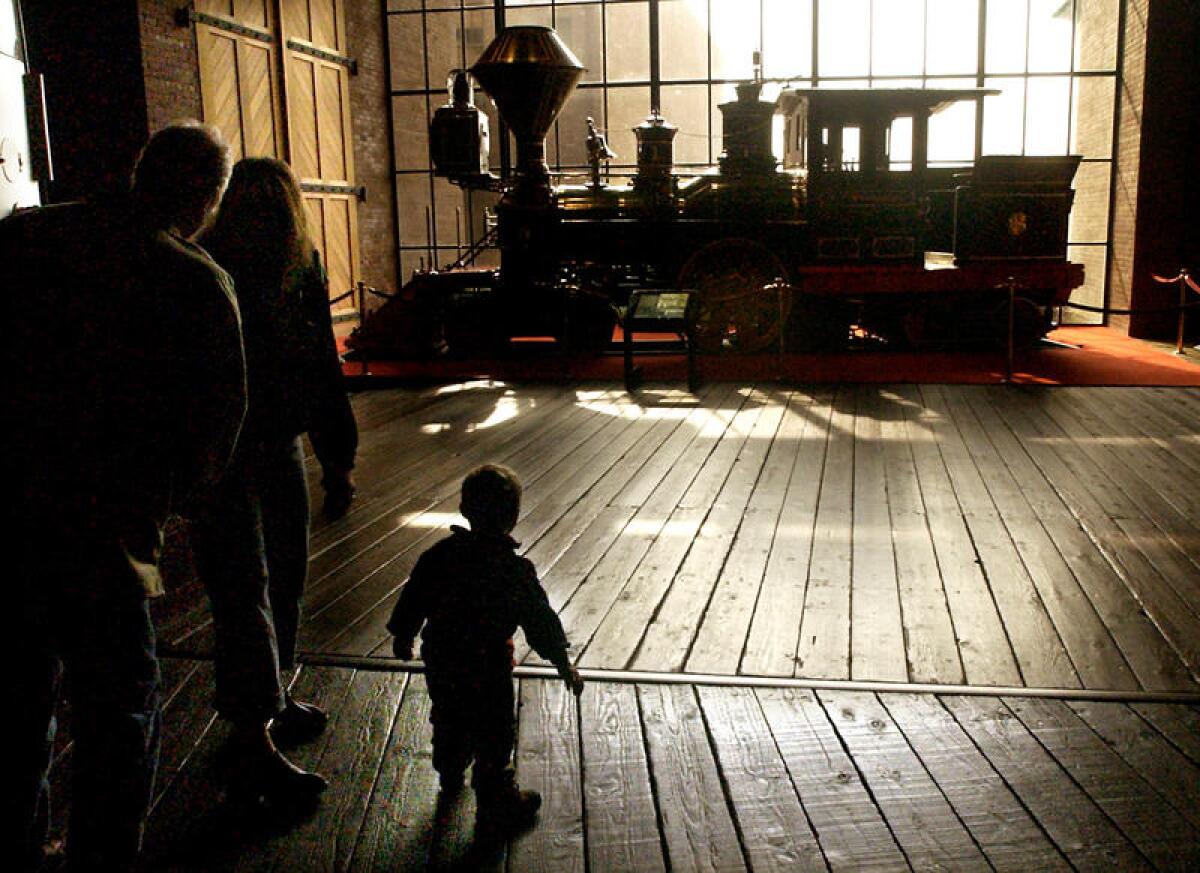
Why: For the Pony Express, this was the end of the line. And for Sacramento, it was a beginning.
What: Sacramento grew like mad amid the Gold Rush, and its oldest neighborhood — now an eight-block state historic park and tourist attraction — is a riverside district full of wooden sidewalks and 1850s architecture, with riverboat hotel the Delta King docked next door, paddle wheel and all.
One of its oldest structures is the B.F. Hastings Building at 2nd and J streets, the final station for westbound Pony Express riders in 1860-61 and now the site of a snug little Wells Fargo History Museum. Find it among the restaurants, curio shops and tattoo parlors (were tattoos a thing in the 1850s?) and step inside.
Don’t miss the Pony Express equestrian statue across the street or the Sacramento History Museum, which offers underground tours in warmer months to show how builders jacked up entire buildings and streets to rise above flooding in the 1860s and 1870s. Have a good look at the Tower Bridge a block to the south too.
And to be reminded why the Pony Express lasted only 18 months, stroll over to the California State Railroad Museum and its 19 steam locomotives at the neighborhood’s north end.
Where: Front Street and L Street, Sacramento, 384 miles northwest of downtown L.A.
How much: At the Sacramento History Museum, admission is $6 for adults, $4 for children 6-17. At the California Railroad Museum, admission is $12 for adults, $6 for children 6-17.
Info: OldSacramento.com
Climb the tower, speak your mind and roam the campus at Berkeley
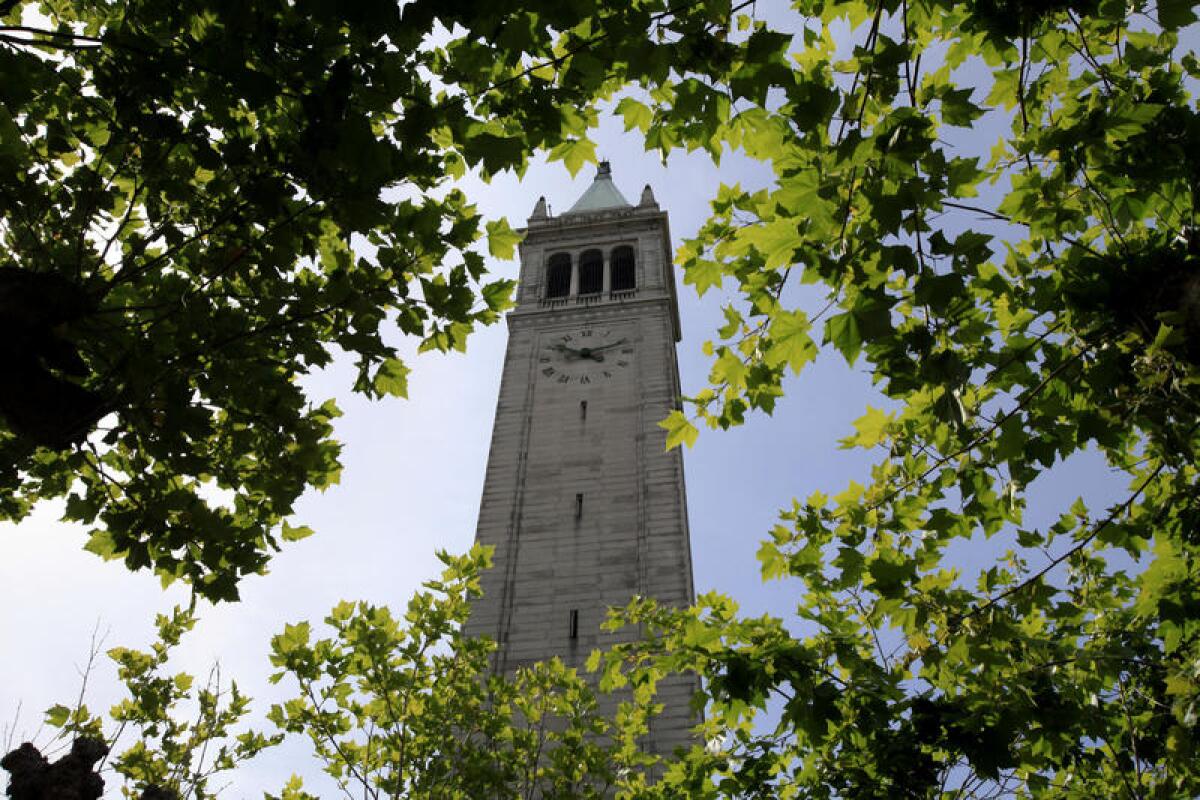
Why: This is where the University of California began, where anti-war protests challenged then-Gov. Reagan in the ‘60s, and where you can get a fine view, whether you’re red or blue, from the landmark that some people call the Campanile and some call Sather Tower.
What: For the view from the 307-foot tower, ride the elevator up, take 38 more steps and there you are, with the Bay Area spread at your feet.
Next to the Campanile is South Hall, the campus’ first building, erected in 1873. (Since then, the UC system has grown to 10 campuses.)
For a different sort of campus overview, drop by the campus visitor center or take a student-led tour. It’s sure to include Sproul Plaza, the campus crossroads for more than 40,000 undergrads and graduate students on 178 acres.
Odds are good on your tour, you’ll also hear about the parking places that Berkeley reserves for its Nobel laureates. Check whether there’s a museum exhibit or performance on campus while you’re there.
Where: Telegraph Avenue and Bancroft Way, Berkeley, 373 miles northwest of downtown L.A.
How much: Adult admission $3. Student-led and self-guided campus tours are free. Undergrad tuition, fees, room and board: $28,510 a year.
Info: Campanile visits and campus tours
Confront James Dean (and the universe) at Griffith Observatory, hood ornament of L.A.
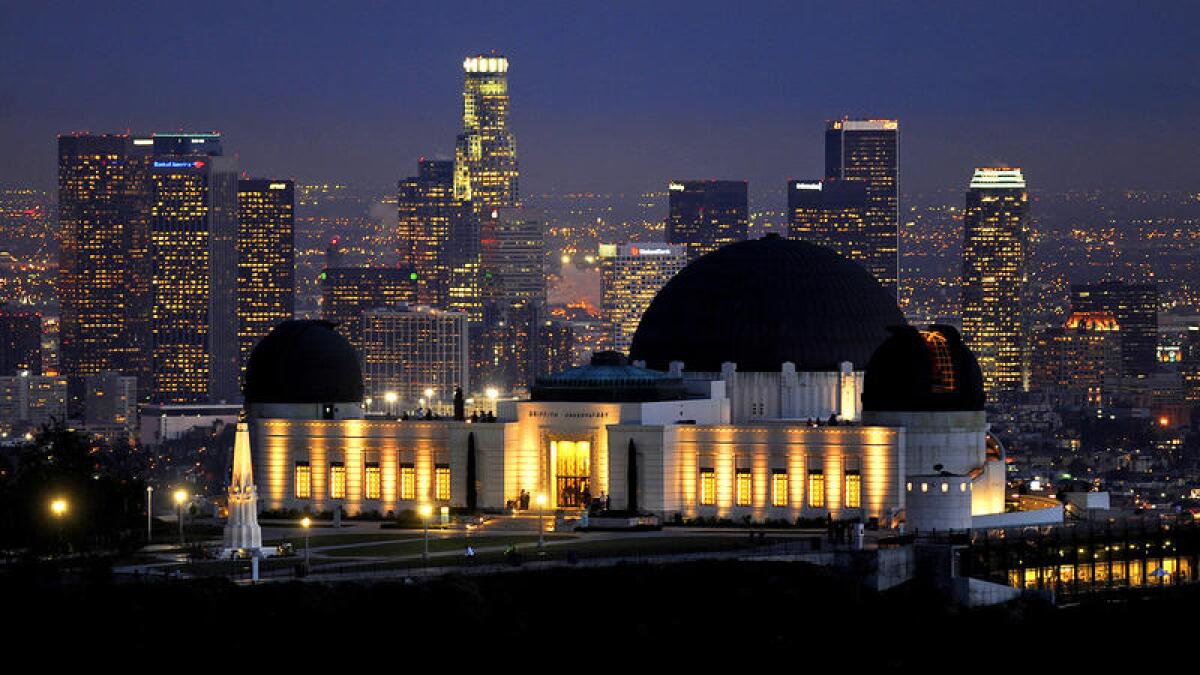
Why: Because from here, you can see city lights, scan distant stars and check your weight on Mars.
What: It was 1935 when city leaders unveiled this observatory high in the Griffith Park part of the Hollywood Hills. Now it’s one of our most familiar landmarks -- “the hood ornament of Los Angeles,” in the words of observatory director Edwin C. Krupp.
Inside, three levels of exhibits introduce you and your children to the cosmos, the history of astronomy, the varying gravity on different planets and many cool visual effects. The two lowest levels were added when the observatory expanded underground in 2006.
The iconic outside includes three green copper domes, a pristine lawn; and a bronze bust of James Dean, who sulked here in scenes from the 1955 film “Rebel Without a Cause.” (There’s no sculpture yet for Arnold Schwarzenegger, who landed here as a cyborg in 1984’s “The Terminator.”)
Looking out from here at dusk, you not only see the twinkly lights of the city grid below, but you also have a fine view of the Hollywood sign and Hollywood hills to the west. Be warned: The parking lot fills up fast.
Check the observatory website for parking options. Or consider a 2 1/2-mile morning hike up from Fern Dell, where parking is easier and the Trails Cafe will sell you an avocado sandwich.
Where: 2800 E. Observatory Road, Los Angeles, 7 miles northwest of downtown L.A.
How much: Admission to the building, grounds and parking lot is free. Tickets for presentations in the 290-seat Samuel Oschin Planetarium (inside the largest of the three green domes) cost $7 per adult and $5 per child or student.
Info: Griffith Observatory
Savor the rich colors and strange history of Salvation Mountain near the Salton Sea
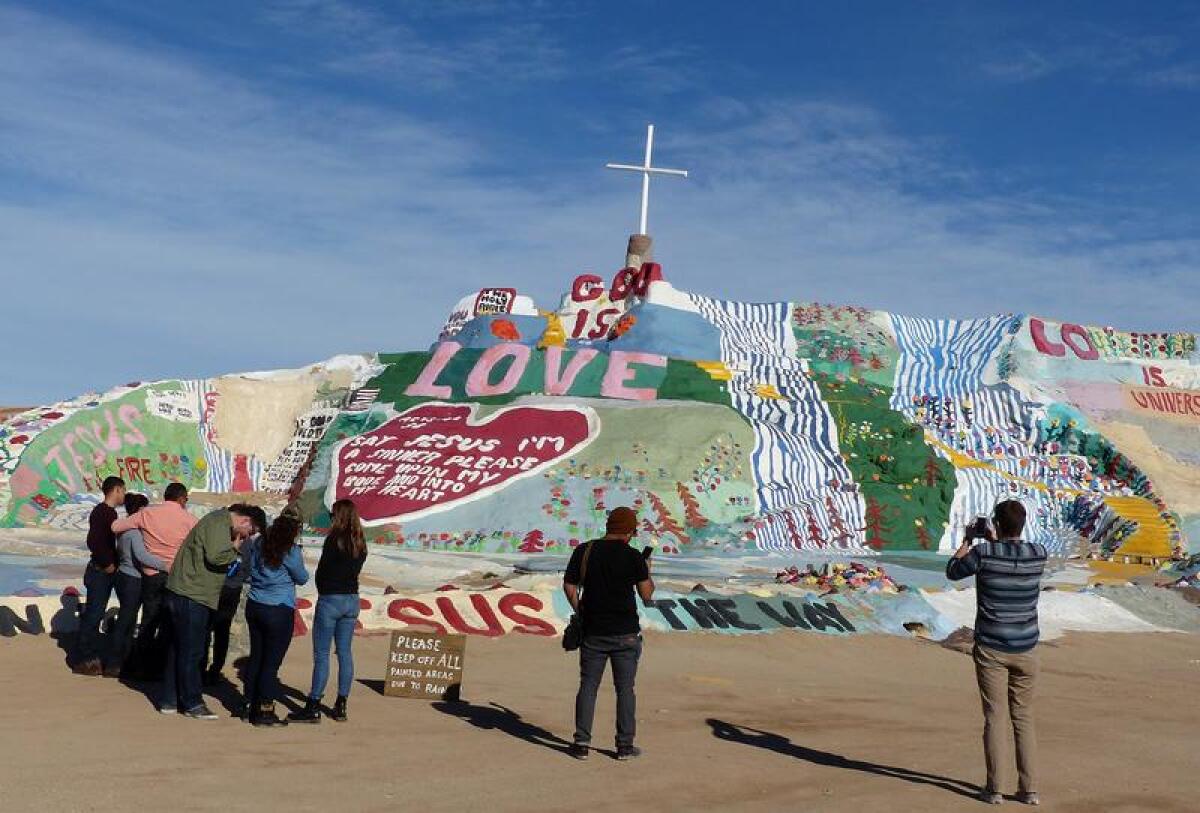
Why: Because you can’t really envision a man-made mountain, covered in layers of colorful paint and biblical verse, until you see it in person.
What: Salvation Mountain is a one-man project that was decades in the making. The late Leonard Knight (1931-2014) made this colorful mound of inspirational messages, using the desert as his canvas, relying on donations and cobbling together cement, hay bales and many, many layers of bright paint until he had a spectacle several stories tall.
If you’re 20-ish, you may know it from the video game “Grand Theft Auto V” (where it’s called “Hippietown”) or one of those PBS documentaries they show in high schools. If you’re older, you may remember the Salvation Mountain scene in Sean Penn’s 2007 movie “Into the Wild,” or maybe you’ve just heard stories about a loner in the desert, forever painting Bible quotations on the earth.
Either way, the labor of love behind this rainbow-colored edifice is clear. Even if its “God Is Love” message doesn’t speak to you, there’s no ignoring the dedication on display.
When we stopped by in January, a few dozen others were there already, reading inscriptions, gawking and snapping selfies. (The state owns the land.)
And if the mountain isn’t quirky enough for you, have a look around neighboring “Slab City,” where a disparate collection of squatters has improvised an off-the-grid bohemian neighborhood on several blocks of bare concrete foundations that once held Marine barracks -- a “chill” village, in the words of one 20-year-old admirer. Some call it “the last free place in America.”
Where: Drive toward the community of Niland, at the southeastern side of the Salton Sea, about 188 miles southeast of downtown L.A. The “mountain” is a short detour off Highway 111 on Beal Road; Slab City is a little farther east along the road.
How much: Free.
Info: Salvation Mountain Inc.
Make tracks at Oceano Dunes, where they let you drive on the beach
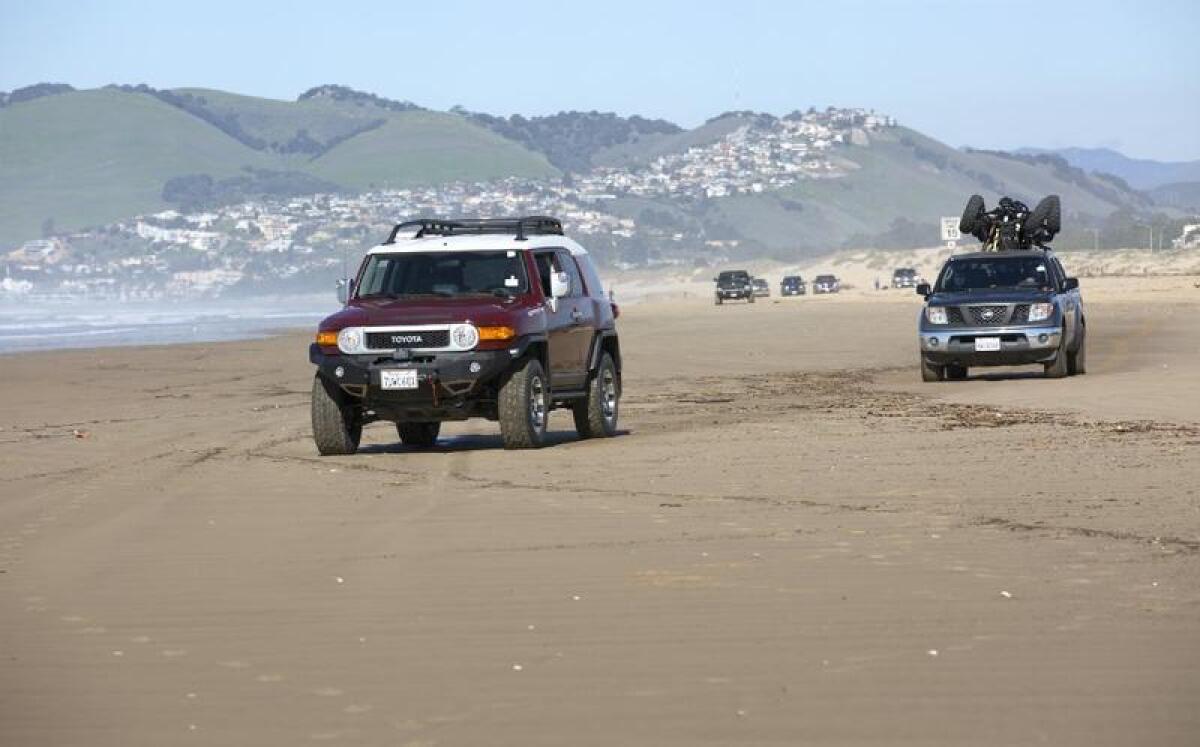
Why: This is the only stretch of California beach that you can still drive on.
What: The Oceano Dunes State Vehicular Recreation Area (formerly Pismo Dunes SVRA) is a 1,500-acre zone of engine-roaring, sand-churning fun ... if you’re into that sort of thing.
If you’re not, it’s where shorebirds, including the California least tern and snowy plover, contend with a lot of loud company.
For decades, weekend warriors and families have been gathering here in warm weather to crisscross the dunes and beach on dune buggies, motorcycles, ATVs and other grown-up toys. Several shops on Oceano’s Pier Avenue, and on the beach itself near the landmark known as Post 2, rent the vehicles. If you’re driving in, four-wheel drive is recommended.
Compared with most California beaches, it’s the Wild West. Besides the off-roading (forbidden on the rest of the coast), you can ride horses, camp or build a bonfire (as long as you time the tides right). But there are plenty of rules.
Will it last? Two state agencies are at odds right now over the area, and Friends of Oceano Dunes have been skirmishing in court with the San Luis Obispo County Air Pollution Control District.
Where: Enter at the west end of Pier Avenue, Oceano, three miles south of Pismo Beach and 178 miles northwest of downtown L.A.
How much: The day-use fee is $5. Beach-camping is $10 a night and must be booked through Reserve America. Two-hour ATV rentals are $50-$325 at Steve’s ATV Rentals, $48-292 at Sunbuggy Fun Rentals.
Collect OMG reactions at crazy and colorful Venice Beach
Why: You could probably discern a first date’s political stance, sense of humor and quite possibly his or her sex life by the reaction to the sights at Venice Beach, one of the world’s great bohemian attractions.
What: Great street performers, an ocean view and a freewheeling collection of stores and restaurants await on this two-mile stretch of sand and skin.
Get a day pass ($10) to Muscle Beach, where Arnold Schwarzenegger first made a (very long) name for himself. Rent a bike or strap on roller blades and get rolling on the boardwalk, a.k.a. Ocean Front Walk.
At the nearby Venice Skate Park on weekends, DJs often spin music.
Even if you’re not a skater, the spectacle is worth a look. Whether in motion yourself or perched at a table at the Sidewalk Cafe, you’ll see things you’ll never forget in this mostly family-friendly attraction.
Add in a walk along the canals or a bike ride to Santa Monica and you could easily fill a day here. At sunset, head to the Hotel Erwin, where a rooftop lounge offers memorable views of the bay.
Where: Ocean Front Walk continues north into Santa Monica. The Sidewalk Cafe is at 1401 Ocean Front Walk, Venice, 18 miles west of downtown L.A.
How much: Free. Parking runs from $4 to $25 per day. Lots fill up on summer weekends, so best to come early.
Info: Venice Beach
Grab extra napkins when you load up at Pink’s and join L.A. hot dog history
Why: As SoCal traditions go, Pink’s Famous Chili Dogs ranks up there with the summer sun and Oscar night bling. Don’t go just for the grub. Go for the spectacle of a hundred drunks lined up at 2 a.m., all looking for one last decadent moment to end a weekend. Or go for lunch, where the crowd is different — and mostly sober — but the mustard and onions taste just as good.
What: All-beef wieners slathered with everything from slaw to pastrami, on undersized buns. Go classic with the legendary chili cheese dog ($4.95). Or go big with the Three Dog Night ($10.25) — three dogs in a giant tortilla, with cheddar cheese, bacon, chili and onions.
For a memorable Hollywood moment, order the Lord of the Rings ($5.75), topped with onion rings. It might be your last supper, but it’ll give the paramedics something to talk about.
Whenever you go (to Pink’s, that is), be prepared to wait a little. As with any eatery worth its salt, lines are constant, though they move quickly and the people-watching can be as good as the meal.
Where: 709 N. La Brea Ave.. Los Angeles, (and satellite locations elsewhere, but this one is the real deal), eight miles northwest of downtown L.A.
How much: Sandwiches from $4.40, with most ranging from $7 to $10.
Info: Pink’s Hollywood
Catch a lift, or a tango lesson, at L.A.’s historic Union Station
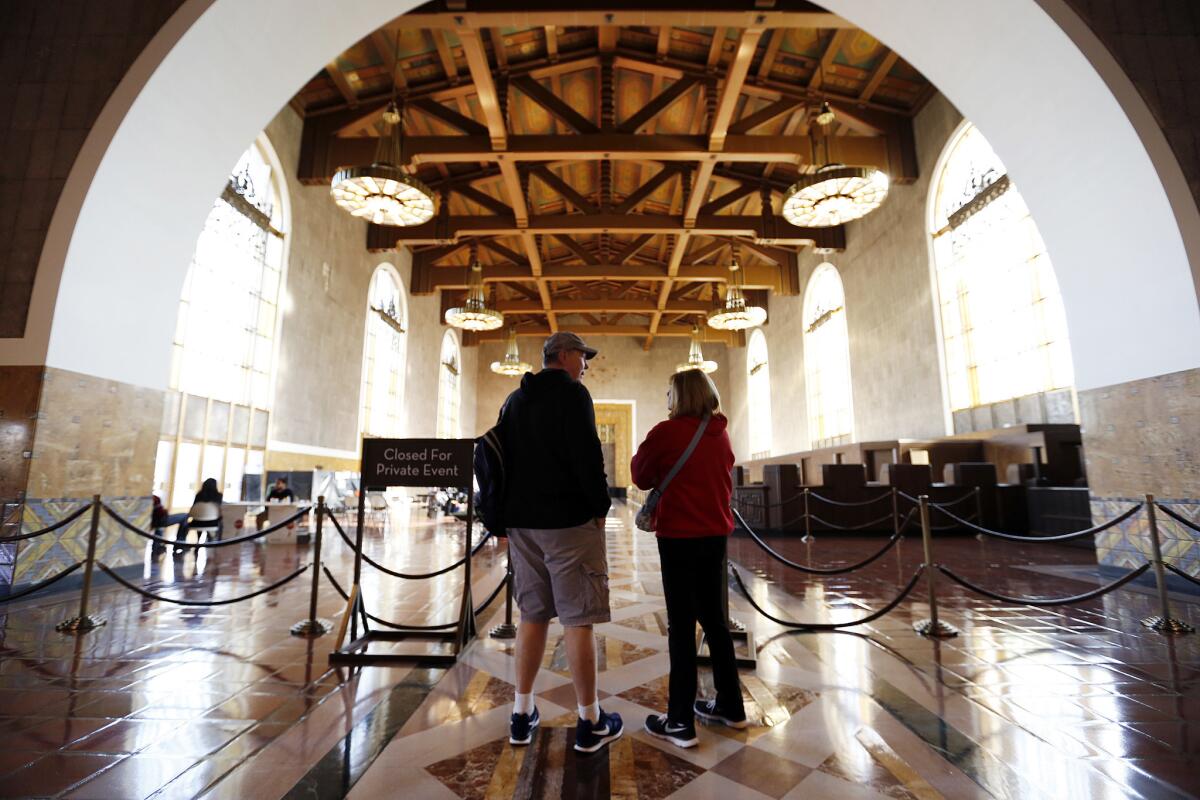
Why: Back when the railroads had major money — and ruled the world the way the tech behemoths do today — they built grand palaces. One of the last was Union Station, a splendid transportation hub in an old corner of downtown Los Angeles.
What: Union Station is at the center of the city’s transit spiderweb, providing rail, subway, bus and bike connections to destinations as close as Chinatown and as far as Beijing (by way of shuttle bus service to LAX, of course). Buses also will zip you from here to a Dodger game, or a night at the Hollywood Bowl.
You can catch a high-end meal here, at the notable Traxx restaurant, while ogling the station’s amazing Mission Moderne-style architecture, which dates to its completion in 1939. The station also is a handy launch point for pub crawls along Hollywood Boulevard or at L.A. Live.
More and more, the Metropolitan Transportation Authority hopes you’ll visit for the cultural and entertainment events it’s staging, such as free tango lessons or pop-up opera events. Architectural tours are held the second Sunday of every month.
Where: 800 N. Alameda St., downtown Los Angeles.
How much: Free, and open from 4 a.m. to 1 a.m.
Info: Union Station tours
Warm up with an Irish coffee at the Buena Vista in San Francisco, where the drink was, uh, reinvented

Why: Because even though Irish coffee wasn’t invented here, it seems to have been reinvented. In any case, it’s a fine place for a sip of something hot, especially on a foggy night.
What: The Buena Vista, a bar and grill that sits at the Hyde Street end of the city’s most popular cable-car route, has been in business for more than a century.
Much of its fame has to do with a night in 1952, when co-owner Jack Koeppler and travel writer Stanton Delaplane set out to re-create a tasty coffee-and-whiskey drink that one of them had once been served at the airport in Shannon, Ireland.
After many setbacks and help from a few friends, they achieved success and added the drink to the menu. More or less since then, the Buena Vista has claimed to have concocted “America’s first Irish coffee.”
There’s even a plaque. And a server says the restaurant sells 2,000 Irish coffees on a busy Saturday. (I’m pretty sure that means some people are ordering them with breakfast. Or as breakfast.)
Where: 2765 Hyde St., San Francisco, 388 miles northwest of downtown L.A.
How much: $10 for an Irish coffee. Dinner main dishes cost $12-$28.
Info: The Buena Vista
Sip a shake and size up classic cars at the Burbank’s historic Bob’s Big Boy
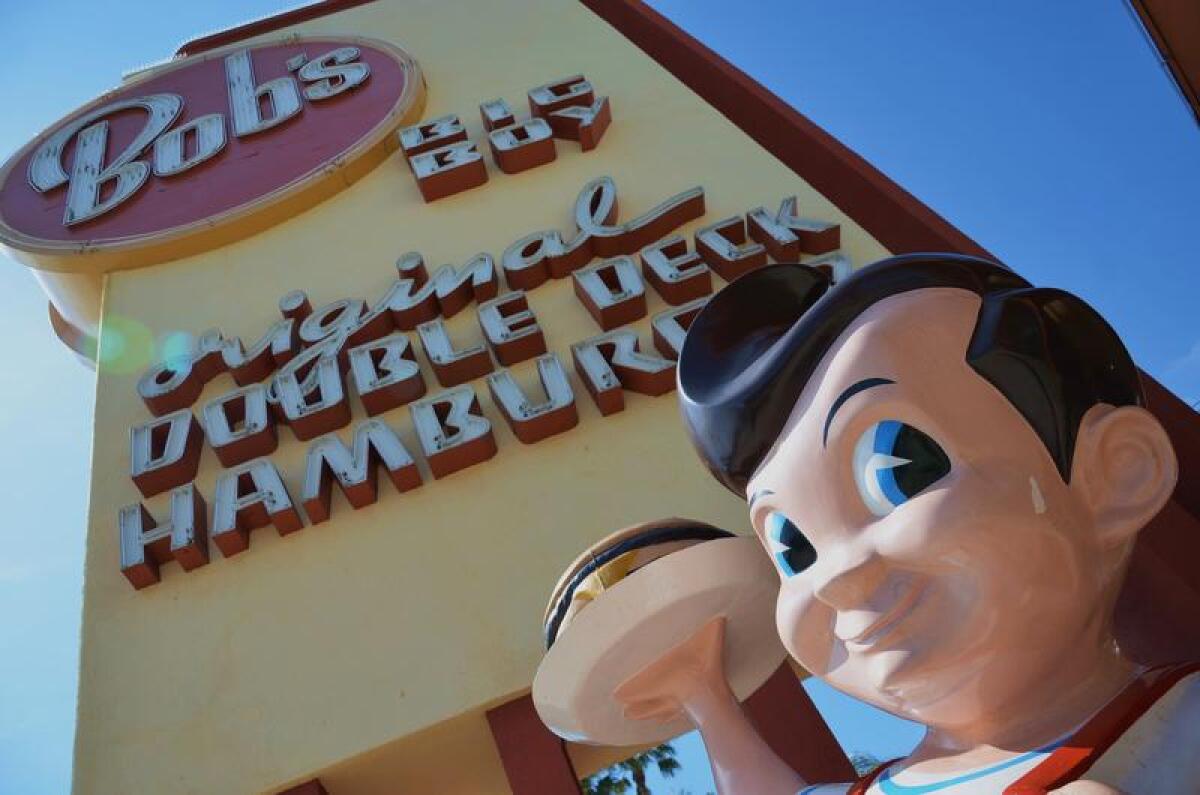
Why: It’s the oldest surviving Bob’s Big Boy. And no matter when you’re reading this, it’s open right now.
What: This Bob’s opened in 1949, a gleaming, swooping, loopily grinning example of Googie architecture. Architect Wayne McAllister did dozens of Western restaurants and hotels in the same spirit, most gone now.
But the building is just part of the fun. On Fridays (4 p.m. to 10 p.m.), its parking lot fills with classic-car lovers and their vehicles, offering a great throwback view of California car culture.
As for the food, let’s just say this: David Lynch, the “Twin Peaks” director and all-around eccentric character, maintains that he once ate lunch there at 2:30 p.m. every day for seven years straight. Why? The chocolate milkshakes, which they whip up and serve in a stainless steel cup.
Where: 4211 Riverside Drive, Burbank, 10 miles northwest of downtown L.A.
How much: The milkshakes cost $4.69. A Big Boy burger combo costs $9.79.
Info: Bob’s Big Boy
Give thanks for oak and grape at the Hitching Post II in Santa Barbara wine country
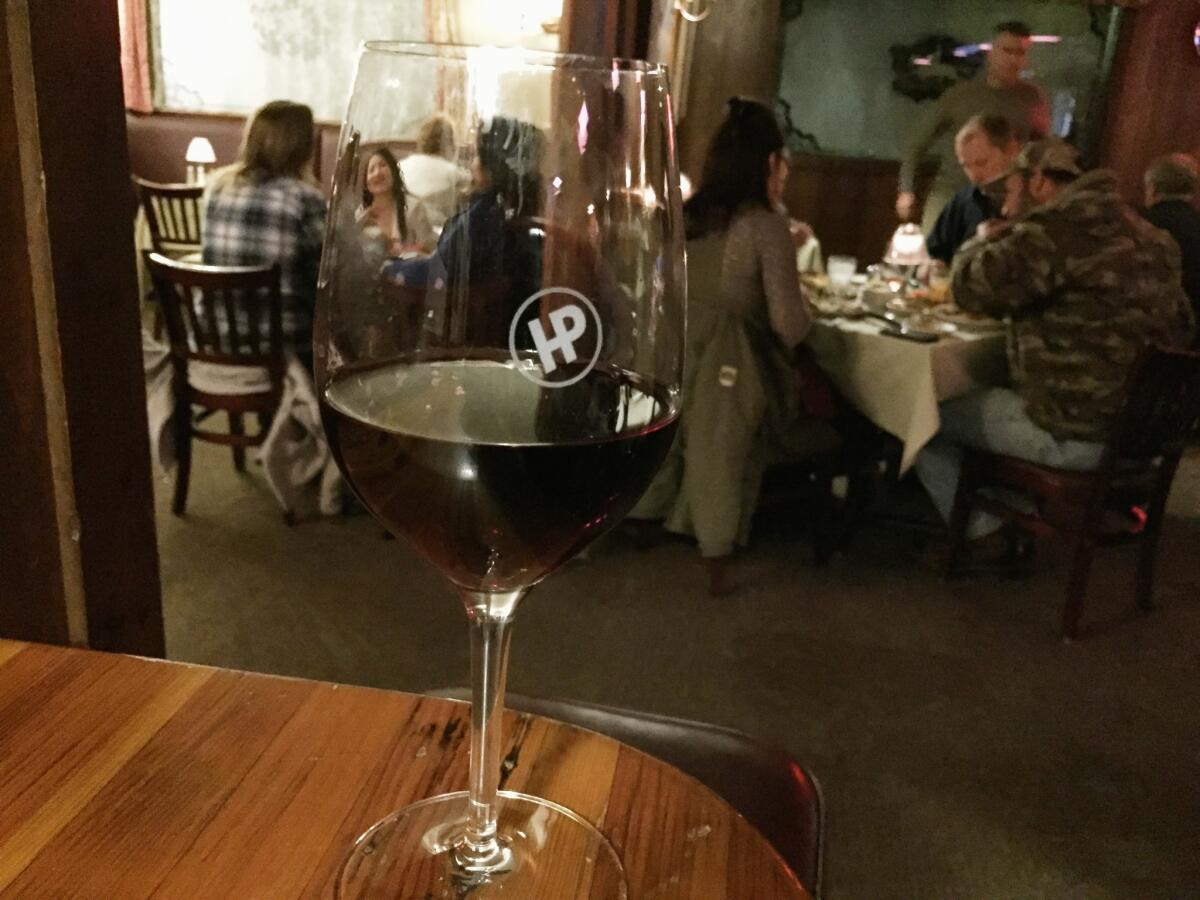
Why: There’s no better place to plot your Santa Barbara wine country adventure and -- if you’re a carnivore -- sample steaks cooked Santa Maria style, over oak.
What: If you’ve seen the 2004 movie “Sideways,” you might recognize this spot, a Buellton fixture since 1986. Besides a formidable list of local wines, the Hitching Post II features a long list of steaks, cooking according to Ostini family custom.
And outside, sprinkled between the horse farms and country-gentleman estates, more than 100 wineries and tasting rooms await. The region’s wine boosters have organized nine routes for tasting that include Solvang, Buellton, Lompoc, Santa Ynez, Santa Maria, Los Olivos, Foxen Canyon and the Santa Rita Hills.
As for the first Hitching Post -- yes, it endures, run by another Ostini brother, beloved for its steaks since 1952. It’s in the hamlet of Casmalia just outside Vandenberg Air Force Base.
Where: 406 E. Highway 246, Buellton, Santa Barbara County, 138 miles northwest of downtown L.A.
How much: Hitching Post II’s main dishes typically run $26-$59.
Tap toes and cut a rug at Buck Owens’ Crystal Palace in Bakersfield
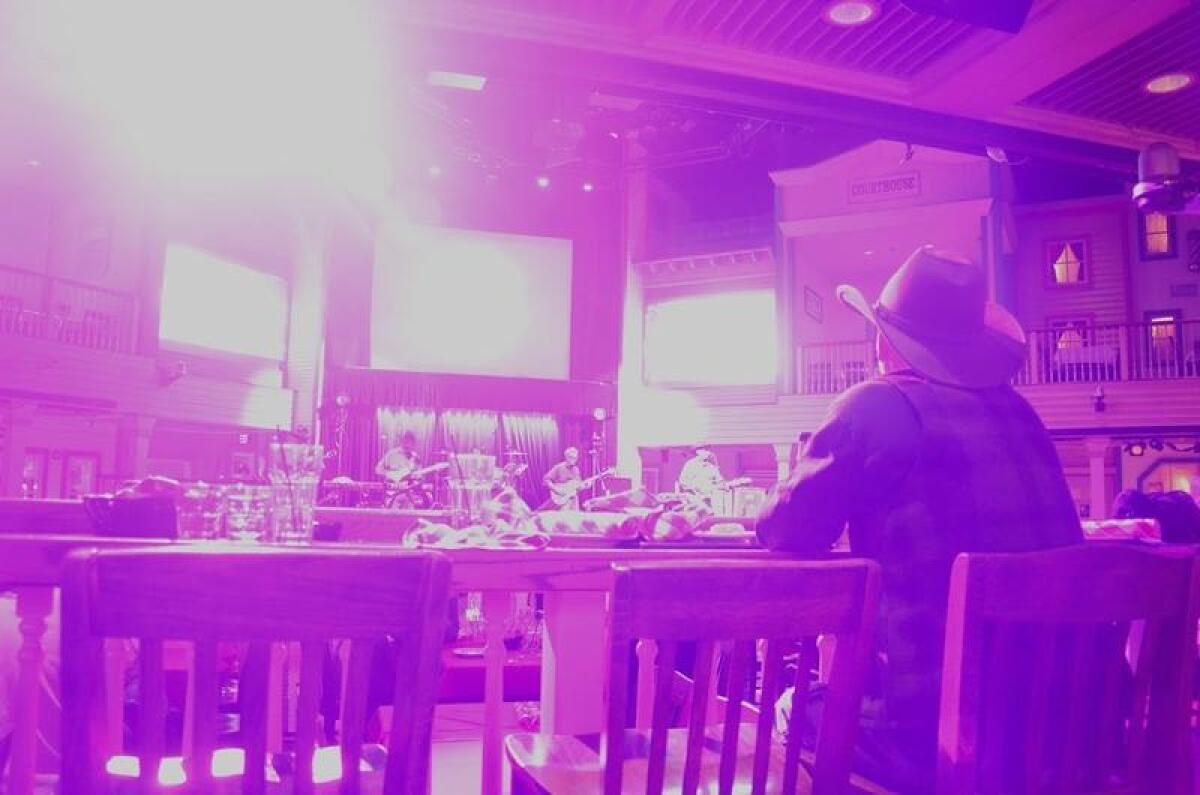
Why: Not only does this place feature both kinds of music (country and western), it reminds the world how much the gritty, twangy Bakersfield sound has contributed to country music.
What: Buck Owens, who scored more than a dozen hit songs in the 1960s and co-starred on TV’s “Hee Haw” for 17 years, opened this place in the 1990s as a concert venue, theater, museum, bar and restaurant.
It’s had ups and downs since then -- Owens died in 2006 -- but it endures as a freeway-friendly destination (don’t miss the big, bold BAKERSFIELD sign over Sillect Avenue) for country diners and drinkers who don’t want too much honky-tonk grit. Its Wild West-dinner-theater design includes a balcony level, dance floor and live music most nights. Cowboy hats and boots abound.
Buck Owens memorabilia lines the halls. Willie Nelson was on the schedule for three nights in February. (If you’re seeking a Bakersfield honky-tonk with longer, grittier history, Trout’s dates to the 1930s.)
The night I stopped in, one of the palace’s regular local bands, Stampede, asked for requests. Somebody hollered “Merle!” meaning a song by Merle Haggard, the hometown hero who died in 2016.
“Which one?” one of the guitarists hollered back. “We know every one he recorded!”
Where: 2800 Buck Owens Blvd., Bakersfield, 111 miles northwest of downtown L.A.
How much: Concert prices and cover charges vary. On many weekday nights, there’s no cover. Main dishes $11-$35.
Info: Buck Owens’ Crystal Palace.
Bow to the Lone Cypress and bike 17-Mile Drive at Pebble Beach
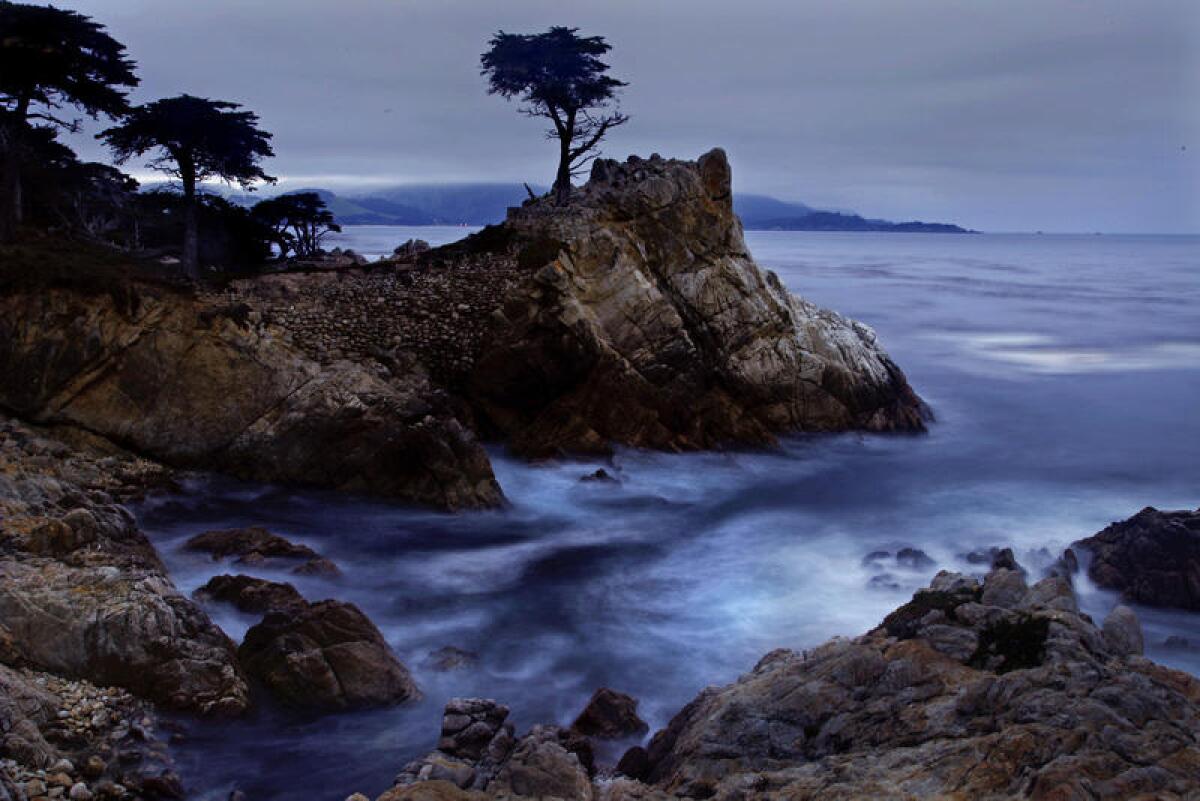
Why: Land and sea meet splendidly here, with jutting rocks, hanging fog, shrieking gulls and sometimes backstroking sea otters.
What: The 17-Mile Drive at Pebble Beach has been a tourist attraction since the 1880s. The drawback has always been that it’s a private road, so you have to pay $10 to drive it. And motorcycles are banned entirely. But wait.
Pebble Beach management allows bicyclists to ride the same route at no cost. And so, astride a rental from Bay Bikes or Adventures by the Sea by the aquarium in Monterey, you’ll glide past sights including the Pebble Beach golf course; plenty of tide pools; perhaps some deer; and the Lone Cypress, longtime icon of the resort. The tree has lasted at least 120 years with a sea-lashed rocky outcropping as its pedestal. It even has its own parking area and viewing platform.
But by now you may be hungry. The Pebble Beach Market, along the drive near the Chevron station, has sandwiches for a fraction of what the resort’s proper restaurants charge.
Where: 17-Mile Drive, Pebble Beach, Monterey County, 331 miles northwest of downtown L.A.
How much: Access is free. Bike rentals cost $9-$20 hourly. It’s about $12 for a ham sandwich at the Pebble Beach Market.
Tune in and turn on (no need to drop out) at the UC Santa Cruz Grateful Dead Archive
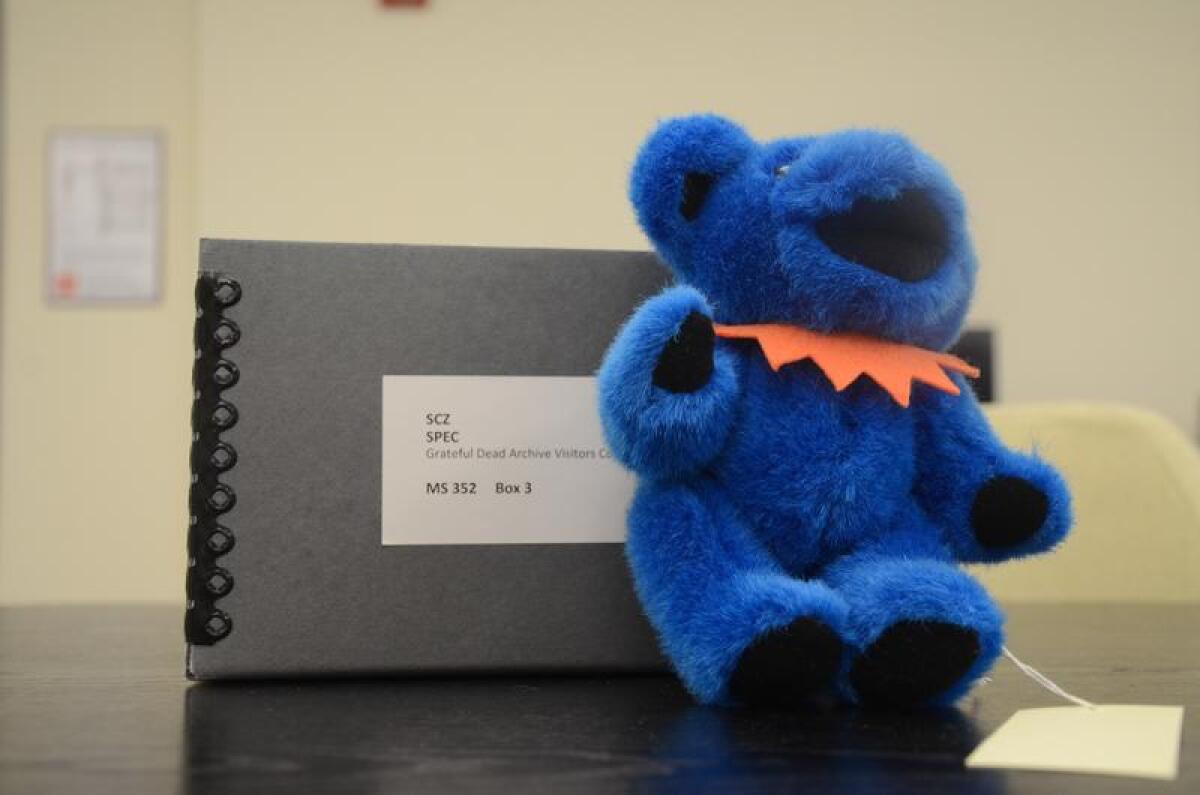
Why: In 2008, this quintessential California hippie band put its history in the hands of UC Santa Cruz’s McHenry Library, and the public is invited to look and listen.
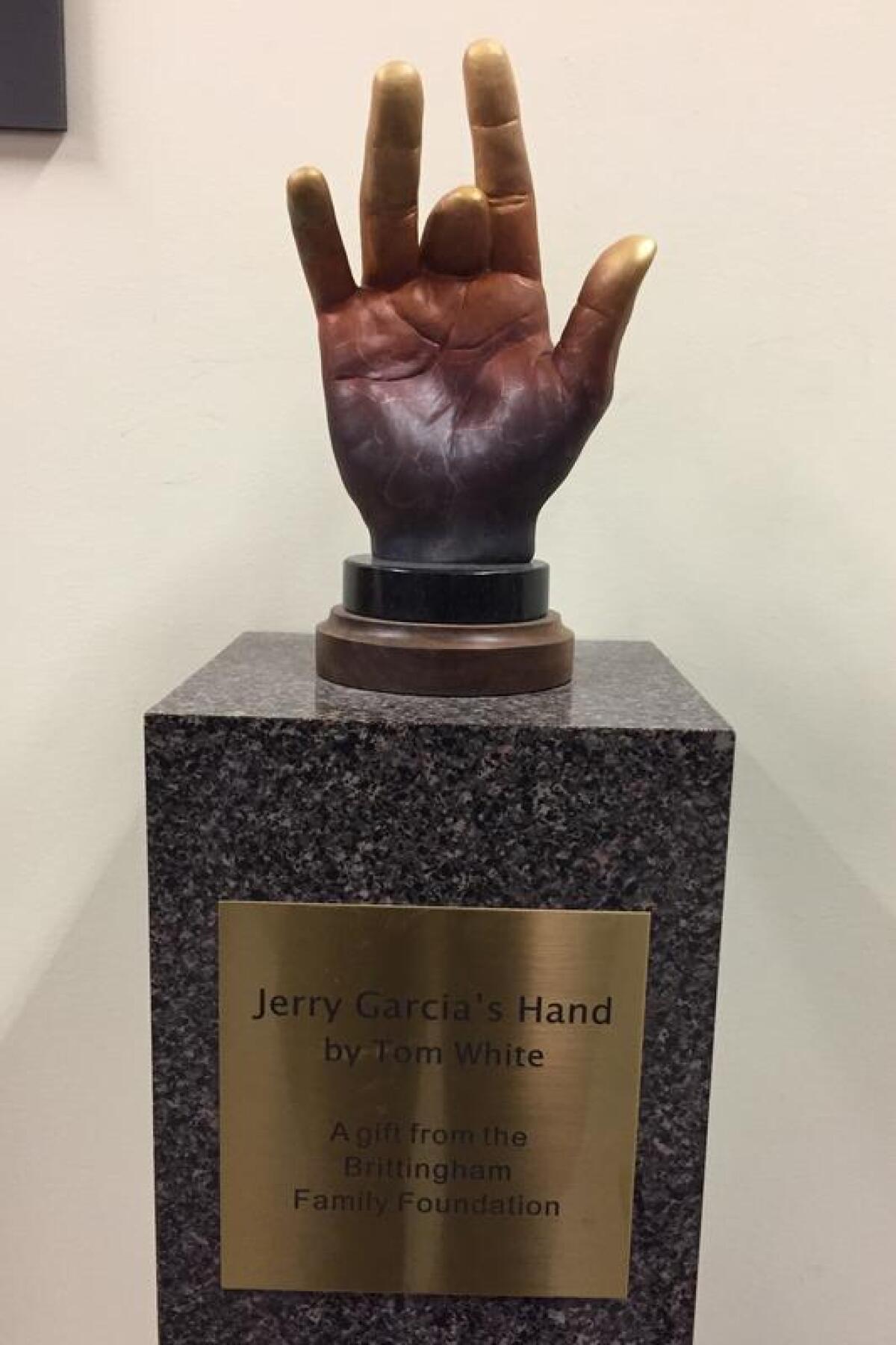
What: The Grateful Dead Archive, also known as Dead Central, begins with an exhibition room, which in January featured scores of photos from the band’s early days in the mid-’60s and a set of life-sized marionettes that starred in the band’s first music video, “Touch of Grey” (1987). Don’t miss the sculpture of the late guitarist Jerry Garcia’s right hand, which is famously missing a finger.
Then head upstairs to the library’s Special Collections department, where more Dead treasures (including a tie-dyed T-shirt and a plush dancing bear) take up an estimated 500 linear feet of shelf space.
The archive’s digital music collection — more than 10,000 concert recordings — is available to anyone online, but because of rights issues, librarians say, many recordings can be heard in full only if you’re on campus. (Allow me to recommend the Oct. 6, 1984, show at the Richmond Coliseum, especially “Fire on the Mountain.”)
Anyway, the librarians will let you look at much of their collection. My favorite document was the contract from a 1980 gig in East Troy, Wis., which gave the Dead $50,000 plus a share of the gross receipts.
Be sure to leave enough time to wander among the campus redwoods, and keep an eye out for deer and, underfoot, the school’s notorious banana slugs.
Where: 1156 High St., Santa Cruz, 342 miles northwest of downtown L.A.
How much: Free. But if you get a parking ticket in the lot outside McHenry Library, that’ll be $50.
Info: Dead Central
Slurp soup or sleep cheap at Pea Soup Andersen’s in Buellton
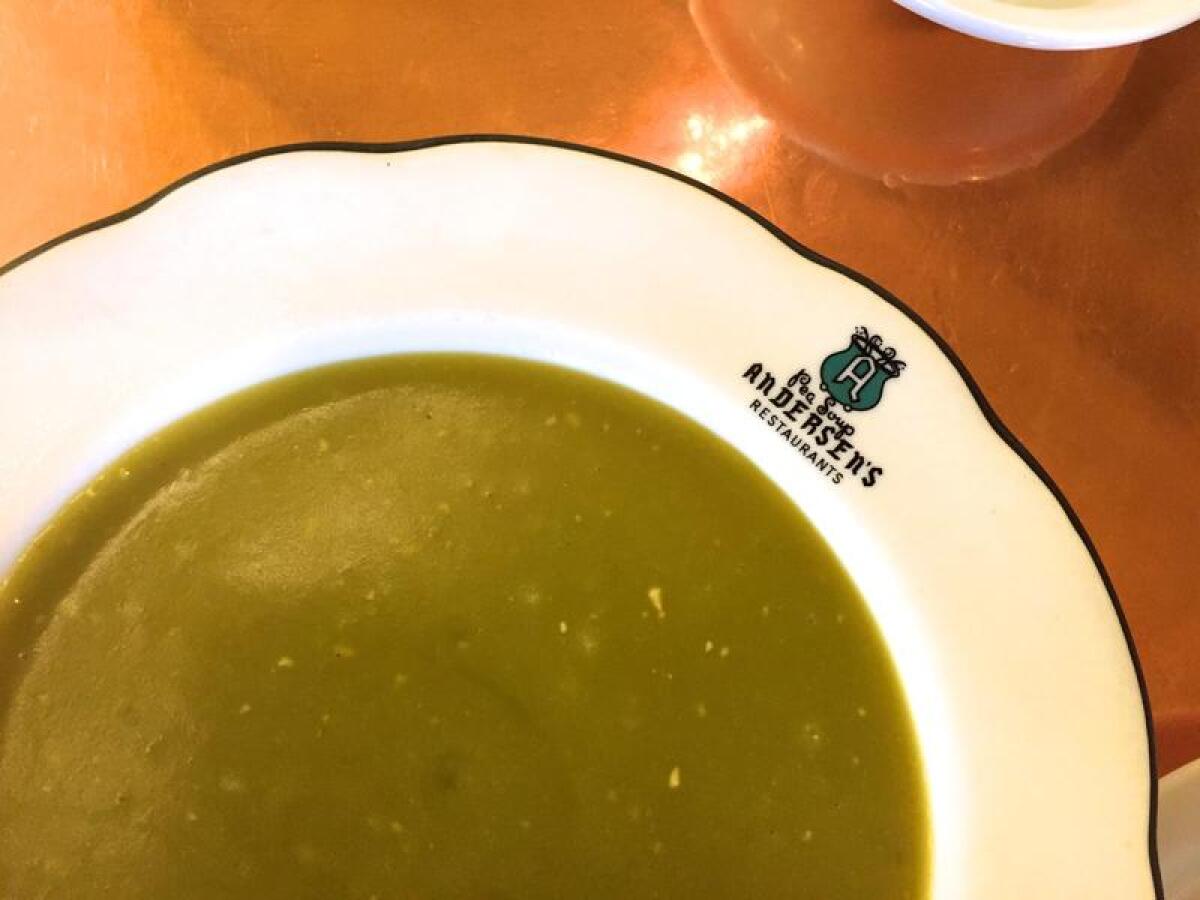
Why: Some people come for the soup because they had it as kids 50 years ago. But you don’t have to love the soup. Come, irony-loving millennials, for the classic kitschiness of it all. Or come, my fellow skinflints of all ages, for the adjacent inn’s room rates starting at just $71 a night in the heart of pricey Santa Barbara wine country. In nearby downtown Los Olivos, you could probably spend that much on a bottle opener.
What: As California roadside attractions go, Andersen’s Pea Soup is a beloved senior citizen. It opened in 1924. Beyond its original Buellton location, it has another (with a windmill) off Interstate 5 on State Route 33 at Santa Nella, and once there were restaurants in Carlsbad and Mammoth too.
The key elements here are the soup (waitress Tina Perez estimates 400 gallons are served on a busy day); the shiny copper-topped counters; the kid-oriented gift shop; and of course Hap-pea and Pea-wee, the chisel-and-mallet-wielding cartoon pea-splitters that personify the place.
Just outside the entrance, your children will demand that you pose for a photo with your faces in cutouts above their bodies. Just say yes.
The 97-room inn (whose ownership and website are separate) isn’t glamorous, but on my last stay, it was tidy and convenient, with a swimming pool and a putting green.
Where: 376 Avenue of the Flags, Buellton, 138 miles northwest of downtown L.A.
How much: A bowl of spilt-pea soup (gluten-free) costs $6.75. Rooms at the inn typically start at $71, plus tax.
Info: Pea Soup Andersen’s restaurant; Pea Soup Andersen’s Inn
Nosh, nibble and sniff at San Francisco’s Ferry Building
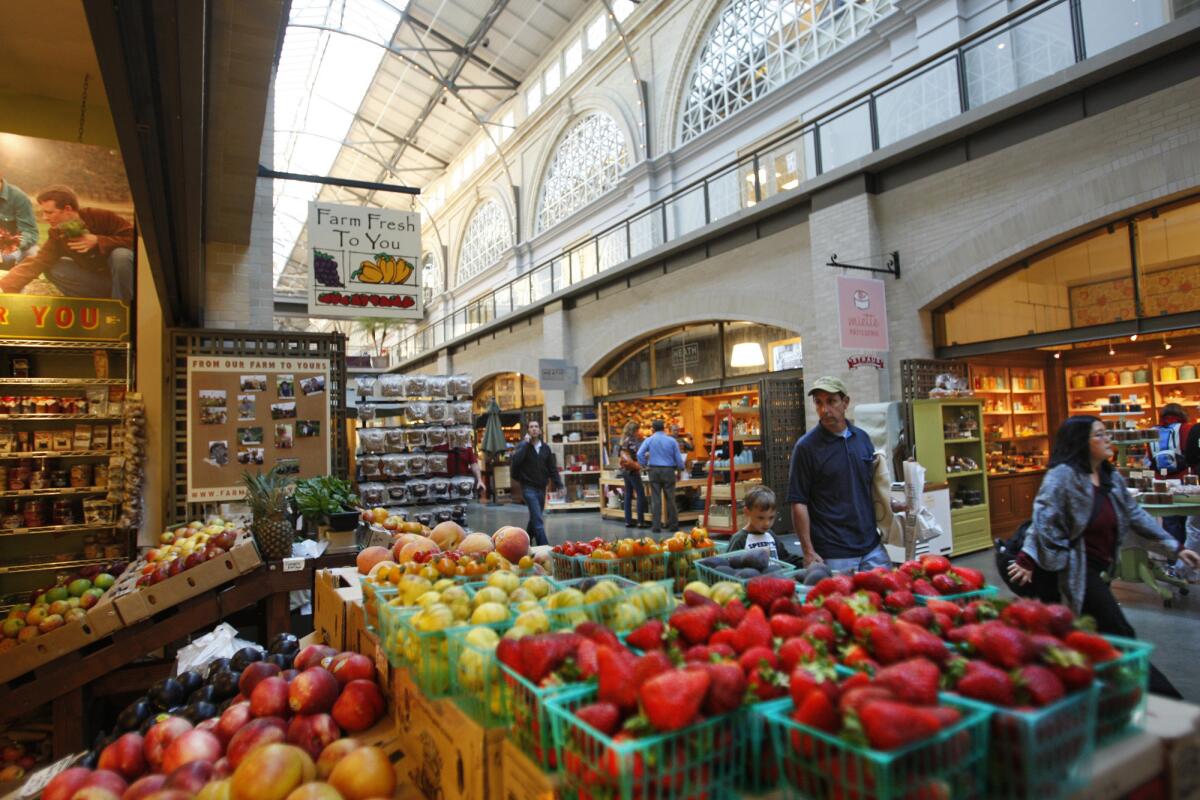
Why: In a food-obsessed city, no venue is foodier than this. Nice ocean breezes out back too.
What: From 1898 until the Bay Bridge connected San Francisco to Oakland in the 1930s, San Francisco’s Ferry Building was a twice-daily stop for every trans-bay commuter. Then things got slow for 60 or 70 years.
But in 2003, the building had grown into a new life as a foodie haven, its long halls full of artisan shops and restaurants. Don’t expect low prices, but do expect good quality and variety.
On Tuesdays, Thursdays and Saturdays, the top-notch Ferry Plaza Farmers Market opens up outside.
Where: 1 Ferry Building, San Francisco, 387 miles northwest of downtown L.A.
How much: It’s free to look. And sniff. But with shipping, those organic Moro blood oranges from the Frog Hollow Farm stand might run you $45 for 3 pounds.
Swirl and sip wine in a Paso Robles tasting room
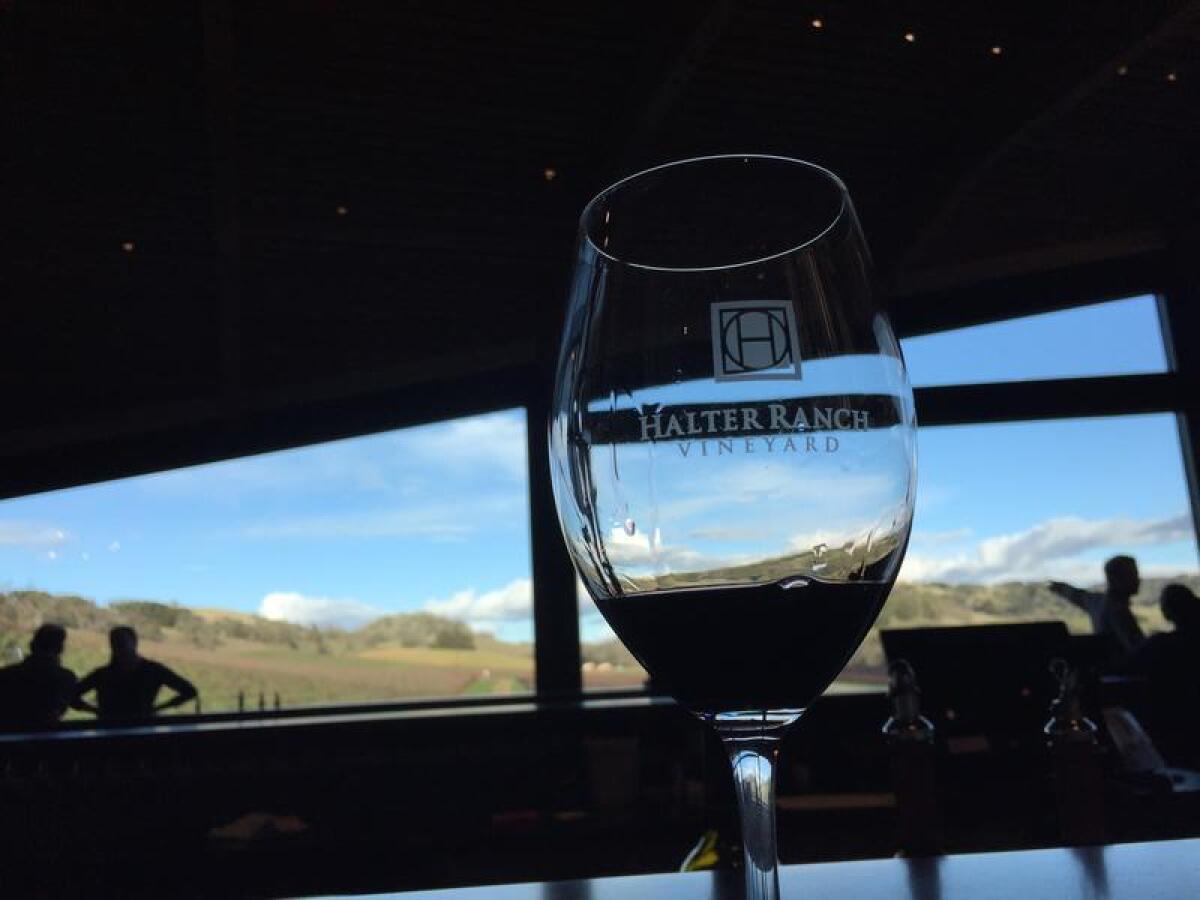
Why: The rolling hills around Paso Robles, once known for cattle, grain and almonds, are all about assiduously pampered grapes now, and the reputation of these vineyards and wineries keeps growing.
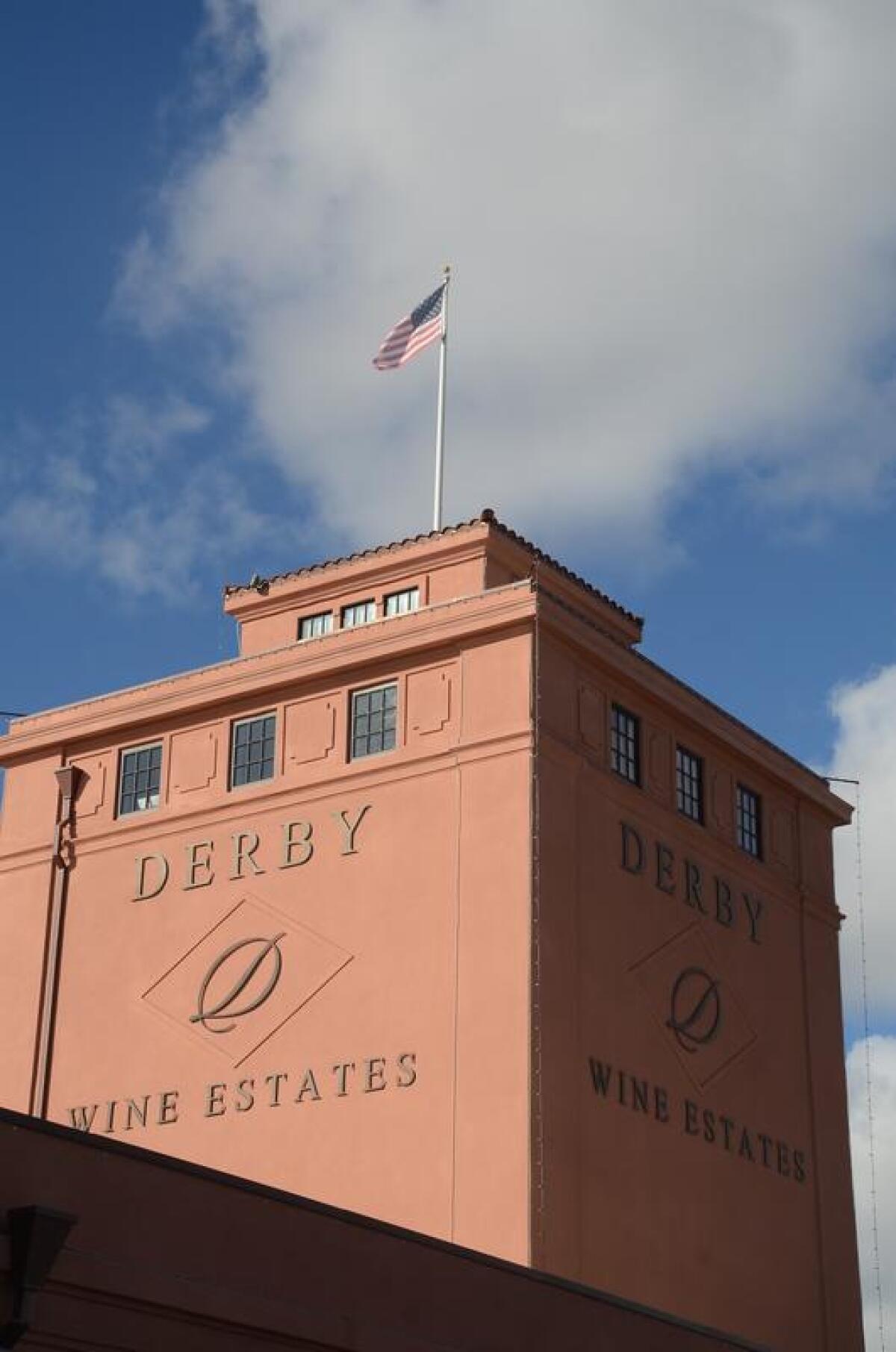
What: More than 200 wineries dot those hills, so you could spend days tasting. (Preferably not August days, which often approach 100 degrees.) The Paso Robles viticultural area is known for Bordeaux, Rhone and Zinfandel varietals.
If you do a weekend, two good tasting-room bets are Halter Ranch Vineyard (20 minutes from downtown with a sleek, spacious tasting room that opened in 2016); and Derby Wine Estates, which opened in 2014 in downtown’s historic and long-idle Almond Growers warehouse building (a.k.a. the Farmers’ Alliance Building), built in 1922.
If history is your bent, you can add a little more to the occasion by bedding down at the Paso Robles Inn (which dates to 1891). The property has changed greatly over the years, but many rooms are fed by the same hot springs that drew repeat visits from famed Polish pianist, composer and politician Ignacy Paderewski in the early 20th century.
Where: Get your bearing in grassy City Park, 11th and Park streets, surrounded by downtown shops, restaurants and the Paso Robles Inn, 213 miles northwest of downtown L.A.
How much: At both Derby and Halter Ranch, tasting is $10, which is waived if you buy a bottle or more of wine. Rooms at the Paso Robles Inn usually fetch $149 and up.
Pick Apples -- and shirts, mugs and merch you can’t get elsewhere -- in Cupertino
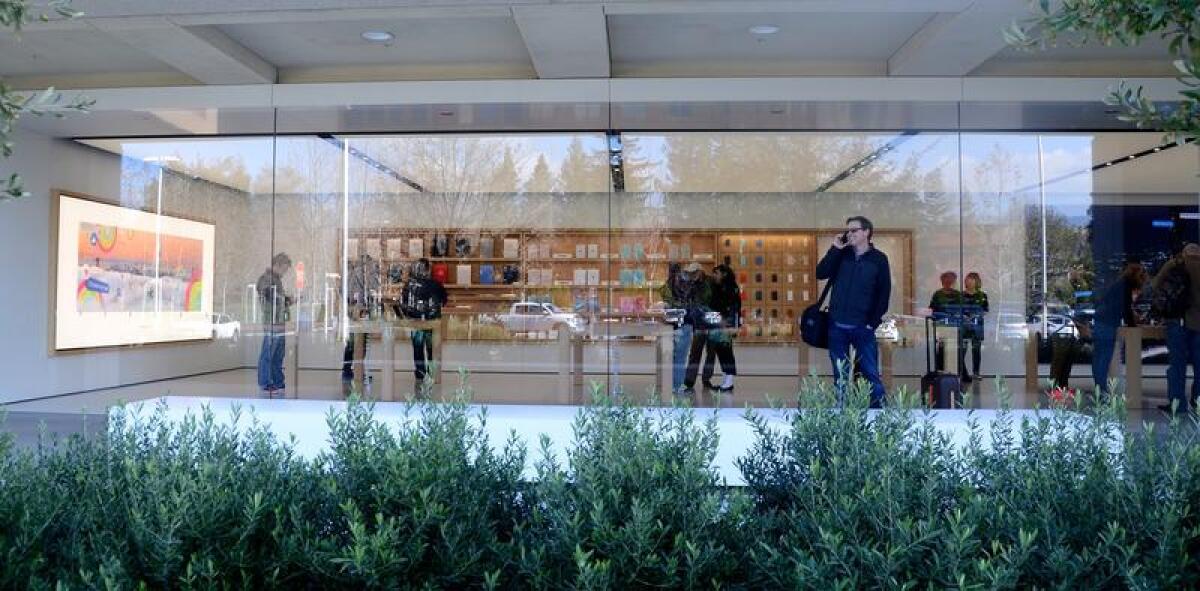
Why: The shop at Apple’s corporate headquarters carries goods you don’t see in every other Apple store. Your geeky friends may go green with envy.
What: Apple headquarters in Cupertino -- an oval-shaped constellation of buildings known as Infinite Loop -- is closed to the public, except for its retail shop. But that shop carries a special reward for the free-spending, brand-loving faithful: Apple-branded shirts, mugs, pens and thermoses that other Apple stores don’t carry. The style: sleek and minimalist, of course.
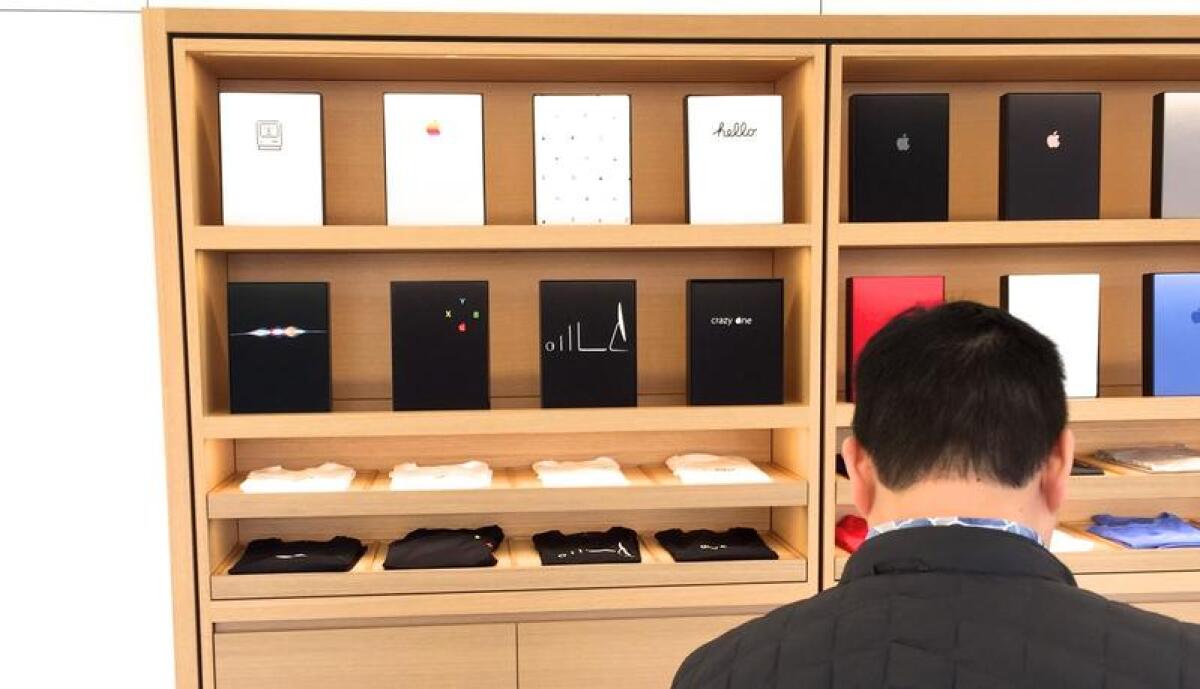
This store has continued to stock these items since a redesign in 2015 that substantially slimmed down its inventory. There’s no word on what will happen when the company opens its new circular Campus 2, a mile east. It’s due for completion in 2017 and is expected to complement the existing campus at 1 Infinite Loop.
Where: 1 Infinite Loop, Cupertino, 349 miles northwest of downtown L.A. Be warned: Parking in the area is rotten. You might want to head for the residential neighborhood around North De Anza Boulevard and Lazaneo Drive. Ditch your car there, grab a snack at the Donut Wheel (cash only) and walk several blocks to the shop.
How much: Like a lot of Apple goods, many of these items are made in China and sold at premium prices. Most of the T-shirts cost $35; mugs, $25; pens, $35. The best bargain, in fact, might be the stylish, 10-cent paper bag you carry your purchase in.
Info: Apple Store, Infinite Loop
Gobble aebleskiver in the Danish hamlet of Solvang
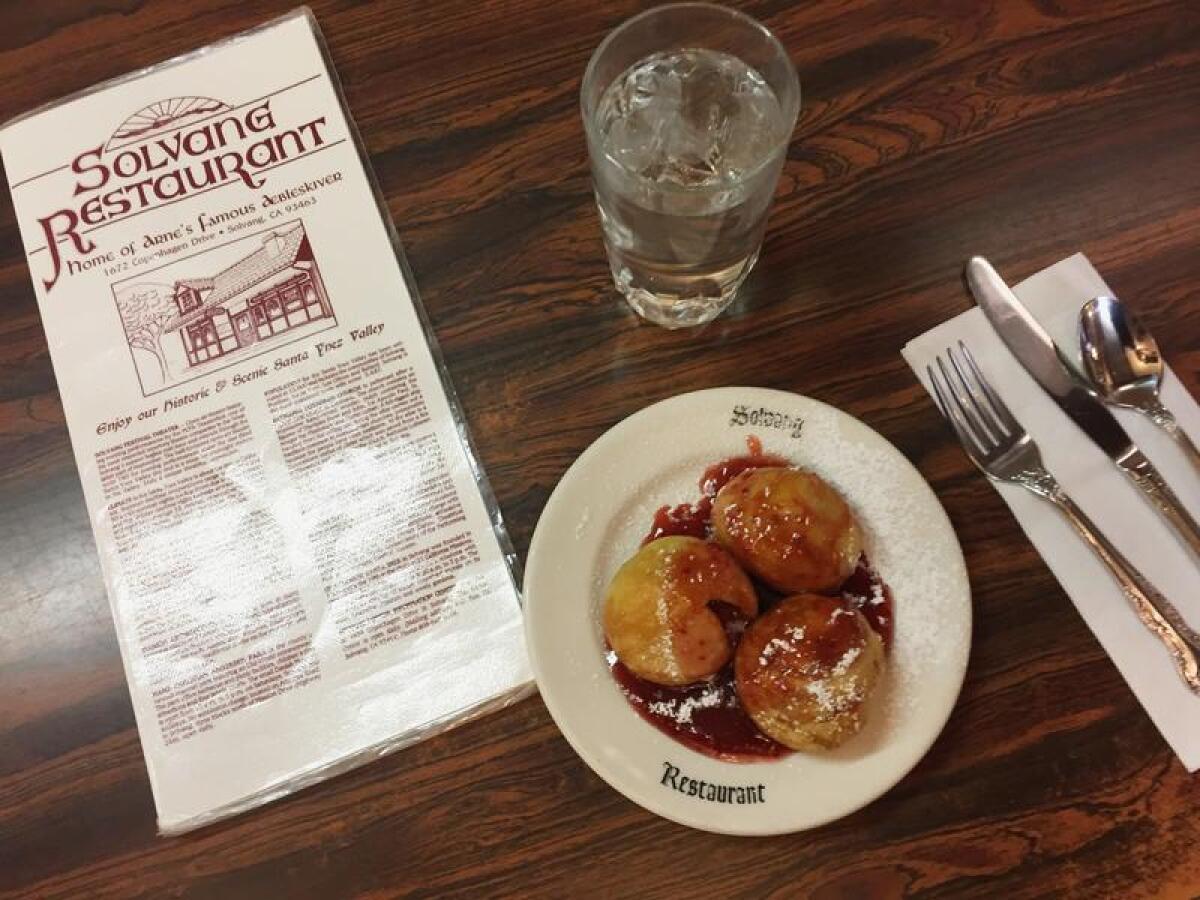
Why: A tennis-ball size dollop of dough. Some raspberry jam. And outside, a dusting of powdered sugar. This is no mere collection of calories. It’s cultural.
What: Arne’s Aebleskiver, the dessert described above, is a big draw at the Solvang Restaurant (and elsewhere in Solvang) because it’s tasty and because it’s an emblem of Solvang’s enduring Danish history.
This dates to 1911, when immigrant Danish educators put down stakes. Over time, the theme proved a big lure for tourists.
A century later, the tourist-friendly town is full of windmills and design homages to Denmark. Alongside Danish-named stalwarts such as the Atterdag, Hamlet and King Frederik inns are an increasing number of retailers who lean toward wine-country style and several enterprises owned by the increasingly prosperous Santa Ynez Band of Chumash Indians, whose casino is about three miles east of town.
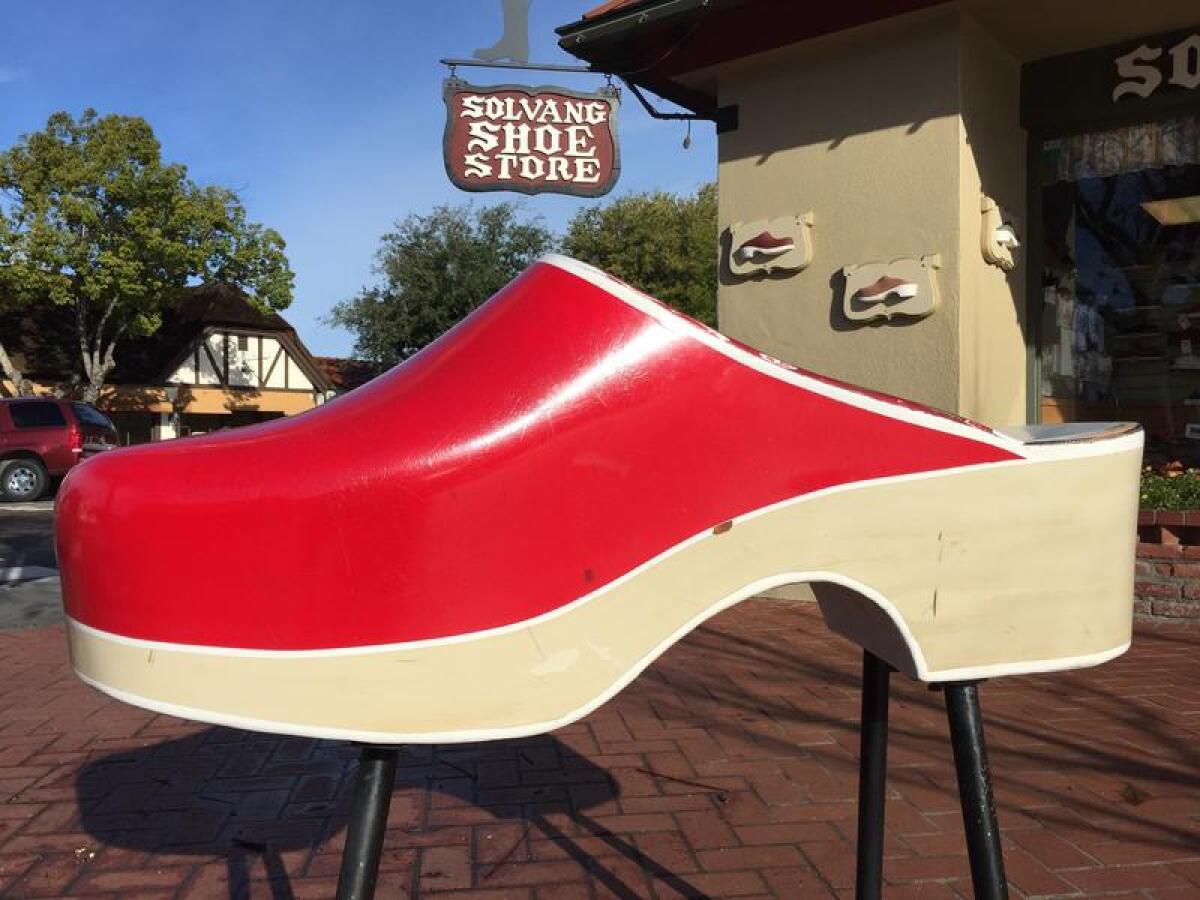
Don’t miss the big red clog in front of the Solvang Shoe Store (Copenhagen Drive and First Street), and while you’re downing that dessert, scope out the Danish sayings emblazoned on the beams of the Solvang Restaurant.
By the way, the restaurant serves breakfast and lunch, no dinner. Also be advised that the Viking Burgers do not contain real Vikings.
Where: 1672 Copenhagen Drive, Solvang, 128 miles northwest of downtown L.A.
How much: At the Solvang Restaurant, aebleskiver goes for $4 for three balls. It’s a tad less if you order at the take-away window. And it’s $7 with ice cream.
Info: Solvang Restaurant
Juggle ones, zeros, hackers and heroes at the Computer History Museum in Mountain View
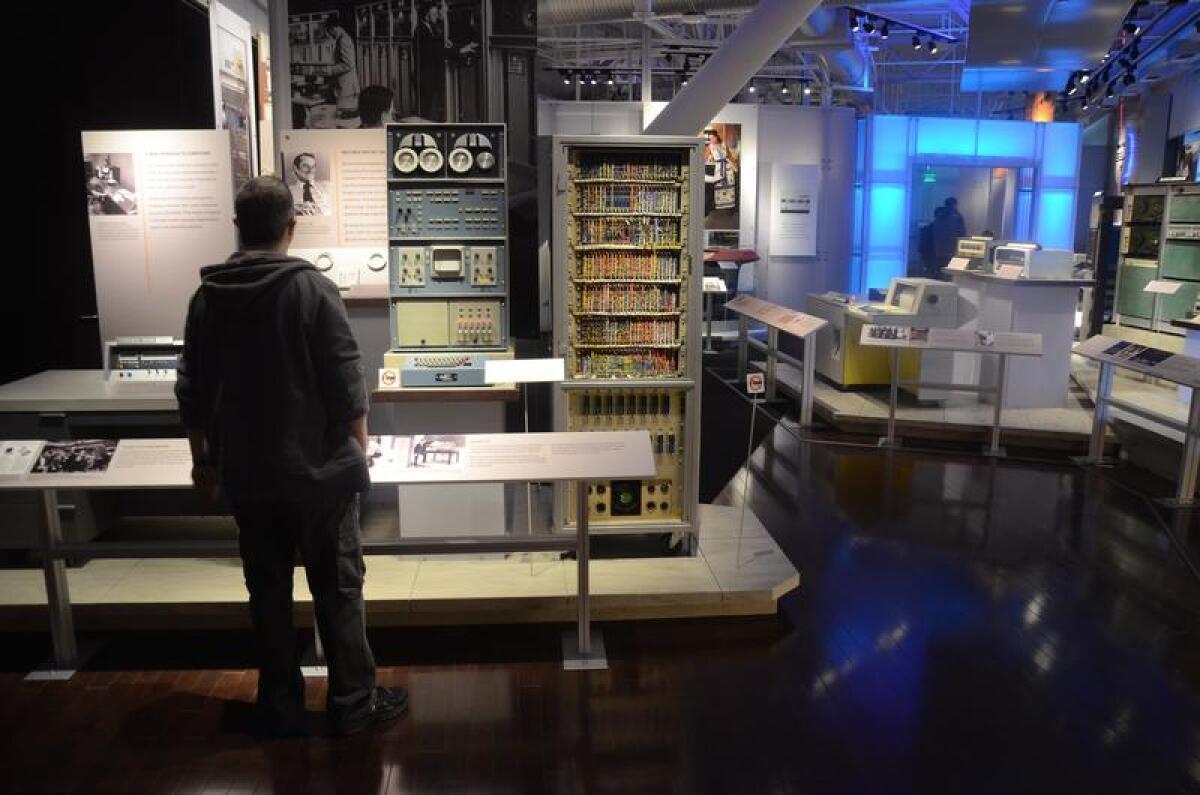
Why: If you’ve ever wondered if, how or why the computer has changed the face of civilization, this place will set you straight. It’ll also make clear the role of California, specifically Silicon Valley, in the revolution.
What: The Computer History Museum in Mountain View, opened since 1996, has a staggering collection of hardware. But what really makes the place valuable is the wide perspective and clear explanations it gives, so that somebody who has never written code can still grasp the broad outlines of computing history, from the abacus to the punch card (which computers once relied upon) to the silicon chip and the smartphone.
Along the way, you get insights into not only familiar characters such as Bill Gates (who started programming computers at 13) and Steve Jobs (who sold his VW van to fund one of his first ventures), but unfamiliar ones such as Charles Babbage and Ada Lovelace (who sparred over proto-computer designs in the 1830s).
You can also play Pong (designed in 1972) and see the album cover for “Switched-on Bach,” the 1968 debut record by Walter (later Wendy) Carlos that introduced the Moog synthesizer to millions of listeners.
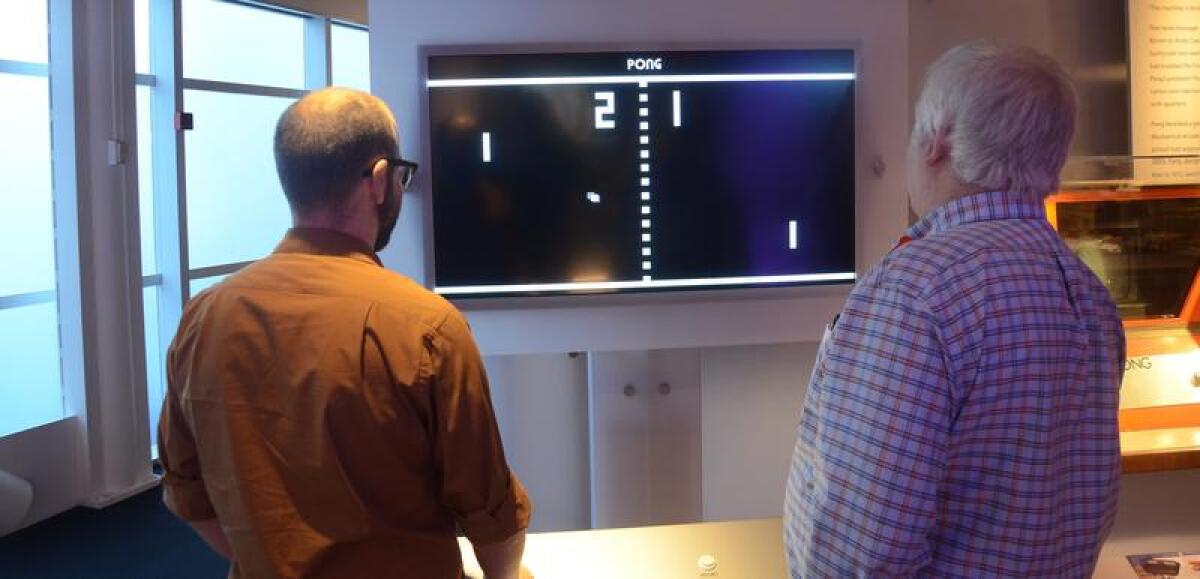
The museum, born in 1979 in Massachusetts, moved west in the 1990s and opened in this location in 2002. Current shows include “Revolution: The First 2,000 Years of Computing.”
(If you’re looking to entertain elementary school-age kids with hands-on exhibits that explore technology more generally, think about the Tech Museum in San Jose -- but bear in mind that its admission fees are usually a hefty $24 for adults and $19 for ages 3 to 17.)
Where: 1401 N. Shoreline Blvd., Mountain View, 351 miles northwest of downtown L.A.
How much: Adult admission, $17.50. Or for $30 there’s the Total Geek Experience (admission, tote bag, T-shirt and punch card set). Children 10 and younger are admitted free.
Info: Computer History Museum
Gorge on tri-tip and acoustic blues at a tavern in the mountains above Santa Barbara
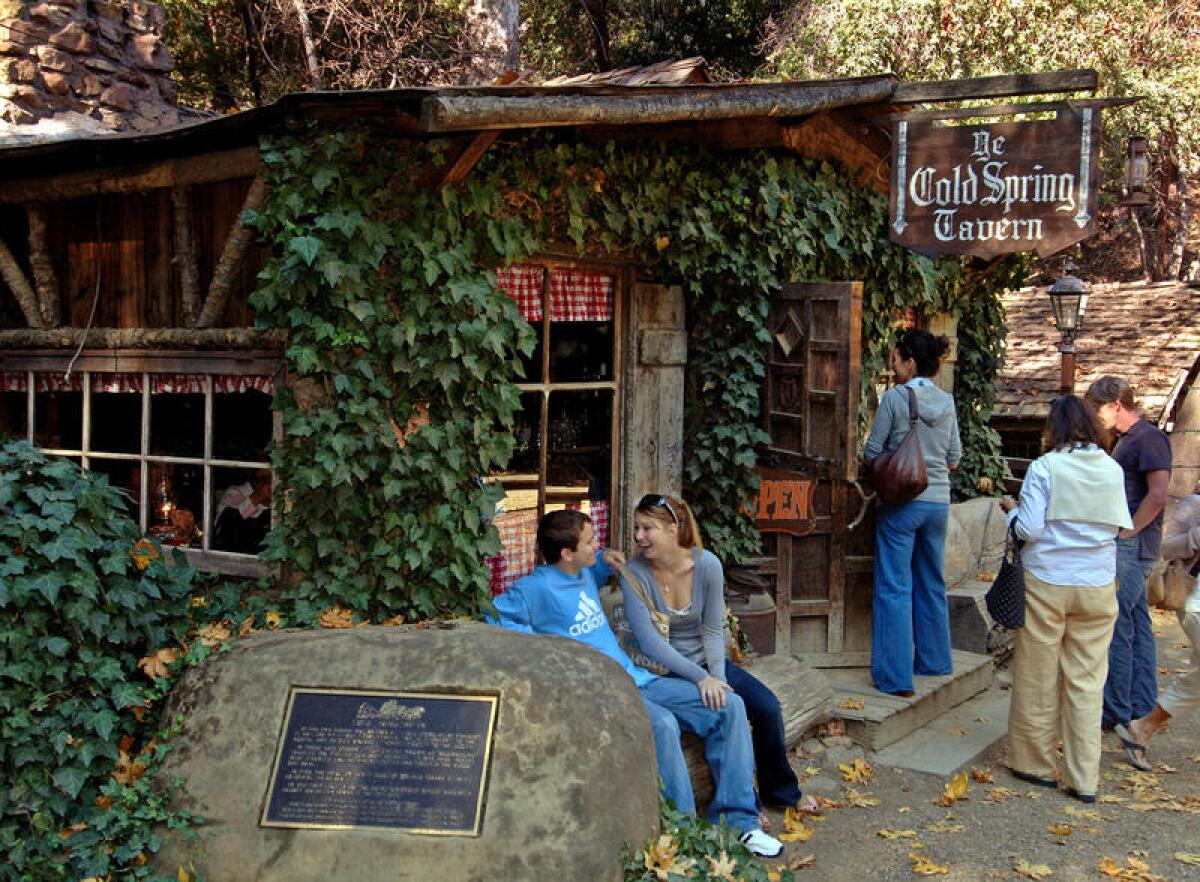
Why: Because they’re not making stagecoach stops like this anymore.
What: The Cold Spring Tavern is tucked along the roadside up on San Marcos Pass above Santa Barbara. This rustic joint has been uniting bikers and dressed-down upper-crusters for decades. The tavern serves breakfast, lunch and dinner, with live music and tri-tip on weekends and cheap chili during happy hour. Visit on a Saturday or Sunday. The earlier you arrive, the easier parking will be, and the sooner city life will recede.
Born as a stage stop in the 1880s and owned by the same family since the 1940s, the Cold Spring and its four fireplaces are half an hour’s drive from Santa Barbara. The fanciest part of the property is its dimly lighted restaurant interior (where game meats like buffalo, lamb, duck, rabbit and venison are specialties). The folksiest is the patio, where tri-tip sandwiches and beer are often found.
Most Sunday afternoons, the acoustic duo of Tom Ball and Kenny Sultan play the patio, as they have for two decades.
Where: 5995 Stagecoach Rd., Santa Barbara city and county, 109 miles northwest of downtown L.A..
How much: A tri-tip sandwich or burger for lunch costs $10.75 Dinner main dishes (chicken, duck, ribs, steak) cost about $25.
Info: Cold Spring Tavern
Ponder the paleo past in Little Petroglyph Canyon at China Lake
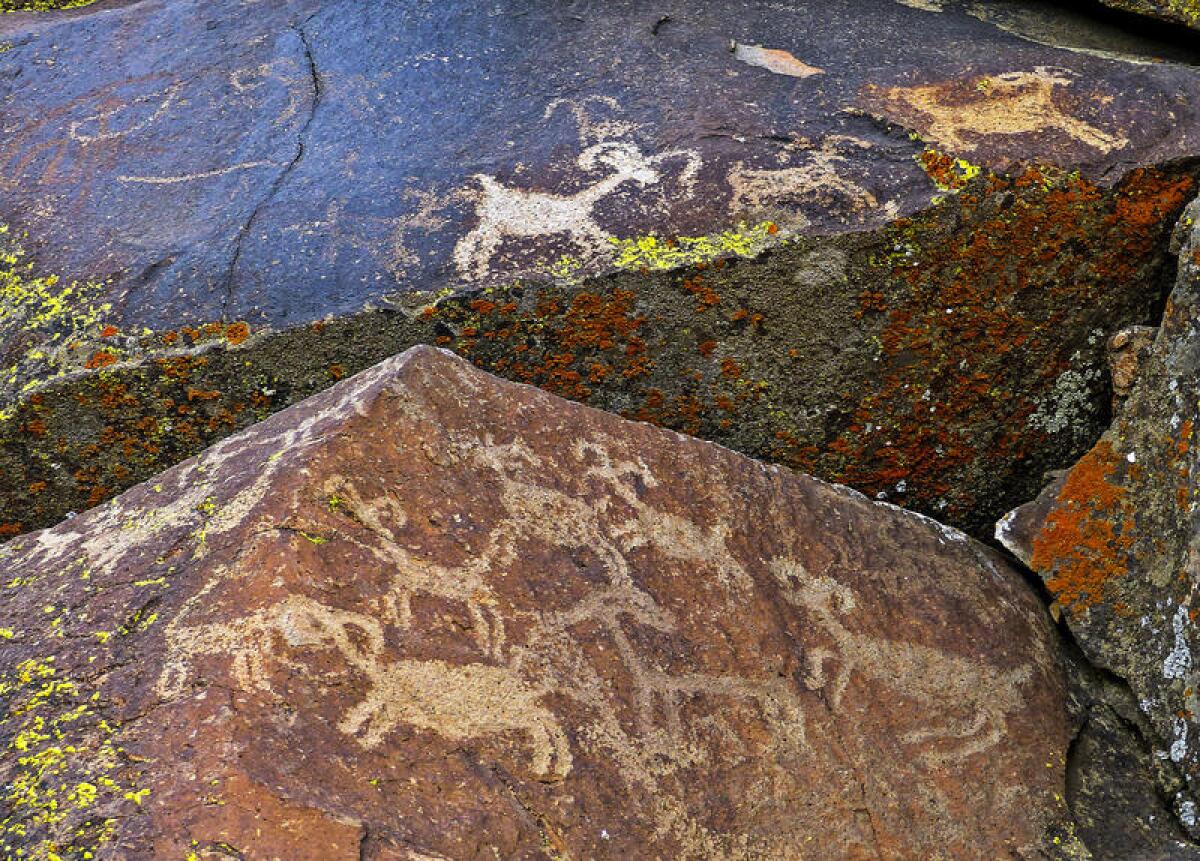
Why: Step back in California history a few thousand years in a desert canyon bursting with Paleolithic-era petroglyphs, and you may be a bit humbled.
What: Thousands of remarkably well-preserved etchings created by long-ago hunter-gatherers in Little Petroglyph Canyon (officially Renegade Canyon on the Naval Air Weapons Station at China Lake) are vividly on view.
Not far from the active naval base operations, vetted visitors can clamber down into the restricted canyon. Once your eyes adjust to the dark, you see that you’re face to face with stylized bighorn sheep, hunters with bows, artistic patterns and anthropomorphic designs carved all over the ancient basalt canvasses. Wow.
Dorothy, we’re not in the modern Mojave anymore.
Where: After some serious advance prep (application forms, fees, citizenship information, proper footwear, vehicle registration, etc.), you’ll meet your Navy-approved escorts at the Maturango Museum in Ridgecrest, 150 miles northeast of Los Angeles, bright and early on tour morning. Once last-minute details are settled, you head over to the front gates of the China Lake base for a final inspection (visitor and car) by the military.
Then you’ll caravan 45 miles through the base (no photos, no stopping) to the section of the Coso Rock Art National Historic Monument that’s open to the public.
Sign up with the Maturango Museum. Or arrange a tour directly with the base (procedures may vary): Contact [email protected] or call (760) 939-1683 at public affairs.
How much: For the Maturango tours,$55 for non-museum members. For Navy tours, prices vary.
Info: Maturango Museum
Pick up some horse sense at Clockers’ Corner in Santa Anita Park in Arcadia
Why: A morning mingling with horsemen at Clockers’ Corner at Santa Anita Park, the thoroughbred track near Los Angeles, is one of the area’s best under-the-radar sports experiences. Coffee and admission are free. So is the advice.
What: The historic track, set against the rosy San Gabriel Mountains, holds workouts year-round from dawn till 10 a.m. almost every day. The thoroughbreds will show off right in front of you.
Trainers and owners are approachable, and mostly eager to chat. Most of the action takes place between 7 a.m. and 10 a.m. On weekends, the free Seabiscuit Tour visits the stables, paddock gardens, jockeys room and carriage horses housed under the grandstands. The tours are at 8:30 a.m. and 9:45 a.m. Saturdays and Sundays. It all makes for a magical setting for anyone who loves the sight of great athletes in action.
Where: Arcadia, 18 miles from downtown L.A. (Enter Gate 8 off of Baldwin Avenue.)
How much: Free.
Info: Santa Anita Park, Call (626) 574-7223 to confirm the horse are running.
Eavesdrop on morning rehearsals at the Hollywood Bowl
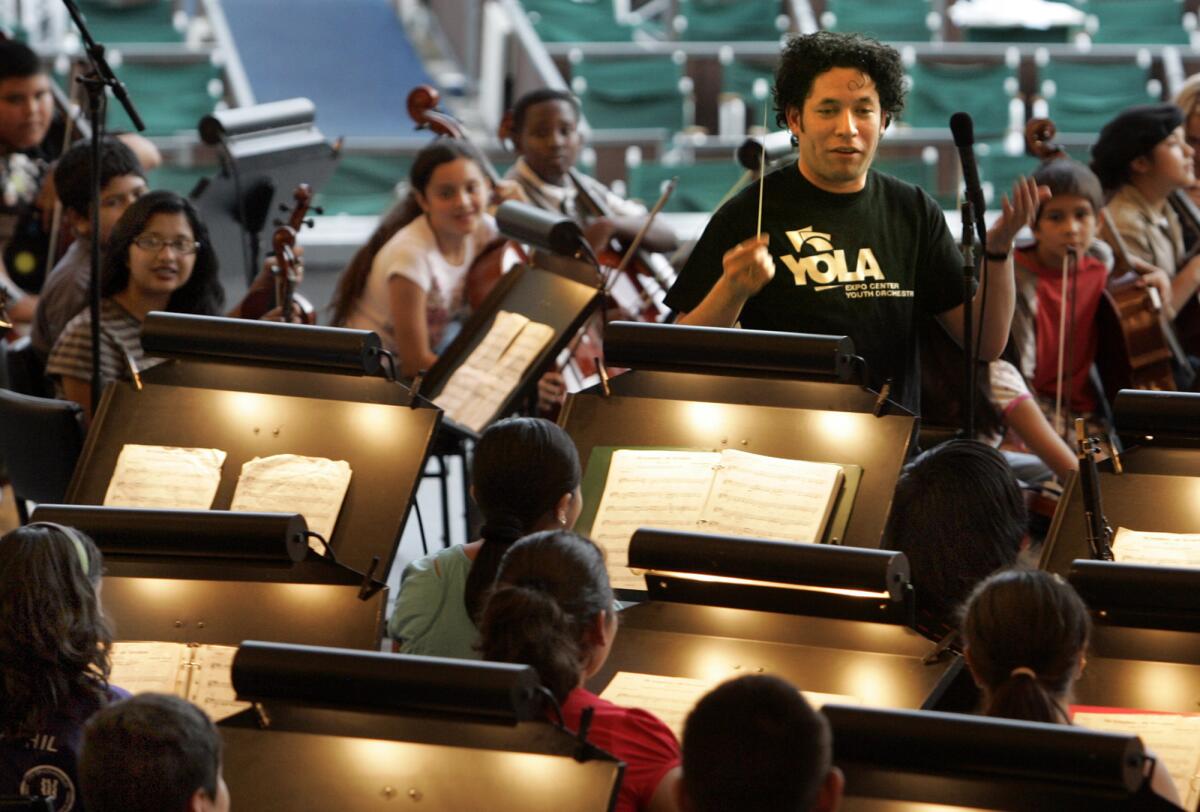
Why: Parking is free, and so are summer rehearsals for the L.A. Phil and other groups. After the Hollywood sign, the Bowl is probably L.A.’s greatest landmark, and this is a great way to see it in action.
The County of Los Angeles, which operates the Bowl, opens it to the public for summer Philharmonic rehearsals on Tuesdays and Thursdays. Rehearsals on other days are also open, but only at the discretion of the scheduled artist. The lineups are released on Mondays, and you can call in for schedules. The practices start at 9:30 a.m. and go to noon or later. After surfing, a morning spent listening to the city’s best musicians play Brahms might be the best free activity in L.A.
What: Rehearsals at the Hollywood Bowl.
Where: 2301 Highland Ave., just off the Hollywood Freeway, 8.6 miles north of downtown L.A.
How much: Free
Info: Hollywood Bowl, (323) 850-2000
Grab a slice of Americana, and pizza, at Balboa Fun Zone in Newport Beach
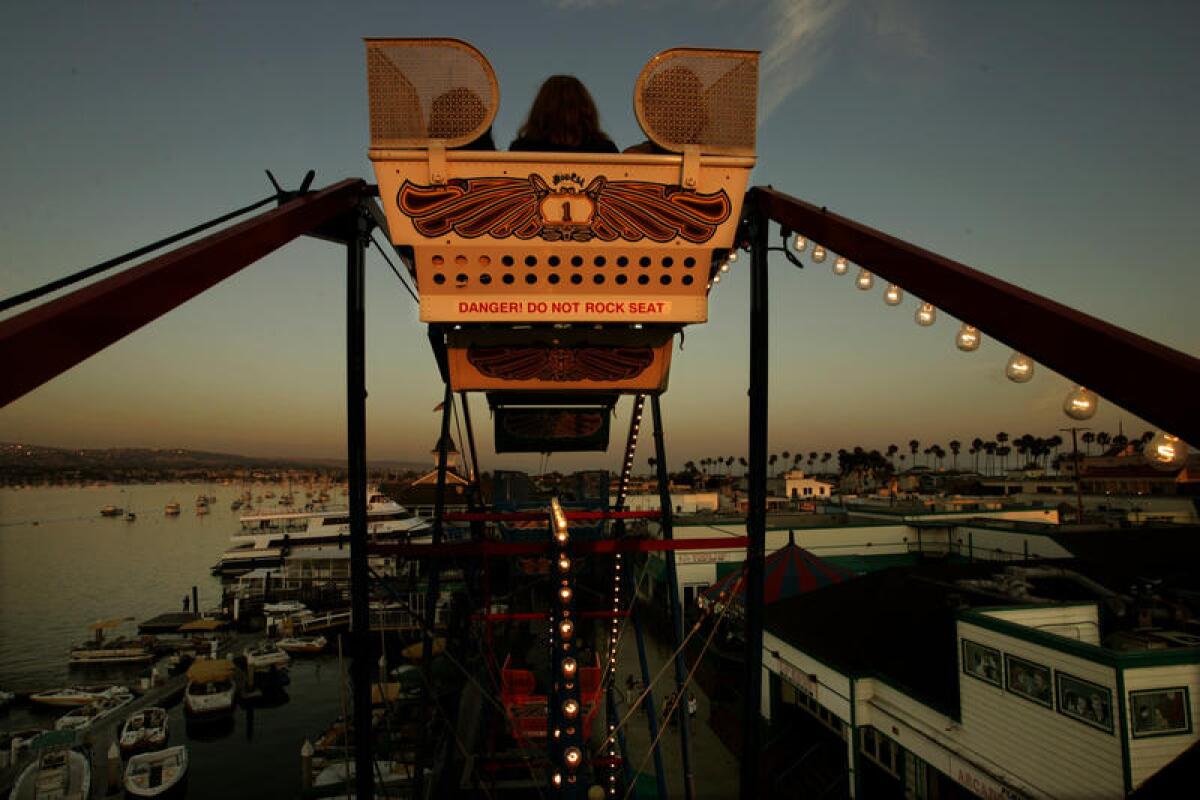
Why: Because it’s a bit of a time machine, a low-key throwback to the sorts of simple amusement parks that used to dot the California coast in the pre-Disney days. The Fun Zone has been a part of SoCal summers for 75 years and has stayed charming and affordable through the decades.
What: The Fun Zone is a great place to spend a half day, or use as a launch point for Catalina trips, whale watching or harbor cruises. A ride on the vintage Ferris wheel goes forever, it seems, and offers stunning views of the island and peninsula. There are other more contemporary rides that will appeal to teens and young adults, and a simple merry-go-round for youngsters.
Arcades, shops and county fair food are seemingly everywhere, including New York-style pizza and some pretty respectable gyros, at New York Pizza, on the corner of East Bay Avenue and Palm Street.
Don’t skip the traditional Balboa Bar, the area’s dessert of choice for decades, available at snack stands throughout. Looking for a sit-down meal and a cup of chowder you might not forget? Try Newport Landing, a few steps from the ferry.
At sunset, ride across the harbor on the ferry, which has been making island runs since 1919. The ferry is $1 for adults, 50 cents for those under 12.
Where: Balboa Peninsula in Newport Beach, Orange County, 45 miles from downtown Los Angeles.
How much: Admission is free. Rides are $4, with discount cards available for 10 or 20 rides.
Info: Balboa Fun Zone
Enjoy a sunset, and maybe an orange snack, in Ojai
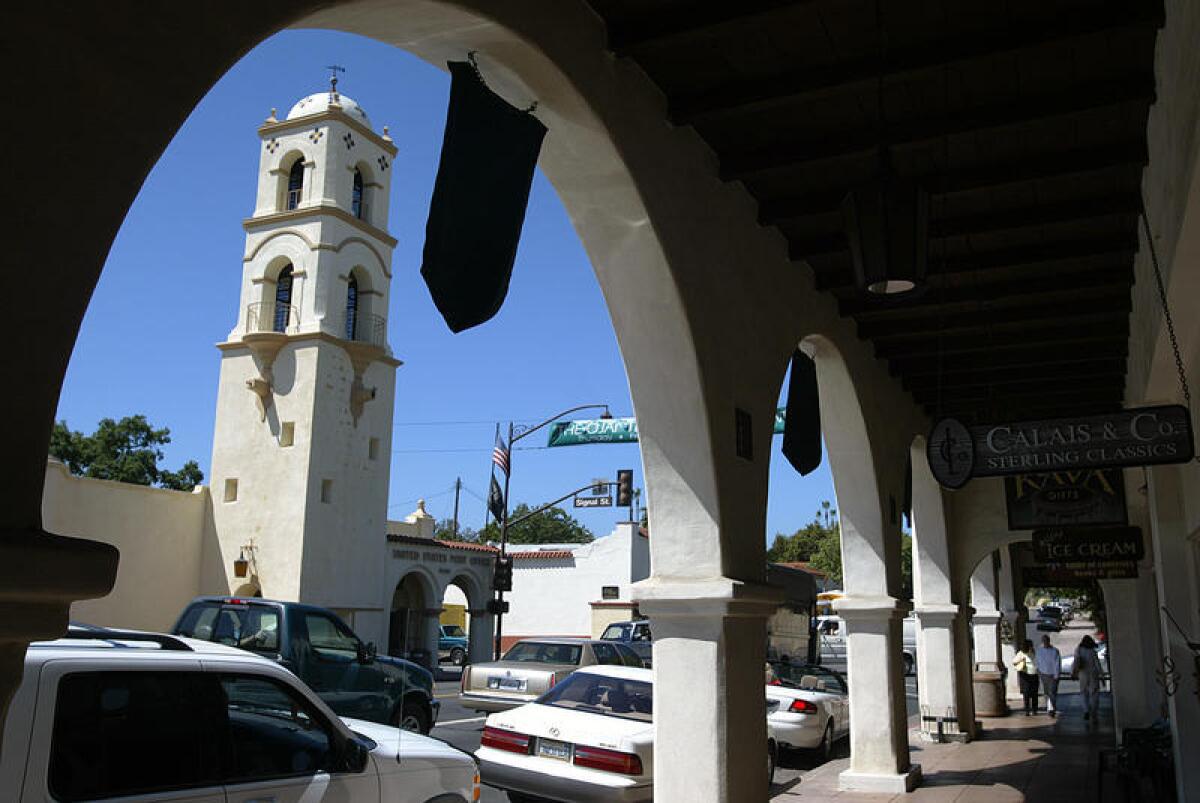
Why: They’re just sunsets, really. But in artsy, spiritually inclined Ojai, locals like to call them pink moments. And Ojai is a fine place for unplugging from city life. Good for oranges and classical music, too.
What: The pink sunsets have something to do with the way the light filters down into Ojai (population: about 7,600) through the surrounding Topatopa mountains. (The Ojai Valley runs east-west, which is unusual in these parts.) Stroll the arcade shops on Ojai Avenue, pedal the 9-mile Ojai Valley Trail, frolic in Libbey Park (home to the Ojai Music Festival every June). Browse Bart’s Books. Mention to your friend that the town was named Nordhoff until 1917 when locals redubbed it Ojai. (Much of the town’s Spanish Revival architecture dates to that year, too -- there’d been a fire, and there was a lot of rebuilding.) Pick up some fruit from Friend’s Ranch. Get spa treatments at the Ojai Valley Inn. Book into a boutique hotel.
Or, to double down on the peace and quiet, you might prefer the Krishnamurti Foundation’s 11-acre Pepper Tree Retreat, where guests can rent 10 rooms and suites in an updated 1910 farmhouse. The foundation’s history stems from J. Krishnamurti, the philosopher who lived in Ojai from the 1920s to the 1980s, receiving visitors who were said to include Aldous Huxley, John Barrymore, Greta Garbo, Dr. Jonas Salk, D.H. Lawrence, Jackson Pollock and Igor Stravinsky.
Where: Libbey Park, at Ojai Avenue and Signal Street, Ojai, is 83 miles northwest of downtown L.A.
How much: Rooms at Pepper Tree Retreat rent for $125-$185 nightly.
Info: Ojai Visitors Bureau
Ogle the Golden Spike (not a dive bar) at Stanford
Why: This is the spike that commemorates completion of the transcontinental railroad in 1869, insuring a prosperous future for California and knitting the U.S. together in a new way after the carnage of the Civil War.
What: Railroad magnate Leland Stanford is said to have driven this symbolic spike at Utah’s Promontory Summit (not Promontory Point, the National Park Service insists) on May 10, 1869. That act connected the tracks of the Central Pacific Railroad with those of the Union Pacific Railroad, easing westward migration and cross-country commerce.
Once the ceremony was done, somebody dug up the spike and rushed it back to California, where Stanford opened his university in 1891. (This spike is sometimes called the Last Spike. A second copy that’s just as old, sometimes known as the Lost Spike, is on display at the California State Railroad Museum in Sacramento.)
In 1903, the railways devised a quicker route, so cross-country trains no longer roll on that stretch of track in Utah. But the Golden Spike is still the headliner at the university’s Cantor Arts Center. See it, then spend some time with the museum’s small but top-flight art collection, including works by Auguste Rodin, Jacob Lawrence, Edward Hopper and Richard Diebenkorn.
While you’re on campus, get a free hourlong tour from a student guide. Or beat a path out to the Dish, Stanford’s favorite hiking destination. Or head for the top of the 285-foot-tall Hoover Tower (which is almost as tall as Berkeley’s 307-foot Campanile).
Where: 328 Lomita Drive, Stanford, 358 miles northwest of downtown L.A.
How much: The museum is free, as are the tour and the hike. The tower costs $4 per adult. As for tuition, room, board and books, that’ll run you $66,696 per year.
Info: Cantor Arts Center
Investigate the goo-drowned beasts at L.A.’s La Brea Tar Pits
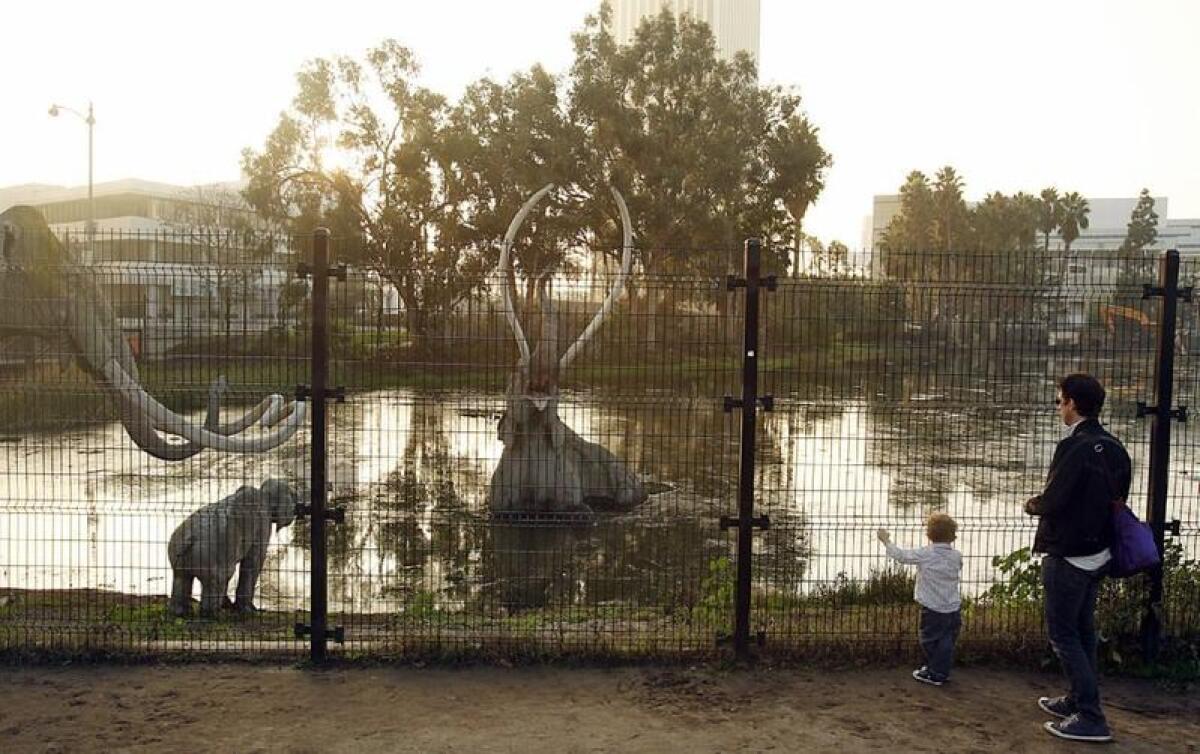
Why: Where else are you going to see 200 wolf jaws, the long, curved teeth of a snarling saber-toothed cat and the skeleton of a mastodon — all on the property where they were found?
What: It was 1875 when the Hancock family presented an old cat’s tooth, found on their property, to a visiting academic named William Denton. In the years since Denton realized he had something special on his hands, scientists have found that the tar pits hold animal remains dating back 11,000 years.
More than 600 species of animals and plants — bison, camel, sloth and smilodon included — have been recovered and identified since excavations began in 1901.
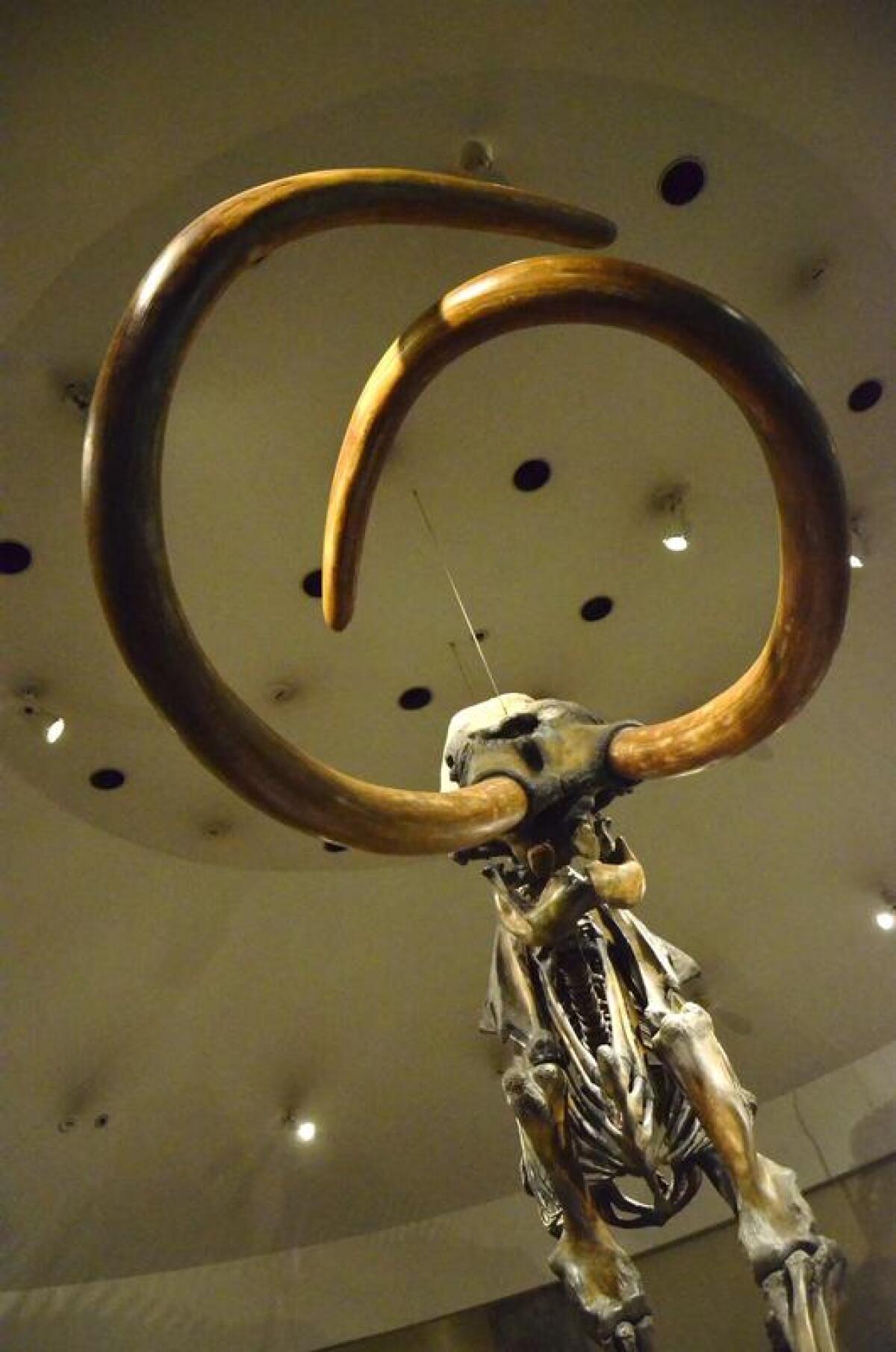
Equally important, if you’re a kid, is the way they look now. Some seem so lifelike, it’s scary. (The curators got help from Jim Henson’s Creature Shop in getting lifelike effects from at least one saber-toothed cat.) And some of the bone arrangements (like the wolf jaws) can be mesmerizing.
The tar pits and museum are surrounded by a pleasant, grassy park (excellent for picnics), and many food trucks linger nearby.
Also, the Los Angeles County Museum of Art is next door. (Is the LACMA/Tar Pits/food-truck combo the simplest L.A. tourist day of all? Quite possibly.)
Where: 5801 Wilshire Blvd., Los Angeles, nine miles west of downtown L.A.
How much: Museum admission is $12 for adults, $9 for kids 13-17 (and college students with ID); and $5 for children 3-12.
Info: La Brea Tar Pits & Museum
Confront the gnarled and gray Old Veteran tree at Point Lobos
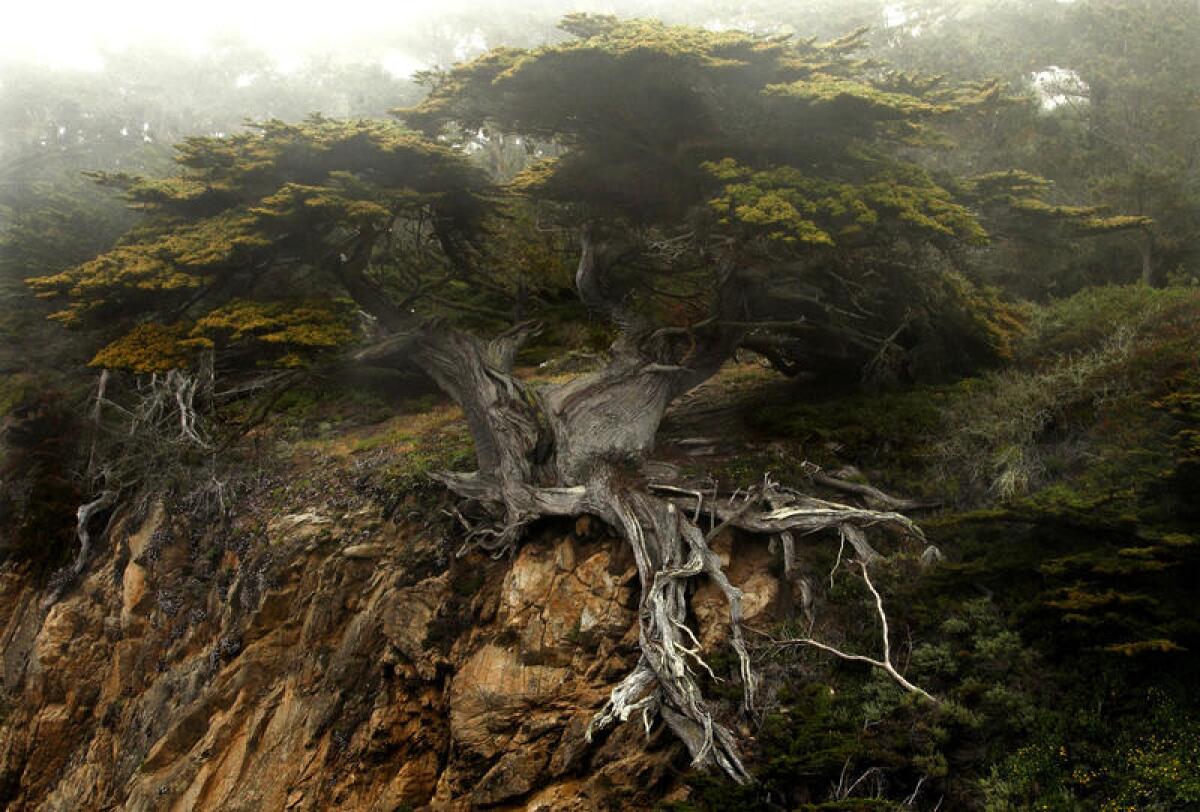
Why: Smashing waves, hanging fog, beguiling rocks, sea creatures, birds, birders, hikers, painters, photographers and haunting trees -- all flourish here. And the Old Veteran might be the most haunting tree of all.
What: Point Lobos State Natural Reserve, three miles south of Carmel, covers just under 400 acres. Within a few years of the Gold Rush of 1849, dozens of Chinese immigrant fishing families arrived to gather abalone, urchin and other species. Whalers made this a base camp. Japanese and Portuguese immigrants too.
An abalone cannery operated until 1928. And believe it or not, there was also coal mining nearby. But since 1933, it’s been a state-owned reserve.
As for the Old Veteran -- it stands along the 1.4-mile North Shore Trail between Whalers Cove and Sea Lion Point, clinging to a cliff top, its trunk bleached, roots and branches reaching every which way -- is it a Monterey cypress or a wayward Vincent Van Gogh hallucination?

Add to this the wave-lashed inlets, the strangely shaped tidepools that so inspired photographer Edward Weston, and the old whalers’ shack that’s now a little Whaling Station Museum and you get a singular meeting of land and sea.
“Come in the winter when it’s stormy and no one’s out here,” Edward Weston’s grandson, photographer Kim Weston, told me a few years ago. “It’s an amazing piece of land.”
Where: 62 California Highway 1, Carmel-by-the-Sea, 325 miles northwest of downtown L.A.
How much: $10 per car. It opens at 8 a.m. daily and closes at 7 p.m. If the parking lot’s 150 spaces fill up, which happens often, you can park with care along the shoulder of the highway and walk in to the reserve. It’s more trouble, but you save $10.
Sight a rare Torrey pine on sandstone cliffs and savor a wide La Jolla beach far below
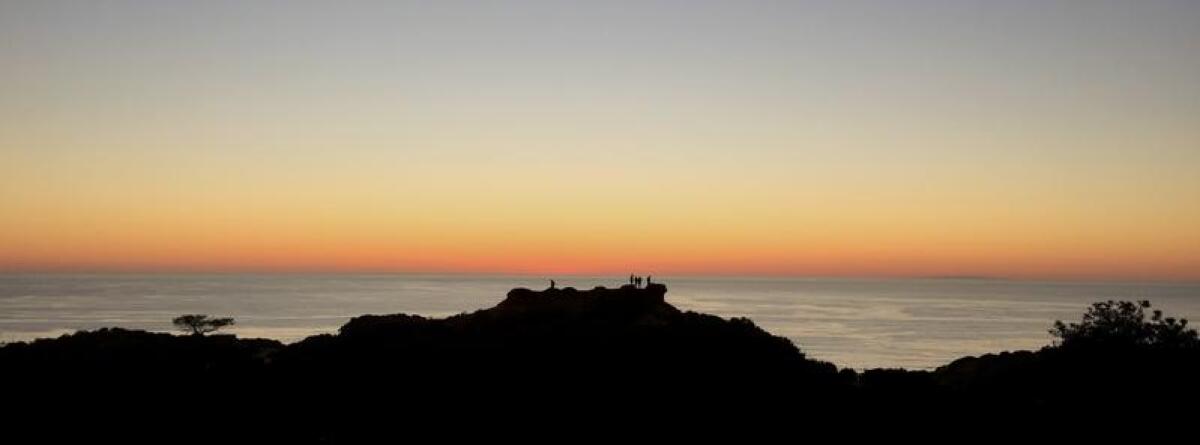
Why: Because even if the trees are sort of homely, they are rare. And coastal views they frame are rugged and spectacular.
What: Torrey Pines State Natural Reserve covers 2,000 raw acres just north of La Jolla. Unless you’ve been here or the adjacent Torrey Pines State Beach, you’re probably never seen a Torrey pine.
It’s the world’s rarest pine tree. I’m not saying they look great. In fact, they look kind of bedraggled, but there’s something special about these sandstone cliffs, the panorama of the Pacific, and the way a sunset turns the trees and hikers into clifftop silhouettes.
You can take the three-quarter-mile Beach Trail (guess where it goes?) and trudge back up the hill or the two-thirds-mile Razor Point Trail, which leads to a dramatic overlook.
On the bluff atop the south end of the beach, at the end of Torrey Pines Scenic Drive, there’s the Torrey Pines Gliderport, which is a take-off point for hang-gliders and site of the Cliffhanger Cafe.
As my last visit reminded me, the sunsets are great. But be warned: You’re supposed to leave as soon as the sun is down.
Where: 12600 N. Torrey Pines Road, San Diego, 109 miles southeast of downtown L.A.
How much: $3-$20 per day, depending on the lot and day.
Info: Torrey Pines State Natural Reserve, Torrey Pines State Beach
Greet a new day at Morro Rock in San Luis Obispo County
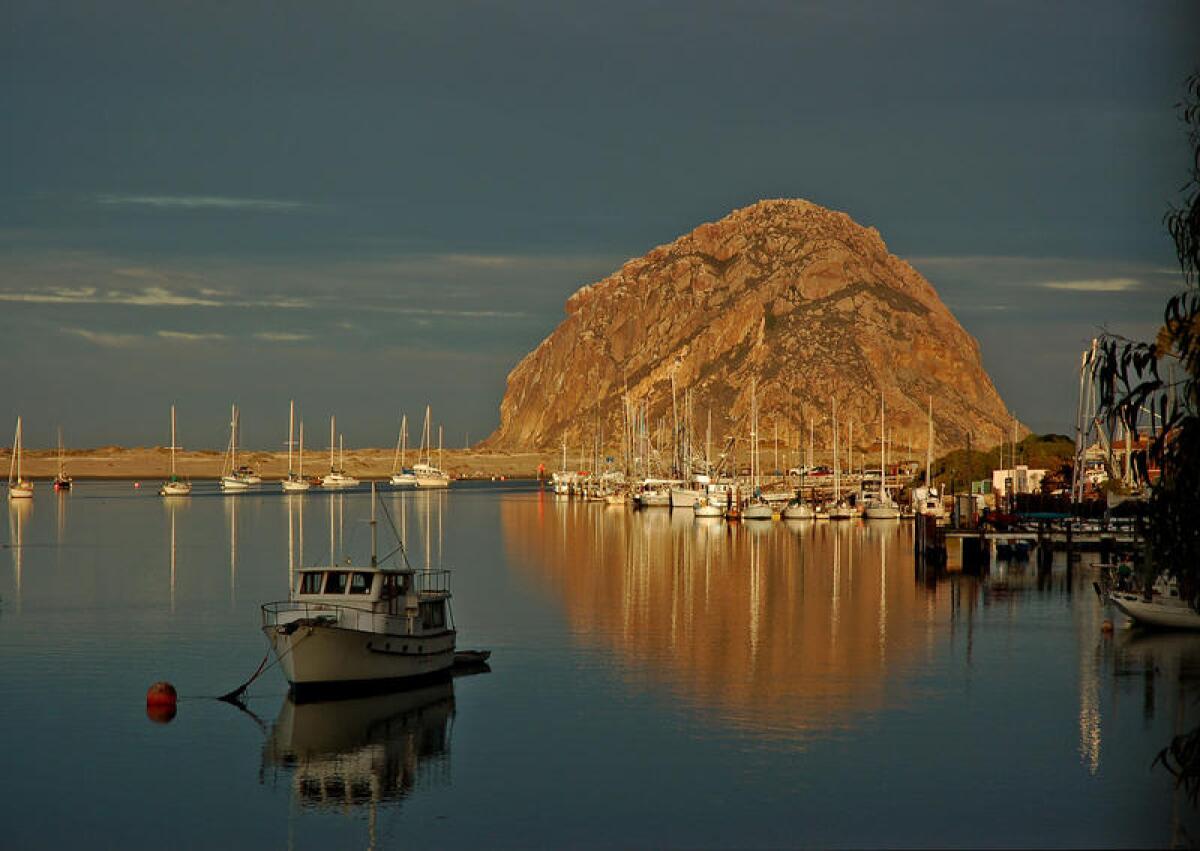
Why: Morro Rock looms lovably over Morro Bay. Usually it’s a dark landmark in a sunny landscape. But not at sunrise.
What: More than 570 feet tall and 23 million years old, the rock is one of nine sisters -- nine volcanic peaks in San Luis Obispo County. Some can be climbed for nice views (including Black Hill and Cerro Cabrillo in Morro Bay State Park) -- but not this sister. You can’t even walk all the way around her.
Admire this great, rounded rock, preferably at dawn, from the nearby Morro Bay embarcadero. Or the beach. Or the dunes. Or a kayak.
And don’t be misled by Disney’s “Finding Dory.” One of that movie’s key locations is the spectacular Morro Bay aquarium. But in real life, the great aquarium is in Monterey. The Morro Bay Aquarium and Gift Shop is far more modest and gets mixed reviews. The waterfront galleries and shops are nice for a few hours’ browsing, though, and there are watercraft rentals.
Where: Morro Rock, Coleman Drive, Morro Bay, 203 miles northwest of downtown Los Angeles.
How much: Free
Info: Morro Bay
Howl at San Francisco’s City Lights Booksellers and buy ‘A Coney Island of the Mind’
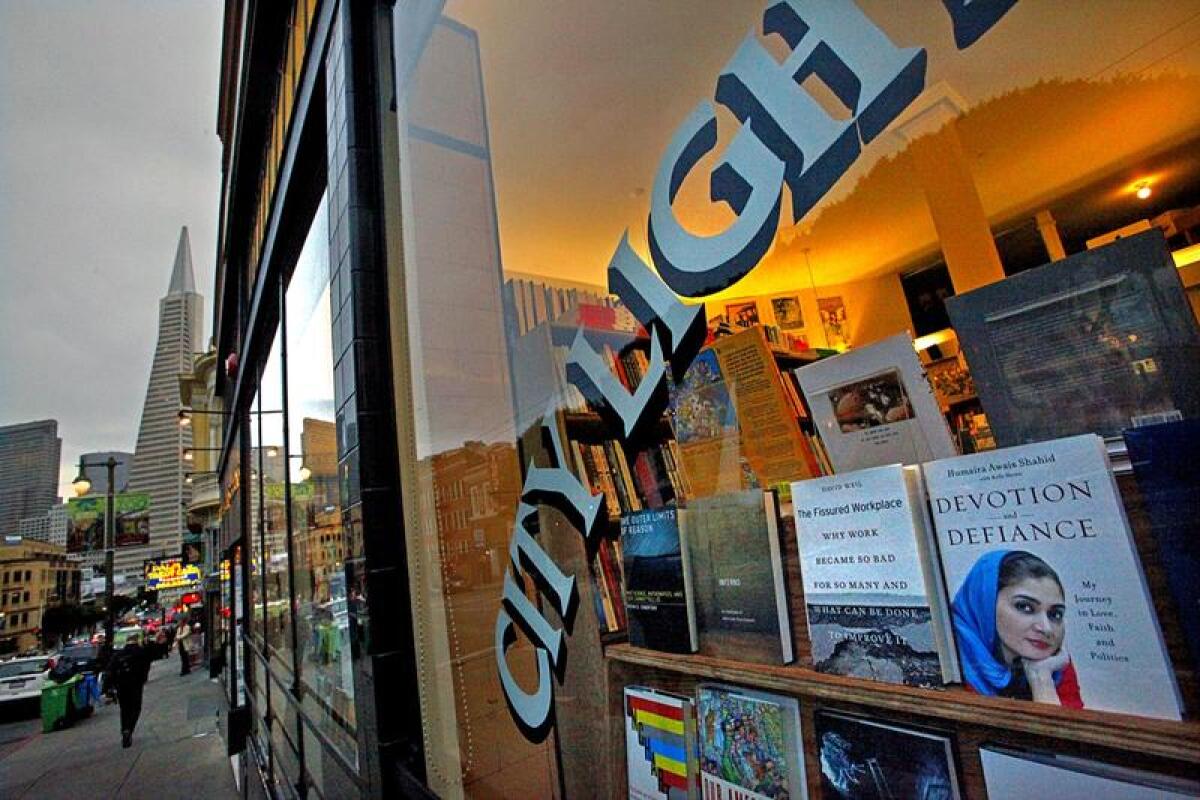
Why: This is the Beat haven that brought us Allen Ginsberg’s “Howl” (1956) and Lawrence Ferlinghetti’s “Coney Island” (1958), both poetry classics.
Ferlinghetti — whose 99th birthday is March 24, 2018 — is the guy who co-founded the City Lights bookshop in 1953, later took it all over, built City Lights as a publisher and kept the whole enterprise stark-raving solvent through the decades.
What: Ferlinghetti has built a literary destination with as much soul as North Beach has pasta. Plenty of people love Ferlinghetti for that, but not that many have read him. Here’s your chance. The poetry room is upstairs. (You can hear him here.)
And if you get thirsty — as Jack Kerouac and company often did back in the day — don’t forget to drop into Vesuvio saloon next door, as they did. Vesuvio was there when the bookshop opened. (More recently, in 2003, a Beat Museum opened around the corner on Broadway.)
Where: 261 Columbus Ave., San Francisco, 380 miles northwest of downtown Los Angeles
How much: “A Coney Island of the Mind,” $10.95, paperback; “Howl,” $7.95, paperback
Info: City Lights Booksellers
Pretend it’s 1846 at Sutter’s Fort in Sacramento
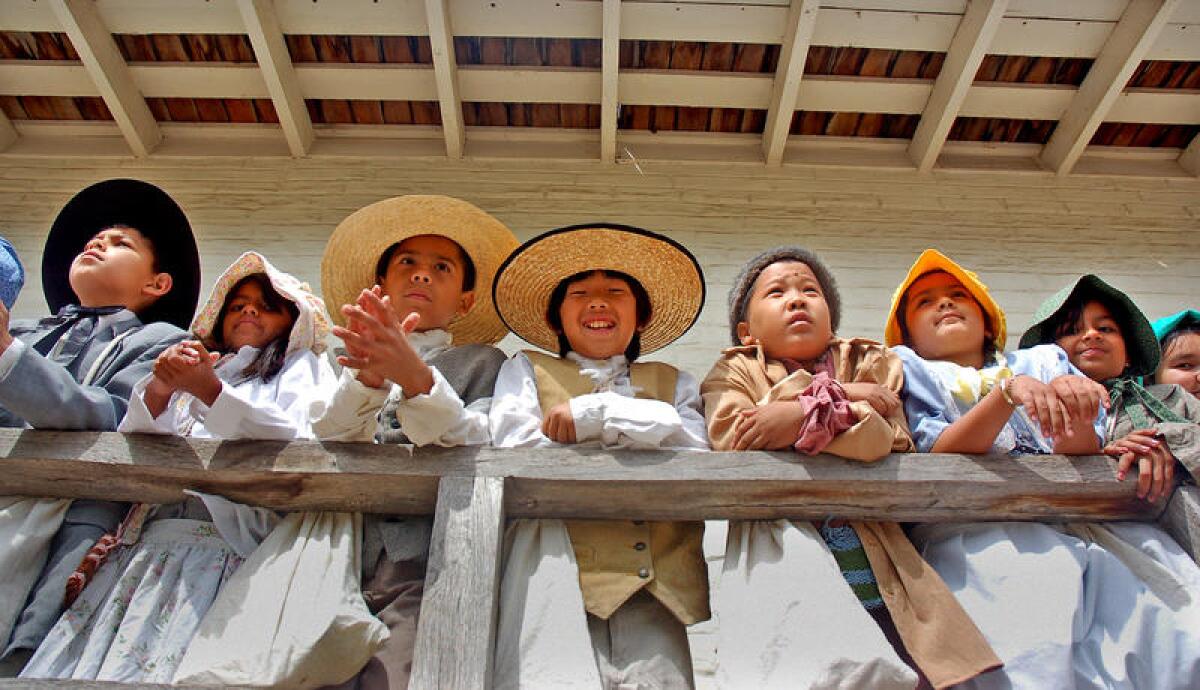
Why: Because we forget that California had multiple lives before statehood in 1850. And because we like covered wagons.
What: John Sutter’s Fort, built by a Swiss immigrant in 1839 when Mexico still owned California, is now a state historic park, often enlivened by docents and reenactors, almost always occupied by visiting school groups.
The fort is a sort of 19th century island in Midtown Sacramento, with walls more than 15 feet tall and more than 2 feet thick. Its exhibits and docents aim to create the atmosphere of a frontier fort in 1846: a stagecoach, oven, blacksmith shop and so on.
This is where the Donner Party was headed before things went so wrong in the mountains.
It’s also the site of a grand irony. Sutter spent years building a business, but when employee James Marshall discovered gold nearby while building a mill for Sutter, the ensuing rush upended everything. Sutter lost his workers, his livestock and most of his income. While California raced into a new era, Sutter went bankrupt.
The last time I was here, I found a batch of Sacramento fourth-graders, most from Mexican American and recently immigrated Hmong families, all reenacting roles from the 1840s. As I wrote then, I don’t think I’ve ever seen this state’s past and future so happily and productively entangled.
Where: 2701 L St., Sacramento, 392 miles northwest of downtown L.A.
How much: Adult admission, $5-7; children (aged 6-17), $3-5.
Info: Sutter’s Fort State Historic Park
Kvetch over knishes at Canter’s in L.A.
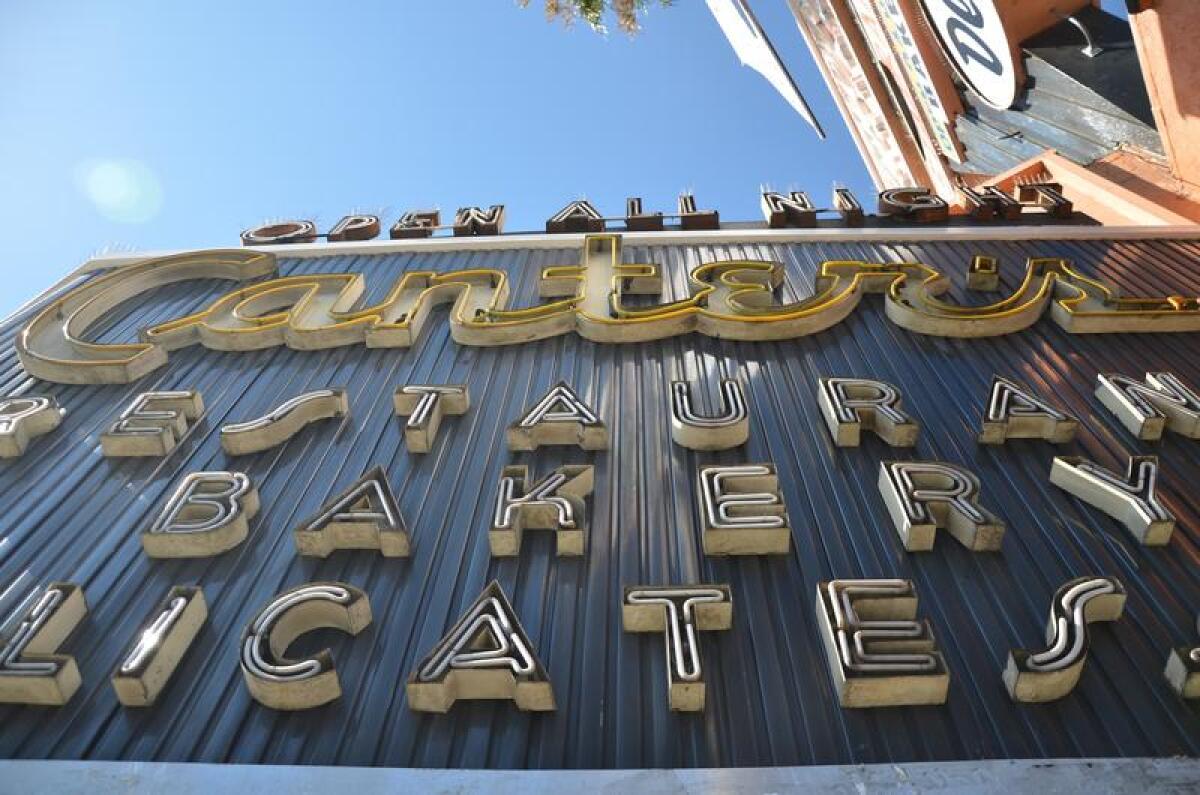
Why: Canter’s Deli, long beloved and besieged by the nighthawks of Fairfax Avenue, is a singular place to eat and debrief after a long, lively Los Angeles night. (Or any time. It’s open 24 hours, except for Jewish high holidays.)
What: As most customers here know, “kvetching” is a Yiddish word for complaining and knishes are filling-stuffed dollops of dough, a recipe that comes Eastern Europe.
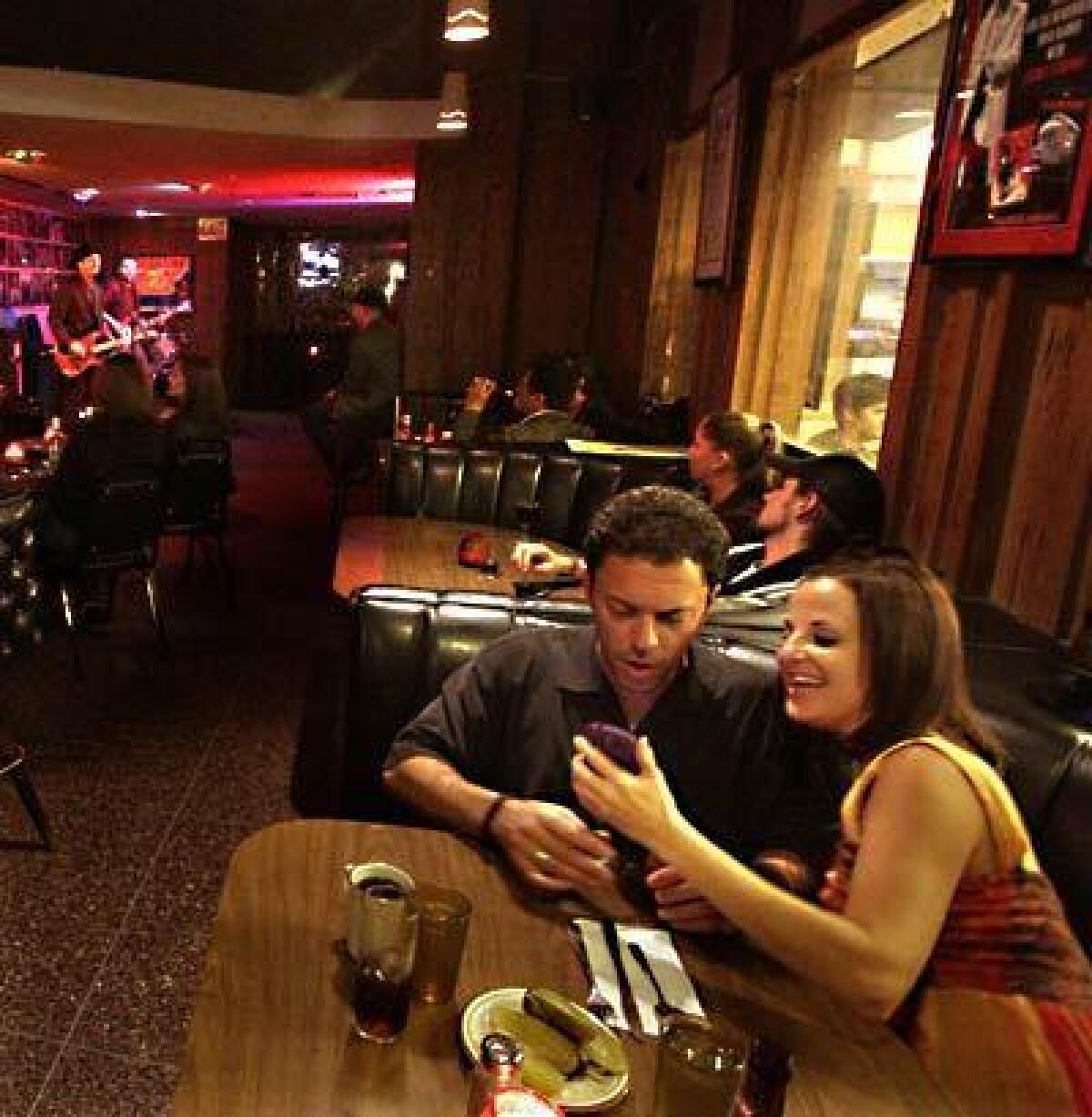
You’ll find the entrance under a cinema-style marquee. As you nosh, remind your fellow diners that Canter’s first opened on Brooklyn Avenue in Boyle Heights in 1931 (an operation that closed after most of the Jewish families in Boyle Heights moved out and Latino families moved in).
The current location, emblazoned with neon signage and bedecked with murals, opened in 1953 and has expanded a few times since then, including the 1961 addition of the Kibitz Room Cocktail Lounge, which often has live acts. Kibitz customers through the decades have included Frank Zappa, Joni Mitchell and members of the Doors, Byrds, Guns n’ Roses and Red Hot Chili Peppers. There are frequent open-mic nights for comedy and music.
Through the years, Canter’s management estimates that it has served 24 million bowls of chicken soup.
Where: 419 N. Fairfax Ave., Los Angeles, eight miles west of downtown L.A.
How much: Hot Kasha Knish, $5.50. Lox and scrambled eggs, $10.95. Pastrami Reuben sandwich, $15.95.
Info: Canter’s Deli
Load up your plate like a lumberjack at the Samoa Cookhouse in Humboldt County
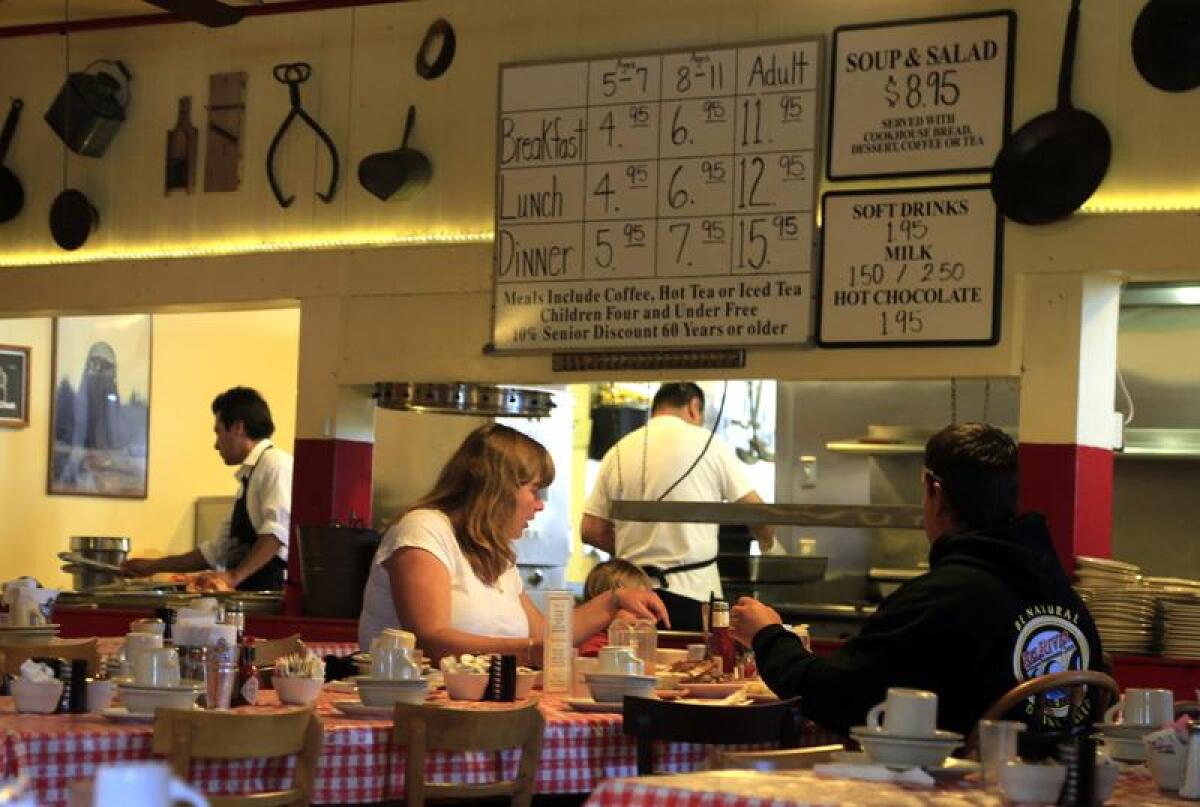
Why: You’re hungry. And these people have been in the business of feeding lumberjacks for about 100 years.
What: The Samoa Cookhouse is a smorgasbord that dates back more than a century and still feeds off-duty timber industry workers now and then. Pancakes, sausages, eggs, biscuits, gravy -- it’s all here.
Besides its family-style tables and checkered tablecloths, the dining room’s walls are lined with vintage photos of brawny men and toppled trees. In one corner, a Historic Logging Museum waits, full of saws and boots and other artifacts.
Do not expect haute cuisine. Do expect volume. And history. The building (which stands on the Samoa Peninsula just north of Eureka) dates to the 1890s.
Where: 908 Vance Ave. off Cookhouse Road, Samoa, Humboldt County, 647 miles northwest of downtown L.A.
How much: Adult prices: $13.25 for breakfast, $14.25 lunch, $17.95 dinner. And yes, it’s all you can eat.
Info: Samoa Cookhouse
Schmooze with jellyfish at Monterey’s big aquarium
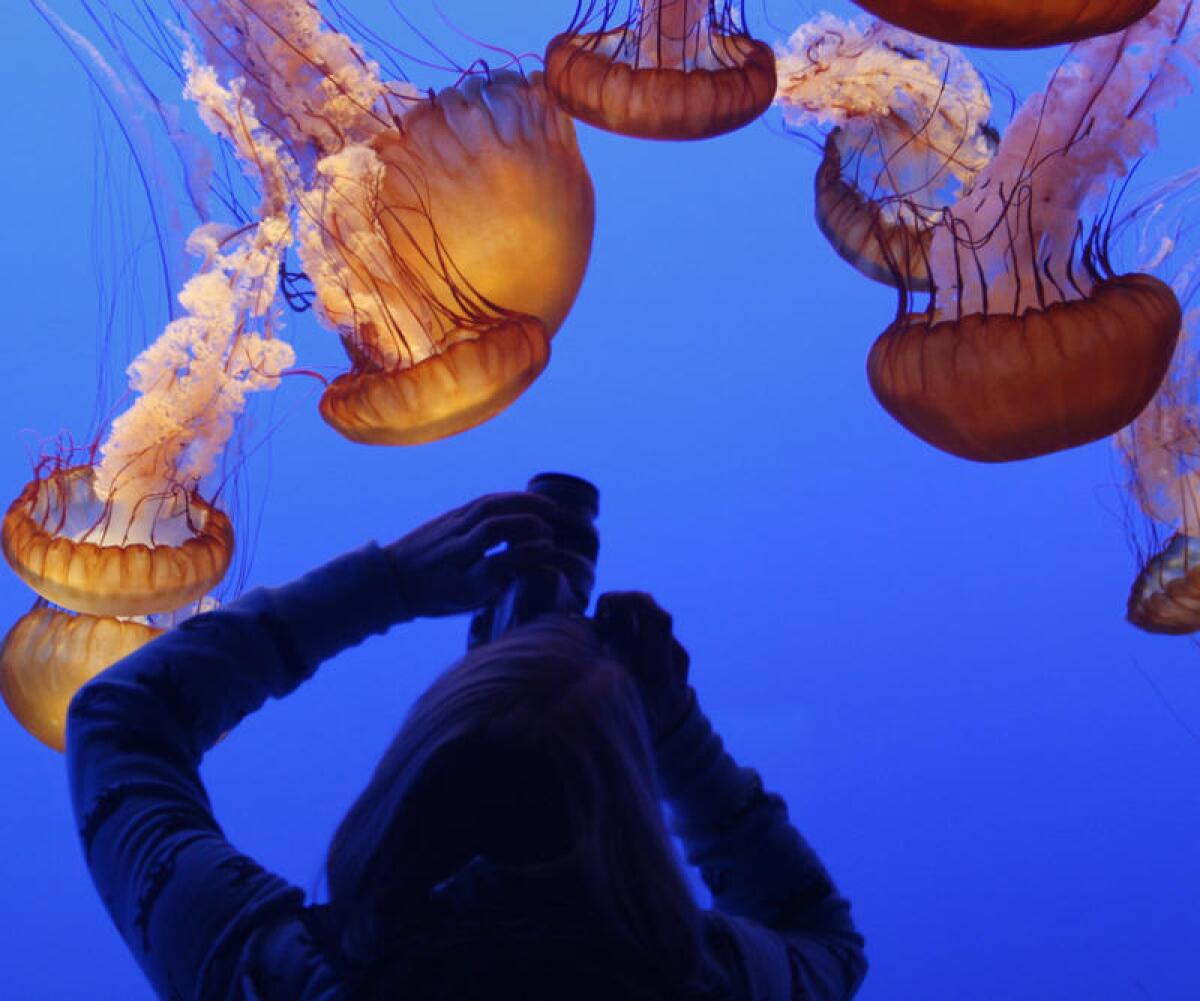
Why: It’s the state’s foremost aquarium, in a neighborhood full of Steinbeckian marine biological history.
What: From its opening in 1984, the Monterey Bay Aquarium immediately became the state’s go-to aquarium, with tanks that open on to Monterey Bay and all sorts of technical breakthroughs. (It turns out jellyfish enclosures are hard to design.)
Give your family several hours here among the sharks, otters, penguins, tuna and seabirds -- more than 40,000 plants and animals, many of which get extra frisky at feeding time. (When you get hungry, feel free to order fish for lunch at the aquarium’s sit-down restaurant, Cindy’s Waterfront. Or not. Weird, right?)
While gawking, recall that this now-ultra-touristy district was once a gritty neighborhood. It held the home and lab of Ed Ricketts, the celebrated marine biologist and friend of John Steinbeck who is featured in Steinbeck’s nonfiction volume “The Log From the Sea of Cortez” and fictionalized in Steinbeck’s novel “Cannery Row.”
California has several rewarding aquariums -- especially Long Beach’s Aquarium of the Pacific if you’re in Southern California -- but none has Monterey’s waterfront history.
Where: 886 Cannery Row, Monterey, 321 miles northwest of downtown L.A.
How much: Adult admission is $49.95. For kids 3-12, it’s $29.95.
Info: Monterey Bay Aquarium
Gnaw beef (or charge your Tesla) at Harris Ranch in Coalinga
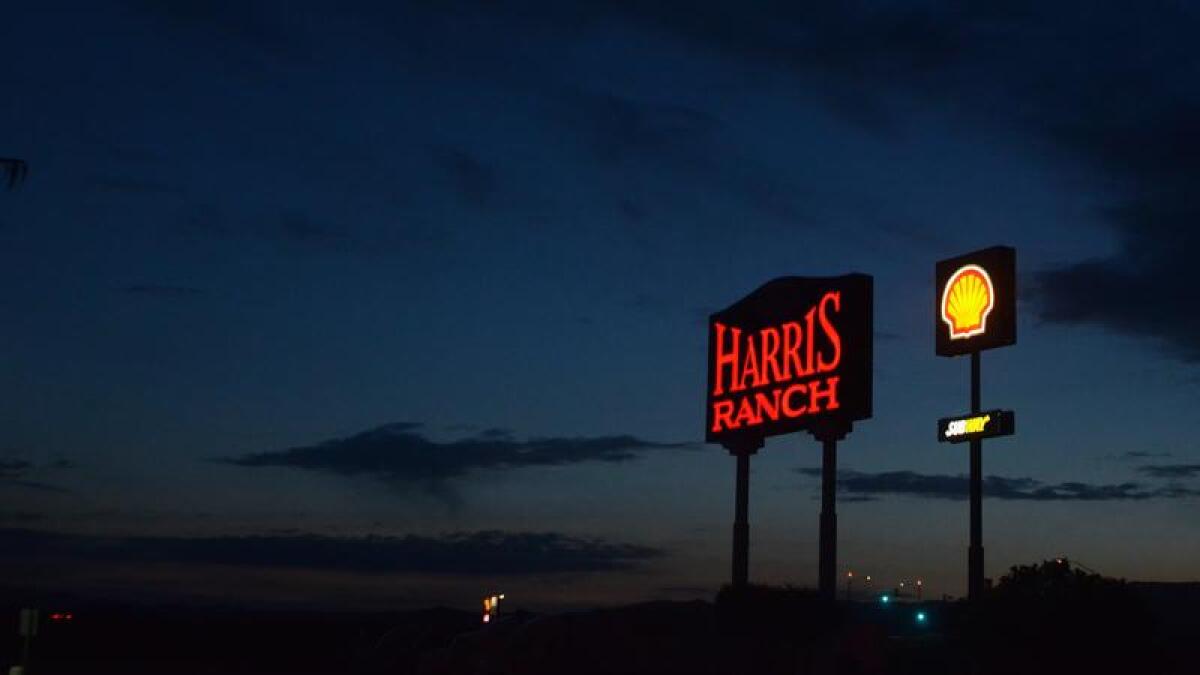
Why: The road is long. This grill is hot. These restrooms are clean.
What: The now-sprawling Harris Ranch operation dates to the 1930s, but it didn’t become relevant to us travelers until the 1970s. That when the management hit on the idea of opening a burger stand to capitalize on all the drivers passing by on the just-completed Interstate 5.
Then the burger stand became a steakhouse. And store. And hotel.
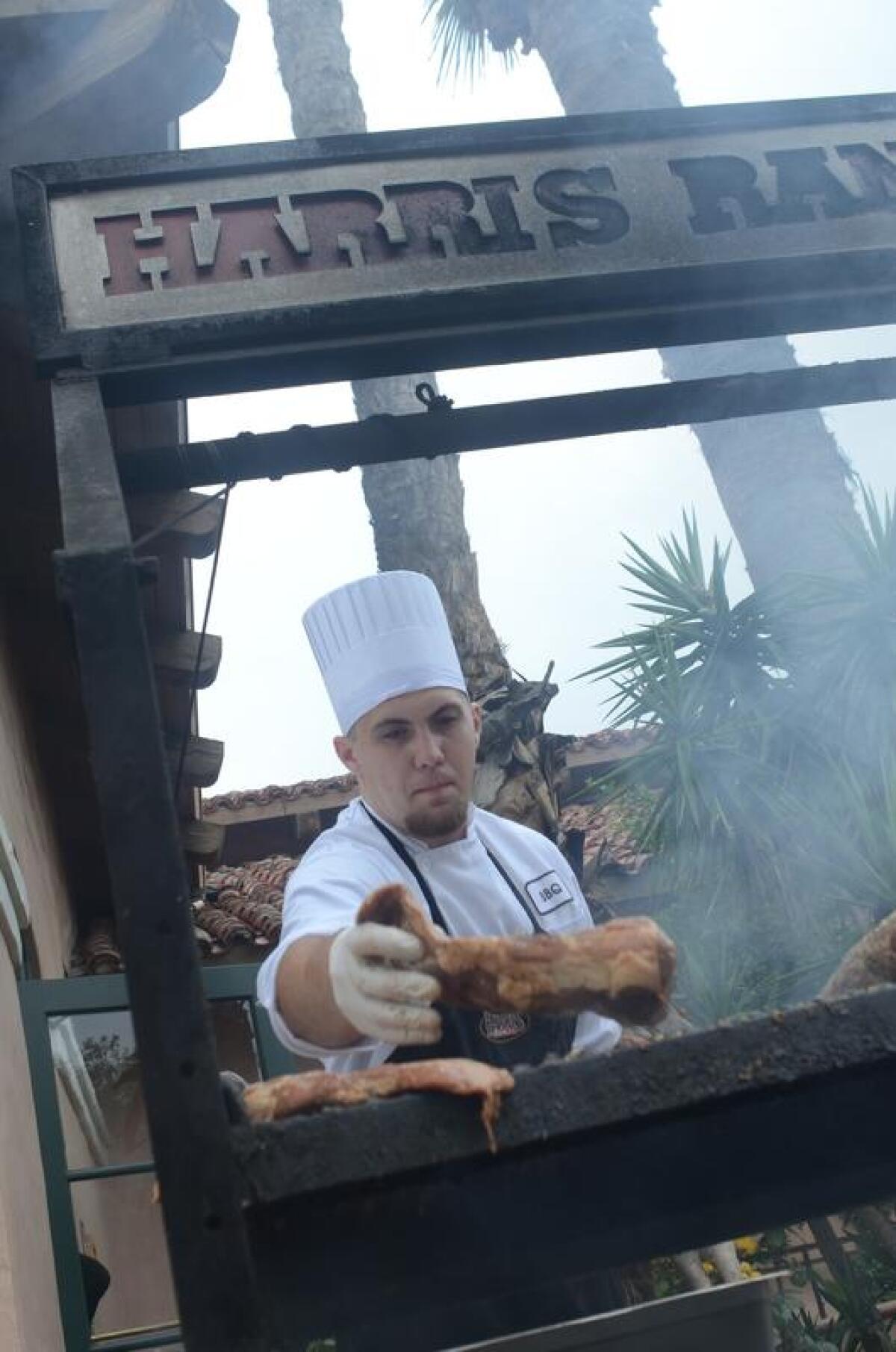
Now the Harris people have a cattle-based citadel on the roadside. The dining operations -- three restaurants, basically -- together seat up to 455 people at a time. The hotel has more than 150 rooms and an Olympic-style pool. The AC works. And they’ve added Tesla battery-charging stations to the parking lot.
Even if you’re a vegetarian climate-change warrior, it may be tempting to stop.
Where: 24505 W. Dorris Ave., Coalinga, 205 miles northwest of downtown L.A.
How much: Ranch hand breakfast, $14.50 (in the Ranch Kitchen); 30-ounce bone-in, oak-smoked prime rib, $40 (in the Steakhouse). Also, there’s no hotel tax in Fresno County, so if you book a $169 room at Harris Ranch, it will actually cost $169.
Caress Disney Hall in downtown L.A.
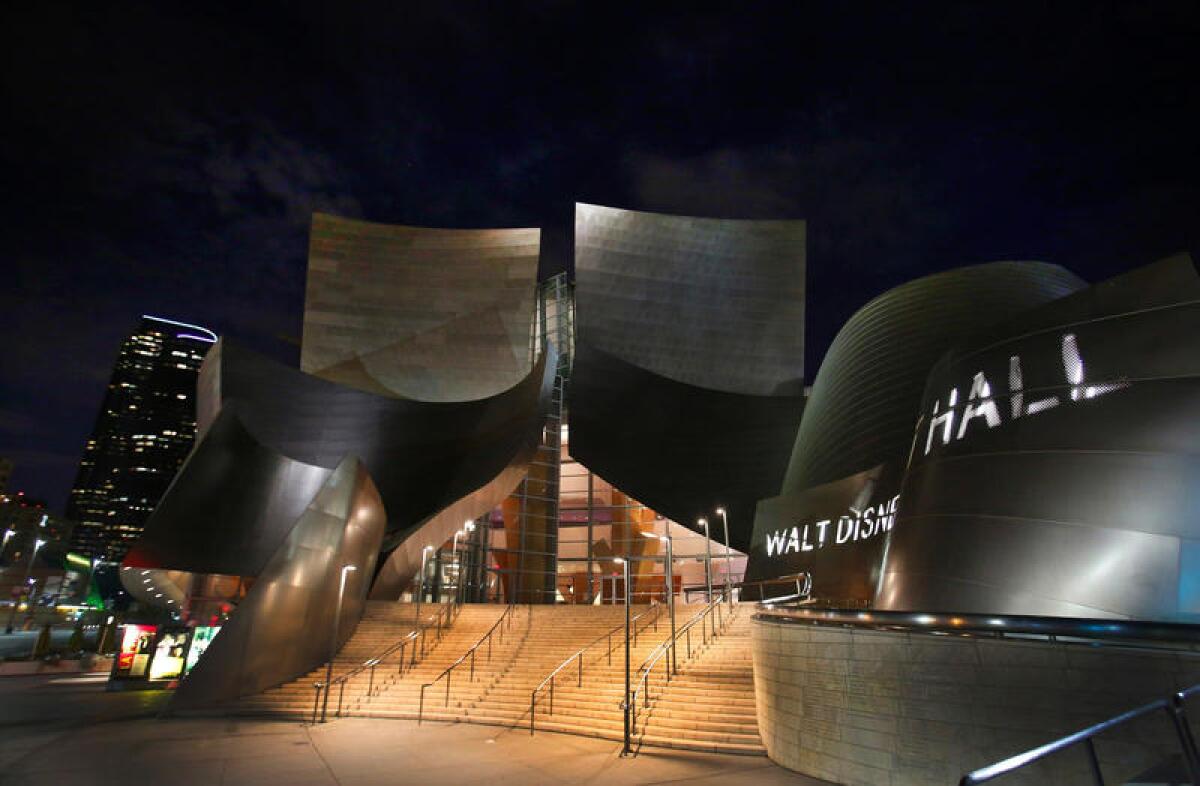
Why: Because this building begs to be touched.
What: Gleaming, silvery, curvaceous Walt Disney Concert Hall stands along Grand Avenue, the cultural corridor at the edge of downtown L.A.’s government quarter. When Frank Gehry’s hall was going up, some local highbrows scoffed that it would be a secondhand landmark; the architect had already unveiled a similarly sheathed Guggenheim Museum in Bilbao, Spain. But since the L.A. venue’s 2003 opening, Southern California has embraced Disney Hall in a big way. Up close, you can see yourself in it.
If you can catch the L.A. Philharmonic or another performer from one of the 2,265 seats here, do it. (Be prepared for great sightlines but scant leg room.)
Or you could just do a free, self-guided hourlong audio tour of the building’s exterior. Start in the lobby and don’t expect to see the interior of the hall. (It stays busy with rehearsals). Most days, somebody hands out headsets between 10 a.m. and 2 p.m. Or you could just prowl around outside.
And remember, there’s a lot more music next door in the Music Center (a.k.a. the Performing Arts Center of Los Angeles), which is home to the Center Theater Group, L.A. Opera and many a dance and touring production.
Where: Walt Disney Concert Hall, 111 S. Grand Ave., in downtown Los Angeles.
How much: L.A. Philharmonic concert tickets cost $20-$220.
Info: Walt Disney Concert Hall
Think pink at the Madonna Inn in San Luis Obispo
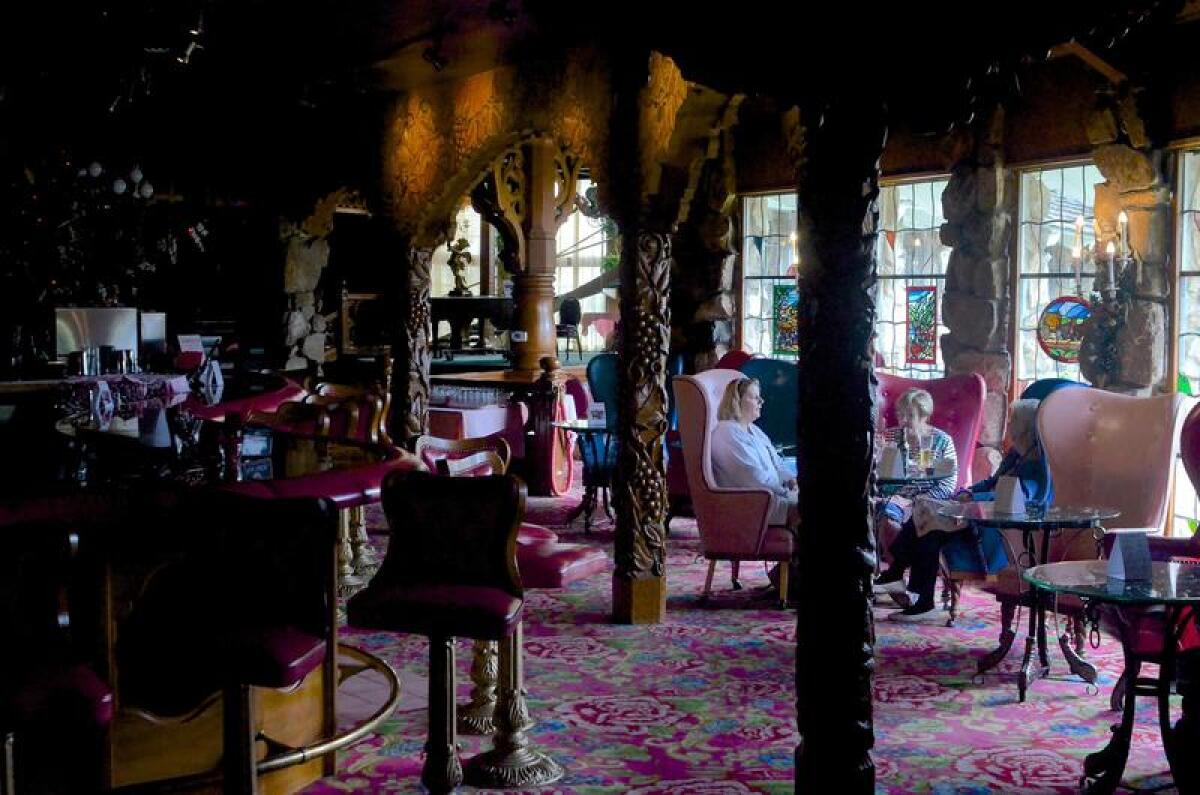
Why: It has 109 rooms, no two alike; a preponderance of pink (because the owner loves the color); and a long history of satisfying newlyweds. If you spell kitsch with a capital K, this is your place. On Valentine’s Day? Even better.
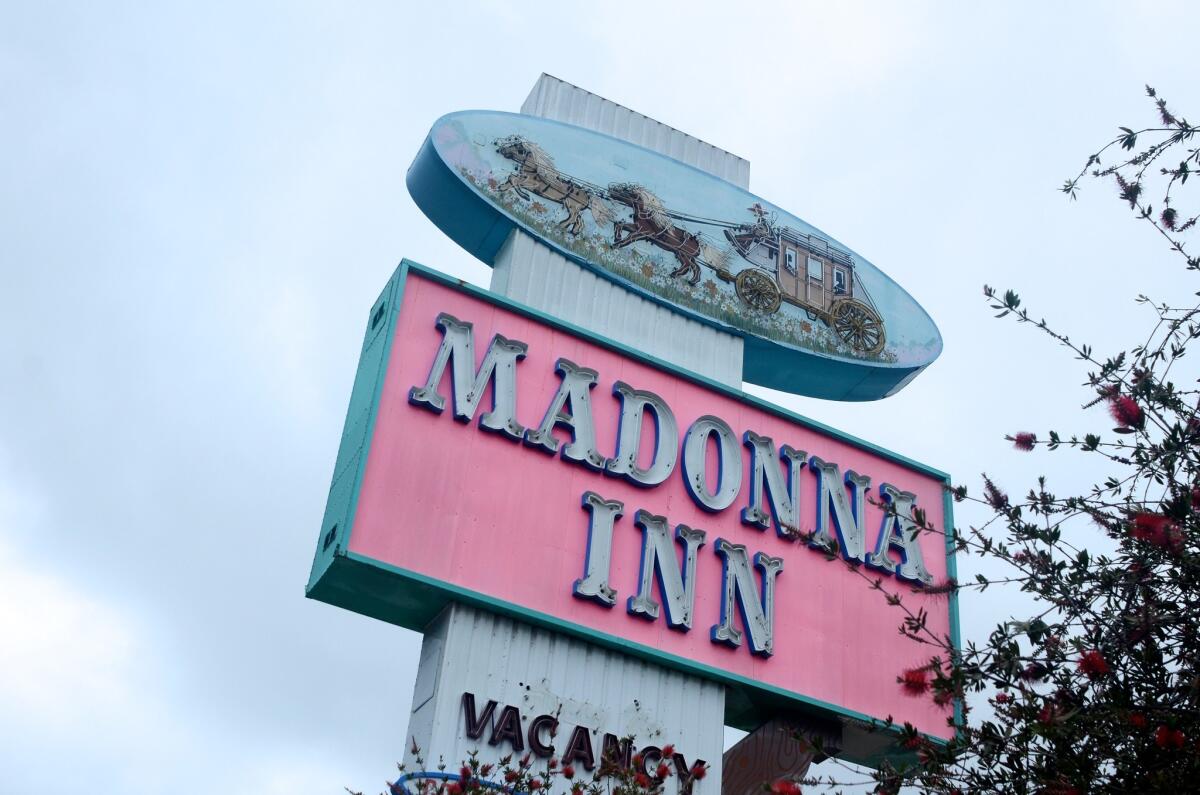
What: The Madonna Inn, a family operation since its opening in 1958, has always been an irresistible hot pink mess. Maybe you’ve heard of its splashes of pink paint high and low, or the waterfall in its men’s room, or the plastic flowers in the dining room, or its thematically customized guest rooms, which feature zebra-pattern carpets, poppy wallpaper, merry-go-round, etc.
Lately, the place has been getting horsier and the decor perhaps a tad more restrained. These are alarming signs.
But the overall effect is still unique. Roadside design expert John Margolies called the inn “the grandest motel of them all ... light-years removed from the almost scientific sameness of the larger franchised chains.”
Amen. In the last decade, the inn has added a pool, spa, daily horseback rides, pink tennis courts and a bike trail that connects to downtown.
As wacky as the place may seem, it’s also eminently practical for long-distance drivers: It’s almost precisely halfway between San Francisco and Los Angeles.
Where: 100 Madonna Road, San Luis Obispo, 208 miles northwest of downtown L.A.
How much: Rooms for two typically start at $209.
Info: Madonna Inn
Calculate the age of Cabazon’s dinosaurs just east of Palm Springs
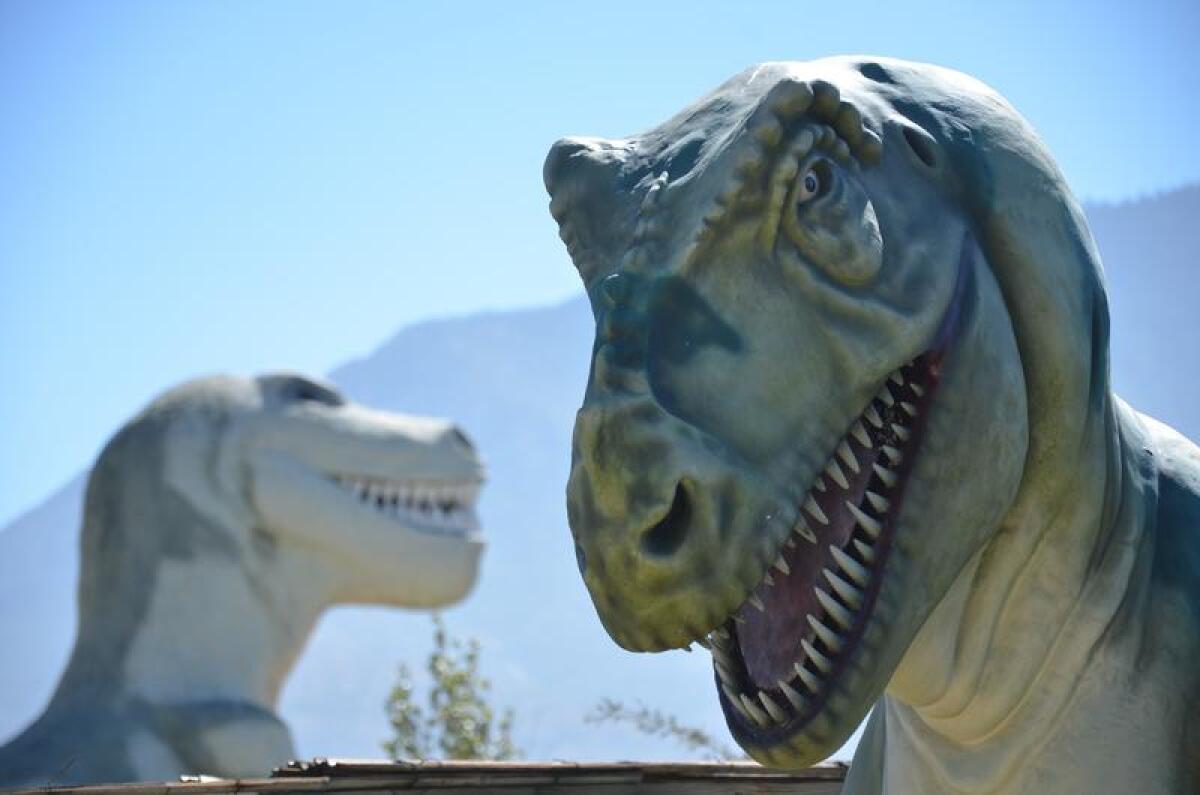
Why: Because these critters, like creationism and evolution, demand closer inspection.
What: In Cabazon, on the road to Palm Springs, a pair of massive dinosaurs lurks by Interstate 10, eager to lure children. Rex and Dinny are their names.
If you’re tight on money, just admire them from the parking lot. If the kids insist on a close encounter, pay the admission fee and they can clamber up inside a dinosaur’s neck and look out at the world through his teeth (as Pee-wee Herman did in the 1985 film “Pee-wee’s Big Adventure”).
But that’s not all. Management of this roadside attraction is eager to promote creationism (hence the slogan “By design, not chance”) so in the gift shop you may find children’s books written along those lines.
Now’s the time to debate: Did these creatures evolve millions of years ago? Were they created thousands of years ago? Or did a restaurateur named Claude Bell put them together in the 1970s and ‘80s from leftover freeway materials?
Where: 50770 Seminole Drive, Cabazon, 91 miles east of downtown L.A.
How much: Adult admission, $10. Children, $9.
Info: Cabazon dinosaurs
Go Basque in Bakersfield with an epic dinner at Noriega’s

Why: You’ll sit down at a long, loud table with dozens of strangers, eat whatever the chef is cooking, drink from unlabeled wine bottles (and maybe pour a little red into your vanilla ice cream dessert, as is the house custom). By meal’s end, you’ll be surrounded by new friends. Your belly with be very, very full. And you might know a little more about Basques and the West.
What: There are several Basque restaurants along the train tracks in eastern Bakersfield, a legacy of the years when Basques owned and worked sheep ranches in California, Nevada and Idaho, clinging to their memories and native cuisine from the Pyrenees mountains along the border of France and Spain.
Noriega Hotel Restaurant — Noriega’s, the locals say — goes back to 1893, and still has a boarding house next door. (On my last visit in January, there was a B from the Kern County Public Health Services displayed in a barred window.) The kitchen serves three meals a day, and dinner, at 7 p.m. sharp, is the big attraction. You take a seat at a long table, greet your new neighbors and prepare for an onslaught of plates.
On Thursdays, you get garlic fried chicken and spare ribs. On Fridays, an omelette or beef stew and leg of lamb. On Saturdays, oxtail stew and fried chicken. Every night but Monday (when they close), the side dishes include pickled tongue, cottage cheese, a little spaghetti and blue cheese. Good food. Great quantities. Reservations recommended.
Noriega’s won a James Beard Award as an American classic in 2011. Other Basque eateries and bars in the neighborhood include Pyrenees Cafe and Wool Growers Restaurant.
Where: 525 Sumner St., Bakersfield, 114 miles north of downtown L.A.
How much: Adult dinner, $24. Lunch, $18.
Info: Noriega Hotel Restaurant
Bite into a burger by the beach at Hodad’s in San Diego
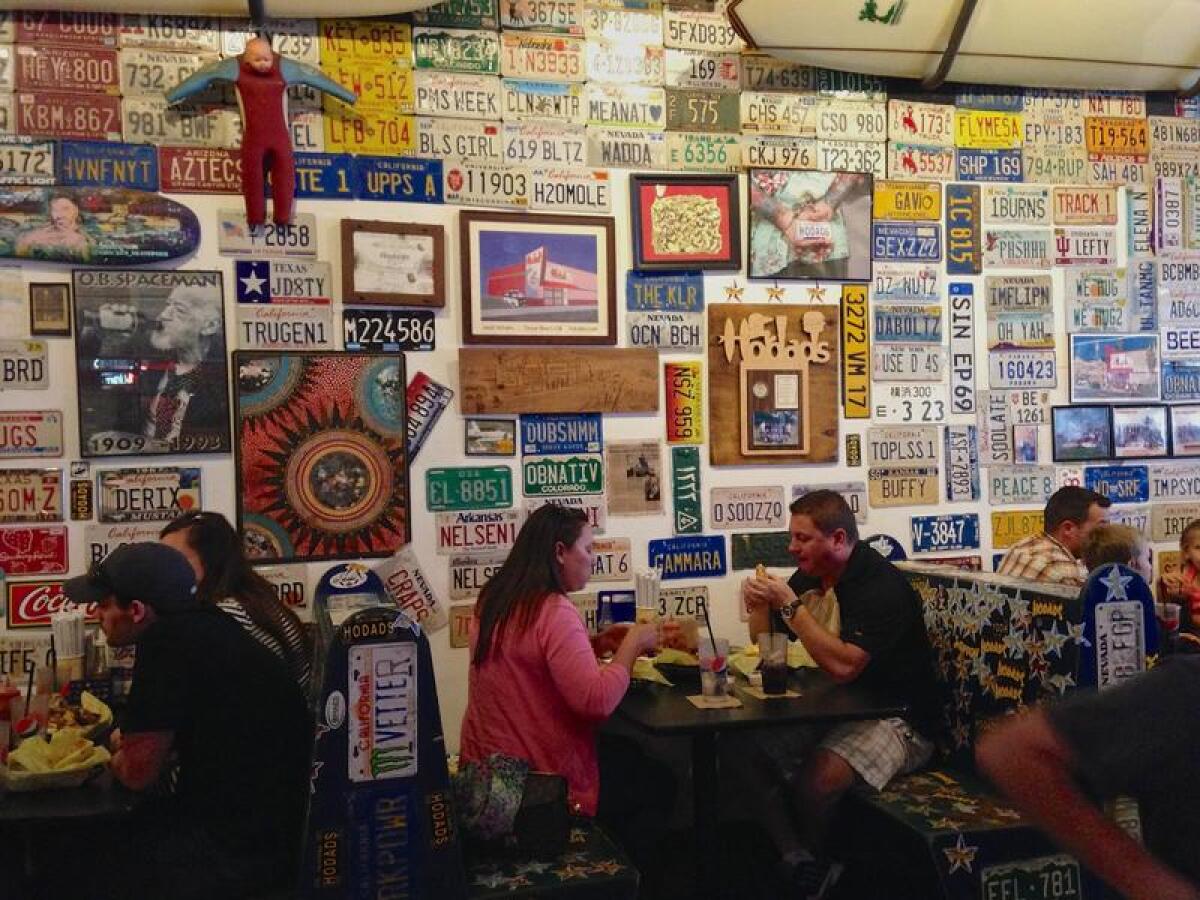
Why: Is it the onions? The beef? The thrill of waiting in line among the wayward beach people of Ocean Beach in San Diego? It’s impossible to say. But Hodad’s, born in 1969, has won a reputation as a classic burger joint, a block from the beach.
What: The walls are covered with license plates.The best table is a truncated surfer van. The people-watching on Newport Avenue will be a revelation to anybody who thinks San Diego, with all its military and Republican history, has no scruffy lefties.
To avoid waiting in line, get there a few minutes before the 11 a.m. opening time. Or go to one of the restaurant’s newer locations: one downtown, and one in Petco Park, where the Padres play.
By the way, as the beach culture authorities at Merriam-Webster note, a hodad is “a non-surfer who frequents surfing beaches and pretends to be a surfer.”
Where: 5100 Newport Ave., San Diego, 123 miles southeast of downtown L.A.
How much: Double cheeseburger with fries, $10.75.
Info: Hodad’s
Remember César E. Chávez in the Tehachapi foothills
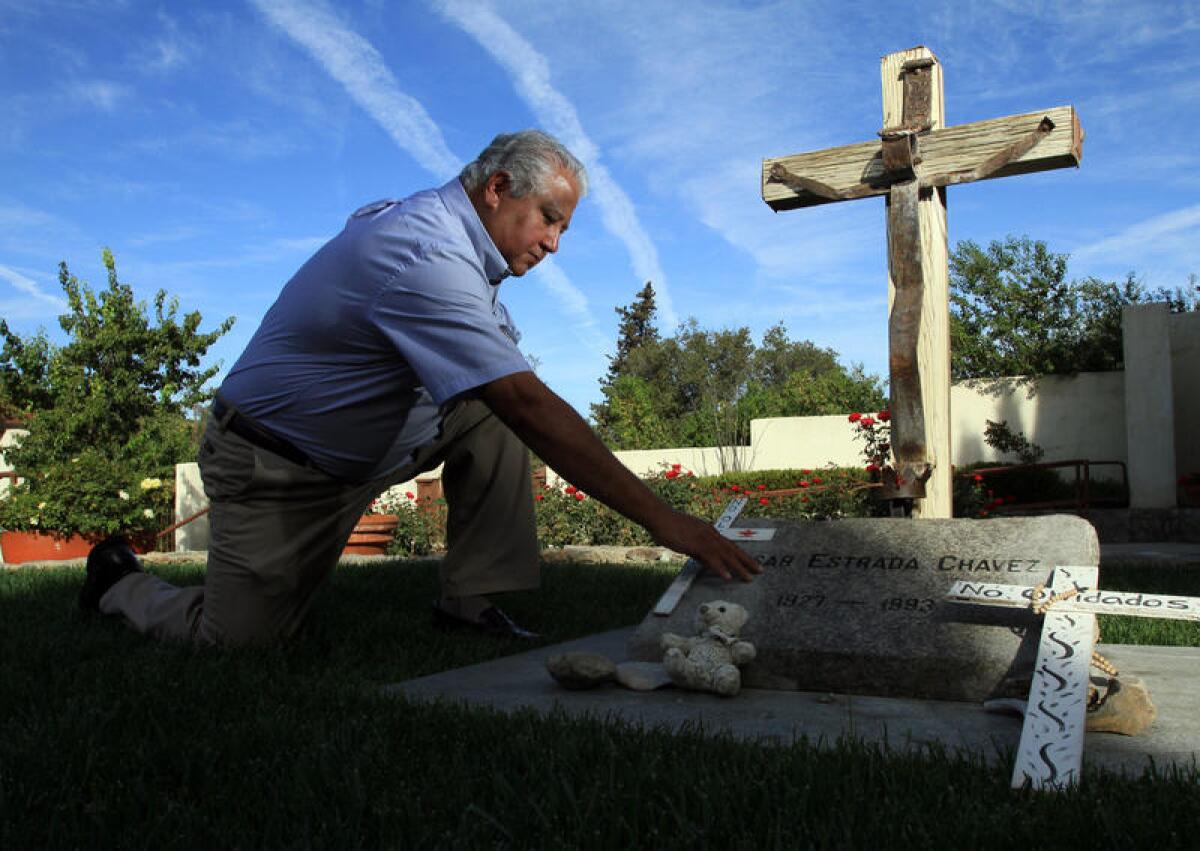
Why: Because he changed the way California’s farmers and farmworkers live.
What: In the busiest days of his battles to gain rights for farmworkers in California’s Central Valley, United Farm Workers leader César E. Chávez used to strategize with trusted aides in the hamlet of Keene.
All these years later, Chávez (1927-1993) is buried at the site, which is part of the César E. Chávez National Monument. And if you’re picturing a forlorn, dusty spot in the middle of a big, flat valley, think again.
To reach the compound (north of Tehachapi and south of Bakersfield), you twist and turn on a two-lane backroad (including Highway 58, then Woodford-Tehachapi Road) through Tehachapi foothills studded with oak and peppered with brush. It’s about 11 miles northwest of the pleasant town of Tehachapi -- where it wouldn’t hurt to stop for a stroll and a snack at Kohnen’s Authentic German Bakery -- and 31 miles east of Bakersfield.
Besides the grave, the site includes a memorial rose garden, exhibition rooms (lots of black-and-white pictures of strikes, marches and demonstrations in the 1970s), a modest bookstore and Chávez’s office, preserved largely as it was when he was crusading against often-brutal conditions in the fields. The work of Chávez and his allies led to passage of California’s Agricultural Labor Relations Act of 1975, the first law in the U.S. that recognized farmworkers’ collective bargaining rights.
Where: 29700 Woodford-Tehachapi Road, Keene, 126 miles north of downtown L.A.
How much: Free.
Stride like a fighter pilot across the flight deck of the Midway in San Diego
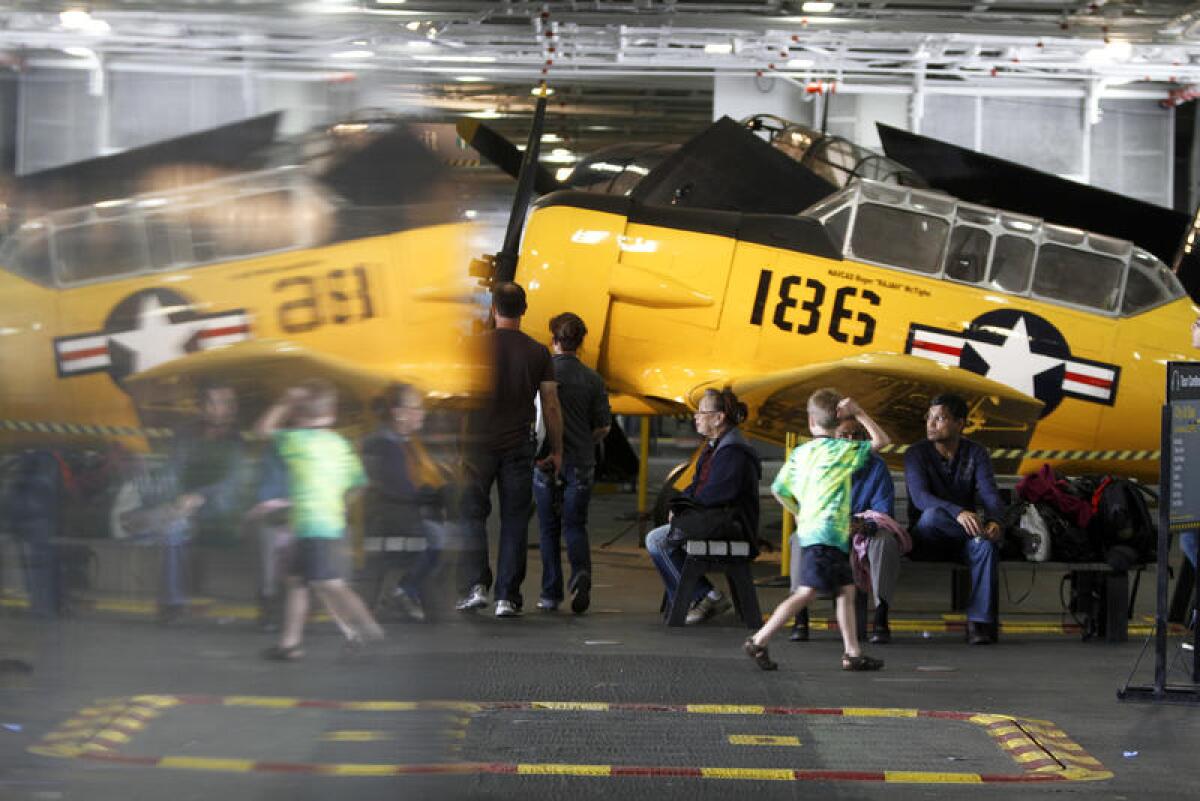
Why: Who hasn’t wondered how it feels to stand on the deck of an aircraft carrier?
What: The Midway, a retired aircraft carrier, now rests at the San Diego downtown waterfront, offering a close look at Navy history. This was the longest-serving U.S. aircraft carrier of the 20th century, with 47 years. Between September 1945 and 1992, the ship was home to more than 200,000 sailors. In 2004, it opened as a floating museum.
More than 20 aircraft are arrayed on the flight deck, many with accessible cockpits. See that big number 41 painted on the side of the ship? That’s because this was the 41st aircraft carrier built in Navy history.
On lower decks, you’ll find flight simulators, roving docents, historical exhibits and vintage hardware.
Ashore, a few steps from the ship, you’ll find “Unconditional Surrender,” a 25-foot-tall sculpture by Seward Johnson inspired by the spontaneous embraces that accompanied the news of World War II’s end in 1945.
Now, as you stand between the ship and the sculpture, consider this: In 1940, before World War II sparked growth of the Navy here and the Navy sparked growth of the city, San Diego’s population was a little more than 200,000. Now the city’s population is near 1.4 million, and economists estimate that the military amounts to a fifth of San Diego’s economy.
Where: 910 N. Harbor Drive, San Diego, 121 miles south of downtown L.A.
How much: Adult admission, $20. Retired military (with ID), $10. Children (ages 6-12), $10.
Info: Midway Museum
Paddle the Salton Sea, an accidental lake surrounded by desert

Why: Because where else can you do water sports on a sunken sea in the middle of a desert?
What: It’s serene yet a bit surreal to paddle onto this huge, accidental lake in the desert south of Indio and drink in the vistas of choppy blue water, agricultural fields, dried-up earth and cloud-studded sky, all ringed by the Chocolate and Santa Rosa mountains. The lake, created in 1905 when the Colorado River overflowed a canal and flooded into the Coachella Valley for 18 months, is more than 30 miles long with about 115 miles of shoreline, all more than 200 feet below sea level.
Although some dismiss the Salton Sea as a desolate, abandoned wasteland with too many environmental issues to count, as you kayak almost alone on this wide-open water -- staring at stately brown pelicans and scolded by the chattering gulls -- you’ll be reminded that this place is very much alive.
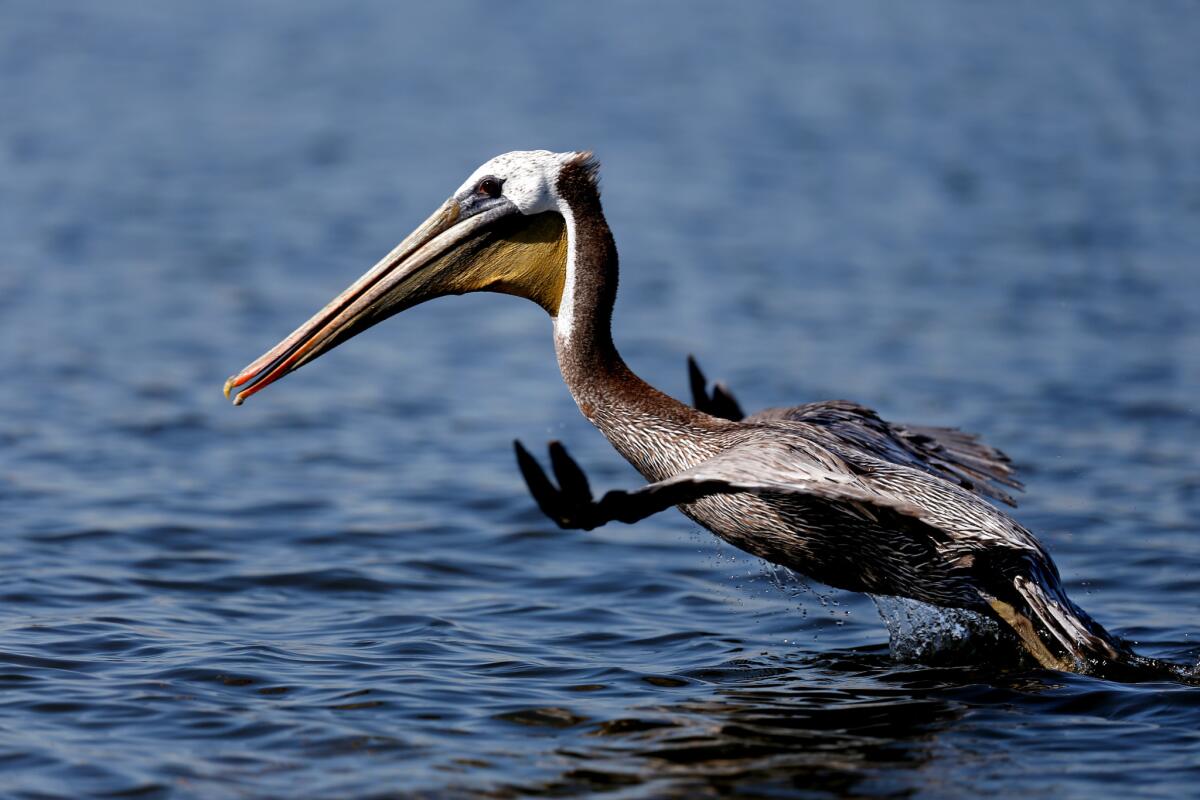
And yup, the water is really salty to the taste (much more saline than the ocean).
Rent a single or tandem kayak (excepting summer months) at the Salton Sea State Recreation Area’s (small) camp store near the lake’s north end. Mornings are best. Or join in mid-February as a group of sea supporters, Seathletes.org, hosts North Shore Xtreme, a weekend of kayak, outrigger and paddleboard races and family events at the state park site. (The 2017 dates are Feb. 10-12.)
Meanwhile, near the lake’s south end, you can see clouds of snow geese and Ross’ geese, strutting great blue heron, diving egrets and preening sandhill cranes on one morning at the Sonny Bono Salton Sea National Wildlife Refuge. The sea and marshlands host hundreds of migrating species. Bonus: friendly fellow bird-watchers, often Audubon Society members, were happy to help me with identification.
Where: You’ll find kayaks for rent at the Varner Harbor Camp Store at Salton Sea State Recreational Area near Mecca, 152 miles southeast of downtown L.A.
And there are bird blinds and self-guided paths for bird-watching at Sonny Bono Salton Sea National Wildlife Refuge near Calipatria, 195 miles southeast of downtown L.A.
How much: It’s $10 an hour for a single kayak with a $7 day-use fee at the state recreation area. There’s no charge at the wildlife refuge.
Info: Salton Sea State Recreational Area, Sea and Desert Interpretive Assn. and Sonny Bono Salton Sea National Wildlife Refuge.
Ski Tahoe, where you can schuss at a dozen resorts
Why: The only time the Winter Olympics ever came to California, they came here.
What: More than a dozen ski resorts dot the mountains around the big, blue lake, including Squaw Valley (host of the 1960 Winter Games, now joined under common ownership with nearby Alpine Meadows, both at the north end of the lake); and Heavenly Mountain Resort (which straddles the Nevada border at the south end of the lake).
Other major players include Kirkwood (to the south; lots of expert runs), Northstar (to the north; has a Ritz-Carlton handy); and Sugar Bowl (to the north; gets more snow and Bay Area people because of its high, westerly location). (Mt. Rose, on the Nevada side, is known for lots of snow, steep slopes and commanding lake views.)
And then there are the smaller, non-downhill resorts like Sorensen’s, a cross-country favorite about 20 minutes south of the lake in Alpine County. Here’s more info on resorts north and south of the lake.
Where: The south end of Lake Tahoe is 485 driving miles north of downtown L.A., 187 miles northwest of San Francisco. (Accordingly, Bay Area skiers and boarders often arrive by car, while visitors from Southern California and elsewhere often fly into Reno-Tahoe International Airport.)
How much: Lift ticket costs vary widely, depending on resort and day of the week. One-day adult lift tickets at Northstar (one of the priciest resorts) can reach $140.
Info: Ski Lake Tahoe.
Bathe in strange vibrations at the Integratron near Joshua Tree
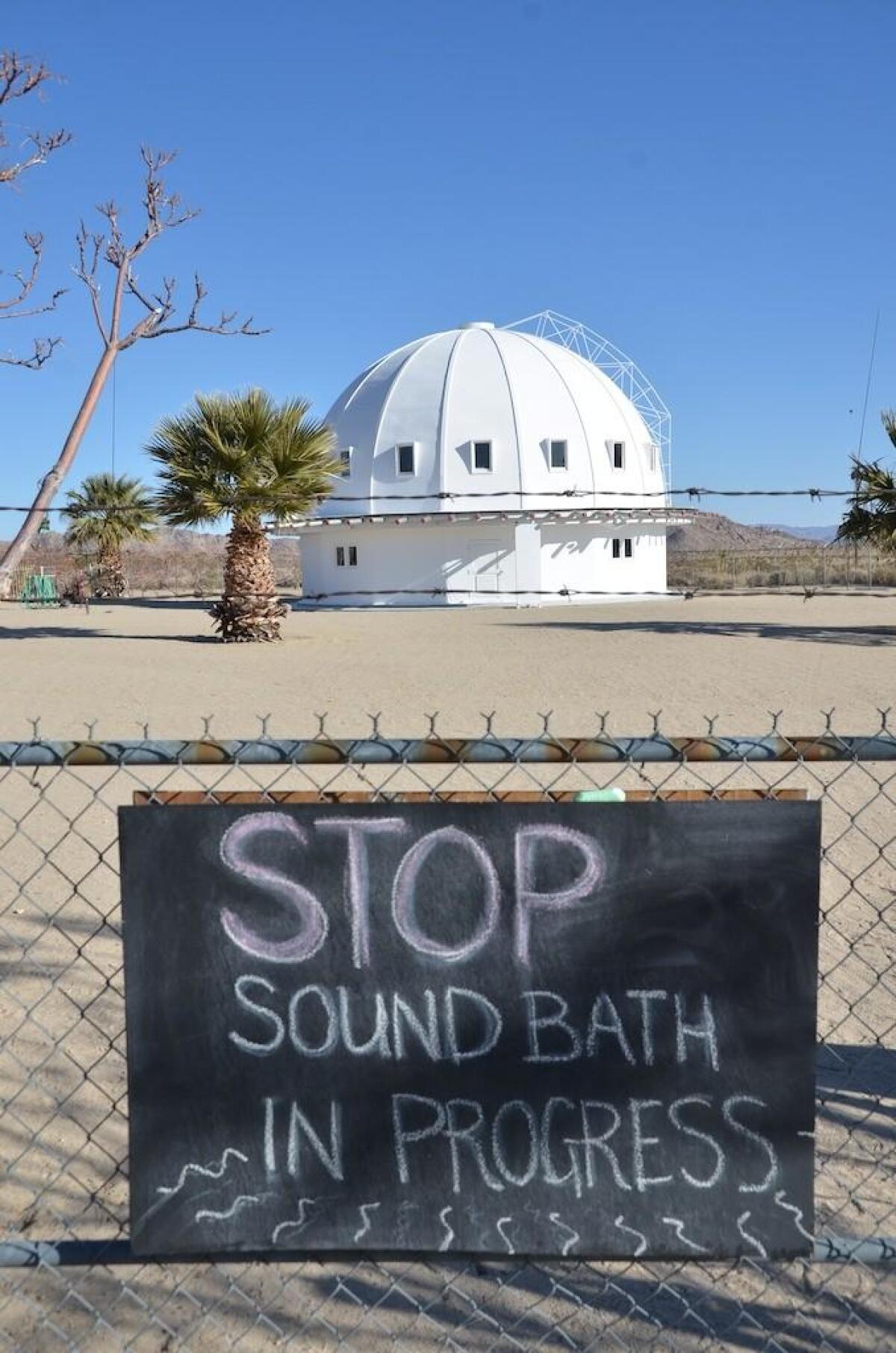
Why: Because sonically, you may be unclean. And the acoustics of this place are amazing.
What: The Integratron, on the fringe of Landers about 20 miles north of Joshua Tree National Park, was supposed to be about time travel, geomagnetism and extraterrestrial life. Its creator, George Van Tassel (1910-1978), said he was influenced by Moses’ Tabernacle, the work of Nikola Tesla and a visit from a being from Venus in 1953.
But times change. And ownership changed. And now the Integratron is about sound baths. That is, personal growth, internal harmony and the sort of calm and wonder that emerge when somebody coaxes strange vibrations from a series of tuned crystal bowls in a room full of uncanny resonance. In the middle of the desert.
The all-wood dome is 38 feet tall, 55 feet in diameter. The usual sound bath lasts 60 minutes under the building’s distinctive domed roof. No water or disrobing is involved. The Integratron is open by appointment only (no tours) and closed on Tuesdays. (It was also closed for the month of January 2017.)
Scientists, meditators, musicians, corporate thinkers, Huell Howser and Anthony Bourdain have all found their way here. But don’t worry. If this isn’t your wavelength -- or if amazing acoustics make you thirsty -- Pappy and Harriet’s is just down the road.
Where: 2477 Belfield Blvd., Landers, San Bernardino County, 136 miles east of downtown L.A.
How much: Group sound baths (by reservation) are priced at $25 per person on weekdays, $35 on weekends (age 12 and over). A private sound bath (one to four guests, Wednesdays-Fridays.) costs $250. Sorry, no overnights.
Info: The Integratron
See orange at the Monarch Butterfly Grove in Pismo Beach
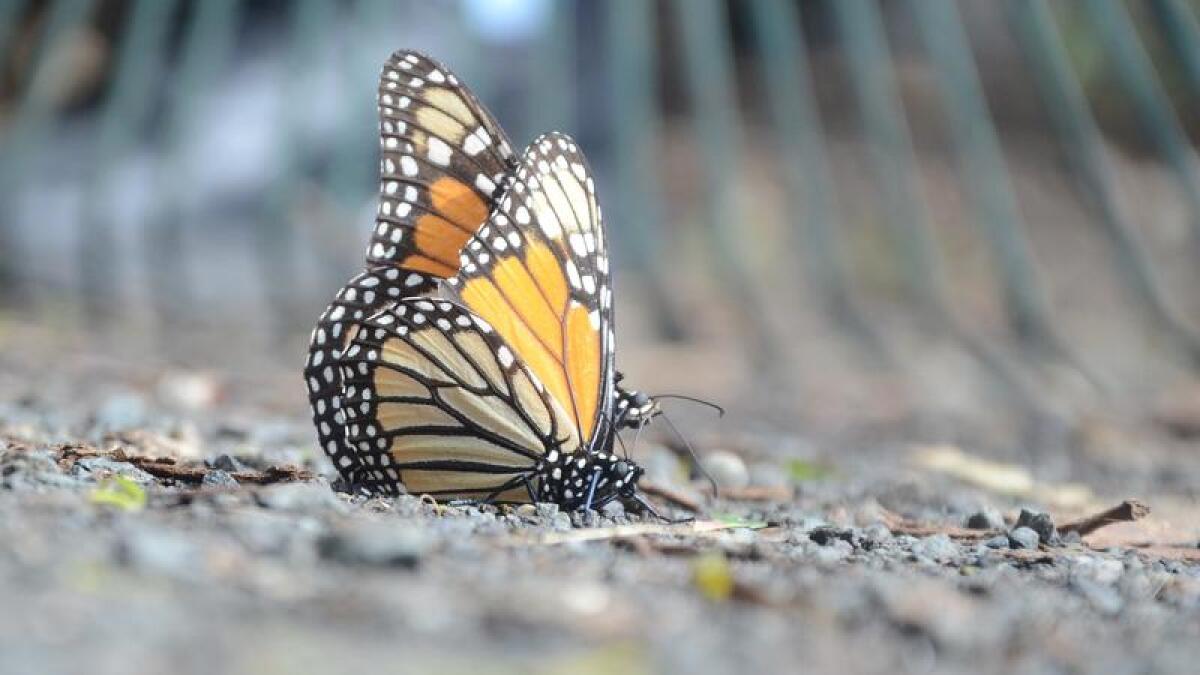
Why: A Monarch butterfly is as brilliant and delicate as anything in biology. And at this place in winter, you can see 15,000 of them at a time.
What: The Pismo Beach Monarch Butterfly Grove, just a short stroll from the sandy shore, is an unprepossessing cluster of eucalyptus and cypress trees that may befuddle you at first, especially if it’s a cloudy day. Where, you’ll wonder, are the butterflies? But look a little more closely at those overhead clumps of dead and dying leaves. They’re... not... leaves. They’re wings. When the sun comes out, their orange hues blaze. And even if the sun doesn’t come out, the docents usually have a telescope or two trained upon the biggest clumps of butterflies, and you’ll see scattered monarchs fluttering down to lower branches and the forest floor now and again.
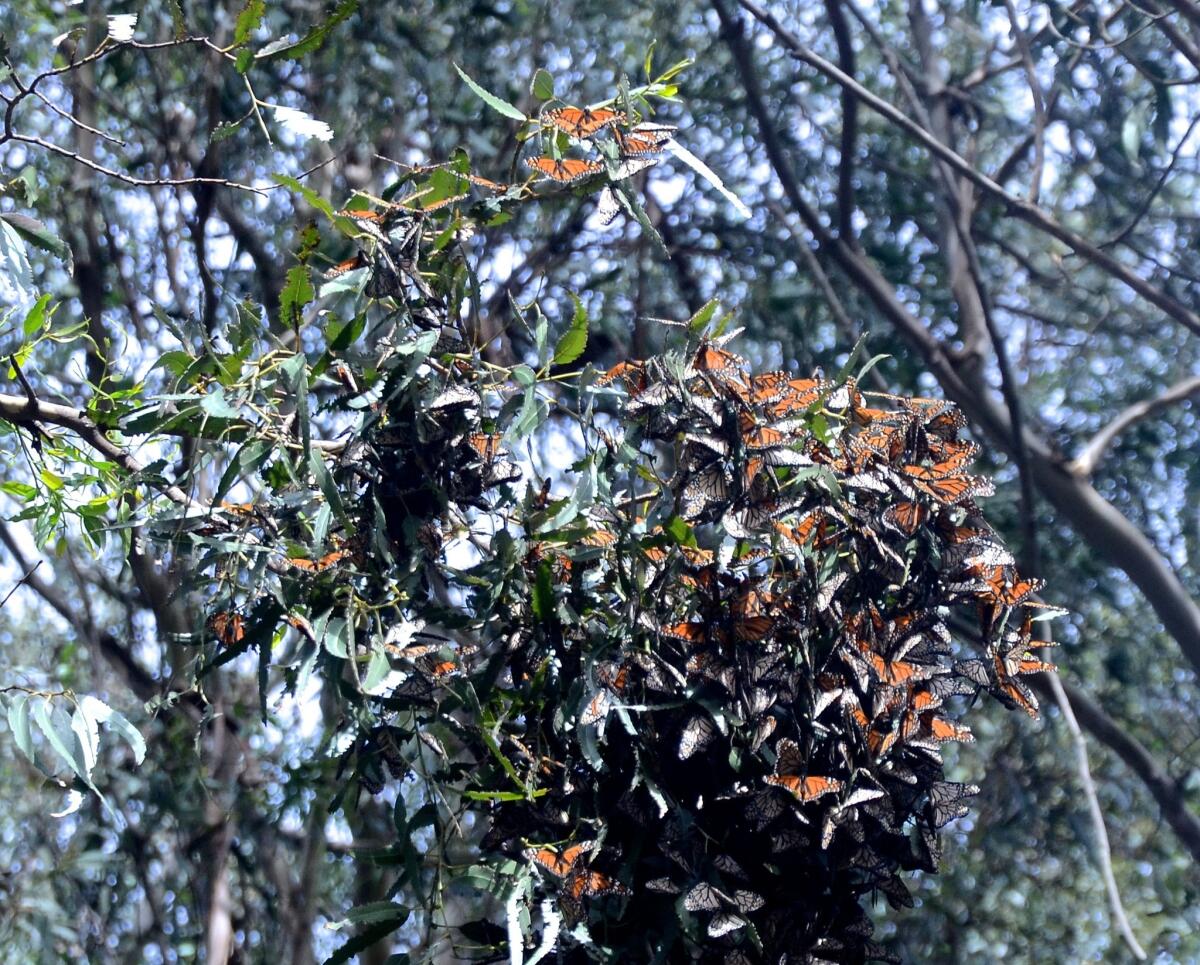
“It’s a male,” said nine-year docent Peggy Coon one chilly January day, inspecting a butterfly on the ground. “He has two little spots on his lower [hind] wings. Those are pheromone spots.”
The Monarch season at this grove usually runs late October through February. There are other monarch groves in Goleta and Pacific Grove.
Where: 400 S. Dolliver St., Pismo Beach, 183 miles northwest of downtown L.A. (That’s actually the address of Pismo State Beach’s North Beach Campground next door; the monarch grove has no street address.)
How much: Free.
Comb the ruins at San Francisco’s Lands End

Why: San Francisco’s best urban archaeology site also has ocean views and clifftop trails.
What: Lands End is several things at once. There are the ruins of Sutro Baths, which flourished, languished, closed, burned and crumbled, all between the 1890s and the 1990s. (Imagine a 3-acre bathhouse that could hold 10,000 bathers at a time.) Now, the National Park Service has set up a visitor center and Lookout Cafe.
From the baths, hike up the hill to check the view of Ocean Beach from the Cliff House. If the sun is bright, have a look through the Giant Camera. Then, if your wallet is fat or you’re getting engaged, dine at the Cliff House. If not, grab chowder at Louis’, a neighborhood stalwart since 1937.
If you still have energy, hike northeast from Lands End on the Coastal Trail, which eventually will yield views of the Golden Gate Bridge.
Oh, and see that hotel at Point Lobos and 48th avenues? That’s the Seal Rock Inn. It’s not fancy, but it’s cheaper than the downtown tourist lodgings, and it’s where Hunter S. Thompson finished his book “Fear and Loathing on the Campaign Trail.”
Where: Lands End Lookout Visitor Center, 680 Point Lobos Ave., San Francisco city and county, 387 miles northwest of downtown L.A.
How much: Free.
Info: Lands End
Enjoy Bubblegum Alley in San Luis Obispo, but don’t get attached
Why: Because this is California’s foremost known repository of used gum.
What: Bubblegum Alley is found just off Higuera Street (the main commercial drag of San Luis Obispo) on the 700 block between Garden and Broad streets. It’s the sort of unsanitary whimsy you might expect from a college town: a narrow alley whose tall brick walls are bedecked, festooned, clad and ennobled by the steady accumulation of gum that’s already been chewed.
This has gone on for decades, evolving from a lingering prank into a full-fledged civic landmark and guidebook highlight despite the fact that it disgusts a substantial part of the population. There’s a similar wall in Seattle’s Pike Place Market -- where a recent clean-up immediately gave way to renewed gum accumulation -- but there are no known rivals in California.
Feel free to pitch in. Or browse thoughtfully as if assessing an early Picasso. Or just give the alley a dismissive glance look on your way into Higuera Street attraction like the Blast 825 Taproom or Mother’s Tavern or the Frog & Peach Pub or SLO Brew ... you get the idea.
Where: Near 735 Higuera St., between Ambiance boutique and Blast 825 Taproom. San Luis Obispo city and county, 192 miles northwest of downtown L.A.
How much: Free. Unless you buy gum to contribute.
Take a lap around Pasadena’s historic Rose Bowl
Why: You’ve seen it from the blimp. Now see it up close, with a three-mile stroll around this lovely landmark and the lush public golf course next door. In a rush? You can drive it as well.
What: Sports Illustrated once dubbed the Rose Bowl the No. 1 venue in college sports, and the 94-year-old stadium has hosted several Super Bowls as well. But whether you’re a sports fan or not, you’ll appreciate this setting.
Go in the late afternoon, when the setting sun gives the San Gabriels a rosy glow, then stop for dinner or a drink on the patio of Brookside Restaurant (park for free in the course lot, or in nearby stadium lot D). Locals use this route around the stadium as their free health club, for biking and hiking. Stadium tours take place the last Friday of the month.
Where: 1001 Rose Bowl Drive, Pasadena, 12 miles east of downtown L.A.
How much: Walks are free; stadium tours cost $17.50.
Info: For tour reservations, contact the Rose Bowl.
Follow ‘Star Trek’ and the Pacific Crest Trail to jagged, unearthly Vasquez Rocks in Agua Dulce
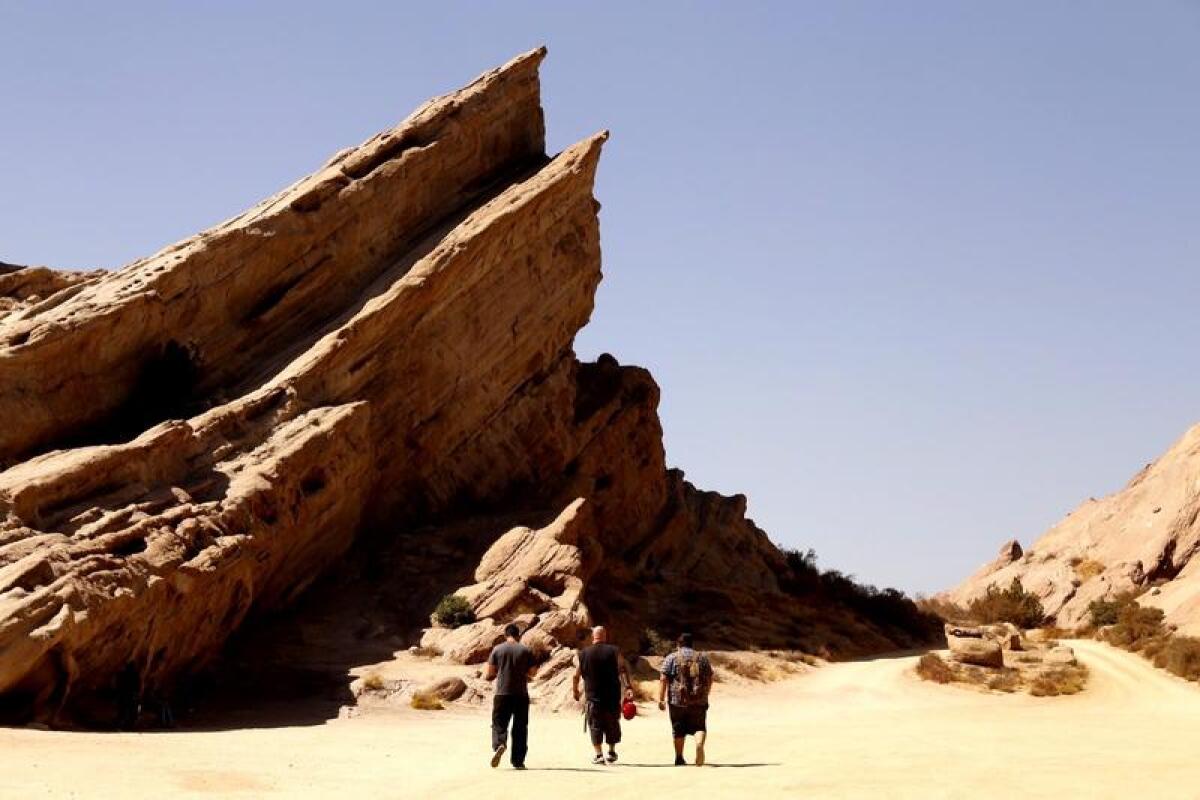
Why: Because your mission is to boldly go where William Shatner and Leonard Nimoy have gone before.
What: The jagged and otherworldly forms of Vasquez Rocks Natural Area Park, a 932-acre geological oddity in northeastern L.A. County, have been attracting film crews for nearly a century, including the markers of the vintage TV series “The Lone Ranger” (1949-1957). But no film or TV property can match the “Star Trek” franchise’s faithfulness.
In a beloved episode called “Arena,” Captain Kirk battled an overgrown lizard called a Gorn amid these red rocks. In the “Friday’s Child” episode, these rocks represented the planet Capella IV. In the “Shore Leave” episode, the rocks stand in for planet Omicron Delta, where Kirk is again called upon to do battle. IMDB.com lists more than 350 productions that have shot at the rocks (which were named for a 19th century bandit), including the films “Austin Powers,” “Blazing Saddles,” “Frankenstein” (the 1931 Boris Karloff version) and “Dracula” (the 1931 Bela Lugosi version) and the TV shows “Maverick,” “Kung Fu” and “The Big Bang Theory.”
And there’s another reason for all the foot traffic here: The Pacific Crest Trail wriggles through these rocks on its way from the Mexican border to the Canadian border, which means legions of through-hikers pass this way. But you don’t have to do all 2,650 miles or go through what Cheryl Strayed did in her best-selling PCT memoir “Wild” (2012). There’s a short section here that makes a popular 3.4-mile round trip day hike.
Where: 10700 W. Escondido Canyon Road, Agua Dulce, Los Angeles County, 43 miles north of downtown L.A.
How much: Free.
Count rainbow flags in The Castro, San Francisco’s LGBTQ HQ
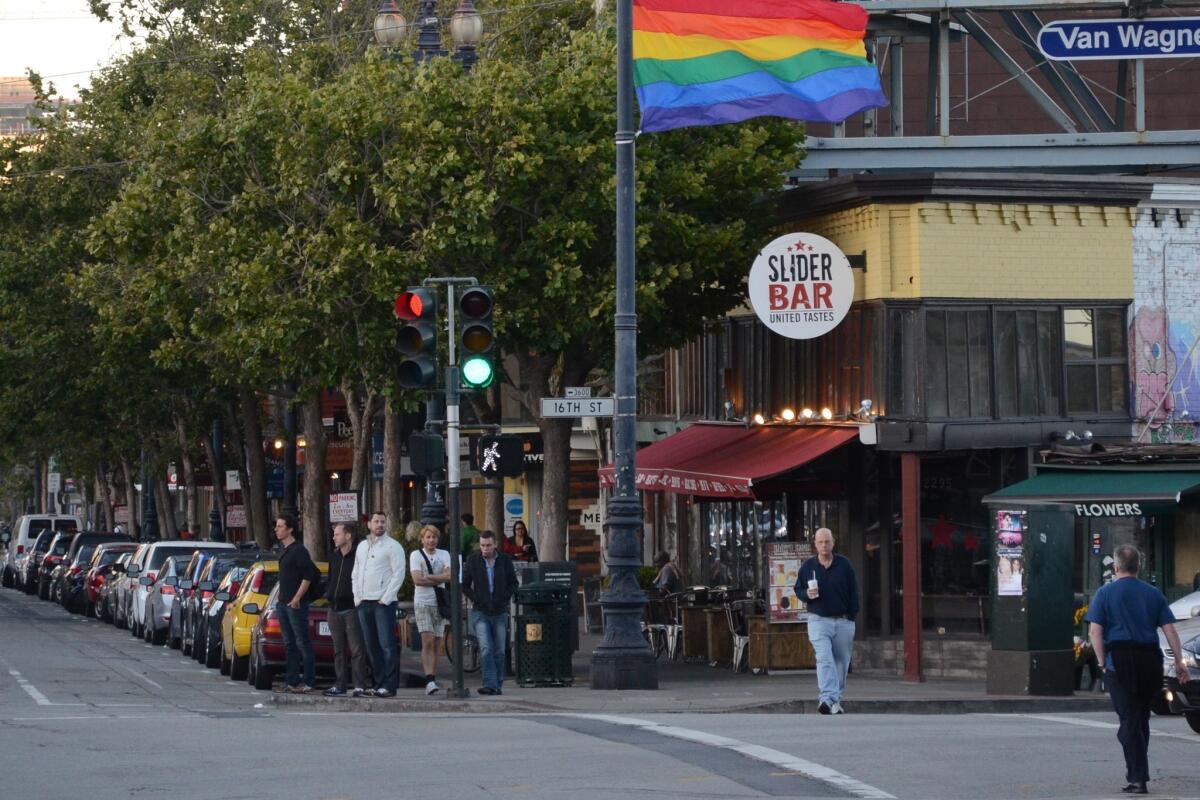
Why: Because this neighborhood’s ups and downs since the 1960s have not only reshaped San Francisco but also American attitudes.
What: Catch the F Line & Wharves streetcar up Market Street to San Francisco’s Castro neighborhood, a.k.a. LGBTQ HQ. Lively, irreverent and affluent, it’s the most famous and historically important gay neighborhood in the West.
Hop off at Market and Castro streets. Pause at the Twin Peaks Tavern, which in the early 1970s seems to have become the first gay/lesbian bar anywhere with full-length glass windows.
Take a few steps down Castro and you’ll see the fancy facades of the Castro Theatre, a throwback movie palace that dates to 1922. It’s still busy with shows and sing-along movies and such.
Learn about the rise and 1978 assassination of gay activist and county supervisor Harvey Milk; the toll of the HIV/AIDS pandemic and more at the GLBT History Museum, 4127 18th St.
Oh, and if you really are tallying rainbow flags, you’ll have to decide whether to count those multicolored crosswalks or not.
Where: Castro and Market streets, San Francisco city and county, 384 miles northwest of downtown L.A.
How much: One-way fare on a streetcar costs $2.50. GLBT History Museum adult admission is $5.
Info: GLBT History Museum
Taste the dates, see the palms and learn about sex at Shields Date Garden in Indio
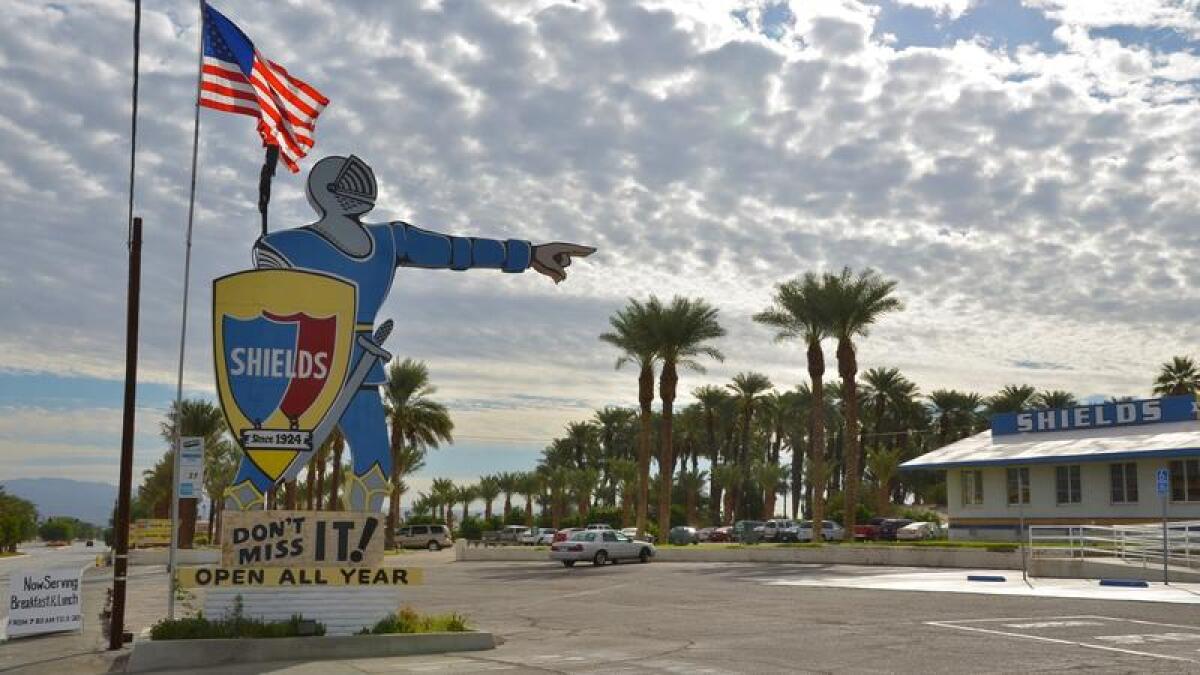
Why: The desert is hot. You are thirsty. And you have a sweet tooth.
What: Indio’s Shields Date Garden has been growing dates and making shakes since Floyd and Bess Shields showed up in 1924. Park near the vast orchard of swaying palms, order your shake at the fountain or the cafe, and don’t miss the slide show on the “romance and sex life of the date,” narrated by the late Floyd Shields himself.
(If Indio is too far out of your way, the date shakes at Hadley’s in Morongo, right on your way between Palm Springs and Los Angeles, are tasty too. But be warned that Hadley’s has relocated from its quaint old headquarters to a neighboring modern building with far less character.)
Where: 80-225 U.S. 111, Indio, Riverside County, 129 miles east of downtown L.A.
How much: $4.75 for Shields’ signature date shake, made from date crystals, vanilla ice cream and milk.
Info: Shields Date Garden
Dare to drive California’s first freeway from L.A. to Pasadena
Why: To see where freeways in the western U.S. were born, and how far they’ve come.
What: Covering a little more than eight miles between downtown Los Angeles and Pasadena, the Arroyo Seco Parkway -- a.k.a. the Pasadena Freeway, a.k.a. State Route 110 -- was the first freeway in the western U.S. It was completed in 1940, then extended here and there to join up with other, newer freeways.
If you have never driven it, brace yourself for short on-ramps, stop signs on off-ramps; narrow lanes; ever-so-slightly-banked turns; and scant shoulders. Ten minutes on this freeway is guaranteed to deepen your appreciation for every one that’s been built since.
Where: Between Glenarm Street in Pasadena and U.S. 101 in downtown Los Angeles.
How much: The cost of gas. And body work, if the lanes prove too narrow for you.
Info: Arroyo Seco Foundation
Hunt for swallows at Mission San Juan Capistrano
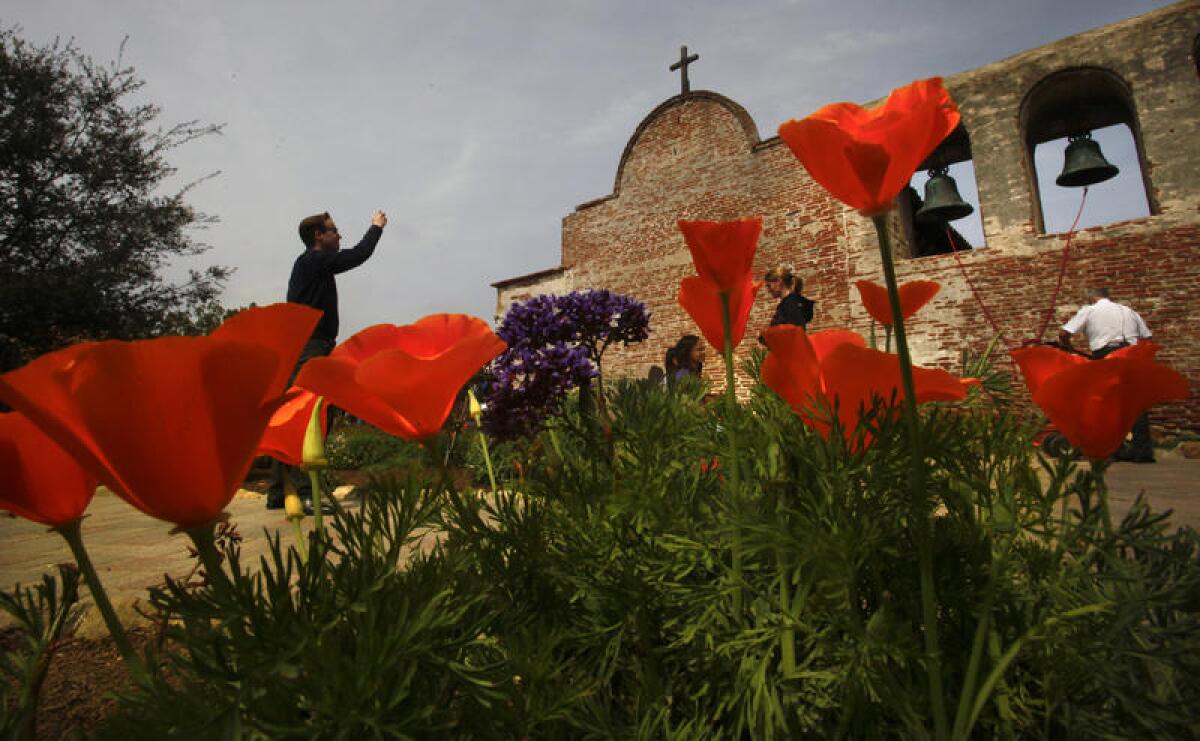
Why: This might be the most-visited of California’s missions, and it’s surely among the most scenic, with ruins and gardens. It even has a handy Amtrak station.
What: About the time George Washington and his East Coast friends were declaring independence from the British, Franciscan missionaries Junípero Serra (now St. Junípero) and Fermín Lasuén were founding and refounding this mission on behalf of the Catholic Church and Spain. Since then it has been assaulted by earthquakes (including a rough one in 1812), adopted by migrating swallows (which inspired a pop song in the 1940s, but they don’t come around as much anymore) and embraced by tourists.
The historic structures and gardens make an easy day trip by train from San Diego, Santa Barbara or any place in between. And the adjacent Los Rios District (“oldest neighborhood in California”) includes the Zoomars Petting Zoo and the Ramos House Cafe, which does weekend brunches on its sun-dappled patio.
But the mission is the main attraction. Mass is celebrated daily. Its agricultural operation may have included California’s first winery. Its Serra Chapel is the only church in California where Serra is known to have celebrated Mass. And the nonprofit organization that runs the mission is still trying to lure those swallows back.
Where: 26801 Ortega Highway, San Juan Capistrano, Orange County, 63 miles southeast of downtown L.A.
How much: Adult general admission, $9; children (ages 4-11), $6.
Chase dinosaurs in Borrego Springs
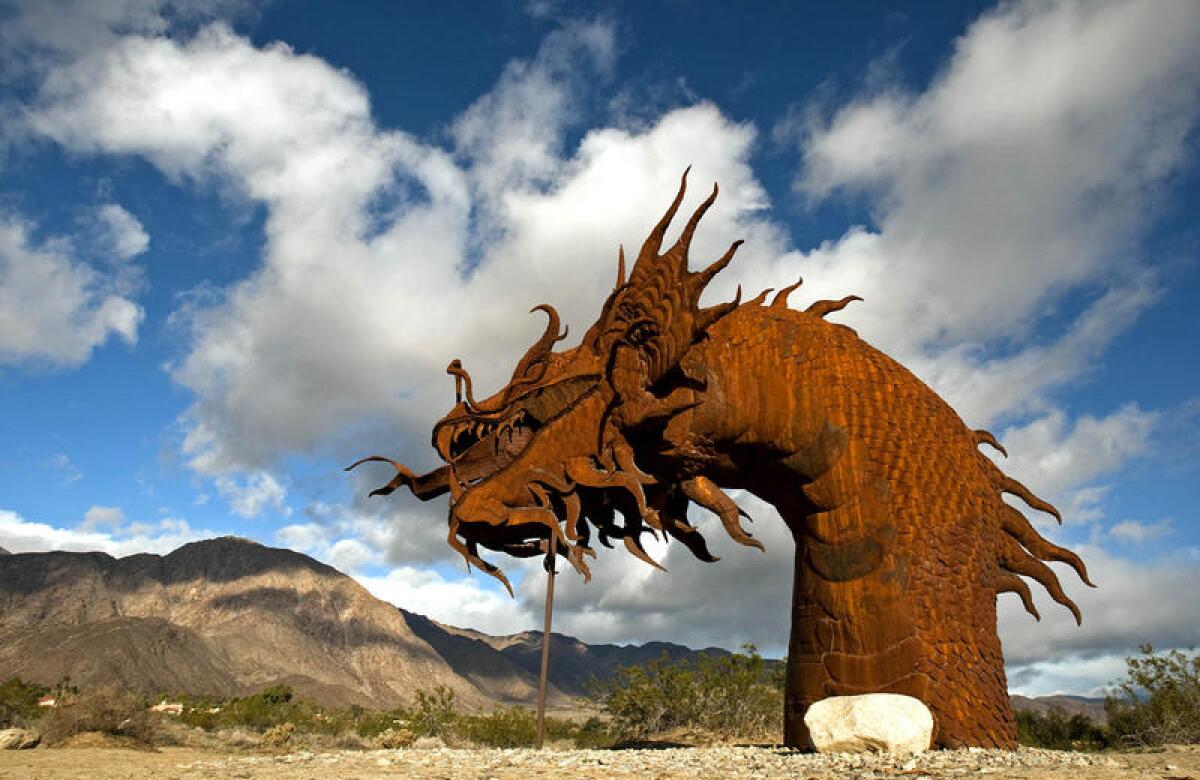
Why: Per capita, this must be California’s metal beast capital
What: Sleepy little Borrego Springs and the surrounding Anza Borrego desert back country of San Diego County will never match the high modernist style of Palm Springs. But Palm Springs will never match Borrego’s beasts.
Dinosaurs. Dragons. Mammoths, sloths and horses. A scorpion and grasshopper, staring each other down like gunfighters on Main Street. About 150 are scattered around the town, many of them visible from Borrego Springs Road, all made of metal by sculptor Ricardo Breceda.
He and these works have an unusual story, and the works can make this desert landscape seem more like a terrain of dreams ... and nightmares. (The shapes look especially ominous as silhouettes at sunset.)
You can get some sculpture locations from the free Village Guide available at the Anza-Borrego Desert Nature Center, a block west of Christmas Circle, the roundabout at the center of town. (There’s also a fancier laminated map for $9.95.)
There’s also hiking and dirt-road-driving at Anza-Borrego Desert State Park (covering 640,000 acres of badlands, slot canyons, view spots such as Fonts Point and the occasional palm oasis). And there’s historic lodging at the Casa del Zorro, a 42-acre resort that dates to 1937,
Where: Anza Borrego Desert Nature Center, 652 Palm Canyon Drive, Borrego Springs, San Diego County, 150 miles southeast of downtown L.A.
How much: Free. Or $9.95, if you want the laminated map.
Climb a boulder in Joshua Tree
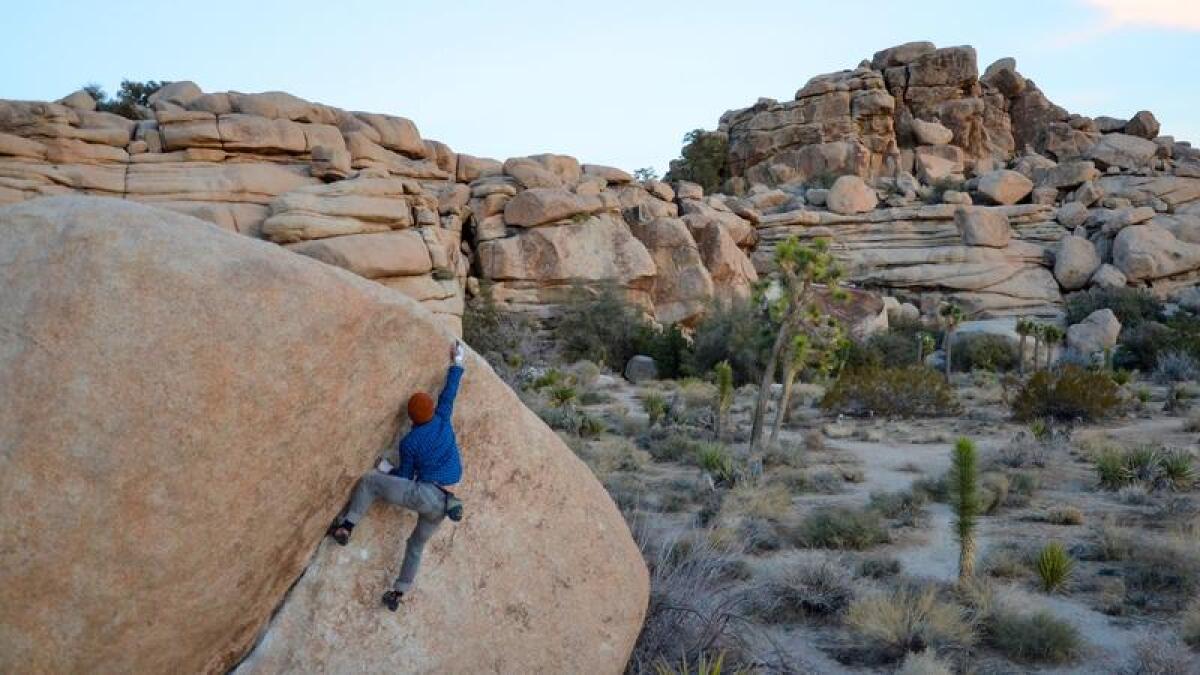
Why: These rocks are stars.
What: Joshua Tree National Park is famed for its namesake succulents, which raise their arms like beseeching biblical figures. But its granite is just as special. The park’s Hidden Valley and Wonderland of Rocks draw climbers, boulderers, desert campers and geology geeks from all over. (This is where the Mojave and Colorado deserts collide.) Prime stargazing, too.
Where: Joshua Tree National Park, San Bernardino County, 132 miles east of downtown L.A.
How much: Seven-day admission for one vehicle, $20. Or get an annual pass for $30.
Wet your whistle in an unrivaled desert roadhouse in Pioneertown
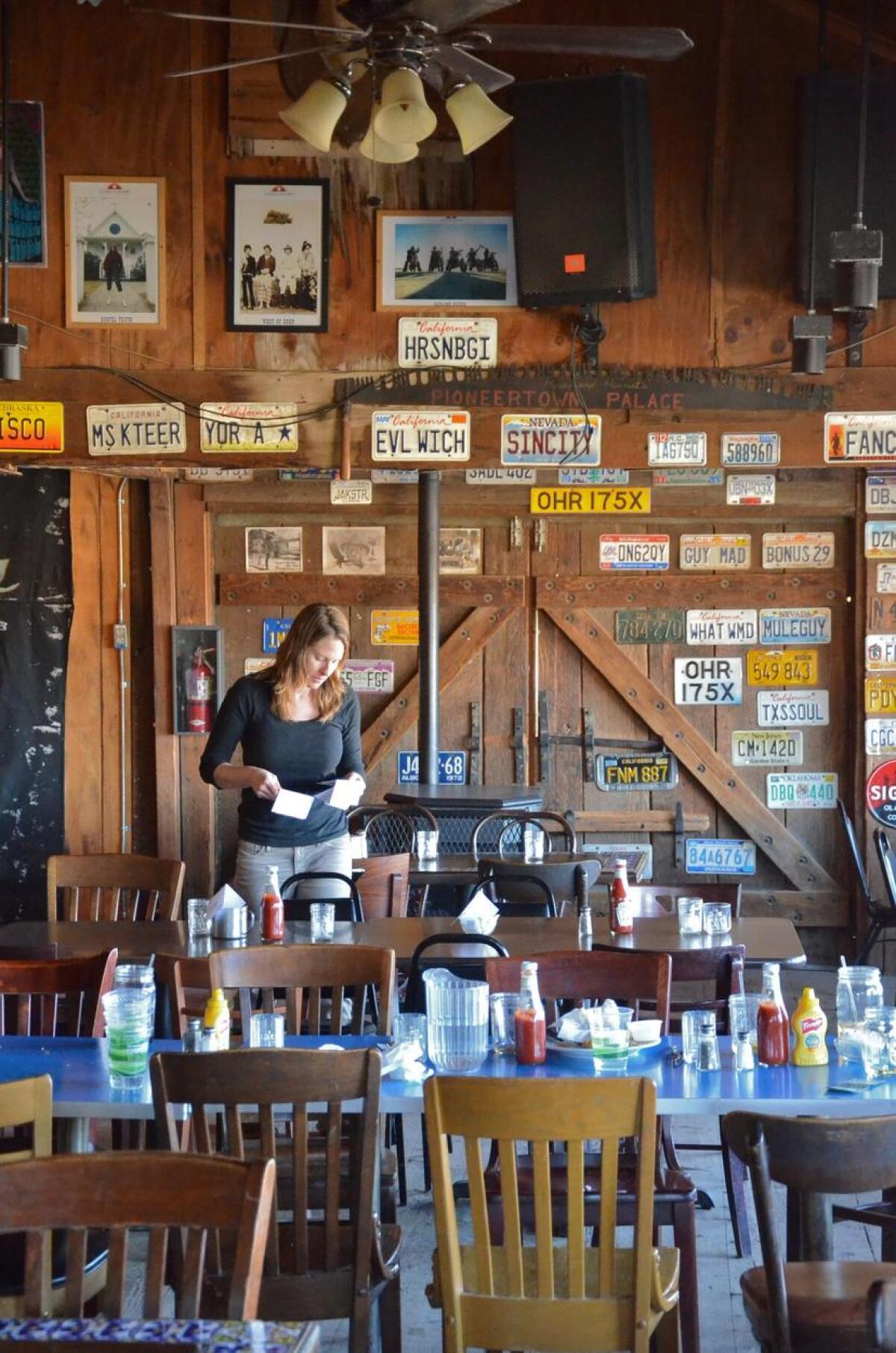
Why: This is a watering hotel that feels as though it sprouted straight from the hot, dry desert sand.
What: Pappy and Harriet don’t live here anymore. But there’s no desert roadhouse that can beat Pappy & Harriet’s in Pioneertown for true grit and live music. (Also lunch and dinner.) The joint, north of Yucca Valley, was built as a movie-set cantina in 1946 and has operated under its current name since 1982, but it feels at least as old as Willie Nelson’s wrinkles.
It usually has bands (without cover charge) Thursday through Sunday nights -- usually local performers, sometimes national ones, and for one night in October 2016, Paul McCartney. All meat and fish is cooked on an outdoor mesquite grill. It’s usually closed Tuesdays and Wednesdays.
Be sure to nose around the rest of Pioneertown, all of which was built as a movie set. Since then it’s been edging its way back toward becoming a true Western town, with a motel. For extra credit, sound bath at the Integratron in Landers.
Where: 53688 Pioneertown Road, Pioneertown, San Bernardino County, 124 miles east of downtown L.A.
How much: A burger costs $10. Menu is Tex-Mex with plenty of steaks.
Info: Pappy & Harriet’s
Hike up a canyon of true California palms at Palm Canyon in Coachella Valley
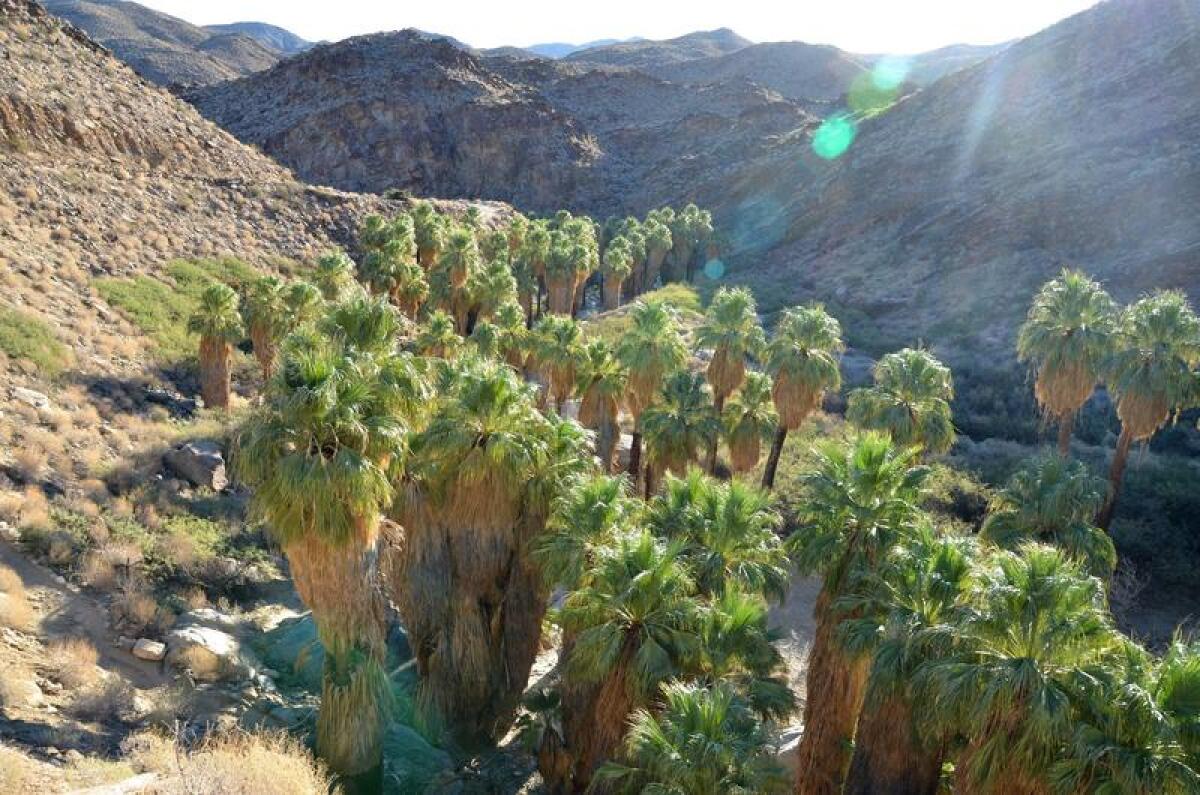
Why: Most of California’s palm trees are imported species. On this hike, you see the real thing.
What: Palm Canyon, one of several Coachella Valley canyons owned by the Agua Caliente Band of Cahuilla Indians and open to admission-paying hikers, is a desert classic. You quickly descend into a shady, boulder-strewn fold in the desert hills where the dominant life form is Washingtonia filifera (the California fan palm).
The canyon is about 15 miles long, but the main Palm Canyon Trail is a 3-mile loop. First It takes you up the canyon along the creek bed. Then it takes you back on a high ridge, with wide, dry views. The hike takes about 90 minutes.
For more advice, find a ranger. (Tribal junior ranger Raven Longbow once told me: “I look at this place like a cathedral.”) If you time it right, you can join a ranger-led hike. Either way, don’t start without a good map and plenty of water. And keep an eye out for rattlesnakes.
For more hikes nearby (many of which are also open to equestrians), check out Andreas and Murray canyons and Tahquitz Canyon, a 2-mile loop trail that includes a seasonal waterfall.
Where: The southern terminus of South Palm Canyon Drive, Palm Springs, Riverside County, 113 miles east of downtown L.A.
How much: Adult admission, $9. children (ages 6-12), $5.
Info: Indian Canyons
Ski the Sierra, see the world from Mammoth
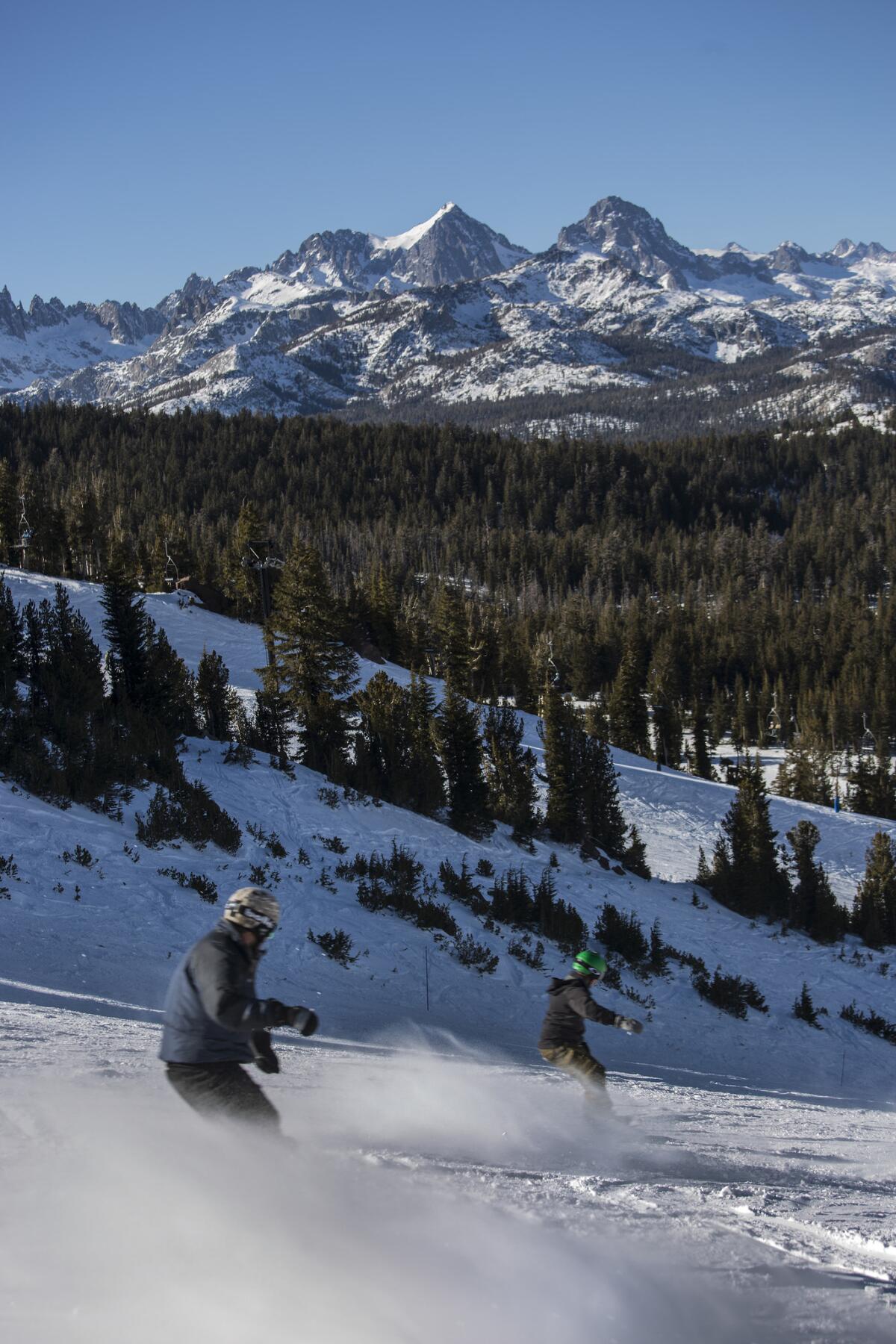
Why: Mammoth Mountain is the closest alps to L.A., a jagged Alpine wonderland with incredible views, challenging bowls and chutes, but so spread out that less-skilled skiers will think they landed in paradise as well.
What: Some of the most challenging terrain in the nation can be found off of the Gondola, all double-black diamonds, is some of the most challenging in the nation. For intermediate skiers and boarders, Road Runner offers a creamy three-mile ride all the way back to Main Lodge, the resort’s vortex. What to watch for? Views of the Minaret Range, jutting like steeples in the distance. Afterwards, grab some grub at Petra’s, a local favorite. But make reservations. Also, check out the burgers and ribs at Burgers Restaurant, one of the best values in town.
Where: Mammoth Lakes, Calif.,320 miles north of downtown L.A., in Mono County.
How much: Lift tickets start at about $100, but prices rise and fall according to time of the year.
Info: Mammoth Mountain
Celebrate the best wedding that never happened in San Diego
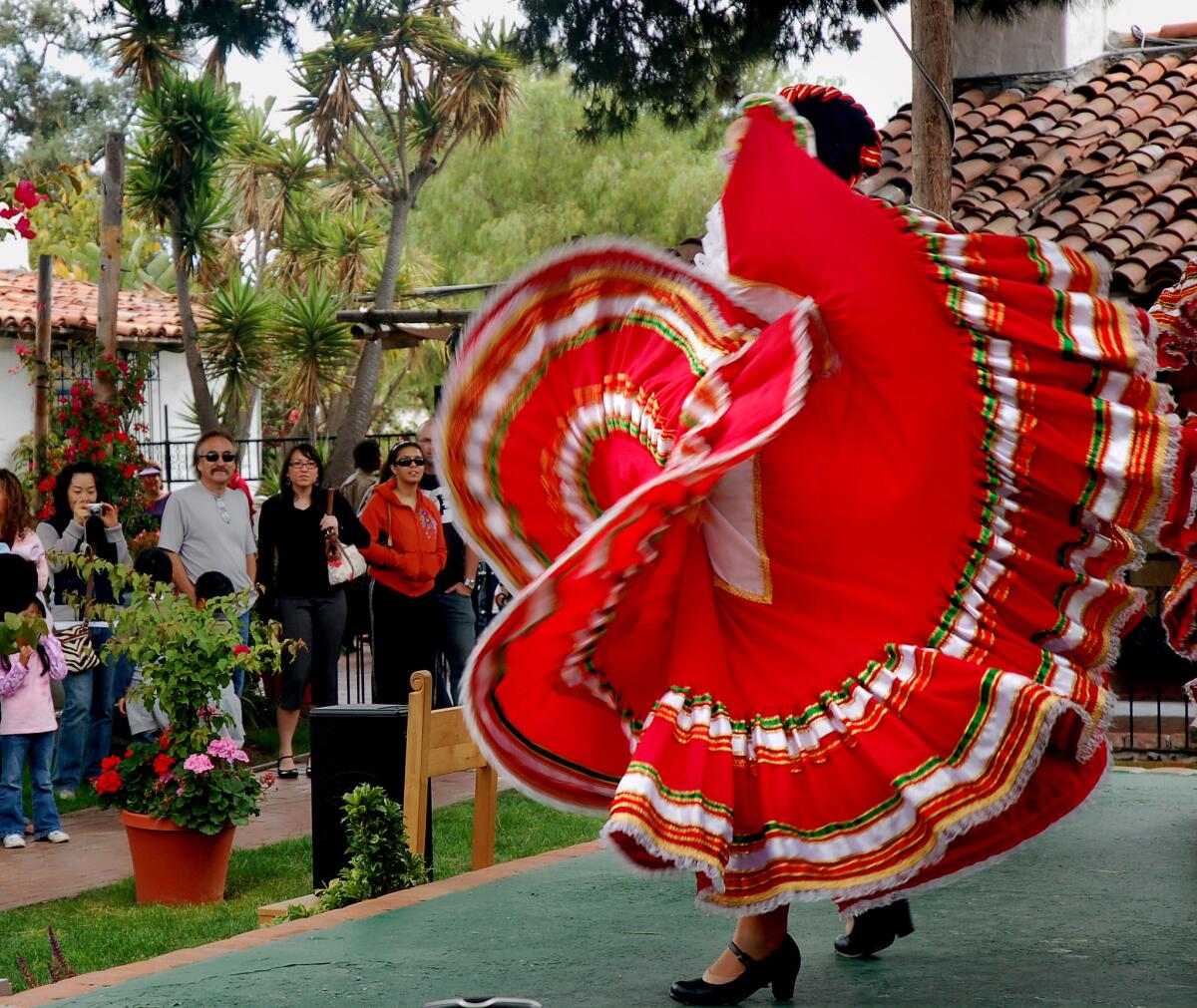
Why: Because California was selling fantasies long before Hollywood got started
What: Old Town San Diego, one of the busiest state parks in California, was the heart of the city when Mexico ruled California from the 1820s through the 1840s. Now the park and neighboring streets are home to folkloric dancers, costumed docents, rebuilt landmarks, stylish shops, galleries, restaurants, bars, a boutique hotel -- far more commercial vitality than is found in your typical state historic park. Drink it all in (including one of those enormous margaritas at the courtyard restaurant Casa de Reyes, if you dare).
And don’t miss the Casa de Estudillo. This adobe built in 1827 has been restored as a landmark. But it’ has a second story, too: For decades, beginning in the 1880s, local promoters billed the house as “Ramona’s Marriage Place,” capitalizing on the title character’s epic wedding in Helen Hunt Jackson’s 1884 novel “Ramona.”
That book not only bathed those old days in nostalgia, but it also wooed legions of turn-of-the-century tourists by rail to California, and helped launch Anglo California’s ongoing love affair with Spanish Colonial style.
Never mind that “Ramona” was a work of fiction or that its author may never have seen the Casa de Estudillo. Tourists ate it up for decades, and their zeal made Old Town a lively destination. Even now, nostalgia for the old ranchos lives on. But with the state parks people in charge of the house, Ramona’s wedding is off.
Where: 4002 Wallace St., San Diego city and county, 121 miles southeast of downtown L.A.
How much: Free. Until the margaritas start flowing.
Lounge like a midcentury mogul at Sunnylands in Rancho Mirage
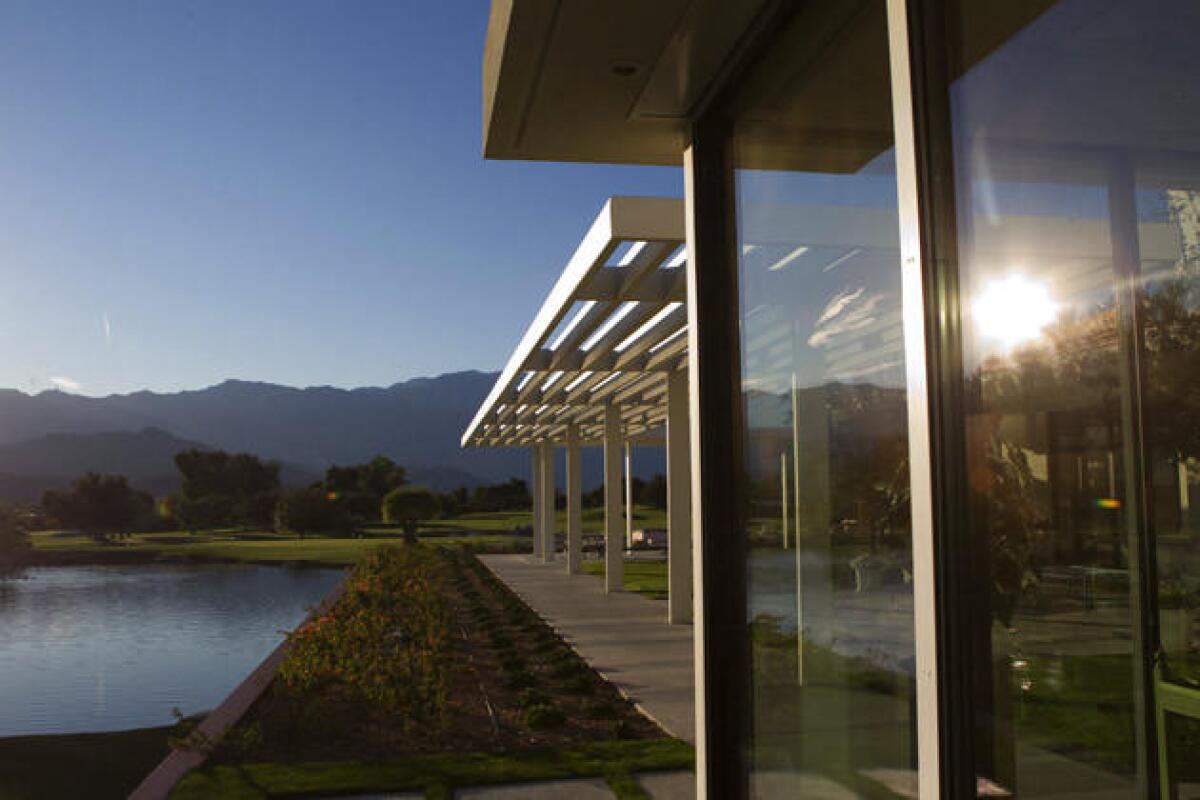
Why: It’s a one-stop lesson in desert living, midcentury design and the rise and fall of TV Guide.
What: Sunnylands -- sleek, private and vast -- was the Rancho Mirage winter playground of Walter and Leonore Annenberg, whose wealth came from TV Guide, the Philadelphia Inquirer and many other publications. They were philanthropists and socialites on a global scale. Walter served as an ambassador for Richard Nixon, and Leonore oversaw protocol for Ronald Reagan. Hoping to create a Camp David West, they commissioned architect A. Quincy Jones and built the estate on 200 acres in the Coachella Valley in 1966.
In 2012, after their deaths, the Annenberg Foundation opened parts of Sunnylands to public visits.
From the spare, cool rooms, bold hues and glass walls to the succulent gardens, the home and its midcentury design are almost mesmerizing. If Hearst Castle is yin, this is yang. And there’s a cafe on site, so you can have a light lunch on the patio and imagine you’re a head of state, a captain of industry, or Frank Sinatra on the brink of his fourth marriage. (Sinatra and Barbara Marx wed in 1976 at Sunnylands.)
In fact, heads of state still meet often at the Sunnylands Retreat. President Obama hosted 10 Southeast Asian heads of state for a single conference in February 2016. But four days a week, the rest of us usually get to share the lair, or at least 9 acres of it.
A visitor center and the gardens are open Thursday through Sunday, no reservations required. Expect crowds if you come during Modernism Week, the valley’s annual salute to midcentury design. (In 2017, it’s Feb. 16-26.)
As for the Annenbergs’ old empire, plenty has changed. They sold TV Guide to Rupert Murdoch’s News Corp. for about $3 billion in 1988. Then came the Internet. The magazine has been sold several times since. Between 1980 and 2015, circulation dropped from nearly 20 million to 1.8 million.
Where: 37977 Bob Hope Drive., Rancho Mirage, 117 miles east of downtown L.A.
How much: Beyond the visitor center and 9 acres of gardens, you can book a 90-minute tour of the Sunnylands home (no children under 10 allowed) for $45. (Wheelchairs are fine, with advance notice.) A separate grounds tour costs $20, and there’s a guided bird tour November through April for $35.
Info: Sunnylands Center
Warm up in Tamarack Lodge at Mammoth
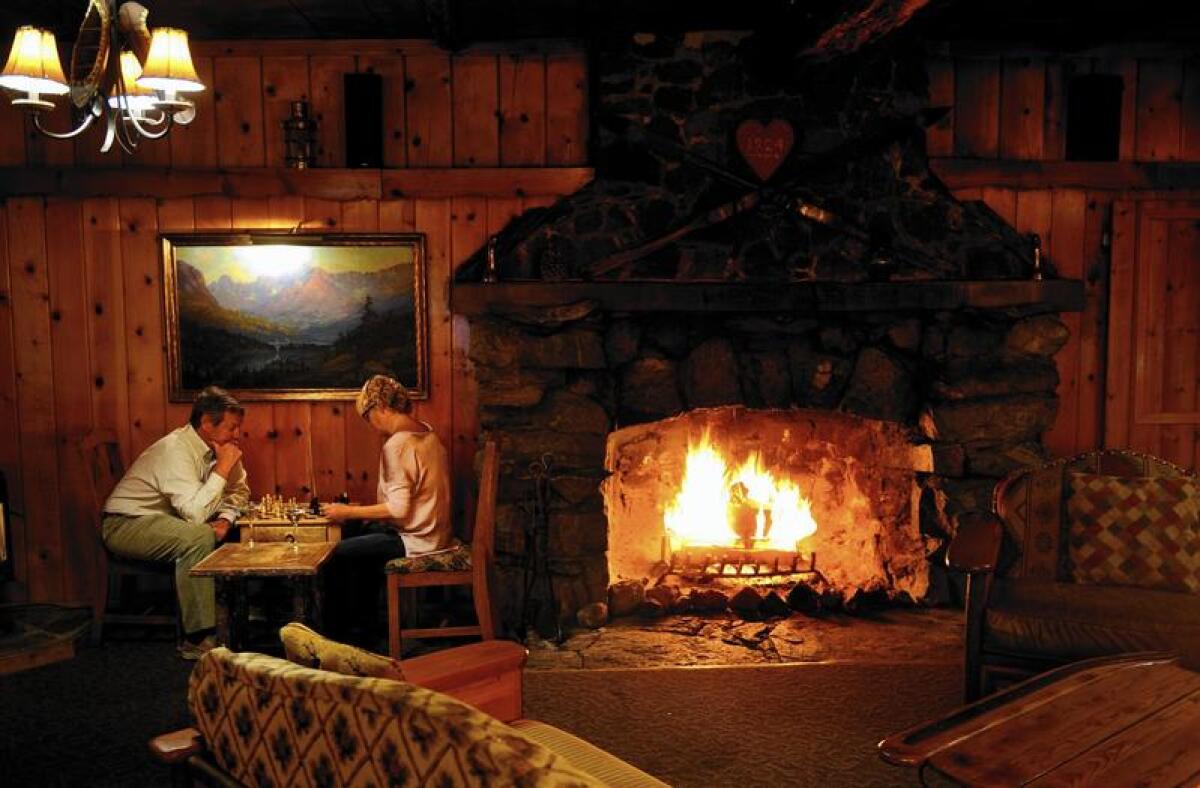
Why: Log lodge, lakeside locale, stone fireplace, long history.
What: Tamarack Lodge was built in 1924 and feels that way. It’s a lakefront log cabin with a 10-table gourmet restaurant (The Lakefront), 11 guest rooms and about three-dozen guest cabins scattered nearby.
One of the oldest continuously operated lodges in Mammoth Lakes, it serves as cross-country skiing headquarters for the area. And after a day of downhill skiing or snowboarding (Mammoth Mountain is a mile away), the restaurant makes a great change of pace from the louder nightlife in the village, 2 1/2 miles away. Big stone fireplace. Knotty pine paneling. In summer, there’s fishing and kayaking on Twin Lakes.
Where: 163 Twin Lakes Road, Mammoth Lakes, Mono County, 318 miles north of downtown L.A.
How much: For a dinner of angus bistro steak, $37. For lodge rooms with private bath, winter rates usually run $139 per night and up, plus a $20 resort fee.
Info: Tamarack Lodge
Take a 10-minute tram ride from Palm Springs’ desert heat to a snowy mountaintop
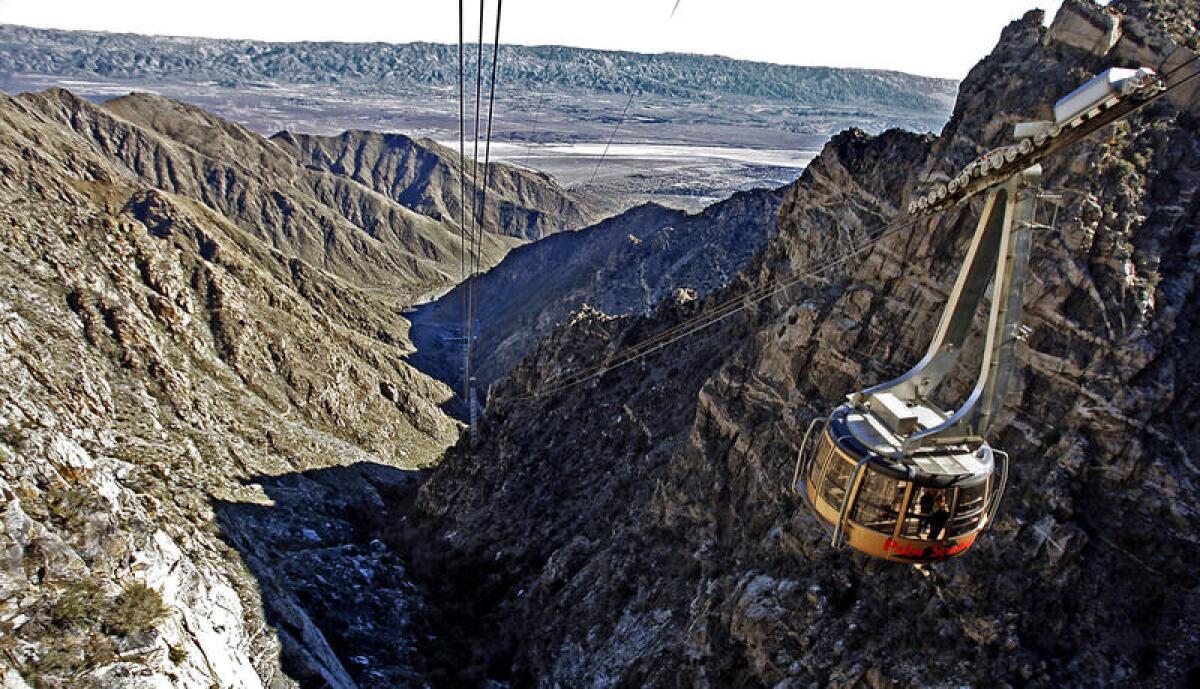
Why: Where else are you going to travel from the baking desert floor to a snowy mountaintop in 10 minutes?
What: Plenty of crazy schemes have been hatched in the blast-furnace heat of the Coachella Valley, yet somehow this one came true. Back in 1935, a man named Francis Crocker proposed a tram ride to connect the Coachella Valley desert floor to the upper slopes of Mt. San Jacinto. Twenty-eight years later, the Palm Springs Aerial Tramway opened.
You start at Valley Station, elevation 2,643 feet, having made sure that there’s snow up high. You hop on a gondola (they rotate as they climb) and hop off at the Mountain Station (elevation 8,516 feet). There are a couple of restaurants at the top (Peaks is fancy, Pines is a cafeteria), but what you really want to do is romp in the snow.
Once there’s a good amount on the ground, the Mountain Station-adjacent Adventure Center will open, renting snowshoes and cross-country skis.
Where: 1 Tram Way, Palm Springs, Riverside County, 116 miles east of downtown L.A.
How much: Adult fare, $25.95; children (ages 3-12), $16.95; Also, parking costs $5 per car.
Inspect the woodwork in a spellbinding Pasadena Craftsman house
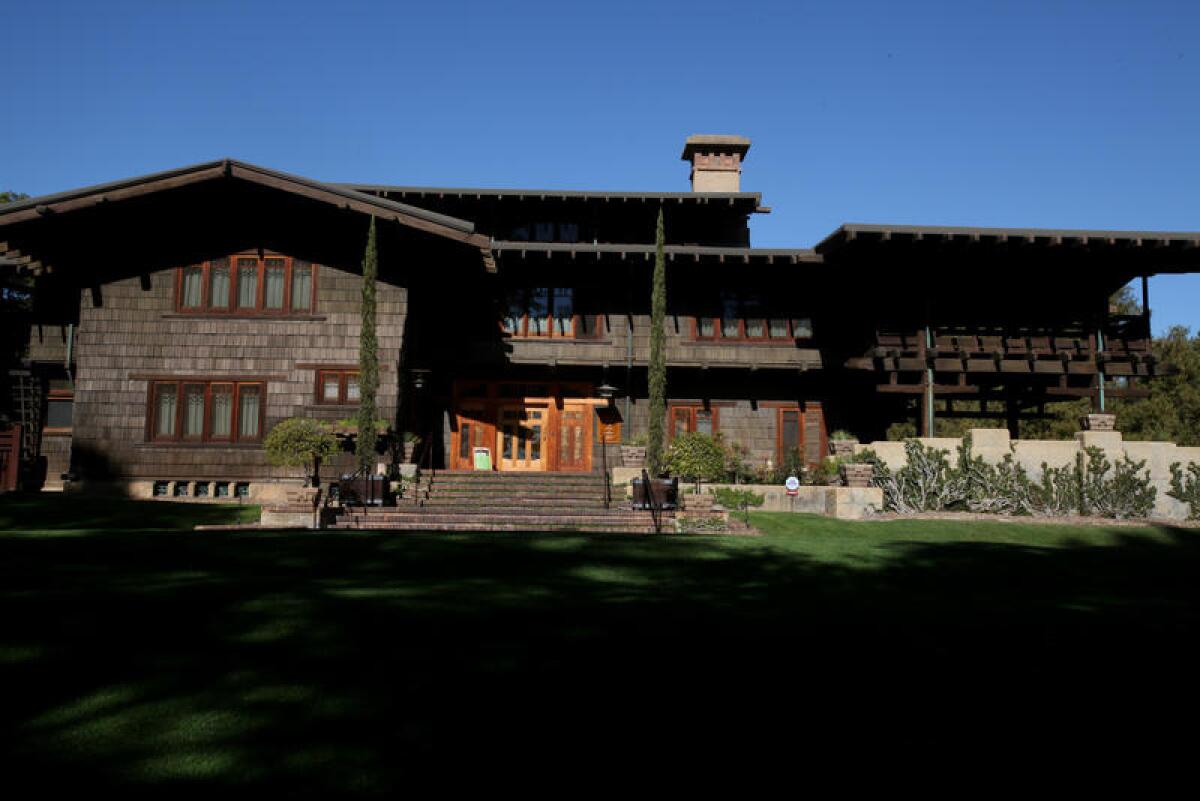
Why: Pasadena’s Gamble House, open for tours Thursdays-Sundays, might be the ultimate California Craftsman house.
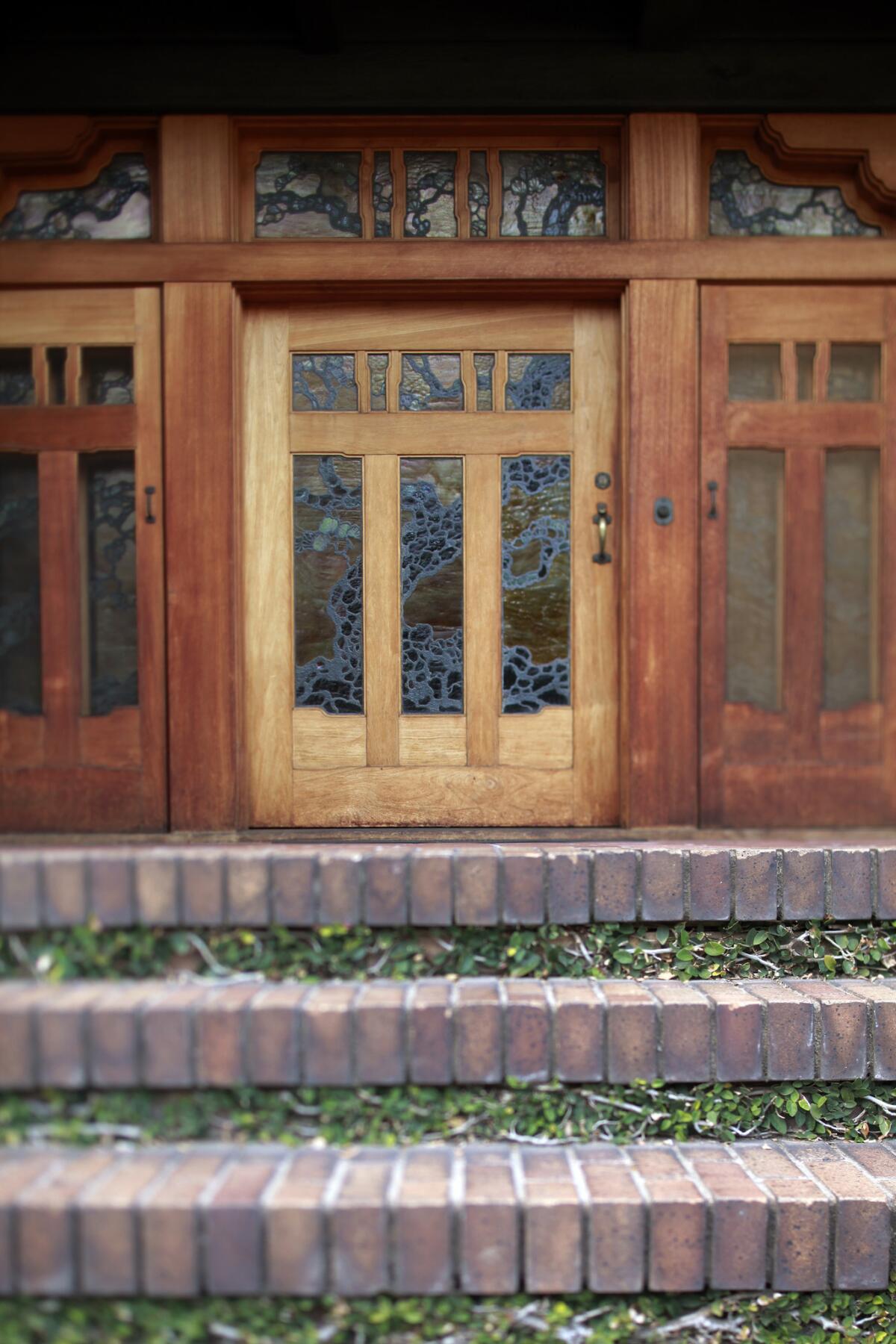
What: Check out the leaded glass of the front door (it forms an oak tree), the detailed woodwork at the interior stairs, the dim, becalming feel of its two-story layout.
The Gamble House, designed by brothers Charles and Henry Greene (whose story is also told at the Huntington museum in nearby San Marino), was built in 1908 for members of one of the families behind Procter & Gamble. Nowadays the city of Pasadena owns it and USC manages it. In fact, USC uses architecture students as live-in caretakers.
Where: 4 Westmoreland Place, Pasadena, Los Angeles County, 10 miles northeast of downtown L.A.
How much: Hourlong guided tours cost $15 per adult.
Info: The Gamble House
Ponder sainthood at St. Junípero’s grave at the Carmel mission
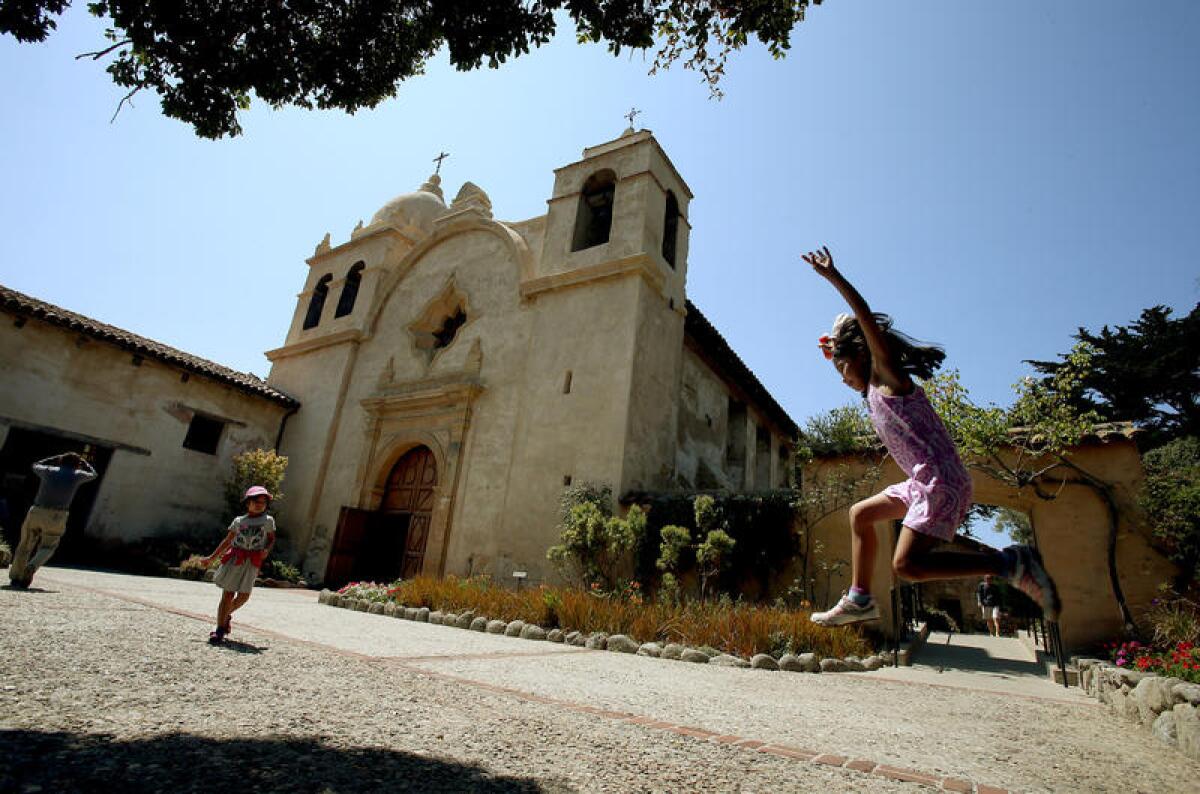
Why: No man or woman has shaped California more profoundly than Junípero Serra, now St. Junípero.
What: The pioneering padre who founded the first nine of California’s 21 missions in the 18th century and won sainthood in 2015 is buried at the Carmel Mission, which is officially known as San Carlos Borromeo de Carmel Mission.
Walk the basilica, museums and courtyard, still home to an active parish. Check out the reconstruction of the cell where Serra is said to have died in 1784. Pay respects at his cenotaph. Pay further respects in the mission’s Indian Cemetery.
Where: Carmel Mission, 3080 Rio Road, Carmel, 323 miles northwest of downtown L.A.
How much: Adult admission, $6.50; children (ages 7-17), $2.
Info: Carmel Mission
Count lilies at Pasadena’s Norton Simon Museum, inside and out
Why: For a small museum, the Norton Simon packs in a lot of great art, including a bunch of Impressionists and the Mexican master Diego Rivera.
What: The Norton Simon Museum‘s European and Asian collections usually get most of the attention, especially the Impressionists. But don’t overlook Rivera’s “The Flower Vendor,” an iconic 1941 oil painting of a girl with her arms around a big batch of lilies. (Actor Cary Grant gave it to the museum in 1980.)
Get a good look at the girl and her lilies, then head outside to the sculpture garden, where the lilies are real. In fact, the plantings and reflecting pool have been designed to echo France’s Giverny gardens that inspired many of Claude Monet’s works.
Where: 411 W. Colorado Blvd., Pasadena
How much: Adult admission, $12. Children (18 and under) are free.
Info: Norton Simon Museum
Greet dawn on a dune in Death Valley National Park
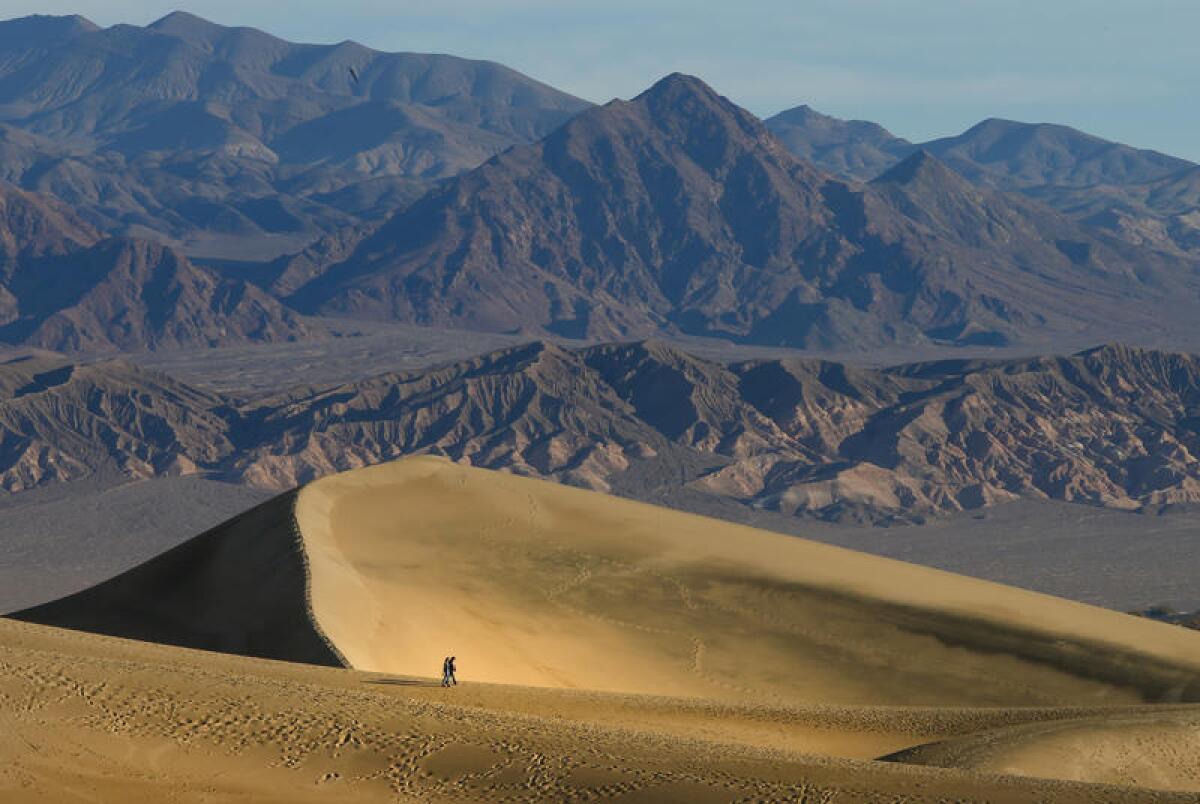
Why: Because outside of “Lawrence of Arabia,” you don’t see scenery like this too often.
What: The Mesquite Flat Sand Dunes are the place to be for sunrise in Death Valley. If you camp or sleep at the hotel at Stovepipe Wells, you can get up just before dawn, rush out, scramble up a dune and watch the world come to life.
Where: Off California Highway 190, 2 miles east of Stovepipe Wells, Death Valley National Park, Inyo County, 250 miles northeast of downtown L.A.
How much: Park entry is $25 per car for seven days.
Inspect palms from Santa Barbara’s Stearns Wharf
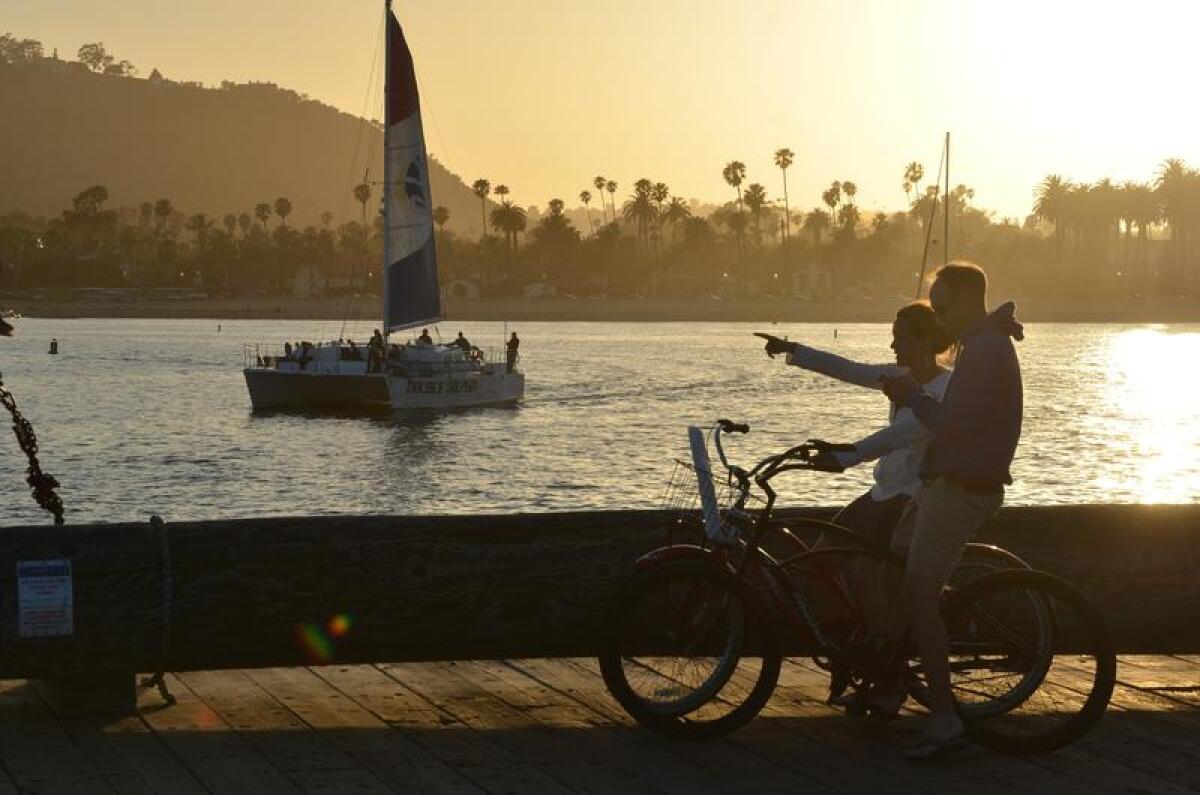
Why: Because this is the damp, wooden heart of the California Riviera.
What: Stearns Wharf dates back to the 1870s and gives you a wide view of prosperous Santa Barbara. The palm-shaded homes of the rich and famous climb the hills. The college students scuffle among the bars on State Street. The gulls wheel overhead. And you stand over the ocean, choosing among various restaurants, shops and others.
The wharf includes Madame Rosinka (a palm reader whose business license is said to date to 1951) and the Santa Barbara Museum of Natural History Sea Center, which includes many hands-on exhibits, among them a “shark touch tank.”
Where: 217 Stearns Wharf, Santa Barbara city and county, 95 miles northwest of downtown L.A.
How much: Free, at least until the palmistry begins.
Info: Stearns Wharf
Catch a wave at the Wedge in Newport Beach
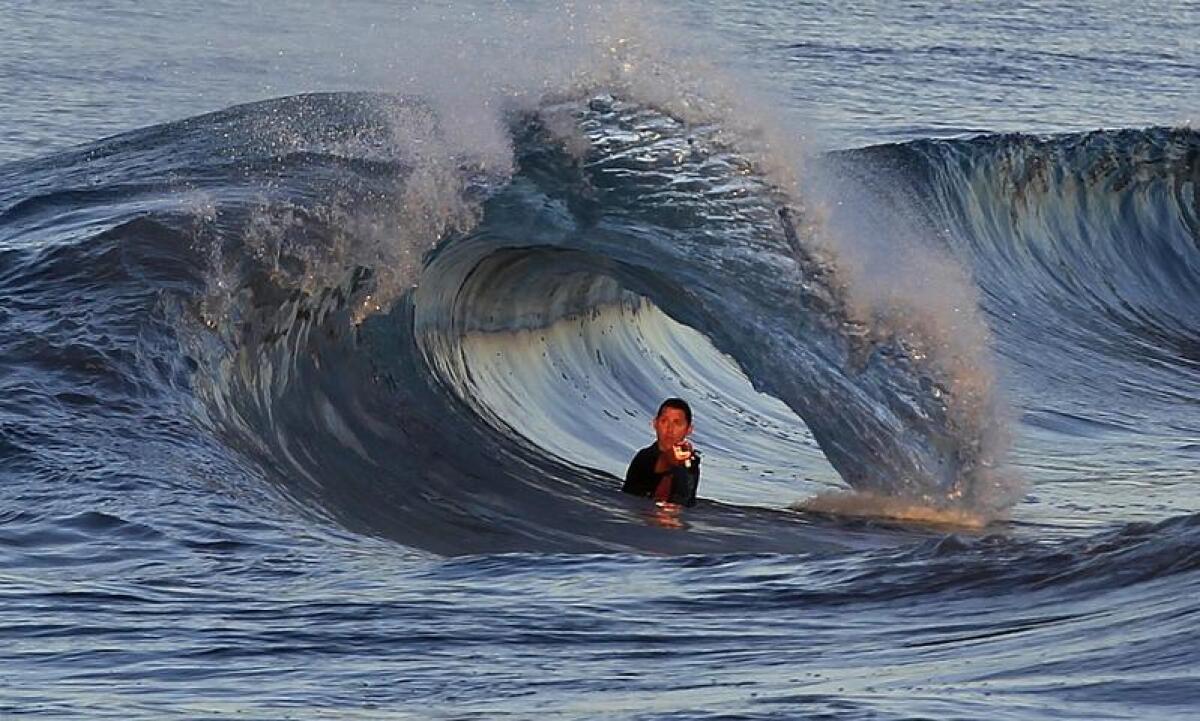
Why: This is probably the best-known body-surfing beach in the U.S.
What: The Wedge awaits at the east end of Newport Beach’s Balboa Peninsula. If you’re bold, hop in. If you’re prudent, sit back a while first and watch the carnage.
The Wedge’s abrupt break produces powerful waves that close out quickly, sometimes enriching body surfers’ lives, sometimes standing them on their heads. Also, the backwash between waves is unusually strong.
For a little historical perspective, you can find the Wedge in the 1964 surf movie “Endless Summer.” And there’s a splendidly twangy 1963 instrumental called “The Wedge,” by Dick Dale, king of the surf guitar.
Since the early 1990s, board surfers have been banned during peak hours from May through October.
Where: East end, Balboa Peninsula, Newport Beach, Orange County.
How much: Free.
Info: Visit Newport Beach
Wave like POTUS from Air Force One at the Reagan Library
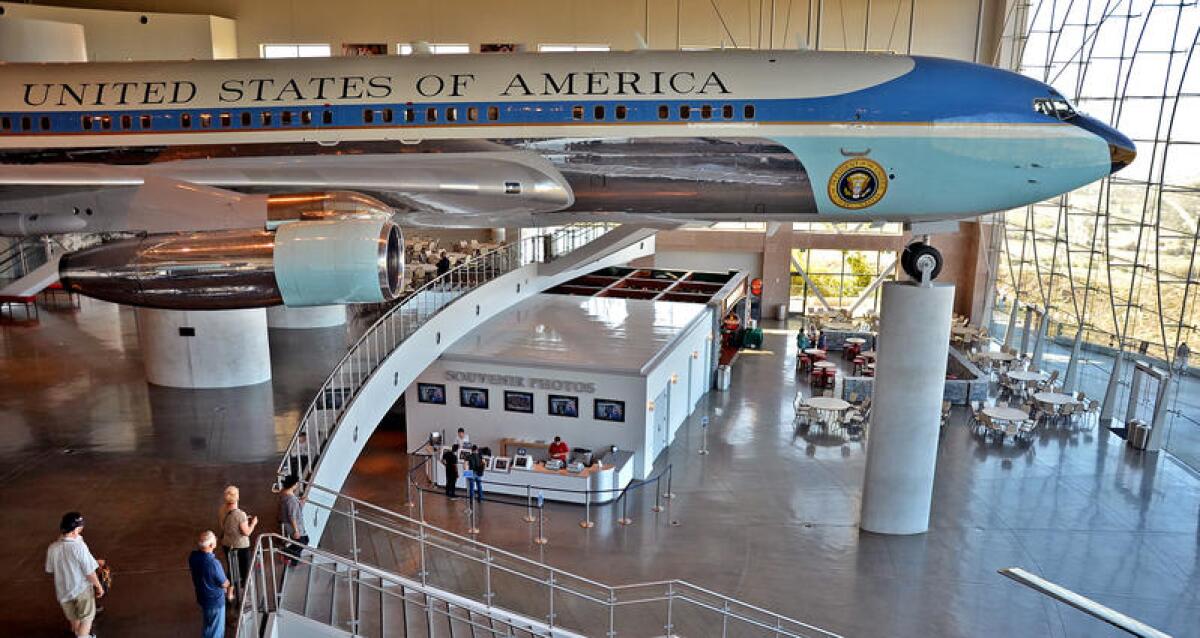
Why: The last time a Californian was allowed to run the country, it was this man.
What: Perched on the blond hills of Simi Valley, the Ronald Reagan Presidential Library & Museum teems with White House artifacts and reminders of the 1980s, from the late president’s plane to a batch of notecards bearing his small, backward-leaning handwriting. (He collected anecdotes for speech-making.)
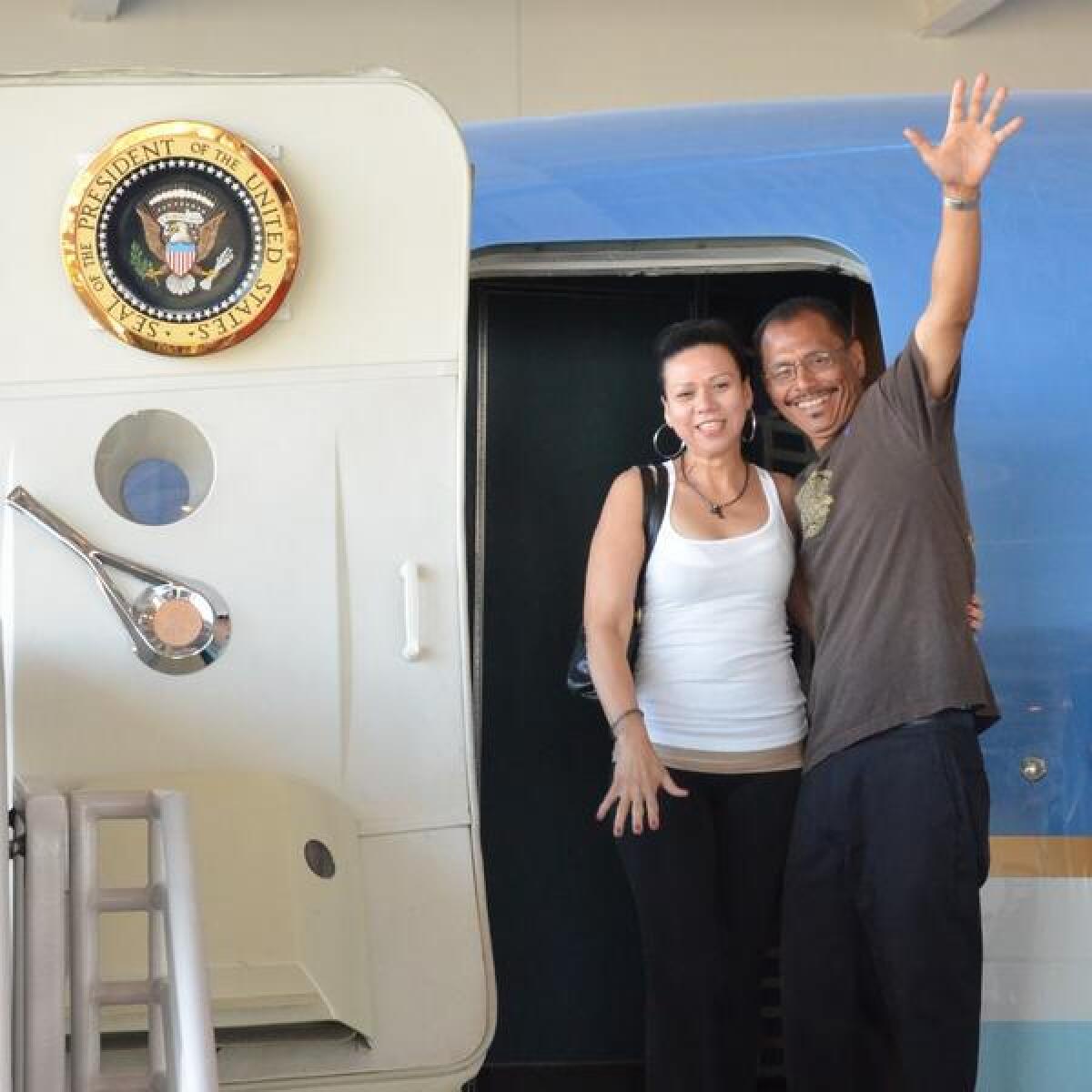
Of course, you’ll want to board the plane (which carried seven presidents from 1973 to 2001), check out the inside and capitalize on the photo op at the door. Be sure to notice the big chunk of the Berlin Wall outside. The library includes many video and audio features -- fitting, for a storied communicator.
Reagan served as California’s governor from 1967 to 1975 and U.S. president from 1981 to 1989. He died in 2004. He and Nancy Reagan, who died in early 2016, are buried at a memorial site on the grounds.
Where: 40 Presidential Drive, Simi Valley, Ventura County, 53 miles northwest of downtown L.A.
How much: Adult admission, $21.
Talk to Paul Bunyan amid the Trees of Mystery

Why: He’s a 49-foot-tall lumberjack, and he has a wisecrack ready for your kid.
What: Call him the kitsch king of Klamath or maybe, given his girth and ax, you should just call him Mr. Bunyan. About 36 miles shy of the Oregon border stands this Paul Bunyan, towering 49 feet, 2 inches above U.S. 101, flanked by Babe, his faithful blue ox.
Holler up a question during open hours and he’ll give you a live answer, and maybe a wink and a wave, perhaps an account of his regular Friday night poker game with Bigfoot. (Ira Glass of “This American Life” interviewed him in 2013, with startling results.)
Bunyan is the roadside attraction that draws many a family into Trees of Mystery, a redwood theme park that dates to 1946. (If you want to keep the talking-giant illusion intact, don’t look too closely at the back of Paul’s right shoe.)
But there are many kid-friendly selling points. Your ticket gets you aboard the SkyTrail (a gondola that carries you on an eight-to-10-minute journey above the forest slopes) and grants you entrance to the Forest Experience Trail, Wilderness Trail, the Trail of Tall Trees and the Kingdom of Trees -- a medley of big trees, strangely shaped trees, epic wood carvings and good, clean lumberjack hucksterism.
Where: 15500 U.S. 101, Klamath, Del Norte County, 712 miles northwest of downtown L.A.
How much: Adult general admission, $16. Children aged 6-12, $8.
Info: Trees of Mystery
Watch the migrating whales kick up their tails
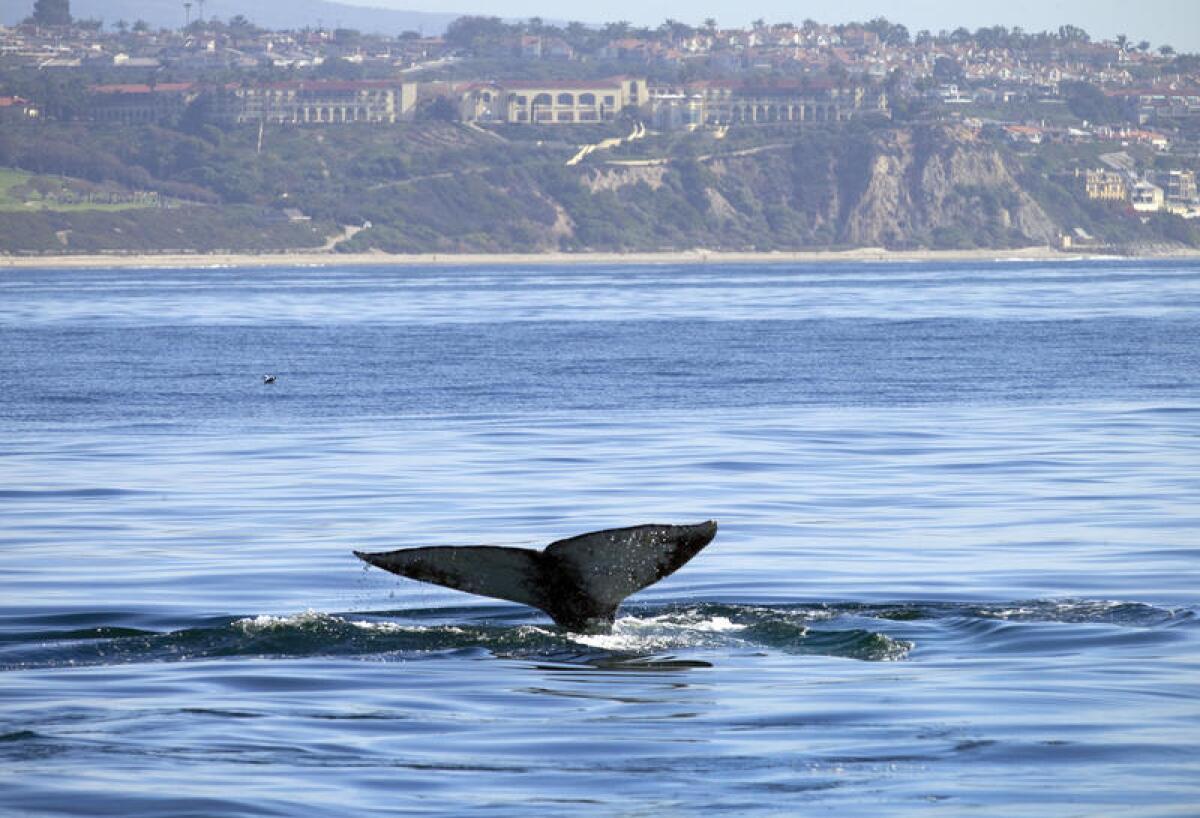
Why: The winter months mean whale sightings along the California coast, particularly grays but also featuring orca sightings. About 20,000 to 25,000 Pacific gray whales migrate every year. To the grays, the warm waters off Mexico are a giant nursery; they give birth there before returning north to Alaska to feed.
What: The winter gray-whale season starts just after Christmas, peaks in mid-January and runs through April. Sightseeing trips generally last three hours, and depart in mornings or afternoons. First-timers should dress in layers to ward off the chill, wear skid-resistant shoes and bring sunscreen, even on overcast winter days. Morning departures are generally gentler than in the afternoons, when the winds pick up.
Where: Piers and harbors across Southern California, including:
Harbor Breeze Cruises runs tours out of Long Beach, near the Aquarium of the Pacific, usually at noon and 3 p.m. Adults, $45; children 3-11 $40; under 3 free. (562) 432-4900.
Dana Point Harbor, 90 minutes south of L.A., is always a hotspot of whale watching excursions. Captain Dave’s Dolphin & Whale Watching Safari, fleet offers a Plexiglas bow that allows passengers to climb down beneath the water’s surface for an aquarium view. Info: (949) 488-2828, www.dolphinsafari.com; Adults: $65; children, ages 1 to 12, $45; infants, up to 12 months, $20
In Oxnard, Island Packers, and Channel Islands Sportfishing Center offer whale watching excursions. Island Packers offers 3½ hour trips with morning and afternoon departures from Channel Islands, Oxnard and Ventura harbors. The fare is $38 for adults; $34 for seniors 55 and older, $28 for children (3-12), and free for children 3 and younger.
From Dec. 26 through April 30, Channel Islands Sportfishing Center provides half-day whale watching excursions out of Oxnard’s Channel Islands Harbor (one every weekday morning, twice daily on weekends). Rates are $50 for adults, $40 for seniors and $30 for children under 12.
How much: Group tours start at $12.
Info: Cabrillo Marine Aquarium
Hike the Hollywood sign, without annoying the neighbors
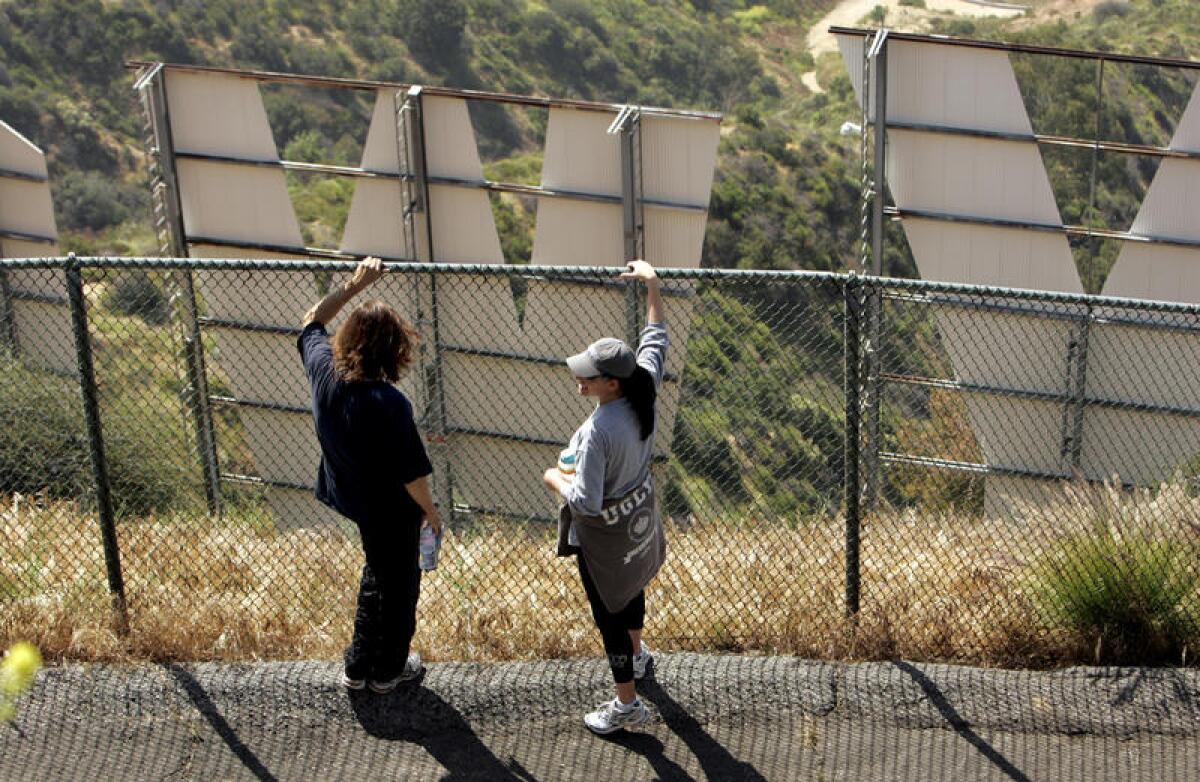
Why: For a brush with fame and maybe a view of DOOWYLLOH -- those familiar white capital letters from above and behind.
What: Legions of tourists make the hike to the Hollywood sign on Mt. Lee (elevation 1,708 feet), but many of them make enemies in Beachwood Canyon, the neighborhood under the sign. Not you.
You might even make friends because you won’t stop in the middle of North Beachwood Drive to take photos. And you’ll park legally (which means doing this on a weekday or adding a quarter-mile to your hike) or you’ll take a ride-share or a taxi to the starting point.
But which starting point? If you want to wind up above the sign’s 45-foot-tall letters, looking down through a chain-link fence, one route, often known as the Hollyridge Trail, begins at the end of North Beachwood Drive, by Sunset Ranch. It was about 3 1/2 miles, with an elevation gain of about 900 feet -- but in early 2017, city officials under legal pressure said they would try to reroute hikers away from Sunset Ranch.
Info: Hikespeak.com
Another route to the same endpoint is steeper, narrower and shorter: the Wonder View Trail and Aileen Getty Ridge Trail (a round trip of three miles, elevation gain of 875 feet), which begins near Lake Hollywood Drive.
And of course there are plenty of other hikes in Griffith Park yielding Hollywood sign views from all sorts of angles. It’s free, no permit is required dogs are allowed, but the park is closed to hikers before sunrise and after sunset.
By the way, don’t underestimate the equestrian alternative: Instead of hiking, ride a horse from Sunset Ranch at the end of Beachwood Drive (after the road narrows and the pavement stops). There are plenty of sign views here, too. For $95, you can catch sunset and finish up with catered barbecue back at the ranch.
Where: The Hollywood sign, above Sunset Ranch, 3400 N. Beachwood Dr., Los Angeles city and county, eight miles northwest of downtown L.A.
Info: Hollywood Sign Trust
Pedal across the Golden Gate Bridge, then catch a ferry back
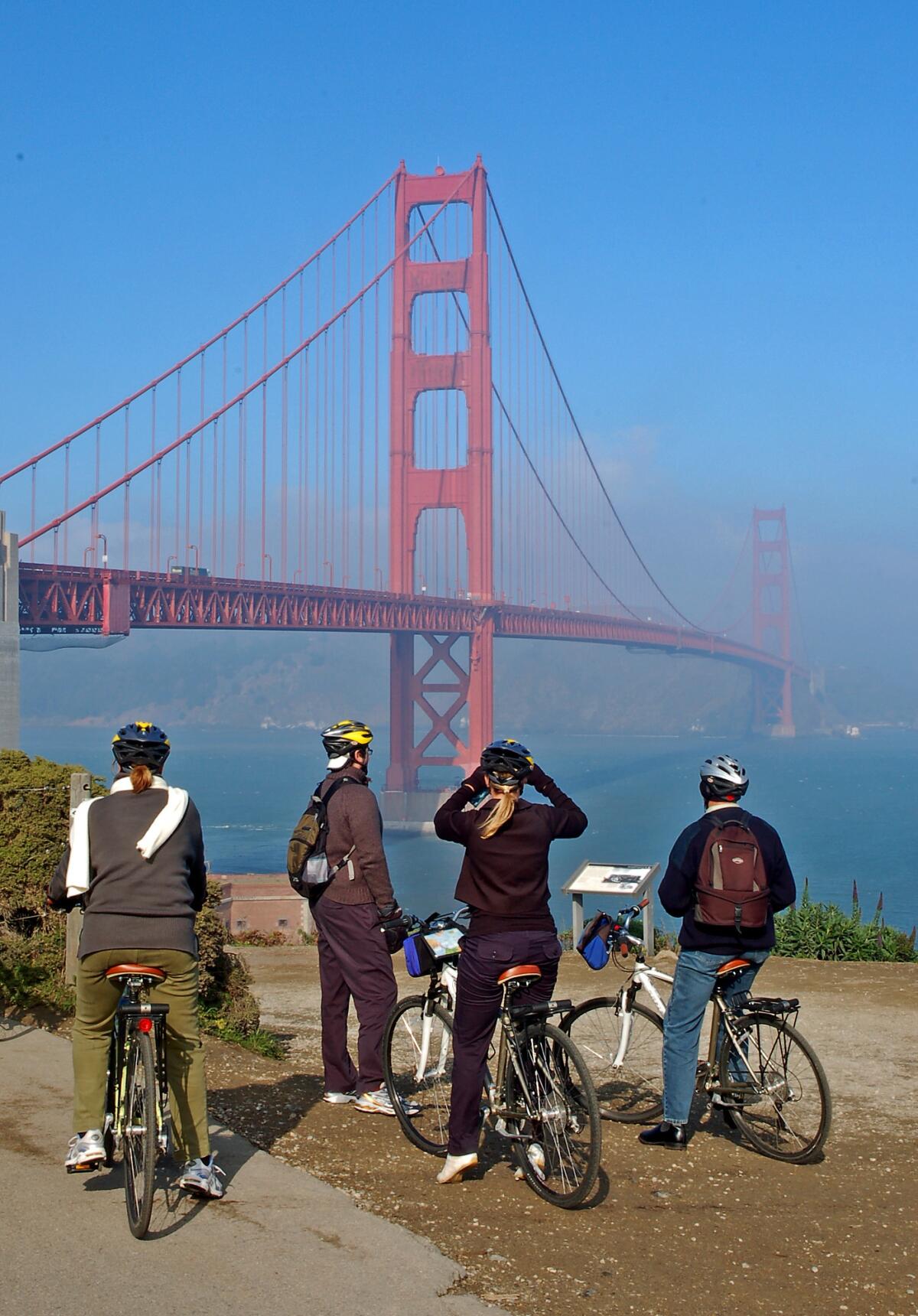
Why: There’s more than one way to cross America’s favorite orange bridge.
What: First, rent a bicycle in San Francisco’s North Beach or Fisherman’s Wharf areas. (There are several rental outfits, including Blazing Saddles and San Francisco Bike Rentals.) Then (following the directions the rental people give you) ride across the Golden Gate Bridge. It’s 1.7 miles across the bridge, and there’s no toll for cyclists or pedestrians.
Pause part way to look up at the 746-foot-tall towers and consider that military leaders once liked the idea of painting the bridge black and yellow.
Once across, catch your breath (and maybe order a cool beverage) at the snazzy Cavallo Point Lodge (a former military base that’s now a hotel with bar and restaurant) or next door at the grittier Travis Marina Bar of the Presidio Yacht Club. Then head into the terminally quaint town of Sausalito, catch a ferry, cruise back to Fisherman’s Wharf and return your bike. Dress in a lot of layers; it gets windy on that bridge.
Where: Golden Gate Bridge, San Francisco city and county, 386 miles northwest of downtown L.A.
How much: Bike rentals typically run $30-$38 a day. A one-way Blue & Gold Fleet ferry ride from Sausalito to Pier 41 is $11.50 per adult.
Info: Golden Gate Bridge
See Santa Monica from the sky on a solar-powered Ferris wheel
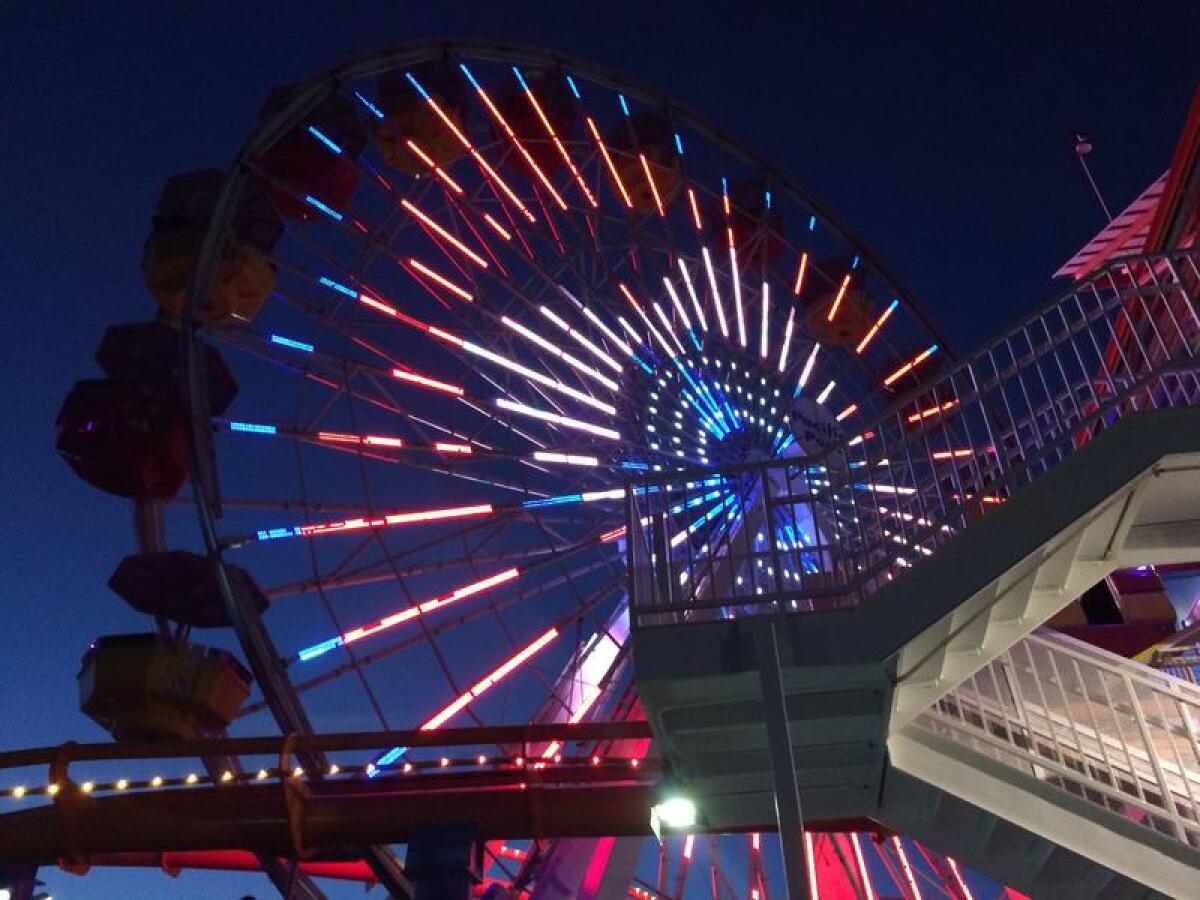
Why: Unless you charter a flight or build a better jetpack, you won’t get this view of Santa Monica, the bay and city, any other way.
What: The Santa Monica Pier went up in 1909, was largely rebuilt in the 1980s, and added an amusement park, Pacific Park, in the 1990s. Basically, it’s the payoff at the end of Route 66. Its high point, about 130 feet up, is the Pacific Wheel, a Ferris wheel that started spinning in 1996.
On your way to the wheel, notice the carousel, which you might remember from the 1973 movie “The Sting.” Once you’re aloft, take a good look at those bright lights all around you. They were amped up in May 2016. This is billed as the world’s first and perhaps only solar-powered Ferris wheel. Kids taller than 42 inches can ride alone.
Where: 380 Santa Monica Pier, Santa Monica, L.A. County, 16.7 miles west of downtown L.A.
How much: $8 a ride.
Feed a beast at the San Diego Zoo
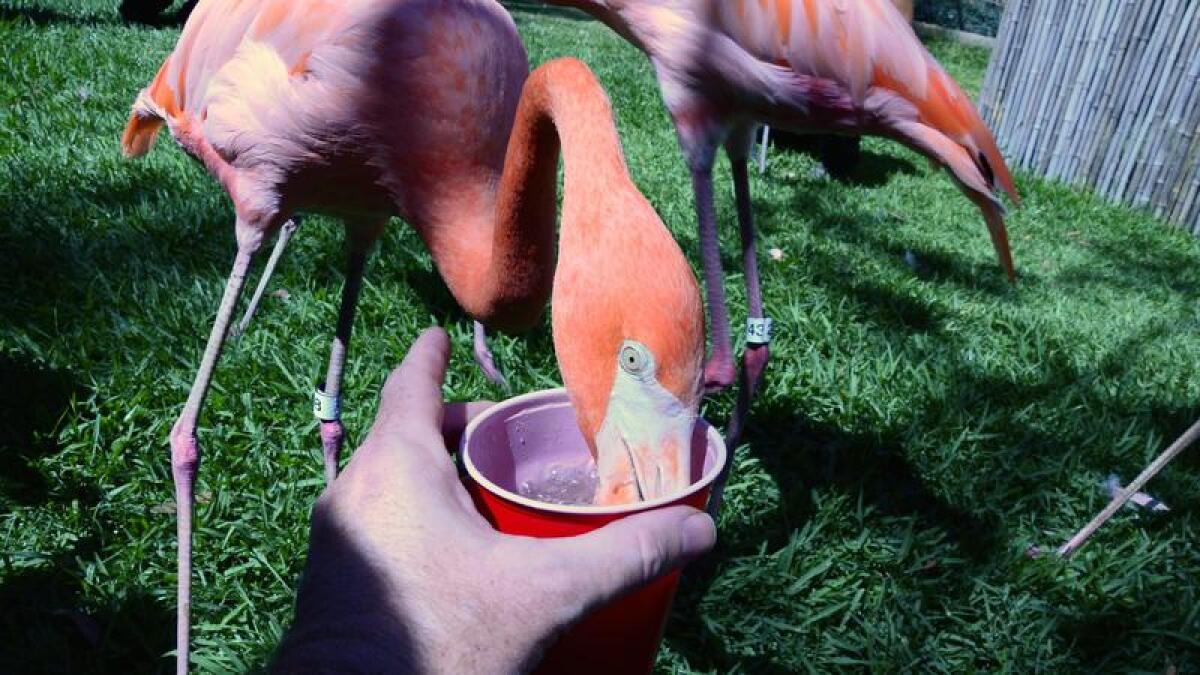
Why: Because creatures are more interesting when gnashing their teeth near your fingers. And all the world’s creatures seem to be here.
What: For all its global fame, the San Diego Zoo boils down to about 3,700 animals on 100 acres, not unlike some colleges. And like some students, these creatures spend a lot of time asleep. Sadly, you can’t order pizza for them. But you can plot your visit to see them eating, when they’re livelier. You might even get to feed a critter yourself. On weekends, there’s an 11 a.m. sign-up in the Urban Jungle to feed giraffes (three biscuits for $15); and there’s a wolf-keeper presentation at 11:30 a.m. daily. Check the zoo’s online list of keeper talks and animal encounters list to see what’s up when.
Or splurge on an added program. For $109 on top of the usual admission price, you can get in two hours early to see the pandas, which just might be chewing on bamboo. And the Animals in Action program (ages 5 and older) is pricey at an added $109 for an hour, but it usually gives visitors a chance to feed flamingos from a cup.
If you’re there with kids, give it a whole day. And if you still want more critters, set aside a second day for the San Diego Zoo Safari Park, where about 3,500 animals roam much more widely on 1,800 acres near Escondido, 32 miles north of the zoo. It can get pretty hot and dusty, but where else are you going to get close to cheetah doing a 110-yard dash?
Where: San Diego Z00, 2920 Zoo Drive, San Diego city and county, 126 miles southeast of downtown L.A.
How much: Adult admission: $54 and up. (This page was updated to reflect prices as of Feb. 27, 2018.)
Info: San Diego Zoo
Sit for a Disney silhouette
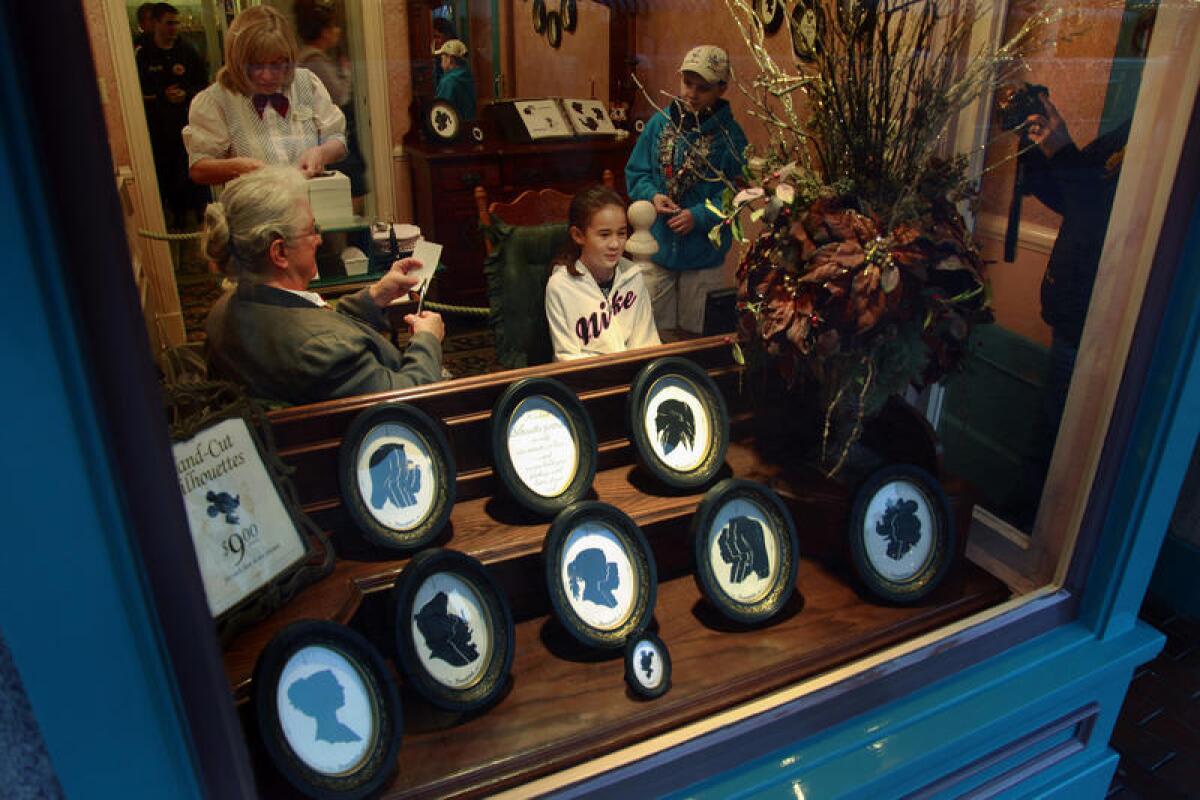
Why: Because no amount of tech bells and whistles can beat the scissors-wielding women and men who can cut a full silhouette in the time it takes to ask, “How long is the line at Pirates of the Caribbean?”
What: Yes, Disneyland has decades’ worth of newer, fancier attractions. So what? Sit your kid or yourself down in the Silhouette Studio on Main Street, hold still for 60 seconds or so, and walk away with a paper profile your family will keep for decades. Then do the rest. The original Disneyland (85 acres, opened in 1955). Downtown Disney (20 acres of shopping, dining and entertainment, opened in 2001). Disney’s California Adventure (about 70 acres of rides, shows and such, opened in 2001).
Where: Disneyland, 1313 S. Disneyland Drive, Anaheim, 27 miles southeast of downtown L.A.
How much: For the silhouette, $9.99, not counting frame, or admission to Disneyland, or parking.
Drive through this redwood. While you still can.
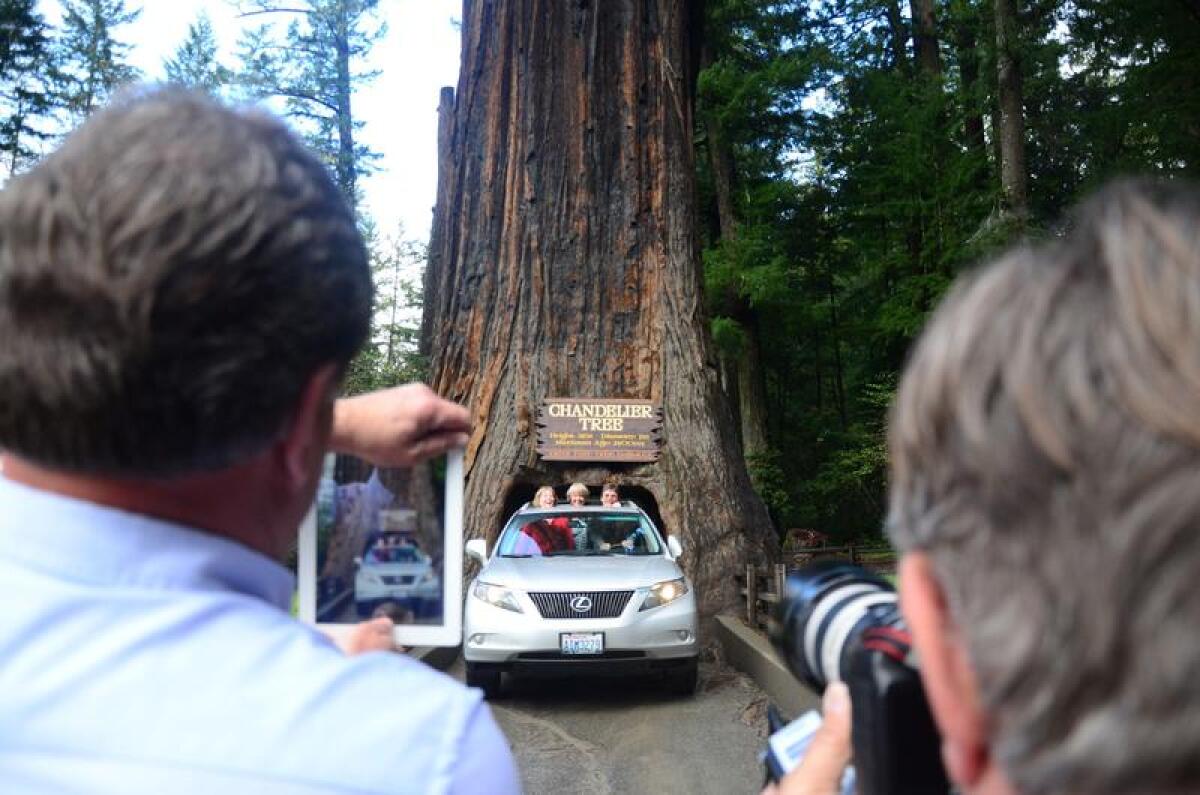
Why: Of the three remaining drive-through trees in California, this one is the most handsome.
What: For about 80 years, giddy Californians have been steering their vehicles through the Chandelier Drive-Thru Tree in Underwood Park, the tourist epicenter of sleepy little Leggett.
But there’s no telling how long this opportunity will last. As John Stephenson, fourth-generation owner of the tree, pointed out, “It could fall over any minute, and we all go home.”
The family’s best guess is that the tree is 2,000 years old and 315 feet tall. The surrounding 305-acre site includes, as you might expect, an extensive gift shop. There are also carefully tended restrooms, picnic tables, a pond and meadow.
You could say it’s Stephenson’s family tree. His great-grandfather bought the property in the 1920s, and the family cut the big hole in the tree in the mid-1930s. By the 1960s, the park had 20 cabins, a bar, soda fountain and recreation hall. Nowadays, most of that is closed up and the park loses money for nine months of the year. But summer brings much heavier traffic -- up to 500 cars a day -- and that’s enough to put this redwood into the black for the year.
While you’re standing around watching other cars creep through and selfies get taken, impress strangers by pointing out that there are two other drive-through trees in the state: the Shrine Drive Thru Tree in Myers Flat, Humboldt County; and the Tour-Thru Tree, in Klamath, Del Norte County. And there’s a driveable fallen-down tree (dubbed the Tunnel Log) in Sequoia National Park. For decades there was a drive-through tree in Yosemite National Park, but it came crashing down after a storm in the winter of 1968-69. The Chandelier Tree is the sturdiest, most photogenic living redwood you’re going to find. As John Stephenson says, “They’re not making any more.”
Where: 67402 Drive Thru Tree Road, Leggett, Mendocino County, 556 miles northwest of downtown L.A.
How much: $10 per car
Info: Chandelier Tree
Sink to new depths in Death Valley
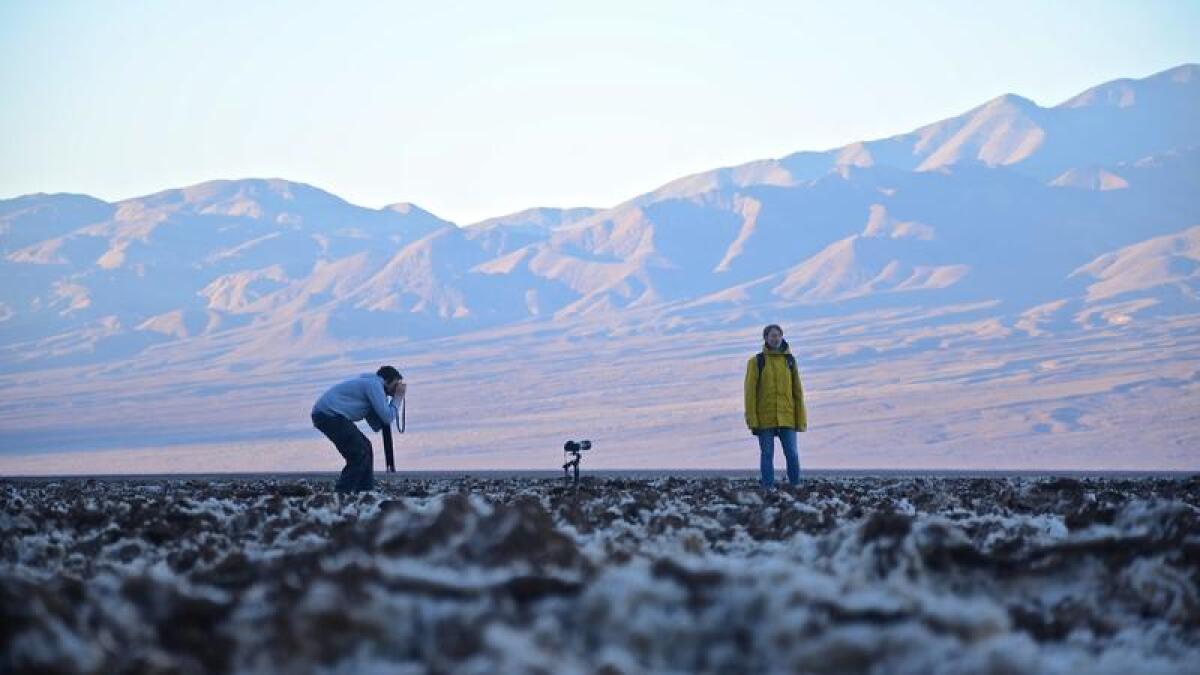
Why: Because Death Valley National Park‘s low point is also a traveler’s high point.
What: Death Valley’s Badwater, a salt-encrusted old lake bed between forbidding mountains, is the lowest point in North America. It’s especially vivid and perplexing just after sunset when there’s a prominent moon -- because how can there be a moon in the sky, when you seem to be standing on its surface already? You’ll be sorely tempted to pose for an album cover photo.
Also, be sure to hike a few hundred yards out onto the salty flats, so that you can look up at the east canyon wall for the white sign that’s 282 feet above you. That’s where sea level is.
(That’s also a good place to impress family and friends by casually mentioning that the bottom of the Grand Canyon is more than 2,000 feet above sea level.)
Where: Badwater Basin, Death Valley National Park, Inyo County, 281 miles northeast of downtown L.A.
How much: $30 per vehicle for seven days.
Grab the pole position on a Powell-Hyde cable car

Why: Nothing says San Francisco more clearly than a cable car climbing a hill.
What: The cable cars of San Francisco cover three routes: Powell-Hyde, Powell-Mason and California Street. You want a Powell-Hyde ride, and you want to begin at the turnaround at Powell and Market streets, near Union Square (where there’s often a queue, along with buskers and beggars).
Also, you want pole position, standing on a running board with a hand-hold on the pole at the right front of the car (unless, of course, you have the opportunity to give a bright-eyed kid that spot).
Over hills and around corners you’ll ride it all the way to Fisherman’s Wharf. The machinery will squeal. Somebody will make a Rice-A-Roni joke.

<p>The expensive and outdated mode of transportation remains the heart of San Francisco.</p>
At the top of Lombard Street, savor the view of Coit Tower to the east. Along the way, a conductor will sell you a ticket (cash only).
Once you’ve arrived, the options include grabbing an Irish Coffee at the Buena Vista (which claims to have invented it); or strolling two blocks to Ghirardelli Square (where chocolate and other desserts abound).
Where: Cable car turnaround, Powell and Market streets, San Francisco city and county, 382 miles northwest of downtown L.A.
How much: $7 one-way. Pay cash while aboard (unless you’re boarding at Bay and Taylor between 8 a.m. and 8 p.m., which requires advance purchase).
Feel small under North America’s tallest falls
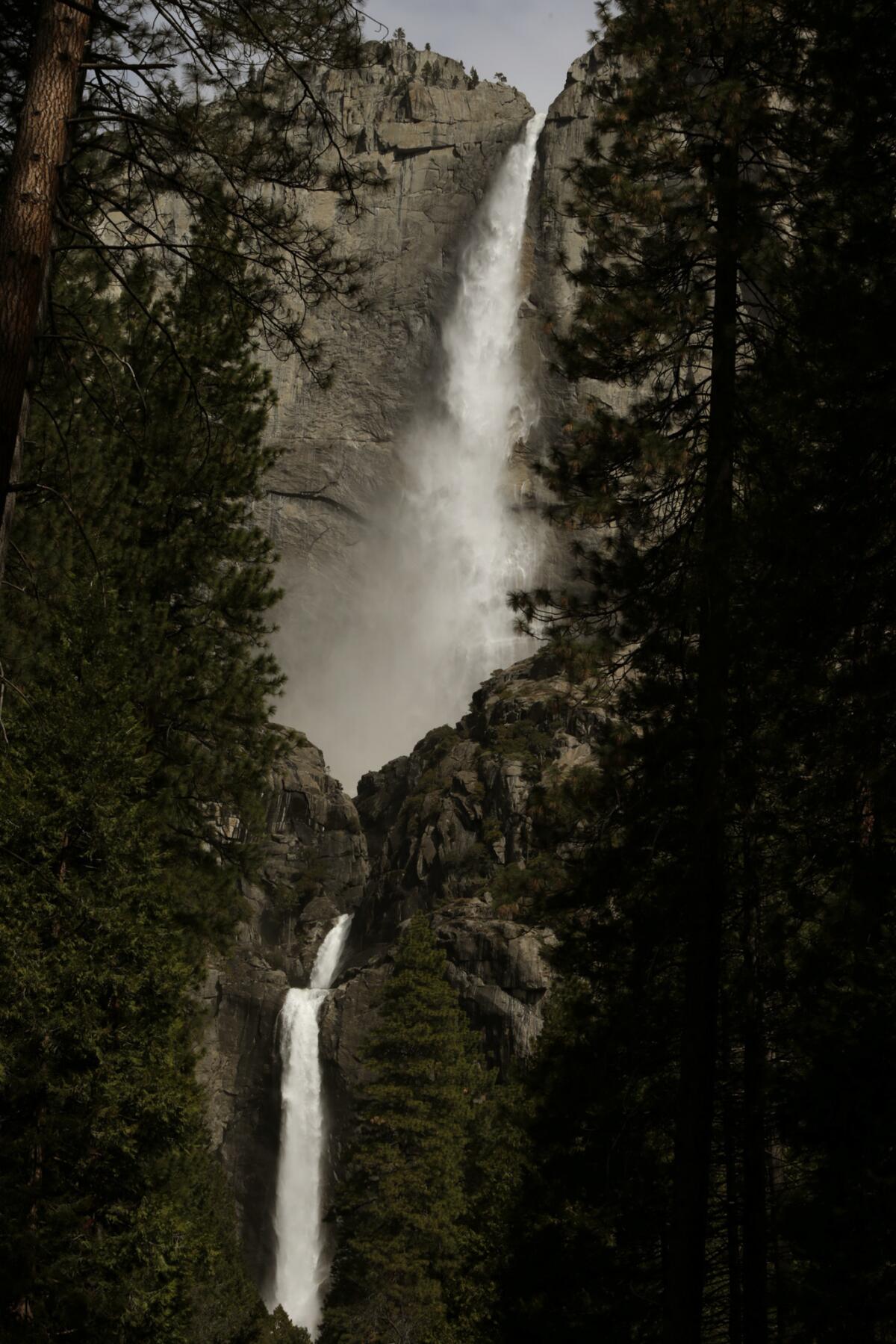
Why: This is North America’s tallest waterfall, splashing down into one of its most gorgeous valleys.
What: The essence of Yosemite Valley is soaring granite and falling water. So if you’re a park beginner, get yourself to the base of Lower Yosemite Fall. Preferably in spring.
This is the bottom of a 2,425-foot-high series of falls, so you will feel small. But the trail is easy. It begins near Yosemite Valley Shuttle Stop No. 6, and it’s a one-mile loop that gains about 50 feet in elevation. The eastern part of the loop is wheelchair-accessible.
If you want a bigger challenge and better view, go to Shuttle Stop No. 7 and climb the Yosemite Falls Trail to Columbia Rock. This trail, blazed in the 1870s, offers spellbinding vistas of the valley, Half Dome and Sentinel Rock. Rangers classify it as moderate difficulty — two miles round trip, with a 1,000-foot elevation gain. And if you really crave punishment, hike to the top of Yosemite Falls (7.2 miles round trip, strenuous).
Where: Lower Yosemite Fall Trail, Yosemite National Park, Mariposa County, 312 miles north of downtown L.A.
How much: $35 per car to enter the park.
Info: Yosemite National Park

